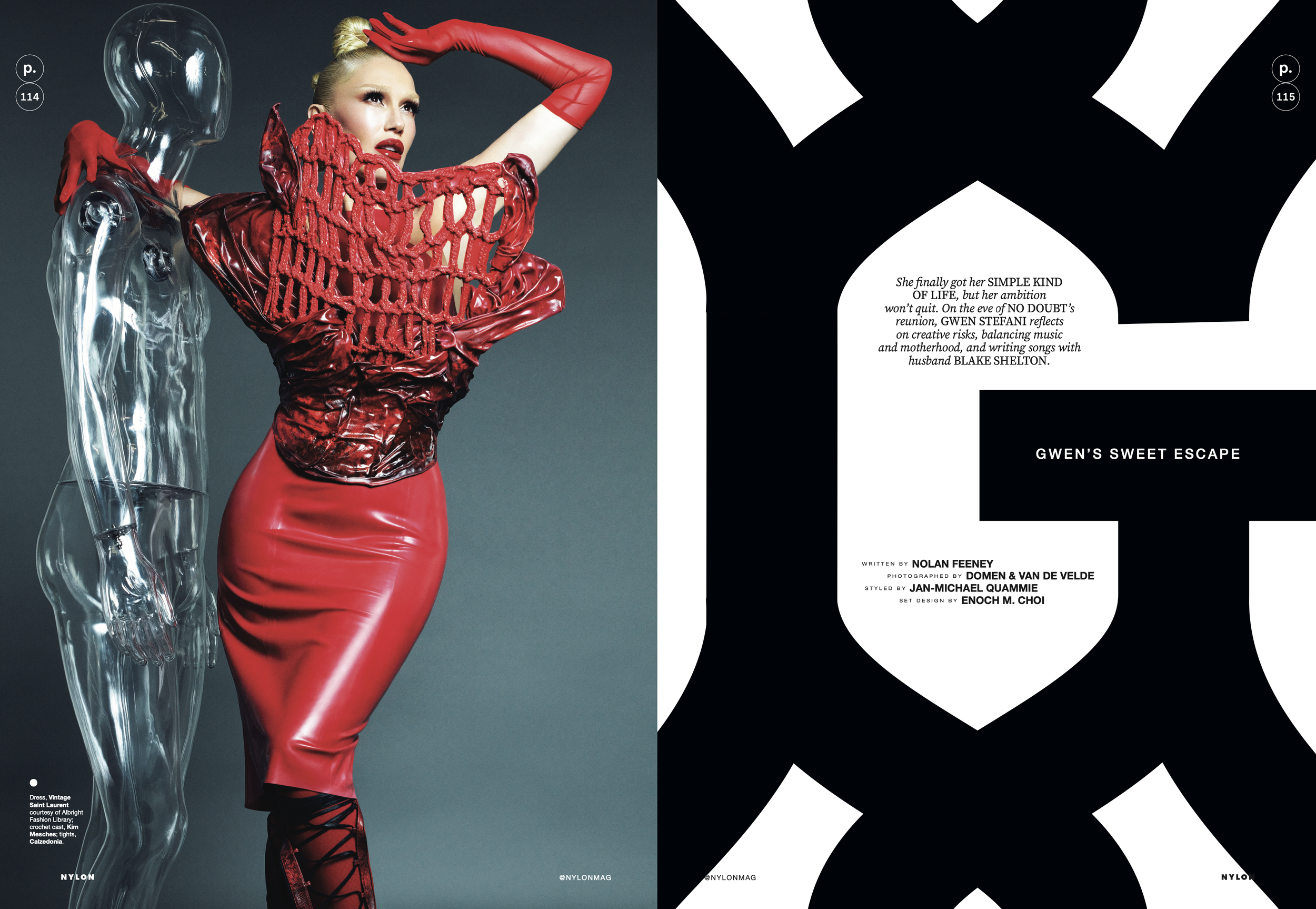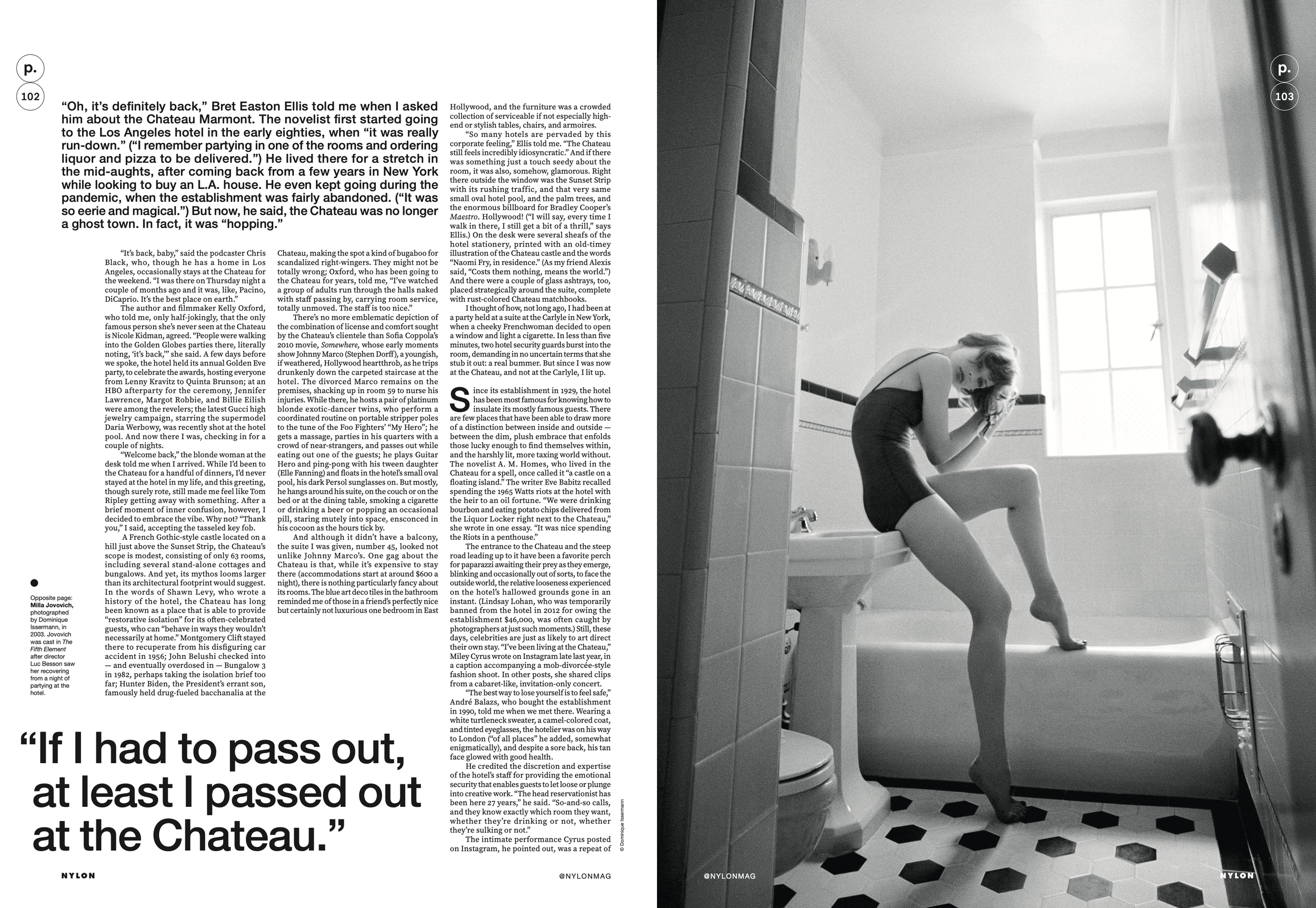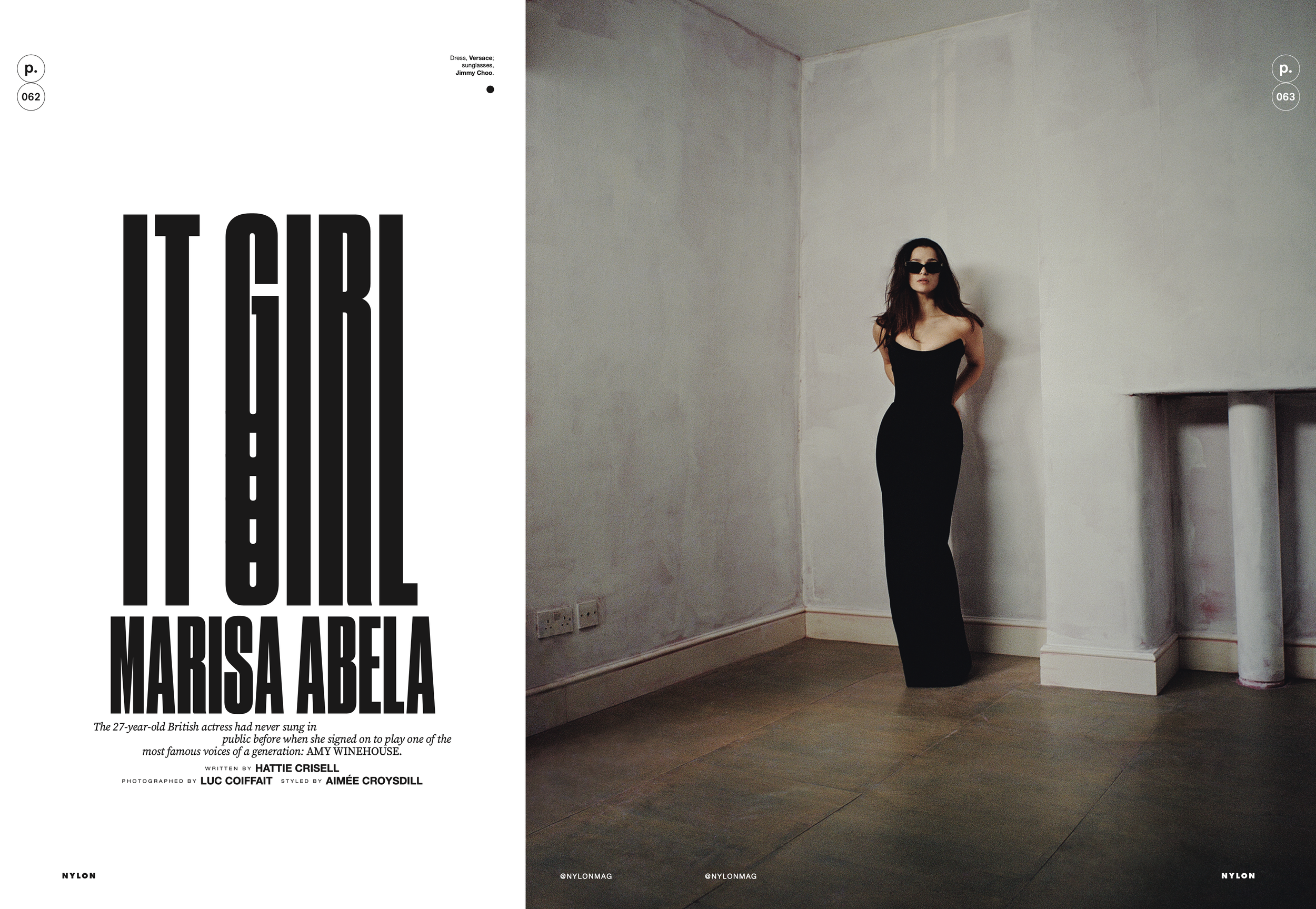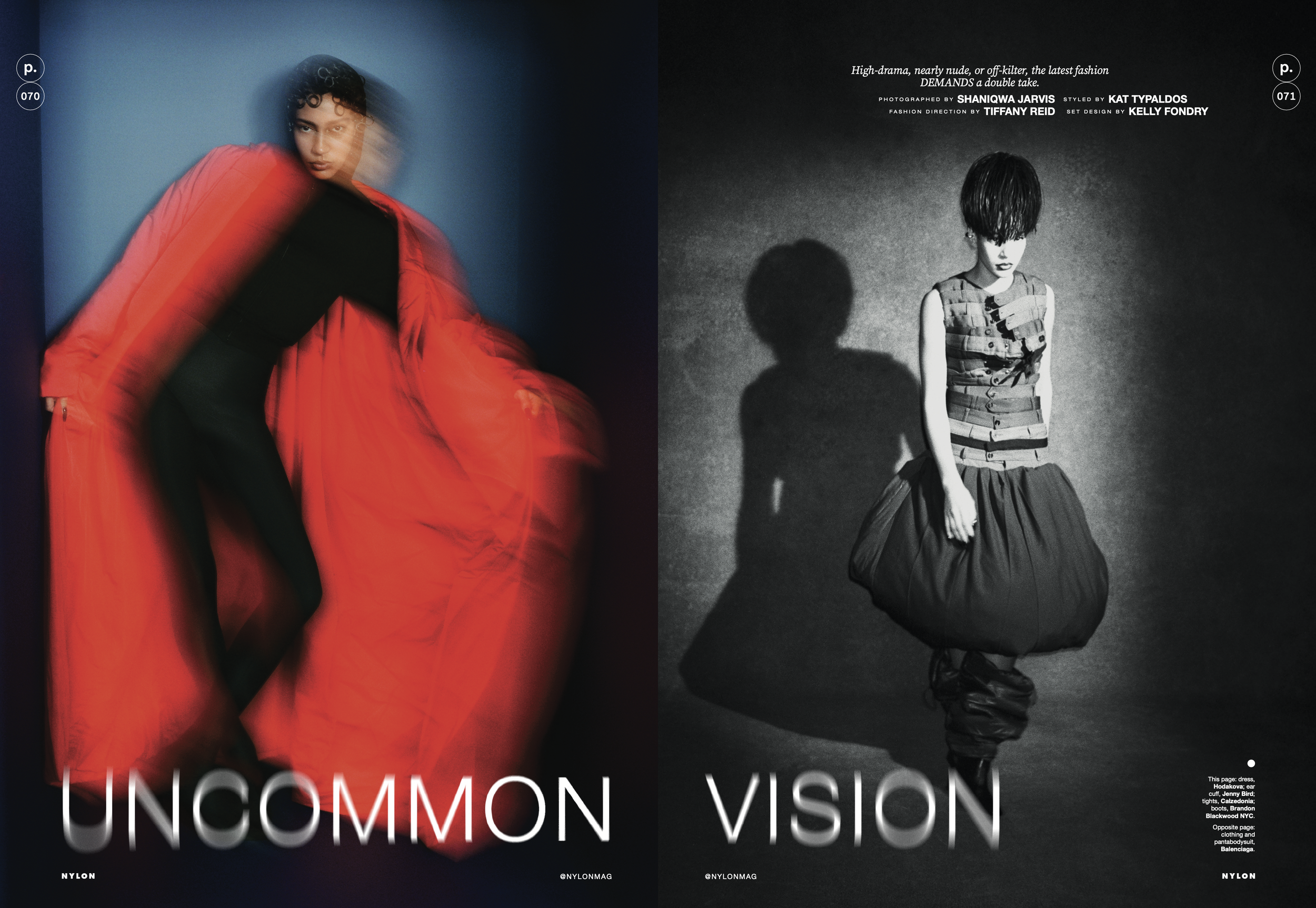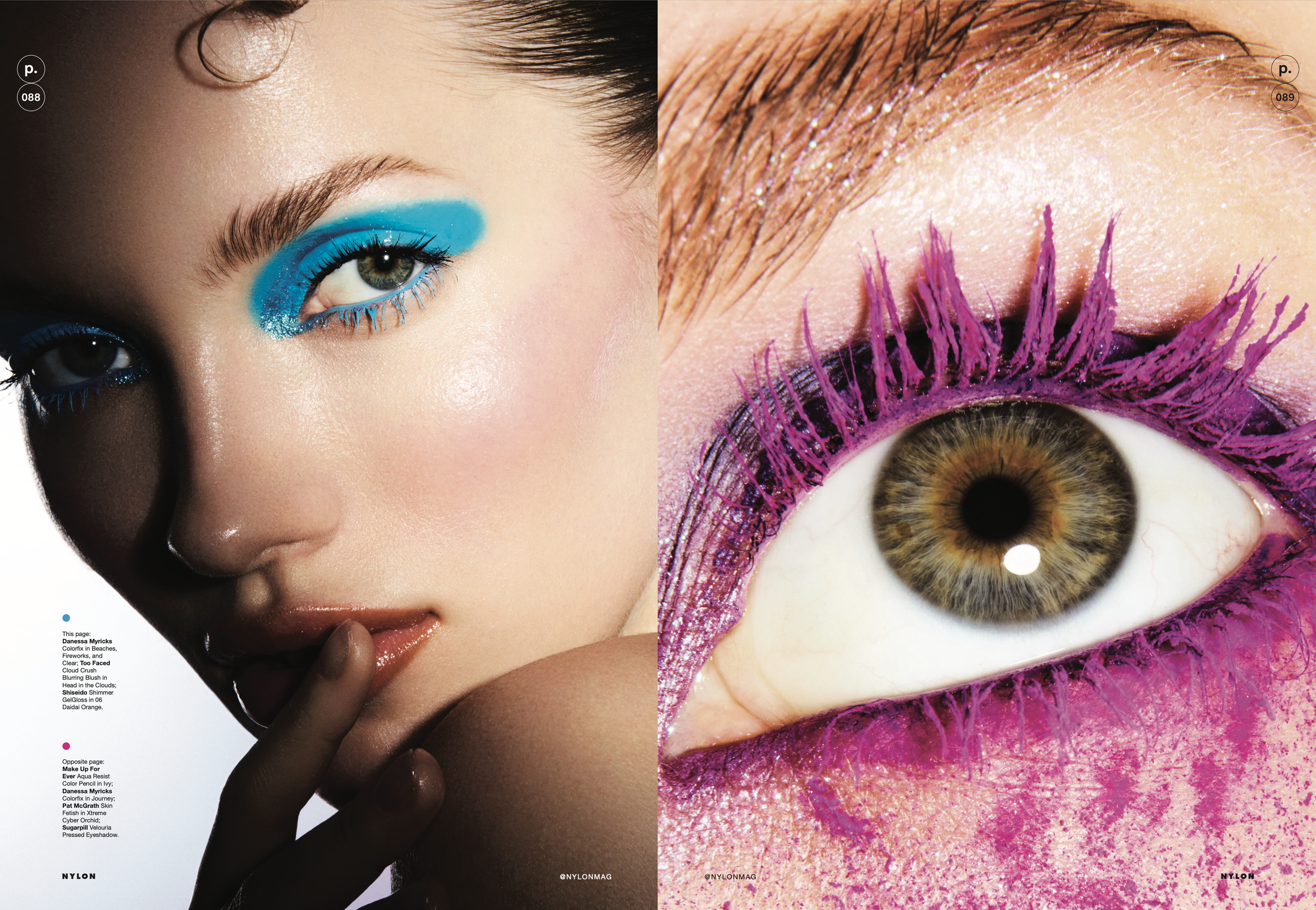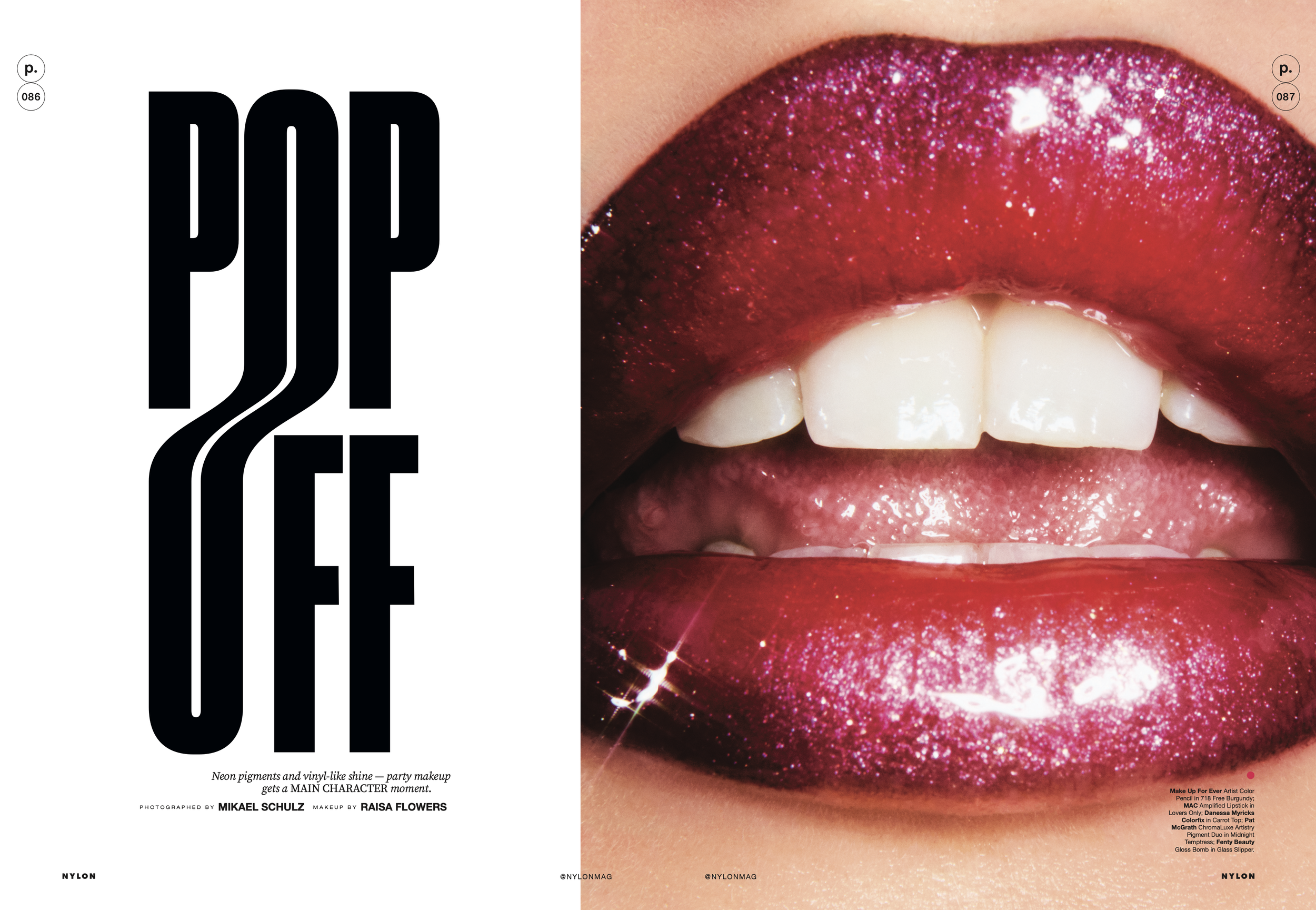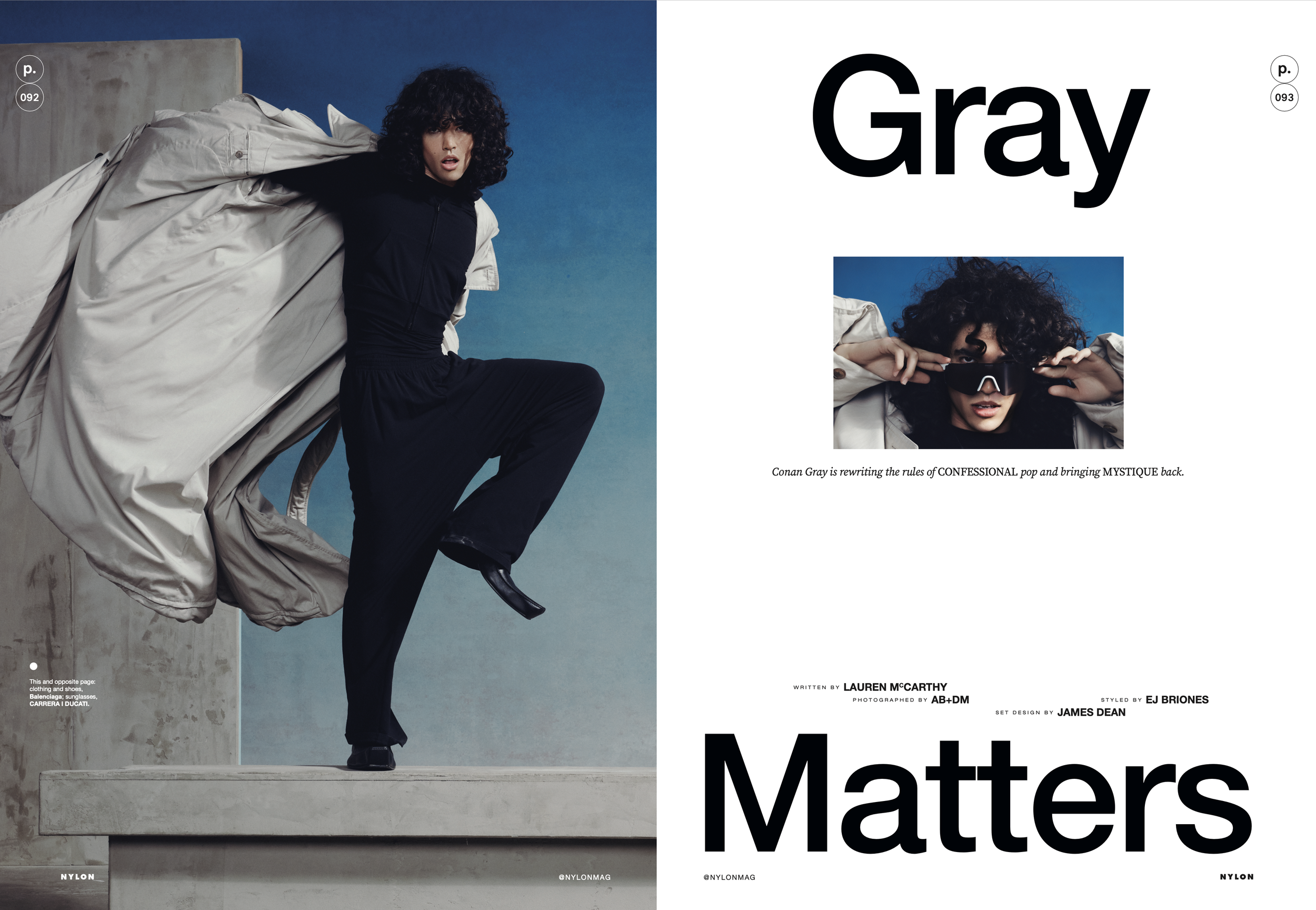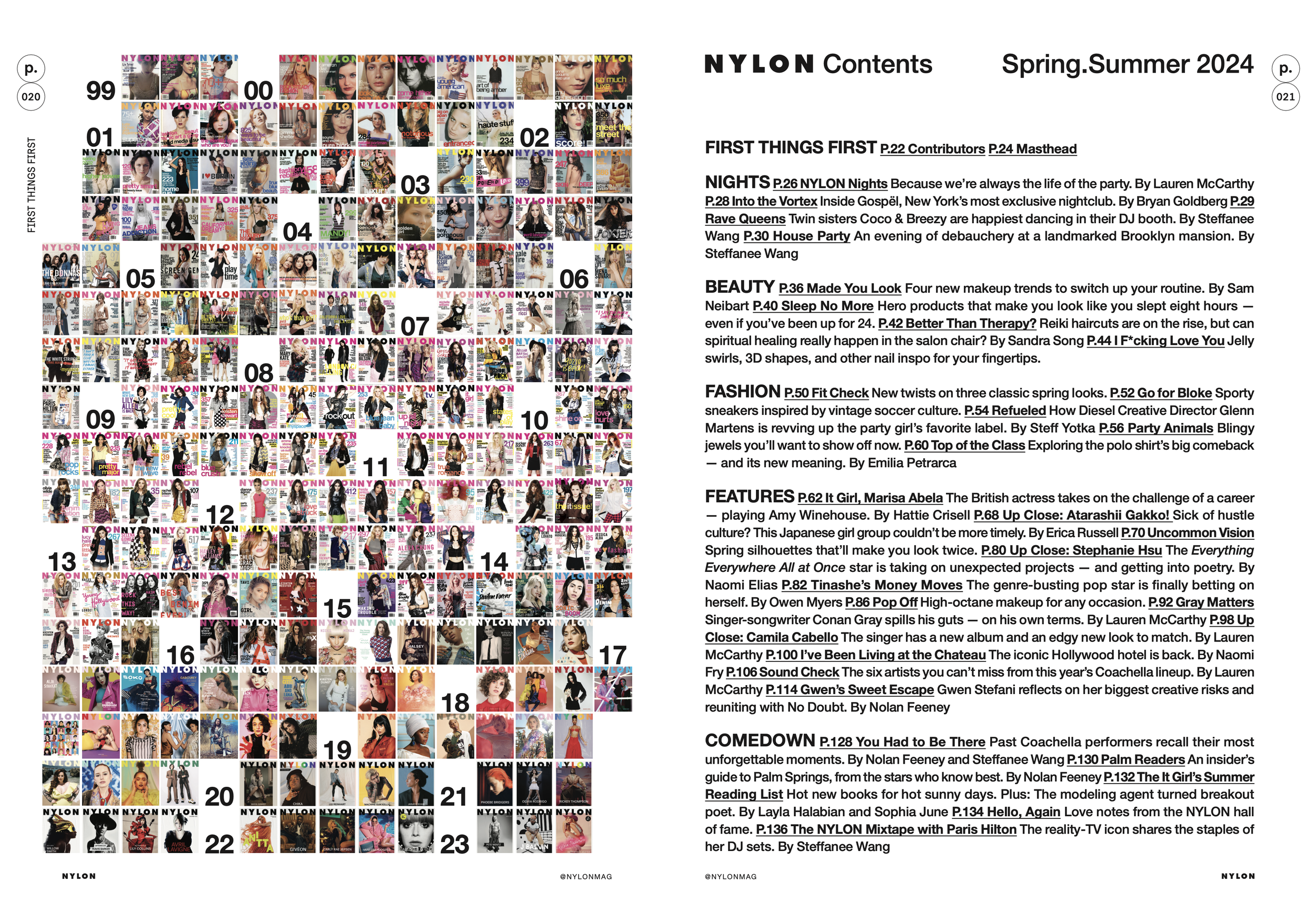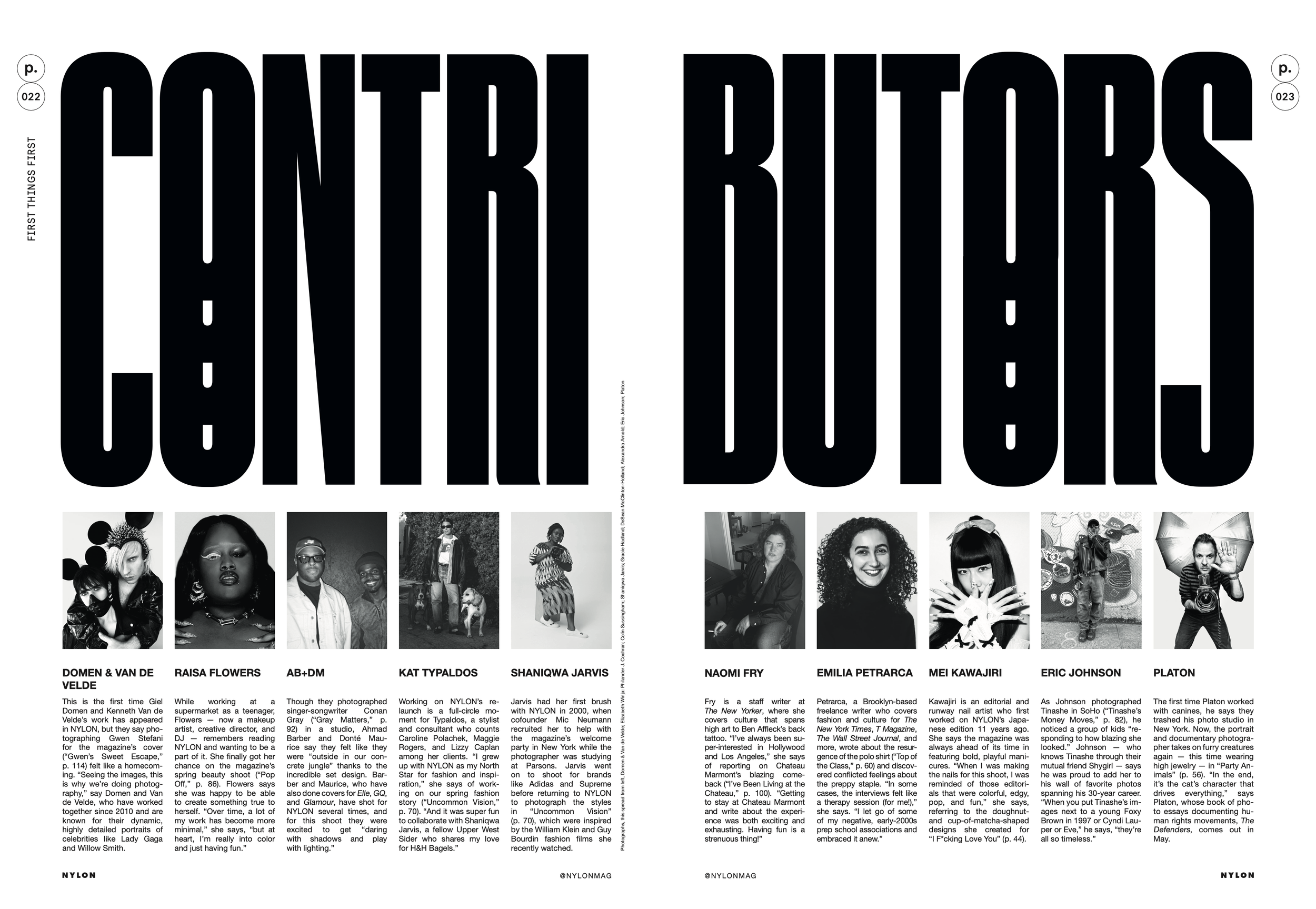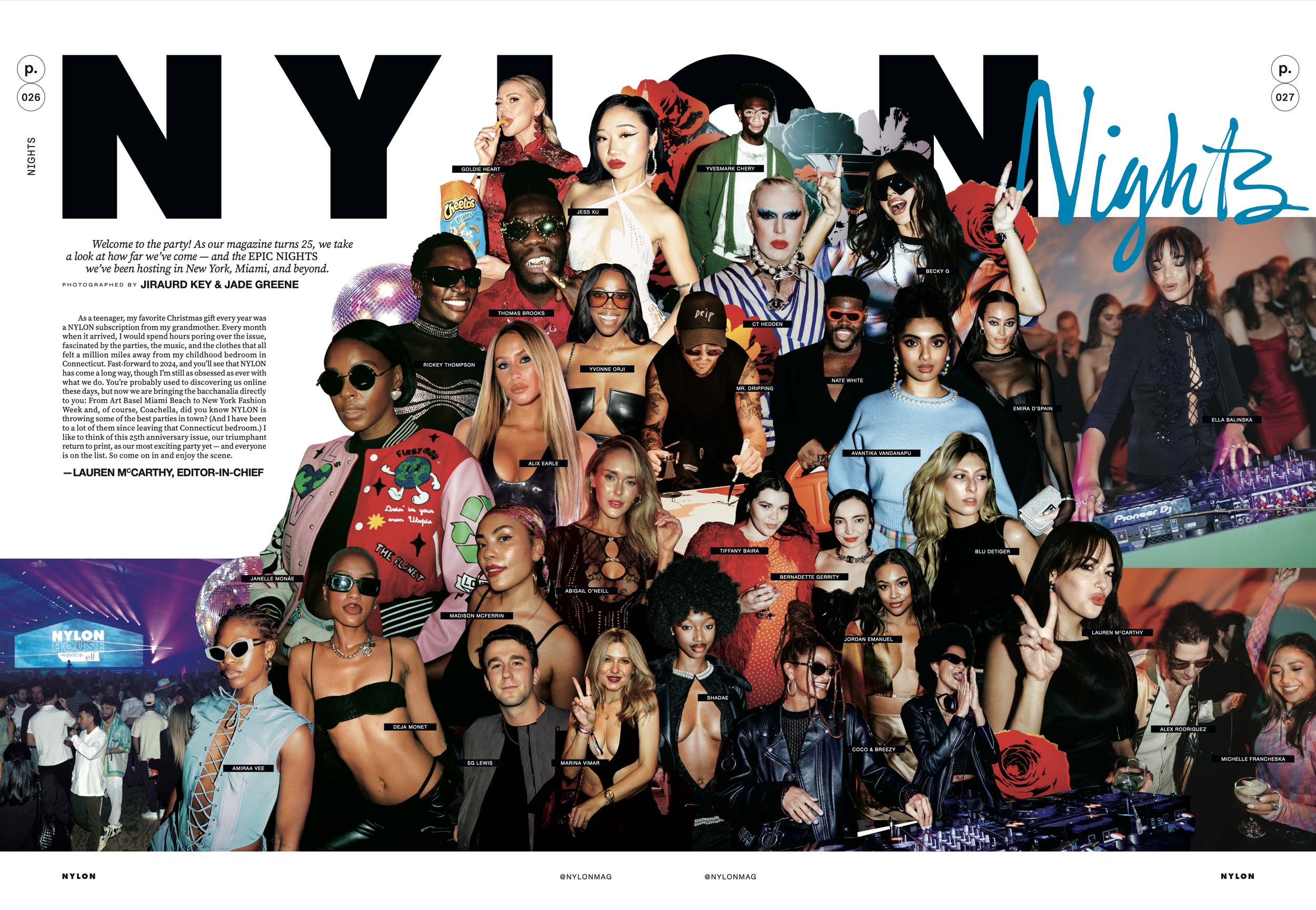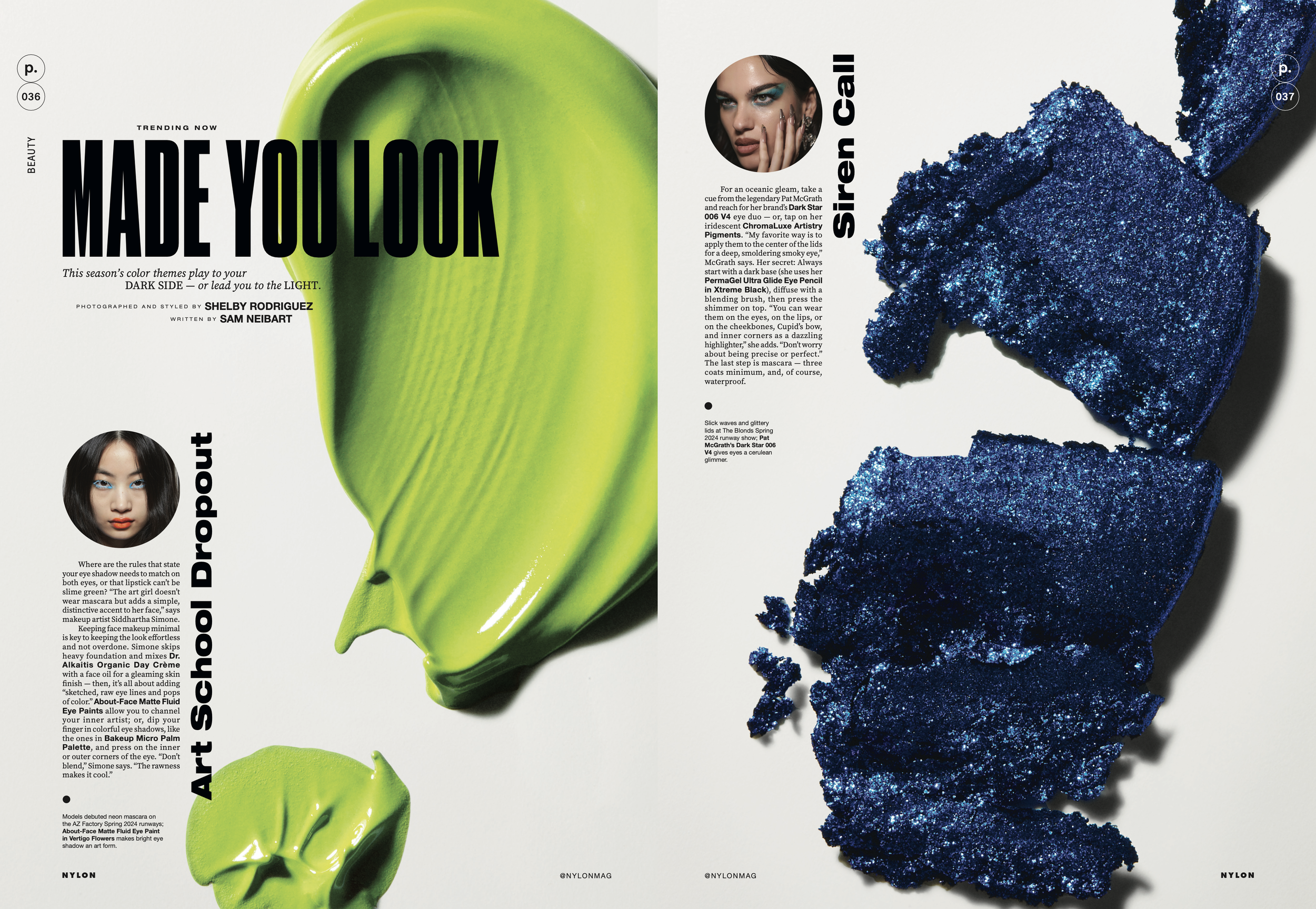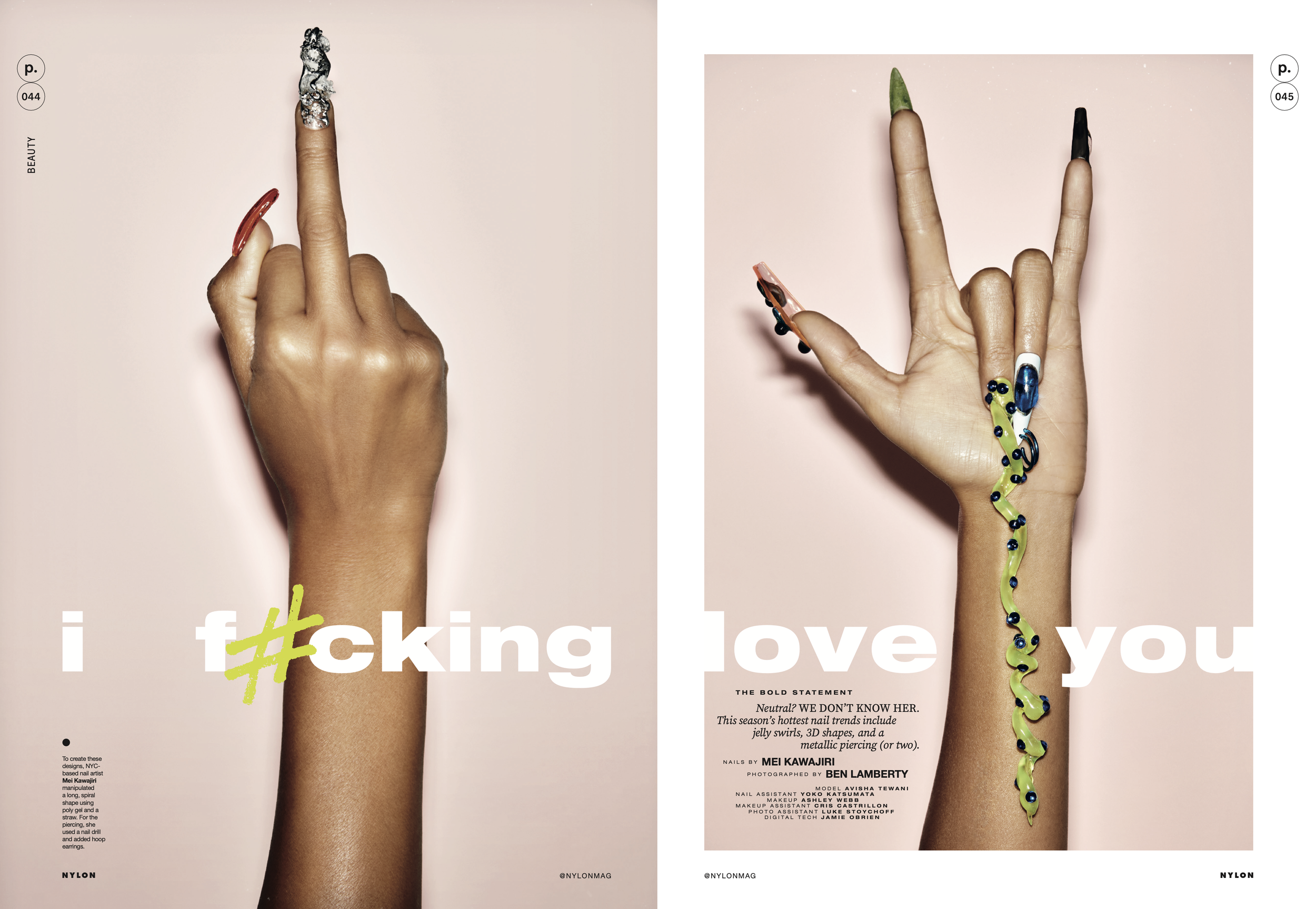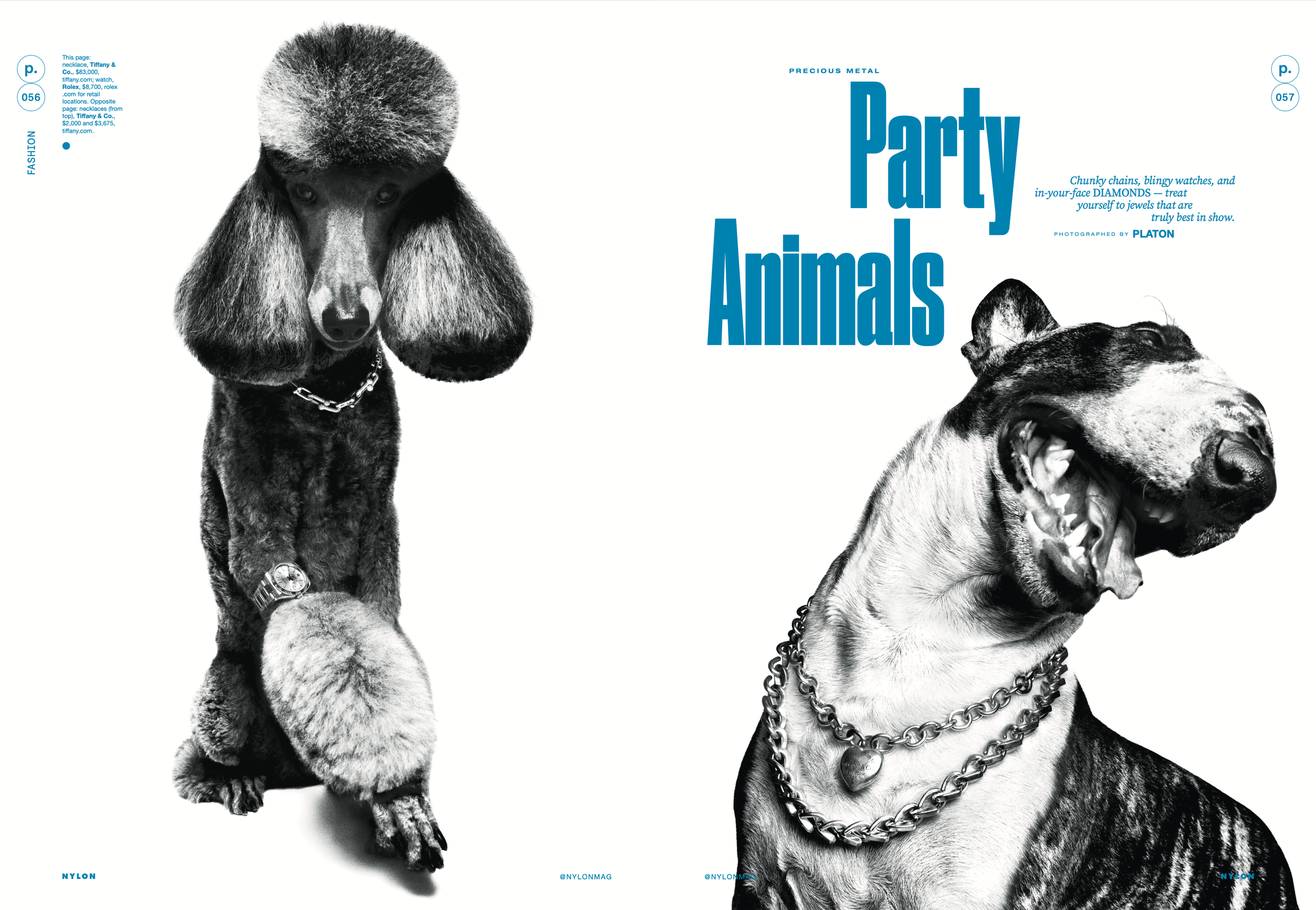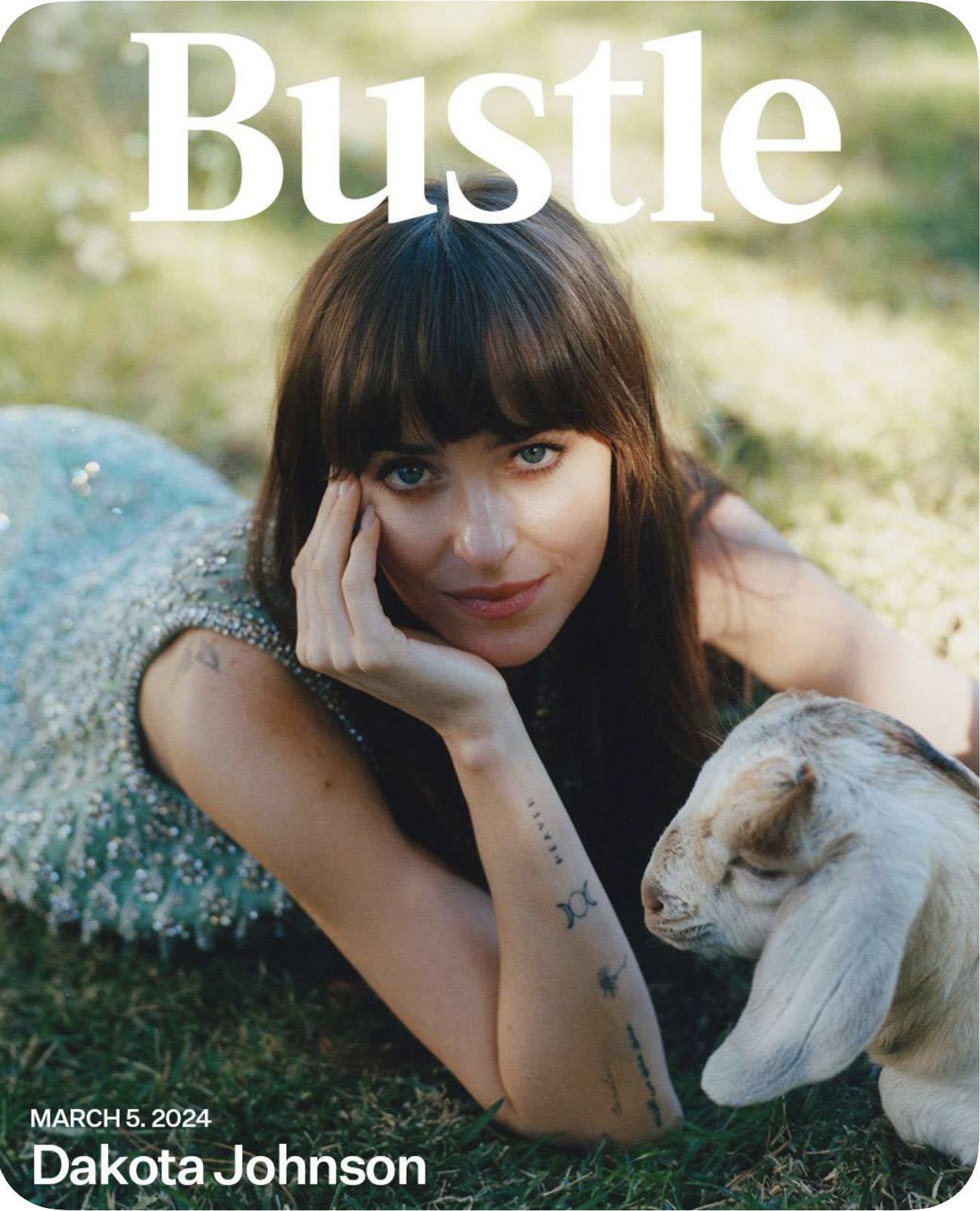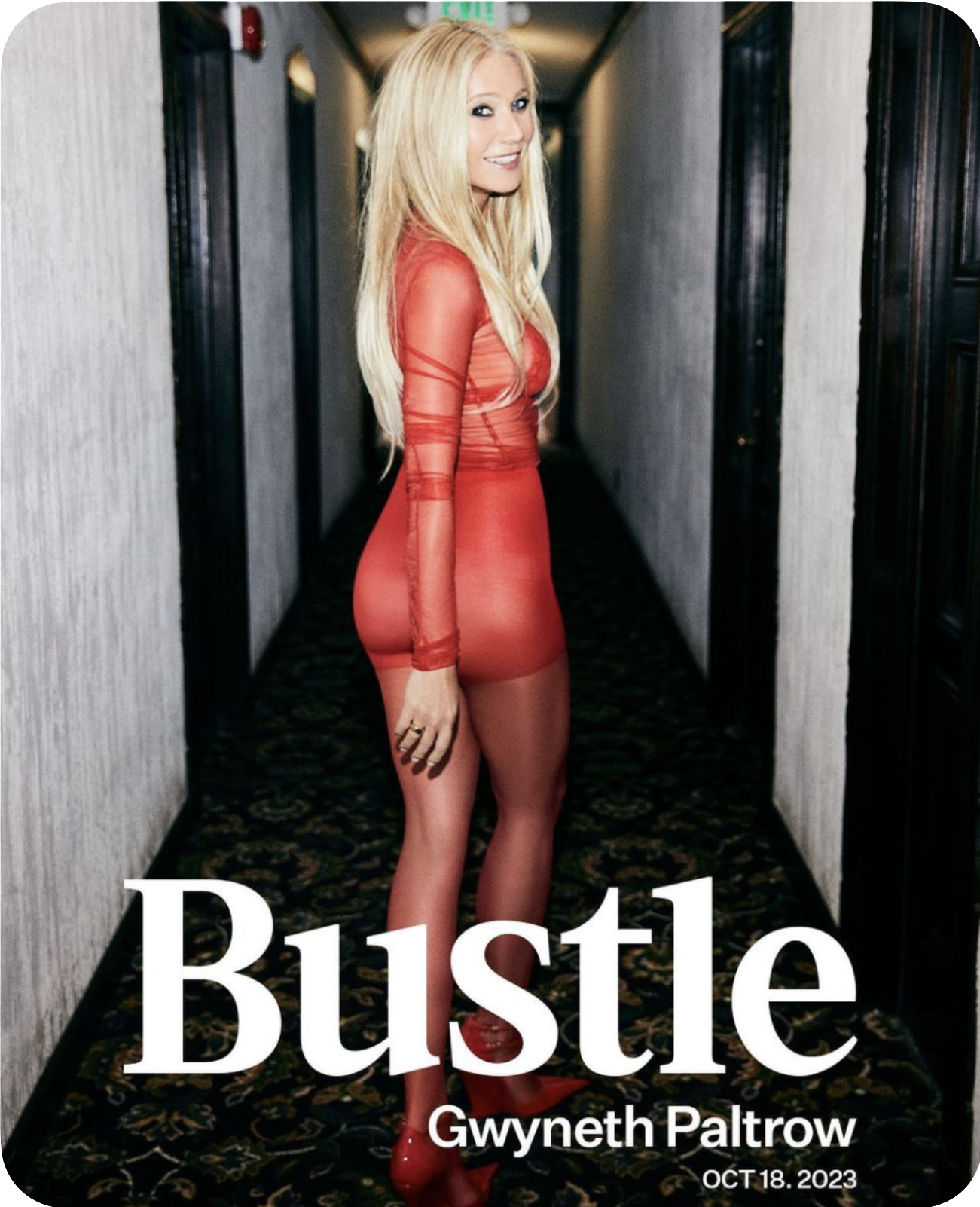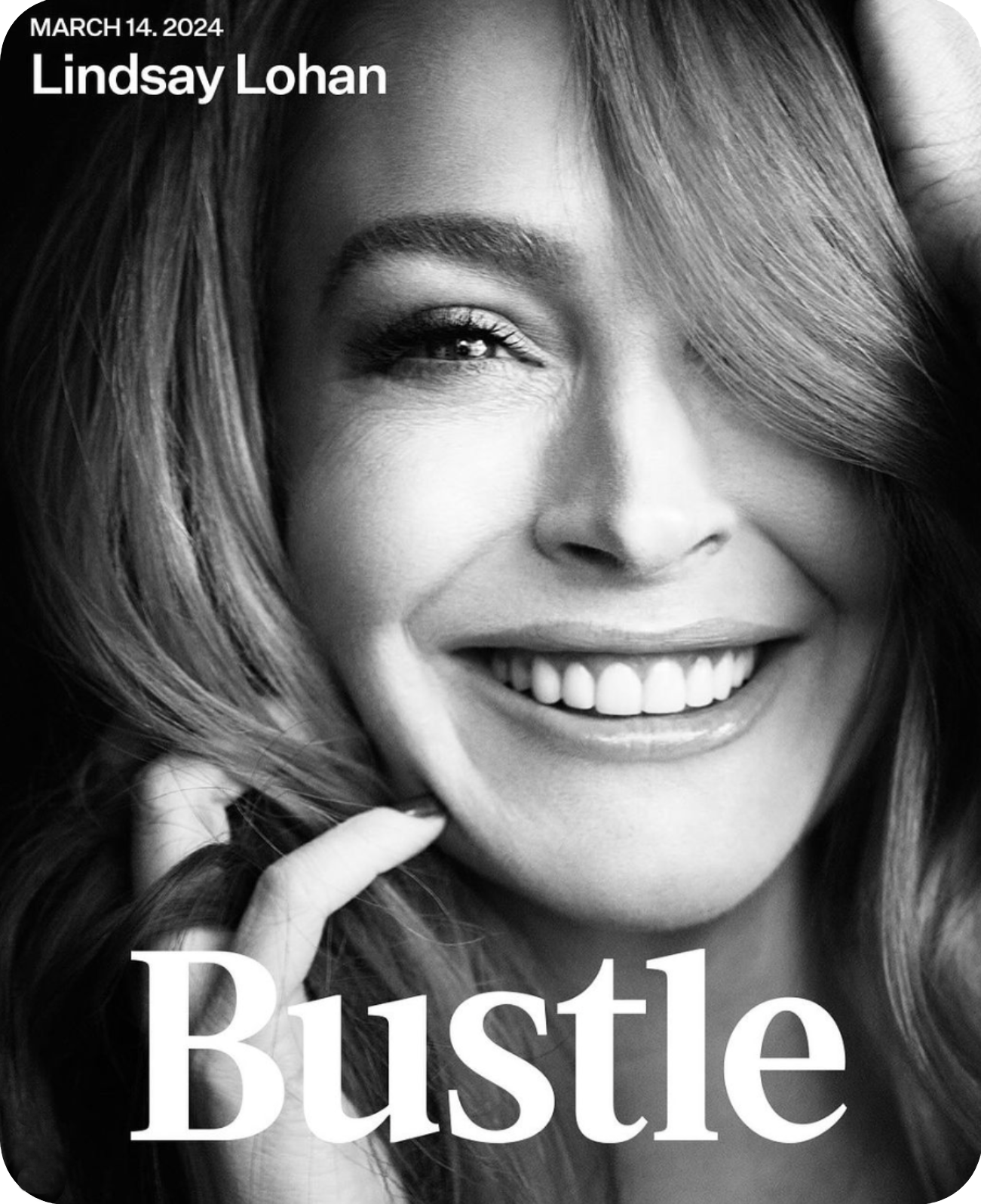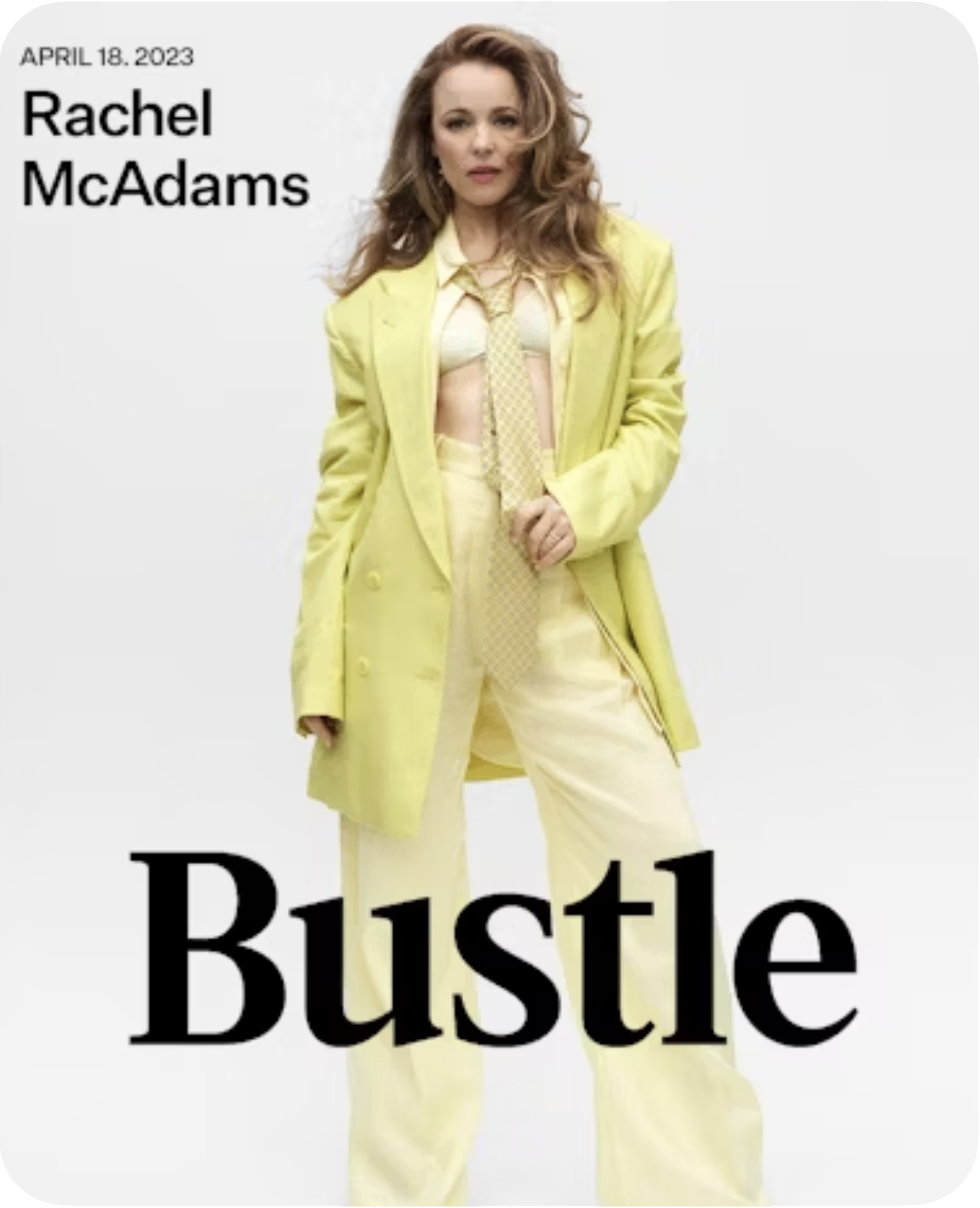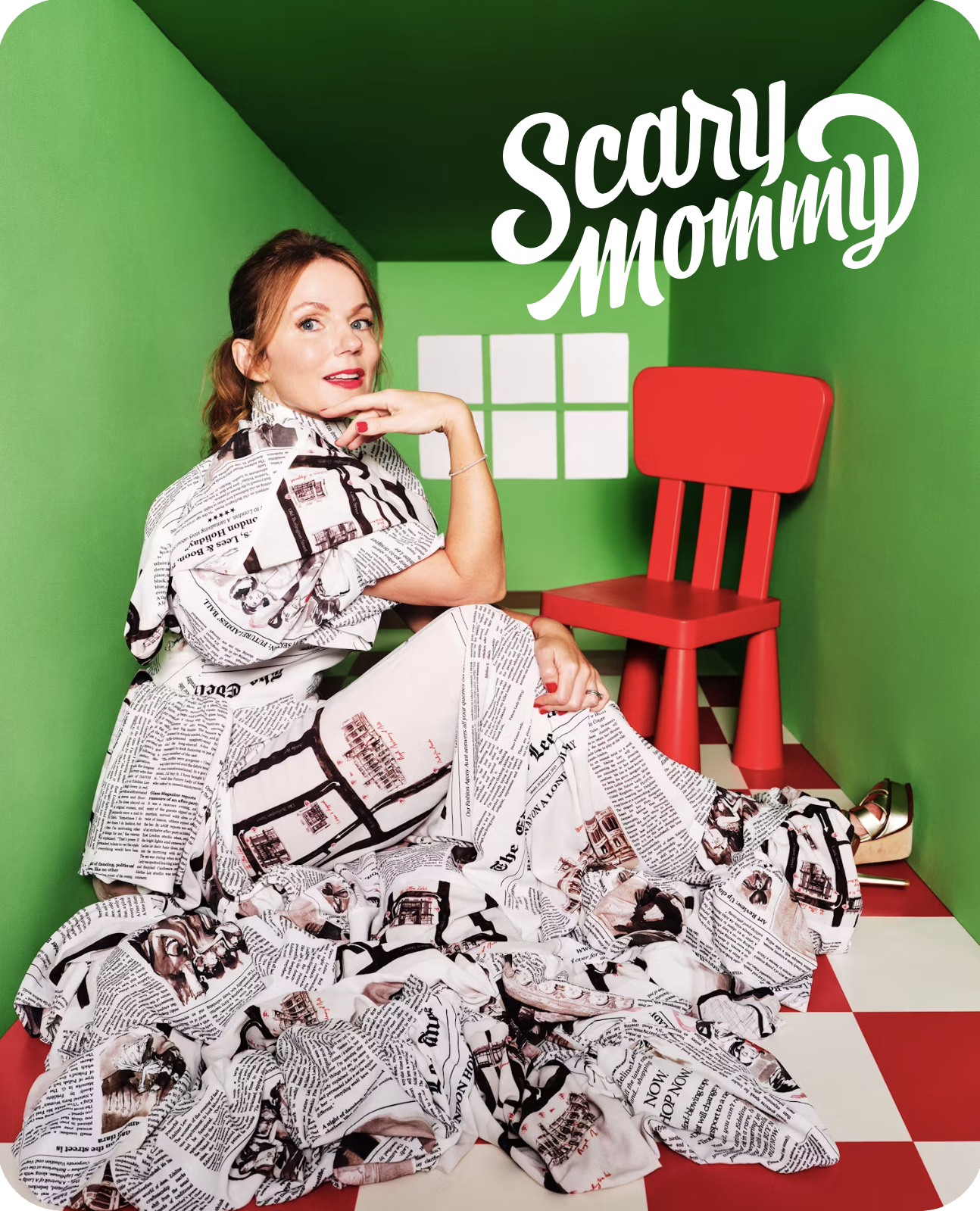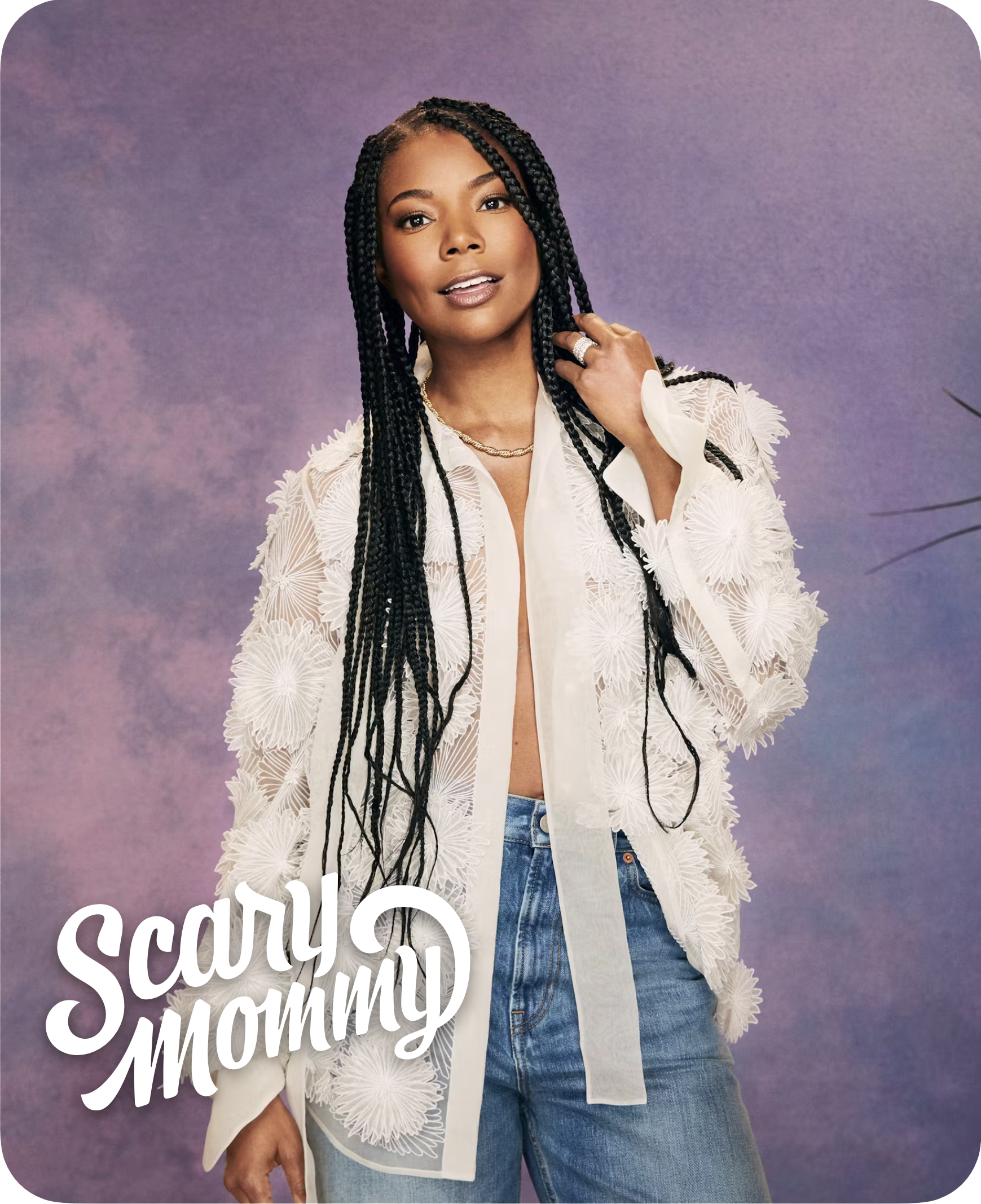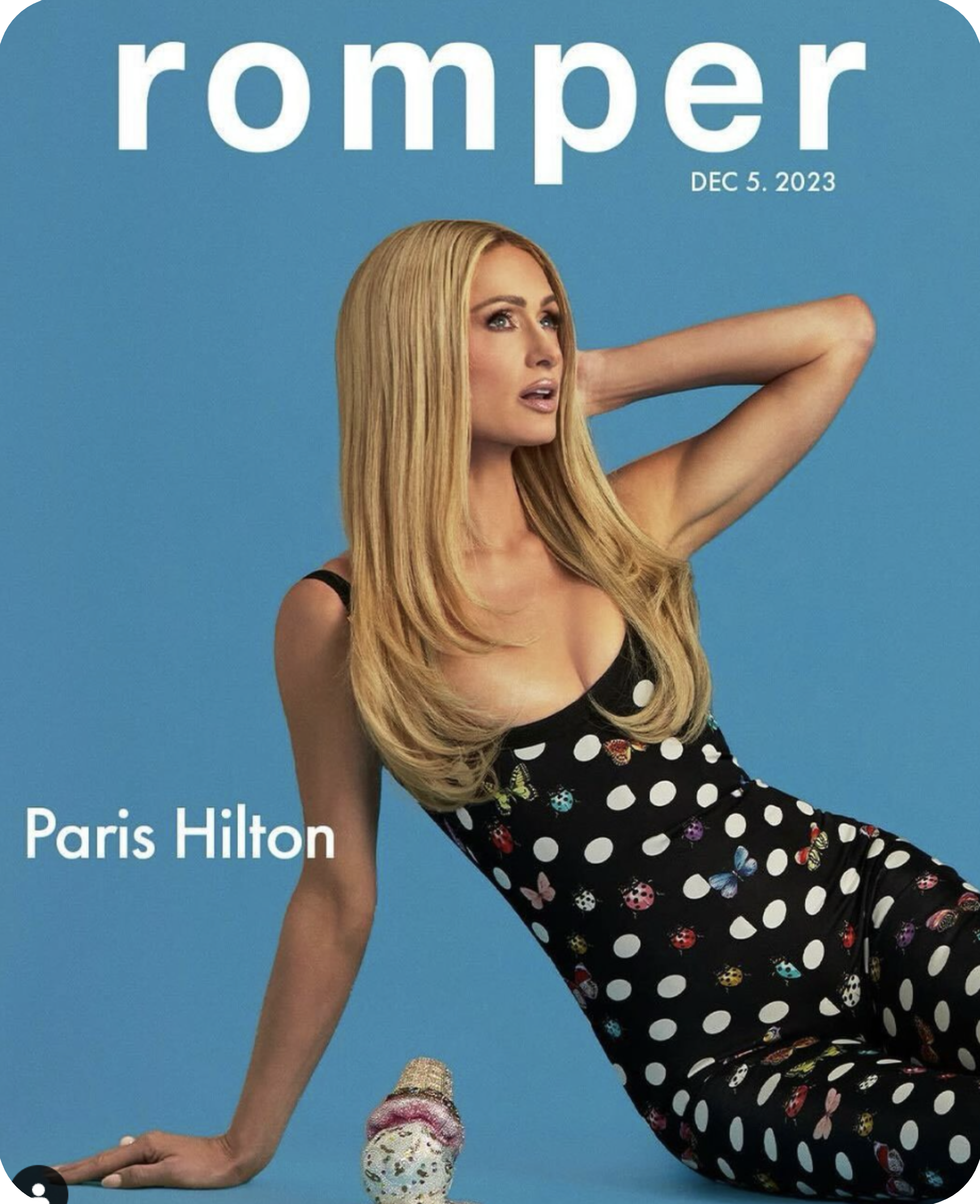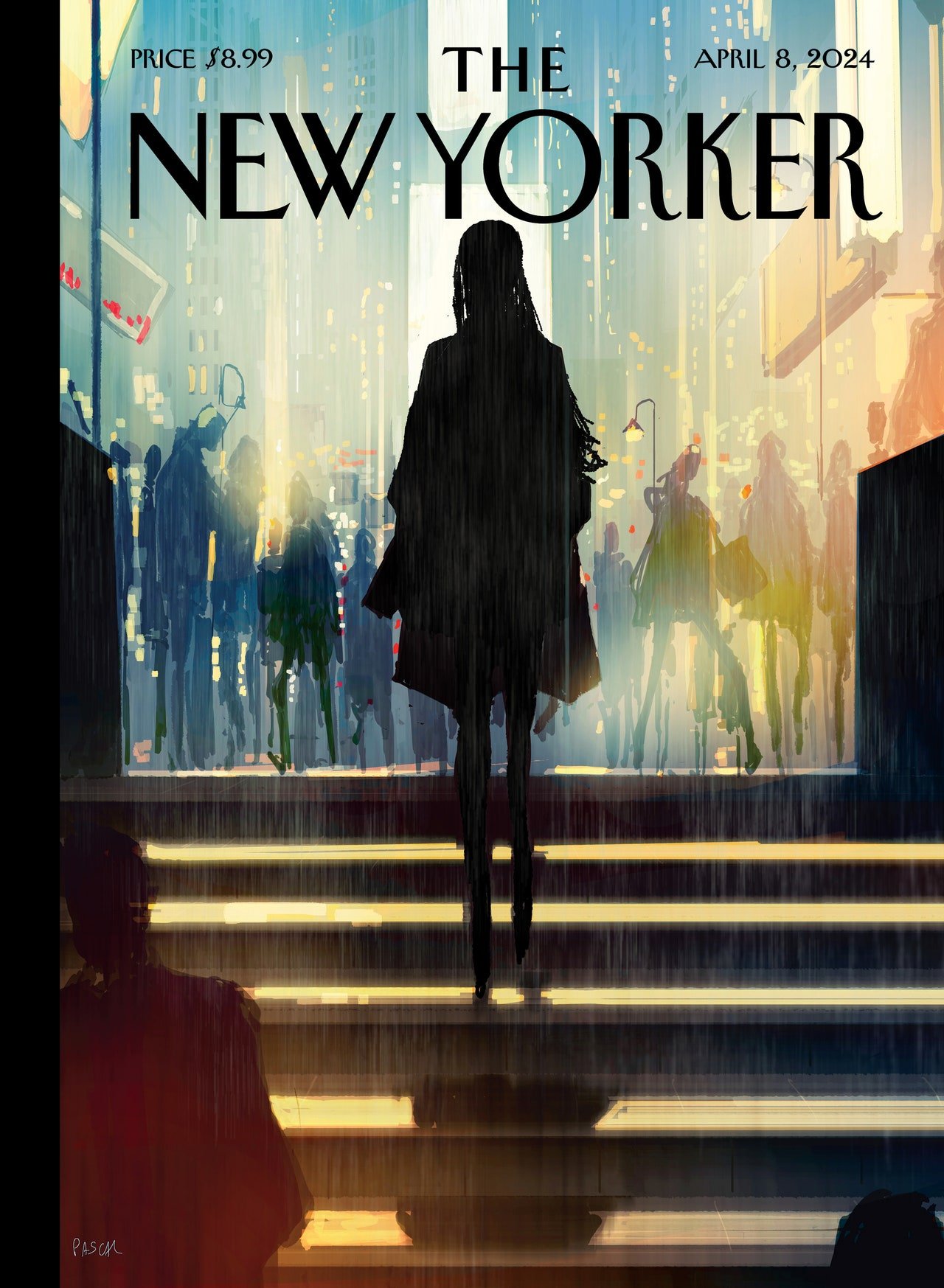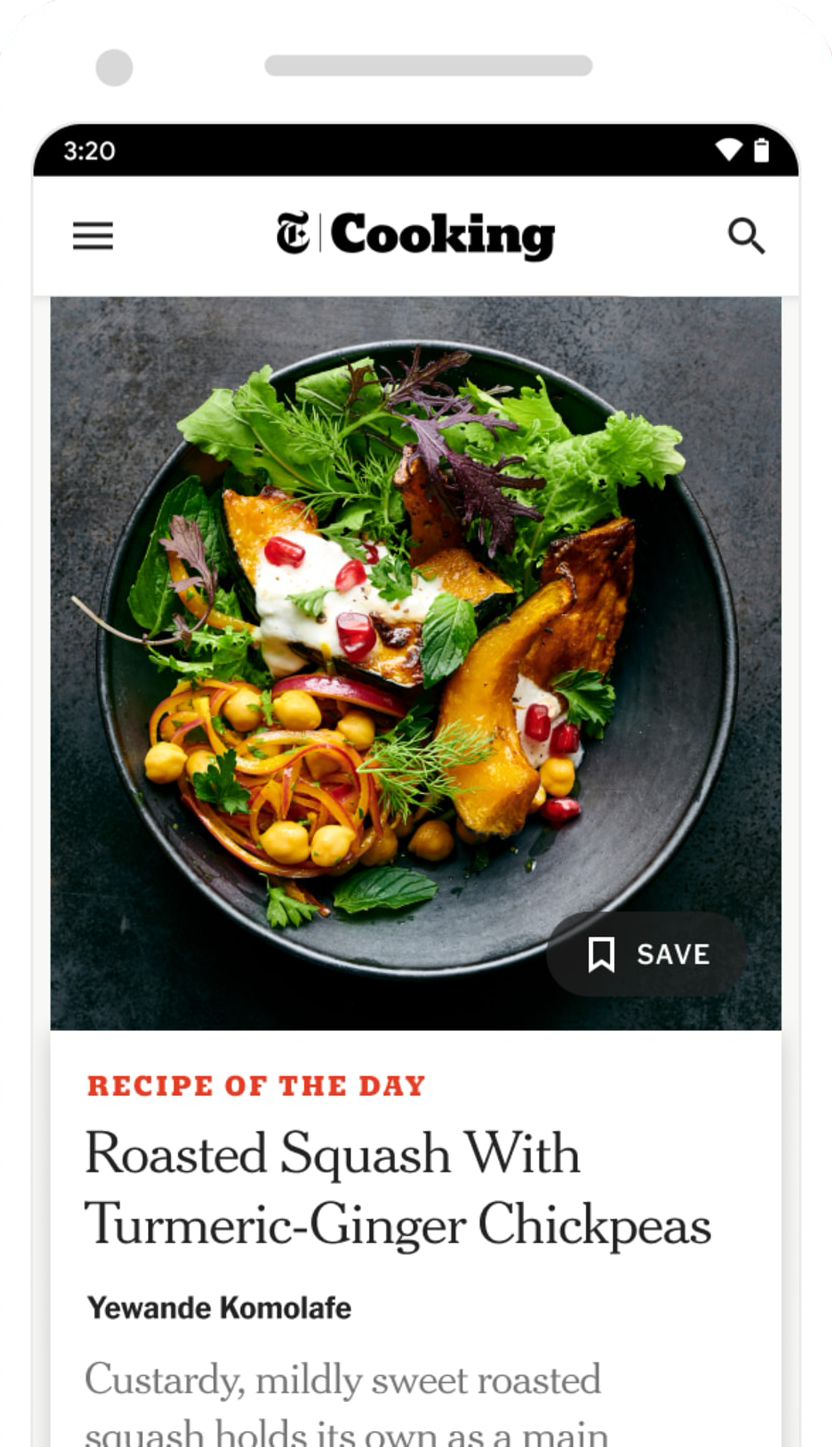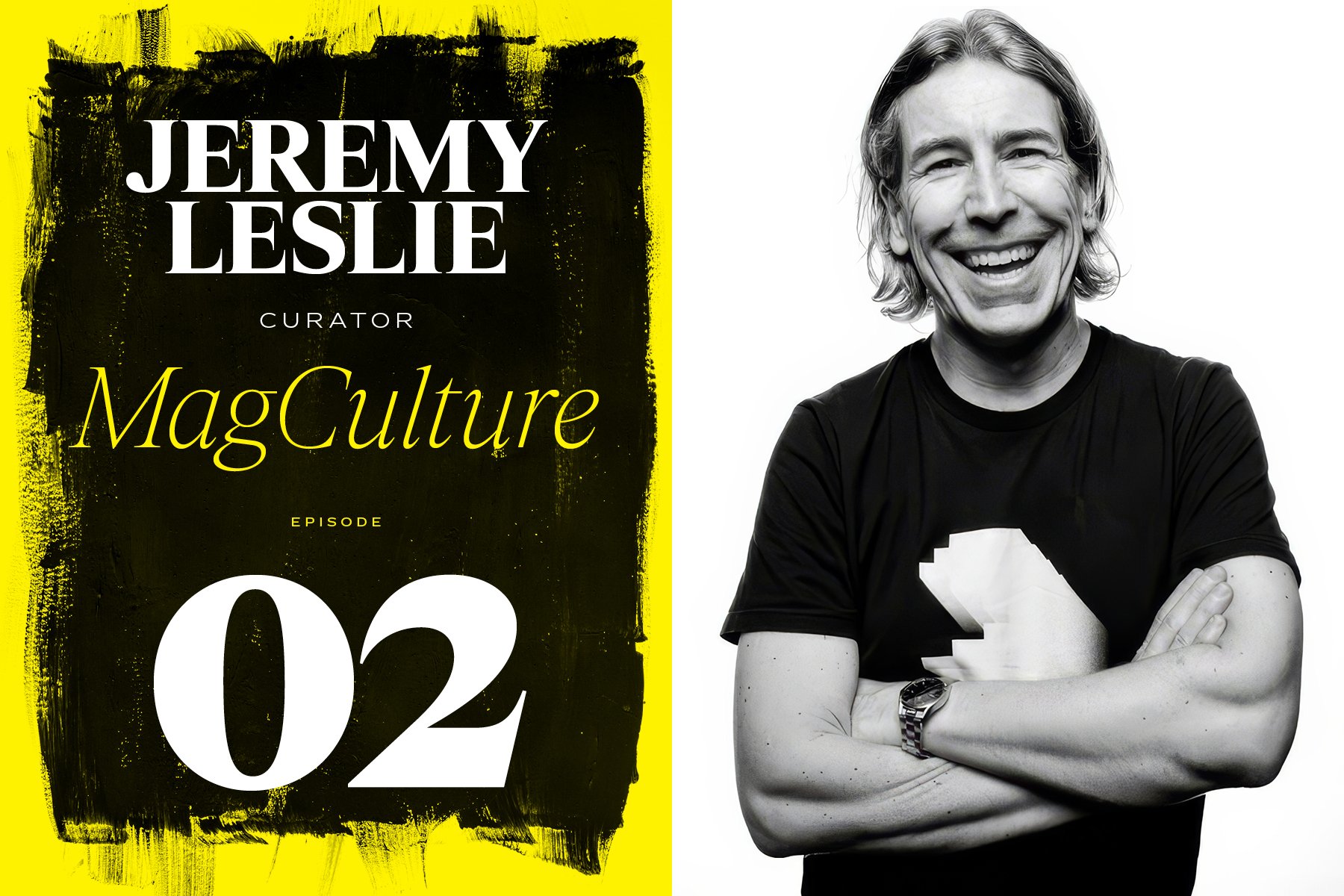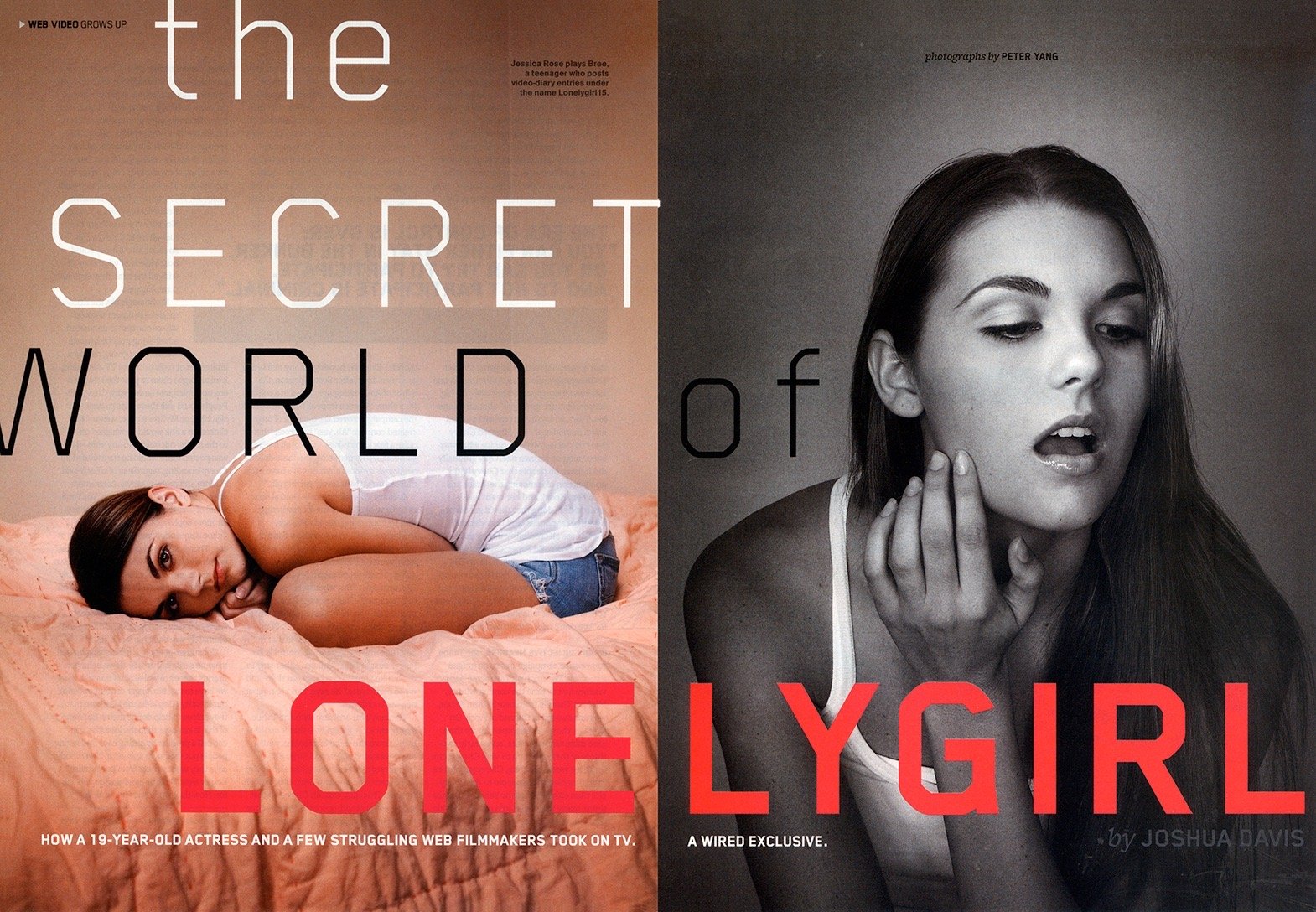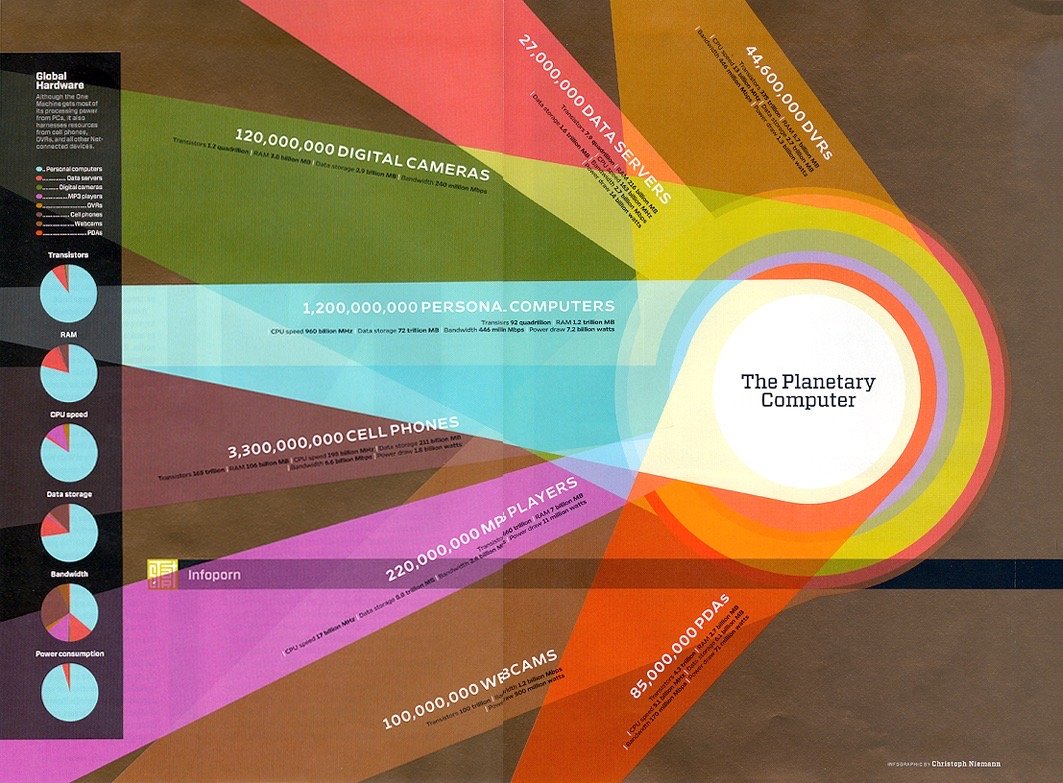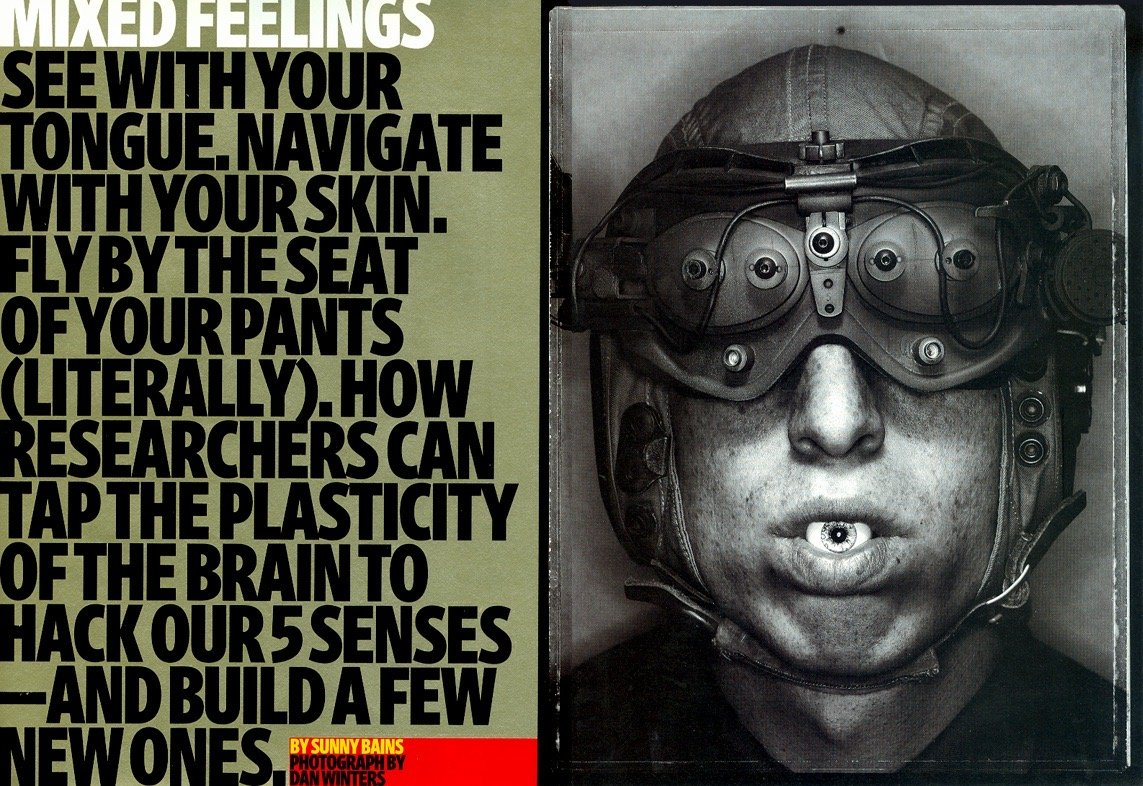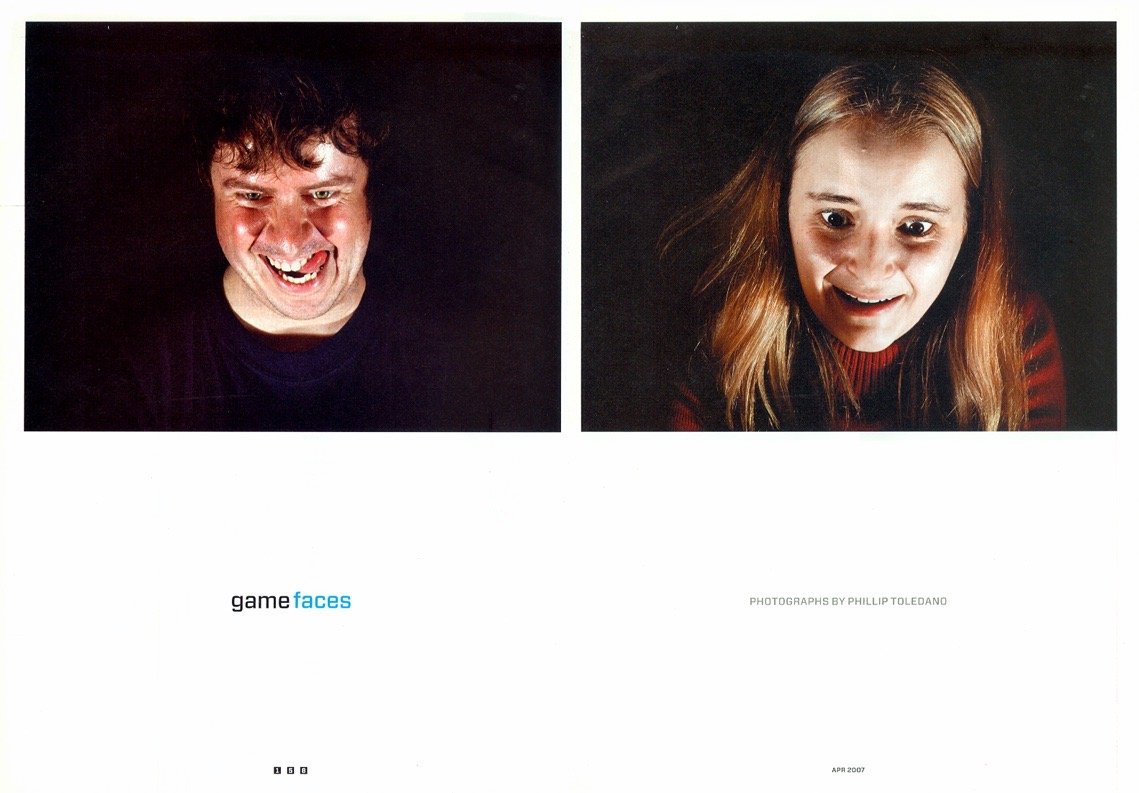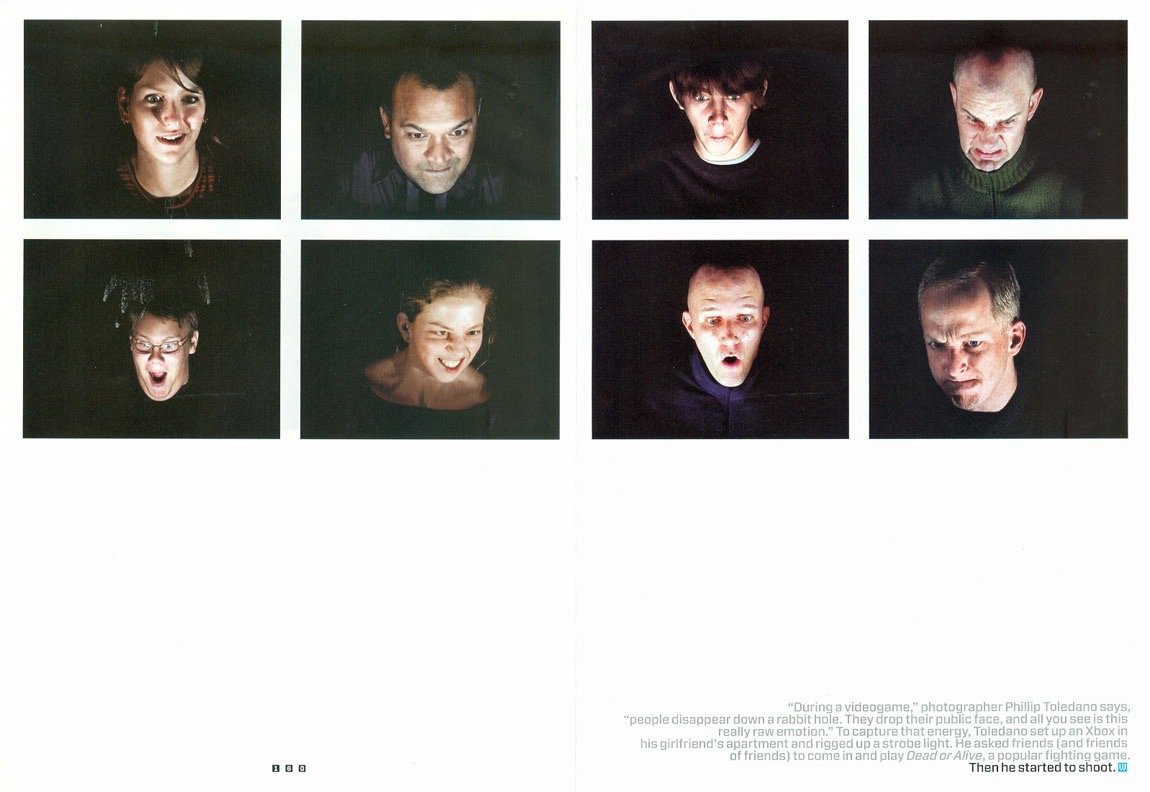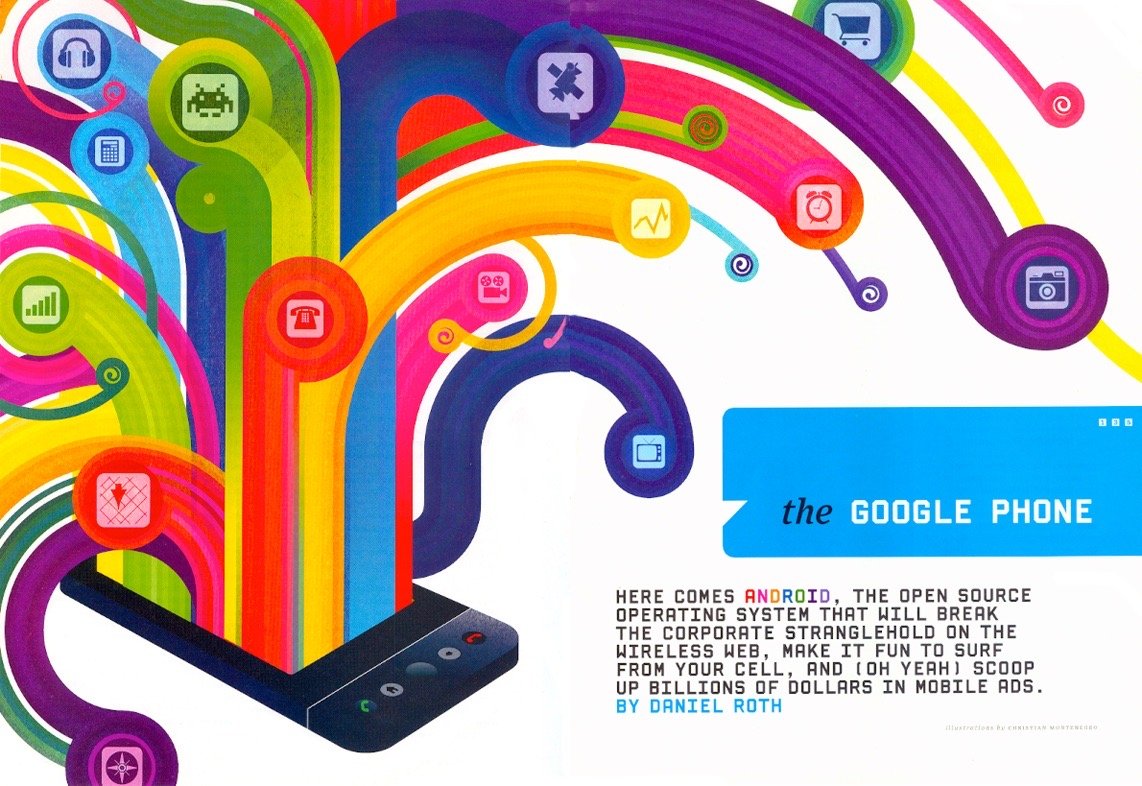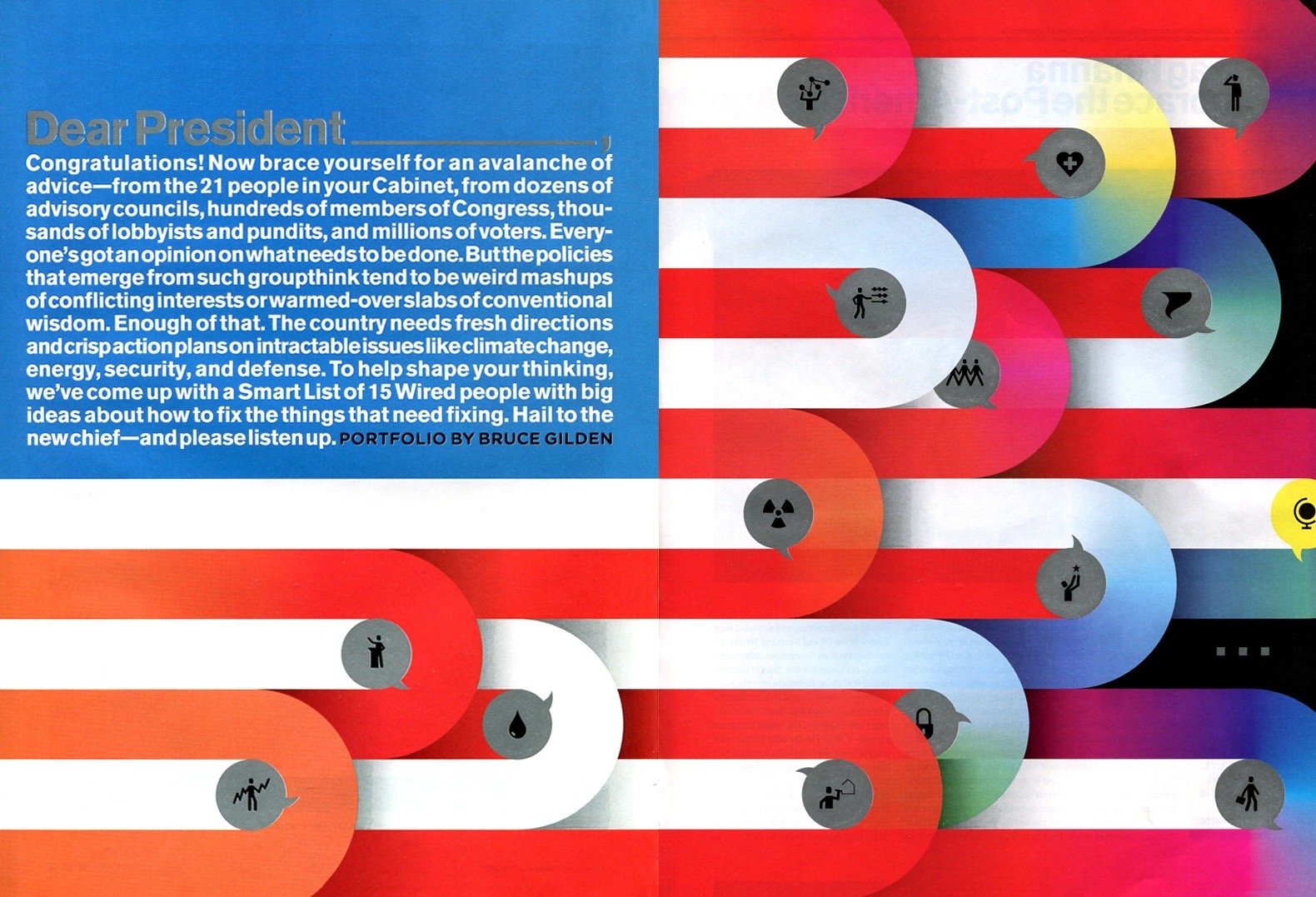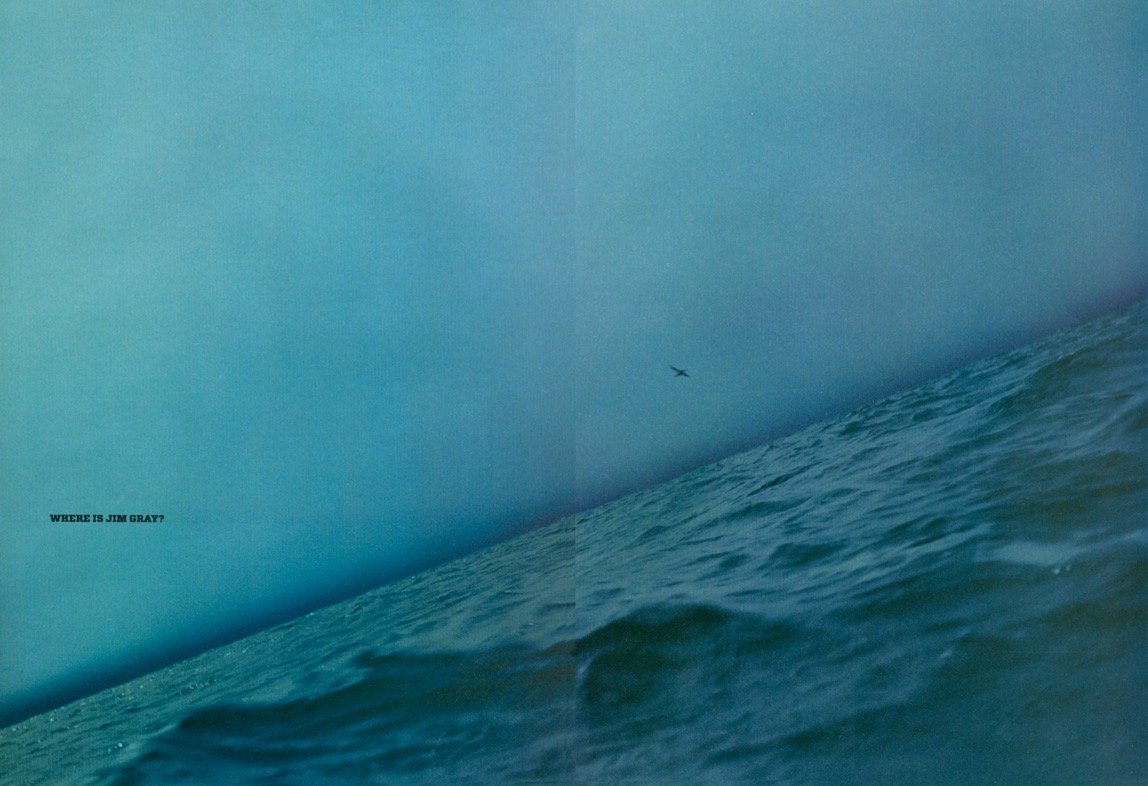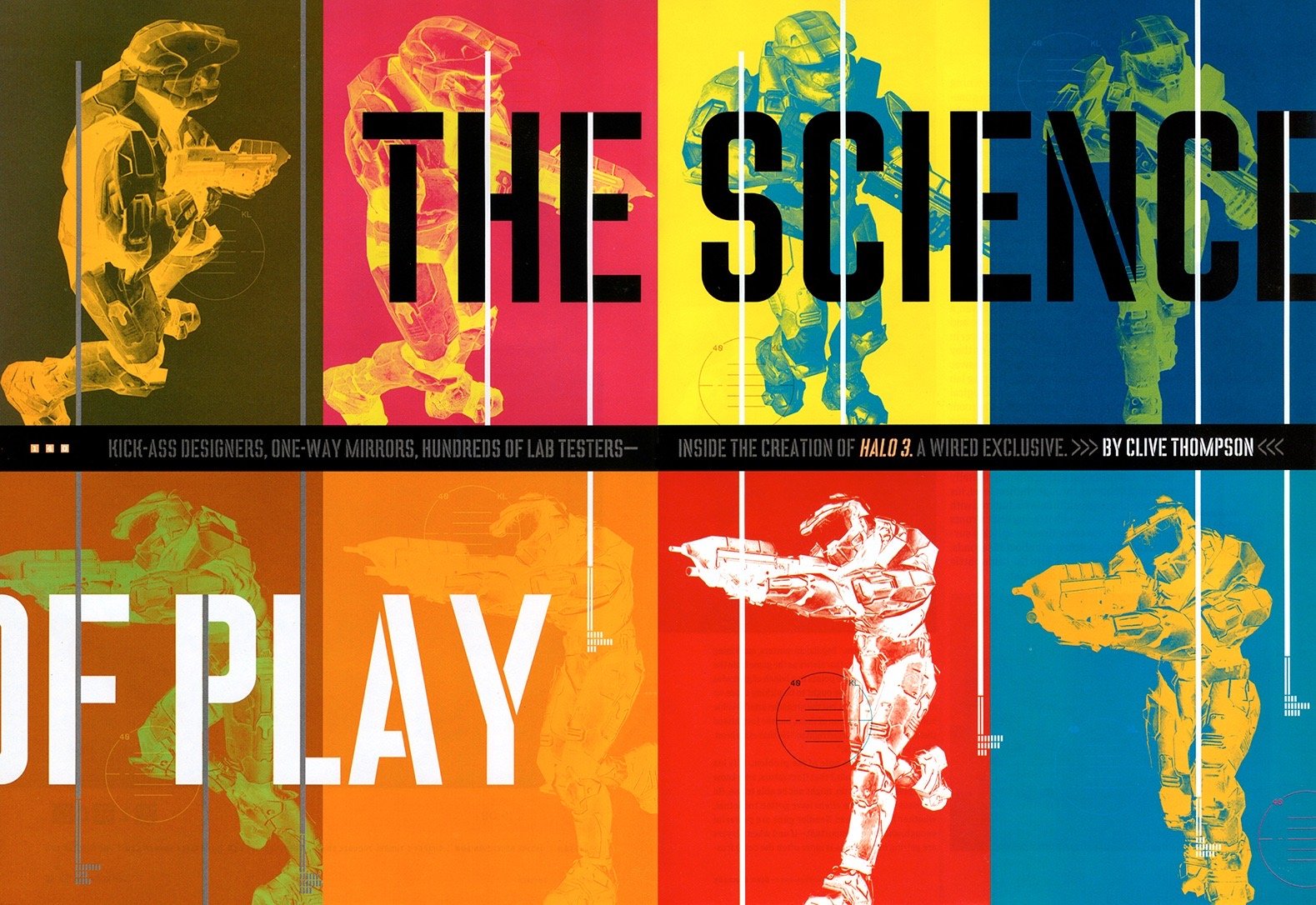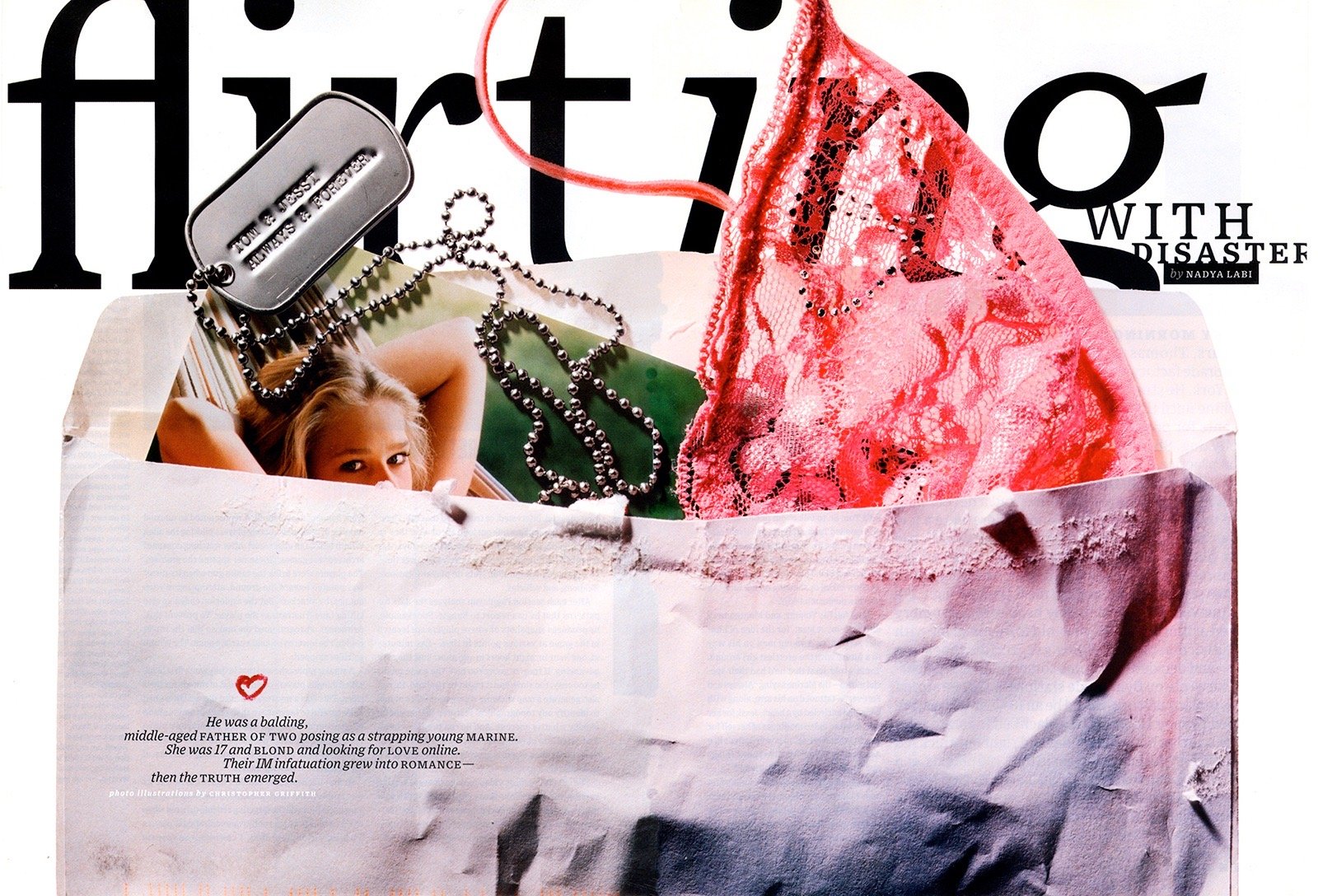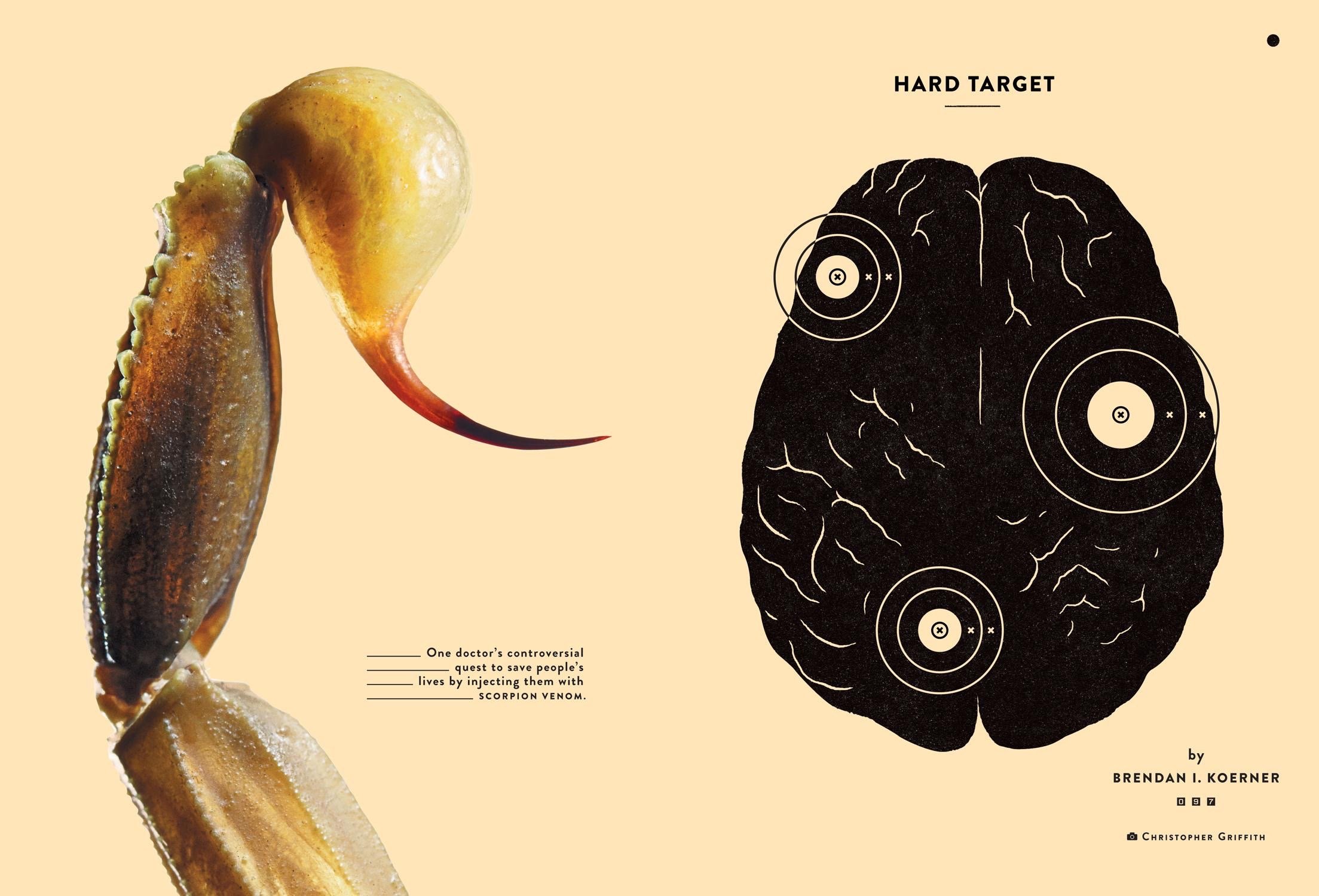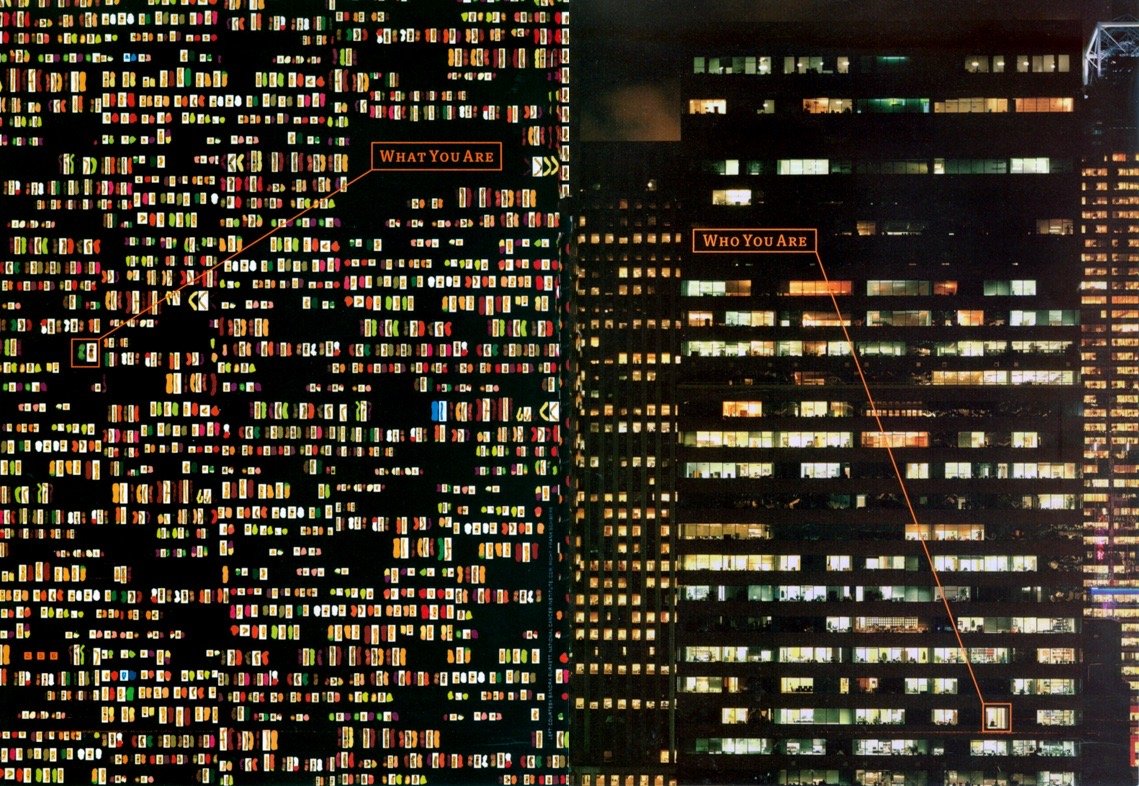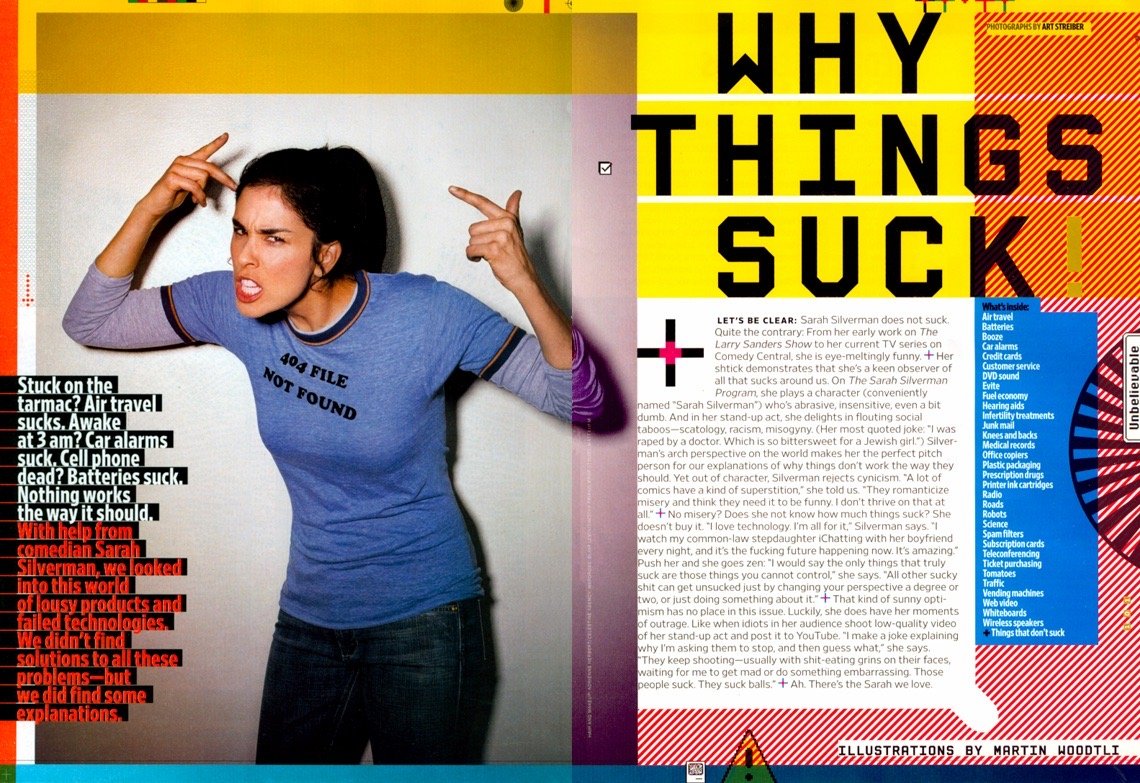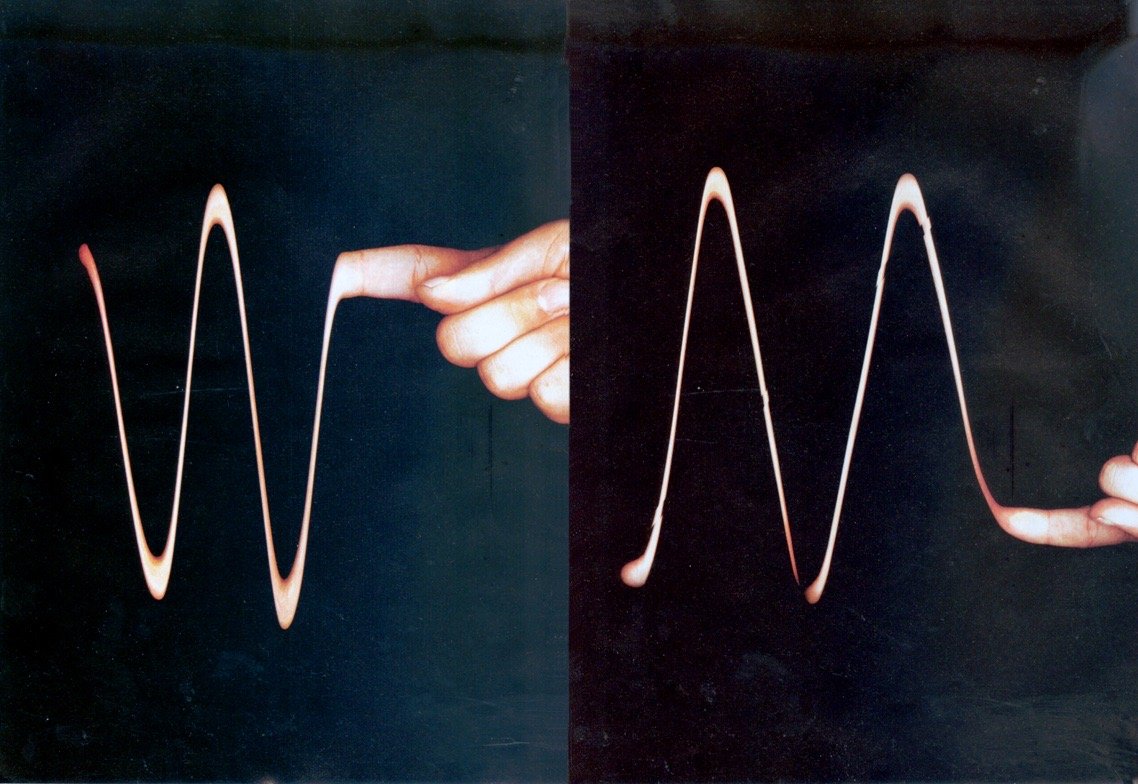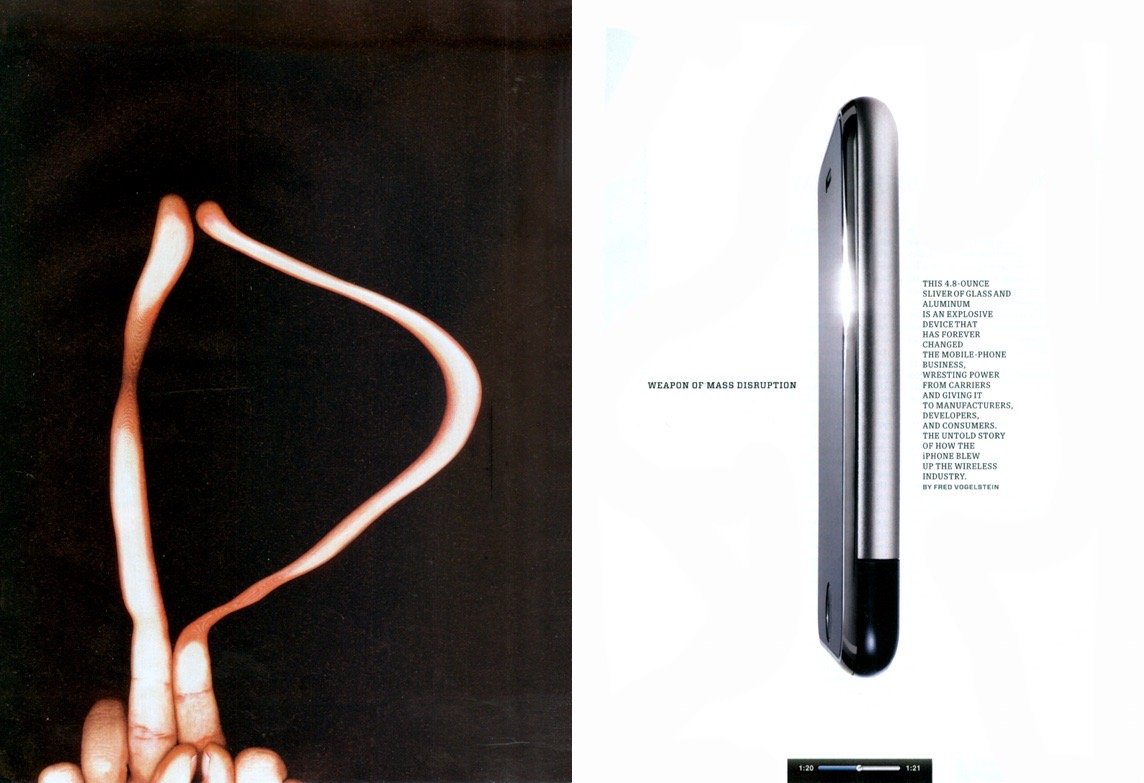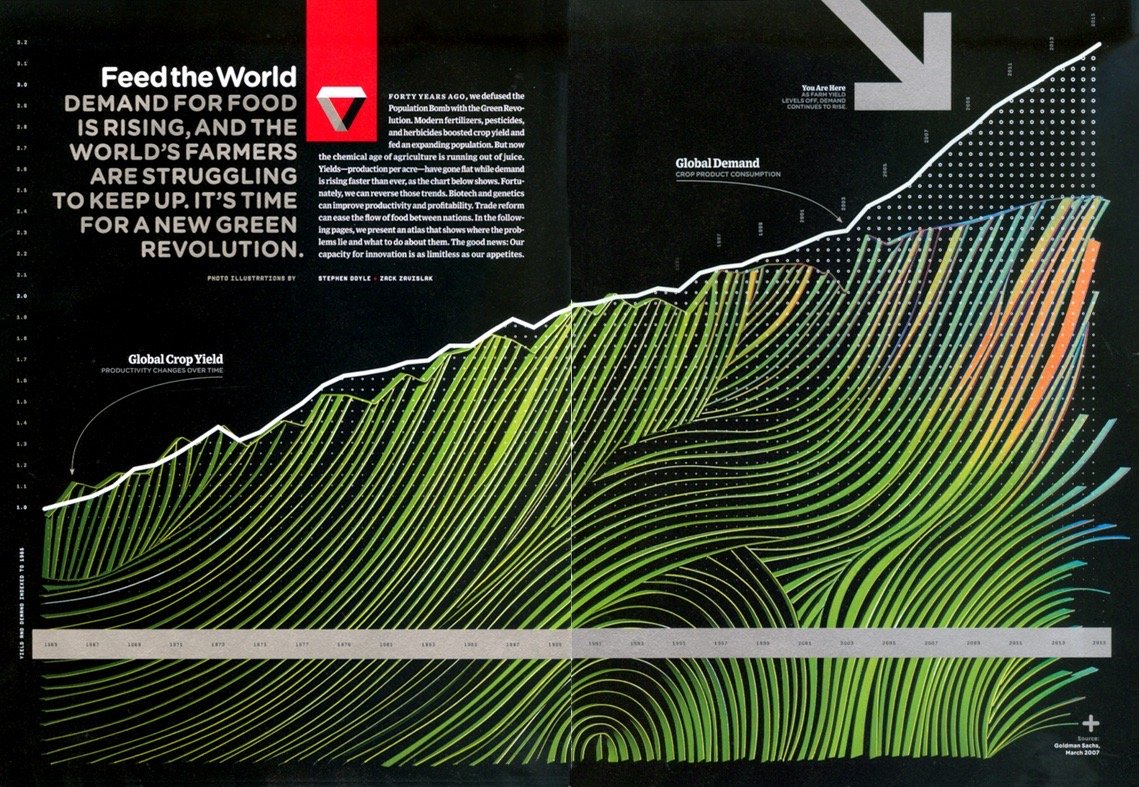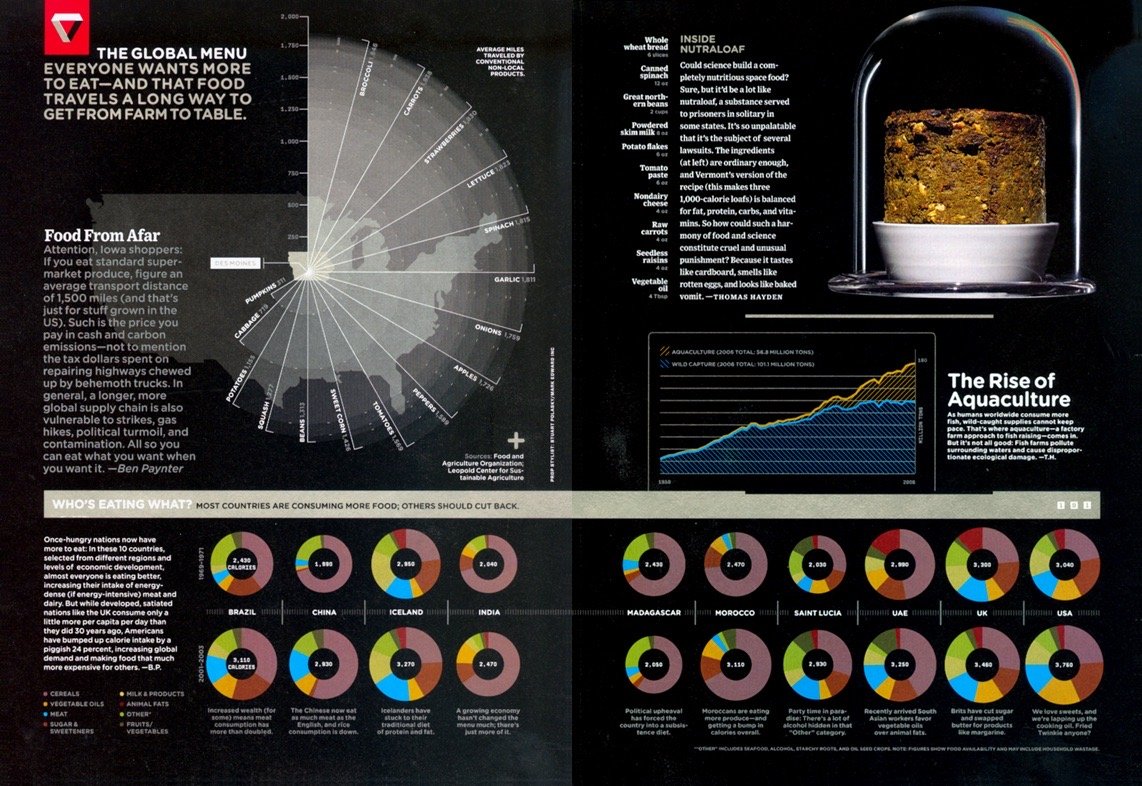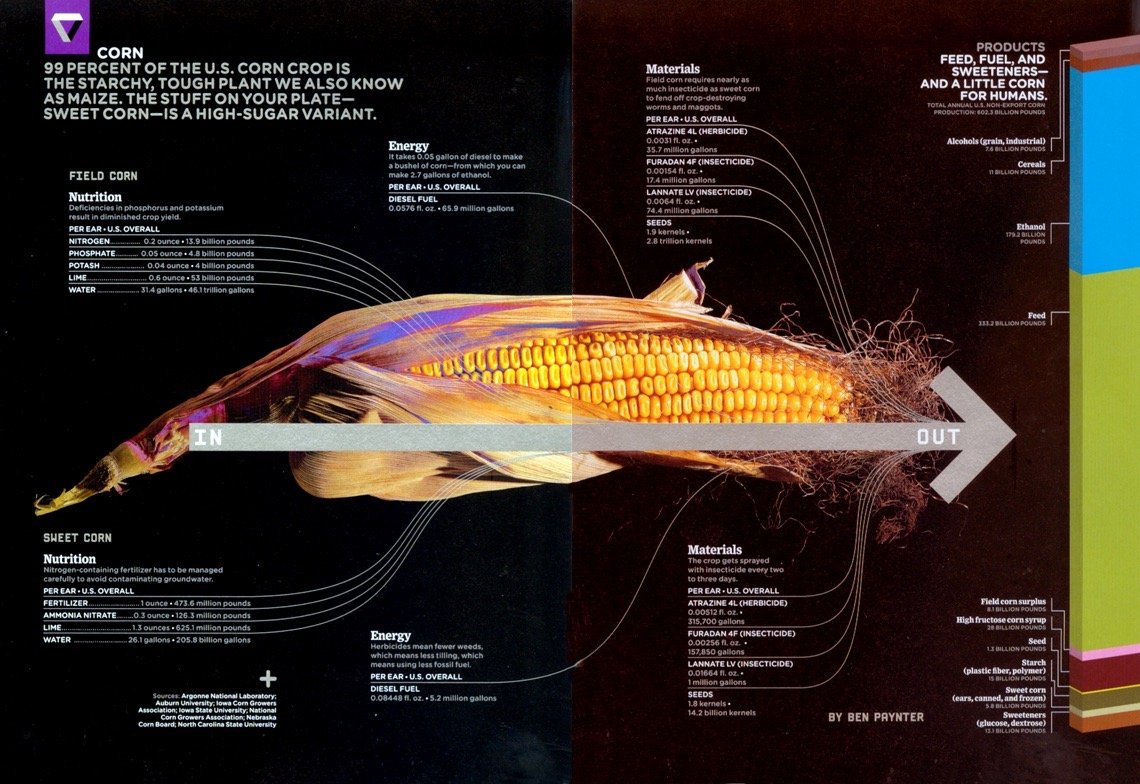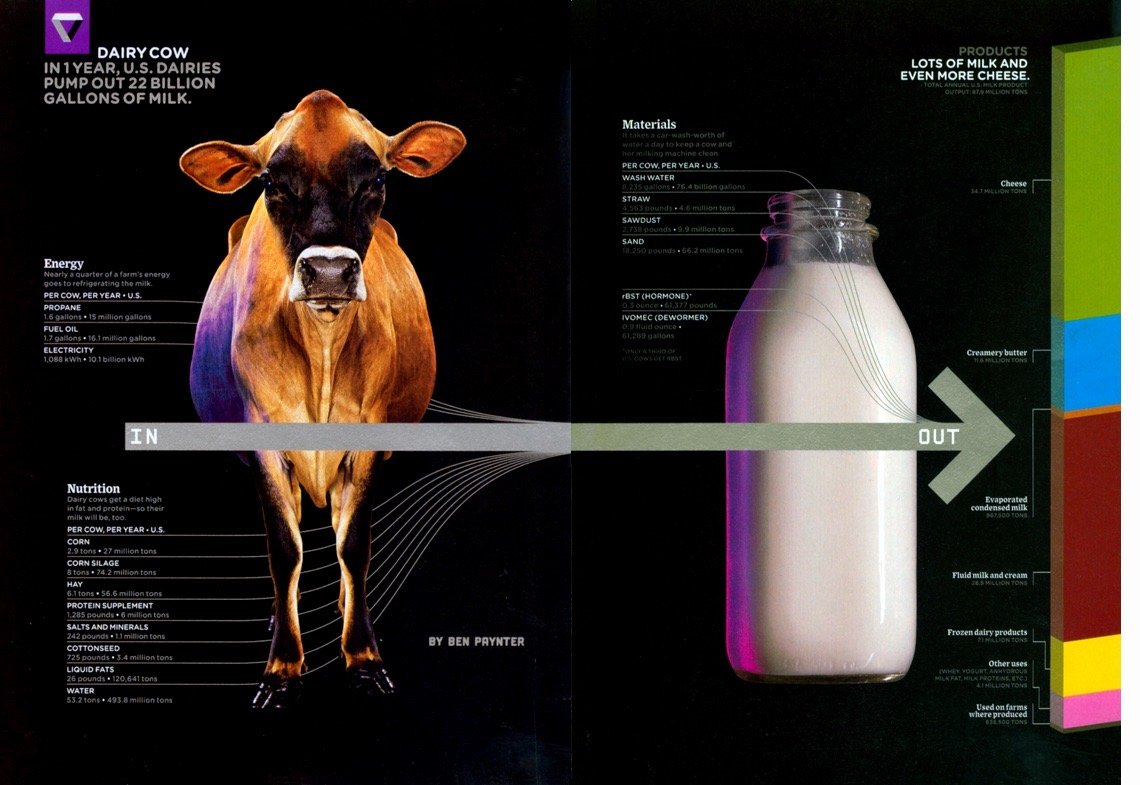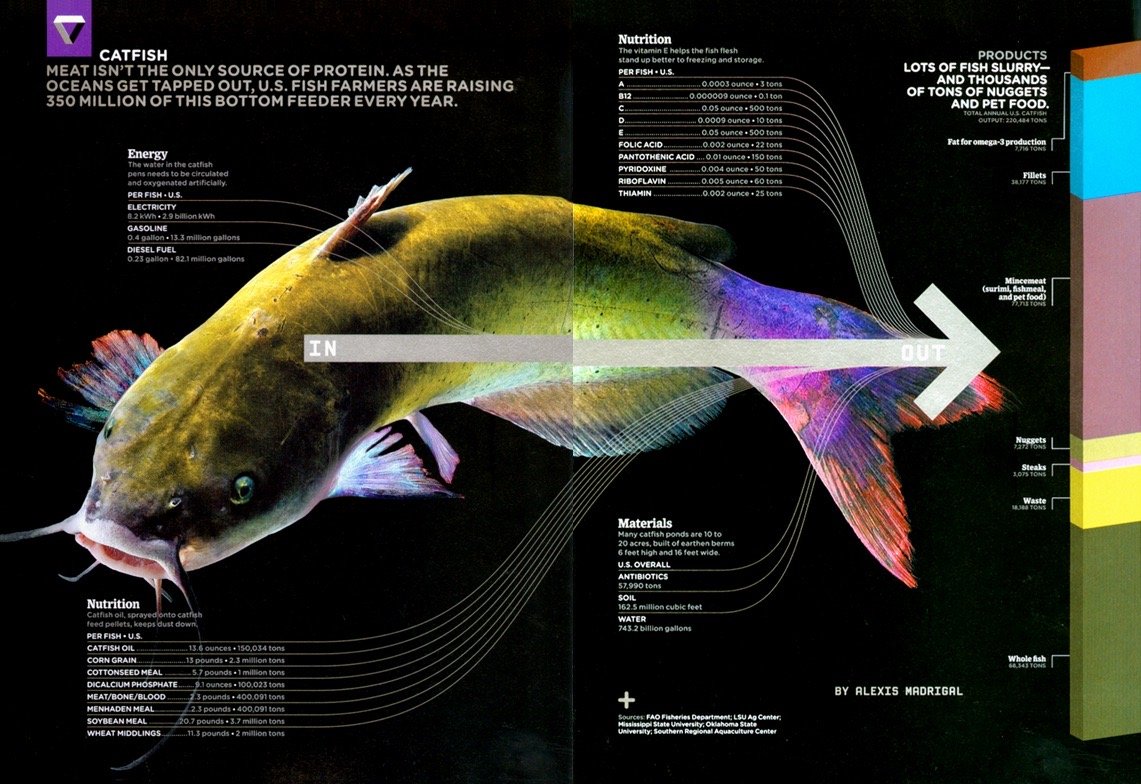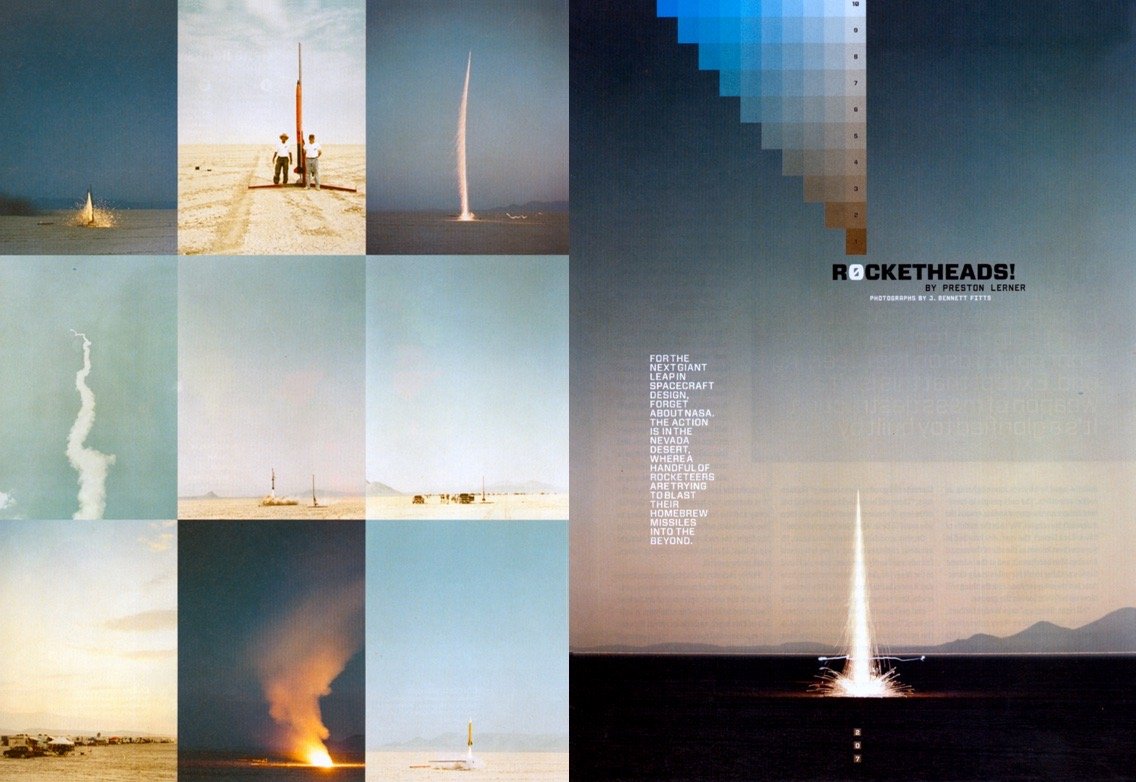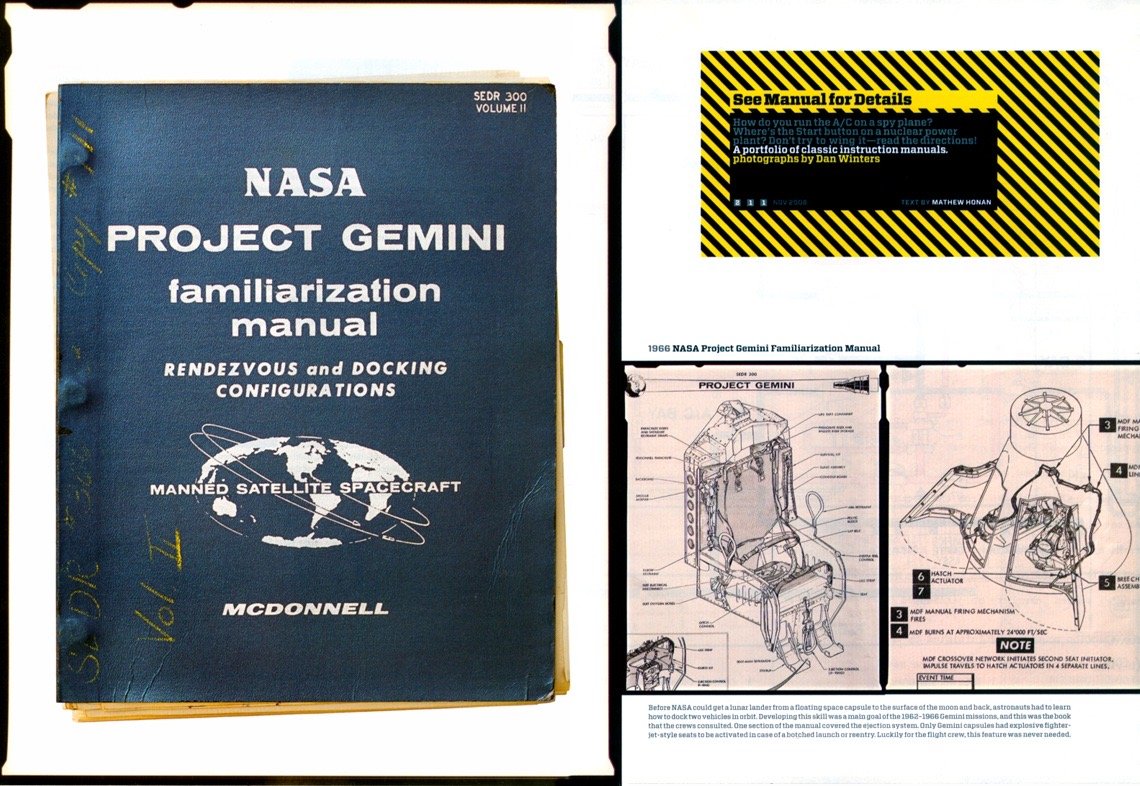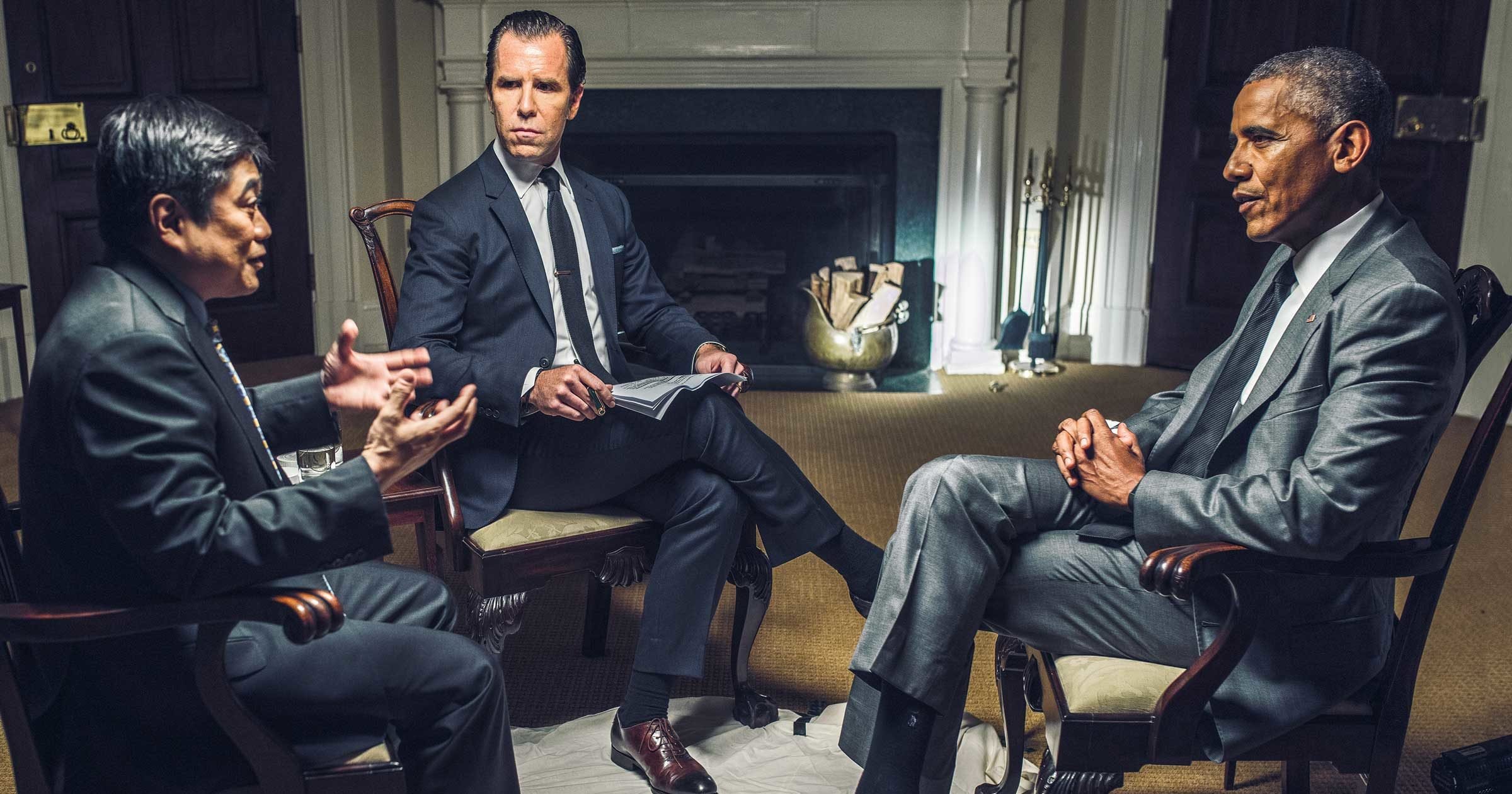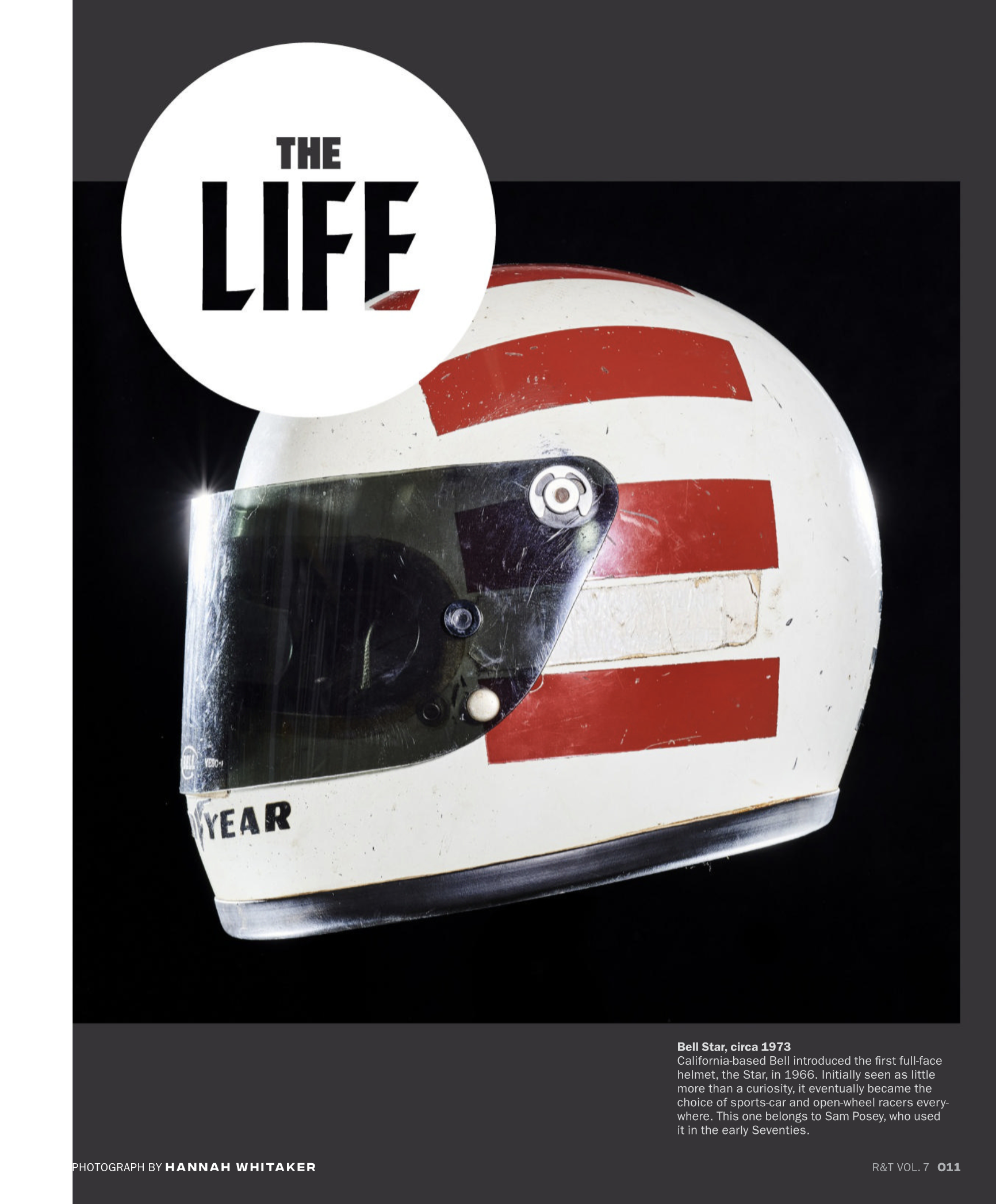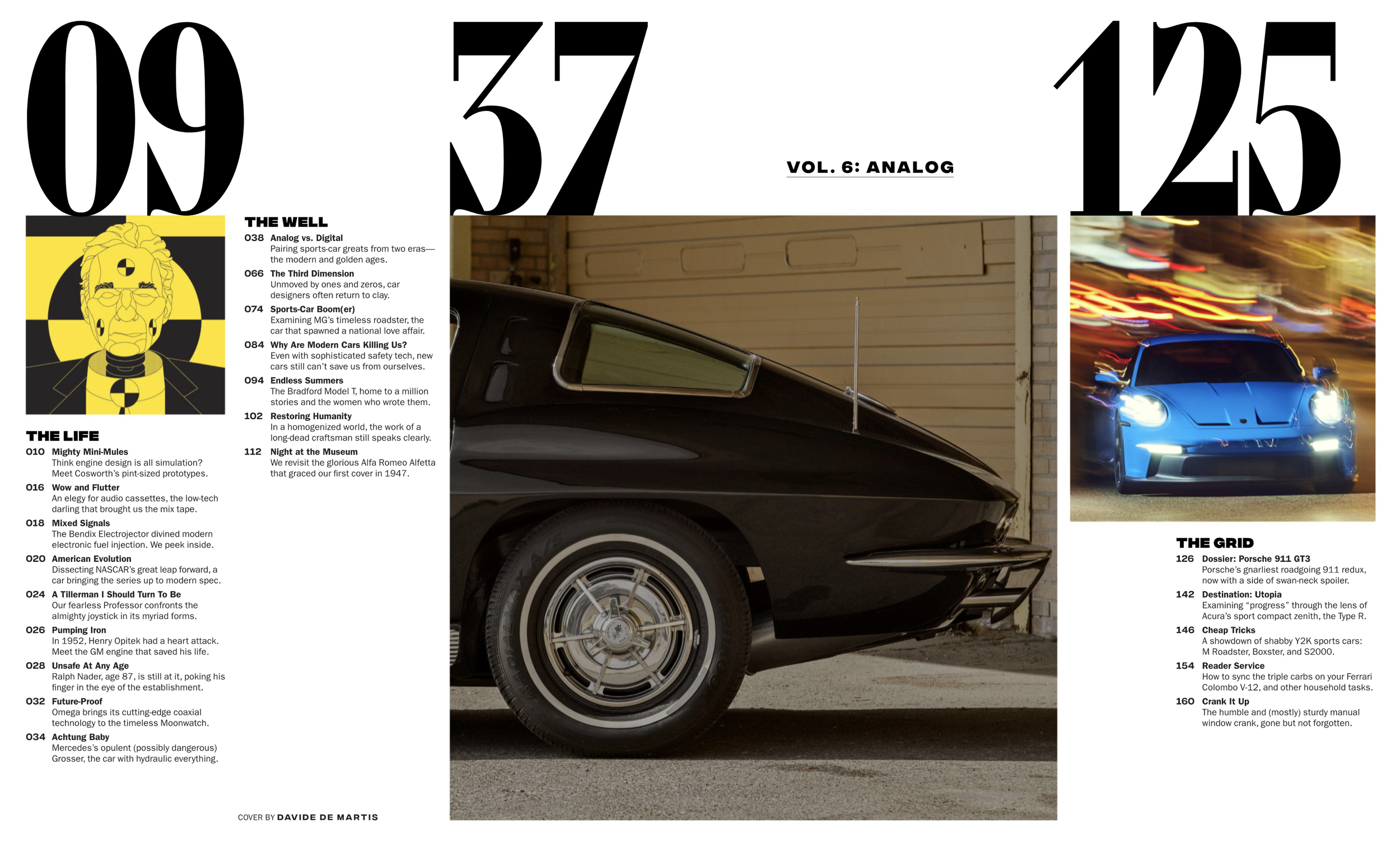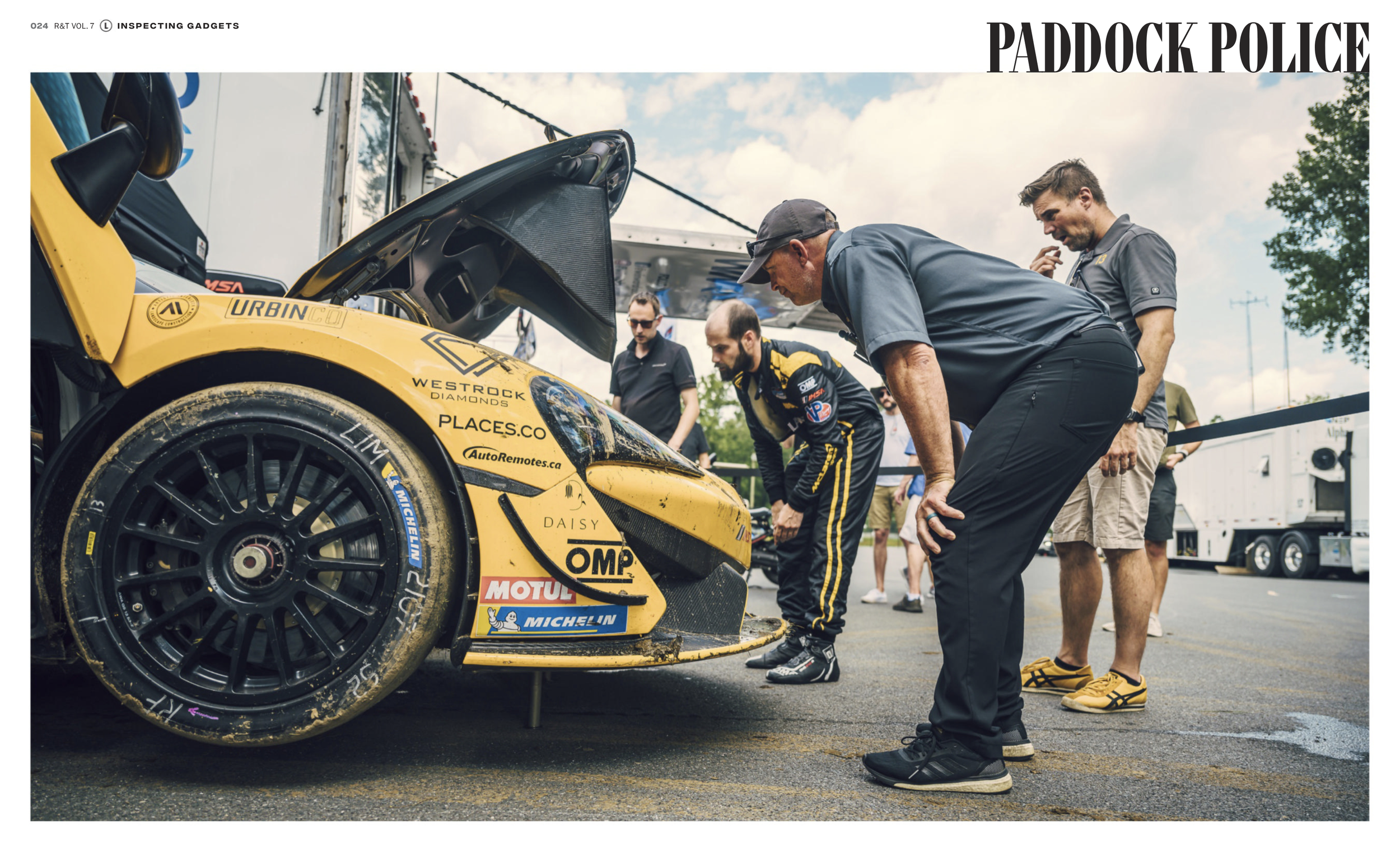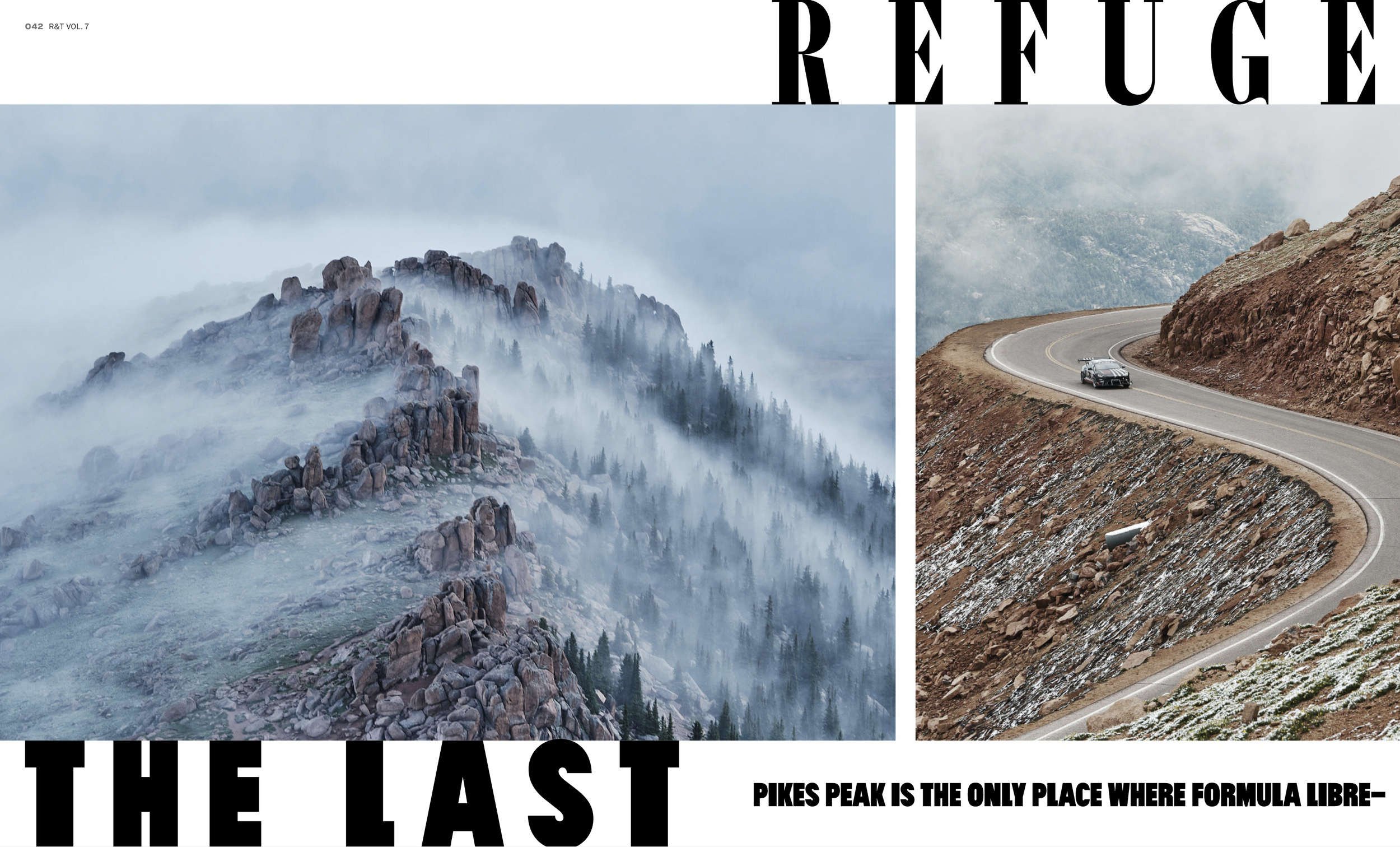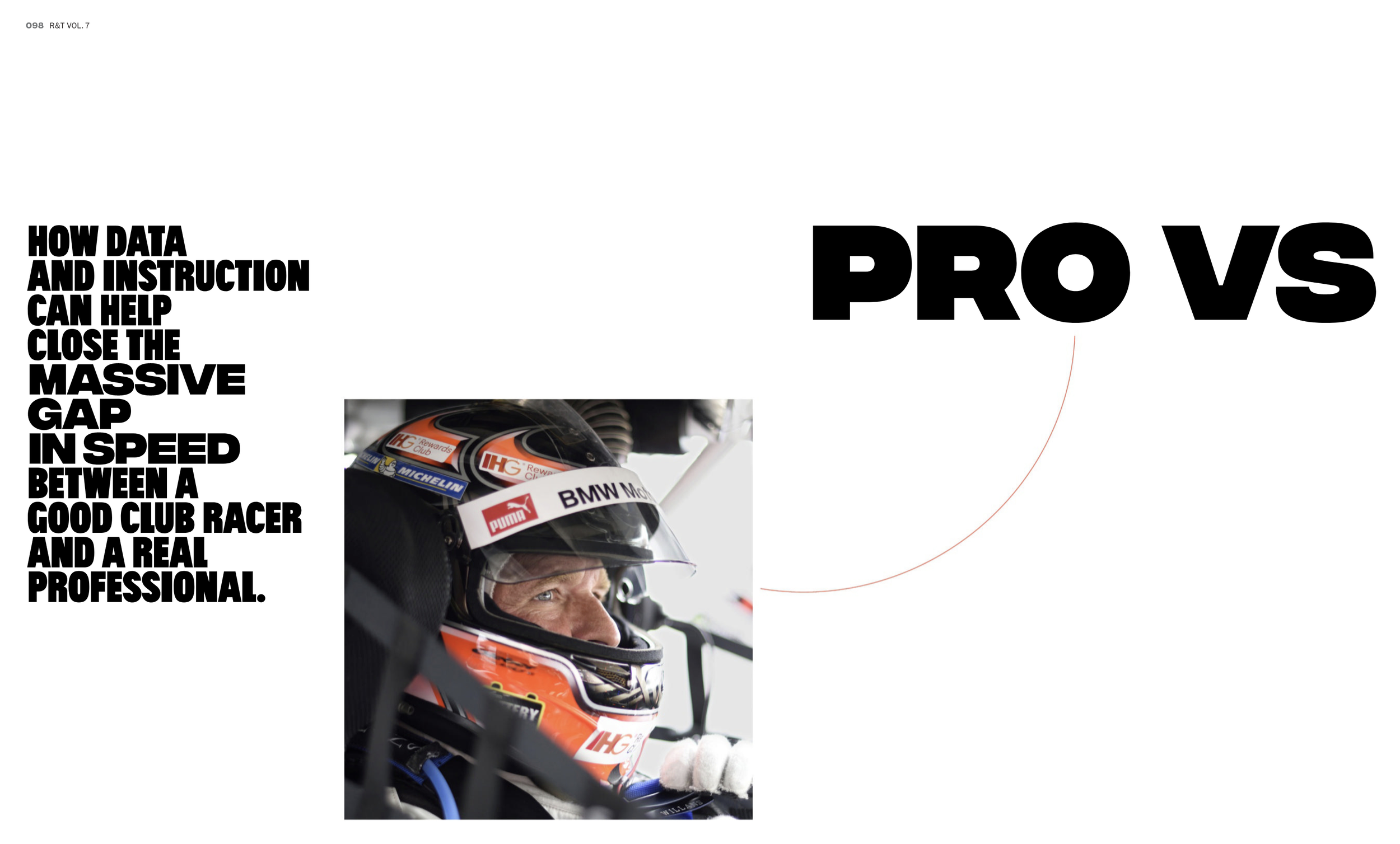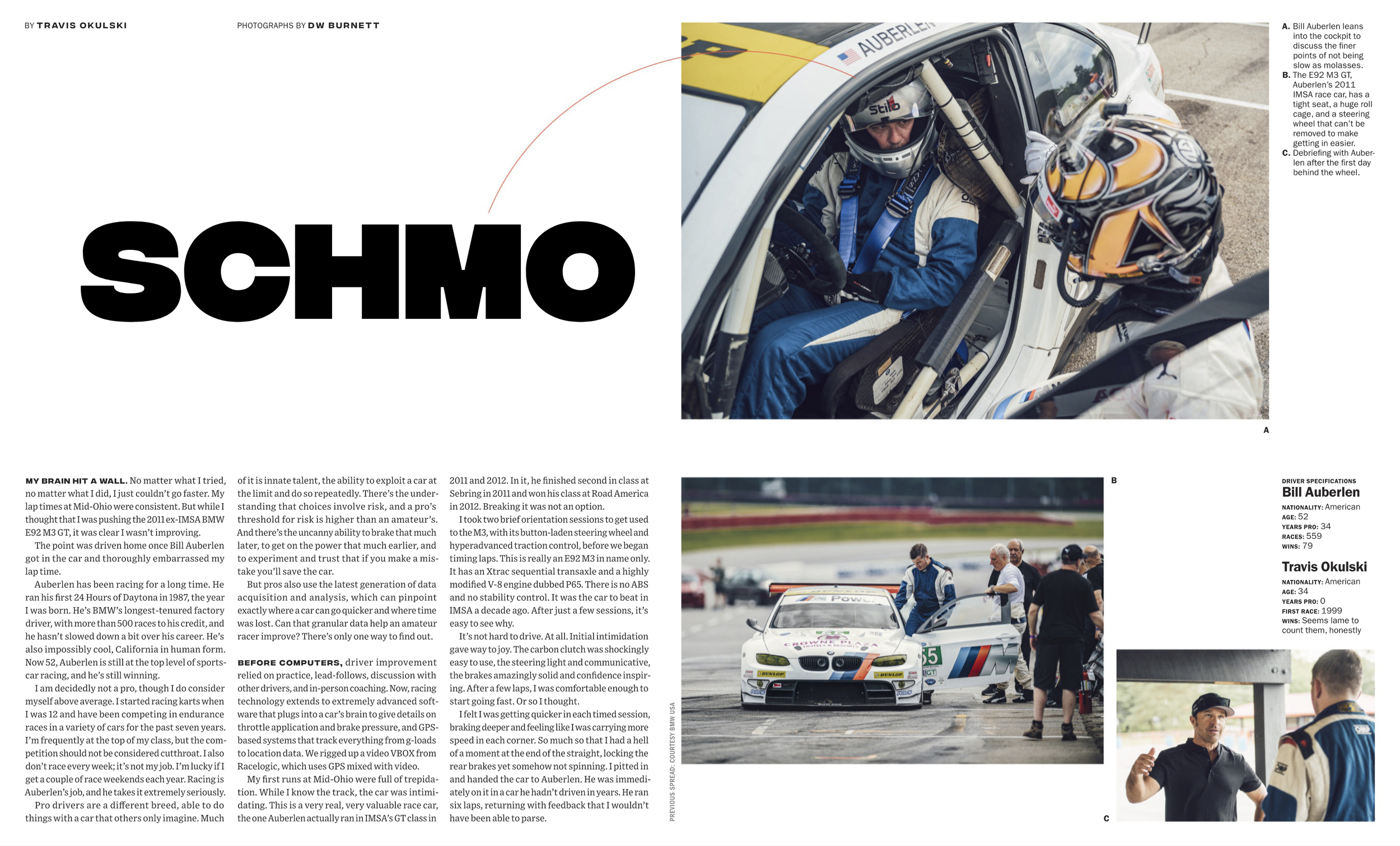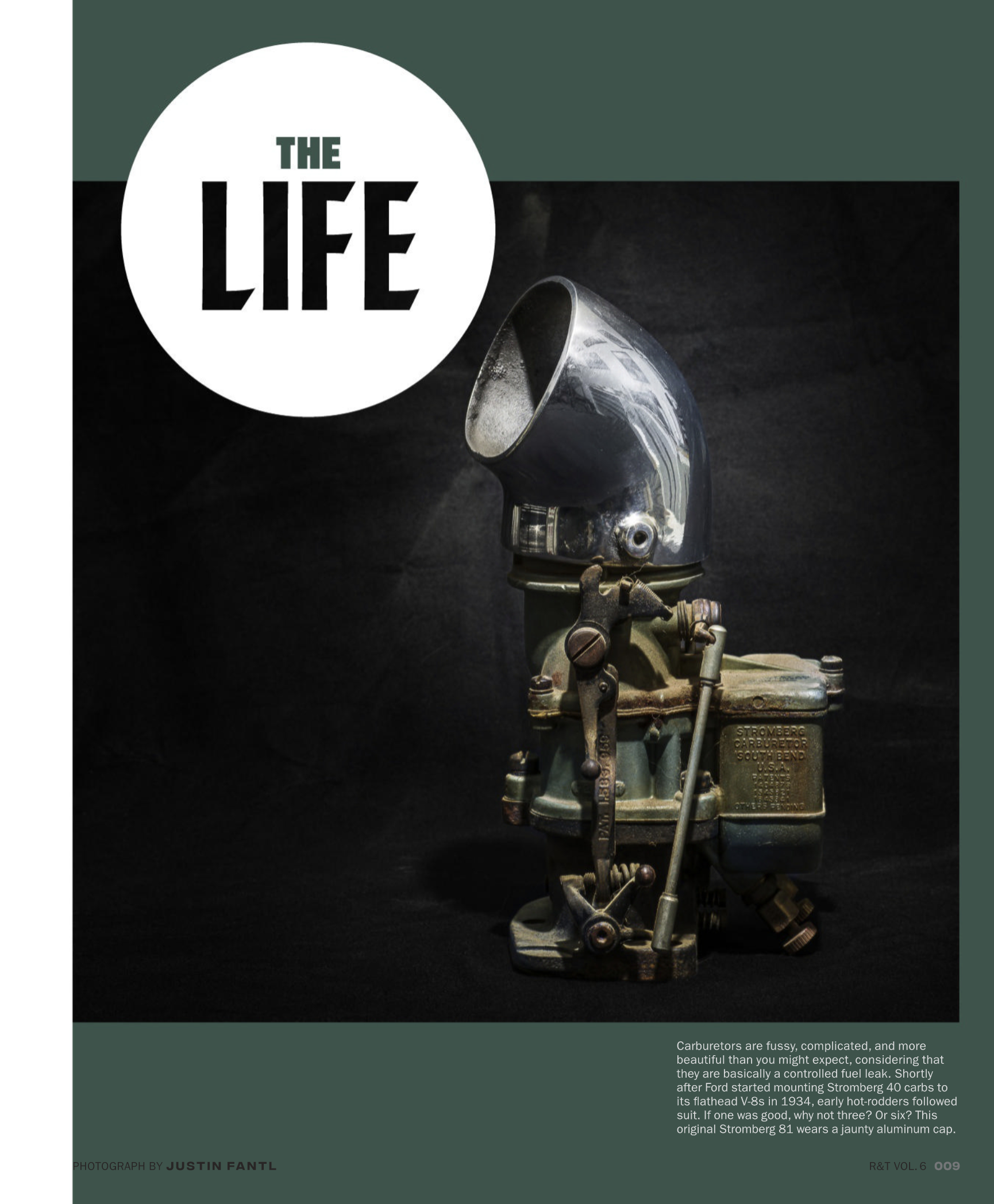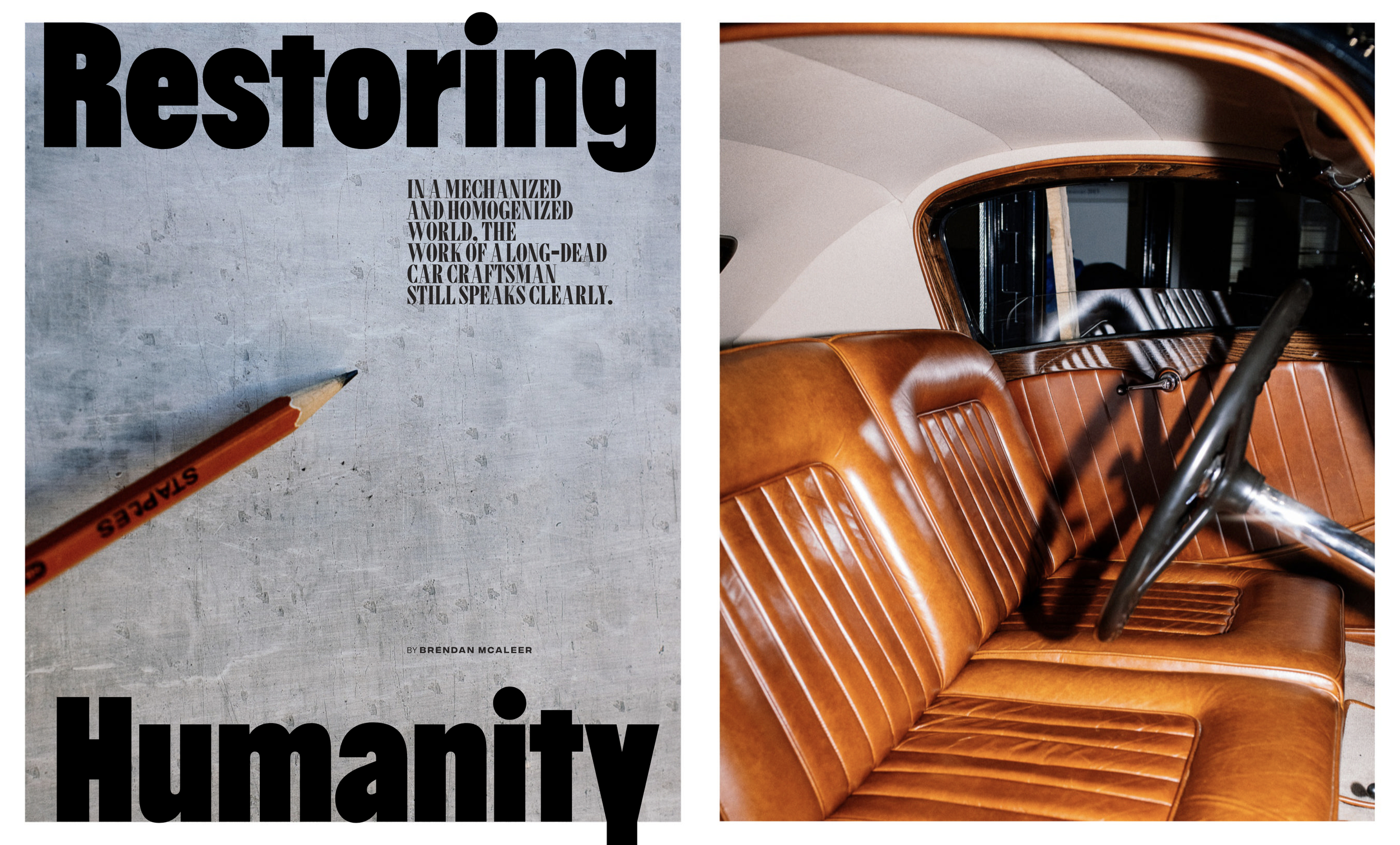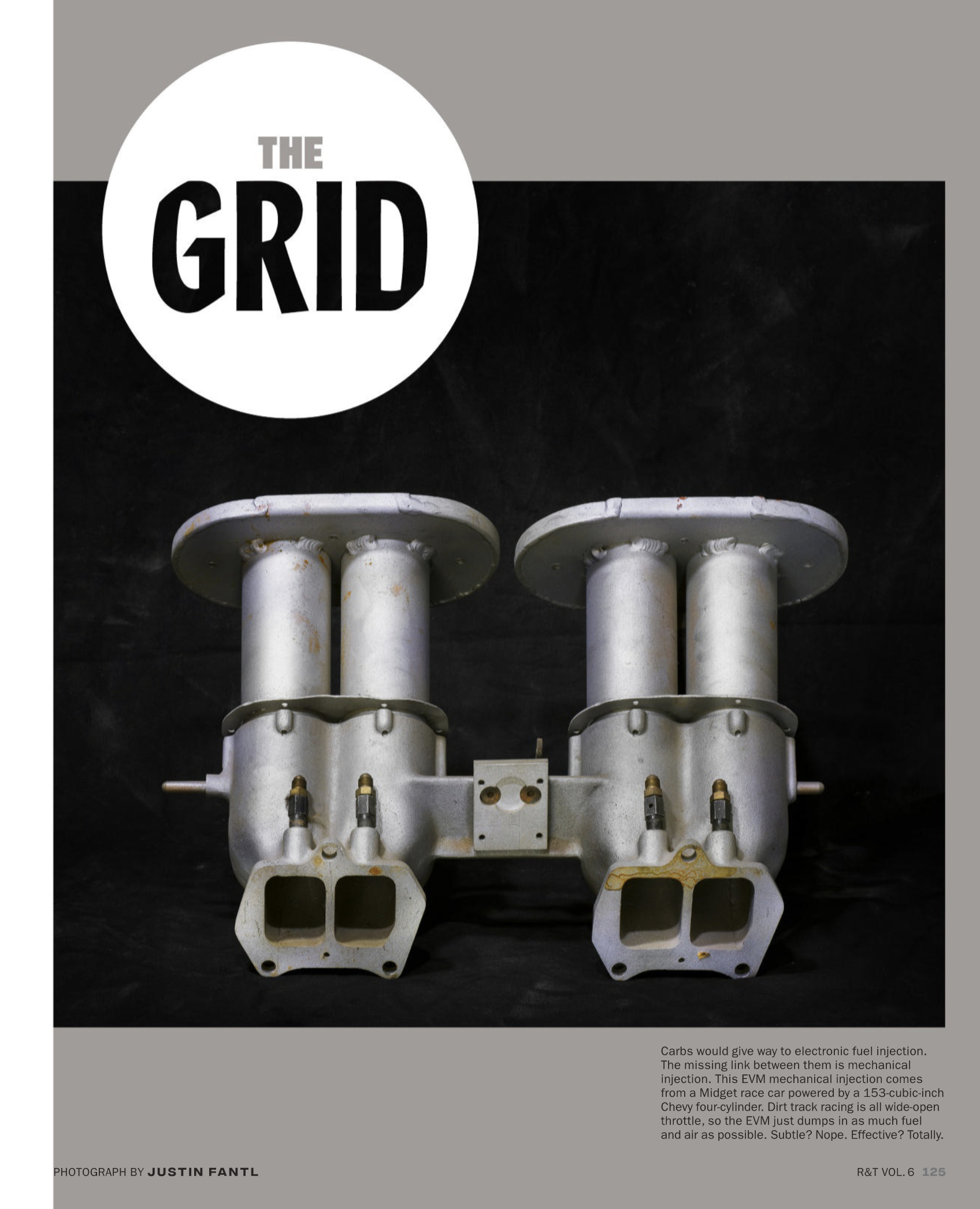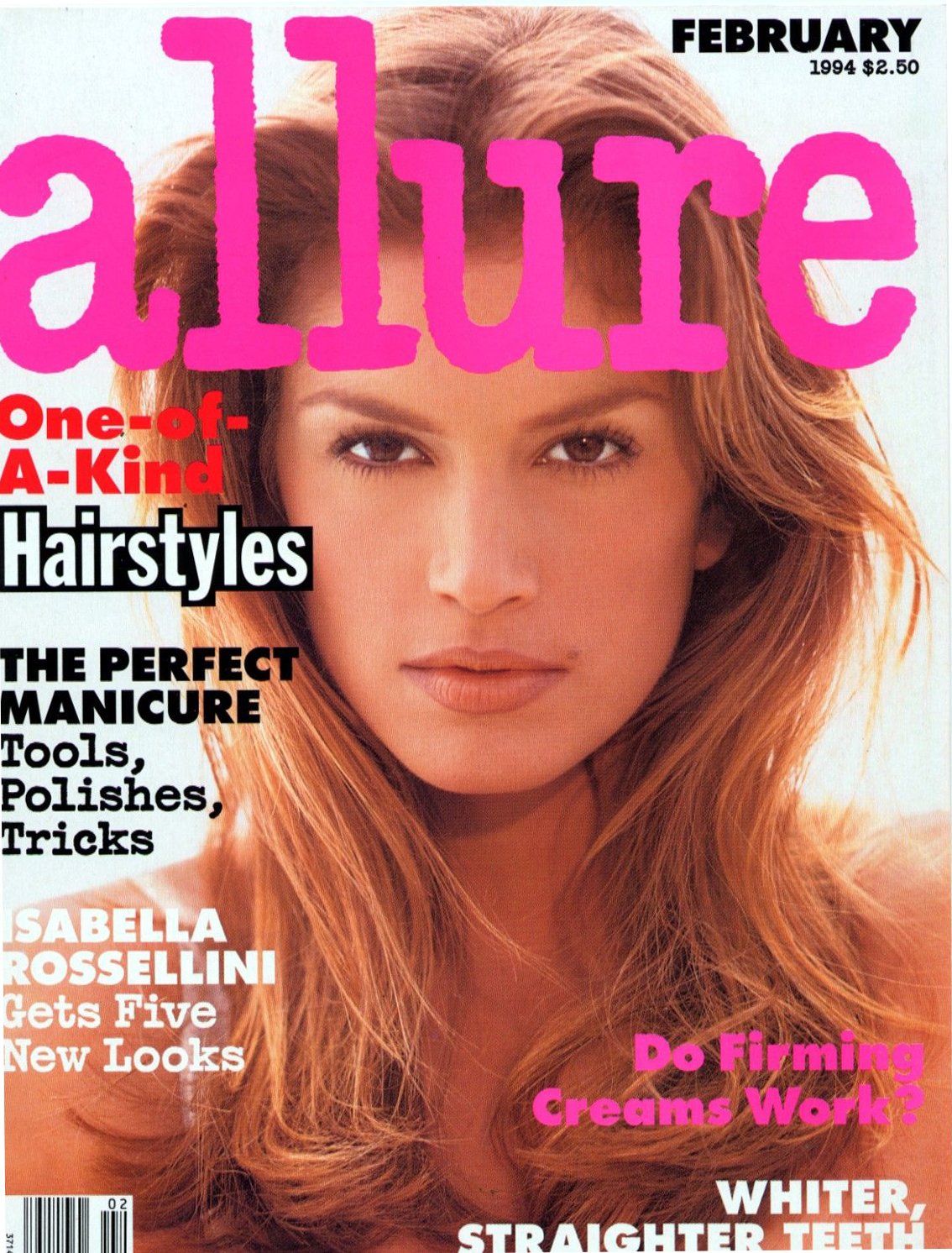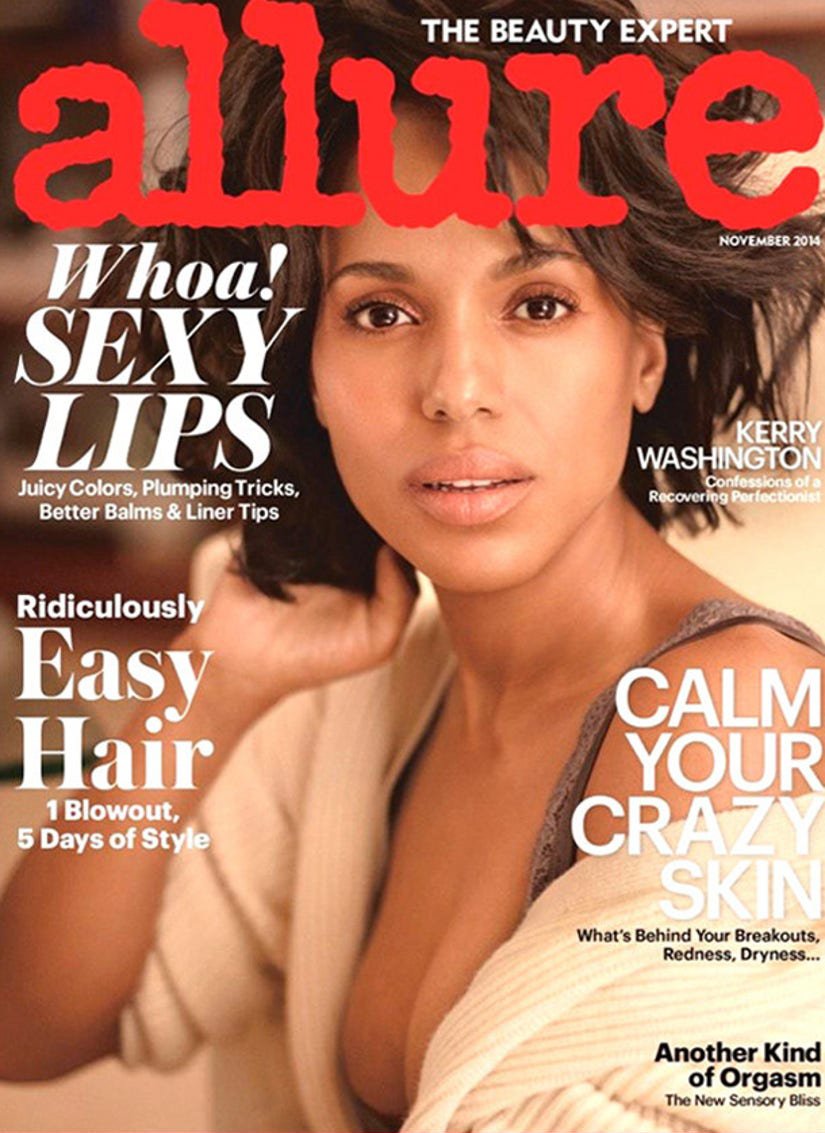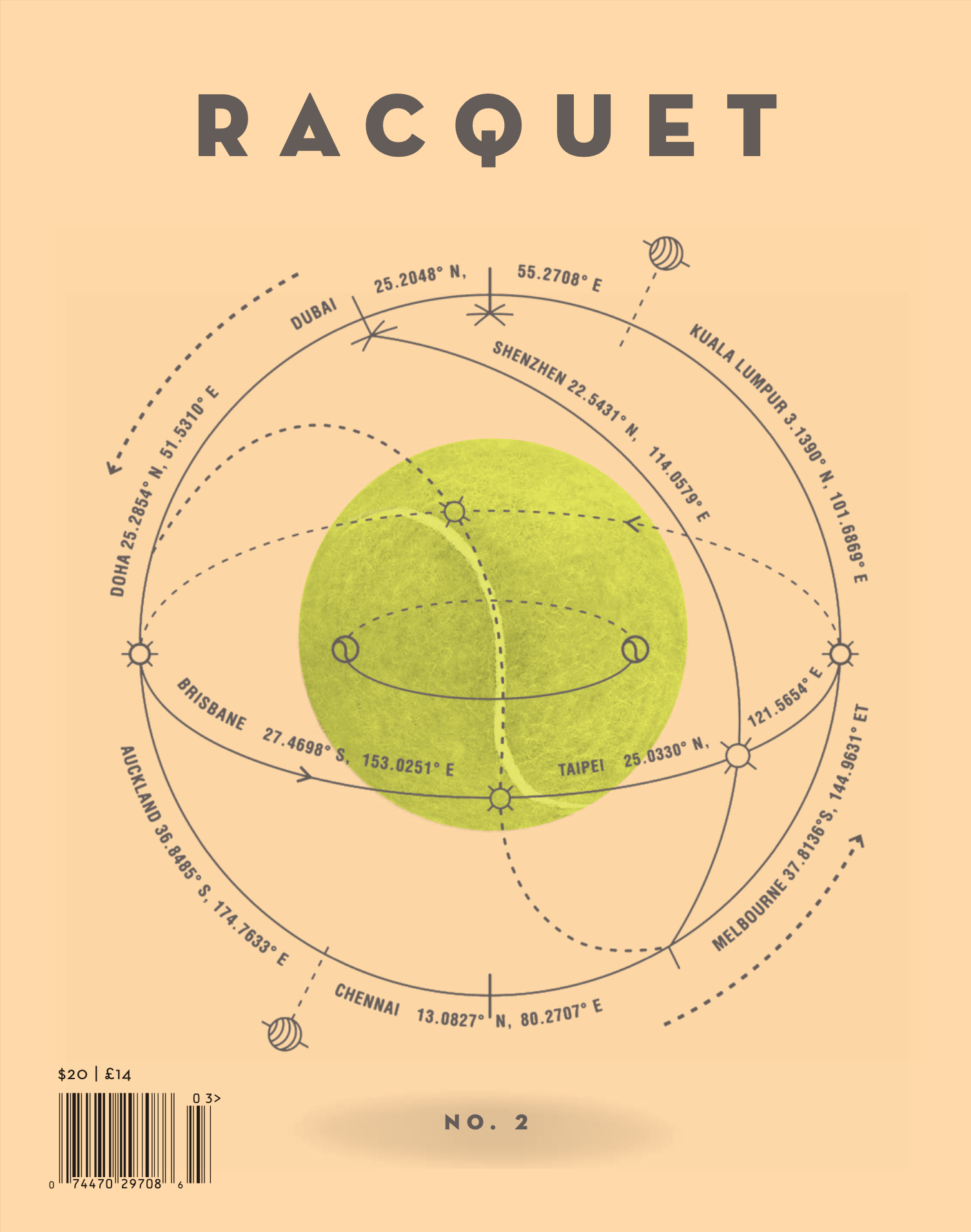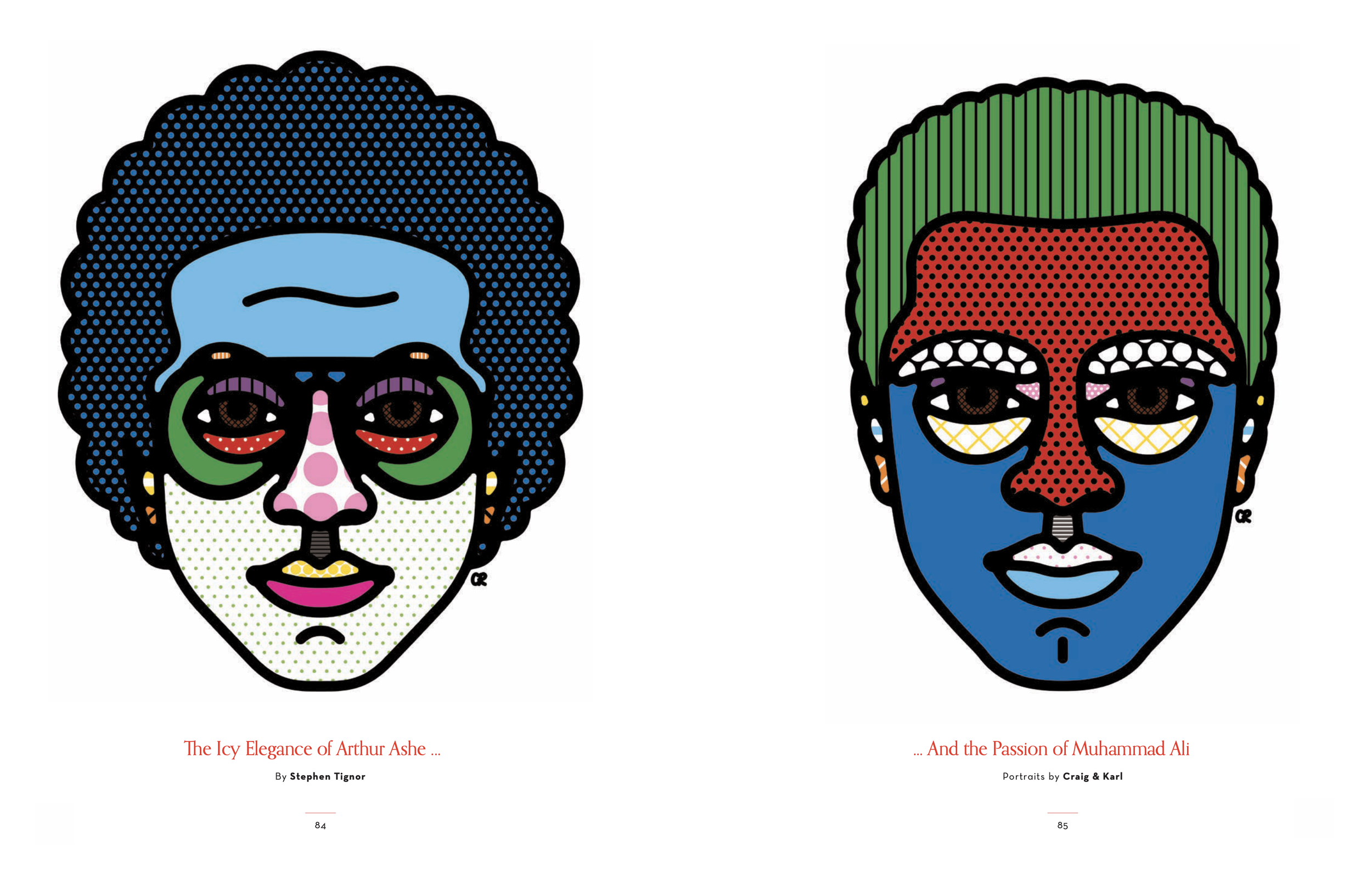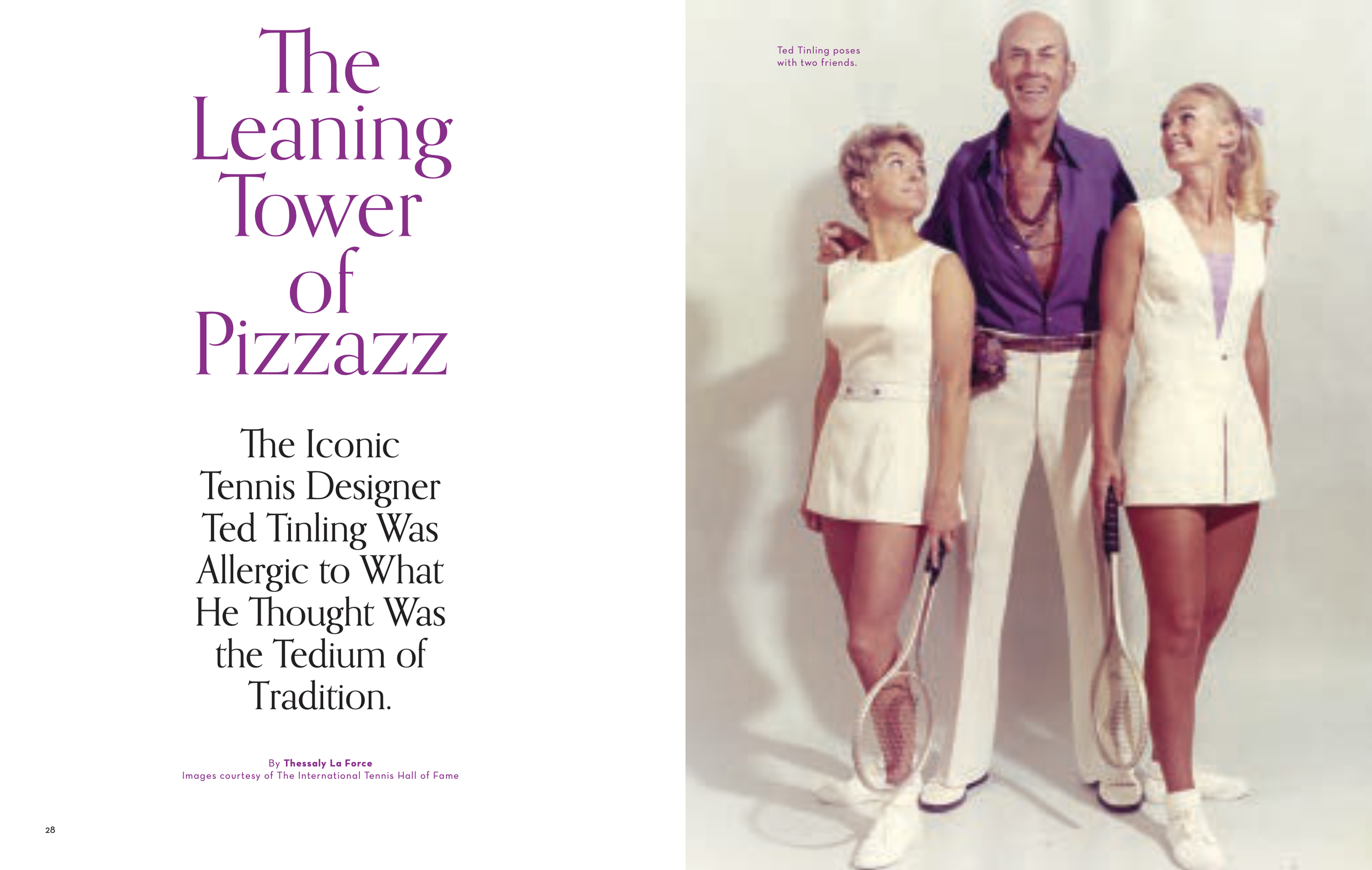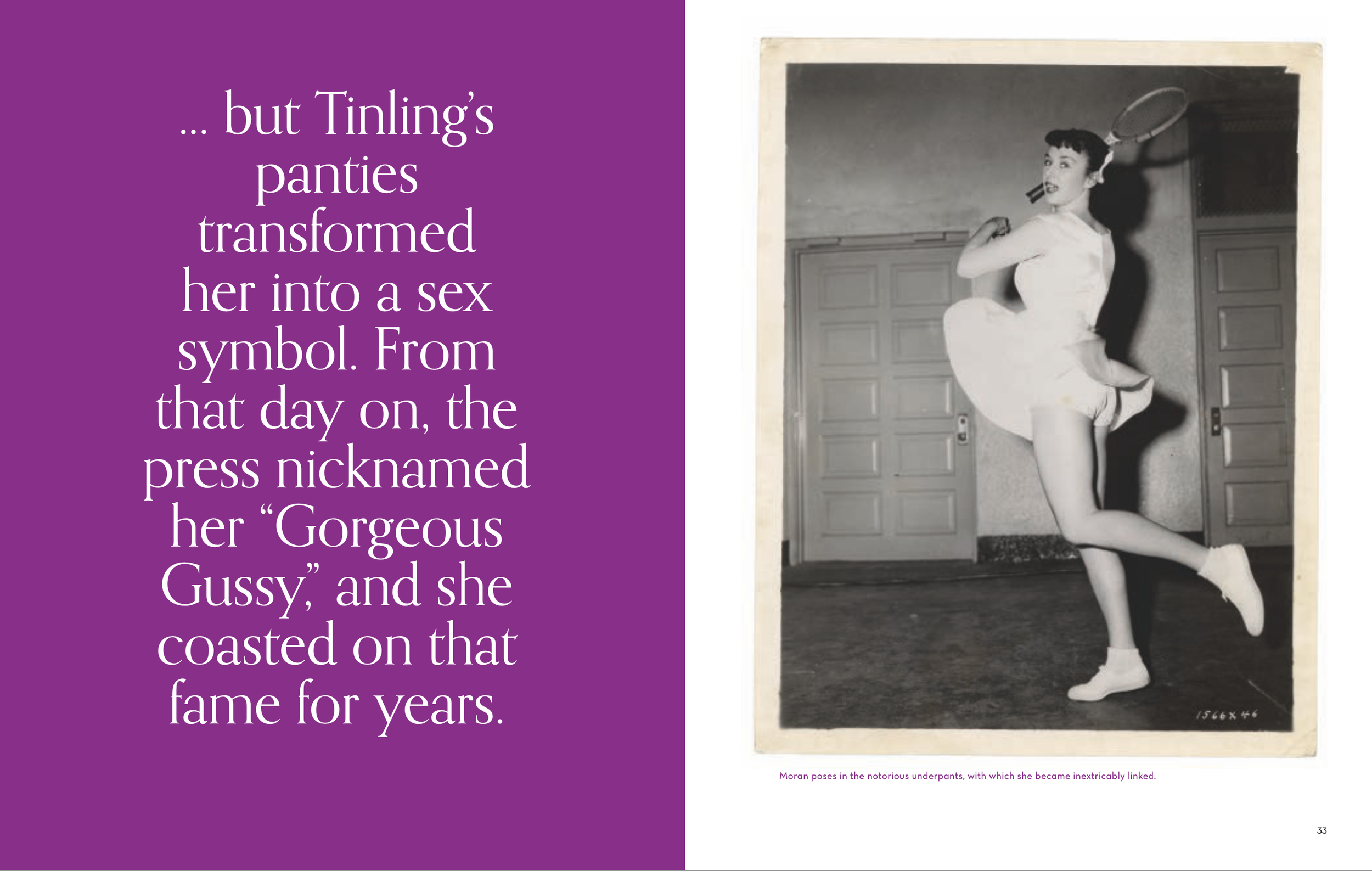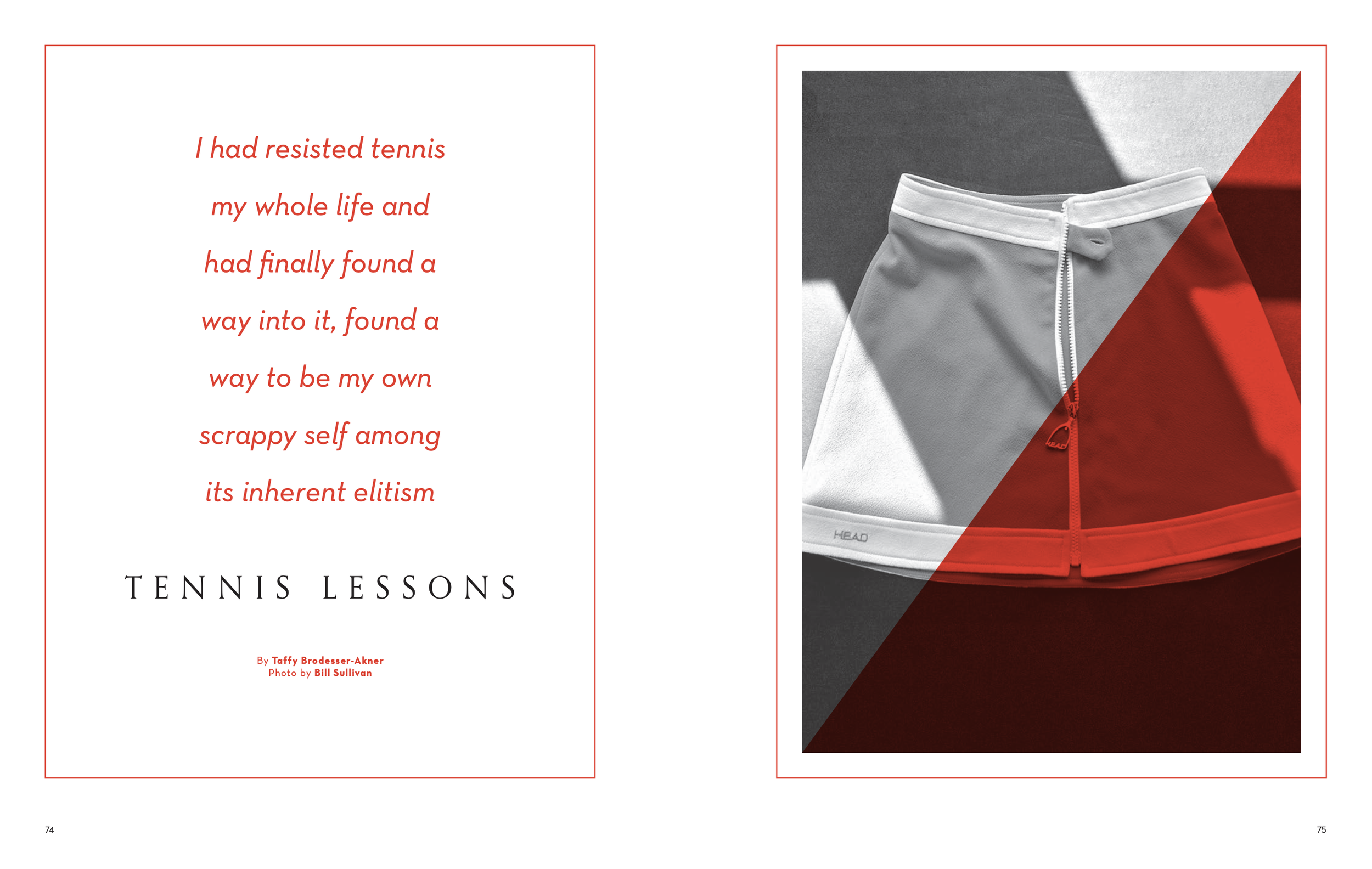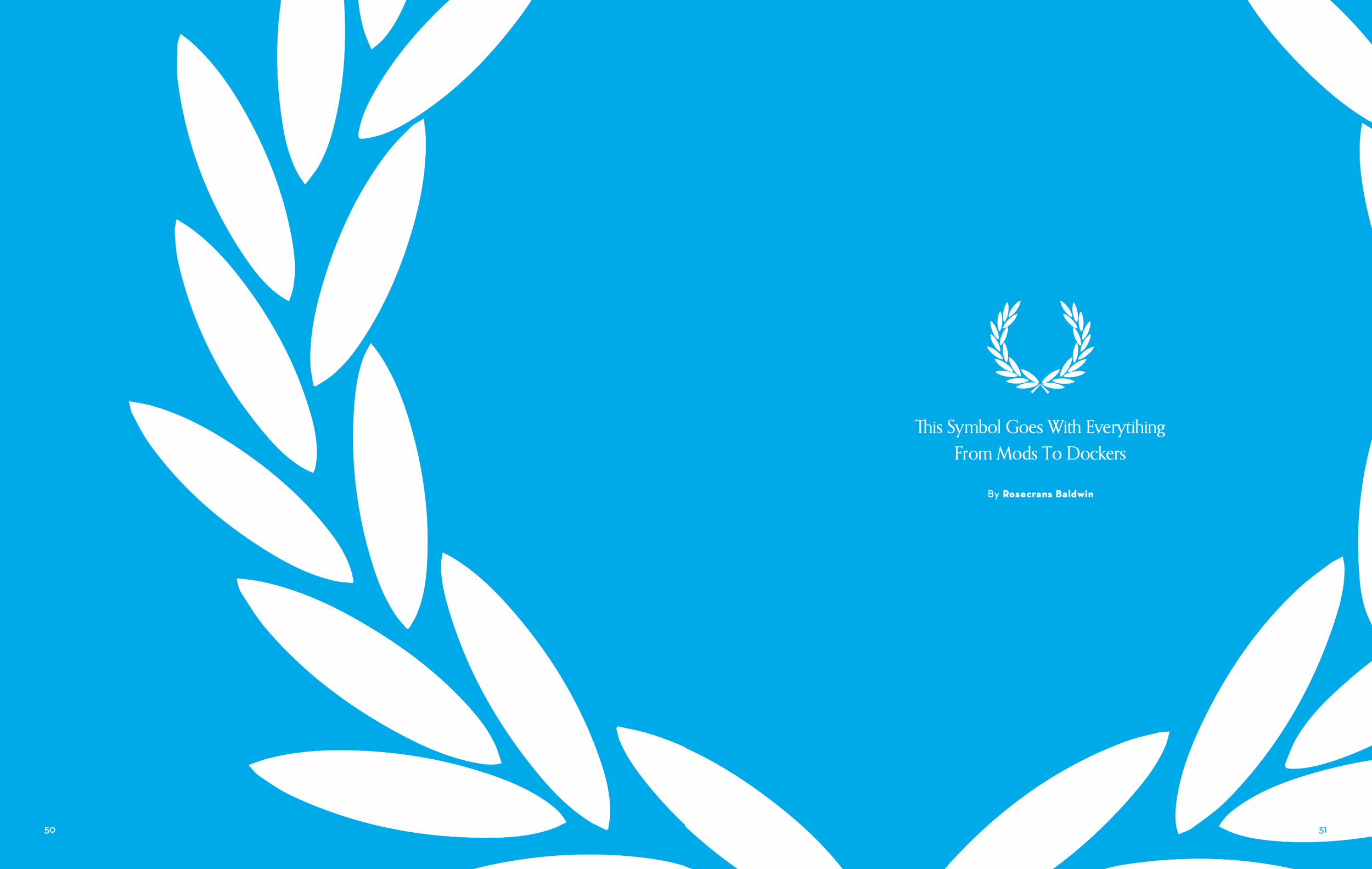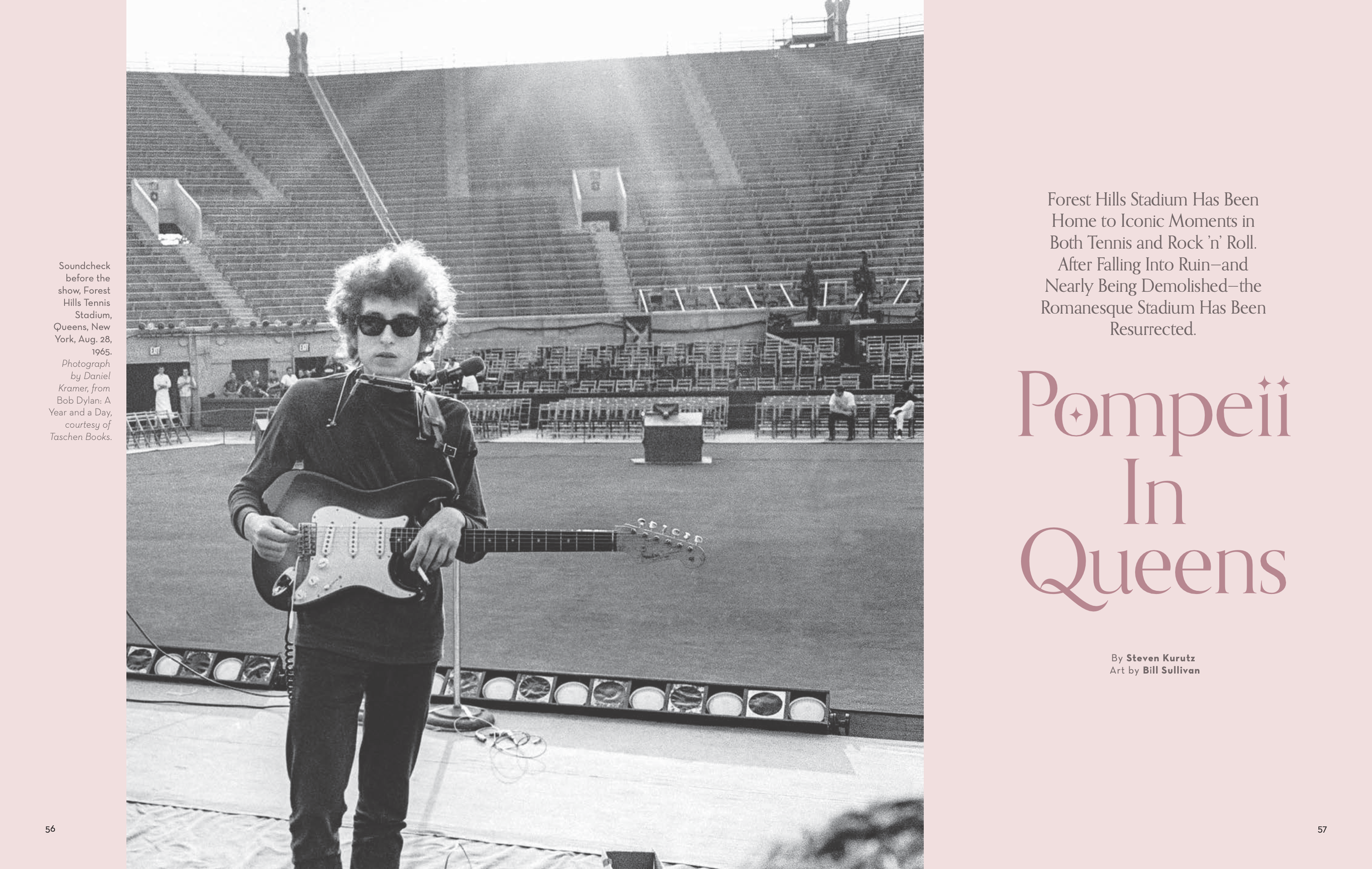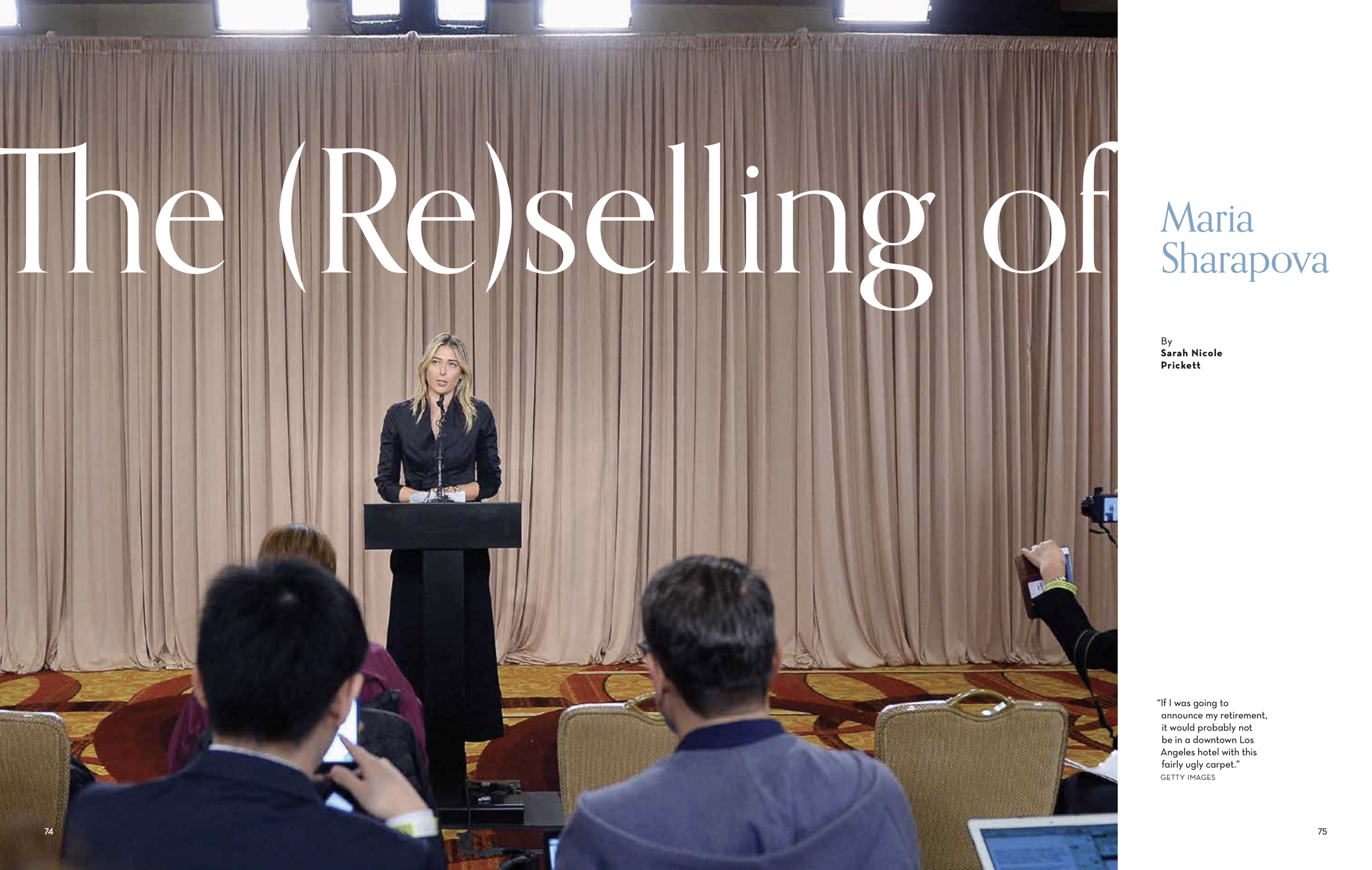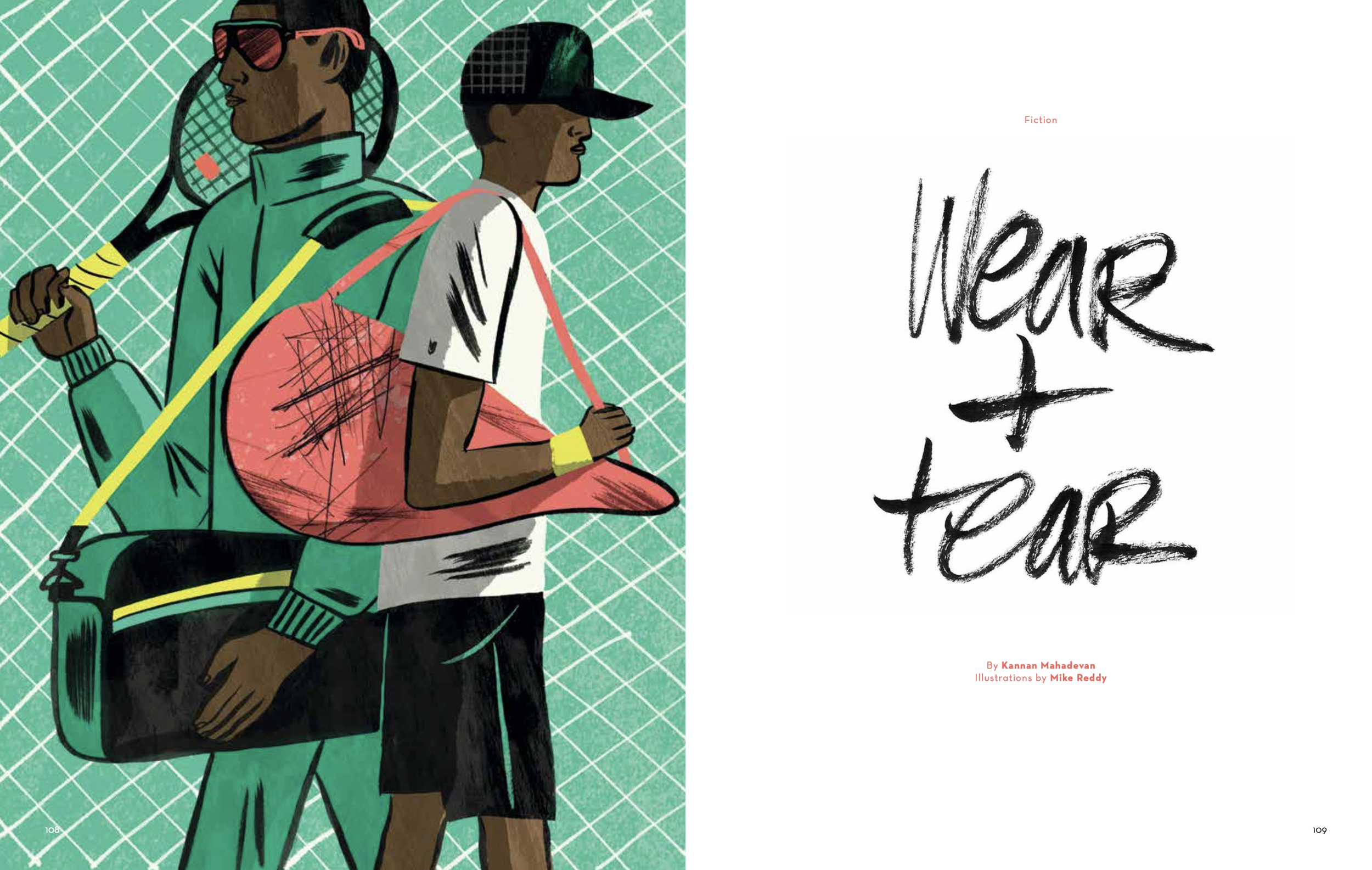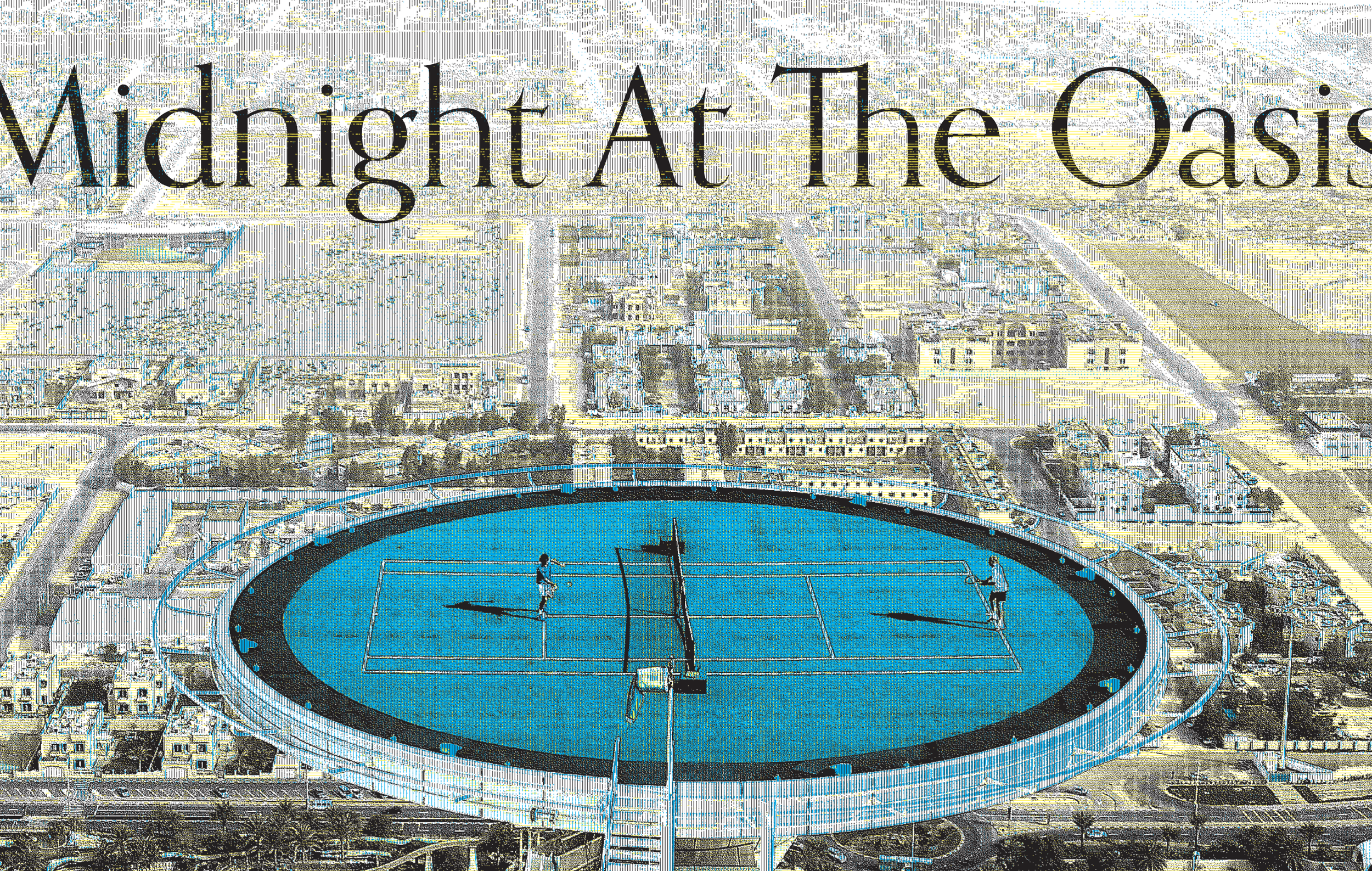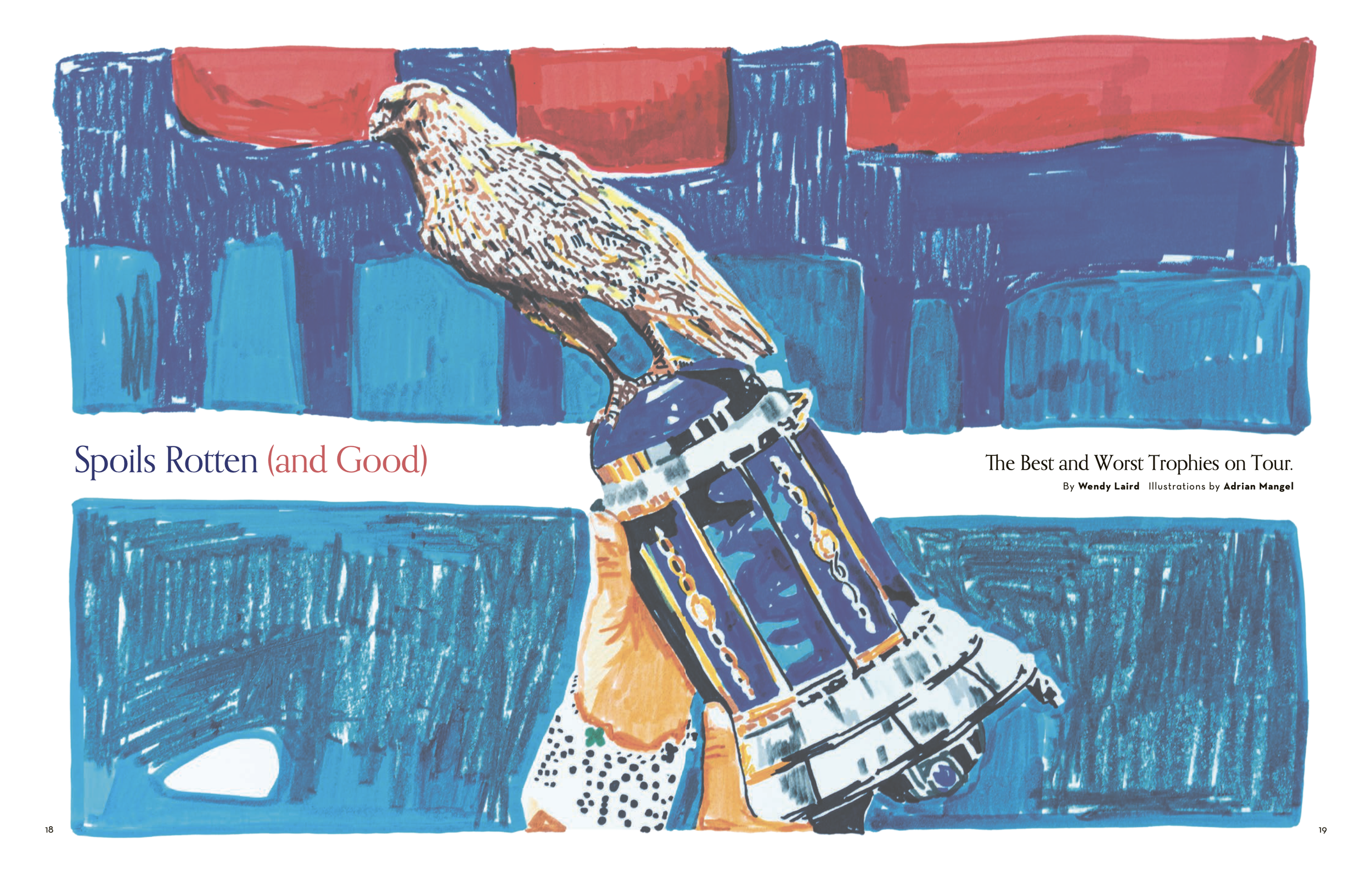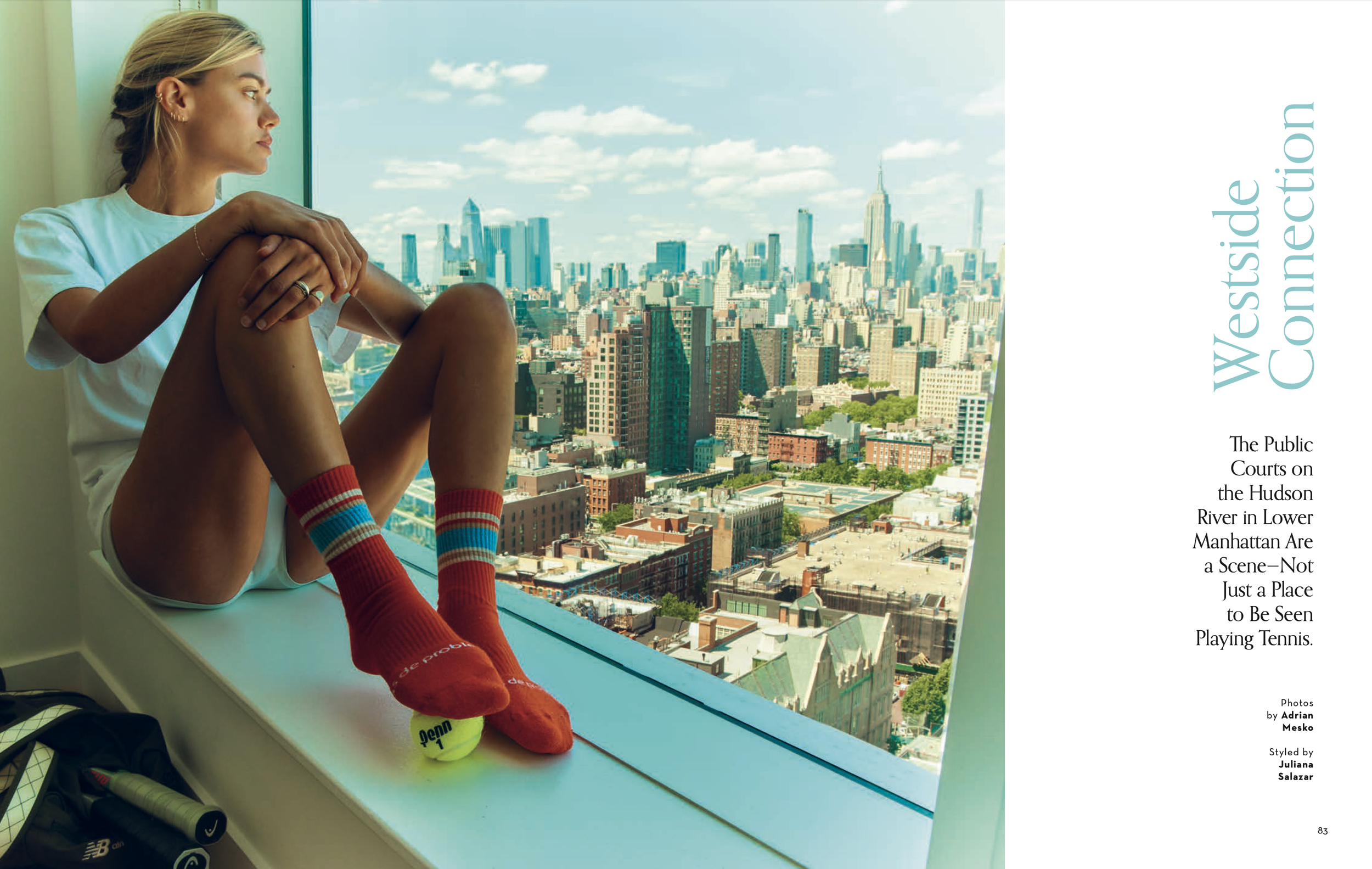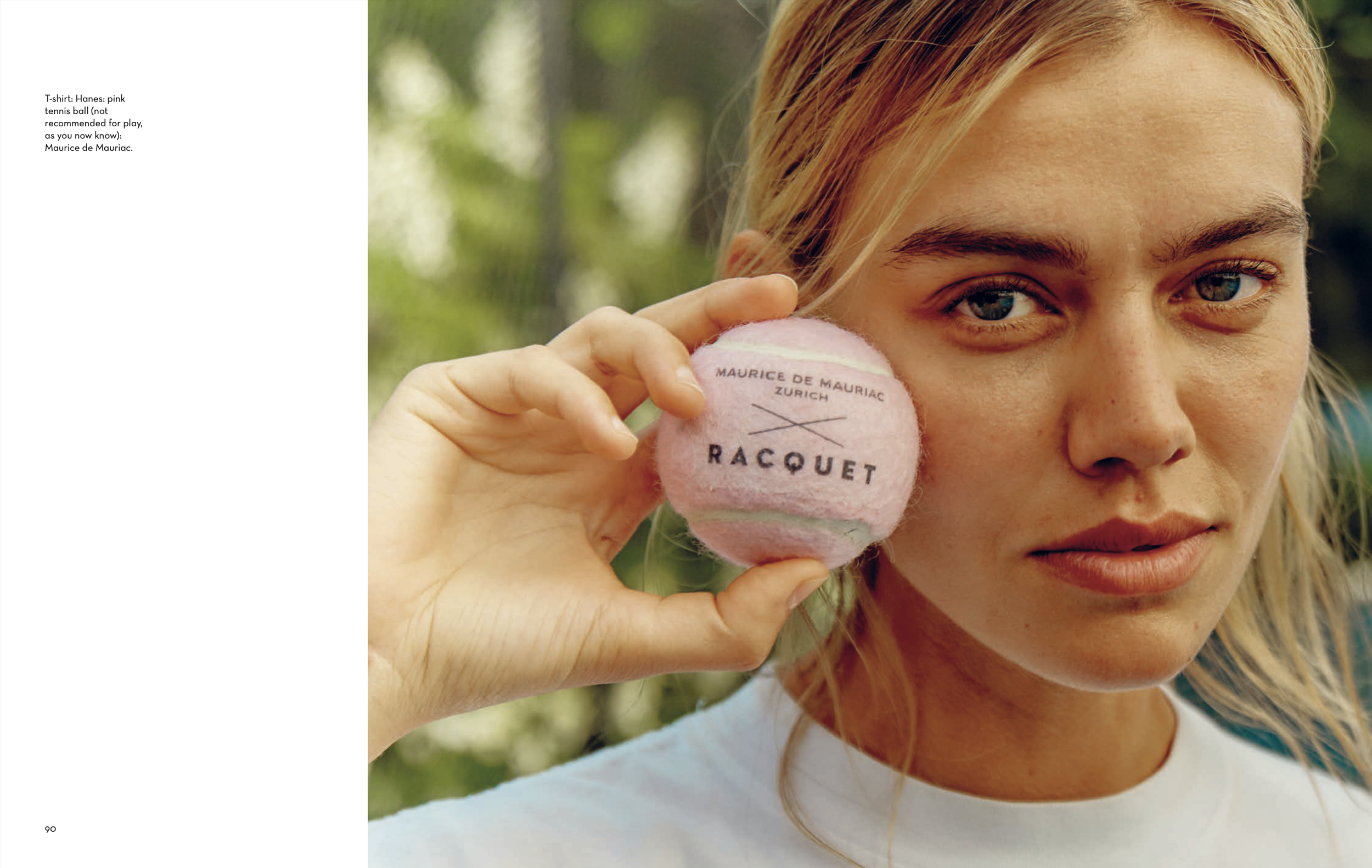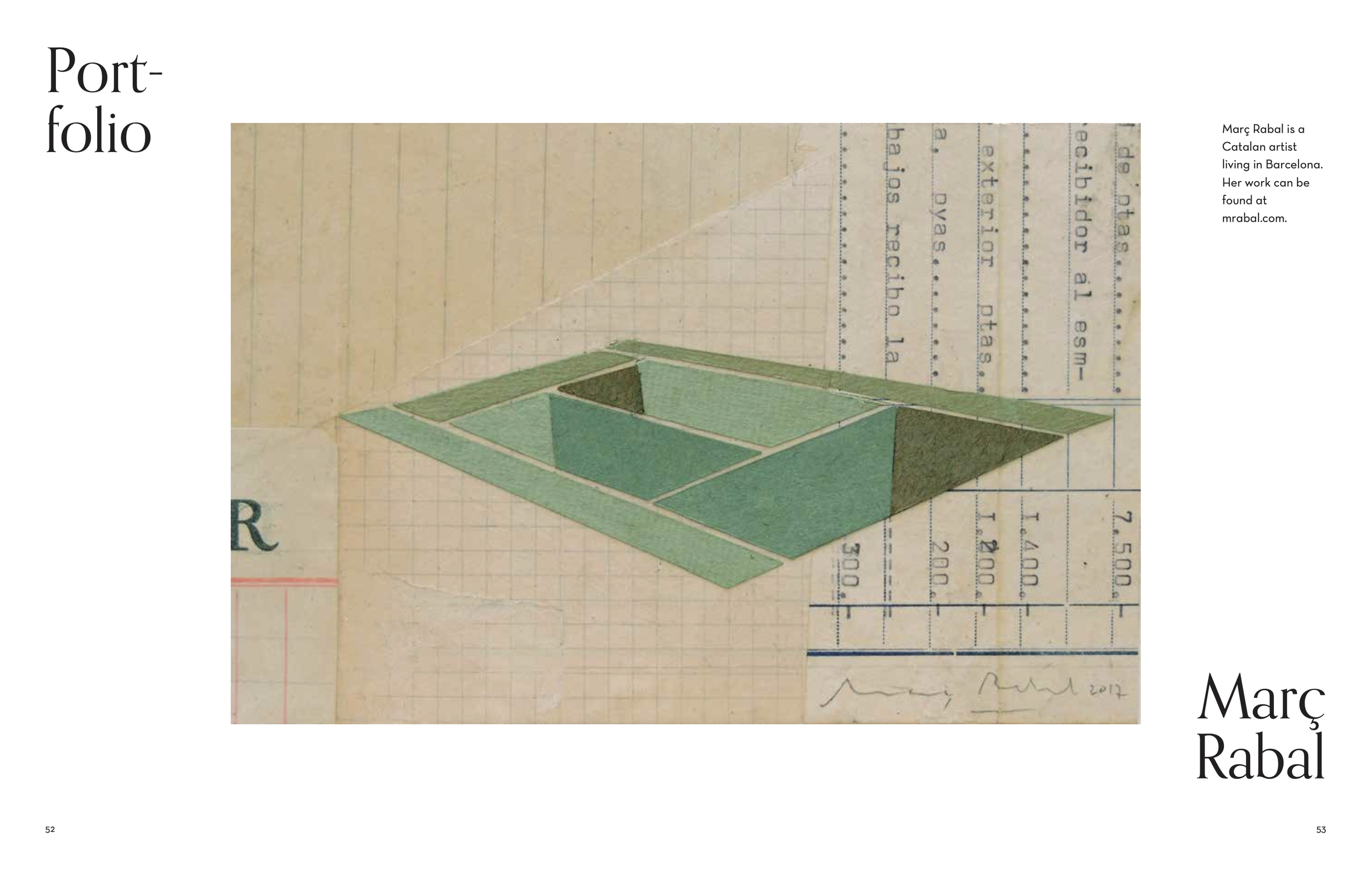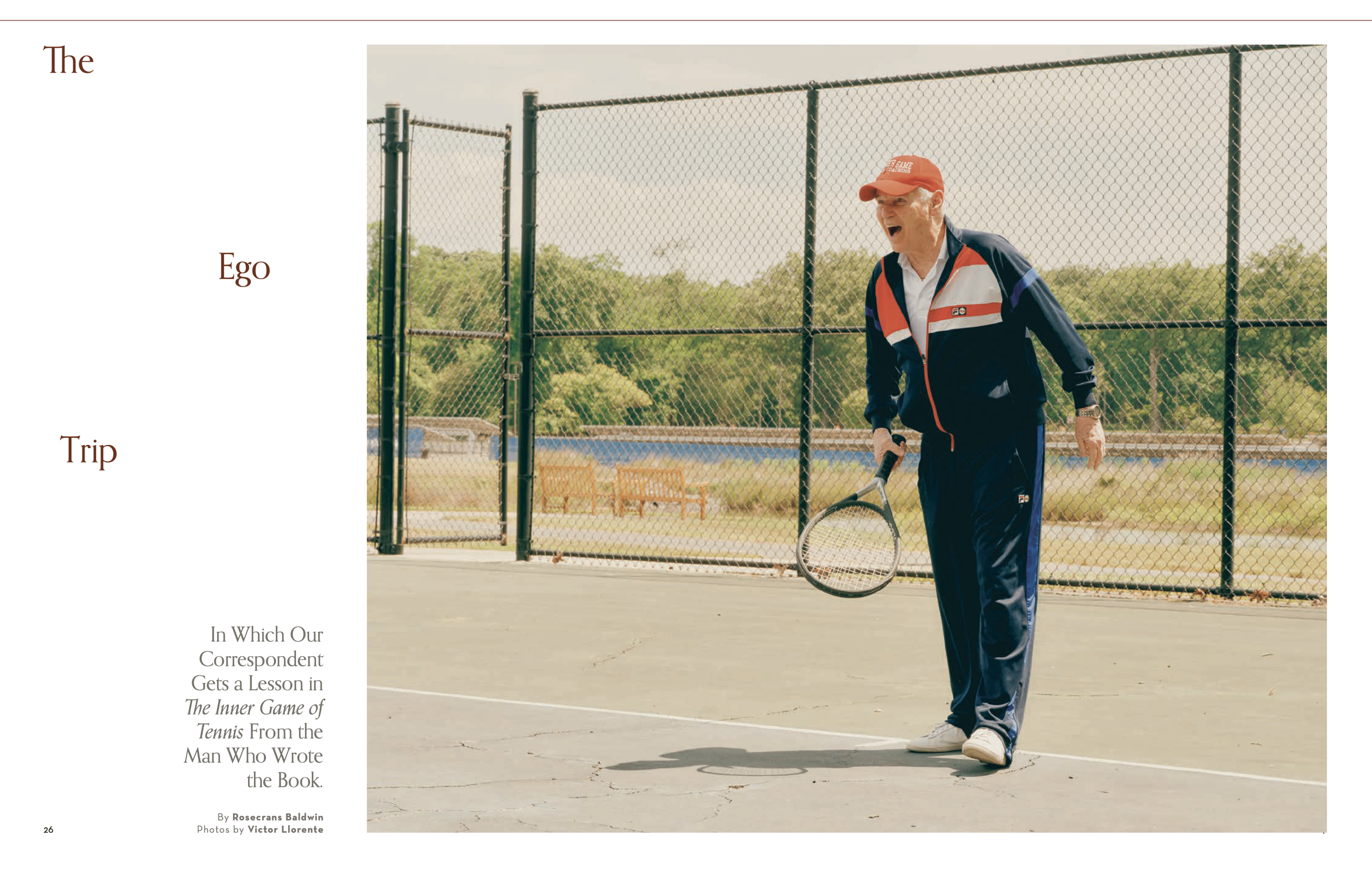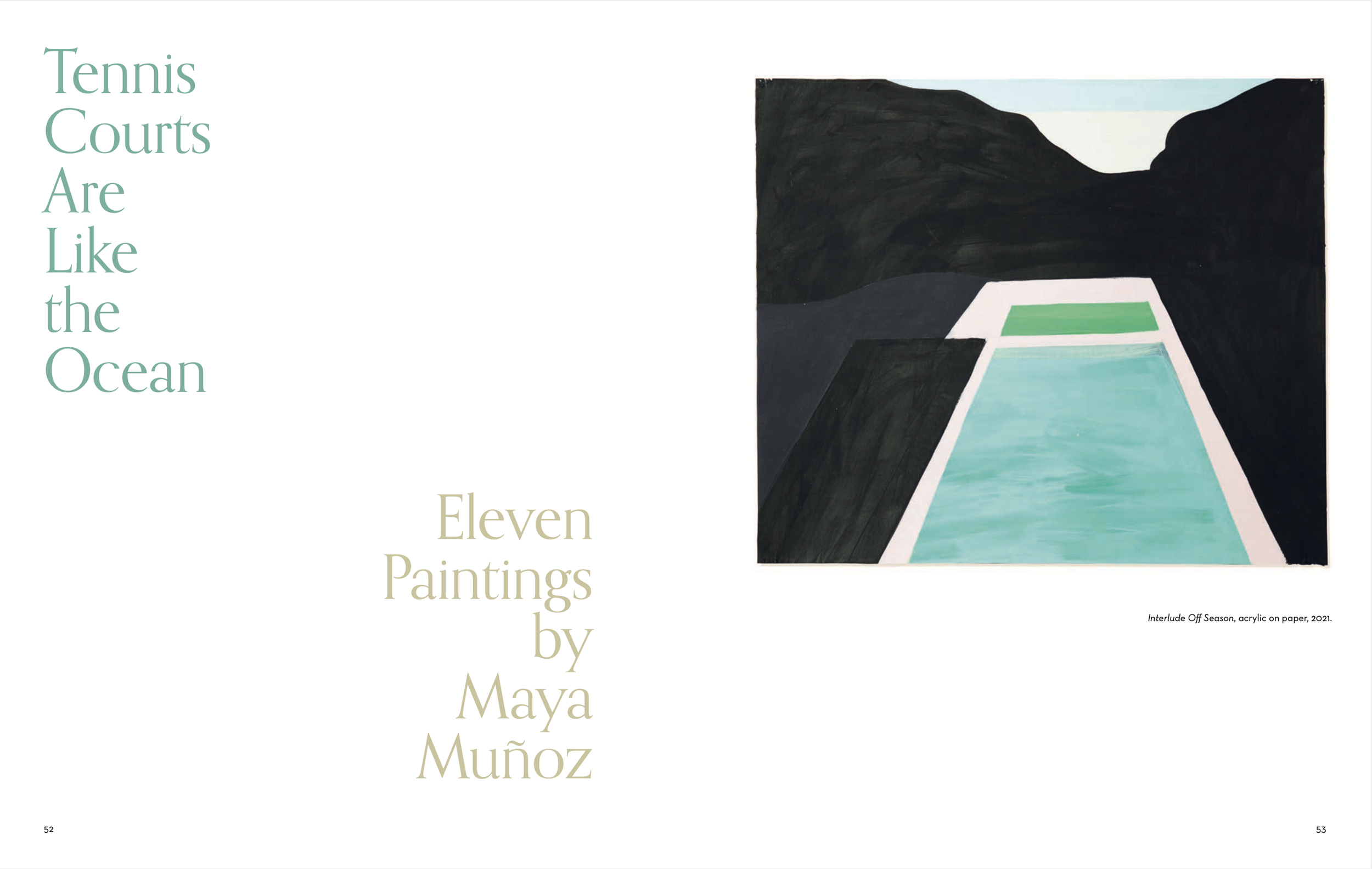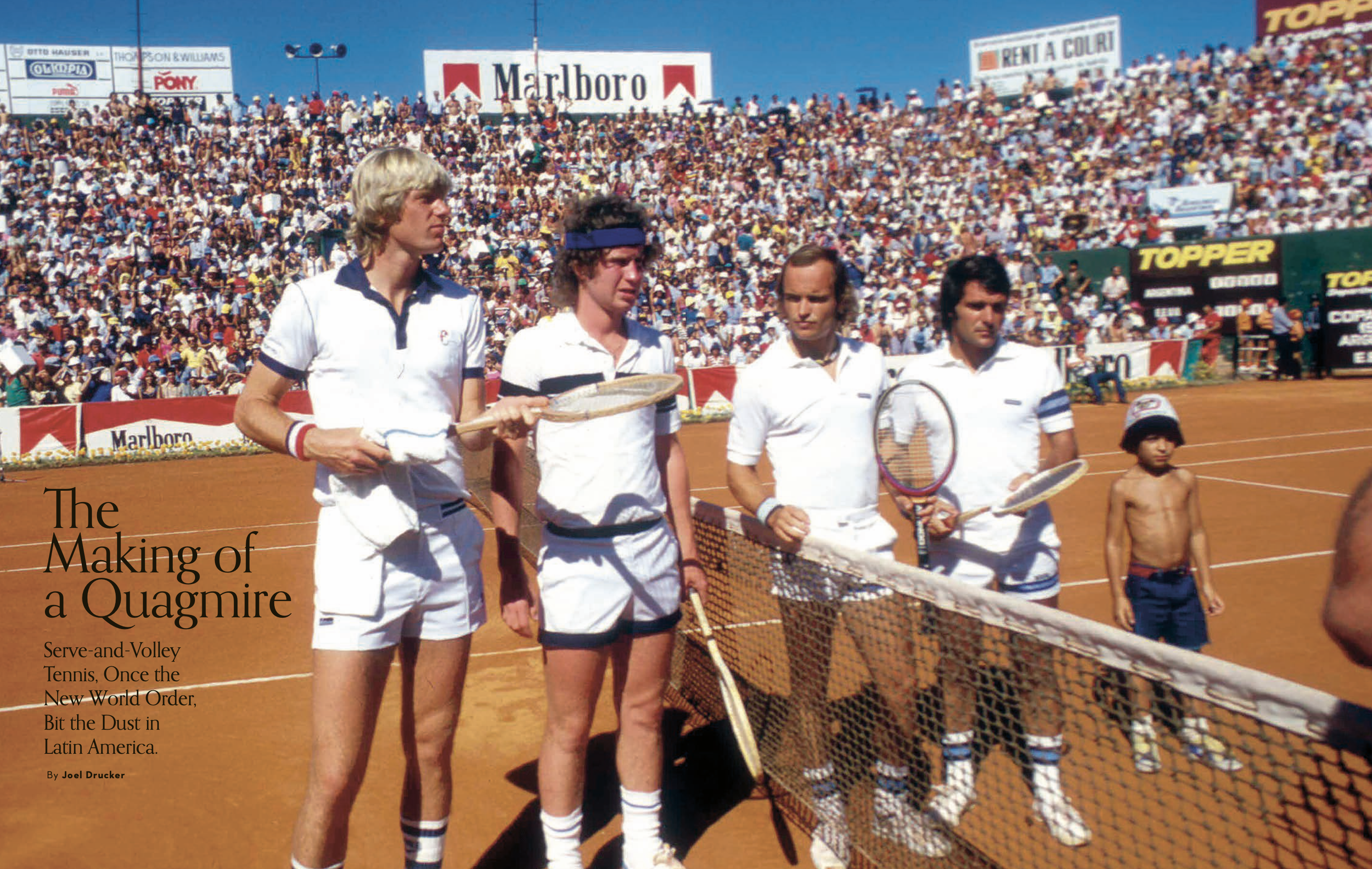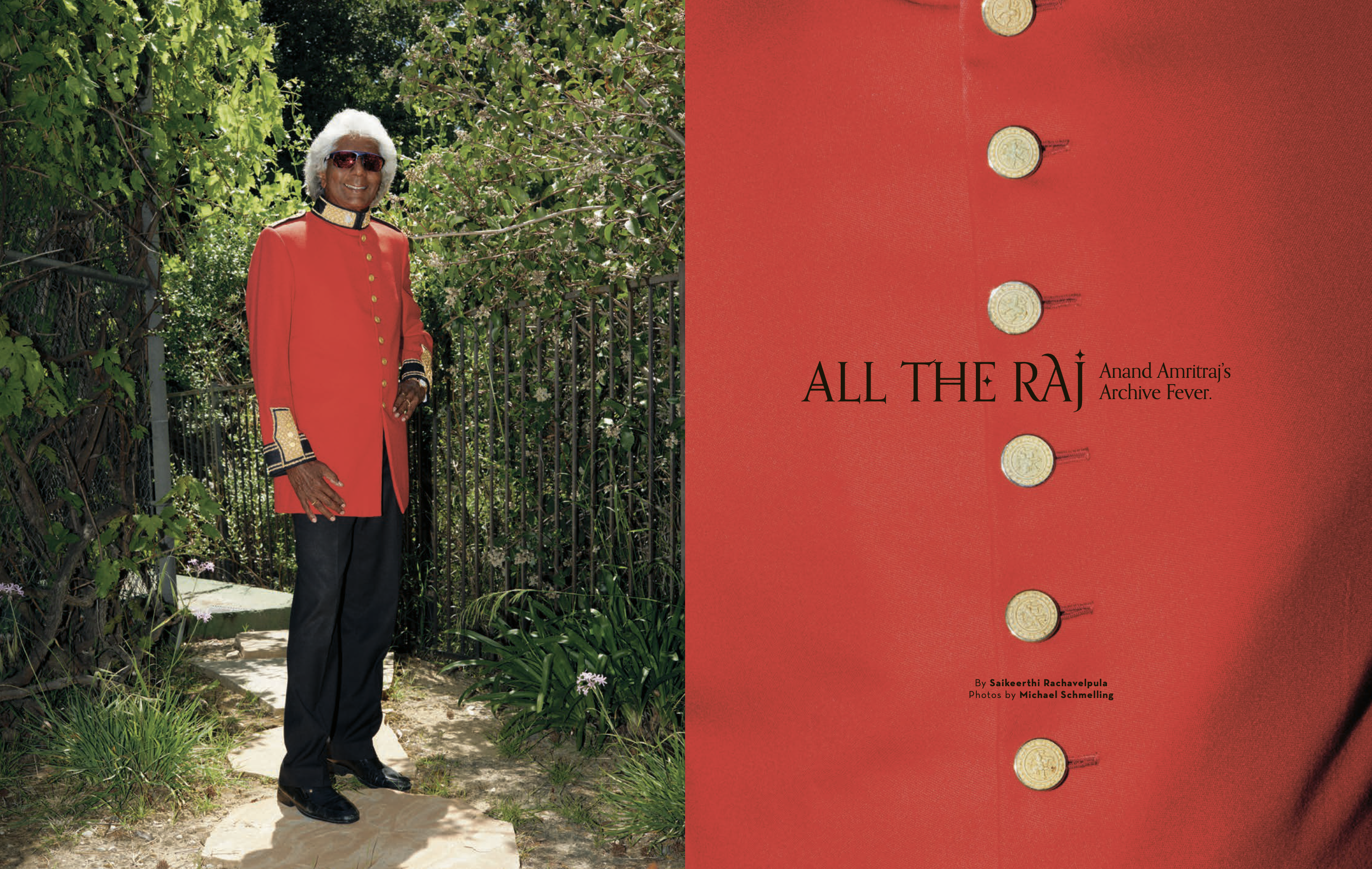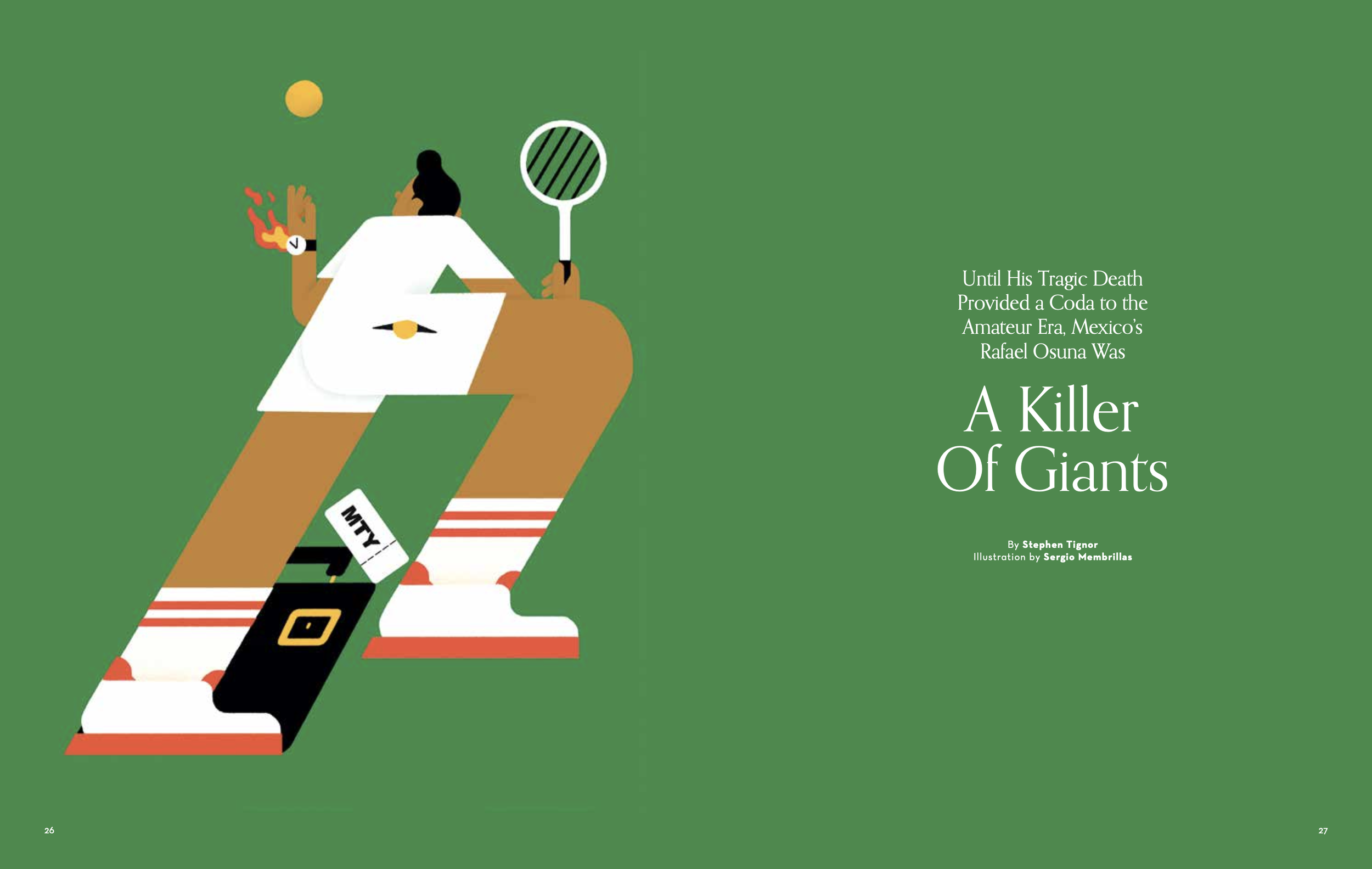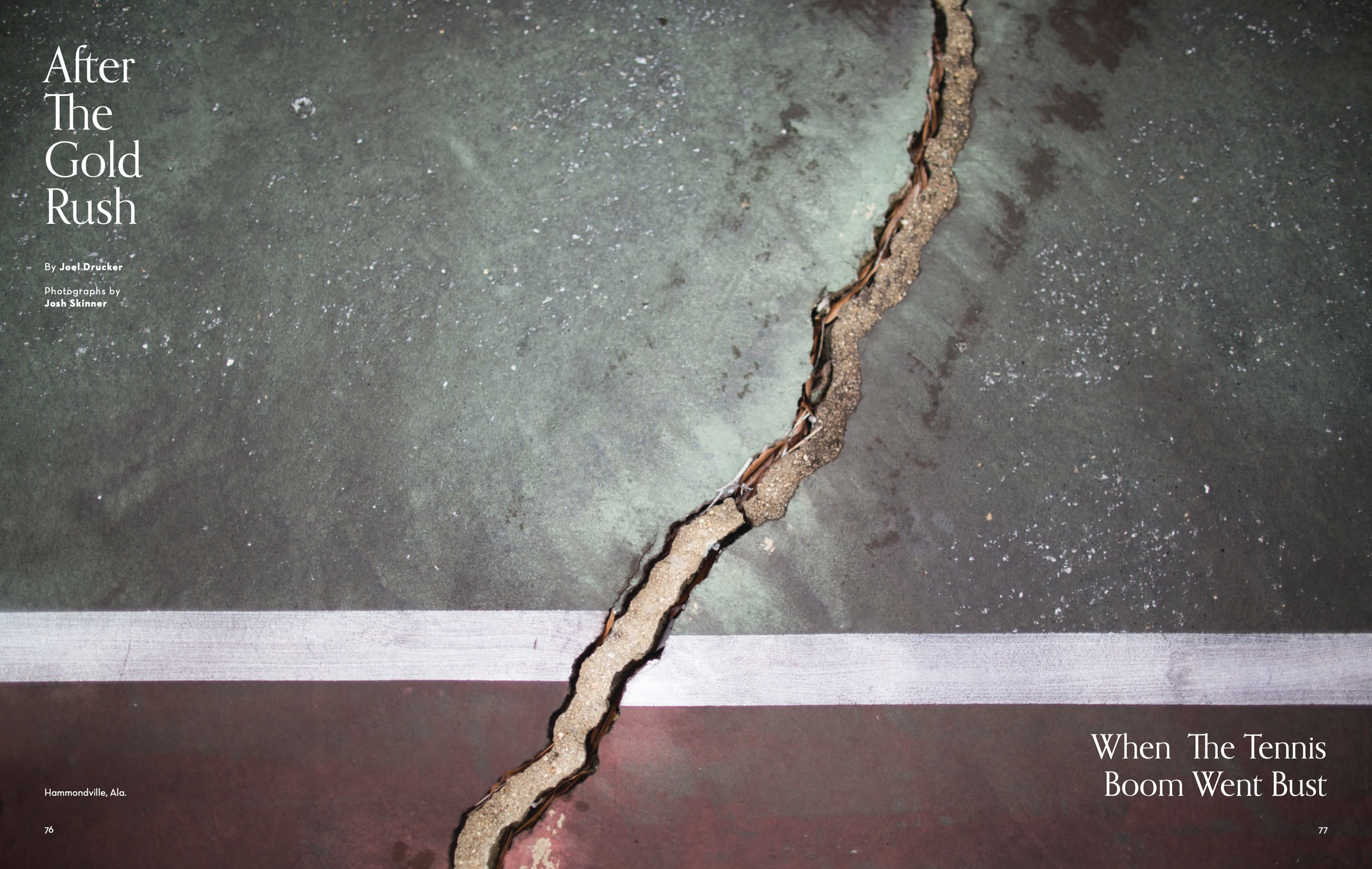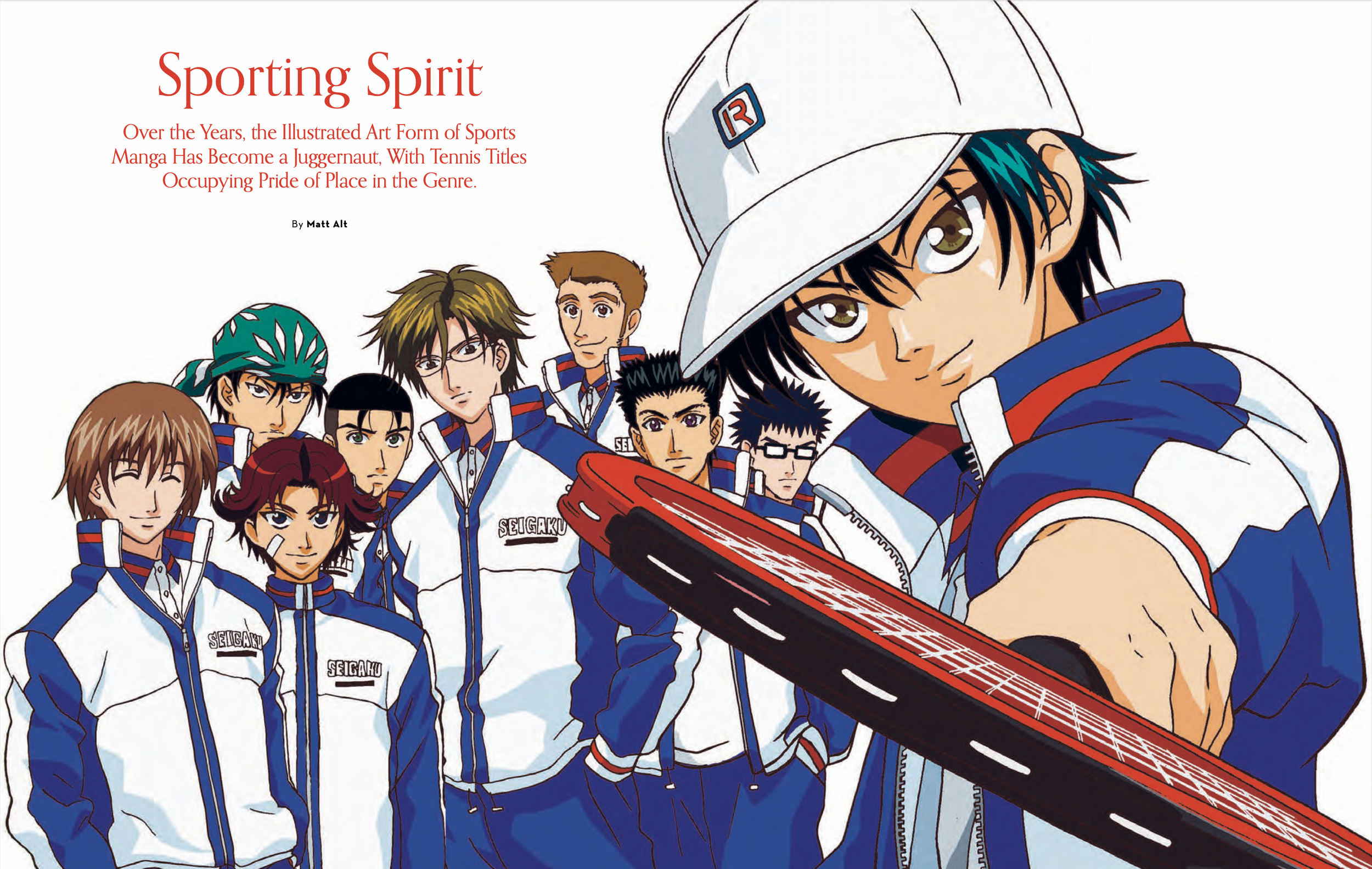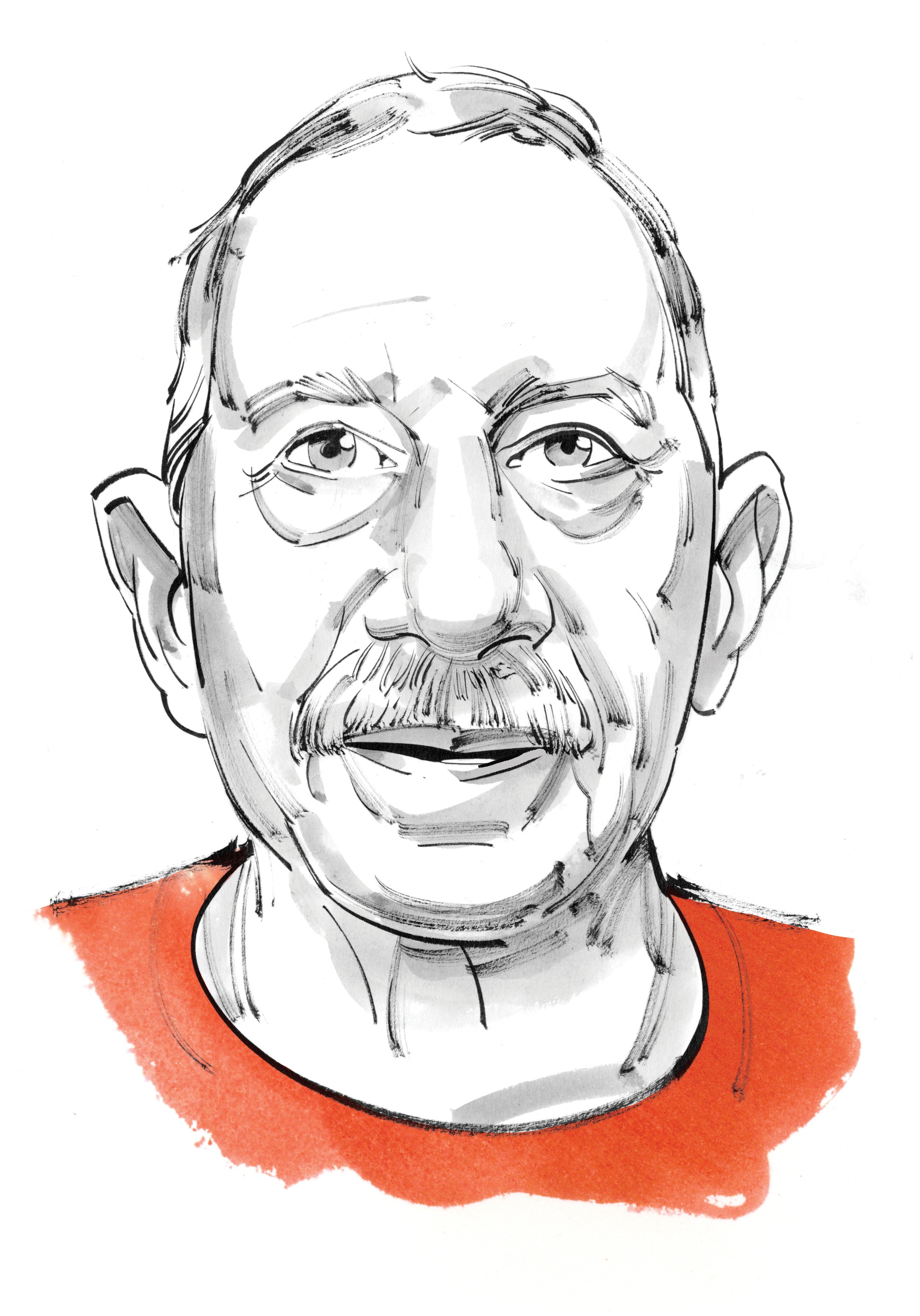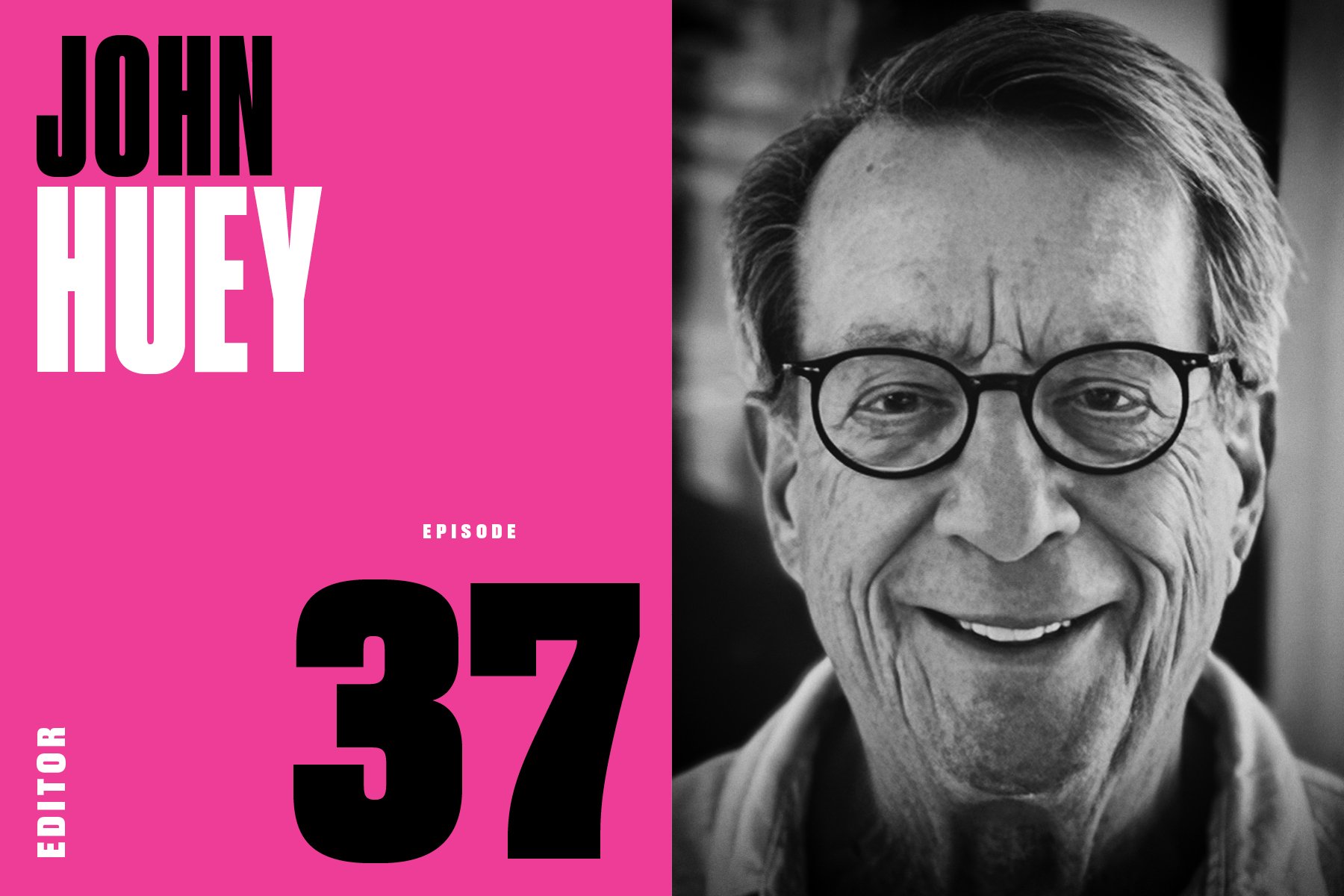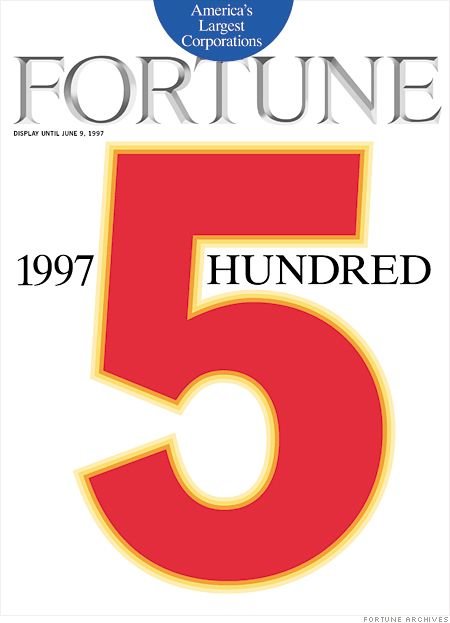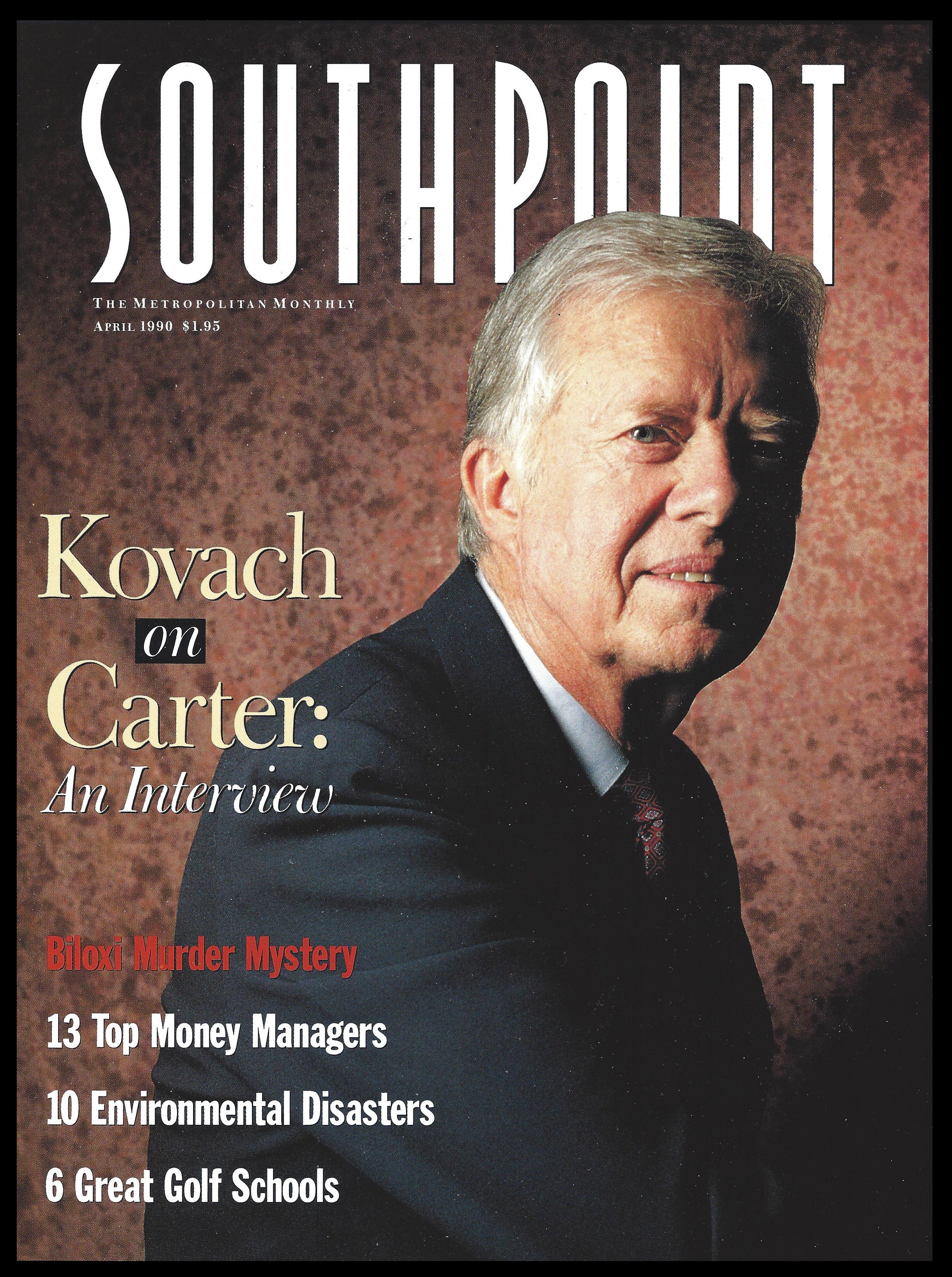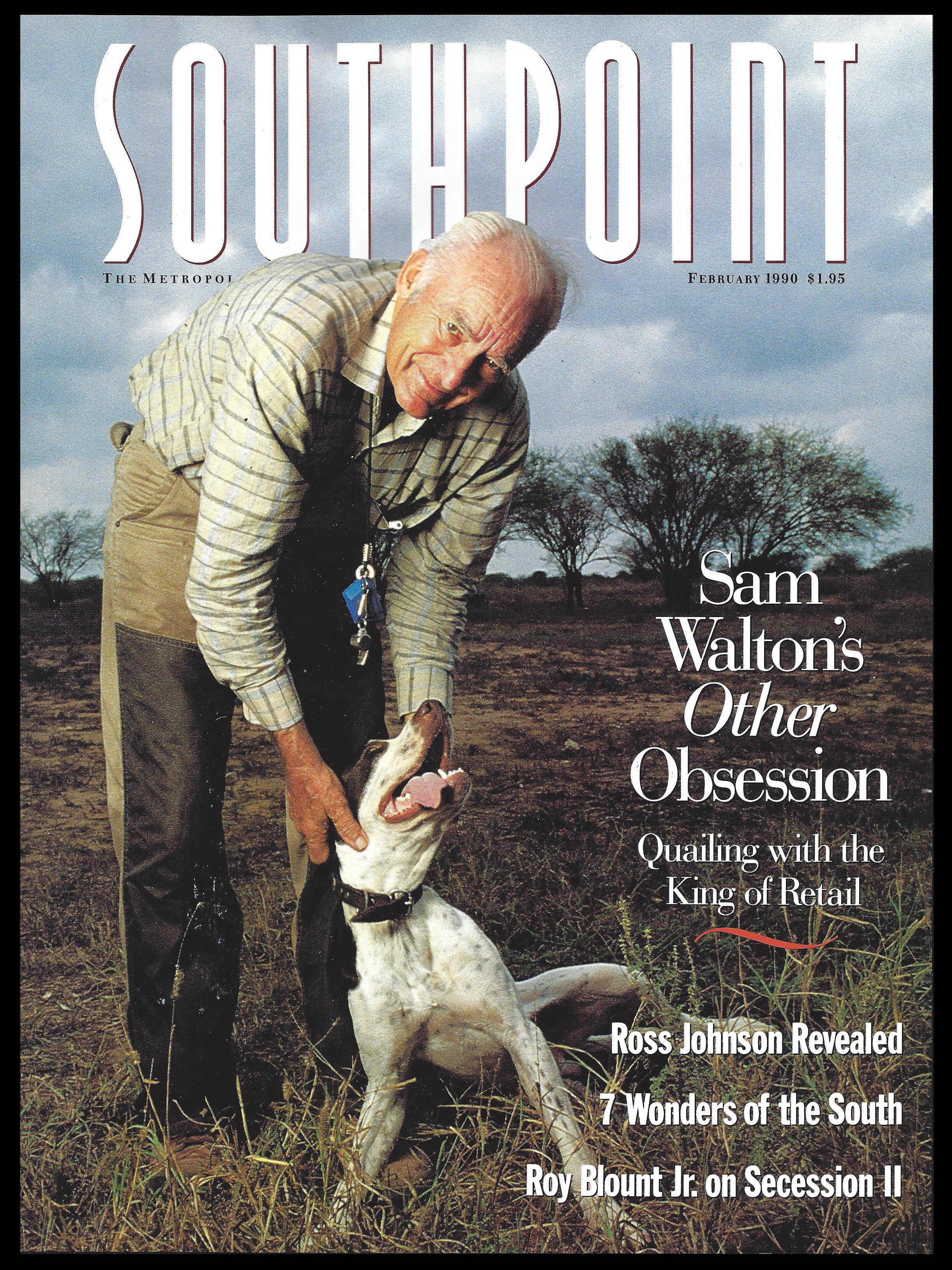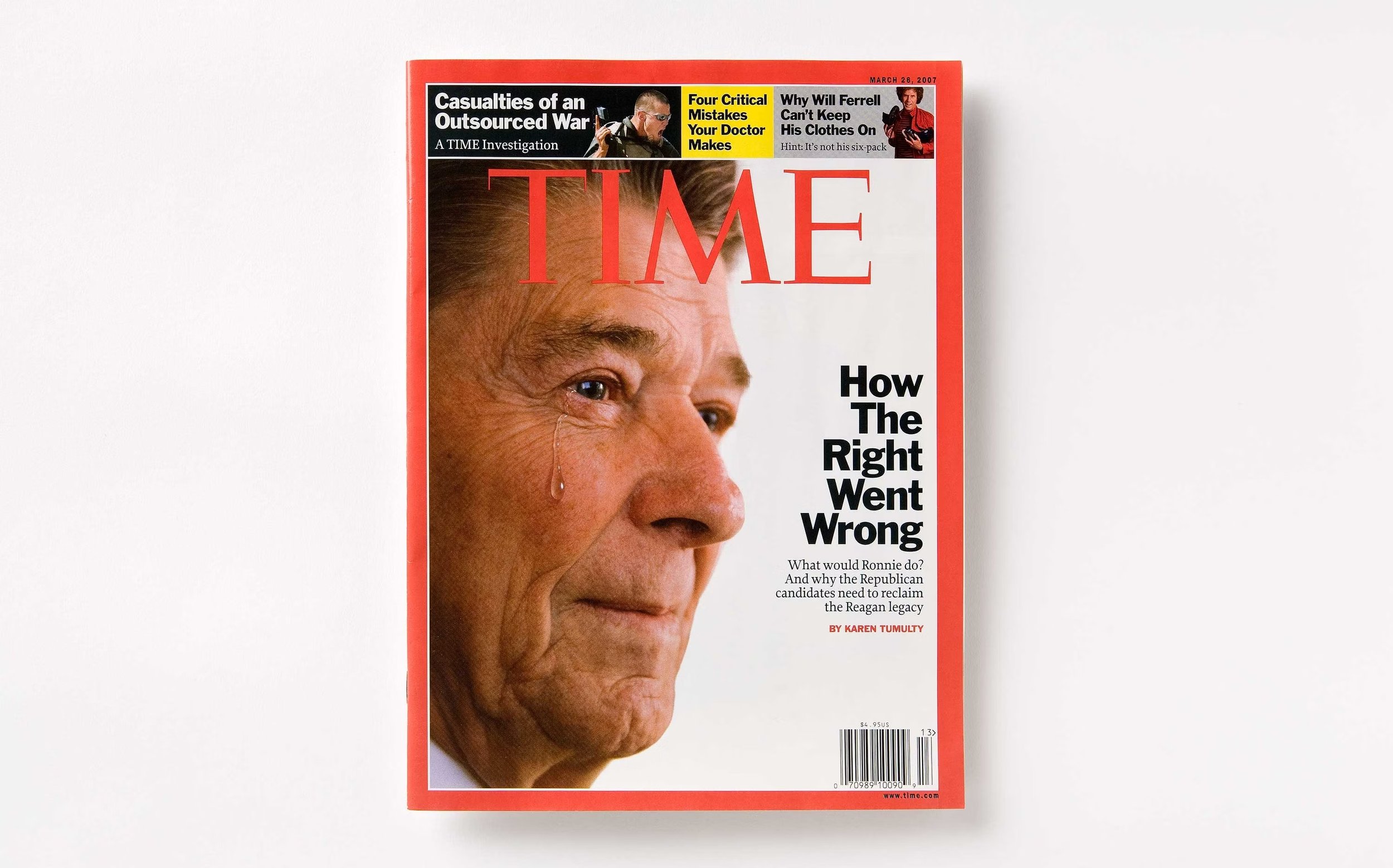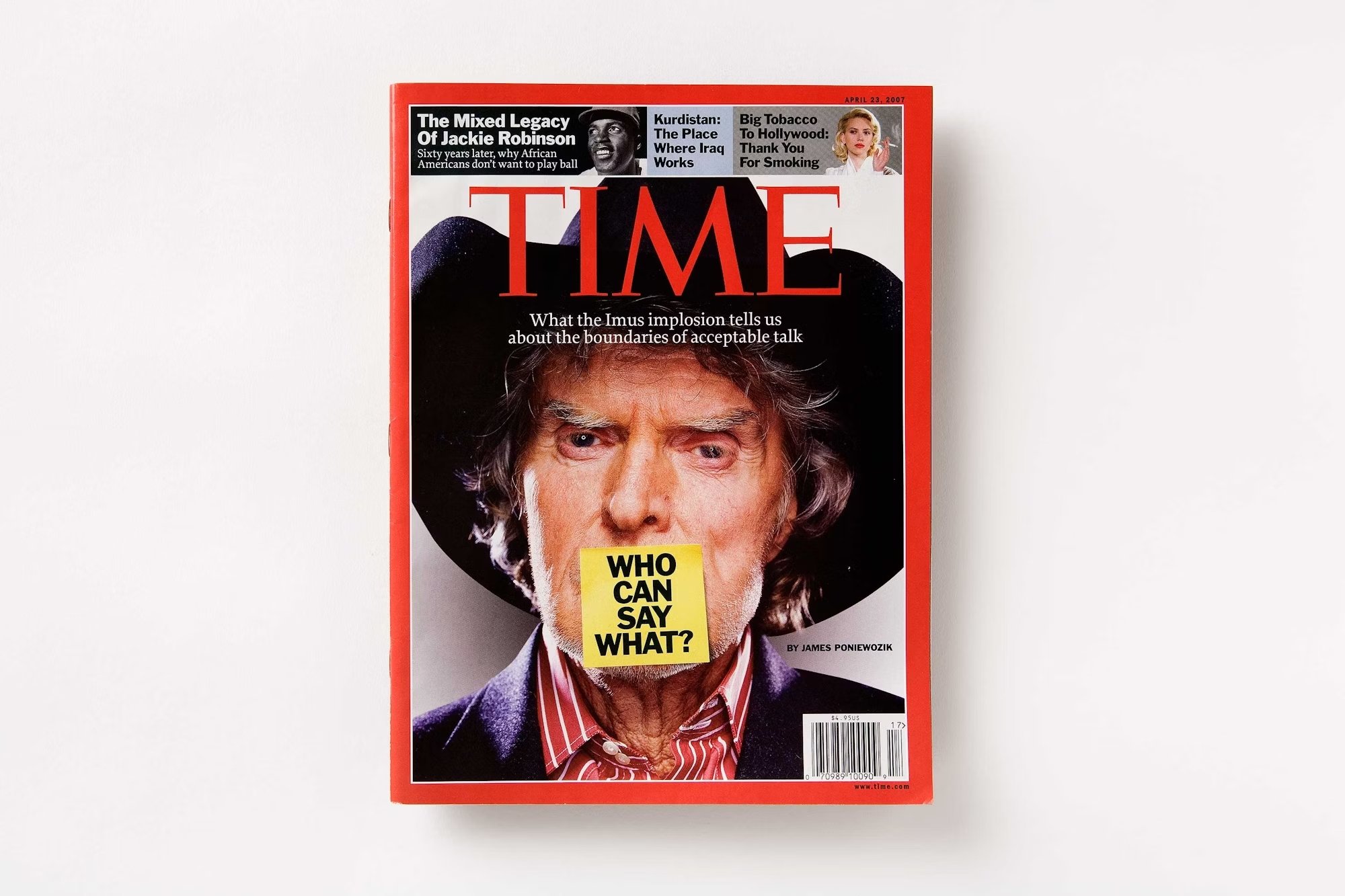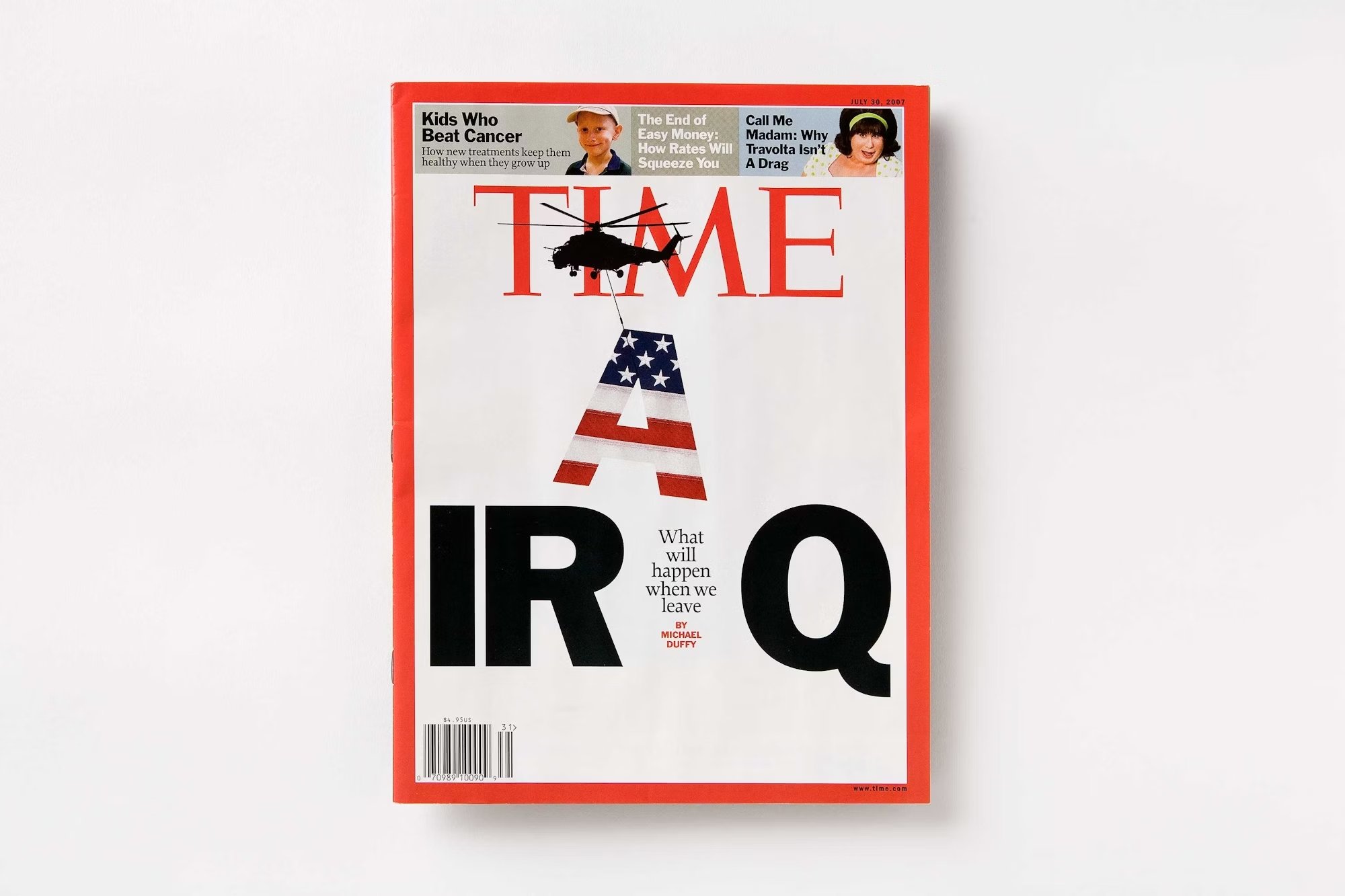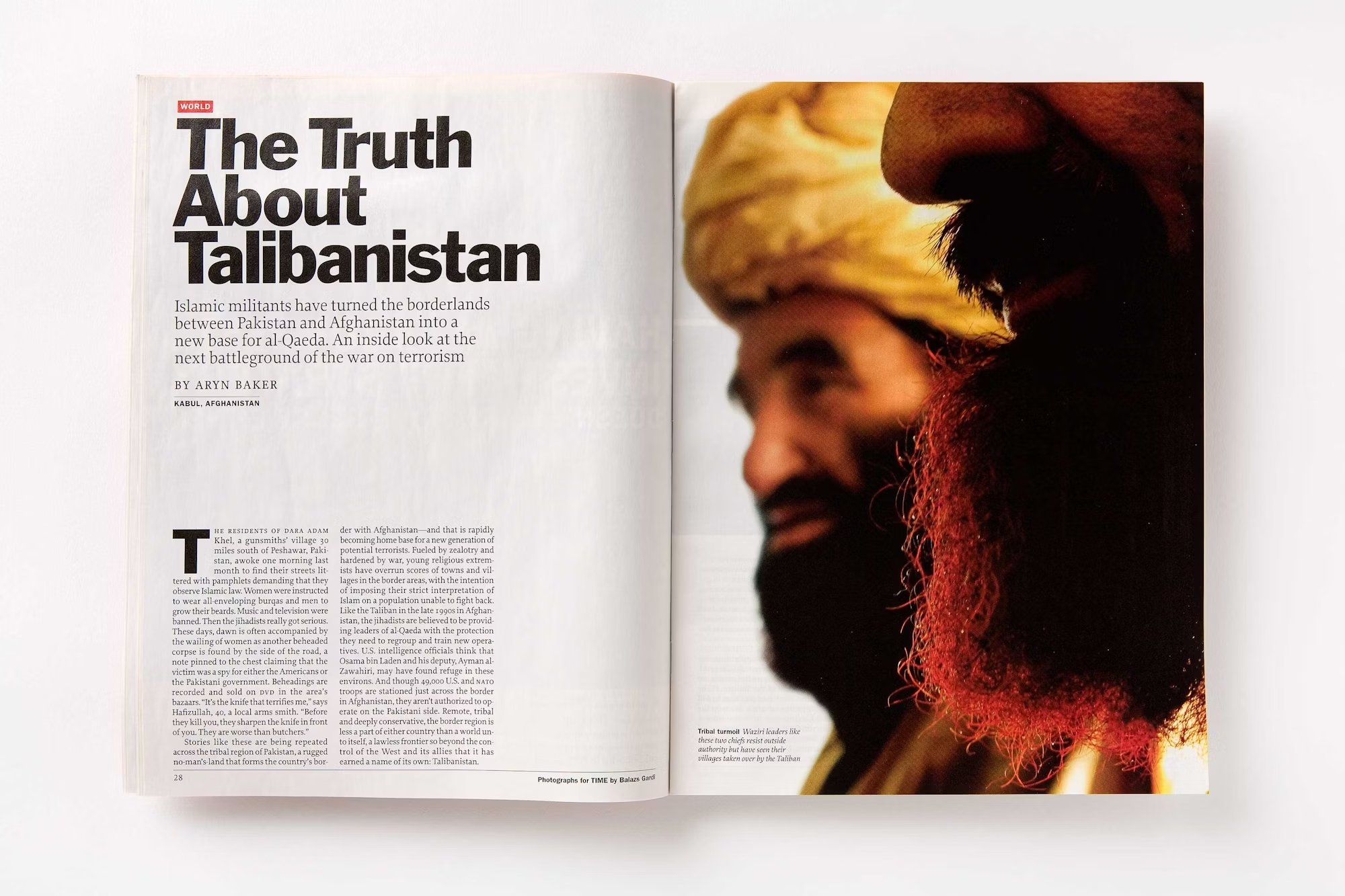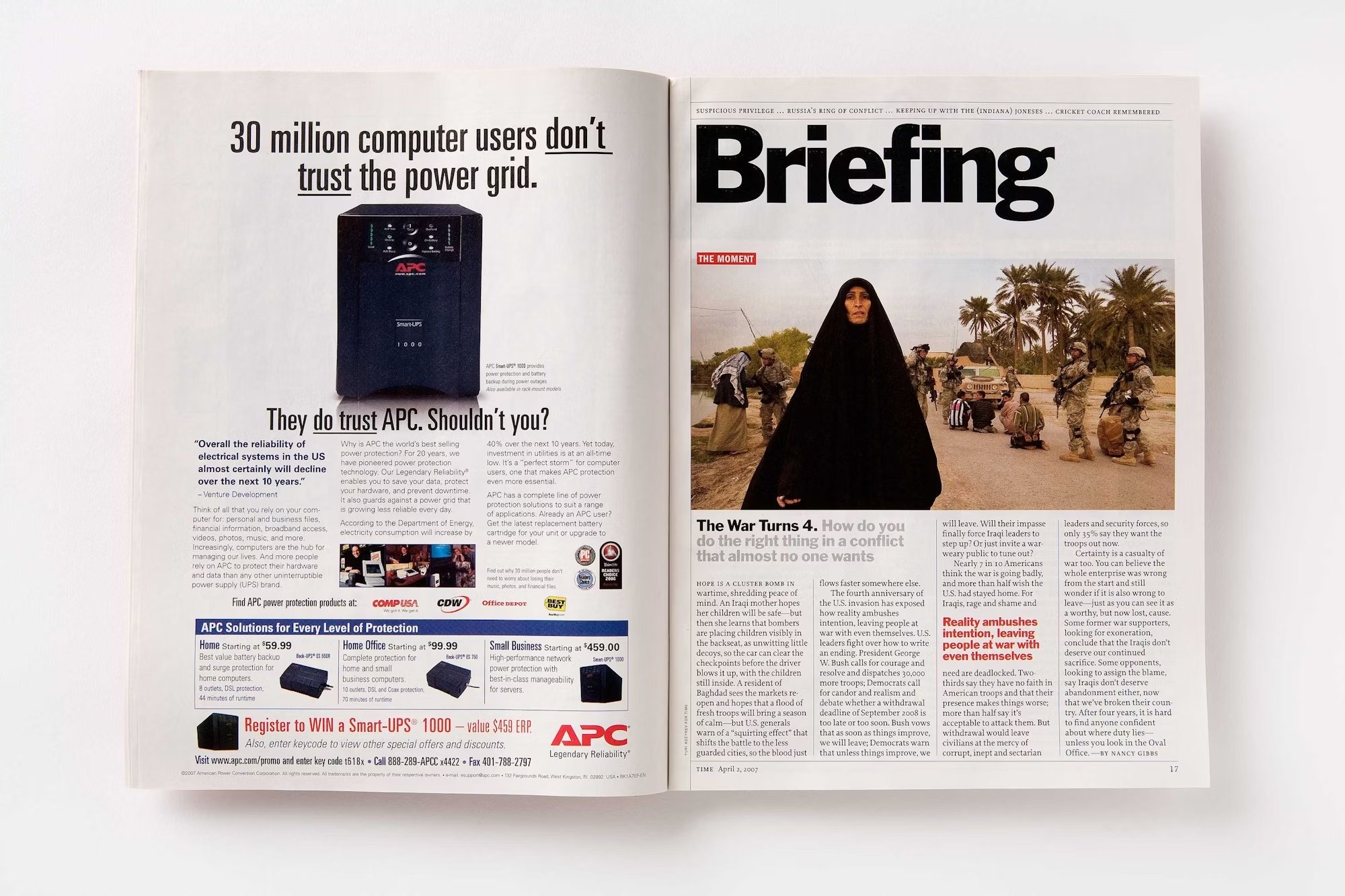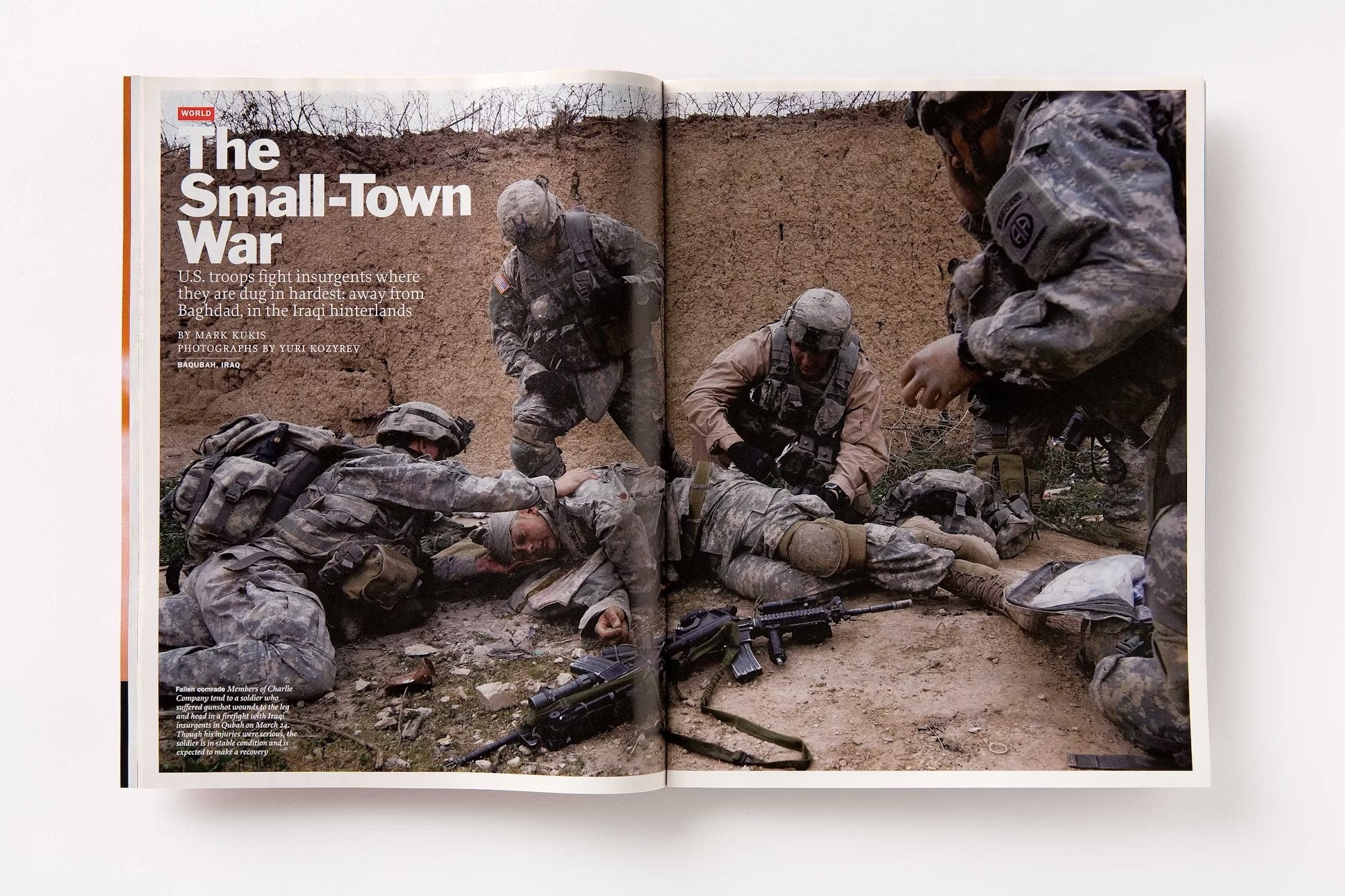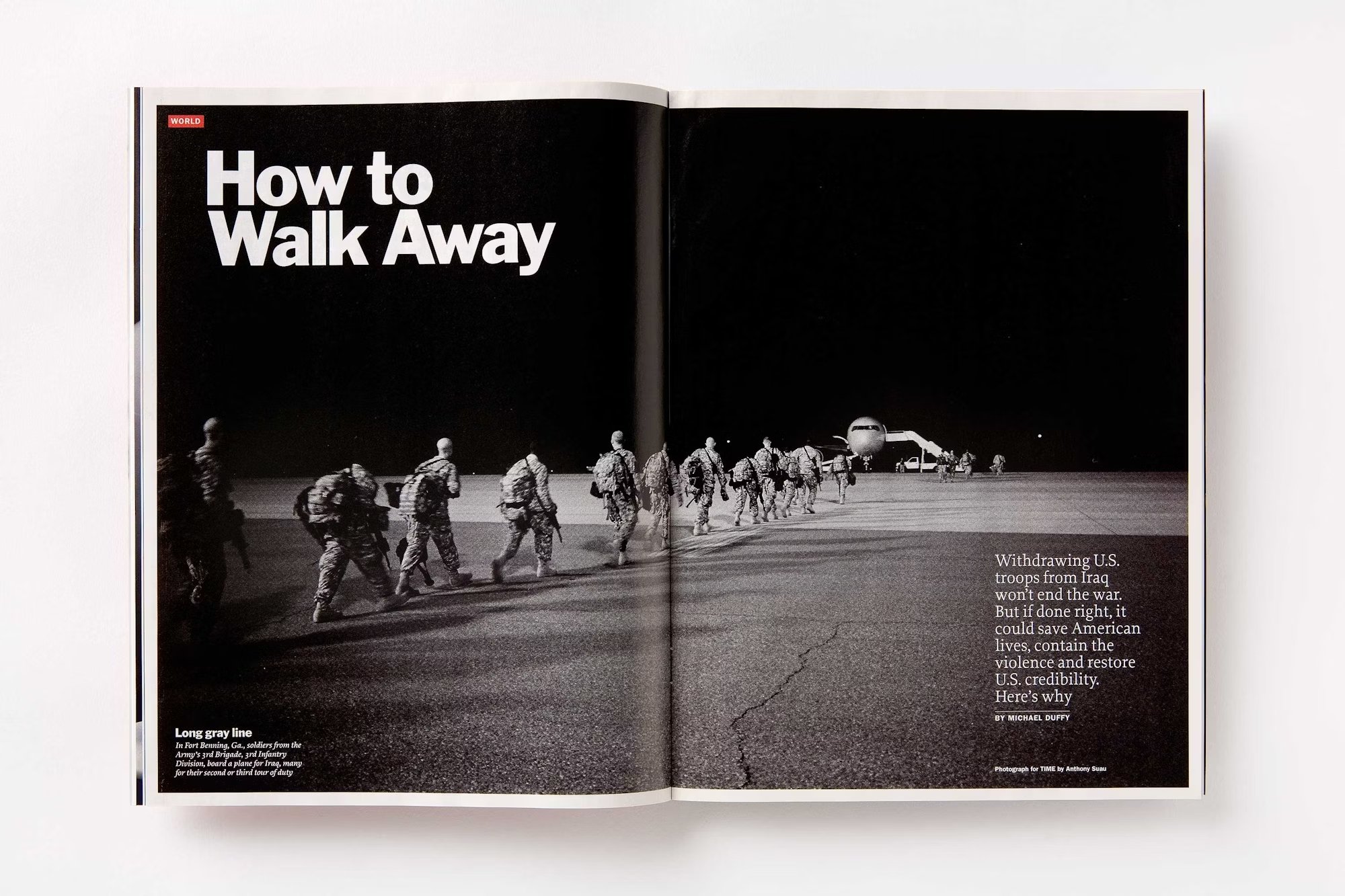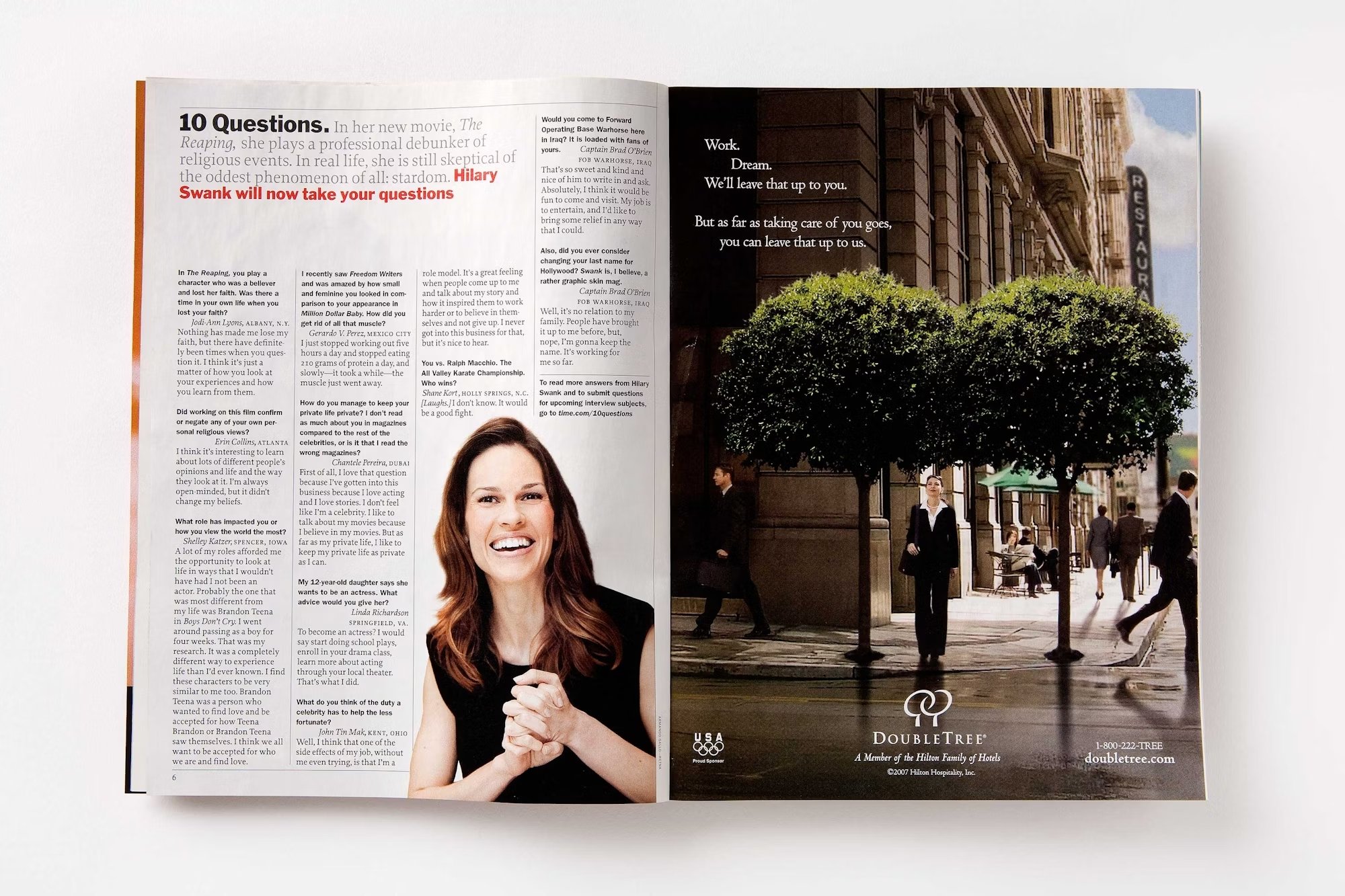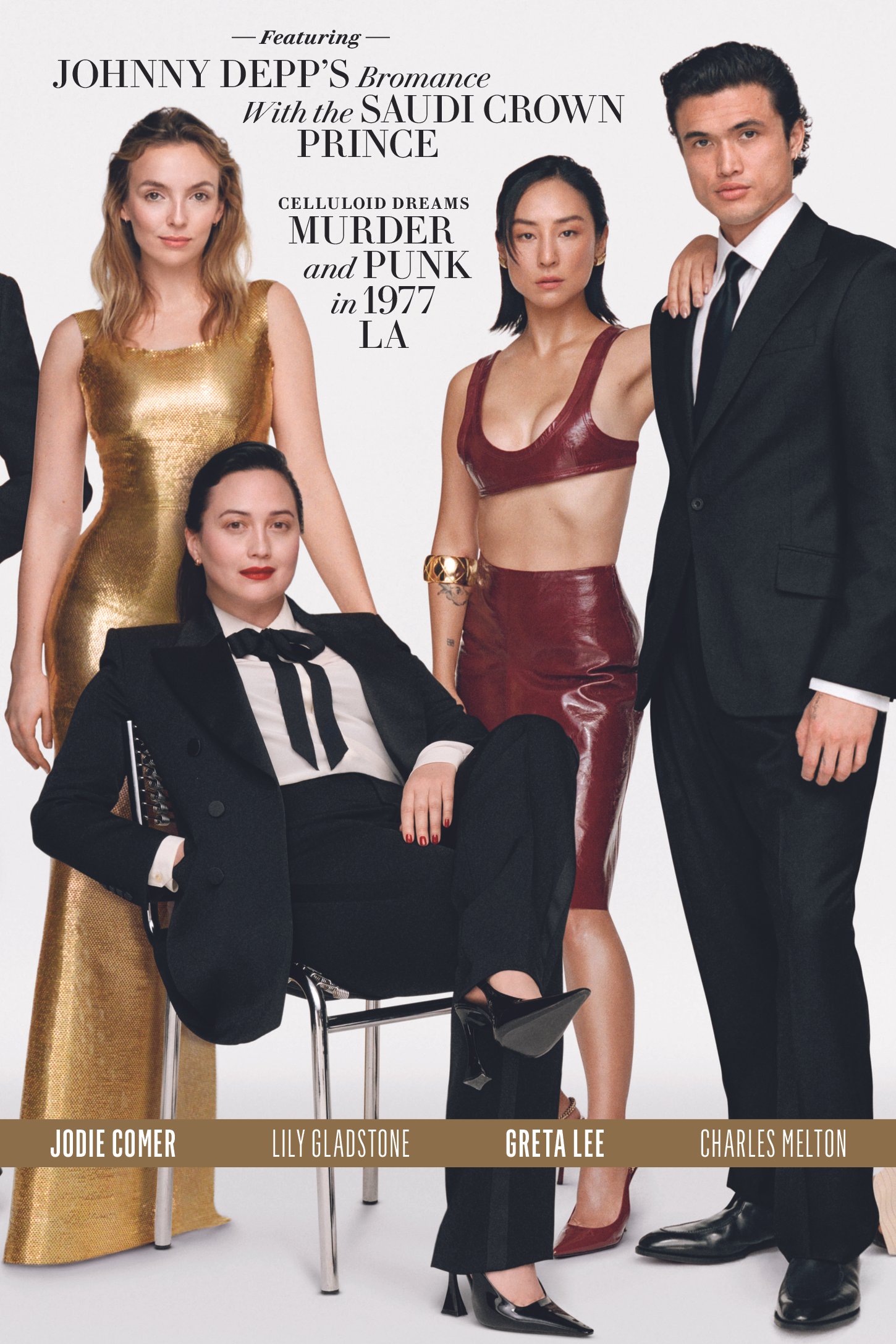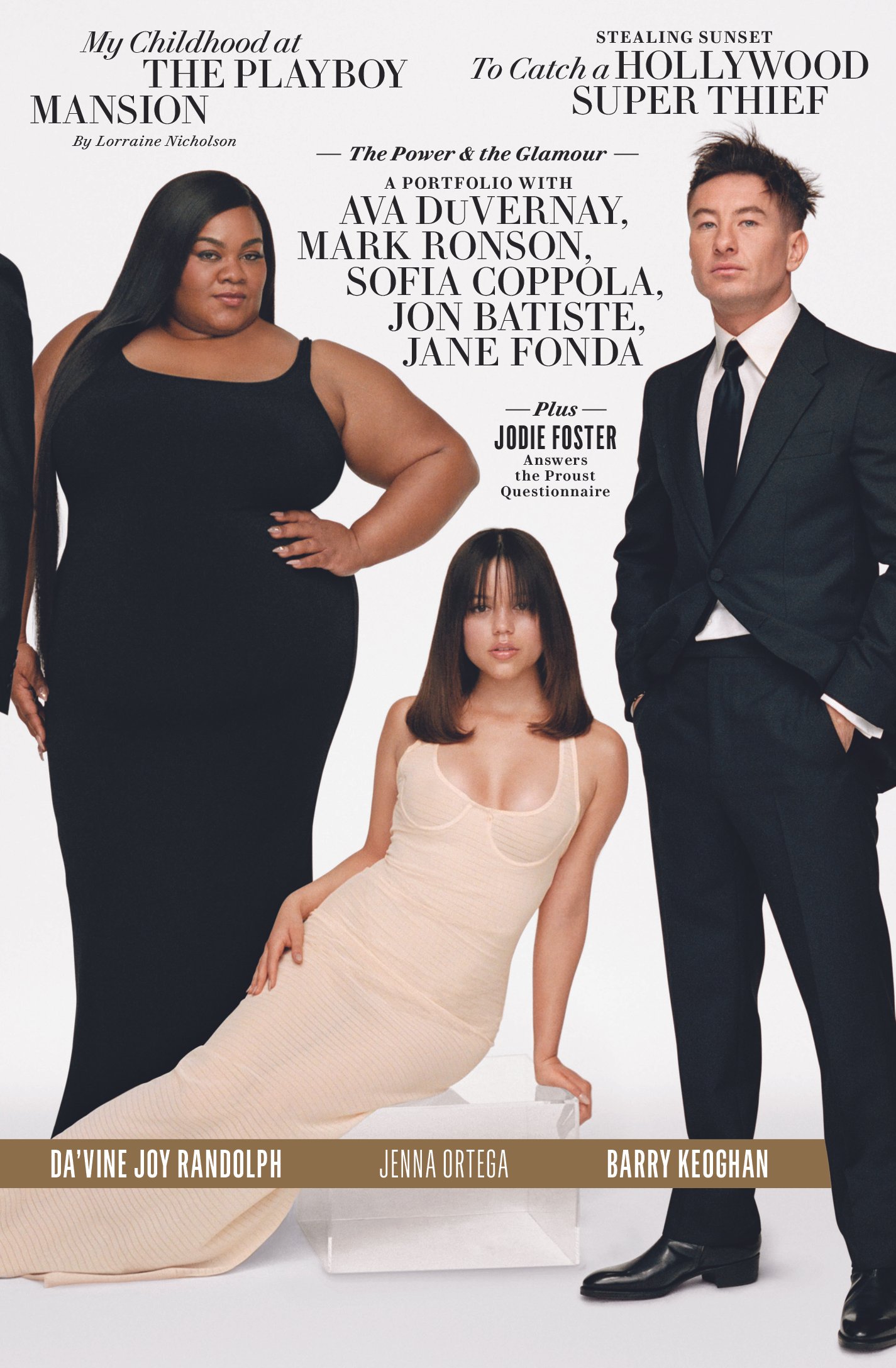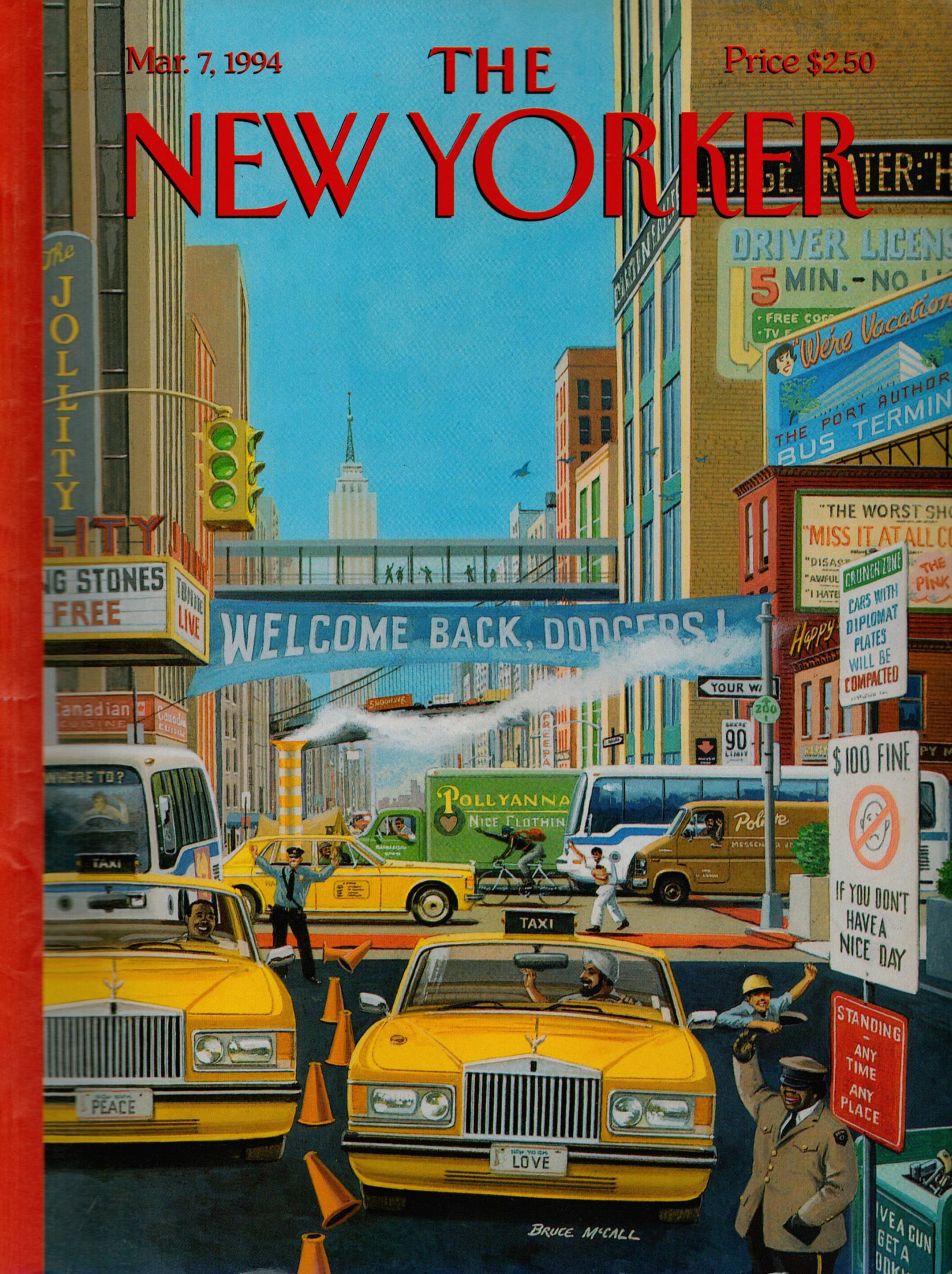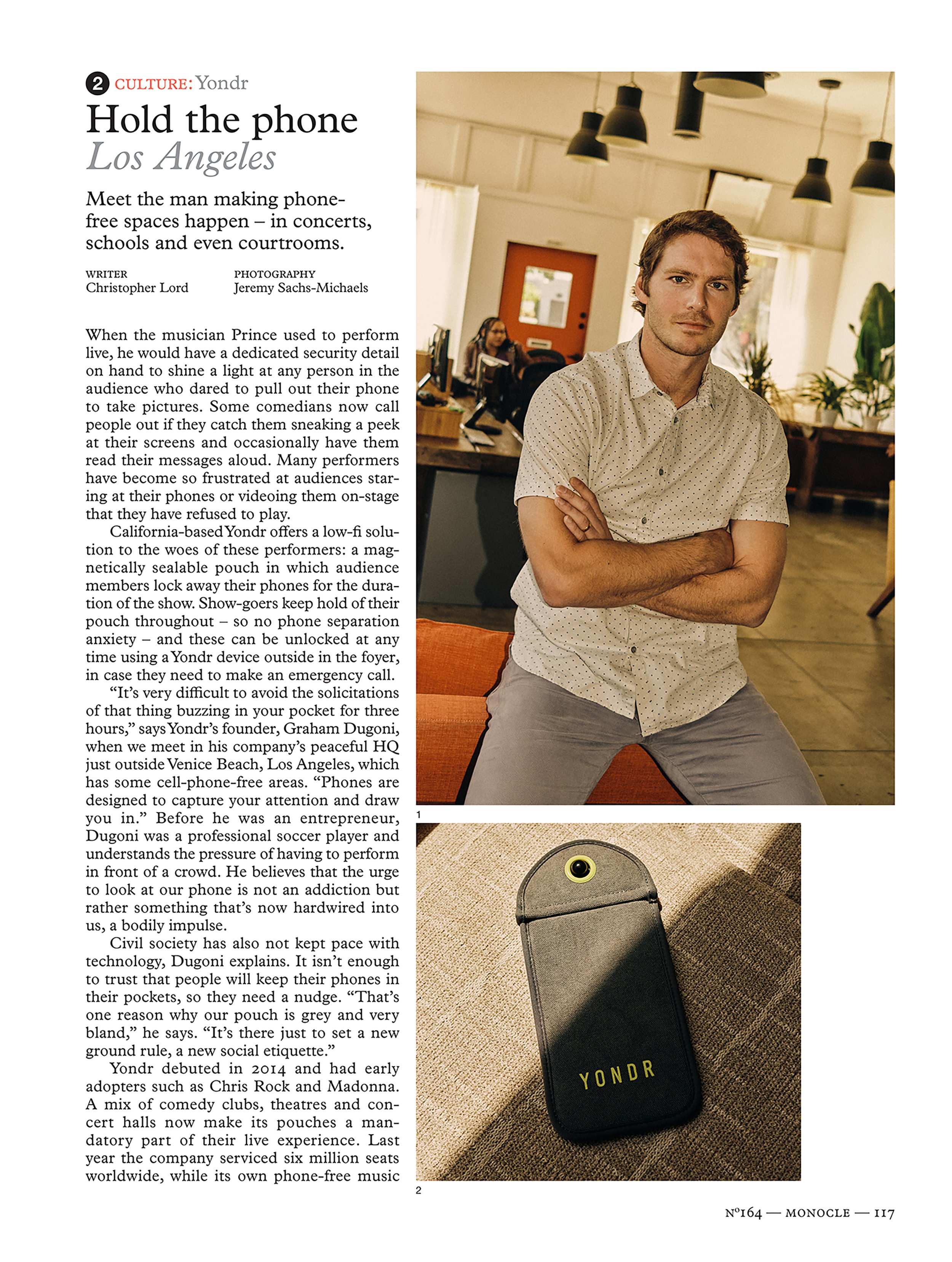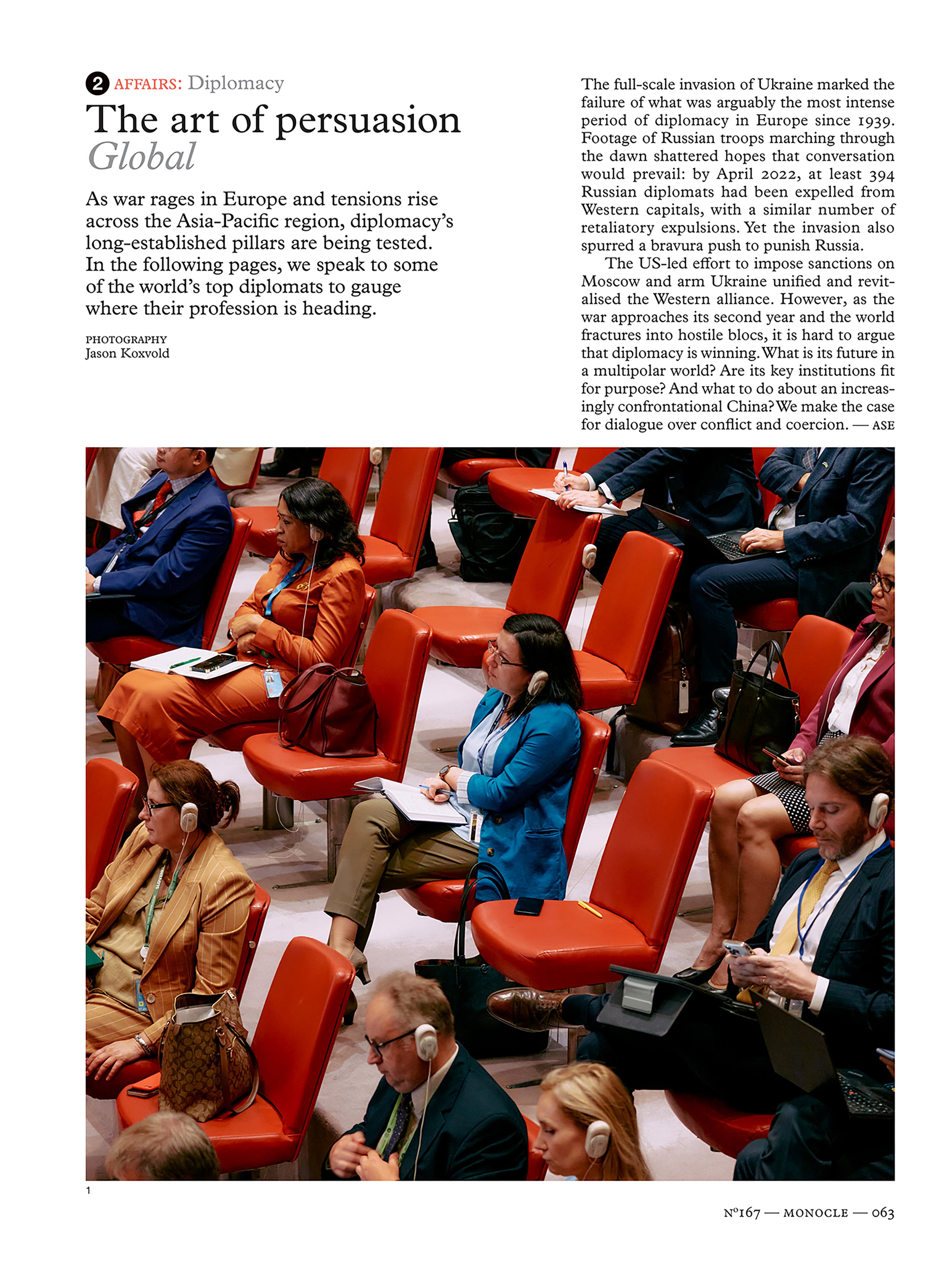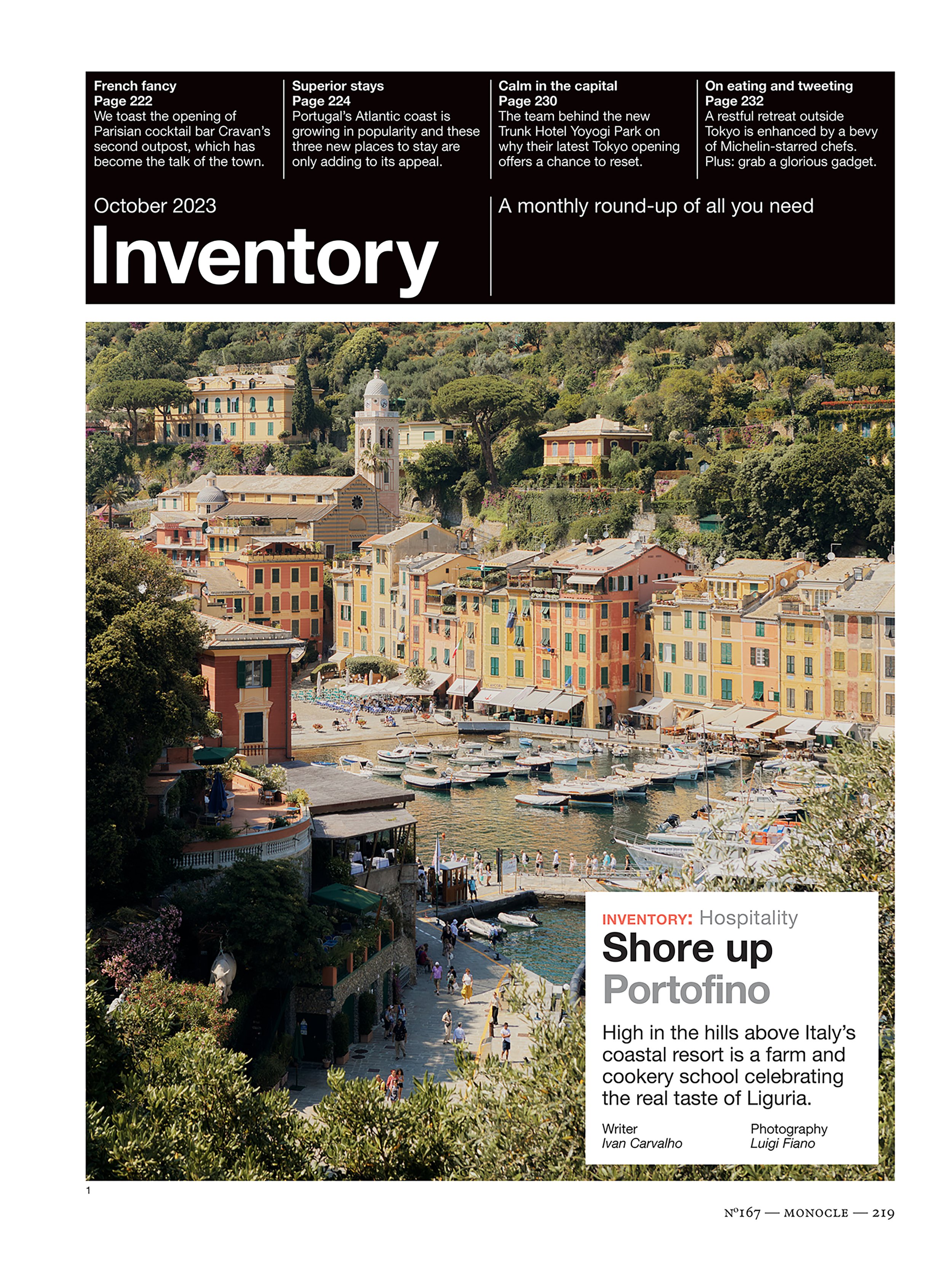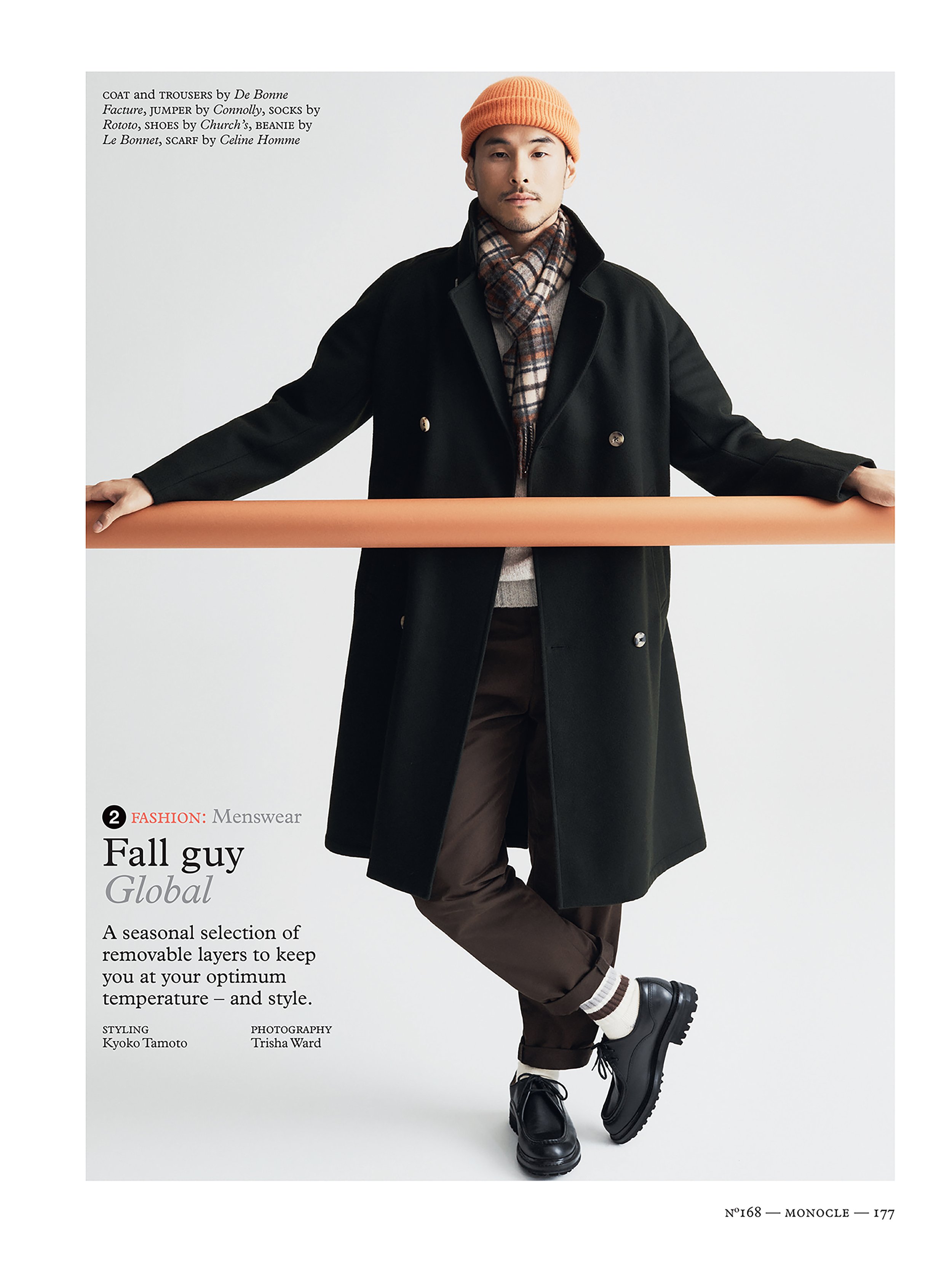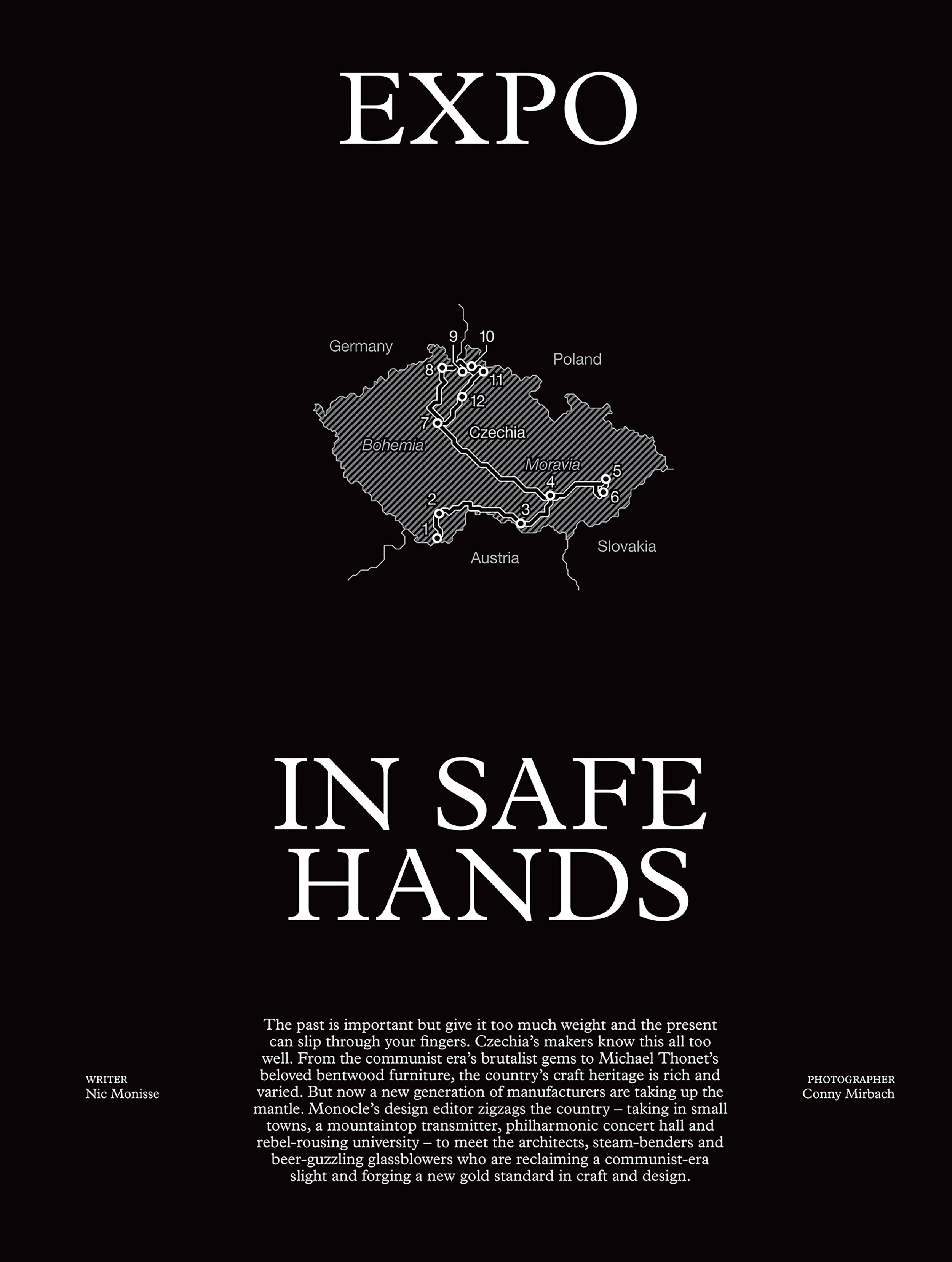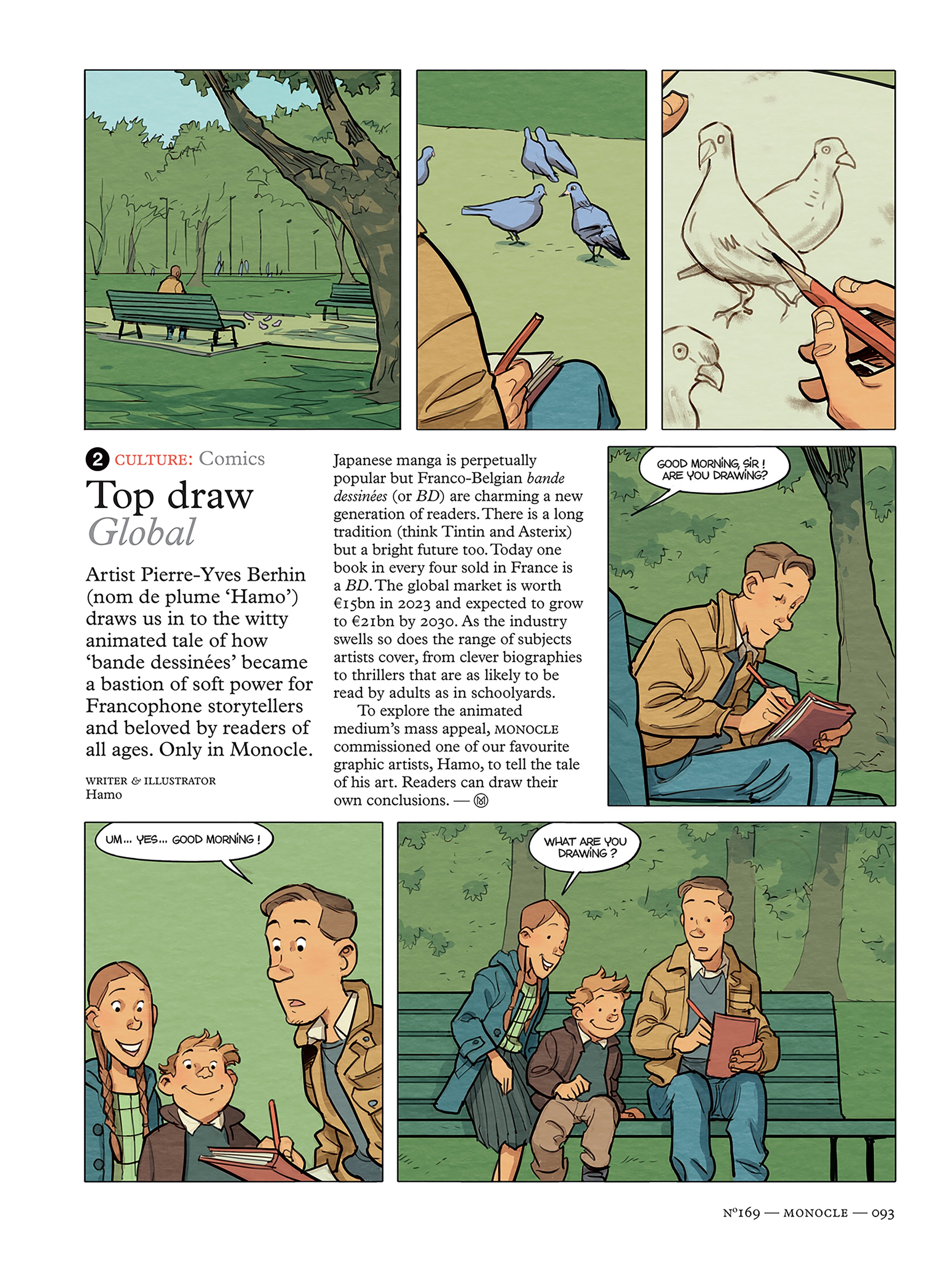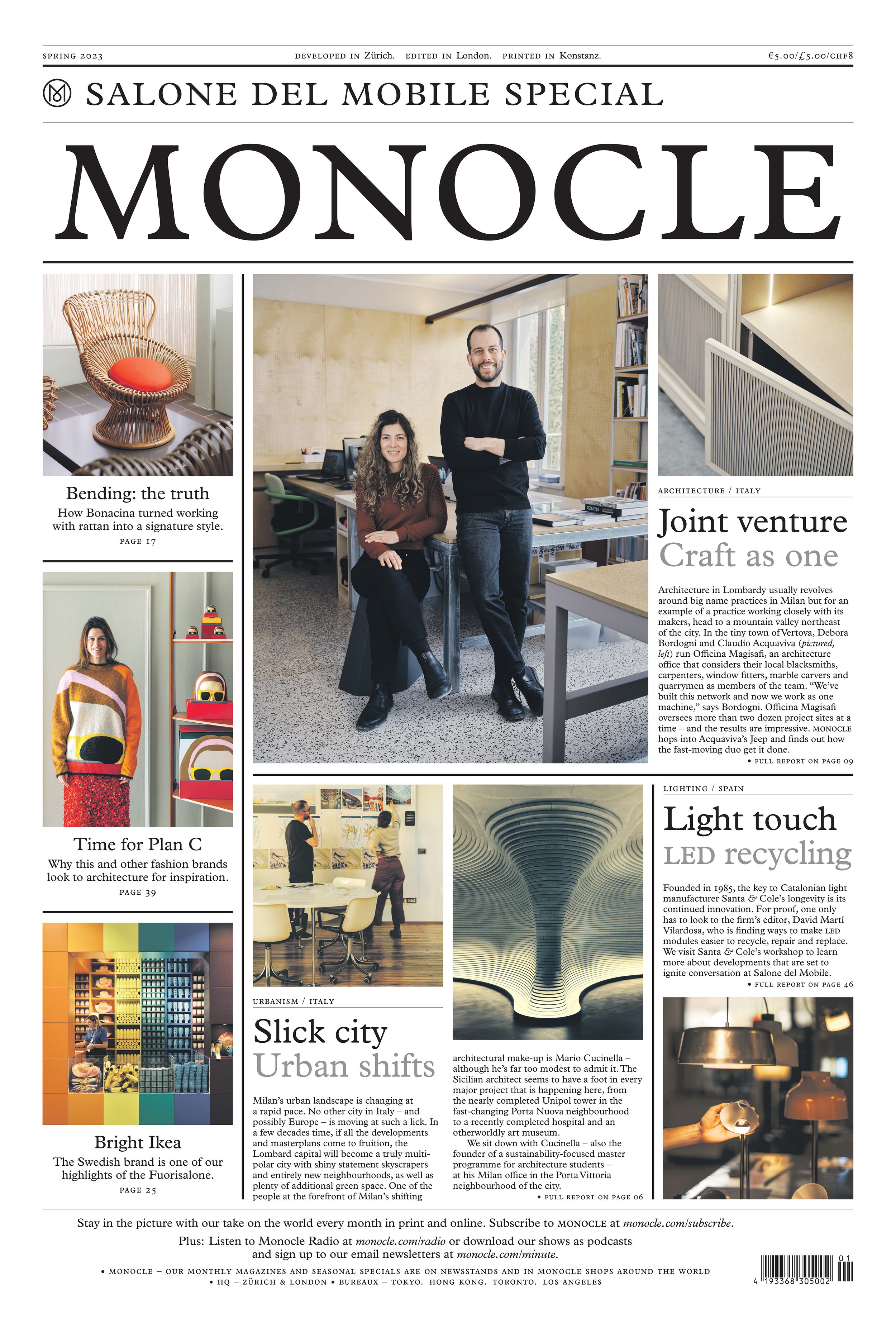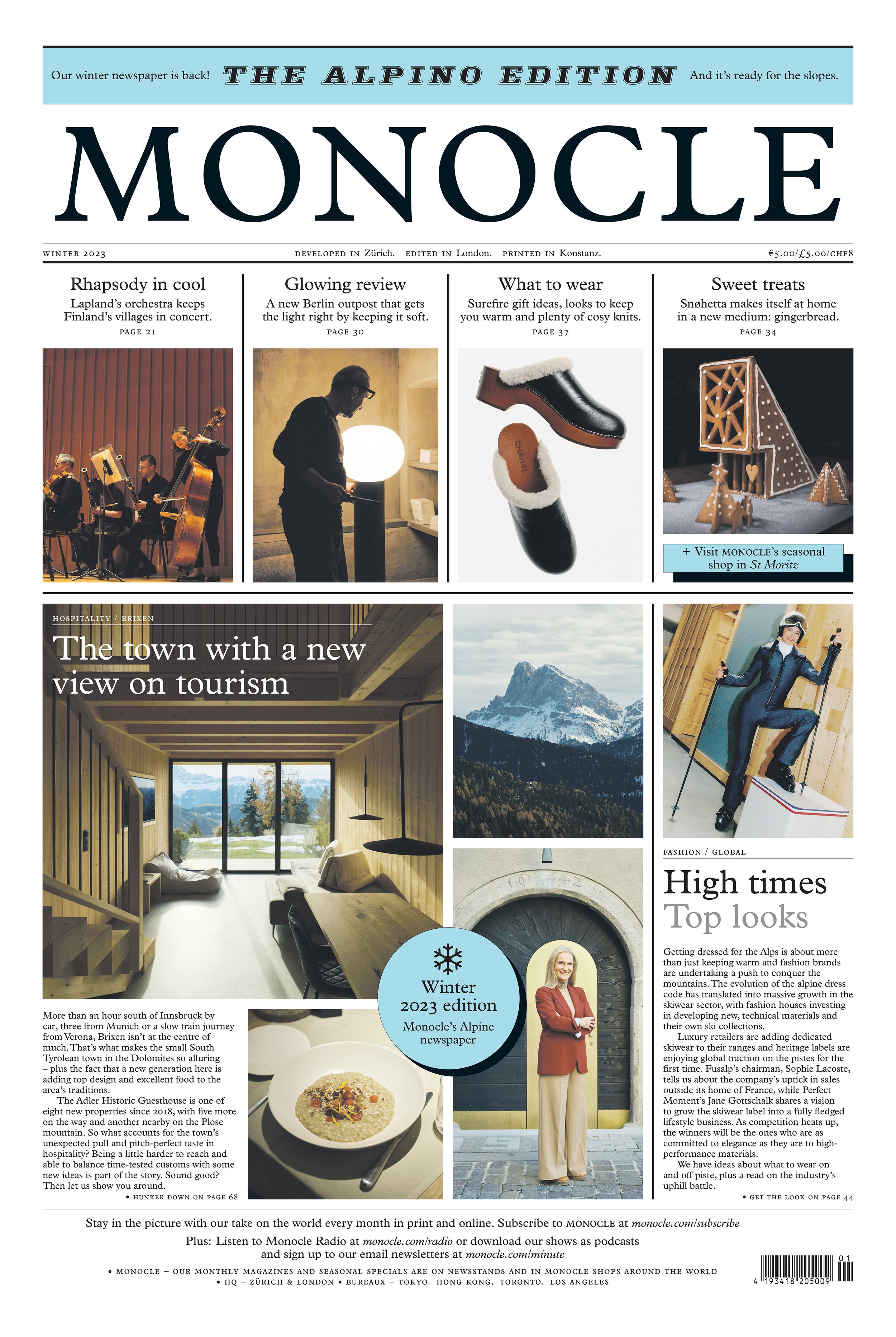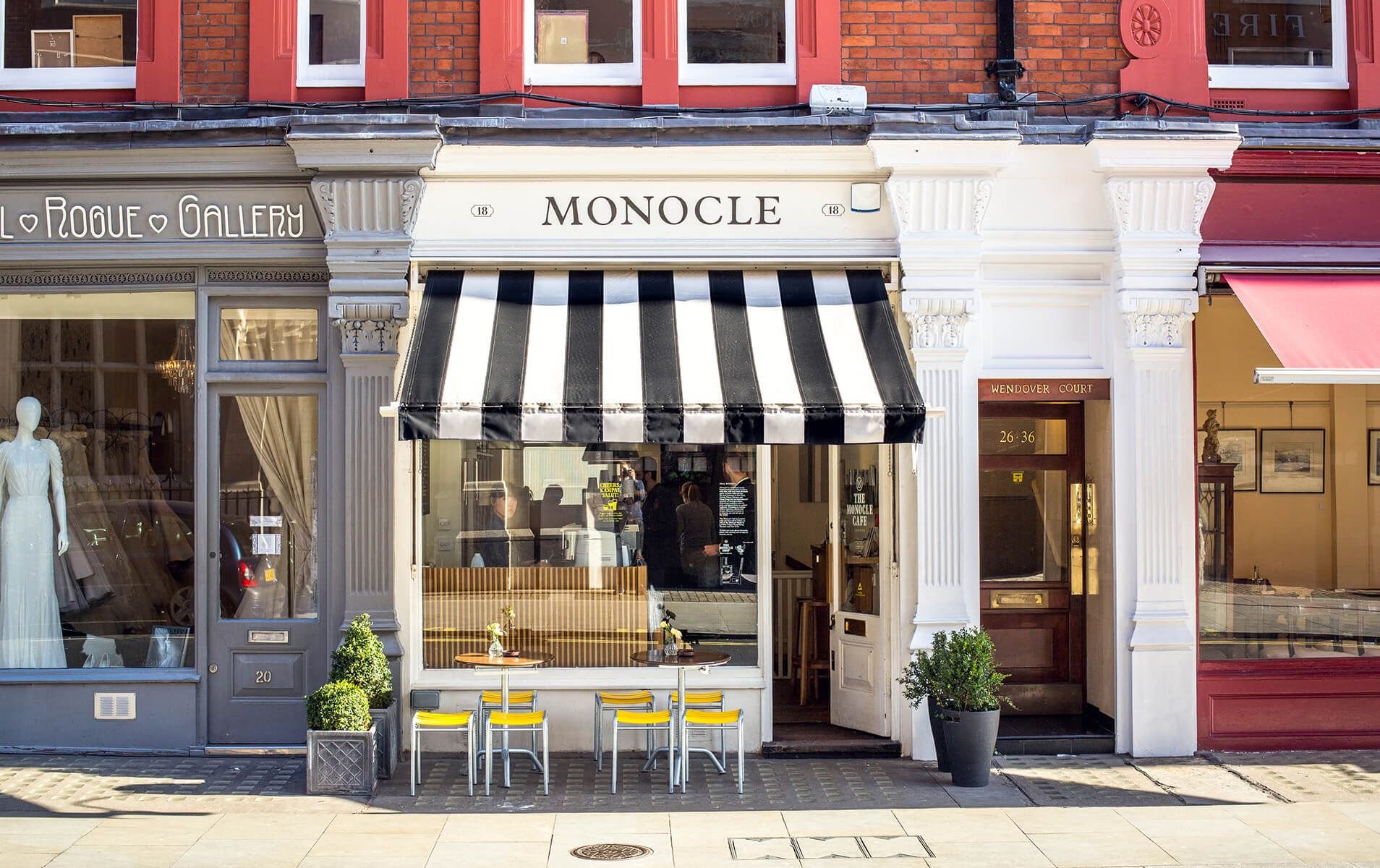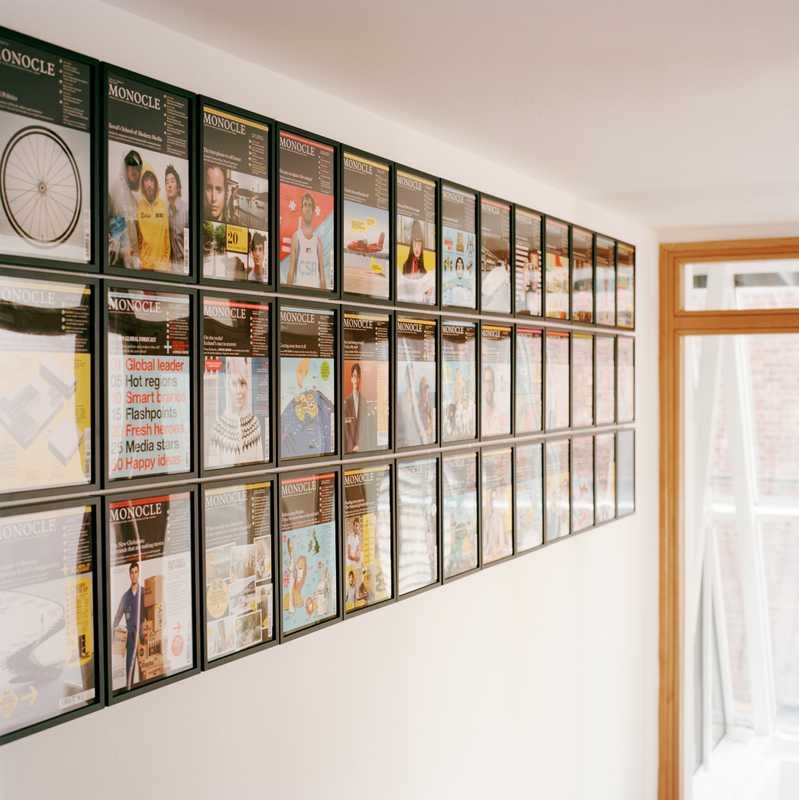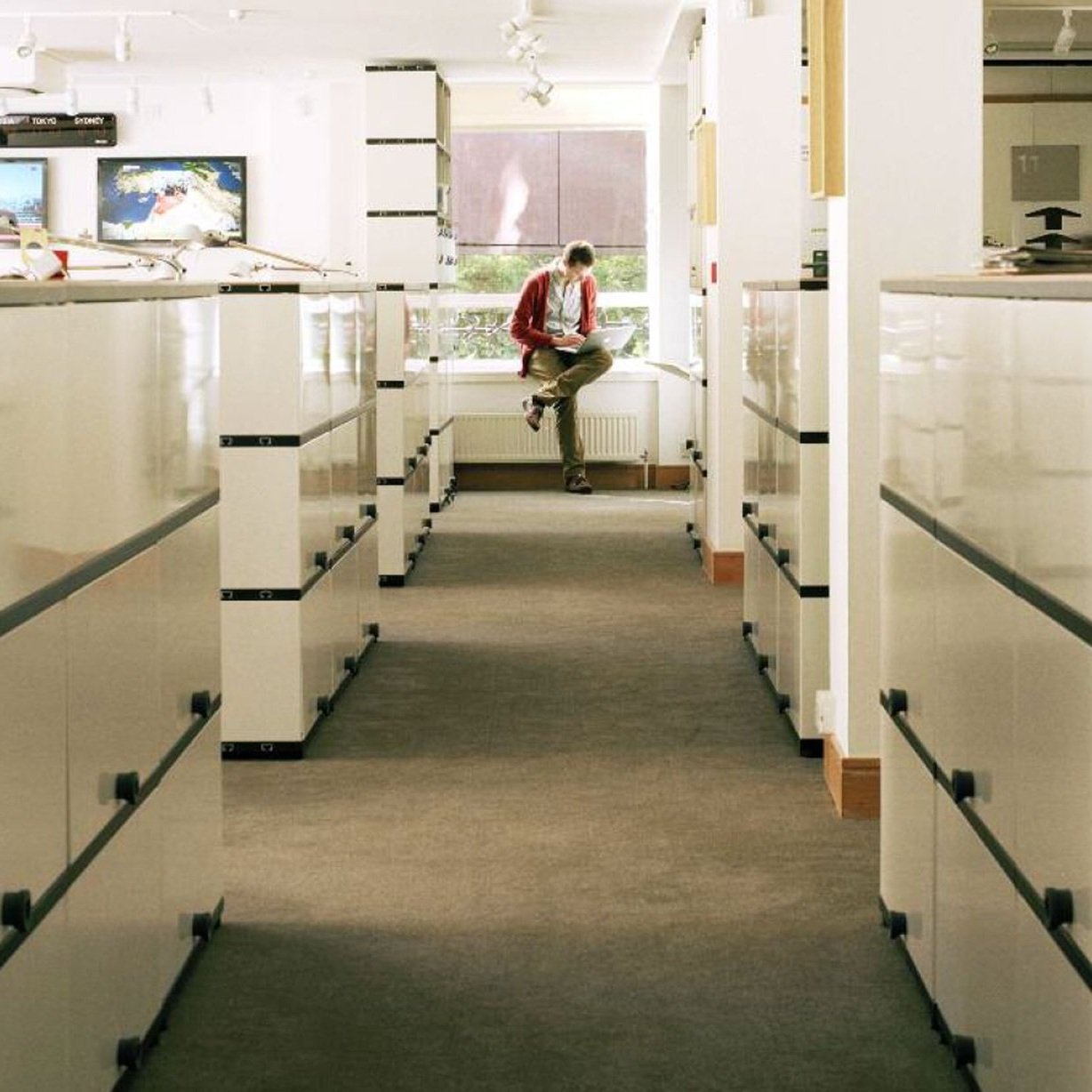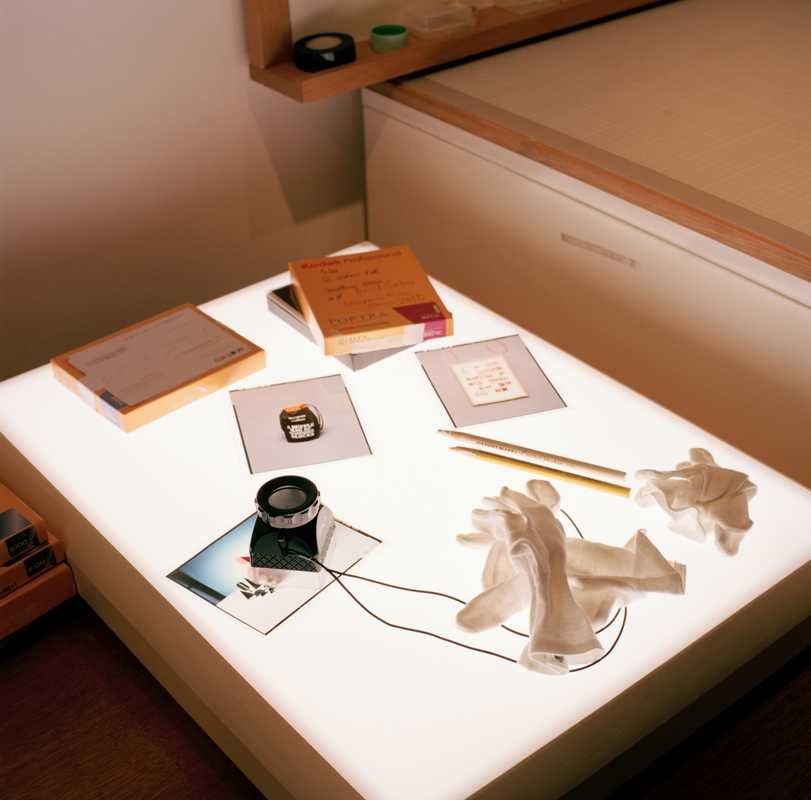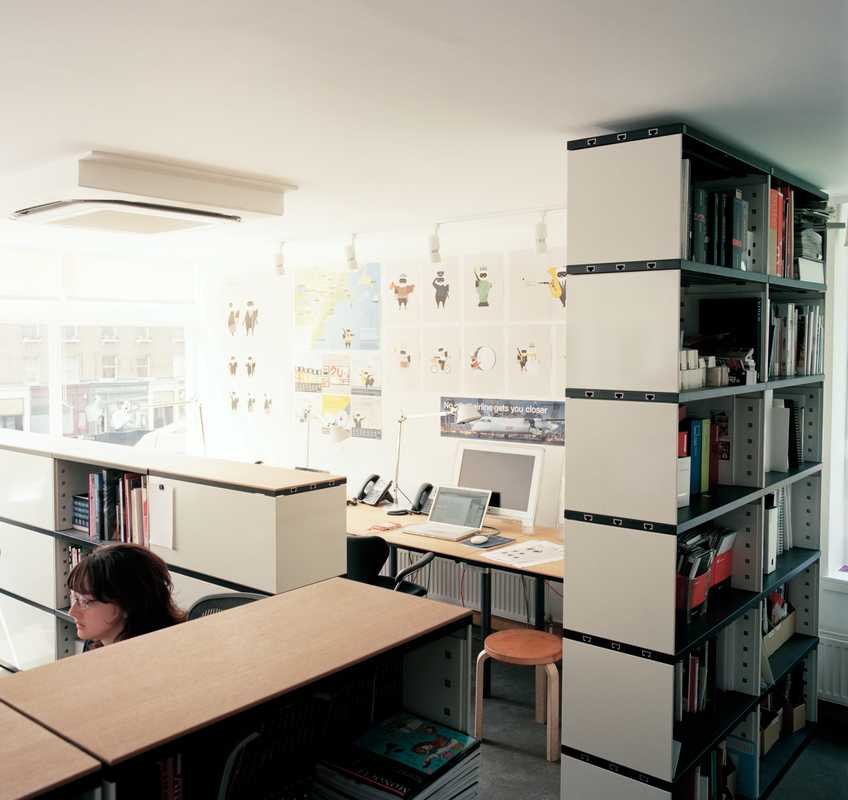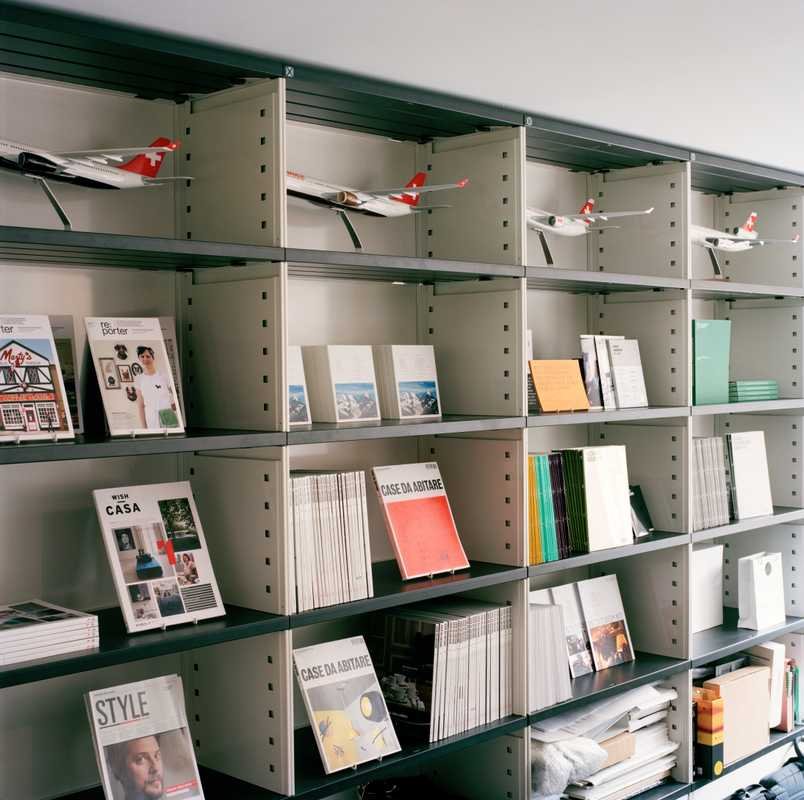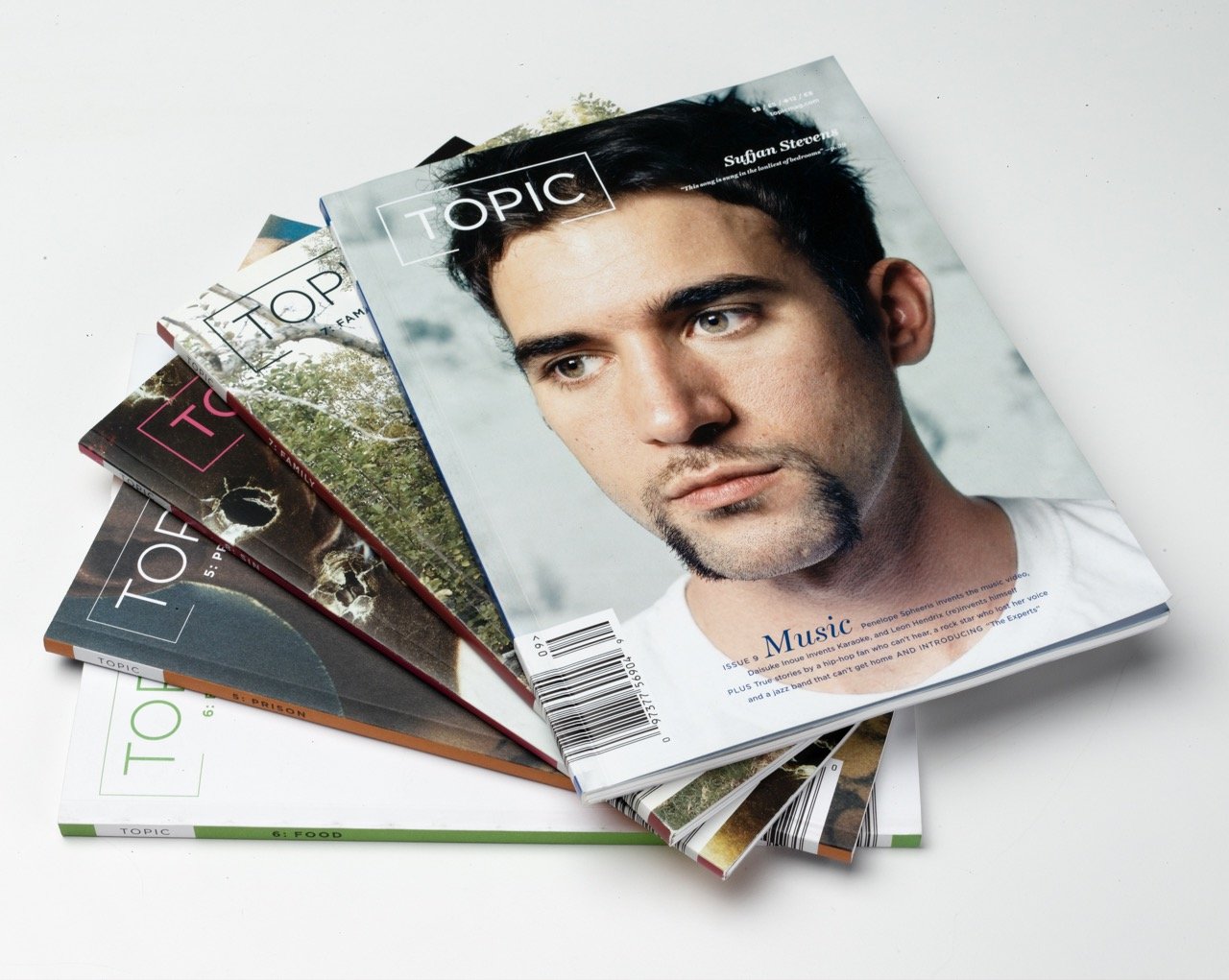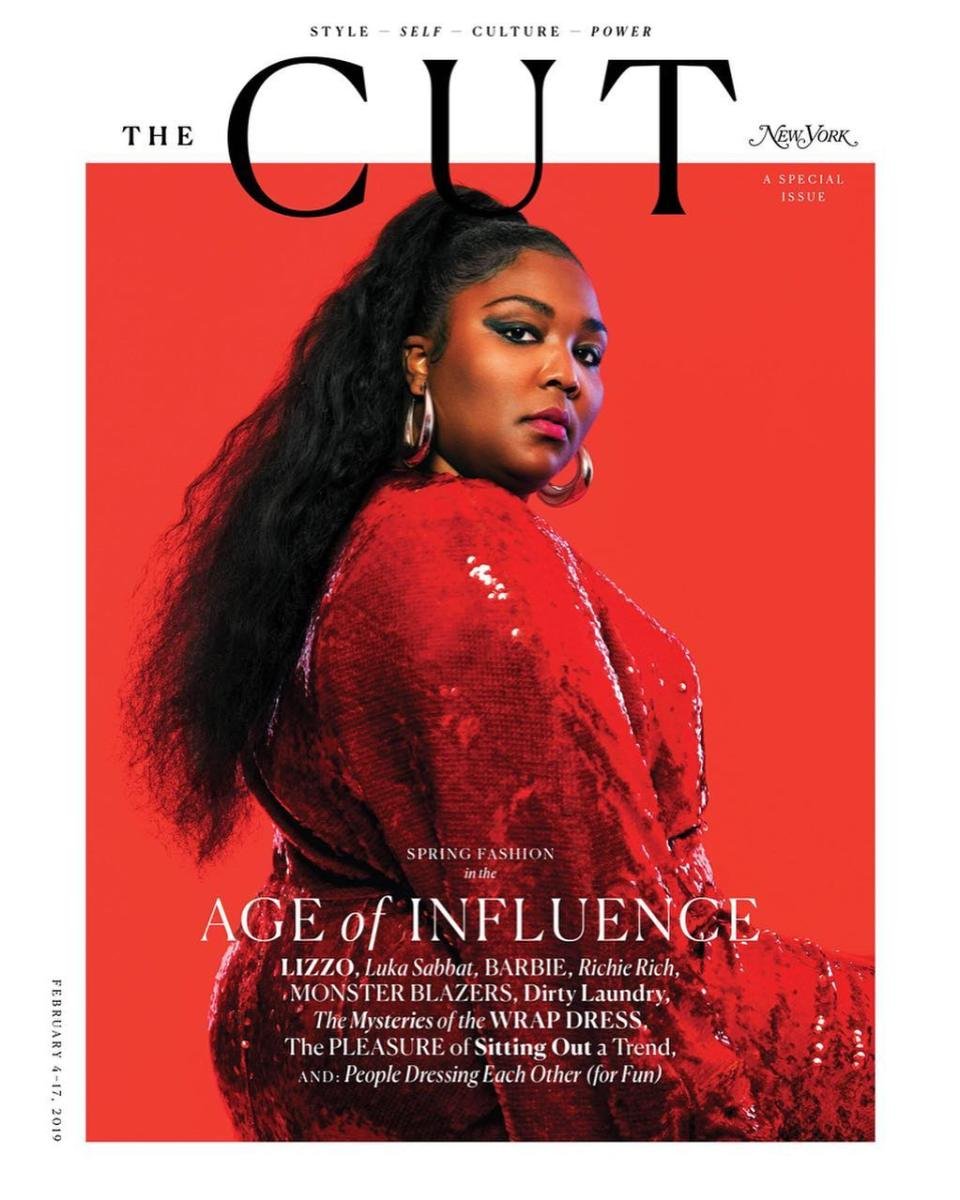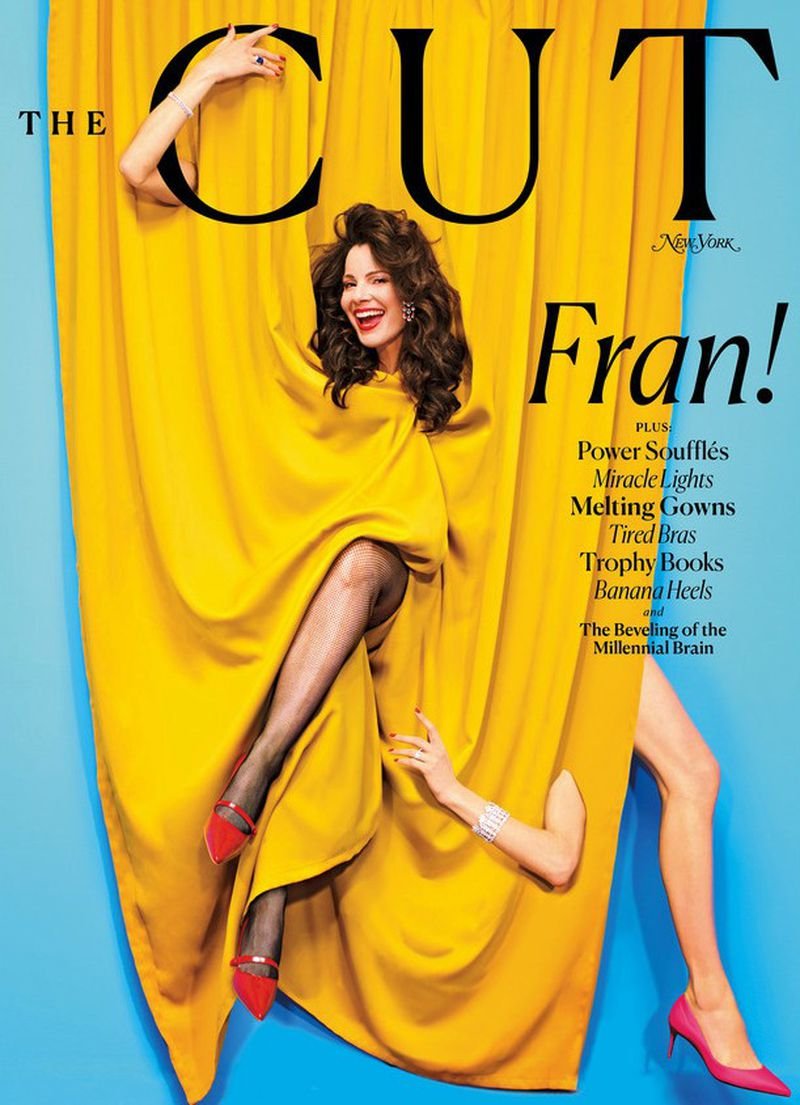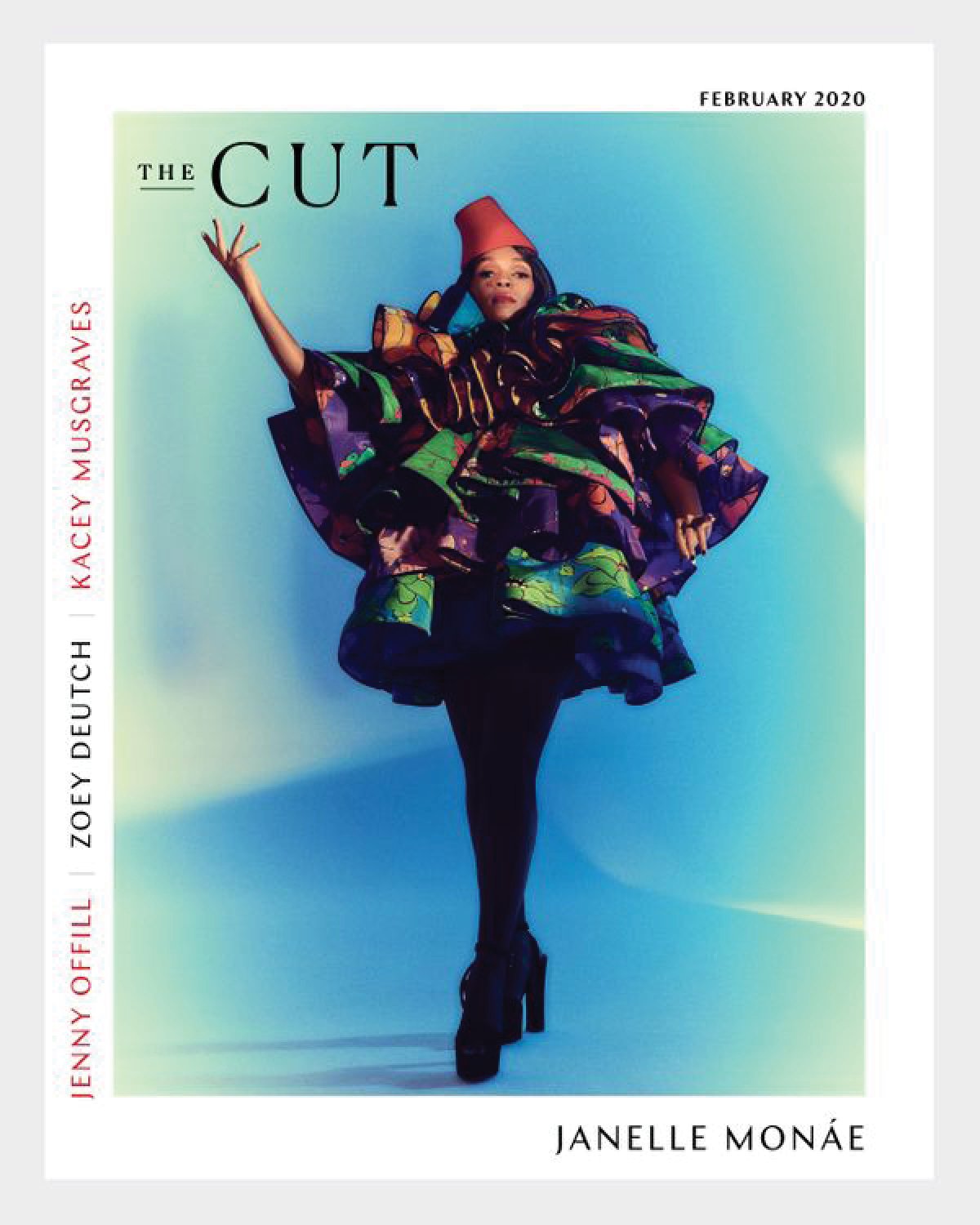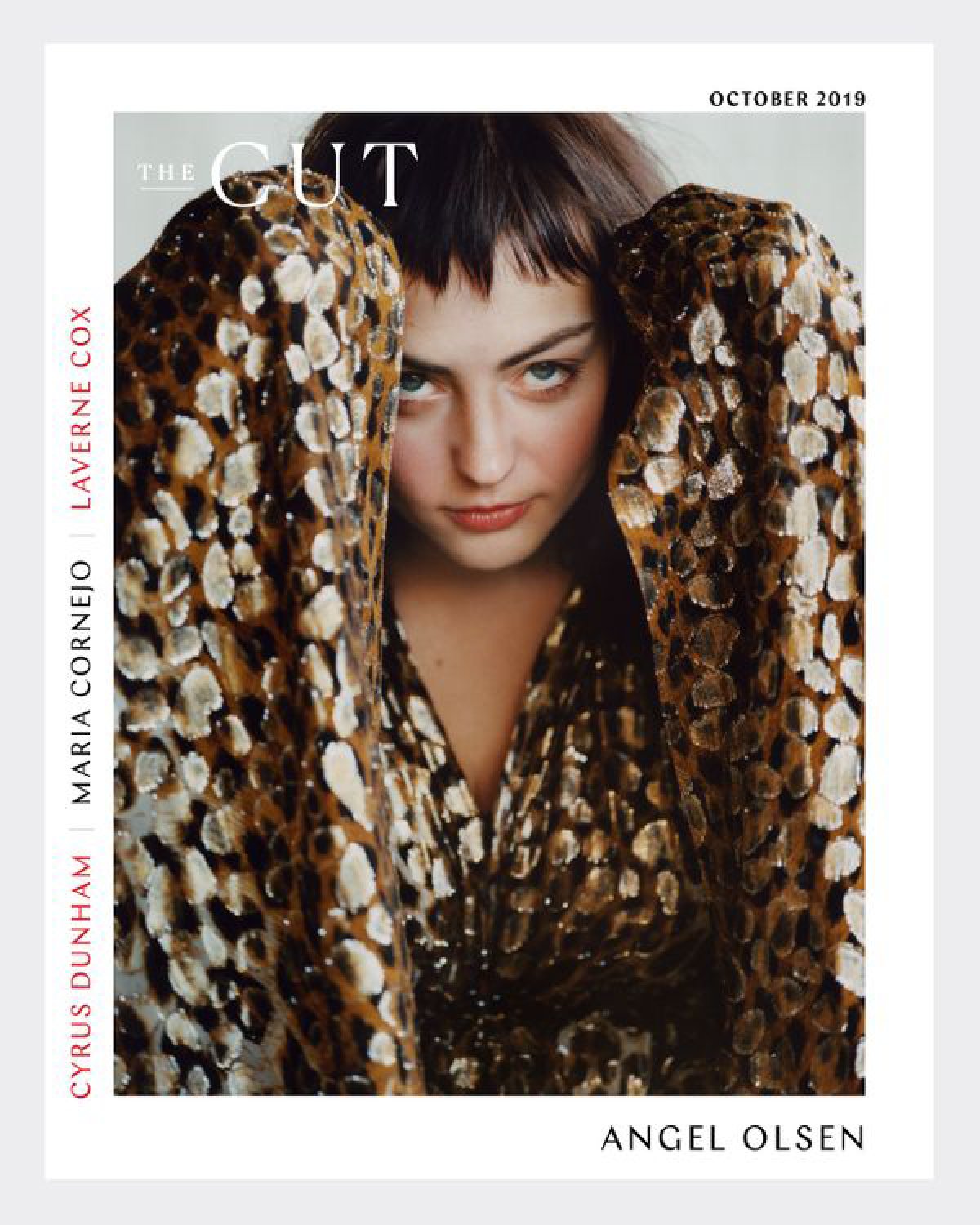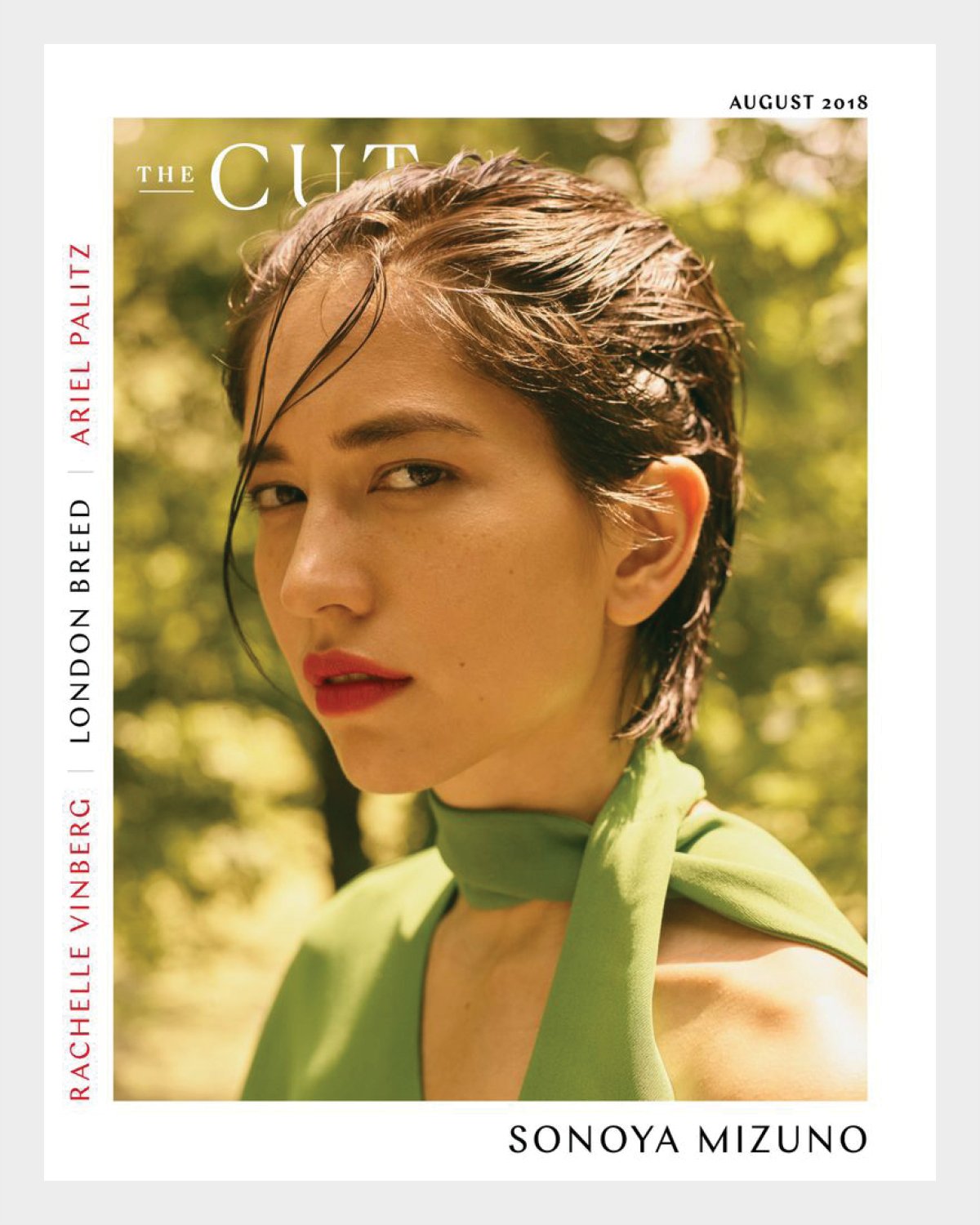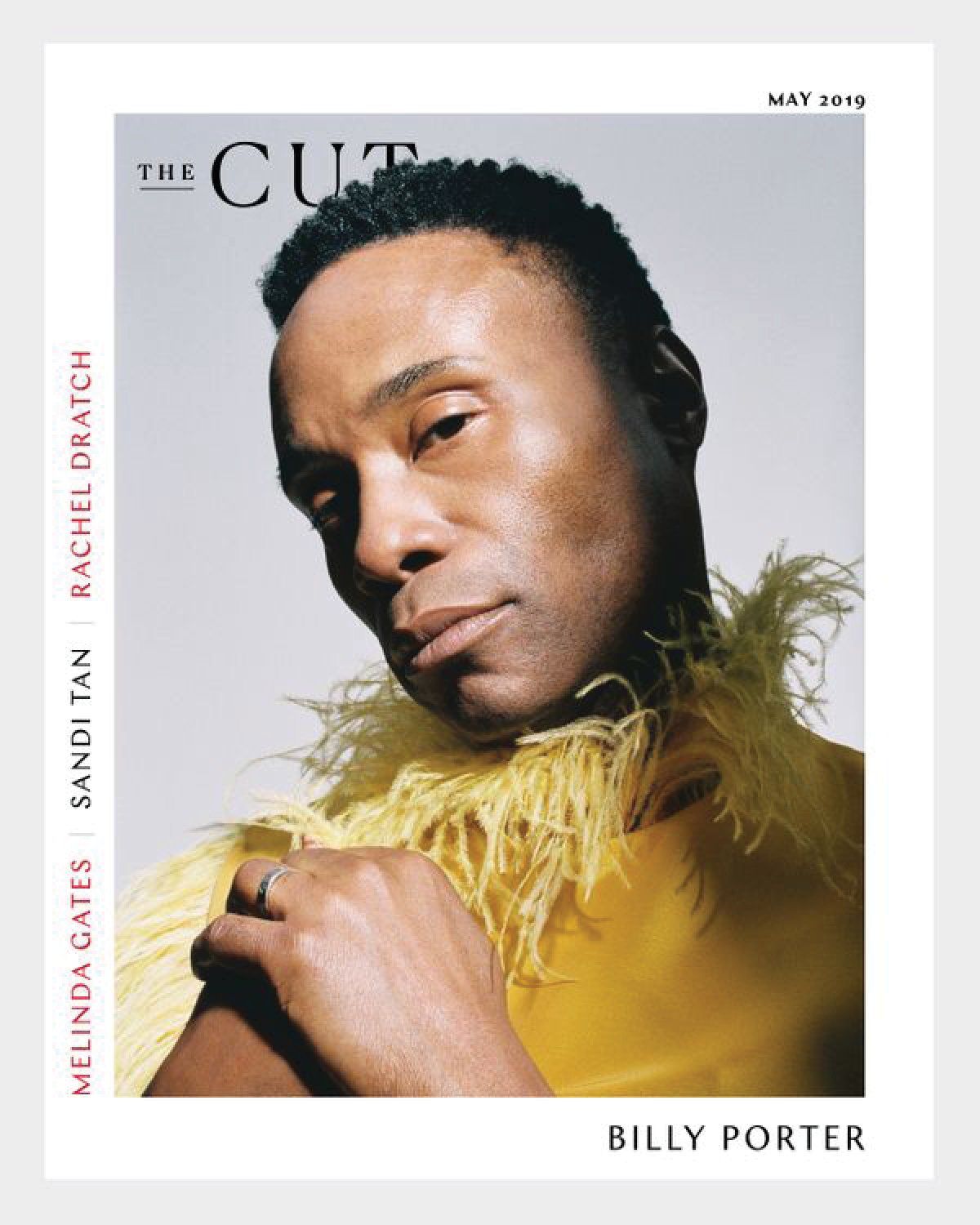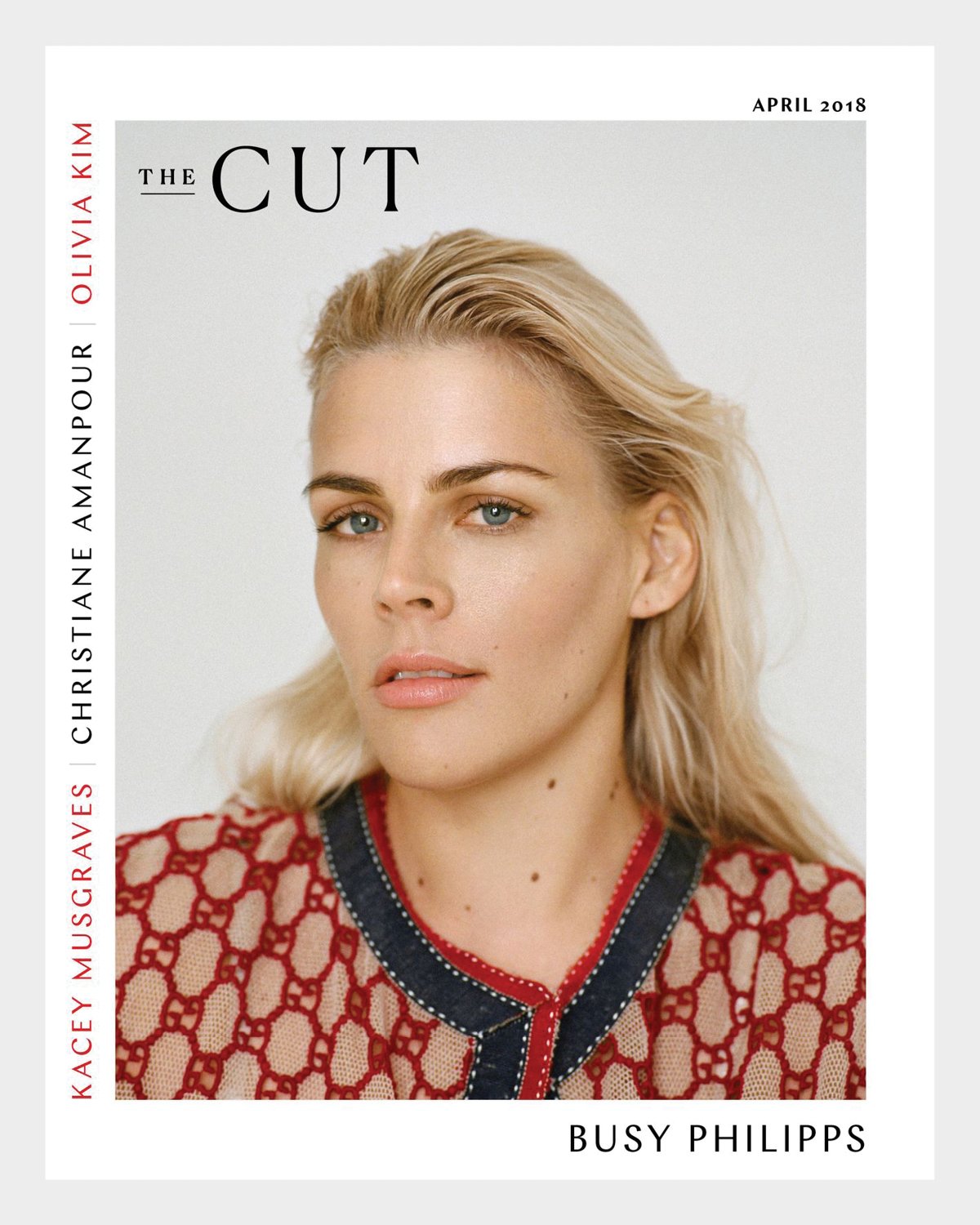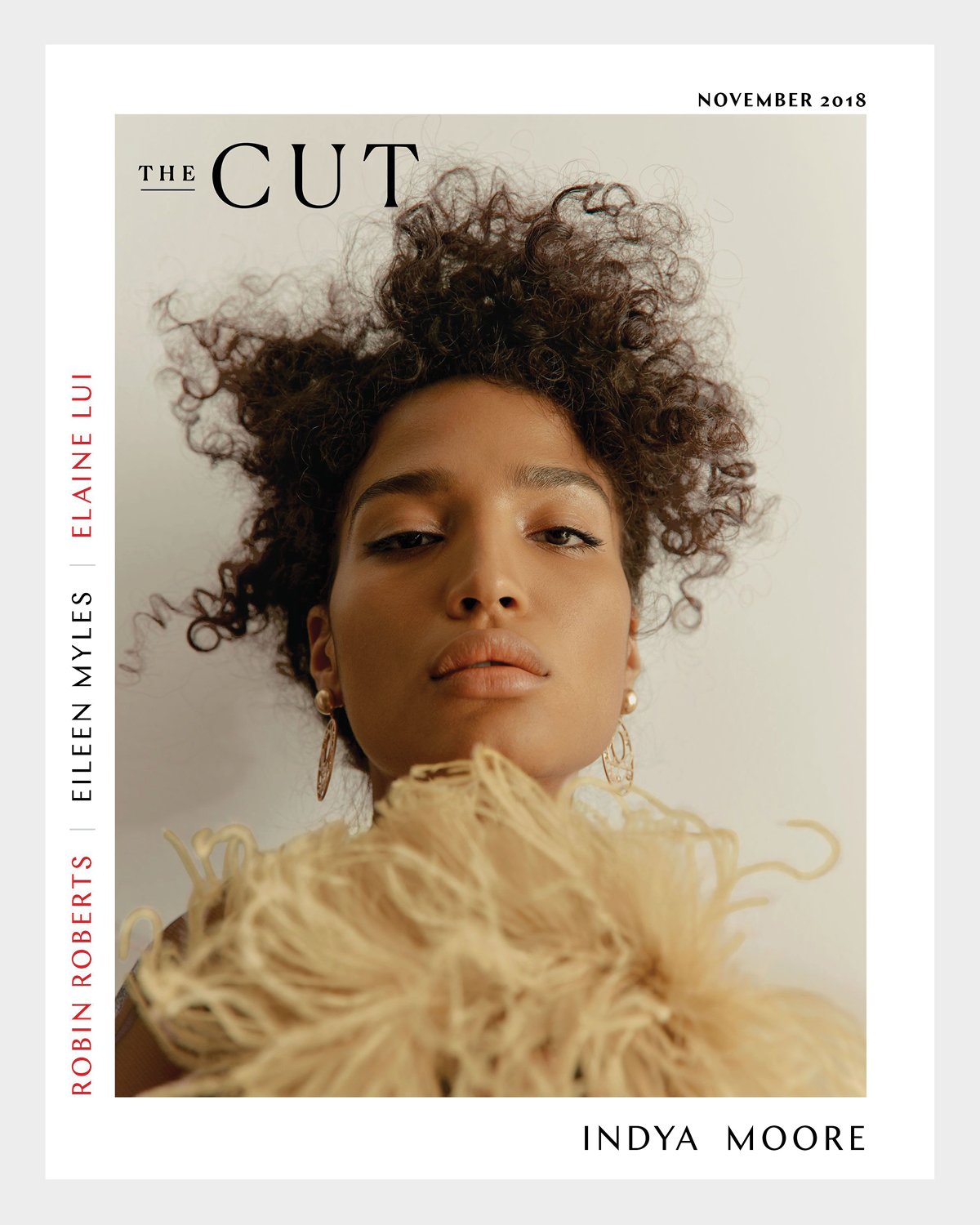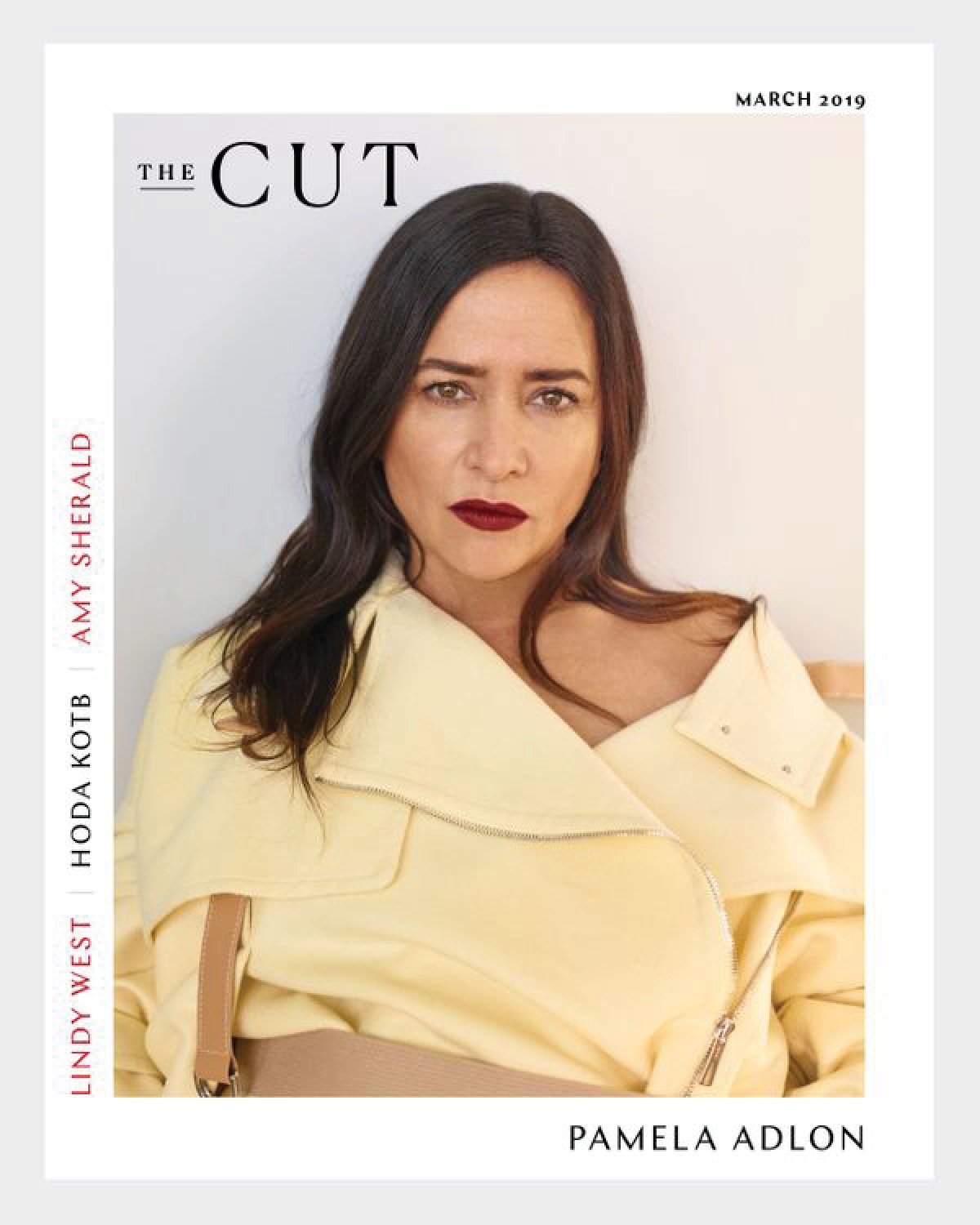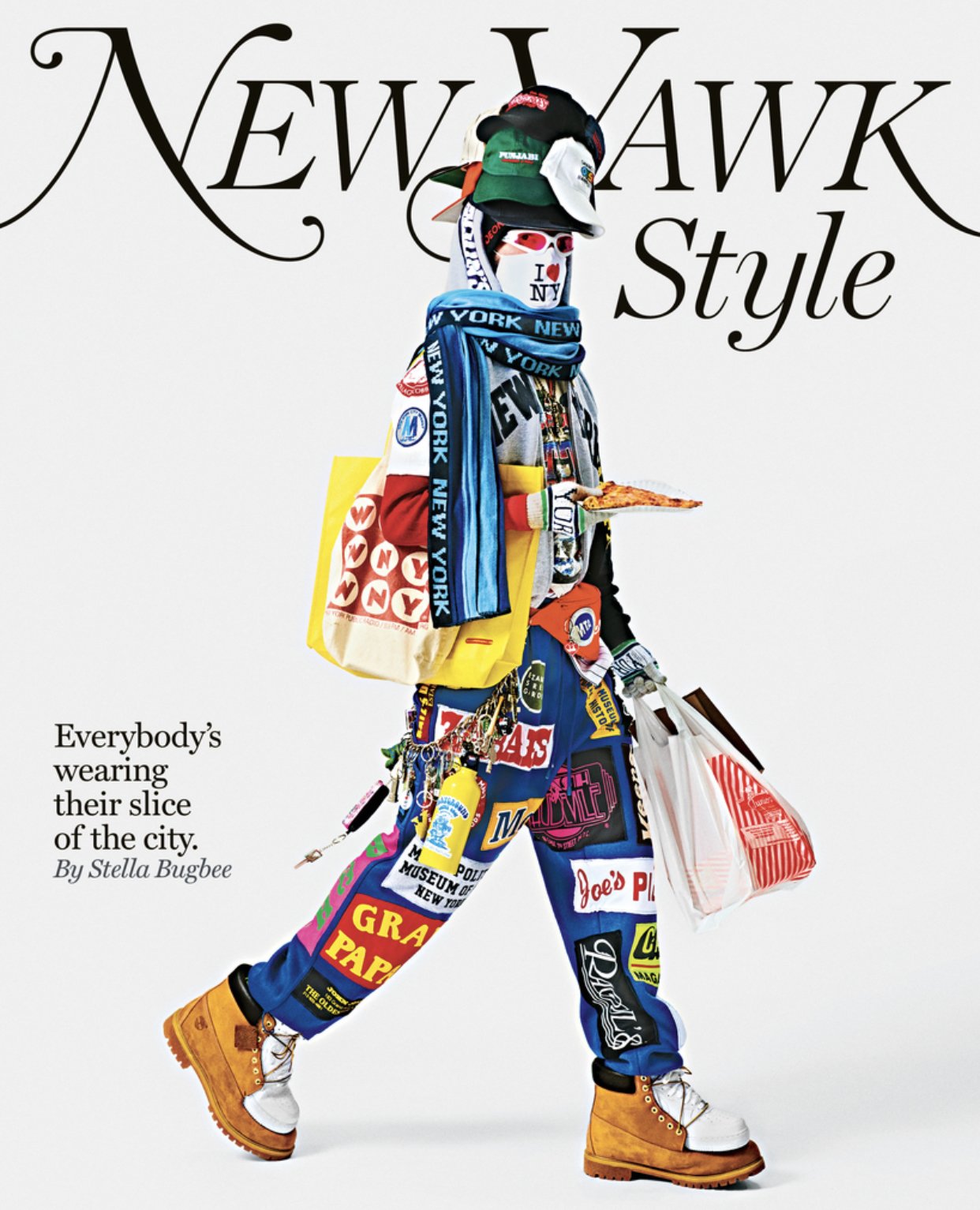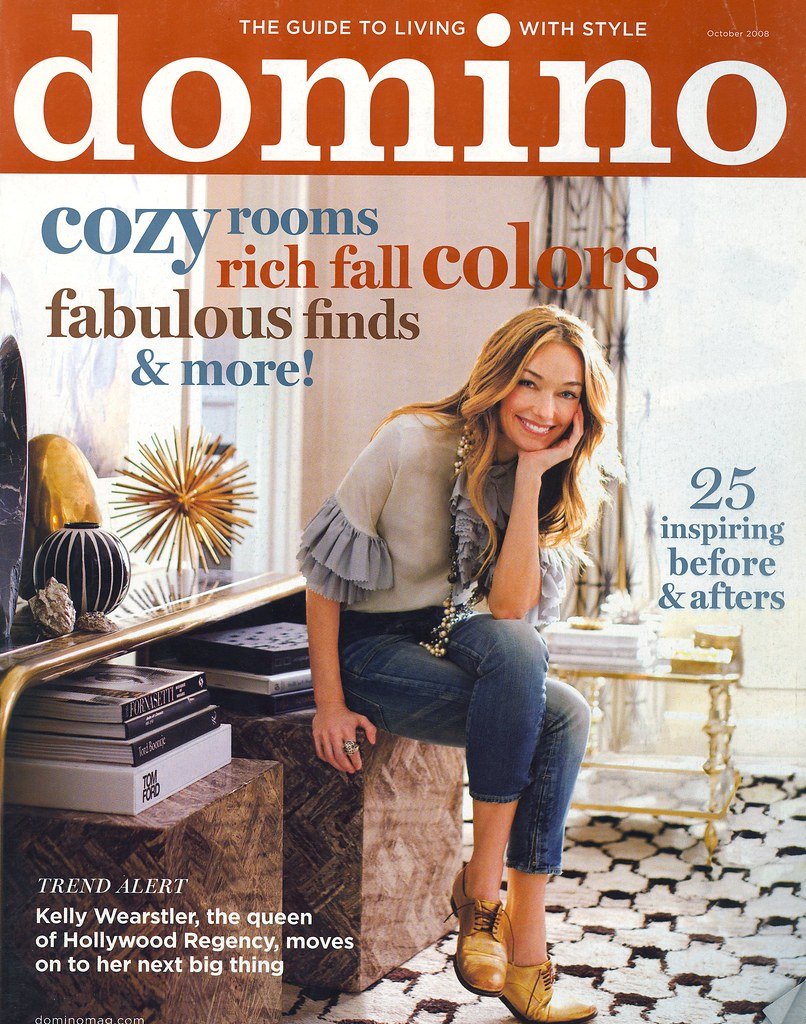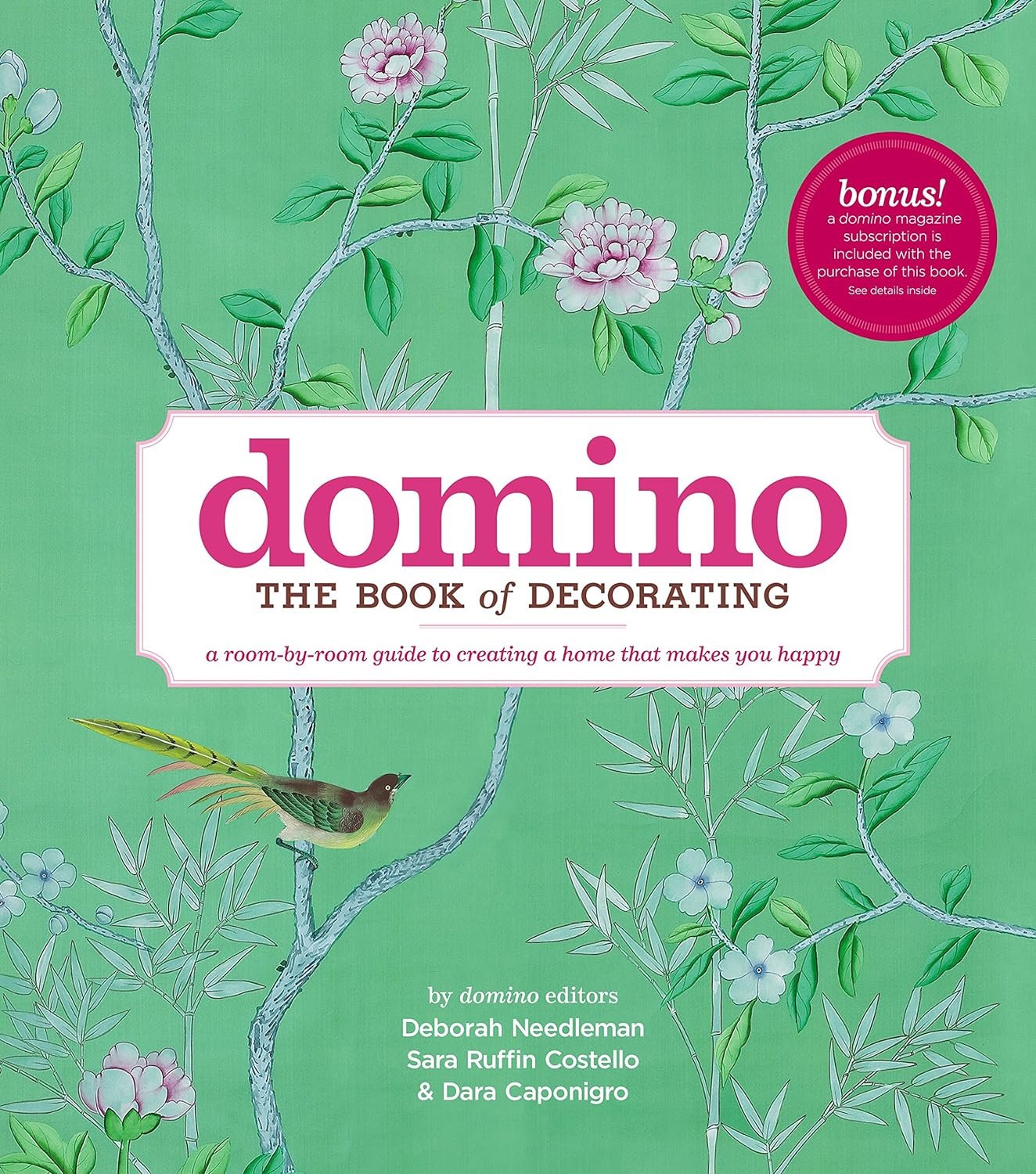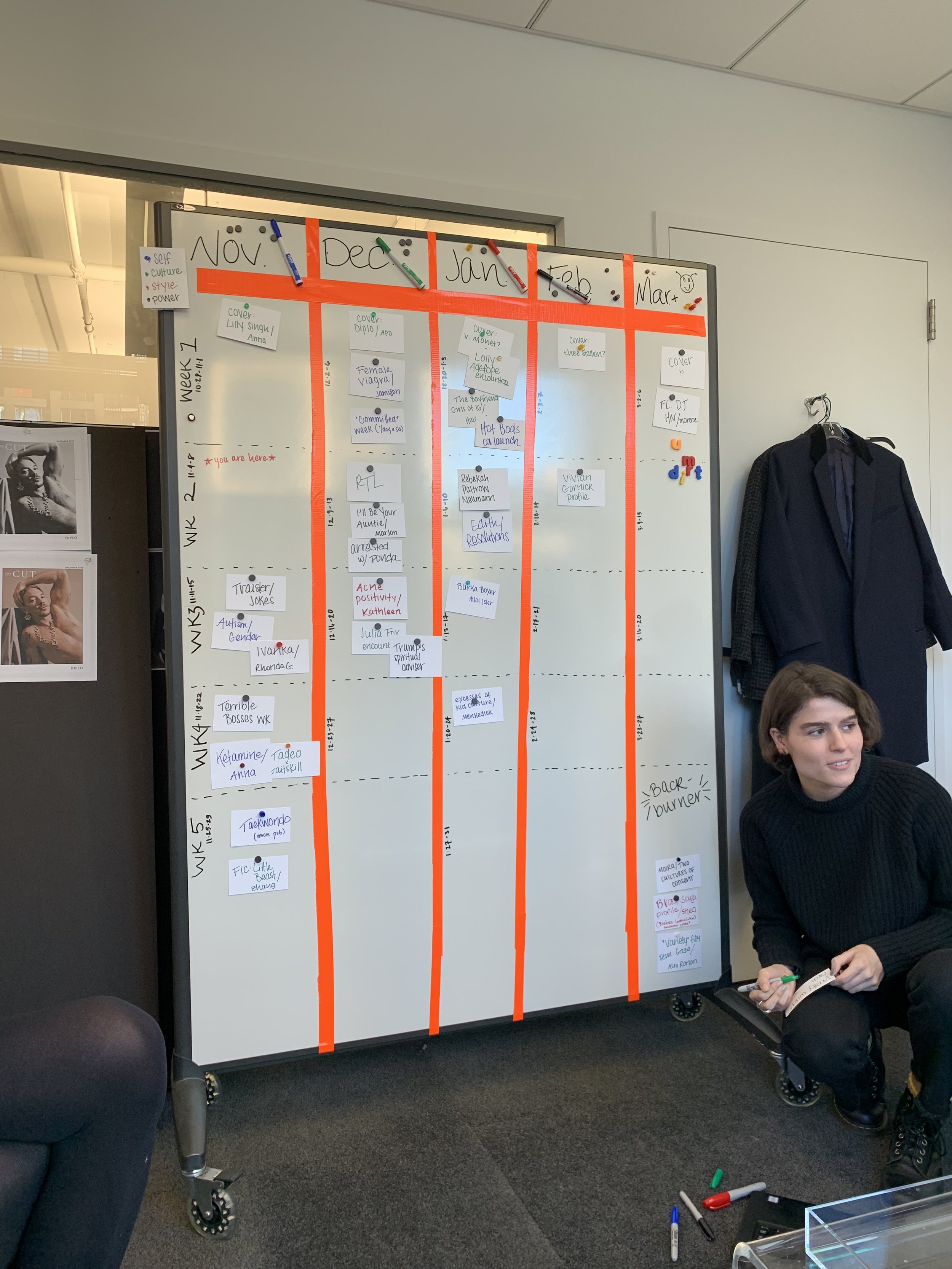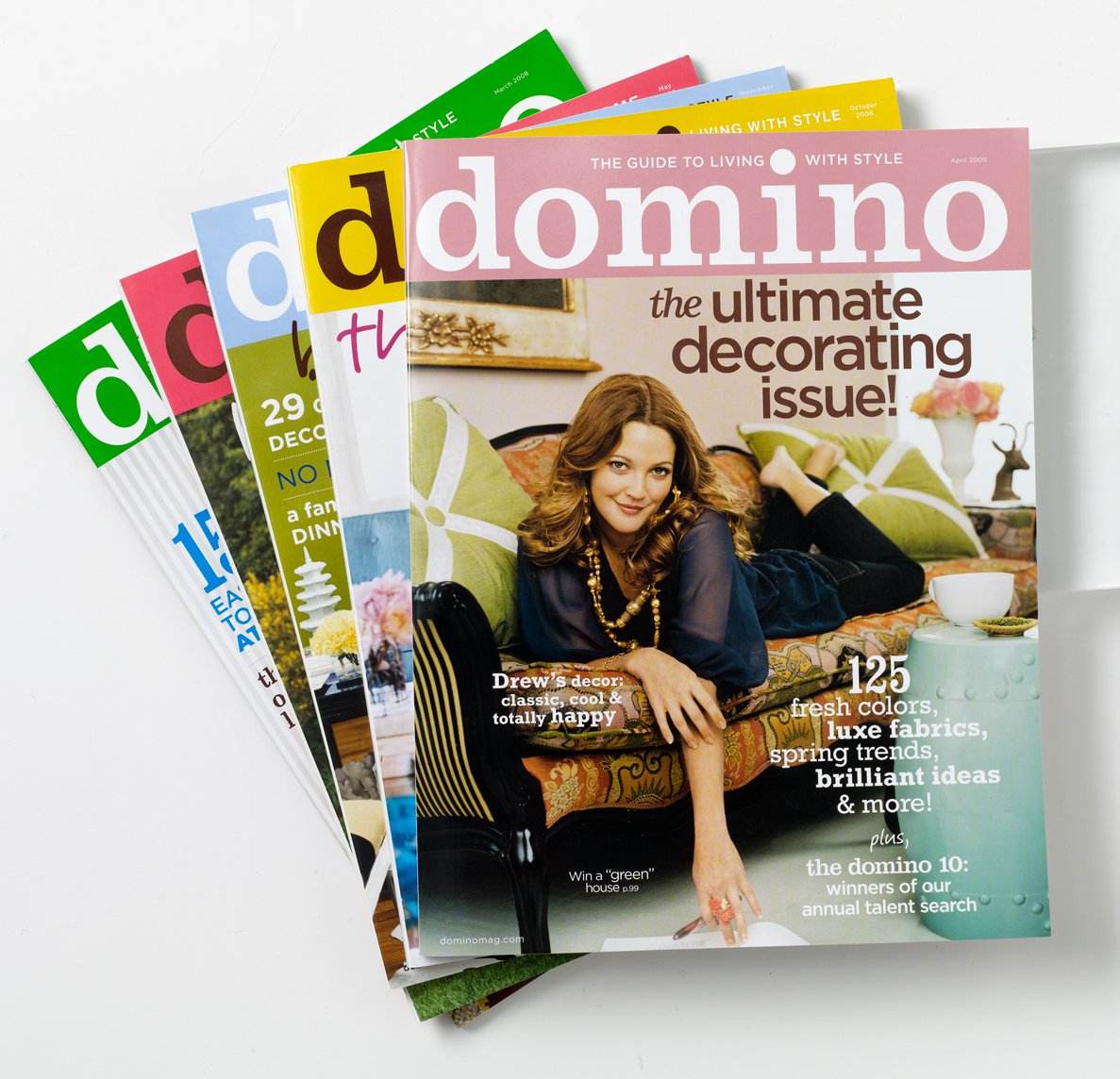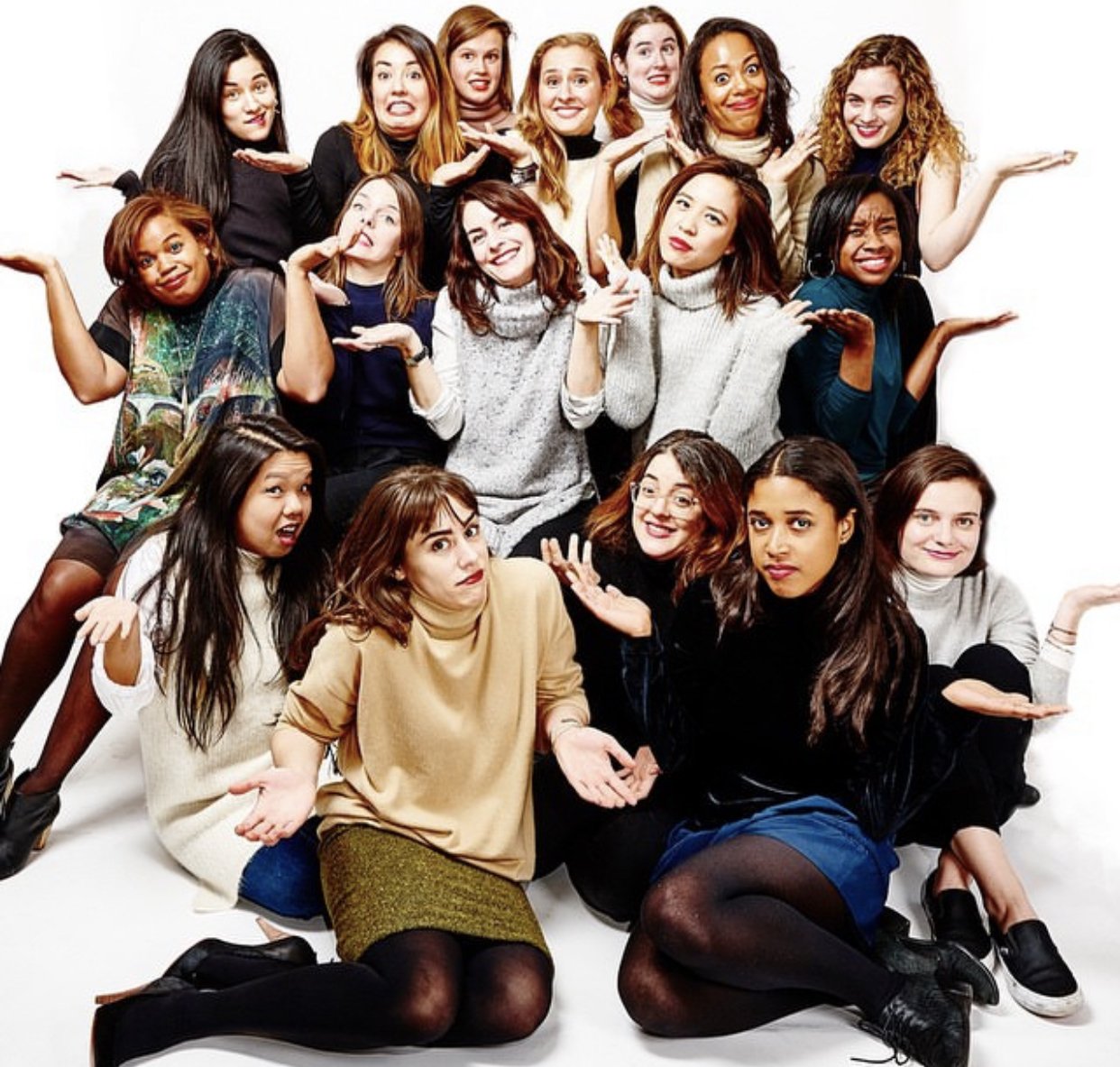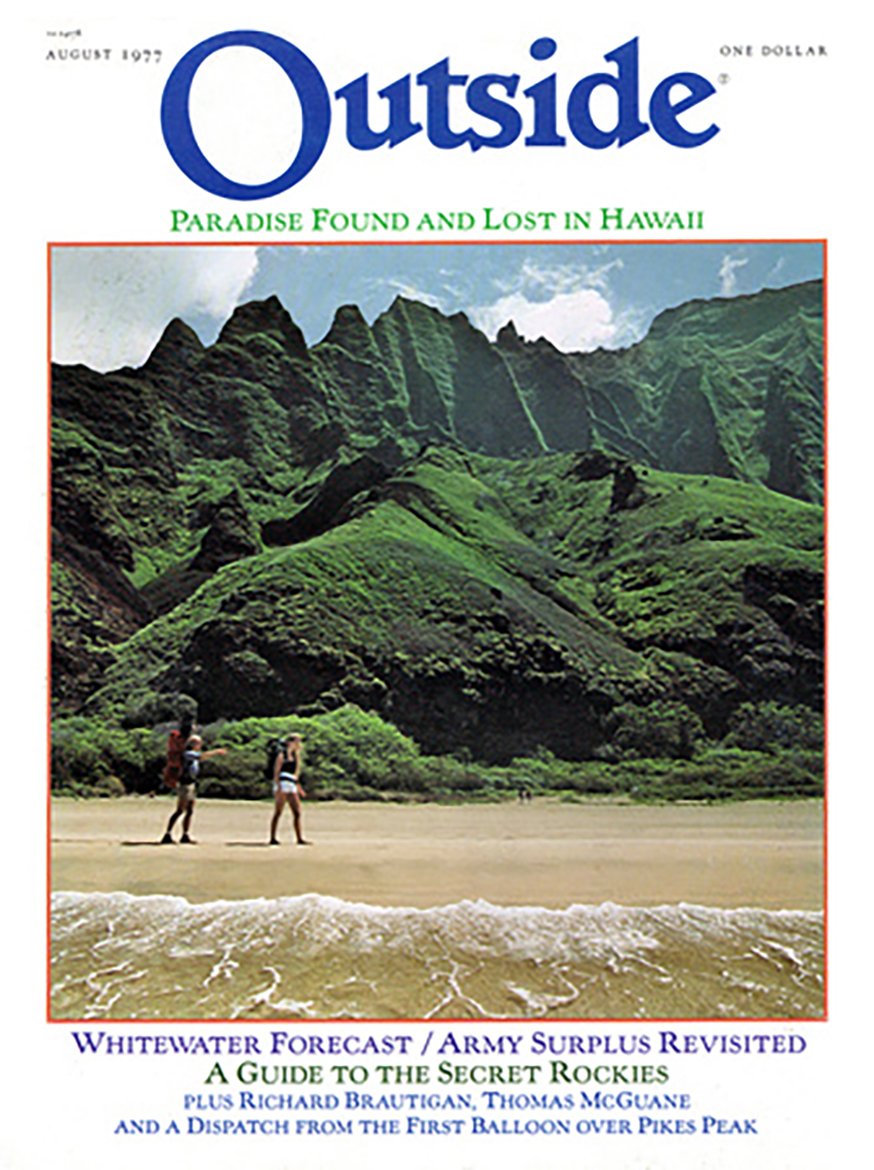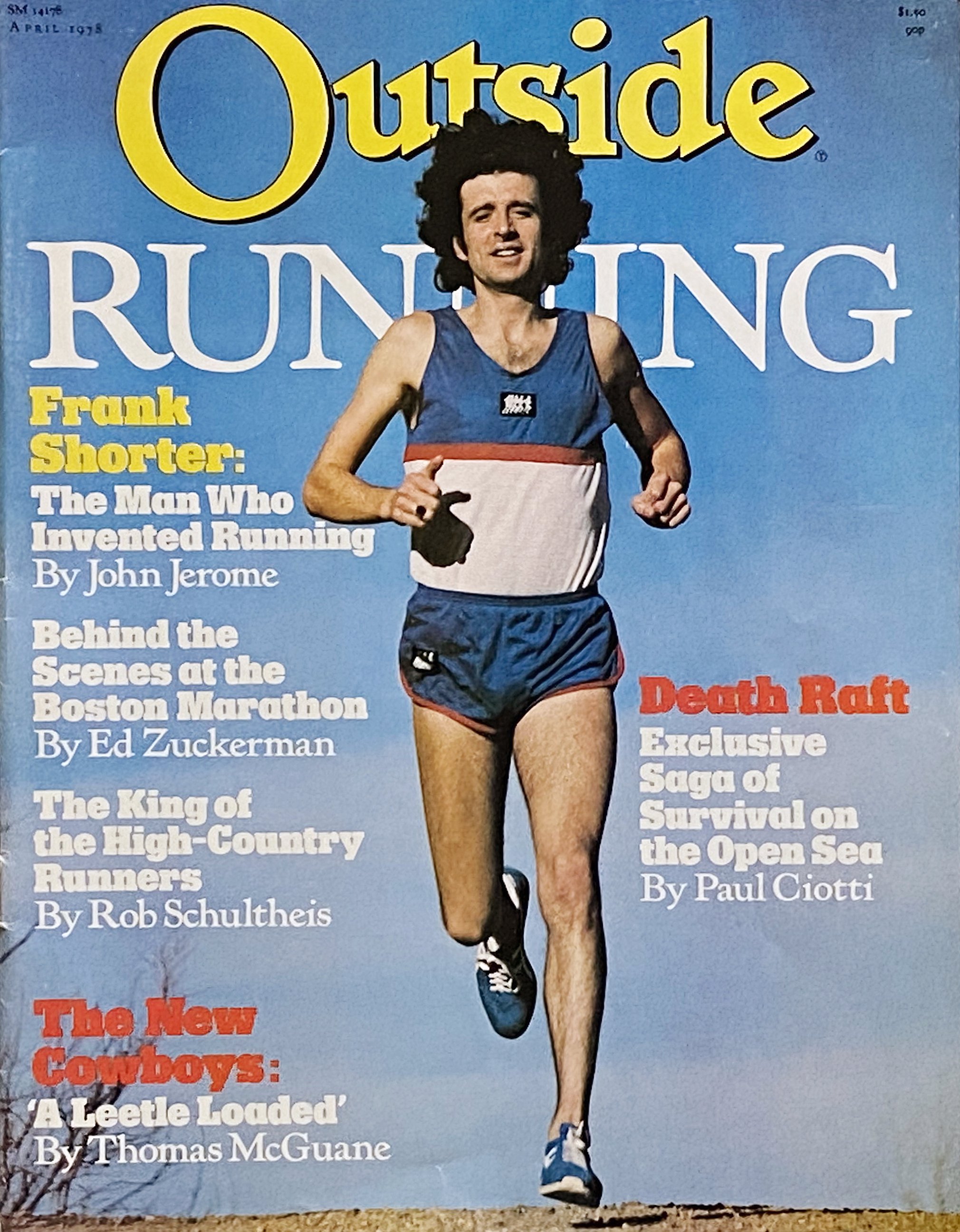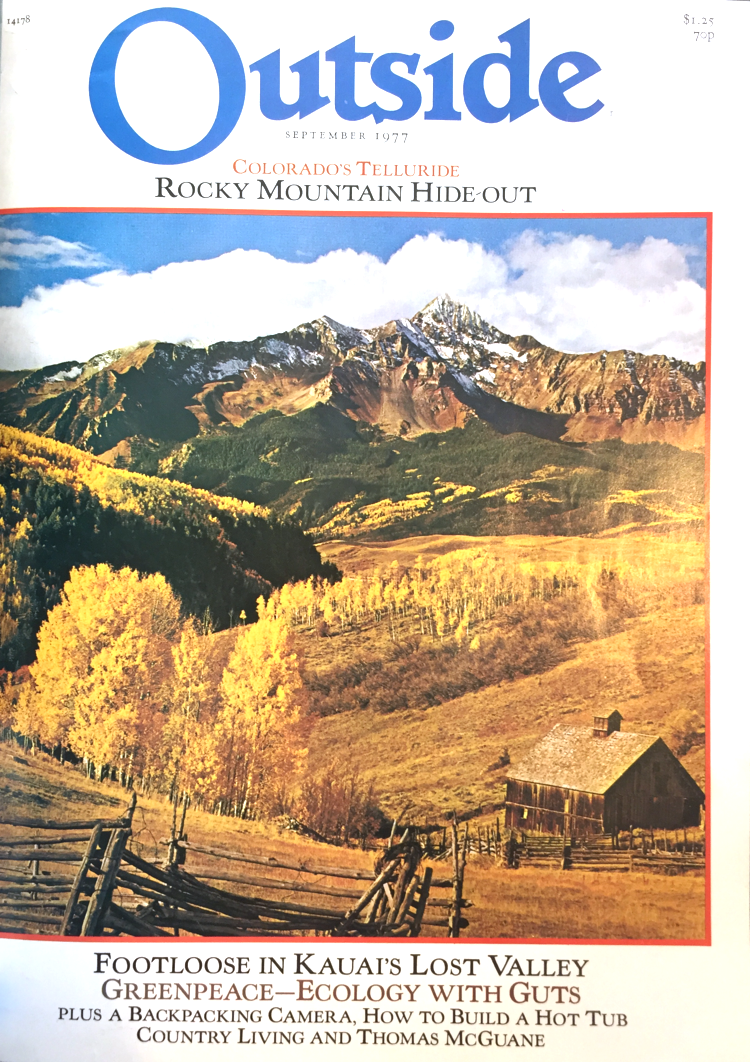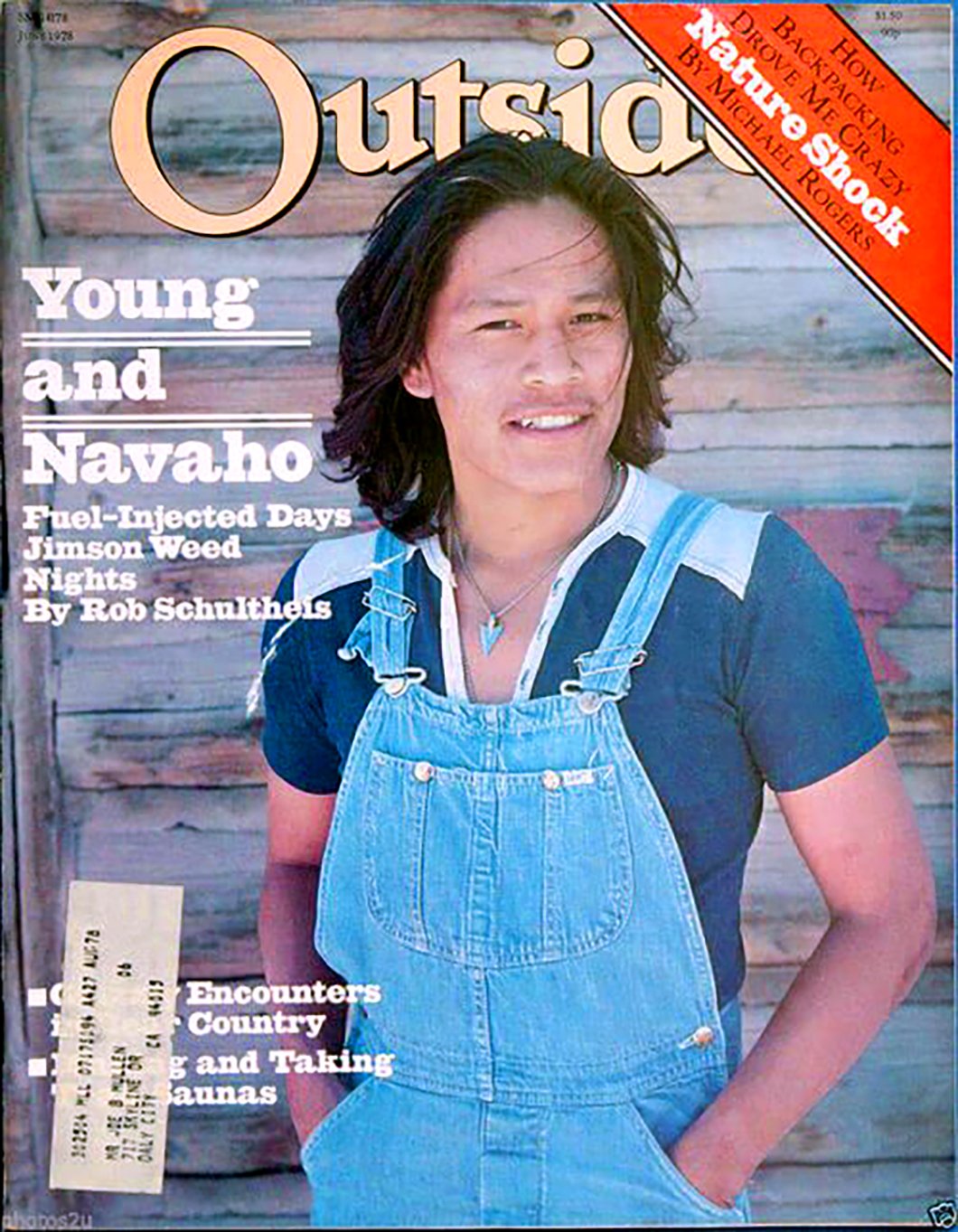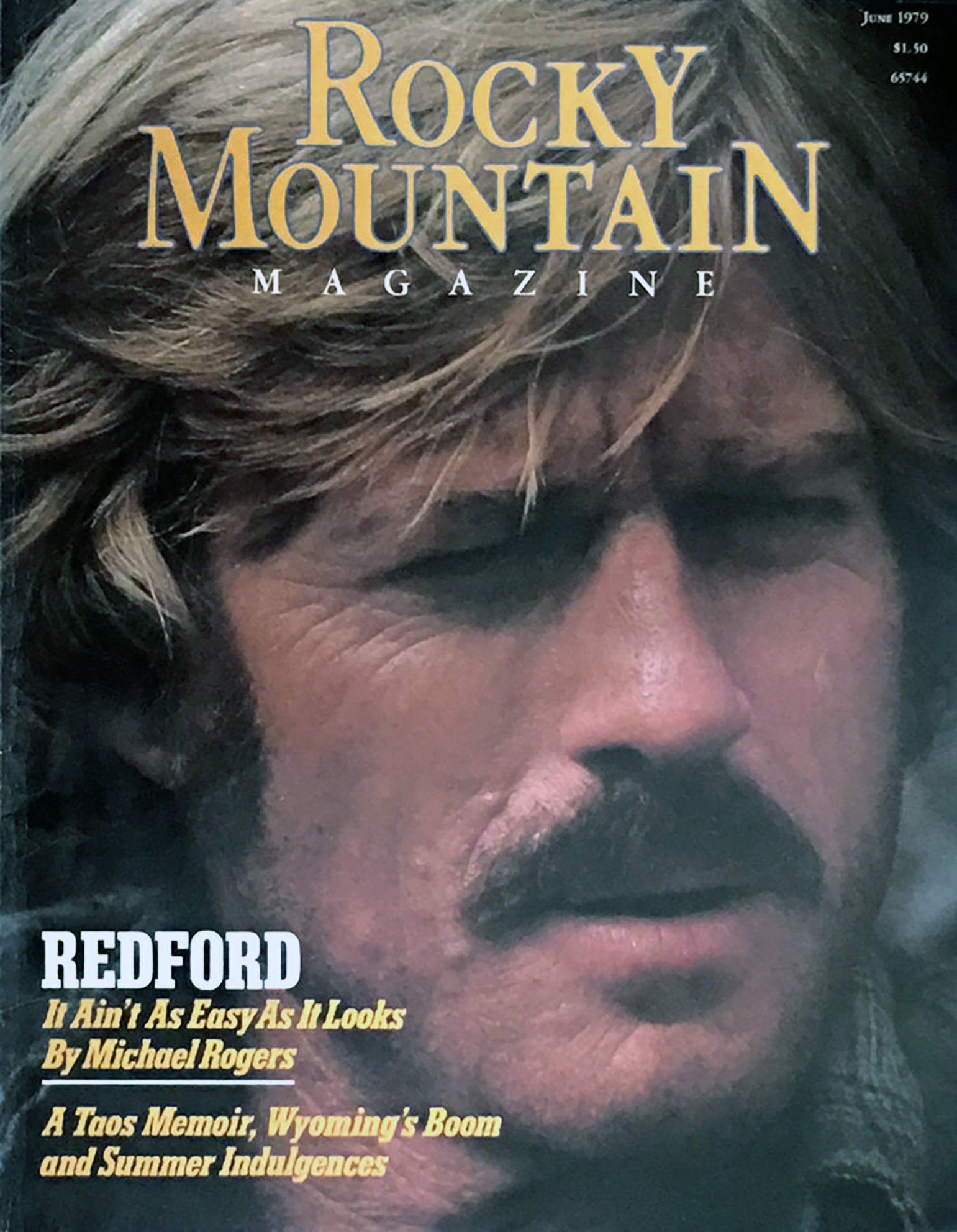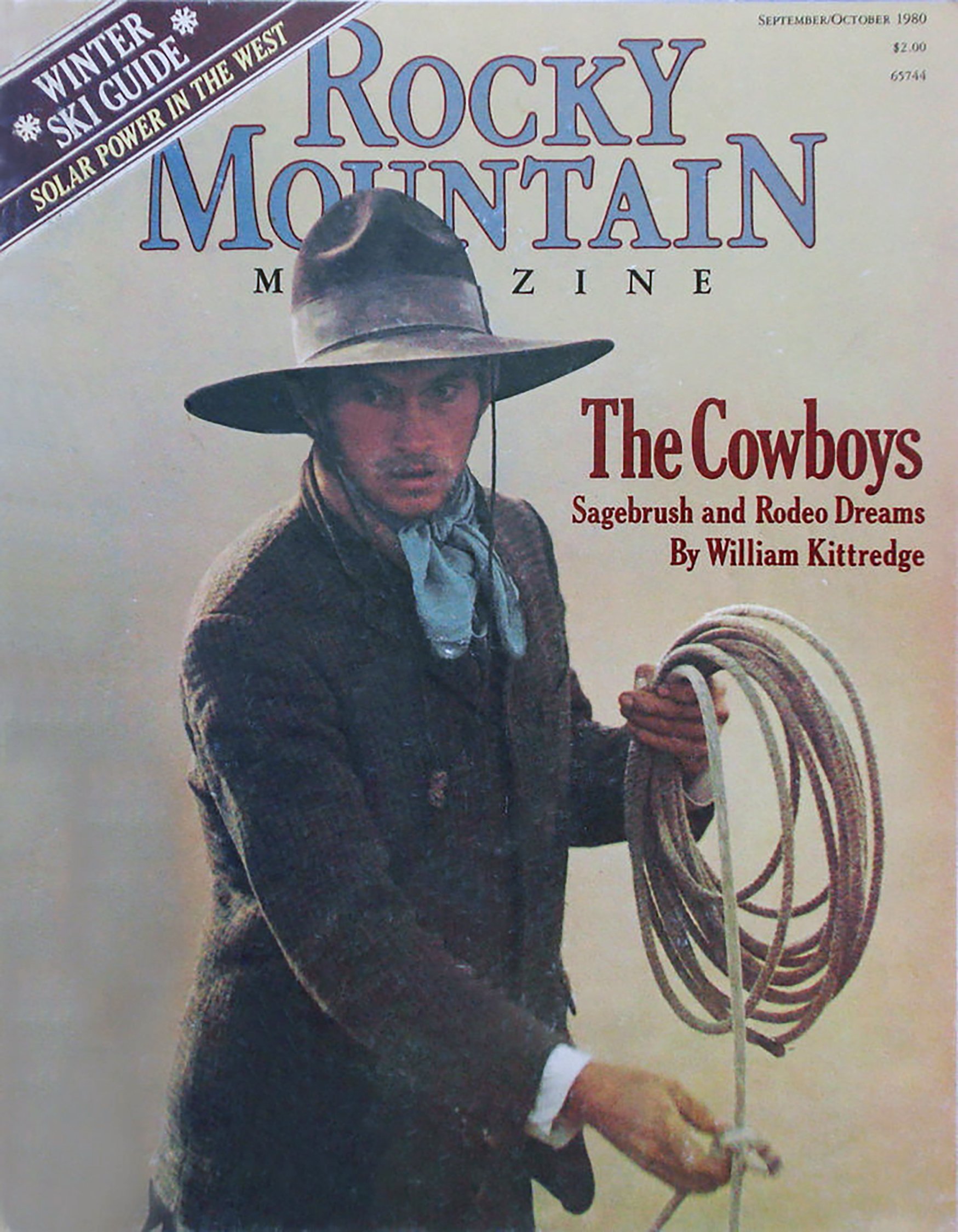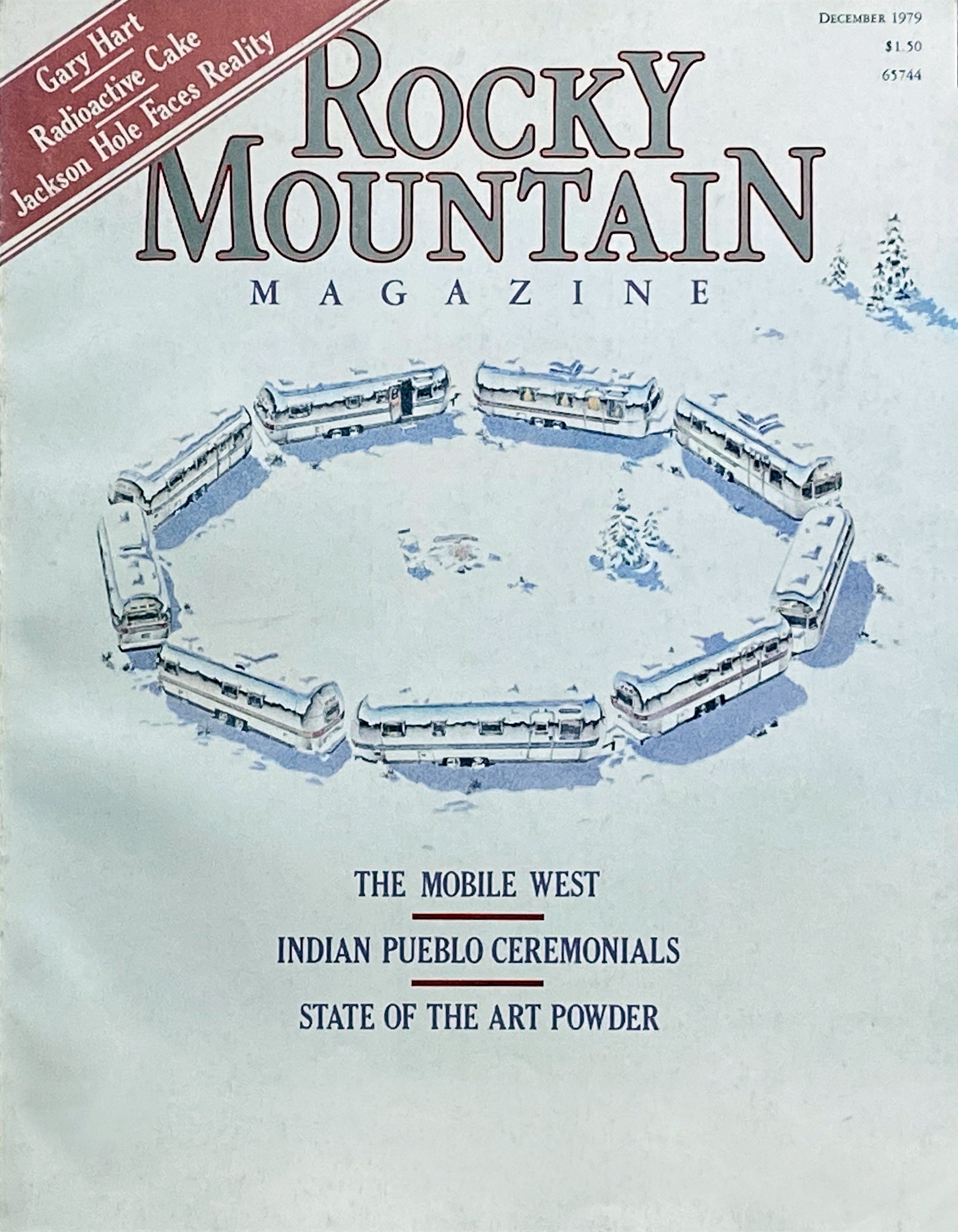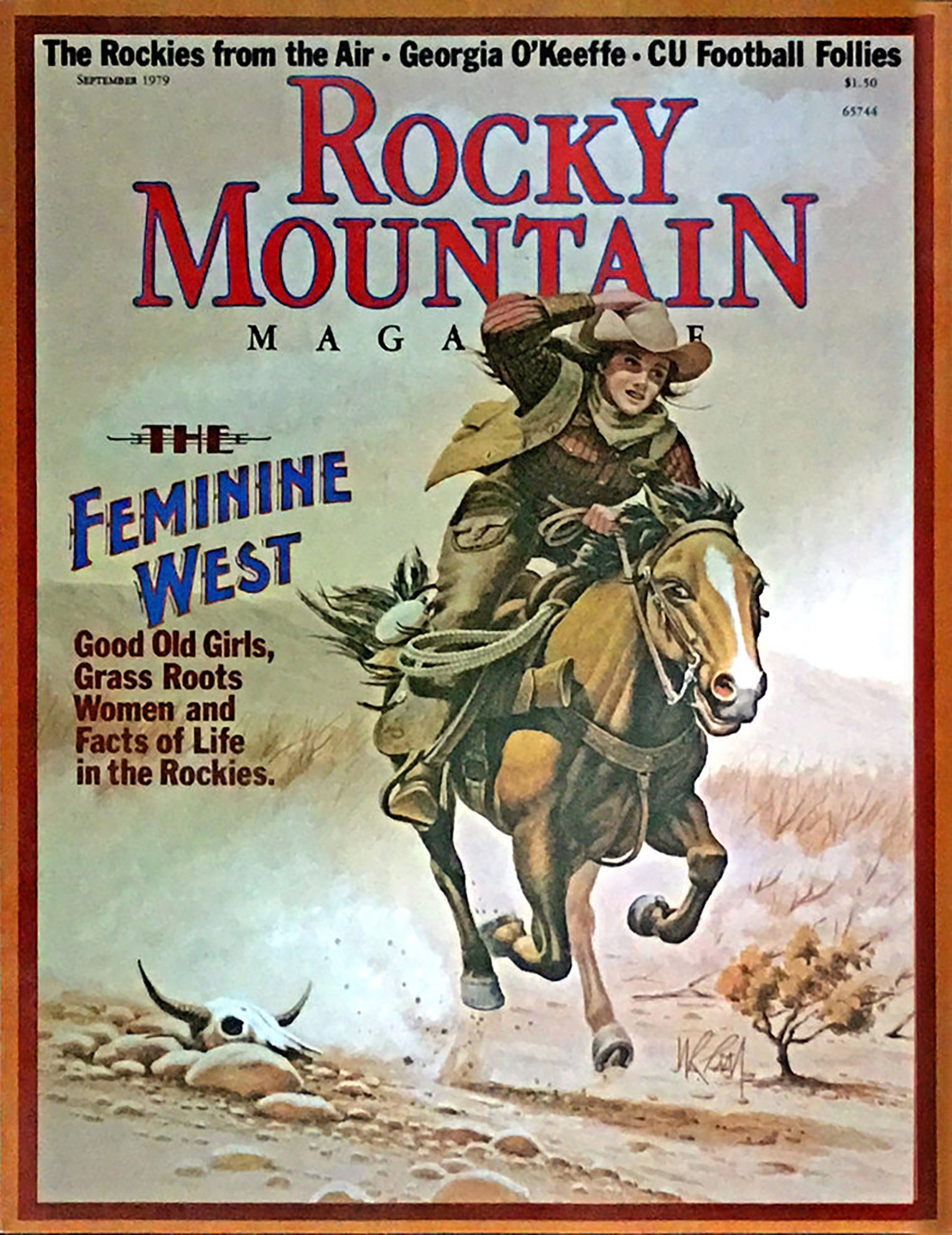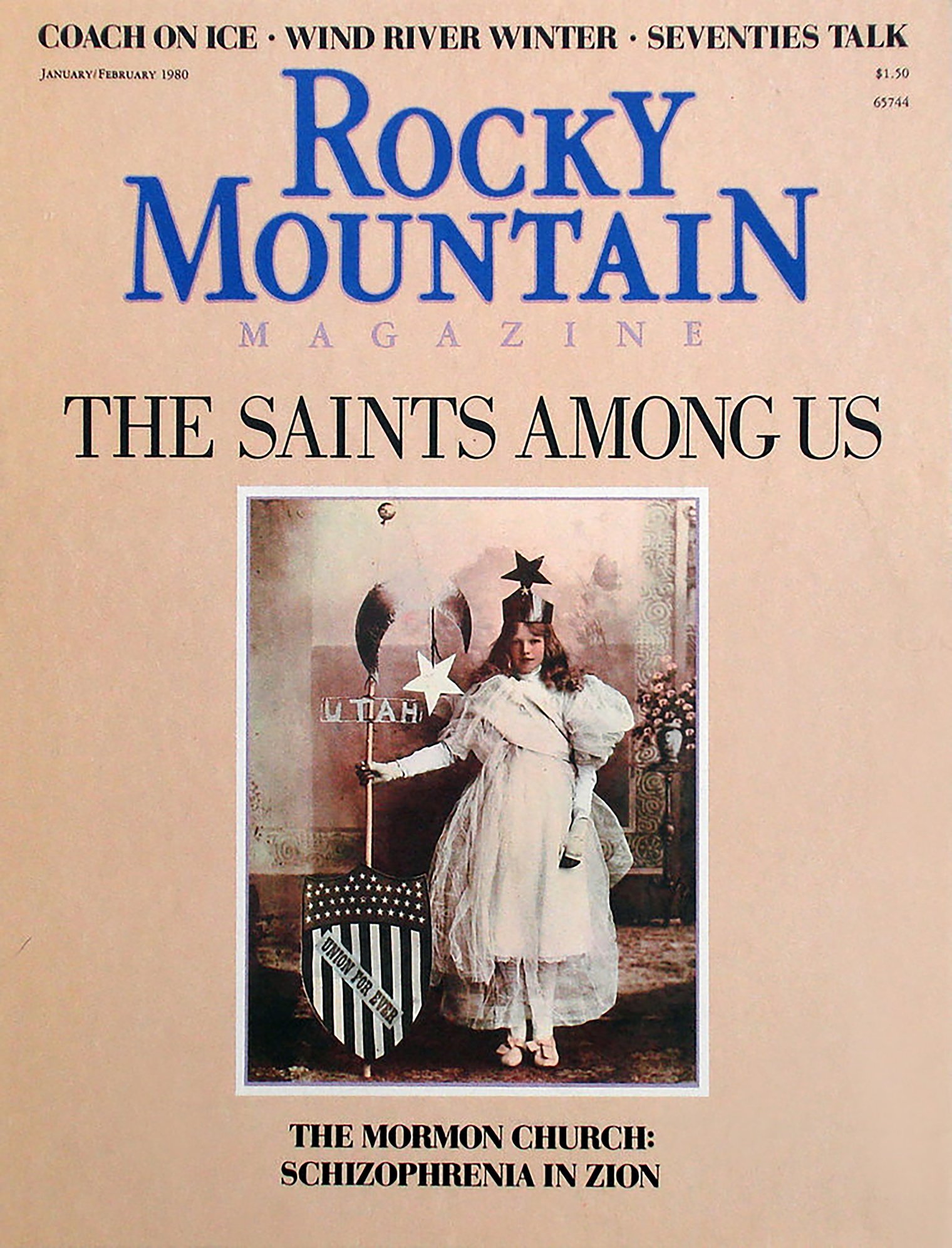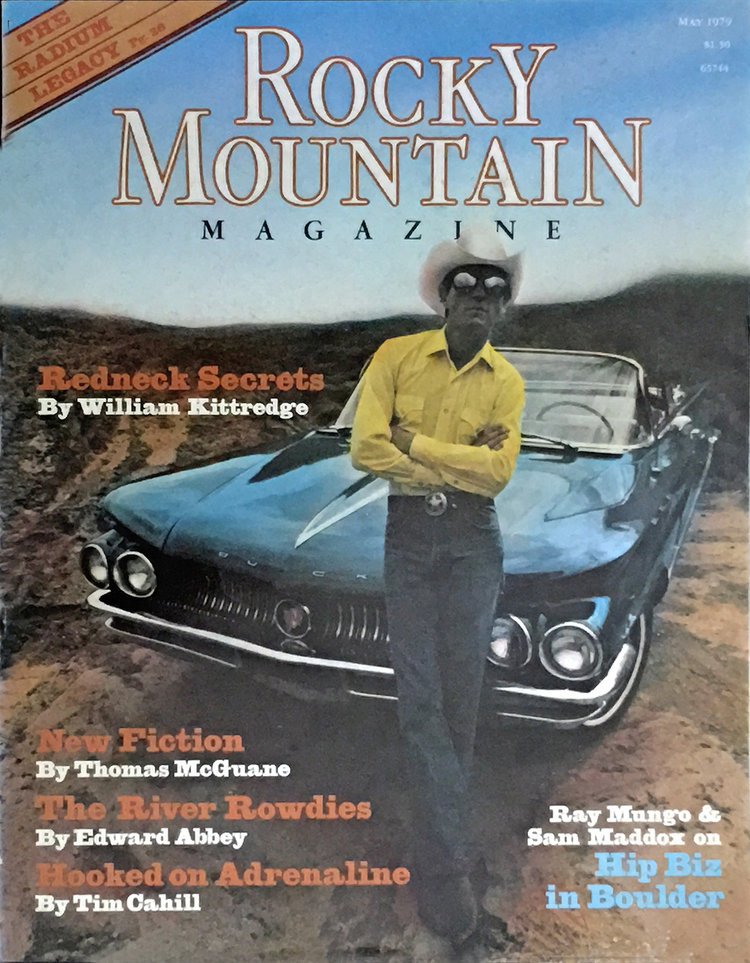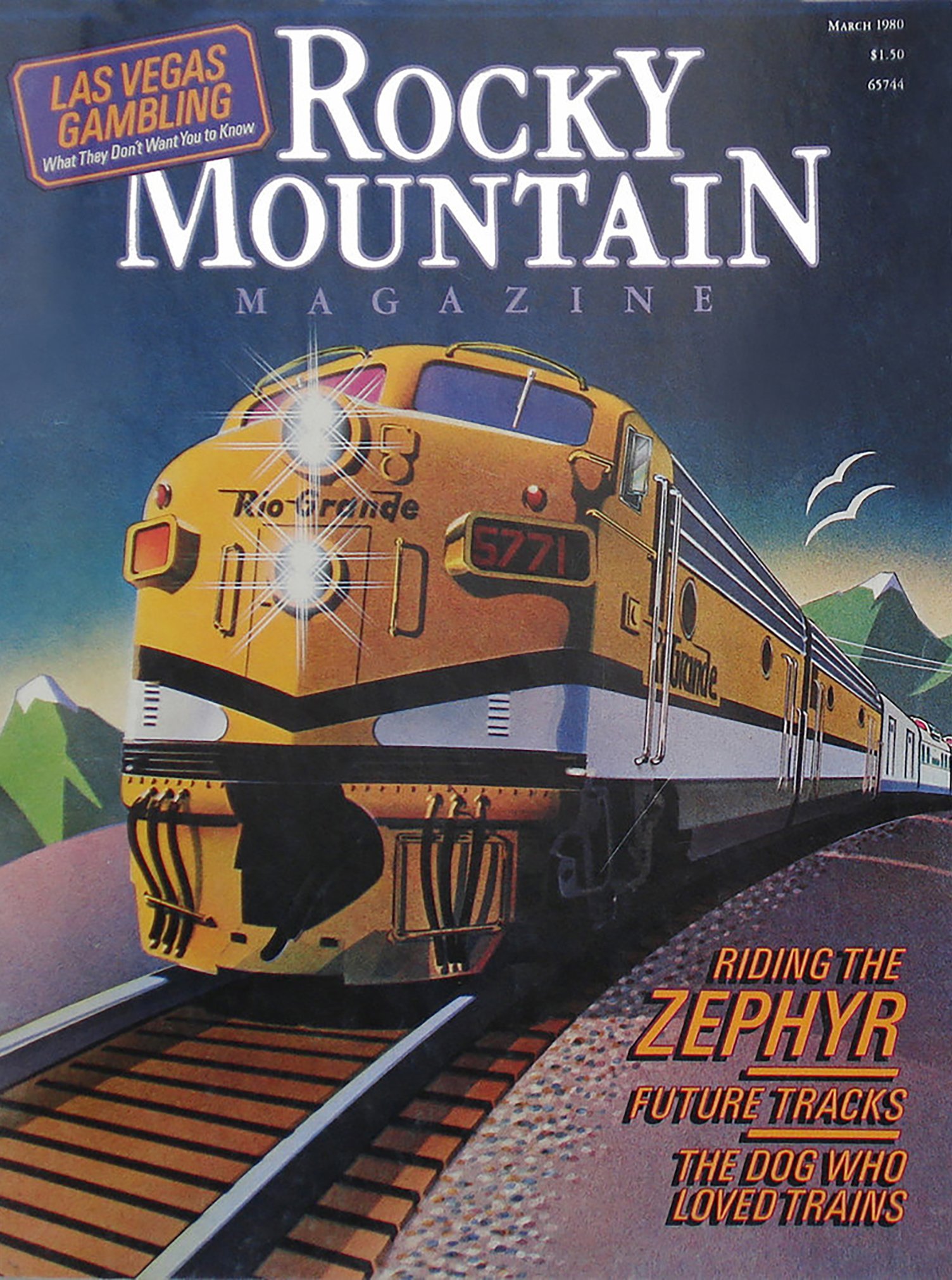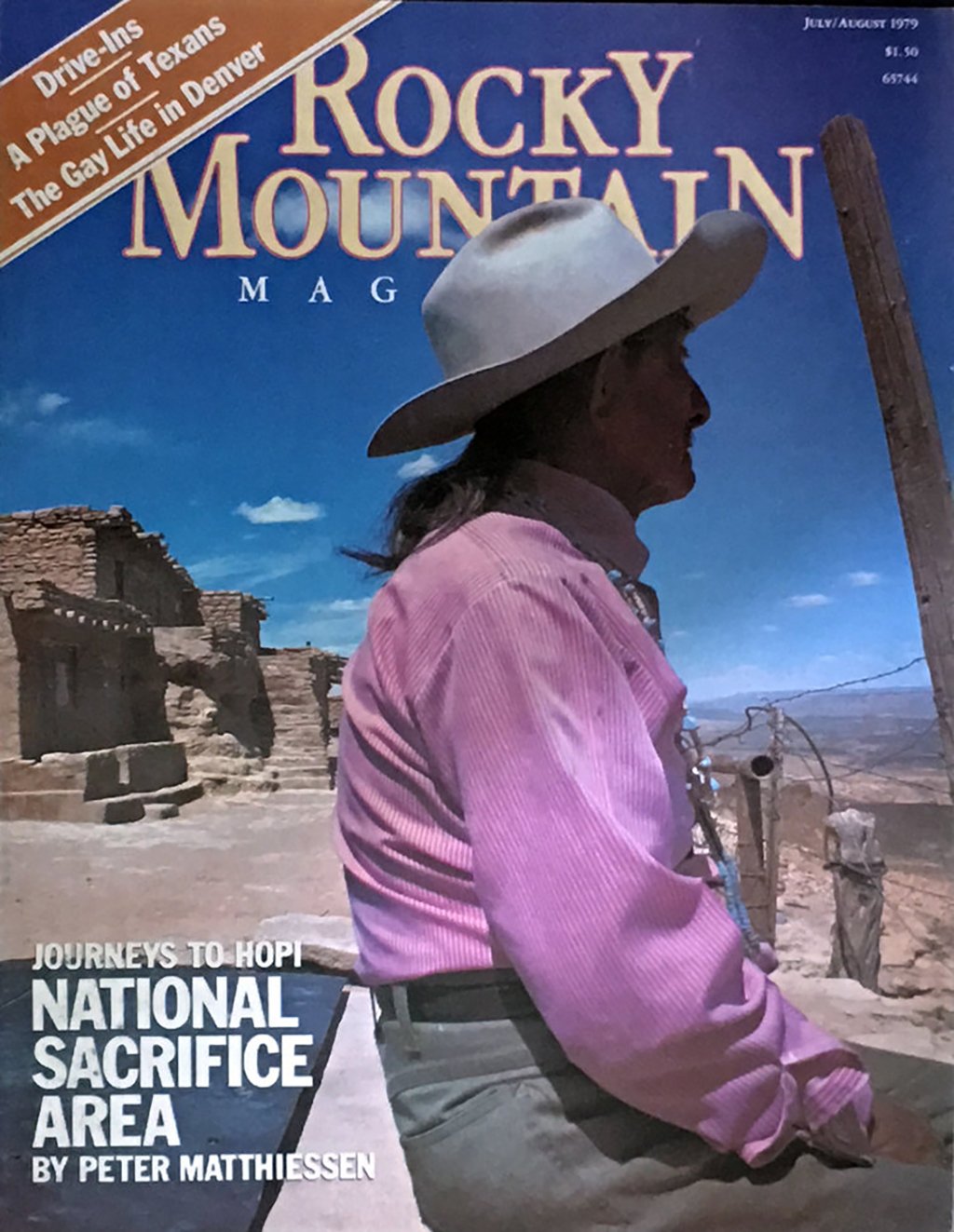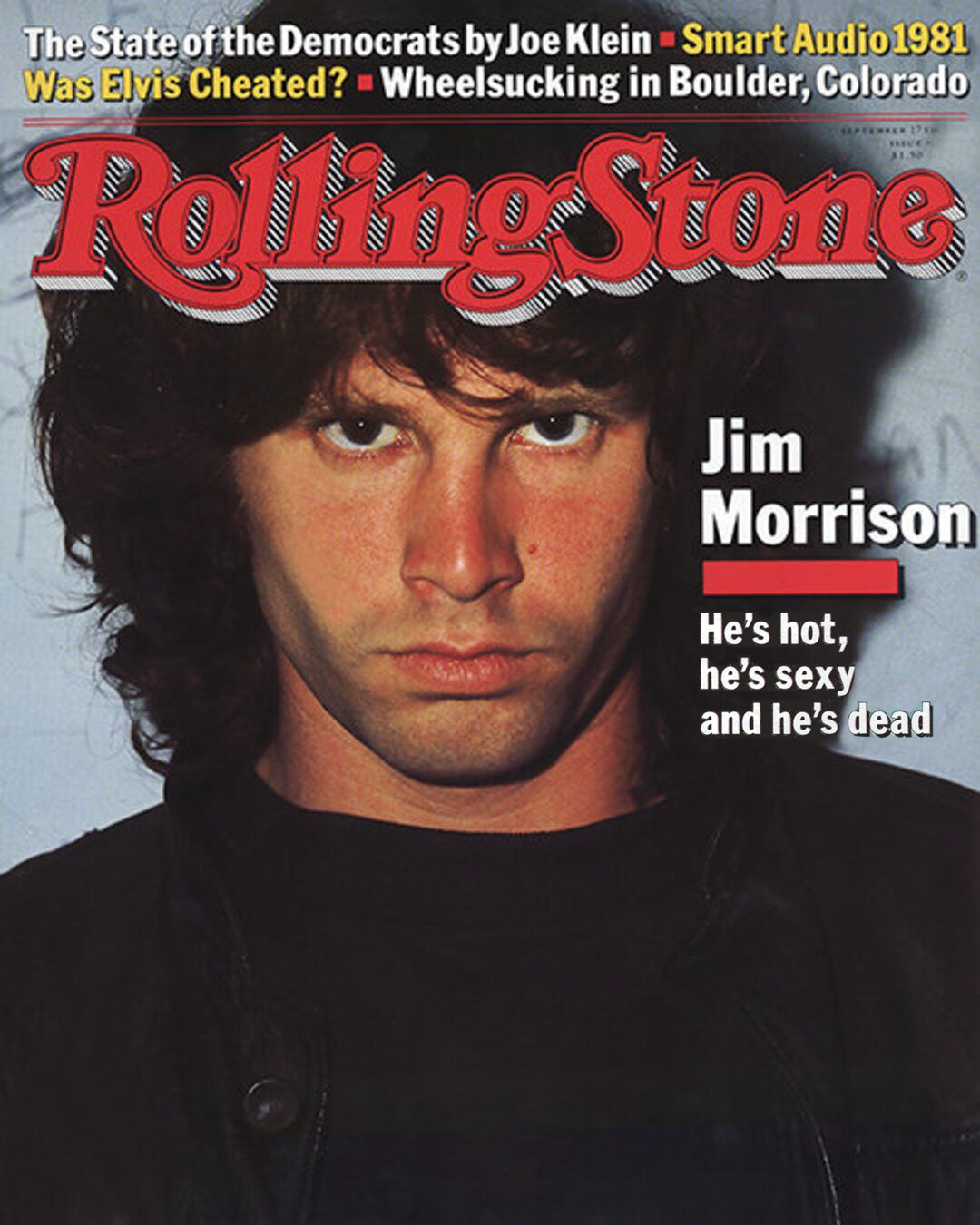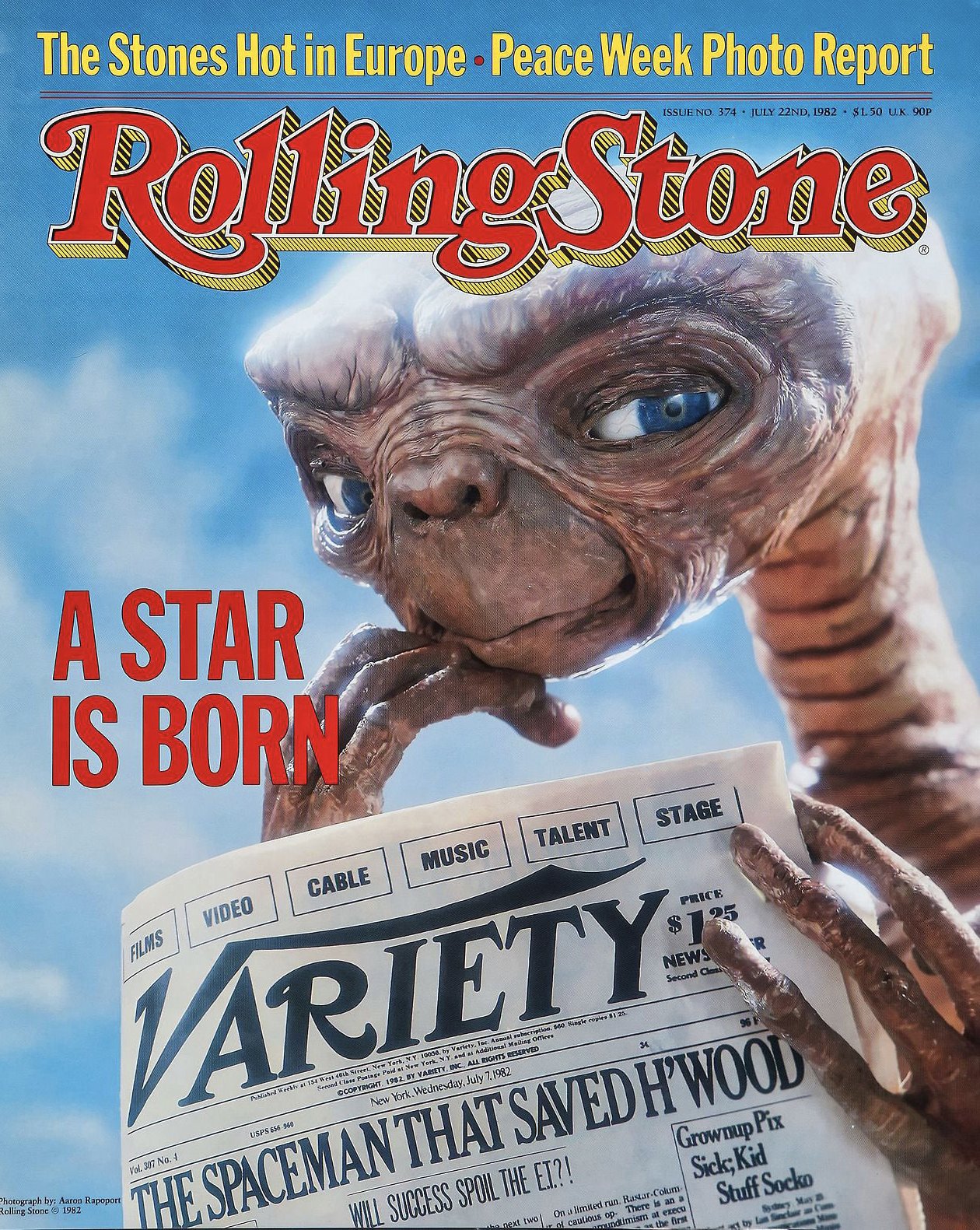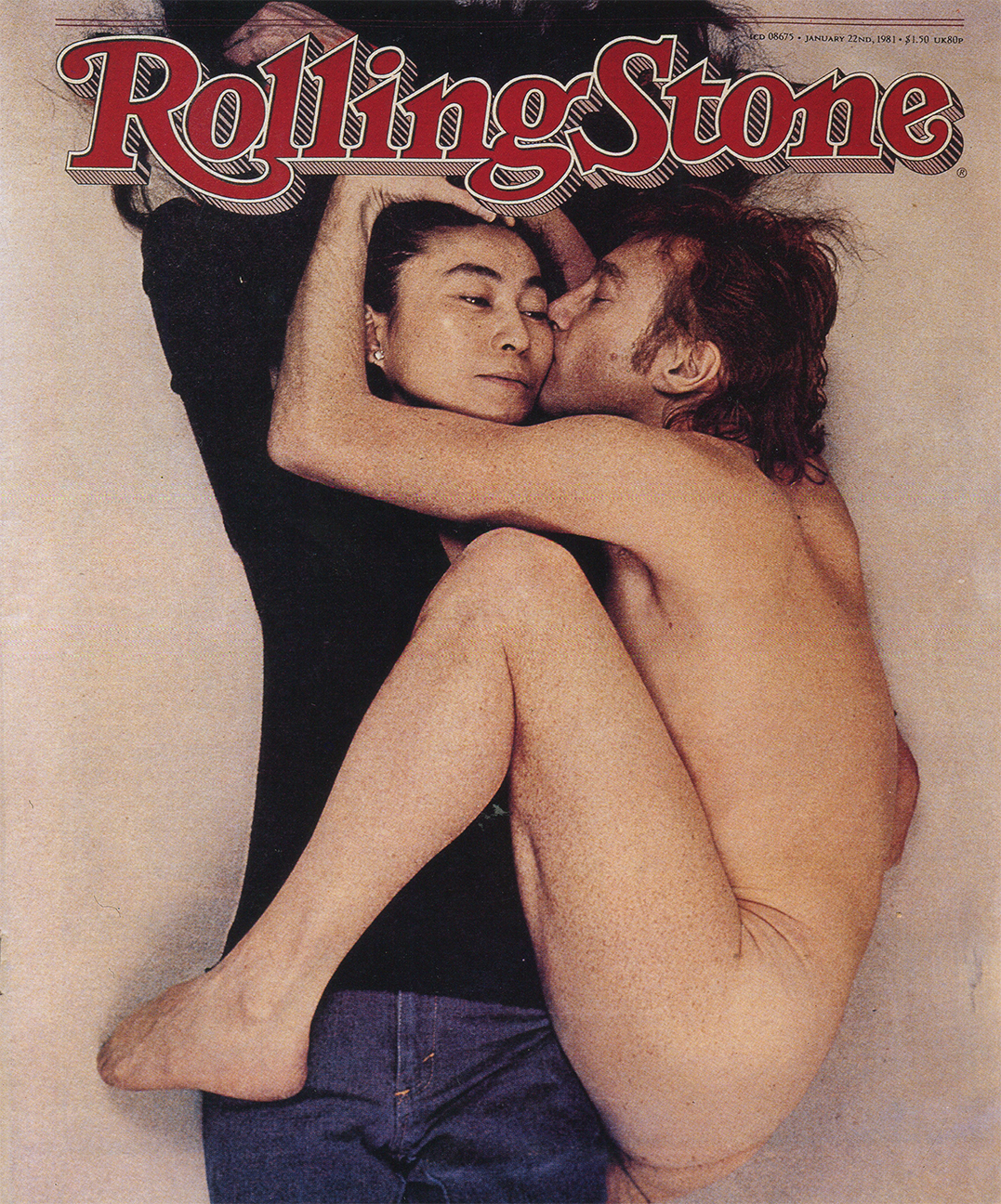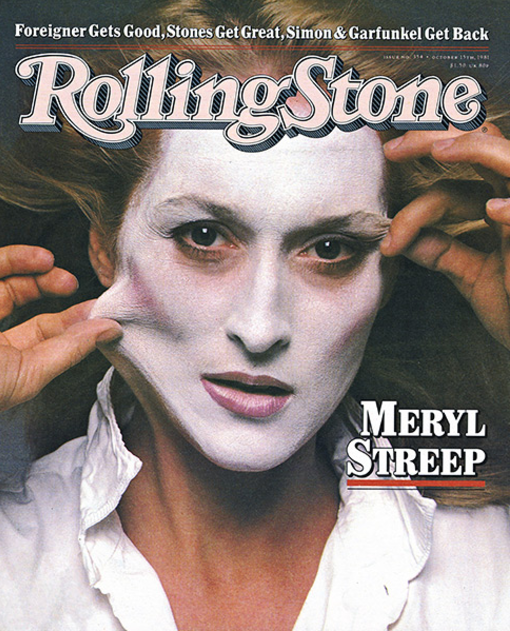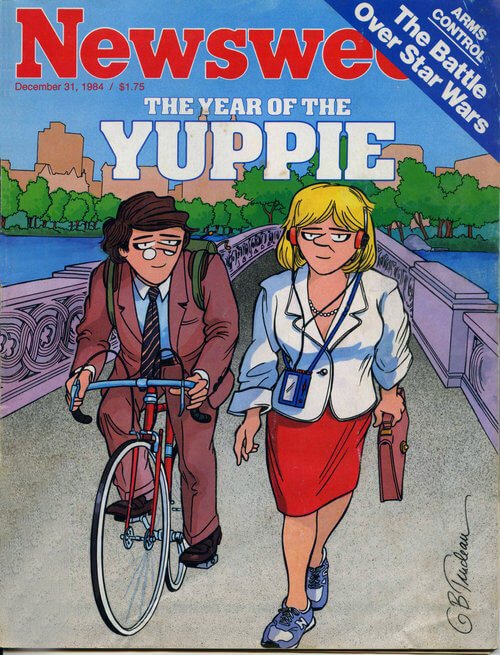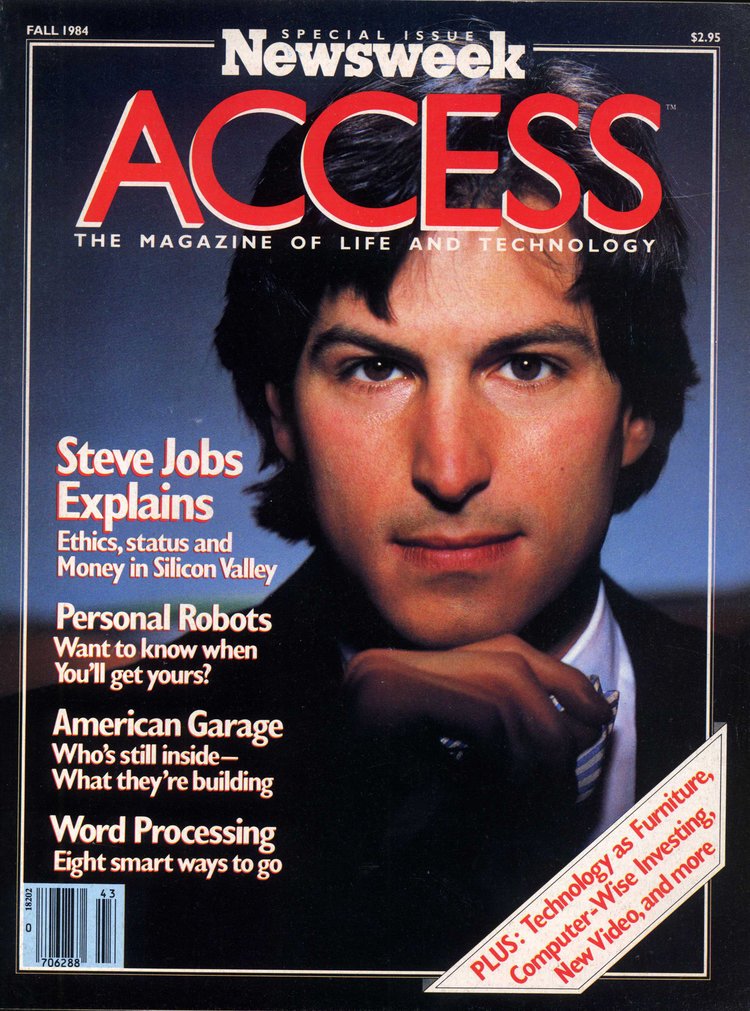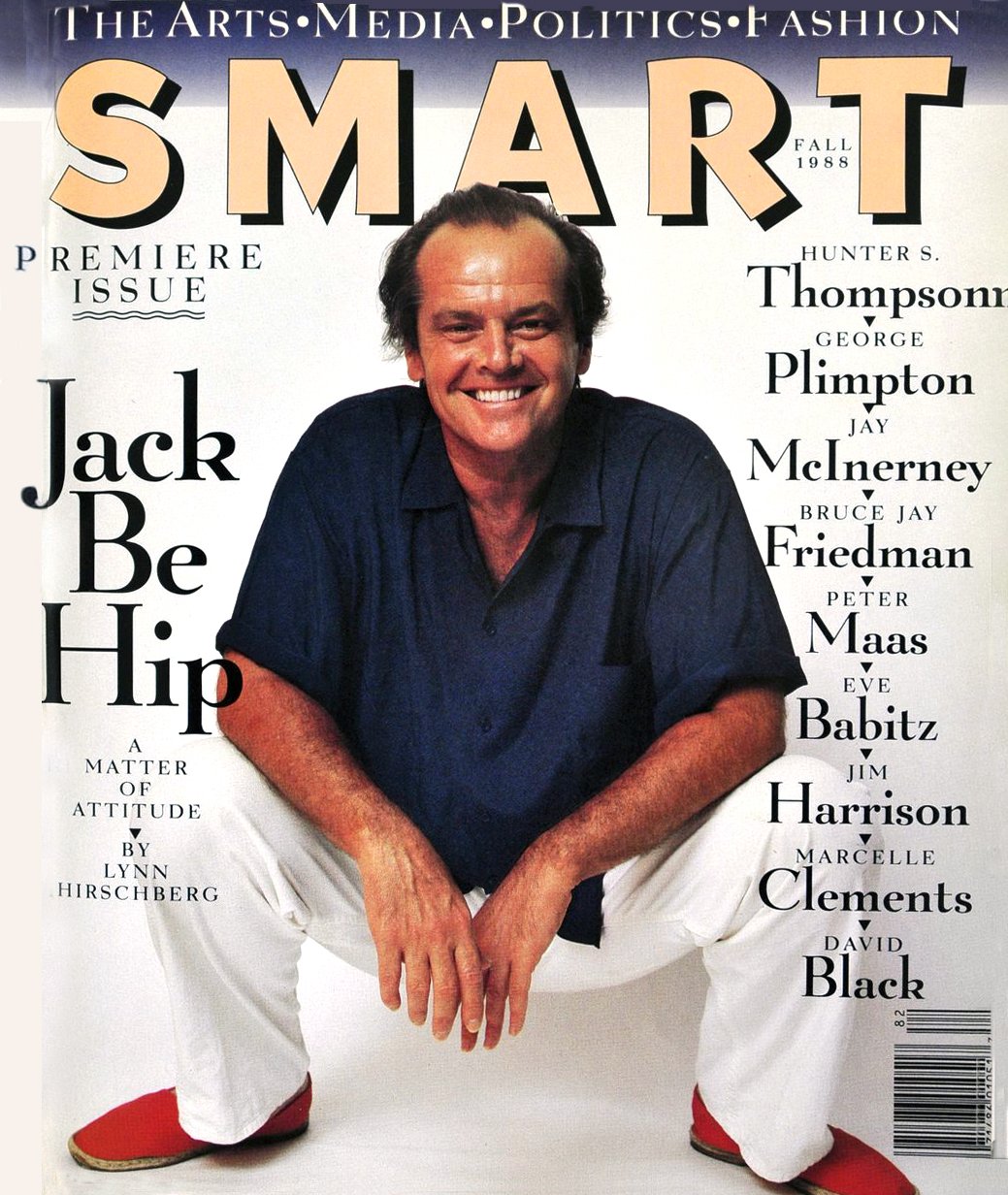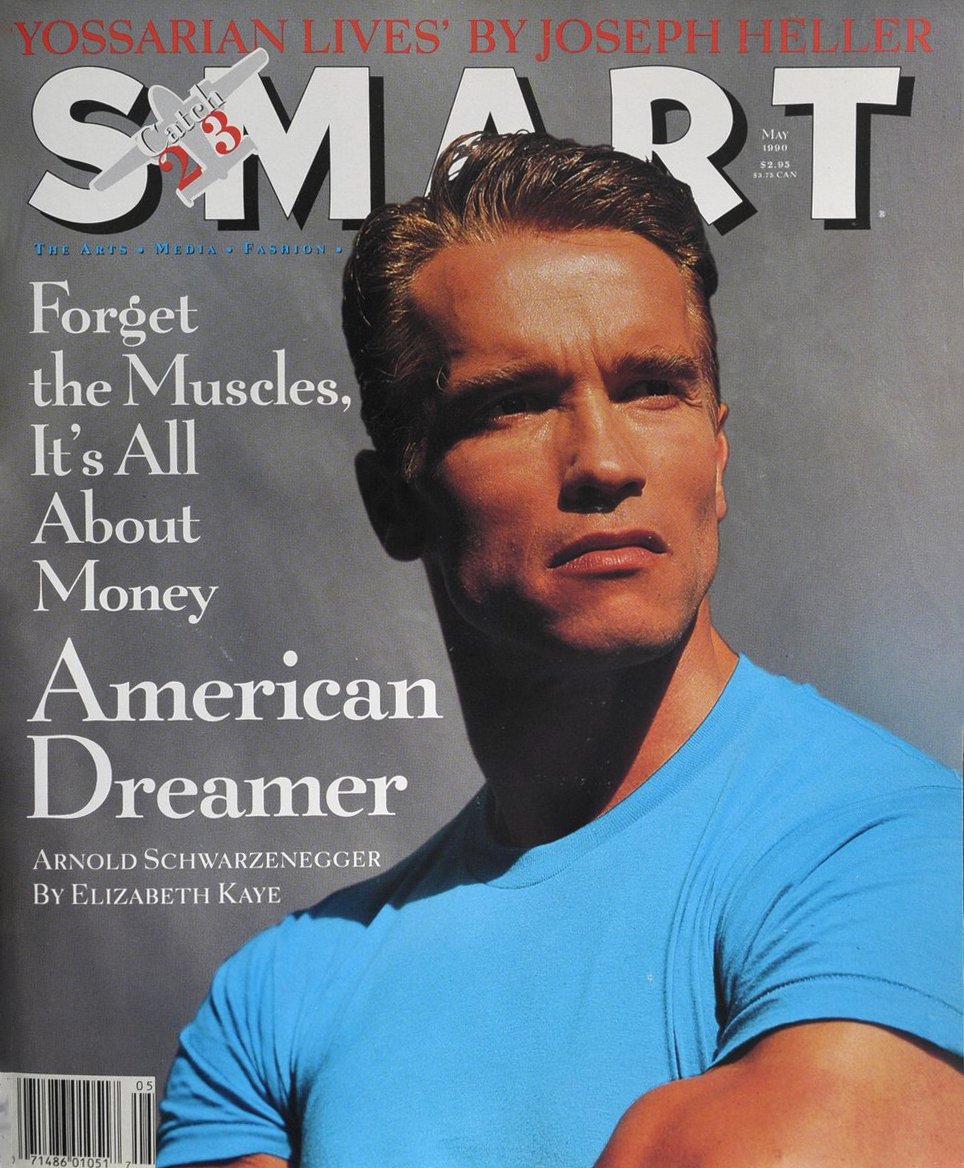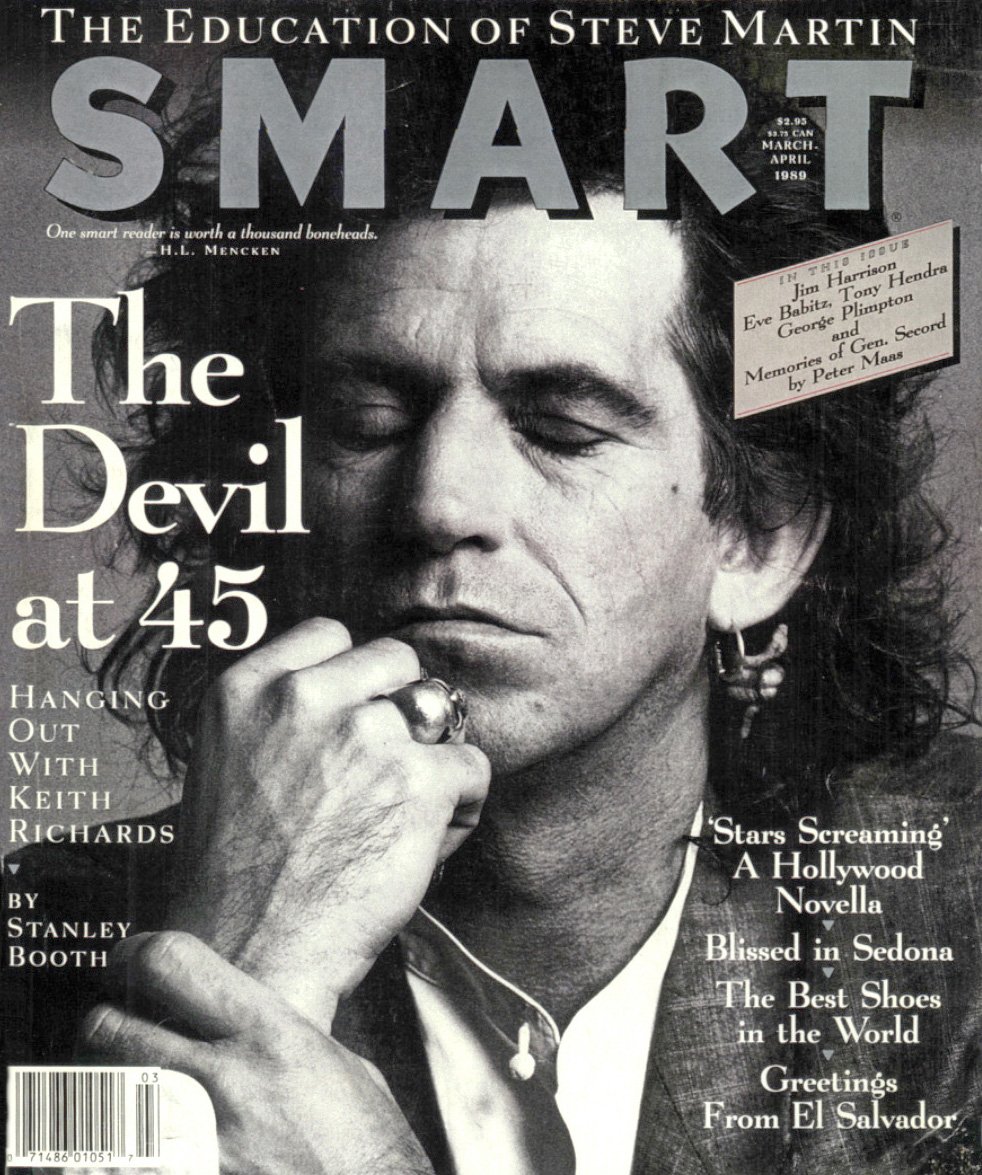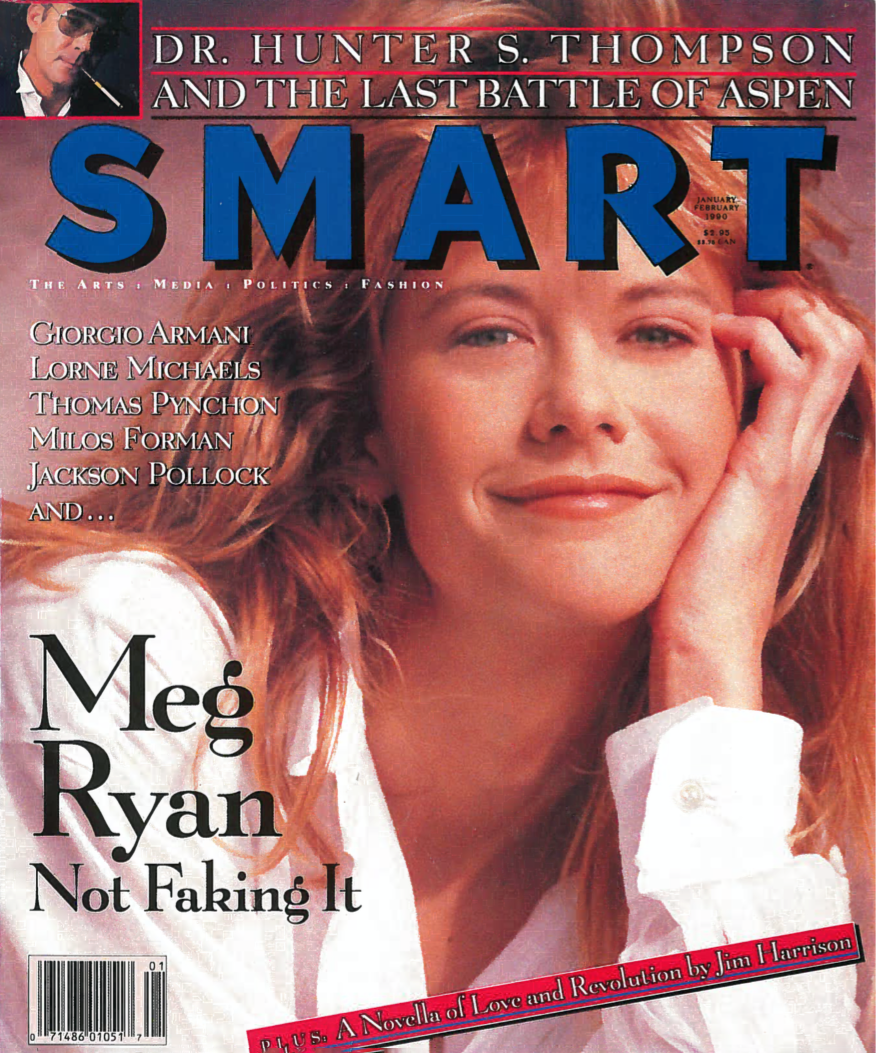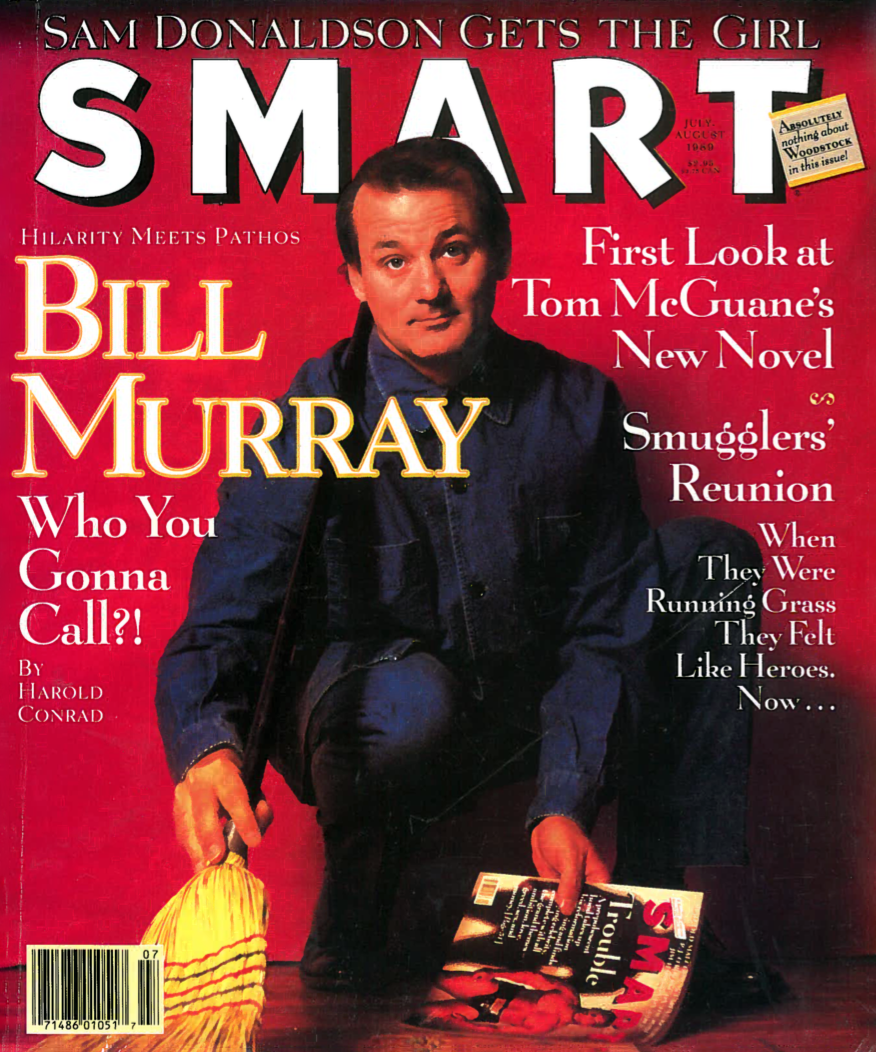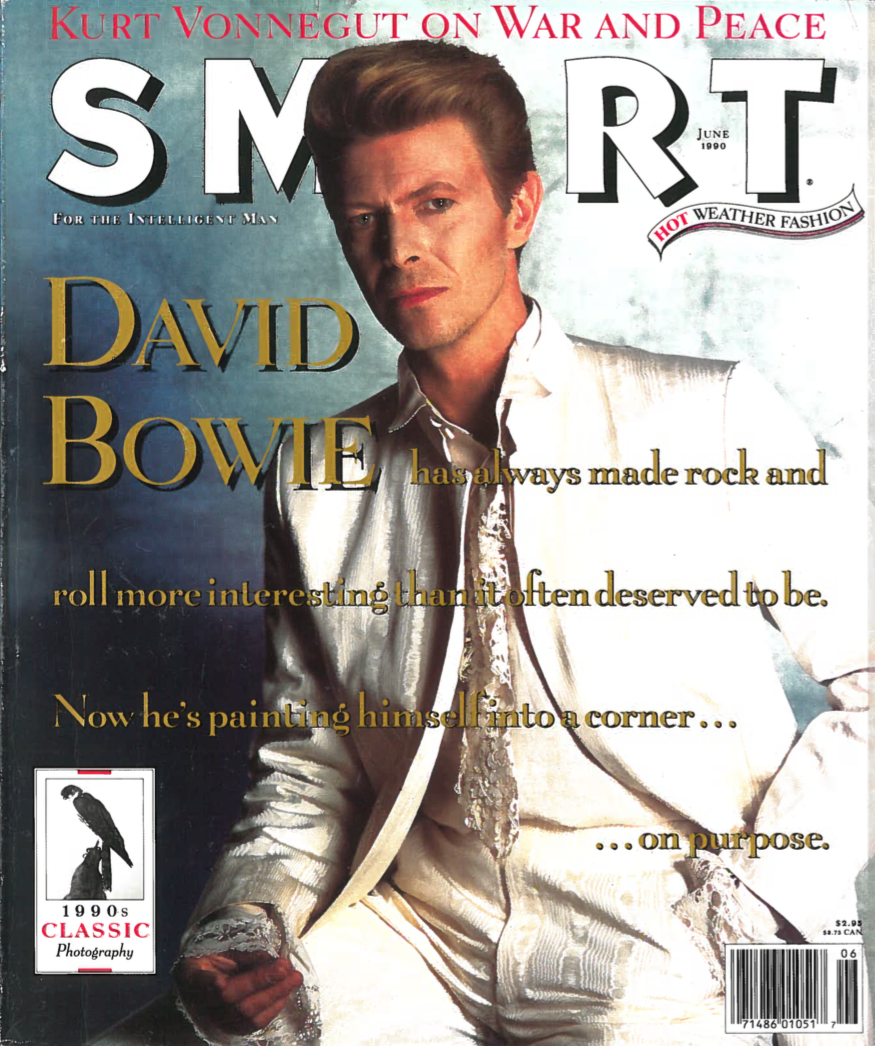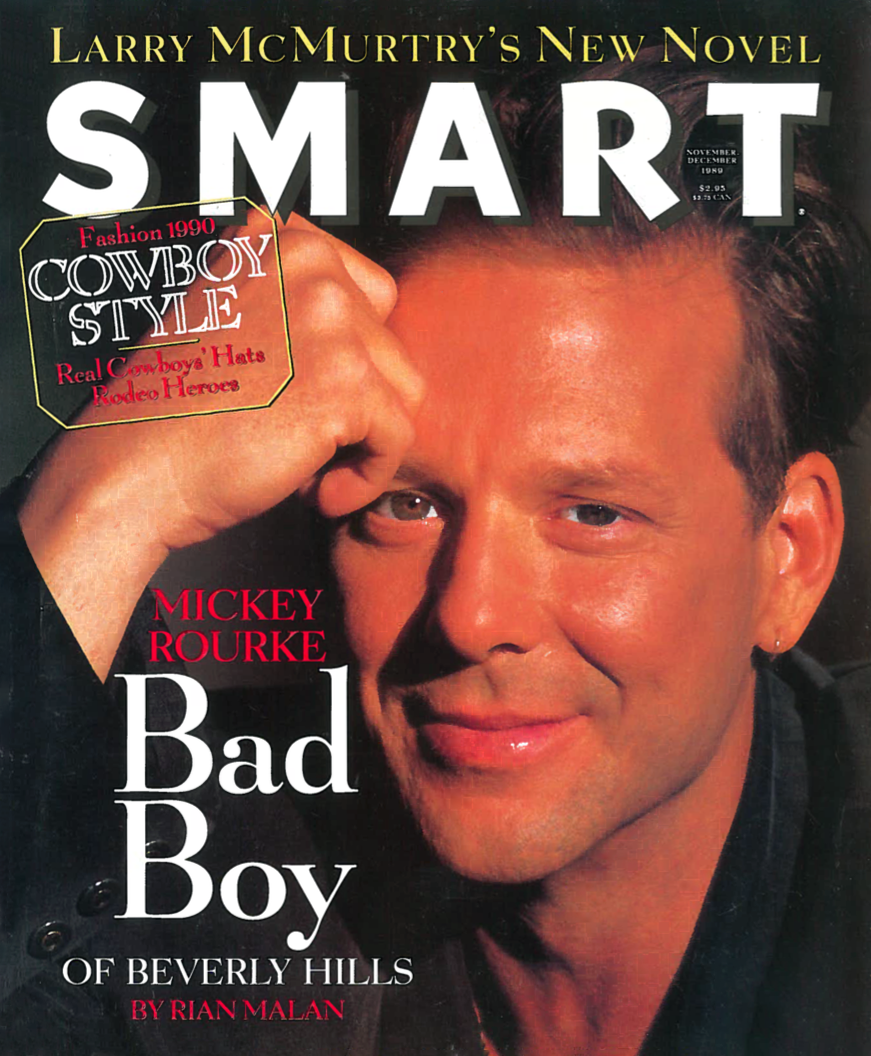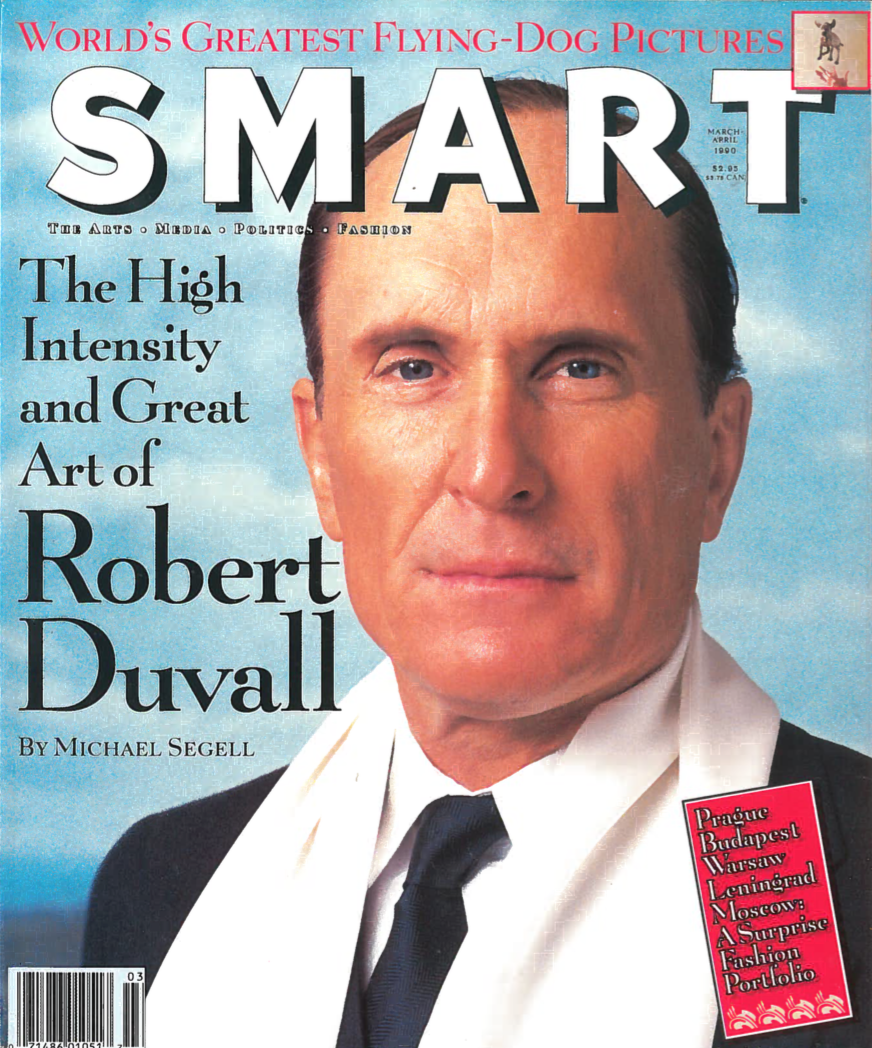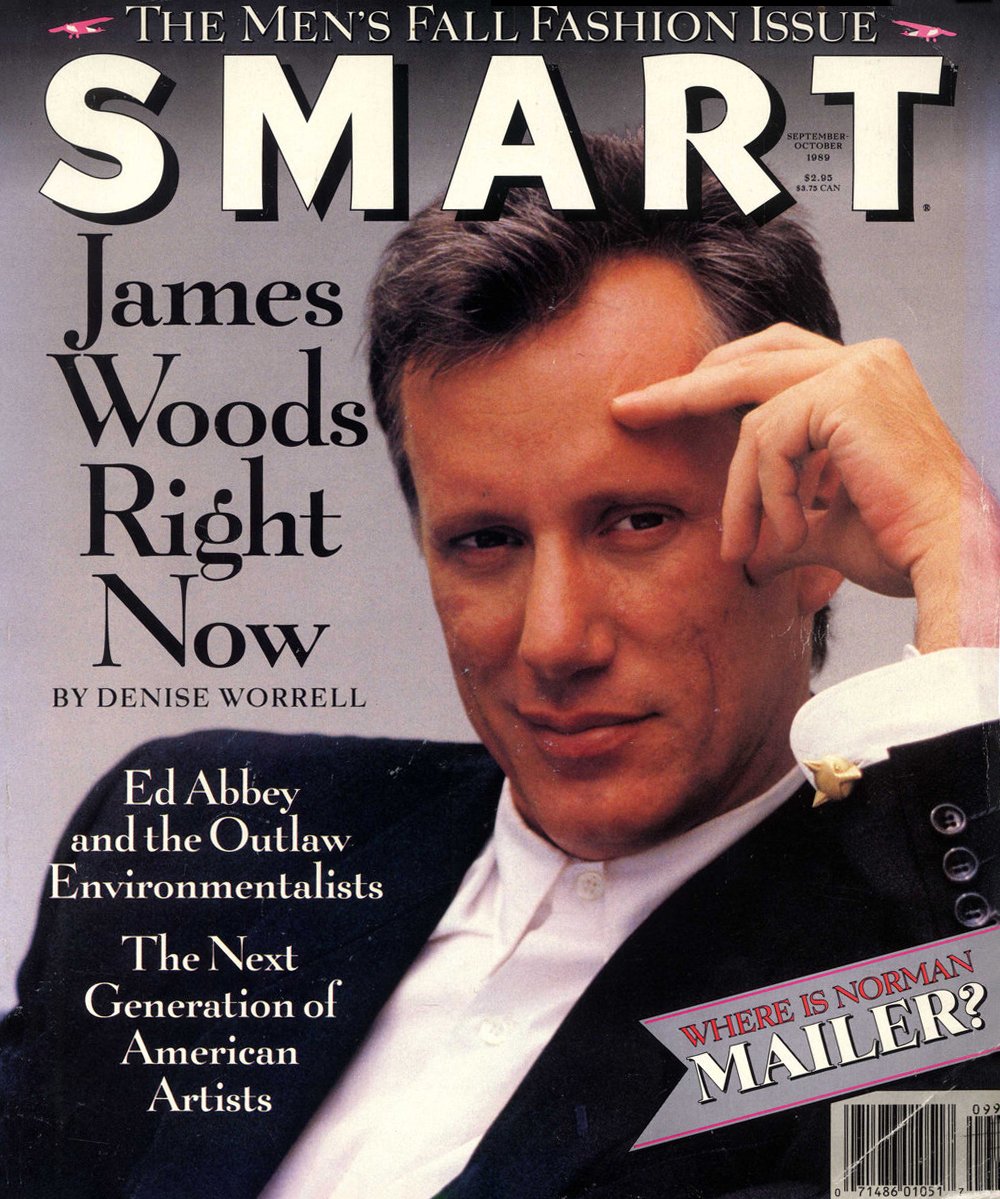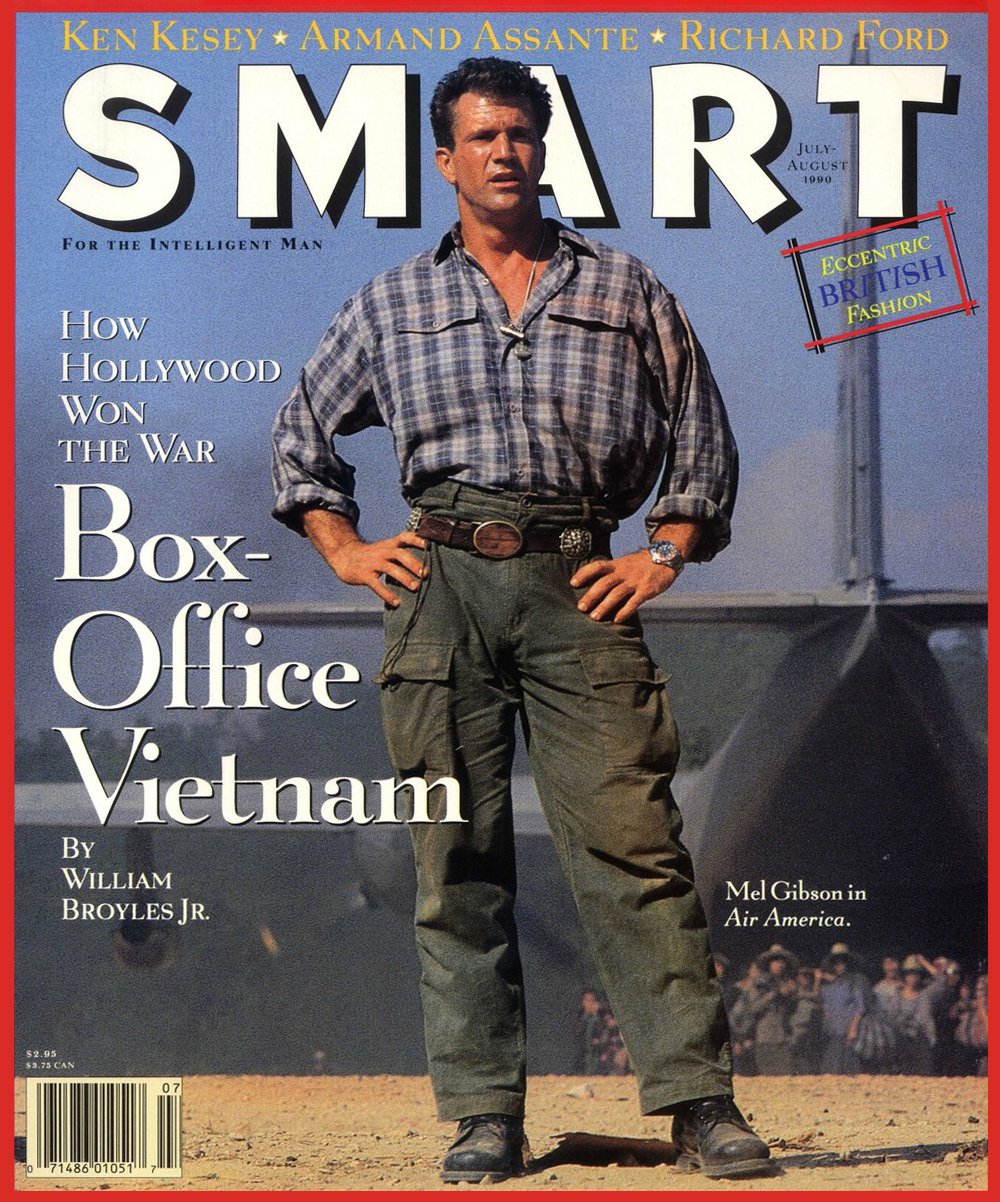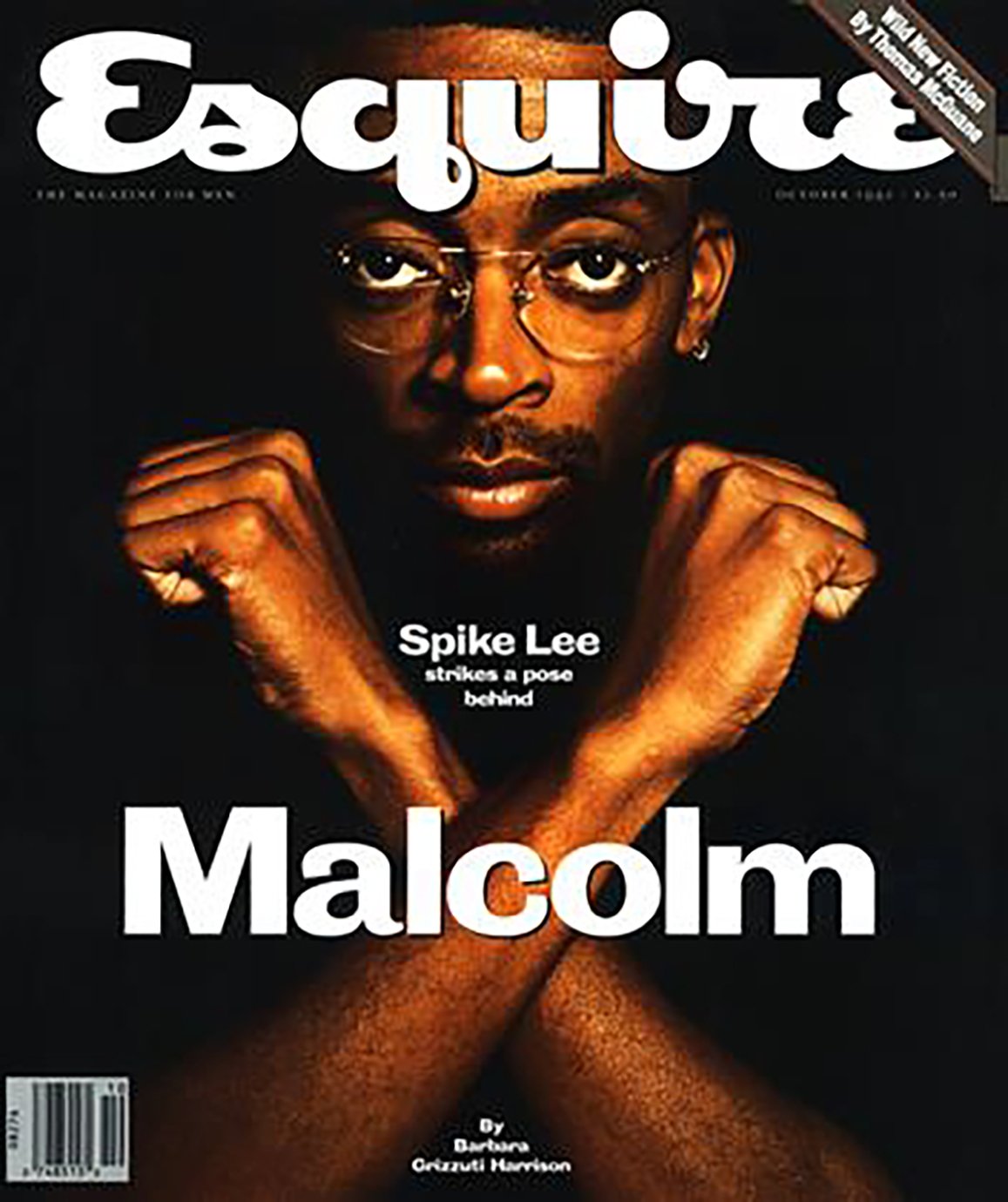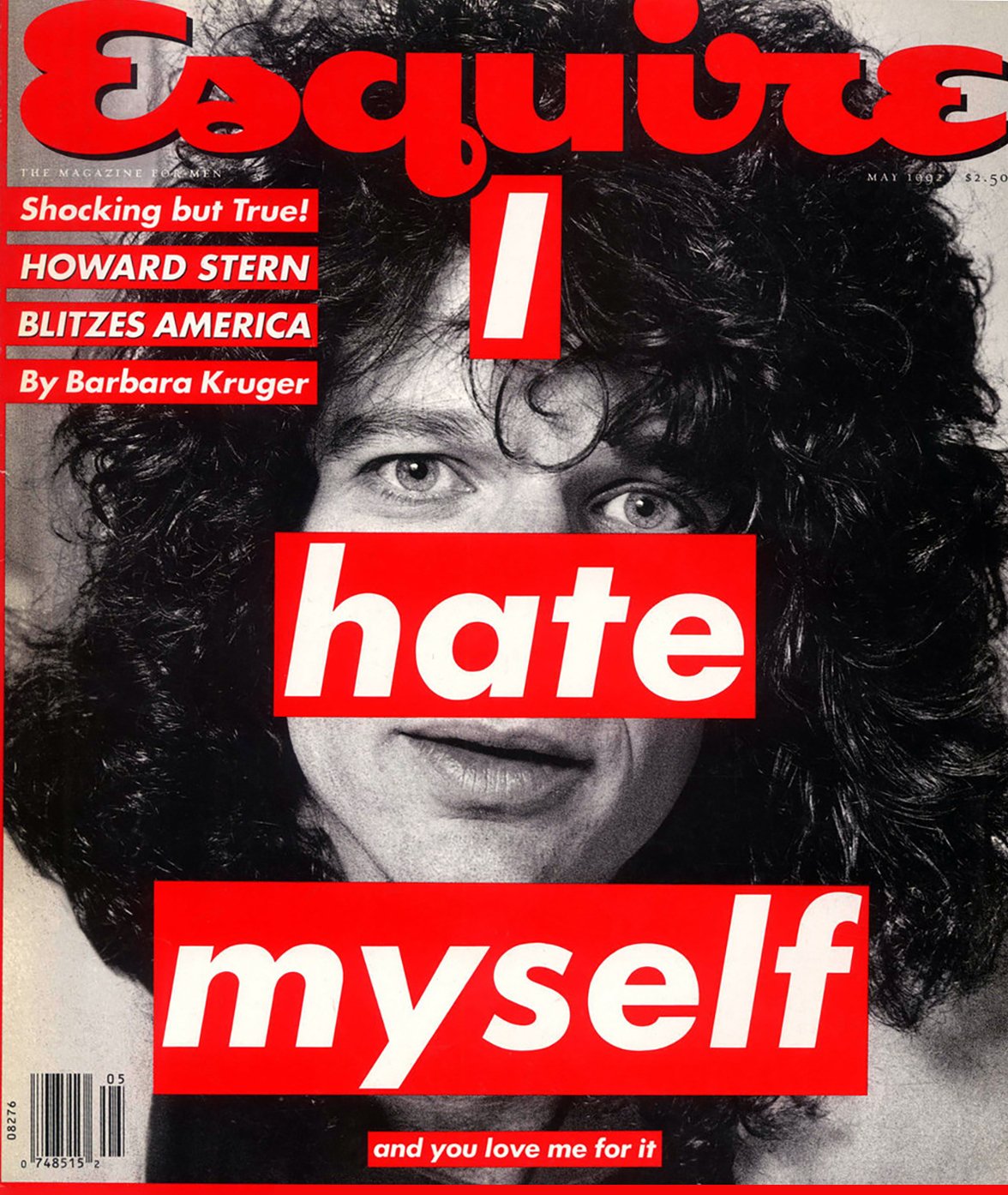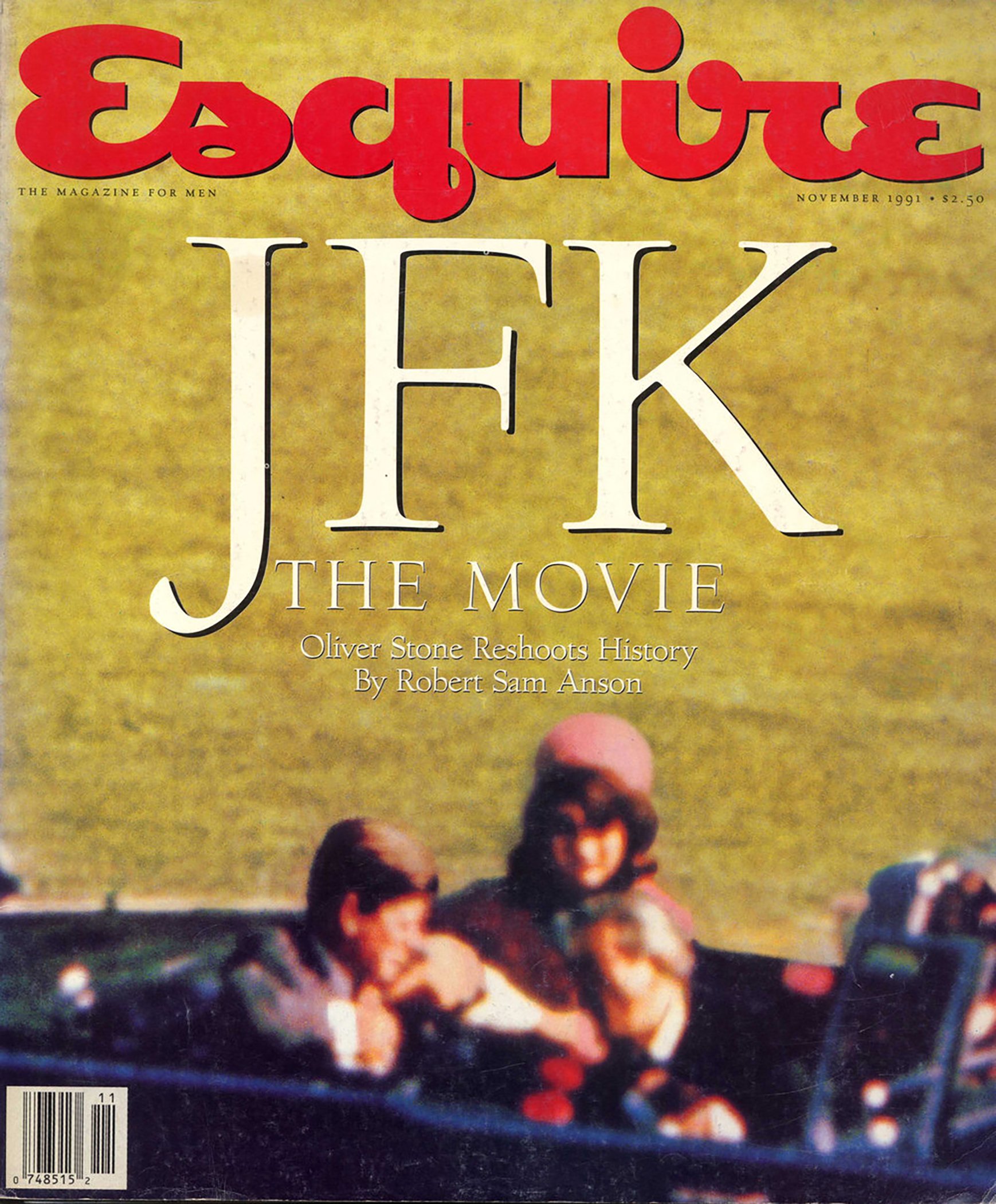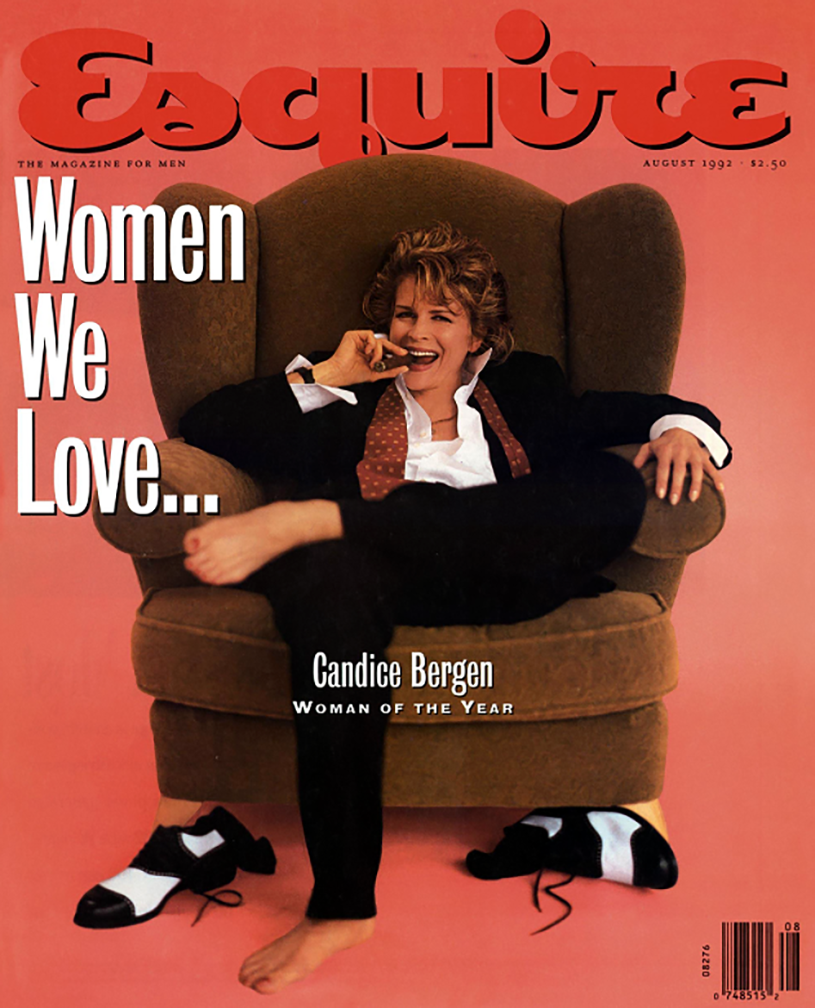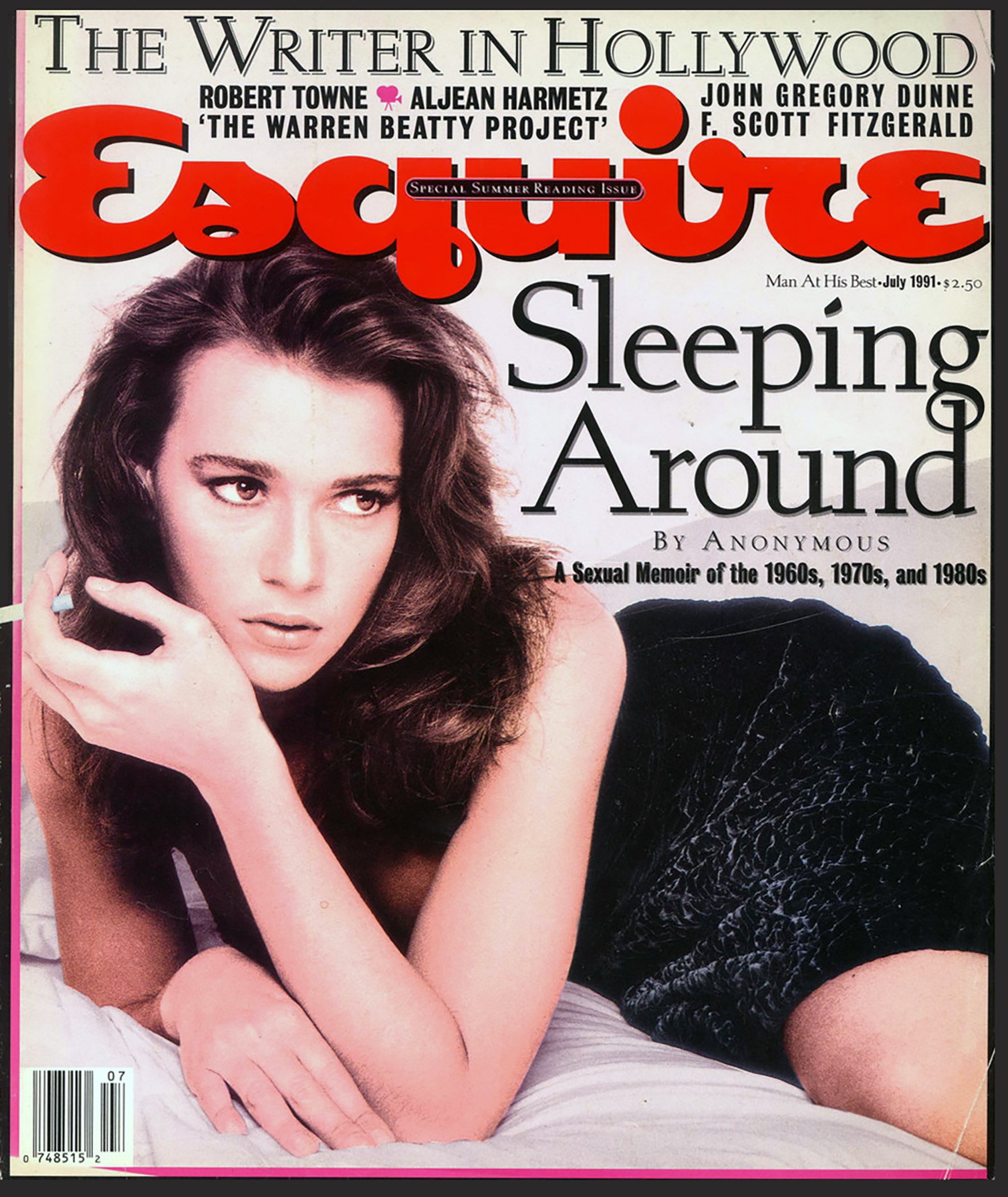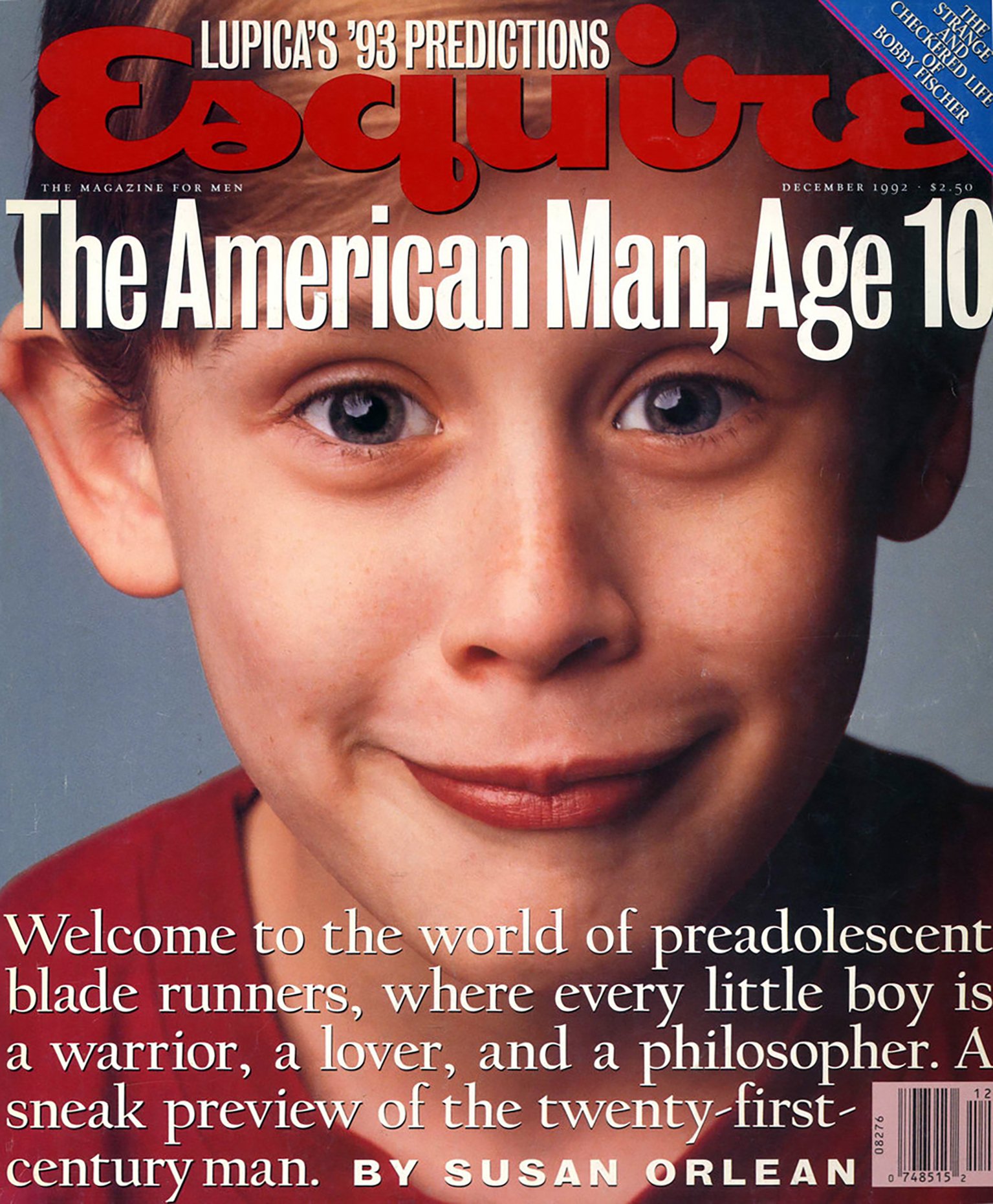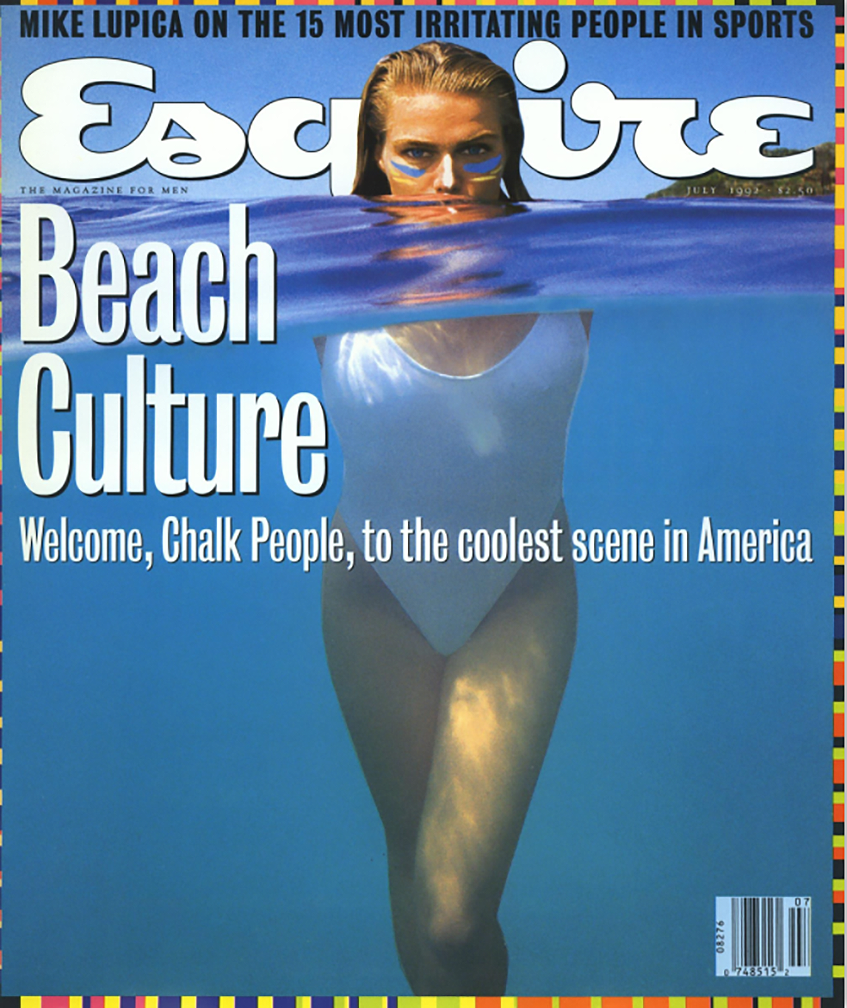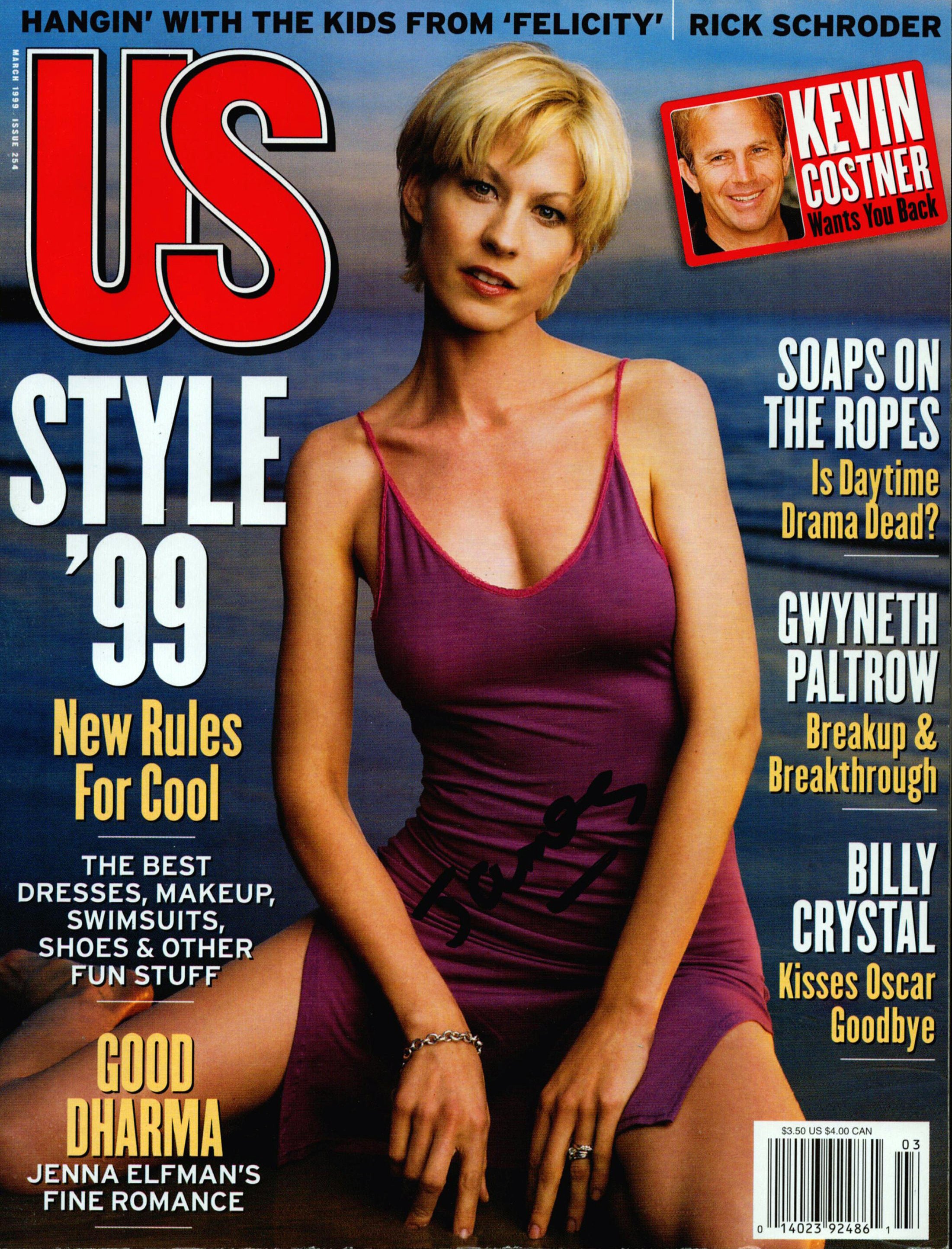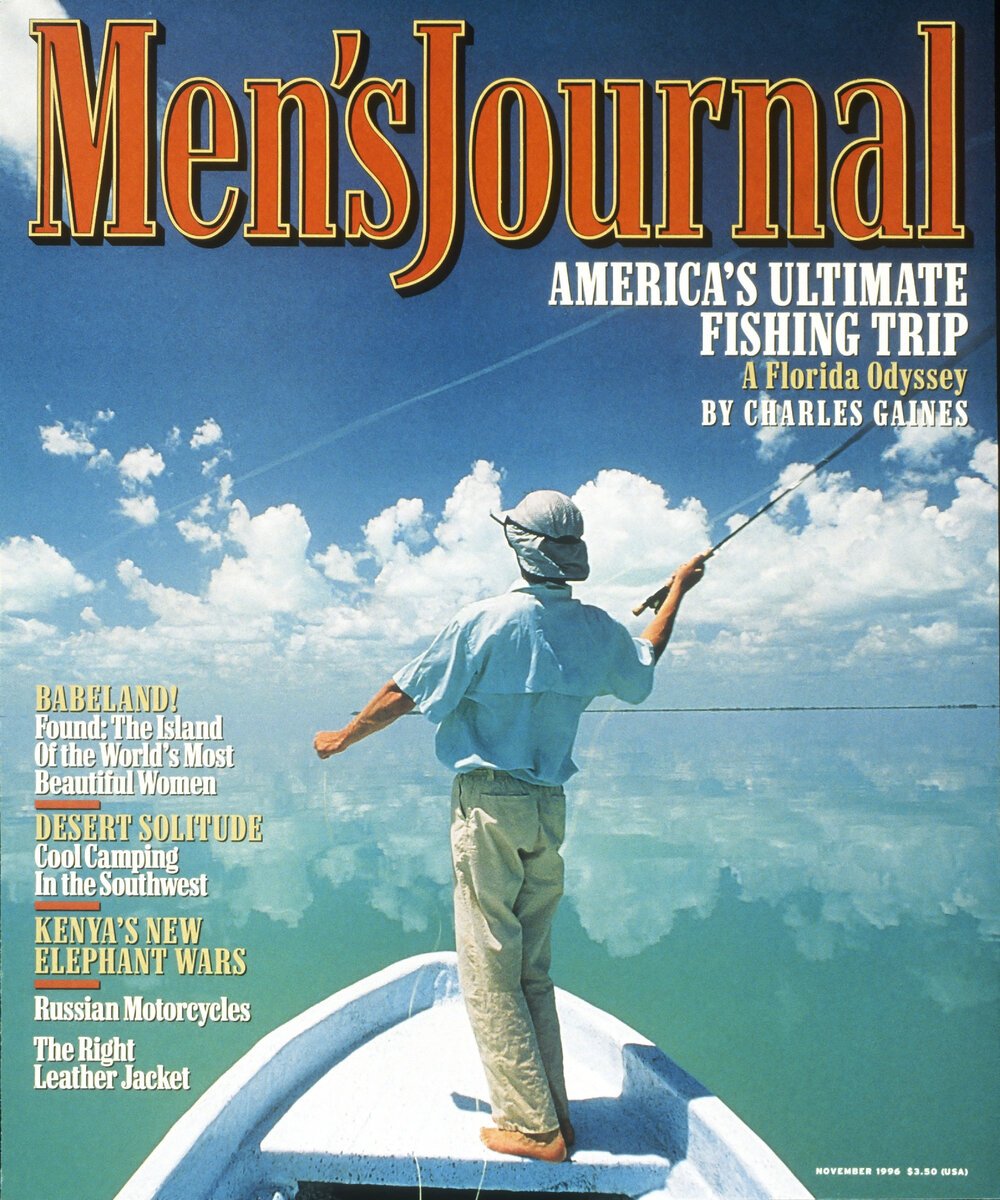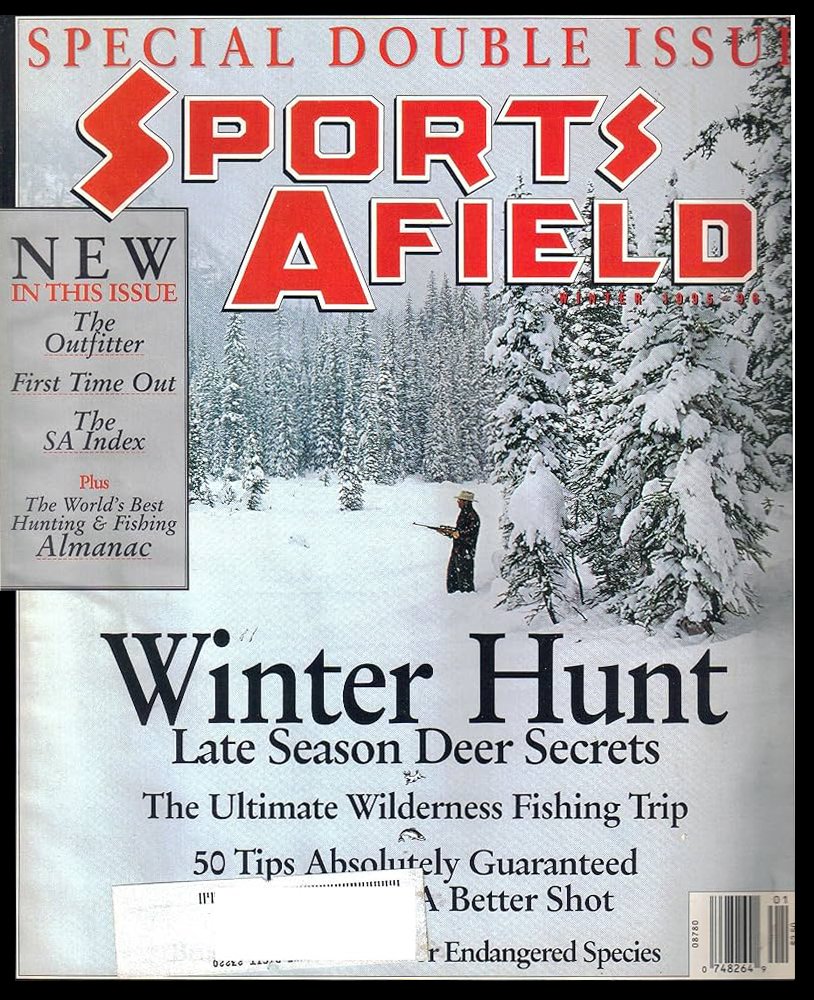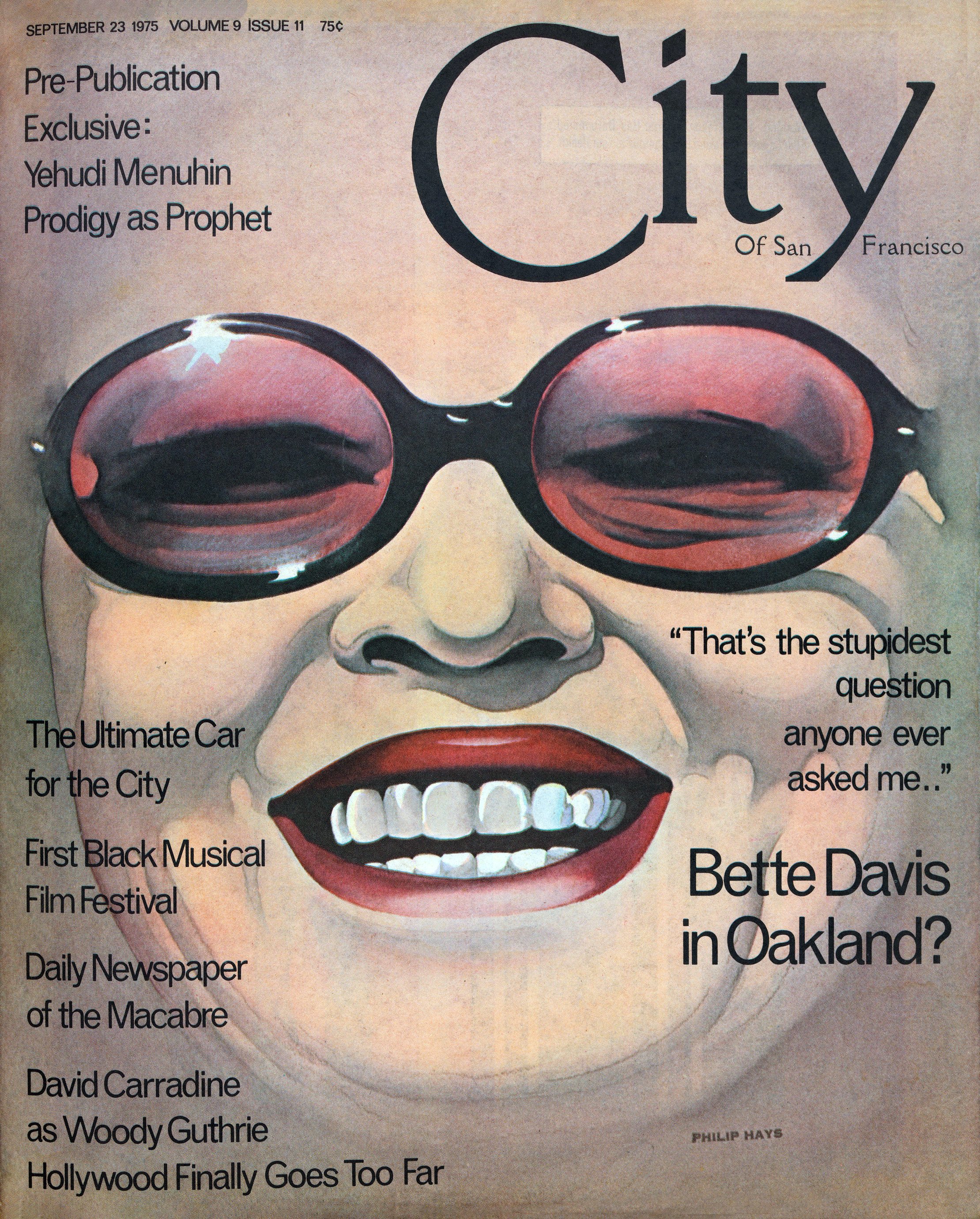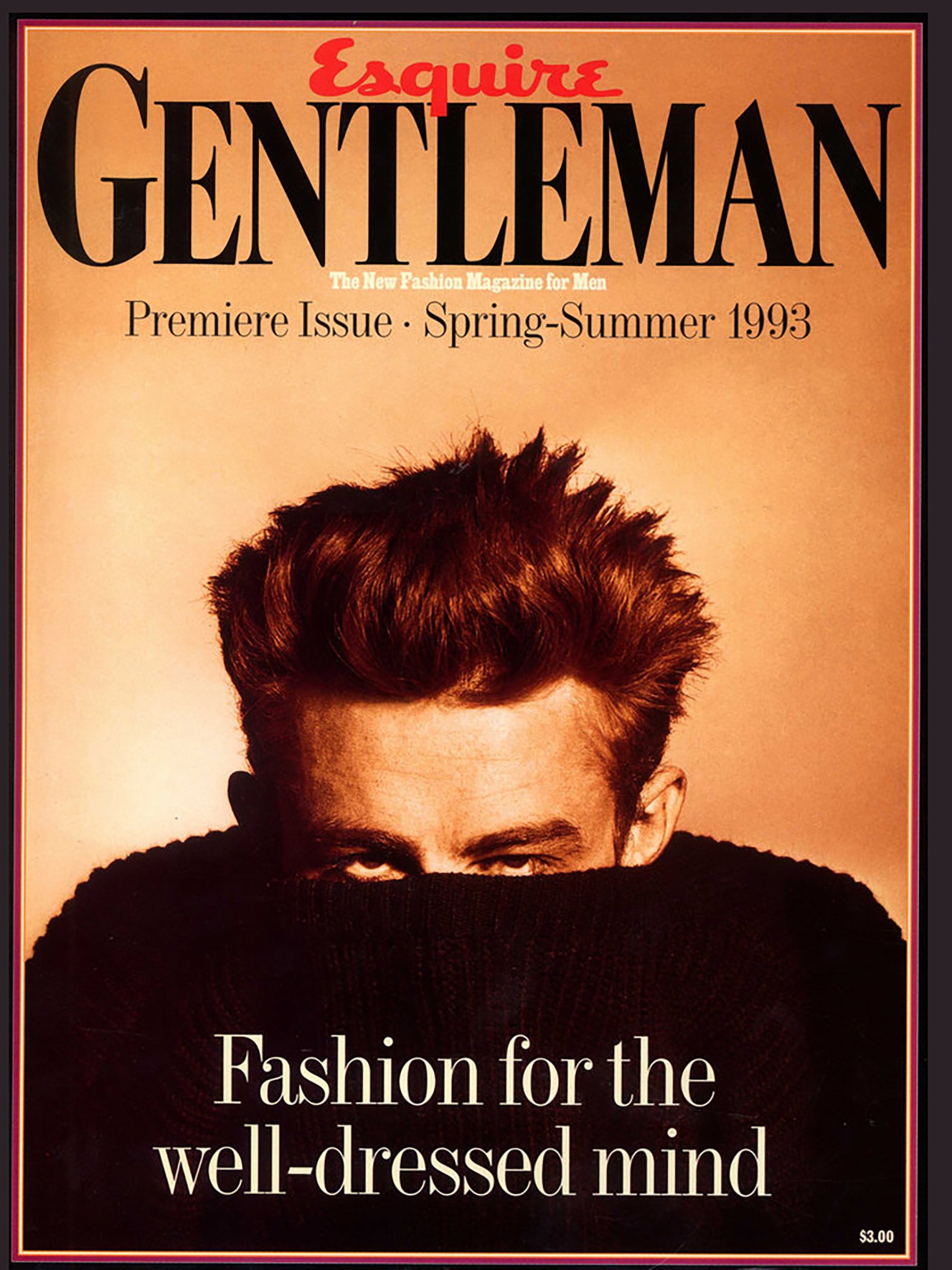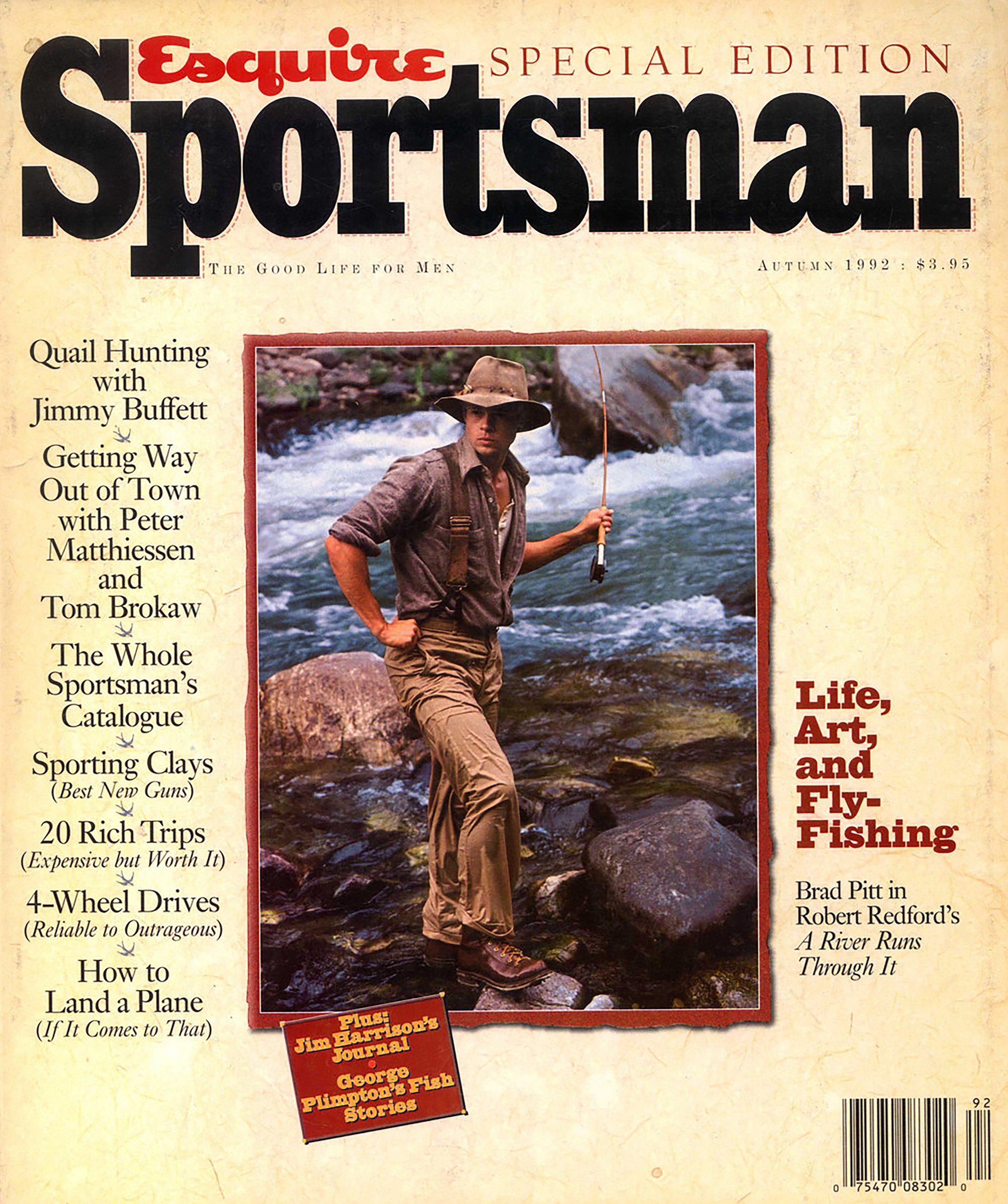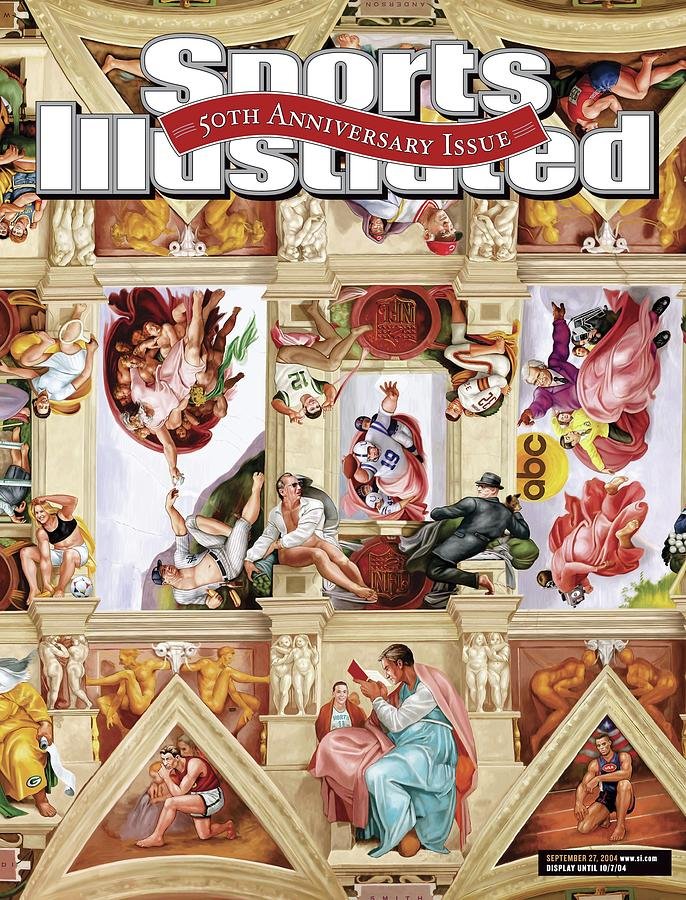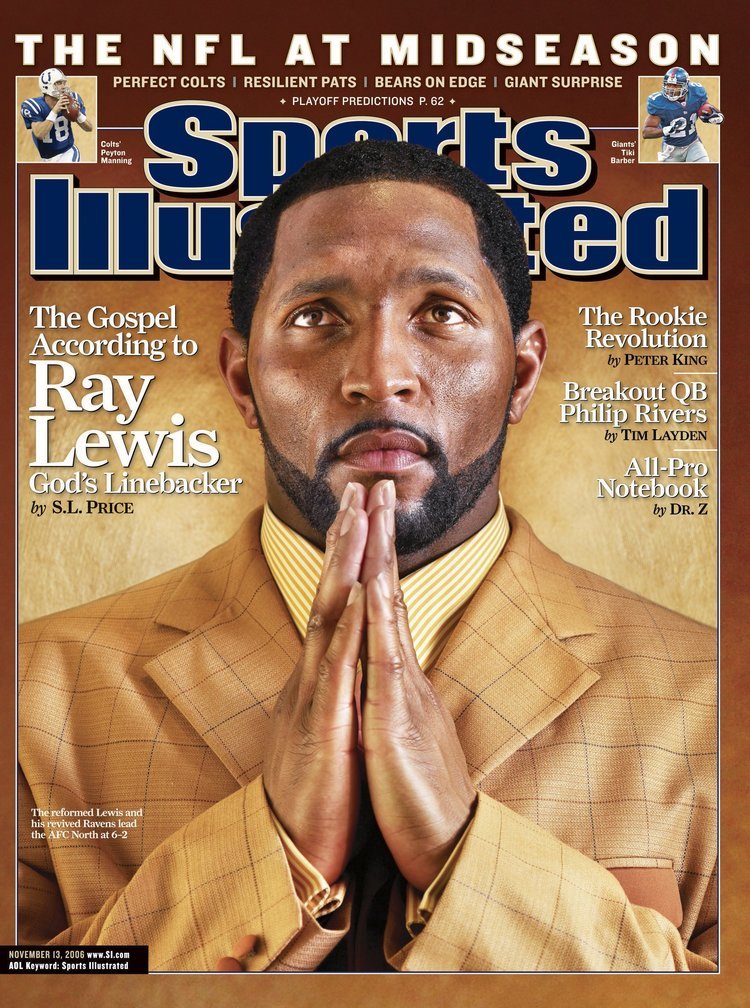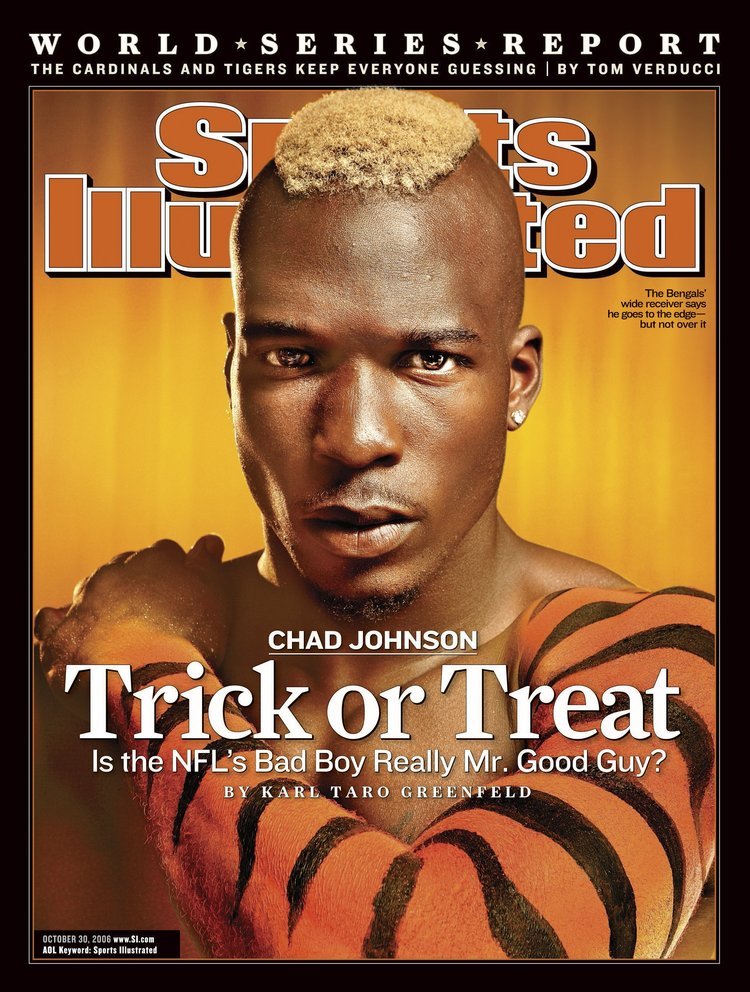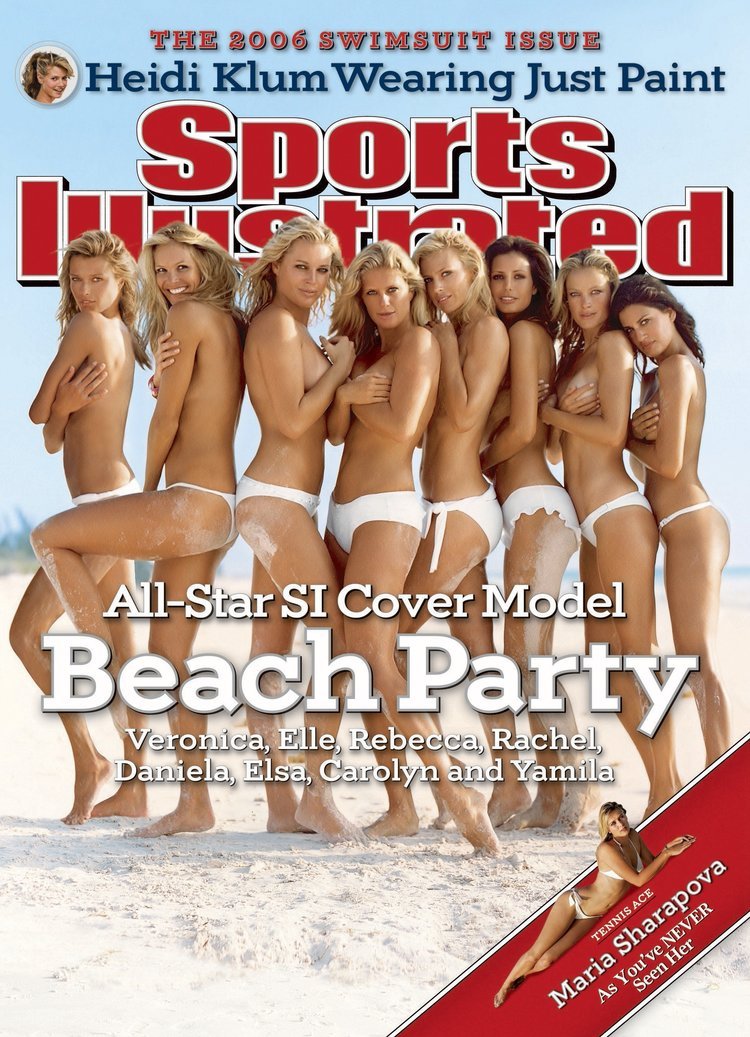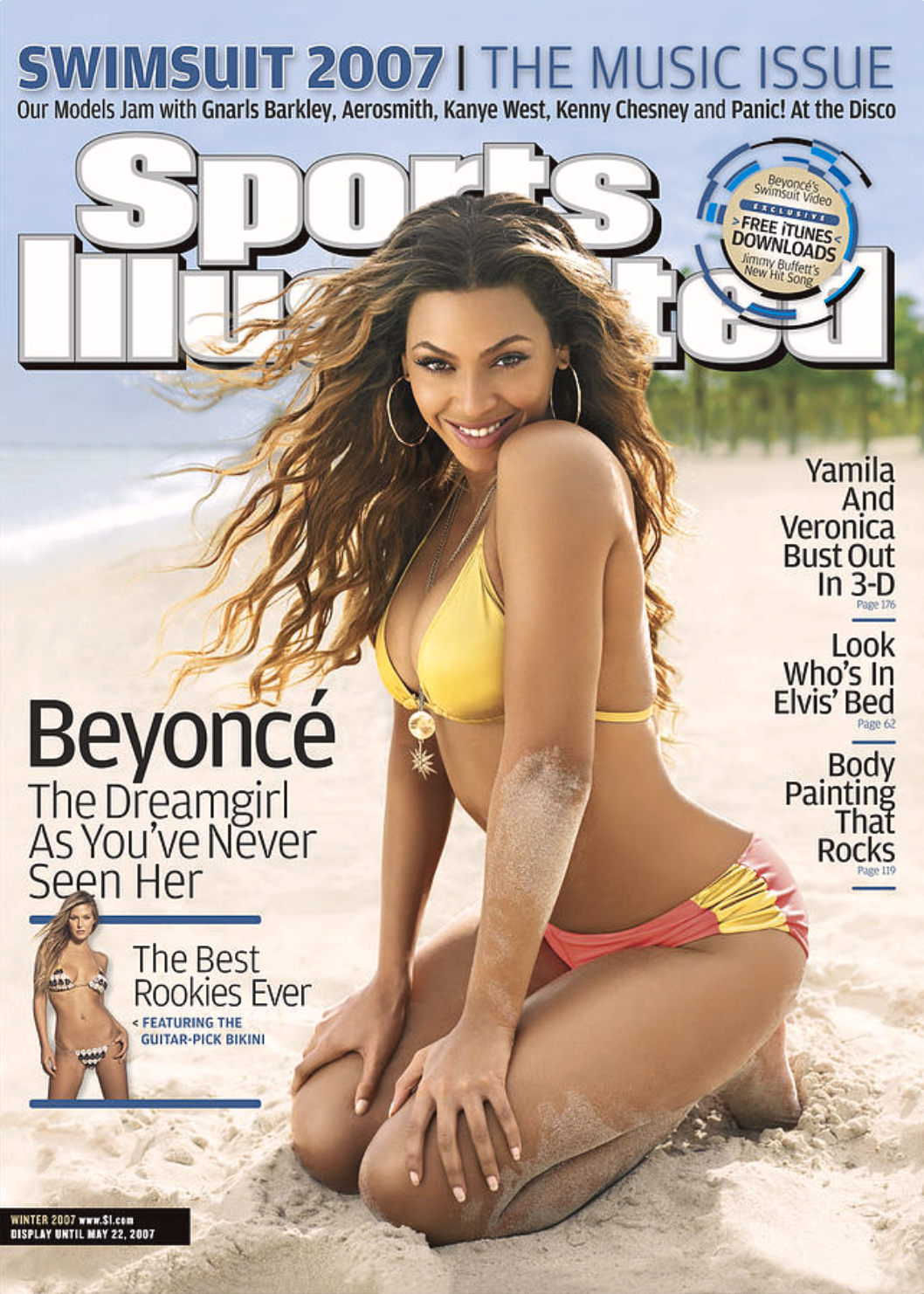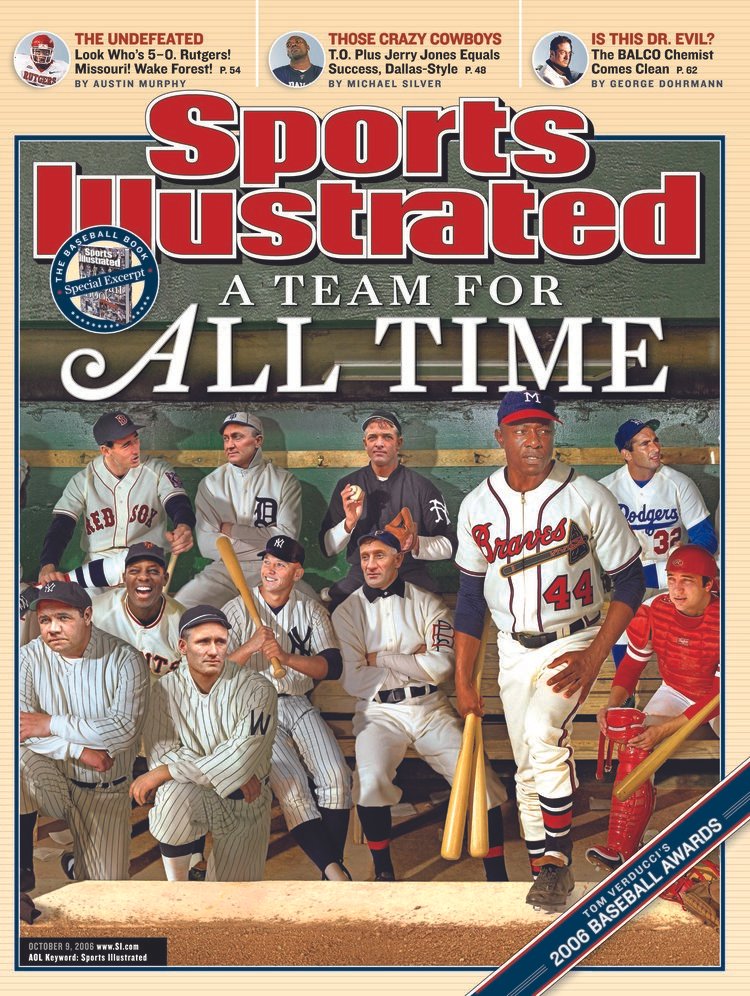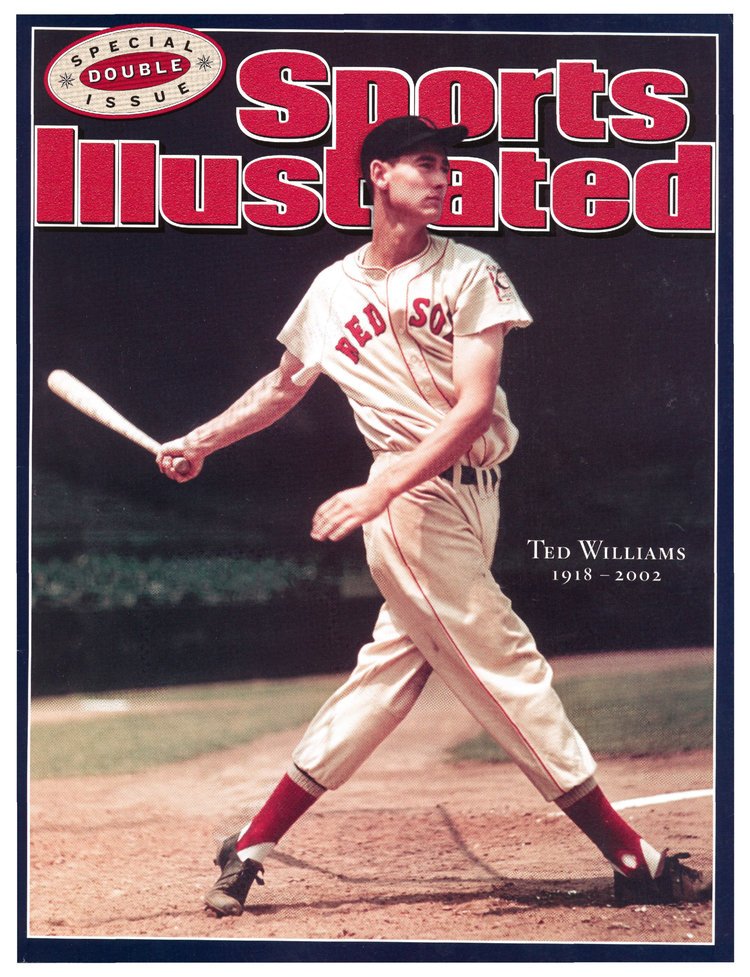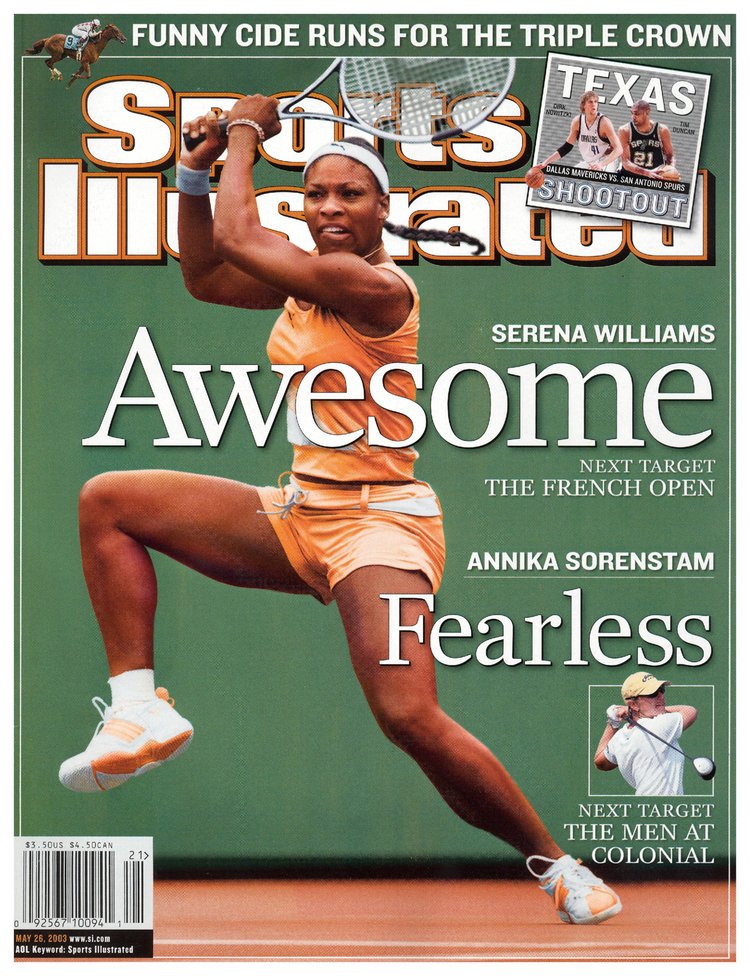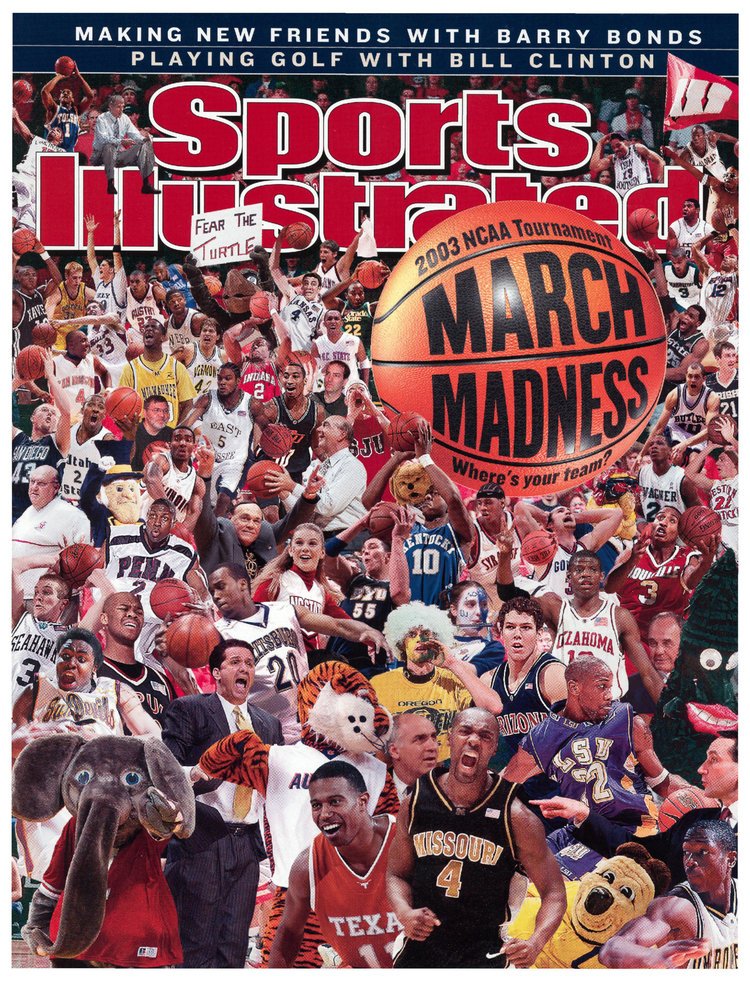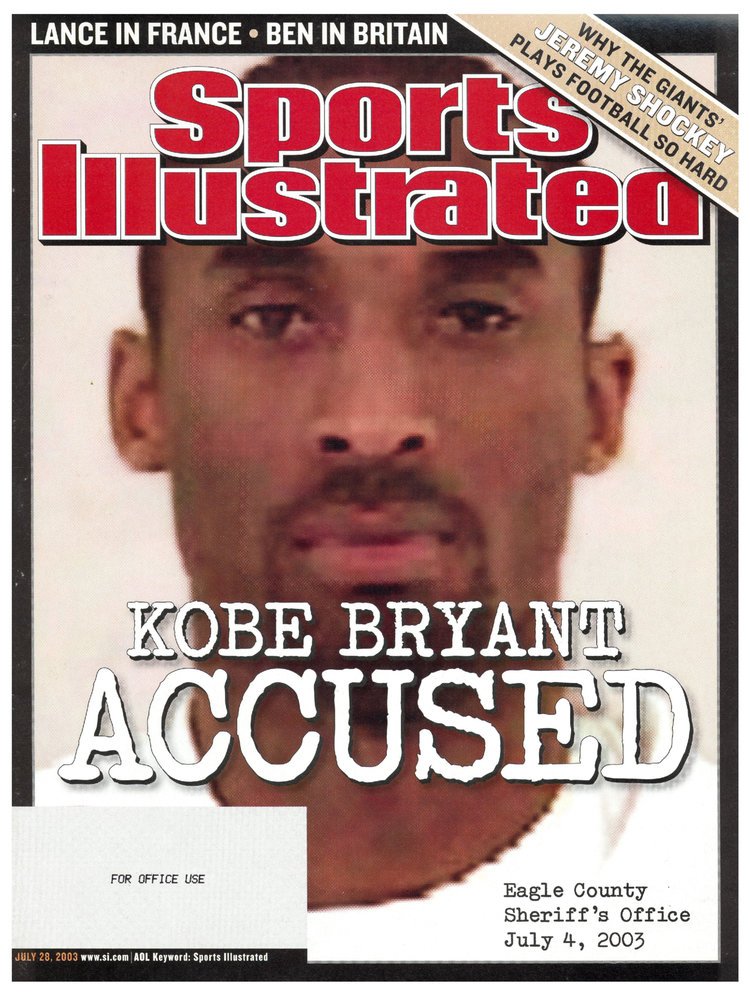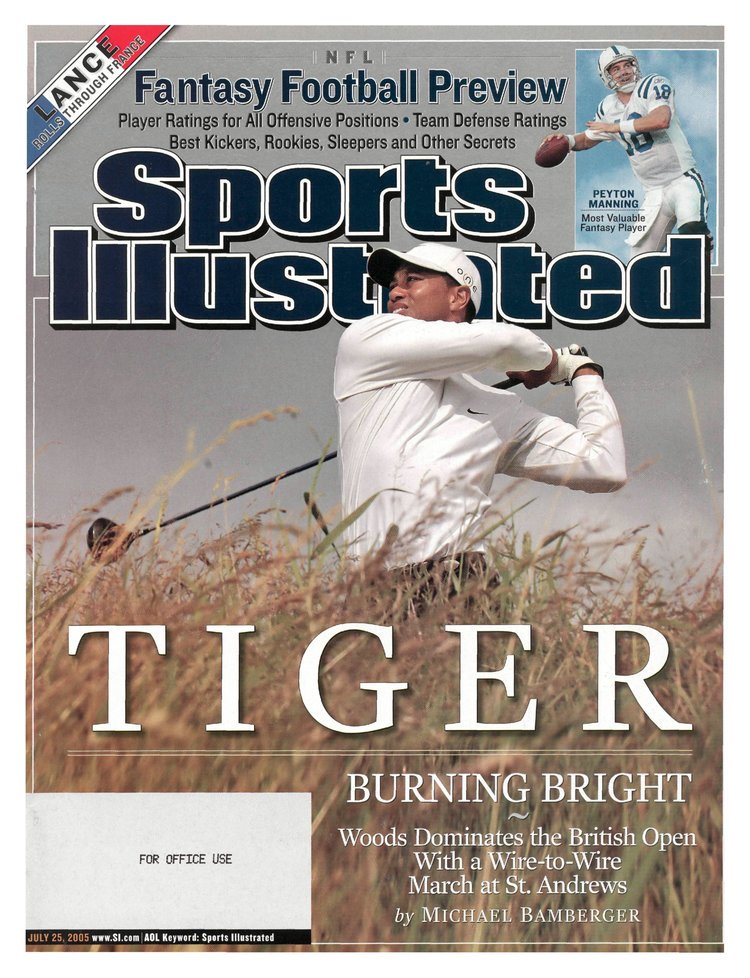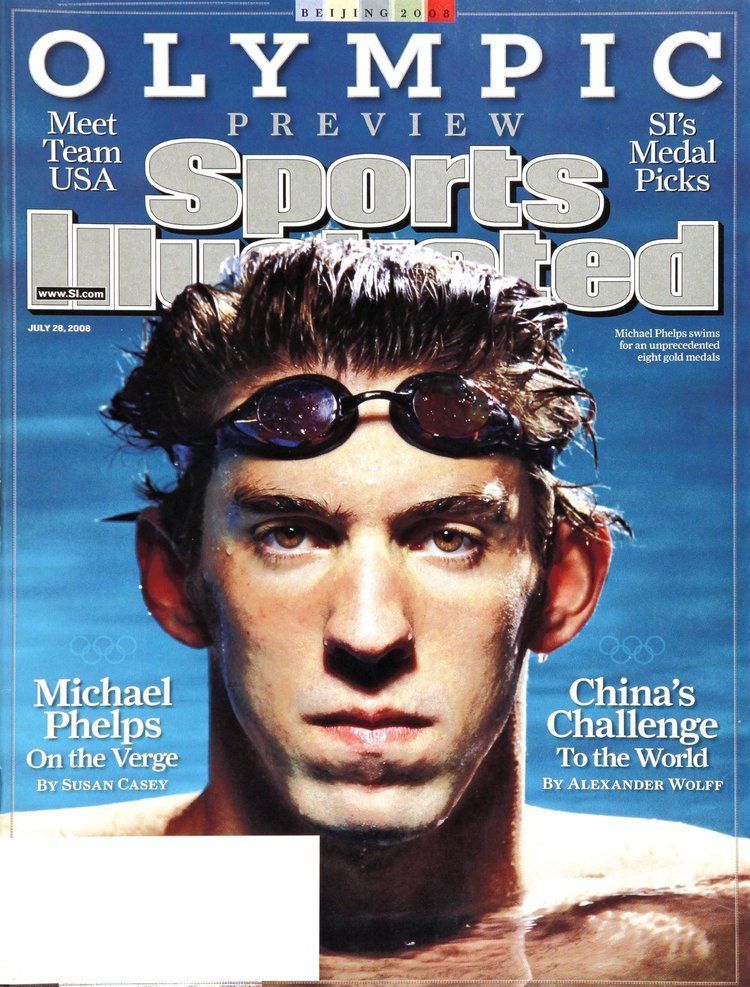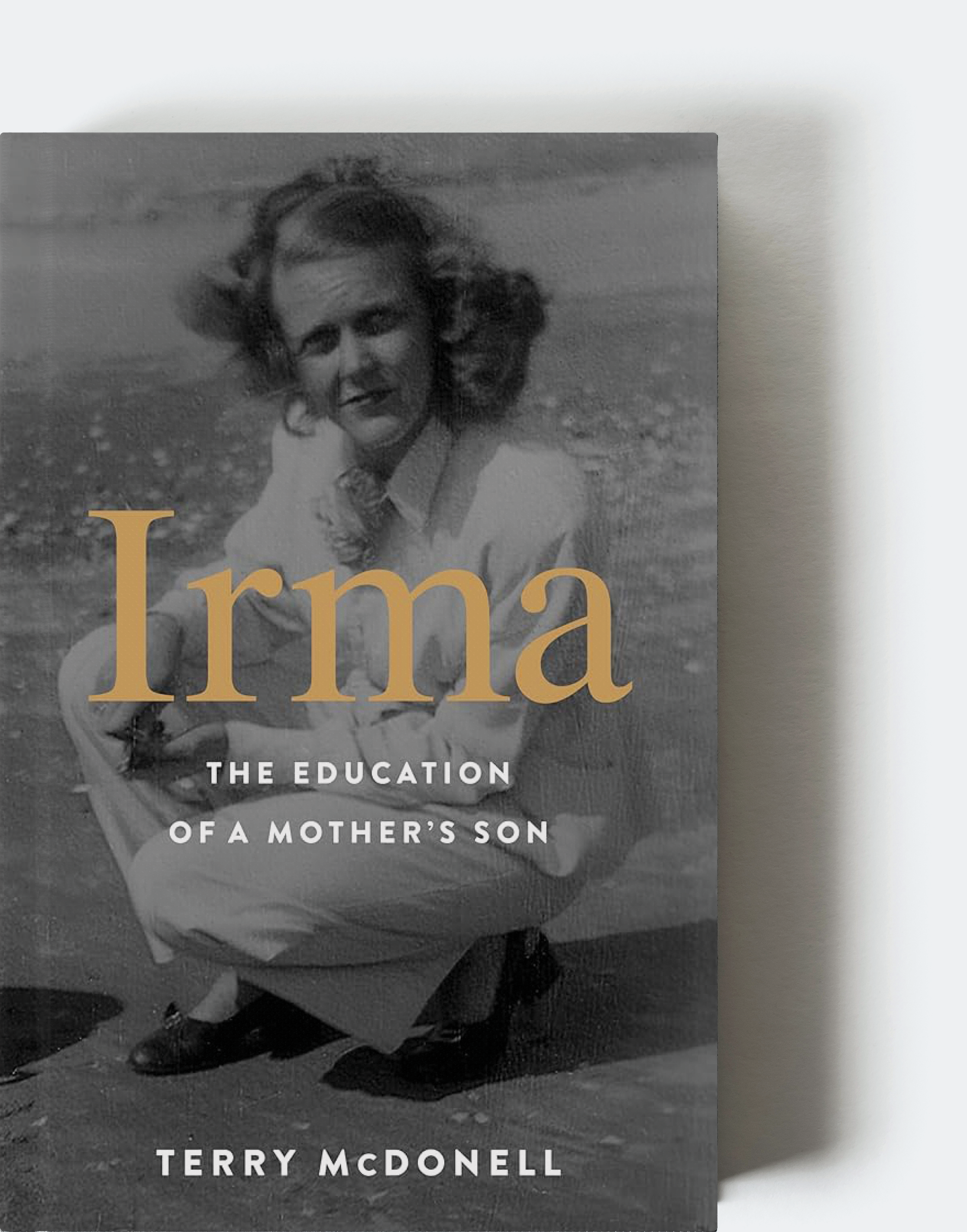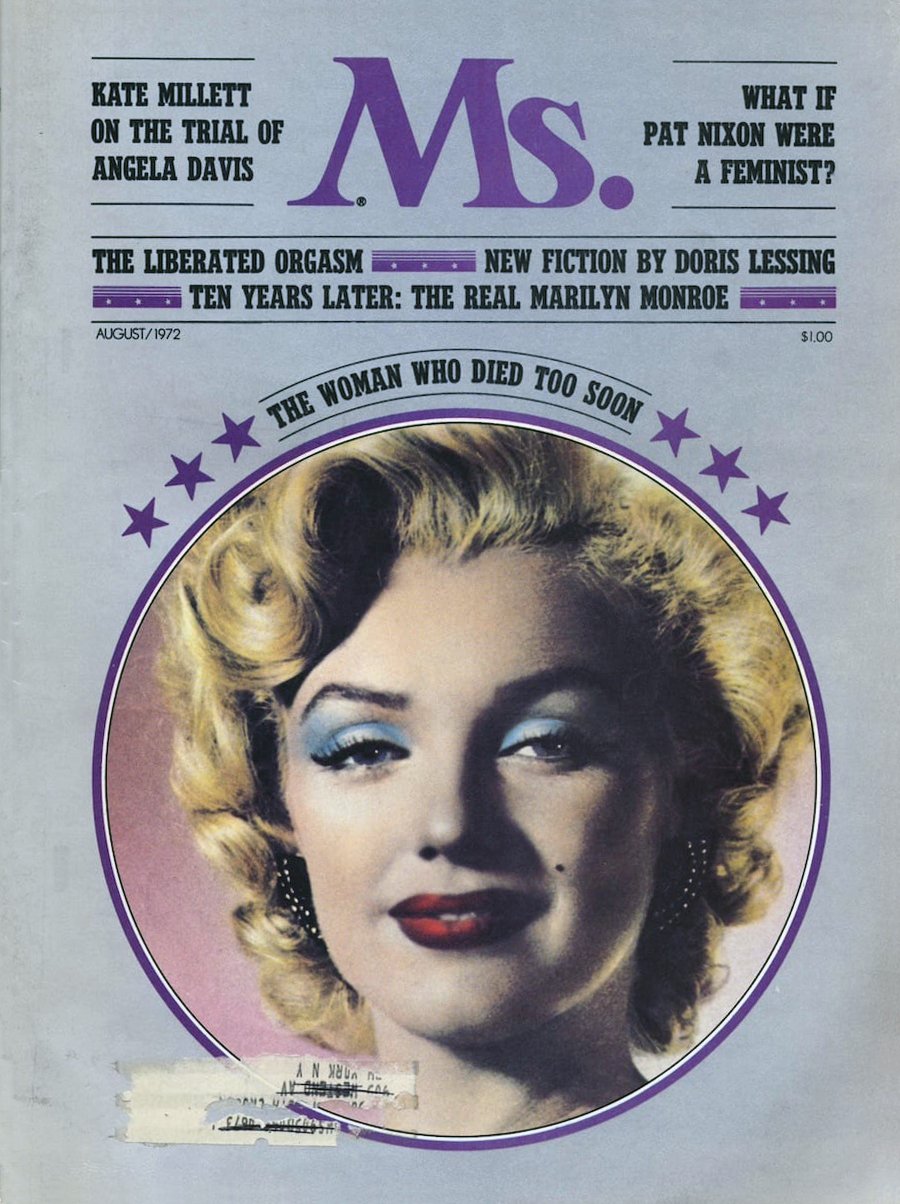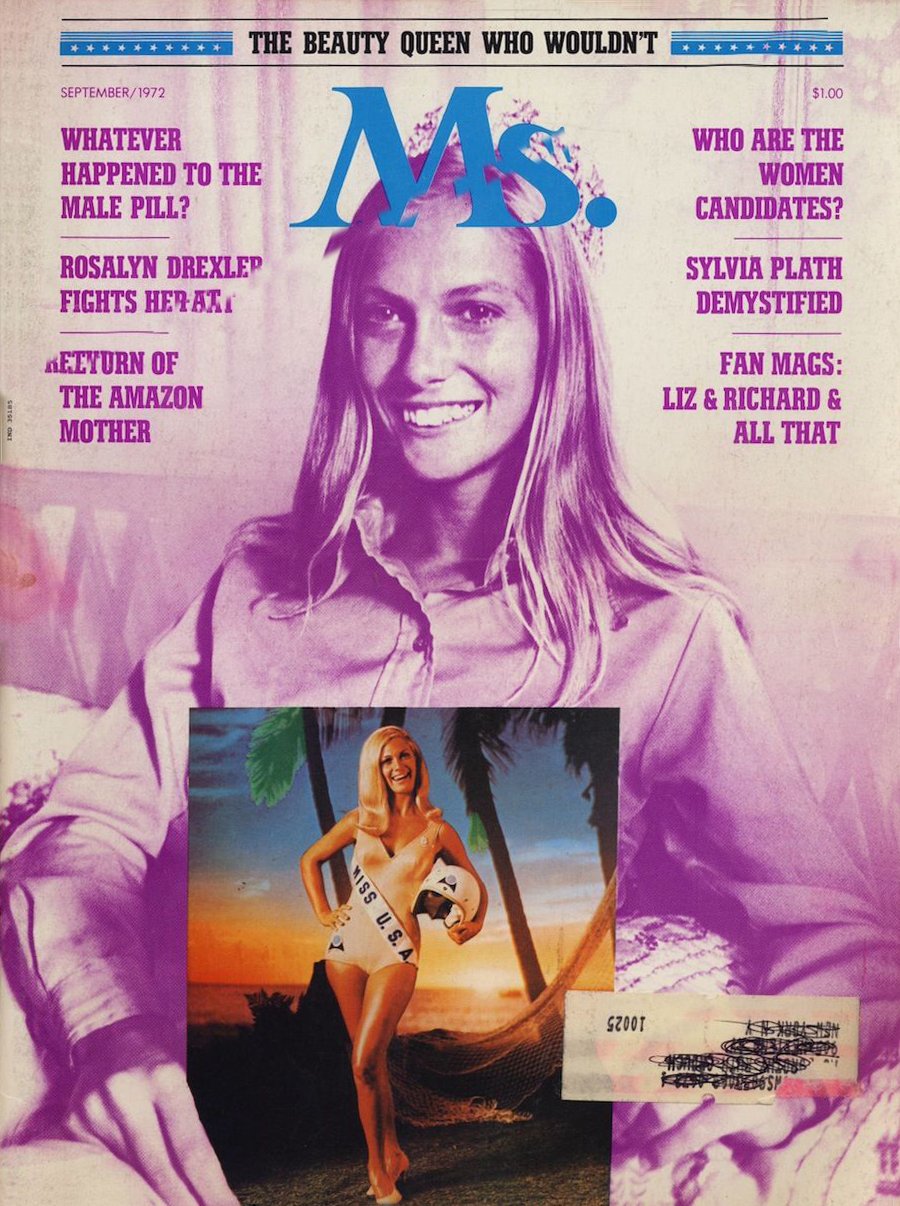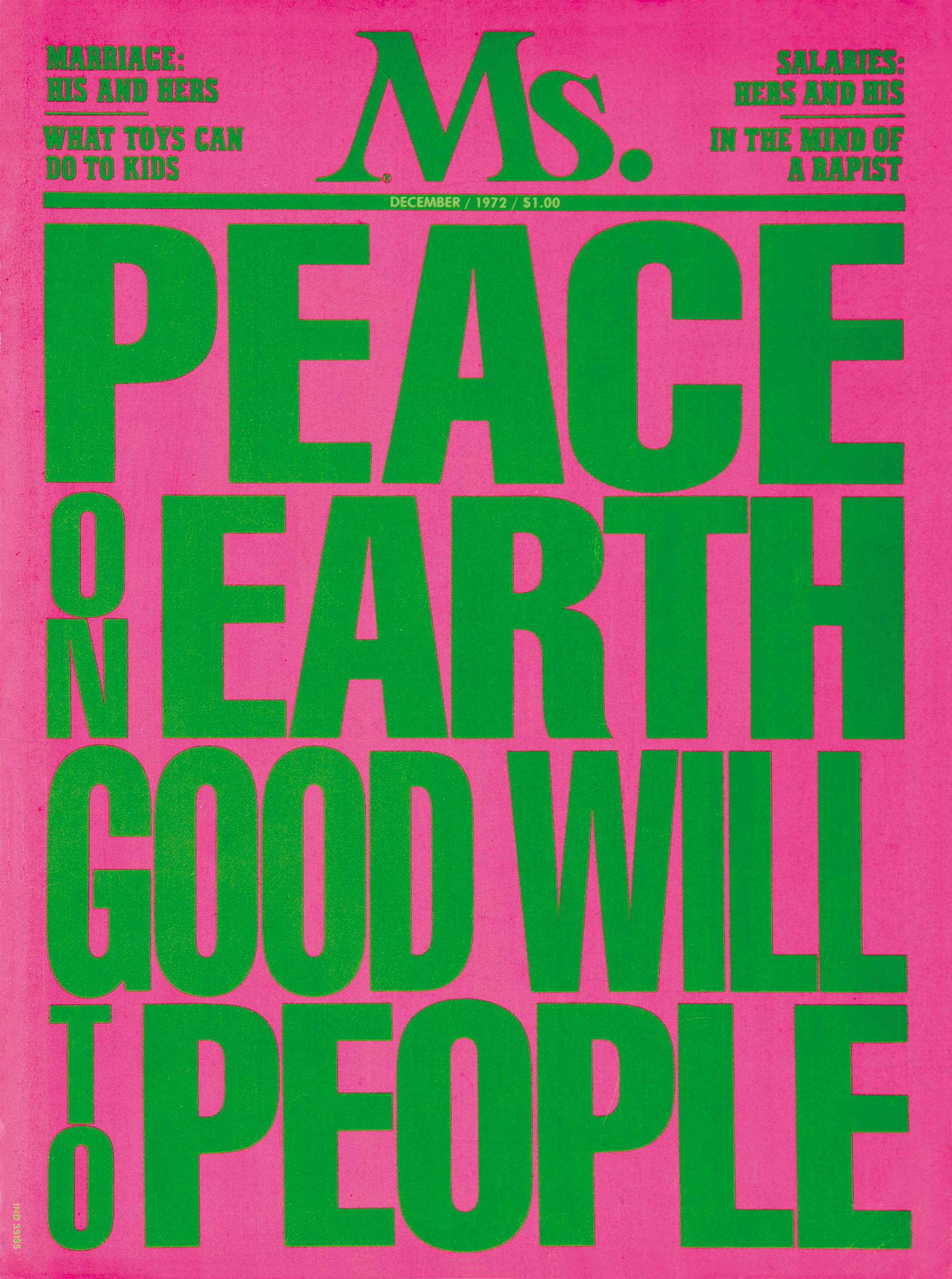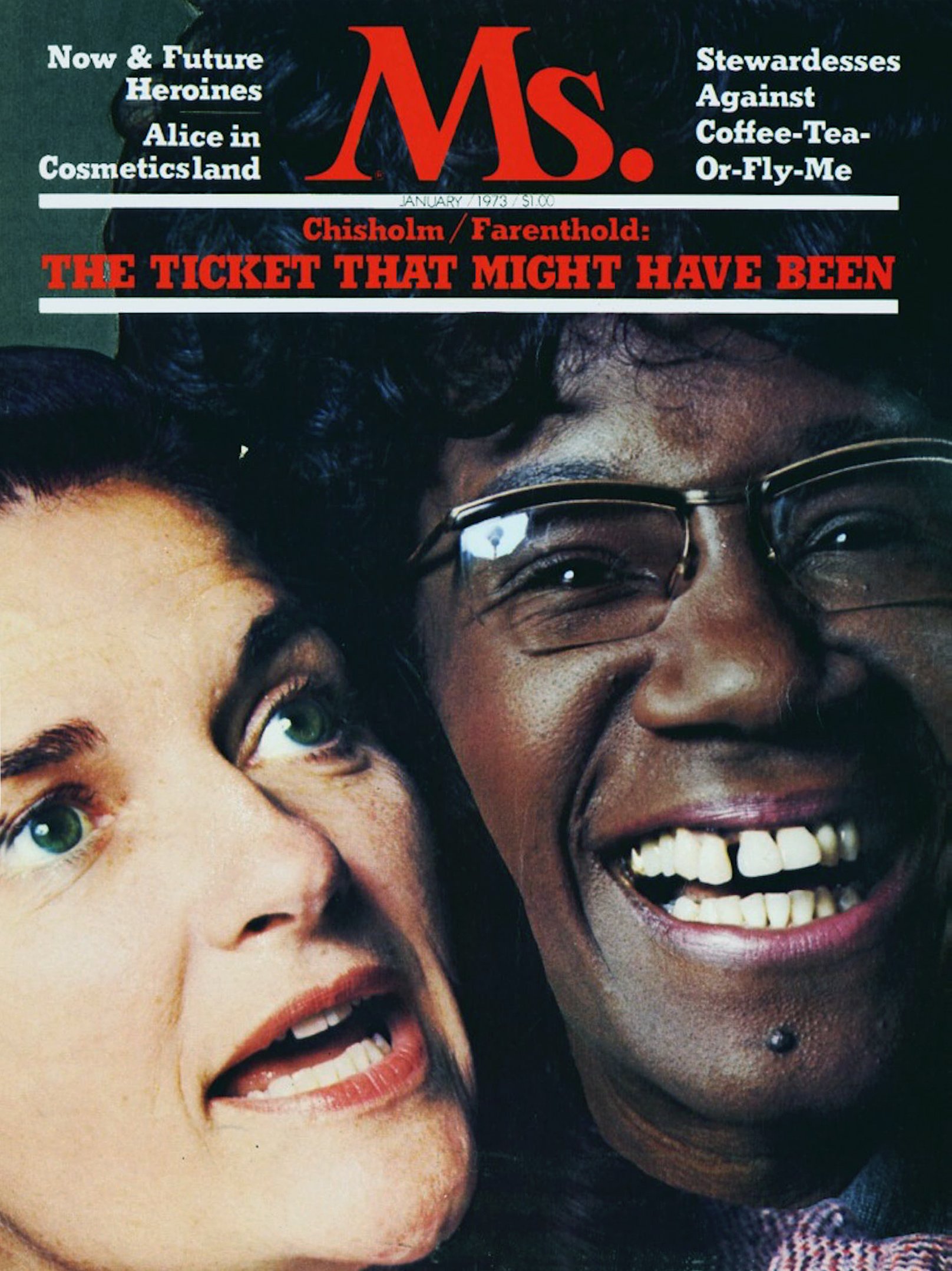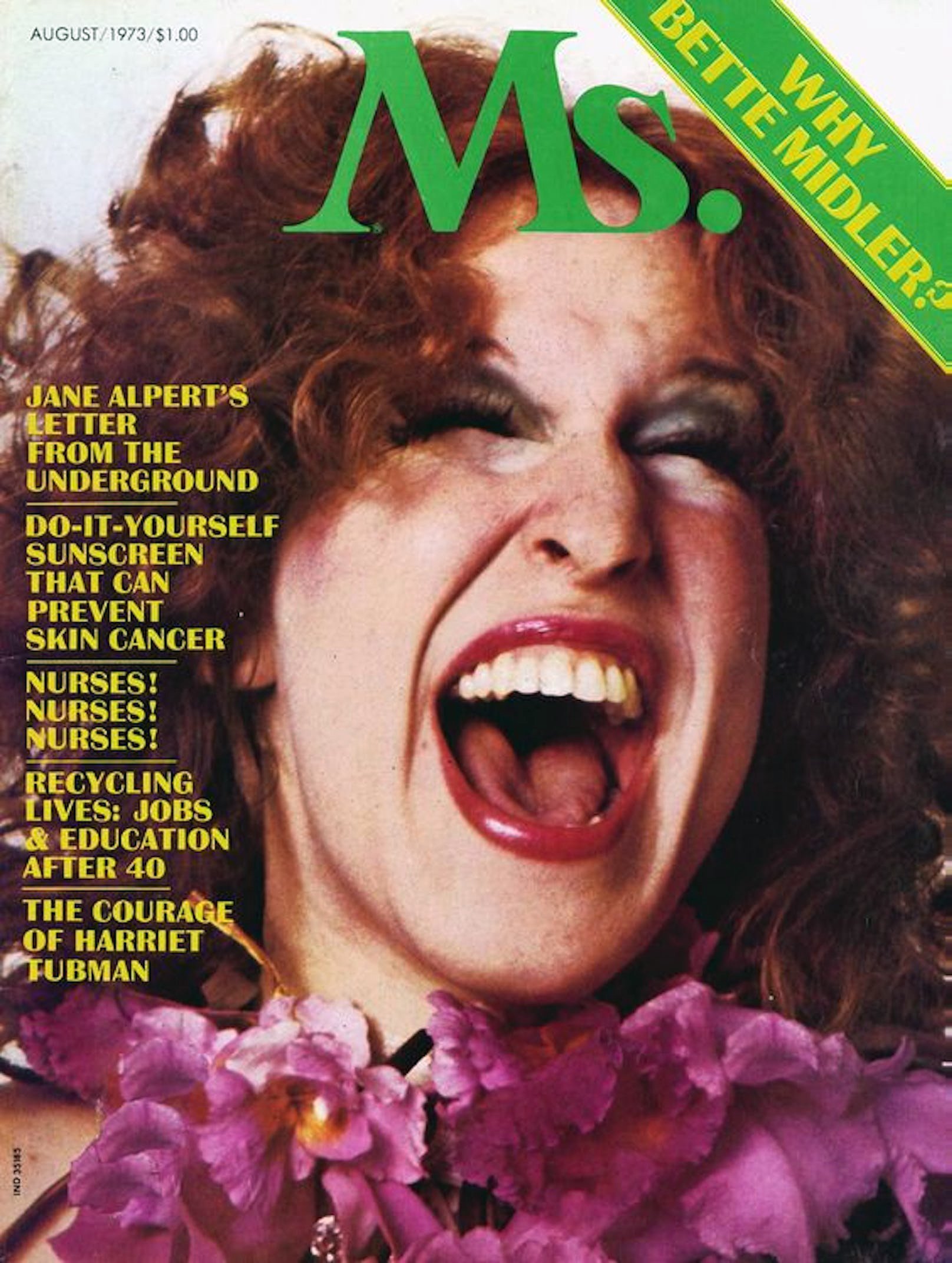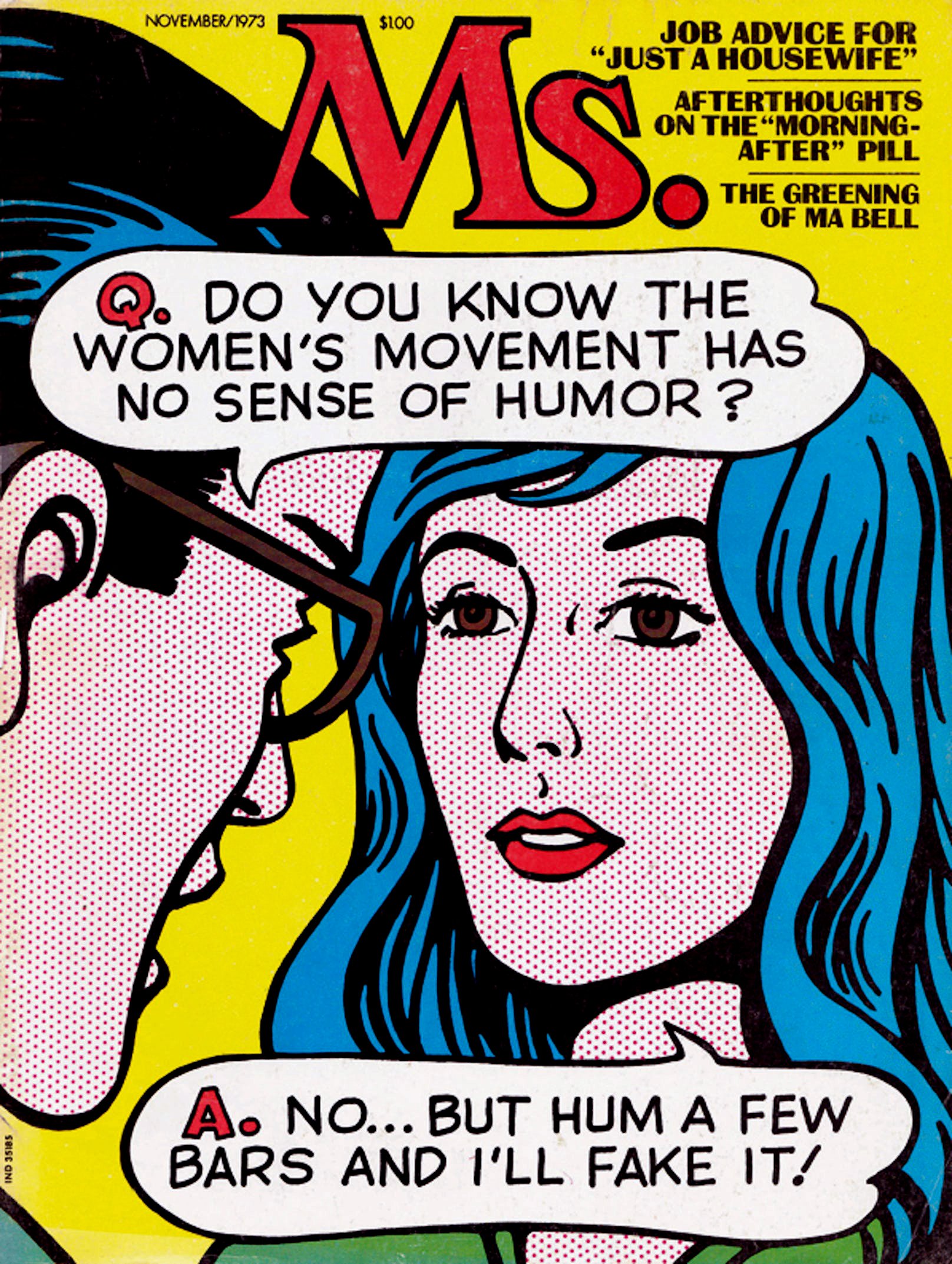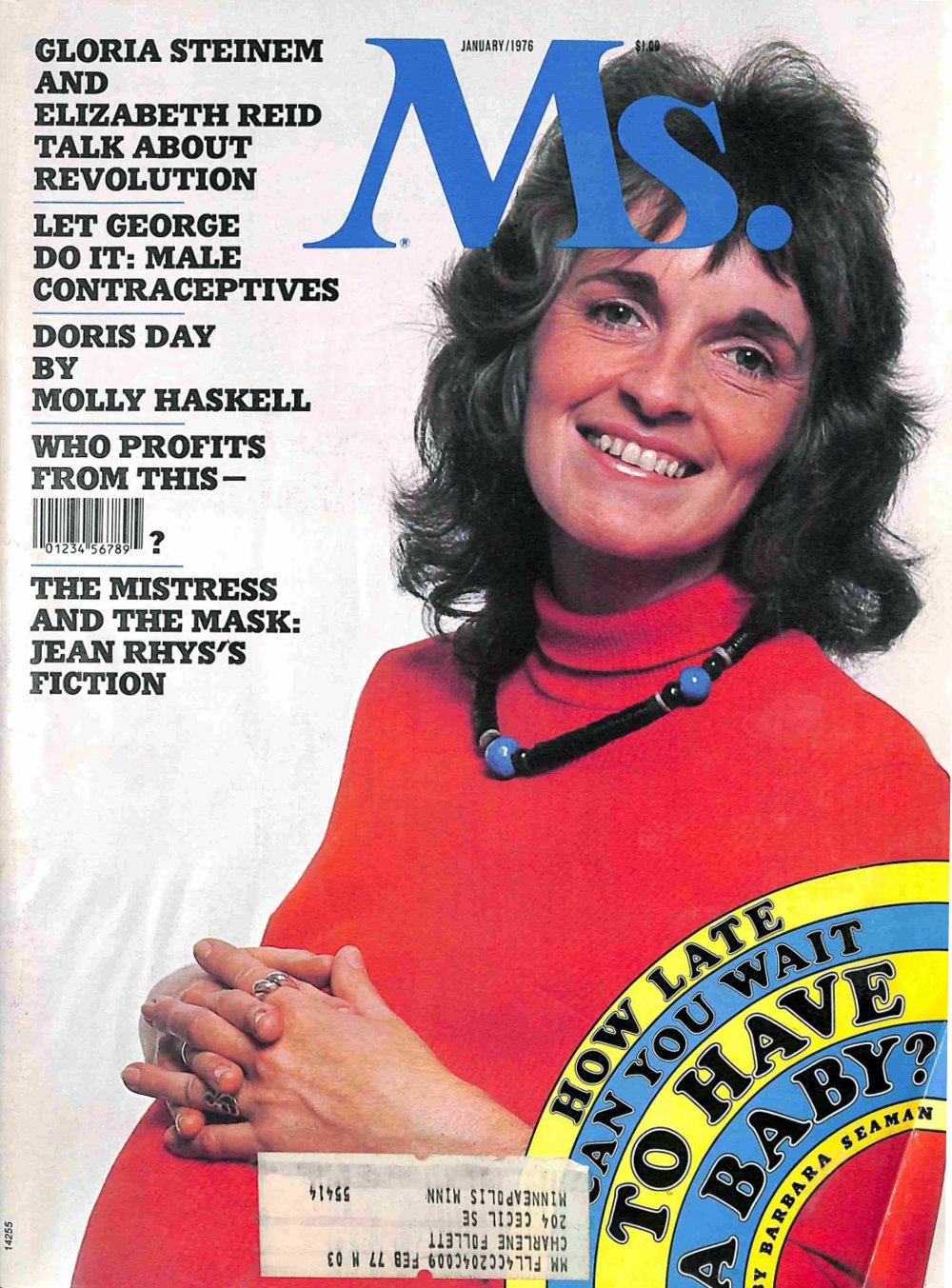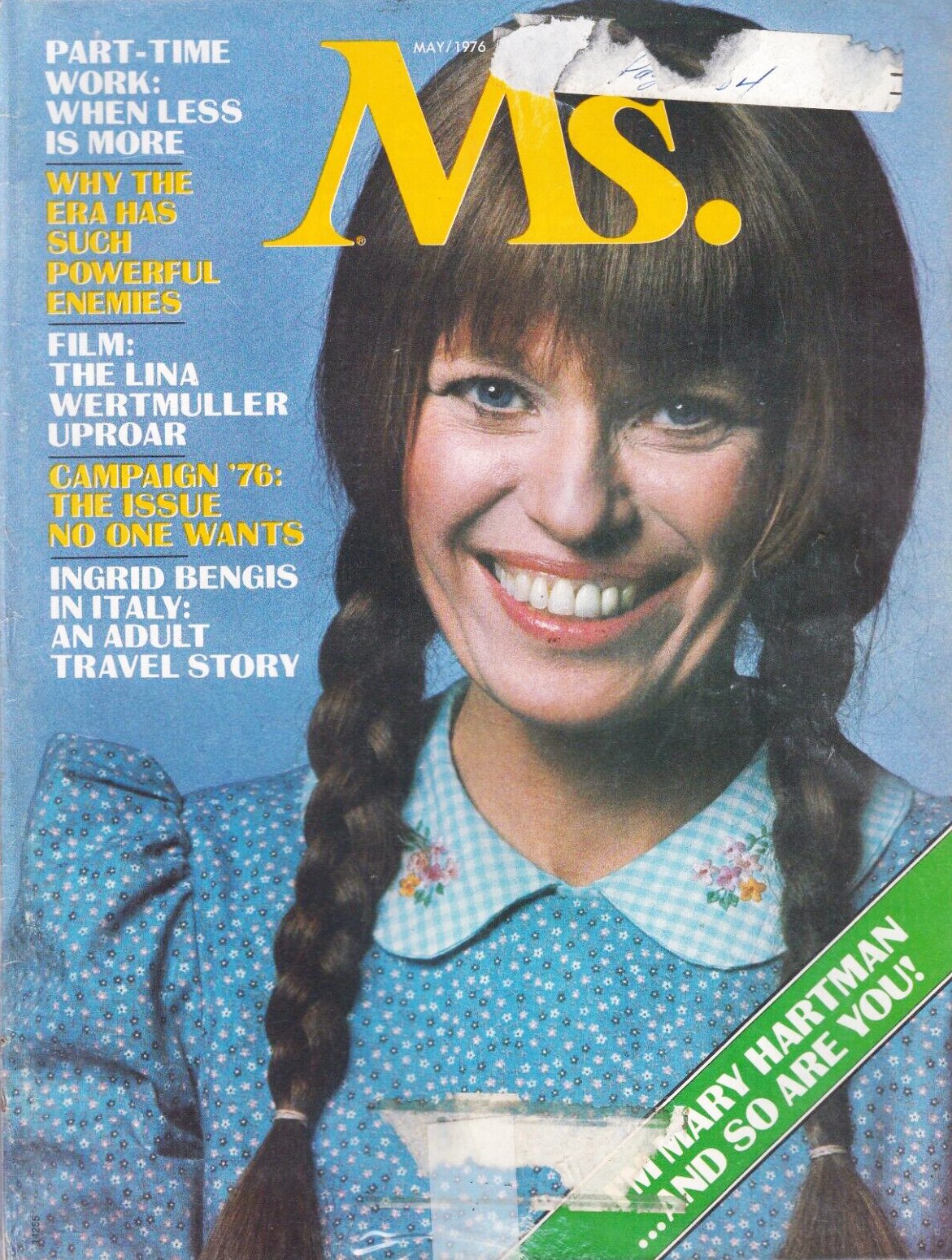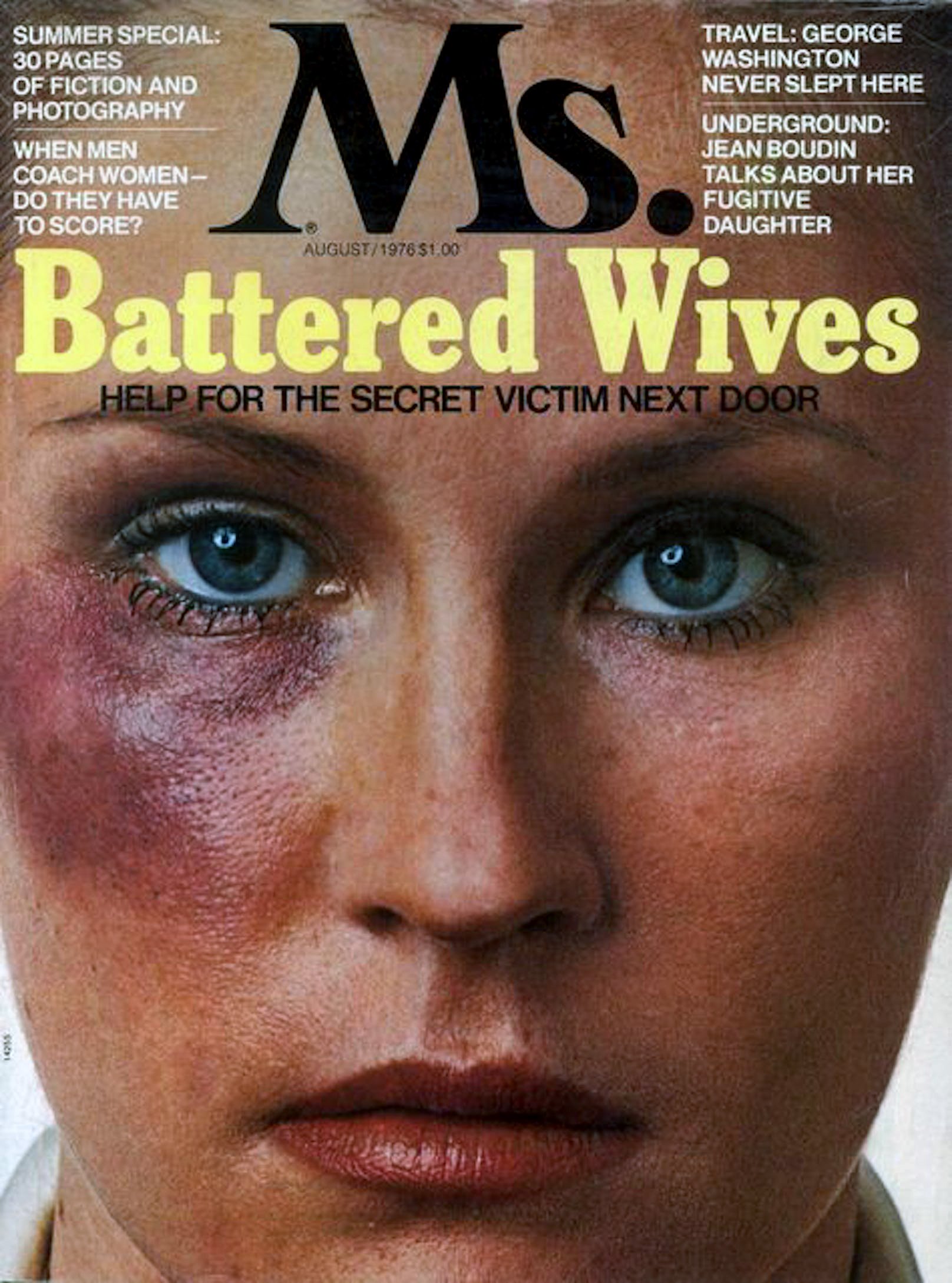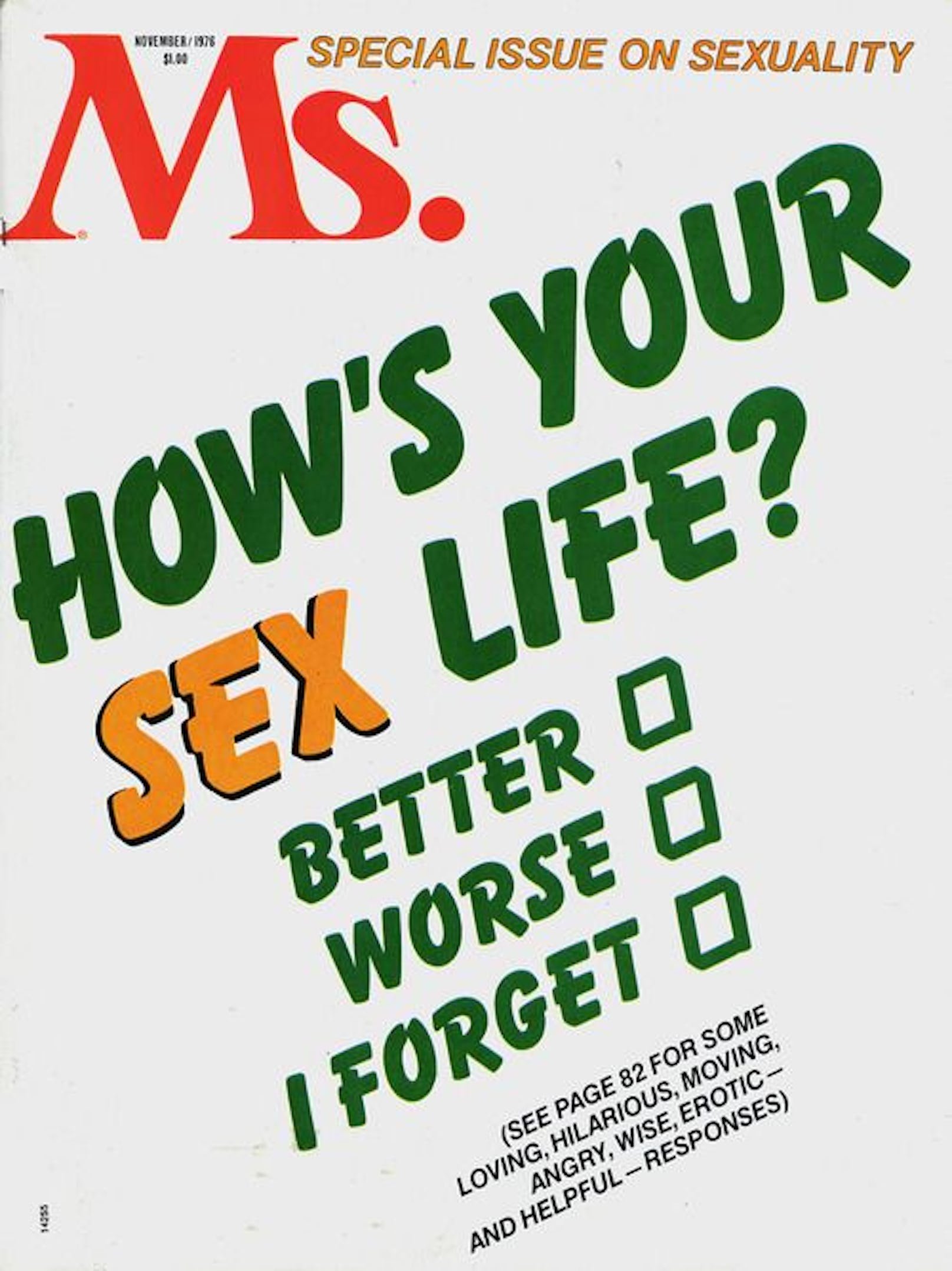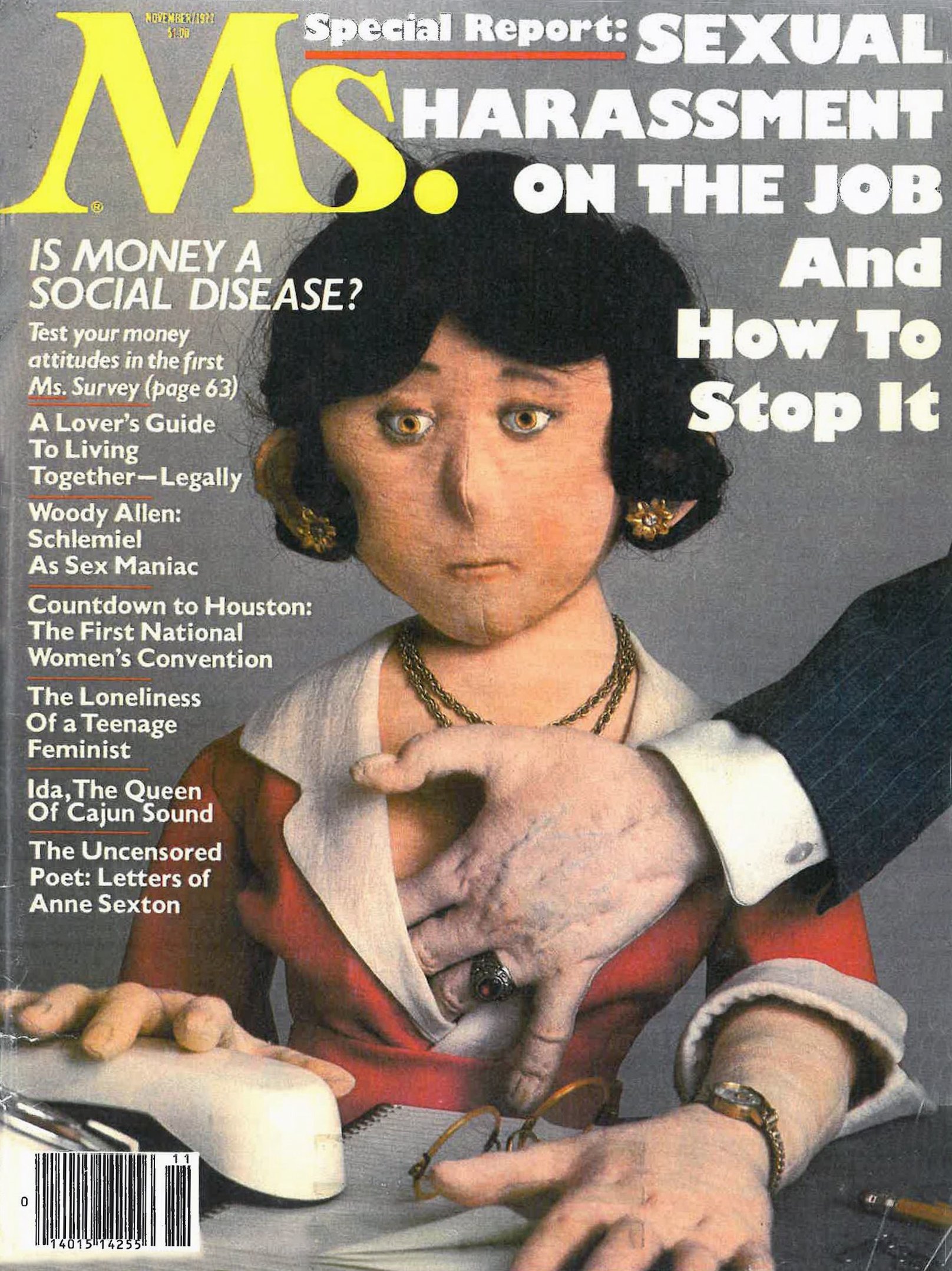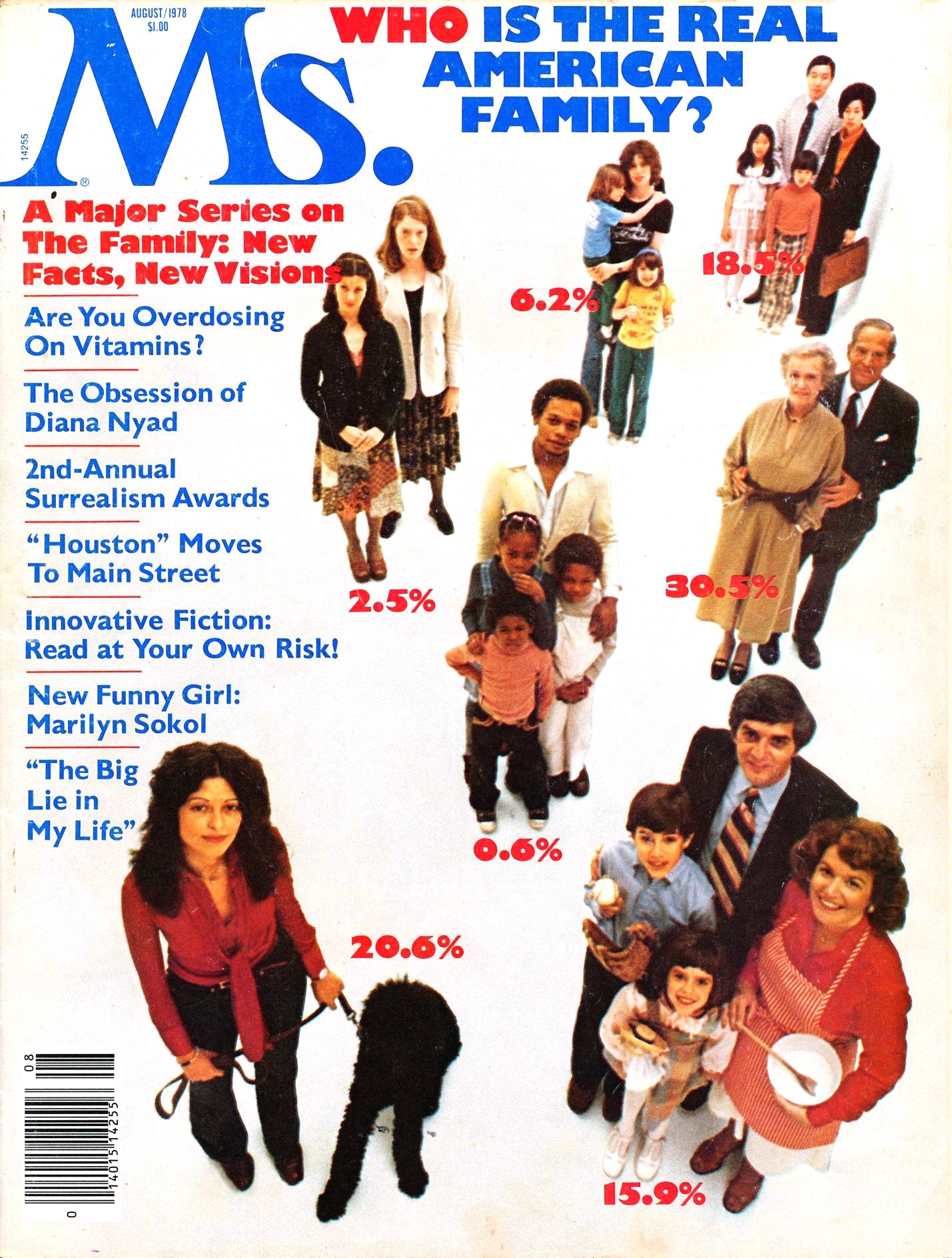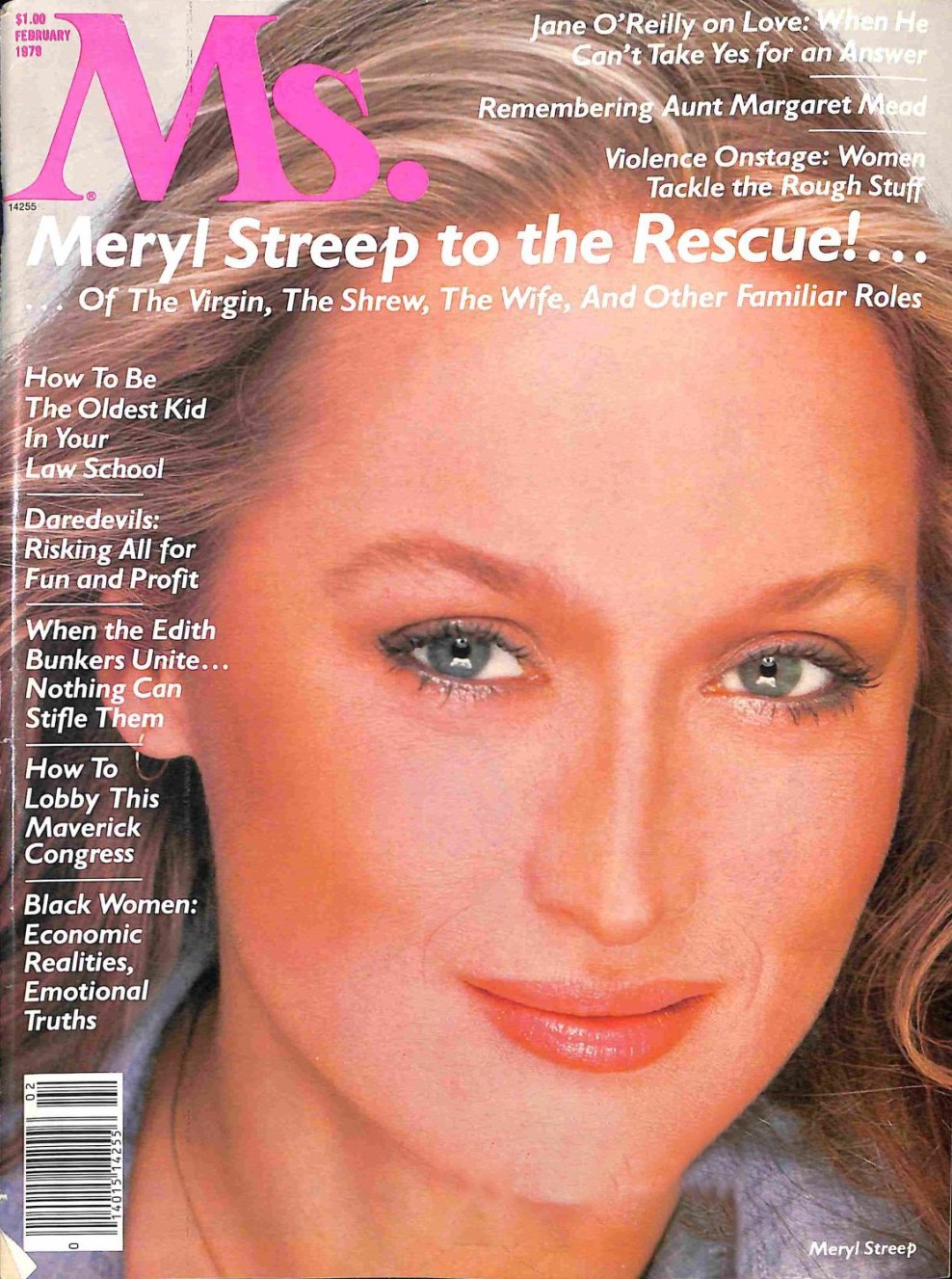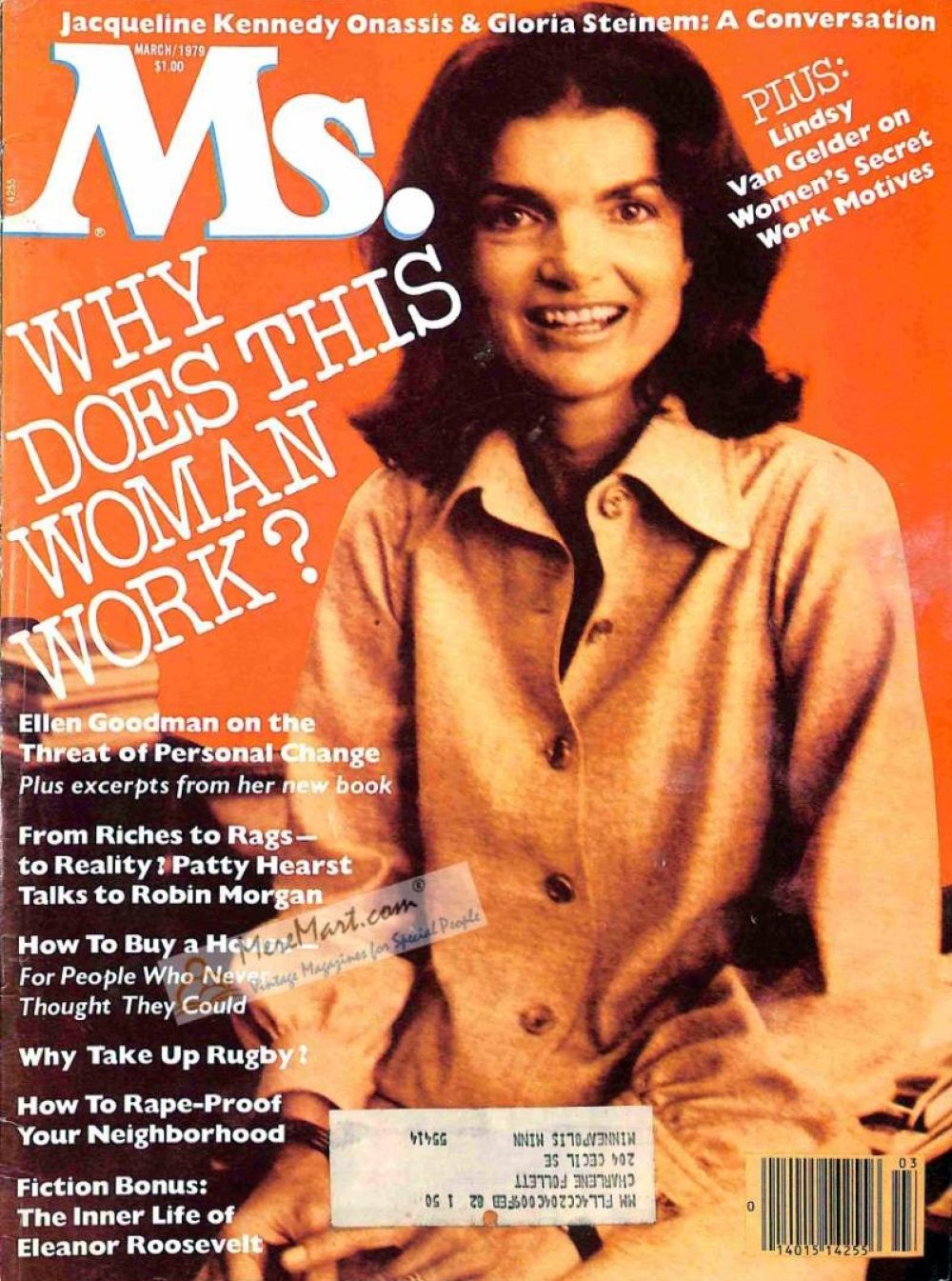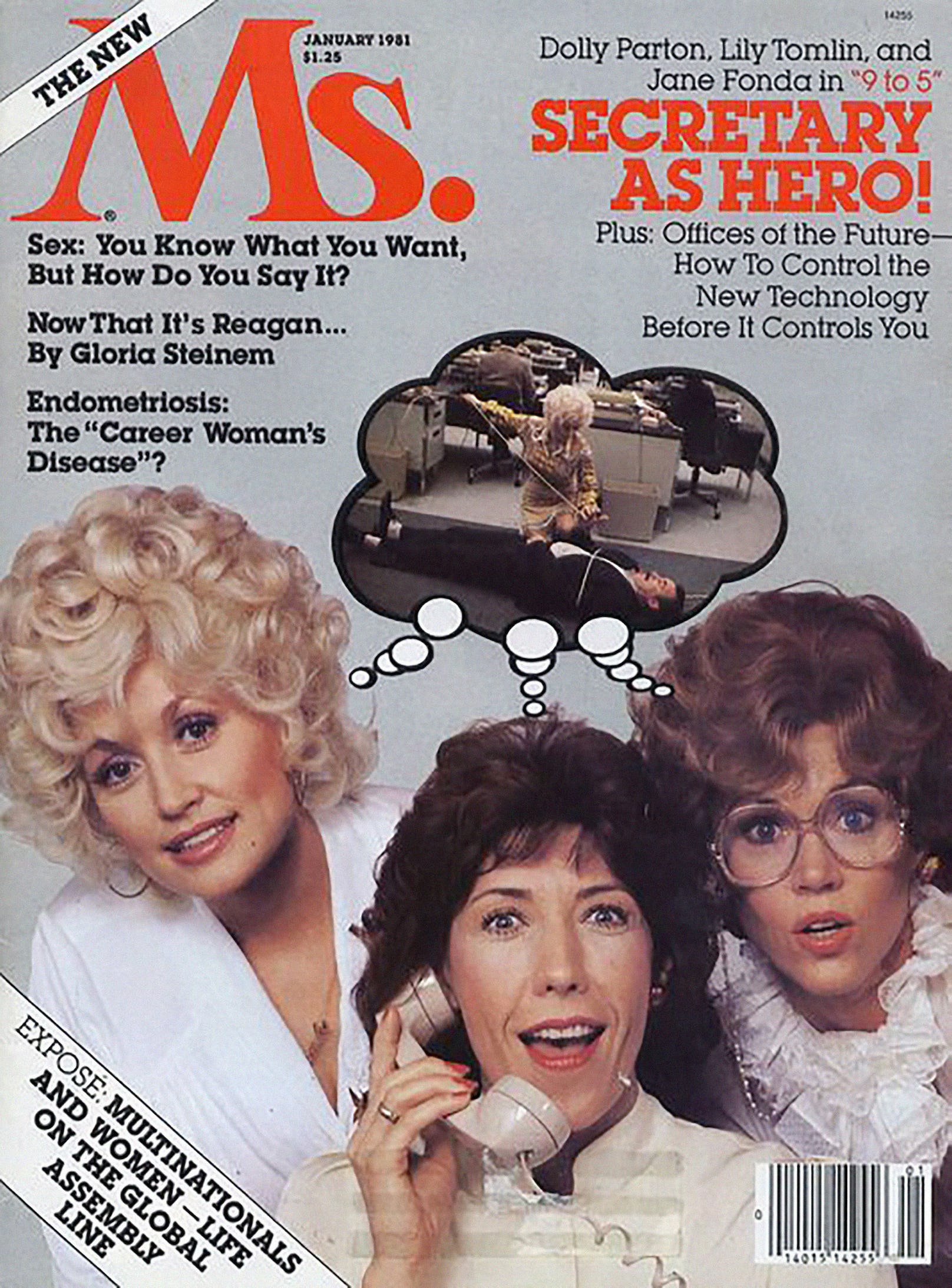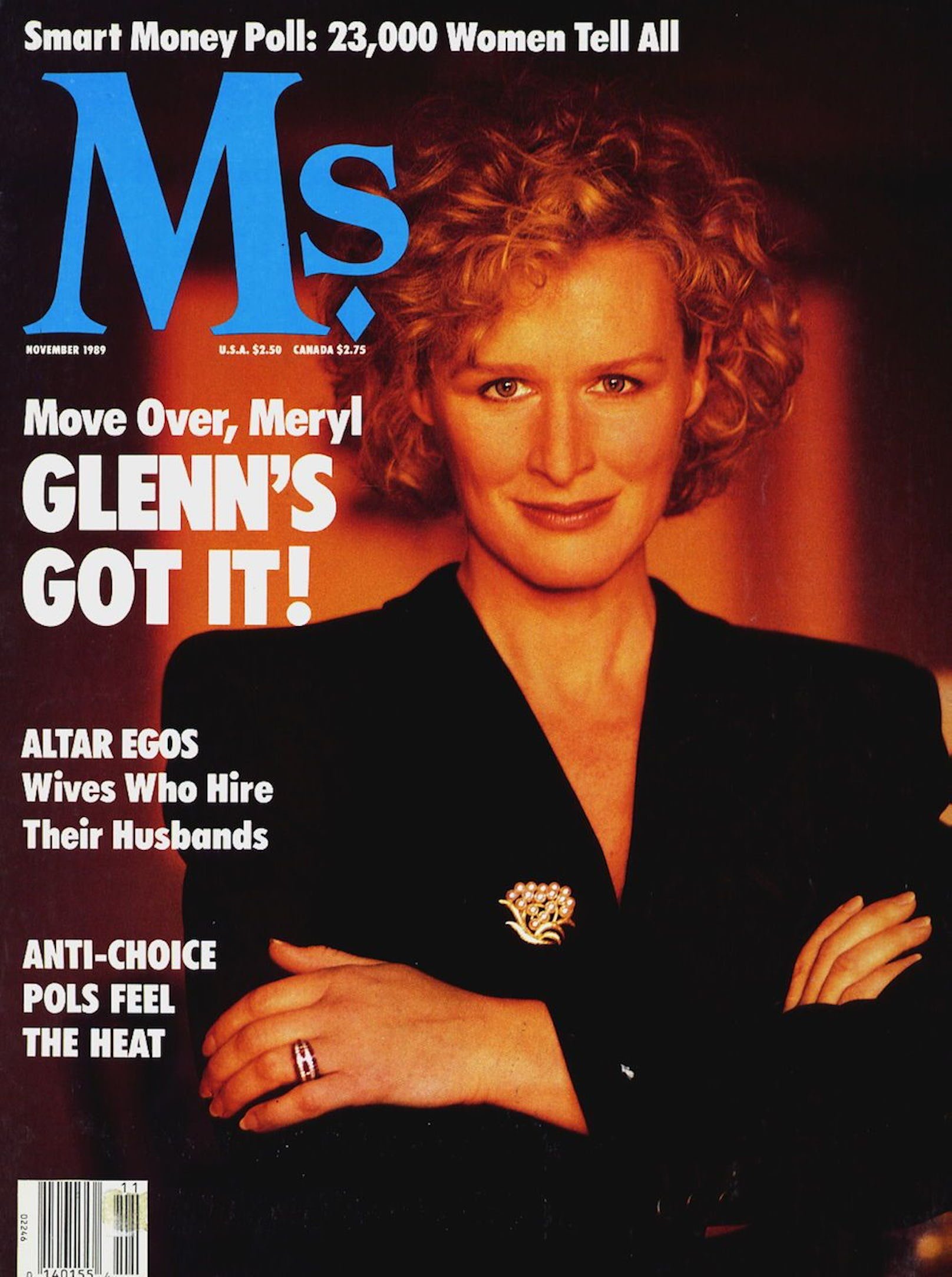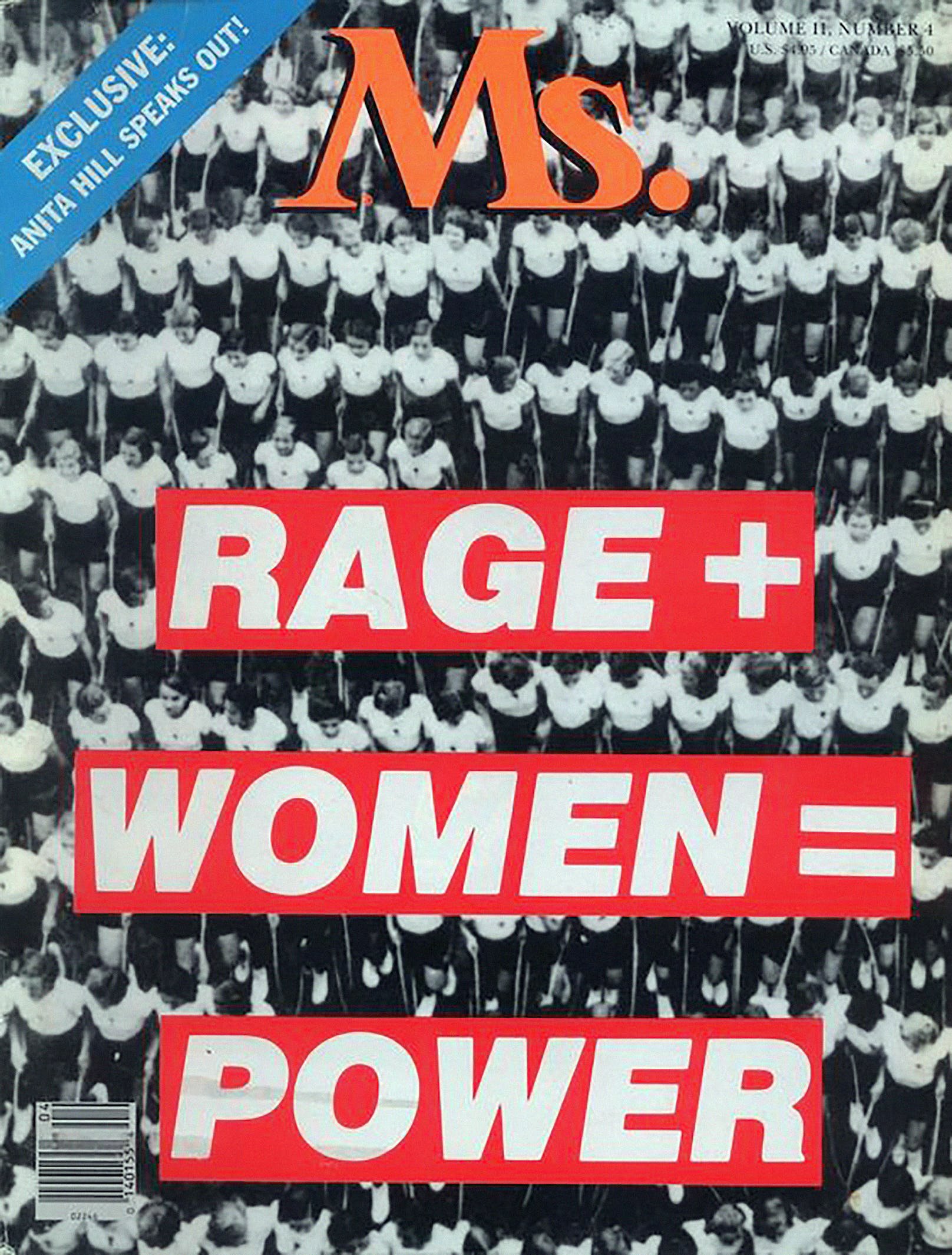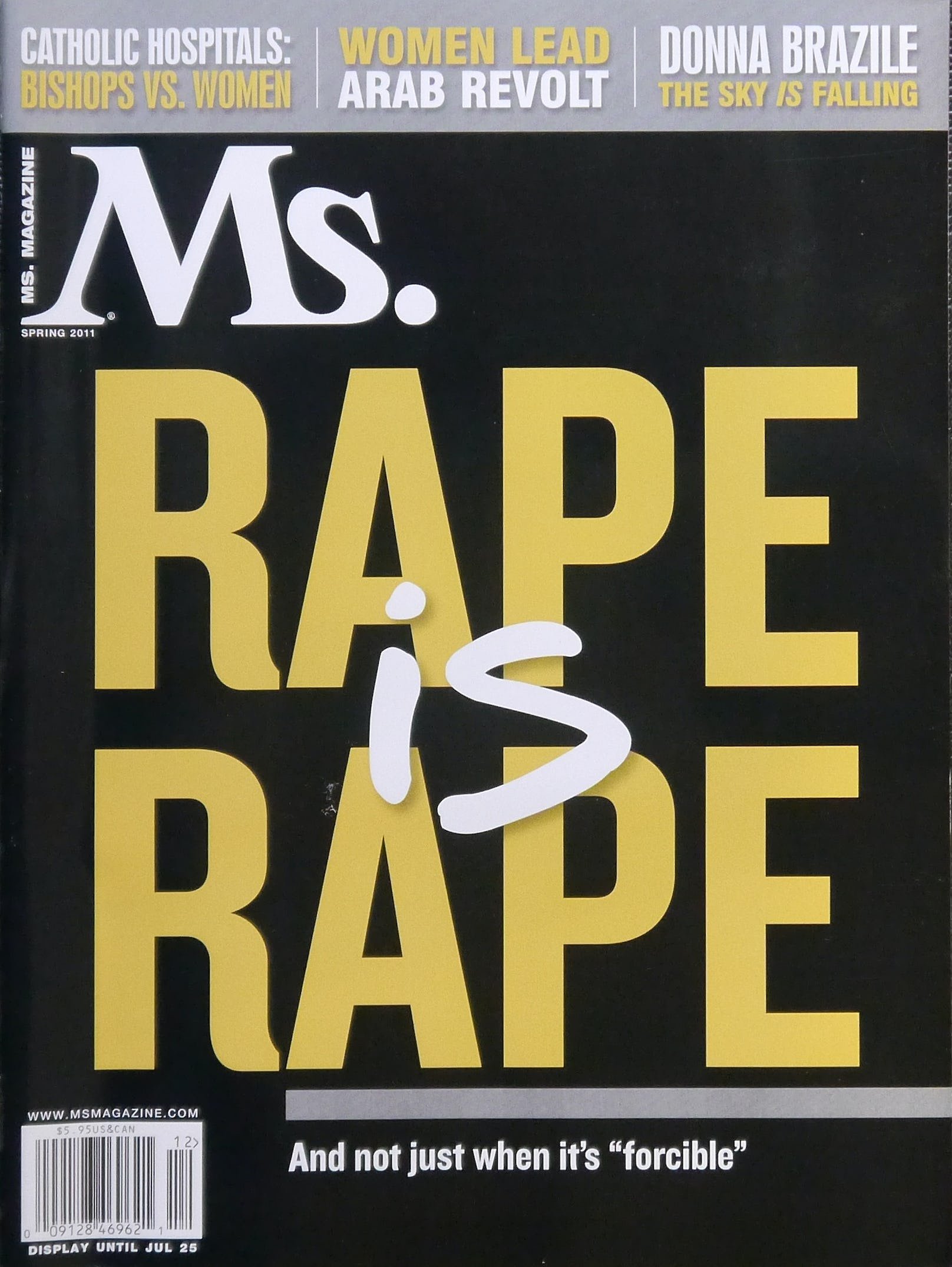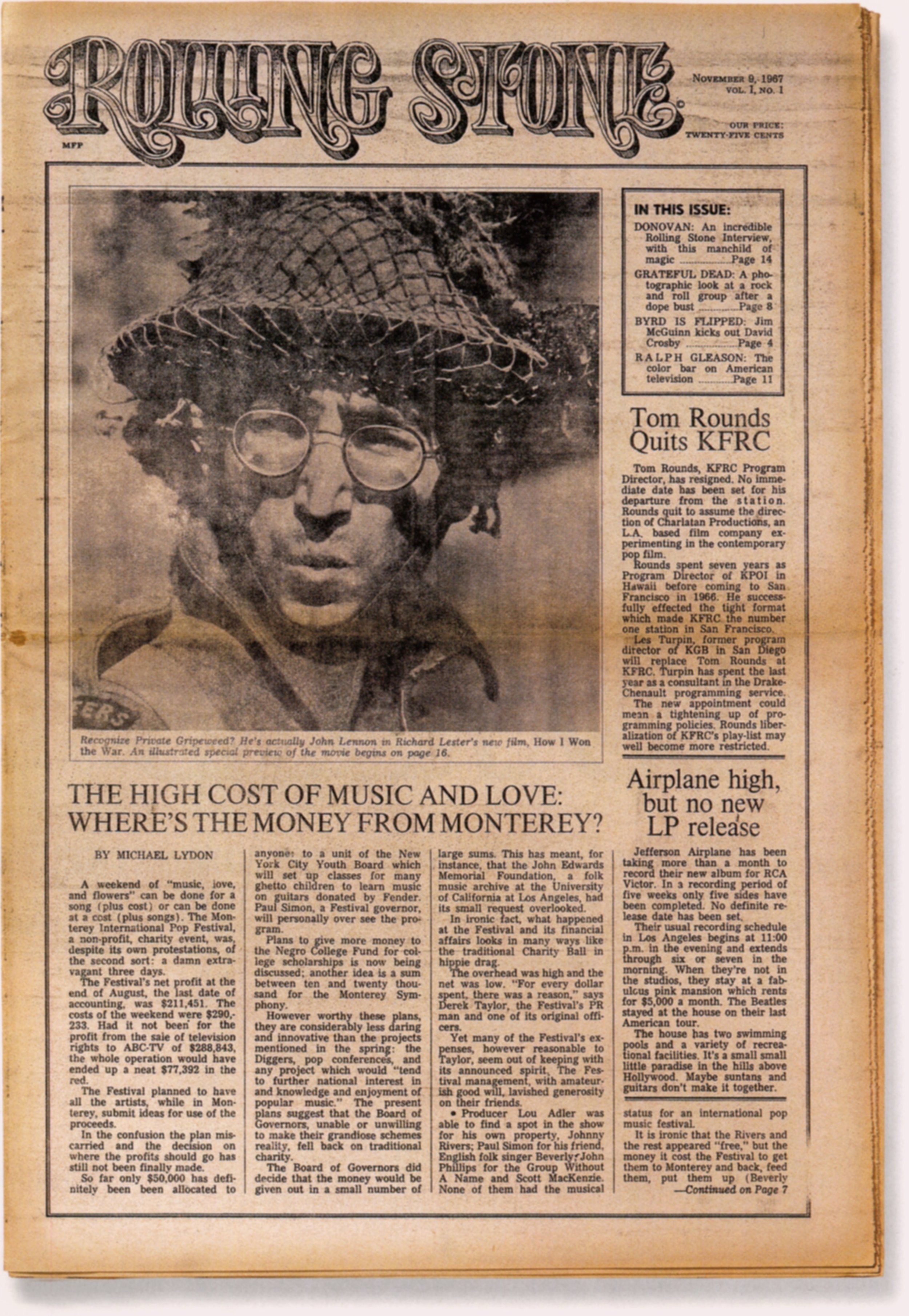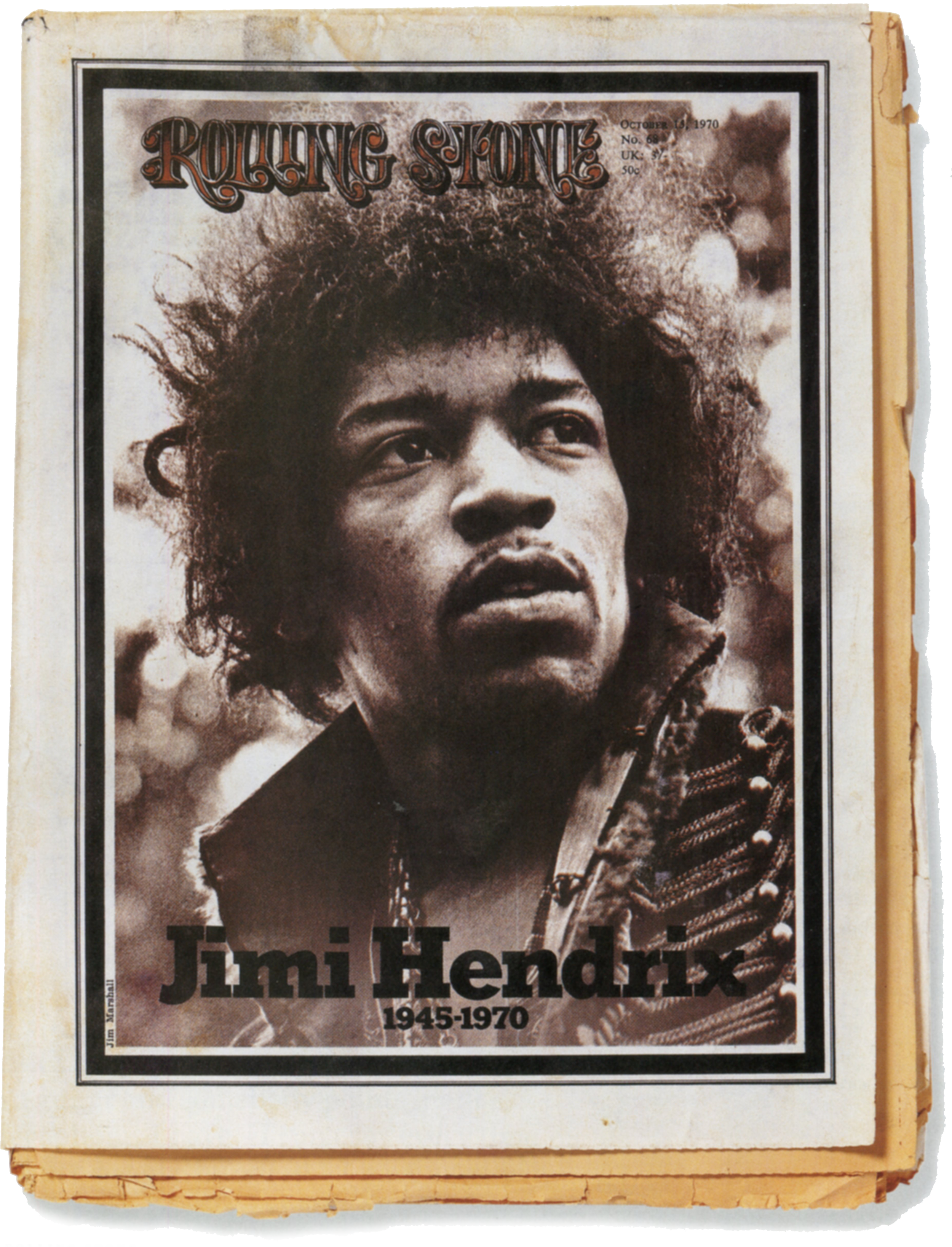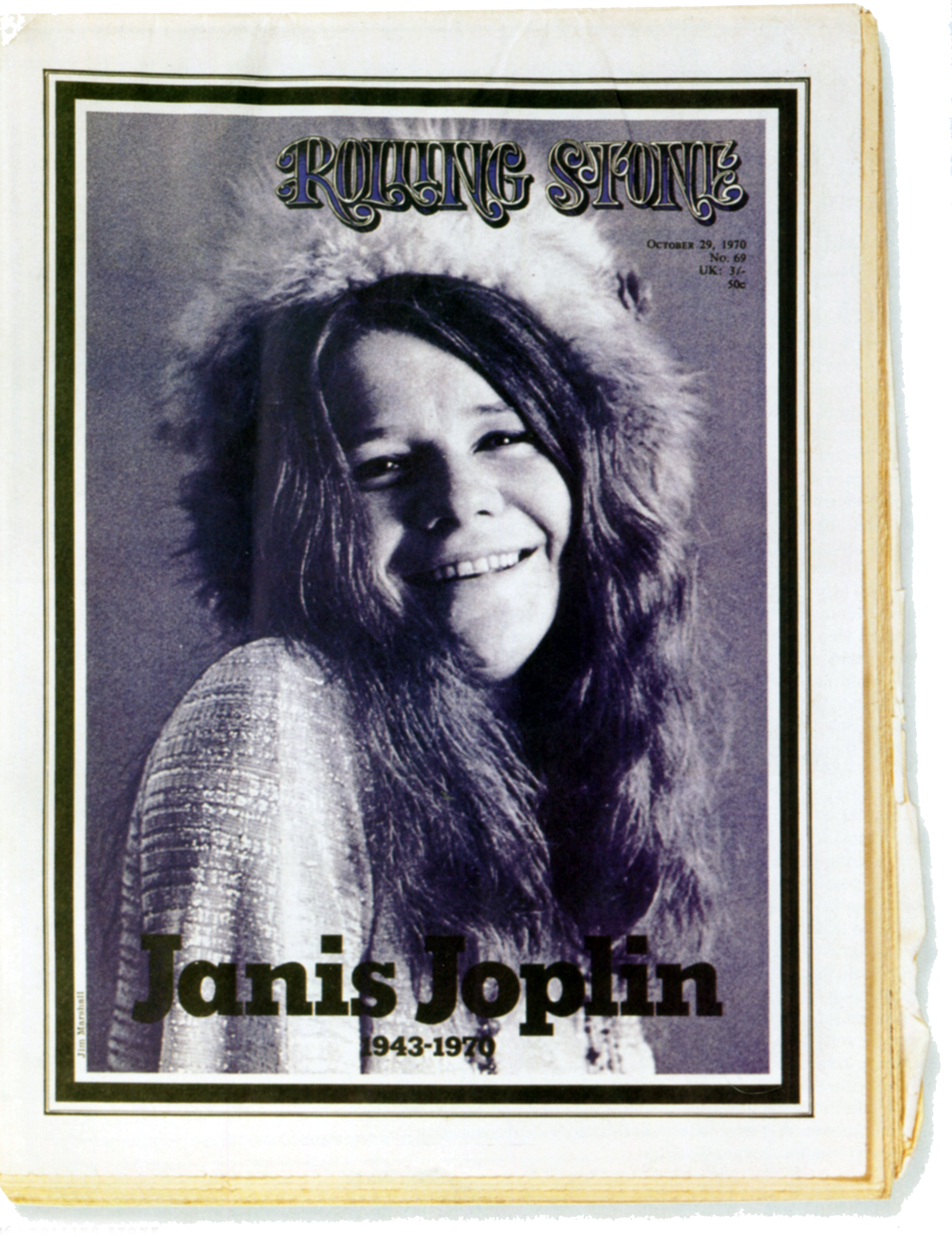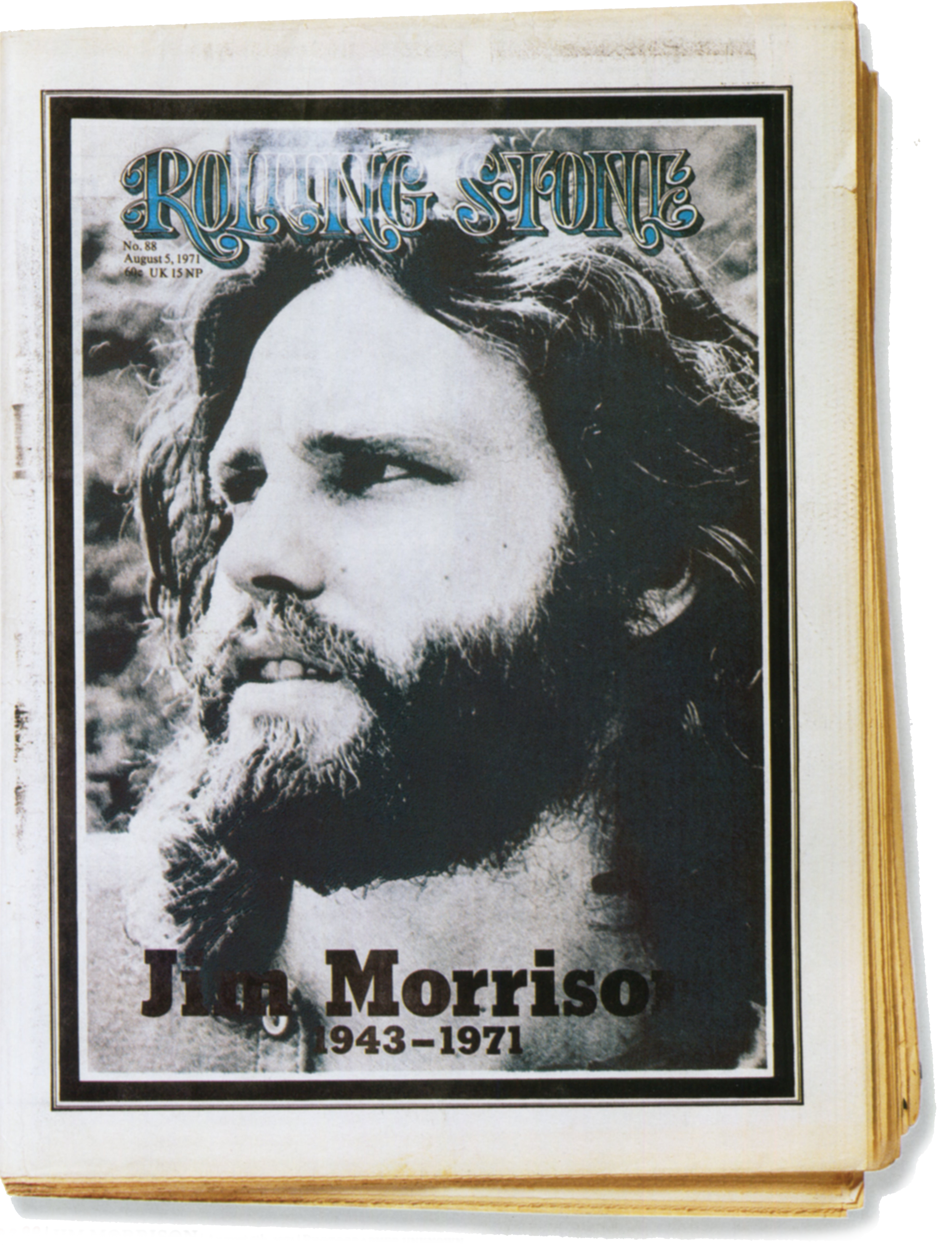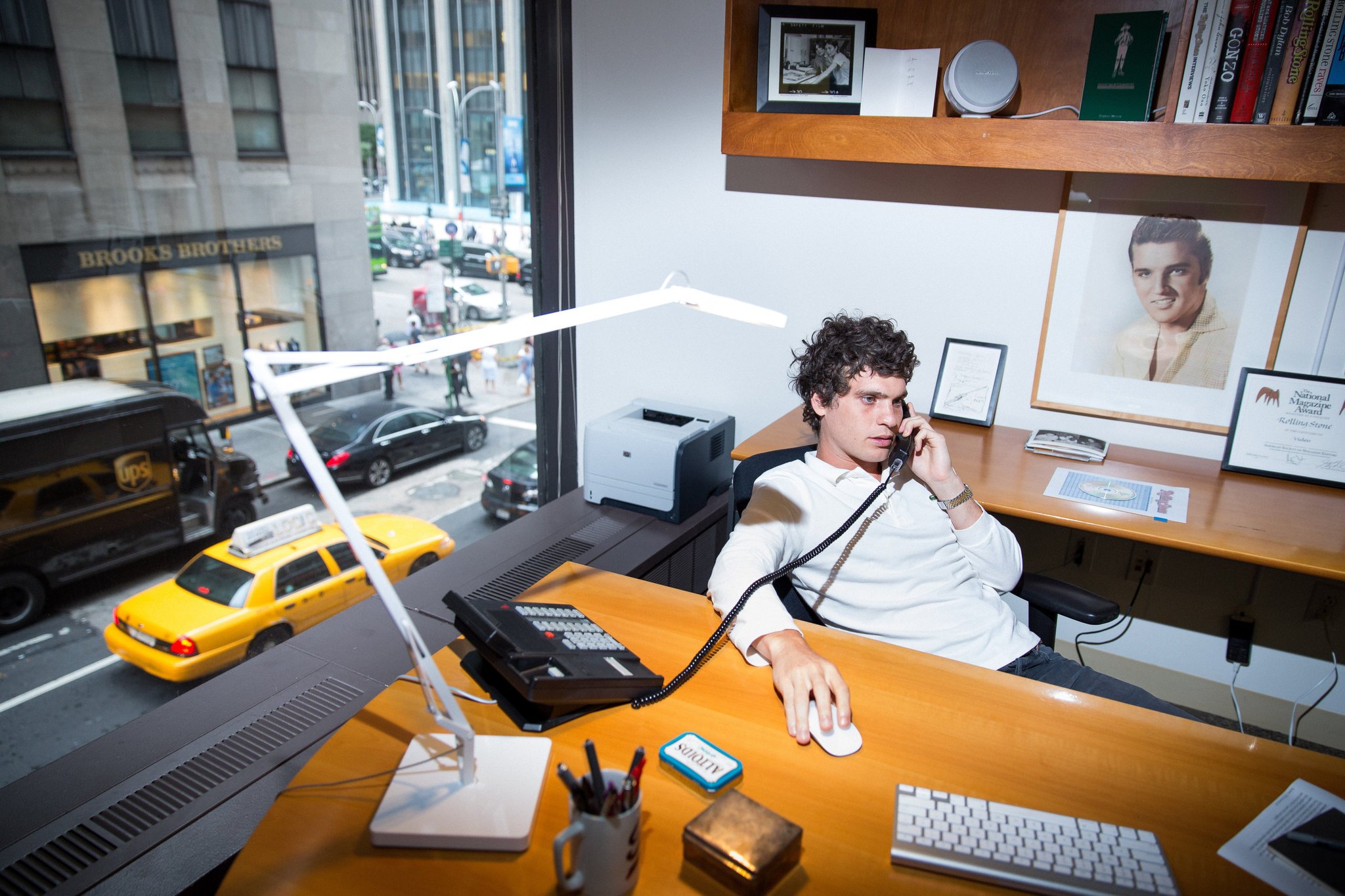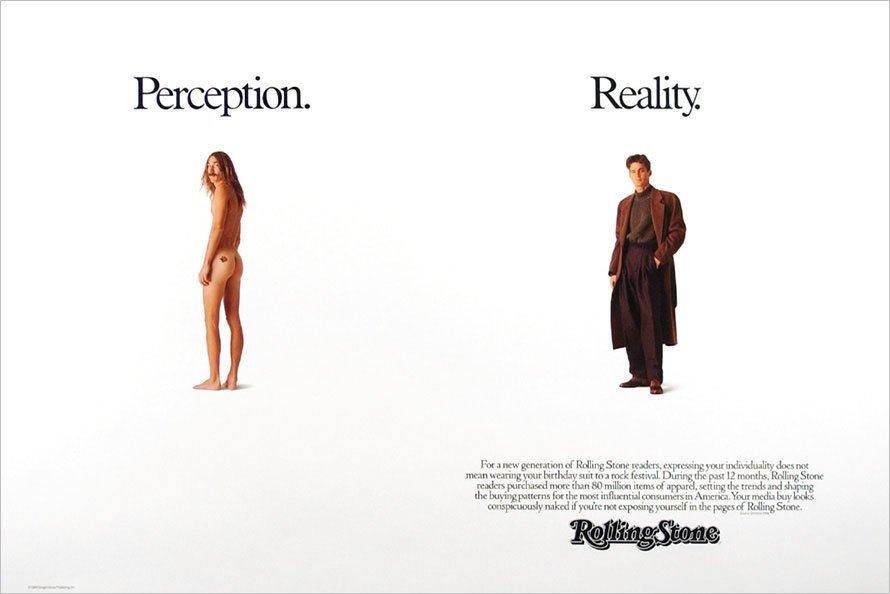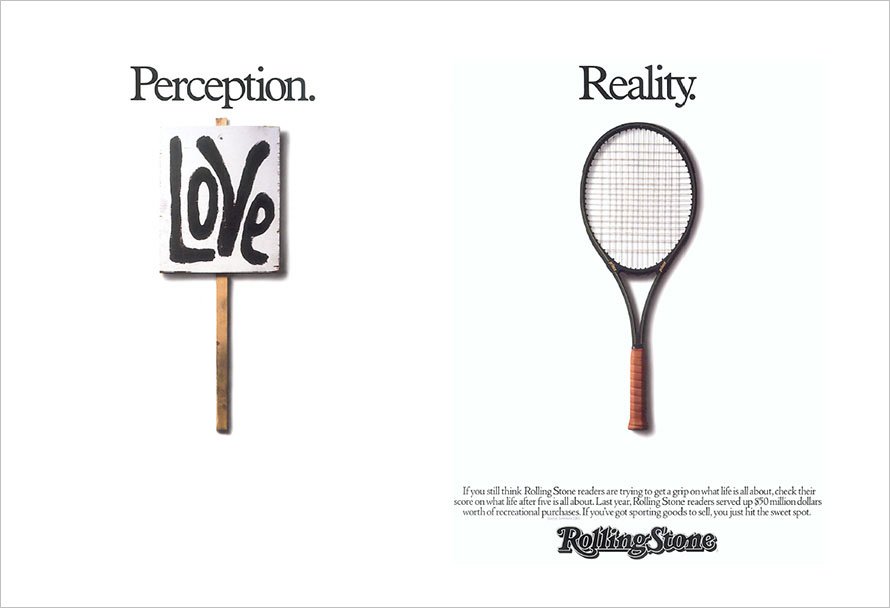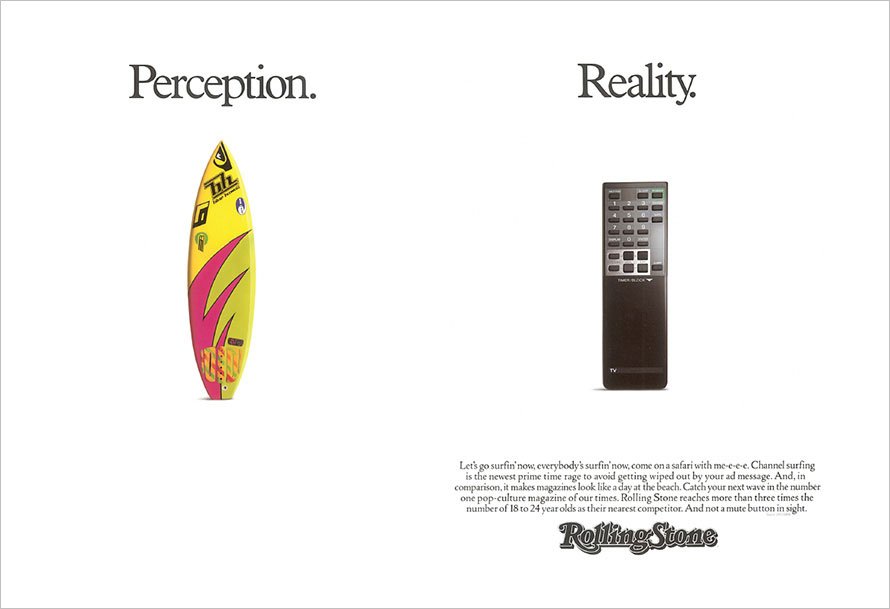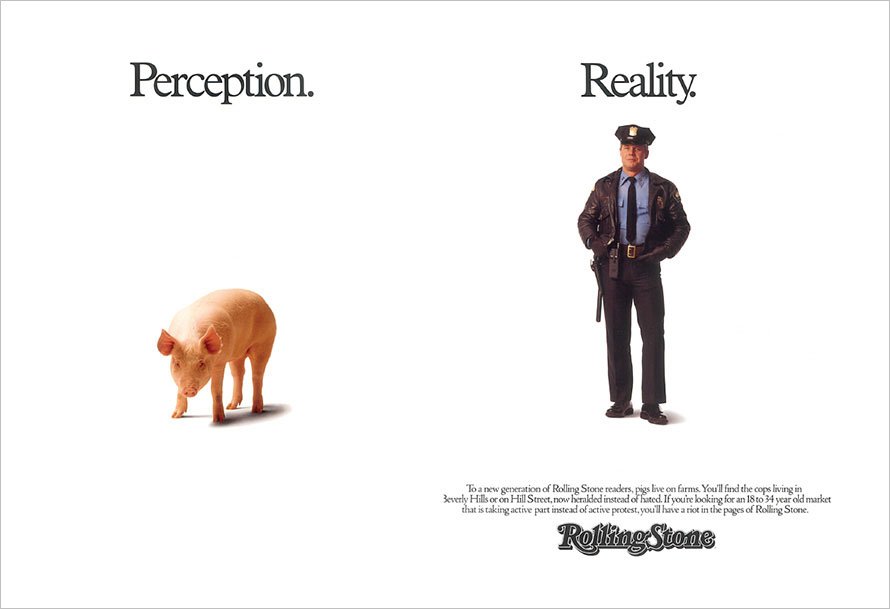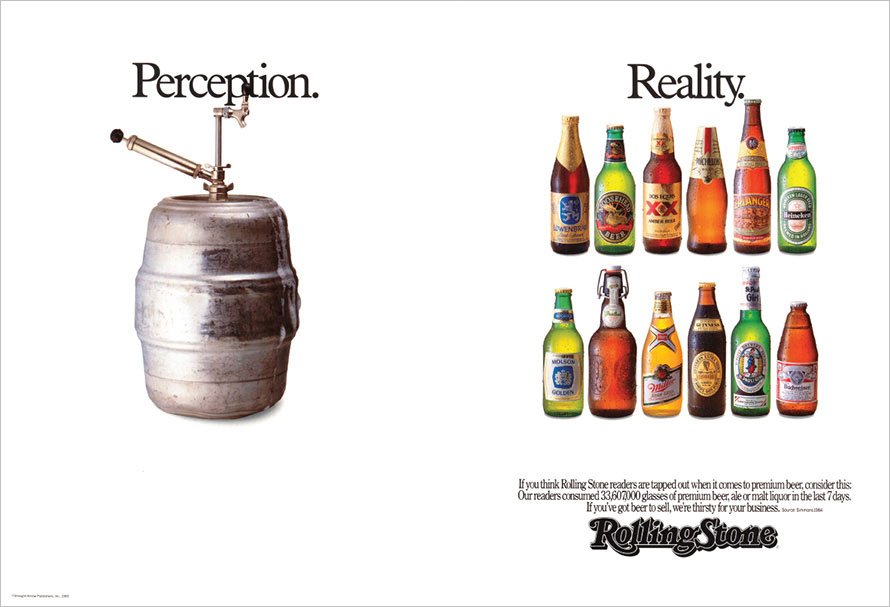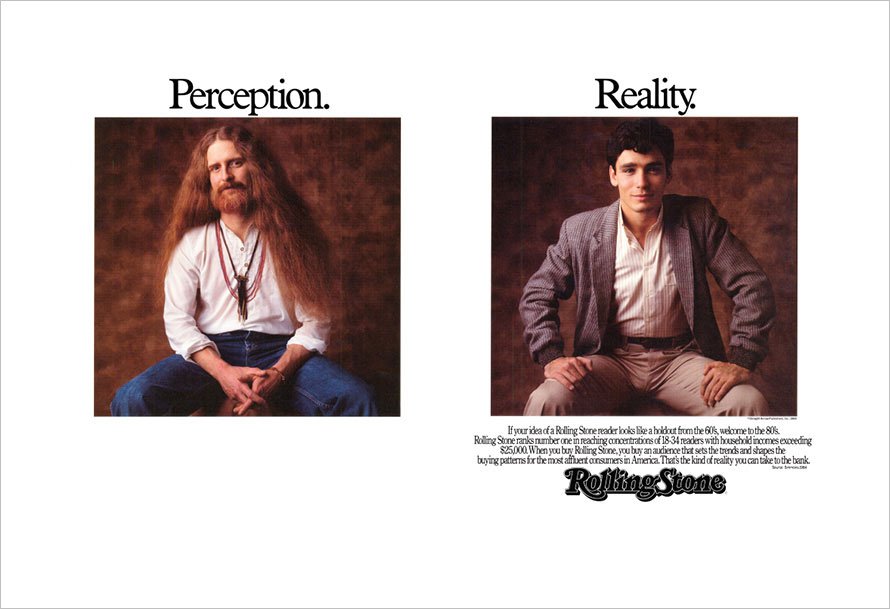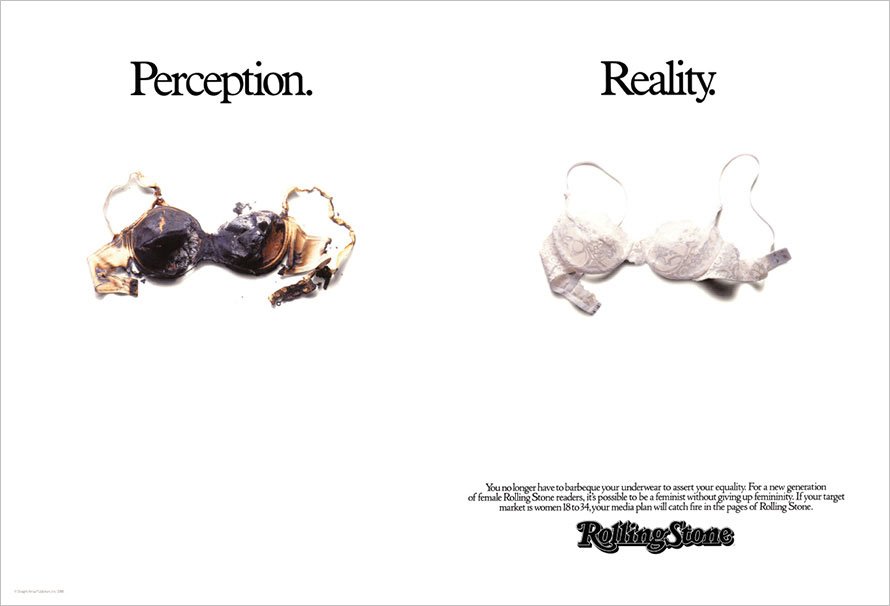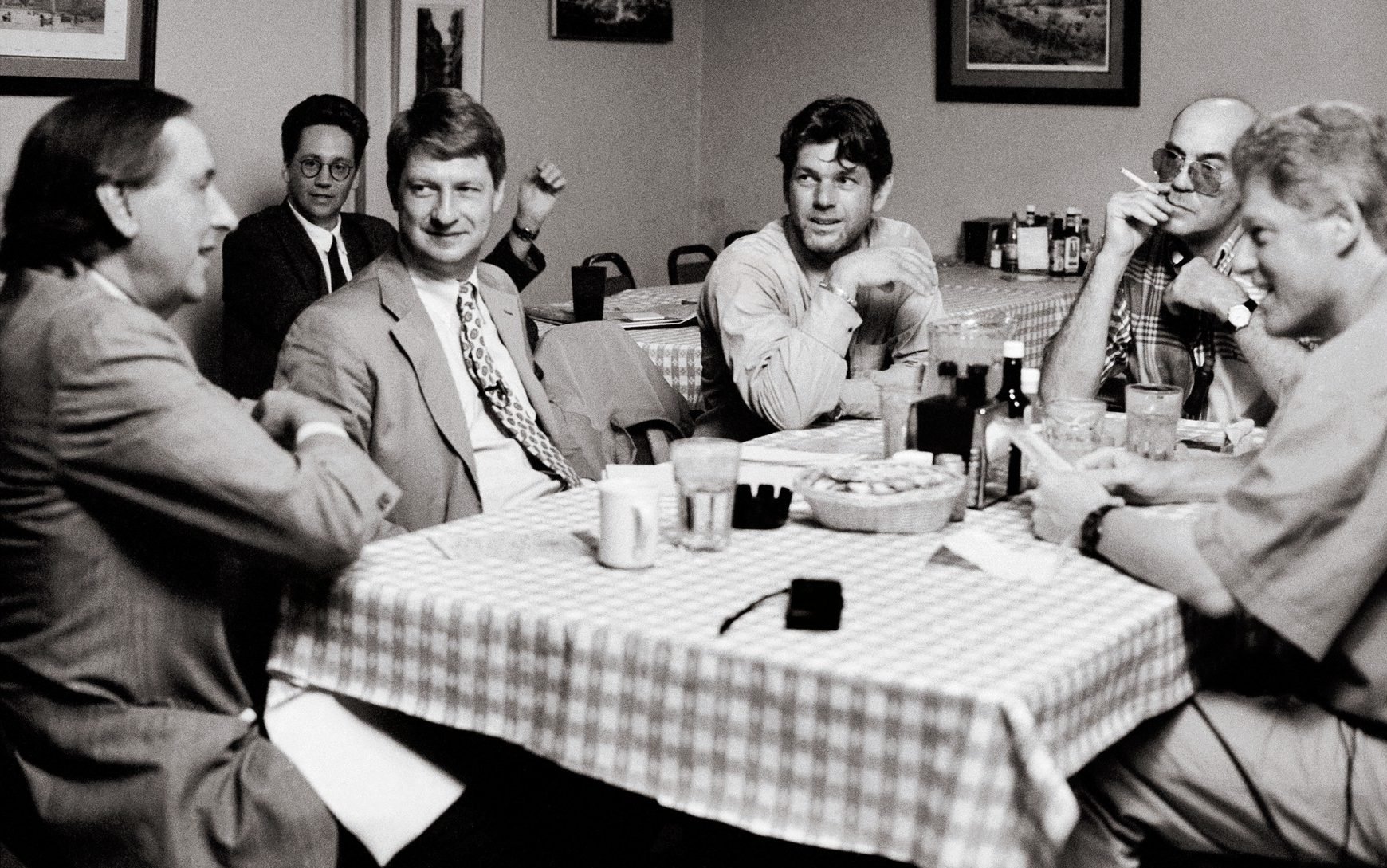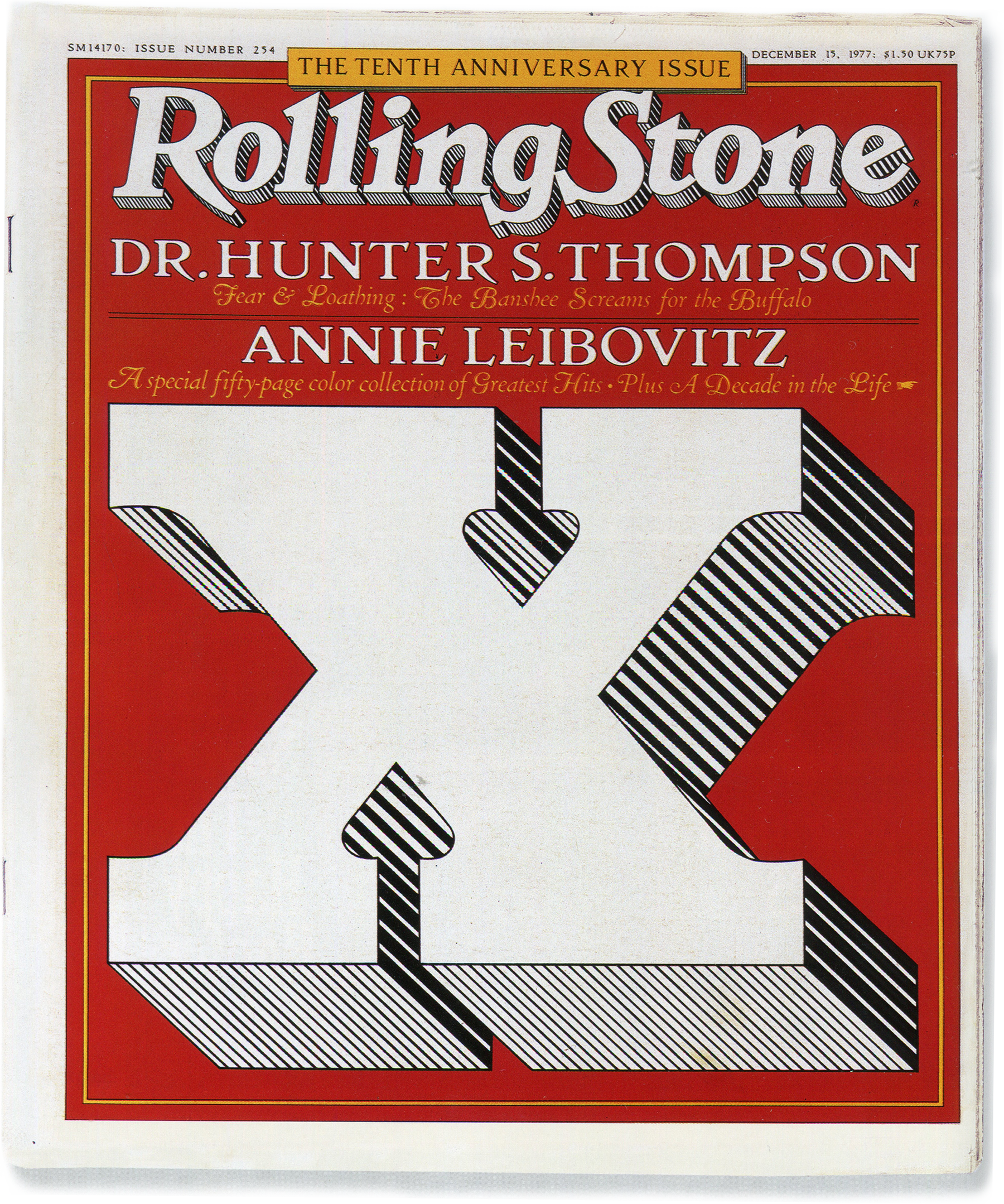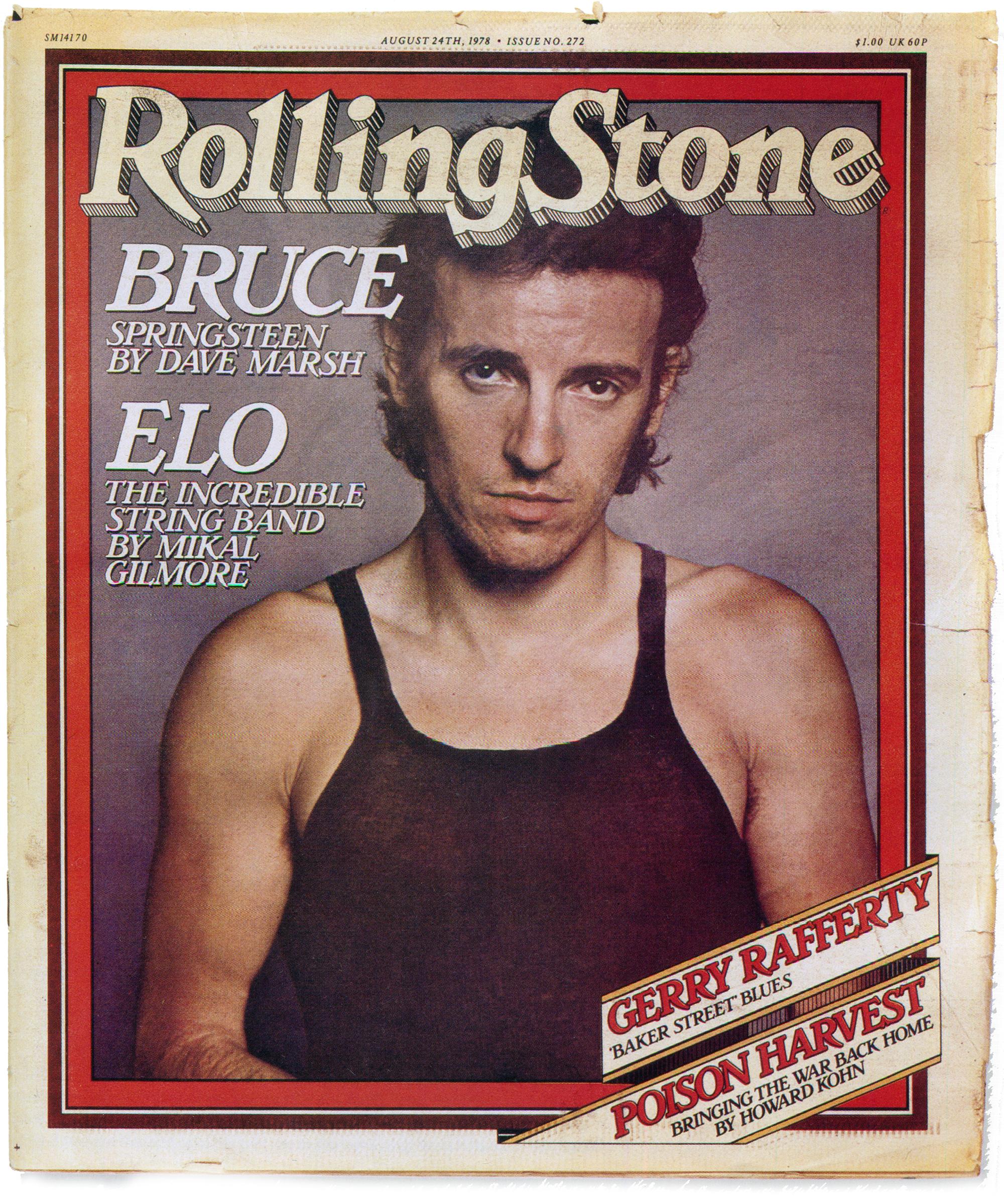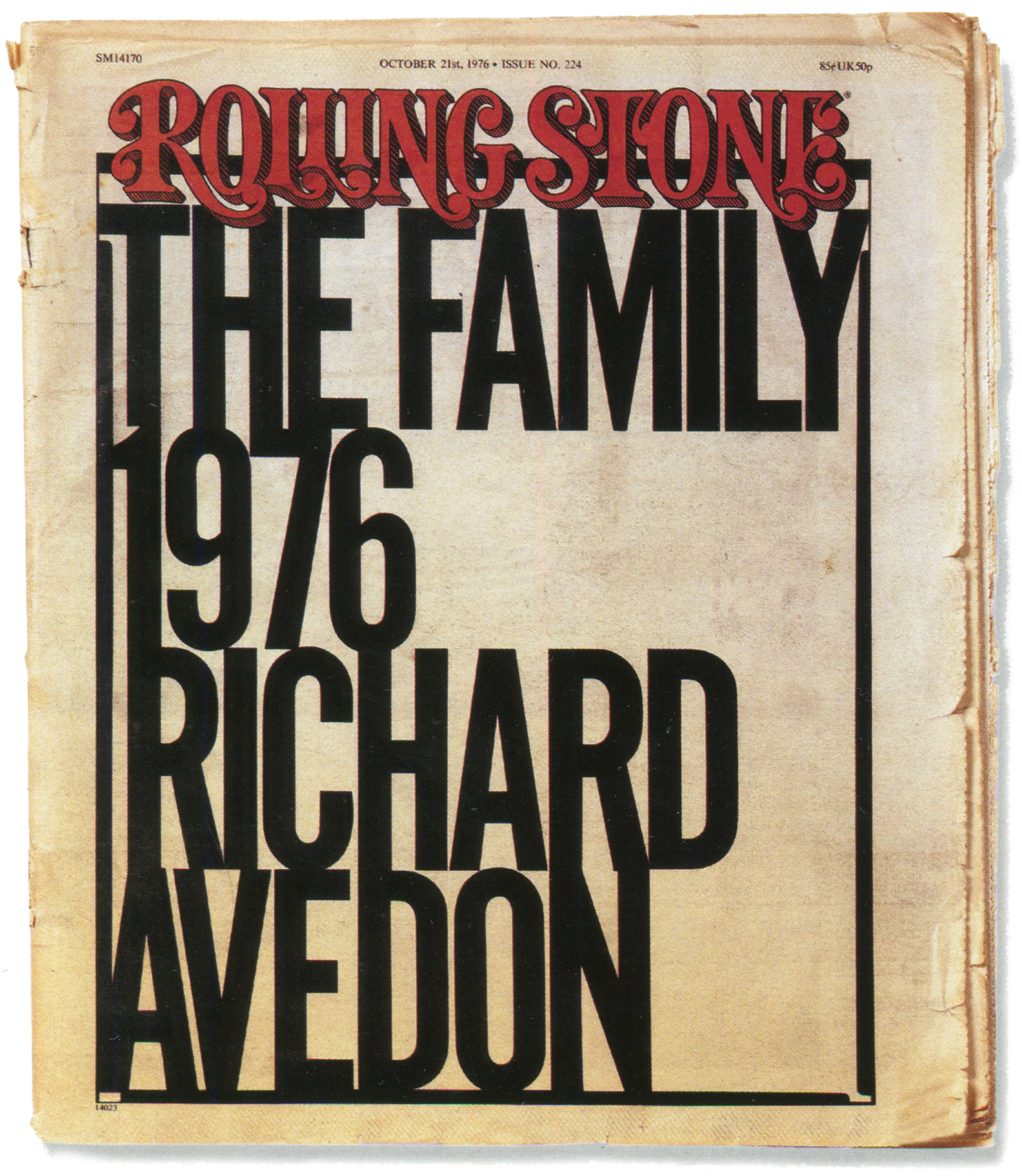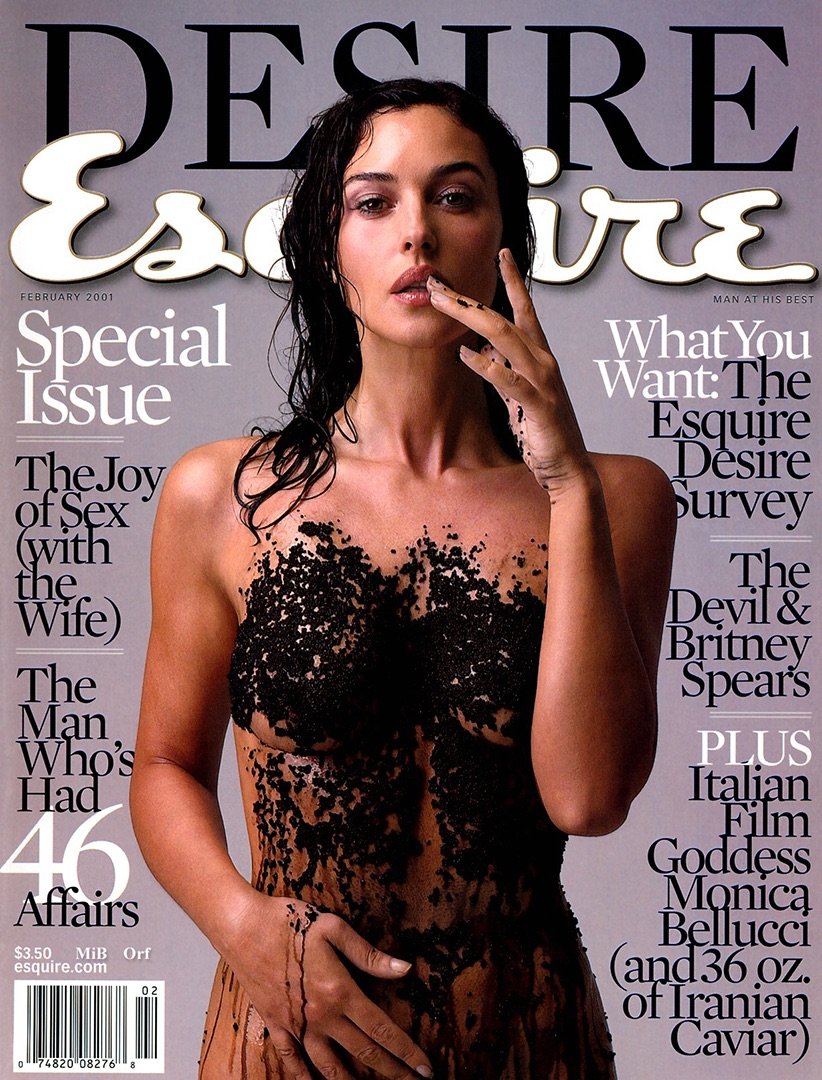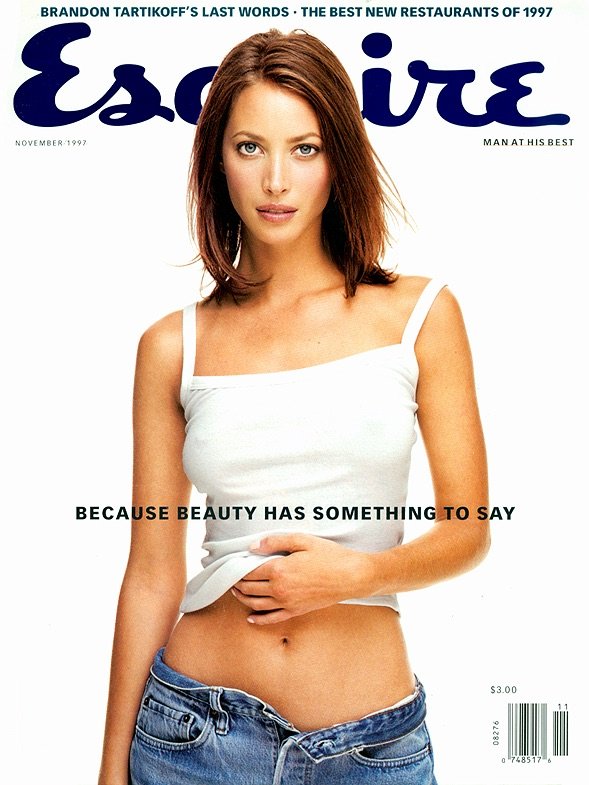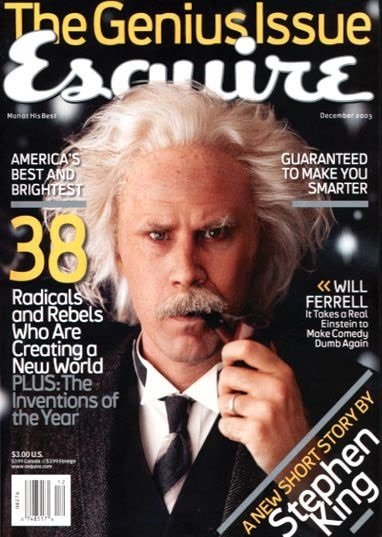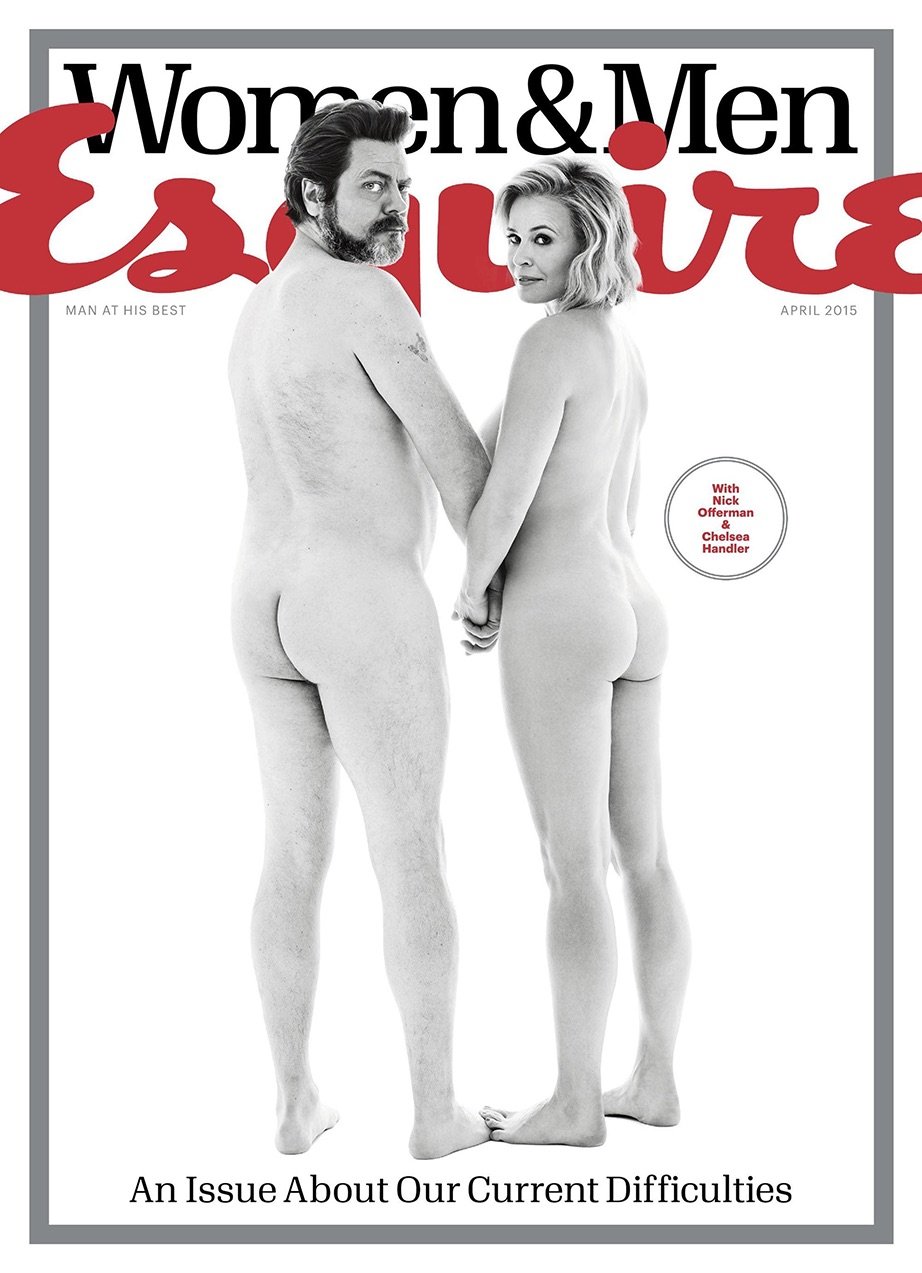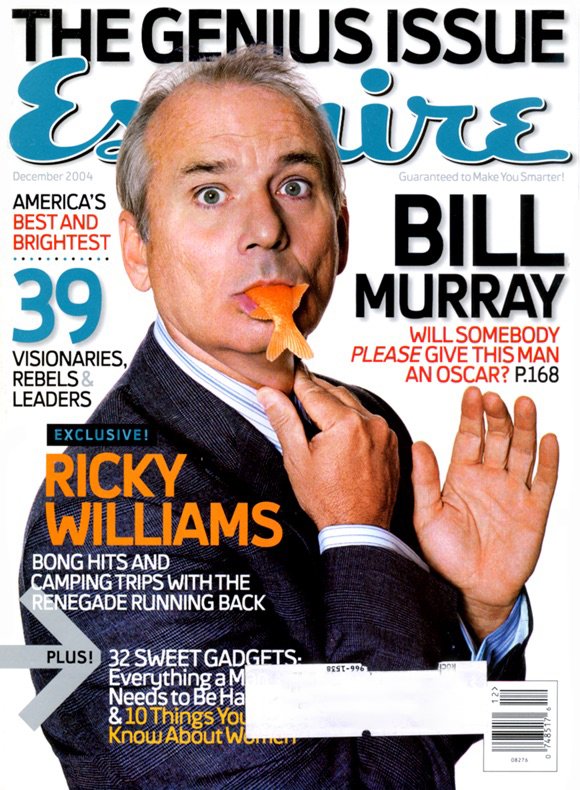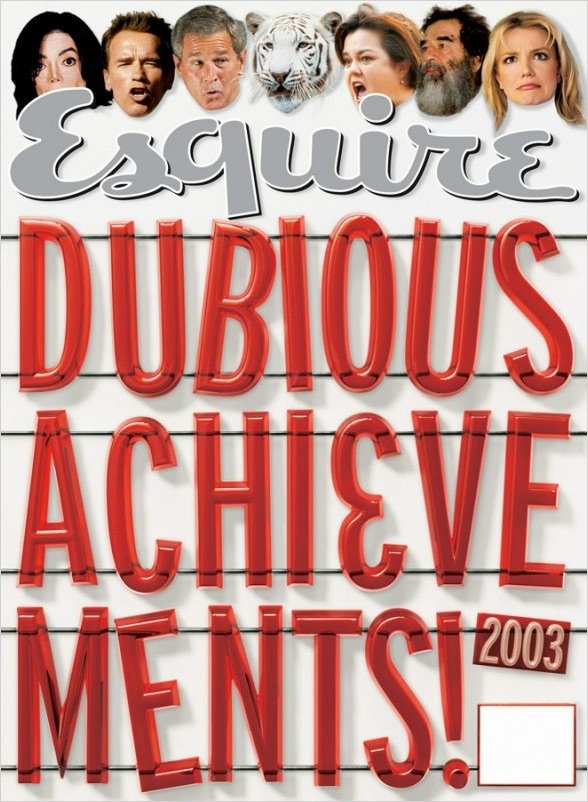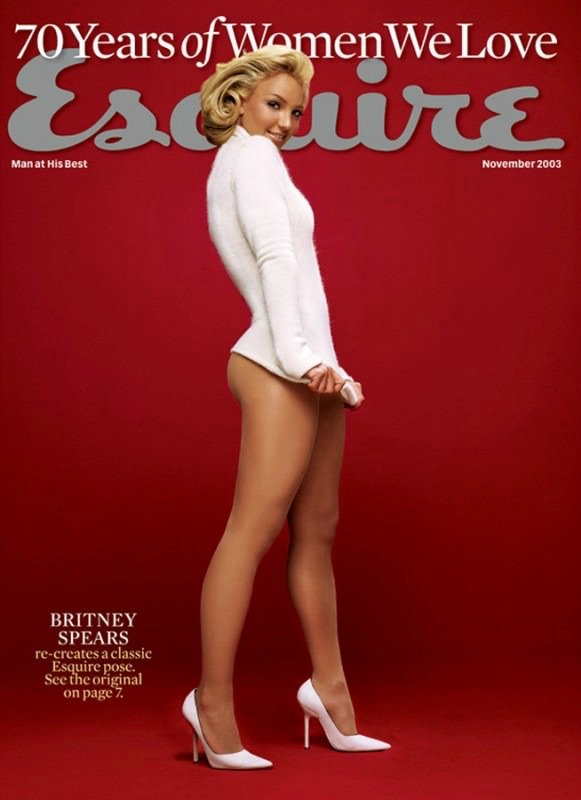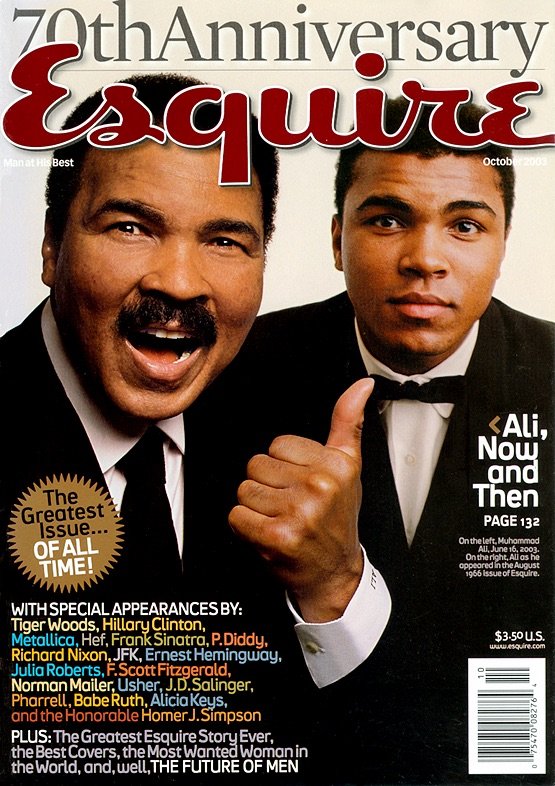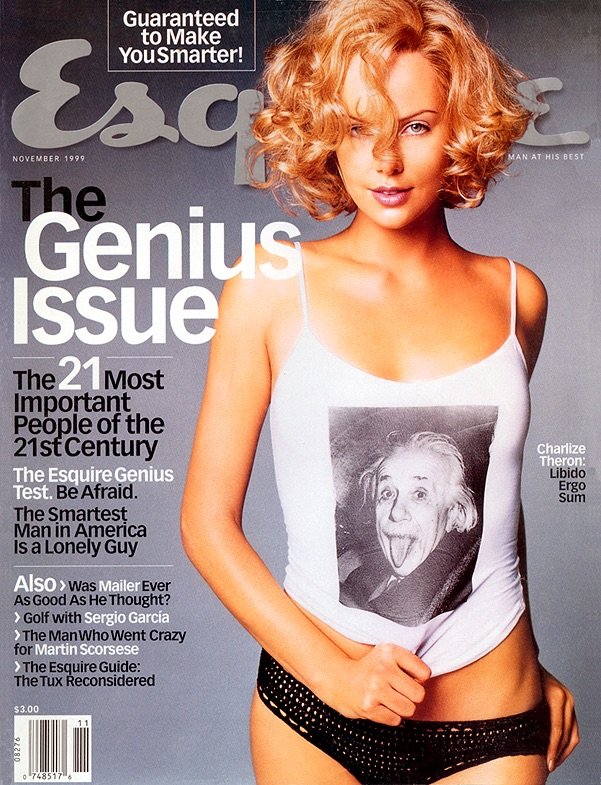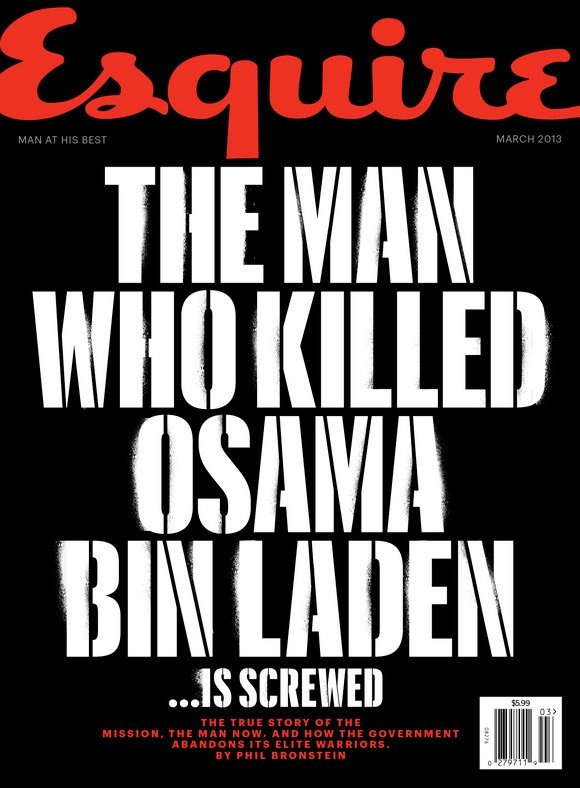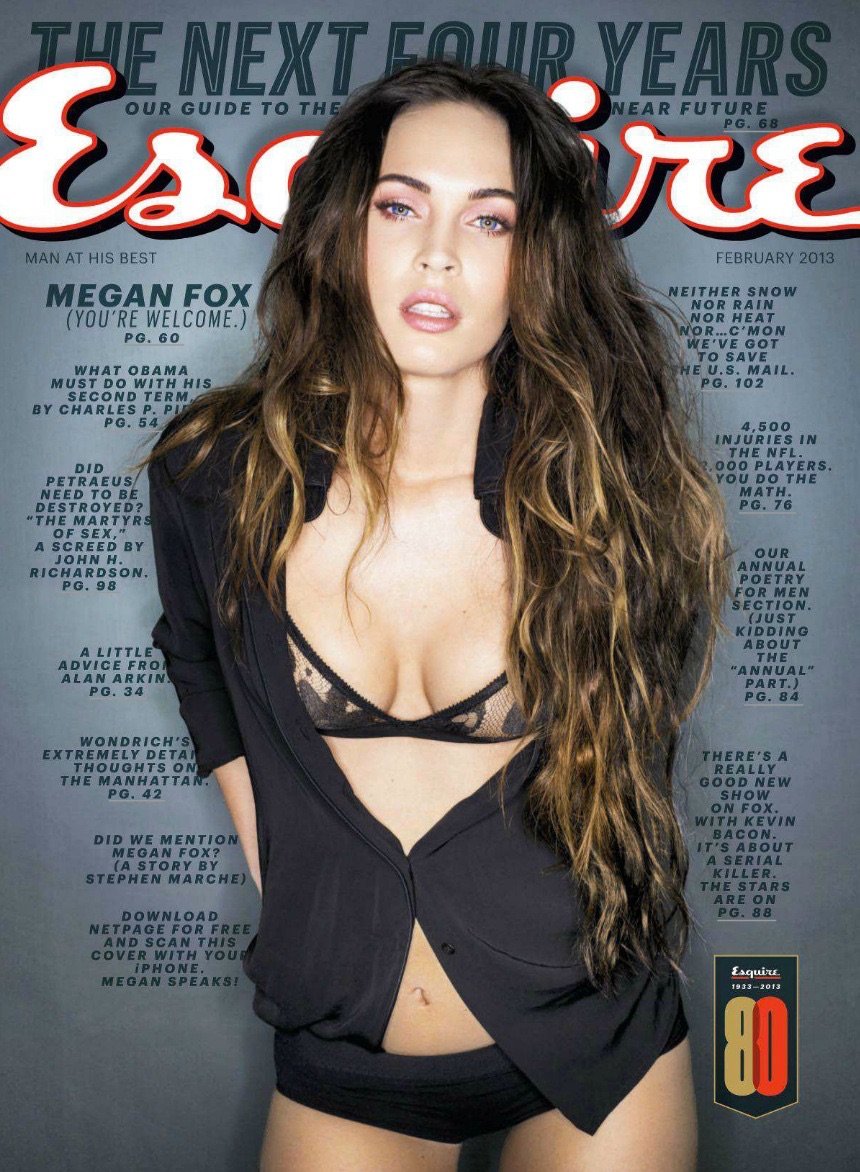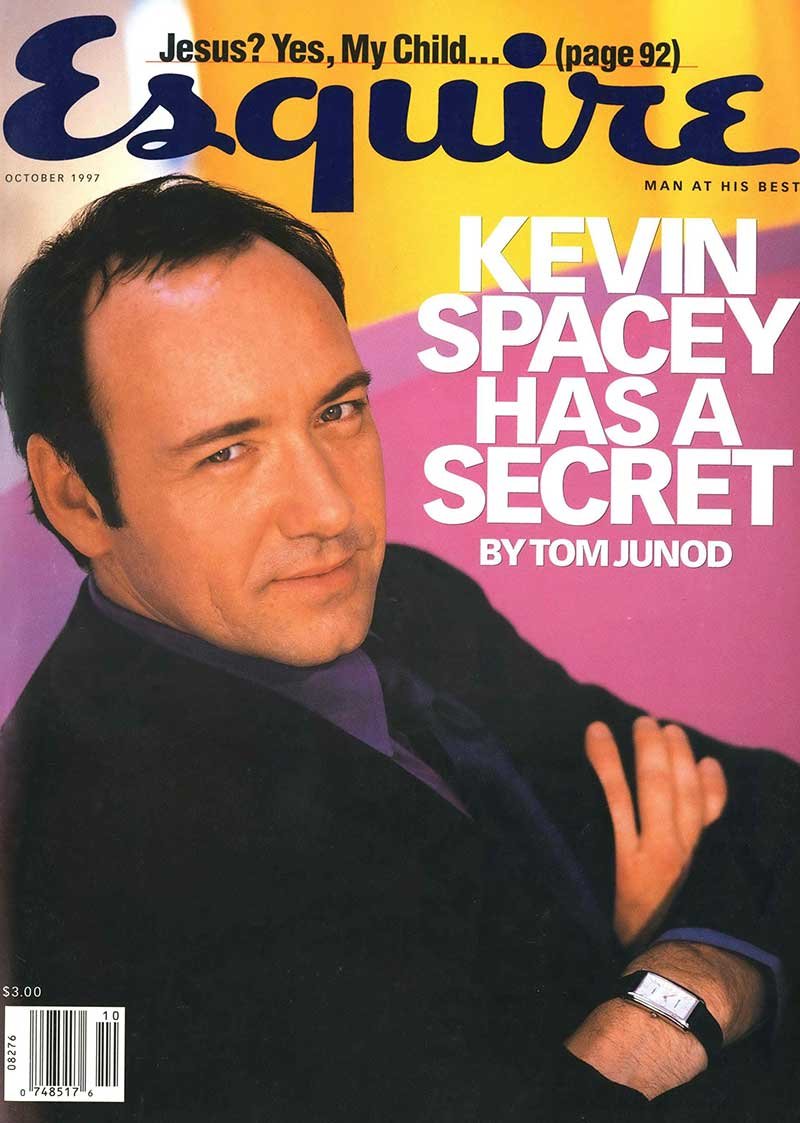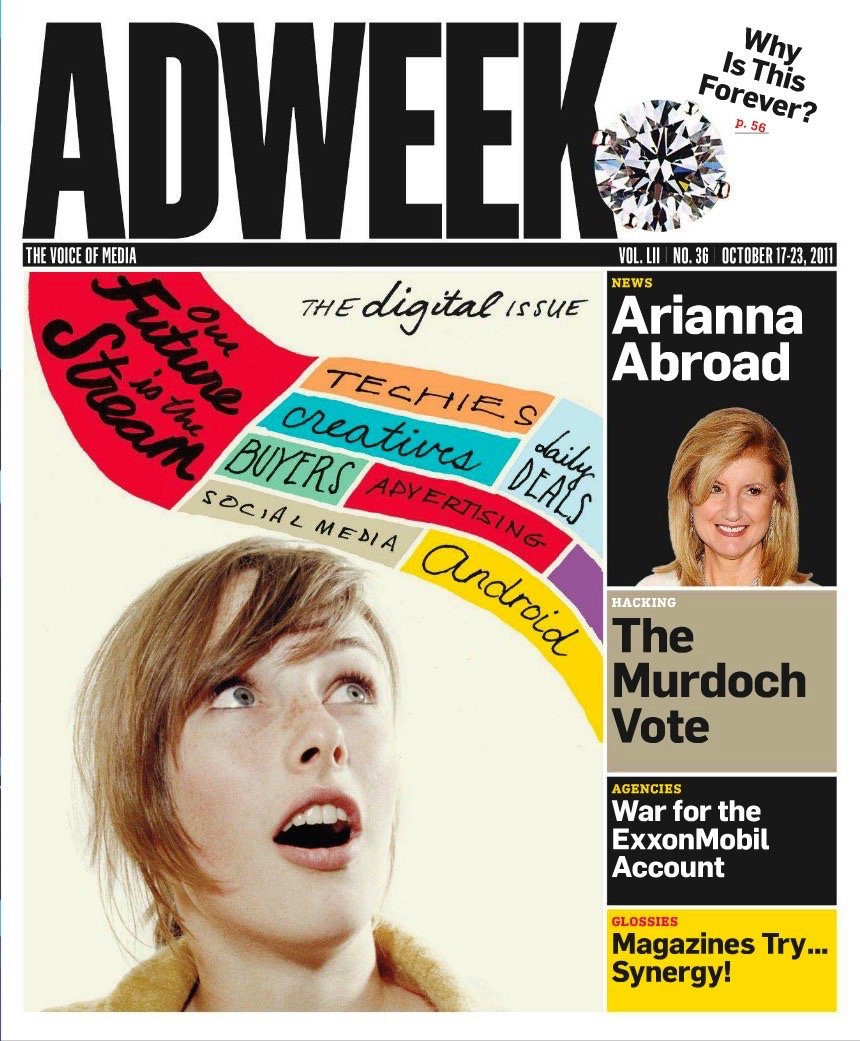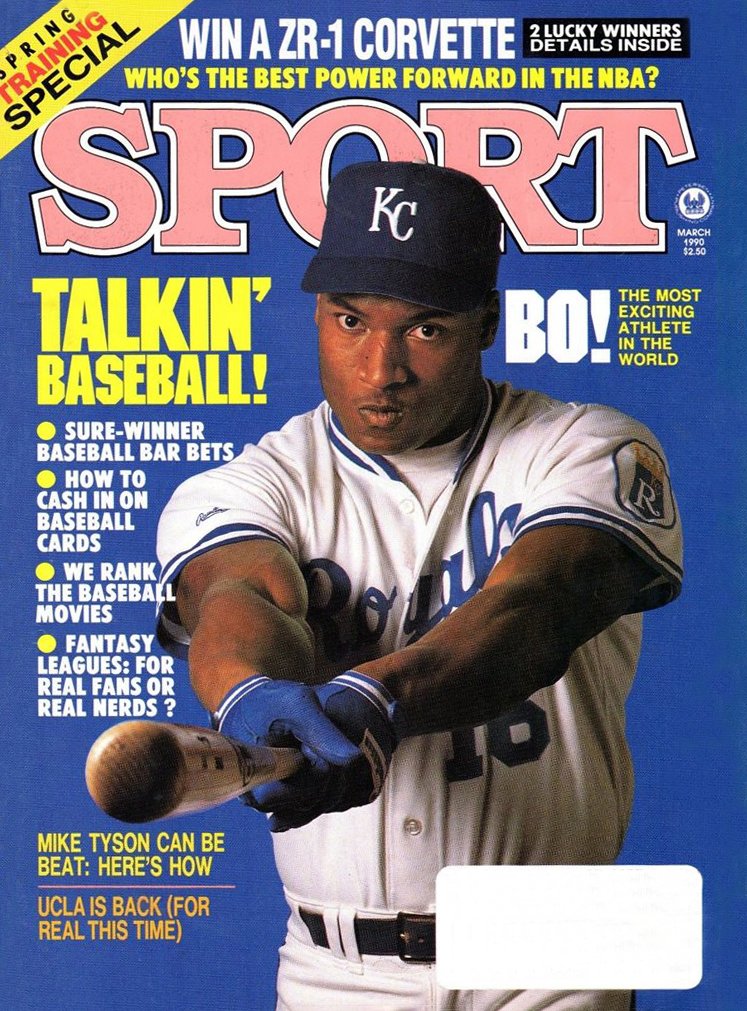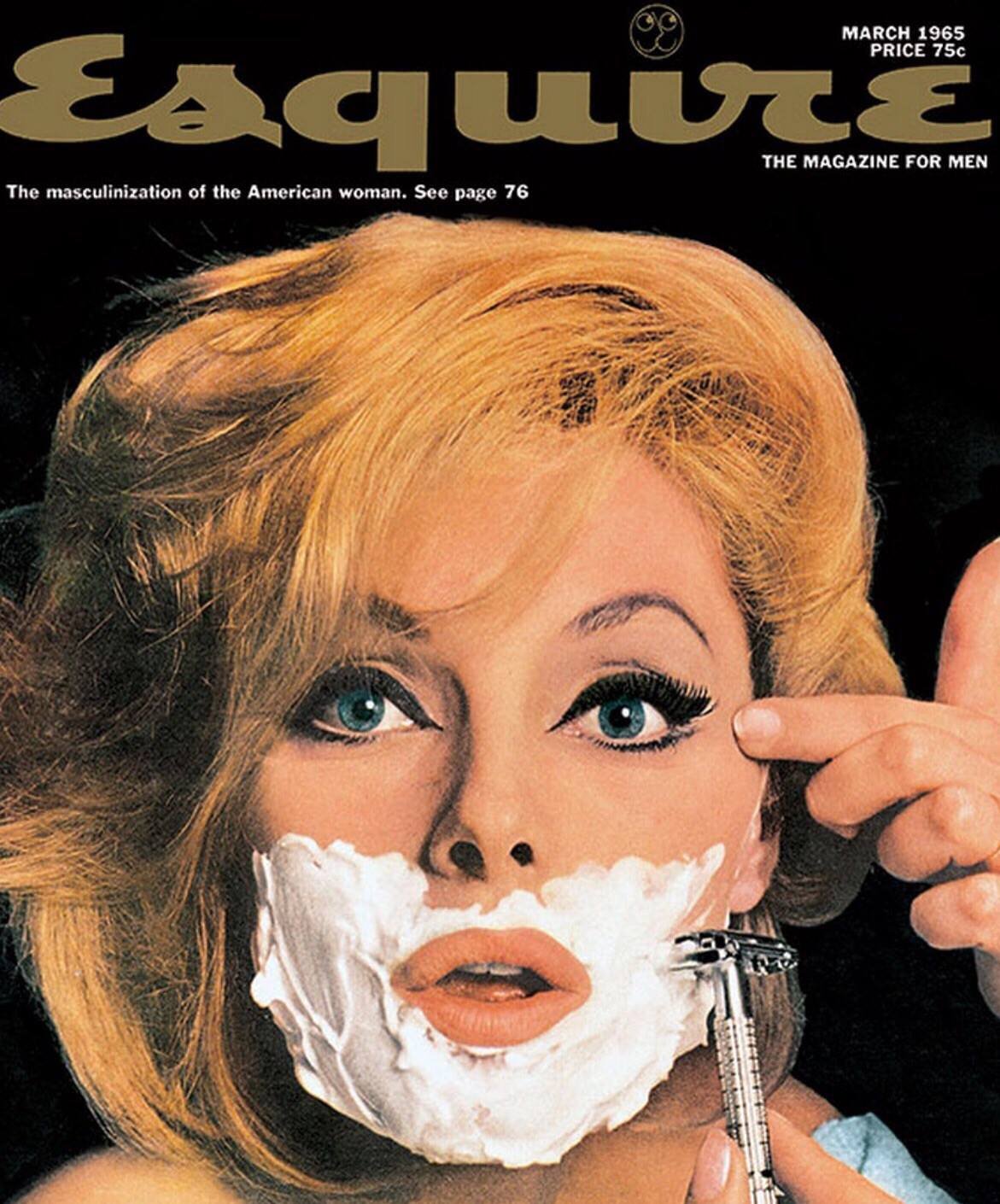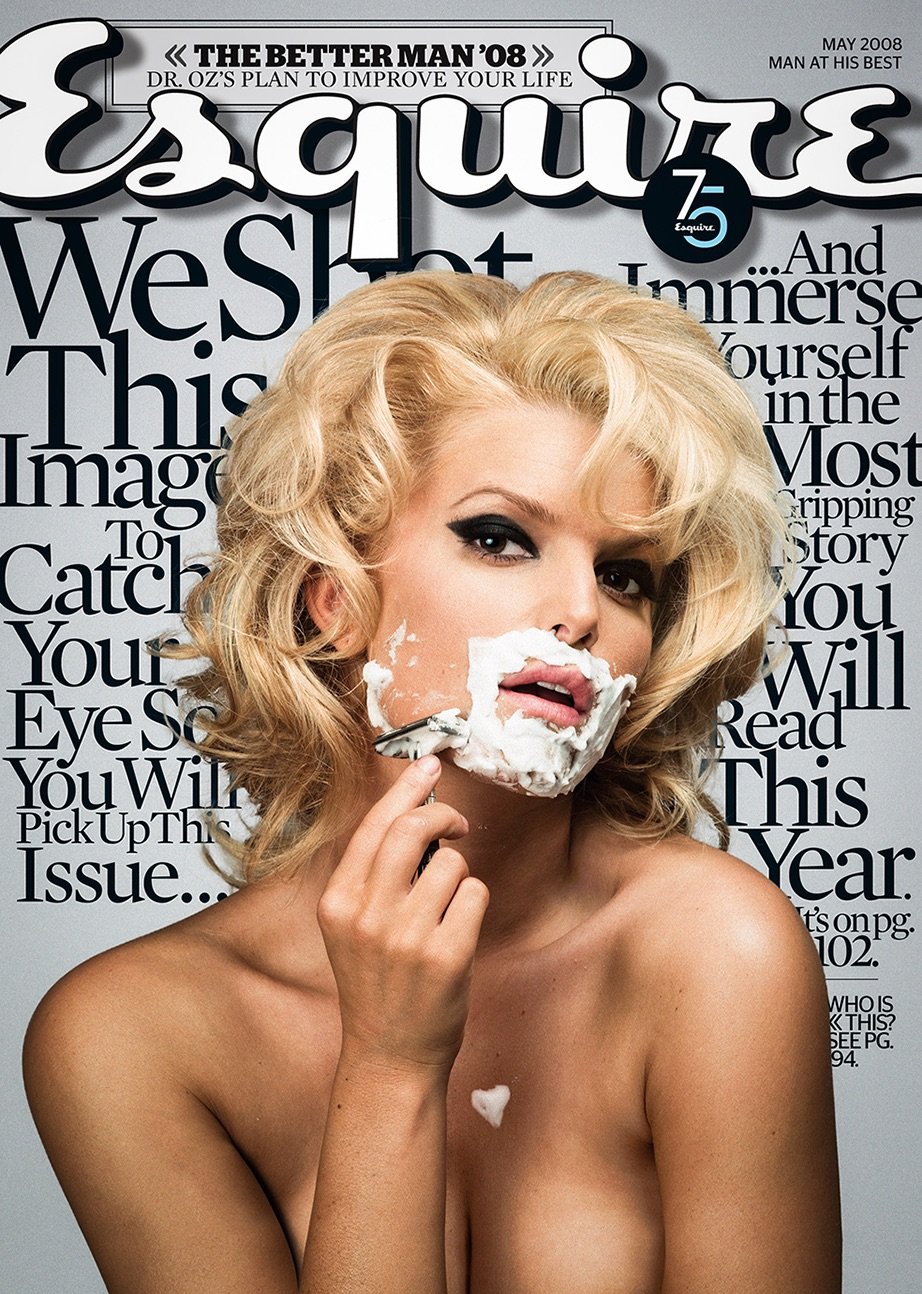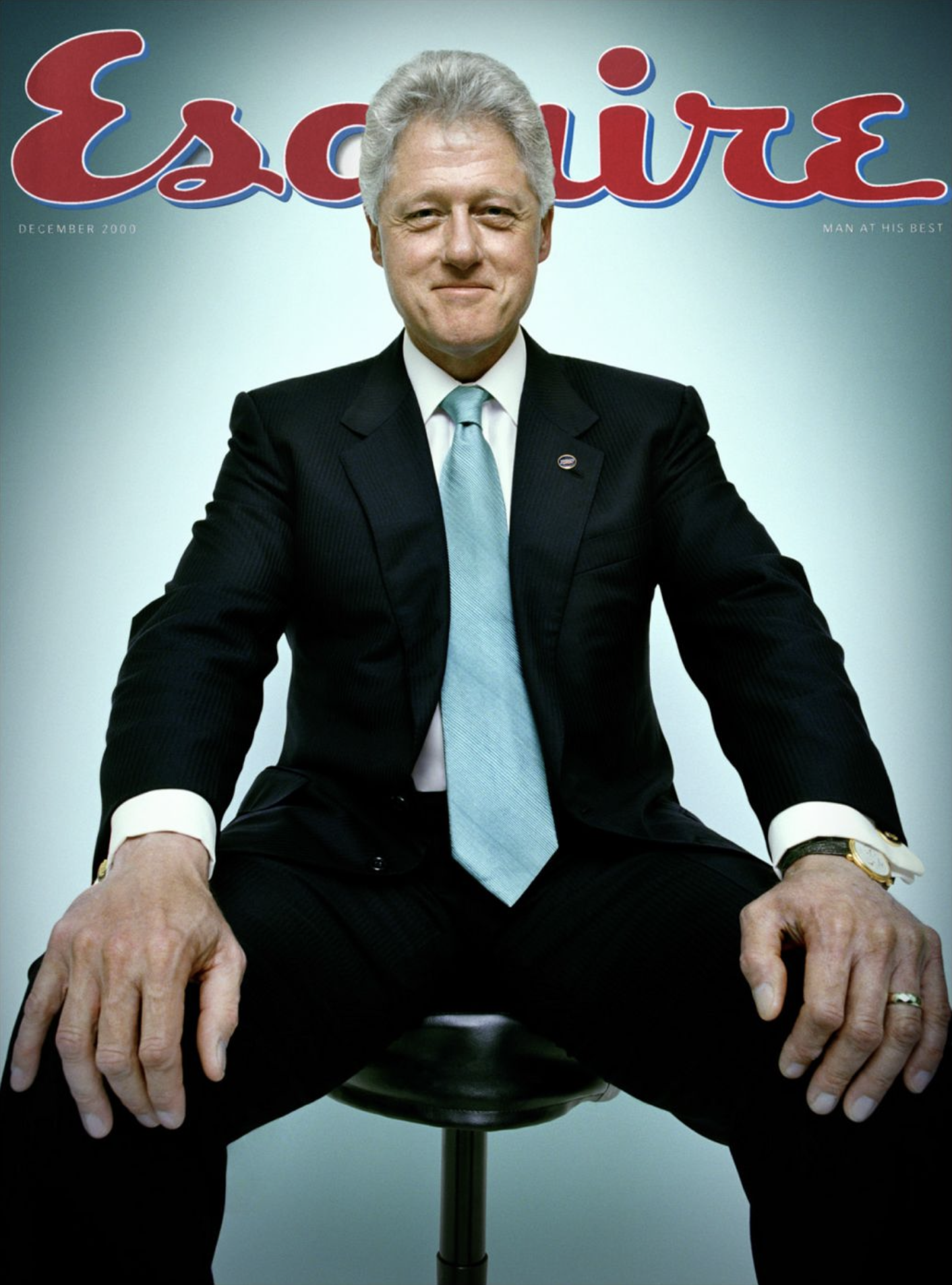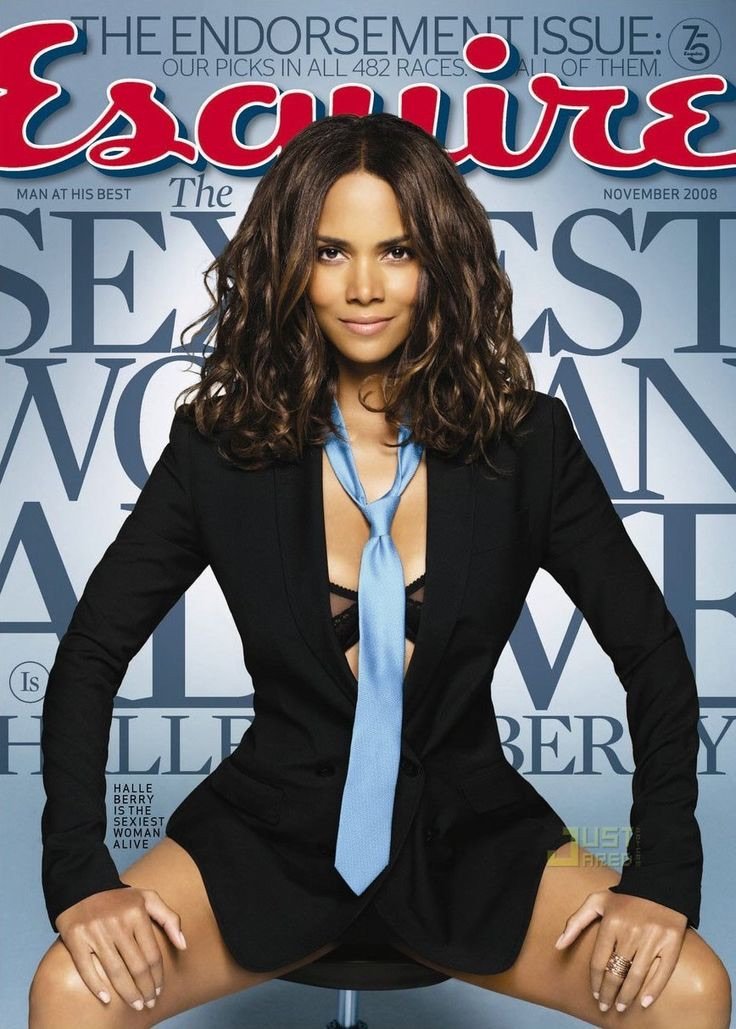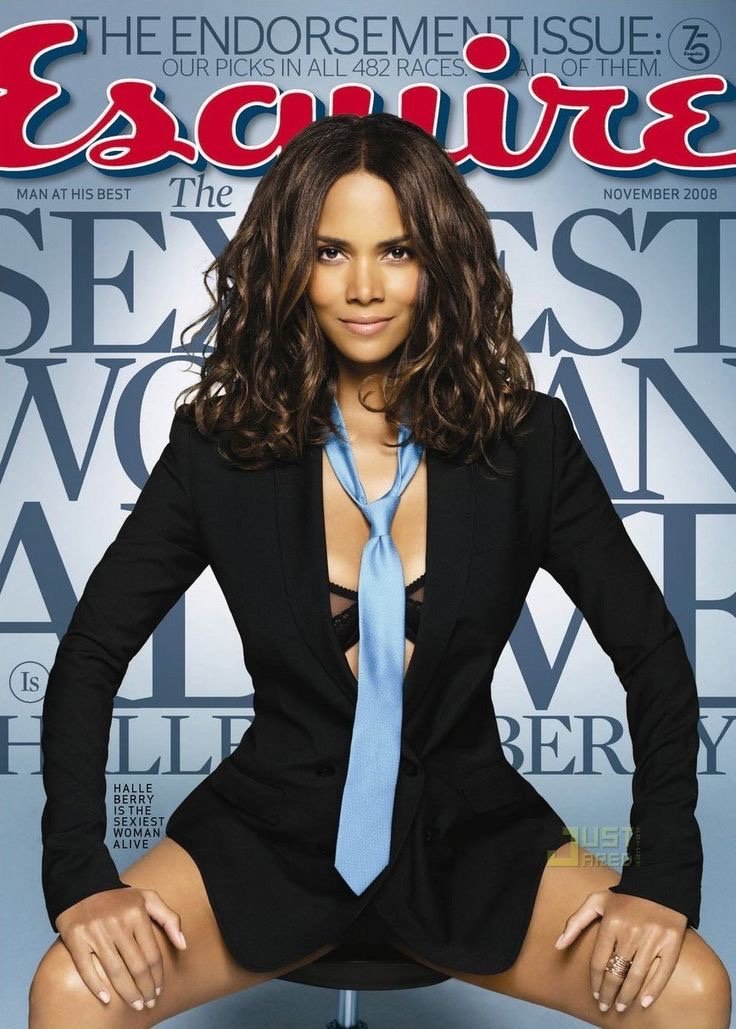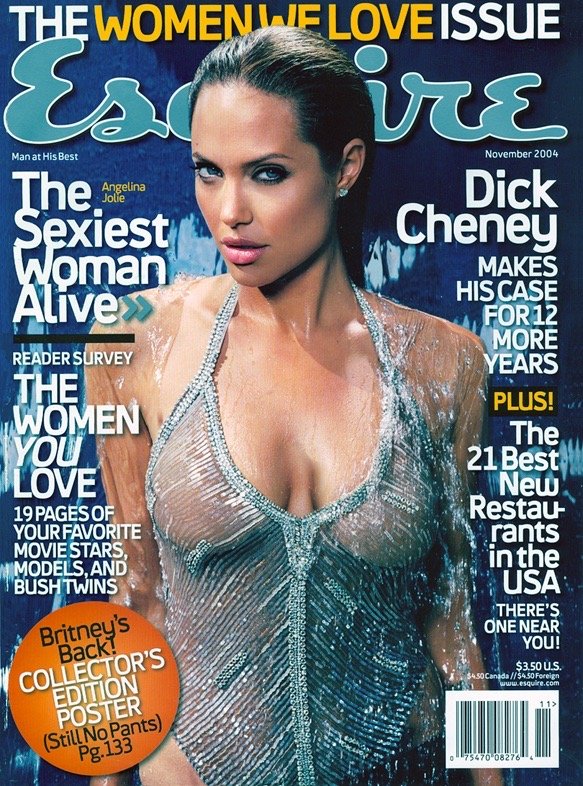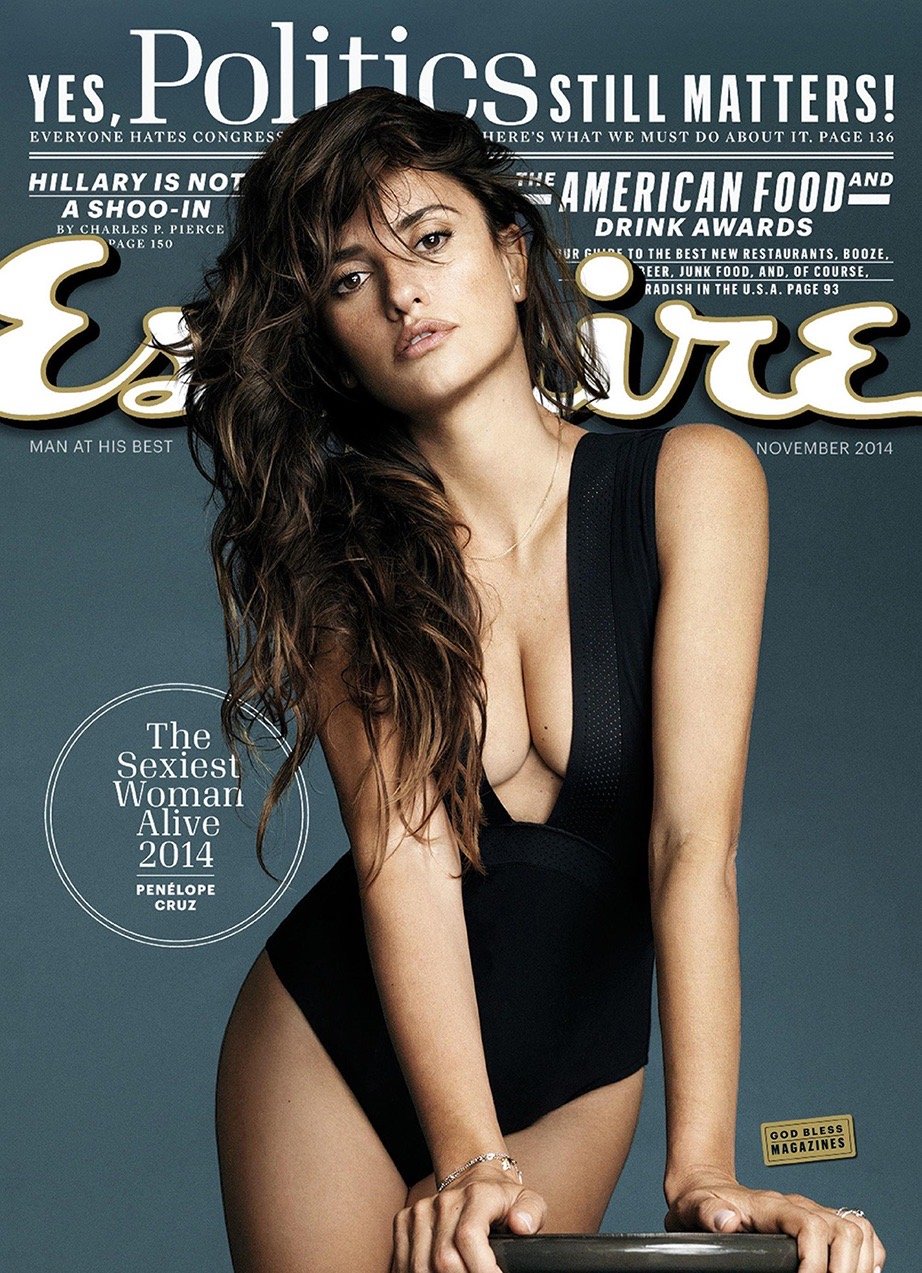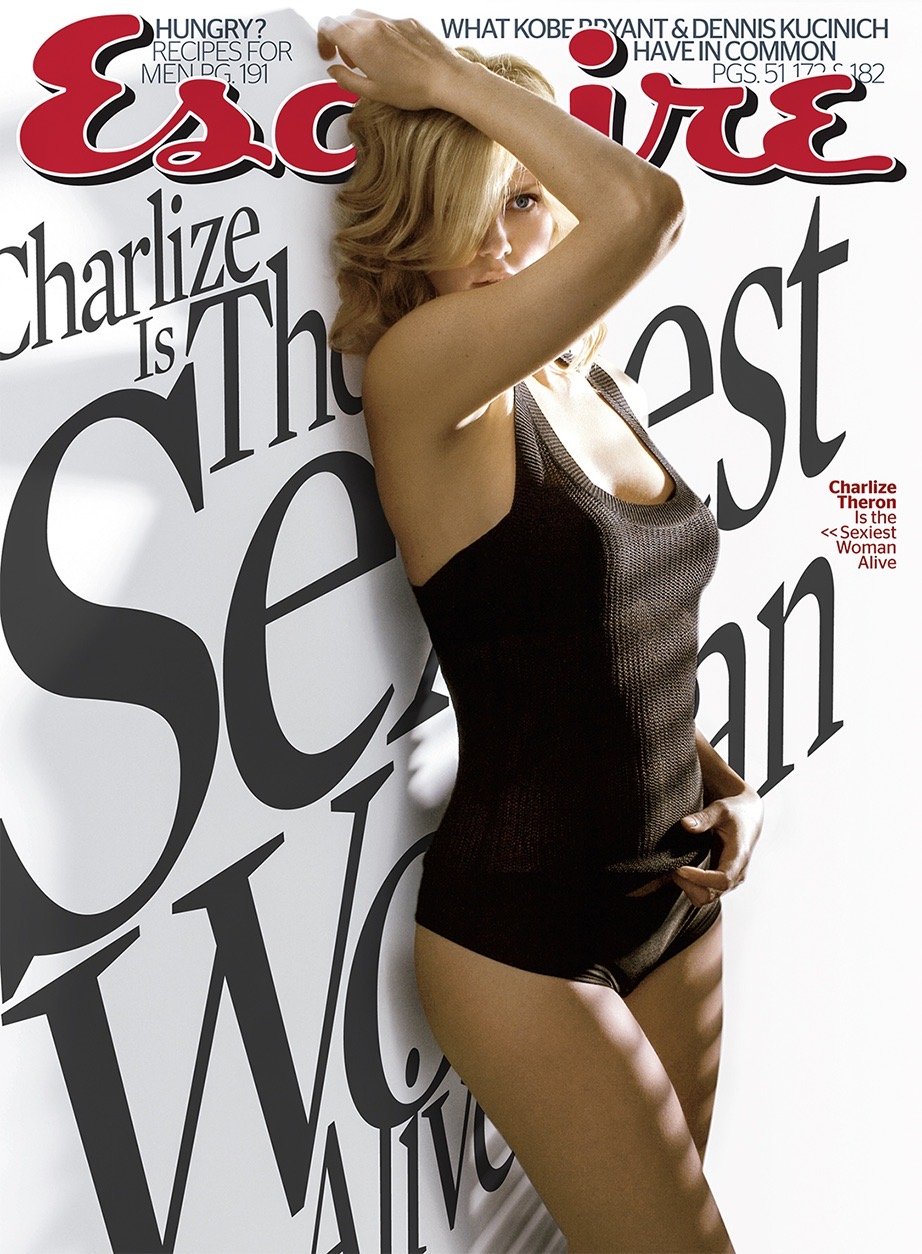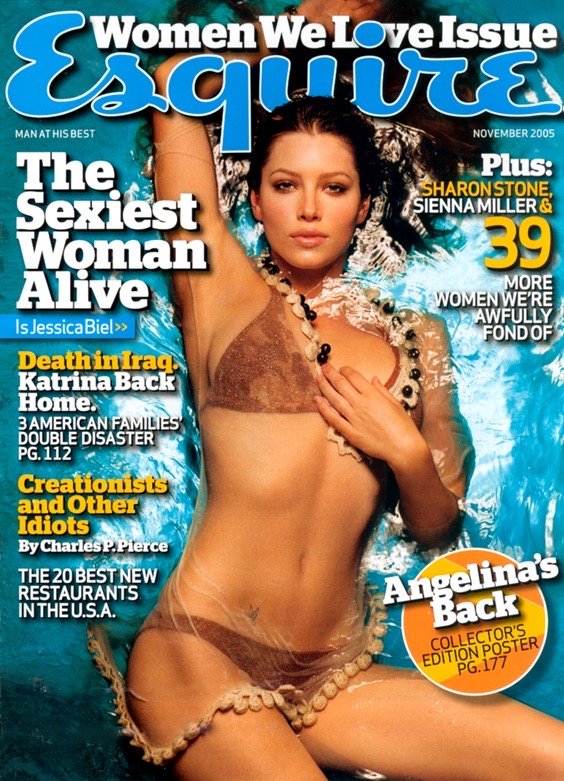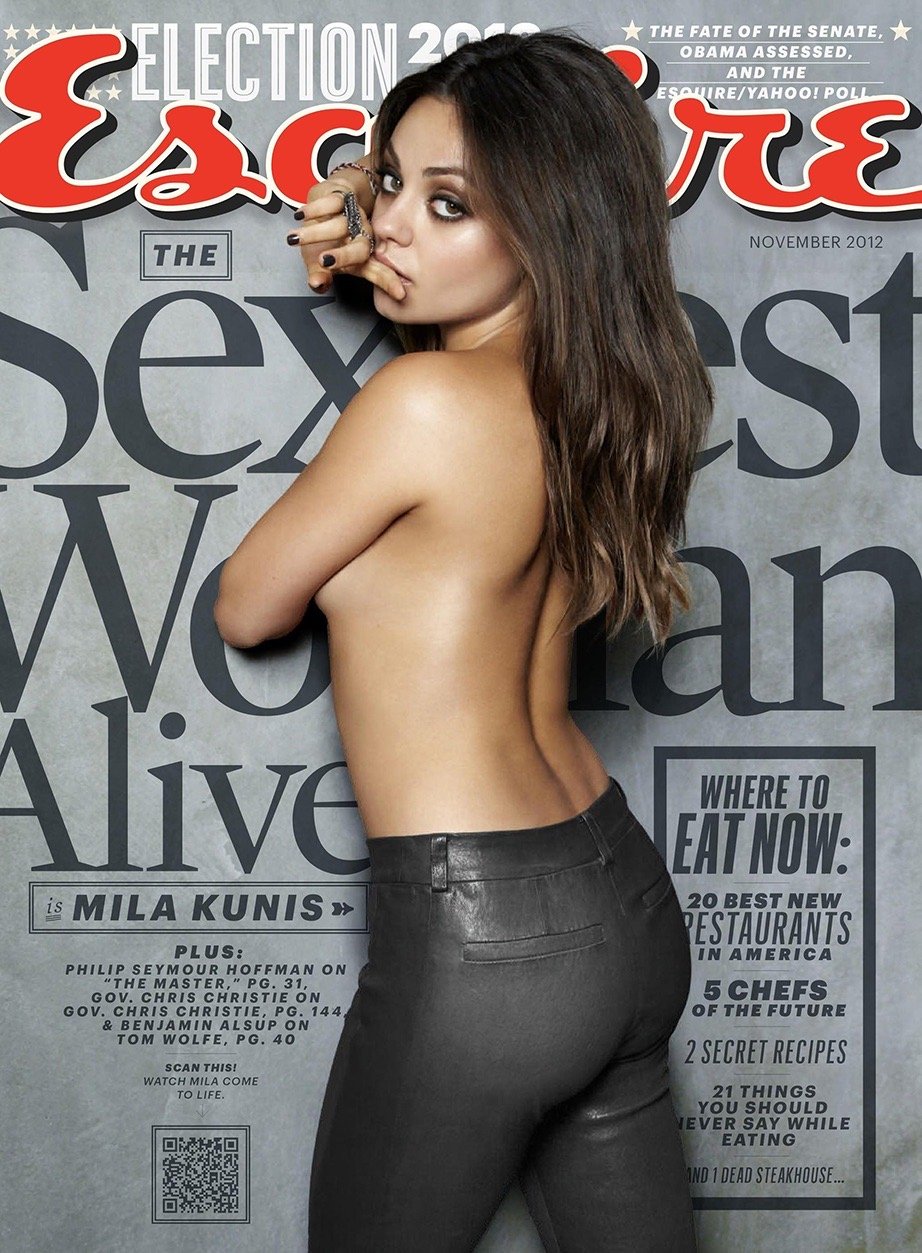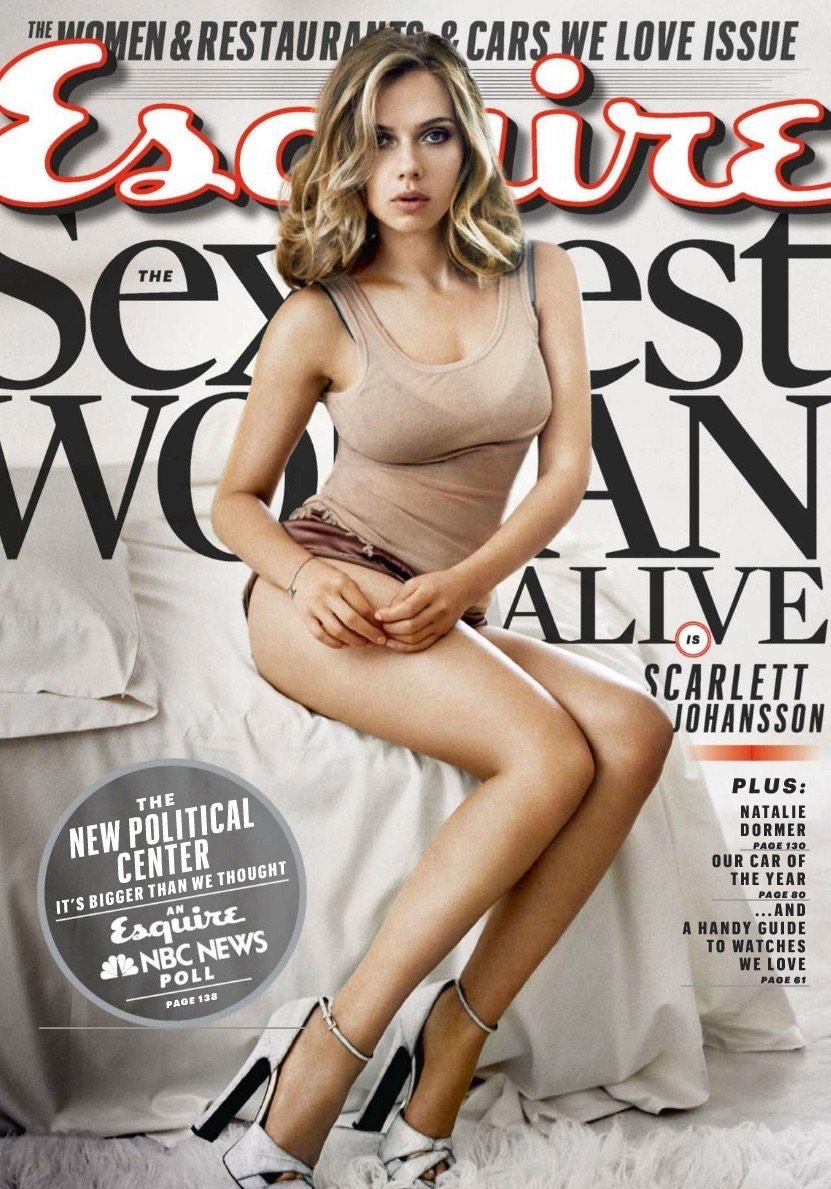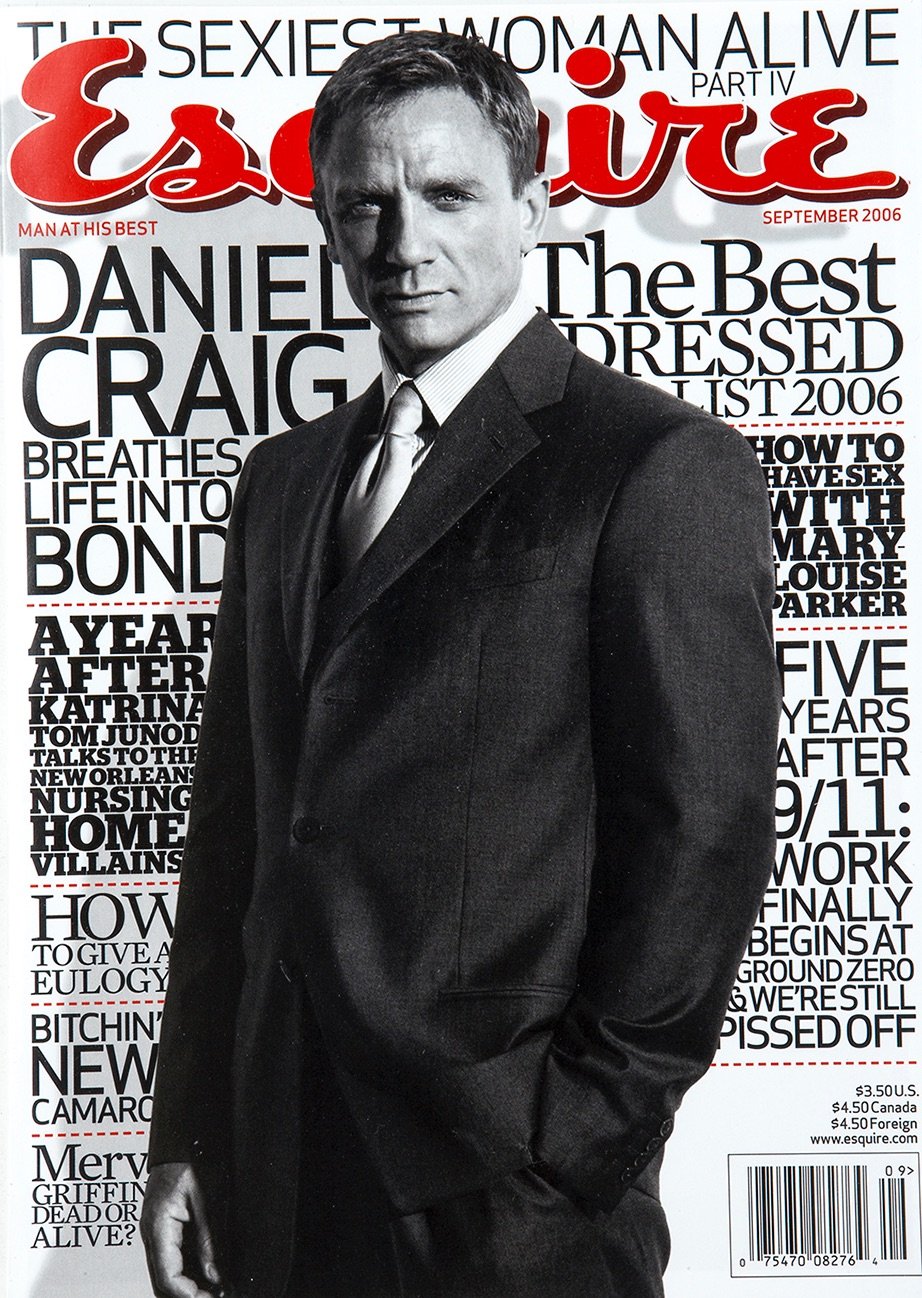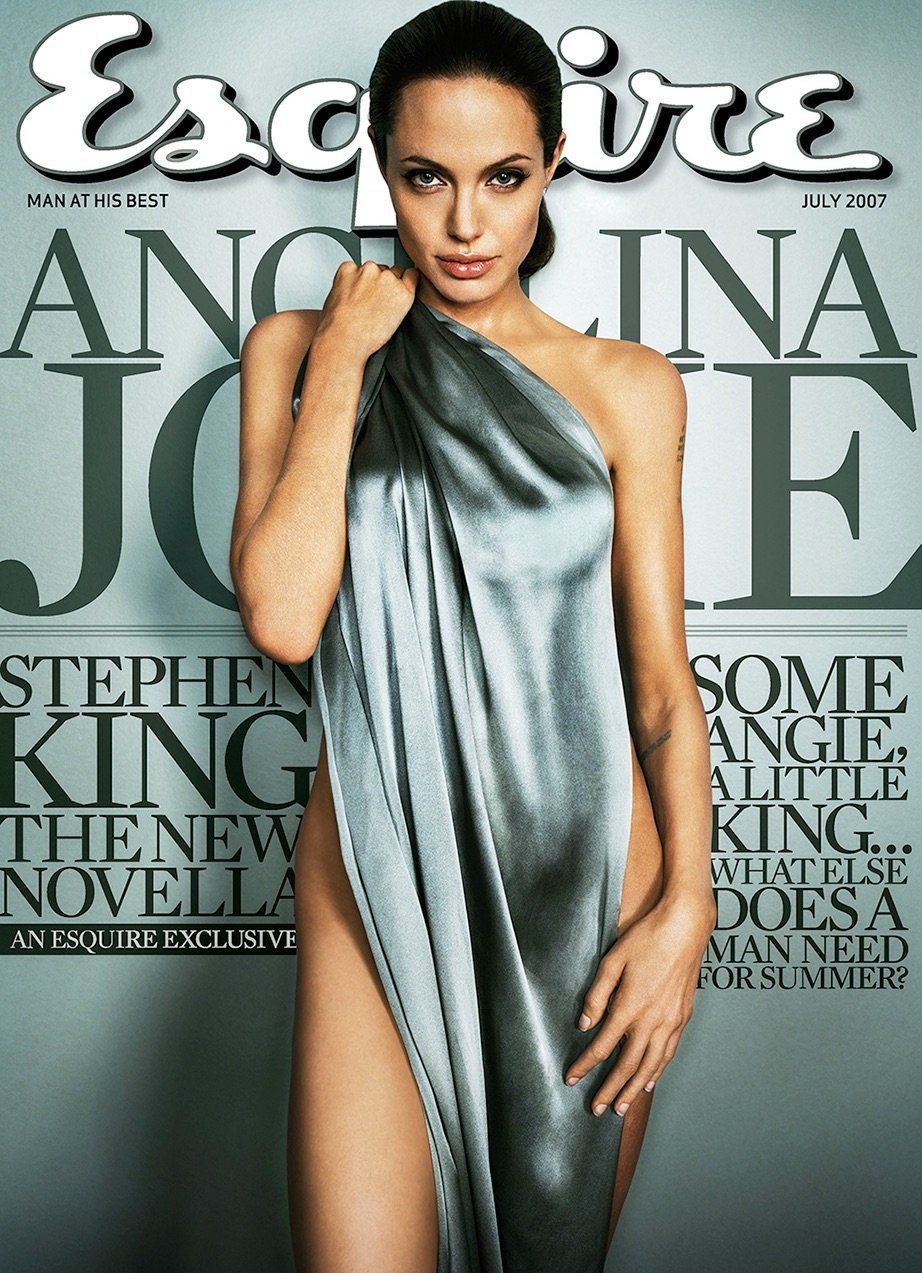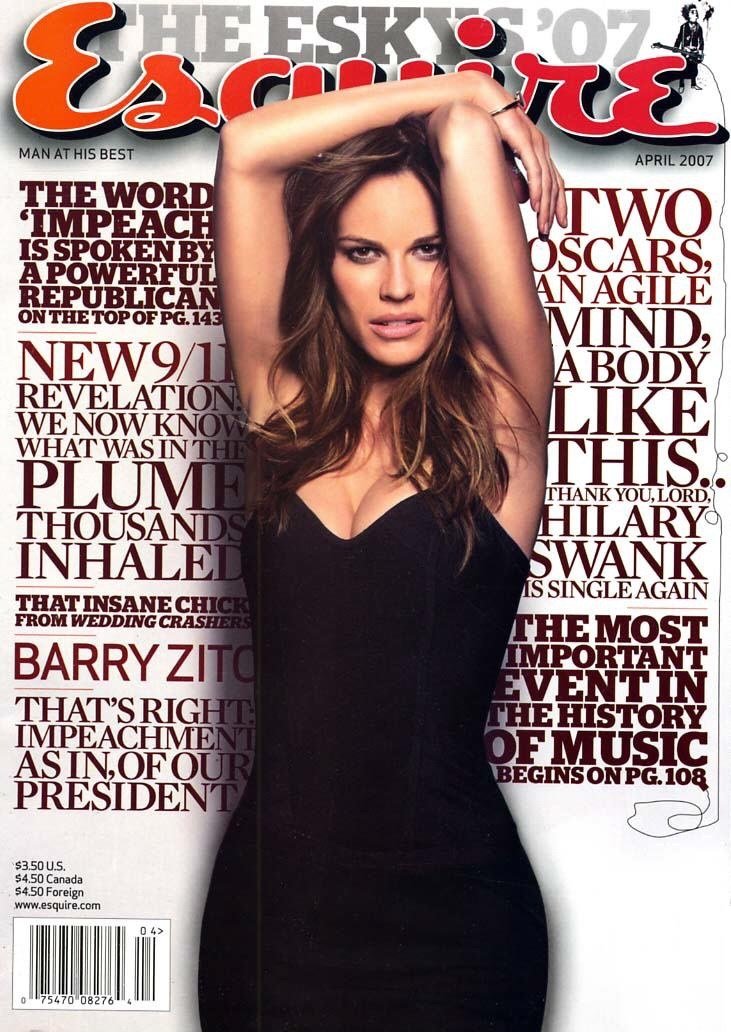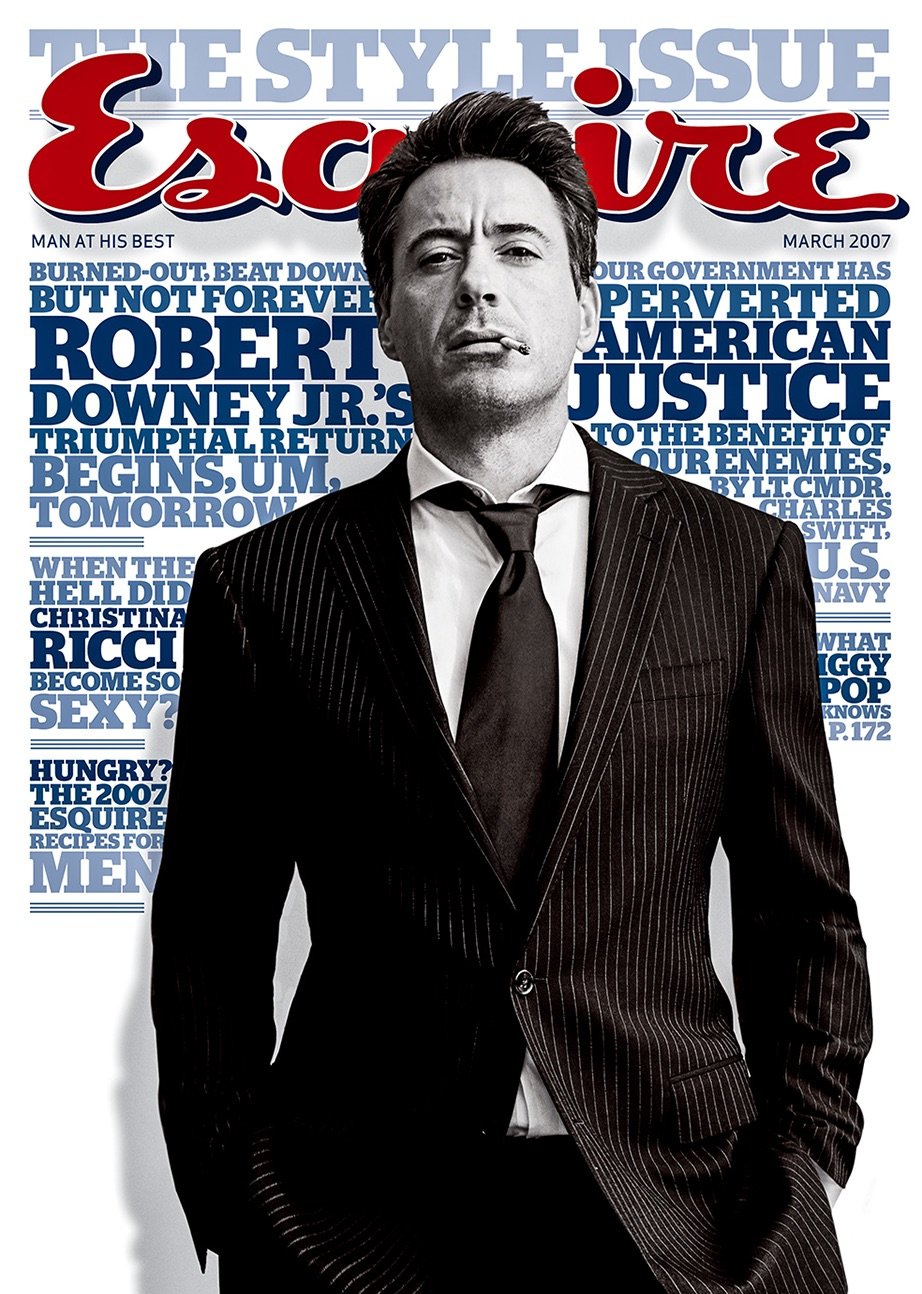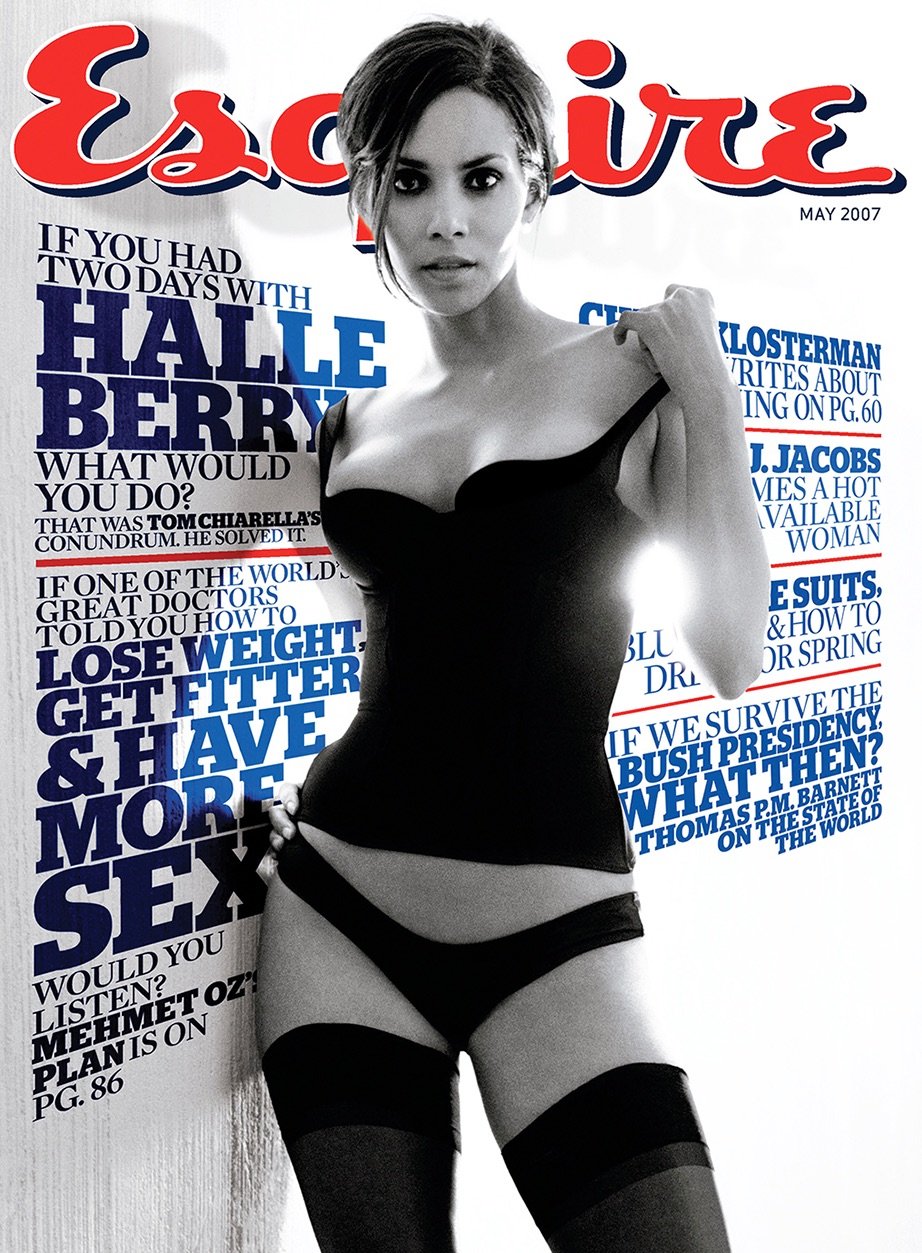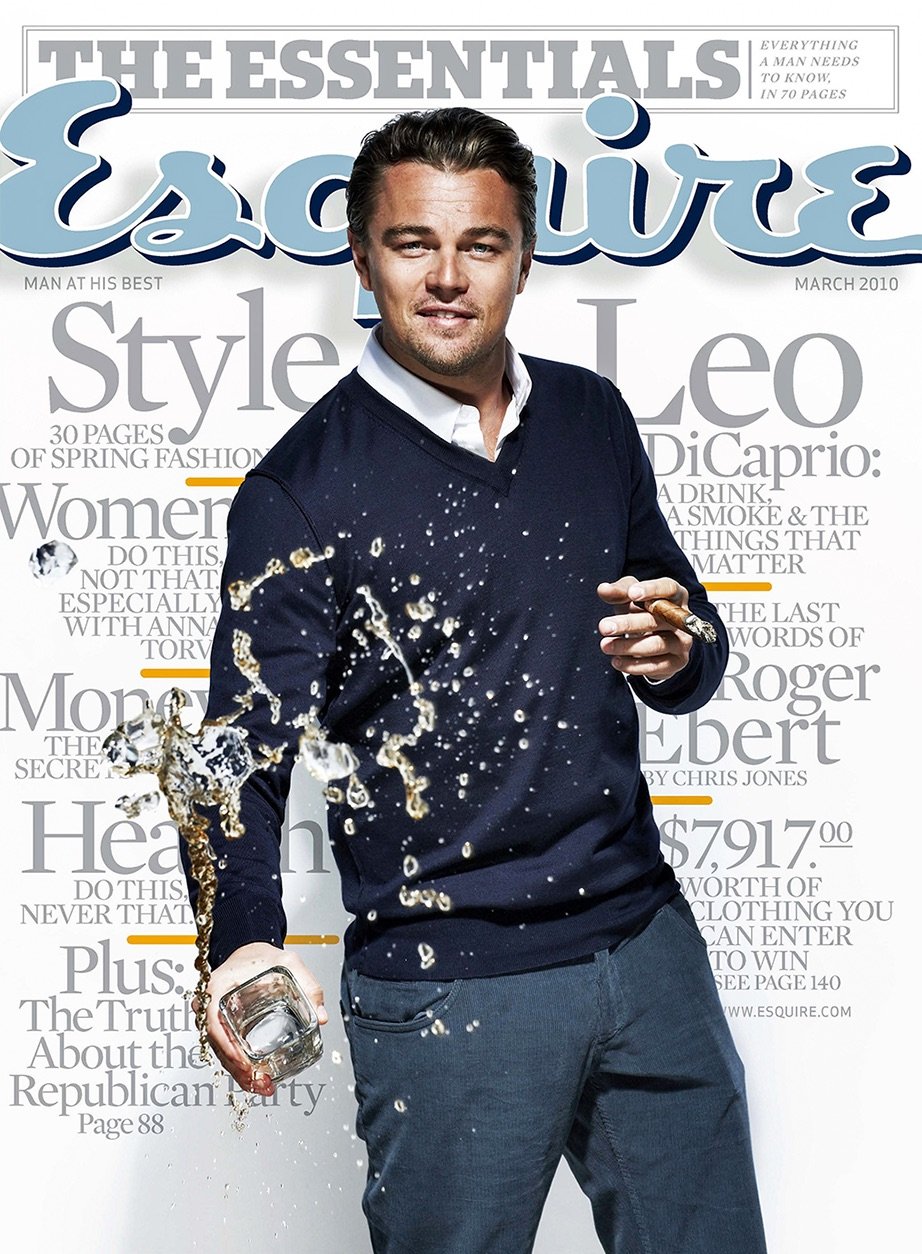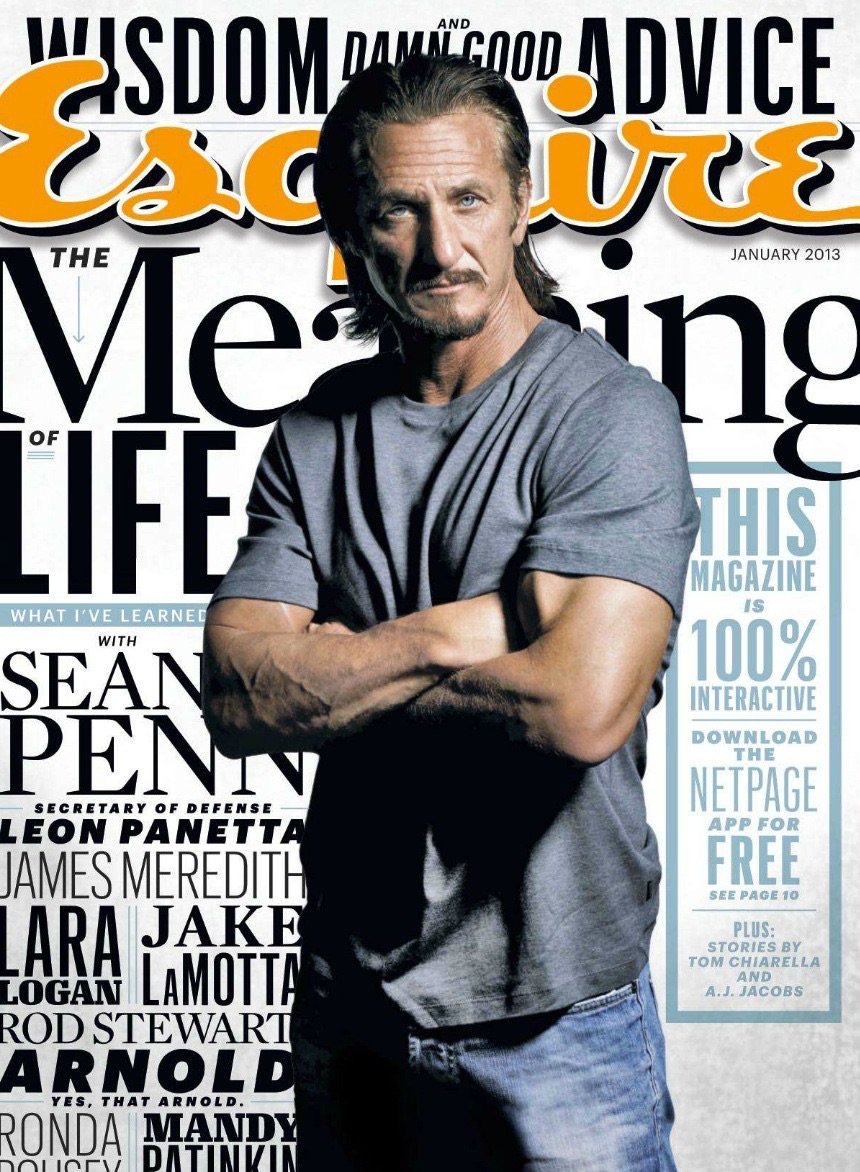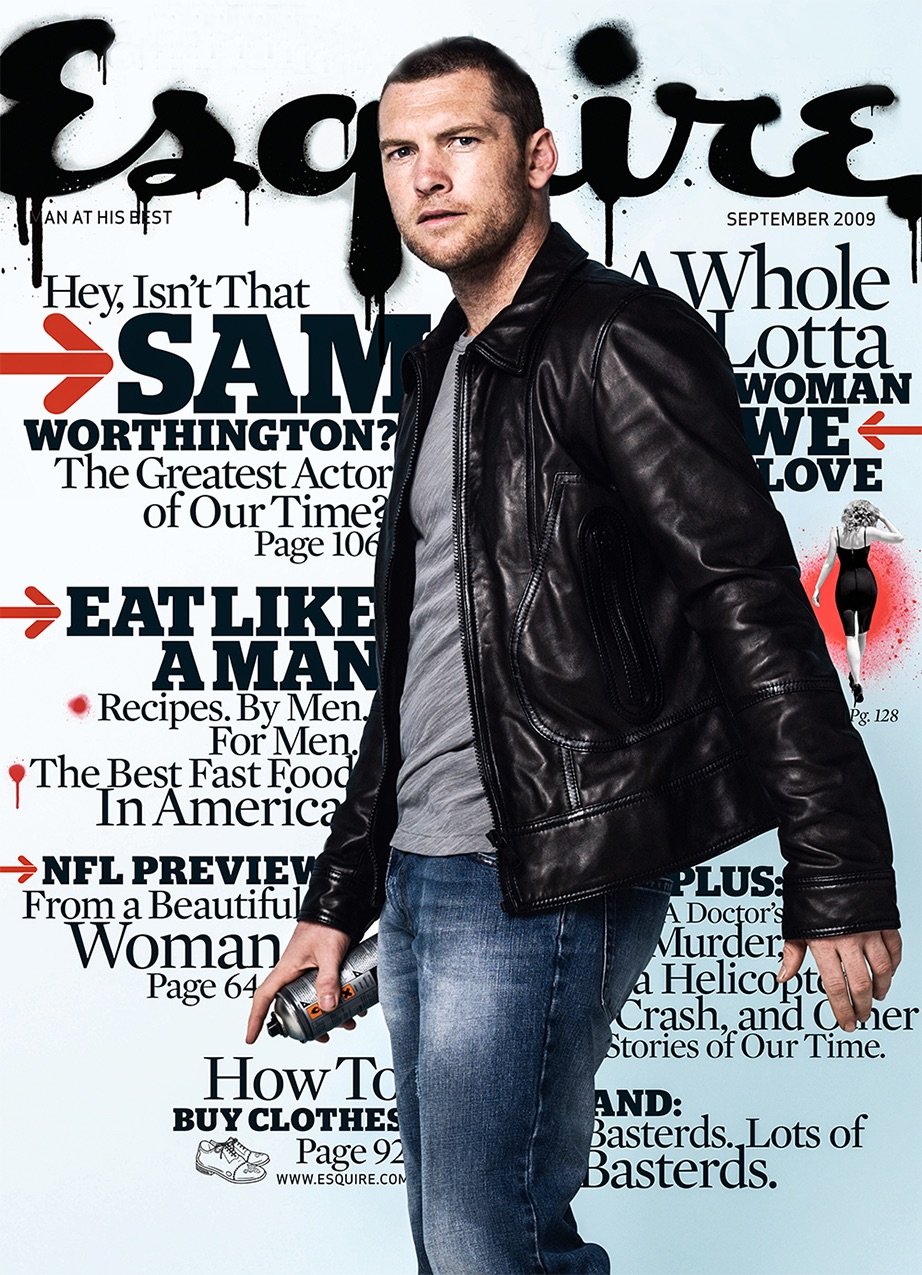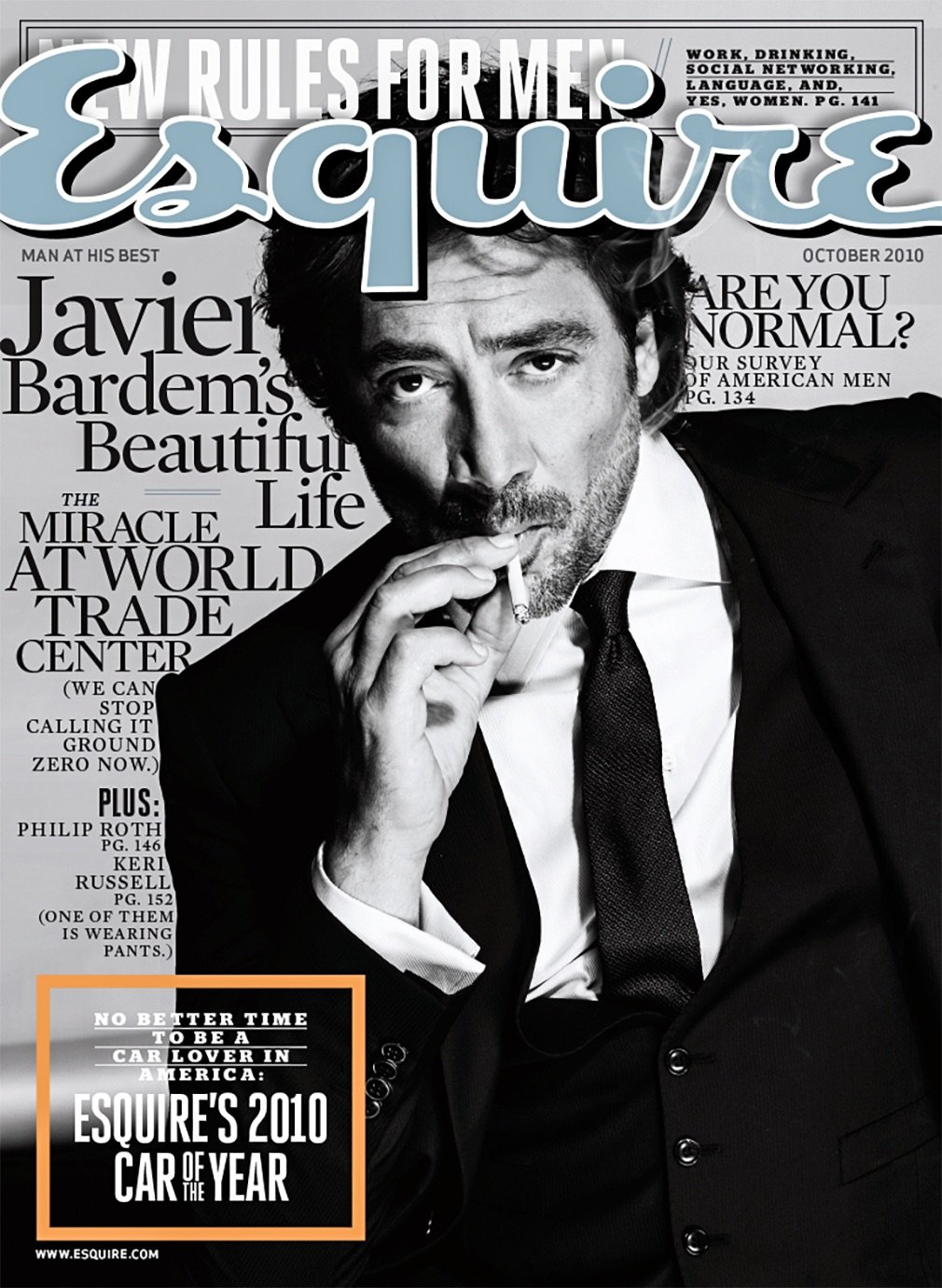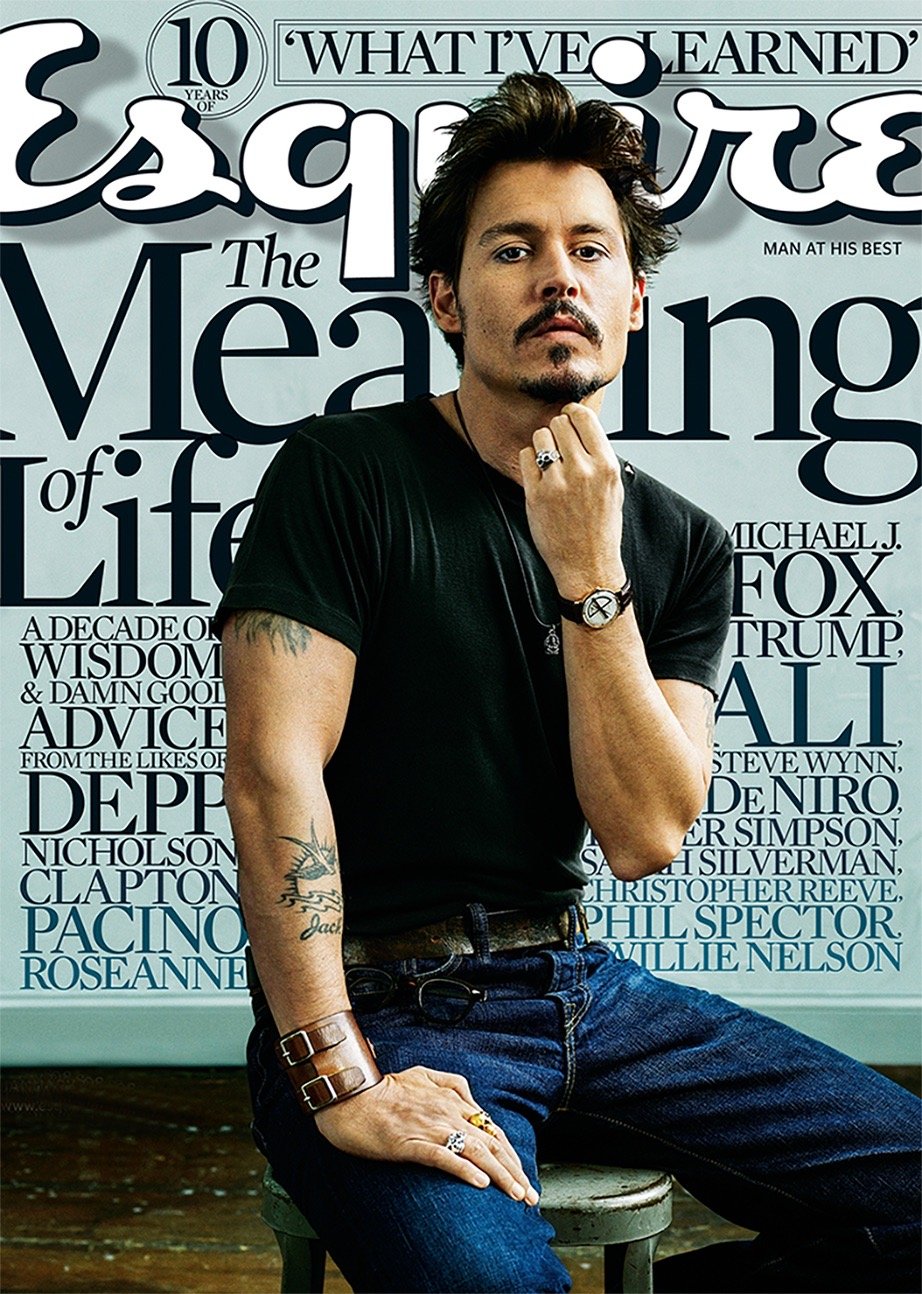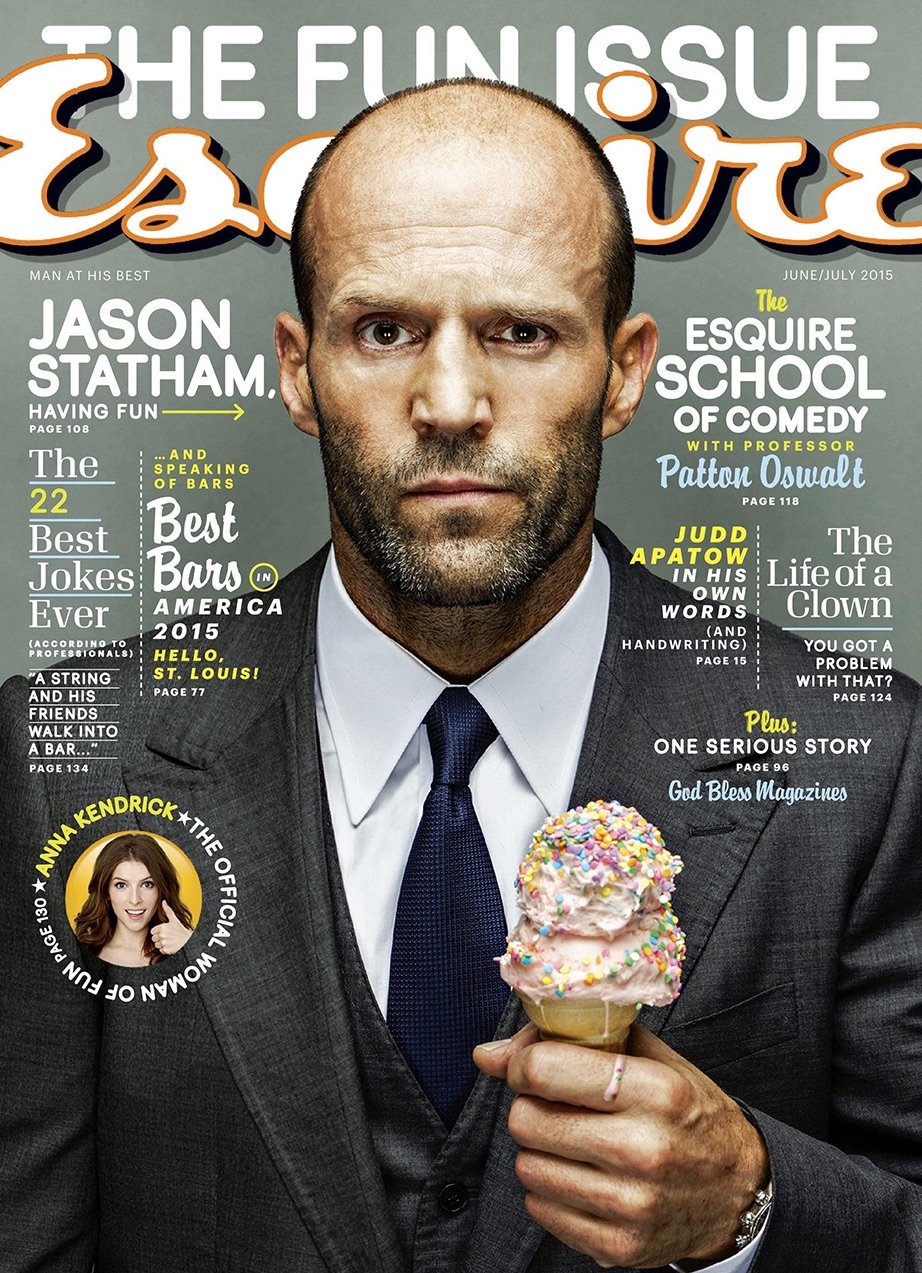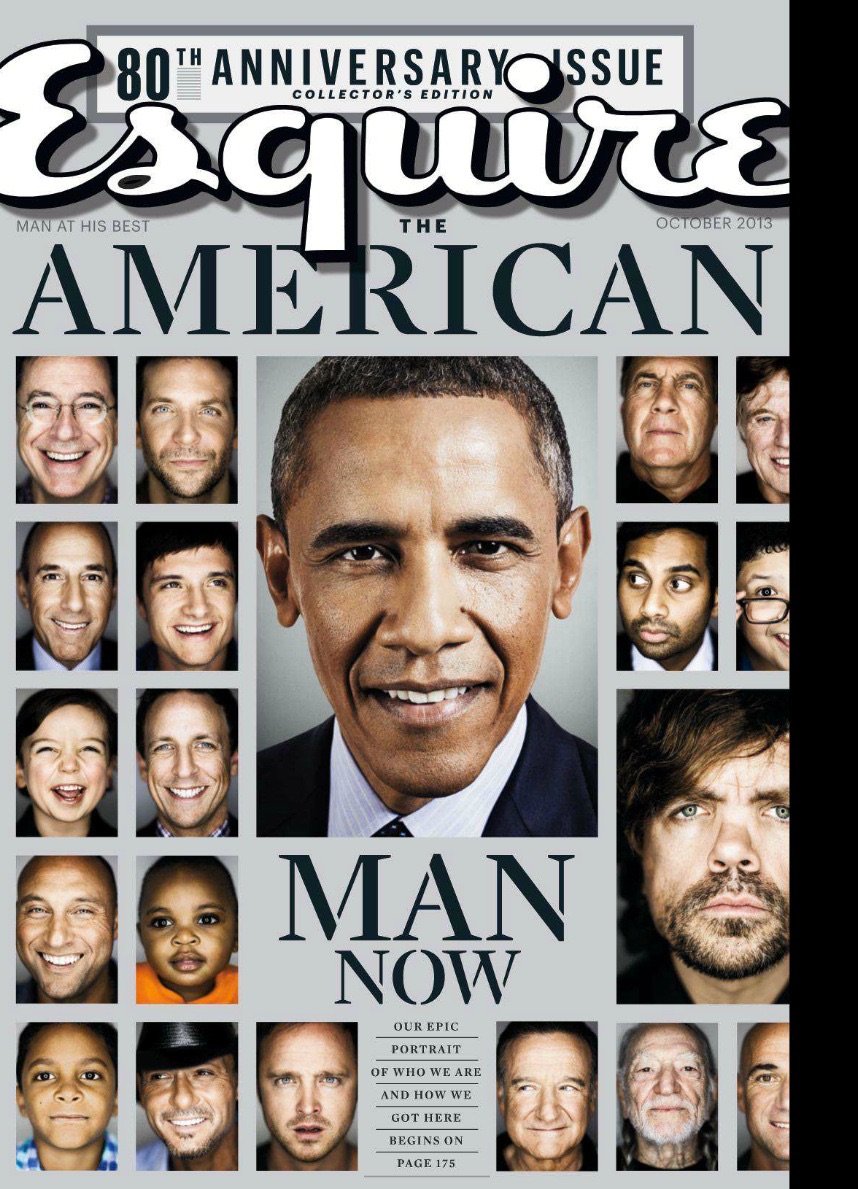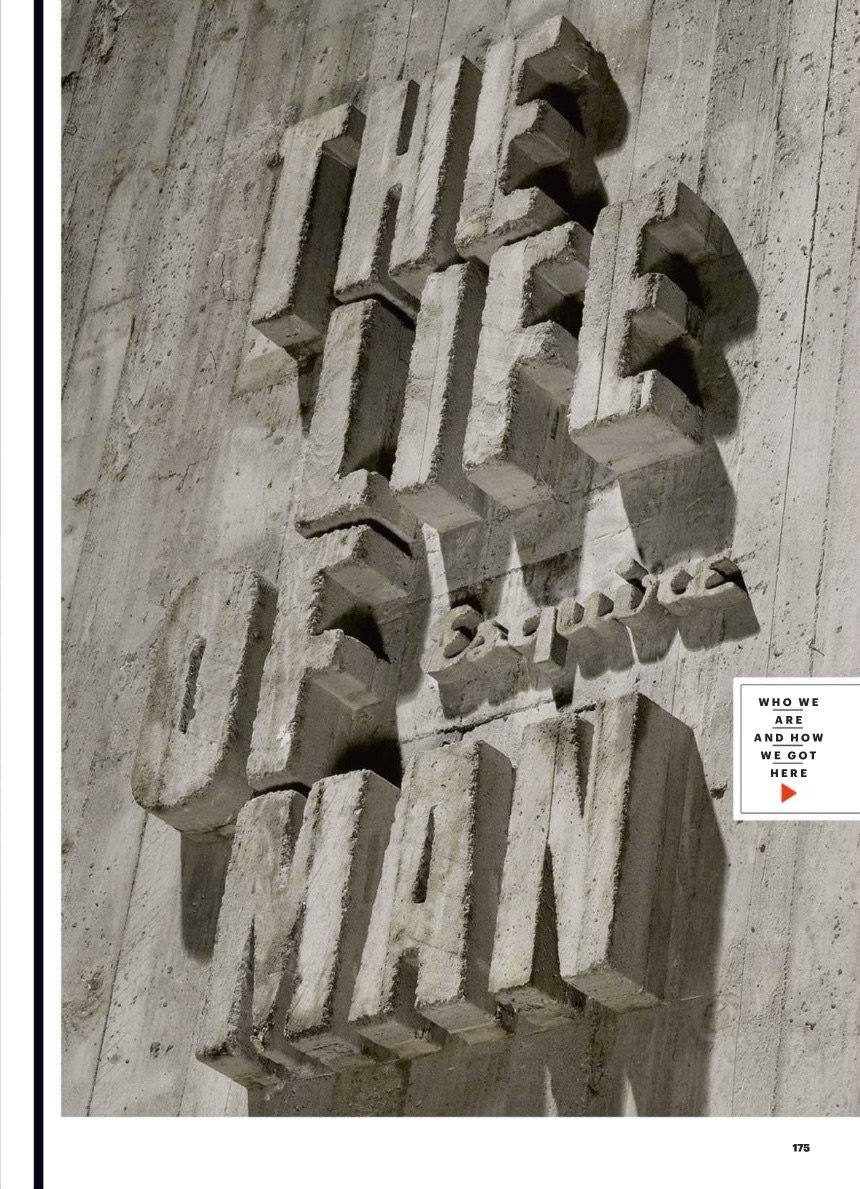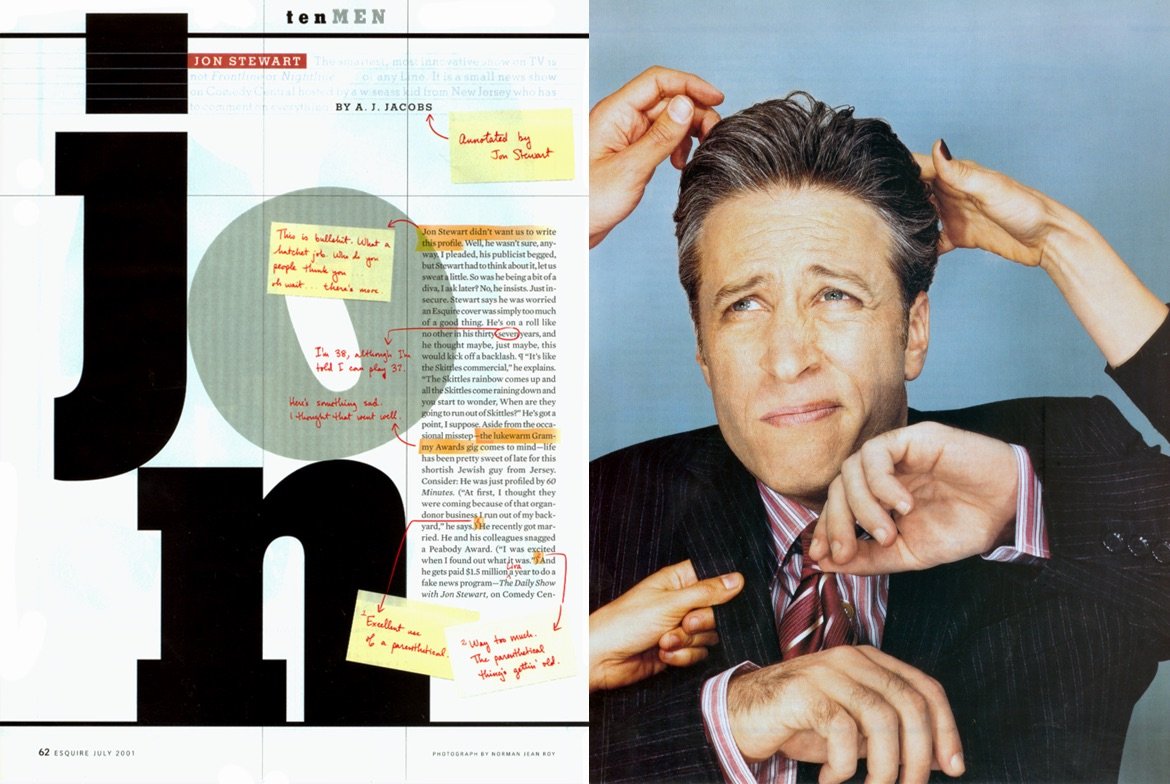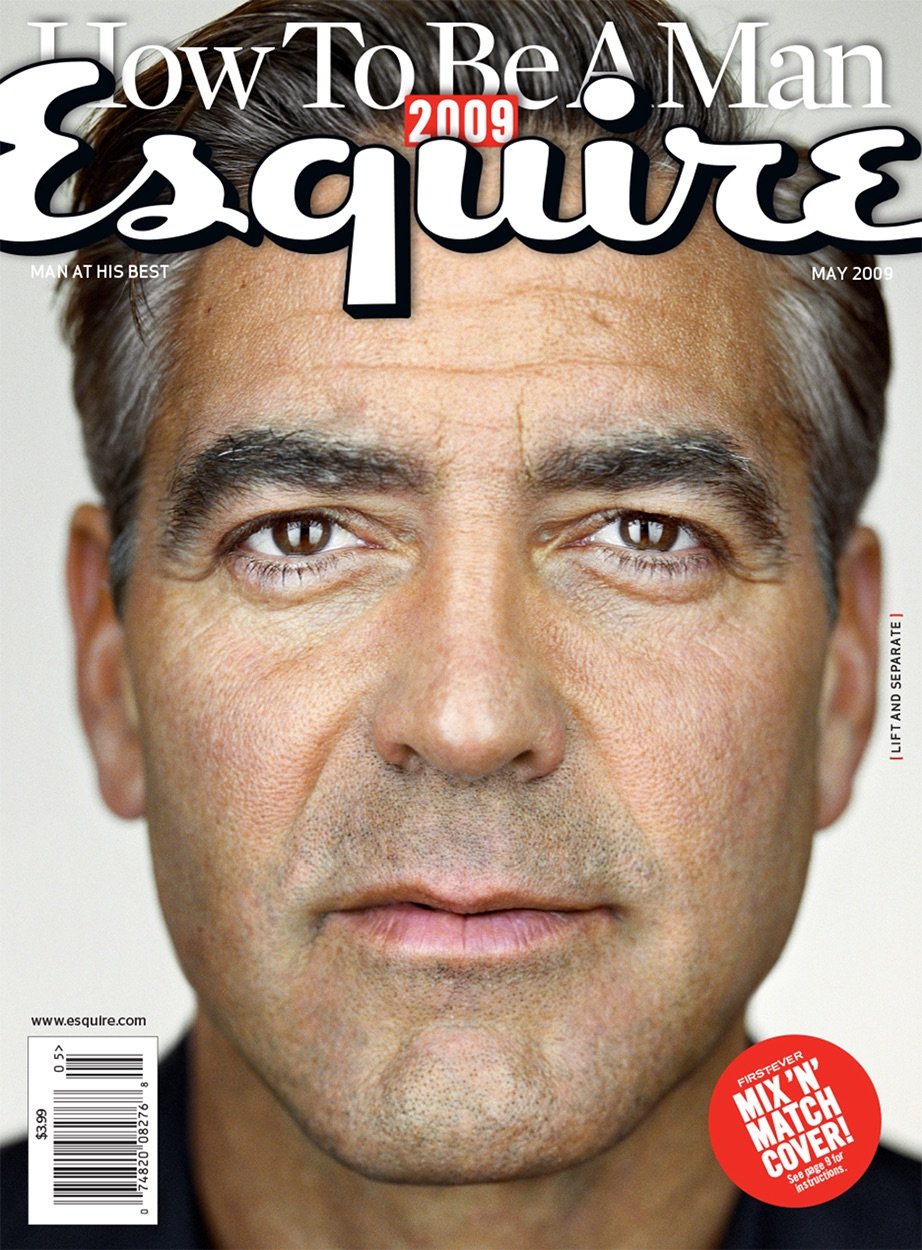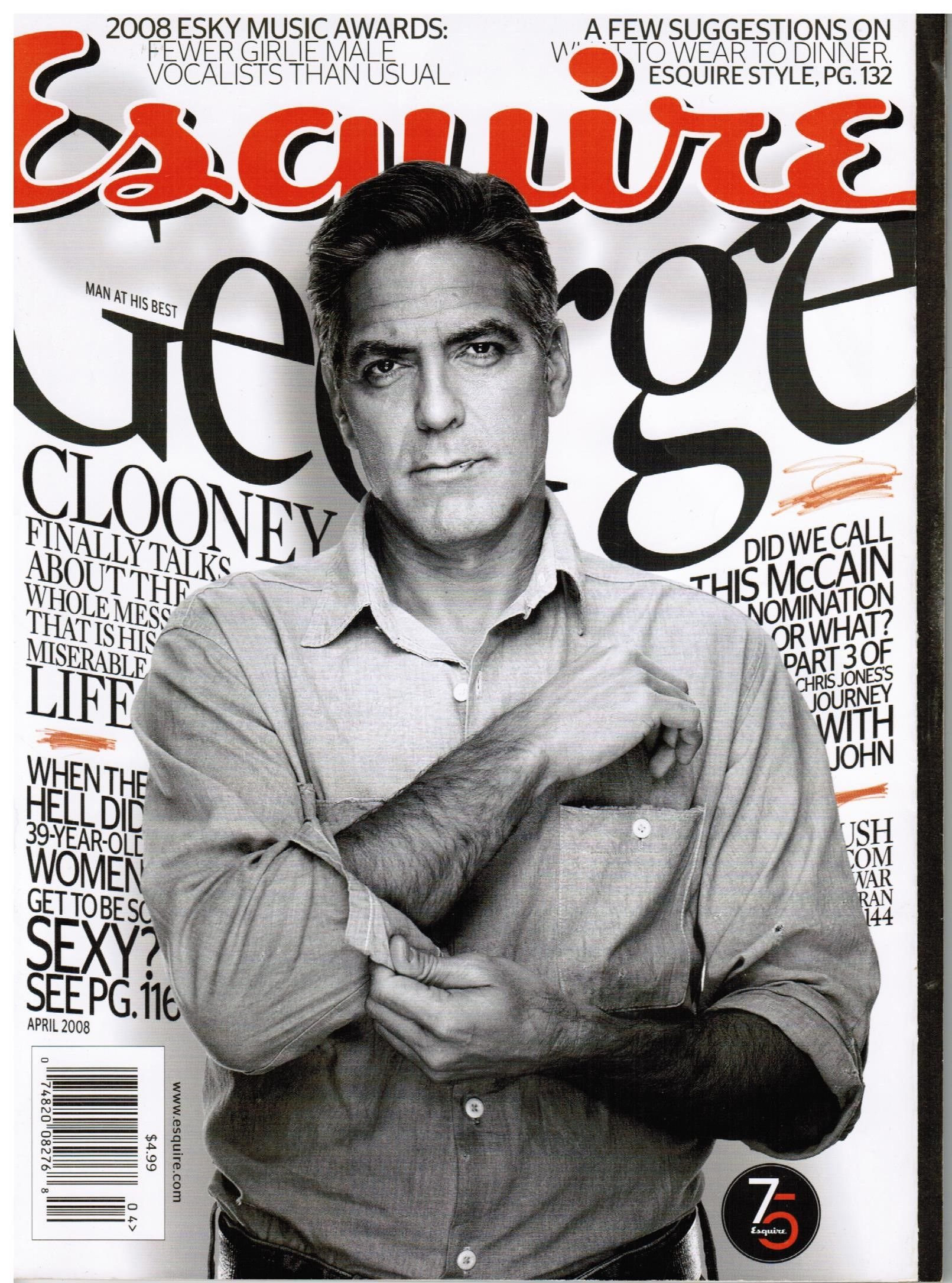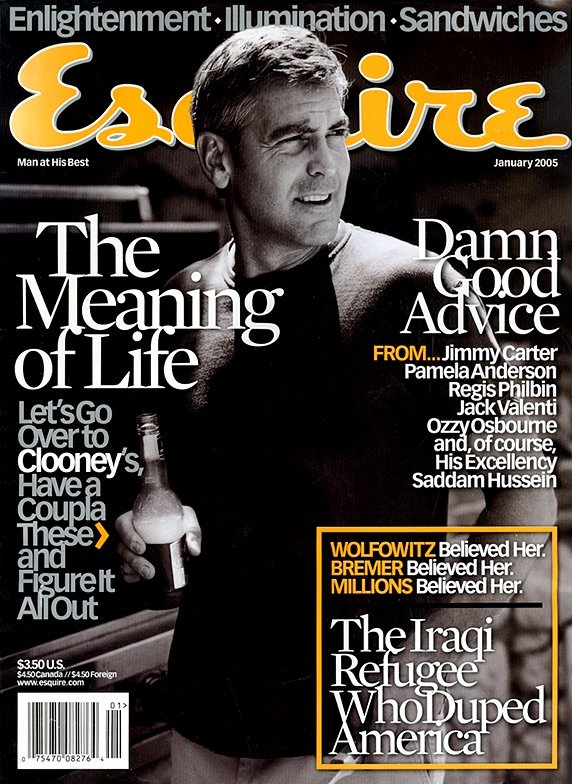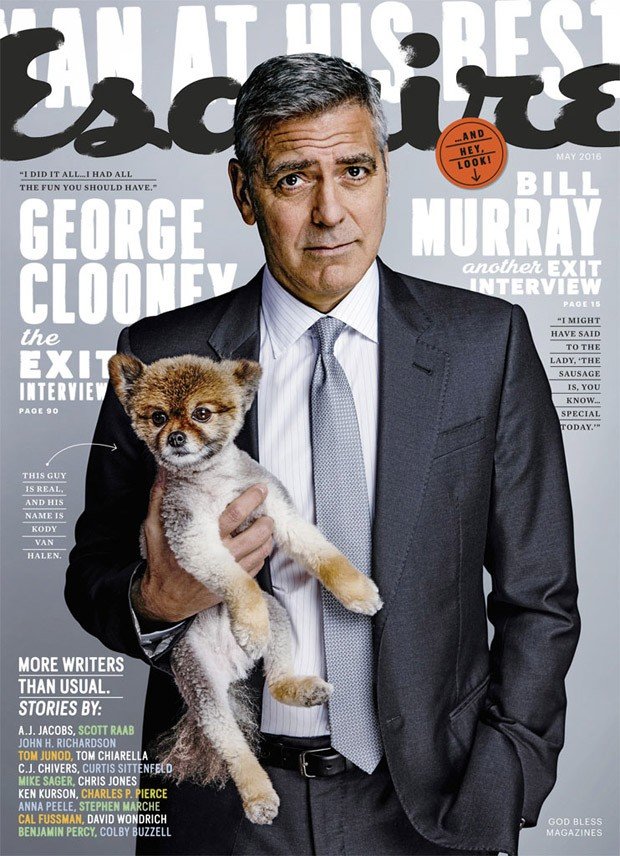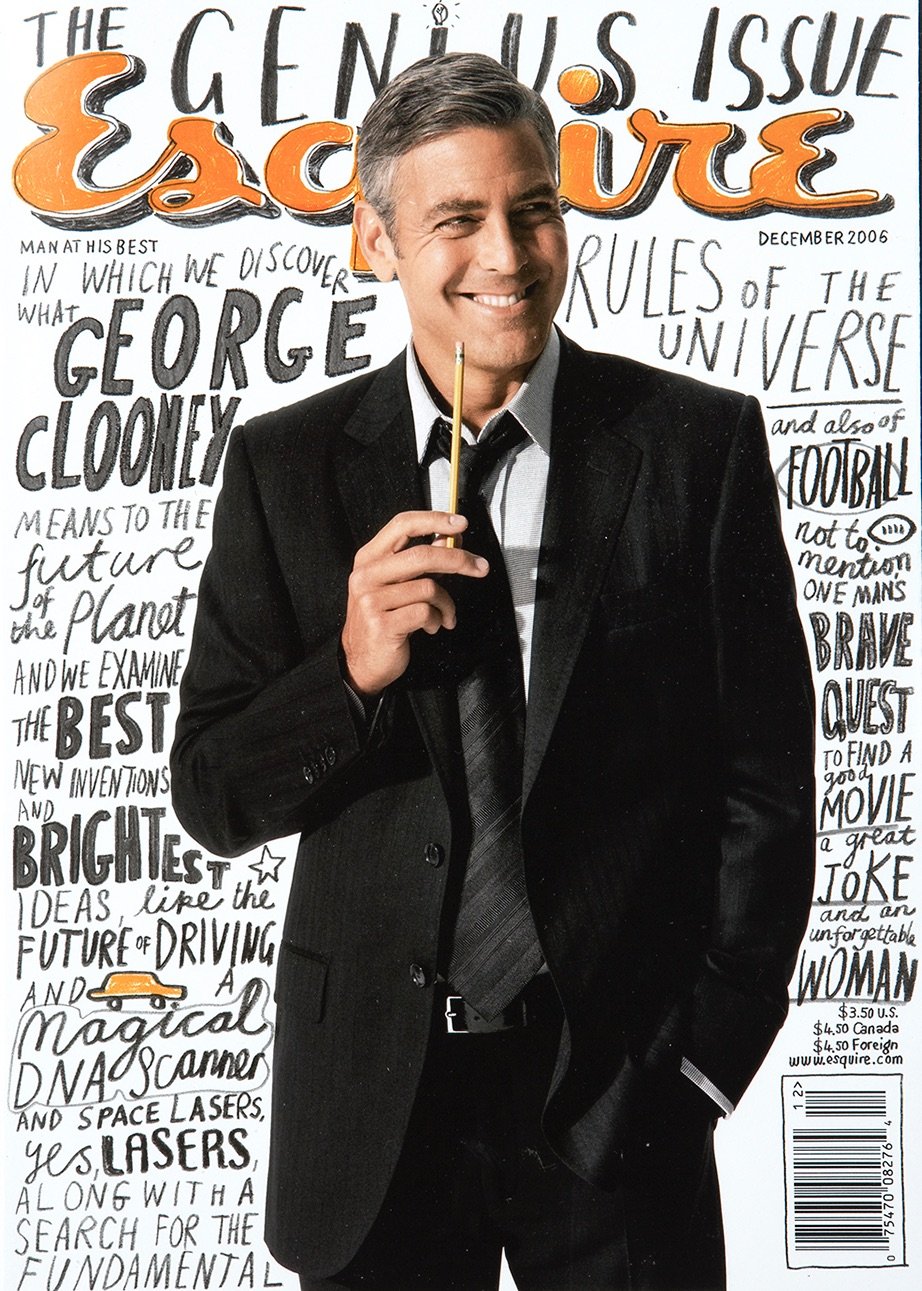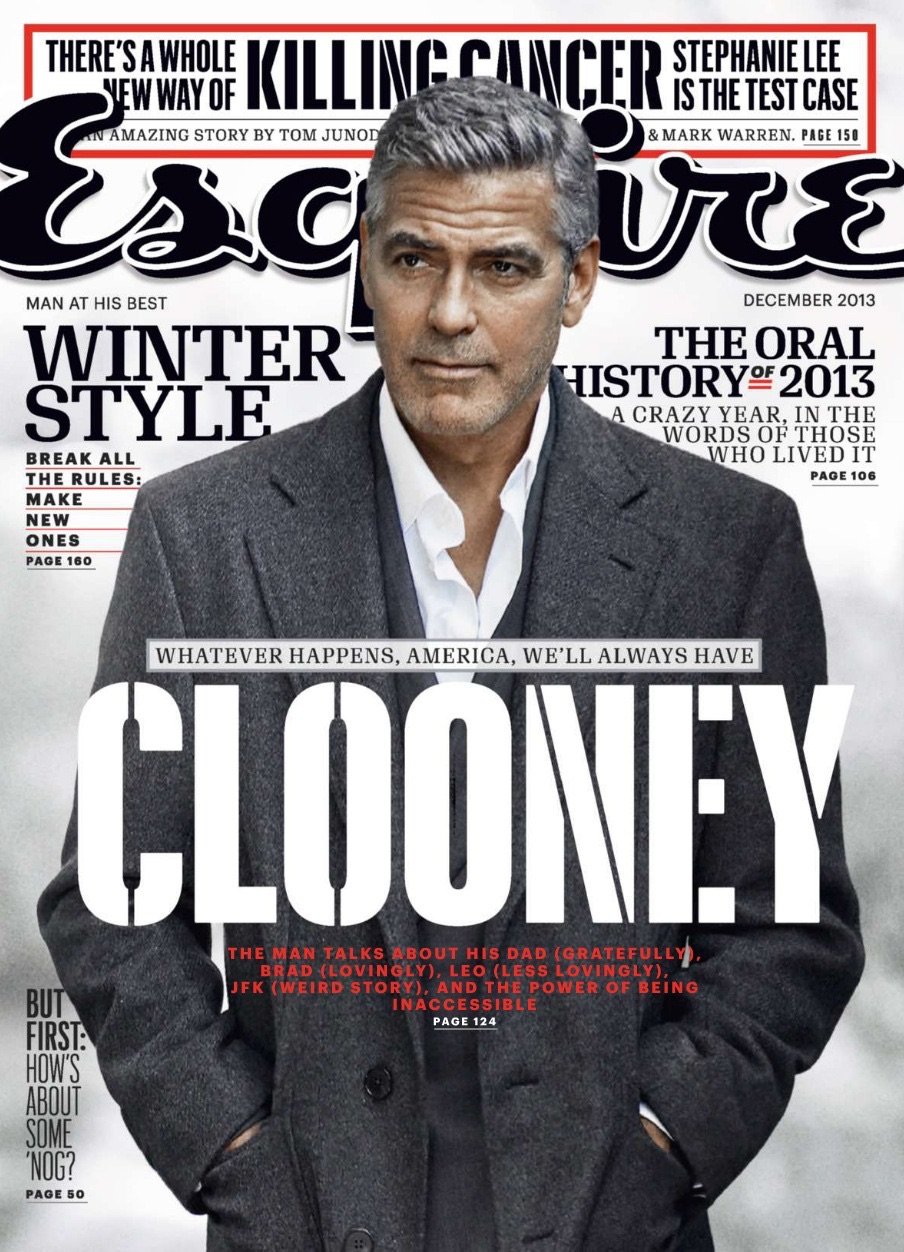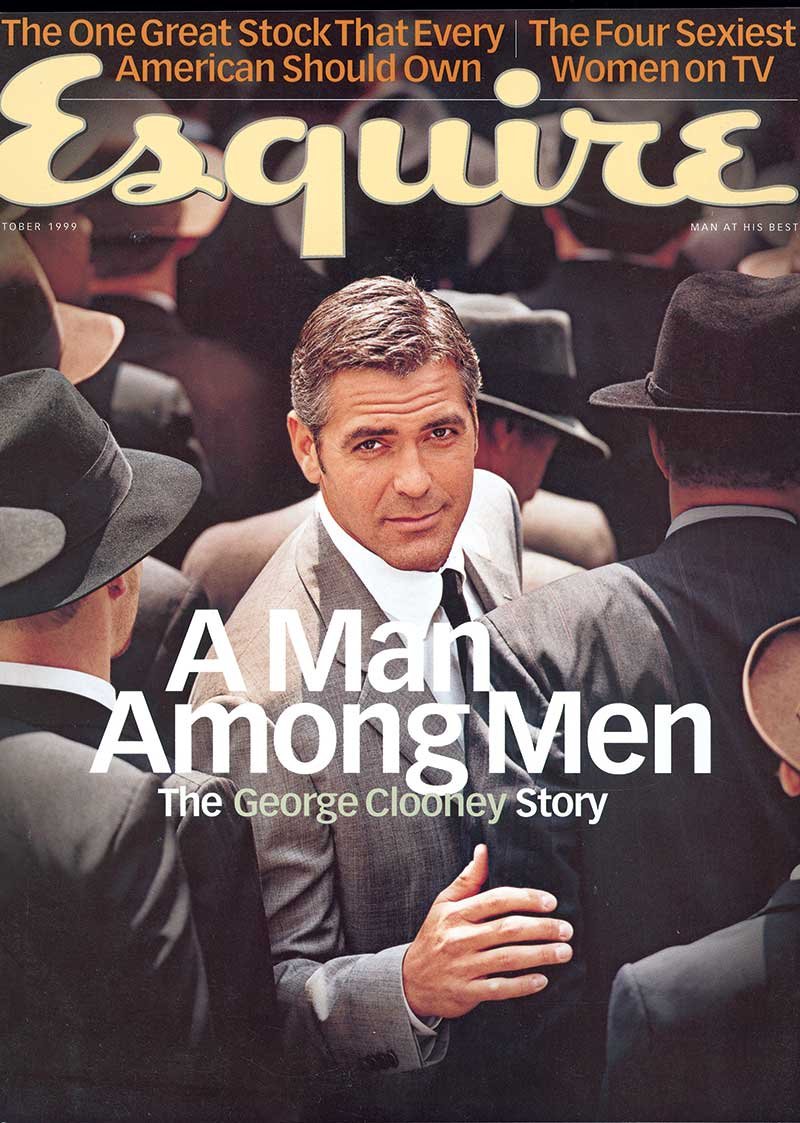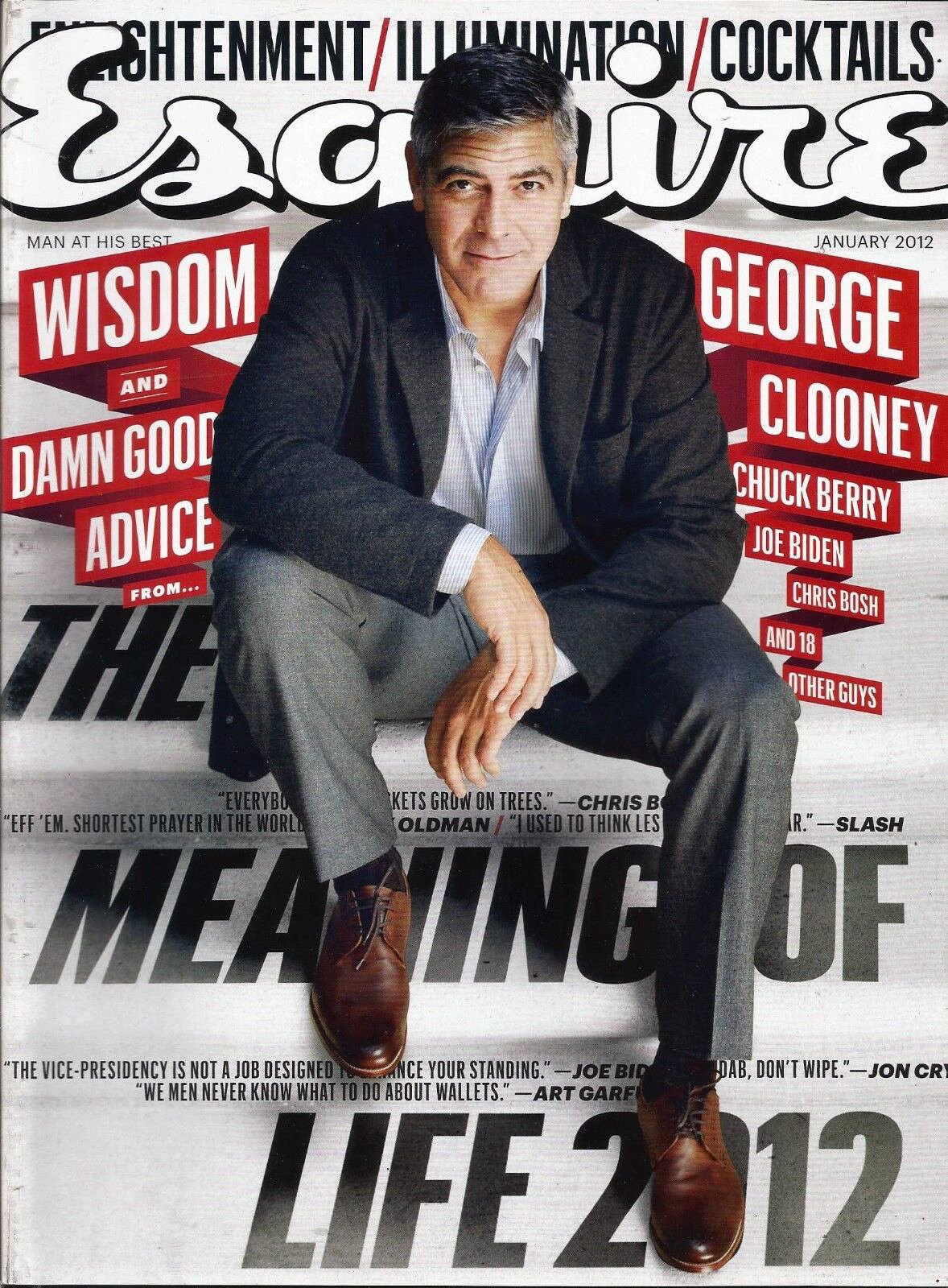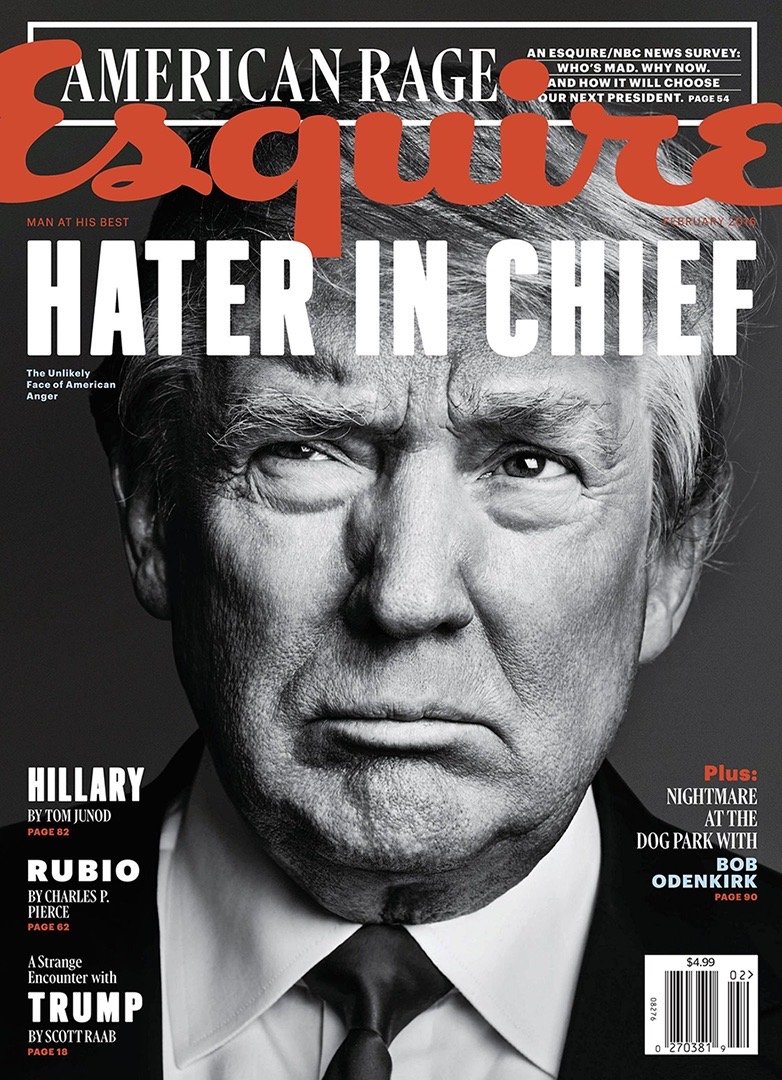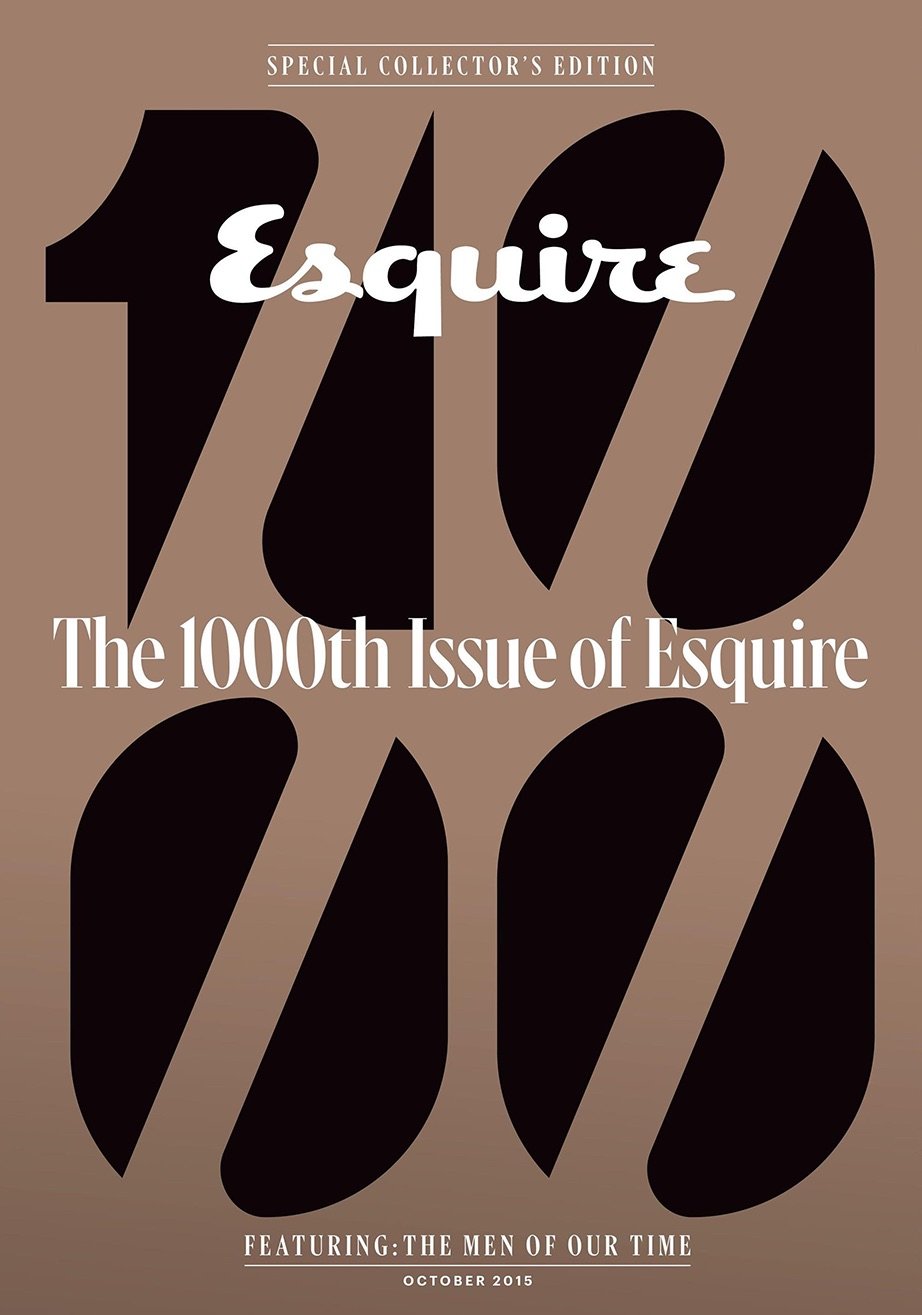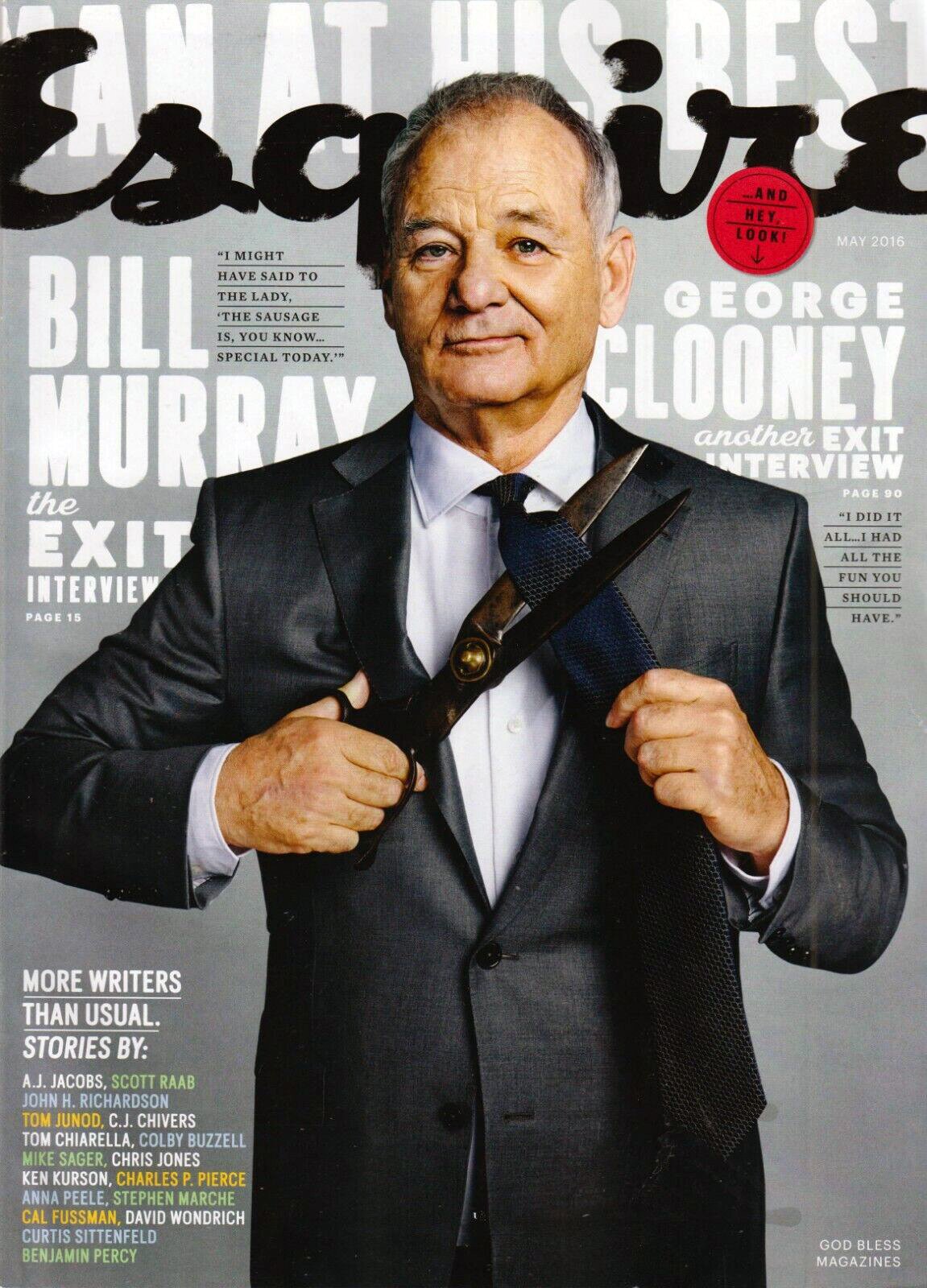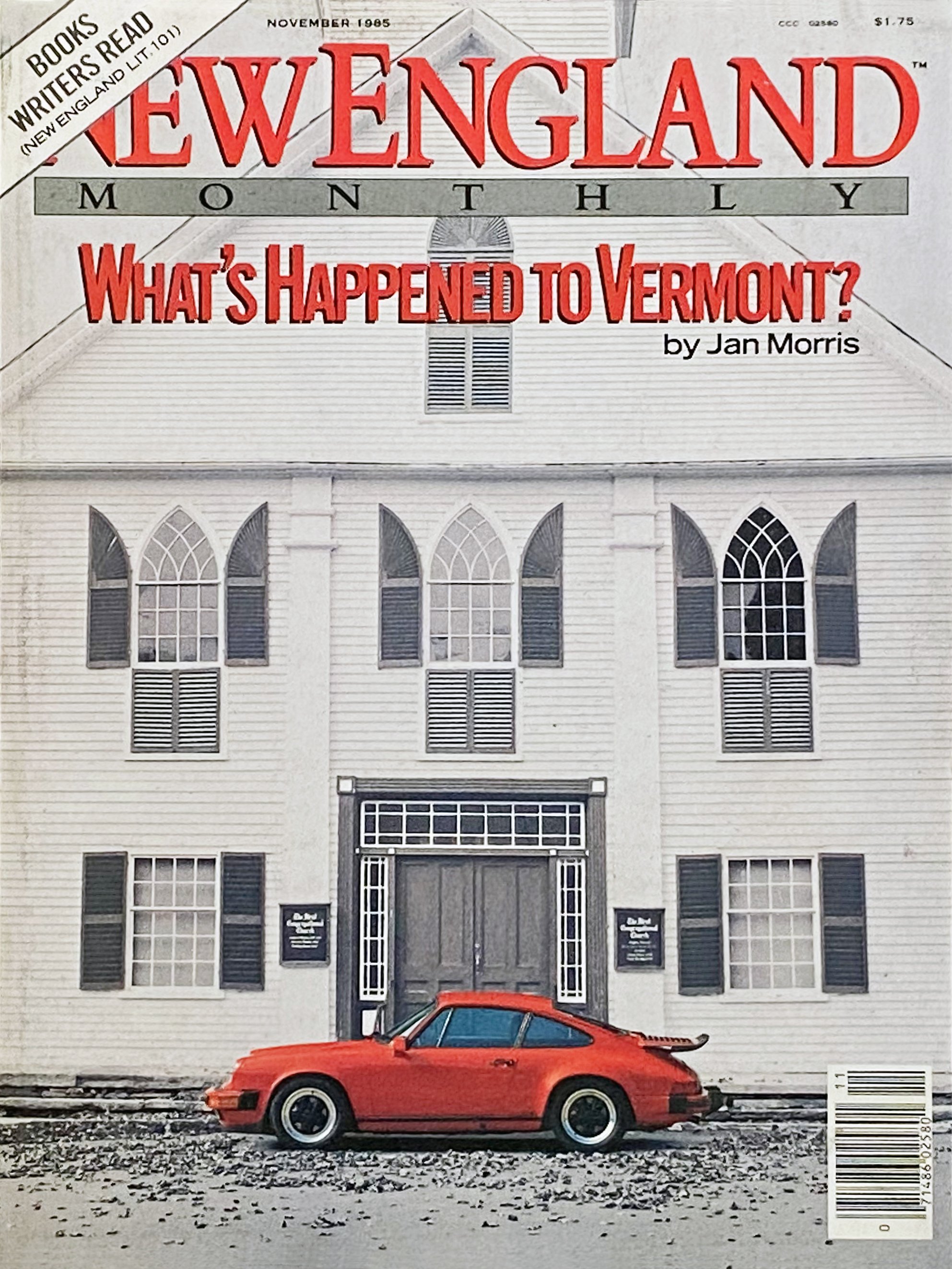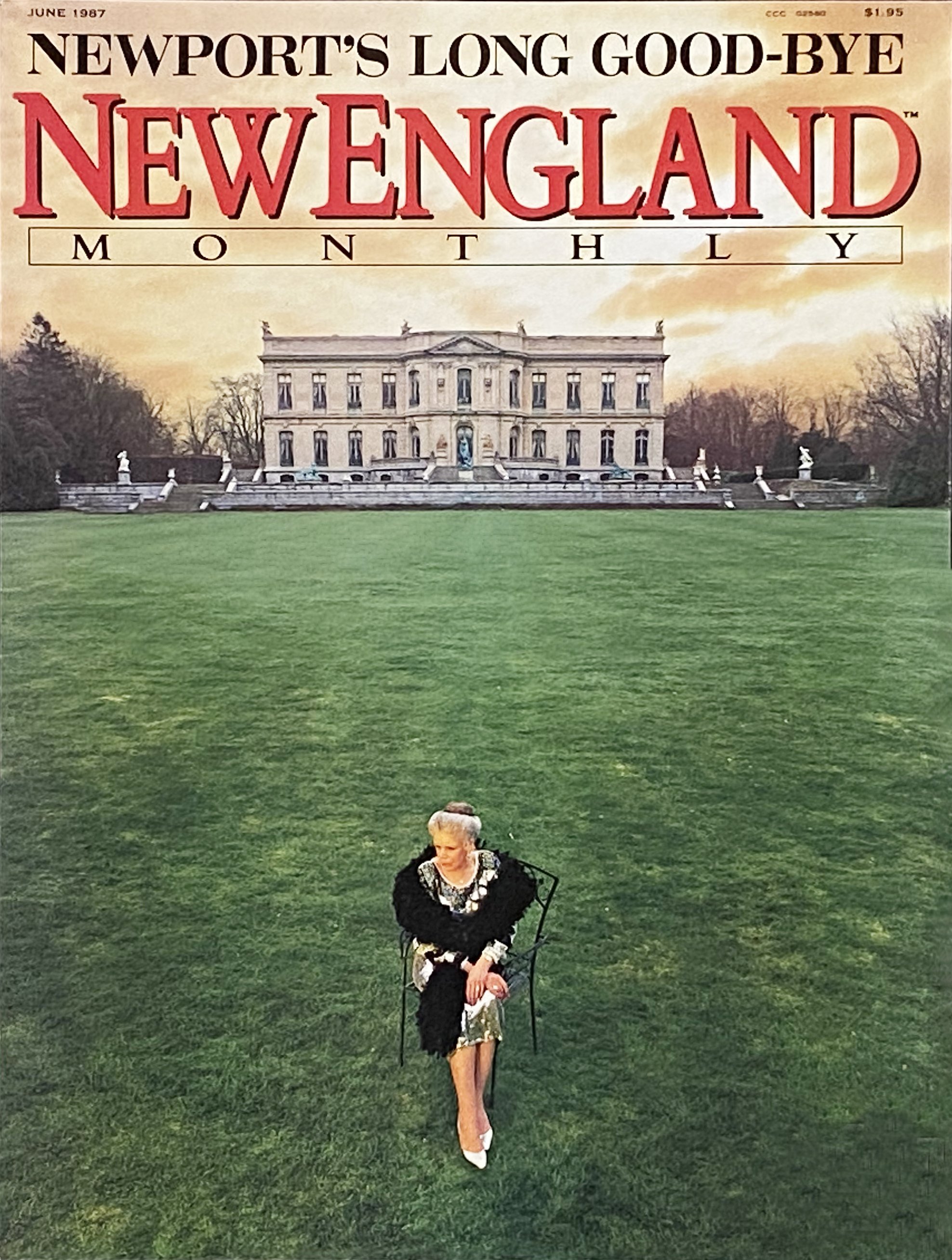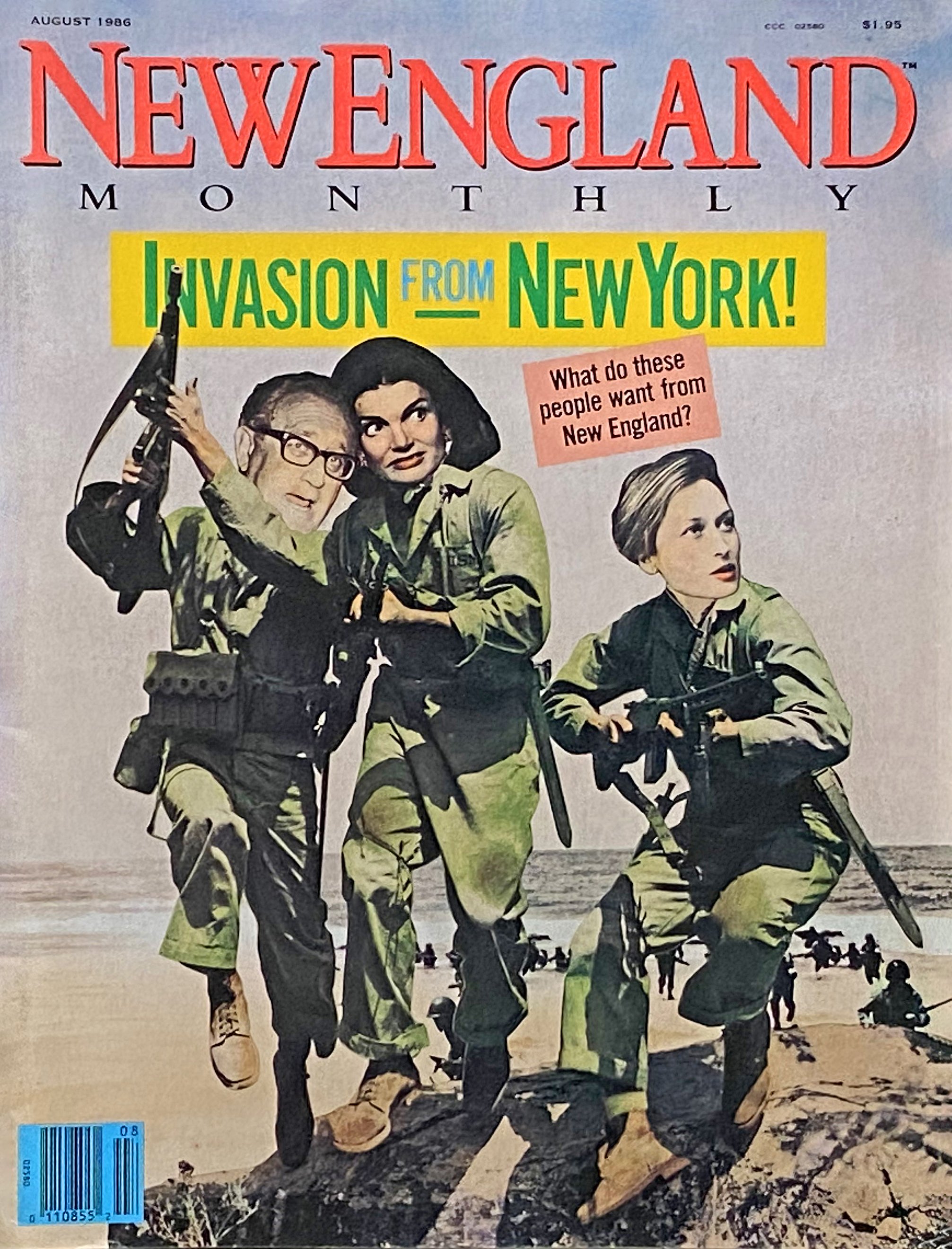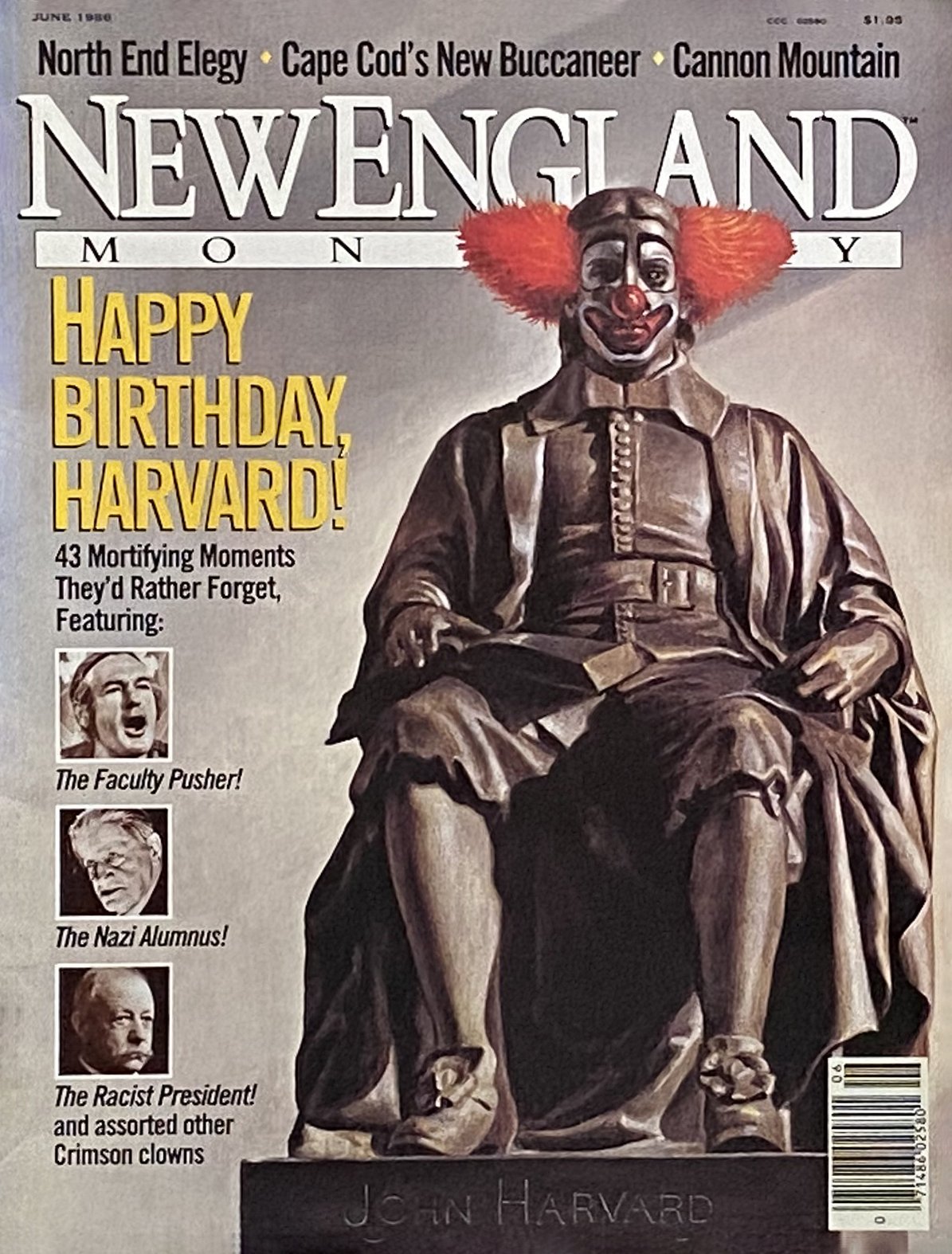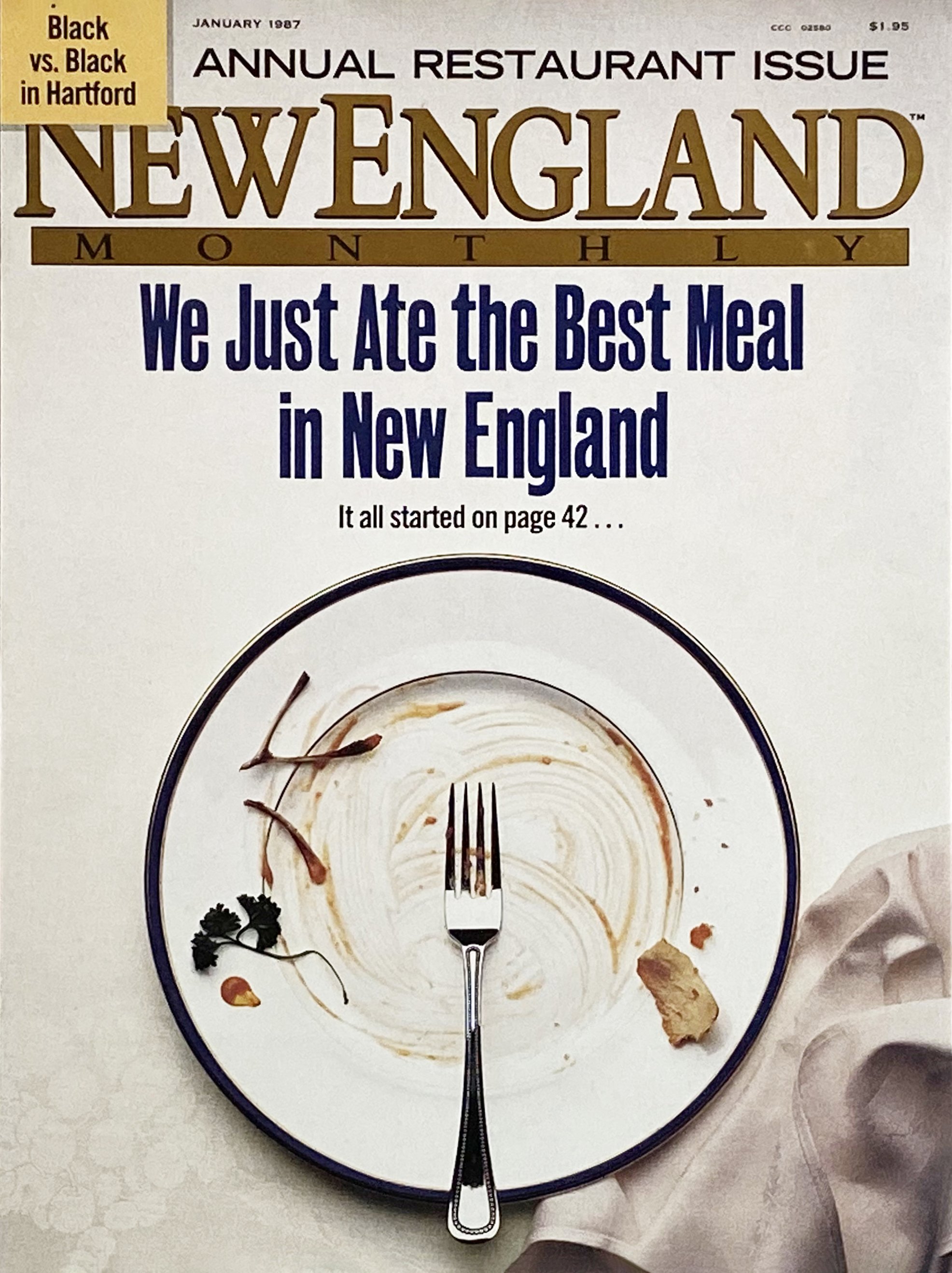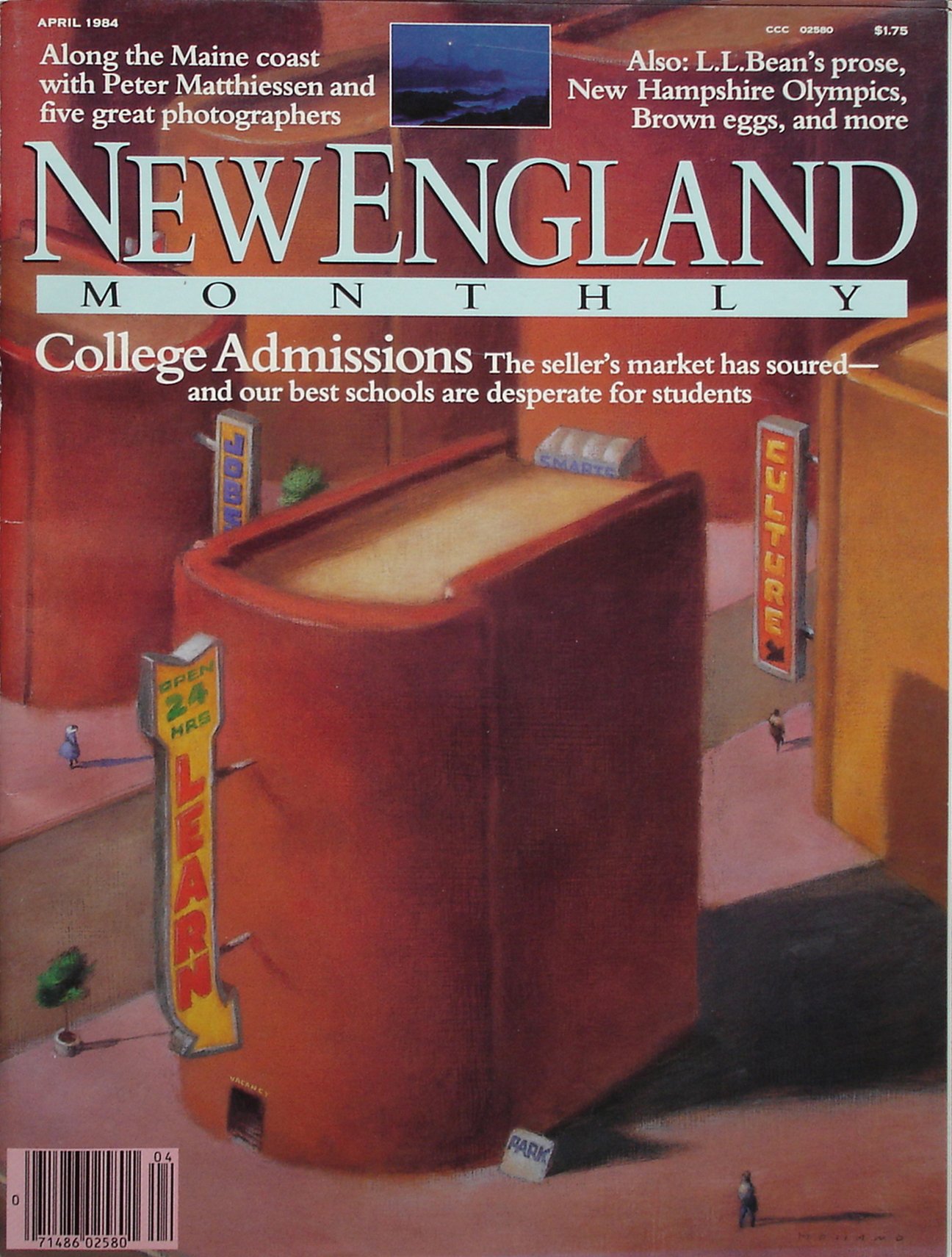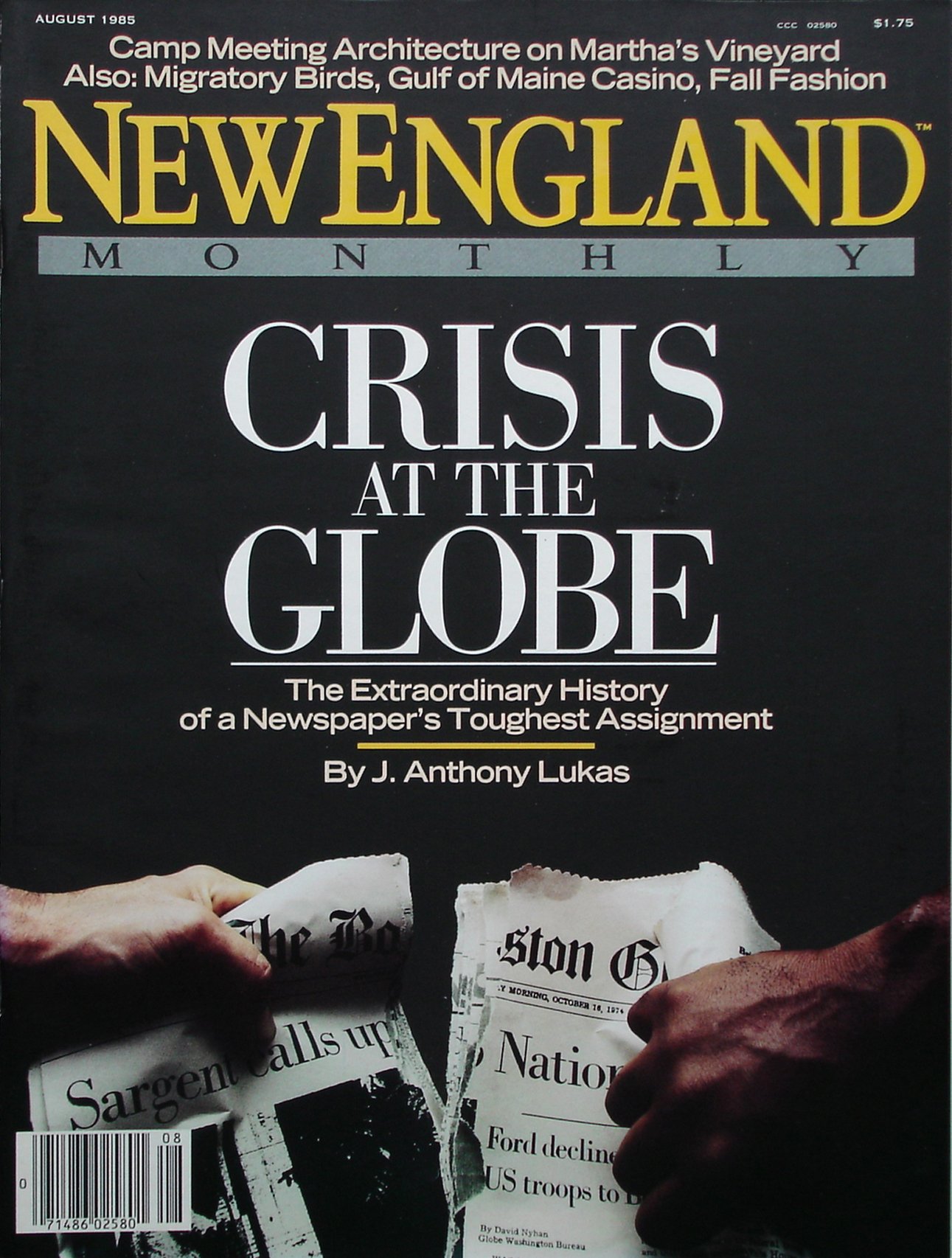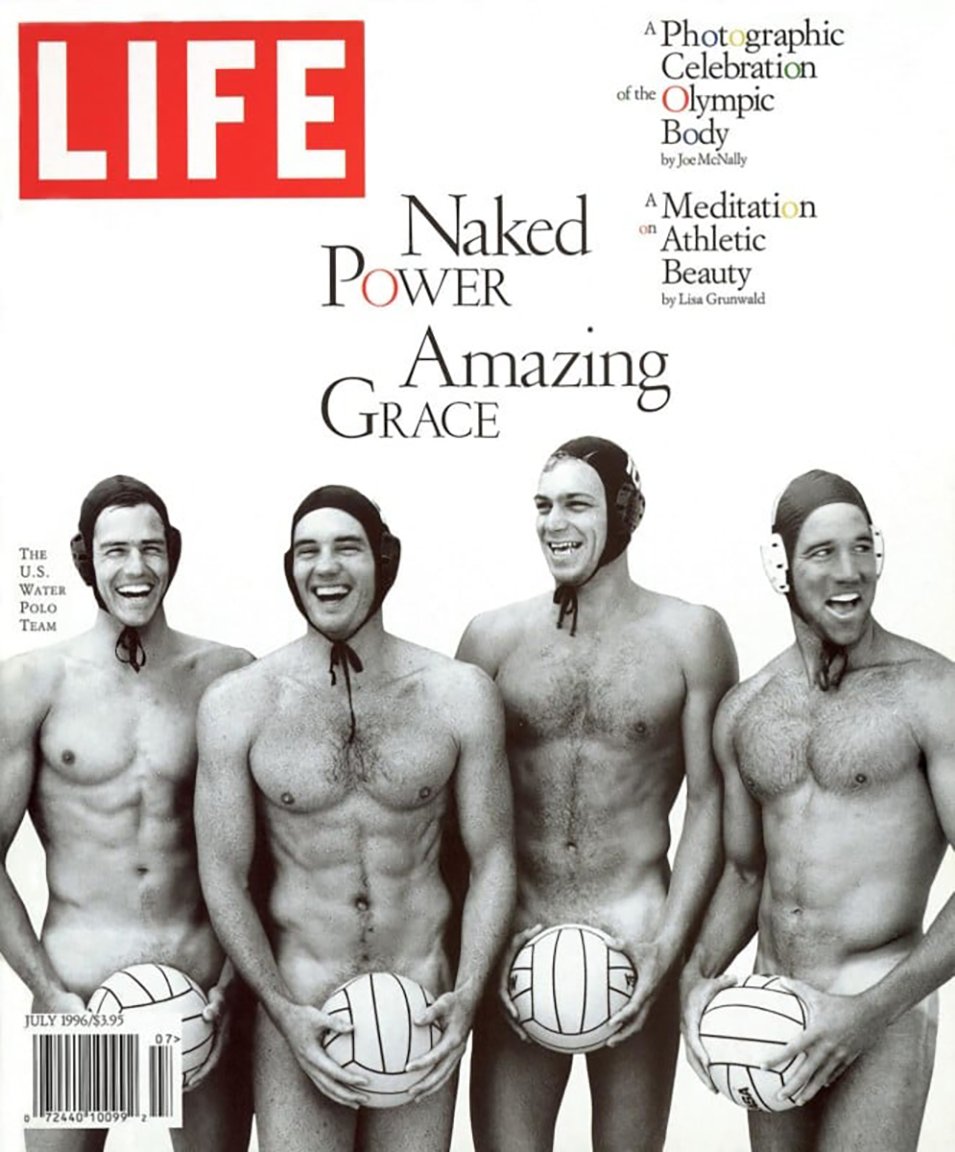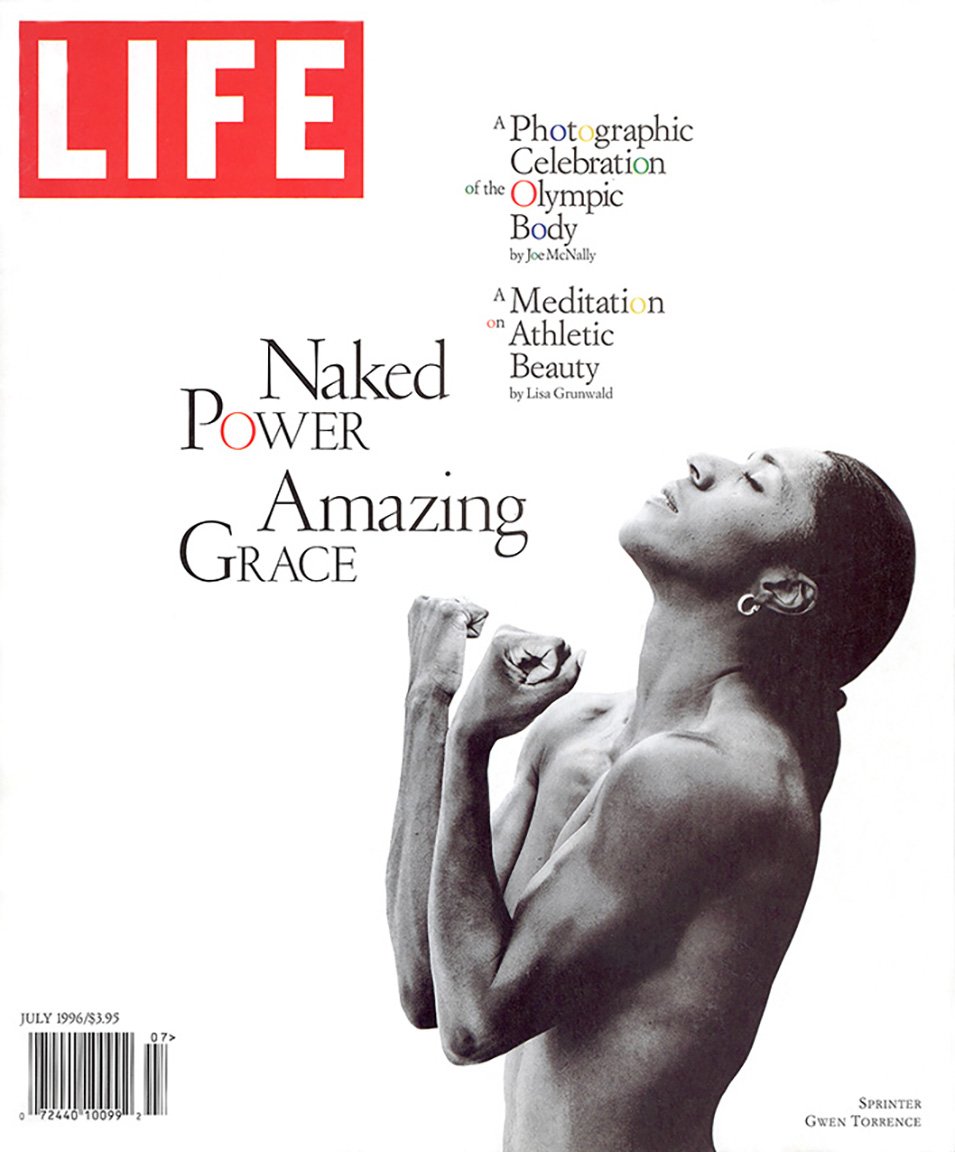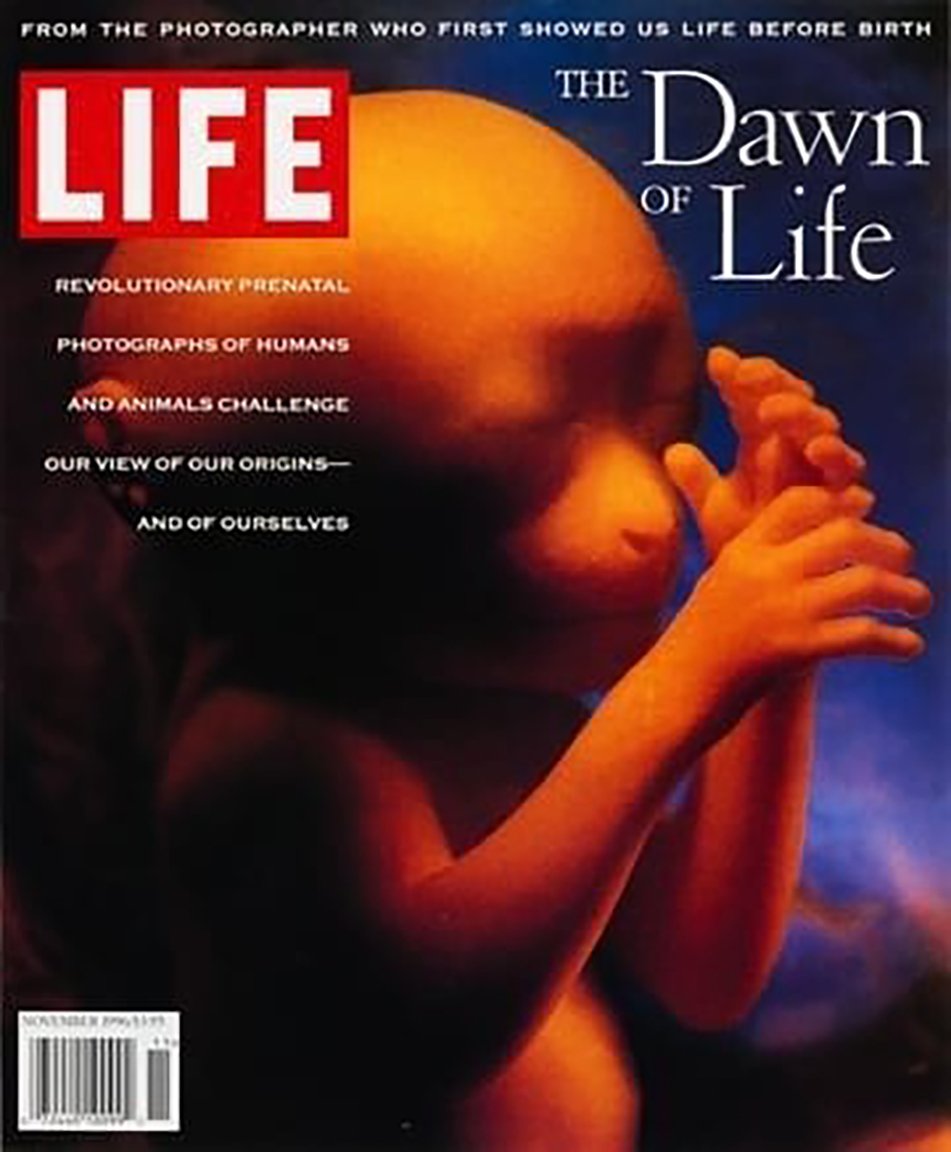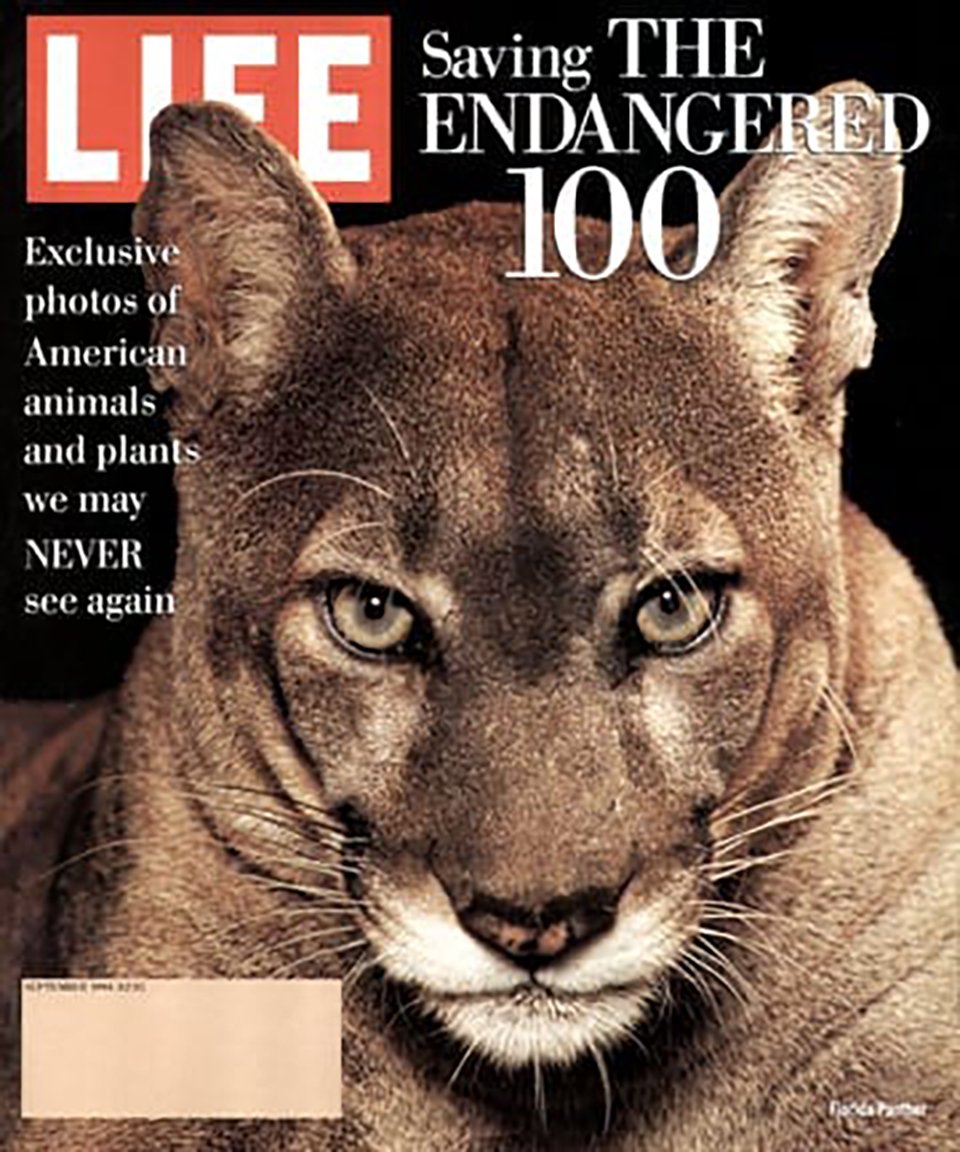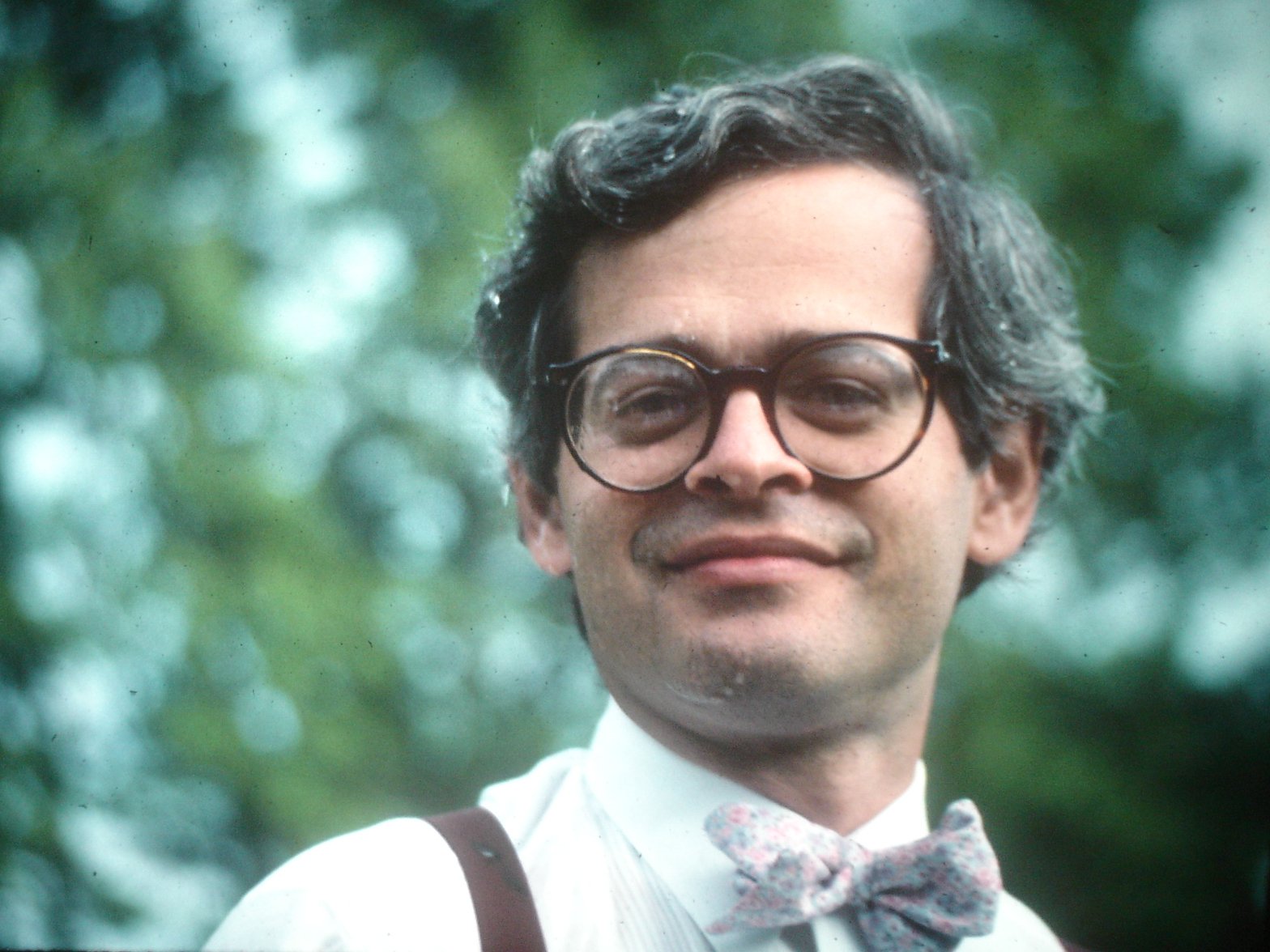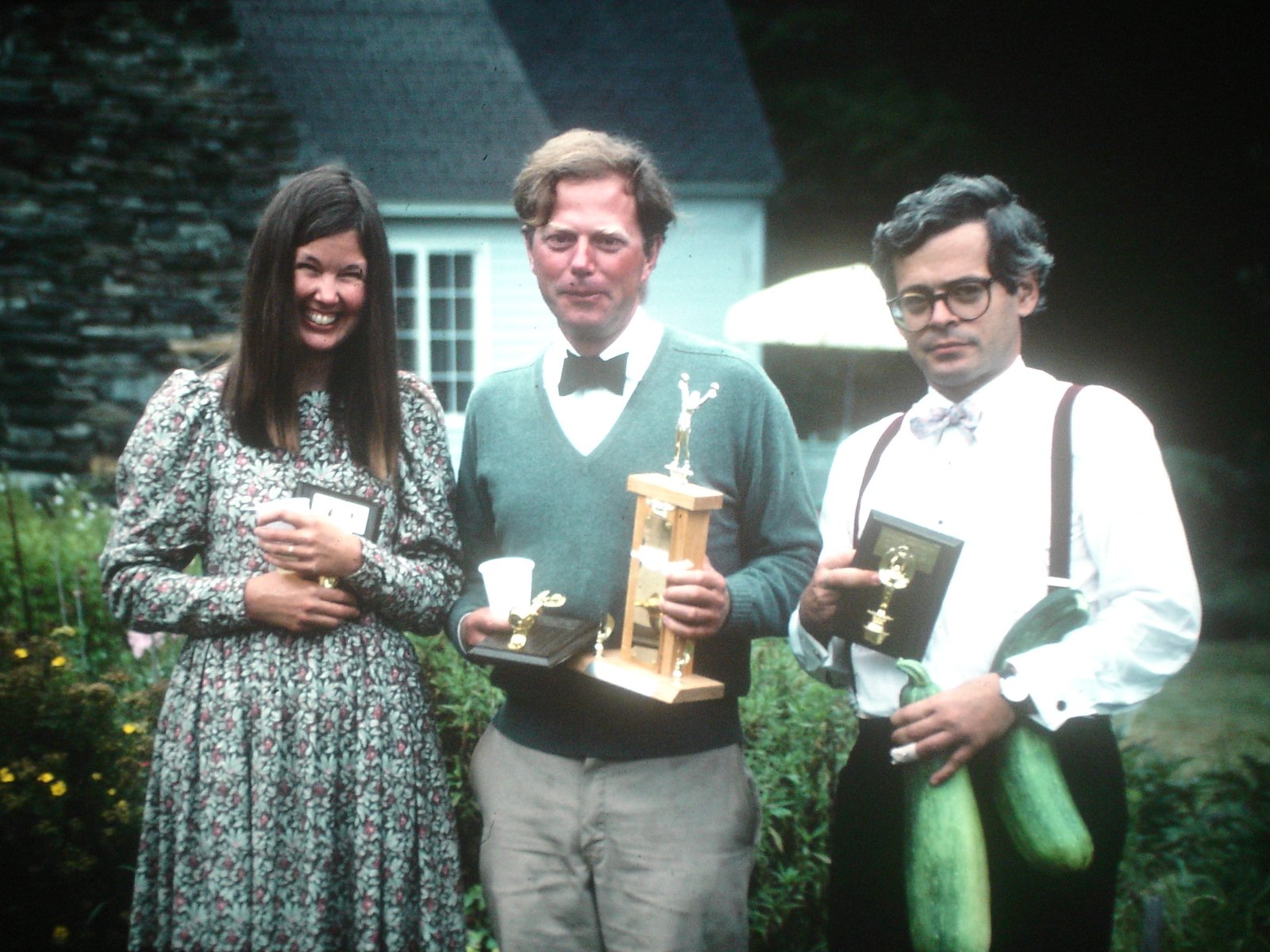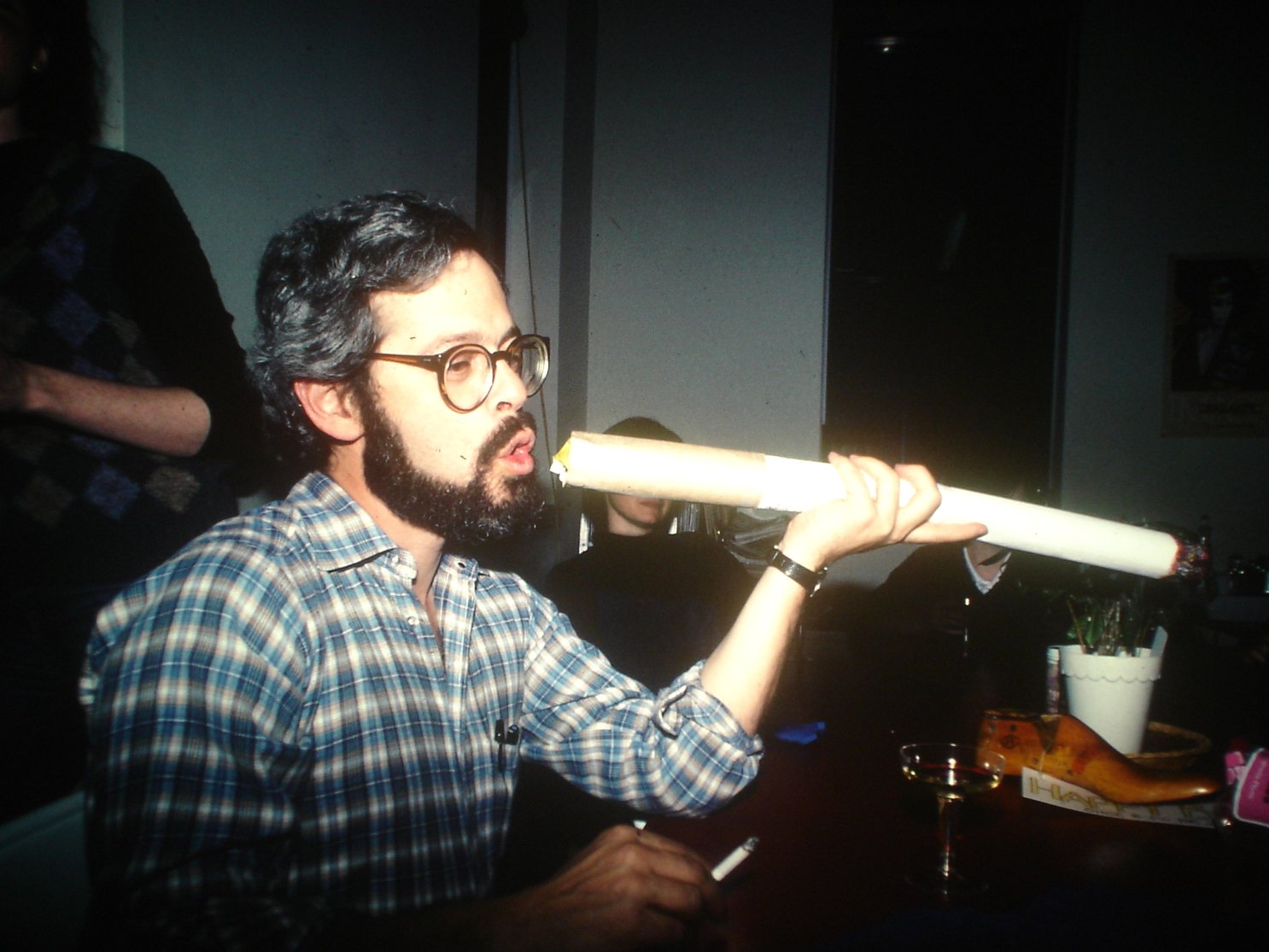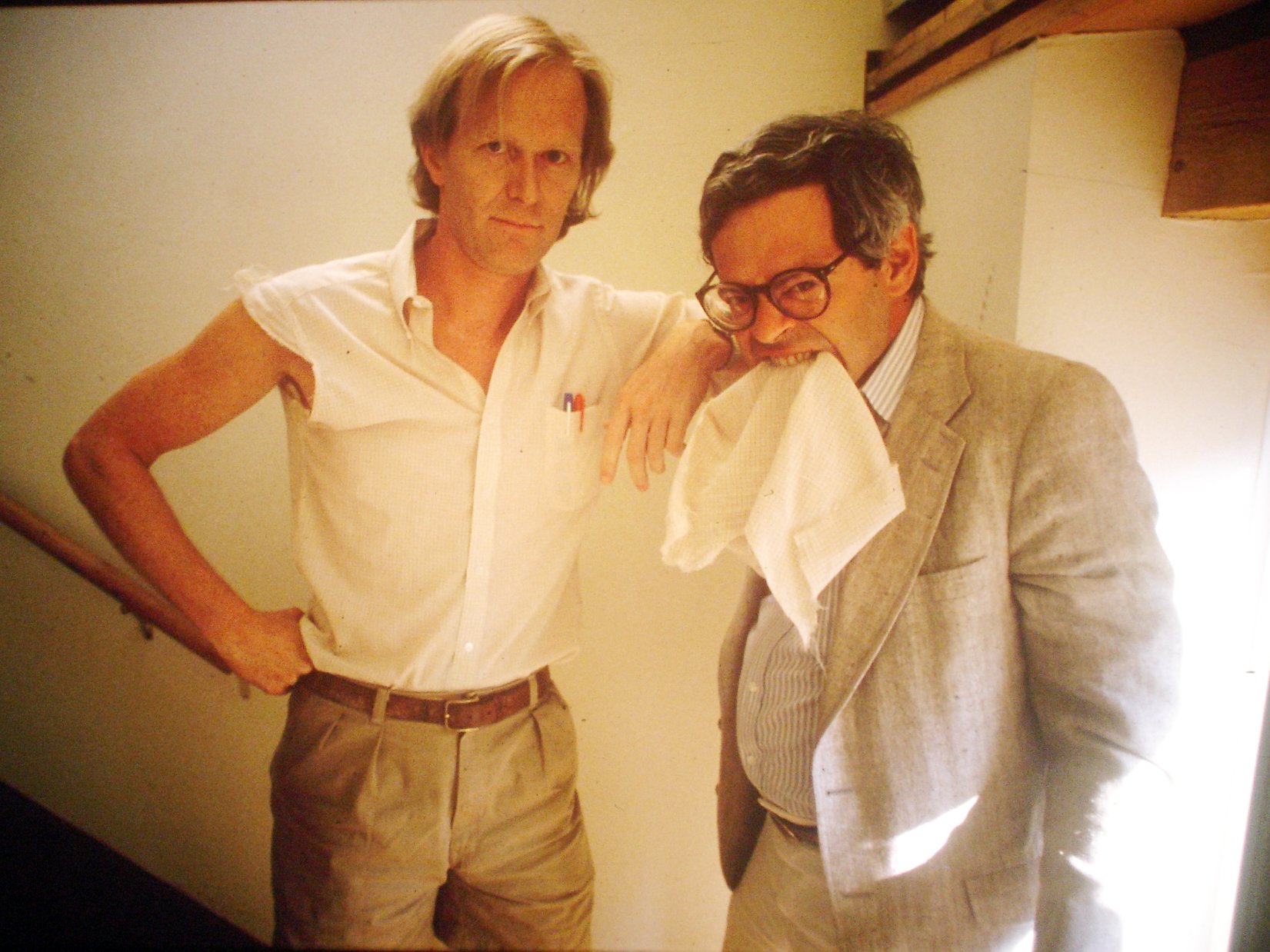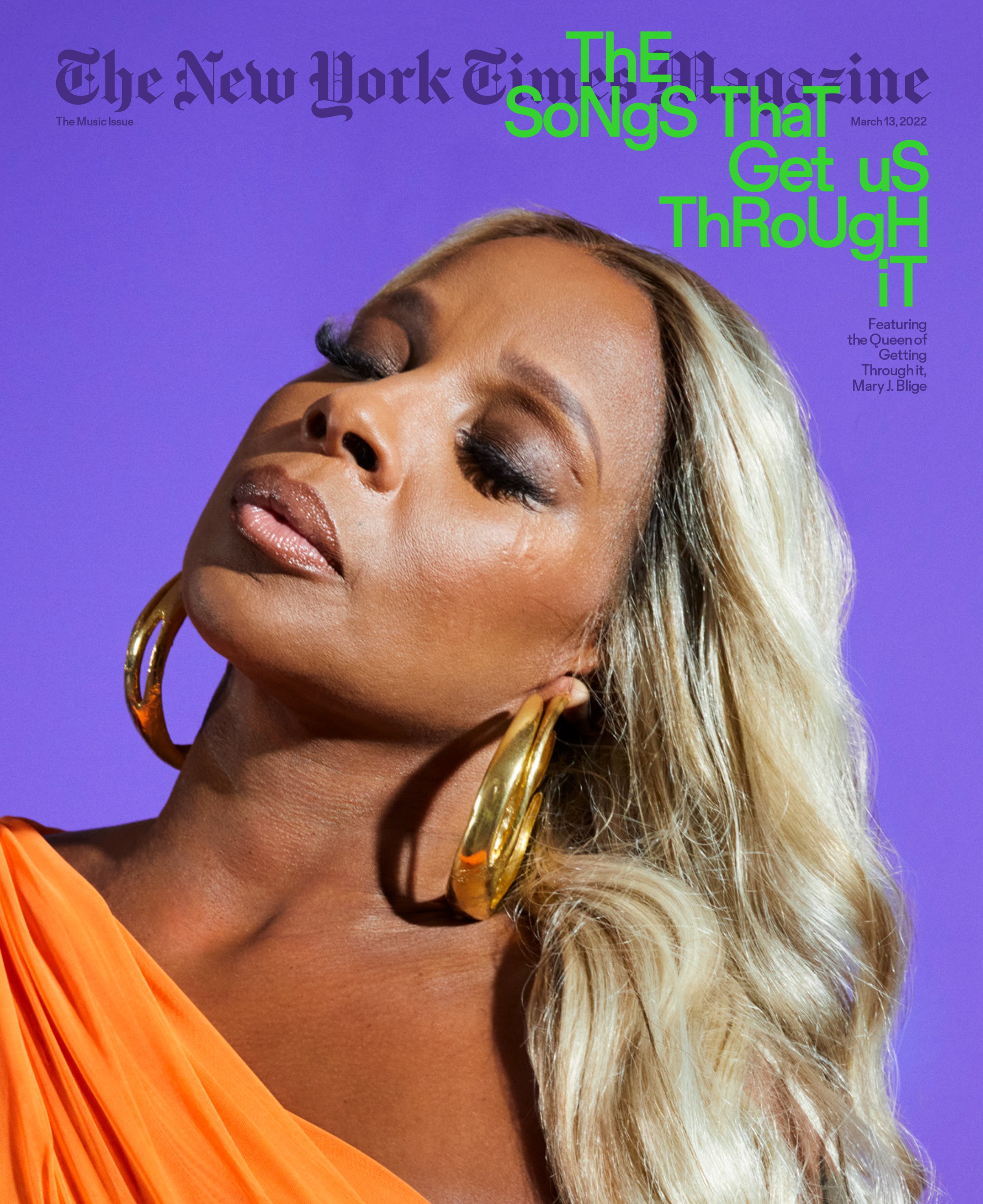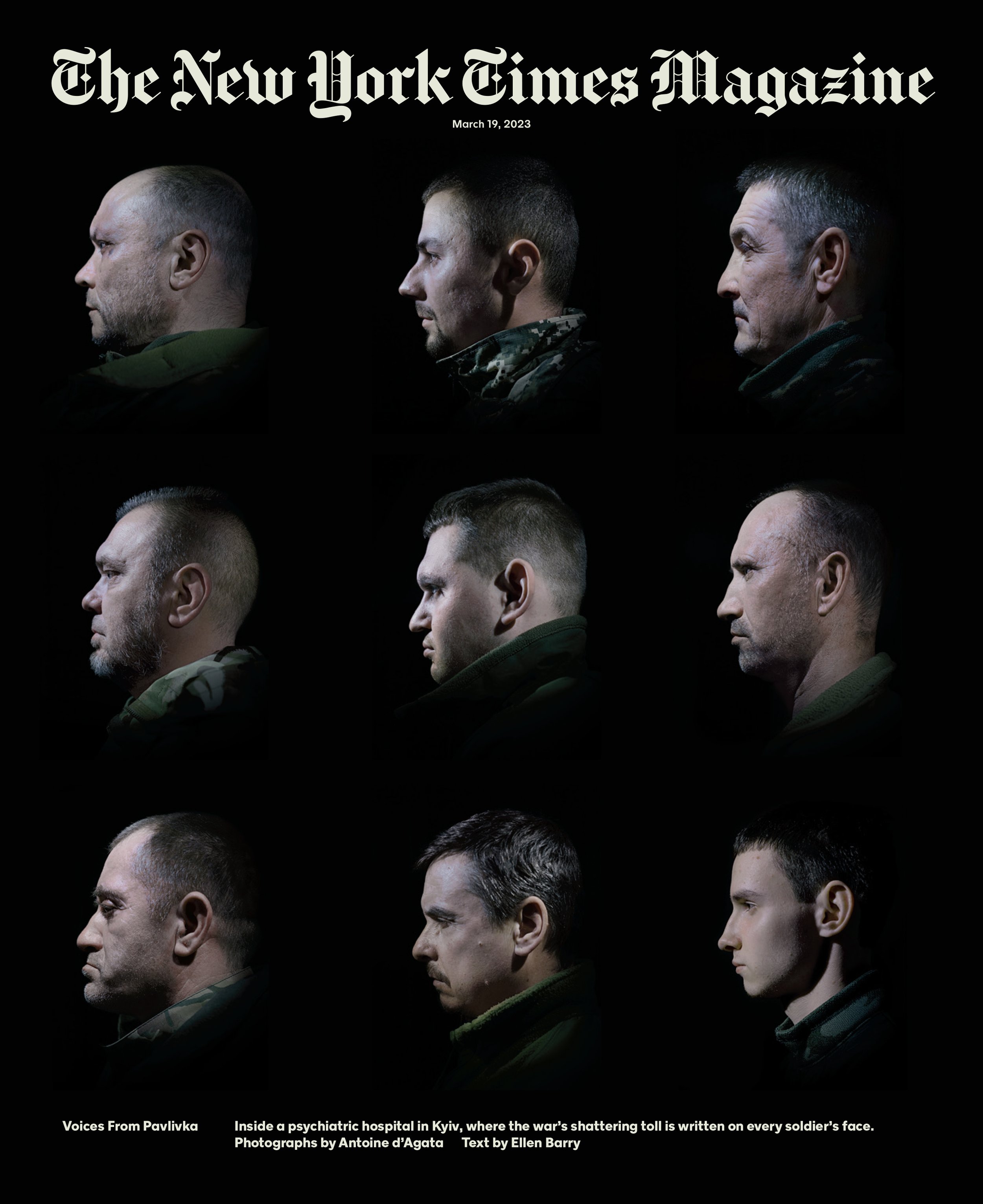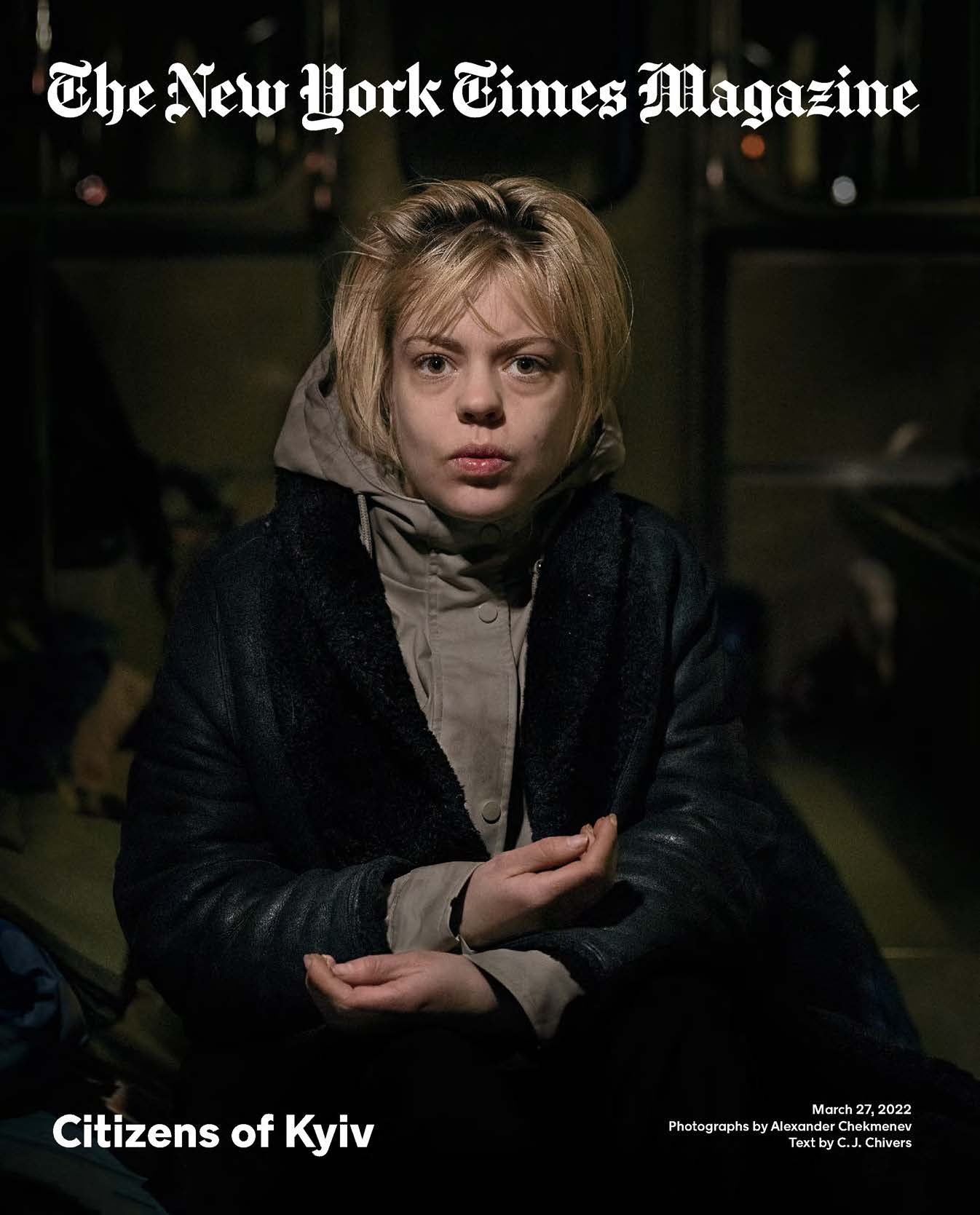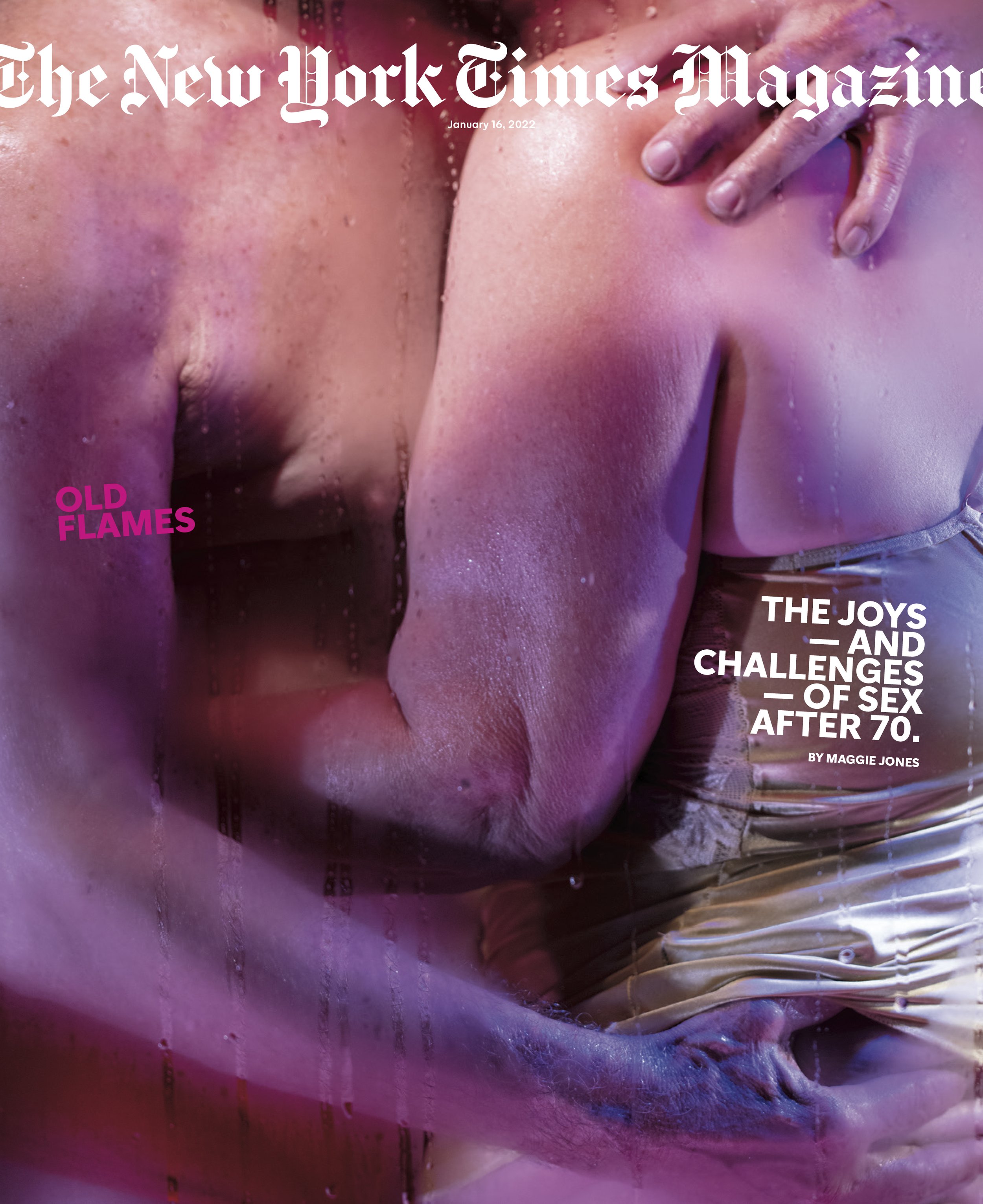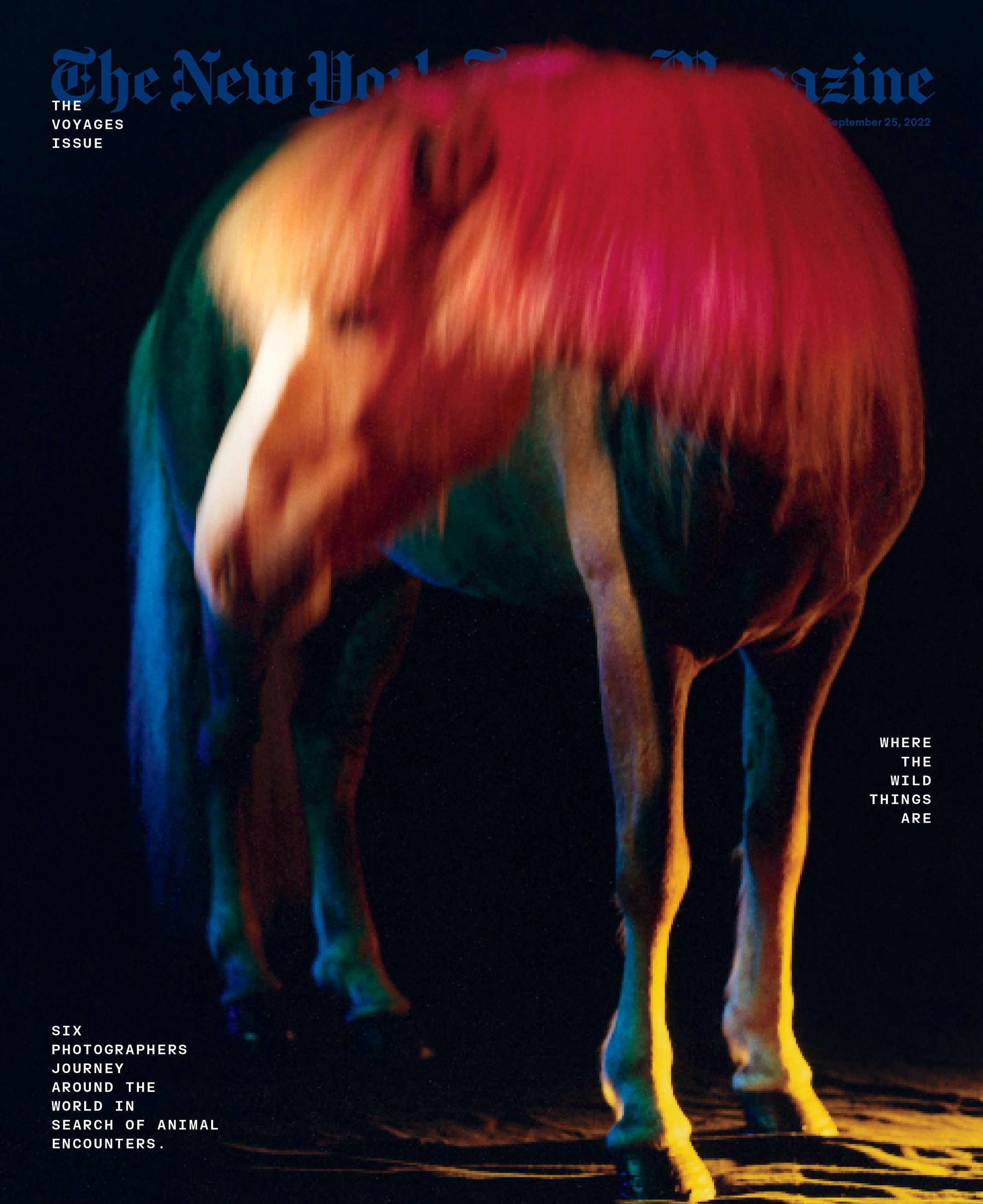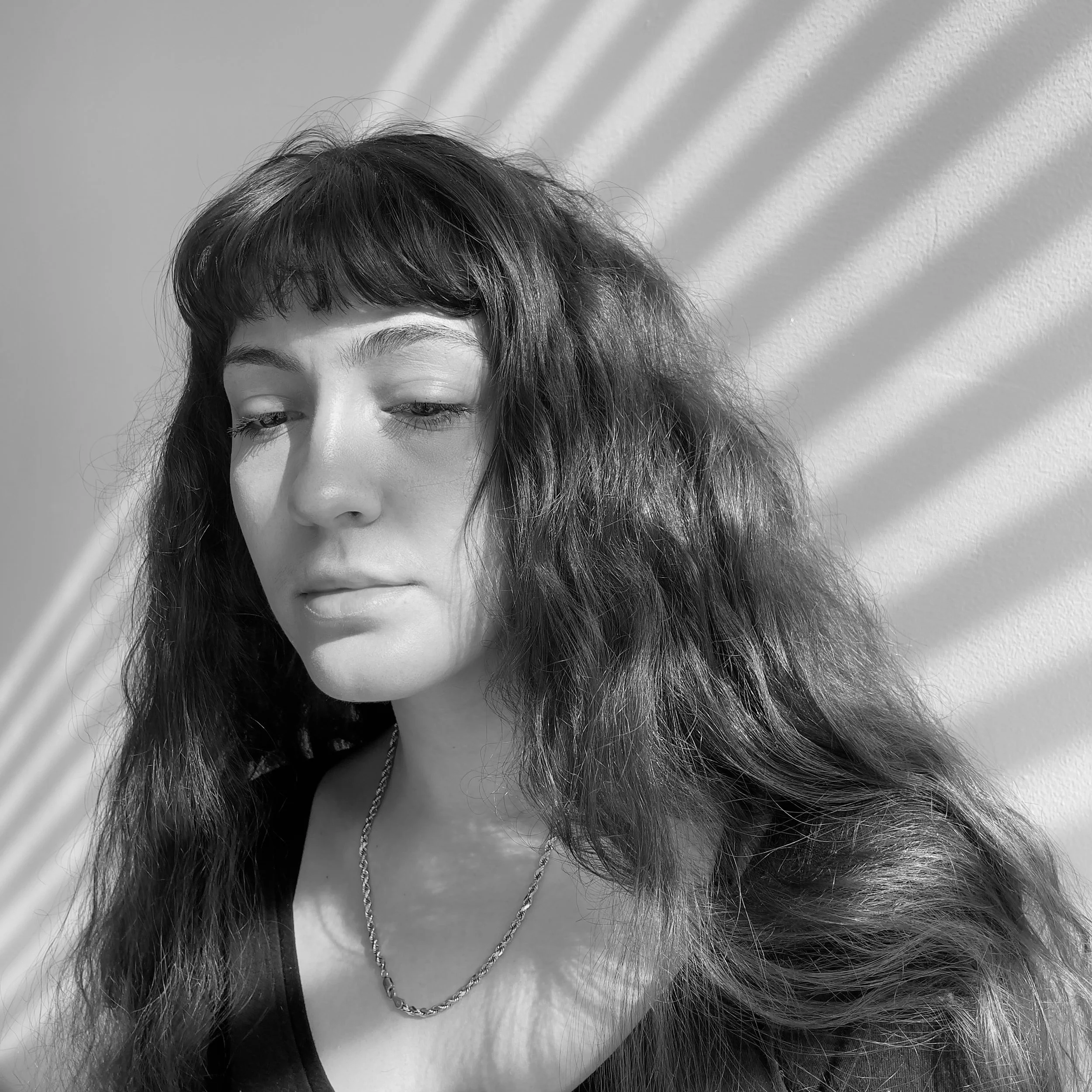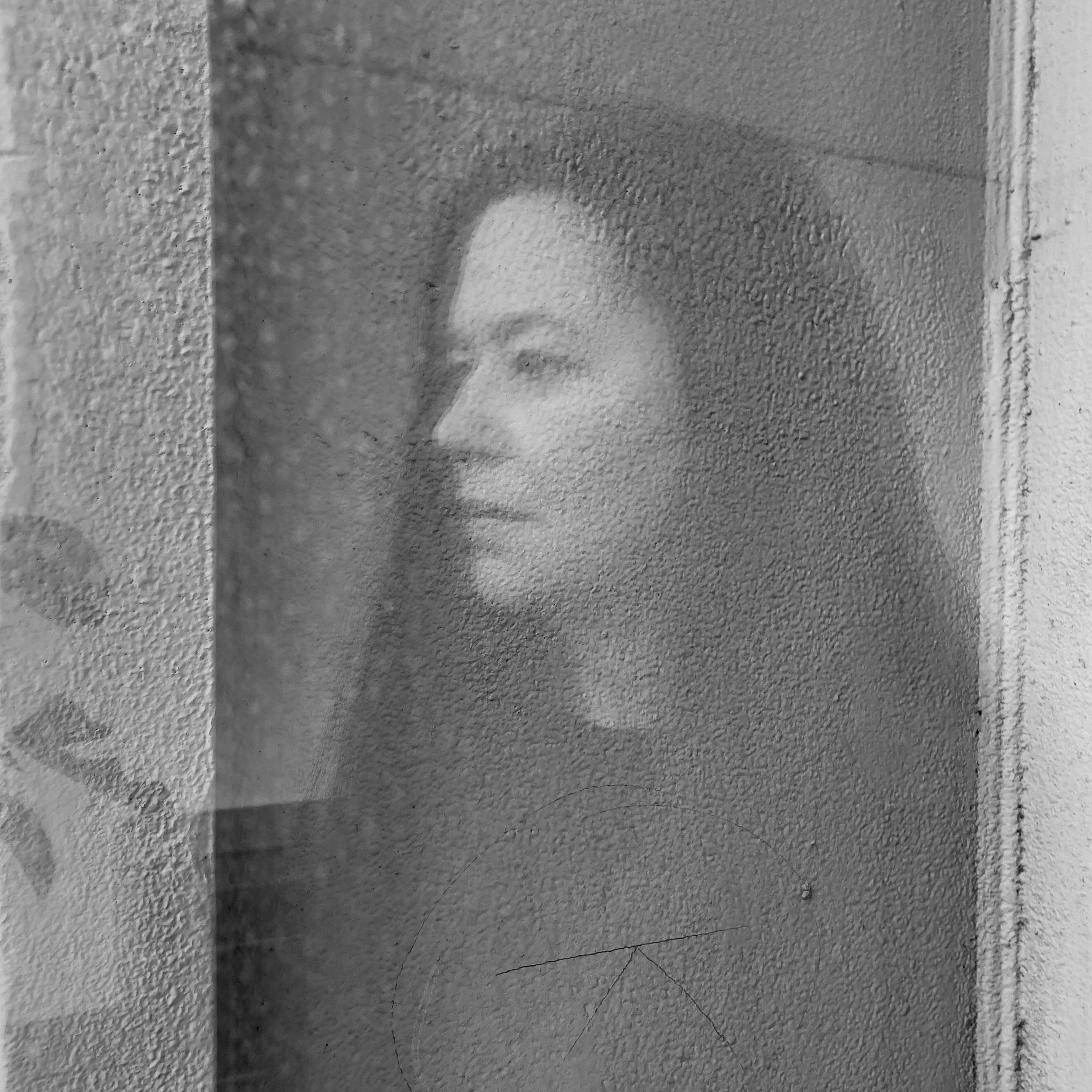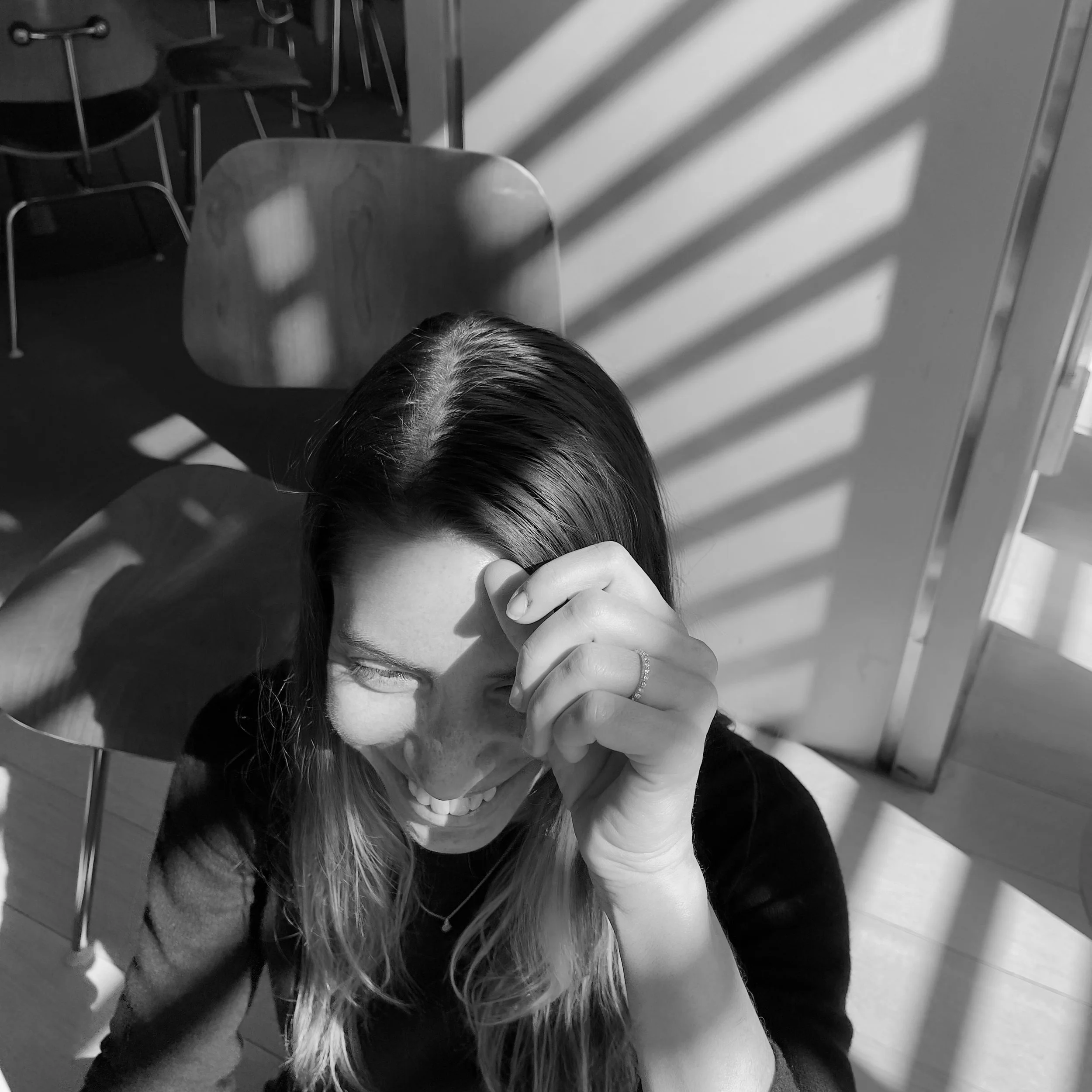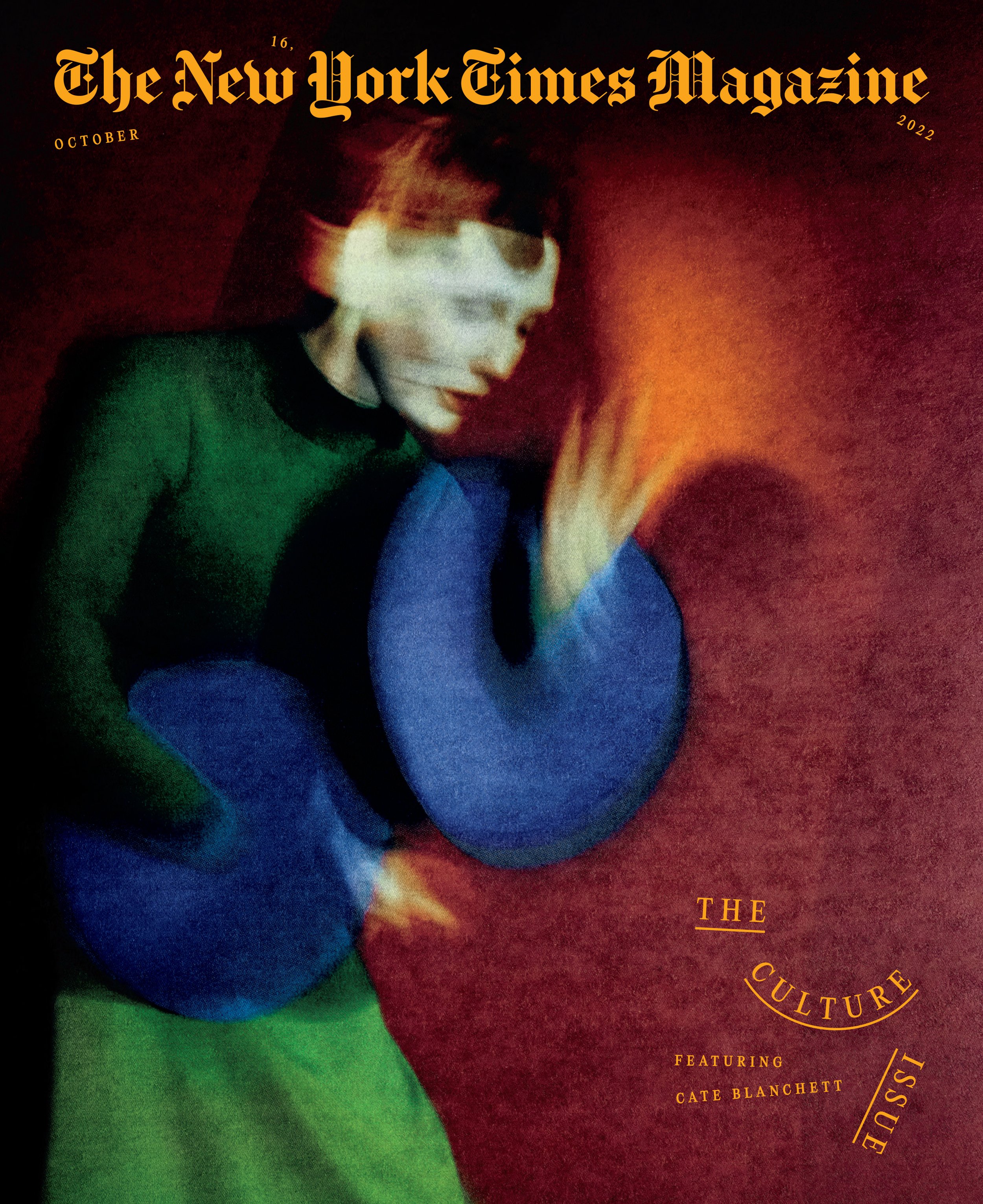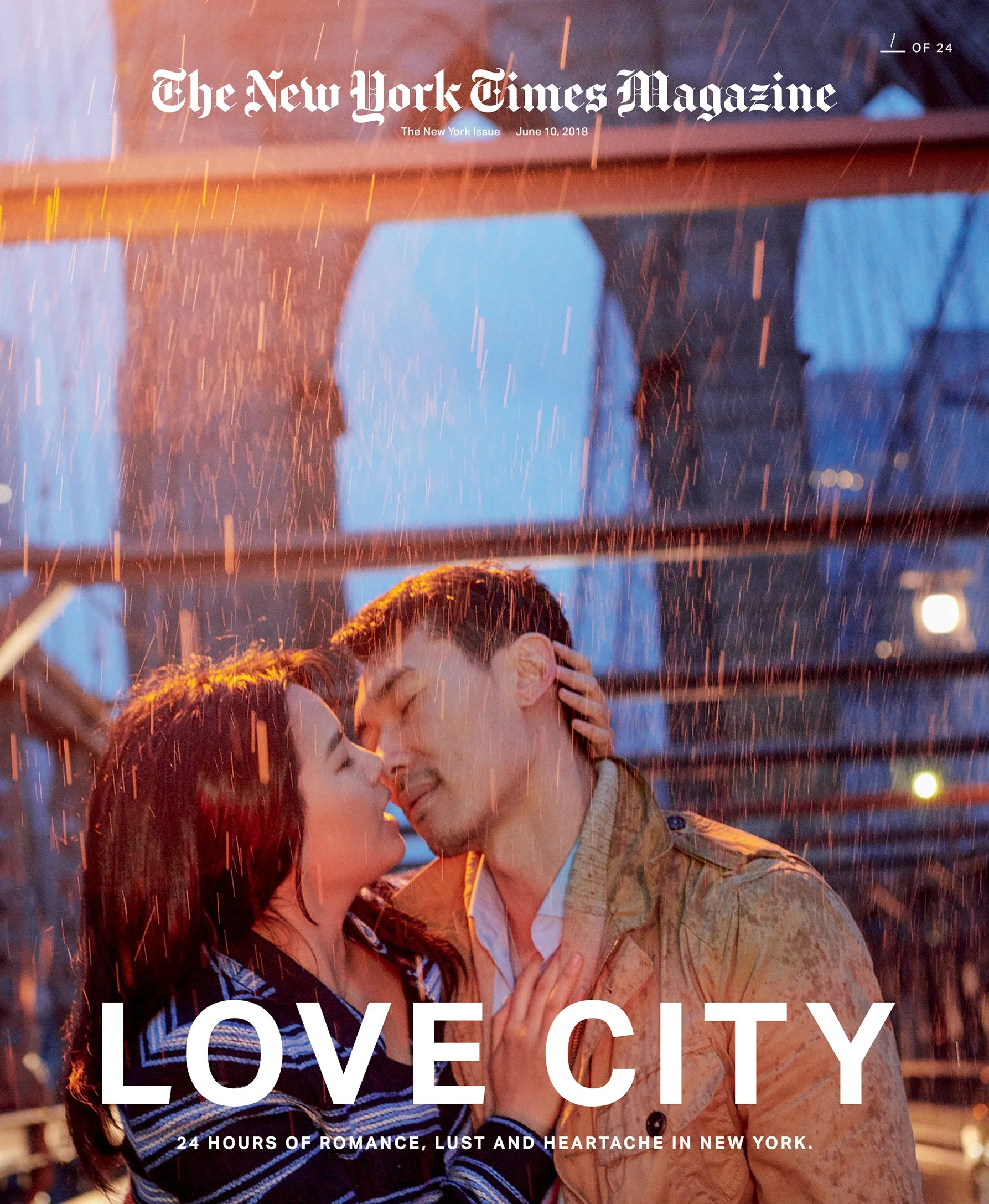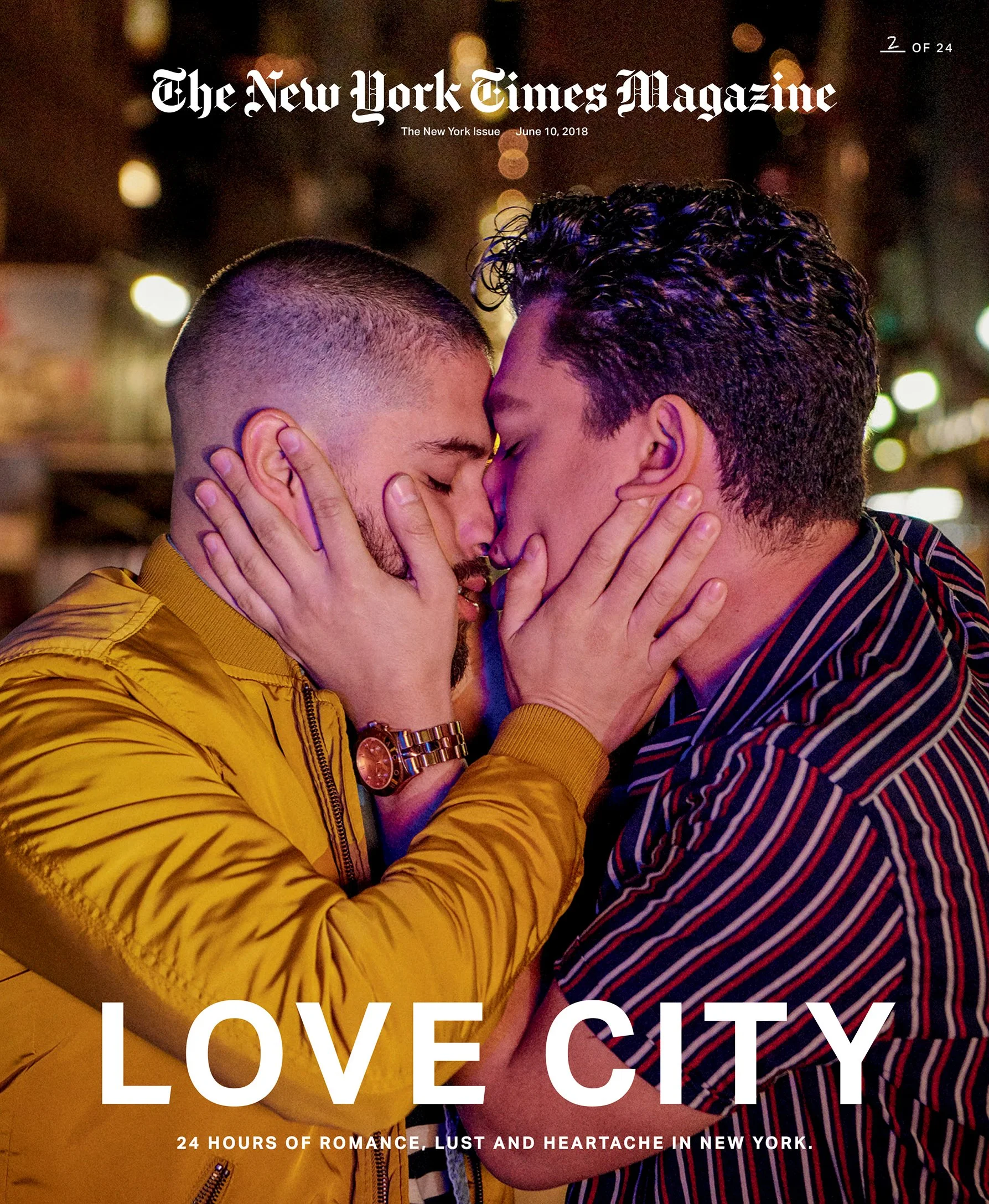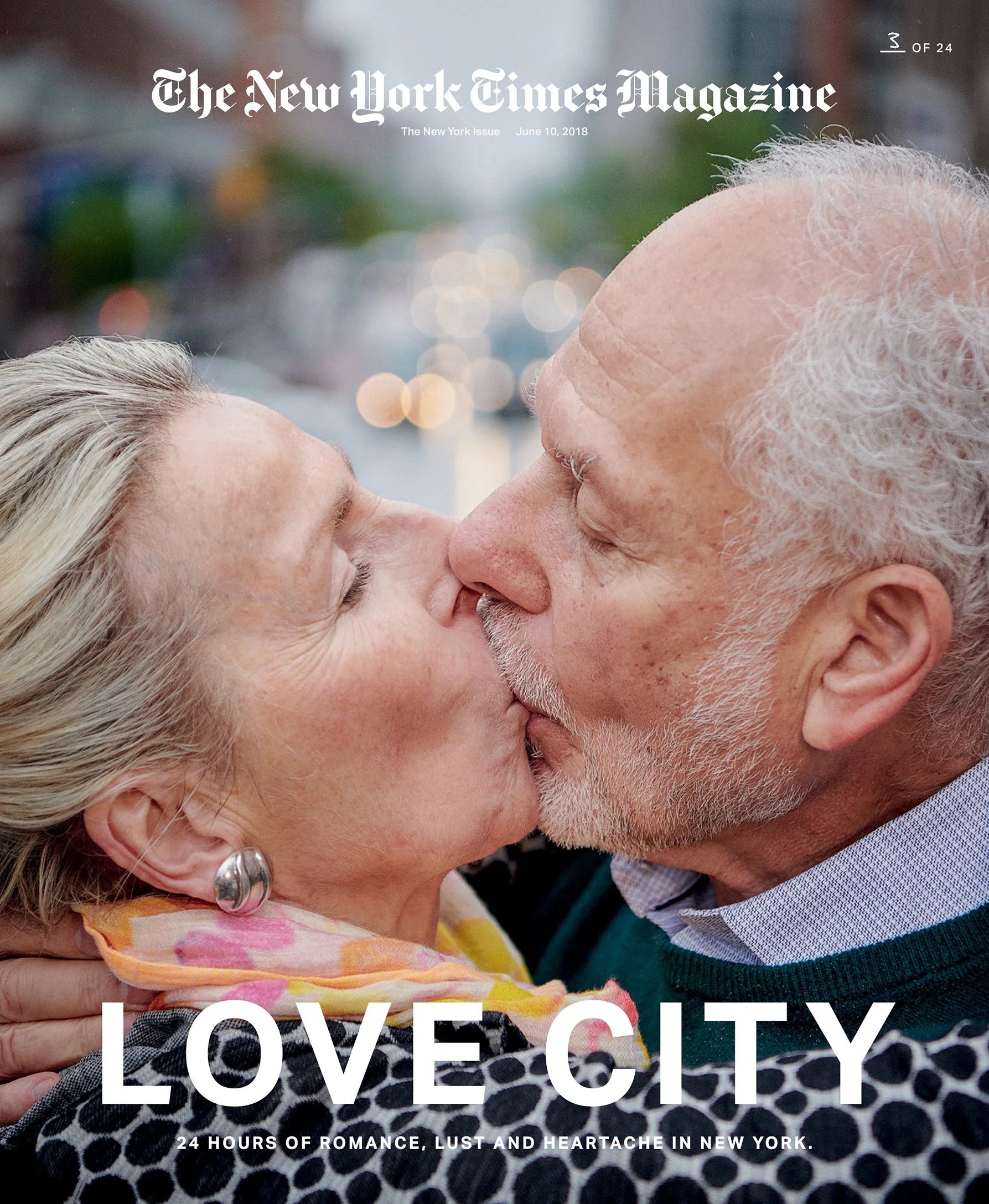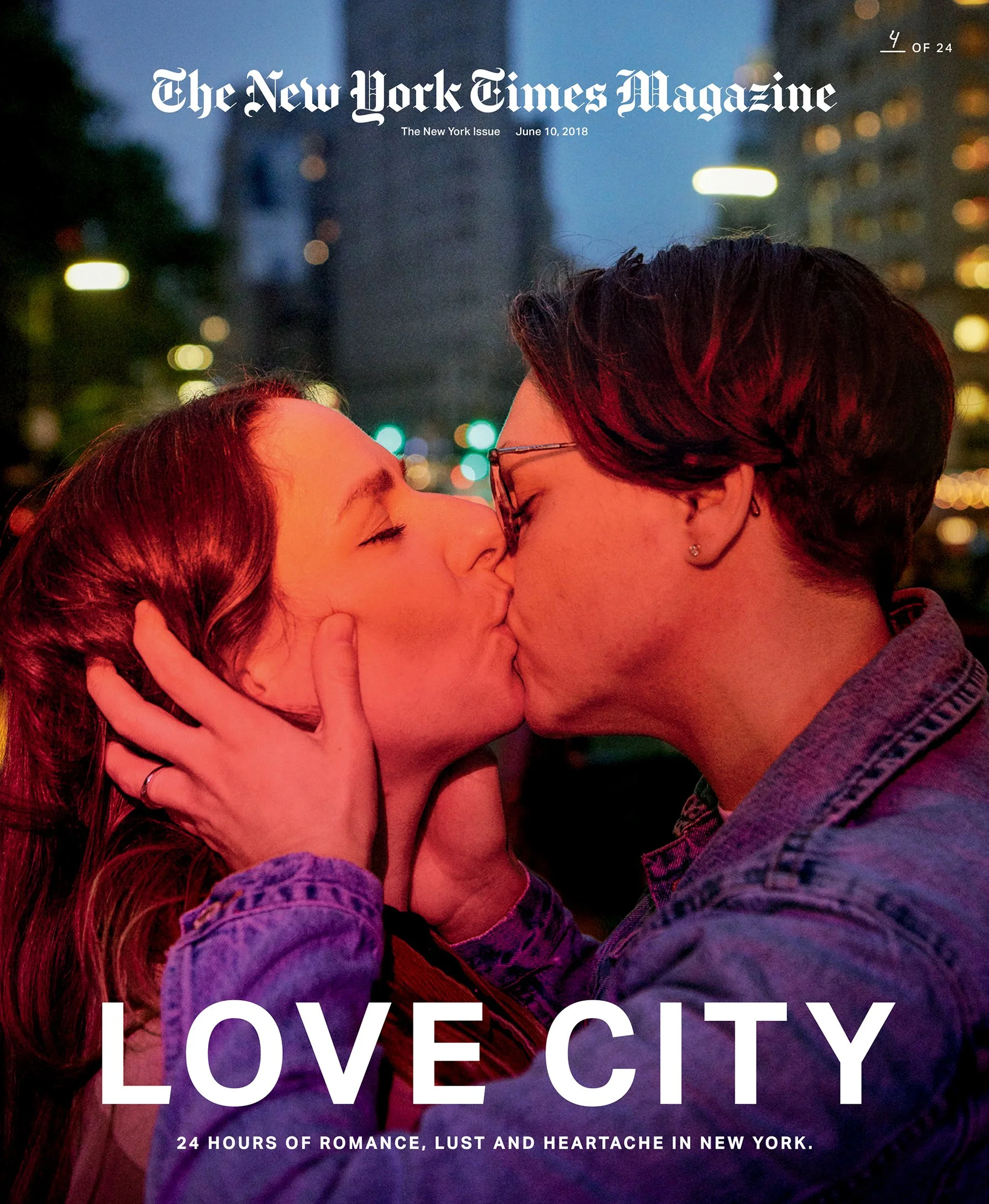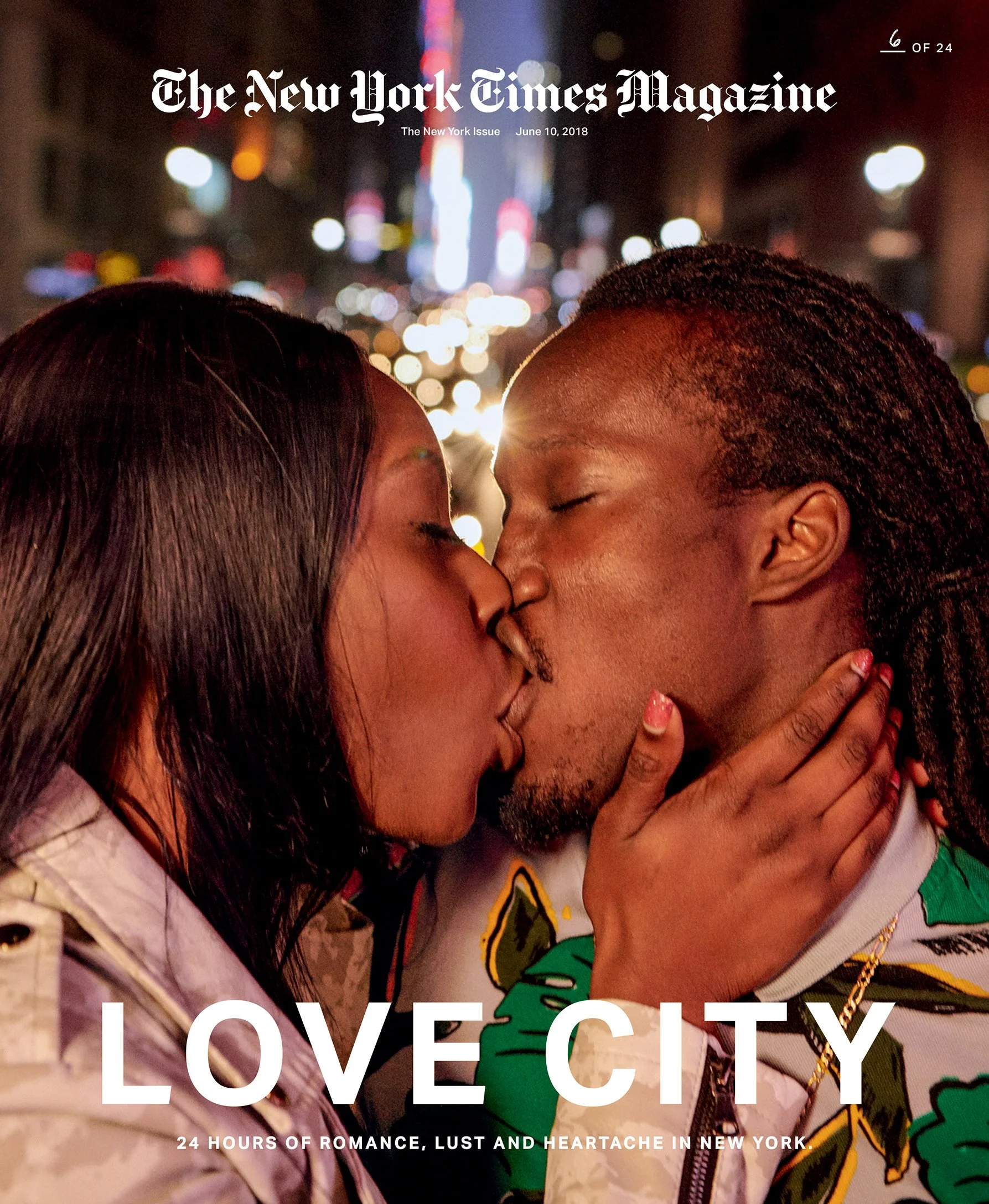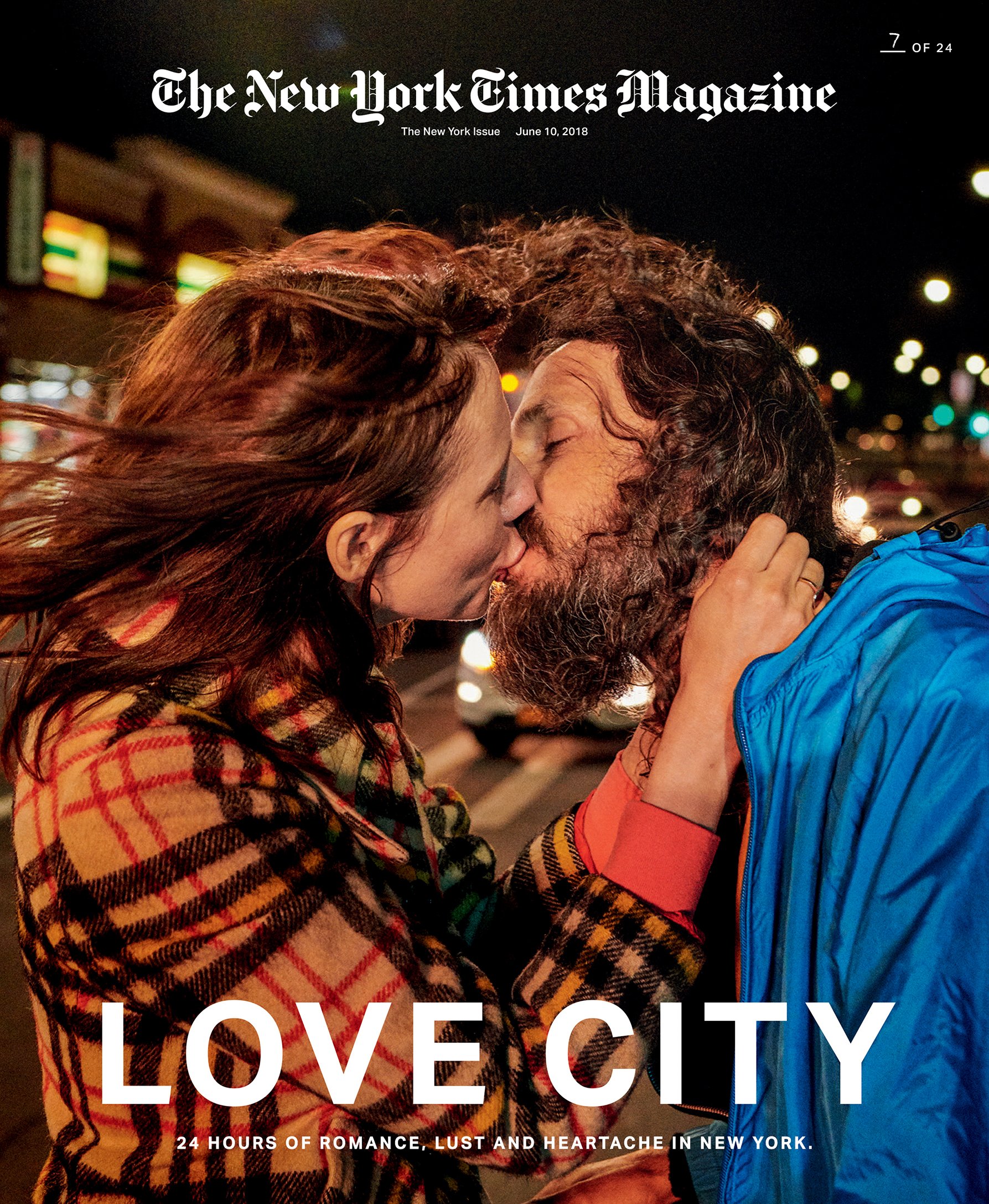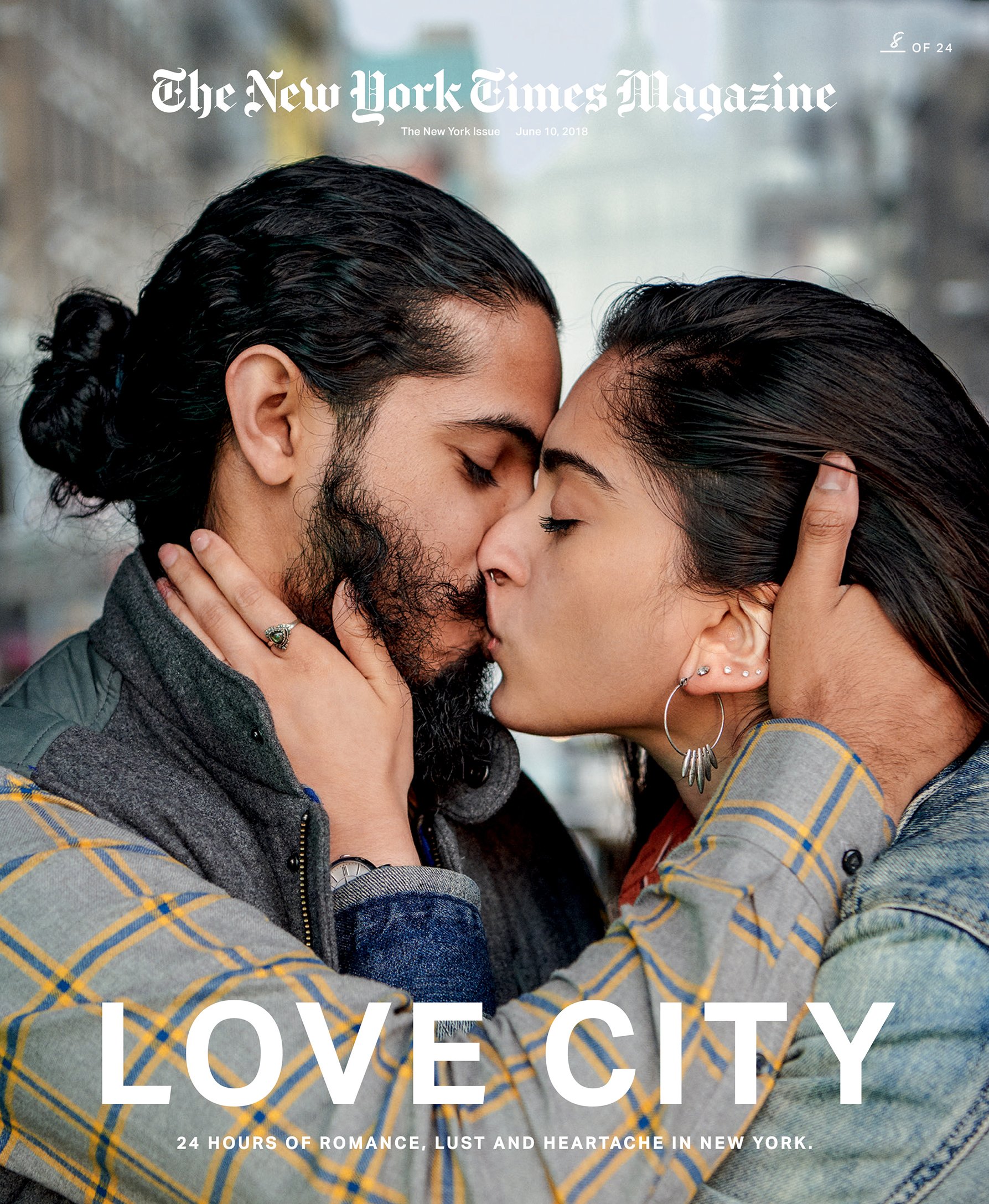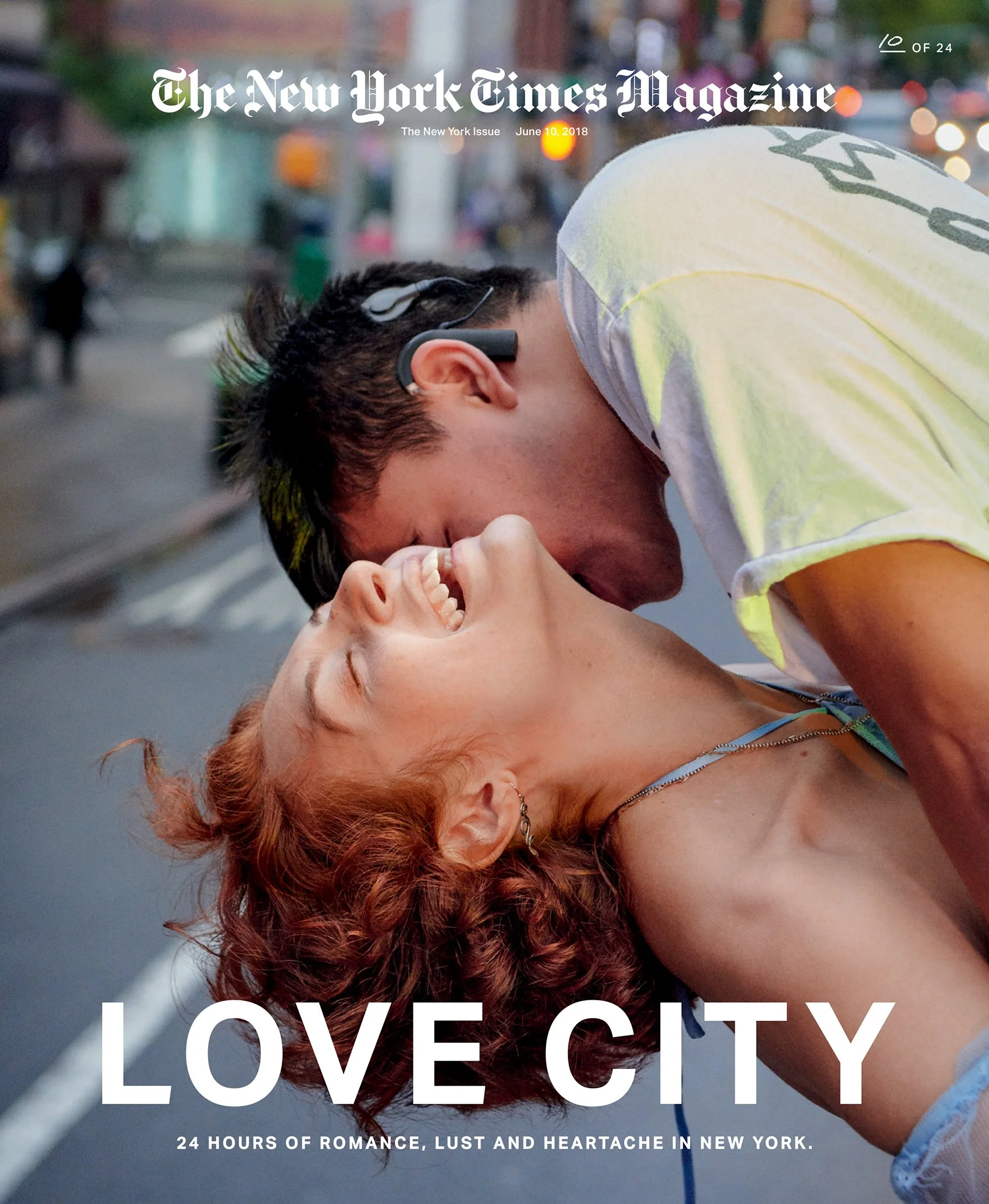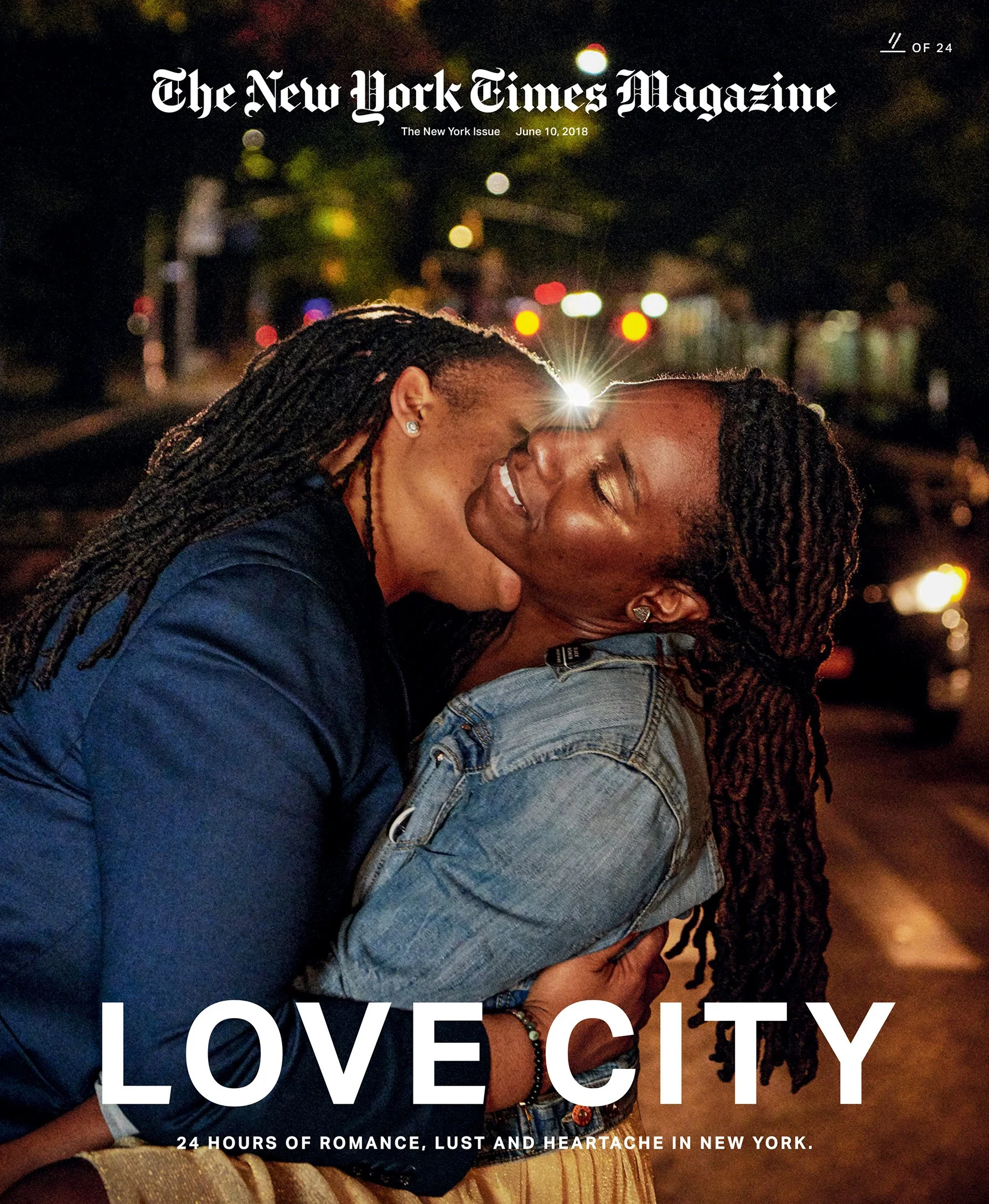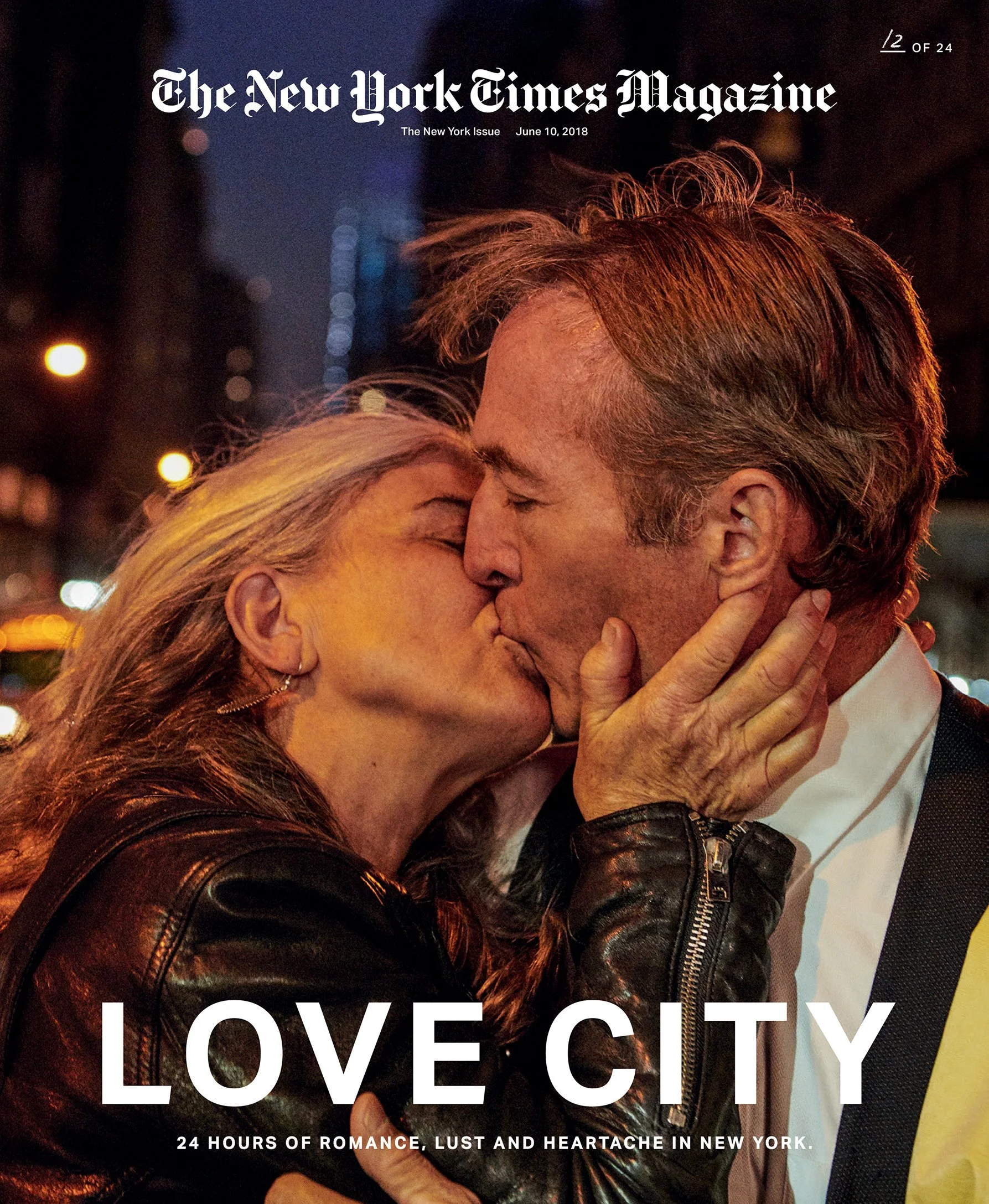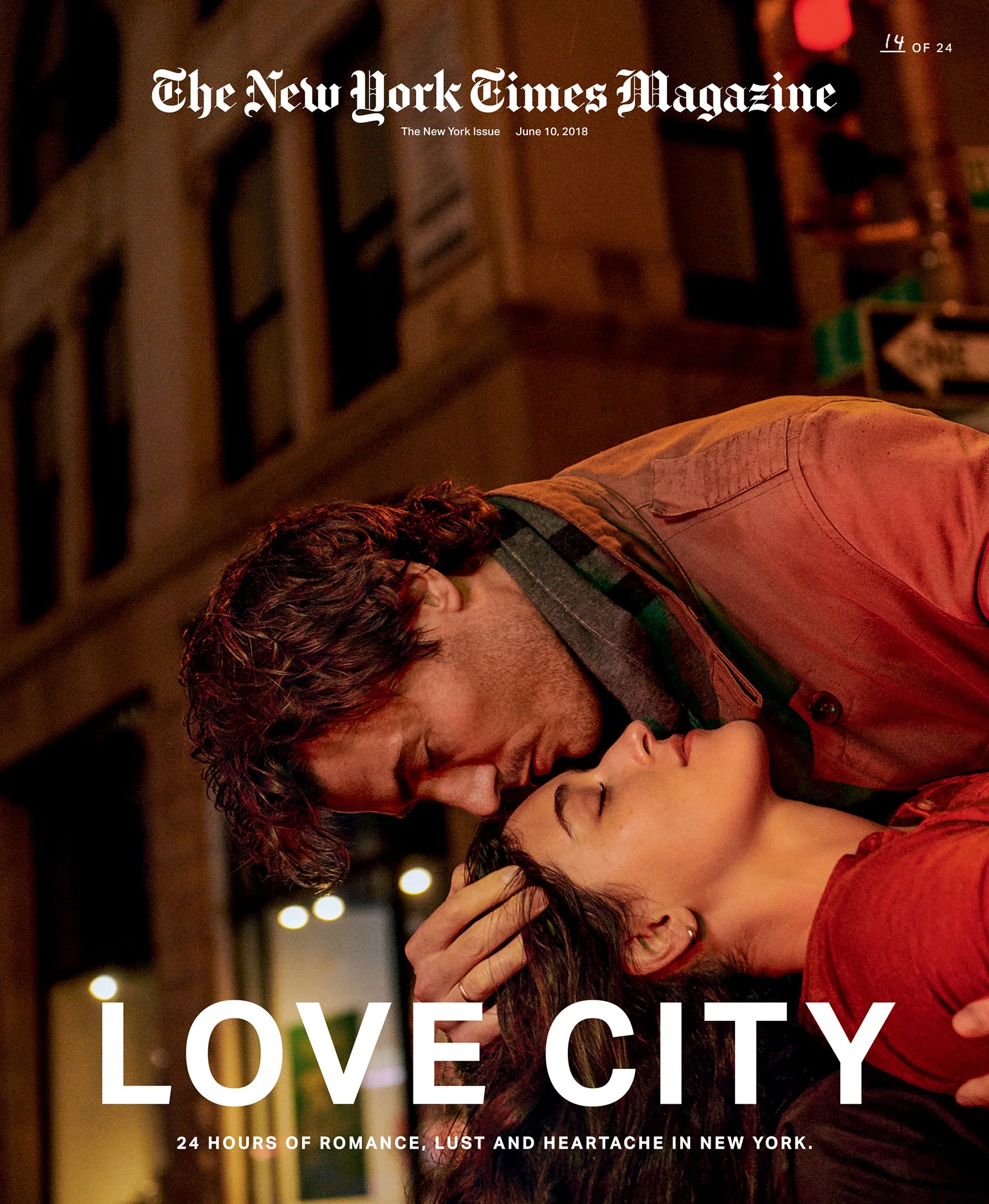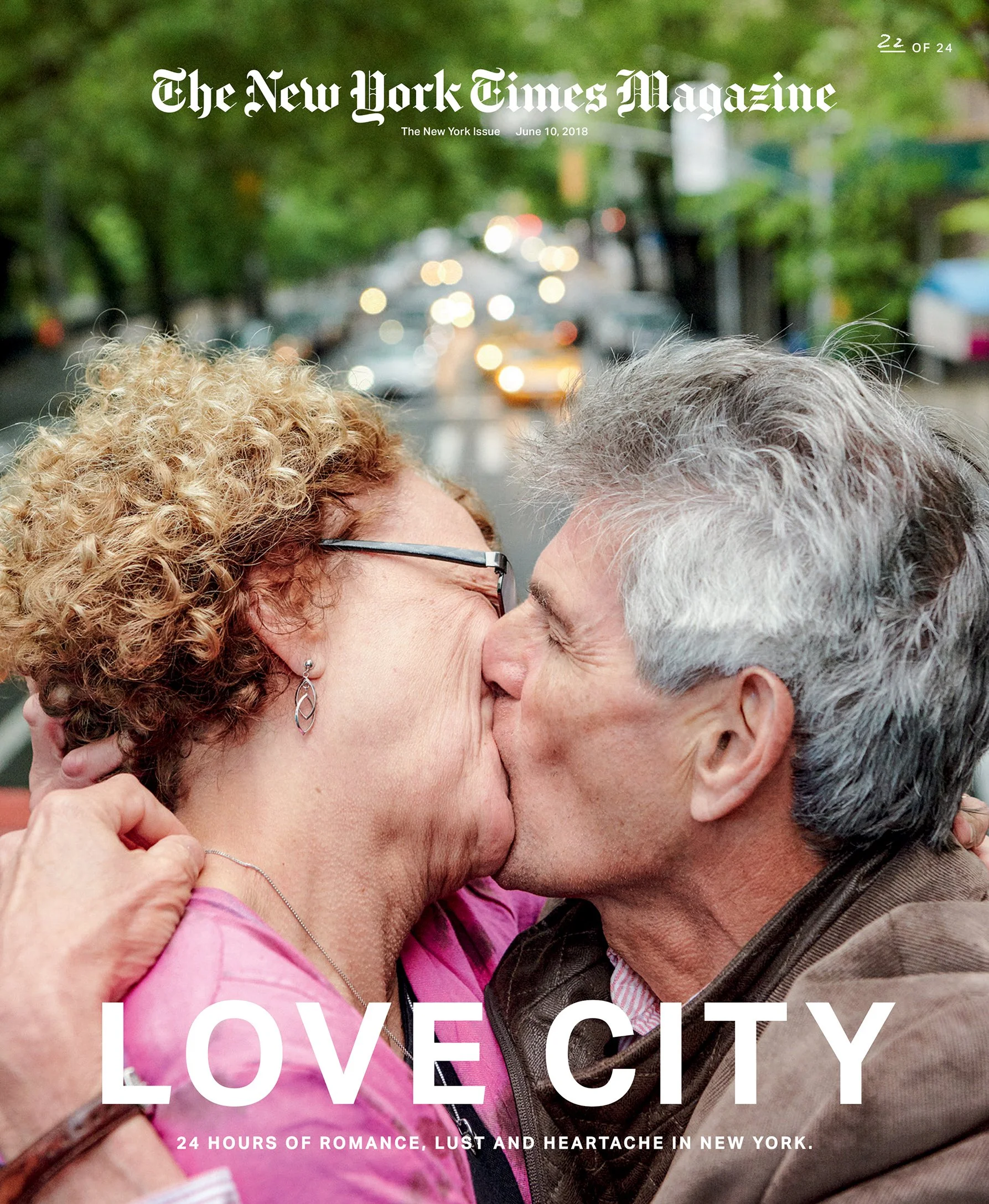Everything Old Is New Again
A conversation with Bustle Digital Group chief content officer Emma Rosenbloom
A conversation with Bustle chief content officer Emma Rosenblum
—
THIS EPISODE IS MADE POSSIBLE BY OUR FRIENDS AT LANE PRESS
Emma Rosenblum is a best-selling author and is about to release a new novel. But that’s not why she’s here.
As the chief content officer at Bustle Digital Group, overseeing content and strategy for titles like Bustle, Elite Daily, and Nylon, she has witnessed some, if not all, of the massive shifts and changes in the media business. The ups and downs and highs and lows, as it were.
Emma’s media past includes stints at New York magazine, where she began her career, Glamour, Bloomberg Businessweek, Bloomberg Pursuits, where she served as editorial director, and Elle, where she was executive editor.
Meaning she’s a good person to talk to about the state of media today, a world where the change never stops. And she also has an insider’s opinion about the legacy big publishers and the advantages that BDG, as a digital-first operation, might have over them.
And did we mention she’s an author? Her first novel, Bad Summer People, was a national bestseller and her second novel, Very Bad Company, will be released in the coming weeks.
BDG published its first print edition of Nylon in April.
“We are as efficient as possible in an industry that is notorious for inefficiencies, and we’re lean and we’re scrappy. That has allowed us to survive and create great stuff in this era where it’s harder to break through as traffic continues to decline for every site.”
Arjun Basu: Tell us about your journey to this point. Your CV is long and it’s been through all sorts of things, and we won’t even get into your writing career just yet. So how did you get to where you are now,
Emma Rosenbloom: I have been in media my whole career. And now I am 96 years old. So that’s a long time. No, I’m not 96, middle age, young middle age. And I started right out of college. I got an internship at New York magazine. And this was in 2003, right at the time when Adam Moss took over New York and revitalized the magazine there.
And I was there for about eight years, which was just the greatest time to be at any magazine at any point in history. The crew there was just all geniuses. And all I did was learn and absorb and figure out how to become an editor and a writer and also how to marry stories with visuals because Jody Quon was the photo director there and still is. And is a genius also.
So that was a very good base to go into media. And it led me to go after that to Glamour. I went to Condé Nast for a couple of years. I wanted to try out women’s magazines. And that was a fun experience, moving to a monthly. It was a high time at Condé. And after that I went to Bloomberg to BusinessWeek magazine.
I wanted to go back to weeklies. I felt like I was craving harder features. I spent five years there, and then I decided to go back to women’s magazines, to Elle magazine at Hearst. And I was there for two years with the editor, who’s still the editor now, Nina Garcia. I was the executive editor.
And then I was recruited to Bustle Digital Group, five years ago at this point, to run at that time it was, I think, four sites we had. At a certain point it ballooned up to about 12, maybe three years ago, and now we’re back to a healthy, eight-and-a-half-slash-nine brands.
And I’m the chief content officer here, so I run our editorial team, our fashion team, our beauty teams, our operations for the editorial side. And I’m part of our C-suite. So I'm working with our executives across the board on company strategy and with our revenue side to figure out how to make money doing what we do. So that’s how I’ve landed right here.
Arjun Basu: So I’m going to ask you about your job, as it is now. How does that work in terms of editorial and content policy, are the different media brands silos, what’s shared is it a front-end/back-end kind of thing? What’s a typical day like for you—and I know there probably isn’t a typical day?
Emma Rosenbloom: There isn’t a typical day, which is why I like my job, but we have come to, I think, a very efficient division of workload amongst our teams. Each brand does have its own editorial team, in terms of the actual editors that are creating the content that go up on the site every day. And they work with freelancers and writers to figure all of that out. And each site obviously is different in terms of the amount of stuff that they’re putting up every single day.
Then our creative team and our fashion team and beauty are hubbed. So each of those teams has people that work across a number of sites. So that’s creating original artwork for stories on our sites, doing all the photo shoots for stories on our sites, and the fashion that goes with the photo shoots.
And so we are as efficient as possible in an industry that is just notorious for inefficiencies, and we’re lean and we’re scrappy. And I think that has allowed us to survive and create great stuff in this era where budgets are decreasing and it’s harder to break through on the internet as traffic just continues to decline digitally for every single site.
Arjun Basu: Yeah, so BDG is one of those groupings, those media companies that feels like it has been at the center of a lot of changes, like if you wanted a case study for media in the aughts and now in the teens and the twenties, BDG would be a great case study. All the highs and the lows of the changes that have been going on. So is it like being in the center of a maelstrom, or because you're in an executive position, do you shield your teams from, or as much as you can from that reality?
Emma Rosenbloom: You do as much as you can. It’s impossible just because our industry changes so fast now. When I started and before that there were probably 20 years of growth and stability in media. And since then, in the past 10 years, it’s just been all over the place.
I like working at a company like BDG. I like change. I like when stuff is up and down. I like the excitement of it. That’s why I got into media. I didn’t want to be a lawyer. I didn’t want to just do the same thing every single day. So to me, the challenges that we face and how we do pivot and how do we continue to survive is part of the excitement of my job.
The company is now 10 years old. I joined five years into the company’s life. The initial strategy of the company was scale—women’s, lifestyle, digital, journalism—but scale, grow traffic. And they were very successful at that. They figured out how to do it. They figured out search.
It was a different time on the internet at that point. But our CEO, Brian Goldberg, what I have always liked working with Brian is for a number of reasons, but also because he does have vision of where things are going. And even if they’re not always a hundred percent, he sticks to his guns.
And when I came on, he recruited me because I had a strong features background in magazines. I worked at Bloomberg for five years. I was not coming from a background where traffic was important or key. It was about telling the story. It was about, What does everything look like? Is it premium? Does it read like it’s professional? And they didn’t have that at the company. And he said, “I’m hiring you to do that.”
So it’s not going to be tomorrow. We’re going to see this slow change. He believed that the internet was going to shift so that it was going to be quality over quantity, that Google is never to be trusted, that we can’t base our business on an algorithm that we have no control over. So we have to build brands that have longevity, that we can build events around, that we could possibly do print.
And I was like, “All right. It sounds as good as anything. I don’t know, Elle’s just going to continue to decline in revenue, so I might as well try this other thing.” And that mission to me sounded like, not like I was stepping into a job where the goal was going to be to just get as many clicks as possible.
The goal was going to be to create environments that looked good and that people wanted to visit, not just on a dotcom because Brian didn’t really just believe that brands could be dotcoms. And I agree with him, and I have always agreed with him. And we’ve seen that play out and it’s actually exactly what happened.
And I think early on, as a digital media company, leaning into shifting our brands more towards the legacy model of actual strong brands that people like, and return to, and see A-list celebrities in photo shoots that can’t be replicated elsewhere. There’s only a few companies now in the ecosphere that, first of all, survived.
There’s Hearst, there’s Dotdash Meredith, there’s Condé. Those are the ones that are still alive and have brands that can attract A-list celebrities. And we’re like in there now, which is crazy to think about where Bustle started from, which was basically just let’s flood the internet with kind of junk content that we can get programmatic ad revenue.
So we’ve spent these past five years transforming the editorial piece into a semblance of what the legacy media companies have, which is quality editorial, amazing photo shoots, beautiful looking sites. And then this print piece, which we’re going to talk about, this Nylon print piece is the last piece of the puzzle that we’re adding on.
We’ve reverse engineered it. The other companies have been doing the opposite, right? They’re decreasing their print and trying to figure out how to make their digital good. We’ve made our digital good. And now we feel like we can make print. In smaller ways, but it’s not gonna put us out of business. It’s not like something that we’re going to have to then scale back.
So that’s the strategy of where we are. And again, it has been a case study for digital media over the past 10 years. It’s been really fascinating.
Selected pages from the new issue of Nylon.
“It’s basically elder millennials at this point who are super into Nylon, but it’s very much a product for Gen Z. It’s cool. They love this idea of being able to touch something. It’s so novel to them.”
Arjun Basu: Yeah, media in general. So, we will get to Nylon, of course, but what is the tension between quantity and quality at a company like yours?
Emma Rosenbloom: You always have to have a base layer, right? In digital media, you can’t be a magazine. We were talking about before we started recording the kind of slow pace of what making a magazine used to be where everything was labored over for hours and days, and we don’t have the luxury of doing that as a digital media brand. You have to have stories up every single day or Google will not recognize you as a site to direct traffic to. So you have to have a certain amount of content. So that is what we think of as the base layer.
We used to have a lot more stories go up every single day that would be created specifically for search traffic. So SEO stories. We’ve decreased the amount of those because obviously we weren’t getting the same return on them, but also this idea that it is literally impossible to put up 80 stories a day on a brand and have them be good. It’s impossible.
There’s not enough editors in the world who’d be able to do that. And you’d inevitably get tons of stories where you’re like, Why are there so many typos in this? Who wrote this? Like a high school student? But that’s what digital media was because there weren’t enough people to do it. The quality just tanked.
So we are very much focused on having the base layer be fine and be good and be professionally edited. And then on top of that, we build our “Moment Journalism,” where we have amazing packages by our editors, depending on the site, what they are. We have beauty awards. We have zeitgeisty essay packages on Bustle about what your life online is like as a millennial. We hire freelance writers to do reported stories—we’re not hard hitting news—but that are making news and being shared. Our goal is always to have our stories be shared.
So those are the, sort of, cherries on top that we’re also doing—not every single day. And Brian likes to tell this anecdote that in the old days, when you thought of what’s the best media company in the world, you’d say, “It’s Disney,” right? Think about how successful Disney is. And now, when people ask him, “What’s the best media company in the world?” He says, “The NFL.” Because he says the NFL has figured out that you don’t have to own every single night of the week. They are just going to own a certain amount of Sundays a year, and make those the biggest events, the best events that they can be, and make the most money that they can. And that’s it. And then you’re out.
So this idea of Moment Journalism on top of this, sort of, base layer is what we go for when we’re thinking of, Okay, Bustle is going to have 12 big stories a year. How do we get those out? How do we make them the best that we can make them? What kind of money are we spending on those?
And then leave the rest to the kind of base layer that’s going up every day. That’s the model that we go for now. And we’ve figured out that this is the way forward. But it’s taken us a while to get there. I don’t think everyone else is there. So don’t steal my secrets if you’re listening to this. That’s what we do.
Arjun Basu: Magazine people listen to this more than anyone else, so the secrets are stolen. And so in an editorial calendar, a lot of your brands also have events, obviously, and flywheels for more content and not just print, but video, and audio. Is that part of the calendar? Are those things like, We’re having this party in two months. This is what’s gonna come out of it. Put that in the calendar. Is that part of the matrix?
Emma Rosenbloom: It is. So, for example, around our big Nylon Coachella event—I do think that edit and events are very tied and it’s the content that comes out of the events that then we use to promote our events. So it’s this circle of help that we give them. I will also say that we use that to show our clients the return on their investment. We have sponsors for these events. And the more the content and the pictures from influencers on Instagram get out there the happier our clients are. We can say to them, “You invested this amount of money for an activation at Nylon Coachella event and it got 300 million impressions on Instagram because of the amount of people that were putting it up.”
And I think for them to be able to see that, it’s very gratifying. And then they know that it was money well spent. And also that feeds our sites, and we’re happy to promote all of that across all of our social channels.
So for sure it becomes a kind of content-generation event as well. So it’s hand-in-hand whenever we do them and we do them, we’re increasing the amount of events. But events are a tricky business, too. You can’t do too many of them. They’re low margin. They’re hard to produce, expensive. They take a lot of people. But you can make big money on them. That’s the path that we’re going forward with.
Nylon House at Coachella 2022
Arjun Basu: Okay. So Nylon’s back in print, after seven years. And the interesting thing to me in this issue is that it’s volume one, number one. I was speaking to Kat Craddock from Saveur a few weeks ago, and they just continued their number system. And I and asked her about that, and she said, “We want to emphasize continuity.” And so: 1) How did the decision come about, or why did it come about, to return to print? And 2) to start it over as a brand new thing?
Emma Rosenbloom: We had always planned on bringing Nylon back to print in some way. We’d done a few test runs of special broadsheets that were like newspaper quality where we printed our cover stories across 20 pages, plus a few other stories. And that was for Coachella last year. We had a cover with Anitta, the musician, and everyone just went crazy for it.
And we had always thought, Okay, when we have the time, the staff, and some money, we’re going to try this. We have people on our staff who’ve worked in print. I, obviously, have worked in print. I was like, “Okay, we can do it. It’s going to be a lift. But we just really wanted to.” Brian has always really wanted to. He thinks print is an important thing for the brands to begin to, even moreso, live outside of digital. We don’t like the idea that we’re fully dependent on platforms, Google, Facebook, Instagram. It’s like the idea that we could exist as a business outside of those in any way, we want to jump out. And print is one of those.
It doesn’t matter if Google changed their algorithm. We still have an issue of Nylon that Mark Jacobs can advertise in. But that said, obviously, knowing the cost of print, and the time it takes, and the care, we had to wait until we had enough people on our staff who could do it. And then also until we had some money freed up where we could do it.
And as an investment we needed to create this one, the one that we just created as a proof of concept before we knew that we’d be able to get huge investment from advertisers. And we did get a number of ad pages in this issue, which I was surprised and delighted by it. So the decision behind it was like, “Okay we have a little money, let’s do it.”
And also that it’s the 25th anniversary of the first Nylon. It was also the 25th anniversary of Coachella. And so we felt like that was thematically a nice tie-in so we could have it at our event, which we did.
And then to start it over at issue one, volume one is just because the magazine, physically, is so different it didn’t quite make sense to just continue. And also there was a pretty long break—seven years. It’s under new leadership. That said, if you flip through it, there’s a lot of nods to the old Nylon.
“Hearst, Dotdash Meredith, Condé. Those are the ones that are still alive and have brands that can attract A-list celebrities. And we’re in there now.”
Arjun Basu: I was going to say that it feels like Nylon, like that I had maybe been away from a magazine for seven years and then I picked it up again. I looked at it. I was like, “Oh, yeah, that’s Nylon.” It’s still very downtown. It still feels like Nylon just seven years later with the regular evolution that a media might take.
Emma Rosenbloom: That’s a very nice compliment. And that’s the nicest thing someone could say about it because that’s exactly what we were going for. We obviously did all of our research in terms of going through all the old Nylons. We picked and we picked some franchises that they used to do. We used some of the language that they used in terms of naming sections. We also used old covers in certain areas in the magazine and just felt like there were enough winks and nods to the old product.
It’s a new audience though, too. Like we definitely wanted to have a nostalgia of—it’s basically elder millennials at this point who are super into Nylon, but it’s very much a product for Gen Z. It’s cool. They love this idea of being able to touch something. It’s so novel to them in that they’ve never had that before.
But it’s definitely geared towards that. Not to age myself, but we have this Coachella portfolio in this magazine, which turned out amazing. I had not heard of one these people. I was like, “Who are all these people?” Obviously I know Gwen Stefani. At least I know our cover star, but that’s what we’re going for. We want people who are cutting edge and cool. And that’s what Nylon always was. So that’s what we’ve tried to do.
The oldies like me will be like, “Who?” But I think we did successfully figure out the kind of talent to feature, and also the ways of shooting them that felt modern. Because the photography in this magazine to me also feels very modern. And if you look at the old magazines, it feels very of its time, in a cool way. But if you put those pictures in a magazine now, it would look like a black and white photo from the 1950s appearing, and that was the strategy—just nodding to the past, but looking towards the future.
Arjun Basu: I was looking through your Instagram and you have that photo of you and the editors looking at the pages on the wall. I was just overcome with such nostalgia at that point. I still love that moment where the art director would come and just start putting pages up. It just looked like, that’s where it happens. That’s the magic where you see if you have a book or not.
Emma Rosenbloom: Totally. And you know what, when we first put up the wall, I was like, “This is a failure. This is like the least coherent magazine I’ve ever seen in my life.” So we made a lot of changes. Our creative director, Karen Hibbert, worked at Condé for a long time, and I thought she would be upset when I was like, “Oh shit, we have to redo all this stuff.” But she was like, “No, you’re right. We’ve got to go back to the drawing board.” Because the sections weren’t working together. It just wasn’t right yet.
But that’s the fun of making a magazine. It’s like an art project married with words. And that’s what we all learned when we were young. And it’s what we love doing.And I had so much fun doing that. And I also had nostalgia standing at the wall and thinking, “Oh man, it was so good back in the old days. We just got to stand here with our arms crossed and….”
Arjun Basu: Exactly! Random pointing … and we called it a “book” for a reason. It had to cohere.
Emma Rosenbloom: Totally.
Arjun Basu: So you’re doing two a year. Is that the plan?
Emma Rosenbloom:This year we’re doing two. We shall see about next year. Brian’s dream is to go up to four. I don’t think we would go beyond that. It doesn’t make financial sense. So we’ll see about advertiser interests. We already have a lot for the second issue. And we knew that was going to happen because as soon as you have a physical product to give to people they want in. But it’s an expensive endeavor. And my hope is always that we don’t overcommit ourselves.
I’m also looking at the budgets and looking at the revenue that we’re taking in. And you need to be sober and not be like, “Magazines! Weee!” Because I also know how much it costs to do a cover shoot, and I know how much it costs to print it, and to hire freelancers—because we don’t actually have a real staff. All those things cost money and I don’t want us to get to a point where we have to scale back.
I would rather just be, like, really humming and having an amazing two times a year product than get ourselves into trouble with four. Though Brian’s never been one to hold back. So we’ll see what happens next year.
Arjun Basu: Speaking of Brian, I read an interview where he’s talking about the pivot to luxury, as a way to accommodate, or maybe even circumvent, media changes. And certainly luxury and beauty is a sector that knows how to spend properly and has never eschewed print. I think they understand—luxury and fashion and beauty—understand the sensual nature of a magazine. And it is a luxurious thing. The cover of Nylon is proof of that. The thought that went into the paper—we talked before we started recording about the low quality of so much of the paper that you get in a magazine store. But then you have those magazines that are coming out two, four times a year. They’re creating objects now, luxury objects. Print is luxurious, and that doesn’t mean it’s inaccessible.
Emma Rosenbloom: I completely agree. And obviously that correlates to the actual advertisers in the magazines we have. Our fashion and beauty business is really strongest for print. And that’s where we think we’ll get all of the traction.
And this idea that print is more of a collectible and it’s something that people will keep around rather than just chuck for the next month, which is what it used to be. I also like to think about and talk about—particularly coming from women’s magazines—how we used to sit around in pitch meetings and think about, Okay, how do we best tell women how to live their lives? What advice can we give? What service packages can we do?
Because that’s where people got advice. It was magazines. And that is obviously not where people get advice from now. They get advice from TikTok. And it’s often wrong, but they get it there anyway. And so completely transitioning away from service in a magazine is freeing, honestly, for someone from my background, where you can be like, “I don’t have to tell anyone anything. I just have to do really beautiful, huge pictures with high-quality profiles. Or stories that are deep dives.” And that’s kind of it.
You don’t need that kind of “bitty” front-of-book. It’s funny, actually, when we started to design the magazine—this was part of the design problem—where when I was conceiving of the front of book, I was like, Okay, service, front-of-book, bitty. It’s like a phantom limb that comes back to you and you’re like, “I know how to do a front-of-book. I edited one for eight years.”
And then we did it in this bigger format. We had a slightly different front of book. And it looked horrible because this is a big, pretty magazine. And when you try to do like bitty infographics, like, it looks not right. And so we were, like, “Nope. Goodbye. Scratch that.”
And so that was an interesting exercise in the magazines of 2024 versus the magazines of 15 years ago, 20 years ago, and how different they are. So it was a learning experience for me as well, even as someone who’d been doing it for so long, which was great.
Arjun Basu: So that’s interesting, because I was going to ask about, beyond the obvious reasons, how social—and especially the influencer economy—has changed everything. But change at a magazine must have been one of the realizations when you were creating the print of Nylon, for example. There’s a whole group of people who are doing exactly what a front-of-book, or even a back-of-book would do on a regular basis. Why try?
Emma Rosenbloom: And you know what, don’t try because the reader’s not gonna connect with that. They don’t need that. We used to do these, how do you do day-to-night dressing? That’s not something that you need to do in a magazine anymore. We do have trend pages, but they’re very visual. They’re not explaining anything. They’re not telling you how to get dressed. It’s just runway pictures because it’s a nice way to break up the big pictures. But, yes, it was a very interesting new way of thinking about what print means. And like anything, it’s changed, but in a way that’s cool, I think. And in a way that can make the magazine look even more beautiful and also more attractive to advertisers.
“It is literally impossible to put up 80 stories a day [per] brand and have them be good. It’s impossible. There’s not enough editors in the world who’d be able to do that.”
Arjun Basu: And your target audience is not the target audience it was even seven years ago.
Emma Rosenbloom: No. Not at all.
Arjun Basu: They’ve just grown up in a completely different reality.
Emma Rosenbloom: They have not even ever bought a magazine. They don’t have any magazine subscriptions. You get a copy of Vanity Fair and you’re like, “Why?” Okay. These are the people that are again thinking about it as a product that they can hold up on Instagram and take a picture with and be like, “Look what I got!”
In a way it reminds me of how people think about books now and how they can be a way to disconnect, first of all, from their digital lives. And it’s also a status symbolizer where people are posting their books on Instagram because they’re like, “I’m not just about Instagram. I also read books.” And I think magazines can be in that same world. And that’s how we’re seeing people interacting with them.
I don’t know if people are reading it. They’re definitely posting it. So that’s good, right? I think they’re flipping through.
Arjun Basu: Absolutely. That’s the currency now. That gets to my next question, which is about the future of media. It’s a big question, but someone like you or someone within BDG seems like a good person to think about that and answer it because you probably have answered it—or at least thought about it. So what do you think is down the road?
Emma Rosenbloom: It’s definitely a question we think about every day when we are having our executive meetings and looking at our revenue and thinking about ways to continue as a company and be profitable. I see the trend away from scale. I don’t think we’re ever going back there. I think that’s done.
I see a world where we will continue to shed some brands across the bigger legacy companies until they’re smaller, those companies. I don’t think the world that can continue to support all the brands that exist.I still see that like that there’s going to be attrition there. And I think the biggies will survive.
And I think the biggies will survive in a way that we hope our biggies survive, which is this mix of digital, and print, and events. And I think it’s going to be a smaller industry going forward, but it can still be super-profitable for the companies that can make it profitable.
People will always need—I hate the word content—but they need it. And also we still seem to provide a space for regular people to connect with things that they can’t get into, people they can’t meet, celebrities that they’re never going to see in real life. There is still no other conduit. We thought, and you know what, I probably was guilty of this too, that Instagram was going to replace media for celebrities. They have their own Instagrams. Why do they need a magazine? Guess what? They all still want to be in magazines.
And this is 10 years later. This is not just, like, yesterday. Beyonce has 300 million followers on Instagram. She was just on the cover of W magazine. We own W. They still need us. So that’s not going away. And that is super valuable and will continue to be. There seems to just be this symbiotic relationship between culture, and exclusivity, and media. And I think that’s how we’re going to continue to make money.
Our events, it’s the same thing. Only a certain number of people can go to these events, even though they’re broadcast all over Instagram. You can’t go to our Coachella event unless you’re invited to our Coachella event. You can’t really put a price on that. And I think that’s the way forward.
And that’s why a brand like Vogue will always exist. That’s why GQ will probably continue to exist. I don’t know about Hearst, but there are a couple of brands there that will continue to exist. And the rest might just go by the wayside. Now, granted, they might find their like sort of niche way forward dependent on the company, but that’s how I see it going. And that’s why I think we should double down on our brands that we can monetize in that way.
Arjun Basu: We talked about books. I really thought that everyone would have an e-reader and would be reading eBooks. We wouldn’t be carrying books anymore. And that’s totally not the case. E-readers have plateaued. Audiobooks are coming up, but people still want books. They carry them. And again, they’re objects, they’re things. But they’re just things that people have that have meaning. And I think print is still special. I think we’re going to see brands that abandoned the platform come back like you’ve done with Nylon. So what about the other Nylon brands then?
Emma Rosenbloom: Oh, you mean the Nylon France and Nylon Japan? Our international brands? Nylon Guys? We only own the US Nylon. It’s licensed out internationally. We have a relationship with them, obviously. And we share content occasionally. I think it would be great if we actually had a collaboration, particularly with Nylon France. They have real brand equity, and France is obviously where all the luxury advertisers are, and they know and love Nylon there.
We, possibly, will bring back Nylon Guys. We own the IP, we own the Instagram channel. With all of those there’s potential there. We already have it as a franchise on digital, we’re going to shoot a specific Nylon Guys feature for the next issue because I just love it. I think that it’d be so fun to have its own little space. So that’s what’s happening there.
Nylon Japan is quite a success. We did a little shoot with them, we shot a Japanese band and we worked with them on that for this issue. It’ll be interesting to see how we can collaborate more with them, particularly now as we’re in print. And I would like to continue doing so. It wasn’t top priority before this, but now we have the actual impetus to be like, “Alright, guys let’s do this together.” So we’ll see.
“Beyoncé has 300 million followers on Instagram! She was just on the cover of W magazine. Celebrities still need us.”
Arjun Basu: So beyond chief content officer, which sounds like a very big job. You have two other jobs: You’re a mother and you’re also a novelist. And you have a book coming out. And when I was in magazines—I’m also a writer—I got this question all the time: When do you write? And I hated that question. So I’m going to ask you.
Emma Rosenbloom: Yes, my second book is coming out next month. I have a third book that I’m currently writing. And the answer is for the third book, I’m not. I don’t have that much time. I’m behind because this job has been very busy lately, which is great, but also it’s not allowing me time to do my side gig as a novelist.
When I started writing my first book, it was the height of work-from-home, pandemic-y time. And I found that being just on Zooms all day long was really draining, and I hated it. And I felt like I wasn’t doing anything creative and I’d just be exhausted after the day and felt just like I’d accomplished nothing.
I started in between Zoom meetings with those 15 minute-odd breaks that I would have, just seeing if I could write fiction. I didn’t think I had the bandwidth to write a nonfiction book because that’s actual work, and fiction is just making stuff up. And after a chapter, I was like, “Huh, I’ll just keep going.”
And I just kept going. And I’m a pretty fast writer. I was trained at New York magazine, you just had to bang stuff out. And I think sometimes people who are writing fiction get too wrapped up in going back and trying to change stuff before they plow forward. And I had very much been taught to just get the draft done and then you can send it to an editor and then you can make it better.
And that was exactly how I always had done stuff. So it wasn’t hard for me. I was, like, “Alright, if I have to get to 83,000 words, I’ll get to 83,000 words.” It was just like over a course of a few months. And then, not really thinking that anything would come of it, but being like maybe I can make 50 bucks on the side or something who knows?
And then it sold. And it did well. And now I have this other book coming out. So it’s been a delightful surprise in my career and a twist that I didn’t necessarily think would happen. But it’s super fun and it uses a very different side of my brain, which I like.
Arjun Basu: That’s what I was going to ask you about, because when I was editing. I found I was using the same side of my brain, but when I was more in the executive planning, strategy roles, I found that I could write more because I wasn’t using the same part. I wasn’t mentally exhausted in the same way as I was when I was editing.
Emma Rosenbloom: It’s totally true, yeah. My job is managerial. I’m just making decisions and telling people what to do, basically. I remember I had this funny conversation with Joanna Coles, who was the chief content officer at Hearst, where she said, “You think that your job’s going to be harder as you go up.” She was like, “It’s actually much easier. You just tell them what to do.”
Arjun Basu: That’s the secret.
Emma Rosenbloom: It’s not real work. To me as a writer and as an editor, the real work is always sitting down with a blank page and you’re like, “Oh God, help me. Here we go.” But my job is not like that. It’s just people asking me questions and me saying, “Yay. Nay.” I don’t know. It’s a little bit more complicated than that, but in a nutshell what it is.
So, yes, this writing is a completely different thing. And it’s hard in certain ways, like, I don’t know what to do with a plot. That’s not my main skill. But I can write characters because I had always written profiles. And I can write dialogue. And I know what a kicker is. Once you start writing fiction, it’s all just like the end of a chapter, it’s like a kicker. And there’s beginning and middle and end.
And you know that from your training as a magazine person, but it’s so different. And so I’m able to do both for now. We’ll see what happens with my third book. I’m at a little bit of an impasse. I hope my editor doesn’t listen to this.
Arjun Basu: We’ll be sure to send them the link. So we always end these things with three magazines or media that you’re really enjoying right now.
Emma Rosenbloom: Okay. I’m always going to say The New Yorker, which is just such a boring answer, but it is the one place where at least when I dive into any article, it is always better than I think it’s going to be. I think it’s going to be boring. And then I end up reading it and learning so much and then boring my husband to death on a car ride where I’m like “I read this article in The New Yorker, let me tell you all about it.” And two hours later, he’s like, “Can you stop telling me facts from this article from The New Yorker?”
It is so well-done, and well-edited, and well-written, and will continue to be, hopefully forever, because at least we have to have one place in our industry where it’s just the shining star of quality writing, and editing, and storytelling. And also so much unexpected humor in that magazine. It’s not boring. So that’s number one.
I always, on my way back from dropping my kids off, I listen to Conan O’Brien Needs a Friend, because the world is a very dark place and I am over The Daily and I can’t listen to it anymore. And that used to be my routine. And then I was like, “I can’t.” So I’ve switched over to Conan and he makes me laugh. And I look like a lunatic, probably, on the Upper East Side.
And then let’s see an unexpected one for number three that I’m always looking at. This is also so boring. This is another thing that is not actual media, but The New York Times Cooking app is so effing genius. And I am so jealous of it as a digital person. Like we don’t have products in that way necessarily. We don’t have standalone apps or anything. But they cracked a code, it’s like a drug-addiction for me, The New York Times Cooking app. And it’s not just the recipes, it’s the storytelling with the recipes. Everything is thought of in such a smart way. So good job, New York Times, on the Cooking app because I open it more than I open Instagram.
Emma Rosenblum: Three Things
For more information, visit BDG online.
More from Magazeum
Back to the Interviews
Design, Build, Modify
A conversation with designer and editor Scott Dadich (Texas Monthly, Wired, more)
A conversation with designer and editor Scott Dadich (GDP, Wired, Texas Monthly)
—
THIS EPISODE IS MADE POSSIBLE BY OUR FRIENDS AT MOUNTAIN GAZETTE, COMMERCIAL TYPE, AND LANE PRESS
In his mid-20s, Scott Dadich told his editor at Texas Monthly, Evan Smith, that he wanted his job.
A move like that is a combination of arrogance, youth, and frankly, balls. But you should also know that Dadich is an engineer. And what do engineers do? Well, according to one definition in Merriam-Webster, they “skillfully or artfully arrange for an event or situation to occur.”
Of course, you probably know Dadich as an art director and editor, but beyond the titles, he’s the kind of guy who builds things, re-engineers them, re-configures them or, more importantly, thinks differently about them.
To date, his life’s work has been building magazines—marrying words and pictures and combining his love of math and engineering with an eye towards new, unforeseen outcomes in a long career that includes stints at the aforementioned Texas Monthly, and also Wired, Condé Nast Digital—yes, we’ll talk iPads—Wired (again) and then on to his own agency, Godfrey Dadich Partners, where he is trying to engineer a new approach to advertising.
As a rare creative who has helmed a magazine as an editor-in-chief and art director, Dadich has ideas about how to better create everything, from where digital and print sit in the ecosystem, to the makeup of an actual magazine, and even how teams should fit on the masthead. He has put these ideas to practice on the page, on the web, and also on the streams, in his award-winning Netflix series about the creative process Abstract: The Art of Design, which premiered in 2017.
Our conversation with Scott, a rather long one for us, starts right now.
“Leaders who are pioneering the future have an obligation to tell their own story and to do so truthfully.”
Scott Dadich: Are you guys having fun? It’s just such a joy to have this podcast. Let me just say thank you.
Patrick Mitchell: We are having fun, yeah. And thank you. So I’d like to start by asking you about Mookie Sullivan, your fashion brand. Your tie company.
Scott Dadich: Oh, yeah. Wow.
Patrick Mitchell: There’s still a Facebook page for Mookie. But, yeah, what was that all about?
Scott Dadich: That was fun. So Mookie was a product of working and living in New York for the first time. I had started to work at Condé Nast corporate at the moment. But I had a big affection for men’s fashion. Wyatt Mitchell really infected me. Like when Wyatt came to work with me at Wired, he brought the sort of “suiting culture” to Wired.
Wired was not a place where you would dress up in a suit and tie. But Wyatt really taught me the fine art of haberdashery. And also just being a reader of Esquire and GQ over the years, there was definitely a movement where ties became a thing. And I think it was a combination of that, plus graphic design, plus Wrong Theory that I felt like I had something to add into a sartorial context when it came to ties.
And that was confirmed as I became a full-fledged Condé Nast New York employee and it was a whole thing to dress up every day. And so I wanted, it’s really a statement piece that would be at the center of your person and found that I just loved designing the ties. And I had a couple of friends who helped me pull together the manufacturing on it.
And it was actually turning into a thing that we’re getting retail distribution and starting to sell them. And funny enough, then Hurricane Sandy hit. And right after that, I got the offer to go back to Wired as editor-in-chief. And so we put Mookie on the shelf and it never turned into anything. But it was fun. It was a fun hobby.
Patrick Mitchell: Do you still have the full collection?
Scott Dadich: They’re actually hanging in my closet now. And I do dust them off from time to time. It was a moment in time. I’m glad that was not more than what it was, but it was awfully fun to play with.
Patrick Mitchell: Alright, we’ve got a lot to cover, and we’re going to jump around, but I think one of the more interesting, hopeful places that I’d like to start is with your slogan at GDP, “The New Editorial.” And listeners, you can actually go to the website, theneweditorial.com, to read more about it. But for people in our business, this is really an inspiring thing. So can you talk about what The New Editorial is?
Scott Dadich: Yeah, this has been a thesis that’s been kicking around for years. It's funny now to reflect—in my eighth year of GDP that doesn’t feel so new anymore. But I guess the premise of it is one that centers on using the magazine toolkit, using the modern magazine tools to help organizations and brands and movements tell their story.
And that living through the challenges that we all have in the magazine world, and the business pressures, and larger business context that has existed around and suppressed the growth of magazines, and newspapers, and journalism, and editorial at large, that there is a new and fledgling movement among those in the know, and those who are those leaders who are pioneering the future, who are inventing the future that they have an obligation, even a responsibility, to tell their own story and to do so truthfully and in ways that are really dynamic and connect with audiences and stakeholders in really interesting ways, whether that’s a podcast or a video or a speech a CEO gives, but those tools are all really important and actually really germane to the communications landscape that we find ourselves in today.
Patrick Mitchell: It’s interesting because the reason I started this was not necessarily out of a concern for what’s going to happen to magazines, but it was more out of concern for where do people like us go in order to use the many skills, and talents, and resources at our disposal to make the, sort of, fully-fleshed out productions that we make? Because those can’t be applied, necessarily, on the web. And in a way, what you’ve done is you’re doing the exact same thing you’ve always done. You’ve just freed yourself from the confines of 108 pages, plus four covers.
Scott Dadich: That’s beautifully said Patrick. That’s entirely the premise.
Patrick Mitchell: And how have clients responded to that for whom this may be a real jarring kind of approach?
Scott Dadich: It’s been a real journey. We had some really quick and early success where we partnered with some leaders, especially in the space of technology and there was a real ambition and the Wired heritage was appealing to those clients.
But I think over the years, what we’ve come to understand, it takes more than just an appeal. It takes a really entrepreneurial, visionary, transformationalist kind of client or executive to drive the full value from the new editorial.
When you think about a spectrum and on the other side, there’s the cautious adopter—this is a COO, a CMO, a CEO who knows that what they’ve been doing in their communications portfolio might have shifted over the years, or mix of tactics, whether they were paid in an advertising context or PR, may be less effective given the fact there are just a lot fewer publications, newsrooms, places to get that story out through paid channels.
And so they have been seeking alternate methods and seeking new tools and tactics—whether they have to reach potential employees or stakeholders or shareholders or customers—there are needs to get those stories in front of a really diverse group of people and audiences. And it’s been those leaders who really get the bigger picture and who understand the bigger mix and the sort of business drivers behind it versus I just don’t want to run an ad campaign. I want to replace my PR budget with X, Y, or Z.
Patrick Mitchell: It didn’t hurt, though, that the advertising and marketing businesses had just completely lost their way and left a whole wide open for you.
Scott Dadich: Completely. There is a lane. There’s definitely a lane. But it does require new ways of thinking, new processes. I find when we’re in a challenging engagement, there are antibodies that come out of the partner organization to either attack the process or—even when I say we use the tools of journalism, we really do. We require that we get in and our reporters and editors can actually go into the organization and find the truth and uncover it and bring it up and lift it out into a storytelling format.
The clients sometimes forget that they’re on the hook to be able to produce those facts and show the truth. Sometimes it’s challenging and sometimes we have to reveal that they stumbled and that they fell down. And it is the act of dusting themselves off and pulling themselves together to create that progress. And that’s what we root for as audience members.
When Scott met Plat. The first of Dadich’s many collaborations with photographer Platon
Patrick Mitchell: And one of the tools that I think gets forgotten that I think is specific to the magazine business is the ability to be nimble, to be able to pivot, to be able to respond and react. One of the things that I always felt alienated me from non magazine stuff was that whole presentation process where you come up with an idea and you go all in on that idea and if it doesn’t work, they completely start over. So you can’t slide like you can in a magazine. Deb, why don’t you take us back?
Debra Bishop: Sure. So Scott, let’s go back to the beginning. Can you share what it was like growing up in Lubbock, Texas?
Scott Dadich: Lubbock was tough on me. I have such affection for the people and the generosity of the place. The sort of spirit of being a Texan and growing up in what basically was a pretty small town. But I also felt really constrained by it. I felt bored a lot. I felt like I didn’t have a big community of people. My parents had moved to Lubbock and away from family. So the big, familial unit really wasn’t there. It was just me, my mom, dad, and sister. And just there together. So it felt like a lot to navigate at times.
Patrick Mitchell: Moved to Lubbock from where?
Scott Dadich: I was born in Tucson, Arizona. My dad was a tennis pro and he was working at the country club there. And my mom was a nursing professor. And my mom actually got the job. One of the first faculty at the Texas Tech School of Medicine and Nursing. And so that was 1980, I think, we moved there. But they were both East Coasters. My dad was actually from Chicago and my mom from Queens.
Debra Bishop: So were there inspirations or magazines that sort of helped your boredom in those days.
Scott Dadich: Funny enough, as a listener of the pod, I’ve noted the Ranger Rick continuity. Ranger Rick was definitely in there, definitely in the mix. But I remember definitively Martha Stewart Living as one of my mom’s favorite magazines and the stacks and stacks of them around the house, and originally thinking that was my mom’s magazine, but getting into it and discovering so much joy in those pages.
And then Texas Monthly was the other one. Texas Monthly was always the grocery store buy. The thing that we would see on the newsstand at the checkout aisle and you’d always pick up Texas Monthly and put that in the cart.
Those two were big lifelines. And that sort of led me into the rabbit hole. And I’ve always been interested in cars and racing. And so Motor Trend and Road & Track were soon to follow and getting those subscriptions and having things come to the house really became a lifeline. And feeling that there was a bigger world out there beyond the cotton fields of Lubbock.
Debra Bishop: Was there a Eureka! moment that led you to graphic design?
Scott Dadich: There wasn’t in school. The eureka! moment’s a weird story if you want to hear it. So I had this sort of magazine affection, but it didn’t ever click that there were human beings who got paid, that it was their career, to make these things. That never occurred to me.
I really did chase the car thing. And I was really good at math and science in school. And I remember my high school guidance counselor pushing me—and my parents—pushing me into following engineering as a path.
And I used to build model cars. My whole bedroom was just a model-making factory. And I wanted to design cars. But I didn’t connect the thought of the intentionality of a design process and an automobile. And I just got pushed into mechanical engineering and actually got a scholarship to go to the University of Texas to chase that—longer story—but was anorexic, and sick, and misguided, and on the wrong track.
And so I moved back to Lubbock, and enrolled in Texas Tech, and moved in with my best buddy from high school. And he was working at a bagel shop, the first bagel shop in all of Lubbock. And it had just opened up and it was a mom-and-pop—Phil and Marian Hoot. And I was a bagel baker, so I would go in every morning at three in the morning and make the bagels and get everything ready for the day.
And then I could go to school, and I was just in general studies at Texas Tech at this point, in the afternoon. And one day, the owner, Marian, said, “When you open up, there’s going to be a sign painter in here and they’re going to be redoing the menu boards.”
And I was broke. And I’m like, “Whatever you’re paying the sign painter, I’m good at lettering. And I will do it for half of whatever they were going to charge you.” And they were just getting on their feet as a shop. So Marian took me up on it. “Okay, I’ll cancel it and let’s give it a go.” And it was those big black chalkboards and the fluorescent markers. And I had pastels and chalks and I just went nuts.
And I spent all night re-lettering and re-doing all the menu boards. And the next morning, one of our regular customers came in, this woman named Sonia Aguirre, she said, “I love the new menu boards. Those are great. And who did them?” And Marion points to me in the back and I’m making bagels. And I’m probably 19. And Sonia comes back and she said, “I’m an art director at an ad agency here in town. You’ve got real talent. And here’s my card. You should call me and do an internship with me at the agency.”
And I didn’t know what an art director was. I had no idea that it was a job. And one of my buddies who I worked with at the bagel shop was actually in design school. And I was comparing notes with him and told him about the interaction. He said, “Dude, you should totally take that. Design is awesome. I’m designing cereal boxes in my classes.”
“Oh, I love cereal. That’s amazing. I could do that.” So I went and saw Marion and that was the big eureka moment. The light bulb had gone off that there was not only a path here, but I could make a career out of this.
Debra Bishop: You’re still on the Texas Tech website. And the quote on the site—they quote you, probably for enrollment, “The professors gave the extra time and effort to see that my energies were pointed in a positive direction.”
Scott Dadich: Yes.
Debra Bishop: That’s your quote. What does that mean?
Scott Dadich: That is absolutely true. I have a tendency, I think, I’ve always had an affection for technology, and for invention, and progress. So I very quickly glommed on to the Mac as the vector for my interests in design. That the Mac would be the thing that would carry me through rather than the craft of design and the sort of thoughtfulness that I know my professors were trying to guide me into.
And I got enraptured early with Photoshop—and cars—scanning images out of Motor Trend and Road & Track and making these ridiculously terrible car collages. And, you know, took the tough love, and I was like, “I can make a whole career out of this. I’m going to be a Photoshop guy—a Photoshop jockey.”
I had amazing professors that really instilled the rigor that that was not going to be a path. And actually the care and attention to detail and study was going to be required for me to be successful in that space.
Covers from Dadich’s first tour, as art director, at Wired
“I remember my high school guidance counselor—and my parents—pushing me into following engineering as a path.”
Debra Bishop: At the age of 24, you were hired by editor in chief Evan Smith at Texas Monthly to become his next art director. Evan says, “Scott had a combination of charisma and seriousness of purpose and a bigness about his ambition. You could see from talking to him for a very short period of time, he had a plan. He had a plan for himself, and he had a plan for you.” Evan’s quote, I think, pretty much sums you up. Would you agree with that?
Scott Dadich: I don’t remember that quote. I don’t know where you found that, but that sounds right on the money, I would say.
Debra Bishop: But I have to ask what fuels these big plans? Where do you get this incredible drive?
Scott Dadich: That’s a really good question, Deb. I like making. I love being inspired by people around me, creative collaborators who do things that I just can’t even conceive of being able to do. So that’s always been something. An ambition to do more, do better, become more, build new skills.
But I think the other part of it is we just didn’t grow up with much. We had a really lean household coming up. And so it was really hard. And my dad had a bunch of health challenges. Early on I remember being very young and him being very sick. So my mom worked really hard to keep a head.
And I just remember as a kid, how hard that was on the whole family. So there was definitely a motivation not to allow that to happen to myself. And that I was just going to outwork and outperform in order to make sure that I’d be okay. And that those around me and my family would be okay eventually.
Patrick Mitchell: So how did you get yourself in front of Evan—and was DJ involved in the hiring?
Scott Dadich: Yes, absolutely. So DJ came to Frank and Jane Cheatham’s—one of their design lectures. We’d have alumni and folks out in the world doing interesting things come in and visit and guest lecture. And there was a cork board that was like the DJ shrine that was always there.
There’d be the latest Texas Monthly cover and some layouts or posters. And they kept that updated as I recall. And then one day Frank said, “This guy who you walk past his work every day is going to be in and going to give a guest lecture.”
And I remember sitting in that—that was another big click moment: Oh, not only could I do this for a living, but do that in particular—magazines and Texas Monthly—this thing that’s been on my parents coffee table growing up. That was a big moment.
And I just made it a point—when DJ came in he just enraptured me—I made it a point to get to know him, and foster a friendship, and actually get his email. And I chased him. And I was also working at Texas Tech at that point, in the chancellor’s office. So I was working on this magazine called Vistas, which was a science magazine, the alumni science magazine.
So I was in school and working, but DJ was really a vector, like, That guy is amazing! And I’ll do anything to learn from him. And I invented a couple of reasons—and my boss at the time, a guy named Artie Limmer—we both, like, built some boondoggles to go down to Austin and photograph DJ. And we did an ad campaign about prestigious alums. And just a chance to be around him and learn from him more.
And it was through that process we built a really strong friendship and stayed in touch. And I would email him, call him for advice and thoughts. And when it came time for him to move to Pentagram, and he made that decision, he shot me a note and he said, “There’s going to be some change around here. You should definitely get your hat in the ring.”
Patrick Mitchell: How long a period of time are we talking about—from the time you went to see him talk?
Scott Dadich: So probably three years total from the time that I first met him at that guest lecture to the time where he was moving to Pentagram. And he was just extraordinarily generous in both recommending me and making sure that I knew about the opportunities that were shaping up there.
Patrick Mitchell: I’m excited we are going to be able to show some of that work on our website because, there’s just something about—yes, I grew up there. Texas has its pros and cons, but as a city/regional magazine, there are not many others of those that can make the kind of stories that you can make in Texas. And I know you've made a lot of friendships on these just unbelievable photo shoots you went on. These are some pretty fundamental relationships that you created while you were there. You want to talk a little bit about those guys—how their friendships sort of guided your work, and career, and life?
Scott Dadich: Yeah. I count those relationships, those friendships, as some of the most important events, moments—bits of luck—that I’ve ever experienced. You know, the reason I’m going to Austin in a couple weeks is to sit down with Dan Winters and work on a new book together.
I remember the legend of just his renown and his presence because seeing DJ’s Texas Monthly and the incredible work that he and Dan had created together, to get to know Dan—that was also one of those, I must get to know Dan. I must work with him.
So I pitched a photo essay on peaches. It was a June issue—again, Patrick, the joy of Texas is the diversity of storytelling that we get to take on. Let’s just celebrate how amazing summer peaches are. That was going to be—and certainly a rip down from Martha Stewart to be able to do that. But to go to Dan’s studio—we went and picked peaches all afternoon and then photographed them—was one of the most incredible, creative afternoons ever.
And Dan and I still talk about that. Or Platon—getting the excuse to shoot Karl Rove. That was another thing that happened at Texas Monthly. The world came to Texas when George W. Bush became president. And when he started running for president, the world’s attention turned to this guy, this character.
And Evan earned a position in a national and global conversation because of those events. And so when Karl Rove, as his chief advisor, is in the White House, that to me, having been a huge George magazine fan, gave me the reason and ammunition to call Platon and say, “I think we’ve got our first job together.” And then very shortly after that, George H.W. Bush, during the Iraq war.
Patrick Mitchell: All right let’s move to Wired. At a certain point Chris Anderson hired you and you were replacing Darren Perry? That’s such a blast from the past. A really great guy. And I think he died very young.
Scott Dadich: He did. Darren had died and it was very traumatic for Wired and for that community. And I revered Darren’s work. And it was, I believe, almost a year that the role was unfilled. Bob Ciano was actually sitting in, sort of caretaking. And I remember interviewing, not only with Chris, but Jake Young, and Bob saying, “I’m just here to get this thing through and to get its next leader seated.”
So there was a lot of emotional freight that lived in that decision and that role. And I felt a great responsibility to care for Darren’s legacy, but also for what Wired had meant to me growing up as a magazine fan.
“It was one of those things that I just wanted to just press into the magazine foundationally, that you could only do the following things with the following choices and the following typefaces.”
Debra Bishop: I know you put a lot of research and thought into your redesigns. You redesigned Wired in 2007. What was the mandate or the brief from your editor-in-chief at the time, Chris Anderson?
Scott Dadich: So Wired, at that point, was living in that lane that was fairly popular, that every issue could be a different idea. It could hold a different style. It could hold a different ethos. It could hold different typefaces, and color palettes, and design systems.
And Chris and I talked about this quite a bit—we both had pretty strong ambitions for what we wanted to do with it. I remember, though, being really influenced in an early interview with Chris by the “Sunflower” iMac. It was the WALL-E-looking white pod, and the chrome arm, and that articulating panel, which was so new and just such a revolutionary design.
And I compared it to the Bondi blue original iMac. And I said to Chris, “Wired, to me, is like the original iMac, that crazy color. It’s transparent plastic. You’ve never conceived of a computer doing the following things, let alone looking this way.” And that, to me, had been Wired up until that day.
And I said to Chris, “It’d be amazing if we could actually make an evolution of the magazine that felt more like the Sunflower iMac, that was reserved and hugely ambitious in its own right, but much leaner and then take a lot of the color out. And, actually, the only place where the color would live would be in the commissions, and the photography, and the illustrations, and not in these crazy full-bleed fluorescent...
Patrick Mitchell: A lot of people probably don’t remember the original Wired that John Plunkett was the art director of, but they introduced the just over-the-top, money-wasting idea of fifth-color interior signatures of metallics and fluorescent inks. Did that legacy at all influence what you were doing?
Scott Dadich: It definitely did. I was a huge fan. I remember also being at the University of Texas, as an engineering student, having $4 to my name, and trying to rub those nickels together to buy a copy of Wired—and a copy of Fast Company, you’ll be proud to know—at the Book People bookstore right there by campus.
And I loved that magazine. It was becoming clear though, I think, even then in 2006-2007 that the economics that permitted John, and Louis [Rosetto], and Jane [Metcalfe] to make that kind of magazine from a production standpoint, that was not going to be feasible forever.
Patrick Mitchell: You dabbled in a little metallic yourself.
Scott Dadich: We definitely had our moments. And Chris was really great to say, “It’s your budget. You want to go nuts for one month? Go nuts. But you got to trim your sails the next month. You’ve got one year to make it right.” So there was responsibility in places, but it was awfully fun to be able to do that and get the jealous calls from friends. Like, “How did you guys get to do that again?”
Debra Bishop: I read somewhere that the 1958 Erik Nitsche book, Dynamic America, was a big influence on the redesign.
Scott Dadich: Definitely. So Carl de Torres, an incredible designer—he started as an intern with us. And as Carl just wowed us every issue with all that he was able to do. Carl and I got into vintage books and hunting around, both on the web and in person, for great, legendary design books. And that one was really front and center for us and sat right, in the center of the newsroom as one of those bibles for us.
His work, and that book in particular, felt like it felt really important in that Eric in that work was able to visualize systems, and processes, and scientific phenomena that were impossible to visualize and make them clear, or understandable, or aspirational in ways that a lot of the work that we were trying to do at Wired—covering pretty abstract technologies or novel technologies.
Patrick Mitchell: I don’t want to get too in the weeds, but there was something specific about the grid of that book that inspired the Wired redesign. Can you talk a little bit about that without frightening off our non-designer friends?
Scott Dadich: How long have we got? No, I would say it spoke to—because of my love of math and engineering and that sort of rigor that had been put into my schooling around mechanical engineering in particular, that it just made sense to me. It just felt obvious in a lot of ways.
The other thing that it did—when John, and then Darren, even, had every available possibility to them, every choice they could possibly make in the universe from which photographer, which inks, which grid, which design system, and then even every feature well had a difference from feature to feature. It felt overwhelming to me. There was too much choice. And I wanted to put in some formality around constraint.
Obviously, we love constraints as designers. But it was one of those things that I just wanted to just press into the magazine foundationally, into the concrete that you could only do the following things with the following choices and the following typefaces.
Even to use Exchange as our body face, the engineering work that Jonathan put into that to perform because of its role for the Journal that we could flow copy and that—I remember there were copy editors and there were production folks at Wired whose only job was just to track copy and fix it. Just making the copy readable, comprehensible, attractive, that the textures would be fine.
I was like, Surely we can do better than that. And put those efforts into something more rewarding both for the reader and for the designers themselves. So let’s take all that labor out of this area and put it into this other area and see what we can do with that idea.
Patrick Mitchell: Yeah, the grid is a forgotten tool. It’s too bad. All it does is help you answer a lot of questions.
Scott Dadich: Yes. That is perfectly said.
Patrick Mitchell: We’re going to circle back to Condé Nast Digital, but we want to jump right now into you being named editor in chief of Wired. I read your approach to that job was, “Let’s blow some shit up.”
Scott Dadich: I think that was the headline to my first editor’s letter, if I recall.
Mags on iPads. It really happened.
Patrick Mitchell: Yeah, welcome to the new world. Let’s talk about the, sadly, terribly-rare act of an art director becoming an editor. It seems just so, so big an idea, but it’s actually very logical. But how did those conversations get started?
Scott Dadich: I think I always had the ambition to become an editor-in-chief. And I probably even told Evan that I wanted to take his job from Texas Monthly on an occasion or two.
Debra Bishop: You had a plan. You had a plan for him.
Scott Dadich: Little did he know! So I felt early on at Texas Monthly that I got how that could happen. Evan taught me everything I knew about journalism. And my colleagues there, Pam Colloff, and John Spong, and those editors, Skip Hollandsworth, really schooled me in the ways of running a great magazine.
And then, at Wired, I really, I felt really familiar with Chris’s leadership in that Wired had a familiar purview and that it was a essentially a general interest magazine with one specific lens on it to innovation and technology in the way that Texas Monthly was a general interest magazine with a specific lens to it.
So I knew what Chris was doing and I admired it, but it wasn’t until I moved to New York and spent those two years working in Condé Nast corporate, working on digital strategy and, honestly, just getting to learn from David Remnick, Cindy Leive, Jim Nelson, Graydon Carter. To be sitting with them in their magazines every single day for two years was like getting my doctorate in becoming an EIC.
And I remember it was this Hurricane Sandy moment, and we had been displaced from our apartment, and my wife and I were sleeping on Wyatt Mitchell’s couch, and Tom Wallace gave me a ring one night. And said, “Chris just let me know that he’s going to be moving on. I’m running a search for a new editor in chief. Do you want to put your hat in the ring?”
And I was just blown away. And it just felt like it felt essential that I commit everything to it. And I had a conversation with Amy about it. And I said, “If this goes, that means you and I are moving to San Francisco.” And at the time, sleeping on Wyatt’s couch was like not exactly working. We were both up for a change.
So I went to work on a memo describing a vision that I felt was the right one for Wired and put my hat into the process. And probably a month later Tom called me to interview and we had that, and I sat with Si [Newhouse] and described to him what I wanted to do with Wired, and I think it was a day or so later, Tom asked me to his office and said, “You’re moving to San Francisco.”
Patrick Mitchell: You had the benefit, again, of the timing of where the magazine business was. It was just like, Something’s got to work. We can’t keep doing things the way we’ve been doing them.
Scott Dadich: Part of the vision I tried to paint was—so Condé Nast did not own Wired.com. When they acquired Wired from Jane and Louis, its founders, they did not buy Wired.com. It was sitting at Lycos. And it was literally on a machine sitting in a server closet in Baltimore. And I remember when we got it back, it was a big moment.
And we knew that there had to be a big part of the business that would live through Wired.com, and all of the attendant, and corollary, work that needed to come out of the digital channels—a social business, a video business. And so part of the mission, part of what I tried to describe to Tom and to Si was that I wanted to reunite those newsrooms back from their earliest days and bring the original vision of Wired back together. That literally people had to sit together.
And because of the premise that Wired.com was a different group—we called it the “Berlin Hall.” It was the same floor, but different key cards, different offices, different editors-in-chief, different coverage mandates. And it was really about pushing everything together from, literally, the newsroom, to the architecture of the floor, to the systems, to the editorial charter and the kinds of stories that we wanted to tell.
Debra Bishop: I think this is one of the biggest mistakes that magazines made early on, was not combining digital with the print, and making it one team and deploying the same content.
Scott Dadich: We felt the frustration firsthand. I remembered very specifically that the agreement between Wired.com and Wired magazine at that time was that we would take the magazine, print it out and put it in a binder, put it on a couple of DVD-roms, and literally walk it across the hall and say, “Here’s the magazine. Put it on the internet.” And it was not fun for anybody in that scenario. So the pain of that experience was certainly a driver in our thinking to reunite everything.
Debra Bishop: Talk about the transition, though. How did your transition from creative director and then being editor-in-chief go over with the Wired team? How did that go?
Scott Dadich: I was so happy to go back because I loved that crew. I loved my colleagues. And in the two years that I wasn’t there a couple of new colleagues had joined that I had just heard legend of. A woman named Caitlin Roper had joined, and Rob Capps. And it was a moment where I just felt really comfortable and excited.
Obviously there were points of friction where some folks had raised their hands for the same job and because I got the nod, there were changes that needed to be made. And some people chose to leave and that I think is a fairly standard moment in a magazine’s life cycle when it is going to evolve and new people bring their vision to the work.
But I got nothing but support from almost everybody there. And a real, “Let’s make this work.” And wherever you’ve got deficiencies—and I have plenty of deficiencies—people would really step in and say, “I got you on that. I can cover that if you can think about this over here.” So it really was a team effort from day one.
Debra Bishop: And on a personal level, as a designer, did you enjoy that move up? Was it a balancing act between letting go of visuals and letting someone else take over?
Scott Dadich: It was. I think one of the challenges I faced in that first year was because of the pre-existing relationships that I had with so many of my colleagues, and the context in which they knew me, and the reasons they’d come by my desk tended to do with a creative approach or a design approach rather than the editorial decision that needed to get made.
So I think it was when Billy Sorrentino took over as creative director that I really felt like I had a partner there. And I could see that decision-making, and I could work with him as a true collaborator and partner because I knew what it felt like to be treated like a partner by Chris or by Evan.
And I’d seen it at Condé Nast. I’d seen the relationships that were working well and those that weren’t. And so I had a bit of a model that I wanted to pursue. And as we had this sort of explosion in responsibilities in video, in social, in retail, in digital, in product, that we had to think about, it just became a necessity that it would be a team approach to leadership.
Covers from Dadich’s second tour at Wired, as editor-in-chief
“I went to work on a memo describing a vision that I felt was the right one for Wired and put my hat into the process.”
Patrick Mitchell: So you’ve talked about merging the dotcom back into Wired, but I also remember how you rejiggered the masthead a little bit and suddenly the way the thing was structured was there was a “head of editorial,” a “head of creative,” a “head of digital.” It seemed like some clarity that had been missing for a very long time in terms of how magazines actually got made. They’re just small moves in the sense that you just type things differently, but they were really big moves. And I wonder, as you were making these changes, and incorporating the dotcom, and really re-engineering Wired, in the way that you like to do, how did everybody handle these moves?
Scott Dadich: You would definitely have to ask them because I think not everything goes smoothly or to your best intent or to, to the ideal. But a couple of things were really key. One of them, Howard Mittman, was my first publisher. And Howard and I worked together for years and he was really a great colleague, and a trusted colleague and friend. But Kim Kelleher joined us when Howard moved over. And Kim and I had a very frank conversation in her interview process, and in our very earliest days, about a one-team approach. That yes, we would maintain a rigorous church-and-state system, and that we could do that with a single leadership team.
And I remember a full day of conversation about that. And then a decision that we were going to name those leaders together and that they would co-report to both me and Kim. So we would essentially act as equals in running the system and that we would have our lanes certainly. But....
Patrick Mitchell: Kim was the publisher?
Scott Dadich: …Kim was the publisher and chief revenue officer. I think that was the title at the time. But that was new also. And I think because we were able to do that at the very top, it set a kind of tone around where we were going and the kind of rigor with which we wanted to run the organization, that it is a business and we needed to have an awareness of the fundamentals of how that business was doing in order to protect the journalism, and to invest in it, and to take the big swings that we wanted to take, whether that was putting Edward Snowden hugging an American flag on the cover or spending almost a year to convince President Obama to guest-edit. And it was because we had those systems in place that we could take those much bigger swings with the editorial.
Dadich (center) with Joi Ito and President Barack Obama in the Roosevelt Room of the White House on August 24, 2016.
Patrick Mitchell: You had some incredibly amazing editorial highlights in your time there, the Edward Snowden in Moscow, your big-name guest editors: JJ Abrams, Christopher Nolan, Bill Gates, Serena Williams, President Obama. Can you tell our listeners, a) how those guest-editorships worked from the first ask, and b) how that process went with our former president?
Scott Dadich: Sure. The guest-editorships, I think were one of my favorite parts of Wired. To some degree, certain guest-editors did more than others. But I was really lucky in that we had really involved guest editors and it became, I think, a highlight of the year when we got to do that.
The Obama issue was—you talk about relationships and being in person and fostering conversation—that really came from a really random moment, actually back to Austin being at SXSW, as we would always go, and running into a buddy of mine who had been doing some consulting with the White House, and his very dear friend had become the chief digital officer of the White House.
And we just went and we’re having margaritas one night and I said, “We should do something with the president.” We’d been trying to get him into the pages of Wired for a long time. And this guy, Jason Goldman said, “Pitch me some ideas.”
And so I wrote a memo, and included everything from The Wired Interview to a feature story—and we were talking a lot about AI at the moment—to all the way to the president should guest-edit an issue. And Jason brought us out to the White House that spring.
And I remember sitting with Jen Psaki just outside of the situation room, and it was me, and Caitlin Roper, and Adam Rogers, and Rob Capps. And we made our pitch. And Jen really got it and she said, “I think this would be amazing. I think the president would love to do this. Send me some more documentation and let’s talk about what the process would be.”
Obviously he’s got a day job, so he’s not going to be wandering around the Wired newsroom, but if we can engineer something where he can have his fingerprints on this—and he will have thoughts. He’s a great editor, obviously a great writer. He’s going to mark things up and he’s going to give notes on things. And if you’d be willing to engage us on that.
We also put in some guidelines and frameworks, but we agreed to it that spring and then spent the better part of the summer working with the team at the White House and then getting notes back from the president about story selection and edits and he killed a few things.
And we had engineered a moment in August of that year of 2016 where we’d be together. Do the interview, do the photoshoot, really spend the better part of a day together, looking at all this work and talking about it. And that remains one of the great highlights of my career to be able to do that. That was just a day I will always hold very dear in my heart.
Abstract: The Art of Design, created by Dadich, premiered on Netflix in 2017. Above, trailers for Seasons One and Two.
Patrick Mitchell: Speaking of things dear to your heart, we have to talk about Abstract. You created the series, Abstract, in 2017 with Morgan Neville, featuring, of particular interest to our listeners, illustrator Christoph Neimann, Paula Scher, the photographer Platon, and Jonathan Hoefler. Just talk about how and when that idea came to you and a little bit about how you got it made. You were editor of Wired at the time, right?
Scott Dadich: I was. So the funny thing is Abstract is born of magazines and many leaders that are listeners here will know—Gael Towey, Luke Heyman, Rem Duplessis, Dirk Barnett, Florian Bachleda—we all got together with the premise that we had all been getting invited to design conferences. And we saw people making businesses out of talking about design and talking about creativity.
So we put it on ourselves to found our own conference. And we put that on in Portland, Maine in 2011. We all co-founded it, and we put our own money into it, and hosted it, and we made a little profit. But it was a blast. And we all stood on stage and we had people we admired stand on stage and talk about creativity and their creative process.
I think we all got pretty busy with day jobs, and I got the Wired editor-in-chief job, and I’d still felt really committed to the idea of Abstract. And so I actually went to all my co-founders and asked to take it and to take Abstract as a name and as an idea, and really push the boundaries of what it could be.
It ended up being something that I just noodled on for a couple of years, but really saw some traction with an idea that we had at Wired called Wired by Design. It was a similar premise that we would bring people together, but beyond the boundaries of magazine-making into broad creativity, culinary, music, architecture.
And we hosted a two-day event at Skywalker Ranch called Wired by Design. And there were a couple of execs in the audience there who gleaned onto it, I think, in the way that I had been thinking about it. One of those guys was a guy named Dave O’Connor. We had been doing a bunch of video work together. He was at Radical Media at the time. And another was a guy named Justin Wilkes.
And together, we just started iterating on it. And Dave said, “If you have thoughts on how to turn what was on stage into a documentary or documentary series, I think we’d have something to bring to Netflix.” And so I built a deck and sketched out what the show could be. And Dave and Justin added their voice to it.
And then we got Morgan on board. And Morgan saw it immediately and understood how to make this show. And we took it to Netflix and we—I remember we were with Ted Sarandos himself, and Ted and Lisa Nishimura green-lit it almost on the spot. And this was the moment when Chef’s Table was taking off, and there was a little bit of corollary to say, this is Chef’s Table but for modern creativity. But Netflix really invested in doc series as a format, and we got off to the races later that year.
Patrick Mitchell: In a weird way, accidentally or on purpose, it’s actually a prototype for GDP, for The New Editorial.
Scott Dadich: You’re right, Patrick. GDP exists in large part because of Abstract. And that two-year period of making Abstract, and getting to be around those design luminaries and see the risks that they took, see the bets that they made, see the process firsthand, it was like getting to be around all those Condé Nast editors-in-chief, but this time at the, sort of, industry scale. And to sit with Paula, and sit with Christoph, and sit with Bjarke Ingels and understand how they were building their businesses felt like an imperative to me.
It was super, super inspiring. And it was part of my thinking that I need to create an entity, an organization that can not only support Abstract, but support my ambition and this team’s ambition around making design a business.
Debra Bishop: Are there plans for more?
Scott Dadich: I wish! We were casting Season Three when the pandemic hit. So I still have that doc, and Morgan and I talk about it all the time. That is one of the most joyful periods of my entire life, getting to make Abstract. And I still hear from people every week who are discovering the series and asking when Season Three is coming.
Patrick Mitchell: I think it needs to come back as a reality show.
Scott Dadich: There we go. Vanderpump Abstract.
One of many collaborations with photographer Dan Winters
Patrick Mitchell: Speaking of reality shows, we have to talk about The Memo.
Scott Dadich: Oh boy.
Patrick Mitchell: Just so you don’t feel picked on. Deb and I can both share similar experiences. Mine had to do with teaching the younger guys at Fast Company how to coexist with women in the early days of coed bathrooms. Deb’s experience at Martha Stewart, I’m sure was...
Debra Bishop: …Oh, no, we had cleaning staff around the clock at Martha Stewart. You were expected to keep—remember it was an open plan, Scott, you’ve been to Martha Stewart many times.
Scott Dadich: I have. I might have Martha to blame for this memo.
Debra Bishop: Yes, that’s what I thought.
Patrick Mitchell: So for those who don’t know, this was...
Debra Bishop: Only I would know that.
Scott Dadich: Yes, you would know that. You would know that and Gael would know that, but…
Patrick Mitchell: ...Wired had moved into brand new offices. Spectacular, stunning...
Scott Dadich: We didn’t move. We redesigned. We tore the whole thing apart and rebuilt it from scratch.
Patrick Mitchell: And frankly, The Memo is like every designer’s wet dream—to place the highest priority on aesthetics. But so the memo said, quote, “The offices are an embarrassment. Coffee stains on the walls, and countertops, and desks. Overflowing compost bins. Abandoned drafts of stories and layouts full of highly-confidential content. Day-old, half-eaten food. And yes, I’m going to say it, action figures.” In the group of three that’s here right now, it doesn’t seem irrational, but it sure got picked up a lot.
Debra Bishop: Seems fairly normal. Action figures? For sure.
Scott Dadich: Sure, why not? Absolutely.
Patrick Mitchell: That’s how magazines are made. But a lot of people had a lot of fun with that. Your thoughts?
Scott Dadich: Oh, God. What an ill-advised—what an ill-advised communication. I really struggle. I was listening to Korpics’ episode and I really identified with what he was describing in the OCD tendencies. I find myself to be a bit of a perfectionist, and it does, like, it lives deep inside of me and I’ve done a lot of therapy and a lot of coaching work to move past that. Yes.
Debra Bishop: Okay, so then I can ask the question: When you get up in the morning, are you the same Scott that goes to work in hyperdrive—it’s constant?
Scott Dadich: I have an amazing coach. I’ve been with a couple of different coaches over the last decade that I just credit hugely. I think there are a couple of different Scotts. And there was Wired Scott, who wrote that memo, and I don’t think he’s around much anymore. Hopefully for the better. But I’d also say Martha definitely was an influence on that. And I had a conversation with her about that…
Debra Bishop: …that Scott has been rehabilitated.
Scott Dadich: Yes. But there was also like, there was a character that you needed to play as a Condé Nast editor-in-chief that was almost like an avatar of yourself, that was mostly designed by the business side, and mostly propagated by the publishers. But sometimes you got a little ahead of yourself when it came to who you actually were. And what you were doing is playing that role.
Debra Bishop: Maybe you could talk a little bit about what exactly Condé Nast Digital was and what you were planning to do with it. But for the most part you were in charge of creating digital editions for each magazine, correct?
Scott Dadich: So Condé Nast Digital was its own entity. Actually separate from the, sort of, print magazine world. And it was probably symptomatic of that original Wired.com/Wired magazine conversation that not all editors-in-chief had permission, or budget, or authority to run their digital newsroom.
And that was one of the conditions that Chris and I wanted to set up—that the digital edition, the digital version of the magazine would be of-and-by the same people that made the print magazine. Not because we thought we were better, but because there was a condition set around the editorial coverage and the editorial charter and mission of that coverage to take big swings.
We also had a better budget. We had a print budget to send people on big photoshoots, and commission big infographics, and illustrations, and pay $5/word for great writing and reporting. So we wanted to make sure that was the very soul of what we were trying to do. And, we built the Wired digital edition with our friends at Adobe, and in full partnership with Apple and their support and coaching.
I had a meeting with some leaders at Apple, who are still there, in August of 2009, where we had this sort of vision demo and I had built a little reel of thinking, Here’s what it could look like. But it was following the success of that, that Tom Wallace, again, as editorial director of Condé Nast asked me to New York and asked me to think about what The New Yorker could do with these tools and these technologies.
And we had a great conversation with David Remnick. And David and Pam McCarthy raised their hand really to be next and thinking about, not only how The New Yorker could deliver into this device and into this frequency, but how it actually had the opportunity to change the business model of the publication and how it might enable that idea of a membership to The New Yorker.
And having the Kindle come out, and having all the other activities that were happening, and different kinds of tablets really helped propagate the idea that you could create a higher value for the relationship with the title and you could access it in a bunch of different ways.
“Part of my thinking was that I needed to create an entity, an organization that can support my ambition and this team’s ambition around making design a business.”
Debra Bishop: So what caused the ultimate demise of the app development?
Scott Dadich: I think we were wrong-headed in a couple of different areas. We made mistakes based on the technologies that we had. We made mistakes based on where the economic conditions forced us, whether that was a rate-base model or trying to protect print advertising pages, down to probably what was an erroneous assumption that people wanted to read magazines on tablets. Even today, I don’t want to read a magazine on my tablet. I read it a lot of different ways, but much more on my phone probably than anything else.
So I think there are a number of factors that caused its ultimate failure. But I’m also really proud of the work. Mostly because it changed the nature of an editorial conversation and a storytelling conversation out of column inches and number of pages into the true ambitions of what the narrative and what the journalism required.
Whether that was an audio format, or a video format, or experiential format, it broke us out of a cycle and a posture that dictated the outcome based on format. And I think that ultimately is something I’m enormously proud of. And I think we’re seeing the right titles and the right leaders make great progress with that idea.
Patrick Mitchell: This is a big bugaboo for me because, you know, the iPad came out in 2010, but the internet, et cetera, came out 12-15 years earlier. And it just seems like the five families—Hearst, Condé, Time, Meredith, Rodale—they just seemed like they twiddled their thumbs waiting, not knowing what was coming. And then they decided the iPad was it. And, Now we’re going to take digital seriously. And you’re right—it’s the way you describe it. It ended up not working because that’s just not how people wanted to do it. And they just, they keep their head down buried, still with the same recipe: subscribers, advertisers, cut costs, cut people. I successfully avoided having to deal with an iPad version of anything, but I’ve heard horror stories. Our friend Gretchen told me when she was the art director at House Beautiful, which must’ve been around this time, and at that time they were trying to do an iPad edition, which meant you had to not only produce your magazine, but then you had to do a vertical version for the iPad and a horizontal version for the iPad. And then, Whoa! Wait a minute! Let’s have those same people who are now doing triple the work—let’s throw Veranda magazine at them. Let’s create a house design group, and combine a bunch of magazines, and have that same group of people now produce ALL of this for ALL of these magazines. And, boy, it just seems so wrong-headed.
Scott Dadich: It was really tough. And I am super-guilty here in thinking that was going to be a requirement that we had to have all those conditions and we had to have all those postures. Part of that, Apple was a very strong advocate that you let people use things in the way they want to use them. And one of those conditions was, If they want to look at a landscape, it ought to work in landscape. They want to look at it vertically, it ought to work vertically.
But it was also too much. Looking back, it was just too much to ask. And I think we understood that it would be hard initially, but we were also under the impression that the tools and the technologies were going to out-pace that need and that it would get a lot easier, a lot quicker than it actually did.
Patrick Mitchell: And yet still no real innovation from big publishing to this day. All right, I have to ask you, this is personal, but I’m in the middle of reading the Condé Nast “canon.” I just read Tina’s book. I’ve read Anna’s book. And now I found this old Si Newhouse book. I don’t know, it’s seven or eight years old. Have you read this book?
Scott Dadich: No, I need that. You need to send me that, Patrick.
Patrick Mitchell: It’s funny because I’m reading it on my iPad. I’m reading it on an iPad!
Scott Dadich: Imagine that!
Patrick Mitchell: But, my God, what a company. And I had no idea that Si bought Tina her house. That Graydon’s vacation house came thanks to an interest-free loan from Si. We interviewed Linda Wells yesterday from Allure and she talked about her interest-free loan on her house and a free car that she got. Si just loved to give out money. And I’m wondering—yes, I do know about that sweet apartment you had when you were in New York. In the Gehry building, right? Maybe you don’t have to say anything. You can just nod your head.
Debra Bishop: He’s nodding his head.
Patrick Mitchell: How much interaction did you have with Si? And what was your take on Si and Condé, just from a kid from Lubbock’s perspective?
Scott Dadich: I loved working for Si. I absolutely adored that guy. He was described to me in the early days, when I was working for Chris Anderson, I knew that Chris had to go every month to do the print order, and bring the printed magazine and show it to Si, and sit down and flip through it. And it was pretty soon after hearing about that, that I found myself in the same room with Chris every month. So the chance to get to go to New York every month and have that meeting with Si and understand the questions that he was asking and the prompts that he was pushing us on made the magazine better. Unequivocally better.
It was hard because you put yourself into every single page, and every single decision, and every single story in the issue. But then to have Si say, just bluntly, “I don’t get it. This doesn’t make good sense for this time, or this cover, or this magazine, or that photo.” And obviously the work that he had done with Alex Liberman and a host of incredible editors and collaborators. Si was just amazing.
And so I felt really fortunate to be in his company, and in his care, and in that room. When it came time for me to take over Wired, I had to interview with Si, and I had to describe what I wanted to do with Wired. And he loved Wired. He had loved it since the very first issue. He was an investor in the enterprise that became Wired.
There was a great personal attachment that he held for it, and I just considered it an absolute privilege. And he was getting up there in years even when I started working for him, and then even in later years, when he was less well, I took enormous care to appreciate the rarity of those interactions.
And I think I was probably one of the last editors-in-chief that Si actually named. I think it was me or Adam Rapoport. But it was not long after that, that he stepped out of the day-to-day.
Patrick Mitchell: The book talks about the limo that picked him up every day at four. But he did take a nap after lunch. And he went to the gym. And then he took another nap after the gym before dinner. So that’s how he pulled that off.
Scott Dadich: Yeah, you’d catch him in the afternoon in his sweats. So you knew if he got the work out in or not.
The GDP promo reel
“Sitting in San Francisco, with founders and entrepreneurs in the halls just about every day, it gets really appealing to think about yourself in one of those chairs and in one of those roles where you wonder, ‘Can I do this myself?’”
Patrick Mitchell: Let’s move on to GDP. And I don’t want to short-shrift it. So talk about the end of Wired, how that came about. It looked like you saw the handwriting on the wall. When did the idea and the conversation start for launching GDP?
Scott Dadich: Yeah, that year, that 2016 year, was really thrilling in the work that we’re getting to do with President Obama and the White House. And we had a brilliant couple of years editorially, working with Christopher Nolan, and doing the Snowden interview in Moscow, and the kind of growth we were seeing in the website—the plan was working, reintegrating Wired.com into the main newsroom and sharing leadership of that.
We crossed a billion page views—first time that had ever happened. I think quarter-of-a-billion unique visitors in one year. And a bunch of new digital revenue was coming in. So that all was working. But the industry was under, and it’s still under, even worse pressure. And at that time we were really starting to feel it.
That showed up in ad pages. That showed up in economic decision-making. It showed up in marketplace trends. And it felt really like constriction. And it felt like there were big storm clouds on the horizon. And at that time, I had been in one role or another associated with Wired for almost 11 years.
And at the same time, getting to make Abstract. I’ve got Abstract going on one side. That’s not Condé Nast. And I’ve got this work with the White House and the president on the other. And it felt like I wanted to go out on top with the Obama work, that I could not see or imagine another subject, or collaborator, or guest editor, or a thing that we could do under my care at Wired that would be more fun or more fulfilling than that.
And sitting in San Francisco, sitting in Silicon Valley, where we have founders and entrepreneurs in the halls of Wired just about every day, showing us their new product, or their new business model, or their new idea or technology or design, it gets really appealing to think about yourself in one of those chairs and in one of those roles where you wonder, Can I do this for myself? Can I choose to work with people where we go chase that idea in the way that we were trying to profile it with the subjects of Abstract?
And as we had come to the completion of that first season and the work that Morgan, and Dave, and I were doing on Abstract, we started to talk about Season Two and it really became clear that a vehicle around that needed to be built. And then the election happened. And, as part of the Obama issue, we were set to have an event at the White House to celebrate the issue coming out.
And one of the stories we had in President Obama’s issue was around the Mars series on Nat Geo that Ron Howard and Brian Grazer had created. So we’re going to have a screening of the Mars episode the morning after the election. And I was staying at The Hay-Adams, across the street from the White House, and getting prepped to go to the screening and sit with the president. And obviously that didn’t happen.
And I got an email at about 3:00 am, after the Trump result was announced, to say the president was canceling everything and I would be going back to San Francisco. But it wasn’t long after that, that I actually talked to one of my colleagues and contacts at the White House to say that the thinking that the team had been doing, the president had been doing around the Obama Foundation, had presumed launching under President [Hillary] Clinton.
And obviously that was not going to happen now. And so they needed to think about a different posture for launching the president’s next phase of work, and would I think about that. And could I help them think about communicating that and articulating a strategy there.
And it was that moment that was now we’re starting to see a pattern here where there are a couple of other activities, a couple other things that feel much more mission-oriented for me, and that I would feel really good about taking that challenge on, and stepping out of the Wired role and chasing something that was really true to what I was good at as an editor, as a designer, as a journalist, but also stretched me.
And we were really lucky at Wired that we had some help from an agency in town, run by some amazing people who had helped us articulate the Wired editorial strategy. And it just made a lot of sense that we could come together and provide both the business context and the rationale and understanding how to work with clients, but also to apply the journalistic integrity and the premise that would ultimately become The New Editorial, and put that into a consultancy.
And so that was the run-up. And it was probably a year of really deep thought, and conversations I was having with friends and colleagues, both in the industry and in technology, where there were a bunch of different possibilities, as I started to open the aperture of what could be possible after Wired. But this, I just felt, made the most sense.
Patrick Mitchell: That’s the problem. That aperture starts opening.
Debra Bishop: We know that you always have a plan, Scott. So what was your plan? How did you go about starting GDP?
Scott Dadich: A couple of us came together to do that and take on different roles and responsibilities in the running of the business. But it was also just about getting clients and providing the economic engine to start hiring people, and to start to pay rent, and to offer 401ks, and all the things that you’ve got to do as a business owner. And as someone who people trust their career with. And they trust the best years of their career with you.
So there’s a lot of pressure to that. But it was fundamentally about one of the lessons from Abstract, these big, ambitious designs and movements get created one step at a time. And it really is putting one good decision after another. And sometimes you fuck up and you need to make a different decision, or you need to alter your path. But do the best of what you can each day and with each decision.
And certainly it’s been enormously difficult, probably the most challenging thing I’ve ever taken on. But now I’m in my eighth year of it, and longer than I’ve ever held any other job. I was editor-in-chief of Wired for a little more than four years. I was creative director for five.
So this is something that I see as the rest of my career. I will not run out of challenges in this role. And we’ve been really lucky to join a collective of like-minded companies in the Kyu Collective. We work with sister companies like IDEO and SYPartners. And we’ve had a brilliant soul named Keith Yamashita join us as our chairman.
So we have the mentorship, and the guidance, and the sort of business acumen around you to chase this ambition. We acquired a digital company last year called Upstatement, also born of an editorial mindset from the newsrooms of The New York Times and the Boston Globe.
So we’ve just been doing our very best to surround ourselves with the people we can learn from and who share that same ambition, and the responsibility to share progressive and positive stories with the world in the right kinds of ways.
One of GDP’s early projects was a high-profile redesign/rebrand of a decidedly legacy magazine brand, National Geographic.
Patrick Mitchell: So, as you said, you joined the Kyu Collective, which is really one of those agency holding companies, right?
Scott Dadich: There are those descriptors, and I think they get well applied to organizations like WPP or Omnicom. But Kyu is very decidedly, through its founding, not a traditional holdco. It is run very much as a collective. We are all the managers of it and the leaders of it. And while we have a brilliant CEO, a guy named Michael Birkin, who has incredible experience. He was responsible for Interbrand, essentially, and basically created the concept of brand valuation, and ran a huge chunk of Omnicom. But we also organize ourselves and work together in ways that are totally voluntary. It’s just about the choices that we make rather than the sort of top down of a big agency holdco.
Patrick Mitchell: I noticed that on The New Editorial page there’s a sort of subgroup of the three of you and the slogans:
GDP: “The brand studio with an editorial mindset”
Upstatement: “A digital product studio with an editorial mindset” and
Ghost Note: “We can tell rich stories of the people because we are the people.”
So how did the three of you put yourselves together—and how do you work together? And where does this collection lead?
Scott Dadich: Great question. Thank you, Patrick. So as we started GDP, and came to understand our practice as we were writing it ourselves and came to find the successes and try to double down on those successes, it became really clear that it was just not going to be enough for us to operate independently. And that it would take too long. We wanted to accelerate our progress in some pretty meaningful ways. So that was one of the decisions around joining Kyu, to join with people that saw the world in the same way that we did.
And it’s not too long after that, that we met these three guys who founded this firm called Ghost Note, Steve Jumper, Brandon Ellis, and Reggie Snowden. And these guys founded this company about 10 years ago in Washington, DC. They’re a Black-owned business. Really, the three of them had grown up together. They had gone to school together.
And they were serving, not just Washington, DC, but building a really strong reputation doing a lot of the work that we were doing but for communities that we either weren’t of, or by, or didn’t reach, just based on our differences in background.
So we made a strategic investment in Ghost Note to have them join us. And then it was not too long after that, that we got introduced to the guys at Upstatement: Mike Swartz, Tito Bottitta, and Jared Novak. And, same thing. Like, it just felt like we had been separated at birth. And had the same kinds of backgrounds—theirs, more digitally-oriented, and from The New York Times and Boston Globe newsrooms. But with the digital acumen that is so hard to come by and that we had tried to build ourselves.
But here in the Valley, the war for talent is ongoing and quite extreme, in terms of ability to compete with the deep pockets of Apple, and Google, and Meta. We understood that we needed to look elsewhere and think about people who had businesses that were doing really well.
So we acquired Upstatement at the end of 2022, and they joined us and are in the process of doing what we do, but helping our clients really tell those stories in the forms and formats that we all deal with every day, whether that’s on a phone, or tablet, or TV screen.
Patrick Mitchell: I bet they’re bummed that they weren’t there at the time when you were doing National Geographic and Road & Track. I love Upstatement. I’ve been following them for a few years. And for the first time, I’m actually seeing real editorial thinking from a design perspective being applied to digital stuff. So kudos to them.
Scott Dadich: They have just built an incredible team. They’re in their 15th year of business. So they run a great business. And their clients come back to them, and come back to them, and come back to them. And funny enough, we had known enough about each other that they had seen the Nat Geo work. And they were jealous not to be part of it. But it was one of those sort of mutual admiration moments where we got to connect all the dots. And it’s turned out that they’re just now very dear friends and colleagues in running this bigger group.
A dream fulfilled: Dadich’s passion for cars finally paid off when GDP was invited to rebrand the venerable auto magazine, Road & Track
Patrick Mitchell: Jeremy at magCulture asked you—this was now nine, almost 10 years ago—if you could see a time when Wired no longer appears in print. And you answered, “I truly can’t imagine that moment occurring in my lifetime.” We’re now on Episode 40 of this podcast and we’re not nostalgic or romantic about the future of print. But given the way you think, given your approach, given how thoughtful you are about editorial and what goes into it, how would you answer that question now? What is the ideal use of print? I don’t think it’s going away. I don’t think people are desperate to kill it, but it’s got to find a new way to play a role in our lives. Have you thought much about what that could be? What print publishers are, maybe, doing wrong? Or how they should think about their future? I have to say these indie magazines, the one thing they’ve gotten right, that big publishers should have done a long time ago, was charging what it costs to make a magazine. Time magazine, back in the day, should have been a $12 magazine for what you got out of it.
Scott Dadich: Yes. I read very few print magazines anymore. And I get sad about that. And I do find myself willing myself to do more sitting back and holding a print volume in my hands. But the fact of it is I read a ton. I probably read more than I’ve ever read, certainly that I can remember. But a lot of it just doesn’t happen in print.
But I think about the models and the people that I admire. Like I am absolutely smitten with what Yolanda Edwards and Matt Hranek have done with Yolo Journal and Wm Brown. The fact that they have figured something out there that is inspiring people—it’s inspiring me—in a way where they’re able to charge what it actually costs, and there’s value there, and that they’re inspiring people—that’s something just to applaud. And I hope that there are more people that take a lesson from what they’re up to.
As far as the bigger publishers I feel so removed from it that I feel bad even making conjectures about what is the right path to follow. I’m a bit sad to say I don’t spend a lot of time thinking about it anymore. And, I think a lot more about other kinds of problems. And so maybe that is pretty telling about where things are going to lead. But I maybe would alter my quote to Jeremy these days that maybe I could imagine a world where there isn’t a print version of Wired. That would make me pretty sad, but I could see that is a very real outcome of where we find ourselves today.
Patrick Mitchell: I think the only differentiator, the only advantage print has is large art.
Scott Dadich: What a treat, right?
Patrick Mitchell: Yeah. Big photos.
Scott Dadich: I have struggled to find the medium where I can express that creative outlet in that way. Netflix came pretty close. And making Abstract certainly scratched a different kind of itch there. But there are a few things that do what a great print spread can do.
Debra Bishop: If you need a great broadsheet, I’m your girl.
Scott Dadich: Love that. Yes, please!
Patrick Mitchell: Okay, let’s get to the PID Billion-Dollar Question. The windup is that a billionaire of your choice has deemed you worthy of an unlimited amount of money, a billion or more, with one caveat: that you have to create and produce something in print. What would you make?
Scott Dadich: So easy. So exciting. Abstract Journal. I have wanted, since the earliest days of Abstract, to put its lessons into print. It is just such a voluminous pathway. There’s just so much to be able to do there because of the diversity of design decision-making, of the creative pathways that these people pursue.
So much inspiration, so much hope, so much optimism in what they get to do. And I could think of an almost endless supply of stories to tell. And that they’d be visually compelling, and thought-provoking, and challenging in ways I think that we can’t even conceive of.
So that’s always been the dream. And the Abstract community is something that’s still—I feel so lucky—it inspires me every day. And I just think there’s no shortage of work that we could do with Abstract Journal.
For more on Scott Dadich, visit Godfrey Dadich Partners online.
Related Stories
Back to the Interviews
“Can’t Let It Show, Can We?”
Author Terry McDonell made a deal with fellow Hearst editor—and best friend—Liz Tilberis: “She would help me with Esquire’s fashion and I would help her with ‘getting on in America.’”
Author Terry McDonell made a deal with fellow Hearst editor—and best friend—Liz Tilberis (Harper’s Bazaar): “She would help me with Esquire’s fashion and I would help her with ‘getting on in America.’” On the 25th anniversary of her passing, McDonell shares this excerpt from his book, The Accidental Life.
In the spring of 1992, Liz Tilberis came to visit me in the Hamptons, in Wainscott, where I had a place. It was Easter weekend and that Sunday we went to a lawn party at Jann Wenner’s house. It was to be relaxed, but with an elaborate egg hunt for the children, and Jann’s guest list included a range of people from the media, show business, and publishing. Turning into the long driveway, Liz joked that she was nervous, that this was going to be her first important party since moving to America from London and she wouldn’t know anyone.
I told her she didn’t look nervous.
“Of course not,” she said. “Can’t let it show, can we?”
I said most of the guests already knew about her, knew she had come to New York to rejuvenate Harper’s Bazaar.
“Do not abandon me,” she said, widening her green eyes, a look I came to know as a kind of ironic kabuki. She wasn’t nervous at all. She was going to work that party.
I remember watching her, vivid with her shining white hair, from across the lawn. Driving home, she told me she had received six invitations for weekends over the summer.
“Imagine,” she said. “They were all very nice, but they don’t know me at all.”
• • •
Our pact was that she would help me with Esquire’s fashion and I would help her with “getting on in America.” We joked about it as she got on fine on her own, not just staffing her magazine and settling her sons in private school but becoming a Knicks fan. Her “field study” took her to gardens and museums, but also to Q-Zar, a laser-tag arena in New Jersey, for a “jolly riot.” Within less than a year, she and her husband, Andrew, had slept in the Lincoln Bedroom as guests of the Clintons. “My team,” she called Andrew and the boys, but it wasn’t sappy. What worried her, she said, was being too English: “Mustn’t ever use that word jolly.”
The premiere issue of the Tilberis era of Bazaar
For my fashion education, we traveled together to Milan, flying overnight from JFK to Malpensa, eating caviar and drinking vodka. On that flight I learned that she had refused to be confirmed at her all-girls boarding school (“I didn’t believe in God”) and had been expelled from art school for entertaining a man in her room. I also learned that she had almost moved to New York five years earlier to head Ralph Lauren’s design team. She had decided to stay in London when, two days after she’d given notice, Anna Wintour, who was then the editor in chief, told her that she was moving to New York—to become the editor of House & Garden (ten months later, she would be running American Vogue). Liz could have British Vogue if she wanted it.
Of course, topping British Vogue had been another jolly riot. Bruce Weber’s first Vogue cover shoot was for Liz—a laughing model wearing minimal makeup. “Pure Liz,” her colleagues said. And it became an even better story when the proofs came back touched up with lipstick red because the printers were sure there had been a mistake. “They actually made it better,” Liz said. When she persuaded the Princess of Wales to pose for a British Vogue cover, the image was clean and simple—the look Diana made her own from then on. “It just made sense for her as a modern princess,” Liz said. “And I’m a little like Machiavelli.”
Our first day in Milan was to end with a benefit in the courtyard of an old castle that had been tented with an enormous tarp against the forecast showers. It began to rain hard in the afternoon, and by evening the waiters were poking up at huge puddles on the sagging canvas with long poles. Sting was on the program and waved to Liz as we entered. She looked from the candle-set tables to the dripping canvas and announced that we were going immediately to Bice.
We couldn’t find our car and started walking toward the restaurant in the downpour, getting soaked. Within a block, a limo driver—not ours—pulled over. He knew Liz and liked her, and thought she might want a ride.
“Fashion,” she said, climbing in, “is about long black cars when you need them.” The driver told us the tent had collapsed.
Walking into Bice, we saw Valentino and his inner circle at the large round table in the back corner—like a tableau I had seen before but couldn’t place. The women, all in red gowns, were exquisite, the men handsome in black suits, but their frowns gave the scene a starkness. Valentino made a slight nod in our direction, and when we walked over he asked if the collapsed tent would reflect badly on the fashion houses. (Armani and Versace, both based in Milan, and Valentino, from Rome, had organized the event.)
“Not on those from Rome,” Liz told him, and she went around the table complimenting everyone on how chic they looked. “Totally Valentino,” she said, and when the great designer smiled slightly the mood changed and we were invited to join them for dinner.
“I wish we could have shot that table just exactly as it was when we walked in,” Liz told me as we left Bice after midnight. “The cold power of it, like those Bronzinos of the Medici.”
Early the next morning, we began a round of appointments at designer showrooms. All went more or less the same way: Liz explaining to me (so the designer could hear) how brilliant the new line was, and then whispering to the designer what a formidable editor I was. We had a simple lunch in the backyard of the Armani palazzo with Giorgio and his top aide at the time, Gabriella Forte, while his Persian cat, Hannibal, hunted through the garden. Giorgio, too, was concerned about the collapsed tent, but he and Liz talked mostly about the distinctive cuts he was showing that season, and the importance of fine tailoring.
“Fashion is about long black cars when you need them.”
Our week in Milan paid off in many new advertising pages for Esquire, but when it was over Liz thanked me for helping her get through it. Her advice was to bring presents the next time I visited, something personal that this or that designer could relate to, perhaps a cat toy for Hannibal.
I thought hard about this and, since Armani was the most important advertiser for Esquire, I asked Gay Talese to sign a copy of his new book, Unto the Sons, to Giorgio. Esquire had excerpted Gay’s history of his family’s immigration to America from Italy. The book’s most intimate passages were about Gay’s father, who was a tailor. I had the book with me when I saw Armani the following spring at the men’s shows in Milan. Without Liz beside me, there would be no lunch, but we had coffee in his office. Giorgio opened the book, saw that it was signed, passed it over his shoulder to an assistant without reading the inscription, and asked me about Liz. When was she coming next to Milan?
“I saw that same copy of Unto the Sons a year later on a bookshelf in Gabriella Forte’s apartment in New York.”
• • •
“Looking for fasion material for my “Editor’s Notes” column in Esquire, I asked Liz what it was she noticed first when she met someone—expecting, I suppose, something smart about shoes or haircuts. Instead she paraphrased a line from a Katharine Hepburn film: “I notice whether the person is a man or a woman.”
Very sexy, when she said it—and direct, like her taste as an editor. She had a clear eye for the sociology of fashion that could capture (or shred) any look she saw on any runway or street. “Downtown Marie Antoinette” was the look her friend Jean Paul Gaultier was showing that year. “Blind Anchorwoman,” which she pointed out to me one day when we were walking across Central Park South, was maybe a bit of a reach but I knew what she meant. Our boss was “Black Paw” because of his fingernails. “Being wicked,” she called it and we did a lot of it. Her only insecurity as an editor was dealing with writers.
In England she had been a celebrity as a fashion editor, even appearing on the sides of double-decker buses with her oldest son in an adoption-awareness campaign; but there was a disconnect with journalists, because she was just a fashion editor. She was worried that New York would be like London, where the literary scene was closed to her. This could be problematic if she couldn’t get interesting writing (part of Vogue’s mix) into Bazaar. I said I could introduce her to writers if she was feeling pressed.
“What about you,” she said. “I wouldn’t be afraid of editing you.”
“You wouldn’t be doing the editing anyway,” I said. “What’s your idea? You have to give your writers an idea first.”
“Oh, yes, I know that,” she said. “Write fashion and rock and roll. You edited Rolling Stone, or so you say.”
“What’s the piece again?”
“Roll over, Beethoven,” she said. “Tell Balenciaga the news.”
When I finally wrote that piece for her, it was called “Not Fade Away: Mingling Destinies of Rock and Roll and Fashion.” I was all over the map—her map—when it came to which designer went with which rocker. I had the obvious: Giorgio Armani with Eric Clapton, and Calvin Klein as a Mudd Club vet. Liz explained that fifteen years previous, Richard Tyler had dressed Rod Stewart in glitter and spandex for his Blondes Have More Fun tour, and last year he had fitted himself with the Council of Fashion Designers of America’s most prestigious award as Womenswear Designer of the Year. “That has to mean something,” she said.
Voguette that she was, having begun as an unpaid intern in the late ’60s, Liz was amused by my characterizations of the period. “All that hard-rocking creative sexuality and open rebellion, come on…” Where was my nuance? She told me about Pop and Op Art overpowering textile design, and Twiggy flirting around London in little gym slips. She told me not to ignore Dr. John because his gris-gris was about voodoo accessories, and that Carnaby Street had a men’s shop named I Was Lord Kitchener’s Valet; it sold used military uniforms, and she had slapped several into her “More Dash Than Cash” pages as soon as she saw them.
She insisted she was not about language (“My mind is too full of pictures, not enough room then for words”) except she was as hungry for specific details as any line editor I ever worked with.”
• • •
When she took over at Harper’s Bazaar in 1992, Elizabeth Jane Kelly Tilberis was a size 12, which she said was “practically illegal in our business.” One gossip column applied the word bovine. She laughed that off and lost weight as her Bazaar came together, dropping to a size 8. She said her “slinky” staff helped her look the part but added, with a green-eyed wink, that “fashion editors should never look better than their models.”
Liz knew every fashion trick, every cliché, but she didn’t pander. Instead of snapping at the heels of the flush and splashy Vogue, she decided to simplify. Her relaunch of Bazaar (September 1992) was quieter than expected. The cover was a very graphic Patrick Demarchelier shot of Linda Evangelista looking smart and confident with a small cover line: “Enter the Era of Elegance.” It was cool, but there was no snobby chill. Even cooler, the logo was unbalanced, an act of innovation that winked with subliminal ink. By comparison, Vogue’s grunged-up models covered with type looked sloppy. Downtown suddenly seemed almost quaint. Liz’s inside pages too were sleek and inviting, with understated glamour in the white space and more of creative director Fabien Baron’s innovative typography. It was practical, democratic fashion, elegant in its execution.
“In a little over a year, Bazaar was back as one of the world’s preeminent fashion magazines, challenging Anna Wintour’s Vogue. The paparazzi loved Liz, and she dazzled them with her bob of white hair, which looked silver in photos. She was having another jolly riot. Bazaar’s circulation climbed as she nurtured her photographers, swapped risqué stories with models, complimented stylists and charmed advertisers. With readers, she stressed building personal style with common sense. One of her “Editor’s Letter” columns celebrated the humble sweater. By then she was a size 6.
“Tilberis was a size 12, which she said was ‘practically illegal in our business.’”
“THAT DECEMBER, some 250 fashion and publishing people were invited to the brownstone in the East Eighties she and Andrew had rented from director Mike Nichols. There was a huge Christmas tree in the living room and white flowers everywhere, and the townhouse was packed with her New York friends—Calvin Klein, Ralph Lauren, Donna Karan, Leonard and Evelyn Lauder, Barbara Walters, Jann Wenner, people named Trump. The party was to celebrate her triumphant first year and Bazaar’s many honors, which included two National Magazine Awards. Hearst had taken out a full-page congratulatory ad in the New York Times. The columnist Billy Norwich wrote that it was the kind of soigné party he used to read about in urbane novels.
When Liz walked me to the bar, I said, “The gang’s apparently all here.”
“Someone named Jerome just whispered to me, ‘There are people in this room who should not be here,’ ” Liz said. “I don’t know what that means exactly.”
“Yes, you do,” I said, figuring it had to have been the notorious “social moth” Jerome Zipkin. “You want me to kick his ass?”
“Oh yes, please.”
She made a very short speech that night. “A magazine is only people,” she said. “It walks in the door in the morning, and out the door at night. Please let’s never forget that.”
None of us knew she had been diagnosed with stage III ovarian cancer and had a procedure scheduled for the next morning.
• • •
“When her cancer was reported in the media, she came forward with some of what she had been going through, first on the “Editor’s Letter” page: I never wanted to be a poster girl for cancer. But cancer has become part of who I am, along with my big feet and my English accent. I have greenish eyes, I was born on Sept. 7 (the same day as Queen Elizabeth), and I have ovarian cancer. So do almost 175,000 other women in the United States.
Privately she joked that she had arrived hungover for her procedure, the day after her Christmas party. For the next seven years she would balance treatments and operations with her work at Bazaar. She wore catheters under evening dresses. She escorted Princess Diana on one of her visits to New York, even though she was in chemotherapy. Diana had been one of the first people on the telephone when Liz emerged from her first major operation.
“Diana who?” said Andrew.
“Diana Windsor.”
“Sometimes Liz didn’t feel like talking to anyone, but the depression that must have come with the cancer otherwise never showed. “My cancer diet” she said of her slender figure. There were sores in her mouth and her appetite was gone. Then her mouth dried out and her fingernails splintered. Growing weaker, she would tell a story about Andrew having to get her tights on for her in the morning, and somehow make it funny.
“I never wanted to be a poster girl for cancer. But cancer has become part of who I am, along with my big feet and my English accent.”
One morning in her office, when I said something about how good her hair looked despite chemotherapy, she laughed. “It’s a wig,” she whispered. Her sons called it “Larry,” for the way Laurence Olivier looked in Henry V.
By then she was a size 4.
Her memoir was called No Time to Die. In it she wrote about the place she and Andrew had found on the bay in East Hampton:
I’d go down to the narrow strip of beach at the back of our house each morning and sit on my favorite rock with a cup of tea, often so weak that he’d have to carry me back. In what was a real family tragedy, Sophie, one of our Labradors, had recently died.
I knew that dog. That house was where Liz and Andrew had sheltered me during the summer when my marriage was ending. Too soon after, I got a call from Andrew.
“She’s gone,” he told me. “There’s nothing left to say.”
• • •
The bare stage was edged by pots of her favorite white orchids, and overhead was a large black-and-white Patrick Demarchelier photo of Liz, smiling out at the more than a thousand people filling Lincoln Center’s Avery Fisher Hall. Every important designer was there, along with top editors and Hearst executives. Si Newhouse and Anna Wintour came together. Hillary Clinton sent a statement. Bruce Weber, Trudie Styler and Calvin Klein were on the program, along with Liz’s doctor, and her brother, Grant, also a doctor. I spoke, too. I said Elizabeth Jane Kelly Tilberis was a caviar hound and a rocker. Last on the program was Dr. John. He played “My Buddy.”
Excerpted from The Accidental Life: An Editor's Notes on Writing and Writers a Rolling Stone by Terry McDonell (Knopf). First edition published August 2, 2016. Get a copy here.
Back to Entry/Points
No Visions of Loveliness
A conversation with Linda Wells (Editor: Allure, Air Mail Look, more)
A conversation with Linda Wells (Editor: Allure, Air Mail Look, more).
—
THIS EPISODE IS MADE POSSIBLE BY OUR FRIENDS AT MOUNTAIN GAZETTE, COMMERCIAL TYPE, AND LANE PRESS
Ed: You’ve loved our collaborations with The Spread—their Ep21 interview with former Cosmo editor-in-chief Joanna Coles remains one of our most-downloaded shows. Now, Rachel Baker and Maggie Bullock are back again, this time with the queen of the beauty magazines—Allure founding editor Linda Wells.
You can find The Spread every week on Substack, where Rachel and Maggie round up juicy gossip—from The New York Times to The Drift, and everywhere in between—big ideas, and deeply personal examinations of women’s lives to create their idea of the perfect “women’s magazine.”
Picture it: It’s 1991. You’re sitting at your desk at The New York Times, when you get a call from the office of Condé Nast’s Alexander Liberman. Alex wants to meet you for lunch at La Grenouille to discuss an opportunity: Si Newhouse has decided to launch the first-ever beauty magazine, and he thinks you’re just the woman to make it happen. You’re 31 years old. The canvas is blank. The budget is endless.
What’s your move, Linda Wells?
For the women’s magazine editors of today, struggling to keep the lights on by juggling Instagram, TikTok, marketing events, digital content, and whatever remains of their print product, this is a tale so far-fetched it feels like the stuff of an early aughts rom-com. But millennial editors’ wildest ideas about the “Town Car Era” of magazine-making were just another day at the office for Linda Wells.
Linda led Allure for 25 years, becoming a front-row fixture at Fashion Week—while also pioneering the cottage industry of backstage beauty coverage—and enlisting writers like Arthur Miller, Isabel Allende, Betty Friedan, and John Updike to write about … beauty.
In 2018, she pivoted, restyling herself as a beauty entrepreneur, launching with Revlon a makeup range she called Flesh. Now she’s back in the land of editorial, having a bunch of fun at the helm of the beauty vertical of Graydon Carter’s Air Mail, commissioning articles on everything from psychedelics to orgasm coaches.
We knew Linda Wells would be delightful, and yet she exceeded our expectations. We know you’ll love her too.
Allure’s premiere issue, March 1991
“I don’t like to change clothes. If I put on something in the morning, that’s what I’m wearing to dinner.”
Maggie Bullock: You wanna do this? Should we do this? We’re doing it.
Linda Wells: I’m ready.
Maggie Bullock: Great! So Linda as we record this, people are flying home from Europe for Fashion Week and they’re all seeing their children for the first time in weeks and unpacking. And I wonder—where are you with that? Do you still do any of the circuit? Is it a relief not to do the circuit? Tell us where you sit.
Linda Wells: I don’t do the circuit anymore. Every once in a while we’ll get an invitation and it’s ha, you don’t have to have me there. I loved it when I did it, but it was really exhausting and I know, “Boo-hoo, you’re going to all the fashion shows. What a terrible hardship that is.”
But it’s a lot. I always think about it. If you really love ice cream and then someone says you have to have it every single meal and you can’t stop having it until midnight, but then you’ve got to wake up at five the next morning and have more. It’s a lot of sweet goodness stuffed into a very short period of time—with high heels on.
And I think that was the other piece of it that was a killer was you had to get dressed every day. And that really intimidated me. I hated packing for it. It would just send me into such a tailspin. And then just the whole pressure of looking good and being photographed. It’s not who I am.
I like being behind the scenes. And so it just felt like a lot of public activity and not a lot of time to think. I always brought a book. And then of course, when books became obsolete, I brought a Kindle or an iPad or whatever. And I would read while everybody else was chit-chatting. Chit-chat before the show is exhausting because it was 45 minutes of chit-chatting.
Maggie Bullock: With the same people that you just saw the last one.
Linda Wells: I was like the rude person reading a book, but it just was a way for me to escape.
Maggie Bullock: Yeah. That is so interesting to me because I definitely perceived you as someone of like unshakable confidence who could sit in front of all those cameras and dress for all that. Honestly, the idea that caused you any kind of agita is like a genuine surprise to me.
Linda Wells: Yeah. Oh no, absolutely. And it was always like, you’re not thin enough. You’re not young enough. Even when you are young enough, you’re not young enough. You’re not thin enough. And I never personalized like the models.
The models part of it to me was like, they were a different species up there. People would always say isn’t it depressing to look at models all day? And I’m like, “No. I don’t think I’m like them. They’re just—there’s no relationship.” But it was just that expectation, I think, and the expectation of all these fashion editors.
And they really do dress the part and they think they come to the job at the very beginning as people who really like to wear clothes, and try on clothes, and change their clothes. I don’t like to change clothes. If I put on something in the morning, that’s what I’m wearing to dinner.
Maggie Bullock: I don’t want to take us too far off track, but my personal theory has always been that people who grew up to be fashion editors are often people who had a really easy relationship with clothes. Like they didn’t feel conflicted and terrible about themselves when they tried on new clothes. Because they’re thin, and beautiful, mostly, and whatever. They fit that ideal. I know I’m really vastly oversimplifying and many uncountable hours have probably been spent in the therapy chairs of fashion editors. But I did always think, Yeah, it’s a little bit easier for you to love clothes in an uncomplicated way. That’s the way that it seemed to me.
Rachel Baker: What’s the beauty equivalent? What’s in people’s heads who become beauty editors?
Linda Wells: I think that’s become a prerequisite in a way of being a beauty editor. It didn’t used to be because beauty editors were really much more behind the scenes. You’d go to events, but the events weren’t public events. They were meeting with a brand or learning about a new product or going to a launch, but it wasn’t really that outward facing. And so now, if you’re a beauty editor with any value at all, you’ve got a great big Instagram account, and you post, get-ready-with-me and you put on your technique and you show everything and it’s like I’m not that person either.
You can do a winged eye in the back of an Uber, and that’s not me. So I think that there’s that kind of expectation of a certain amount of personal skill that’s not about being the editor, or being a writer, or being any of those things. It’s about makeup skills and hair skills.
Rachel Baker: Performance.
Linda Wells: Yeah. And that was not what the job used to be. So it’s a lot harder, I think, for beauty editors today.
Maggie Bullock: Or it’s just a totally different skill set, right?
Linda Wells: That’s true.
Allure launched at the height of the “Supermodel Era.” Among its early cover models: Linda Evangelista, Cindy Crawford, Bridget Hall, and Kate Moss.
“Allure was deliberately aggressive and deliberately not pretty. I was going to say ‘ugly.’ It wasn’t ugly, but it wasn’t trying to be pretty. We didn’t want to be pretty.”
Maggie Bullock: So, actually, going in the way back machine how did little Linda Wells, at Trinity college. Do I have that right?
Linda Wells: You do.
Maggie Bullock: Would she have ever envisioned this kind of future, this kind of career um, you know? Reading up on her books and writing her papers.
Linda Wells: Right, that's all I cared about. No, really, when I graduated, I didn’t have a career plan. I didn’t have a job, which is unthinkable for people who are graduating from college now. They’ve got their whole strategy. They’ve had all their internships. I wasn’t that person. I didn’t really even know, or think about, life that way. And no one in my family was from this world. They were all finance people.
So I graduated and I was really at a loss of what I was going to do. Because what I wanted to do was go to graduate school. My father was like, “Sorry, no.” And I went to New York and interviewed with everybody: graphic design firms, ad agencies, book publishing, and then magazine.
I interviewed at Hearst and I interviewed at Condé Nast. And got the job at Condé Nast as a—they had this program called Rover—the Rover program—and it was for the most green beginners ever who knew nothing and they would put you in different jobs where there was an opening.
So let’s say, the assistant to the assistant to the shoe editor was sick. Then they’d stick you there for a couple of days until the assistant to the assistant got better. And what you would do is take shoes down to the messenger room, or you’d Xerox shoes, or you’d mark up shoes and put them away. It was like being at an Amazon warehouse—but a really nice one.
Maggie Bullock: But you did eventually land more full time in the beauty department at Vogue. Is that right?
Linda Wells: I did. Yeah. I got a full time job in the beauty department as an assistant there. So that was my step up.
Maggie Bullock: That was actually my first real job too, in the beauty department of Vogue under Sarah Brown, actually.
Linda Wells: Oh, wow! It was a very different place when I was there. It was a Grace Mirabella world and Anna Wintour was there as the creative director, about a year into when I was there.
Maggie Bullock: So tell us about Grace Mirabella. Were you so low on the totem pole that you didn’t really interact?
Linda Wells: I didn’t really interact with her much. When I decided to leave and got this job at The New York Times I was packing up my boxes and she came in and said, “Kiddo, don’t leave!” And I thought, You don’t know my name, do you?
“There was the assumption that you had to live, and breathe, and act as if you were the Vogue reader and the Vogue editor all rolled into one.”
Maggie Bullock: Were you a natural fit as a Vogue girl? Did that shape you in some way, that experience? Obviously it’s a larger than life, like cultural idea now to be a Vogue person, but what was your experience like?
Linda Wells: I did feel a little bit like I fell off the turnip truck because I was born in New York, but I spent four years of high school in St. Louis. And so I felt like I had a bit of a midwestern in me. And so I think that was at odds a bit with what the atmosphere was. And then, everyone was really well dressed and they wanted to look like they belonged there.
So there was that part of it that felt at odds. And then the funny thing about this, and I don’t know whether you experienced this Maggie, but being an editor at Vogue—and even just at the lowest level, an assistant at Vogue—there was the assumption that you had to live, and breathe, and act as if you were the Vogue reader and the Vogue editor all rolled into one. So you became, or I became, the biggest snob ever about little tiny things. I’m making no money, I can’t afford a taxi. I have an attitude about where the best vacation is—Is Capri better than the Amalfi Coast? Who am I?
Maggie Bullock: It is a really weird psychology. Also, you’re living in a shoebox, you’re eating ramen.
Linda Wells: I ate ramen. If I wasn’t living on hors d’oeuvres. I’d go to events and have lots of hors d’oeuvres. And then you would be a snob about, I don’t know, where you got a facial or what cream you would use. And you weren’t going to go to the drugstore to buy something. It would be so de classé.
Maggie Bullock: Yes. I’m still completely broken by this. Rachel can confirm—I’m still broken in that way. So then afterwards, as you just mentioned, you left Vogue and went to The New York Times. That was a really cool job, because you were at the Times magazine, correct?
Linda Wells: I started at the paper and I was a bit of a fish out of water, to put it very mildly. And it was tough because I was brought in, I thought, to bring beauty to the pages of the, not, make them beautiful but cover the beauty industry. Not so much as a business, but as trends and things like that.
I was on what was loosely called the Living Style desk. It wasn’t the style that we know today. And so I kept pitching story ideas and they were just like, “These are not what we do at The New York Times.” And so I got panicky because I was on trial. They put you on trial for three months before they hired me. So I had to get a whole lot of bylines pulled together before I was going to be hired.
Wells’ on her boss, mentor, and friend Carrie Donovan: “She introduced me to the world of fashion.”
I agreed to do whatever they would throw at me. So I ended up covering a lot of the evening parties and getting all dressed up and taking my reporter’s notebook and an evening bag and going out to The Pierre and to ballrooms around New York and covering events. And it was hilarious, I have to say. If you want to be really popular at a party, pull out a reporter’s notebook. And it will be like—people would flock to me and tell me things they want so badly to be in the paper.
And sometimes I went around with Bill Cunningham and that was a great introduction to that world. So I was doing that and Carrie Donovan was the editor of The New York Times Magazine, the Style part of it. And she saw that I probably saw that I was floundering. And so she rescued me and brought me to the magazine and that was much more a natural fit.
And then I wrote every other week about beauty in the magazine. And then about a year in, I became the food editor, too. The food editor quit, so I got that job too. And it was really two jobs. And so I did both of those things.
Maggie Bullock: How did you know about food?
Linda Wells: I know it was random, but I’ve always been really obsessed with food and I’ve always cooked and took cooking classes. It was just a personal interest. And I think, again, I was on trial for three months. I did a proposal. I did the work for three months and they said, “Yes, you can stay.”
So it was an odd mix, but it was something that was incredibly fun. And it was a very fertile time for food because it was a time when Daniel Boulud broke out on his own and Jean-Georges Vongerichten came to the US. And there were just these superstars that we all know now, but at the time they were just breaking out on their own. So it was fun.
Rachel Baker: That is cool.
Maggie Bullock: But I’m noticing too, that you had Grace Mirabella and then Carrie Donovan. So what did you learn from Carrie Donovan?
Linda Wells: Oh my God, I learned everything from Carrie. She just was the most fantastic boss. I loved her so much. I learned that your boss could be more than just a boss. They could be an example of how to live. They could be a friend. I ended up scattering her ashes with another person who worked for her from the Pont Neuf in Paris.
We were really close. And she really rooted for me, so I felt great about that. And she took me everywhere. She introduced me to Ralph Lauren, and to Karl Lagerfeld, and to all the world of fashion, and took me to the shows, and introduced me to Calvin Klein, and all the biggies. And that was great, because there was no better introduction.
She also taught me about how to work with people and how to spare their egos. And I hope I learned that from her. To take good care of people who are creative, because it’s not easy to put yourself out there like that. And she had this way of, even if she was killing a story or killing a photo shoot, she’d bring the photographer in, have a conversation and they leave looking like they were walking on air and smiling. And she just had a way of magically seducing people.
She was really exceptional. She taught me a lot. And she was brutally honest too. So when I started Allure, she looked at that first issue and I took her out for lunch and she was just like, “Oh, this is not good.” She went through it and told me all about why.
Maggie Bullock: Did you agree with her? Was she right?
Linda Wells: She had points. The thing is, I also think, when someone gives you criticism, it’s a gift. So I wanted to pay attention to it and take it in and not become defensive. We were doing something. I don’t want to get ahead of myself about Allure, but it was deliberately aggressive and deliberately not pretty. I was going to say ugly. It wasn’t ugly, but it wasn’t trying to be pretty. We didn’t want to be pretty. So I think that was a little jarring to people who had a different expectation of what this was going to be. It took a little while.
Rachel Baker: Yeah. Just to rewind it back just a minute. You were, I don’t know, 30 when Si Newhouse called you and asked you to create a beauty magazine. From scratch. Can you tell us what that call was like?
Linda Wells: It was, first it was Alex Liberman, who was the editorial director of Condé Nast and the creative side. Si was the business side and Alex was the creative side. And Alex wanted to have lunch at Le Grenouille, and I thought, That’s a little public. I don’t know.
Because it was a place that a lot of these people went for lunch all the time and I thought, Condé has been trying to hire me back. And Anna Wintour tried to hire me back to Vogue to be a beauty editor, a beauty director. And I really loved being at the Times, so I didn’t really want to go back and do something at a place I’d already been.
So when Alex called me to have lunch, I just thought that’s what he was doing. And I just thought that would be not very thoughtful to Carrie Donovan whose relationship was really important to me. So I said, “Could we have lunch in your office or a meeting in your office as opposed to at a very public place?”
And so I went to meet with Alex and we went to Si’s office and I was like, “Oh, maybe this is about something else.” And it was a very simple conversation. And if you had ever met Si or heard about Si he was a man of very few words and very long pauses. Very long pauses. You had to try your very hardest not to fill in that pause.
Rachel Baker: Yikes.
Linda Wells: So, I went to his office, and Si said, basically, “I want to start a beauty magazine and I want you to be the editor.” And that was it. I mean, he said, “Also, I want it to be journalistic.”
And then I got on my high horse and said, “If it’s going to be journalistic, then we can’t be beholden to the advertisers.” Because Condé Nast was very advertising-friendly. And there was the fantastic example of Condé Nast Traveler, which had started a few years before us. And “Truth in Travel” was their subhead and they were going to be critical of the travel industry.
But it was different in the beauty world because beauty had never had anybody criticize anything that they did. And it was a very close relationship between advertising and editorial. And I learned at The New York Times where I was really encouraged to be tough and encouraged to be critical.
And when, when the big companies, all the big beauty companies would complain about something that I did or wrote, usually, the top editors would come and congratulate me. My bosses and Abe Rosenthal were thrilled: “Good. Go for it.” They wanted it to be tough. It was a different scenario at Condé Nast that didn’t really have that approach to these subjects and also our advertising was going to be beauty.
So unlike the travel magazine, not all of its advertising was travel advertising. A lot of it was, but not all of it. But for us, we were going to be critical of the very people who were supporting us. So that was a bit of a process to figure out how we were going to do that.
“I like being behind the scenes. I always brought a book. And I would read while everybody else was chit-chatting. Chit-chat before the shows is exhausting.”
Rachel Baker: Wow. My next question was going to be what kind of hoops did you have to jump through to ultimately get the job—but it sounds like they knew they wanted you and you pushed back on them, which is incredible. How old were you then?
Linda Wells: I think I was 31 when it started. I think I was hired in April of 1990. So yeah, I wasn’t really pushing back. Of course, I was going to take the job. I’m not crazy. It was the chance to start your own magazine with the support of Condé Nast, which is, there’s nothing in the world like that kind of financial support and also support for you as an editor. They just really stood behind their editors.
It wasn’t so much that it was just let’s be sure that we agree what this is and what this means. So I didn’t say yes to the offer in that room that day, but I did later that very day. So I was thrilled to be there.
Rachel Baker: What was happening in the beauty world at that time that made Si and Alex be like, “We’ve got to do a beauty magazine and we need Linda to do it.”
Linda Wells: It was still a kind of quiet time in the beauty world. It was before Retin-A was approved by the FDA, and I always think of that as a watershed moment because it was the first time that a prescription medication to make you look better was approved, but with the marriage of science and beauty in a really legitimate way.
It was still really early days, but what they knew was that those beauty pages in the Condé Nast magazines, particularly Vogue, Glamour, were really successful. They had very high readership and they had built-in advertising. So I think that they saw that and saw the way that The New York Times was covering it and thought that could be good territory for Condé Nast.
Maggie Bullock: So what was your vision? Like, invent the form of a beauty magazine.
Linda Wells: At the time it was really taking my only two experiences, which is Vogue and The New York Times, and mashing them up together. So it was like the visual excellence of Vogue and journalistic excellence of the Times, and trying to see if those two things could be pushed together.
And in the end, we didn’t go with quite the visual excellence of Vogue for a number of different reasons, but the short version is that I was a little afraid of it being too pretty, and too predictable, and a little obvious. And Alex Liberman kept saying, “We don’t want any visions of loveliness.” And he kept repeating that, “No visions of loveliness.”
He wanted it not to look like one of those magazines that you found in a beauty salon. This was such a long time ago that it’s hard to remember. Beauty was a very reverential pristine, retouched, perfect concept of a very narrow definition in every way.
And beauty photographs were really quite limited, too. Most photographers shot fashion. So we’d be like, crop in. They’d crop in on the picture to make a beauty picture. But it was really the advertising world that had all the creativity and beauty and it didn’t exist in a very big way in magazines.
So it was trying to figure out how we were going to interpret beauty, and talk about it, and make it exciting. And it was a time of MTV and it was tabloids and it was a rougher time. And I think that we wanted to pick up on that kind of energy. So the layouts and the design ended up looking very much like that world.
Maggie Bullock: And then you also put a lot of energy into making it quite literary, right?
Linda Wells: I think that the assumption is that beauty is superficial and vain and hence not smart and not provocative or complicated. And to me, the reason that I found the subject interesting was because people have really conflicted opinions about the way they look, the way they present themselves to the world, the beauty standards. All these things are really fraught and it became a subject of feminism. And it became a subject of politics.
There are a lot of issues in there that I think magazines weren’t really parsing very much and dissecting. And so I wanted to be able to do that. Not just in reporting, but also to have real writers, literary writers, explore the subject. So it was fulfilling a fantasy because I love to read and I love great writers.
So I read The Country Girls by Edna O’Brien and got her to write for the first issue and put her on contract. And we had those great Condé Nast budgets. And so people would write for us. And I’d say, “Write for us!” And sometimes people would say, “I need a new couch.” So sure. Okay. If that’s what it takes, I don’t care what you’re using the money for, just write for us.
So we had Arthur Miller, we had Edwige Danticat, we had Isabel Allende, Geraldine Brooks, Betty Friedan, Diane Ackerman. I mean, it was an exceptional group of writers. David Sedaris in the really early days. Fay Weldon. And they would immediately think that we wanted them to write about something like makeup, or they didn’t feel like they belonged in the magazine, or they wanted to approach it in an obvious way.
And we would talk to them about, What does it mean to you? And what was your vision of beauty? And what was your interaction? And how did you feel about this? And they just really would dive in. And it was always the most fantastic surprise what we would get from these writers.
The new millennium brought a new approach to Allure’s covers: celebrities
Maggie Bullock: And tell us, how did you get Updike to write about psoriasis?
Linda Wells: I know. John Updike. We really wanted John Updike to write for us. And I loved what he was writing for The New Yorker. And we had several editors over the years who interacted with these writers and had relationships with them. And generally, I would hire them from The New Yorker and they were assistant-level people and they would have this senior job and they would have a great Rolodex.
So we went through Mary Turner and she would write these letters. And it was letters. It was in the mail because John Updike wasn’t on email. And so we’d send him letters about story ideas that we’d have. And he would send us back postcards that you buy at the post office. And he would type on the little postcard. It was pre-stamped and it was almost like an index card. And he would very politely reject our ideas, but in a way that made us feel humiliated.
And we’d be like, “Oh, this is so embarrassing.” We go back and try again. And he wrote something for The New Yorker about spending the summers with all the women whose husbands went to the city to work. And while they were with their kids on the beach, because he had psoriasis and he would hang out and sunbathe while they were playing with the kids. And this became his group of friends and how he would spend his days.
And so I thought that’s a beauty story. He wrote a story about that. We just sent him that idea, and suddenly we got this envelope, and in it was the manuscript. And there was no contract and no agreement, and there it was, and of course it was perfect. And we called it “The Prodigal Sun”—S-U-N. And it was such an excitement. We were so thrilled.
Maggie Bullock: Do any of these stories live in an archive? Can you find them?
Linda Wells: I can’t find them. I don’t know why, but Allure doesn’t have an archive like that. You can search for Kim Kardashian’s hair color, but you can’t search for John Updike’s psoriasis. And I don’t know why.
Maggie Bullock: That is sad. That is really sad. A personal question—because I did start out in beauty—I just wondered how you talked about these stereotypes of beauty being a less-serious subject. I just wondered how you, on a personal level, have dealt with or played with that stereotype about what it means to be a beauty person.
Linda Wells: I guess in a way I don’t really think of myself as that. I’m not someone who gets a lot of facials or wears a lot of makeup. I don’t personalize it. And I think that’s really true of almost everything that I’ve done. It’s not personalized. And so I look at it as a fascinating subject to pull apart and explore and see what it means about us as a culture. But I don’t look at it as How can I look better? or How do I look?
I care about the way I look, but I don’t care that much about the way I look. I’m one of those people who looks in the mirror and then goes about my day. And I feel sorry for people today because everyone’s on zoom and they’re photographing themselves. And I think there’s a requirement now in the beauty world to be a beautiful person in a literal way. And that’s not fun, you know. And I’m not young and none of that bothers me in the sense of me doing my job.
Rachel Baker: So these last couple months, there’s been some chatter about the “Town Car Era” of magazines. And you landed at Condé Nast as an editor-in-chief right in the middle of that. What do you make of that image that everybody’s talking about once again?
Linda Wells: The hilarious thing is everybody was talking about it all the time. I would laugh and I’d like every profile of every editor would start and she steps out of her town car and her high heels go clickety-click across the sidewalk and I’m like, “Here we go again.” And it was a great time. It was a really fun time to be an editor, because Condé Nast took care of us. Si Newhouse believed that we should be living like our subjects. And out in the world. And so the indulgences were many.
And it was almost as if you were looked down upon if you didn’t take advantage of them, if you didn’t spend enough money. And it was like, you were not rewarded for having a tight budget. Eventually, yes, that was important. But in the first 10 or 15 years I was there, that was not the attitude at all. It was excessive.
Rachel Baker: And what were the perks—will you tell us? Did you get an interest-free mortgage?
Linda Wells: I had an interest-free mortgage. That was really great. And then eventually, you know, I had to pay it back. That was shocking—Everything isn’t free? And so yes, I had an interest free mortgage. And it was funny because when I got there, I didn’t know any of these things and I was coming from the times where you didn’t get anything. You didn’t, for the most part, you didn’t take a pen home at night.
I got there and I didn't know this until well in. I got a call from human resources and they said, “Oh, we have a car for you.” Meaning a car for me to have to drive, not a town car, which yes, I had that town car thing. So I was like, “Oh, that’s fantastic.” It was a former ad director’s car and she left. And so I got her old car and I thought, This is the greatest thing going. And then people were like, “You’re crazy. That’s someone’s old car. You should be getting a new car and you should be getting a better car because you’re an editor in chief. You don’t stick around for this Hyundai thing or whatever it was.”
I thought I’d died and gone to it. I was so happy to have a car. And I didn’t really know what was available to me, but once it was available to me, believe me, I went for it. It was trips on the Concorde, and Michael Jackson was on my flight one time, and it was rooms, plural, at The Ritz. When I had kids, I brought my kids to the fashion shows and the nanny and we all hold up at The Ritz and I had a bassinet that used to be someone else’s bassinet and then I’d keep it in storage at The Ritz and then I passed it along to another editor at another magazine. And it was just, it was extreme.
I remember one time the CEO, Steve Florio, was supposed to moderate a panel discussion in Detroit at Chrysler. And at the last minute he decided he couldn’t do it or he didn’t want to do it. And he called me begging for me to do it. And I was like, “Okay, sure, I’ll go.”
And he said, “I’ll fly you there on a private plane and I’ll get you anything you want at Prada.”
And I said, “Fine.”
And then I ended up, I was on Northwest Airlines. I’m like, Who are all these people? This is not a private plane. And then he was like not available to go with me to Prada for shopping. Now, can you imagine going with the CEO shopping at Prada? But I ended up saying, “Why don’t I do this? I’ll just go to Prada. I’ll get something and I’ll send you the receipts.”
Wells talks homemade beauty fixes with Katie Couric, c. 2014
But that was like—kind of the grandiosity of it. And I remember one time there was an advertiser who was very unhappy about what we had done published in Allure. And this happened all the time, by the way, unhappy advertisers all the time. And that’s the consequences of being a journalist in this field. So this advertiser was a part of a huge organization. A very big beauty company, one of the largest. And he decided he was angry.
We wrote a story: Does hair dye cause cancer? And we did all this research and the research said that it did not, that it was clear. And so it was a lot of just apocryphal rumors and things like that. He was so angry that we even asked the question. He said to me, “I’m going to destroy you and your magazine.” He called me to tell me that.
So he tried to get all of the beauty companies in the US to band together and to boycott Allure. No advertising. No editorial coverage. He was gonna put a stop to us. And this culminated in a meeting that he decided to have like December 23rd—maybe it was the 24th. And my whole family went down to the Caribbean on vacation with my little kids, and my husband, and the nanny. And I was in New York meeting with angry advertisers.
The CEO, Steve, felt so terrible about it that he sent me down to Antigua on a private plane. I had a much better experience. I was like, I did my work and I got to Antigua without any problems. It was fantastic. And they didn’t pull the advertising. And it turned out that the advertiser was retiring on January 1st. And so this was going to be his last act. But as I walked him to the elevator after we had this meeting, he gave me a kiss on two cheeks and, “Happy holidays!” And I was like, “What are you talking about? You went after me!”
Maggie Bullock: And tried to get the whole industry to go after you, too.
Linda Wells: Yeah, that was cute.
Rachel Baker: Kiss, kiss.
Maggie Bullock: So cute. You launched in 1990, right?
Linda Wells: 1991 was the first one. And I started working there in 1990, yeah.
Maggie Bullock: So you were right where you needed to be when this whole era of the celebrity really took off. The idea of celebrities on the cover of the magazine instead of the models. What was the turning point or the point at which you were like, “Whoa, we’ve entered a new phase.” Does that stand out in your mind?
Linda Wells: Yeah, yeah. It was because we were very much wedded to the model and I came around when the supermodel was hitting its peak. And so that was really exciting. It was like that moment where Gianni Versace was alive and had all the girls on the runway at one time. And the power of that whole group.
And there was nothing better than if you get Linda [Evangelista] on a cover and Cindy [Crawford] and Christy [Turlington] and Naomi [Campbell]. It was that really great moment of beauty and models and larger than life characters. And while that was happening, the actors were really downplaying beauty and wearing converse high tops, big dresses, and no hair and makeup.
It wasn’t a time of really glam squads and things that happen now. So then InStyle came along and really made celebrity their identity. And they were having huge success in it. And you just felt the balance shift. And I think it was partly that the designers became uninterested in the supermodels in the same way because they felt the supermodels were getting too much attention.
And they ended up getting all those Eastern European models, who were very anonymous and looked all alike. And so the personalities disappeared from the runways and from fashion and celebrities became the big personalities.
And they started claiming fashion and beauty as something they wanted to participate in. And that meant they would get contracts with fashion brands. And so it shifted in a big way. The whole business shifted to a more celebrity driven business.
And I remember, I think our first celebrity cover was Sharon Stone. And that was funny because we were shooting her—I think the first cover was shot by Herb Ritts, so that was a different shoot. But we shot her previously and we had borrowed, for the shoot, a gown from John Galliano. And it was like one-of-a-kind, embroidered silk. It was an incredible dress. And she was about to get in the dress—she was in a hotel room and we were shooting her—and she said, “You know my rule, don’t you? I wear it. I keep it.”
And the stylist on the shoot called me up in a panic. “Sharon Stone says that if she wears the dress, she’s going to keep the dress.”
And I’m like, “That’s not our dress to give her.”
So I think she’s going to be shot in the hotel robe. And that’s what we did. We shot her in the hotel robe. And she looked great. But that was the assumption on the part of the celebrity that, “I will get all the jewels and I will get all the things.”
“I got on my high horse and said, ‘If it’s going to be journalistic, then we can’t be beholden to the advertisers.’”
Maggie Bullock: Sharon Stone loves a declaration. She’s like, “It will be such. You will now give this to me.” But also on the other hand, nobody wears a robe better. Your backup plan was good.
Linda Wells: The downside of the celebrity was the celebrity profile. There’s only so much you can say after a while when everyone’s covering the same people. There’s just not that much more to bring to it. And one of the things that we started doing, and it started out as an accident, but we found all these pictures, I think first with Helen Hunt. We found all these pictures of her as a child actor and all through her days, we brought them to the interview and she looked at them and she commented on them.
And that became our point of difference. And it was a moment of unrehearsed reaction. And it was a reaction to the way they looked, which is what we cared about at Allure. What they were wearing, and what their hair was, and their eyebrows. And there was always a comment. And the comments were funny. And so that was just an element of humanity that didn’t exist in a lot of the profiles. I think that GQ would get a great profile, but for the most part it was very much standard phoned-in, kind of predictable.
Maggie Bullock: I loved those things. I still love that technique. It’s such a smart way to crack them open.
Linda Wells: Yes. And it was always surprising to me when they wouldn’t expect it and a few would get angry when we’d bring the pictures out and, “I’m not doing this.”
And I’m like, “We do this in every issue. Who’s not telling you? Someone’s got to prep you.”
But it was really fun. And one of our best profiles was when Judith Newman went out to interview Britney Spears. And we’d photographed her first, which usually didn’t happen. We usually got the story first and then the photograph.
So we’d photographed her first, and so we were stuck. We had to run this thing. And every time they were supposed to meet, Brittany would cancel. And Brittany would cancel. And Brittany would cancel. And Judith was there. And then she spent another day. And she spent another day. And she lives in New York.
She called me and I was like, “Can you stay a couple more days?”
And she said, “Can you pay for my divorce?”
So I said to her, “Write the story, ‘Frank Sinatra Has a Cold.’” It’s the story about celebrity for the celebrity who doesn’t show up. The sort of empty-vessel that celebrity actually is. And she wrote such a good piece.
Maggie Bullock: This feels like a bumpy pivot because we’re talking about the highs, but can you tell us about the day when you got fired from Allure after so many years there? What was that like?
Linda Wells: Actually, the funny thing was, it was surprising. Working for Condé Nast, what should never surprise you is that you will someday be fired. People were fired all the time. Magazines closed. I remember people saying, “I was abruptly fired.” And I thought, What other way do they do it?
And I know how the famous Grace Mirabella was fired—she found out when she was watching Liz Smith on TV. Some gossip report on local TV. It’s never pretty and it’s never easy, but I didn’t expect it. And then again, of course it seemed like it was time. I probably should have left before, but I didn’t want to. I really liked it.
And so I remember going back to my office. And It was handled very strangely because they said they were going to announce the new editor at a certain time. And it was like, I would say, it was in a half an hour. I was like, “Oh. Not very much time.”
And you know, “Yes, you can stay and you can move up to the floor with all the executives. And you can be on that floor and you can do whatever.”
And I thought, Oh God, I don’t want to do that.
Wells talks beauty trends at New York Fashion Week, c. 2011
But I wasn’t really thinking because it was such an out of body experience. So I went back to my office, I saw Paul Cavaco, who is the creative director, and my work husband, and who I adored so much. And I was like, “I was just fired.”
He’s like, “What?”
So I said, “We have to get everybody in the conference room immediately.” And I went and told them. But I had no time to think about what I was going to say and how to prepare. And I was still in shock. And people were crying and it was terrible. I felt like I was abandoning them. And I’m sure that they knew that this meant that it wasn’t going to be so great for them either.
And this had followed a lot of budget cuts, and before I was fired, I was asked to fire certain people who were paid a lot. And I thought, They’re doing a good job. I don’t really feel like I want to fire them. And I’m sure they thought She’s not going to be the right person to do these cuts. But I’m glad I didn’t fire them.
Can you imagine if I fired them and then I was fired? And then it was like, “Why don’t I ruin people’s lives who I felt were really great people.” So I was spared that. And then I went back to my office and I thought, Oh, I’ve got this full inbox. And then I was like, Wait a second, that’s not my problem anymore. And so I just walked out of the office and I never went back.
And I didn’t go to the 78th floor. Or whatever floor it was. I just thought it was strange. If I’m going to go, I’m not going to hang around and pretend I have a job or act as if I’m a puppet up here. I don’t want to do that. So I just left. And that was that.
Maggie Bullock: I heard you talk about this once and you said that everybody else is crying, but you did not cry. Is that true?
Linda Wells: Yeah.
Maggie Bullock: Are you just not a crier?
Linda Wells: I’m not much of a crier. Although, if you get me on a TV show with a good song I could fall apart really easily. No, I am a bit of a stoic and I think that it seems as if I have no emotions maybe, but I’m very placid on the outside and then inside I’m thinking about things, but no I didn’t cry.
There was a moment where I just felt terrible for everybody. But I didn’t cry for myself. And I don’t think I really ever cried for myself about that. It was bad, but I did really feel as if that chapter was over. And it was time for me to move on. And it was time for me not to feel bitter about it.
There were a lot of people who were fired and were really angry about it for a long time. And I just didn’t want it to ruin the previous 25 years, which were great. And I was really proud of what we accomplished. And so I just thought, I’m not going to let that one day color my attitude about the previous 25 years. It was the end.
Maggie Bullock: I’m just curious where you were in the arc of your generation of editors being fired or replaced had that turnover really started to happen already? And also, Rachel and I wondered if you are on a text chain with a bunch of them. Like, you know, did you console each other? You all went through this very unique experience, but you all went through it.
Linda Wells: I feel like I was probably the first of the editors to go. And I remember Graydon Carter was really fantastic and took me out and we had lunch and he’s just, “If you’re going, it’s just a matter of time before everybody goes.” And he was very brilliant in the way that he executed his own departure and it was so well done.
And I think that people who saw the writing on the wall left before they were pushed out. But I think for Allure it was tough because I felt that they just took a line in the salary and they just fired everybody over that line. I remember being on a text And seeing one person was gone and then, I was getting texts like, “Oh, they just fired X and they just fired this.”
“I learned that I’m not meant for the corporate world whatsoever. And even though people are like, ‘Condé Nast is so corporate.’ Oh no. No, it’s not corporate. That’s corporate.”
Rachel Baker: This is a little bit of a gear shift, but there’s been such a revolution over the past decade in terms of inclusivity, vis-a-vis beauty types, skin color, and body ideals. Thinking back to Allure’s heyday, how much of that was part of the conversation in making your magazine?
Linda Wells: It wasn’t a huge part of making the magazine. We included a variety of people, but it wasn’t a conversation, a daily conversation. And it’s regrettable. I look back on it and I think, That wasn’t good. And I think that we fell into the same concept of what beauty was. And it was a narrow definition of what beauty was.
And, there were incidents like, we did a shoot once where we had all these models lined up at a sink and they were wearing, like, what’s now thought of as skims, but they were not skims at the time. But it looked like that kind of beige underwear, all lined up at a sink and there was a dermatologist there and it was some kind of concept.
And one of the models was significantly heavier than the others. And I got it back from the retoucher and her body was made to look like all the others. And the head of production came in to me and she said, “I’m really upset about this.”
I’m like, “What was it?”
And she showed her to me. I’m like, “What happened to this model?”
And the photographer had gone and done it on his own and directed this. And I was like, “Oh my God.” But that sort of showed me how it was just rote. And how at every level, this is what was just commonly done. And it could be done because of the ease of retouching. There were just incidents like that, that were visible issues.
But it was a different time. And I don’t even think it’s fair to even defend it. It was just then. And if you look back, I think about the number of cover lines I had of “Lose 10 Pounds.” It was like I was fully delivering diet culture, beauty culture once a month, like clockwork. And that’s not good.
Maggie Bullock: We’re also guilty. The number of cover lines I’ve written trying to rephrase weight loss stories. They’re countless. And the number of weight loss personal test drives I have done and written.
Linda Wells: I have a human guinea pig for all of them. And I have a tough time forgetting that because it’s so part of my life from when I was a teenager. And I’m always thinking, I’ve got to lose weight. Or, I wish if I could just be a little bit thinner, my life would be perfect. But it’s just like you get on the scale and they can make or break your day. And I know better. But it’s just in your blood cells. I don’t know what it is.
Maggie Bullock: Yeah. It’s really hard to shake. So one thing that kind of bowls Rachel and I over, amongst many, in your story is that it felt like pretty quickly after you left Allure, you were reinventing yourself. You became Revlon’s chief creative officer. And then a couple of years later, you launched your own beauty brand, Flesh Beauty. This is a podcast called Print Is Dead and we’re very much focused on that side of things. Obviously, now you’re back on the editorial side. What’s your, kind of, post-mortem on switching to the other team for a while? And did you like being over there? Or did you long to be back in editorial land?
Linda Wells: It was such a great experience in terms of just learning something completely different. Something I thought I knew but knew from the outside and didn’t know anything about from the inside. And in some ways I wish I’d done it 20 years earlier so that I had that perspective because it was fascinating. It’s just, it’s a different orientation, a different world.
I learned that I’m not meant for the corporate world whatsoever. And even though people are like, “Condé Nast is so corporate.” Oh no. No, it’s not corporate. That’s corporate. There’s factories and there’s supply chain—and the number of hours I spent in meetings about supply chain.
And I don’t know why I was there, but there I was, sitting there trying to stay awake, and also Googling acronyms under the table because I didn’t know what I was talking about. But it was really interesting. And I was working for a CEO who came from Colgate and he went to Unilever, Fabian Garcia. He was fantastic.
He wanted to have a better relationship with Ulta and he saw what was happening with all the indie brands in beauty and thought, Is there a way for us to create a brand internally that mimics the Indie brand format, which is quick-to-market, no red tape, no deliberating, get it out fast, and really trust your gut.
“Condé Nast took care of us. Si Newhouse believed that we should be living like our subjects. And out in the world. And so the indulgences were many.”
So I raised my hand to do that. So it wasn’t really my line. But I hired a makeup artist, I hired a designer and I went with the makeup artist to Italy, and we created the formulas, and I created the concept, and we created the names, and named all the products, and made the identity, and worked with our social media person to create an identity on Instagram.
And it was so insanely fun. And that was a success in terms of what was asked of me. The challenge was that at Revlon, they didn’t work this way. They weren’t in the prestige business. And it’s a different business that requires a different kind of service in the store that you have to pay for.
It requires marketing, merchandising—all these things that it just isn’t You set it up and then the people come. It isn’t—it’s a new brand. So It was really doomed from the beginning, honestly. We had too many products. We didn’t have a DTC presence. Everything that indie brands are doing, Glossier, or you name it, was not the way we were doing it.
We came out with something like 160 SKUs right off the bat, which is an insane amount of stuff. But what I cared about was the quality of the products, and the way they looked, and the way they sounded, and their personality. And I love them, and I still have them, and I still use them. I love those products. And they were great.
Rachel Baker: And I love the name too. We love Flesh.
Linda Wells: So outrageous. And we named one lip gloss Moist and people were just losing their minds about it. And we just had so much fun. It was so much fun.
Rachel Baker: So tell us about Air Mail. You launched the beauty vertical Air Mail Look last year. What was the mandate from Graydon there?
Linda Wells: He brought me in to write about beauty and wellness for Air Mail, and he is the greatest boss. He and Alessandra Stanley are the greatest bosses because they just let you do what you do. And sometimes I feel like my mission was, can I scandalize Graydon with this, but he’s pretty un-scandalizable, if that’s a word. That was going along well. And I think the stories are really well-received. And I think that was a big thing. And again, there’s a built-in advertising interest in the subject. And he saw that this subject is just exploding.
And so we started having conversations about what that would look like and how it would be. And he came up with the name, Air Mail Look. And then he, very generously, had me work with a deputy editor from Air Mail, Ashley Baker, who is my partner in crime and so much fun. And we talked every day and we just came up with a lineup and off we went.
And I have the art director and the creative director from “Big” Air Mail. We call it Big Air Mail because we’re little. And then we have a photo editor who I knew from the Vanity Fair days, Susan White. So we have this incredible talent and no one’s full time on Air Mail Look, but we put our heart into it. It’s enormously fun. We just laugh about, Should we do this story? And we’ve got these outrageous stories.
Rachel Baker: You can really feel that as a reader. Even skimming the headlines this morning just to refresh my memory, I was like, “Oh, that’s hilarious.” What’s your favorite story you’ve worked on recently?
Linda Wells: The story about the orgasm coach. There was nothing better. I don’t know if you saw that one, but it was so hilarious. So a friend of mine, Lisa Eisner, was telling me, “There’s this guy in LA and he teaches women how to have orgasms.”
I’m like, “Say no more.”
We have this fantastic editor who’s working with us, Lauren Bans, who was at GQ, and she’s a TV writer. And so...
Rachel Baker: The Spread loves Lauren.
Linda Wells: Oh God, she’s so good. I love her so much. So she was available to us because of the writer’s strike. So we brought her in to be an editor and she knew a writer in LA who was willing to do it, another TV writer. And so this woman went off and had a session with a man called “The O Man.”
He was a physical trainer. He became an orgasm coach. And she paid $800. It was a low price because it was like a holiday discount. And she had two hours of orgasms. I don’t know how many there were, but I would say probably safely 40. Maybe that’s an exaggeration, but it was certainly over 20. She was exhausted.
But it was hilarious. My phone went crazy the morning it happened and I was getting texts from men who lead entertainment divisions of giant companies, and they’re like, “Whoa! This should be a TV series.”
Rachel Baker: Yeah, it should.
Linda Wells: I talked to one person in that world about it, so I’m hoping so. Yeah.
“Designers lost interest in supermodels because they were getting too much attention. So celebrities started claiming fashion and beauty as something they wanted to participate in. The whole business shifted. ”
Rachel Baker: Fingers crossed. So you invented Allure in your early thirties. You created beauty publishing. And then you worked on the corporate side. If you had all the funding in the world, what would you create?
Linda Wells: I do feel like I should create a skincare line. I even have a name. I have a concept. I know. But the market is so oversaturated. I feel like what needs to happen in skin care is something that just doesn’t happen often enough, and that is the marriage of science with sexiness. There is no sexy science. And there should be.
We should have products that perform really well and in a legitimate way and that are fun and well packaged, and fun to name and look at and put on your counter and that you look forward to using. But they should also deliver on the performance.
And it’s very separate in the beauty world. It’s either it’s clinical, and it looks clinical, and it sounds clinical or else it’s frivolous, and indulgent, and luxurious, but it really doesn’t do anything. And so I would love to do a mashup of those things. But I don’t know. I think that to do it, I just think there’s so much in the industry right now.
And then we had this influx of celebrity lines. And I get it. I know that in order to get attention, you need a celebrity behind your brand. And in order to get attention, you need an influencer behind your brand. And that was one of the negatives about Flesh was we didn’t have that. It wasn’t an influencer brand, and it wasn’t a celebrity brand.
And so it’s hard to get brand recognition and awareness without that. But right now, a lot of these celebrity brands are dying and a lot of the influencer brands are dying. So I think that there needs to be a bit of a shakeout and then maybe I’ll do it. Who knows?
Rachel Baker: So you just solved skincare. Can you solve magazines? If you were in charge of Condé Nast now what would you do? Or can magazines be saved?
Linda Wells: I think that they can be. But I think that they can’t be in the model that—I’m not saying anything that’s so ingenious—the business model is beyond broken. And there’s no point in trying to force magazines into the current business model, which I think the surviving magazines are still trying to do and they’re trying to be all things to all people. Or a lot of things to all people.
And I think when you look at some of the really exciting creative magazines, like The Gentlewoman, or Homme Girls, or Beauty Papers, or Self Service. They’re really specific. They drill right into their subject. They’re not all disparate, they’re very focused, and they feel precious. They’re expensive, and they’re on really good paper, and they don’t come out every month.
So I feel like in a dream, it would be having a lot of little magazines that speak to a smaller consumer. And then maybe have more to it than just the magazine. You look at Homme Girls and they have clothes. Or you look at Self Service and they have exhibitions. Is there another something they could do?
Air Mail has these newsstands, and they’re opening another newsstand in March, and what does a journalism brand selling products look like? And can that be done? And it’s breaking the old habits of selling a lot and having a lot of advertisers. Get one advertiser. The Air Mail model of having a single advertiser per issue is really attractive.
It’s a very luxurious experience. The advertisers are the absolute highest luxury. And it looks good for Air Mail and it looks good for the advertiser. It’s a really happy marriage. And so that to me is like a really good solution. And doing fast on digital, but keeping—it’s like slow food—making the slow part of it be the magazine, and the contemplative part of it, and the more artistic part of it, or creative. There’s probably no money to be made there, though.
Wells interviewing hairstylist Orlando Pita backstage at a 2002 Celine runway show in Paris. Photo by Franz Walderdorff
Rachel Baker: I think you just articulated the future of Spread Media. Are you ready, Maggie?
Maggie Bullock: Let’s sidebar about this later. In the meantime, I have a very important question. So actually, our final question for you is I bet or we bet that people ask you beauty questions all the time. So what is the one that you get the most?
Linda Wells: The one about the neck. Everybody asked me, and that’s probably my age too, but really the question I get more than anything else is: I want to get my eyes done. What should I do about my neck? Nora Ephron hit it when she said, “I feel bad about my neck.” That’s every woman who’s ever been on a Zoom call. Unless you’re under 35.
So I think that’s the thing I get. And I have one friend who is in the film industry who texts me once a year and says, “Who should I get to do my eyes?” And I have to go back to my file and look at who I sent her last time. “You should go to this guy.” And we just repeat it. It’s like Groundhog Day every year.
So it’s all about plastic surgery. It’s about injections. It’s about lasers. I went to a dinner party on Friday night of extraordinarily accomplished women. And that’s what they want to talk about. And I was talking to Anna Deavere Smith at this party, to drop a name, but she was like, “Why isn’t there a Kennedy Honors for beauty?
I’m like, “Yeah. Pitch me that.”
Wells’ current project: Air Mail Look, a collaboration with Air Mail founder and former Vanity Fair editor-in-chief, Graydon Carter
You can find Linda Wells at AirMail Look and on Instagram @lindawellsny. And don’t miss out on the best reads of the week every week at The Spread on Substack.
More episodes from The Spread
Back to the Interviews
String Theory
A conversation with Racquet editor-in-chief and cofounder, Caitlin Thompson
A conversation with Racquet editor-in-chief and cofounder, Caitlin Thompson
—
THIS EPISODE IS MADE POSSIBLE BY OUR FRIENDS AT LANE PRESS
Media, and most every brand in general, talks a lot about building and nurturing a community. Tribes, even. Finding one, inserting yourself into it, and then making your message an integral part of it. And what activity creates a more loyal community, than sports? If there is the ultimate niche audience, sports is it. It goes without saying that every sport has fans. And some lend themselves to something beyond fandom; they are lifestyles.
And few magazines have built up a brand around a single sport and its audience and their lifestyle as much as Racquet.
Launched with a Kickstarter campaign in 2016 by Caitlin Thompson, Racquet is a presence at major tennis events and has inserted itself into the lifestyle of tennis fans and players alike. The path has been rocky at times, but Thompson is clear about her aim to provide a “premium experience at a premium price,” as she told the Nieman Lab in an interview in 2017.
Like any other media, Racquet will live and die based on a business plan, and it is quite possible that Racquet magazine is just a small part of a larger creative media agency, all centered around a global community. And while she is not loath to smash some volleys in the direction of the tennis establishment, she is doing this while also trying to recenter the entire community and become its new beating heart.
Caitlin Thompson has much in common with the world’s top tennis players: passion, drive, ambition—and a willingness to make … a racket.
Arjun Basu: Caitlin, you were a tennis player.
Caitlin Thompson: Yes.
Arjun Basu: And you went to school on a tennis scholarship, right?
Caitlin Thompson: That’s right.
Arjun Basu: And then you got into journalism and a lot of political journalism. And then you had this Kickstarter. So how did you get to that moment? What was your journey to that moment? What niche were you filling? What was missing in your consumption of media that you saw an opportunity for something like Racquet?
Caitlin Thompson: Tennis was something I grew up with. And for me, my connection to the game came through my grandmother. It was a way to connect with another person. Probably the person I loved the most in my world.
My parents were classical musicians. They were itinerant. They would go on tour for extended periods every summer with the symphony. At the time it was the Montréal Symphony when I was working growing up. Later, it was the Atlanta Symphony and they would be on tour for a couple of weeks at a time, in Asia, Europe, wherever.
And when I was really young, I started basically getting shipped off to go stay with my grandmother who had taken up the sport of tennis as a retiree. She was a nurse who had done a lot of sort of blue collar jobs. Not from a lot of money, but she’d taken up recreational tennis in the tennis boom of the seventies and eighties. And on public tennis courts, she had taught herself how to play and it became her whole world.
And for me to get sent to her house in Phoenix, Arizona meant that I was part of her world, which meant that I was going to play tennis with her every morning, whether I knew how to play or not. And she would fill up a giant jug of Arizona tap water, bring her Marlboro 100s, and go out at 5 am, as people in their 60s and 70s do, and just play tennis balls. I can picture that scene. It was incredible—chain link fence, bringing our own hopper, balls that would get dusty. And just, this was like my magical time with this lady who is so funny and cool. And she wasn’t the world’s greatest tennis player.
She didn’t have the world’s greatest game. We didn’t even keep score. And a lot of people—growing up as I did in the competitive tennis space later on I started competing in tennis and got to be pretty good at it—but their origins and their dreams were always tied to professional glory and winning Wimbledon and being ranked number one, this or that.
And for me, that stuff was interesting enough, but really the goal was always just to recapture this joy that I had as a little kid playing a game with my grandma. And so after competing in the sport up through college, which paid for my college. It’s not entirely clear to me that I would have been able to afford to go to any college I wanted to, so this was certainly a very big windfall for me personally to have college paid for, especially one that offered a degree in something that I knew I wanted to study.
The Missouri School of Journalism was on my radar and I wasn’t good enough to get recruited by everybody; schools weren’t falling over themselves to have me play on their tennis teams. So I tried to make a pragmatic choice to say I’ve already had one career that has done me well, and I’ve probably summited, or at least gotten to my ceiling.
But now, knowing that I had excelled in English and yearbook classes—I even started a newspaper on my block when I was 11 years old, reporting on my neighbors. I think the news bug and the storytelling bug was in me very early.
Arjun Basu: Wait a second! Reporting on your neighbors?
Caitlin Thompson: Yeah. I got into some trouble as well because one of my neighbors was an amateur arsonist and I wrote about it and his parents were not thrilled.
And that’s also when I learned about libel laws. So, an education at an early age. I didn’t do too many editions of the paper. I don’t think the neighbors really loved it, but I would go door to door selling it for a quarter. I knew I wanted to tell stories and I grew up reading the Esquire of David Granger’s era and loving long form journalism, loving storytelling, loving the idea that magazines could really set an agenda, and wanting to set an agenda.
And I studied magazine journalism at the University of Missouri, I got to work on the, I don’t want to call it a student magazine, because at Missouri—the Missouri method, as they call it, is that if you’re a broadcast student, you work at the local NBC affiliate; if you’re a newspaper, you work at the local newspaper that is in competition with the other media outlets; if you’re working in the magazine sequence, you work for either the alternative weekly or the magazine that covers international affairs. And I did both because—and it’s not like you’re working for the college newspaper or the college magazine. They have those too.
But the journalism students were really encouraged and mandated to work for publications that had a real life audience of adults and it’s you know, it’s immersion really, and it was an immersive education. That was great. However, one of the things that was not great about that education is that immediately upon graduating, the internet had begun decimating a lot of magazines and newspapers, whether or not those magazines or newspapers were aware of it yet, and newsrooms even at that time in the early 2000s were already… . You know, the era of the golden age of the bar cart and the expense accounts and the black cars and all that stuff was certainly ending if it hadn’t already ended.
And so for me, getting into digital media was the only real option if I wanted to have a job that paid me; I couldn’t afford being an editorial assistant for $14,000. I don’t come from a family with a trust fund, but also getting real experience to be able to do stuff in the digital space was just pragmatically where I could report.
And so I worked overseas for a little bit. I worked in China for a magazine for about 18 months. And then I came back to the States and worked at the Washington Post. And at the NewsHour, which is a program on PBS, still somehow going, still somehow a program on PBS, it felt dated and dusty even at the time.
And then I got hired to come work at Time magazine up in New York, but all in the sort of niche of political reporting. Somehow I just fell into politics as my default subject matter of expertise. And I didn’t love it. I wasn’t a political, economies major or anything like that. It just seemed like that was where important stories could be told.
But I had, after my third presidential election, somewhat of a realization that we are covering politics like sports. But what I really want to do is talk about politics for their own sake, how to make the world better, issues, things that matter to people, not who’s winning the news cycle. I found that very cynical. I found it very pointless. And I think we’re seeing what the effects of two decades really of that style of coverage has wrought us, which is, you turn politics into entertainment, you get entertainers.
And I thought actually conversely, in some weird way, going into sports would allow me personally to talk about or commission writers or reporters or illustrators or whoever to grapple with issues that I care deeply about but in the guise of something that’s fun and global and interesting which is this sport that I grew up loving that was actually on the right side of history and ahead of its time and bringing together a lot of disparate conversations and reaching a lot of far flung places and it was handbuilt because nobody else was doing anything like it in the space. And so that’s a long-winded way of saying all of this felt like it organically led one to the next.
Arjun Basu: Obviously you never lost your love of the game and you were still playing. Was there any media that you were consuming at the time about tennis? Where did you go for stories or what were you reading?
Caitlin Thompson: It’s a good question. And it assumes that I didn’t lose my love of the game. I in fact did lose my love for the game for a couple of years. My last match at the Big 12 conference championships was—I did not finish. My team lost before my match had a chance to complete. And I remember leaving my rackets, my bags and my shoes.
And keep in mind, this is before the climactic scene of Ritchie, “The Baumer,” Tenenbaum, in The Royal Tenenbaums. I was like, I really did that. I just was done. And I didn’t pick up the racket again for many years because I was completely over it and treating tennis like a job. But obviously I still followed the sport and I still cared about some of the storylines and it was weird because a lot of the sport changed in my time as a competitor and as a young professional.
And it atrophied, the conversation around tennis. That began for me with this public tennis court, tennis in culture, in movies as a symbol. I grew up watching Trading Places and Who’s Harry Crumb?, and famous Italian Fellini films where tennis was just kind of part of it.
It was just as much about drinking your water out of a tennis ball can as it was a country club, which I had never belonged to. And the tennis space, even though the nineties and early two thousands gave us some amazing athletes, obviously Agassi, Chang, Becker, Courier, Sampras, the Williams sisters towards the end of the nineties, Capriati, et cetera.
Arjun Basu: Steffi Graf.
Caitlin Thompson: Yeah. Steffi Graf. I had a poster of her on my wall.
“I grew up reading Esquire and loving long-form journalism, storytelling, and the idea that magazines could really set an agenda.”
Arjun Basu: Never would I have thought in those days that Steffi Graf and Andre Agassi would be, not just get married, but would be a very successful couple. But anyway that’s not what we’re here to talk about.
Caitlin Thompson: We could have a whole separate discussion about our speculation about the marriage of Steffi Graf and Andre Agassi because I agree with you. Never, listen, you don’t know, it takes all kinds, everybody’s got their person, but yeah, like I really saw that despite the fact that tennis was really producing a lot of very interesting stars the world around tennis kind of shrunk to only be about those stars.
Tennis stopped being this societally interesting vehicle for social change. It stopped being this place that it didn’t take a private club membership or a ton of money to access, When people talk about tennis being a country club sport, like that’s so unfamiliar to me that I am forced to reckon with the fact that’s how a lot of the sport was perceived during a lot of my lifetime.
And that was never my reality. And these sorts of examples kept cropping up in the tennis infrastructure. The tennis world has shrunk the pie, but the people getting a slice of that pie, the Nikes and the IMGs, and a few of the Grand Slams have gotten so rich off of it. They’re not incentivized to actually really grow the sport or make it bigger.
And that was true up until a couple of years ago. Even after Racquet had launched and we were in the market really during the pandemic, did the public kind of rediscover recreational tennis and fall in love with it and realize like, “Oh, hey, actually it’s not that expensive. It’s not that hard. It’s not that inaccessible. It’s quite fun. And you can play it whether you’re nine or 90. Hey, this is maybe something that we should re explore!” And then obviously tennis has its sort of second boom.
So I was not reading a ton of stuff. I would occasionally see something in Grantland, obviously, famously growing up on David Granger’s Esquire, reading David Foster Wallace, reading, occasionally, one of the greats like Sally Jenkins would take on a topic or an issue, Mary Carrillo was bringing tennis to a mainstream through commentary at NBC and Olympics. But it was really few and far between. And it wasn’t until I had a lightning bolt moment.
Reading a Neiman Lab article about Tyler Brulé, my fellow Canadian, who had gone overseas and started a period of pretty cool and mysterious reinvention as a Gatsby kind of character, that I realized: “Oh, there’s a model actually for this and what he’s doing with Monocle, where he doesn’t care about mass, he cares about class, and affinity, and depth, and engagement, and this guy would just as soon have you go to a Monocle conference in Gstaad, or buy an £800 Japanese umbrella that was curated for that shop on Chiltern Street, as he would have you be a subscriber.
But guess what? That’s probably the same person and those people are going to be loyal forever and their price and willingness to be in our Monocle world is infinite. That’s when I realized: Oh, there’s an actual model to this. Because the mainstream tennis conversation had just been so shunted aside without occasional flares of interest or storyline, that just felt there was this white space, this whole bunch of white space, but coming from Time magazine where, you know, our, audience somehow kept growing, but our revenue somehow kept shrinking, and Facebook and these platforms started eating our audience before I think a lot of the executives knew what to do.
I would argue they still haven’t figured it out. If you had one eye open, you could see: Oh, this is all going to go into niche media. This is obviously how things are going to play out. So I think, obviously, there’s this deep passion that’s driving me that felt like tennis deserved a better story.
Tennis has not done a good job telling its own story. And that goes from long form journalism and photography and illustration, obviously, but also marketing materials and events and outfits like it’s just oh, man, we got stuck somehow in like 1993. What happened? And so the mission of Racquet was always this bigger idea.
And I think once I stumbled on the container, which Tyler Brulé designed for me, for us, and I saw other people attempting it—oh, here’s Kinfolk, doing that same thing; oh, here’s Lucky Peach doing it, but in food, with a bit of an edge. Oh, here’s Rapha, who’s figured out how to monetize a cycling community, a sport I don’t care about, I don’t think it’s particularly interesting to read about, but guess what, they do, and they’re speaking to their incredibly engaged audience who is going to join a membership club that is virtual and show up for a ride on the Great Wall of China. Like, all of a sudden the model started punching me in the face.
And that’s when I figured out, okay, filling the container is always an exciting and fun challenge, but anybody who’s spent time in the media and newsrooms, who’s had even one business meeting knows that’s the fun part. The hard part is how do you pay for it? The challenge is how do you pay for it?
Because guess what? Coming up with incredible ideas and journalism and writers willing to do stuff, like, that’s gravy. The hard part is how do you get it paid for? And I think that’s really the revelation that allowed Racquet to come into being. And, obviously it’s a formula we’re still tinkering with.
We’re still constantly looking around the corner and being like, okay, are we positioned well for what’s next? But at the same time, like at the very least seeing the possibility of niche media to connect and have a flourishing ecosystem. If you take enough care to build the brand such that it can be wrapped around this ecosystem was always a huge part of the DNA.
Arjun Basu: So Monocle, as a, as an inspiration. Monocle is obviously more than the magazine. It’s an agency. There’s a little store. I used to work for an agency and the office was right around the corner from one of the Monocle shops in Marylebone. And yeah, when I saw that, that’s when it all started making sense for me in terms of their ecosystem. And then Winkreative. And then they went into design and industrial design and all sorts of things. And so your ecosystem above and beyond the magazine, which is the obvious one.
Caitlin Thompson: The magazine is, in a lot of ways, the smallest part of the ecosystem. It’s the part that aficionados and readers and true believers are connected to, but in a lot of ways it’s built to be the loss leader, because…
Arjun Basu: Yeah, you’ve said that before in an interview, that journalism is really a loss leader for the other things. Meaning it’s a pure brand, it’s the extension of your brand, more than anything.
Caitlin Thompson: Completely right. And don’t get me wrong: The journalism has to be excellent. It has to be top notch. Not only because of anything I would want to put my name to it, but also just because there are many incredible writers, journalists, investigative reporters who can and want to find rich subject matter in this in and around the sport, so that I want to make it sound like that’s not easy but it’s straightforward.
What’s difficult, and I think what I’m more proud of, is not that we have a cool magazine. A lot of people have cool magazines. A lot of people pay for those magazines themselves. A lot of those magazines are vanity projects A lot of those magazines are brand projects like Sandwich magazine: Cool magazine, incredible photography, who knew?
I did, but not everybody knows that it’s a brand play for Sir Kensington’s, which is owned by Unilever. So Unilever is taking a little flyer on a print publication that almost nobody’s ever going to know they have anything to do with, just so they can promote sandwiches. Just so this condiment line can become more robust of a return to shareholders.
“Tennis has not done a good job telling its own story.”
Arjun Basu: And that’s to me, that’s one of the purest magazines you can have. The agenda doesn’t matter almost, because they’re just creating a magazine about sandwiches. And, look, American Express did it, right? They did it and they do it now. And whenever you tell them that Travel + Leisure is an American Express product, they’re like, what? Yeah. Just look at the masthead. It’s right there. They’re not hiding it.
Caitlin Thompson: No. And I think the thing that I learned in journalism school was that mattered, and that was not right, because it doesn’t matter.
Arjun Basu: Church and state.
Caitlin Thompson: Yeah, and I think, that’s not to say that you can’t, you have to, you shouldn’t disclose conflicts of interest. That’s not to say that, you have to, you have to make compromised decisions. But I think it's naivete only if you’re exorbitantly rich and are funding an art project. A lot of times I think about growing up in Canada and then moving to the States and had certain things gone differently, Racquet could be like a Canadian Arts Council funded art project, which, like, maybe that’s not a bad thing. You watch Sarah Polley’s movies and they’re great and fantastic. Amazing art can be done by writing non-profit checks.
That said, one of the things that was very clear early on, especially because I think, part of being entrepreneurial is a little bit of naivete generally, where you’re like: we didn’t do this because it’s easy, we did it because we thought it would be easy. Like you think: Oh obviously we’re going to make something amazing with incredible writers.
And, I hand recruited Taffy Brodesser-Akner and Sasha Frere Jones and all these amazing folks who I knew from my larger media footprint. And of course, like everyone’s just going to find out about it by word of mouth and subscribe and before we know it, we’ll have a giant circulation.
It’s when that doesn’t happen. What else is your plan? And so very early on, it was very clear, like people wanted to meet up with each other. We wanted to be out in the world as a storyteller who could not only tell stories on our own behalf, but on behalf of partners.
And obviously we’ve said more no’s than we would, we’ll ever say yeses, we do want to help promote the tournament in Singapore because Singapore is cool and people should want to go there and they should bring their tennis racket and have a hit in the morning and go to a food market and then also see the best tennis players in the world.
Yeah we’ll take on that assignment and do a cool poster and put it in the magazine. Sure. So I think there, from the early days, was always the sort of appetite for: if we’re going to be in for a penny, we’re in for a pound. If we’re going to help the tennis ecosystem, it’s not just going to be from the outside in.
It has to be both things. It has to be helping the inside reach outwards. So working with some of the folks inside the space, but also really trying to help the tennis world by getting them new fans and getting them a new audience. And I think, the fact that a bigger cultural audience happens to be much larger and a bigger addressable market means that when you are sitting down with brands or investors and say, “Hey, look, the TAM [total addressable market] for tennis is actually huge.”
They just haven’t done a good job of growing it themselves. We can help them. Then it’s a win. And I hate to make this—I hope this doesn’t sound cynical—it’s just pragmatic, right? Like in a world where the barriers to entry for publishing and self publishing are quite low, but the business models to help those things sustain are quite difficult to figure out.
If you’re willing to utilize a brand umbrella to do a couple of different things simultaneously, I think you have a greater chance of succeeding. And I’m only really interested in people who are, through a mission-driven, purpose-making, something that feels very authentic, but making it in a way that is successful.
And I view our success as our continued existence after nine years in a media landscape that’s been nothing but inhospitable. But also the fact that we are changing tennis. We are changing the conversations around it. We are holding power to account. We are calling out domestic abuse through thorough investigative reporting resulting in legal ramifications.
When we see it, we are calling on the leaders of the sport to make responsible decisions when it comes to dealing with foreign governments that are sometimes hostile to women, gay people, Washington Post journalists: as an alum, that one feels particularly sensitive to me. But also we’re going to throw massive amazing parties because tennis doesn’t have them already.
Brands are willing to pay for them. And the people who come to them want to meet each other and feel like they’re all part of a larger thing. And if we can all wrap that around a magazine issue launch, but that actually is what pays for most of the stuff, then great. Same thing.
Arjun Basu: Like a reminder to the community that the community actually exists.
Caitlin Thompson: Completely right. And what I found in negotiating one of our first brand deals, which was an in-kind deal where we would distribute the first couple issues of the magazine in-room at various Ace Hotels in exchange for giving the Ace Hotel free ads in the magazine, and they would give us essentially free events.
So a space, a DJ, some drinks, a hang. We launched our first one at the Ace Hotel in Shoreditch. In London, our second at the Ace Hotel in Palm Springs, and I didn’t really know who would turn up. I knew some of our friends would turn up and we would have some familiar faces and that’s always fun, but I didn’t know who would have heard of the magazine or seen the Instagram or interacted with any of our other content later, obviously the podcast and some of the merch and all the other stuff we do, but it was really interesting because I figured these would be like tennis diehards. They were like, “Oh, we love that one piece where you talked about Serena’s rivalry with Justine Henin.” For the most part, it was like, Oh, I’m a creative director. Tennis is so cool.
I’ve never felt like I could justify showing up at a tennis event. I never knew enough about the sport to feel like I belonged. I never felt like there was anything for me or I could see myself in it. And I think that was a very early lesson, because when people are following you and they’re just names on a spreadsheet or reporting demographically on a digital platform, unless you’re surveying them, you don’t know what their area of expertise is.
It’d be like working at Architectural Digest and assuming everyone who consumes your content as an architect. It’s “Oh, huh, these are like fans and we’re giving people an excuse to get into something.” And that was a very early, powerful realization. Especially because it was a struggle to grow the subscriber base. That was a very clear indication: Oh, this has to be part of our DNA.
And there’s a real want and need here. And so from a bigger picture standpoint, like the Racquet brand wants to be global, it wants to be film and TV. It wants to be merchandise. It wants to maybe be a tennis tournament. It wants to be translated into other languages. It certainly wants to be a bigger thing, not because my ambitions are endless and I want to do all this work but just because that’s where the, that’s what the space will bear.
And also that’s what it needs. And I haven’t been given a signal by the market or by anybody who is joining sort of the mission that’s off base. But I tell you what, like I didn’t start Racquet because I desperately wanted to be an entrepreneur. I wanted to start Racquet because I wanted to work for it.
And Tennis magazine was already dead.
Arjun Basu: So it’s an experience. You’re building an experience around tennis, essentially. And people are showing up.
Caitlin Thompson: I think a lot about what empire builders I admire are doing. I spent my entire college and most of my early career admiring journalists and my admiration is deep and unending and I read editor’s letters and I love the way, that you know, a lot of writers and editors and journalists think, and make, and do, and for a long time I’ve considered myself part of them.
Occasionally I get to commit an act of journalism here or there, and it’s really fun and great, and I’m reminded that I like it and I’m not terrible at it. But what I really think about, and I think this is maybe something that differentiated me from some of the kids in my magazine journalism classes, is It was always really interesting to me to see how people were building their universes.
I mentioned David Granger. He built a universe at Esquire. Luckily for him, it was a time that, magazines were flush with cash. Hearst had no shortage. Yeah, I think they just picked up the phone, booked the first 10 watchmakers who wanted to advertise in Esquire,
hung up the phone, and went to a long boozy lunch and called it a day. I’m pretty sure that it was not that hard to make money in media when media was one hegemony run by basically three publishing companies out of New York, right? Not to say that there wasn’t incredible, excellent journalism being committed because there was and it was at the time.
But I think those are luxuries of another day that I didn’t expect to have handed to me and certainly haven’t. And so for that reason what’s really interesting to me is okay, Anna Wintour is in Vogue China, she’s creating Vogue World. What are the ways—that even as maybe the circ increases, but the ad page CPM decreases—what are the ways in which the brand extends that this still feels like the coolest thing to be at?
“The magazine is the smallest part of the ecosystem. It’s the part that true believers are connected to, but in a lot of ways it’s built to be the loss leader.”
Tennis players will stick around after the U.S. Open is over so they can go to Vogue World. What is she doing? What’s GQ doing with its hype covers, with its sports coverage, with its parties, with its gobbling up of Pitchfork, so now presumably GQ Music? What are they doing that makes this world not only attract but retain denizens?
That’s interesting to me because reading something incredibly well written or getting a fantastic take on something or writing an incredible investigative piece, obviously still gets my blood pumping, but that’s just money. That’s just spending money. What’s amazing is turning that into people who want to come into your village and never leave and move in and build a house there.
But I’m really in admiration, and I was listening to the first episode of this podcast which I really loved the energy of it. I loved the discursive thought of it. I happen to know Radhika (Jones) so I know the way her mind works and getting her to ruminate on being a reader and thinking about what she’s doing with Vanity Fair was so cool because I read every one of her editor’s letters and I know how she’s thinking about it.
And to me, what’s cool about how she’s brought herself to Vanity Fair is that she has changed Vanity Fair more than it has changed her. And I think that’s an incredible sort of staggering accomplishment. And I think Tina Brown did that. And I think there are eras in which you have somebody with a vision who kind of rots it into being. And I think that’s really cool. And I think that’s what I think about a lot. And what gets me super excited about the continuing Racquet project.
And when it’s time for me to step away from it, when I feel like all of these boxes have been ticked, and somebody else with far more fortitude and willpower and skills in math, certainly is ready to take it over and I can either work for them or like check in once in a blue moon. From the tennis court, preferably, like it will be when we’ve built a big enough tent that everybody feels like there’s a place for them in it. And until then I’ve got my work cut out for me.
Arjun Basu: How has the industry itself, the tennis industry, greeted it and the players too? How do they feel about it?
Caitlin Thompson: That’s a great question because, with no bitterness, I will say that at the same time as we were connecting with all these cool creative directors and hipster folks and like people who were culture tastemakers, but not necessarily endemic, like tennis diehards, the tennis industry space with a few exceptions was like openly hostile.
And I can only really chalk that up to the fact that I’m a loud woman, which, I’m not everybody’s cup of tea. Which, fair. But also this sport, unlike all of the other mainstream sports, tennis is the third most popular global sport. It’s crazy that it has a governing body—talk about a three body problem—it has a seven body problem. There are seven governing bodies in tennis, none of which are on the same page. Remotely. And they’re currently…
Arjun Basu: I think the bigger the sport, the more screwed up the governance is. I think of something like soccer and it’s just insane how badly soccer is run.
Caitlin Thompson: Sure. FIFA seems like it’s straight up Cosa Nostra, which, you know. But tennis has been so badly run to its own detriment for a long time. And the amount of money that these guys are leaving on the table and the amount of growth that the sport should have had, given its inherent popularity, it is honestly a little criminal. And so coming into essentially a bit of a backwater and expecting folks to be like, Oh, I get it. You guys are like Hypebeast or High Snobiety, or you’re trying to do what Tyler Brûlé did at Monocle or you guys are wanting to be the Vanity Fair tenants.
Like I get it. Guess how often that happened? Not at all. Maybe two people were like, Oh yeah. Okay. Because they had spent only their entire careers in the tennis space. Most other sports, yes, as corrupt and as top heavy and inefficient as their governing bodies are, at the very least have optimized for profit and growth and tennis has done neither. And in my view—and I was alluding to this earlier with the kind of shrunken pie—the people were fat on the land. We’re happy and there weren’t enough, honestly, smart disruptors around them to be like, Hey, this pie should be a lot bigger.
This is really actually criminal what you guys are doing. And why aren’t we connecting the pro game to the recreational game? Why aren’t we trying to grow in new markets? Why aren’t we? Because everyone’s self interested and they don’t have a lot of infrastructural motivation or benefit to collaborating.
And so it’s starting to happen now. It’s happening very quickly in a way that scares almost everyone in the tennis space, which I’m delighted by, because chaos is the latter (TK) after all. But it has been artificially depressed by a bunch of boobs at the top. And because of that, our appearance on the scene was viewed as unwelcome at best and pestilent at worst.
And, because we were asking hard questions, we were like, “Why are these people credentialed? This media center looks pretty dusty.” That’s saying something because I covered three presidential elections with the Washington Press Corps. Like that’s an old dusty crew. Tennis makes Washington, DC coverage look like the United Colors of Benetton.
Like it’s really nuts. And so that’s slowly changed. But one thing that helped it change was the players. The players are smart. This generation of players who’ve grown up having a direct relationship to the audience has no patience for the gatekeeping and kind of ham-fisted marketing efforts that the sport has tried to put around them because they don’t need them. They can just do it. Talk to their audience directly and their authenticity is their selling point.
And I think the first couple of athletes started working with us because they sensed that we could give them dimensionality in a way that sports media had never—I don’t want to generalize a lot of sports media had, but in other sports, just not tennis—but we gave them dimensionality. And a lot of times with the smarter or more creative ones, we gave them the opportunity to be creators themselves.
We started publishing long form journalism written by Andrea Petkovic that has won awards. And now she’s written two books of fiction in Germany because now she’s like a credible author. And the same for…
“We are changing tennis. We are changing the conversations around it.”
Arjun Basu: Yeah, Naomi Osaka guest edited an entire issue.
Caitlin Thompson: Stefanos Tsitsipas taking photographs. Players started getting onto us early because I think they realized like, “Oh, I could listen to my agent and go do like a bunch of sound by interviews with pre-selected questions, vetted my agent, or I could do something direct to the audience or even better with these folks who are going to make me look cool and interesting and human.”
And I think they have a lot less fear than the generations prior of looking bulletproof because I think they realize that their selling point is their authenticity. And I have this ongoing debate with my wife about how destructive the internet and social media are. And I think for the most part, she’s probably right. And we’re all in a doom loop.
However, there are certain parts of the media that have really benefited from the lack of gatekeeping. And I think one of them is the authenticity of the direct conversation between a notable person and their audience. Not to say that all of them are authentic, not to say that all of them practice this, but that is even as an acceptable form of dialogue, gaining popularity and changing a lot of the ways that those of us in the professional manufacturing of journalism have had to reapproach our jobs is, in my view, net positive.
And so the players getting onto us, the players wanting to work with us, the players asking their agents, or sometimes they’re shooing their agents entirely, or bringing their brands along, really helped because when we would say, “Hey, we have an idea,” the player would jump at it, and we wouldn’t have to wait for 18 gates to open because a bunch of unimaginative sports agents who are among the most basic people in the world in my experience—these are not people who want to take leaps or reinvent wheels—but the players in a lot of cases are, and they would directly dialogue with us. And I think that has helped change the overall tennis universe to, I wouldn’t say point favorably in our direction, but we’ve benefited more from it in the past couple of years because I think they realize: Oh, this future is happening with or without them.
The players are going to do this with or without them, so they might as well get on board.
Arjun Basu: Tennis has two advantages. One, the players' personalities really are part of their game. You can almost see them think on the court. And the other big individual sport, golf, golfers aren’t really personality driven whereas tennis players are; and two, tennis just happens to be very aesthetically pleasing.
Caitlin Thompson: That’s right. It’s beautiful.
Arjun Basu: It’s beautiful, and it just lends itself to a magazine like Racquet.
Caitlin Thompson: I think that’s true, but I also think we have so many areas of white space that we should and can be exploring. Golf has managed to make the playing of it and the bucket list-esque travel component of it a near religious experience.
There are, like, three publications. I’m thinking notably of The Golfer’s Journal, but there’s a couple others where one’s participation in it is just as important as the stories around its professional practitioners. That’s fascinating to me and something that tennis has a long way to go and we want to be on the forefront of providing.
It’s beautiful. It’s also solitary. And I think it really has been underserved by really unimaginative press and unimaginative agents, and I think, yes, it photographs well, but also, it’s I think remained somewhat one dimensional because of a lack of imagination.
And so when you try to do a documentary project, or you try to get one of these folks on the microphone, or you try to get some insight into their sort of pugilistic, rivalries with each other, or the way that they had processed some of the things that had happened to them—outside Andy Murray, who can’t help but be completely candid and obviously has overpowered any agents attempt to muzzle him—you would get like really boring corporate answers.
And I think those folks were more interested in making sure that the deal flow kept coming then they were of being interesting and vulnerable. If anybody needs evidence of this, try to watch the Serena Williams documentary. You can tell it was executive produced by IMG and Serena Williams. Like it’s cool. She’s cool. Her house is beautiful. She hits the ball better than any woman who’s ever walked the planet, but there’s no human revelation to that.
And I think I’m relieved that era is over. Not because it wasn’t great to experience their tennis and watch it and be part of the stories, it’s because we didn’t really get inside of them. And for me, what is so much more interesting is not the actual individual player, but the game itself. And I think one of the biggest things tennis actually has going for it is that if you sit courtside up close next to any two professional people, or four in the case of doubles, and you watch these people hit tennis balls and you understand how difficult what they’re doing is it’s not captured on TV, not close.
Then it feels like you’re in the center of the earth. And I think the truth of that is there is so much more that we can and should be teaching and showing that, to me,the sky really remains wide open with possibilities.
“Tennis deserves something really big and they’re not going to build it themselves.”
Arjun Basu: So what does the future of Racquet look like? You had a little drama last year and you came out of that and everything’s good. What’s on deck?
Caitlin Thompson: Yeah. I think, I would say with regards to, do you want to build an art project or do you want to build a brand?
Not everybody is built for every part of every journey. And I think with respect to everybody who’s been part of the earlier iterations of Racquet, who’s who you know, maybe you’re not part of things currently like, much love much respect, but also this is built to be a bigger thing and I think that requires a ton of hard work. And it’s not a hobby.
It’s a day-in-day-out exercise and empire building. And, that’s not for my own personal edification, but I think it’s because that’s what the sport deserves. And that’s honestly like the only way to really make a go at media right now. I think if you’re not going big and you’re trying to do what Ben Smith is trying to do at Semafor where you’re, yes, doing incredible reporting and breaking news and doing newsletters, but also having events and trying to get giant sponsors across your multiple platforms so that you can sustain and pay those journalists so you can keep doing amazing work so you can keep growing—or what I see the folks at Airmail doing where they’re going into brick and mortar, where they’re doing more events, where they’re doing direct retail, in addition to a lot of the branded stuff.
But tennis deserves something really big and they’re not going to build it themselves. And so for me until that day comes where we’ve ticked all of those boxes, it’s expanding internationally. It’s getting into the club space and making an experience work so that you, Arjun, get off the plane with your racket and you find a club and a community and a place to play within 30 minutes.
It’s making the creative agency work with the collabs, all of which is sustaining really good journalism that is breaking news, but also pushing the sport further and further into the right direction. So unless it does all of those things, I’m not interested.
Arjun Basu: I always end these with a standard question. What are three magazines or media you’re consuming now?
Caitlin Thompson: One of my favorites is Apartamento, the Barcelona based home ecosystem. I love the way that, first of all, it offers a vision of a future after Racquet gets to where it wants to be and I have successfully placed it in the hands of someone very competent who will take it to further and further heights than I could ever possibly have achieved.
And I live in Barcelona and I have an incredible apartment, in El Poblenou, three blocks from the beach. I just so admire how much of a world they’ve built around this concept of the home as a form of intimacy. And I’m not a particularly visual person. I’m not a particularly interiors-focused person, but the entirety of the world that Apartamento has built: the books, the brick and mortars, you go to Casa Bosque in Mexico City, you can go to the Apartamento office, as I’ve been lucky enough to do. And you just see how it all interconnects. I really admire when people can make their vision writ large on a couple of different planes. And so not only is the book itself just a joy to consume and it’s escapist in all of the best ways, it feels truly like it’s part of a larger world that you can get lost in.
One of the reasons I read so much fiction is I love getting lost in worlds. And for me, particularly with magazines, if I feel like you’ve built me a palace of ideas that I can wander through, that hearkens back to the things that excited me about my early days at journalism school, dissecting magazines and mastheads, because it’s something that you feel like you can be a part of.
I’ve mentioned Radhika’s Vanity Fair, I mentioned David Granger’s Esquire, I mentioned obviously what Anna’s doing, with Vogue and GQ to a degree obviously though, hats off to Will Welch. But I think the thing that I consume the most with just pure, unadulterated joy is Apartamento.
Arjun Basu: That’s great. That’s a great answer. And this was a great conversation. Thanks Caitlin.
Caitlin Thompson: Thank you. What thoughtful, amazing questions. Thank you so much.
Caitlin Thompson: Three Things
For more information visit Racquet online.
More from The Full-Bleed Podcast
Back to the Interviews
Rule No. 55: Be Perfectly Imperfect
In this excerpt from his new book, Fast Company designer Mike Schnaidt explains how to establish your creative voice in just three days.
In this excerpt from his new book, Fast Company designer Mike Schnaidt explains how to establish your creative voice in just three days.
Chef and author Molly Baz
A NOTE FROM THE AUTHOR
As a designer writing my first book, I leaned heavily on my experience of collaborating with magazine editors. (Okay, now I know your pain of needing more words.)
During my years at Men’s Health, we’d often conceptualize the design of our packages before assigning text—a skill that came in handy in the early stages of developing Creative Endurance. I started by prototyping the book to create a fun and digestible design. Then, I moved on to the writing.
Popular Science, where we focused entire issues on single topics, inspired my thematic approach to endurance. I expanded the theme across athletics, creative industries, and a variety of generations ranging from a nine-year-old, to a seventy-six-year-old, and those in the midst of their careers, including Molly Baz, the open and honest star of Rule No.55.
Honesty was a priority as I shaped Creative Endurance. Inspired by Esquire’s What I’ve Learned franchise, I removed my questions from many of the interviews, creating a direct connection between the subject and reader. You’ll see that approach in my interview with Russell Francis below.
With 39 interviews’ worth of material, I had a lot of great stuff on the cutting room floor. One other thing that I learned from Esquire: If text doesn’t fit into the confines of your grid structure, squeeze it outside of the margins. See how I applied these concepts in the excerpt below, and to be really inspired, pick up a copy of Creative Endurance.
Chicken Cutties. Cae Sal. Sunday Supps. Say what? We’ll get to that, but first, let’s grab a bite to eat with chef Molly Baz.
It’s been three days since she quit her writing job at the food magazine Bon Appétit, where Baz developed her approachable personality across print and video. How will she establish her creative voice?
Baz sits with a friend to strategize her next move: the launch of a newsletter. “People don’t care if the recipes are from Molly at Bon Appétit,” her friend says. “They just want you.” An empowering moment.
-
EMBRACE THE PAST
Reflect on your unique work experiences and skills. Baz’s writing and on-camera experience set her apart.
ENVISION THE FUTURE
Stay attuned to the needs of your target market. Baz bucked the trend of formality in cookbooks with a relatable approach.
You might worry about being the real You, as fear of rejection and conformity arise. Will people like you? Will you fit into your industry? Baz’s example proves the value of standing out by being imperfect.
To answer my original query: Baz’s abbreviations for chicken cutlets, Caesar salad, and Sunday supper strain the stress out of the cooking experience. These casual recipe titles sound like ones your best friend might suggest throwing together as the two of you hang out in the kitchen. “Chicken Cutty” makes the process of brining, breading, and frying a piece of poultry feel achievable, especially for a cook who fumbles his way through the kitchen (that would be me).
Baz’s creative voice carved her space in the food world. Her initial Patreon newsletter grows into a cooking club, titled The Club. Two cookbooks, Cook This Book and More in More, follow, along with a line of cookware for Crate & Barrel.
“I want people to recognize when a dish feels like me,” she says. “I don’t want it to feel like it could be anything you find on Recipes.com.” Your creative voice will help you stand out like this food personality, whose show, Hit the Kitch, sports a number of subscribers in the six-figure range on YouTube.
During our interview, I asked about her creative process. “Do you sit down and write a bunch of different recipe names before deciding on one?” I ask.
“No, that’s just how I speak,” she replies, with utmost confidence. Fair.
Q&A
THE NINE-YEAR-OLD
Dispatches from early childhood, via Camille Gerke.
Occupation: Kid
Location: Jersey City, New Jersey
Camille Gerke and I sit on the floor of her living room, and she’s drawing with colored markers. As she explains the strifes of a Thanksgiving art project gone awry at school, she remains fixated on the task at hand: a drawing of aliens and monsters. Her mind is racing. “When I’m angry, I draw because it helps me calm down,” she says, her voice matter-of-fact. Within minutes, she’s transformed a blank sheet of paper into a canvas full of dreams. I spoke with Gerke to learn how adults can resurrect their childhood imagination.
What can adults learn from kids?
-
Before you start working, take a moment to visualize your creation. Doodle! Don’t jump right onto the computer.
Mistakes are part of the creative process. Instead of fixating on what’s wrong, focus on what’s right.
Kids don’t think practically, and that works to their advantage. Think big when you’re brainstorming. You can always dial it back.
Adults worry about work. And work is boring. You need to look at it from a child’s perspective. Children’s brains are hardwired for imagination and curiosity. As soon as adults take on everyday responsibilities, they forget what their childhood was like.
How would you describe your childhood right now?
Good. I have a cat, and I get to walk him. Not many people get to walk their cat.
Do you get any ideas from your cat?
Yes. I recently made a book called The World of Blue (her cat’s name). Blue wakes up. Cleans his bedroom. Then he sits on Camille’s face and meows until she’s up.
What do you want to be when you grow up?
A zookeeper so I could work with Bengal tigers. I’d also love to make my own TV show. It would be about a high school girl that also fights bad guys by shooting lasers out of her hands. She works for the government, but is trying to keep it a secret. I’d also really love to be an illustrator for a book.
What would stop you from being an illustrator?
If someone ripped up all my drawings. That’s it.
How long does it take you to finish a drawing?
Three minutes. I visualize it in my head first, so I have a better idea of what I want to draw. Right now I’m in a phase where I don’t like to color my drawings, so I can do them quicker. I like to hum while I draw. It helps me focus. (Takes out a drawing.) This is about a girl named Alexa. One night a UFO crashes in their backyard. This is Number Twelve. She’s from another planet called Bop.
How do you start a drawing?
Usually, I have thoughts about the character in my brain. I start with the head shape, add the hair, the eyes, and the nose. If I draw a speech bubble next to them, then I add another character. Otherwise they’d be talking to themself, and that’s just weird.
What are you drawing in school right now?
Thanksgiving is soon, so we’re making turkeys. It started out really easy because I saw a male turkey, called a Tom, in Pennsylvania, and I put it in my memory box. But then, while I was painting the turkey, I made a huge mistake and totally messed it up. I was using too much water, and the paint smudged. I was so angry! I was fixated on this feather clump. My teacher comforted me and said, “The more you worry, the harder it’s going to be for you to finish. You’ll focus on the things that are wrong with it, instead of the things that are right with it.”
That’s great advice. Did it help you?
Yes! I started by improving what was wrong with the turkey. I focused on getting rid of each imperfection before moving on to the next. It’s just an artist’s instinct.
Are there any other classes you like?
Writing is fun, and I could do it for hours. But, I spend a lot of time drawing, so I don’t write. Also, writing makes my hand really sore.
What else are you drawing in school?
I recently entered a contest to make a drawing for the school yearbook. I didn’t make any sketches. I drew it in fifteen minutes, and I thought about the diversity of my friends when I drew all of the characters.
What worries you?
Grades. They toy with a child’s emotions. You could change a child’s perspective of school by giving them too much homework. I’m also worried about getting older. I don’t want to lose my creativity.
Do you have any final words of advice for adults on how to be more creative?
If you don’t like your job, then quit it, and do something fun.
Rule No. 56: Make an Impact
Use Your Creative Superpowers for Good
“What’s next when you’re only two decades into your career?”
You’ve leapt over the distractions, rolled under the barrage of revisions, and skipped from job to job. The wall that stands before you is a tough one to climb: your midlife crisis. How will you overcome this obstacle?
As a young designer, I had big aspirations of breaking into the publishing industry. I drafted my checklist and chipped away, literally working at every single place I dreamed of. Entertainment Weekly, check. Esquire, check. Popular Science, check. Men’s Health, double-check. Fast Company, check.
But now, just like Sara Lieberman, my measure of success has evolved. What’s next when you’re only two decades into your career? And to make matters worse, the publishing industry is, well, not exactly thriving as it once was. If this were a movie, cut to the scene where I’m running as the ground is collapsing behind me and magazines are falling into the pit. There aren’t many left. So…where to next? Midlife crisis: Activated.
The power-up to overcome my midlife crisis was discovered a few blocks away from me in Jersey City.
The deadline was looming for this manuscript. Running on fumes, I took my work to a local coffee shop. Cliché, I know, but I wanted to have the full writerly experience, as this was my first book. Among the sound of coffee beans buzzing and frothing milk gurgling, a gravelly voice emerged. It was an older gentleman, sharing writing advice with a young barista on break.
“Can I read you a poem I once wrote?” he asks, seizing a teachable moment. The poem was about his time during the Vietnam era, aboard a steam-propelled ship. A powerful piece. Both the barista and I felt the weight of the words.
“Damn, that was good,” I say, as an icebreaker. His name was Russell Francis.
Interviewing a stranger for this book was a bucket-list item of mine, so I mustered the courage to ask Francis to be a part of this project. His wisdom would be perfect. The next day, we have a great conversation, and it becomes clear to me: That interview will be the end of the book.
The day before the manuscript was due, I’m rushing to edit this last-minute interview, and amidst the pangs of uncertainty over the whole project, Francis calls me. Crap. Is he going to back out? I worry. “Son, you’ve got some balls for asking a stranger to be in your book,” he says. “But what you’re doing is really special. Creatives need inspiration to keep working.”
I made an impact on him, and in return, he made an impact on me. This feeling unlocked an extra gear to drive faster and harder on this book, because I could clearly see the purpose of my craft as a writer. I broke through the wall of my midlife crisis, and I discovered the impact I want to continue to make.
Everyone you’ve met in this book aspires to make an impact.
There was Molly Baz, who was making cooking more accessible. Jay Osgerby, who was designing objects with a purpose. Dean Karnazes, who was inspiring others to run. Anthony Giglio, who was challenging people’s perceptions of wine. And Caroline Gleich, who was breaking down gender barriers in the outdoors.
Reader, now it’s your turn. What kind of impact do you want to make? Is it in your culture? Your environment? It can be local, global, or hey, even in outer space. But once you discover your impact, you’ll unlock your Creative Endurance.
MY GROWTH PLAN
“Don’t Tell Me I Can’t Do Something.”
Russell Francis discovered his creativity later in life, and at 76 years old, won’t let go of it.
Occupation: Poet, Painter
Location: Jersey City, New Jersey
Three years, nine months, and twenty-seven days later, when I returned from war, I was not the same person.
The Vietnam War started as I graduated high school in Jersey City. I chose to go into the United States Navy. I wanted to make my father proud.
I was the main propulsion engineer on an aircraft carrier. I worked in the boiler room, and the engine was in there. Steam propulsion. Very hot.
We were in Asia, and in the distance, we saw the USS Liberty coming toward us. Smoke was pouring out of it, so obviously something was wrong. We had to prepare for an attack. I figured a world war was happening.
I went down into the hole. They locked the door behind me, and I had to do my job. Monitor the gauges on the wall. I’m down there, looking at a nuclear device that is damn near going to blow up and destroy everything around me. I had three seconds to shut the entire engine room down, or we’d be done. I was in alert mode.
-
Sometimes a compliment from a stranger can push you forward.
Discipline is required for long-term creativity.
It’s never too late to explore your creative potential.
This was the event that triggered my PTSD. I was emotionally shattered, but my art was buried deep within.
Eventually, after the war ended, I was 100 percent disabled. I could no longer work. I didn’t want to accept that I was disabled. Don’t tell me I can’t do something.
All of a sudden, I started to write.
I showed some writing to a friend of mine, Pete. “That’s good shit,” he says.
“If you say so,” I tell him. I am not educated. High school education. I wanted to go to college, but went into the navy instead. Pete’s a bright guy, and I trust him.
I was working on a painting. On wood. I brought it outside in front of my house, listening to whatever this creative voice inside of me is. The school day for the children was over, and a few kids walk by. They say, “Hey, Mister, that’s really nice.”
I showed that piece to Pete too. He says “You’re gonna have to do something with this.”
I went to the Newark School of Fine and Industrial Art to show the artistic director my work. She asks me, “How do you paint?” I didn’t know how to answer. I thought you just wore a beret or something. I said to her, “I put the canvas on the floor. I get on my hands and knees, and I fight with it. It makes me crazy.” She says, “You’re an artist. That’s what artists do.”
After looking at my paintings, she says, “You are now a matriculated student in the school.”
That was the first time I felt like a man that was given something very important.
In 1994, I went to the decommissioning ceremony for the ship I was on during the Vietnam era. I’m standing between two guys, and I take a poem out of my pocket. I read it. The guy next to me says, “I had to read that poem in college. I always wanted to meet the writer. Do you know who he is?” I tell him, “Yeah. It’s me.”
This was my poem, “More Steam.” It came from the heart. I wrote it in one shot, about that ship I was on, and sent it to the National Library of Poetry. I couldn’t wrap my head around the fact that this guy read my poem.
If I could pursue another creative activity, I would act. I can live the emotions of other characters through what I was denied. I would play Steve McQueen’s character in The Sand Pebbles.
Without my military training, I would not have the discipline to continue to paint, write, and see my creativity unfold.
I’m seventy-six years old. At this point, I need to stay alert. Breath to breath. Moment to moment. I need to be fully available to everything that’s happening in my day. Creativity is a gift.
Mike Schnaidt is a designer, educator, and writer based in Jersey City, New Jersey. His first book, Creative Endurance, offers practical tips to help creatives overcome their biggest challenges. As Fast Company’s creative director, he leads a team of art directors and photo editors who create visual content for the brand. Schnaidt has designed a variety of publications covering pop culture, fashion, food, and science, and has won awards from the Society of Publication Designers, Advertising Age, and Art Directors Club. He holds a Master of Science in Communication Design from Pratt Institute and teaches graphic design at Kean University.
Excerpted with permission from Creative Endurance: 56 Rules for Overcoming Obstacles and Achieving Your Goals (Rockport Publishers, an imprint of The Quarto Group, 2024) by Mike Schnaidt. All illustrations by Kagan McCleod. Creative Endurance is available wherever fine books are sold. Learn more at quarto.com.
Back to Entry/Points
A New Recipe for Success
A conversation with Saveur editor-in-chief and CEO, Kat Craddock
Saveur was always a little different from the other food magazines. It was not exactly highbrow, but it did expand the definition of what a food magazine could be. If anything, it was a magazine about culture—centered on food, sure—but also about places, and things, and people.
It was a magazine for foodies before the word “foodie” was invented—and then became annoying. It embraced the web and digital. It attracted very smart writers and a dedicated readership (I was one of them). It branched into cookbooks (and I have some).
It was a media company centered around a defined editorial brand and mission. It was also bought and sold quite often—or often enough that each new owner and each new editor that came aboard tried to fix it, somehow, to make the numbers look better, perhaps, and that meant a lot of tinkering.
Of course, this was also a time when our traditional notions of media were being challenged and upended almost daily, so it didn’t really come as a surprise when Saveur announced they would cease publishing their print edition in 2021.
But then, in a move that recalled the famous Remington Razor commercials of the early 80s—“I was so impressed, I bought the company”—a longtime editor of Saveur, Kat Craddock, found some like-minded folk, and bought the company. And the first change she implemented was a return to print.
It’s out right now, and it looks delicious.
Arjun Basu: So first, congratulations on issue 202. Was there no thought on, like, renumbering the issues and starting at one again? I guess you were emphasizing continuity.
Kat Craddock: Yeah, certainly no thought of changing the numbering. People who collect Saveur magazines collect them very passionately, and I didn’t want to throw off anybody’s systems. We considered changing the trim size a few times, and then when I looked up on my own shelf with all the old Saveur magazines, I realized they all lined up so perfectly, and I didn’t want to throw that off either.
Arjun Basu: Okay we’re going to get to that legacy. But first let’s talk about your journey to this point as an editor, as a writer, as a food person getting to Saveur and then getting to the point of buying it.
Kat Craddock: Yeah. Saveur has been in my life for almost as long as I can remember. My mother subscribed from really early on back in the mid-nineties. And I remember reading it, devouring it when I was a kid. I was always a big procrastinator, so whenever I didn’t want to do my schoolwork or chores around the house, I’d screw around in the kitchen and make things out of food magazines or cookbooks.
And my mom always had Martha, and Saveur, and Food & Wine, and Gourmet. And I loved all of them, really, and Saveur was the one that I subscribed to when I went away to college, though, so I think that was always pretty, pretty special to me.
And, I ended up getting a little job at a cheese shop in college and worked for this lovely family and probably ended up learning a lot more working for them than I did in school. I left with an English degree, but I think every single weekend they would teach me how to make some other weird dish in my dorm room, whether it was short ribs or soft shelled crabs or marmalade or whatever I could dream up.
And food magazines and cookbooks remained really important to me the whole time I was in school. So when I was trying to figure out what I wanted to do with my life afterwards, I went to culinary school out in Chicago. Baking and pastry really resonated with me when I was there.
So I ended up doing my internship with Mindy Segal and stayed in the pastry world for several years, eventually a pastry chef and a bread baker. I moved back to Boston for a little while and worked in restaurants there. And then, when I moved back to New York City, I switched over to working in bread exclusively.
I took an overnight bread baking shift at Per Se. It was my first job when I moved to New York City, and it was a strange lifestyle shift. And it was fun, but, after about a decade of working in restaurant kitchens, it was starting to become clear to me that restaurant life was not going to be the rest of my life, and I knew I loved media.
So I started dabbling a little bit on my time off, doing some freelance writing and recipe testing for cookbooks, worked on a children’s nutritional app for a little while, developing recipes for kids, and I was reading Amanda Hesser’s memoir and on a whim reached out to her to see if she needed any help with Food 52 and she kindly invited me to come in and talk about what I wanted to do and what I was interested in.
They didn’t need any help at Food 52 at the time. But she introduced me to Adam Sachs who was the editor-in-chief of Saveur at the time and I was completely starstruck because I was still a Saveur superfan and Adam and Farideh Sadeghin, who was running the test kitchen at the time, agreed to let me come in and help out in the test kitchen on my days off from working in a bakery.
And I tested recipes for them. Eventually, when Farideh left to run Munchies over at Vice, Stacey Adimando came on to run the test kitchen and she taught me how to edit recipes. And then our digital director, Max Falkowitz, started letting me write a little bit. And I helped out a little bit with ad sales and branded content and kind of whatever they would let me do until there was a full time job for me there.
“We have a unique opportunity right now to rethink what print even means.”
Arjun Basu: And there were a few ownership changes, and then the headline is that one of the editors of Saveur has bought the media. And so how did that come about?
Kat Craddock: Yeah, after being with the brand for probably eight years or so. There were a lot of annual downsizing, and changes, and leadership changes. And I loved the brand so much and I felt like it took me a while to get there with this sort of career change path that I took and I loved it so much.
And I was worried. Every year you hear about another publication folding, and I didn’t want that to happen, and from where I was standing, and having been through one whole acquisition before, it seemed like the best chance this publication would have of surviving is someone who loves it to own it.
And I thought about that a lot the last time that we were being sold, and I wondered then if it would be possible for a person, an individual, to break it out from “the Corporation.” And it started to seem like maybe it might be. We hear about it sometimes: journalists and local publishers buying back their local papers or Mike Rogge rebooting Mountain Gazette, or there’s all these indie publications starting up from scratch all the time, too.
So it seemed somebody might be able to figure out how to do it. And I ended up partnering with a good friend in the tech world who was not at all in the media who also loves the brand and wanted to see it survive. And we approached the folks over at Recurrent last January.
And when they didn’t laugh me out of the room, when I asked if it would be open to a sale, we started to lay the groundwork of figuring out what would go into it. I can’t get too deep into the transaction or anything about that, but once the initial conversation was started, it all moved fairly quickly.
Arjun Basu: Okay. So maybe we should go back a little, because it’s the brand’s 30th anniversary, and we’ve talked about people, the ownership changes, and everything, but it always felt to me—at the risk of sounding like a fan boy, which I am—I’ve been a big Saveur fan for a long time. I have a few cookbooks downstairs. When I was an editor, I stole the “Hundred Things” idea a few times and it just seemed that it sat in a distinct place from all the other food publications like Gourmet, or Food & Wine, or Bon Appétit, or even something small, like Cook’s Illustrated or something mass, like Good Housekeeping. It was really about culture. It was about food and culture and the people and the things and the places that made the foods. So it always had this sort of indie vibe to it. And I imagine that’ll continue.
Kat Craddock: I hope so. That’s what we’re going for. I think what we’re really going for at this point is tapping into the global storytelling, and that’s really what has resonated with me with the brand for so long—using food as a lens through which to experience the world, right? To convey a sense of place. And, yeah, the culture that it came from and the people that made it. Authenticity was a big part of the conversation back then.
I feel like that is a little bit of a dated term now. We’ve gotten away from referring to food as authentic and having a lot of debates about what authentic food even is nowadays. And that has been a big part of our kind of re-imagining of the brand. But I think that staying true to that part of our DNA is what’s going to help us survive and what’s going to appeal to the audience that loved us back then. And, I hope, help us find new readers now.
Arjun Basu: And the print coming back—I think it’s what, twice a year for at the beginning?
Kat Craddock: Yeah, we’re starting out as a biannual.
Arjun Basu: And are you going to change anything else within the ecosystem?
Kat Craddock: Within the ecosystem of print specifically?
“I’ve spoken to a lot of students and asked: Do you still read print? Do you want print? Do you only consume digital media? And these kids tell me staring at a screen all the time is work. It’s exhausting.”
Arjun Basu: No. Saveur overall.
Kat Craddock: Previously, over the past few years, we focused a lot more on home cooking and recipe content, and that’s still an important part of what we do. But we did get away from a lot of the longer form storytelling.
We were still doing original photography, but we were doing a lot less photography in the field, a lot less travel writing. Part of that was because of the pandemic—a lot of people weren’t traveling and that wasn’t really the content [we were serving]. But we are returning to that both digitally and in print.
We have expanded our travel content online and a lot of our online service content now is in the digital space. We are still doing plenty of recipe content. That’s a huge traffic driver for us. It does help us reach new people all the time and we use our recipes all the time too.
So that’s not going anywhere, but in print we’re trying to do a lot more of the longer form narrative content, as well as newer franchises like photo essays or shorter-form pieces like in the very early days Saveur that would be more front-of-book franchises. We have a unique opportunity right now to rethink what “print” even means.
We’re not using a mass magazine printer anymore. We’re using an art book printer that allows us to be a little bit more thoughtful about the type of paper that we’re using, sustainability, how we distribute, how we get our magazines to our readers. And we’re not necessarily boxing ourselves into traditional distribution models the way that we might have.
Arjun Basu: So what does that mean?
Functionally, we’re selling almost primarily direct-to-consumers. Our print run has gone down a lot, and we are only selling what we know we’re going to sell. And that’s intentional. We want to sell out, and we do not want to be recycling leftovers or shipping them multiple times around the country.
We want to print magazines that people are going to buy and enjoy. We are working directly with retail partners that are willing to work with us on a case by case basis. Stores that we know the Saveur reader is likely to be in, but we’re not trying to flood the market with issues that, again, may end up in the recycling bin at the end of the month.
Arjun Basu: So what are your hopes for the future of, not just the print magazine, but Saveur as a brand? Do you want to go more into print? Do you want to get into the things that the old magazine in its heyday were doing, including the cookbooks and all that? Or is there a different path you want to take?
Kat Craddock: I think that it’s important for us to be focusing on the variety of different things as well, and really stopping everything we’re doing to go headlong into affiliate writing or, like any one specific revenue model—we’re spinning a lot of plates. We still have a cookbook that’s available for sale.
And we republished the Saveur New Classics a couple of years ago. I would love to see that republished every few years or so and live up on the shelf with Good Housekeeping and The Silver Palate Cookbook. It’s got a thousand plus recipes in it and we can revisit it all the time.
I would love to get back to doing more regular single subject cookbooks, as well. The printer that we’re working with is set up to work with us on individually discrete printing projects if we want to self-publish, or, we’re able to work with our existing publishers on the books that we already have on the market.
Like I said, we’re biannual right now. I am open to ramping up to a quarterly eventually, but I don’t want to flood the market with issues that people aren’t going to buy. So we’re focusing on doing really great issues at a pace that is manageable to our team and growth is going to be gradual. Digital content is still part of the formula for sure. We are a print magazine first, as far as I’m concerned.
Arjun Basu: That’s interesting. So you are a print magazine first. Saveur didn’t have a print edition for how many years?
Kat Craddock: We didn’t have a regular print publication for four years. We were still doing some essays along the way.
Arjun Basu: As someone who has always been interested in food, and food media, and who edited some himself, the food media world is just so vast now. Half of my Instagram feed, if not more, is recipes or people cooking something delicious. And the irony is everyone at the end is validated by getting a cookbook deal, but there’s just so much out there. How does Saveur stand out in what is really—food has always been crowded. There were always great magazines—and Saveur was a part of that—but now it just seems like the media is just so much bigger. There’s more of it.
Kat Craddock: Isn’t it great? I love it. I love that some grandma on a mountain in the Himalayas with an iPhone can show us all how to make what she makes for her family. I think that’s amazing. And what Saveur offers—we can edit, and we can package, and we can reimagine some of the storytelling. But I don’t think that we are at odds with the fact that food media has been democratized the way that it has.
Arjun Basu: I wouldn’t say at odds. I just think that there’s more of it. So are you going to stick to your guns or are you going to have to figure something out to make noise?
Kat Craddock: I think that we’re in a great position to be received. And there’s been so much enthusiasm about our publication coming back that I don’t have to start from scratch in making this brand, which I’m very grateful about. People know and love it. I don’t expect it is going to be difficult for us to get our magazine out to people that want it and are going to enjoy it.
Yeah, it’s important that we’re out in the world where we’re certainly going to be promoting the issue. We’re going to be doing events all year and I need to find 16-year-old me, basically. I think a lot of our readers are my age or older, and have been reading Saveur for a really long time, and it is important for us to reach that next generation of folks that are interested in food.
Arjun Basu: My next question is about people like you and me who remember it, and have read it and collected it for a long time. That’s the fan base, let’s just say. And I’m sure their reaction is similar to mine, which has been ecstatic for the most part. That’s a needle you have to thread, between what the older people, the old fans, remember and love, and finding that new audience. So I guess that’s what my last question was about.
Kat Craddock: It’s funny. I’ve spoken to a lot of young journalism students and culinary students recently and asked: Do you still read print? Do you want print? Do you only consume digital media? And a lot of these kids tell me staring at a screen all the time is work. That it’s exhausting. We want a print magazine. They’re harder and harder to find. And I think there is this appetite for a quality printed (product). We see this with young people buying up vinyl records left and right.
The printer that we’re using right now, prints vinyl record sleeves for Sony, and most of their print runs sell out right away. And I think that there is this kind of fallacy out there that digital media has, by default, replaced all of these other types of media, and I don’t think that’s the case.
Again, I don’t think that there needs to be the volume and the scale of print media that there was in the past, but I think leaning into making a beautiful premium product—there is an appetite for that experience, and I don’t think that’s going anywhere.
“We definitely want to build on this brand. We want to grow—reasonably, and gradually, and responsibly.”
Arjun Basu: And what’s been the reaction of food media in general? How have they received this news? The magazine’s out now. What’s the reaction been?
Kat Craddock: Overwhelmingly warm, I think. And not just food media either—travel media, indie publishing in general. There has been so much love and support from veterans of the brand and folks in other food brands across the board.
People are energized to see this coming. And I think after, again, years of every quarter, another magazine bites the dust, it’s nice to hear that one is sticking around for a little bit longer or coming. And we’re not alone, right? And there’s Mountain Gazette or Nylon or NME. This is across the board, across themes and topics. I think we’re seeing that there is this appetite for print publishing to return.
Arjun Basu: I was just reading something about how people want Blu-rays to come back because they don’t want to depend on the streamers. They want to be able to go to Best Buy or even Walmart or something and just get a Blu-ray and build up a library like they’ve done with vinyl. I think we’re coming back to that because tech has screwed everything up so much and has made things so awful, probably because the wrong people own it. So do you have a five year plan or something, or a three year plan, just to make sure that this is sustainable and that it succeeds for the long haul?
Kat Craddock: Slow and steady. There is no intention of flipping this or anything. I’m doing this until I drop. This is the end, yeah. And we definitely want to build on this brand. We definitely want to grow—reasonably, and gradually, and responsibly. And I’m prioritizing; getting us to a good, solid ground and making sure that we are compensating our creatives and everybody, and supporting the brand properly.
And then we can start thinking about if we add a couple more issues every year, or if we start layering on other verticals to the website. Any new projects need to be responsibly vetted before we throw a bunch of investment and energy at them, not knowing if they’re going to work. We’re very much focused on the parts of our brand that we know there is a market for—and we know how to do it really well—and don’t want to get too distracted from that.
Arjun Basu: I see what you’re doing as a model, or one of the models, but the model that makes the most sense in that a small group of people who are within the magazine, the creatives, get together and buy it. And they’re the ones who can sustain it. It seems to be the only way to move forward. I think that’s the future.
Kat Craddock: Yeah. And it means we end up doing a whole lot of things that creatives probably didn’t do before. And I spend a lot more time—I cannot even tell you how long it took me to write our privacy policy, and finalize that with legal! And the IT support and those sorts of things take up a lot of focus and energy and I think that really having a bit of restaurant experience and small business experience put me in a good position to do that.
And we have a team that’s equipped to do that, too. It does require a little bit of an easily distractible brain, and we’re always working on a lot of different things at once. And I would love to be spending more time on editorial right now, to be honest, and I just don’t have as much time to. I’m grateful that I have a really fantastic team that’s able to support me in that.
But I think that this model would not work if we had layers and layers of shared services and departments. We need to fill the gaps for that, and tech helps us fill the gaps for that too. There’s a lot you can cobble together through resources for small businesses that would fill some of the gaps that would be there in traditional publishing models.
In the kitchen with Kat
Arjun Basu: Are you using the same office as before?
Kat Craddock: Oh, we don’t have an office.
Arjun Basu: So you’re a distributed team.
Kat Craddock: Yeah, our team is as global as our content now. We’ve got folks inSpain, in Nashville, in Boston. About half of us are here in New York. We have a culinary producer who’s based in Brooklyn. And she has a home studio, so we’ve been shooting there together a couple of times a month, just for studio content. But since we’re trying to report so much more content in the field now anyway, we’re not doing a lot of studio photo shoots beyond kind of general maintenance and a few digital columns and things like that.
And then our contributor base is also global. We’ve got people all over the world reporting and shooting for us. I would love to have a test kitchen again. I really miss having the whole editorial team be able to debate, and taste, and talk about the food. But the first thing we’re spending money on is New York City real estate. So maybe someday.
Arjun Basu: Good idea. Okay, so this is something that I ask all my guests. What are three magazines or media that you’re consuming now that are just making you very happy?
Kat Craddock: I love Apartamento and Holiday. I love the big food publications out there, but I’ve been drawing a lot of inspiration from Apartamento and Holiday, from a design perspective and the way they use photography and the way they use paper. And then also, I just ordered a big stack of Full-Pour. It’s a new-ish drinks publication, also independent. And I’m bringing that on a flight this weekend. So I’m very excited about those.
Arjun Basu: I’m going to watch. I wish you a lot of success. I’m going to order a magazine and add it to my collection. I’ve spoken to friends and said, “I’m speaking to Kat Craddock, the new editor of Saveur and they’re coming out in print again.” And their eyes light up. So I’m hoping that the success is real.
Kat Craddock: That’s great to hear. Thank you so much. I hope so too!
Kat Craddock: Three Things
For more information, visit Saveur online.
More from Magazeum
Back to the Interviews
The Last Emperor
A conversation with editor John Huey (Fortune, Time Inc., The Wall Street Journal, more)
—
THIS EPISODE IS MADE POSSIBLE BY OUR FRIENDS AT MOUNTAIN GAZETTE
It might be difficult to remember, at least for our younger listeners, how vast the Time-Life empire was. At its height, during the John Huey dynasty of the late 1990s/early 2000s, the company published over 100 magazines.
Quite a rise from its humble beginning in 1922, when Henry Luce launched Time as the country’s first newsweekly. It was followed shortly by Fortune in 1930, Life in 1936, Sports Illustrated in 1954, and, finally, People in 1974. It was the largest and most prestigious magazine publisher in the world—and those five titles were the bedrock.
In 2006, Huey became the sixth editor-in-chief of Time Inc., overseeing more than 3,000 journalists.
In an interview with New York magazine, Huey described Time Inc. as having a “public trust” and perhaps “an importance beyond profitability.” But not even a giant as powerful as Time Inc. was immune to the financial havoc brought about by the new digital age.
Huey retired in 2012, the last emperor of a vastly downsized and damaged empire. “Google sort of sucked all the honey out of our business,” he lamented then. In 2017, after Time was sold to its bitter rival Meredith Corporation, Huey tweeted “RIP, Time Inc. The 95-year run is over.”
Our George Gendron talked to Huey about Fortune’s battles with Forbes—and their pet names for each other, about giving Graydon Carter and Kurt Andersen at Spy a taste of their own medicine, about not hiring Tina Brown, and about what his mother really thought he should’ve done with his life.
George Gendron: As you and I were discussing, your career spans stints at the Atlanta Constitution, Wall Street Journal, Fortune magazine, as editor in chief of Time Inc., and its 155 magazines in the first decade of the 2000s. And one of my personal favorites, as host of a podcast called Whole Hog, from Garden & Gun, about all things southern. And so today what we’d like to do is explore, frankly, what it took to turn around Fortune magazine in the 1990s. Now I’ve asked a lot of people who have worked directly with you, who know you, have known you, what did they think was the defining characteristic that allowed you to accomplish what you accomplished at Fortune, prior to Fortune, after Fortune, but particularly at Fortune magazine. And Dan Okrent said, “Look, I’ll put it politely. John just doesn’t really give a damn what other people think.” Would you agree with that?
John Huey: Up to a point, I would agree with that. I wouldn’t want everyone to think that I was an utter failure, or an idiot, or a total prick. I would care about that. But during those years at Time Inc., I was not feeling the strictures of tradition or popular opinion. And if that’s what is meant by that, that would be true. I was following my own light during that era.
I thought of it as a great adventure and a period of discovery because I knew that I didn’t know that much about magazines. I had been a newspaper man most of my career. And a very formatted, strictured newspaper for most of that time. The Wall Street Journal, in those days, had three features on the front page and that’s mostly what I did. And I did some news as well.
So, I’m at Fortune, and Fortune was a very formatted magazine at that time. Very formatted. And you recall, it wasn’t a weekly, it wasn’t a monthly. It was a ‘fortnightly,’ which meant it came out every two weeks, which is an interesting pace.
George Gendron: I remember that.
John Huey: So I talked to everybody I knew, who I liked and trusted, who knew anything about magazines, including Dick Stolley, who had been the editor of Life and the founder of People, who was very kind to me and very generous to me.
And I would say one of the reasons I may have appeared to not care what other people thought at Time Inc., is because a lot of people were pretty clear in not really wishing me success. It wasn’t personal, nor was it paranoia, it was just, “Look, I’ve been here 25 years. This is the way we’ve always done it. This place is a church. One doesn’t come in and mess with the church. And we always read the catechism before we sing this hymn.” And I’m like, “What?”
George Gendron: That reminds me of a quote, and I’m pretty sure this is a direct quote, from an interview that you did ages ago, and boy, is it relevant to what you just said. You said, “People think of journalists being radicals, and revolutionaries, and liberals, and whatnot, but they’re actually personally and institutionally among the most conservative people in the world. They just don’t want to change anything.”
John Huey: Yeah, I’m sure I said that and I believe it. After doing it for more than 40 years, I think it’s mostly true. You know I can look back and I can remember just a few moments when various people did something that was different.
I was covering the legislature at the Atlanta Constitution. And in the press gallery somebody sent around a copy of the front of the book “Random Notes” from Rolling Stone. And everybody was passing around and I looked at it and I thought, “Now this is different. Everybody should be doing this. This is great.”
But of course we weren’t doing that. And that was during the period when everybody was trying to be either Woodward and Bernstein. Or Jann Wenner. Or both.
George Gendron: Let’s go back. You took over Fortune in 1995?
John Huey: It was not a very sharp-edged succession. It was Valentine’s Day 1995 when I was officially given the reins of Fortune.
In 1988, with the backing of Fortune and Time Inc.’s Southern Progress subsidiary, Huey launched Southpoint, a “Texas Monthly-style” business magazine for the Southeast.
George Gendron: A lot of people—certainly this was the take among those of us who were outsiders—were stunned. Not so much that they were replacing Walter Kiechel after such a short period of time. I don’t think Walter had been in that job for more than a year, but that you seem like a newcomer to the stable.
John Huey: Yeah. Imagine how the internal people felt about it.
George Gendron: Tell me what the internal people felt.
John Huey: Well, I think they were just shocked, honestly. The way it went down, no one came down from the 34th floor. No one made the announcement. There was no memo. Walter and I just stood up in this room, and called everybody in.
And Walter and I, we had both been Navy officers and we weren’t hostile to each other. We weren’t great friends, but we weren’t enemies. And I think he’d been struggling on a number of levels. And he decided we were going to replicate the changing of the con on a naval ship, where you stand there and say, “You have the con. I stand relieved.”
“I stand ready to relieve you.”
And I’m like, “Really?”
We did that. And there was this conference room full of the whole staff and we did that. And they were just standing there looking at us like, “Is this a joke?”
George Gendron: And isn’t the tradition that the commander who’s being relieved just leaves, right?
John Huey: He was gone. And I think some people thought either that it was a joke or that I had a gun on him or something. I don’t know what they thought. I had a couple of days’ notice that it may be coming. And I had lined up a couple of people to support me in the beginning and they knew it was real. I don’t know what happened then. I think I told everybody to go back to their office and think about it and we’d talk about it in the morning or something.
But they were shocked. And some people were pleasantly surprised. Some people were horrified. And then, as Stanley Bing once wrote, “The only really important thing about a corporate succession is what does this mean for me?”
George Gendron: Of course. What was the very first significant thing you did as the new managing editor of Fortune?
John Huey: I don’t really know, but...
George Gendron: I heard a rumor that it was that you fired somebody.
John Huey: Yeah. That might have happened.
George Gendron: Wait, it “might have happened?” You were there!
John Huey: Yeah, but I’m an old guy and this was a long time ago. I think the first thing that I consciously did was—without conducting a major redesign—I got rid of the formatted headlines. Up until then all Fortune headlines had to fit a particular space. And I never thought in magazines that was a great idea. Some headlines ought to be playful and able to run on. But every headline cannot fit into the same space with the same size subhead throughout the magazine. I thought that had a numbing effect.
And so I couldn’t really redesign the magazine like, immediately or on the fly. So I worked with Margery Peters—we were together the whole time I was there—and she immediately knew what I was talking about. And we were able to write what I thought were more enticing headlines and that more reflected what was going on.
So that’s probably the first thing I did that sent an attitude change. And the second thing I did was thinking about cover stories in a different way. And I was looking to be more provocative. Fortune was a very solid, serious business magazine with a lot of talent and a pretty good readership. It wasn’t like a derelict property. I just thought it needed more than a refresh.
I was looking back at a couple of things just before I came here, just thumbing through some issues. And I saw one headline that I really liked that said, “From Gutenberg to Katzenberg: A Selective History of the Media Business.”
A headline like that would not have run. First of all, they wouldn’t have been running a “selective history of media business” and “From Gutenberg to Katzenberg” would not have fit. And they didn’t use stickers. All the dropout type, all the pull quotes were very formatted and there was a uniformity of the whole thing.
So that’s probably the first thing. And the second thing I did was I brought in a few people who I knew could deliver a few stories that I knew I was going to need.
George Gendron: People we know?
John Huey: Yeah, probably. I brought in Joe Nocera.
George Gendron: Everybody knows Joe.
John Huey: Everybody knows Joe. I brought him in. I brought in some people from the Journal who were looking to spread their wings. Betsy Morris. Tim Smith, as an editor. He didn’t write a lot of bylined stories, but he had been working with me off and on for years. He was one of those editors who could just fix anything. You can hand him a shoebox full of a wire copy and say, "Give me three stories out of this.” And he just knew how to do it. So I brought him in because he was just a great prose artist.
George Gendron: So John, correct me if I’m wrong, but it sounds as if you did not have a detailed three year editorial map when you took over that job.
John Huey: I didn’t have a clue. I just had an instinct. I just had a feeling. I’ll give credit to Norm Pearlstein, whose only mandate to me was, “Just make it the best magazine in the world that happens to be about business.”
George Gendron: “Oh, that’s all.”
John Huey: Yeah, that’s it. So I thought that was pretty good. I had two things in mind when I was editing it. Three things. I had a whole bunch of great magazines that I had read growing up. All the ones that all the people on your podcast talk about: Harold Hayes’ Esquire, and Clay Felker’s New York, and Jann’s Rolling Stone. I wasn’t a big fan of The New Yorker at that time. I’m a big fan of [David] Remnick’s New Yorker, but that wasn’t much of an influence on me at that time.
“I didn’t have a clue. I just had an instinct, a feeling. My mandate was, ‘Just make it the best magazine in the world that happens to be about business.’”
George Gendron: I don’t think that was a big influence on most of us growing up, frankly.
John Huey: No, because there wasn’t a lot of magazine-making going on there. It was a lot of ruminating and some great journalism. But it wasn’t really magazine-making. So I had that in mind. I had “the best magazine in the world that happens to be about business.” And I had, I was a 45-year-old guy. I guess you’d say mid-career. I was pretty ambitious. I had some thwarted ambitions along the way. And some problems. I had not had a very linear life or career. And I thought, I’m gonna put out a magazine that I want to read.
And I have to say I wasn’t immune to the Spy influence either. I loved what those guys did. And I knew that I couldn’t do Spy. Although—hardly anyone remembers this—Tim Carvell, who is now the head writer for John Oliver, we had him do a thing in the front of Fortune that was a story about Graydon [Carter] and Kurt [Andersen]. Graydon was at Vanity Fair, and Kurt was at New York. And we did a whole thing about how Spy would have covered Graydon and Kurt. I don’t know why the hell we did that. I probably paid a price for it, but it was very funny, and our readers probably had no idea what we were doing.
By the way, that’s another good thing about a biweekly—you can do monthly quality, but if you really screw up, it’s only out there for two weeks. If you have a real stinko cover and it’s not going anywhere, at least pretty quickly you’re deep into the next one. Whereas a monthly, or— my friends at Garden & Gun, they only put out six issues a year! That’s intense. Because if you get a bad one of those—and they don’t get many bad ones, they have an incredible sell through and whatnot—but they have a lot of time to think about it too, six issues a year.
George Gendron: So on the one hand, you’re a newsman, as you say, when you look at your career prior to Fortune. And yet clearly you were influenced by magazines, and magazine sensibility, magazine-making—the whole craft—given the magazines you talk about.
John Huey: Yeah, I had a newspaper man’s body but inside I was a magazine man wanting to get out.
George Gendron: Well, you did get out, man.
John Huey: I got out. And I never looked back.
George Gendron: One of the things that interests me was that I remember hearing about the fact that you not only didn’t mind, but you seem to really enjoy being on the road and talking and sharing your passion and your vision for Fortune with advertisers. And I’m not being critical here, I’m just stating a fact—most of the prior editors of Fortune, editors of Forbes, Businessweek, Harvard Business Review, they were reluctant to do that. Some of them just flatly refused to do it. “Church and State” and stuff.
John Huey: I was an unabashed promoter of the magazine. And when I could, I was a willing partner with the advertising side. But there were limits. I never allowed the advertising people to tell me what to do or what to run. And by the way, there were some other editors at Time Inc. who shared this attribute with me who are pretty famous and more successful than anybody.
At Time Inc. in that era, if you weren’t trying to help the business be healthy, you were just committing suicide, because you didn’t have to advertise in these magazines. And on the side of getting the readers, that was a pretty pure play. But there was so much business advertising back then. At the same time, there were some pretty well-known stories about advertising that I ran off.
I cost the magazine a lot of money by doing a big profile of Lou Gerstner, who was the head of IBM at the time. And he not only pulled all of his advertising from the magazine, he refused to talk to us for as long as he remained there. And as long as I remained there, he wouldn’t talk to us.
And I remember Don Logan, who was the president of the company, took me out to lunch and I said, “So are you going to fire me for losing all this money?” Because it was millions of dollars.
And he said, “No. I’m not going to do anything to you unless you let this thing spill over into something and it costs Time all their IBM advertising. If that happens, then I’m gonna fire you.”
And I’m like, “Okay, we won’t let that happen.” I said, “Don’t let Lou know that. Or he’ll pull the ads from Time.”
So yes, I’m guilty of what you said, but I don’t think anyone ever accused me of or suspected me of selling out the franchise. I just was a promoter. Look, for all of the journalistic integrity and everything of Fortune when I got there, and as much as I liked Marshall Loeb and admired what he’d done in his career in the break he gave me, we were last. We were in last place. We were in third place. We were not mentioned in magazine chatter.
“In that era, if you weren’t trying to help the business be healthy, you were just committing suicide, because you didn’t have to advertise in these magazines.”
George Gendron: Businessweek, Forbes, and Fortune.
John Huey: Yeah. We were a third. A distant third. And we were sleepy. And we also weren’t particularly hot at all in just the whole world of magazines. And I thought that we had to do something about that. And that included promoting it, both commercially and editorially. And it also included, I can say, getting in some fights with some people.
And one of them was Jim Michaels of Forbes. He and I got in this real pissing match, and it was great. He was putting things up on the bulletin board down there. And I was saying things about them. And I ran into him at some event, like an ASME event or something, and I was a little nervous. He came over to me and hugged me. He said, “Isn’t this great?”
George Gendron: That’s Michaels alright.
John Huey: I said, “Yes, better than playing ping pong with nobody on the other side of the table.” He’s like, “Yeah. Keep it up.” And then he trashed me the next day. As soon as we started showing a little sign of life. He started attacking us. He said we were “the People magazine of business.” And we started saying Forbes was “a magazine for shut-ins” and whatever.
That may actually have been a Walter Kiechel line, to be honest. But in my era it went public. Jim and I were always slamming each other, but it turned out that we didn’t have any personal hostility.
George Gendron: I would be willing to bet if it were possible to quantify the PR value of that in the magazine community, you guys probably ended up breaking even. It started to get you talked about in a way that you hadn’t been before. It’s not just being number three in terms of the metrics. It’s that people weren’t talking about you. And now they started to.
John Huey: Yeah. I had some business-side colleagues who at first were very agitated by what was going on. But I had a couple who early on—the Fortune business manager was a woman named Eileen Naughton, who ended up becoming a big executive at Google and I think she owns upstate New York now—but for some reason she was very tolerant of what I was trying to do. And she was like, “Let him do it. Let him spend a little money trying to do it. Give him a little rein.”
George Gendron: What’s interesting listening to you talk, John, is you take over, maybe you think this is hyperbole, but a “hidebound” magazine—it really was ultra conservative and very predictable—at a time when you step back and look at the environment at large and all hell was breaking loose. The economy was undergoing this incredible transformation from an industrial economy to an entrepreneurial one. The emergence of the internet. We were all beginning to realize this was not insignificant. I’m not sure we really understood completely what the implications were, but all hell was breaking loose. You had magazines like Wired that launched in 1993, Fast Company in 1995, that changed how people thought about the visual identity of a business magazine. In a way, the timing couldn’t have been better.
John Huey: I had great luck. Having been the wrong guy, on the wrong sea, in the wrong weather before, I was the right guy, in the right weather, on the right water in this thing. The wind was so at my back because I want to do stories about Andy Grove. There’s a cover I just saw a minute ago, it says “Andy Grove wants to make your computer as important to you as your TV.” Wow! What a controversial idea in 1995. And it has a bubble coming out of his head that says, “Intel inside.”
And this was just something that Fortune would not have done. They would have covered Intel as a giant microprocessor company in Silicon Valley and looked at all its fundamentals and all. And this was just like, “Bill Gates, you better get ready, Andy Grove wants to do this” or whatnot.
So we cut it wide open on covering infotech and telecom. And you have to remember back then the advertising was so massive because—I don’t know how many people made PCs and how many people made laptops, the Toshibas, the Hitachis, the Okus. All these people were advertising in there. And there was Microsoft, there was Lotus, there were all these software companies, and there were a bunch of different telephone companies. Plus the old industrial companies were still advertising B2B.
And so what happened was we became the hot book by being on these topics. And I’m not saying that Businessweek didn’t do a great job of covering technology. They did. They always did. That’s where they came from and they understood it and they were probably more authoritative than we were.
But we were a lot more entertaining, and we were a lot more daring, and we got a lot of attention for it, and thus, we got a lot of support. And it got to the point where we had so many ad pages that we had to start inventing editorial. We were doing photo essays—which Fortune had done back in the thirties. But they were doing it because they didn’t have any advertising. We were doing it because we had to fill the pages.
George Gendron: So John, one of the—maybe the principal—characteristics of this period as we were moving through the ninety s, particularly toward the end of that decade, was just the extraordinary hype about the implications of the internet. But you never really bought into that hype at its extreme. And it was really tempting to do that. And it was very difficult to resist the temptation.
John Huey: We did some of it. But you’re right, we did not buy into the magical theory of thinking that you can make money forever. But we still had quite a few very smart—I’d say business intellectuals and fundamentalists who really believed in fundamentals of journalism and of Fortune magazine. To name one in particular: Carol Loomis.
George Gendron: I knew you were going to say that, of course.
John Huey: And everything we ran—if it bordered on being weird financially—it went through Carol’s filter. And she would say, “Yeah let me give you the counter argument for that.” Andy Serwer and I started calling her ‘Mom.’ We’d have a story, we’d look at it and he’d say, “Yeah. But what’s Mom gonna think?” And I said, “We’d better show it to Mom.” And then Mom would tell us what she thought.
I do think, if you wanted to accuse us of something, and if you wanted a mea culpa, it would not be an overhyping of the internet. But I do think that we helped enable—we both enabled and profited off of a little too much of the whole ‘shareholder value’/CEO-as-god phenomenon.
We probably had Jack Welch, Roberto Goizueta, and a few others on our cover more times than we should have. And we bought into the thing called EVA (Economic Value Added). We had some of that. I don’t know of anybody who didn’t, but we became very adept at it. And if I had to amend some editorial stance I’ve had in my life, I would say we could probably have been a little more skeptical than we were.
Not that they didn’t make their shareholders money and all, but I think we were a little too flip about the breaking of the social compact between corporate America and their other stakeholders. And that’s really come home to roost now. That’s a big issue today. And it’s not like I think I did it. But I wasn’t on the right side of history on that one, maybe.
George Gendron: I felt the same thing about idolizing entrepreneurs, which I think led to this obsession in the venture world. Not only that. Idolizing entrepreneurs, romanticizing them and their exploits, which I think led to this incredible imbalance in the venture world of allowing some entrepreneurs to just run roughshod over their companies, their shareholders, their employees—the “WeWork phenomenon” if you will. And I’m not arguing that we caused it. I don’t mean to sound arrogant about that, but I do wonder about that.
John Huey: It was just a different era. Today doing something that featured a bunch of CEOs and how heroic they are, you’d be put on a spit and roasted.
George Gendron: Yes, you would. Now, in thinking back to this conversation and listening to you talk, I have to ask the question, to what extent was your southern drawl a source of competitive advantage at Fortune and at Time Inc.?
John Huey: That’s a good question. You want me to answer that honestly?
George Gendron: Yeah. I do. I have my theory.
John Huey: I avoided New York for a long time. I worked for New York for most of my career. I went to work for the Wall Street Journal in 1975, and I worked for somebody from New York for the rest of the time. But I never lived there until really two years into I was editor of Fortune, and I still only lived there two years.
So even though I spent a lot of time in New York, I was not a New Yorker. And I didn’t have anything against New Yorkers, but I used to say in meetings, I’d ask questions like, “How many people in this room have ever been in a Walmart?” And the answer was usually, like, nobody. Or one guy. “Yeah, you sent me on that story.”
I said, “I’m not pushing Walmart here, but they are a pretty major factor in American business, and they are the largest employer in the country, and maybe you should just drop in sometime and see what the deal is.”
“They said Fortune was ‘the People magazine of business.’ So we started saying Forbes was ‘a magazine for shut-ins.’”
George Gendron: The only people I knew, including myself, who went to Walmart were people who were taking their kids to college. And you would take them shopping for their dorm room there.
John Huey: Exactly. Or you go on vacation and you go to Sam’s Club. But first of all, I was never particularly self conscious about the way I talk. It’s just the way I’ve always talked. I don’t talk like I’m from Illinois when I go to Illinois. I don’t talk like I’m from California. It’s just the way I’ve always talked.
But anyway, in terms of what you’re asking, I think what you’re really asking is at Time Inc.—which still had a little bit of the clenched-teeth, New England-WASP thing about when I arrived—was I underestimated because of it?
George Gendron: Yeah. I guess that’s what I’m getting at, to be frank.
John Huey: And I would say almost certainly. I think there’s a certain percentage of people who just assume you’re stupid if you have a Southern accent. And It’s pretty easy to figure out who they are. And so it just makes it easier.
But on the other hand, the most potent guy in all of Time Inc. at the time was Walter Isaacson. But he has that charming New Orleans accent, and everybody knew he wasn’t stupid. And I don’t think he thought I was stupid. Nor, certainly, did I think he was stupid. But there were people who just thought, “This guy shouldn’t be here.” And also Don Logan was the CEO and he had a Southern accent and they knew how smart he was.
But I know there were people who thought I talked funny. And I know they used to have contests imitating me. I know Andy Serwer was regarded as the best imitator of me. And I never heard it, but I did make him editor.
George Gendron: I think of it more metaphorically. From everything I’ve ever heard, including from some writers who left Inc. and went over and worked at Fortune, you always seemed to have the persona of an outsider.
John Huey: Yeah, that’s because I was. I never called it the outsider. I used to tell people I had an “American” point of view. I was like, “I live in America. And that’s not always a great thing, but I can tell you what they’re thinking out there. It’s not what you’re thinking.”
Personally, I probably think more like people in New York and New England. But I’m around these people. And I have friends. So yeah, I was an outsider at Time Inc. I guess you could say that’s a little disingenuous, like how outside can you be if you’re the editor-in-chief? But still, I always felt a little...
George Gendron: No, you can still be the outsider. Think about what you said about the fact that you go to take over Fortune and you really don’t know anything about business. I show up at Inc. Magazine and I’m in a story meeting—I was the number two guy there, not the editor in chief yet—and they’re talking about a company, I forget who it was, maybe it was Apple preparing for their IPO. And so I said to the guy sitting next to me, Bob Mamus, a brilliant writer about Wall Street, “What’s an IPO?” And he said to me, “If you want a future here, lower your voice.”
John Huey: Yeah, I had a little bit of that. By the time I got to Fortune, I knew something about business because I’d been at the Wall Street Journal. But I was never a specialist at the Wall Street Journal. I didn’t follow the markets or anything like that.
“Today, doing something that featured a bunch of CEOs and how heroic they are, you’d be put on a spit and roasted.”
George Gendron: We have to talk about, going back to Fortune for a second, we have to go back and talk about the fact that in the thirties, I think many magazine people would agree, Fortune may well have been the best magazine ever, period. I’m not just talking about business magazines, I’m talking about everything from their covers to the writers they brought in, the way they covered business, eventually the photographers they brought in. And so I’m curious, how much time did you spend looking back at that, and what effect did it have on you? And in particular, you bring Walter Bernard in after you’ve been the managing editor of Fortune for about a year to do a redesign. Did you and Walter go back and revisit that magazine and the incredible visual legacy that it had?
John Huey: Yeah, they were all there and I could just pull them off the shelf and look at them. And I had covers of them hanging all over the place all the time because they’re great art. I mean you got Legere doing a cover. And I was aware of them, and I knew that they had Archibald MacLeish, and James Agee, and John McDonald. I knew all that and I went back and read some of it. And I read [Henry] Luce’s prospectus. Time Inc. had all those great files. You could read every memo that Luce ever sent anybody.
George Gendron: That must have been amazing.
John Huey: Including expense account questioning, which I didn’t think anybody ever did at Time Inc. But they did, apparently. I was aware of it, but I was also aware that you couldn’t recreate that. And you couldn’t really mimic it. But I thought what it did argue for was a really high level of photography.
And we had Michelle McNally, who went on to be the picture editor at The New York Times for years and knew everybody and everything. We pulled into the archive and we’d do one old picture per issue as the end paper. We’d find some great Margaret Bourke White or Walker Evans. And we would sometimes sponsor an exhibit at the ICP of Walker Evans. We’d loan out some of the pictures that we owned.
And I became very interested in all that. And I tried to do little homages to it here and there. But I just thought it meant we had to be a handsome magazine, and we had to be not afraid of having some heavyweights weigh in and write. We had some unusual things—Andy Grove got prostate cancer and it was a secret. Nobody knew it. And he came to me and said, “I want to tell my story about how I’ve managed my own care and what I learned and the science. And I want to do a big story for Fortune about my prostate cancer. And I don’t want anybody to know.” So we would do that. And it was a great story.
George Gendron: Yeah, it was a great story.
John Huey: And we got Stanley Bing writing his “While You Were Out” column, which the old Fortune never would have done. And Paul Krugman was our economics columnist, or one of our economics columnists. And there are a lot of people who went on to do a lot of things who came through there.
If you wanted to sit down with a little index card and talk about all the great writers and thinkers that the Fortune of our era had, you could do it. It’s just that people don’t do that anymore, nor should they.
George Gendron: No, but I guess what I was getting at was—I was thinking if I had been in your shoes, what effect would it have had to go back and look at those magazines, those issues from the thirties, and certainly visually, but also editorially, I think what it might’ve done is given me permission.
John Huey: Yeah. Yeah. That and Carol Loomis staring down over me all the time kept me in the right place. It gave me permission and respect. Let’s don’t turn this magazine into something tatty. This magazine has history. Oh! I got this letter one day from John Kenneth Galbraith and he says, “Fifty years ago,” or whatever, “I was hired as a contributor of Fortune magazine by Hedley Donovan. And I wrote there for a number of years. And as a result, he gave me a free subscription to Fortune. And I have read it ever since. Recently, the magazines quit arriving. I’m wondering if you intend to honor Mr. Donovan’s pledge to me.”
George Gendron: Are you serious? I hope you have that framed and hanging on your wall, man.
John Huey: I don’t, but I hope I have it. But I was like, “Yes, we’ll do that. Sure.” And I think he was in his 90s at the time, but I remember thinking at the time, “Okay. There are people who used to read the old Fortune who are still reading this, but there are even people who used to write for it who are still reading! This is a little scary!
George Gendron: And they want to know, “Why’d you drop me from the comp list?”
John Huey: Yeah. Is it something I said? No, we’ll get you back on there.
George Gendron: John, look, here you are, you’re the editor in chief of Time Inc. You’ve got 155 titles. It is a decade of the most serious challenges that magazines had faced. But one of them is more than a magazine title. It’s an American institution. We grew up with it in our homes. It actually framed how we thought about what was happening both in this country and internationally. And, of course, I’m talking about Time magazine. And I want to know a little bit about how you dealt with the weight of that responsibility.
John Huey: As you noted, my tenure as editor in chief of Time Inc., did not coincide with the heyday of the magazine business—either economically or in terms of attention in the media. It was a tumultuous period. Weekly magazines were struggling to remain relevant. We were all trying to transition to digital properties that mattered.
And we had a lot of businesses and a lot of magazines, but one of them always stood out in terms of the gravity of it to the company and to its history. Time’s name was on the building. It had been around since 1923. It had a legacy, an international reach, it had a worldwide appeal, it had access, it had everything. Except it needed to constantly reinvent itself to stay in the game.
And I had not come from weekly magazines, but I had been an editorial director, the number two editorial executive of the company for five years before, and I had worked with Time, so I was very familiar with it. And the editor of Time had done a terrific job of navigating through all this up until then.
Jim Kelly had been at the top, or second to the top, for over a decade. And at some point I decided that the whole thing really needed more than a refresh. It just needed a rethink. And I thought that he and his team had been at it twice as long as I was at the helm of Fortune. And I let it be known and not in any kind of rushed way that I was looking to make a change.
Time was a very leaky place, to say the least. Within like, I don’t know, hours, everyone in the media business knew. And I was not leaking this. I really wanted to do this stealthily, which was like, looking back on it, a joke.
But everyone became aware that I was looking for an editor of Time. And I thought this was probably going to be one of the biggest decisions that I had to make. And I took it very seriously. And so I just started going around talking to everyone who had an opinion or who had a thought about it. And there were quite a few.
And it had some amusing sidelines to it. I had one casual conversation with an editor at Newsweek who is now a good friend of mine, and very famous Pulitzer Prize-winning historian, and within a couple of days of that conversation, he suddenly became editor of Newsweek.
So I realized this is, like, radioactive looking for an editor of Time. And then I got a call from Rich Plepler, the renowned and fabulous head of HBO, who everybody loved. And Richard wanted to see me in my office. And I thought, “Oh my God, this is ‘Jesus would like to see you in the choir room.’” I never thought that I would see Rich Plepler in my office.
So he came over, and it turned out that he was lobbying for his candidate for Time—one Tina Brown. Now, this is the beginning of what I call my “Cinderella Period.” I certainly knew who Tina Brown was. Tina Brown didn’t know who I was, I’m sure, or she didn’t care. But I became, for a brief moment, one of her best friends. I was invited to a glam dinner at her Sutton Place apartment with her and Harry [Evans]. Various people would call me, I can’t even remember. It was a serious lobbying effort.
And, of course, I really admired what she did bringing Vanity Fair back from nowhere, and her brilliant run at The New Yorker. I pretty quickly decided I did not see her as someone who was going to want to hear my suggestions or the suggestions of the people who I worked for. And then she wrote a long treatise on what would be her Time, which I still have today.
I guess I could put it out on eBay, maybe, but I’m not going to. Anyway, it was grandiose and glamorous. And then, of course, when it became clear that I had not picked her, I ceased to be in her contacts. And I’m sure that every time I’ve seen her since then, she has no idea who I am. And if she did, wouldn’t speak to me.
George Gendron: So no more invitations to Sutton Place, I take it?
John Huey: No more. I never went back. Although, Harry sometimes needed to get in the archives, so I would hear from him. But, look, they were brilliant people, but they weren’t right for Time at the moment. So I spent a lot of time talking to people inside and outside, and I became very interested in one candidate who was a guy—I did manage to actually do this stealthily—I wanted somebody who understood the institution but wasn’t at the institution.
I wanted someone who had the kind of gravitas that Time expects. And there was a guy heading up something called the Constitution Center in Philadelphia, named Rick Stengel. A Rhodes Scholar, the former Nation editor of Time, former digital editor of Time, or maybe he was back of the book editor. But he had several positions, and he’d left Time a couple of times.
“One of the reasons I may have appeared to not care what other people thought at Time Inc. is because a lot of people were pretty clear in not really wishing me success.”
George Gendron: I think he was the editor of Time.com.
John Huey: Yes, he edited Time.com for a while, you’re right. And then he edited whatever they call the Culture section. But he had left a couple of times and he was gone. And I approached him—he didn’t approach me—and asked him if he would be interested in it. And Rick and I met several times, usually in Washington in a hotel suite, and he wrote the most compelling, comprehensive pitch for what he would do with Time. And it really just won me over immediately. And then I had to figure out if I could work with him and I felt good about it.
So when I announced him, I think everyone was shocked because they all knew him. They were not expecting him. It was hard to question his credentials. But he really did, I thought, an extraordinary job of re-framing Time.
The design—I think you and I have talked about this—Luke Hayman worked very hard on the redesign. I thought it was a brilliant redesign. They kept the tradition of the photography. I thought Jim had done a great job with excellent photography.
But Time just took on a new life to me. And the whole Person of the Year, and all the franchises, Rick understood how to use them. He had a political sensibility. And I was very comfortable. There were a lot of people who weren’t comfortable. There are people there who I’d known my whole career who haven’t spoken to me since. It was not something that made me popular.
George Gendron: I think we said earlier, I love that redesign. I just thought Luke and Paula Scher, who I think was also involved in it—man, talk about two of the great graphic designers around. They just did a brilliant job. That was the first thing. The second thing was that I thought that Stengel did, and I’m sure that he did it in consultation with you, something that was really smart, which is that you couldn’t afford any longer to have these unbelievably labor-intensive, very staff-intensive news magazines. And so instead, I think what you guys started to do is showcase these columnists that provided a kind of interesting, idiosyncratic voice on the news. And you had a real significant roster of those people, and you played them up. Typographically, you played them up. They became such an incredibly important part of the signature of Time at that point.
John Huey: Yeah, I think you’re right about that. And I think that one of Rick’s skills was that he was a ringmaster. He was very good at keeping the conversation going—and making it a public conversation. We had Joe Klein, Nancy Gibbs, Fareed Zakaria, Michael Kinsley, Bill Kristol. Rick would hire somebody—I’d be on the Acela with him to Washington and he’d see somebody on the train and hire them as a contributor!
George Gendron: You’ve got a captive audience there, man.
John Huey: There they are. But I remember this one story about Time. First of all, the access. We went to Moscow and we interviewed Putin. But I remember there was a particular moment, and I don’t remember the year, but it was right after Jay Carney, who went on to become [Barack] Obama’s press secretary, had just been made Washington Bureau Chief.
And it hit at a time when we did not have a lot of money. And we were not doing our usual party mode unless it had something to do with revenue, like the Time 100 dinner. The Time 100 dinner was an extraordinary event. We would have people as entertainment like Britney Spears, or Sting, or Prince. And we’d have guests that included everybody from Sarah Palin, to Carlos Slim, to...
In 2007, Huey hired Pentagram’s Luke Hayman to give Time its first major redesign since Walter Bernard’s tune up in the seventies.
George Gendron: Yeah, didn’t we all, John? Come on.
John Huey: Yeah. It was a very glam thing. But the truth is we didn’t have a lot of money for internal events, so Jay Carney gets made Washington Bureau Chief, which is a big deal, but we can’t really afford a party. So we had a party at Jay Carney’s house, which is a nice house. Usually in the past, a Time party would have been on a rooftop or whatever.
And at this party—I’ll never forget—it was the most elephant-bump party in somebody’s house—Hillary [Clinton] came in with her briefcase, and Karl Rove was standing there in the hall. John Kerry comes by and says, “Hello, Karl.” And Karl says, “Hello, Senator.” It was like Seinfeld.
And then Obama comes in reeking of cigarettes. All the anchor people—we’re all crowded in this not grand, but respectable house. And I thought, Man, Time still has the draw. And nothing I saw of Time impressed me more than that. Everybody who was anybody in Washington was there.
And Time was one of the titles where the editor-in-chief really did have to put on the pads and the face mask and fight off the banshees, because people wanted to influence Time in a lot of ways.
I remember one time I got a call from Wayne LaPierre, the head of the NRA. And my assistant says, “Wayne LaPierre is on the line.” I thought, Oh great. And Wayne gets on the line and says, “You ran this cover on Time with George Bush as a little bitty person under a cowboy hat. If you ever run anything like that again, we’re gonna pull all our gun ads from Field & Stream and Outdoor Life.”
And I said, “Wayne, I had always been led to believe you were a really sophisticated guy. You really think that’s how the world works? Honestly, I don’t care if you pull all your gun ads from Field & Stream and Outdoor Life. The money they make you could put in a sock. And where else are you going to advertise anyway, by the way? And nobody’s going to call us up and tell us what we can and can’t do with Time magazine.”
George Gendron: We’ll move our gun ads right over to Condé Nast!
John Huey: Yeah. They’ll love it.
George Gendron: They got a lot of our kind of titles.
John Huey: GQ has a lot of holsters. People would assume that I could do things as editor-in-chief that they wanted done that I would never have done or had any intention of doing because I was not a micromanager of these magazines.
I picked these editors for better or worse. I pretty much stepped back. We collaborated, I shared my opinions, but I can only remember one time when I ordered up a cover of People. I got in an argument with somebody who was standing in for the editor and they wanted to put something on the cover and Steve Irwin, the crocodile guy, got killed by a stingray—stabbed him in the heart while he was underwater.
And I said, “I’m sorry, but this has to go on the cover.” And it was, except for the Sexiest Man Alive and other franchises, it was the best-selling cover of the year. So that was my one trophy from People magazine. Otherwise I was an idiot about People magazine because I didn’t know who half the celebrities were. And my wife would say, “I can’t believe you’re in charge of this magazine. You don’t know who that is?”
George Gendron: John, I got to ask you a question talking about hands-off. So here you are, you’re the editor-in-chief. On the other hand, you’re really not the editor of any magazine the way you were when you were running Fortune. What did you miss the most?
John Huey: I didn’t like that. I didn’t like anything about it. When I look back on it all, for sure, the best part of my career—I was at Time Inc. for 24 years—and for sure the best part of it was the five or six years that I spent editing Fortune.
George Gendron: What did you like the best about it?
John Huey: About editing Fortune?
George Gendron: Yeah, in terms of the day to day.
John Huey: Oh, because it’s like what you would like about being the director of a film or the director of a play. You were in charge of the production. And it was always moving and you had to always be thinking about it. And you never looked back. By the time we got a cover on the newsstand, I never knew what it was. I was so engrossed in the next one. And putting the teams together, putting the people together and having things work out in unexpected ways. I just thought it was exciting, and fun, and intense, and full of adrenaline. It was great.
After that it became—you do a lot of standing with your hands on your hips watching other people have fun. And you do a lot of getting called into unpleasant meetings with lawyers, and CFOs, and all that. And then, of course, toward the end we ran through a few CEOs and that was a bizarre period. So none of that adds up to anything like, “Hey, leave me alone. I’ve got to put this magazine out.”
“I had a newspaper man’s body but inside I was a magazine man wanting to get out.”
George Gendron: What did you refuse to delegate when it came to the editorial operations of Fortune?
John Huey: I generally either wrote, or oversaw the writing of, or edited all the cover language. I sat through all the major picture selection. I personally assigned most of the bigger stories. I would delegate some of that, but when I had one magazine, I had to pretty much read everything before it went to press. After I had so many magazines, I couldn’t do that. And I had people like Dan Okrent, and at one point Jim Kelly as well, reading things and flagging me on, “I think you want to read this one.” Or “I think you better read that.” Or whatever.
But with Fortune, I didn’t want any surprises because I always felt like you’re just one big mistake away from sinking yourself. And I’ve been surprised at some of the journalism scandals of the last few years where major editors of major publications have said, “Oh I didn’t read that before it was printed.”
And I’m like, “What were you doing? What were you reading?”
So I didn’t delegate any of that. And I was not one to delegate a whole lot of hiring and firing. There probably were some people who were let go who I didn’t let go personally, but mostly I did it myself. I didn’t enjoy it. We didn’t do it by email or anything.
George Gendron: I can’t tell you the number of times I’ve been talking to people who ended up with a promotion where they went from running a magazine to running a group. And they all said the exact same thing, “I come in often on days and think, All I did was I got to watch the people who are having all the fun now.”
John Huey: My mother lived to be 101. And when she was about 96, she called me up in New York one day and said, “Johnny, I’ve been thinking about it. What exactly does…”— she prefaces by saying the economy seems to be in trouble and blah, blah, blah—“I’ve been thinking about it. What exactly does an editor in chief do?”
I said, “I don’t know, Mom. Not much, really.”
And then she said, “Don’t you think it’s about time you thought about maybe looking into getting a government job?”
George Gendron: What was it like to preside over the two magazines that were the national magazines of their kind for decades—Time and Life—during a period when the magazine industry was just under siege?
John Huey: You should include Sports Illustrated in that because by then Life was in its third incarnation. So it wasn’t a big issue. Sports Illustrated still made a lot of money and was very popular and emblematic and was a huge thing. And, of course, Time was as well. And Walter [Isaacson] had put Time on tremendous footing.
Time and Fortune both made a lot of money in the early 2000s. They both were very profitable. It would shock people to know how profitable they were. However, what you have to realize about that company at the time, People magazine made eight, nine times more than the two of them put together. People was the engine for the company. And when I took over the job, I asked Don Logan if he had any words of wisdom or advice for me, and he said, “Yes. Don’t fuck up People.”
And to answer your question, that job struck me as a whole different job. And I had this little mantra that I would deliver over and over to the point where I’m sure anyone who worked there was sick of hearing it, but I viewed the job as having three components. And one of them was to make sure that these magazines, all of them, were the best editorial product that they could be in their class—given their economic realities and what was going on—that they would be as good a product, as well-written, as well-edited as they could be. That was Job One.
Job Two was to protect the magazine’s editorial staffs from outside interference. And there was plenty of outside interference. There was the government, there were advertisers—that company was not an uncomplicated company. When I started, it was Time. And then it became Time Warner, and then it became Time Warner with Turner, and then it became AOL Time Warner, and then it became Time Warner again.
But anyway, Job Three, which also kept me up at nights—and this might surprise you—was when you have 2,500 journalists working for you, you’ve got to figure that not every one of them is necessarily pure as the driven snow. So I had to protect the franchises from outside interference, and also from any possible internal treachery. So there was a lot to keep your eye on.
George Gendron: What do you mean by internal treachery?
John Huey: Just think of the various journalism scandals that you can remember over your career.
George Gendron: So you’re talking about plagiarism.
John Huey: Yeah, plagiarism. People making up sources. People being in bed with special interests. People short-selling. Whatever. People are people. And most of the people at Time Inc. were really stand-up, straight-up folks. But we had a lot of people. So there was that. There were some close calls. I didn’t have any disasters that you or anybody else would know about, but there were some things that came pretty close.
George Gendron: I know exactly what you’re talking about. So in closing, we have to honor a tradition here, which we call the Billion-Dollar Question. And that is that Laurene Powell Jobs calls you with an offer. You just can’t refuse. Money is no object. She says, “Look, I followed your magazine career and I would love to see another John Huey magazine. And so I’m going to give you a blank check. Money is no object, but you have to use the money, as much as you want, to create and launch a print magazine.” What would you start?
John Huey: Do I have to eventually turn it into a profitable enterprise or can I just run through a billion dollars?
George Gendron: You can run through a billion dollars because, for someone with that kind of net worth, in order for this to even be worth her time having the conversation, you’ve got to really rack up some serious losses here. That’s why we call it the Billion-Dollar Question.
John Huey: Yeah. Okay. The Billion-Dollar Question. I love the way she spent her money there, so I would be comfortable spending her money. That would be good. I think I would go, not for a niche magazine, a genre magazine, because I became a captive of that at Time Inc. It’s like everything has to be—“This is for a young woman,” “This is for middle-aged men,” “This is for guys who have guns.” Whatever. I wouldn’t go that way.
I’d go back to one of the most successful magazines in history and I would relaunch, for the fourth time, Life magazine. I don’t know how I would distribute it. I don’t know how it would get income, but it would be large-format. It would have lush photography—a lot of Life in the early days was black and white, I probably wouldn’t do that.
But it would be something that could sit around the house, and your whole family could look at it. And it would be just sexy enough to where if you’re me and you’re, like, a 12-year-old kid and Life is on the coffee table, you’re interested in some of the covers. Elizabeth Taylor, Marilyn Monroe, or whatnot.
But it also had really good writing that covered the big issues of the day. It had Ernest Hemingway writing The Old Man and the Sea. It had Winston Churchill’s draft of his memoirs. And it wouldn’t have anything really long in it. And it would be timely. And then it would feed people off into their social media or into their Substack, or whatever, where you could read more.
But it would just be a thing that landed in your house and was beautiful and you could thumb through it. It wouldn’t be about business, it wouldn’t be about politics, it wouldn’t be about sex, it wouldn’t be about the movies, it wouldn’t be Hollywood. It would be about all of that. It would be about life. How is that for a counterintuitive idea for spending a billion dollars? And Patrick has to design it.
Patrick Mitchell: I think, to answer the question about distribution, it would be in bathrooms worldwide.
John Huey: Yeah. There you go. That’s what Jeff Goldblum said about People magazine in The Big Chill, that every article was written to have the length of a good stay in the bathroom. And so that would be just right. And People came out of the loins of Life. Life died and Dick Stolley started People. But a billion dollars, let’s go for it!
George Gendron: “People came out of the loins of Life.” What a way to end a podcast, John!
John Huey: There you go. You gotta have a kicker.
Follow John Huey on Twitter @johnwhuey. Special thanks to Carol Farrah Norton.
More from Magazeum
Back to the Interviews
The Curator of American Culture
A conversation with Vanity Fair editor in chief Radhika Jones
—
Radhika Jones was named editor in chief of Vanity Fair in November 2017, the fifth editor in the magazine’s storied history. Her hiring was met with some surprise, and more than a little skepticism. The Guardian called her bookish, as if that’s an insult.
She arrived at Vanity Fair from a path that included stints at The New York Times where she was the editorial director of the book section and Time magazine where she managed the Time 100, as well as The Paris Review, Art Forum, Book Forum, and Grand Street.
Now, more than six years later, Jones sits at the center of a massive media ecosystem that encompasses digital, social, print, video, and experiential platforms. The magazine has been called the curator of American culture, and sits under the flagship of Condé Nast. The good news is the numbers, including print, are not just good, they’re up across all platforms.
We caught up with Jones after she had put Vanity Fair’s flagship Hollywood issue to bed, but before the whirlwind of events that culminates in the very famous party the magazine hosts once the Oscars are done. The Hollywood issue is out today.
Arjun Basu: I guess this is the calm after the storm—and before the storm, in a way.
Radhika Jones: Is there ever a calm? I don’t know. Yeah.. It’s a busy time of year for us. At Vanity Fair, we have closed our print Hollywood issue, and we will launch everything digitally this week, which is a lot of fun and a lot of work to get all of that material ready to be seen on social through video. On the site, all of it. And we’re also obviously in the run up to the Oscar party. So it is indeed a very busy time.
Arjun Basu: So is the Oscar party like a culmination?
Radhika Jones: It is. It’s a celebration of the movies in general, and it’s also a celebration of the specific films being honored that night at the Academy Awards. Those actors, those directors, writers.
And so it’s a really wonderful moment for us to be able to host and be a part of, because people have put in so much work, not just on the films, which obviously can take years to incubate and to shoot and then to release into the world and to promote.
It’s a celebration of all of that, and it’s also the end of award season. So for those actors and producers, directors who’ve been out campaigning wanting their films to get that recognition, it’s a slog. And it goes through festival circuits and panel discussions and lunches and dinners and parties and all of it.
And after the Oscars, it’s all finished. And so people can come to our party and relax and let their hair down. And it’s a lot of fun for that reason. It feels very cathartic.
Arjun Basu: So you’ve been there now, what, this is your sixth Oscar party?
Radhika Jones: Yes. Correct. With one exception, we didn’t have a live party in 2021 because of COVID. But yes, it’s my sixth year.
Arjun Basu: How has the Hollywood Issue, which is such a tent pole for the brand—how has it changed in the time that you’ve been there? How has it expanded or just morphed?
Radhika Jones: The answer, I think, dovetails with how the industry has moved and changed in that period of time and beforehand, even. The classic Hollywood issue, the first one, 30 years ago, it’s characterized by that print gatefold. It’s a three panel gatefold and kind of the star power of it and the convening power that the magazine has to gather people together and photograph them as a set, some kind of representative of Hollywood in that moment.
And that print function still continues, but it’s now one of many parts of how you can represent Hollywood at a particular moment. And in a funny way, it’s still very significant because our print reader, we have a very loyal audience for the magazine who consume it in all forms and the print form is still very important.
And so people want the experience. I want the experience of being able to unfold that gatefold and see who’s there and what that group portrait looks like this year. But of course, we’re used to looking at things like this. I’m holding my phone up for those listening. And that’s a vertical screen. That’s not three panels wide.
So when we go into making the Hollywood issue now, we are designing it for multiple formats. And we want it to have a similar impact on each format, but you have to design them and conceive them differently. Because literally the shapes are different and the experience is different if you’re looking on your phone versus on a newsstand, versus on video.
And this year we brought on Gordon von Steiner, who’s a director of film and video, to make the cover because we wanted it really to be video first. So that’s a big difference from, certainly the 1990s but also from five years ago, the way that we think about it. We want to go into it knowing that the first time a lot of people see it will be on Instagram or it will be on TikTok or on YouTube. Maybe on their desktop, more likely on mobile, and only then will they see it in print.
“What is the underlying tone and voice of Vanity Fair? It’s sharp, it’s witty, it’s sophisticated, it’s knowing.”
Producer Jermaine Johnson, Jones, and writer-director Cord Jefferson (American Fiction) attend Vanity Fair’s party at Bar Marmont to kick off awards season, hosted with Amazon MGM Studios.
Arjun Basu: Yes. That leads me to a question that I was going to ask later, but it’s just like there’s so many different entry points now and the timelines of everything are also very different. When you have a print product, you’re obviously thinking about things months, sometimes years in advance. And then when you think about TikTok, that’s a completely different idea. And then I look at your YouTube channel and that is a world unto itself, pretty much. How does an editorial meeting even—what does it entail now?
Radhika Jones: It’s such a good question. We’re actually in the middle of revamping some of our meetings because you have to stay nimble about them, right? You have to have ideas flowing. At the core of it is an idea. A story idea.
And the story idea has to correspond to the voice of the magazine. And I think the voice of the magazine is what enables us to exist on all of these platforms in any kind of cohesive way. Is that the question of what is the underlying tone and voice of Vanity Fair?
It’s sharp, it’s witty, it’s sophisticated, it’s knowing. It’s the voice of someone who’s a little bit ahead of the curve and wants to bring the audience along with them. And you can do that in all of those different places in different ways. You can be a little—you can exercise your wit on YouTube, and it’s a little bit tailored for that platform versus say, print, but you can have that underlying tone and voice that all represent Vanity Fair.
So in terms of how we manage the flow of ideas across all of those platforms, for me, in my tenure at the magazine, it’s been a very exciting process to, over and over again, keep distilling our sense of what a Vanity Fair story is. Because we get a lot of pitches. We get pitches from outside, contributors, from our own staff.
We were thinking about ideas constantly. What are the stories that are out there in the world? What can we report? How can we move the needle? But these days, I think, because there’s a lot of noise and there are a lot of stories out in the world, the best value proposition for your magazine is to think about it in terms of what is the story that only Vanity Fair can execute or that we can execute better than anyone else.
What is a classic Vanity Fair story? And so sometimes a pitch will come in and I’ll think, “Oh, that’s a great story. I’d like to read that. But it’s not a Vanity Fair story. I hope it will find a home in some other magazine. But it’s not a Vanity Fair story.” And so we work very hard in all of the places where we exist to make sure that we’re doing the things that we can do best, that we feel speak to our voice and our role in the culture.
And together they create this kind of sense of what the magazine is. And I’ll give you a little example. You mentioned YouTube, “the world unto itself.” We have this series called Lie Detector, which I’m very fond of.
“The best value proposition for your magazine is to think about it in terms of what is the story that only we can execute or that we can execute better than anyone else.”
Arjun Basu: I just watched one this morning with Donald Glover and Maya Erskine. It’s hilarious.
Radhika Jones: Yeah, it’s fun. And it’s funny, it’s deadpan. It has that kind of Vanity Fair spirit to it. One of the reasons that I love it is it has this whole other level, I think. In a world where, just, think in the last decade, the function of the lie in our culture. The idea of truth, alternative facts, what these are powerful tropes that we think and talk about in the body of politics, in our culture at large.
And I’m saying you don’t have to be thinking about that when you’re watching Donald Glover and Maya Erskine have fun on Lie Detector. But there’s a kind of undercurrent, I think, of “This is actually a big idea.” It’s a big idea that’s being distilled by Vanity Fair in a humorous way, that ties it to a new TV show or a film or someone who has a great voice in the culture. But it also has layers.
And so I like the idea that wherever we are, whatever platform we are, we’re doing stories. They can feel slight. Sometimes they’re for entertainment, and that’s something to be proud of. I think we need to entertain people as part of our job. We also do investigative journalism but we can do both of those things because at the core of it, we’re trying to grapple with some of the big ideas that happen in our culture.
And I think that’s really important for a magazine to have that kind of North Star.
Arjun Basu: What is a magazine now? The magazine and the brand, let’s stick to Vanity Fair, it was obviously one in the same, it was the sun in that solar system. But now the brand is the sun, obviously, and the print magazine is like a planet. Or am I doing this wrong?
Radhika Jones: I’m just unpacking your metaphor to see how far it will go. Do the planets have moons? I don’t know. How complicated is our solar system?
Arjun Basu: And is the print magazine Jupiter, or is it Earth, or is it Neptune?
Radhika Jones: Yeah. Look, if we’re going to go along with your space metaphor here…
Arjun Basu: My tortured metaphor, yeah.
Radhika Jones: Our little galaxy is always expanding, right? A larger media universe is always expanding. And our little solar system is expanding and we have to think expansively about that. So I don’t know. I don’t worry so much about whether there’s one bit that’s primary. It’s more just are we doing the right thing in the right place at the right time?
Arjun Basu: In essence, it’s words and pictures.
Radhika Jones: It’s words and pictures. It’s voices. Yes. And sometimes the pictures move. And sometimes the pictures are with words, and they’re limited series, with the Vanity Fair Studios logo. And they take our reporting and spin it out over five television episodes. Or sometimes the pictures and words are red carpet reporting from the premiere of Succession. But yes, that’s the combination.
Arjun Basu: So much of the internet just feels like it’s reactive or uncurated. The word curator has shown up a lot in my research for you. And Vanity Fair as well as a “curator of American culture.” Can you do that with TikTok or am I just a fuddy-duddy and TikTok is just as important as everything else. Is there planning and thought, and…?
Radhika Jones: There's thought behind how we present ourselves, for sure. Because again, we have to do things that are right for our voice. But some of them are, again, it’s like we can have fun with it.
And I think we, because we’re Vanity Fair, we try to have fun wherever we’re showing up. And by that, some of the fun stuff we’ve done on TikTok has been around our office, who was the worst boyfriend on Sex In The City, a topic about which I have strong feelings.
Some of it has to do with how we curate our presence on TikTok. And so part of that comes from our voice and then the other thing is well, what’s key to Vanity Fair? It’s our access so when we’re running short clips and we’re making our presence felt on Tik Tok: Are we in a Vanity Fair kind of place? Are we on a red carpet? That’s a good place for us to be as Vanity Fair. Are we at a party? It’s like we can use those sort of signifiers and the kinds of questions that we ask. emphasize this is who we are. We’re where we need to be.
And now we’re also on TikTok and so you can come to know us. But that’s the entry point. Because that’s different—I think it’s commonplace now for some people to say the influencers, those are the people who have the ability to get people to buy something or get them to understand the news or what have you, but they’re sort of in their own universe.
Whereas we’re able to create paths among people who have a certain institutional standing, whether that’s a Hollywood star or a politician or a tech billionaire or whatever it is, like we have access to those people. And that’s the thing that kind of sets us apart. So that’s what I would say, but it’s an interesting question.
I think you want to have that kind of essence of what Vanity Fair is wherever we are. And it has a lot to do with the people we’re talking to. So, if the question is, what do you mean by curate?
Arjun Basu: That’s a good question too.
Radhika Jones: Yeah.
“The storytelling impulse is a constant and that gives me a lot of faith in our ability to evolve and change with the times.”
Arjun Basu: You also talked about—I think it was with Marc Maron last year—you talked about the need to modernize nostalgia, which I thought was a very interesting turn of phrase. I used to tell my kid that he suffered from “instant nostalgia,” that the minute something happened, he longed for it. And that was the same thing I’m thinking about entry points—I’m thinking about the audience that, obviously, reads the print but also someone that may just follow the YouTube channel or follow you on social media. And just the different entry points and the different audiences that are there. But they’re all hovering, revolving around this brand obviously, but there are different types of nostalgia, different levels and it’s age-dependent. So how do you not turn someone off? And pop culture is such a powerful force in it. We remember things. The older you get, the more you’re amazed by how old you get. “Oh, that was 40 years ago. Darn.” And I just think if my parents had pushed something that was 40 years old on me, I would have rolled my eyes. But all that nostalgia needs to be relevant to most of your audience. And as the audience expands, which is what you need, as a business how do you level the playing field?
Radhika Jones: I see it as an opportunity. And I think maybe it’s partly just a function of getting older and realizing that you go from being the young person in the office to realizing that there’s suddenly not one but two generations of working people below you. And that’s bracing.
But then what you also realize along with that is that the collective memory changes. I think about one of the defining moments in my teen life, my early teen life, was the explosion of the Challenger space shuttle. It was devastating at that time and it was very visible. Everybody saw it on TV.
If you asked a young person today about that it wouldn’t be on their radar at all, but partly that’s because they have other collective traumas that they witnessed. So nobody’s to blame for that. It’s just a function of moving through the world.
But I do think, coming back to seeing it as an opportunity, that what that means is that there’s room there to tell those stories because they’re in this little blind spot between what’s history and what’s memory is how I think of it. And the farther away you get from an event the more it finds its place in some kind of arc of history.
But when it’s something that’s close enough to be actively remembered. I think it’s harder to figure out what its place is.
I’ll give you some examples. I’ve been struck over the past few years by the power of a series like the Chernobyl series that was on HBO. Again, a huge event in my childhood. Not necessarily something that is on the radar for young people now. Again, they’ve had their own big disasters, but an extremely compelling story, and I thought the series was phenomenal, an extremely compelling story about a man made tragedy, a cover up, an attempted cover up, the literal global fallout of that.
And again, this question of the lie and like how far can you push. Not to mention issues of public health and national security and all of which are extremely relevant and came through in this very textured narrative around something that, yes, really did happen. I’ve encountered young people who had never heard about it.
And so I feel like there’s for us, as magazine editors, which now also encompasses people who are launching podcasts—you think of the Slow Burn podcast—that looks back at these moments in recent history and makes sense of them. It’s almost impossible to look at something like that and not see threads of that experience in our lives today.
And when you start to unravel them, you see those connections. So I think with a kind of magazine mindset, the telling of a story, finding a narrative arc in character and event, and giving that story room to breathe, which I think is what a magazine story does on every level, whether that is a limited series or a podcast season or a story in a print magazine, I feel like that’s something we can do, even as we’re also telling people what’s new and exciting and what’s coming up, in terms of the culture today. The moments when we look back, I think there’s so much connective tissue there. I think it’s a really powerful function of what we do.
Arjun Basu: That’s interesting.
Radhika Jones: You see it in things like fashion, the way things are cyclical. But nothing comes back the same way exactly. It’s always reinterpreted. So it’s not like you’re just excavating the past, you’re seeing it through your contemporary frame. And I’ve always been very compelled by the power of those kinds of narratives.
And I think about those stories from the eighties, nineties, even the aughts. There are things we can learn. I was struck the other day—I live in Brooklyn—and I was walking along the promenade and I was looking at One World Trade Center. And, I was struck that the Twin Towers have been gone almost as long as they were upright in the first place. Which you know, it’s one of those things that it just makes you think, to your point, you get older and you think about time in a different way. And I like to try to think about storytelling in that way too, like it’s generational.
“To tell stories and to tell them in formats that allow them to breathe is pretty universal. I think it’s very human, specifically human.”
Arjun Basu: Speaking about Chernobyl, I just read a story where the wolves that live in the decontamination zone may have evolved to be immune to cancer.
Radhika Jones: That would be a silver lining!
Arjun Basu: Yeah. But that’s how long it’s been, right? I do remember it. That and the Challenger. I mean, we’re probably the same age, so everything you’re saying is resonating for me. So what do you think the model is moving forward now? Technology is moving—although I’m convinced that it’s actually stagnant and we’re just shuffling the deck chairs. But where will the brand, where will Vanity Fair go?
Radhika Jones: Where will we not go? I don’t know. I think that the storytelling impulse is a constant and that gives me a lot of faith in our ability to evolve and change with the times. You learn to think differently about how to execute an idea. But at the core of everything we do is still story, words and images, as you say. That hasn’t changed.
Arjun Basu: Which is eternal.
Radhika Jones: Which is eternal. As is audio. It’s not the way we’re doing it over the internet, but I’m very sanguine about that part of it because I think that to tell stories and to tell them in formats that allow them to breathe is pretty universal. I think it’s very human, specifically human, not the product of artificial intelligence. I think humans crave it. And I think that the trappings of those stories can change. But I just don’t think that they’ll go away.
And so I think that for those of us who are wedded to bringing those stories into existence there are always going to be ways that we can do that. And specific to Vanity Fair, I think there always has been and will be an appetite for the kinds of stories that we do, which can be unabashedly complex they’re about systems of power, and big personalities, and scandals, and the ways that we live, the ways we are entertained. We can take big swings at those topics and that’s what we try to do.
Arjun Basu: Yeah. They do feel permanent and eternal. So we can end with this question. What’s on your radar now in terms of your own consumption? What are three things that are exciting you now? It can be media, any kind of media and magazines.
Radhika Jones: I actually just read a book of short stories by Hilary Mantel. I had read the Wolf Hall trilogy and others of her novels. I didn’t know she wrote short stories and they’re called Learning to Talk. They were absolutely exquisite. And it gave me so much faith in style, in writerly style, literary style as something that will always have a home with humans.
And with reading short stories, it’s akin to a magazine piece. It’s like you can accomplish so much in a short frame if you are very intentional and specific about your language and your imagery. So that was lovely. It’s funny. It’s been a while since I’ve read a book of short stories. So that was really nice.
But I have also been thinking in a similar way. I’ve been thinking about smaller magazines. I got my start in the media world in New York City. I worked at a newspaper in Russia. And so that was a news environment in the mid-nineties and it was a very tumultuous time. And I got the news bug kind of adrenaline rush that comes with a deadline and all of it.
But when I started my career in New York, I was working at this little magazine called Grand Street, Which was art, and poetry, and fiction, and nonfiction.
RADHIKA JONES: THREE THINGS
Arjun Basu: It’s a little magazine, but it punches way above its weight.
Radhika Jones: And a lot of them do. And sometimes I go through periods where I go back to my little magazine roots. I sit on the board of The Paris Review and so I keep up with The Paris Review and I’ve just been loving it lately. They published a story last year by James Laston that I just thought was—it just bowled me over. It was terrific.
I love the interviews, the Writers at Work series that they do, which is a great gift to literature because it has a kind of archival quality to it. And I’ve also been looking at The Yale Review, which is a very interesting publication. Again, it punches above its weight.
I think a lot about the ways that we talk now about how social media has diminished or cheapened our public discourse. And I think that it has in a lot of ways. But it would be a mistake to think that there are no places in which a true discursive, open-ended, open-minded thinking is happening. And I feel like it’s happening at The Yale Review. I was intrigued by a lot of the essays that I encountered in it.
And then I’m also very fond of the magazine called Racquet which was founded by an old friend I used to work with at Time magazine. It’s about tennis, but in the way that tennis is about everything. I love her project because it has that wonderful small-magazine ability to focus, but there’s a way to be expansive within that world. And, yes, I wear my Racquet sweatshirt with a lot of pride.
So yeah, I’ve been thinking about small magazines and short stories and just the amount of thinking and the energy and excitement that can happen in those places, it makes me feel very good about our future.
Vanity Fair’s Hollywood issue is available now—on whatever platform you prefer.
Related Stories
Back to the Interviews
The Ultimate Hyphenate
A conversation with editor and designer Rochelle Udell (Self, Vogue, CondeNet, Epicurious, more).
—
THIS EPISODE IS MADE POSSIBLE BY OUR FRIENDS AT MOUNTAIN GAZETTE AND COMMERCIAL TYPE
Rochelle Udell is many things.
She is all of these things: teacher, ad woman, vice president, founder, wife, creative director, mentor, chair woman, student, marketer, graduate, design director, editor-in-chief, mother, chief talent officer, executive vice president, collector, president, meditator, internet strategist, partner, art director, volunteer, deputy editorial director, artist, retiree, and baker’s daughter.
As Walt Whitman would say, “She contains multitudes.”
“As for the titles attached to my name,” Udell says, “I consider them important only in as much as they help the outside world understand who I am and what I do. My fear is that they often do more to confine rather than define one’s creative possibilities.”
The daughter of Polish and Ukrainian immigrants, Udell began her career as a teacher at Sheepshead Bay High School in Brooklyn, when a chance encounter with Milton Glaser launched her into the thick of New York magazine’s newsroom in the early 1970s where she and a group of women (including our Episode 25 guest, Gloria Steinem) created and launched the legendary Ms. magazine.
After that, Udell, an Art Directors Club Hall of Famer, put her talents, her hyphens, and her multitudes to work at the world’s preeminent magazines: Harper’s Bazaar, Vogue, GQ, House & Garden, Esquire, Self, The New Yorker, and fashion brands, FIT, Chico’s, Revlon, and Calvin Klein.
And somewhere in the middle of all that, she was a pioneer of early-days digital media as the founder of Condé Nast Digital and its beloved, OG food blog, Epicurious.
Our editor-at-large, Anne Quito, spoke with Udell about all of it.
Self magazine premiere issue, January 1979
Anne Quito: I not only have many questions about your storied resume in publishing and media, but I’d like to ask about your ability to transition—or maybe to pirouette—from one job to another, from one sector to the next. I think I’ve told you that I am at a kind of career crossroads at the moment. And how lucky am I to be with you here today. This episode is also for any listener facing a similar kind of transition. So thank you for making time during this busy season. My first question: So we’re just meeting, but I feel that I know you intimately because, well, I have been reading your diary—you’ve generously published your memoir online, Adventures of a Baker’s Daughter. Could you tell us its genesis? Why this format, why now?
Rochelle Udell: Originally the thought came to me that I wanted to leave some legacy for my family. As first generation in this country, with parents that didn’t want to talk about where they came from or what they went through because they didn’t want to burden us, their children. I had very little information.
And as I became a parent—and now a grandparent—I realized that I really wanted to leave some things so that the questions that might come up in the future for my family could be accessed. And the reason for the format is twofold. One, I attempted to get something published in book form and it happened during Covid and it wasn’t particularly relevant. But then I thought to myself, if I wanted to have this to be accessible to the next generation in these small little stories, I could either print it out and do a loose-leaf binder kind of situation, or maybe have it in short-format form online.
Because I wanted to also be thought of as somebody who could transition content from one form to another. Because content for me comes first and then understanding how an audience receives content is how you deliver that content.
It could be a play. It could be a book. It could be a magazine. It could be a website. It could be a piece of music. It could be, you know, a drawing. Whatever the content is, how does the audience hear, see, feel that content?
Anne Quito: I’ve been reading it and to me, it’s kind of this labyrinth of stories. I could click on any page and it leads me to a new vignette. And for me, really built for a reader who has a short attention span, because it really pushes through stories. One of my favorite features is the scroll, it says Adventures of Rochelle Udell—Adventures of a Baker’s Daughter—but it scrolls. It says Adventures of an Information Junkie. A Tech-Challenge Person, Hopeless Balabusta, a Dog Lover, a Silly Sister, and it goes on. How did we land on A Baker’s Daughter?
Rochelle Udell: That’s how I began. I was born into a bakery, more or less. My father was a baker. He was the miller’s son. My mother’s father was a baker, albeit in another country. But, you know, there’s gluten in my blood. What can I tell you?
Anne Quito: And I understand that mythic bread project for Milton Glaser’s class earned you your first magazine gig.
Rochelle Udell: Yeah, I was a high school teacher and took Milton Glaser’s night school class. And one of the first assignments was to develop packaging for a loaf of bread. So I baked a loaf of bread and I baked a handle onto it. Wrap it up in paper or whatever, or put it in a box. I just put a handle on it. Because bread in our house never really got home. You sort of ate it on the way while you were walking.
Anne Quito: Yes. So what a clever thing. And Milton ate it up.
Rochelle Udell: Literally.
Anne Quito: So that landed you at New York magazine, yes? I know, very well, New York magazine, from when I was working on the book with Milton and Walter Bernard. I remember the floor being a bit chaotic and small. Can you take us back to that moment?
Rochelle Udell: It was on East 37th Street. The building actually was not recommended for the capacity that we were. And we were located on the top floor of Milton’s design studio. It was chaos. We were just sort of crunched in. But it created a shape for us to actually, sort of, haphazardly be bumping into each other all the time. Not just as bodies, but with ideas.
You didn’t have to email anybody. You could just sort of turn around and whisper to someone or shout across the room. And it was pretty—I’ll use a baker’s term—yeasty. Because it was rich with ideas all the time, everywhere, And it was the beginning of the first city magazine. Which was wonderful. It was wonderful fun and it was a great opportunity.
Anne Quito: I remember Walter Bernard describing the central table as the ‘kitchen island.’ And everyone comes in with their comps and their paste-ups. That’s wonderful. Now, during this time, you then found yourself as the founding art director of Ms. magazine.
Rochelle Udell: Yes, Gloria [Steinem] was working at the magazine. She had this idea for Ms. and was able to persuade Clay Felker and Milton Glaser to incorporate it into one of the issues of the magazine. So we had this insert, and they assigned me the job of being the art director for the magazine. It was just amazing.
And you think back to what we’ve lived through in the past year, in terms of Roe v. Wade. I remember laying out the article where we had so many famous women having acknowledged, pre-abortion rights, that they had abortions. And this was, you know, Billie Jean King. Of course, Gloria. Any number of very famous women signed into that. And it was important. It was seismic, and being able to bring awareness and create change, which is one of the jobs that a magazine can do. And still can do to this day.
Anne Quito: It makes me curious what magazines you read in your youth?
Rochelle Udell: I read everything. I would say there was a candy store, which was, you know, a place where you could buy cigarettes, or gum, or whatever—buy a little soda or something. But they were the place where magazines would get dropped off. And I remember standing at that place, waiting for the truck to pull up, waiting for them to cut the strings on the magazines.
I would buy everything. I got Vogue, Glamour, and Mademoiselle—everything. All of the fashion magazines. The New Yorker. You could buy them all. And I couldn’t wait to get them. Every single one. It was my after-school project.
“I was born into a bakery. My father was a baker. My mother’s father was a baker. There’s gluten in my blood. What can I tell you?”
Anne Quito: That’s incredible. Do you still read the same volume of magazines today?
Rochelle Udell: No. I read different magazines and I think that print magazines are very important as places that are forums for people to share ideas. There was a wonderful piece in the Times this morning from David Brooks about the importance of magazines as communities to foster an exchange of ideas.
I read the Atlantic. I read The New Yorker. I look at a lot of home furnishings, you know, Architectural Digest. I look at some art magazines. Short-form magazines that used to give us little popcorn bits of information are easier to get online.
But, because of the internet, you have this sort of endless scrolling that could go on, you don’t have the ability to actually hit a pause button. And so if you want to take pleasure in thinking through something, instead of the endless scroll. You want to stop, you want to slow-cook something and think about it—whether it’s a picture, or it’s a story, or an essay, a criticism—you want to invest in that. A magazine format is wonderful, and can give you that ability to reset.
Anne Quito: We’ve really answered this podcast’s golden question: Is print dead? Is print alive? It’s wonderful to hear what you said about a pause button, something that we might be able to control ourselves.
Rochelle Udell: The physical format of a magazine says, “Look at me.” It’s a page that stops. It takes that moment of time to ingest. And it’s very important. I think, in terms of the education of our children—when you think about reading to a child. My eight-year-old granddaughter gets a magazine called Ranger Rick. And she just loves Ranger Rick.
Now, of course, she uses the internet. They use it in school, all of that stuff. But Ranger Rick, she could look at what that animal is doing or what’s happening in the ecology or whatever. And she thinks. It’s a thinking thing.
Anne Quito: So back to the chronology, you are at Ms. and I am now counting at least three or four job transitions for you. You worked at your father’s bakery. You were a teacher. You worked at New York. And then Ms. And then you leave Ms., and you join Harper’s Bazaar and then Condé Nast. And at Condé Nast, you were creative director of magazines like Vogue, GQ, House & Garden, Esquire. Is that correct? And then what’s curious to me is, as you are a designer who became editor-in-chief. You became editor-in-chief of Self, someone charged to really look at the broad landscape of a full magazine, not just the visual component. How did you manage that?
Rochelle Udell: I think you have a lot of great creative directors and art directors out there that read. And I was fortunate enough to have the opportunity to work with wonderful editors, production people, writers that were contributors. The magazine business is a collaborative business. They embrace the collaborative nature of the business.
You can create something bigger than one person can build. And I think it’s very important, because you’re not an artist sitting there alone. You’re working with other people to produce something that will enrich other people’s lives. The minute you understand that—the minute you understand about playing the team game and the benefits of what a team could do for you, then you could make a transition to various parts of other businesses more easily.
Anne Quito: Was it easy to convince people that you could be in charge of the visual realm, and words, and business of a whole magazine? Because I think you’re right about this, sometimes how we’re listed on a masthead sort of pigeonholes us, but you have somehow eluded this.
Rochelle Udell: Well, what’s interesting is Gloria Steinem didn’t want to have a masthead because she felt it was more democratic. But you need a masthead for people in the outside world to begin to connect to you. But it doesn’t mean that you have to be completely defined by that. If you begin to define yourself by that, you’re self-limiting. Unless you want to. I mean, some people really love handling just the visual end of things.
And of course they read the words, and understand the meaning, and how they get put together, but their strength is perhaps visual. Maybe the strength is in the words, or the editing, or the production—seeing how something could be uniquely displayed. But you have to make a choice and if you have the masthead choose for you and you didn’t really want it to be that way then you’re self-limiting.
I didn’t have to convince anybody. I just did it, you know? People were open. The folks that ran the business at the time—Si Newhouse, Alexander Lieberman, any number of other people—they wanted the best in the business. And they really wanted to expand how people were thinking. So they were very open minded about any number of things during that particular period of time.
Anne Quito: Now, I really loved reading about the various job interviews you went through to get these jobs. It is incredible. Could you tell us a couple stories, well including my favorite, the one with Helen Gurley Brown at Cosmo?
Rochelle Udell: Yes. I was at Harper’s Bazaar and 35 of us were all fired in one day. I was barely there. I was just there a couple of months and they actually wanted to bring in a different group to run it. And we were sort of victims of that desire on the part of management. But they were very kind and they said to me, “If there was any magazine you wanted to work for, which one would it be?” And I said, “Well, I’m really interested in Cosmopolitan.”
They said, “Well, there are no openings, but we’ll happily set up an appointment with you to meet with Helen Gurley Brown.” Which was great. And I was excited to meet her. I was taller than I am now, and much thinner than I am now, and had much shorter, darker hair than I have now. And it was a freezing-cold November day.
I walked into her office wearing a long shearling coat, high black boots, there she was in her pink and white denim outfit. And her office was filled with stuffed animals on the couch. And she said to me, “Look at you. And look at me!” You know, because she was all in pink and everything, and she said, “How can we continue?”
And I said, “Well, why don’t we just take our clothes off and continue?” And she thought that was really funny. And we spoke to each other for, I don’t know, a nice couple of hours. It was really fun. She was great.
Anne Quito: And how was it meeting Alex Liberman for the first time?
Rochelle Udell: Oh my God. Well, you know, I didn’t know the importance of all that he did. I sort of had an idea. You know, I read the masthead is what I did. But I didn’t realize the depth of influence he had in the Condé Nast building. And at that time, there were only five magazines, and some international editions. And it was in the Graybar Building, which is adjacent to Grand Central Station.
I took the elevator up to the 19th floor. I walked out of the elevator and there was the most wonderful floor. It was marble and it had blue tiles in it, and it was just absolutely romantic. And I looked at the floor, and I said, “I’ve got to figure out how to work here. I love this.” It was just great. He was wonderful.
Anne Quito: And he was editorial director then at Condé Nast, correct? And one more thing: I read you also interviewed to be president of Playboy.
Rochelle Udell: I had met some people at Playboy and realized that—I don’t want to go into the depth of that—but they set me up with Hugh Hefner, to go meet with him. I had been friendly with his daughter. We had met each other in a number of business meetings having to do with the magazine business in general.
And I got the secret code to drive to the mansion in LA. I put the code inside a false rock that was on the side of the building and went in to meet him. And it was 11 o’clock in the morning. And I was wearing a red top with a black skirt. And he came down the stairs in red silk pajamas. And, you know, I couldn’t resist. It was obvious he was going to be doing something like this, but I couldn’t resist. And I said to him, “Are you feeling well? Are you okay?”
And we sat down and we talked and then realized our hands were out on the table. And I have an old Cartier wedding band that my husband gave me. It’s a three ring band. And he had the same one. And we realized that we were both wearing the same wedding bands. And it was just a sweet moment of recognition on the part of both of us that we shared with regard to love. I call it ‘love.’ Maybe he called it ‘sex.’ I don’t know.
Anne Quito: Did you take the interview mostly out of curiosity? Would you have worked at Playboy?
Rochelle Udell: This was not a job that would be appropriate for my family at that time. It was an interesting job because Playboy was beginning to lose its readership and it was spending some time engaged in the business of creating its clubs and other forms of business.
And I’m very interested in business and how to capture the, sort of, brand identity and translate it into different businesses. I think that’s something that can be done in many cases, as times change and culture gives you an opportunity to move in another direction.
So I was very interested in the business aspect of this. I had spoken to Christie Hefner about it. I didn’t go meet him on a lark. I went there with the intention of trying to understand the business, but realized in the process of it, it was not appropriate.
Anne Quito: I love that, in the recollection of these interviews, there’s always a fashion note. You remember what you wore, your hair, and I think in Alex Liberman, you said you cut your hair short. How does one dress for an interview? Do you have a kind of strategy? It seems like you change your look depending on who you’re talking to.
Rochelle Udell: Actually, not so much. You know, it’s interesting if I go shopping and I see something in a wonderful color in the window or whatever, and I love it, and I go into the shop and I say, “I love what you have in the window. It’s so beautiful. Do you have it in black?”
So if you open my closet door, you’ll see white shirts, and a lot of black clothes, and an occasional spot of color. I’m pretty consistent and I’ve always been consistent because I’ve always done a lot of traveling for work and I’ve always wanted everything to work with everything.
And coming from New York I feel that New York’s like an overcharged electrical environment and you need clothes to sort of hush the roar. And I think, if you’re an observer, which I think most magazine people are, you don’t want to necessarily be in the spotlight. You want to be next to it and see what’s going on. So clothes, for me, have always been the opportunity to sort of be in the background. I’m very comfortable in the background.
Udell was the founding art director of Ms. magazine, ca. 1972
“Being able to bring awareness and create change is one of the jobs that a magazine can do. And still can do to this day.”
Anne Quito: All that really says that you’ve ruminated about the role of clothing and fashion—really sort of like the hallmark of someone who’s worked in fashion publishing for a long time. Now, I’m going to ask you, maybe, a goofy question. I spoke to your colleague, Wynn Dan, who is your wonderful former colleague at Condé Nast. He describes you as a ‘maternal’ figure, full of empathy. You are family, he says. Now, fashion publishing, as we know, confirmed by the documentary or the film—I call it documentary—Devil Wears Prada, is a pretty exacting and tough business. How did you skirt the cutthroat nature of fashion publishing?
Rochelle Udell: I never thought of it as cutthroat. I thought of it as doing business. And sometimes you have to be firm about that—the decisions that need to be made. And if you’re dealing in a weekly or a monthly, there’s a certain periodicity, you have to make decisions during that period of time. And that can’t be like, “I’ll get to it later” kind of answer.
I was maternal in the sense that I think a good mother will tell you the truth appropriate to your age. And I always wanted the best out of everybody. I wanted people to give me more than they even thought they had in them, but they did. I think that when you’re maternal, you’ll be there for them.
I always felt as a leader of any team, whatever team I was on, that if something went wrong, it was my responsibility. You know, like a parent is responsible. So he may have described me as maternal, and I guess many people have described me as maternal, but I also believe that in leadership responsibilities, the leader must support the team.
You must support whoever's working for you. You have to give them what they need to do their job. And if they fall, for some reason it doesn’t work out, that’s your responsibility, too. It’s your responsibility to say, “Listen, I see it now. It could have been done this way. Next time, why don’t we try it that way?” Or whatever. Because you’re there to support your team. And I guess that’s what Wynn was referring to in terms of my maternal instincts.
Anne Quito: Would you agree that this philosophy, this really generous philosophy, wasn’t shared by everyone at Condé Nast? I mean, we hear all the wild stories from this time—or maybe they’re exaggerations?
Rochelle Udell: I don’t know. I think for some people it was very real. I think that, you know, we all grow up in different ways and we all see people who have, whether it’s a parent, or a teacher, or a boss in an earlier incarnation behave a certain way, you learn, you model behavior. So people model some bad behavior.
I mean, I’ve seen bad behavior in almost every business I’ve ever been in. I’ve seen bad behavior in schools. I’ve seen bad behavior in government, yes. But there’s also the other side of it. There are also the people who do the things that further the action. Unfortunately, there’s the big business of bad news and bad behavior.
That’s a bigger business. It’s like bad weather gets more play than when the sun comes out. That’s just the unfortunate consequence of what we’re living through now.
Anne Quito: And maybe as readers, viewers, we also crave to talk about the irascible, tempestuous personalities because they’re more colorful. And then we equate it with the whole.
Rochelle Udell: Yeah. That’s unfortunate. And I don’t think it’s going to change in my lifetime, but, you know, there’s always hope. And hope is important.
Anne Quito: I’m going to go back to hope at the very end, but my next question is another wild pivot. At some point, I think it was 1989, you founded and became president of CondéNet. A real leap from print to the internet. There’s also this detail where you describe yourself as ‘a tech-challenged person.’ Can you tell us the beginnings of CondéNet, and maybe touch on Epicurious as well?
Rochelle Udell: Yes. Like my father, I was always looking for what was happening in the world. And I went into a video—do you remember video stores, things like Blockbuster? And I just thought, how am I going to figure out what I’m going to buy here? I mean, this is crazy. And I remember Wynn Dan was with me and he started talking to me about the internet.
So I became very curious. And I signed on to a thing called AOL. And it was during that period of time, at a Thanksgiving dinner, that I realized that I couldn’t fit two turkeys and the stuffing into my oven. (This was early days).
I got online and I asked a question at 6:20 in the morning—I’ll never forget it—and I said, “Can I roast a turkey on my grill outside because I don’t have room in the oven?” And within seconds, 20 people answered me and said things like, “You can do it.” “It’s going to take a long time. “Make sure you have enough fluid to keep the grill going.” “Keep checking it.” They told me to do this, that, and the other thing.
And then I had two Thanksgiving dinners. I had one with my family and I had one with the people online because everybody wanted to know how it all came out—all 20 or 30 people by that point. And it was great.
And so I went and I approached Si Newhouse and told him about this experience and said to him if he wanted to get engaged in this thing called ‘new media,’ I would be very happy to explore that with him. And he formed a team.
He was involved in Random House at the time, so he had a book person. He had me in the magazine group. He brought in Jim Woolsey, who was a newspaper editor at the Daily News. And he brought in someone from the television division. And Steve Newhouse, his nephew, was involved.
And we all marched together and we did exploratories. We went to Silicon Valley, we spoke to, you know, the Bill Gates’s of this world, the [Bill] Grosses of this world. We spoke to all of them. It was early days. And we learned a lot and got started. And it was just so great, but, as you can tell by me getting onto this podcast today, I am not technical. But I am interested in how people communicate with each other. And I am interested in keeping healthy dialogues going and the sharing of information that’s valuable and worthwhile.
Anne Quito: And you still hold on to the AOL email.
Rochelle Udell: I do. I do. I want to be the oldest user of AOL.
Anne Quito: Incredible. Again, I want to ask a little bit more about Epicurious.com. Really a pioneering site, the first recipe-sharing site online. And this was, I believe, mid-nineties. It was a time when the internet was called ‘the information superhighway.’ And there were—kind of poetic—there were about 23,000 websites. As opposed to 1.13 billion today. And the 23,000 included early versions of Amazon, eBay (then called Auction Bay), Yahoo (then called Jerry and David’s Guide to the World Wide Web). And there were printed phone books of the internet that you bought in bookstores! Can you talk about this milieu and founding Epicurious.com with a bunch of people?
Rochelle Udell: So. Much. Fun. Because we were really dancing in the dark, I’ve got to tell you. Epicurious started as a brand. And it was a brand for people who liked to eat. I’m taking a little bit of detour from the internet to discuss Epicurious because I felt that people interested in food would be interested in having an Epicurious magazine, an Epicurious internet, which could be a recipe repository.
We could—remember this is going back over 30 years—we could do ‘television cooking.’ It was, you know, the beginning of Julia Child. We could have TV. We could do filming—because It wasn’t exactly video at that moment. We could do travel-through-food at that moment.
Go back 30, 35 years. You’re talking about going to places everywhere there’s food, which is everywhere. We could even have a food business. We could sell oils. We could sell flour. We could sell different things. So the Epicurious brand was for anybody who eats anything. And it could be a vegan, you know, somebody who only eats meat, whatever.
But they decided to stay very focused, which was wise, on just the internet component so that we could get up to speed. And the safe way of doing it was not to risk any brands, like Vogue, at that moment in time because you didn’t know what was going to happen with the internet at that moment.
Epicurious became its name rather than Bon Appetit or Gourmet. We decided that it would be safer at that moment in time to call it something else. And that’s how Epicurious was born into the internet. But it was born as a multi-business environment, not just a website. And the only thing we owned were recipes, because we didn’t own the other content.
Anne Quito: Did you also, under CondeNet, also help Vogue and other titles transition to the Net?
Rochelle Udell: The only one that I worked on officially was Women’s Wear Daily. I did have discussions with other editors about this at the time and it was a little bit new.
Model Beverly Johnson, the first black model to appear on the cover of American Vogue, ca. August 1974
“If you’re an observer, which I think most magazine people are, you don’t want to be in the spotlight. You want to be next to it and see what’s going on.”
Anne Quito: Okay. I read in your memoir that you love working. I mean, this is a very common statement, even from Milton Glaser, who refused to take days off. May I ask you about your latest pivot or transition? So you left media publishing a while back and you left—was Chico’s your last corporate position in fashion?
Rochelle Udell: It was my life because I was curious about retail, you know. And retail, online especially, was of interest to me. But as businesses change and grow, I grew out of those businesses. But there’s always been a component in my life that was a component of advocacy. Whether it was creating an ad in the eighties called, “I enjoy sex and I’m not ready to die for it,” which was an ad for condoms as a preventative for HIV/AIDS. Whether it was early days and working on Ms. magazine advocating for what I always call ‘better outcomes for more people.’
I live in Ossining, New York, and when people say, “Oh, you live in Ossining? Are you near the prison?” I go, “Yeah, I’m around the corner.” And so I have become an advocate for the incarcerated on a number of levels.
There’s a desire and a movement to do a museum for Sing Sing. We’ll begin to build awareness of the state of incarceration in this country, and a number of things that need to be changed so that we’re not just punishing people, but creating opportunities for rehabilitation, for reconciliation. I’m not an especially “kumbaya” person, but I am a person that does believe that there are many people out there that are not treated equitably. Let me be diplomatic about that.
And I think that—because of the state of incarceration in this country, you’re not just dealing with the person who is incarcerated. You’re dealing with the family. You’re dealing with the community. You’re dealing with potential businesses. You’re dealing with the people who work in the prisons. The Department of Corrections, or the volunteers, or the medical staff.
So that when you have somebody who has mental illness and needs to be protected, shouldn’t they be in a mental health secured facility as opposed to a prison? So I just put that question out there as an example of the type of work that I’m involved in.
And I’m very happy that clean-slate legislation has been enacted in this state where a person who has been on parole and has done well can have their dossier wiped clean so that they can get a job. Because the two big—now I'm on my soapbox, but two big things are housing and employment. And if you could give that to somebody who deserves that, then they can take care of their family, they can take care of their community, and they could also pay taxes.
Anne Quito: I also read that during your time in Vogue the editorial staff was very much involved with Amnesty International. And you really have a social component, not just fashion and fancy objects of capitalism. Would you tell us a little bit about meeting the poet Joseph Brodsky?
Rochelle Udell: Yes. Vogue, under the direction of Alexander Liberman and Grace Mirabella, who was the editor-in-chief at the time. Alex, as you know, was a Russian emigre. And the poet Joseph Brodsky, also Russian, was released through the efforts of Amnesty International. And we did a campaign where we raised money to help free prisoners through the design of posters and other things that we did.
And through that experience, a wonderful opportunity happened for me. I was a letter writer during a campaign to free a guy by the name of Fernando Flores, who was the director of finance under Salvador Allende and put into jail under Augusto Pinochet. And he became a great teacher to me.
-
[Excerpted from Adventures of the Baker’s Daughter, by Rochelle UdeIl]
I love headlines, calls to action, catchphrases, memes, maxims and quotes that trigger ideas, inspire, and motivate. A slew of these sorts of phrases about how to look at life, projects, business and people or how to get things done, figure things out and shift my thinking to a different speed or direction is cataloged and filed in my head. People I know have shared them with me or I’ve found them in books, plays, or songs. These quips are my whatever-gets-you-through-the-night soothers and stimulants, my open sesames to my next aha moment. I share them in the courses I teach, with the teams I work with and with family and friends — and now you.
• Everyone matters; everyone wants to be heard and recognized.
• Don’t let anyone rent space in your head.
• Don’t talk to anyone when they are angry. They cannot hear.
• If someone tells you they are humble, they are not.
• Read poetry.
• Always have a paper and pencil handy. It keeps the ideas flowing. It opens up more space in your head.
• Pay attention to your thoughts and jot down notes, even if they don’t make sense at the time. Have an idea and don’t have anything to write with? Text yourself or call yourself and leave a voicemail.
• Timelines are an organizing principle. Use them to gain confidence with a subject.
• Business is human.
• Value great editors.
• Knowledge is dynamic, not static.
• Don’t jump to judgment.
• Work through an issue — don’t just look to jump to a solution.
• Look at a situation or project brief again, and make sure you see the real problem to be solved. Think about what information might be missing.
• To think outside of the box is ultimately a decision you make for yourself or others working together on a project.
• Work with people who are agile and can adapt to change.
• When you are working together, make sure you have the same sense of purpose and values as you move toward the goal.
• Do not be seduced by speed or power.
• You need to name it to sell it.
• You need to measure it to manage it.
• Keep learning to be comfortable with revenue versus expense and keep an eye on balancing bottom-line commitments against investments.
• It is not a one-size-fits-all world. It never was.
• Different cultures create a counterpoint to the ordinary.
• To be creative is to be a steward of organizational energy.
• Accept that you may not have much power to affect the outcome, and don’t be compelled to control it.
• Be aware of the ghosts of past successes, mourn their loss.
• Remember tension is a source of energy between what is and what could be.
• Not easy, but sometimes being fired may be for the best.
• The biggest danger is not ignorance but the illusion of knowledge.
• Thinking growth? Ask: what is the right size for this business? Should I add on or start another business?
• It takes a team — there is no one person alone who can do or fix everything and anything.
• Understand your value.
• Be careful of shiny objects.
• Simple is the hardest thing to do because great design should disappear so that the message you’re trying to communicate can come through.
When he was in prison, a father of five children, he was able to come into this country through the efforts of Amnesty International. And he, through great hardship, finally was able to secure a position at Stanford and he wrote a lot of the language that we actually use in ATMs today.
I mean, he was a guy who really began to understand how to speak into the different cultures of language. And he was just great, an amazing person. He’s back in Chile now. He’s working in education. And I’m very happy for everybody whose lives are touched by this man.
Anne Quito: That’s wonderful. You write in your memoir, “I was born worried.”
Rochelle Udell: I still am!
Anne Quito: What worries you today? And what gives you hope?
Rochelle Udell: I worry about—I mean, you just have to look around. I worry about dictatorship in any of its forms. I worry about war. Here’s a hypothesis for you. I believe that like many others, I am a child of what’s called ‘transgenerational trauma.’ You know, my parents went through nightmares.
And I think that somehow, whether it was—I don’t know how it was translated into my life. I’m not a scientist. But I think that given what’s going on in the world, I fear for all the children, all the people of this world. All over the place. Whether it’s in Ukraine, where a lot of my family is from, or in Gaza and Israel, in parts of the Sudan. You know, I just worry about that.
But what gives me hope, I recently read a book by a guy by the name of Eddie Glaude, who is head of a department at Princeton. It was a wonderful book. It’s called Begin Again. And he actually uses James Baldwin—the journey of James Baldwin—through the movement of African Americans in this country and all that they have fought for.
And how Baldwin goes through various periods in time, whether it’s a much more assertive movement, or a much more peaceful movement under Martin Luther King, he uses that as a thread to understand how to get to what we need to do in our government here, in terms of changes that need to be made.
And, you know, to go into specifics would take time, but it is one of the most hopeful books I’ve read recently. Eddie Glaude. It’s a great book. Crown is the publisher. And it’s wait, Begin Again: James Baldwin’s America and Its Urgent Lessons for Our Own. And it’s really about bearing witness.
And if you could tell the truth about what’s going on, you have the ability to change. If you can begin to acknowledge the truth. And you know, when you asked me the question before about what I’m worried about, I’m worried about how angry everybody is. That’s what I’m worried about. Anger terrifies me. And he says, “If people can begin to look at the truth of the situation, then they have an opportunity to understand that they’re using their anger because they are afraid to face their own pain.”
And I so understood so much of what’s going on. And if we could have that become a lesson for us and we could begin to spread that lesson rather than internalize it just for ourselves. If we can help people through that, how good that would be. Now, listen, you know, my glass is always half full, so you’ve got to know who you’re talking to.
Anne Quito: I want to go back to this idea that you first mentioned in the beginning that magazines can be a conduit for solutions. Now, your former colleague, Tina Strasberg, from your Self magazine days, asks this question. She asks, “What does Rochelle miss in the current publishing climate?” I think it’s another way of asking what type of magazine or publication does the world need at this moment?
Rochelle Udell: I think we need a lot of different kinds of publications. I think we need publications to help us on—the less emotional. Well, it is emotional. I think we need publications to escape. I think we need publications that help us dream, inspire us to think about things in our own life that give us pleasure.
I think those are important things in a form that we can hold to ourselves, as opposed to scroll through or print out on our computers or whatever. I think you want to hold them as something that’s, you know, almost collectible. Then I think you also need, on the other end of it, you need magazines that begin to dialogue or have discourse for ideas for change, where someone could write a longer-form essay and create a thought that would be good to generate into the public.
When The New York Times did The 1619 Project, I thought that was extraordinary. How important was that for all of us to see? And it led to a rash of essays, and books, and conversations, and dialogue. That was really great. So that people can begin to exchange ideas and think through things.
The original Epicurious.com site map, ca. 1995.
“You must support whoever’s working for you. You have to give them what they need to do their job. And if they fall, or for some reason it doesn’t work out, that’s your responsibility, too. ”
Anne Quito: That’s wonderful. As we close, I wanted to ask you a question I’ve been tussling with over the last few months. Reading about your life I realized that we have been looking at similar topics. Visual culture, food, social issues, chairs, by the way, I love art. I wanted to ask you, reflecting on the full arc of your career, does examining the good life lead to a good life?
Rochelle Udell: I think it matters how you define what a good life is. And I think that’s unique to each individual. You know, you look at cultures that don’t have fancy cars, and homes, and clean produce, and supermarkets and you’ve got some very happy people out there that don’t have these things. And they enjoy their families. And they’re fine. They’re absolutely fine. That’s a very good life.
So a lot of it has to do with the cultural context that you grow up in. And the values that you are born into, and come away with, into your own life as an adult. So I think that when you begin, everybody should look to themselves as to what constitutes the good life for them.
There are a lot of things in America, but culturally, what we seem to call democracy. Maybe it isn’t, I don’t know. We’re not going to get into that. But if you can characterize America, it was always about what’s next and what’s new. We were driven by what’s next and what’s new.
And even people buying big, expensive houses. And then they hire someone to come in and they want it to look like it’s always been there for three centuries, but have all the antiques come in a box, right? They’re missing the journey of discovery when that happens. They’re missing the journey of discovery.
So that’s their value system of wanting to have that. For me, success has always revolved around my family. And the health and well being of my family has always come first to me. It’s been very satisfying.
Anne Quito: Rochelle, back to baking and the good life, I want to know if you could whittle down the top three ingredients of a good life, what would they be?
Rochelle Udell: I think health would be number one. And it’s always been number one on my list. Both mental and physical health. So you may call that one and two or 1A and 1B.
Anne Quito: Let’s call it One. Two?
Rochelle Udell: I think ‘peace.’ If you could find peace in your life, whether it’s a way of finding a place where you can pause. I think everybody needs a pause. And so I’m calling that peace. So health and peace.
And the last thing I would say is community of some form—being able to be with people, whether they’re with you physically, or they’re on the phone, or on the internet, or wherever they are. In your heart. For me, those are, I mean, I’m just thinking about it now. I could probably give you seven others.
But you know, my kids used to ask me, “Mommy, what do you want for your birthday?”
And I would always say, “Peace. I want peace.” You know?
And then, “What’s your favorite word?”
My favorite word was always ‘freedom.’ So I’m adding freedom.
Anne Quito: Freedom. I agree with all that. I would only add a fifth: good butter. That’s it.
For more on Rochelle Udell, check out her spectacular online memoir, Adventures of the Baker’s Daughter.
Related Stories
Back to the Interviews
A Crime of Attitude
A conversation with editor and author Tina Brown (Vanity Fair, The New Yorker, Tatler, more).
—
THIS EPISODE IS MADE POSSIBLE BY OUR FRIENDS AT MOUNTAIN GAZETTE AND COMMERCIAL TYPE
As George Bernard Shaw once said, “England and America are two countries separated by the same language.” Turns out it may be more than just the language.
Early in my career it became clear the British were coming. The first wave arrived when I was an editor at New York magazine: Jon Bradshaw, Anthony Hayden-Guest, Julian Allen, Nik Cohn—all colorful characters who brought with them, as author Kurt Andersen said in Episode 2, “an ability to kick people in the shins that was lacking in the United States.”
And kick they did.
A decade later, the British trickle became a surge that appeared everywhere on the mastheads of premiere American magazines. There was Anna Wintour. And Liz Tilberis. And Harry Evans. Joanna Coles. Glenda Bailey. Andrew Sullivan. Anthea Disney. James Truman. And, of course, today’s guest, Tina Brown.
And the invasion continues today, with the Brits taking over our newsrooms and boardrooms. Emma Tucker at The Wall Street Journal. Will Lewis at The Washington Post. Mark Thompson at CNN. Colin Myler at the New York Daily News.
But none of them made it bigger faster than Tina Brown. Si Newhouse never knew what hit him. Brown, having just turned 30, grabbed the wheel of Condé Nast’s flailing 1983 relaunch of Vanity Fair and proceeded to dominate the cultural conversation for the next decade.
And then? Another massive turnaround at The New Yorker. The first multimedia partnership at Talk. Nailing digital early with The Daily Beast. Then Newsweek. And, more recently, the books, the events, and the podcast.
So Tina, what exactly is it with you Brits that makes your work so extraordinary?
“Well, I think that the plurality of the British press means that there’s a lot more experimentation and less, sort of, stuffed-shirtery going on. The English press is far more eclectic in its attitude and its high/low aesthetic, essentially. There’s much less of a pompous attitude to journalism. They see it as a job. They don’t see it as a sacred calling. And I think there’s something to be said for that, you know? Because it’s a little bit more scrappy, I think, than it is here. And I think that’s served us well, actually.”
So it’s no surprise then to learn that there were early signs of future-Tina. Here we call it “good trouble.” Tina’s got another name for it. As the story goes, teenage-Tina, blessed with a “tremendous skepticism of authority,” somehow managed to get herself kicked out of not one, not two, but three—THREE!—boarding schools. Her offenses? Nothing serious. Just what the ASME Hall-of-Famer refers to as her “crimes of attitude.”
And you know, when you think about it, what is any great magazine but a crime of attitude?
—George Gendron
George Gendron: I want to start in what might seem like an improbable place, which is January 22nd, 1989, and a meeting you had with [Hearst CEO] Frank Bennack. And if I was writing a social-media post about that meeting today, the headline would be “Tina Brown’s Best Job Offer Ever. You Won’t Believe What Happened Next.” So refresh our memory about what you heard when you went up to Frank’s office that day.
Tina Brown: Well, he wanted me to be the editor of Harper’s Bazaar. He wanted me to leave Vanity Fair and come and be the editor of Harper’s Bazaar. And he sort of promised me all the treasures, as it were, of Hearst Magazines, the mighty magazine empire. And I was very tempted, actually, because I loved the idea of reinventing another magazine. You know, I’ve been at Vanity Fair since 1984 at that point.
And I’ve always loved the whole process of reinvention as opposed to being a steward. Vanity Fair was doing really well at that point. We cruised to the top of the heap. And the thought of perhaps having a chance to take another great legendary magazine, Harper’s Bazaar, which had the wonderful Carmel Snow as the editor in the thirties and forties, who was a great heroine of mine.
I thought, you know, It might be very exciting. So I was genuinely piqued. My interest was genuinely piqued, which I think is important when you have an offer. If you’re going to end up, sort of, talking to your current boss about it, you don’t do that unless you’re willing—really interested in leaving.
Otherwise, you are, frankly, just “playing” with your boss essentially, and sort of saying, “Give me a raise.” But I was actually very tempted to do it.
George Gendron: But in addition to that, he was basically offering you the top job of any magazine they had in their stable. But he was also saying any magazine you’d like to start. And you left the meeting and you said something, I guess to yourself, that I found absolutely fascinating. You said to yourself, “It felt ridiculous that I couldn’t think of anything to want.” That’s not a position that lots of journalists ever have experienced.
Tina Brown: And certainly now it wouldn’t be the case in terms of, you know, the lack of opportunities. But, listen, I was editing the best magazine, I felt, in the world. And frankly, Harper’s Bazaar is the only title in his stable I would have considered.
So I didn’t really want to edit any of the other magazines and nor did I wish to start one. And so, yeah, I guess it was, I was in a lucky moment in my career, shall we say. I mean, it was the golden moment, right? It was the equivalent of peak TV, but peak magazines. There were opportunities.
There were companies that were starting things, launching things, doing things with a decent sort of budget and a proper staff. And we did not know how lucky we were at the time. The thing about the golden era is you never know you’re in one till it stops. So now I look back and think, My God, that was Camelot!
“The first issues of Vanity Fair were absolute turkeys.”
George Gendron: I want to ask you a question that certainly is relevant to Vanity Fair, but you’ve had so many launches and turnarounds under your belt now. I’m. I’m stepping back and asking it in a broader context, and that is, when you think about assembling your team, what’s your team? What are the essential players you really feel you want with you at the beginning of a launch or the beginning of a turnaround?
Tina Brown: Well, I actually feel strongly that personality and temperament and sort of psychological meshing is as important as the talent pool. So I’m quite good at that, actually, I have to say.
Casting a team—it’s like casting a show. You want your manager. You want your, what I call “outside person,” who’s connected to the world of artists, talent, stories in the outside world. But then you want your “inside people,” who are going to like working diligently on people’s copy and actually handling the way things run and, really, the craft element, as it were, of the magazine. You want people with visual sense, you want people with story sense.
So it’s really about finding those individuals who, together, make the perfect team. And actually, If you could get that right it stays together a very long time. And that has certainly been true of everything that I’ve done. I mean, the team I put together at Vanity Fair literally only left five years ago. They stayed 25 years after I left.
And the same is true at The New Yorker, where the team is still there, most of them. Now new people have come in and my people have started to drop from it, but they’re all there. Most of them. I mean, Jeffrey Toobin left, but David Remnick, of course, who’s the editor, Malcolm Gladwell, who I discovered—all of these people. Adam Gopnik. You know, these wonderful writers and editors and so on. They’re all mostly still in place.
And you know, you have to refresh the team as well. And know when you have to do that, when you have to feel the team is now needing a new injection of blood. And that can sometimes be difficult because then, of course, your fresh new faces that you’ve put together have suddenly become the old guard.
So that’s always a little difficult. But I usually didn’t stay long enough to have that problem. I used to just go on and do something else.
“When I took over Tatler, it was a ridiculous little shiny sheet with a staple through it. Kind of an old debutante thing.”
George Gendron: It’s interesting listening to you talk because I’m married to Sarah Noble, who is a recruiter of high-level editorial talent in business, finance, and entrepreneurship and she’s just closing her business now. She’s been at it for 25 years. And if you ask her when these real high level searches fail, why do they fail? It’s chemistry. She paid so much attention to, not just their technical skills or checking their bio, she talks to people who have worked with them to get a sense of what it is like on a day-to-day basis, shoulder-to-shoulder.
Tina Brown: Well, a lot of people don’t do enough diving on that. They tend to kind of go by resumes and I never did. I never went with people’s CVs. It was important to me to know they’d had some experience, but you know, when I put my first team together at Tatler, my features editor was a former travel agent. But she loved traveling and had lots of ideas and was connected to the world. And I thought, This is a person who will bring in a lot of ideas. Because you have to be engaged with what’s happening.
And I always like to have somebody with me each time I would hire either a TV producer or someone who was not actually a magazine editor who would actually also be part of the team because they had the outreach skills and they also had the producing skills, if you like, to work with the writers.
Brown with her husband, Harry Evans, founding editor of Condé Nast Traveler.
Some writers have great ideas, but they’re quite ‘interior.’ And they’re not necessarily the best person to bang on the door and get the interview. Some reporters are very good at that sort of importunate story-getting. But others, really, do much better if you can put the story in front of them and they write some wonderful story, but they’re not going to be necessary for people to get the story.
George Gendron: I think that this issue you’re raising about chemistry and the importance of the team is related to something that actually goes all the way back to your childhood. And at one point you’re talking about having been kicked out of, I don’t know, three prep schools or something like that. And I think you refer to your pranks as “crimes of attitude.” And then you go on, of course, several times, particularly with regard to Tatler, talking about, “Look, you might not have money, but you have to have an attitude.” And in fact, you really need an attitude when you don’t have money. And I think that question of attitude is so linked to the chemistry of the team.
Tina Brown: Well, that’s right. You can’t really manufacture that. And it’s the same thing—by the way, I used to say, “If you haven’t got a budget, get a point of view.” But also, that’s really how I judge writing, too. It’s not only about what they’re writing, it’s Do they have a voice? Does this person speak to you from the page with a very individual voice?
And actually, I was pretty good at finding that, you know, like resonating with that. And I would usually know by about four or five paragraphs in, Does this writer have a voice or are they simply a fact-gatherer? And the fact is that you can teach a writer how to write a lead if you like. You can restructure a piece. You can help the writer to shape the piece. But you can’t tell a writer how to notice the right things. Or how to have a voice.
I particularly realized this thing about noticing the right things when I was very pleased because I got an interview with somebody on one of my royal books who’d actually been with the Queen on the day that Diana died. I thought, Bingo! I’m going to get the best eyewitness account.
This guy didn’t notice anything! I mean he wasn’t being, you know, retentive about his information. He was just a very dull guy who didn’t really notice the right things. He wasn’t acute to what the atmosphere or what people looked like that day, or sounded like, or felt like.
And actually one of the things I found during my writing for magazines like Tatler and Vanity Fair, very often photographers were very good sources. Because, actually, they noticed things. They went into a room and they were trying to get a picture. And they weren’t at all involved in the whole engagement of the information. But they were sensing the best place, what people wore, you know, the colors of the thing, the weather, what was the view outside the window. They were actually pretty well-versed. And I used to get quite a lot of very interesting information from photographers because the other thing is that people don’t think they’re listening. And of course, you know, they do.
George Gendron: And, of course, the other thing about a photographer is that the subject doesn’t pay any attention to them usually.
Tina Brown: Exactly. They can be invisible.
George Gendron: That’s a great tip for young editors these days. So, I want to fast forward now to your new job, 1984, at Vanity Fair and kind of set the stage for that job. Remind everybody, how old were you?
Tina Brown: Just turned 30. Actually, I was 30 in November and I took over in January. And I arrived—I had been a consultant at Vanity Fair after Tatler because Tatler was bought by Condé Nast magazines. And meanwhile in America, while I was working for Tatler in the UK, they’d started Vanity Fair in America with a massive budget. I mean, my budget at Tatler was absolutely a cheese-pairing little budget of £10,000 an issue, or something ridiculous.
And Vanity Fair in America was launching with this massive sort of fanfare. They had a huge advertising campaign, billboards, and hoardings in airports saying, “Coming soon, you know, Vanity Fair!” And unfortunately, that’s always a very bad idea, as a matter of fact, because hype can set you up immediately for a fall. It’s very hard to live up to the hype.
And the first issues of Vanity Fair were absolute turkeys. I mean, they hired [Richard Locke] the deputy editor of The New York Times Book Review to be the editor. He’d never done a magazine of this kind. He wasn’t visual. He had no sense of covers and stories. He really was a sort of literary “sub” actually, really.
And it was a massively wrong appointment. They just got it wrong. And unfortunately the poor guy, he just literally flummoxed and fell on his face. So then they were casting around in this very embarrassing situation. And they put in, as a replacement, [Leo Lerman] the features editor of Vogue, who was a 75-year-old, old school, kind of Vogue-y, friend of, you know, the Maria Callas generation.
I mean, it was just, again, a terrible appointment. They thought, “Oh, well, Leo knows the ropes. He’ll be able to do something good with the visual staff,” et cetera. But it was another disastrous appointment. And it was when they started to realize that Leo couldn’t do it either, that they asked if I would come in and sort of be the, kind of, young consultant for a while.
And I came in the summer of 1983, before I took the job, to spend six weeks at Vanity Fair and see if I could bring something to it. And I realized within about a few days, really, that he just couldn’t do it, you know. And that actually, I could. I knew what needed to be done.
But here I was, I’d been brought in as a consultant, Leo had just got the appointment. So they asked me to stay, and if I would I would stay with him. And actually, when I look back—this was, for me, it was really the audacious part, I think. I thought to myself, Well, if I stay and help Leo out, I’m going to wind up just helping Leo out. And I’m going to end up being the magazine editor with Leo in charge. And I don’t really want that.
So I said, “Thank you very much, I’m going back to the UK.” And it was a gamble, actually, because I could have just lost it. And once I got back to the UK, I sat there for a while thinking, I’ve blown it, I’ve really blown it. I’m not going to get this job and it won’t come round to me again. Leo’s going to be okay, they’ll find someone else to help him. And there’ll be five years before I hear a peep.
Brown’s first issue of Vanity Fair, April 1984 (above), and (below) in her Condé Nast office.
But, actually, it soon went down-down. And the next thing is Harry, my husband, and I were on vacation in Barbados over Christmas. And I got this call saying, “Would [you] come into New York and meet with Mr. [Si] Newhouse, the chairman of Condé Nast, and Alexander Liberman”—the great editorial director … this very cultured artist and “style czar,” if you like, who was the editorial head of Condé Nast.
And I was asked if I would come in. And, of course, I realized when they asked me to come in, they were asking me to come in on New Year’s Day. So I flew into the meeting and that was it. I never went home again. For three years, actually. Harry went back to London. He packed up the house and he did all that and said, “You know what? I’ll figure it out. I’ll figure out a landing pad.”
Which he did. He went off and taught at Duke University for a semester until he joined me in New York as president of Random House. But it was a real gamble, I have to say. And I do say when people ask me about career advice, I do tend to say yes. You know? Don’t ask yourself, is this going to work? Where am I going to live? What am I doing? You know, recognize an opportunity and then figure it out afterwards.
I saw it as a great opportunity. And I also think something that’s not working is a great opportunity for a young, hungry talent, you know. When I took over Tatler, it was a kind of ridiculous little shiny sheet, you know, with a staple through it. Kind of an old debutante, joke thing.
And yet I could see that was an opportunity. I could take this thing and turn it into a real magazine. Because the great part about it was it would be mine. So it’s much better to have something small, failing, ailing, that’s yours. And you can make an impact and you can sort of put it together and reinvent it than it is to join some big thing as a cog in the machine in some mighty title somewhere where you’re just going to be, frankly, doing the photocopying, and printing things out, and getting people’s coffee and all that.
I would never have worked in a situation like that. I wanted to get my hands on it and create something of my own, you know. Which I did.
George Gendron: Listening to you reminds me in 1975, I was a young editor at New York magazine, and I got an offer out of the blue from Boston magazine, which was in really bad shape to come up and turn it around. And the owner of Boston was infatuated with New York. I don’t think he knew anything about me. Didn’t know how old I was. So I went into Clay Felker and told him about the offer. And he looked at me quizzically and he said, “So what’s the question?”
And I said, “Well, what do you think?”
And he said, “Well, I’m going to ask you a question. How many 25-year-olds do you know who get to actually run a magazine?” And that was it.
Tina Brown: Clay understood. I mean, exactly right. I was 25 when I took over Tatler. And it was tiny, but it was mine. And Vanity Fair is the same. How many times do people get the chance to have something of their own? I’m glad to hear you did it.
George Gendron: And it’s so easy to jump to the conclusion that the number one person is responsible, right? But think about what you just said about Lerman. If you had gone in and made him look good, people would have ascribed all of that success to him.
Tina Brown: Indeed.
George Gendron: And not to this young 30-year-old Brit.
Tina Brown: Exactly. I wasn’t having any of that. But it’s a gamble because, as you say, he could have been a giant success with somebody else to help him. So yes.
Well, Clay Felker was a very good friend of mine. And he was a great magazine maker. Oh my God! I regret that I never was able to work for him. The timing was never such that I would be able to work for Clay, but I would have loved to do so because I think he was one of the great magazine visionaries of all time.
George Gendron: Can you, in a sentence or two, put your finger on what you thought it was that was the driver of Clay’s brilliance?
Tina Brown: He had this fantastic sense of story and this wild curiosity. You’d have dinner with Clay and you’d start talking and he would immediately start driving down to, like, what was interesting, what—you know, he was just this omnivorous, devourer of the world. And he was able to then turn what he’d heard into a story idea.
And he really believed, as I do, that people in magazines have to be engaged with the world they’re covering. And he used to walk through those offices, apparently at New York magazine. And he would say to people at the lunch hour, “Why are you here?”
Because he thought people should be out—like attending a panel, or going to a talk, or seeing a movie, or you know, something to bring back, like a golden retriever, to the pages of the magazine. And I believe that’s what an editor does.
Now, there are different kinds of editors. There are the impresario editors, like Clay and, frankly, like I am, or there are editors who stay behind a shut door and they edit copy. But personally, I think a magazine editor has to be an impresario because you’re putting together all of these elements. And so it’s not just about what’s on a page. It’s also the visuals, the cover, the packaging, the mix—all of those things take a much more entrepreneurial attitude to the form of magazines.
George Gendron: I’ll tell you a funny story about Clay in this context. In 1975, just before I left and we had acquired The Village Voice. John Simon, the theater critic, was on vacation, so I got Gary Giddins to review a play. And we ended up writing a scathing review of a play called Dr. Jazz, which was in preview, but was supposed to open up the following night. And the play didn’t open. And I had already committed to publishing it. So a scathing review comes out of a play that hasn’t formally opened yet.
And I walk in on Tuesday morning and the whole newsroom gets really quiet and they’re all looking at me. And Clay’s just standing in the corner. And so Gary and I are there. And we’re two kids. And so we walk in and—it was a who’s who of Broadway—and they were there to protest. And Clay had said to Gary and me, “Don’t say a word.” And we walk in and he goes, “I told you, look at how young they are! They’re babies! Okay, you can leave now.”
So they left, we left. I went back to the newsroom, Gary went back to The Voice, the Theatre Alliance crew left. And that afternoon Clay came over, and he leaned over my desk and he said, “Did you think you were going to be fired?”
And I said, “Well, I called my wife to warn her.”
He said, “I have one message for you: Aren’t magazines amazing?”
“I was editing the best magazine, I felt, in the world.”
Tina Brown: Oh, I love it. Yeah, he really had a great time. It was most fun. You know, one of his greatest friends and writers is this wonderful man, Edward J. Epstein, who just died.
George Gendron: He was extraordinary.
Tina Brown: Yeah. I mean It was a great era.
George Gendron: I don’t think people really appreciated Epstein.
Tina Brown: No, I did. I thought he was an amazing journalist. Incredible. He also shared Clay’s great, avid devouring of the world, and the scene. He was a great friend of the British tycoon, Jimmy Goldsmith. He used to fly around in his jet and Ed would go with him and touch down in Paris and Mexico. And always the observer, and never caught up in it, but always the one who could see and learn. And I mean, he was just, he just loved it. And he would then regale the world with what he saw.
George Gendron: Now I’m going to fast forward to you moving to The New Yorker, which I know took a lot of people by surprise. And yet, in your book The Vanity Fair Diaries, going all the way back to 1987 you wrote, “The New Yorker needs a fresh layout, cover lines, more vibrant cover illustrations, blurbs introducing the stories, the introduction of photography, shorter pieces to vary the length and tone, and a contents page.” And that paragraph ends with a very emphatic and enigmatic, “Hmm.” So was that you already anticipating a move?
Tina Brown: Well, I think it was me realizing that I knew exactly what it needed. And once I’ve identified that, I have a vision, then the next stage is like, “Well, how can I implement it?” You know, I didn’t actually want to move to it when I first was offered it, as you see in the Diaries. It took me a year or two to want to because I had young kids. And also I loved Vanity Fair.
And you know, Si Newhouse put in Bob Gottlieb in between. But I gradually came to see that actually I did understand exactly what The New Yorker needed. And it was a great and wonderful literary challenge as well as being just an editing challenge to think that I could save this crown jewel of the empire, as it were.
Because it really was—the New Yorker was dying when I took it over. It was, as Tom Wolfe once brilliantly put it, “easier to praise than to read.” I mean, people would say, “Oh yes. I have The New Yorker.” “Of course I read The New Yorker.” But they weren’t reading The New Yorker.
And it was gradually losing all of its advertisers. And it was a very aging demographic. It was a dying brand. And it had about 600,000 readers. But, as you know, there’s 600,000 readers who are gradually getting old and peeling off. And they weren’t the people the advertisers wanted to reach.
So if I hadn’t come in then at that moment, it really was on its last legs. It was quite close to folding. It was a very exciting moment to be able to come in and save it. You know, I love that mission, which is very high-adrenaline.
George Gendron: In a recent conversation with David Remnick, he pointed out that he thinks that people, even really savvy media people, dramatically underestimated the nature of the turnaround. And pointed out that The New Yorker had really been in trouble, gradually, since the late sixties. This was not recent.
Tina Brown: Well, it takes a long time for a great title like that to die. And it was like 10 years in the dying, as it were. Maybe more. But it was very exciting to turn it around. My goal was to keep the best of it and bring in new, exciting blood. And I think that’s really important in a turnaround. I mean, I often see new people coming into organizations, they make big dramatic statements about “I’m going to do this, I’m going to do that.” And they diss, essentially, the thing that they’ve taken over and said “we’re going to make this so different.”
And I really didn’t do that, actually. I thought that it was very important to respect the legacy of what was there. I mean, let’s face it, there was John Updike. There was Roger Angell. There was Lillian Ross. There were some amazing people there.
So my goal was to keep those people, and I did, and sort of thin out—there was a kind of underbelly of quite mediocre people, quite honestly. I used to define them as people who thought that they were good because they were there, as to being there because they were good. Which is different.
It’s like, “Oh yes, I write for The New Yorker.” But actually they’re pretty mediocre. And there were a lot of them. A lot. And they’d started to gather in greater and greater numbers. So what I had to do, frankly, was to take out that layer. Keep the great people like Updike, and Angell, and the late, great Brendan Gill. And bring in people who I thought, in their own way, were good or even better, such as Anthony Lane, and Remnick, and Jane Mayer, and Ken Auletta. These are all the new people that came in and they were every bit as good and sometimes better than some of the people who’ve been there before. So that was, really, the challenge.
And then visually—it hadn’t been visually interesting since the days of Harold Ross in the twenties and thirties. What I discovered when I went back to look at the very first issues was how different the early New Yorker was to the, sort of, late period New Yorker. It was much more visually vibrant. They had people like Peter Arno and Charles Addams, and they would use those brilliant cartoonists full page. Those cartoons were full page! And the covers—they had an iconoclasm to them.
So, that’s what I really decided I had to do is to find a who le new race of cartoonists out there and illustrators and bring back that whole sense of visual irreverence to the magazine. And I replaced the quite, frankly, stale cartoon editor with a new cartoon editor, Bob Mankoff, who only just recently retired. A wonderfully, hysterically funny character. And brought in François Mouly, who’s still there, actually, to be the Illustrations and covers editor. So I replaced the whole visual team, essentially.
“He sort of promised me all the treasures, as it were, of Hearst Magazines.”
George Gendron: It’s very interesting, having read your Diaries, to compare the early days, your early days, at Vanity Fair huddled in a room with Charles Churchward and Ruth Ansel and literally reinventing the magazine. And I’m talking about in an unbelievably granular level of detail, where you’re not just reinventing what a contents page is for the first time, but you’re also talking about small photos, and margins, a really elegant black rule here. But I mean, from the ground up.
Tina Brown: Well, I think it’s all terribly important. I mean, I think captions, for instance, are incredibly important. Headlines, captions, blurbs. They’re the things that give a magazine voice. I always felt that you had to be able to throw a magazine on the floor and have it fall open and know what that magazine’s title was.
And you knew that from the layout, from the headlines, style, from the pull quotes. All those things I really drilled down on every pullout quote in that magazine was chosen by me. Because I felt that I was giving the flavor that I wanted to give of that particular article. And I knew how to pull in the reader from those things. And they’re small accumulating details that make up a very compelling page. But it’s gone. It’s an art form that’s over.
George Gendron: Okay, but we can reminisce for a minute here, right?
Tina Brown: Yes. It was an art form. There’s no doubt about it.
George Gendron: Yeah, it was. It was. I love the story about you rummaging around as you get ready for the April issue of Vanity Fair, the first issue of yours, and finding an Annie Leibovitz portfolio of up-and-coming comedians in the art department.
Tina Brown: And I fell in love with it. I said, “Hey … ‘April Fool’s’!” I wrote the headline. And there was, like, Pee Wee Herman, and Whoopi Goldberg in the bath—if you remember that wonderful picture of Whoopi Goldberg in that white milk bath. I mean, these were iconic pictures when you look at them, and there they were lurking in a drawer.
George Gendron: I suppose you didn’t find any of those when you were rummaging around The New Yorker.
Tina Brown: No, I didn’t. But I was able to go out and find a whole lot of new illustrators like Edward Sorel, who was a great illustrator. Art Spiegelman, Barry Blitt, Bruce McCall. These were all wonderful people that I brought into The New Yorker and they really enlivened the look and brought color to the pages, too.
And then I actually brought into The New Yorker, the very first photographer as a staff photographer. And that was Richard Avedon. I thought, I want to open the windows of the magazine. I want to bring in photography. But I want it to be in keeping with the pristine Caslon typeface of The New Yorker and make it feel really matched to the words and to the seriousness.
And I felt the only photographer I knew that really could do that and in a way that would be absolutely perfect would be Avedon. And he was. For several years, he was the only photographer that ever worked with us. And you know, the idea was to put in two or three, maximum, Avedon shots in that great, clean, strong black and white style of his, and they just made the pages sing.
Brown’s first issue of The New Yorker, with an illustration by Ed Sorel, October, 1992.
“I am omnivorous when it comes to ideas and engagement, politics, foreign affairs, culture.”
George Gendron: It was very interesting listening to David Remnick talk about how, without the work that you had done, he never, ever would have been able to do what he’s done with The New Yorker.
Tina Brown: Oh, that’s generous of him. David is a massive talent, so he would have got there. I would say that, certainly, I did have to “break the china” to make it what it became. And he’s done a wonderful job ever since.
George Gendron: What’s the one thing, when you look back on your time at The New Yorker, you would do over? The Easter Bunny on a cross cover?
Tina Brown: Yeah, I wasn’t thrilled with that when I look back. Mostly because it actually appeared the week that I was getting the National Magazine Award, you know, for general excellence. And so, there was all this uproar going on about this cover just at the moment when I actually should have been sitting there basking and having a very good week.
So yeah, I probably wouldn’t do that again. But I wanted to stand behind Art Spiegelman, you know. Because Art Spiegelman is such an amazing talent. He’s very iconoclastic. And he’s very dangerous, essentially, in what he wants to do. And I was always standing behind him. And I felt if this is what he really wanted to do, I would take a deep breath and have him do it. But probably I wouldn’t do that again.
George Gendron: One of the things that I find really interesting in your writing are the comparisons that you make between England and the US. And I want to start in particular with the comparison that you make about British journalists and American journalists, which might help explain the massive exodus of journalists out of the UK here into the US, where It seems as if everybody I’m familiar with, anyway, has had extraordinary success. What is it about you Brits and the sensibility, seriously, that you bring here, that publishing sensibility that works so well?
Tina Brown: Well, I think that the plurality of the British press means that there’s a lot more experimentation and less, sort of, stuffed-shirtery going on amongst, what I call the “quality press.” The English press is far more eclectic in its attitude and its high/low aesthetic, essentially.
You know, a famous name, like, I don’t know, John le Carré or someone, would not be at all dismayed by writing for a tabloid, you know, if the money was good. It remains, in England, a sort of informal profession, where people do not feel that they’re part of the sort of highbrow press, and therefore they wouldn’t be caught dead in a tabloid or something. That’s not true in the UK press.
There’s a lot more crossover between high/low, tabloids and broadsheets, little magazines, as we call them, which is like the New Statesman kind of magazine, or The New Republic kind of magazine here, as it would have been. Those things are far more informal and light in terms of aesthetic and the fact that different people can work for them. And there’s much less of a pompous attitude, quite honestly to journalism.
So I think, at its worst, British journalism can be really salacious, et cetera. But there’s also a lot of talent, and enjoyment of words, and irreverence that goes into putting out some of the most tabloid newspapers.
I mean, the headlines, picture cropping, picture editing, picture choice, for instance, in the British tabloids is superbly good most of the time. And there’s just nothing like it in the United States, actually. I can’t think of a newspaper—I mean, newspapers are dead anyway, frankly, but I mean, before they died, I used to be amazed at how dull many of them look, quite frankly, compared to the British press. And indeed the European press.
I love the French and German magazines of the past, that probably they’re in bad shape now, but things like Stern magazine in Germany or Paris Match in France, these were more racy in their outlook. And I think that’s probably why British editors cross over here and they make an impact on us because they’re splashier, essentially, and much more irreverent. And I think it plays well for modern tastes.
George Gendron: You know, when you’re talking about journalism as an industry in the UK, using the example of John le Carré being willing to write for a tabloid, that also reminds me of British actors. Same exact thing. I’m amazed to find some of the most amazing talent and they’re doing TV series for the BBC and mystery shows.
Tina Brown: It’s true.
George Gendron: They’re extraordinary.
Tina Brown: They are. They see it as a job. They don’t see it as a sacred calling. And I think there’s something to be said for that, you know? Because it’s a little bit more scrappy, I think, than it is here. And I think that’s served us well, actually. And yeah, there’s a second diaspora going on now, you know.
A Brit has just taken over CNN, Mark Thompson, who came from the BBC and took over The New York Times. There is Will Lewis, who came out of The Telegraph, and some of Murdoch’s stuff, The Wall Street Journal, he’s now taken over at The Washington Post. So a second influx is coming our way. And Emma Tucker has taken over from The London Sunday Times has taken over The Wall Street Journal. So yes, another horde has arrived since my day.
George Gendron: Well, it made for good spectator sport, right? So, I want to ask you about the the moments in your Diaries when you talk about the house that you and Harry had in Quogue, on Long Island, and your whole tone—the tone, the pace, the rhythm of your prose slows down. Can you talk about that a little bit? Do you still have that house?
Tina Brown: Well, I still have a house in Quogue, but not that one, which got thoroughly damaged by Hurricane Sandy. You know, it’s my place. It’s my happy place. It really always was. I like to live life at a frantic pace in the week, and then I completely contract out at the weekend and I do slow down. And Quogue always represented that spiritual home where I could get out there, light the fire in winter, or walk on the beach and just completely turn into a different rhythm, which would be more contemplative, more meditative.
It’s where I did my writing. It’s where Harry did his writing and where I could be with my children. And it was just, you know, another way of life. And without it, I would honestly have totally incinerated, because I could not live at that pace and work at that pace without being able to then go into this other zone. And I’ve always lived like that and I still do, actually.
Even though Harry’s no longer with me, I still always go out to Quogue whenever I can. I mean, really, every weekend unless I can’t for any reason. And I do the same thing. I’m on my own now, but you know, I read, I walk, I think, I relax, and then I’m very rejuvenated for Monday morning.
George Gendron: OK, two questions wrap up now. One is—you have to ask this—anyone who reads The Vanity Fair Diaries has a vivid sense of the Tina Brown of the eighties, and I’m assuming the nineties and on. What’s the Tina Brown of today like?
Tina Brown: I still live at a frantic pace. I’m—two things—I’m actually doing at the moment. I wrote my book [The Palace Papers: Inside the House of Windsor—the Truth and the Turmoil], obviously, on the royals last year, which did very well. And that was my total obsession for a year and a half.
I’m now guest curator at the Aspen Ideas Festival, which means it’s 25 panels a day for seven days. So it’s a bit like putting out a massive magazine with, you know, endless features in it, which is sort of enormous fun. And I also started an investigative journalism summit in London, in my husband’s name and legacy, called Truth Tellers: The Harry Evans Investigative Journalism Summit. I launched it last May. I raised the money. I convened about 60 incredible journalists from all over the world.
So I’m still just as engaged with journalism, but I’m using live platforms to, essentially, be my magazine replacements. I find that the convening of panels, discussions, interviews, and so on. I mean, it’s not as much of a gratification as the page, but it’s as near as I can get to the sort of mix, and excitement, and intellectual combinations of people and so on that were very similar to a magazine. In fact, doing the Aspen Ideas Festival is really like doing The New Yorker, but on steroids for seven days. And I’m enjoying that at the moment.
So I haven’t slowed down and I haven’t really stopped bringing my own creativity to a mix of ideas. I am omnivorous when it comes to ideas and engagement, politics, foreign affairs, you know, culture. I’m a news junkie. I’m an entertainment junkie. I’m, you know, I’m just as engaged essentially as I always was, really, by putting out magazines.
Shortly after its merger with The Daily Beast, where Brown was founding editor, Newsweek ended its print edition.
“Everything online—it’s just an uncalibrated list of stories. It’s just a boring list of stories and down you scroll.”
George Gendron: Well, we’re thrilled to hear that. Now to close, we have to ask you—and I don’t know whether we tipped you off to this or not—but we end most of our podcasts, or many of them, with what we call The Billion-Dollar Question. And, in your case, the question is this: Imagine that it’s 2005-ish and Laurene Powell Jobs wants to give you and Harry a billion dollars, with one caveat—you have to launch something in print. She loves what you have done in print. What would the two of you have made?
Tina Brown: I think we’d have done a newspaper magazine together. We always wanted to do that. It’s something that had the feel of a newspaper, but was actually a magazine. And I still think that could be enormously exciting. However, I don’t think anybody reads print now.
And until we have a module on our computer where you could just hit print and out comes a completely bound—which may happen. I mean, it’s not at all a non-possibility in today’s tech world. Technically, it can happen.
And maybe that will be the answer to revive some print, because I have to say that what is boring about reading everything online—and it is boring—it’s just an uncalibrated list of stories. There’s no sense of hierarchy—of any kind. You can’t splash a headline. You can’t splash a picture and say, “This is the important thing today.” Or you can’t create an energy of “pay attention to this.” It’s just a boring list of stories and down you scroll.
And yes, you can blow up the picture if you want and look at the pictures and so on. It doesn’t have anything like the glory of a double page spread by Annie Leibovitz. It just doesn’t. It never has and it never will. But, like everybody else, I read everything on my phone. So I can’t pretend that I’m sitting here reading a pile of print magazines because I’m not. I’m reading everything on my phone.
George Gendron: But you do sound excited about the potential for this. By the way, did it have a name or do you not want to go public with that just in case?
Tina Brown: We never gave it a name, but we used to talk about it sometimes at breakfast. You know, I think, if you could print it, maybe instantaneously, maybe people would. Who knows. But I suspect it’s gone. And it’s all about the digital. But the only thing I will say is that, you know, people tire of things. And sometimes people—they’d call it retro perhaps—but our kids who never saw magazines and grew up reading everything on phones, they might find print exciting and exotic to try to create it this way. But right now it just feels like it’s gone.
Talk, launched in 1998, was a partnership formed by Brown, Harvey Weinstein (Miramax), and Ron Galotti (a former Condé Nast publisher) to make books, a magazine, television programs, and films.
For more on Tina Brown, subscribe to her podcast, TBD with Tina Brown, where she talks with actors, politicians, journalists, and the newsmakers of tomorrow. Her 2022 book, The Palace Papers: Inside the House of Windsor—The Truth and the Turmoil, or our favorite, 2018’s The Vanity Fair Diaries are available wherever books are sold.
Related Stories
Back to the Interviews
One Eye on the World
A conversation with editor and founder Tyler Brûlé (Monocle, Wallpaper*, Konfekt, more).
—
THIS EPISODE IS MADE POSSIBLE BY OUR FRIENDS AT COMMERCIAL TYPE
“When life itself seems lunatic, who knows where madness lies? Perhaps to be too practical is madness. To surrender dreams, this may be madness. To seek treasure where there is only trash. Too much sanity may be madness. And maddest of all, to see life as it is, not as it should be!”
— Don Quixote de la Mancha
Monocle, the brainchild of the expat Canadian magazine maker, Tyler Brûlé, was born in early 2007, a relatively awful year for the magazine business, not to mention the entire world. In that year alone, more than 100 print magazines folded—or, as Wikipedia terms it, were “dis-established”—among them: Life (yet again), Premiere, Red Herring, House & Garden, Jane, Child, and Business 2.0. Months later, the global economy was hit by the Great Recession.
But Brûlé was coming out from under a rather lengthy non-compete agreement with Time Inc., after selling his previous startup, Wallpaper*, to the American media giant, and he was desperate to get back to the newsroom.
Given the times, and the stream of fading print publications, one could judge Brûlé’s resolve as “madness,” as Don Quixote cried in the opening clip. Digital was all the rage, the iPad was knocking on the door, and the radiation of the frenzied dotcom meltdown was still slowly killing legacy media.
“Madness”? Not if you know Tyler Brûlé.
In his world, “life as it should be” is rich—a morning espresso in a bustling cafe with a crisp newspaper written and edited in the romance language of your choice, sorting out weekends skiing the Alps or lounging on the Med while riding the night train to Vienna.
And then there’s the print—not only the magazine itself, printed on “upwards of nine different paper stocks, crammed with extremely niche articles about carbon-neutral airlines in Costa Rica and sleek Afghan restaurants in Dubai,” but also special edition newspapers, coffee table books, and Monocle-approved travel guides.
(Someone forgot to tell Brûlé and his brilliant team of collaborators that print is dead).
In a media culture traditionally obsessed with scale at any cost, Monocle’s modest 100,000 circulation belies a thriving multi-media juggernaut that confidently ignores the lure of social media. “We’re in a very fortunate position that we’re an independent publisher,” says Brûlé, “and we don’t have the commercial pressures of a big parent. And those commercial pressures can be two-fold: One is cost savings, but the other pressures are to go and chase after every new trend.”
In fact, Brûlé thinks of Monocle as a family business.
“We don’t set out to be pioneers, but also we’re a family company, and we can choose to do things quickly if we want to.”
That same culture has manufactured the pressure to establish one’s entrepreneurial cred. You’re not the editor, you’re the founding editor, the founding creative director, the founding director. But when asked about how he thinks of and refers to himself, Brûlé answers simply:
“If I think about ‘What do I do?’ I’m a journalist. I’m out to be a witness. I’m out to absorb, I’m out to interpret, and I’m out to communicate.
A print-centric media phenomenon, created as a family business, led by a journalist. Surprising? Not for someone who’s been building a life—as it should be.
Here’s our editor-at-large George Gendron with Tyler Brûlé.
Monocle’s premiere issue, March 2007
“Print is absolutely at the core of what we do and we’re unapologetic about that. ”
George Gendron: I have what might sound like a kind of juvenile question I want to begin with, but I know a lot of people would love to ask it if they were here in my place. How cool is it to be Tyler Brûlé?
Tyler Brûlé: I think it was cooler—and maybe that was when I was in my I still think I’m in my publishing prime—but maybe it was cooler, like we all were, when we were in our late twenties, early thirties, or something like that. But it’s still okay. It’s all right.
George Gendron: What do you mean in your “publishing prime”? You guys seem to be kind of peak performing for some time now, it seems to me.
Tyler Brûlé: I feel I still am in my publishing prime, a different phase of it. But no, listen, [it’s] all good. All good. Just not sure how “cool” it is, maybe. I’ve been living with it for a while. Yeah, maybe that’s it. We can come back to that.
George Gendron: Where are you right now, geographically? You travel 250 days a year, so where are you now?
Tyler Brûlé: Right now I am standing in the middle of our—we call it our “lounge space” at our headquarters in Zurich on Dufourstrasse 90. We have a wonderful setup for doing all kinds of audio, but also all kinds of events as well. And Dufourstrasse 90 is where you’ll find a beautiful little kiosk and a great cafe and bar space, and a little Monocle retail area, and a Trunk Clothiers (the menswear retailer owned by Brûlé’s life partner, Mats Klingberg) shop.
And on the top floor of this building you’ll find the headquarters for all of our global operations, our holding company, which owns a vast chunk—the majority share—of Monocle and our agency business. So this is, let’s call it home. You’re speaking to me from what has become our home base for the last five years now.
George Gendron: That raises an interesting question. If I didn’t know that you were headquartered in Zurich and somebody said to me where do you think Monocle is headquartered? I would’ve said London, Berlin, I don’t know, maybe Tokyo. But Zurich? I don’t know Zurich well, but I know Geneva and I have to say, I find those cities boring.
Tyler Brûlé: Oh, well, I guess you haven’t been to Zurich for a while. And maybe this goes back to your earlier question about “coolness” and all of those things. I sort of liken Zurich to Berlin for people over 40. It has all of the things that you want in terms of entertainment and evening delights and weekend fun times, et cetera.
But unlike Berlin, it has an airport that will connect you around the world. Maybe it doesn’t have the cyclist anger that they have in Berlin. It’s a happier city. There’s a better disposition here, so please return. And it’s also a city which is home to one of the world’s oldest newspapers, which still continues to innovate and buy up interesting things. So, as a media city as well, it’s a very interesting one.
George Gendron: That’s interesting. I think for some people, maybe many, that might come as counterintuitive. It always struck me as I think of Zurich and I think it’s one of the more expensive places to live, period.
Tyler Brûlé: It is, but I would say there’s a value for money that comes with it. There’s, I would say, a certain intellectual liberalism. There’s something going on here in media where the newspapers print things which would be unprintable on your side of the Atlantic, where there’s a proper, healthy debate that doesn’t get shut down.
We’re talking about journalism and we’re talking about print on this program, and there’s a real vibrancy here. And I find that exciting. We’ve got two newspaper groups down the street from us. I mean, one is really at the end of Dufourstrasse, which is the NZZ, which of course, the Neue Zürcher Zeitung, which is one of the oldest newspapers in the world.
You have the headquarters for Ringier Publishing. They do the tabloid Blick as well, and not far away you have another major Swiss media group as well. And for a tiny country, albeit a very rich country—and this is obviously one of the richest cities in the world—it should not surprise that there’s quite a bit of innovation going on.
But of course, in Switzerland it all happens in a rather hushed, quiet way as well.
Monocle launched its annual Quality of Life Conference in Lisbon, Portugal in 2015.
George Gendron: Yeah, that’s a good point. Let me switch gears here. You and Monocle have attracted more than your share—you could argue more than your fair share—of snark and much more glowing coverage of the magazine itself. But I wonder, maybe this is just my point of view and so correct me if I’m wrong, but I wonder whether, even now, journalists in particular really understand and appreciate the sheer originality of your media model. It’s really the first 21st century sustainable print-plus model of its kind. And people don’t talk about that much.
Tyler Brûlé: Yeah, maybe because people don’t talk about print that much anymore. Aside from where it’s being discussed, maybe in podcast forms like this. But maybe it’s also just the nature, of course, where the media conversation has shifted.
Because I think when I look around the world, there’s still many amazing things that are coming out on page where you still have incredible centers of where, I wouldn’t say it’s necessarily flourishing, but where you have a lot of new titles coming out. And I think about our neighbors around here, particularly the French—every time I’m at a French train station or at the airport where I’m in front of a French newsstand, I’m amazed that there’s always something new that I haven’t seen.
And yet I just came back from a big tour of North America and, as we know, at many travel points, the newsstand, the kiosk has completely disappeared. Or if it is still there, there’s nine titles for sale. And none of them are new. So, yeah, and I guess going back to us, yeah, people probably aren’t discussing us that much because there’s not many column inches being devoted to talking about magazines these days.
George Gendron: But what strikes me—I shouldn’t say “but”—and what strikes me as interesting and profoundly disappointing is that no one seems to have learned anything from what you guys have done.
Tyler Brûlé: Well, I don't know if that’s entirely true. I think there’s a couple of annoying titles out there which look to us and ape many things we do. And I don’t need to name them because they know exactly who they are. I do hear from the media grapevine that people take a copy of Monocle and they say, “Can you make our annual report look like this?” Or they take a copy of Konfekt and they say, “Could you create a similar magazine in Polish for us?”
So it is happening. But maybe what you’re driving at is the totality of our business model and how we function. And, of course, print is absolutely at the core of what we do and we’re unapologetic about that as well. I think that is one thing which is very different.
I think so many legacy companies, call them what you will, venture into an advertising meeting, a partnership meeting, whatever it may be, and they talk about, “Well, we’re digital first, but we still have a print business.” We’re completely the opposite. Like, we have a very solid and growing print business in all its forms.
The main magazine, newspapers, books, special editions, pocket books—whatever it is, we’re buying more paper than we’ve ever bought before. What’s interesting is that our partners—and those can be governments, they can be luxury brands, they can be airlines—people are looking for, I mean, I could even say even ministries in certain countries that are focused on AI still want a piece of print. Which is kind of remarkable.
But I think that’s partly because there’s a confidence about it. We believe in what we do and we’re not looking around the marketplace or looking around the room talking about other products. We’re talking about what I also see as super-core to driving the profits for our business as well.
George Gendron: And when you’re talking about non-traditional publishers—they’re governmental, whether they’re academic, whether they’re corporate—I still think there’s maybe an understanding about the power that print has to brand that still seems to be lacking in digital.
Tyler Brûlé: For sure. And we scratch our heads sometimes wondering, how is it that you can be speaking to a big technology company, a company which puts innovation, digitization at the forefront and you bring them a variety of ideas—and this has happened on a couple of recent occasions where just such a company, which is a global leader in engineering, and you bring them films, and you bring them a podcast idea, and you talk about events, and big digital partnerships, all within the Monocle realm—and they just pick up the magazine or they’ve come across another print spinoff that we’ve done and they say, “But this is what we want. We love all of those digital ideas, but actually we like this on page and we actually feel that this is true innovation.”
And I think we get back in the car after these meetings going, “Wow. Incredible.” When you look at the mission of what that company is, which is about trying to move away from cutting down forests and trying to be sustainable in so many ways, but yet they actually come back to the printed word.
And increasingly, I’m not sure if it’s boardroom gymnastics that drives it because I was also thinking there’s a certain commoditization of course that comes at a corporate level. If you have to go to your quarterly meeting and present to the board, alongside all of the other people who happen to be C-suite executives, maybe there’s an advantage to being that one person, because you’re in marketing, you can actually leave people with 10 copies of something that you partnered with Monocle for and that’s what you leave the room with because everyone else is presenting on the exact same screen.
And so there is this commoditization, which comes with digital in general. And there’s a way that print allows you to continue to stand out.
“There’s not many column inches being devoted to talking about magazines these days.”
George Gendron: Let’s talk about Monocle, the magazine, for a second from a variety of different perspectives. And I guess I’d like to start by saying you meet somebody—I think I’ve heard you interviewed where this came up—you meet somebody, and shockingly they’ve never heard of Monocle. If you didn’t have a copy handy, how would you describe Monocle, the magazine, to someone who’s never seen it before?
Tyler Brûlé: I think we talk in terms of—I guess we have to speak of the physical nature. I talk about something which is bookish. I say, “Don’t think of a magazine as you know it today. Think about something which is much more bookish and has loft and heft to it in format. Think about something which is going to challenge and surprise you, something that’s going to take you around the world.”
We started in the very beginning—if I look back, to 2005, 2006, when we were just really trying to whip this thing into shape, 2007 when we launched, we talked about this briefing on global affairs and business and culture and design. And we still use that. That is what we are.
And I think that has also become an extension of the medium we’re in now with our radio business. Certainly with our books business as well. But going back to the core product we do feel it is this global briefing and increasingly we’ve been speaking in terms of also just being a companion. This is something which you live with all month. Hopefully you live with it for a lifetime because there’s a whole other world of people who have been with us for 17 years, or going on 17 years, and they wonder, “What do I do with my collection of Monocles?”
I think there’s room for an adoption agency right now, because people might be downsizing or they're moving around the world—it’s a lot of magazines to ship. But they don’t want to put them in the bin either.
So I think we’ve gone from being this briefing, I think, to also a daily companion for people. And I’m not just talking about what we’re doing digitally, but I think also in the core print form.
George Gendron: So you’re reviving bookshelves, basically.
Tyler Brûlé: Sure. And that’s actually why we have a very small bookshelf business with the Swedish brand String. We just did a little capsule collection of more of a bedside bookshelf, but shelf nonetheless. You can hold two years worth of subscriptions.
George Gendron: Let’s go back to the early days of Monocle, in fact pre-Monocle, when did the idea first occur to you?
Tyler Brûlé: I mean, we could go way back. And we could go way back to pre-Wallpaper* days when …
George Gendron: Yeah. Go back.
Tyler Brûlé: … I was working for a variety of different titles, writing for Stern and Die Woche in Germany and writing for Vanity Fair and a variety of different titles. And I used to have one of those cellophane binder-folders. And I used to just pull out what I felt were great-looking news pages, what I felt were just great Q&A pages, and go and tear out wonderful reportage I might have seen in Der Spiegel or something. And I would actually just play. Sort of assembling this magazine, putting all these pages in between cellophane. And I still have those. They’re sitting in an archive somewhere.
Monocle’s “radio” station features an array of programming.
And that goes back to the early nineties, ’92-’93—a good three years before we actually launched Wallpaper*. So there was always this idea of doing something which was newsy, and global, and had an aspect of business to it, and wanted to be out there in the world on the real front lines, and also the front row in fashion.
And that was something I thought about for a long time, but somehow Wallpaper* got in the way in the meantime. But I would say that Monocle, as it is today, really is the magazine I always wanted to do.
George Gendron: That’s interesting. I don’t think I’ve ever heard that the idea from Monocle actually predated Wallpaper*.
Tyler Brûlé: Yeah, for sure. And I realized at the time, this is the magazine I would love to do someday, but I didn’t know if I would just happen to land in a position to be a deputy editor, to one day become an editor, to convince a publisher to make it happen, or would I end up doing it on my own and be the publisher and the media owner.
It turned out rather differently because I think, early on, I saw myself as being an employee rather than the employer.
George Gendron: Oh, that’s interesting. I want to get to that in a minute, by the way, kind of magazine-maker/editor versus entrepreneur. But I do want to follow up the question about where the idea for Monocle came from with a different one, which is how fully-complete was your vision for Monocle when you launched?
And I ask that because Patrick and I have unearthed your original editor’s note where you say, Be a complete media brand with print, web, broadcast components. And you go down a list of, I think, 10. Open bureaux, so we have our own people on the ground. Not be given away for free.
Another one, which I love, which is: Be an oasis from celebrities and low production values. Do our bit to raise the bar. How complete was your vision for Monocle when you launched, and how much of it has developed organically since you launched?
Tyler Brûlé: It’s fascinating when you read those things back because I think it’s a manifesto that we continue to live by. And I haven’t heard those words for a while, but I can certainly remember thinking about the early days when we were having a conversation, of course with distributors and potential advertisers.
And that was, of course, that was part of the pitch. And I think we still come good on that. I don’t think you see a lot of celebrities gracing our pages, and we’re still committed to opening bureaus and having people around the world, and we believe in actually having people in offices with our own name on the front door as well.
So, yeah, I think that we’ve stuck to that vision. Of course we’ve expanded around the edges. We are broadcasting because we are running a radio operation now. We’re not doing maybe as much television as I thought we might have been up to, but watch this space. We might be back. Let’s see.
And I think there’s always been this commitment to making an effort on page, or making an effort when we do an event, or ensuring that we are delivering the absolute best whatever we happen to be doing. And of course there are many components to the business right now.
But you know, I still feel we’re measured by what was the quality of our September issue or our December/January issue.
Monocle’s iconic design remains consistent across the entire enterprise. Below, a sampling of interior pages.
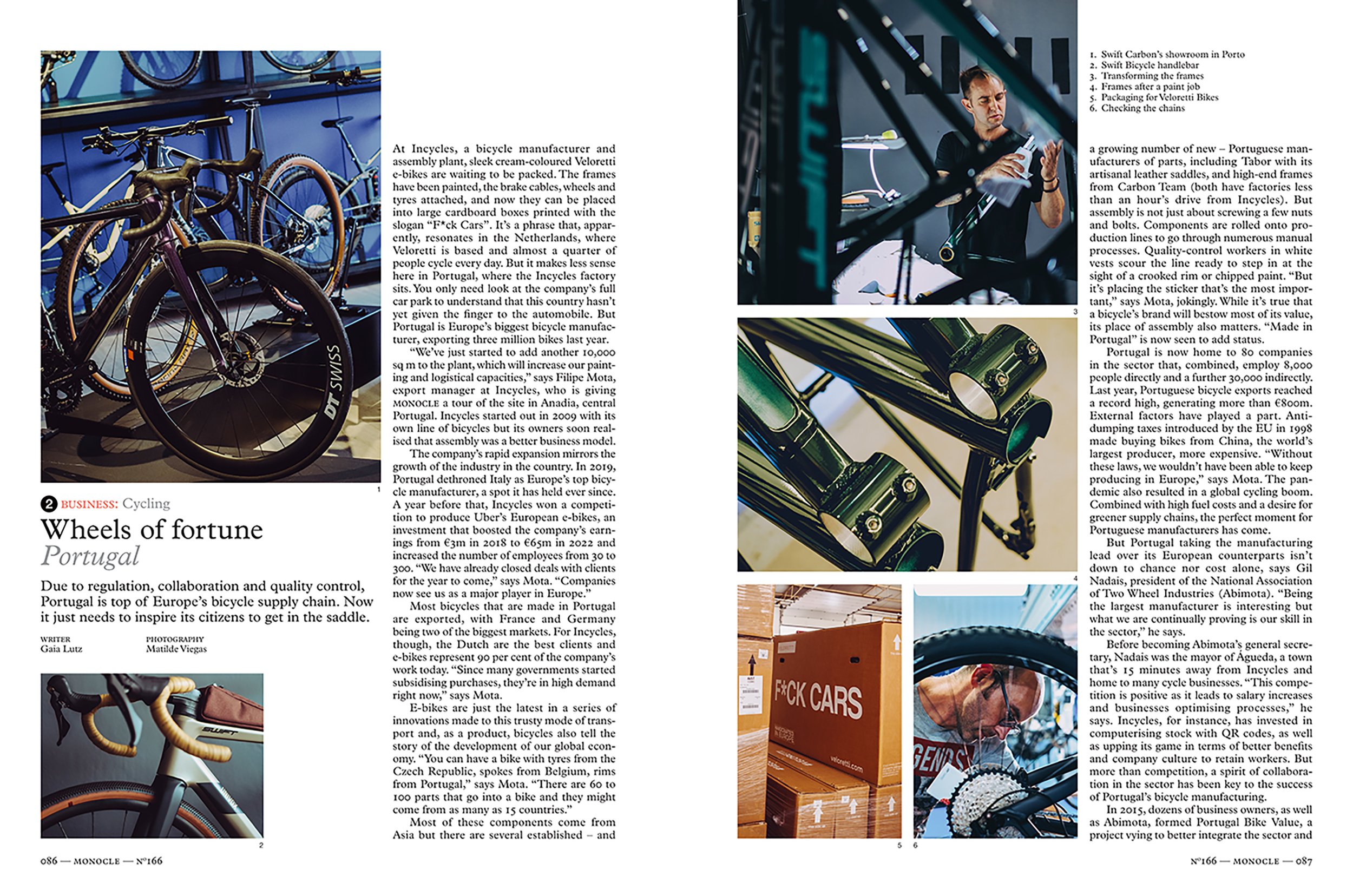

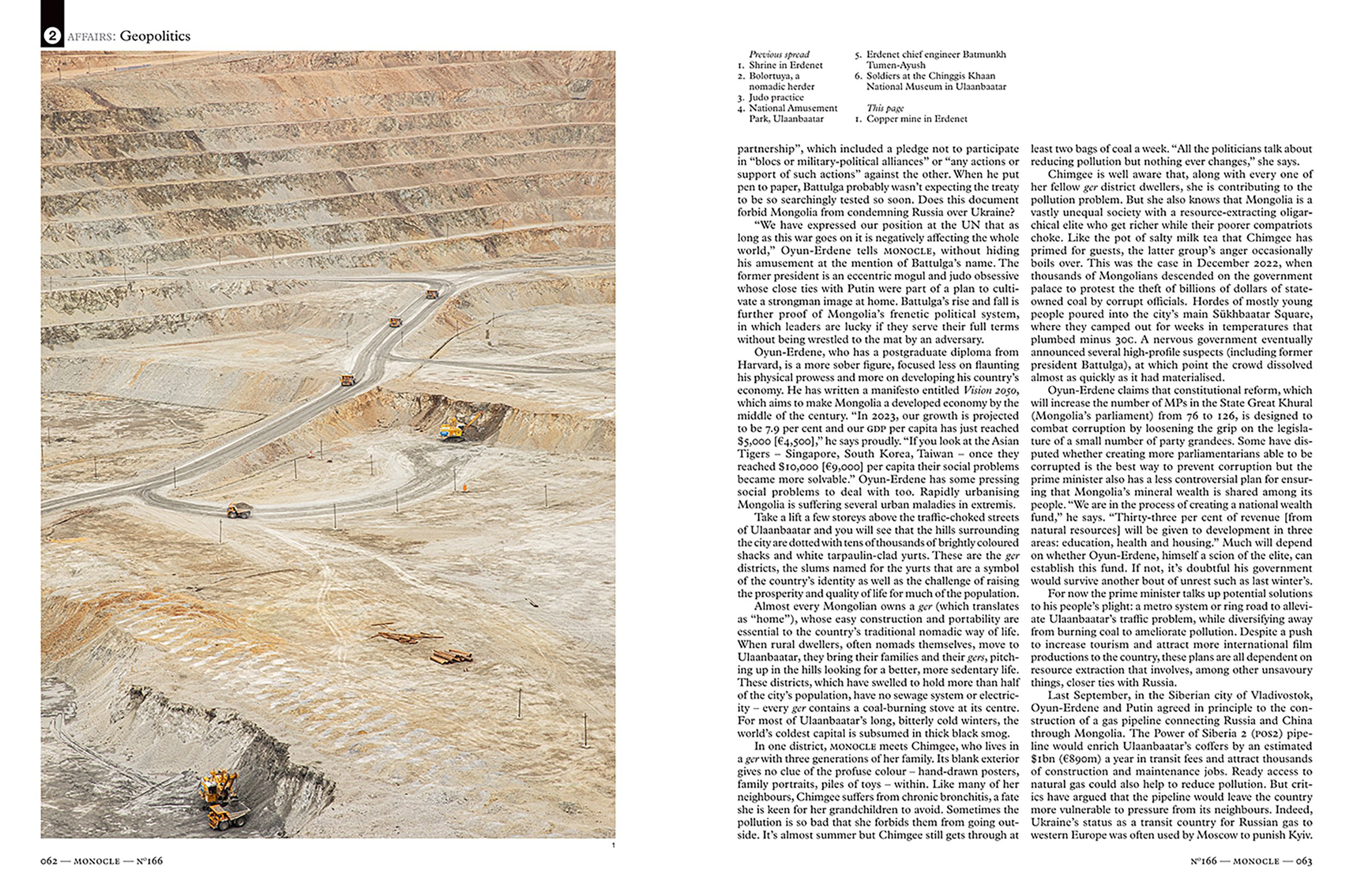
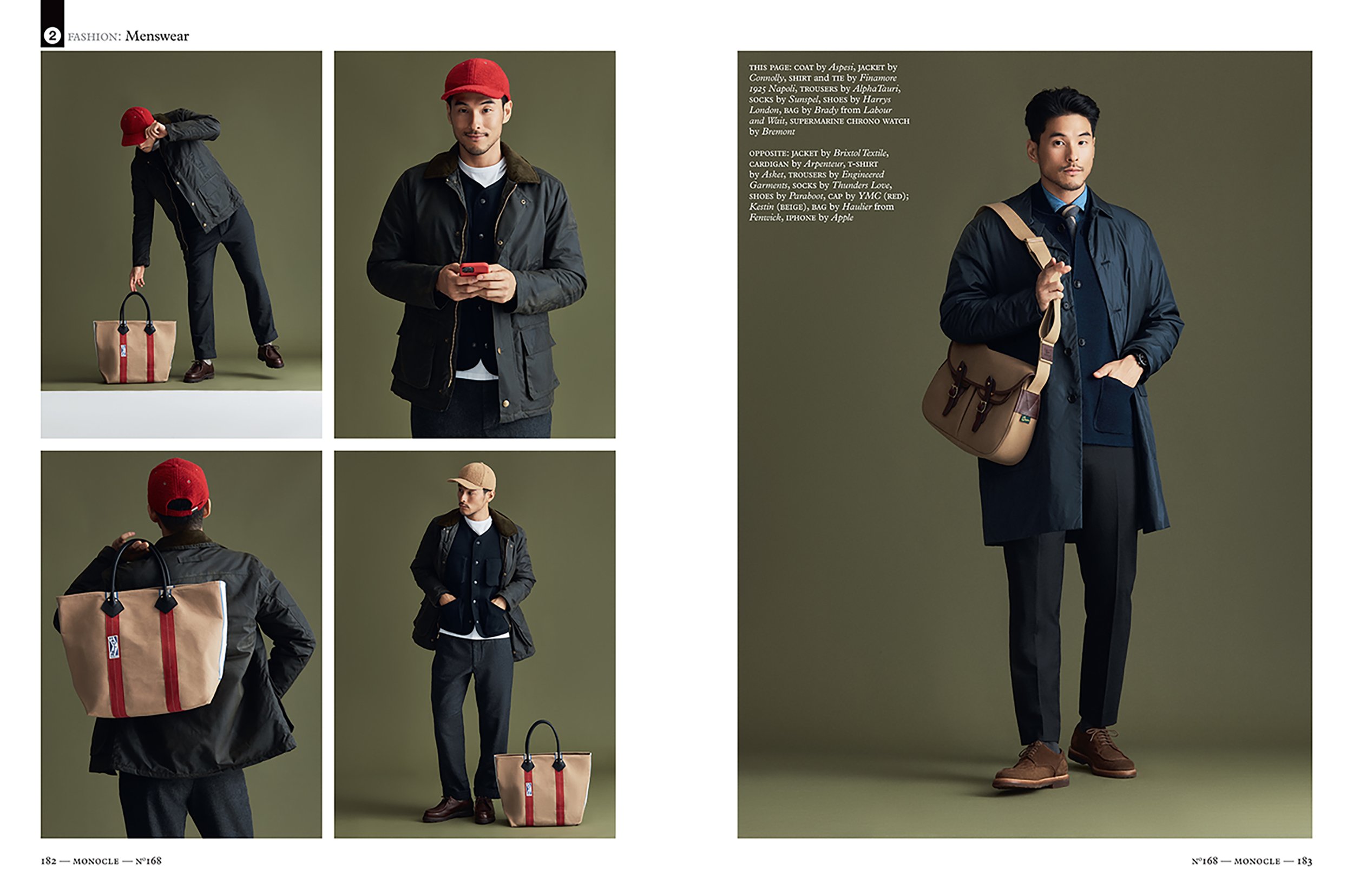
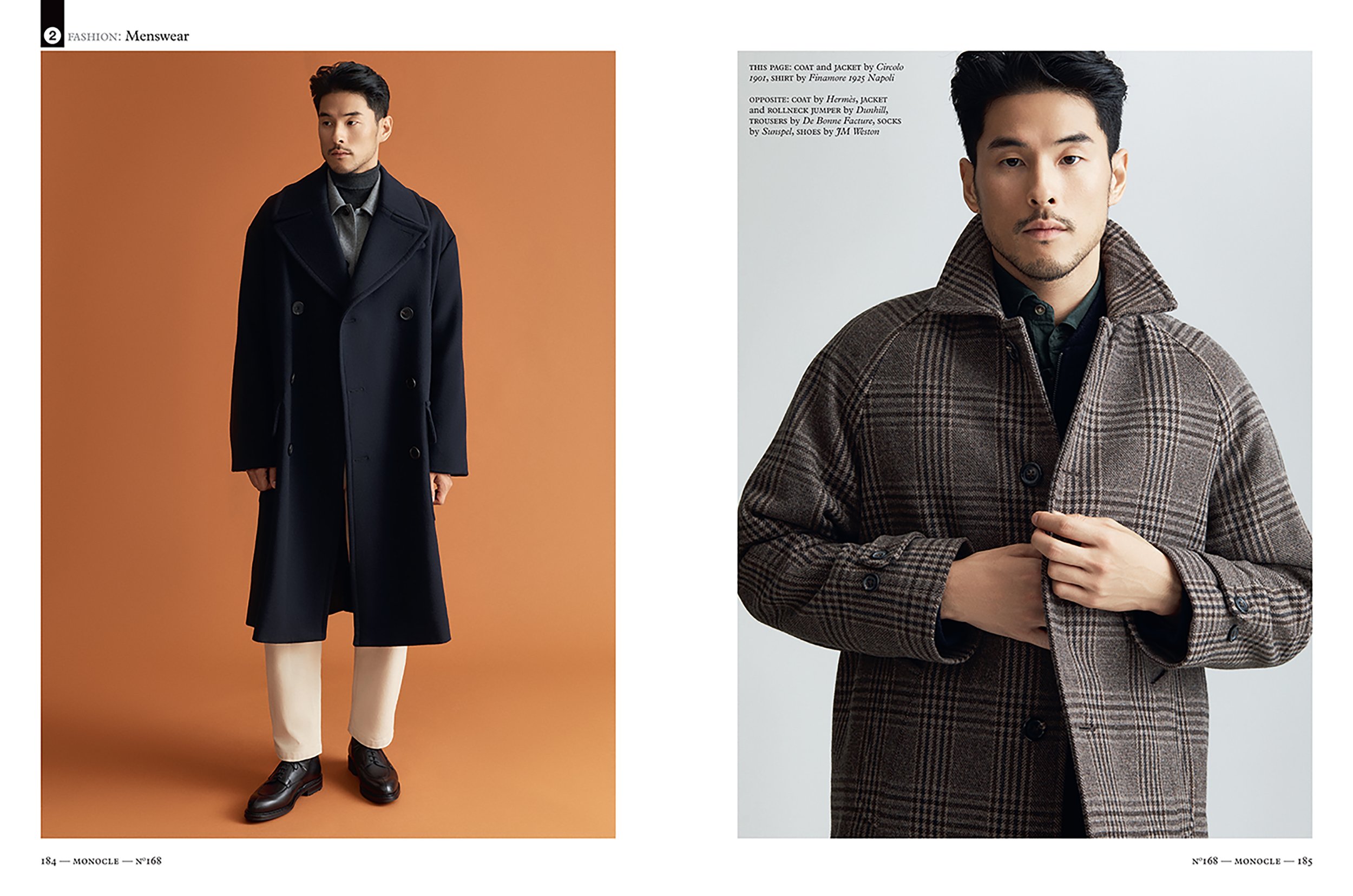
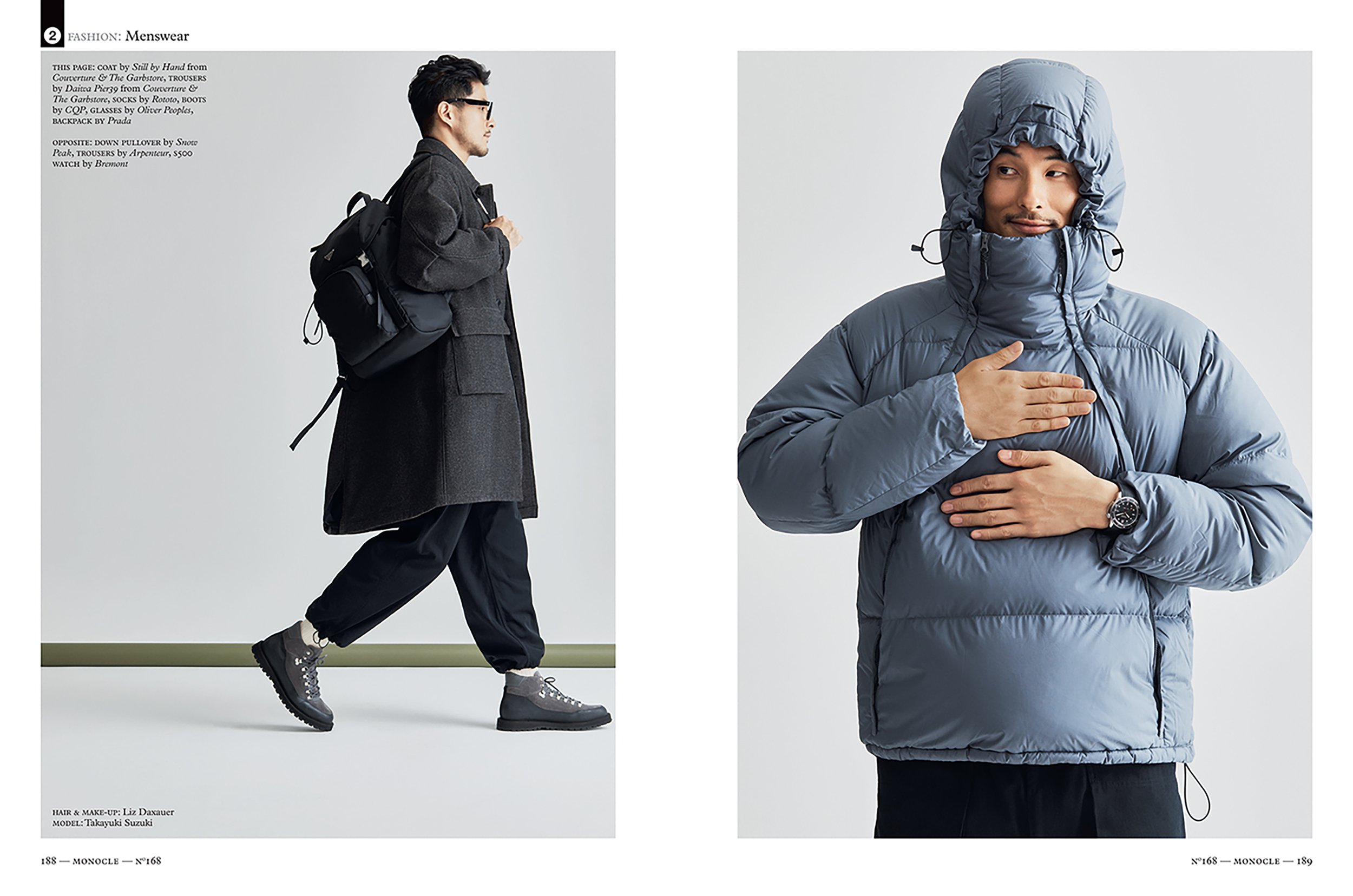
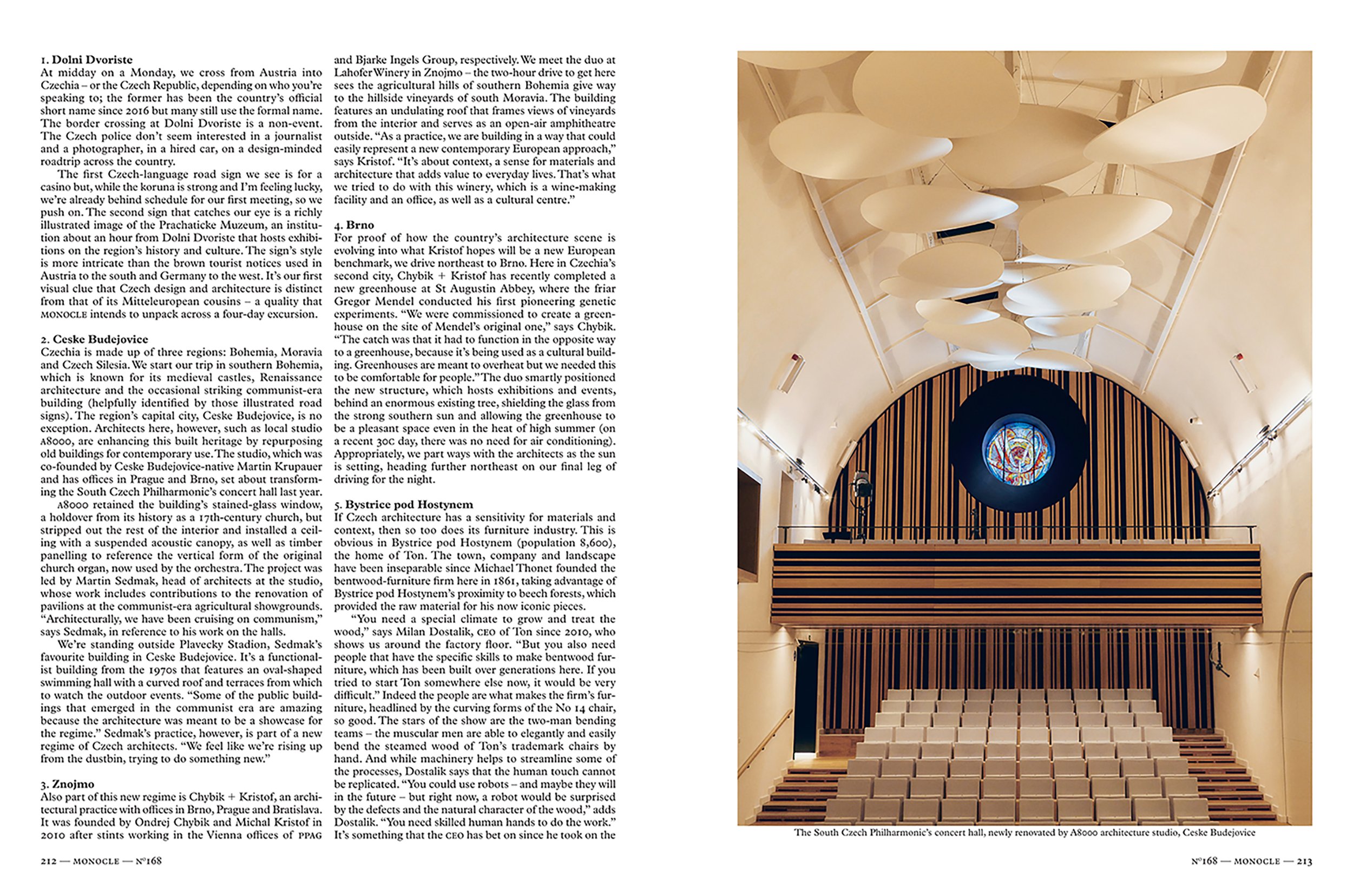
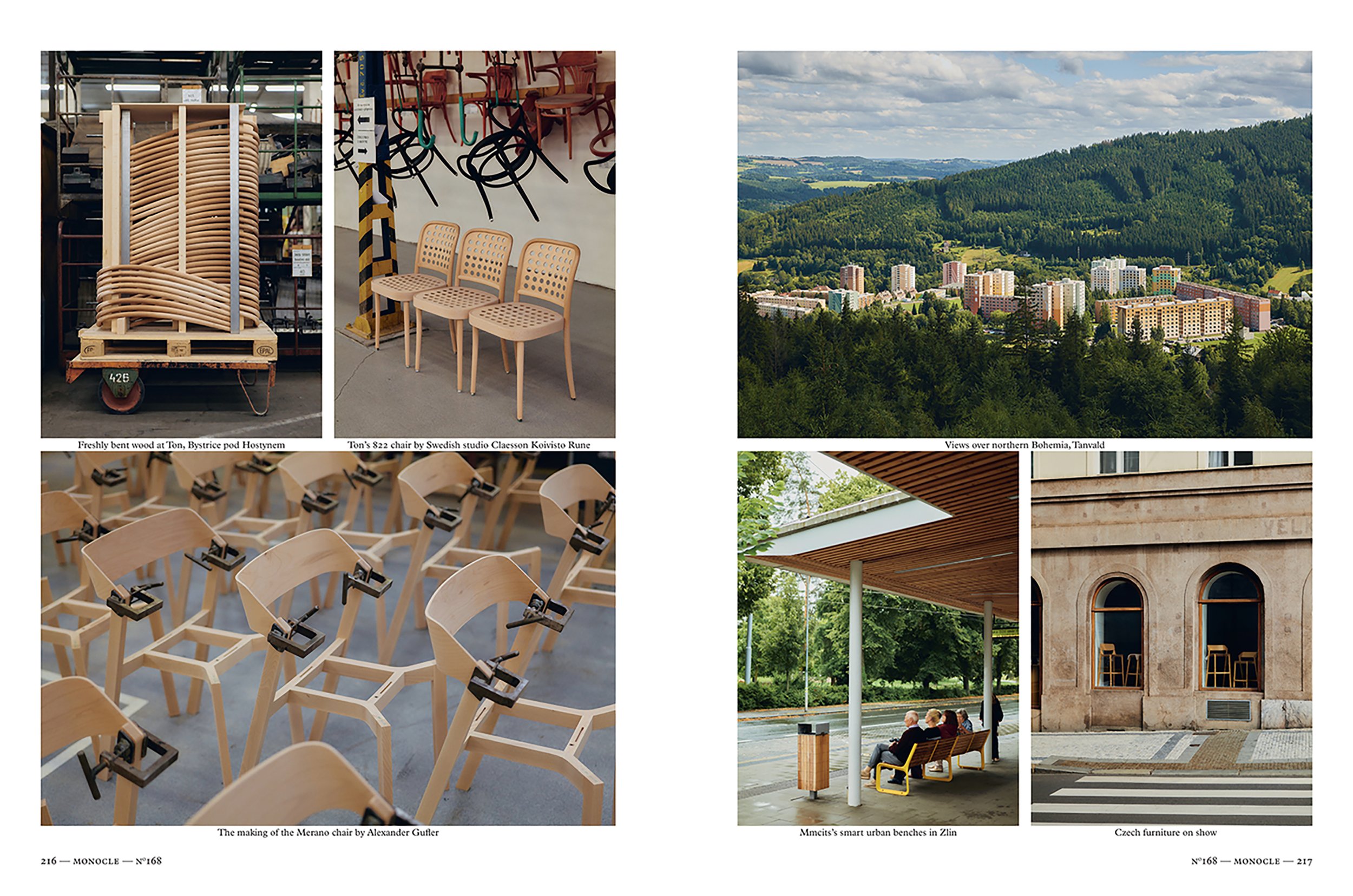
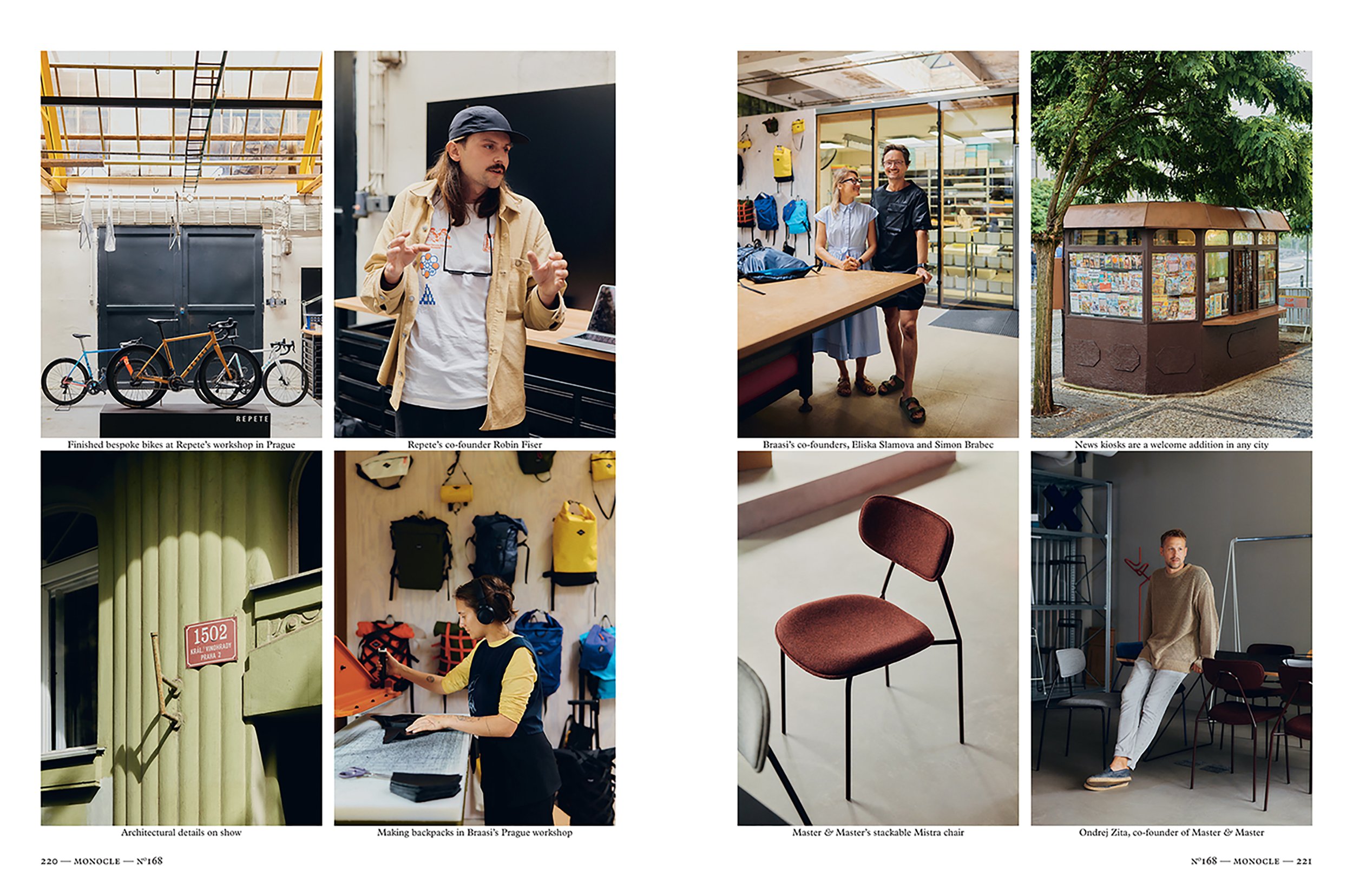
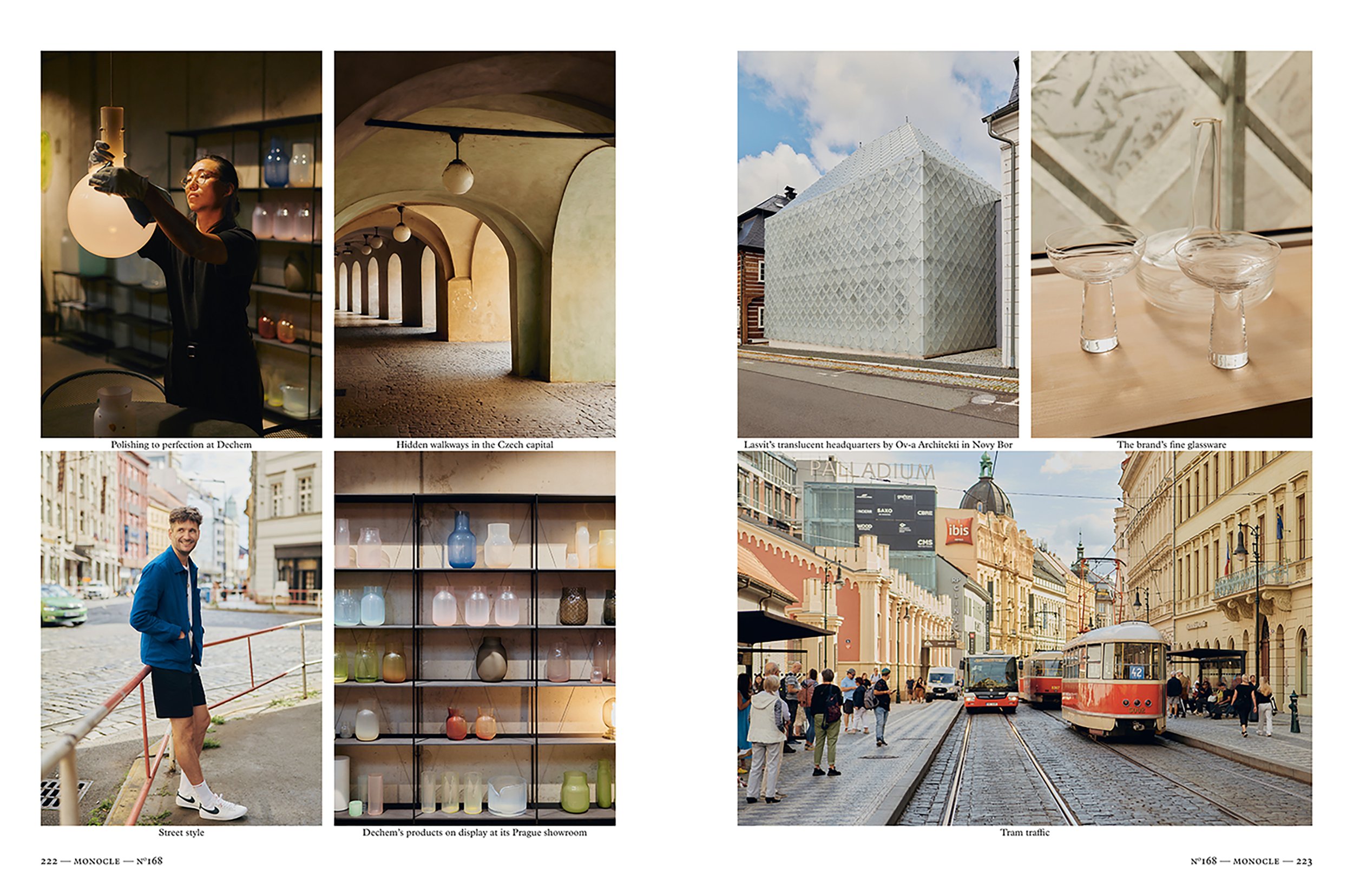

George Gendron: So it’s still the touchstone.
Tyler Brûlé: Absolutely. It’s what creates a discipline. It’s what keeps you—honest is not the right word—but it’s certainly what keeps you focused, keeps your eye on the mission. And I think it’s ultimately what you’re measured by. The newsletter part of our business is, of course, very important and becomes more influential, but I still think it’s the core magazine that comes out 10 times a year.
George Gendron: I want to bounce an idea off you and you may not agree with this, but here goes and I don’t mean to sound judgmental, but I’m just going to put this out there, which is one could argue that if you really deconstruct Monocle the magazine, there’s not necessarily anything quite remarkable about the individual elements—the typography, the photography, the illustrations, the content, the prose—each element seems professional, but not remarkable. And yet the magazine itself is remarkable. Patrick Mitchell said to me recently, he thinks of the magazine less as an exercise in traditional graphic design and more as an exercise in industrial design. Product design. Does that make any sense to you?
Tyler Brûlé: Up to a point it does. And I think part of it speaks to maybe our heritage as well, because we had a five-year pause between doing—and I say we, because of course, there’s a team that did travel with me from the world of Wallpaper* on to the world of Monocle—but there was a five year, sort of, rest or pause period. We were hardly paused, though.
And that was when we were really building up our branding and design agency. And we were working on other editorial products. But I used the word “product.” And many of these things— whether it was painting the fuselages of Airbus aircraft or it was working on retail projects, or it was indeed working on packaging—these were exercises in industrial design, graphic design, building and creating environments that happened to be on rails or had wings.
And so that was a really interesting period to go through, because I was all set, at the end of Wallpaper* to maybe just pause for nine months and then bring out a new magazine. But having five years in between, I think, allowed us to really think about brand, and development of brand, and the codes around brand, and what makes a good launch succeed or fail. So it was a very interesting learning period, which has definitely informed where we are today.
George Gendron: What’s interesting—I want to see if I can marry that question with something that occurred to me earlier, when you were talking, and that is your vocabulary is really interesting. You don’t talk about “podcasting”—you talk about “radio.” You don’t talk about “video”—you talk about “television.” Explain that to me. That’s clearly very intentional on your part.
Tyler Brûlé: Yeah, it’s either intentional or it’s lazy or it’s because I’m a child of the 1970s combination of all. Yeah, sure. It’s … I mean, listen … I think one thing that keeps you sharp— because I do try personally, and I think on our editorial floor we try not to fall into language traps that I think many people sort of swirl around in.
And I think we do have our—I come back to that notion of codes and a tone that we try to speak with. And it’s interesting when you go back to your earlier question about, where in the world, if you think about Monocle, where are we based? Are we London? Are we New York? Are we Berlin? et cetera. And I always try to say that we, we don’t want to be any of those places, but we want to borrow from the best of all of those.
And when we think about television or we think about radio versus podcasts, it’s because there’s an intention and there’s an honesty to it as well. We said from the very beginning, we were probably one of, again,”legacy” or we were one of the first, certainly, print brands to get out there with a podcast very early on.
But I would say within the second or third podcast, because we were making this program in a studio around the corner from Broadcasting House in London, I thought, “Imagine if we took this show on the road and did this 24 hours a day, seven days a week.” And so we were thinking about radio and we do talk about bureaus because that’s what they are. Because we do have people in cities with the support of their own office and the equipment they need to do their job.
And yes, is there a romanticism to it? Is that part of the nature of why the magazine’s called Monocle? A little bit. But you know, I guess I sort of see it as part of this is also—maybe it was a little bit of a correction as well. When we came out in 2007, many things were pointing south. And were pointing south and moving at speed.
I think back to 2007, what was happening in print then. We had the digital surge already happening in terms of digital photography. And look back at magazines in 2007, 2008, 2009, when there was that move away from film—reproduction houses, post-production, the printers—no one really knew how to deal with these digital files and, and just look at the skin quality magazines in that period, in a lot of magazines. It’s dreadful.
It looks like everyone somehow had a front row seat to some kind of nuclear apocalyptic sunset or something. And that’s why, in the very beginning, we—and we still take pride in shooting stories on film. Not to be Luddite about it. Not to be overly romantic, but there is a certain quality that comes as shooting on film still.
We don’t do every story on film, obviously, but I guess, part of the language and part of, I think when we think about how we want to position ourselves in the world and on the newsstand it’s, yeah, it’s to be correct, I would say.
Monocle’s special issues on the world, business, and travel
“We were probably one of the first “legacy” print brands to get out there with a podcast.”
George Gendron: I think there’s something really powerful about vocabulary that people miss. I mean, if I have to be part of another conversation where people start talking about “content.” Oh my God! How bland and generic can you possibly get when everything becomes content? And that’s why I find your vocabulary really interesting. Including “bureaux”, which is E-A-U-X, by the way. And there is a romanticism to it, but it has a really powerful effect.
Tyler Brûlé: Yeah, and I would say that doesn’t come from a whiteboard brainstorming session with a consultancy. It’s what we all believe. And I think that speaks to the people that have, that we’ve all stuck together for a long time. Not because we don’t have any other places to go, but there’s a commitment to the mission and what we want to, of course, deliver on page, the copy that we want to commission and edit, and hopefully turn into great editorial, as much as the types of evenings that we want to host for readers who are in Bangkok, or in Hong Kong, or in Asheville, North Carolina.
George Gendron: You talk about something that really interests me at a time when we have become, at least here in North America, absolutely obsessed with scale and scaling for its own sake. And that is, kind of, what seems to me almost like a filter you must use strategically to determine what you’re going to do to intensify the relationship, the intimacy between you and—I’ll call it a reader, but it’s a customer, right? Because they’re readers, their purchasers are your goods, they’re frequent attendees at your events, they drink coffee at your cafes. And it seems to me this notion of trying to do things to create and sustain an intimate relationship is so completely at odds with our obsession with scaling these days.
Tyler Brûlé: Yes, indeed. And it’s a conversation that we’ve had—I would say a lot—over the last three years. We’ve had many approaches from, of course, other media groups and private equity and many types of organizations with financial muscle in between those two who have just come in right away and said, “There’s so many things you can do to scale this business, and we can supercharge your circulation and your cafes and all the aspects of your business. And we can really give you ‘reach,’”… and all of the jargon that goes with this.
And as you’ve noticed, we’ve been very cautious, of course. And we can talk about, “Yes, we’d love to grow.” And it would be wonderful to be in a place where I didn’t have to sit beside someone on a plane who’s never heard of us before.
But of course, every day that also still means there’s a lot of opportunity in the world. But scaling at speed or just even scaling at a considered pace comes with dangers. And it’s not just about scaling in terms of audience and what does that mean in terms of what it’s going to do for revenues.
But I think also there’s the scaling that you might attempt with technology and there’s a scaling that might come with also to broaden your editorial reach, et cetera. And also the dangers there as well. And we’re not cautious, I think. We don’t set out to be pioneers, but also we’re a family company, and we can choose to do things quickly if we want to.
There’s many other things we can’t do because our pockets aren’t that deep. But I would still rather be in a position where I know the depth and scale and how far we can go rather than trying to bet the farm, because there’ve been so many instances over the last decade where we’ve seen people run headlong after the latest trend, whatever it may be. And we see the media world littered—the roadside is littered—with all kinds of carcasses of people who wanted to scale and they’re no longer with us.
How it started, how it’s going
George Gendron: Yeah, that’s absolutely true. And in fact, one of the things that interests me about talking to younger people, and I’m not going to break it down into Gen X, Gen Y, but is that there seems to be a sentiment among younger people that I find so encouraging that scale at any cost is the enemy of creativity. Period. End of story. And you could argue Monocle’s really interesting case study in that regard.
Tyler Brûlé: Yeah. And I don’t think we set out to be that brand or those people with their arms crossed over in the corner who don’t want to move. And...
George Gendron: Oh, no. I didn’t mean to suggest that.
Tyler Brûlé: No, but I’m just saying some people might think—and who knows, maybe there’s even a component of that. I don’t think so. But it is fascinating that there is that sentiment amongst younger consumers as well, who do want an intimacy, a conversation, who want to see the brand as “theirs.”
But at the same time, we know that of course we can be bigger in the US and we can do a much better job in many other markets around the world. But I also say the great thing is that we’re still here doing what we do and doing it on our own terms.
George Gendron: I want to take this opportunity to transition a little bit back to the young Tyler Brulé. It’s been reported that when you were young, you were mesmerized by a man by the name of Peter Charles Archibald Ewert Jennings. Now we know him as Peter Jennings, the anchorman. What was it about him that attracted you in the first place?
Tyler Brûlé: Well, when I was making the comment a bit earlier about being a child of the 1970s, I grew up in many cities across Canada, and there was a certain magnetism that the nightly newscast had for me growing up. And in Canada, unlike the United States—which is, I always think, is one of the defining differences—our national newscasts of record were never at dinnertime.
We didn’t sit down with our equivalents—Knowlton Nash, Lloyd Robertson—those were our Tom Brokaws, they were our Dan Rathers of the day. They were on at 10 or 11 o’clock at night. And I always found it kind of fascinating that the last word of the day, in terms of both domestic and international news, ran from 11 o’clock to 11:22 EST.
And so there was just something about that, sort of, bookmark at the end of the day, the look ahead into the next day. At the same time, of course, in the 1970s as cable came along, et cetera, and we were able to watch US channels, I was always fascinated, probably over the course of the seventies into the eighties to see how many of the names that I knew in Canada suddenly ended up at NBC, and CBS, and ABC, and of course, later on when CNN launched as well.
And I always wanted to, not always, but I would say certainly when I started my secondary school years, I knew that I wanted to go into journalism. I loved magazines and newspapers, but I saw myself in broadcast journalism. And then when I saw Peter Jennings jump across the border and become the foreign correspondent, and then really the face of ABC News, I thought, “This is the dream job.”
And especially in those golden years when you had ABC World News Tonight when it was anchored out of Washington and Chicago and London, that just seemed so modern. And it’s funny to think, Look where it’s all ended up today.
And I guess that goes back to the bureaus, and that sort of excitement. And it truly was. It did feel exotic. And you felt connected to something bigger. I mean, imagine now just to think that you’d be watching one of the big three networks, that that part of the newscast would come from the other side of the Atlantic. Kind of remarkable.
And that was the start of it. And that’s what I wanted to do. But here I am today not doing that.
George Gendron: And yet you could argue that portions of your career kind of did mirror Peter Jennings. You were a foreign correspondent. You were wounded in Afghanistan. And so again, there’s this kind of romanticism, I think, about your life and about some of the things and the people that inspired you that’s really quite extraordinary. But let me go back. Jennings started his career in radio, evidently, at the age of nine. What were you doing when you were nine years old?
Tyler Brûlé: Oh, when I was nine years old, I was—was I writing letters to the Ministry of Defense in Canada? Close to it. I think I was on the radio. I didn’t have a career, but I remember being on CBC Radio very early on with, I think, with the complaint because I felt that Canada’s defenses relied too much, or let’s say our poor defenses, meant that we relied too much on the United States. I think it’s still the case today.
And I did write a letter at one point to the minister and I told him that his selection of fighter aircraft was slightly misguided. Somehow it made it throughout the PR team at the ministry. But anyway, it made it to CBC Radio. And I can remember doing my first national radio piece—I must be nine or 10 or something like that—but I was quite young.
And it’s interesting when we talk about bringing up Peter Jennings today because, I have to say, I have Peter Jennings to also thank personally because I remember going to see a broadcast of World News Tonight in New York. And this would’ve been in the late eighties, I guess. And I ended up speaking to Peter afterwards, and he gave me a lift back to my hotel. And I was thinking at that time, God, to be in Peter Jennings’s limo and having a chat with him! And I said, “If you had one piece of advice for an aspiring young Canadian journalist, what would it be?”
And he said, “Get out in the world. Don’t go and work for a farm station in Canada.” He said, “You just have to get out there. Leave this continent. Go out, explore, take some risks, take some chances.”
And he didn’t say, “Don’t bother going to university.” But I think he almost said that in code, because he said, “As a journalist, you’re going to learn your skills and your skills are only going to be great based on what you’ve experienced and who you know.” And those are the words he left me with. And it was remarkable to have met him. And also of course have those words of guidance as well.
George Gendron: And obviously they had an impact on you, because that’s exactly what you did.
Tyler Brûlé: Yeah pretty much. Yeah. I certainly admired the man.
George Gendron: Who do you admire today?
Tyler Brûlé: Goodness. In the world of broadcast? Or just anywhere?
Monocle’s commitment to innovating in print led to the launch of seasonal newspapers.
“The roadside is littered with all kinds of carcasses of [brands] who wanted to scale and are no longer with us.”
Shortly after launch, Monocle began making coffee table books.
George Gendron: Yeah. It’s interesting to hear people talk about an individual who kind of mesmerized them. And I’m curious, are you mesmerized by anyone today that comes to mind? Journalists or not.
Tyler Brûlé: Sure. And just, like, on the fly at this very moment, I don’t think I’m mesmerized in the world of media by anyone in particular. But certainly I’m impressed, and have met many people that I look up to and like spending time with, particularly in the space of journalism.
And this is not to say that I’m blasé about it, it’s just because I think as we’re speaking, this has been one of these travel periods the last five weeks where I think I’ve been home for about four days. So maybe I could be a little bit sharper if we did this three days from now.
George Gendron: That’s okay. Well that raises an interesting question, which is—well first I want to ask you a big, broad question and then I want to pick up on your travel and on you as a magazine maker—and that is, which do you identify with more: founder/entrepreneur on the one hand, or magazine-maker/editor on the other?
Tyler Brûlé: I would even go—it’s not somewhere in between, and it’s not a step down—I would just say “journalist.” I still write for the newspapers. I, of course, write for my own title and I host programs. But it’s still driven by the foundations of being a journalist.
I always think the best measure is when you go into a country where you still have to jot down on a little yellow piece of paper “profession,” I write “journalist.” It just seems odd to write “chairman” or “editorial director” or “CEO.” It just doesn’t …
George Gendron: Yeah, I know what you mean. Of course.
Tyler Brûlé: But yeah, those are mainly functions, and I have those titles on various cards. But if I think about What do I do? I’m a journalist. I’m out to be a witness. I’m out to absorb, I’m out to interpret, and I’m out to communicate.
George Gendron: What I always love about journalism is it subsidizes one’s curiosity.
Tyler Brûlé: Absolutely. Especially when you have editors and publishers who are as curious as you and believe in the craft of journalism. And I have to say, I’ve been very fortunate over the decades to have worked with amazing publishing companies and outstanding editors. And it’s been great to be, hopefully, to be in a position as well where we’ve done the same for other people moving into or cutting across their career as well.
George Gendron: You say you travel 250 days a year. That has to have an impact on how much time you actually get to spend on an issue of Monocle. So is that true, number one? And if it is true, what are the things that you miss most about having more time to spend on Monocle?
Tyler Brûlé: So, first going back to the numbers game, obviously for this last period, it’s not been 250 days on the road. I do feel like I’m moving back to that. But yeah, you know, it’s interesting, if I think back before the start of the pandemic, I had shifted a little bit of my focus and my life to Zurich more than London.
I handed over the daily reins of the magazine to Andrew [Tuck]. Andrew became the editor-in-chief of the magazine, I took the title of editorial director. And that happened very naturally because, I think, on one side, we were just doing other things. There were so many other components.
And even though Andrew, of course, is across all of the content, things were becoming more complex in terms of the types of partnerships. I was playing a bit more of, I would say, the CEO role as well, looking after the brand in all of its aspects.
But who knows? We can revisit where I end up at the end of 2023, how much I’ve been traveling. But yes, I’m on the road a lot. And I don’t think it’s annoying for the rest of the team, but there’s one thing about going out there and knowing where we have either correspondents or we have bureaus, and arriving in a city and thinking and then I have to fire a note back to London saying, “Are we working on this story right now?” “Oh, no. No, we’re not working on it.” Or we might have passed on it—normally not passed on, they’re just not working on it. And I say, “How did we miss this? Why isn’t this commissioned already?”
And Andrew and I always have this conversation, in a really polite and forwarding way, about having done what we’ve done for a very long time that oftentimes other people just simply miss it. Of course we know the flip side of it all as well is if you’re in a market the whole time and your beat happens to be that Latin American city or that city in Southeast Asia, you just, you may not see it. But if you’re in Tokyo one day, then you’re in Taipei, then you’re in Singapore, then you’re in Bangkok and you’re like, “Oh, I was able to connect all of these things and isn’t it curious why this one thing is happening in Thailand at the moment.”
So I would say it actually helps inform what we’re doing. It allows Andrew and everyone back at base to get on with what they’re doing. And it allows me, probably, to be quite pointy and sharp and making sure that we’ve got the right stories going into the magazine and in a fashion which is, still, quite top-down you would say.
And of course that doesn’t inform everything we do. So I think it’s important. I think it’s a nice sparring match that I have between Andrew and the other editors. I’m sure it annoys them some days. Some days not. But I think it makes for a better product.
What do I miss? I miss the close of the magazine, because I’m normally not on the editorial floor in London. I have a set of walls here in Zurich, cork walls, where the issue does go up. But I’m able to look at the flat plan and look at the pace of the pages, et cetera.
But it’s not the same as the bar trolley being open on a Friday when you’re—or Tuesday is the hard close, I should say—Tuesday when you can flip through the book and you can open up a glass of wine, be with a team and celebrate that this has now been shipped off to Germany and it’s hitting the presses. That I miss.
George Gendron: That’s the best, isn’t it?
Tyler Brûlé: And that’s the power of the newsroom. And I think it’s the power of being together, and it’s the power of why we do what we do. And I think we were quite lucky—there were one or two issues that we weren’t all together properly, en masse, to get magazines out in that early spring of 2000 period. But, yeah, the good thing is we corrected that quite quickly. But that’s the magic of why we do what we do. And I think that’s the beauty of the editorial floor.
A natural spinoff has been a bespoke series of travel guides.
George Gendron: What, if anything, are you absolutely completely unwilling to delegate when it comes to the print edition of Monocle?
Tyler Brûlé: Well, I delegate many things, but I would never be in a situation where the cover goes without seeing it, without being able to look at the coverlines, without being able to contribute to the coverlines.
And, I don’t read every word anymore, but we’re in a situation where, if there’s something that Andrew thinks is critical that I need to see, I see it. But I have to see the entire issue. And when you see it pinned up on a wall, you’re not reading every word of the issue, of course.
But I can’t give that up. That is very important. And listen, it’s important to Andrew and Richard [Spencer Powell, Monocle’s creative director], and Josh [Fehnert, executive editor] and Sophie [Grove, editor of Konfekt] and all of the other people who are in the senior editorial mix that there’s also just a different set of eyes.
I mean, it’d be much worse if I didn’t make comments. But also if I didn’t see it, but then ranted about something because well, that’s down to me. Then why didn’t I see it? And, of course, we don’t catch everything and we have glitches and mistakes, like all media brands do. But that’s something, to me, which is essential and also makes me a journalist.
George Gendron: Listening to you talk, there is something—a kind of an authority and an aura—that comes with being a founder that you have to be aware of. People want your opinions. They want your input. They want your presence. Like it or not.
Tyler Brûlé: Yes. And that is, maybe, a little bit of the culture that also comes with being an independent publisher still, as well. We’re not part of a major conglomerate. And every success is our own. And every mistake is our own.
And there is also that sense of being an owner/founder that it is a high wire act every day. And there are no cables and nets. And no spotters on the ground, either. So it means that you really have to proceed with caution. But I think when you have the chance to do it, that you can also move forward at pace as well and with confidence.
In 2020, Brûlé and team launched Konfekt, “a deep dive into the worlds of fashion, craft, travel and design.”
“We’re not part of a major conglomerate. And every success is our own. And every mistake is our own.”
George Gendron: I want to talk about two things—one could be an entire podcast in its own right—and that is Monocle has a really interesting and I think, really healthy effect on a reader in the US which is that it’s interesting to pick up a publication or engage with a brand that is so non-US-centric.
Tyler Brûlé: So yeah. Discuss. Yes, discuss this topic. It is. And listen, it’s why the US is our biggest market, as well. Not just because it’s the biggest English-language market in the world. I think we could maybe sell more copies in the UK alone. And the UK is very close, but the US is our biggest market. Newsstand subscriptions. Radio listeners. People buying products from us.
And I think part of it is because it’s an oasis of a different dialogue. It’s a different conversation, it’s a different lens. Of course we do cover the US. But again, we’ve always done so on our own terms. And it’s been really interesting to read and engage with some of the correspondence over the past few years as things have become more divisive in the United States.
Andrew and I say we’ve always done a good issue if we’re able to annoy both Democrats and Republicans with one issue. And one thing we do talk about—and maybe it was when you were just reading out some of the values and the mission statement that we had cooked up back in 2007—I don’t think we were talking about being a voice of reason then, but I think we, again, it’s not written, it’s not in any brand book, but we want to be pragmatic, and we want to be measured, and we want to be a place of common sense, as well. And I think, obviously, that is something which we're constantly pointing out. That we need to have a real commonsensical approach to things.
And it’s funny how that’s what—even without us talking about it—that’s what we get from our listeners and our readers as well. People say, “Oh, I just thank goodness you just speak some basic truth,” which might be right of center, it might be left of center, but we’re not setting out to have any political agenda around it. We just want to be pragmatic.
George Gendron: When I think about Monocle, print in particular, but I think it’s true of the brand in general. In fact, it is true of the brand in general. It’s certainly true of radio. I think that you guys really revel in creativity, innovation, invention, resourcefulness, imagination. You really revel in it. I don’t know what other word to use. And that leads to an interesting question which—this is going to sound like a non sequitur, but it’s not—is New York City over?
Tyler Brûlé: I don’t think it’s ever been our position. And this comes back to, and I don’t want to revel in a house view, but Monocle’s a place about the positive. We come from, I would say, a position of looking forward. That doesn’t mean that you ignore atrocities, bad behavior, missteps of the past, but there is also a component of what we do, which is let’s be solution driven.
So has New York stumbled? Is New York the place it was five years ago, 10 years ago, over 20 years ago, when it was the editorial hub of the world? No, I don’t think it is that place anymore. But it doesn’t mean it’s out. Because listen, I mean, still some of the world’s most important broadcasts and newspapers are coming out of that city.
But are they the broadcast or journalistic benchmarks that they once were? No. I think you look at a number of titles or outlets or bulletins which don’t have the same level of clout. Now, of course, the media landscape is much broader and of course it’s much more dispersed. So people have more options. But I would also say at the same time, some of those flagship brands are not quite what they were either. So some of it is on their own watch. It’s not just because of what’s happened with competition, attention deficit, and everything else.
George Gendron: I’m also thinking though, and I don’t mean to turn it into an anti-New York City screed. I grew up there. I love the city, but a lot of creatives have left, and they’ve left simply because it’s not affordable. And that’s an issue, certainly in the US, for cities like Boston, New York, San Francisco, to a lesser extent, LA. I guess I’m also asking this question about, kind of, affordability and creatives.
Tyler Brûlé: And that you need to have an affordable environment to be able to cut your teeth as an art director, as a photo editor? Yeah, in part. But London was never cheap. And I think back to the magazines, the titles which were really so important to me growing up. Hamburg was never a cheap city. And it continues to be one of the most expensive cities in the EU.
But I think back to the glory days—and the Hamburg period is probably the same—late eighties, nineties maybe even up into the early two thousands, it was never inexpensive. So I don’t fully buy that a city needs to be completely affordable. I think, as a young journalist, you need to be in the best environment and you need to be learning from the best.
And yeah, you might be able to do part of it. But I go back to Peter Jennings’s comments, like, don’t think you have to be part of the farm team to make your way back to Toronto, to make your way to New York. Just get out in the world. And in that case, I left Canada, went to the other side of the Atlantic, and still am largely over here.
Monocle has opened branded cafés and shops around the world, including Hong Kong, Tokyo, Toronto, Merano (Italy), as well as London and Zurich, pictured here.
George Gendron: So if a young, recent college grad, who is interested in a creative field, not just journalism, but it could be design, anything that we would think of as a creative endeavor and they said to you, if you were me, where would you go right now?
Tyler Brûlé: First I would say, don't, as a 24 year old, say to yourself—or certainly say to a potential employer—that you “only want to work from home” or you “only want flexi-working.” This I don’t understand because you have to be around people. And if you really want to be a journalist and—listen, if you want to go out and chance it as a writer, great. Go for it. Go out in the world.
But if you actually want to be part of the editorial process—whether that’s making a radio documentary, or turning out a great magazine weekly, or a newspaper supplement on the weekends, whatever it is—you have to be surrounded by people, be in a great environment. The serendipity that comes with it, the camaraderie that comes with it.
But if you’re talking about someone who’s 23, 24, the learning, the mentorship—that’s the first thing. And then I would say why go for second best? If you were in a town or a city which has a newspaper or monthly magazine, which is on its last legs, probably not the place that you want to start.
So, yeah, you might have to make a few lifestyle curbs if you go to New York, or you move to London, or you find yourself in Singapore, wherever those titles happen to be. I think you want to learn from the best.
George Gendron: That’s great advice. To wrap this up, I have to come back to something that, having led the Inc. magazine creative team for 20 years, just fascinates me about this conversation, and that is your reference to Monocle as a family business. Can you say more about that? You don’t have a family. It’s not as if you’ve got five kids and you’re thinking about, “Which of my five”—you know, an episode of Succession—“which of my kids is going to take over?” Tell me what you mean when you say Monocle is really a family business.
Tyler Brûlé: I would say we’re a family business in almost the traditional—not quite mom and pop sense—but that it’s family money. But I should also be very clear that I’m not from a wealthy background. There are no silver spoons. A lot of this was self-financed. But nevertheless, of course, there was help from my mom along the way. And my mom holds a board position in the very small Canadian part of the business. And when we talk about blood that is one part of it.
But it’s a family in the sense that a lot of us have been together for a long time. And I think about Jackie Deacon [Monocle’s production director] or Richard Spencer Powell—Jackie is the master of understanding printing presses and paper tonnage. And talk about a skill and an understanding of something which is just … it’s golden what she does. We go back to the mid-nineties as colleagues. Same with Richard Spencer Powell, our creative director. So, listen, there’s many contemporary ways of defining a family, but I would say that this is one of the more older-school ways to define it.
And then I say it’s a family business because it’s also the other people who are invested. I mean, we hold, we, me, hold 70% of the company. The other 30% are families. So there’s no private equity. Two percent of our shares are held by Nikkei. But again, Nikkei is a private company as well. But everyone else—they’re family offices from Texas, from Thailand, from elsewhere in Switzerland, from Sweden.
So these are also other individuals who love media, they're passionate about what we do. And a lot of it has to do with quality. So when I talk in terms of a family, that is what it is. And there are no kids that are going to take over the business—at least none that I’ve spawned. But who knows? But who knows what happens with some of the other family members who are in the business. And what do we do with this moving forward?
George Gendron: Do members of your team, like Richard, do they have equity?
Tyler Brûlé: No. As we’ve built and brought in other investors we’ve done the best we can to cut people in, in terms of bonuses and done the best to do right by them. But no, it’s held by the other families and our shareholders.
George Gendron: I hate to end on a negative note, but I have to ask: What happens, in terms of succession, if you get hit by a tram today?
Tyler Brûlé: And it’s very easy to get hit by a tram in Zurich. I always say they’re the silent killers. Listen, there’s a very talented team in place. It’s a little bit like the same question, people say, “Oh, you know, what was going to happen to Wallpaper* when you left?” Well, Wallpaper*’s still around and seemingly doing okay.
I think that’s the essence of a great brand, right? Magazines have written codes, and fonts, and grids, and a photographic style that needs to be maintained. And, of course, it has a team of people that knows how to uphold all of those things. It has editors who understand the types of stories that are going to be commissioned.
So I think we’ve put a very good framework in place. We did that in the last magazine we did. We’ve done that for lots of other clients—titles that you may not even know that we’ve worked on. And we continue to do it day in and day out with Monocle. So I think the title would do just fine.
Midori House, Monocle’s headquarters, is located in London’s chic Marylebone neighborhood, between Hyde Park and Regent’s Park.
For more information, visit Monocle.com, where, if you’re a subscriber, you can read articles, watch films, listen to radio, and buy all kinds of cool stuff.
MORE LIKE THIS…
Back to the Interviews
A Style All Her Own
A conversation with editor and designer Stella Bugbee (New York Times Style Section, The Cut, Domino, more).
A conversation with editor and designer Stella Bugbee (New York Times Style Section, The Cut, Domino, more).
—
THIS EPISODE IS A SPECIAL COLLABORATION WITH OUR FRIENDS AT THE SPREAD
EDITOR’S NOTE:
This summer, our first collaboration with The Spread—the Episode 21 interview with former Cosmopolitan Editor-in-Chief Joanna Coles—became our most-listened-to episode ever. Now Rachel Baker and Maggie Bullock are back, and this time they’re speaking with another game-changing woman in media: Stella Bugbee, the editor of The New York Times Style section.
For our new listeners, Rachel and Maggie are a pair of former Elle magazine editors and “work wives.” In 2021, like many of you, they found themselves wishing for a great women’s magazine—and watching the old-school women’s mags drop like icebergs from a glacier. They decided to be the change they wanted to see—and The Spread was born.
Now, more than two years into publishing their dream weekly on Substack, rounding up juicy gossip, big ideas, and deeply personal examinations of women’s lives—from The New York Times and The Atlantic to Vogue and Elle to NplusOne and The Drift—The Spread is a cult favorite of media mavens and the media-curious.
Rachel & Maggie call Bugbee “a magazine-making unicorn”—we’re excited to be able to share their conversation with you.
—
Maggie Bullock: Last month, the big, bad headline in the world of women’s media was the shuttering of the groundbreaking feminist website Jezebel. We’ve since learned that Jezebel could be revived, but who even knows what that means? Regardless, the “closure” unleashed a wave of mourning, even among magazine fanatics like us who’ve become a little bit inured to the decimation of the legacy magazines that Jezebel was invented to skewer. Rachel, Jezebel was supposed to be the radical “antidote to the establishment”—and it didn’t have to contend with the print and circulation costs that sink bigger ships. When that topples, you have to ask yourself: What era of women’s media are we in now?
Rachel Baker: That’s what makes it such an interesting time to talk to Stella Bugbee. Ask any 30- or 40-something today about the one women’s media brand that is absolutely a daily must-read, and she will say New York magazine’s The Cut—the site that, starting in 2012, Stella built. The Cut was not just a women’s magazine re-sized for the internet, but a whole-cloth reinvention of the form. Jezebel (which was founded in 2007) was as much its forebear as the Elles and Vogues of the world: The Cut had the irreverence and voice-yness and political savvy of new media and the high-caliber production value of old media. And it was built to last: While we may have lost Jezebel, The Cut is still operating, more or less, on the blueprint that Stella created—and going strong.
Maggie Bullock: What we’ve always found fascinating about Bugbee is that she started out as a designer—she worked at a creative agency and on the visual side of a ton of cool indie magazines (like Interview and Topic) and had a stint at The New York Times before becoming the design director of the original Domino. But then when that magazine folded, she somehow totally switched teams, becoming an editor and a really great writer. I can’t think of anybody else who did that, can you? It's no surprise that The New York Times tried for years to get Stella to come to run the Styles desk. Somehow, the middle of the pandemic—when most of the Times was still working remotely, when she was unable to meet her team in person—felt like the right time for her?
Rachel Baker: Now I think you can really see the Stella touch in the way they package their stories. Like, a couple weeks ago, when the section ran a cover story titled, “Ozempic vs. Thanksgiving.” The idea sounds almost obvious, but I’d argue that it’s a masterclass in headline writing—it demonstrates a specific Bugbee-an ability to survey the culture and zero in on the thing everyone is thinking about—like when Styles spotlighted the “girl dinner” over the summer. My group texts are still full of photos of “cheese plates for one,” how about yours?
Maggie Bullock: Totally. So should we stop yammering so folks can listen to what Stella has to say?
Rachel Baker: Let’s do it.
Maggie Bullock: Okay, so now we shall ask some questions. So Stella, thank you for joining us here. We’re super excited to have you and we are taping this on a Monday afternoon, it is 1:02 p.m., and we were wondering what’s going on at the Times at 1:02 p.m. on a Monday. What are you guys doing right now?
Stella Bugbee: Should I tell you the truth?
Maggie Bullock: Preferably.
Stella Bugbee: Normally at 1:02 on a Monday I’m catching up. Usually I’m probably eating lunch at 1:02, actually, because at noon there is this meeting called the enterprise meeting where a lot of desk heads come together with the masthead and we talk about the developing big story of the day or of the week.
And people kind of think about how their section might get in on telling that story or what they could contribute. Mostly, I listen in those meetings. But every once in a while, there’s a way that Styles could get into the story, and it’s really helpful to be at those. And then after those end, I usually go upstairs and eat a salad.
Maggie Bullock: Perfect. So you’re fueled. That’s important. And like, what’s the stressful part of the week in terms of your deadlines and Styles?
Stella Bugbee: Styles closes two issues a week. We have a Thursday edition and a Sunday edition. So we are closing Thursday on Wednesday afternoon, and we were closing Sunday on Friday morning.
But, we’re really digital-first as they love to say, but it’s true. So we’re really meeting every, we meet a couple times a week. One of those moments is Monday mornings and we look at the whole week and we sort of publish divorced from the print product. And then we look at what’s going to fill Thursday and what’s going to fill Sunday, but we publish way in advance, often, online.
So we’re looking at this big Airtable—I don’t know if anybody uses Airtable, but that has our whole calendar. And I try to have at least three or four things publishing every day, regardless of the print product. But we’re sort of in a real rhythm with publishing Thursdays and Sundays.
And mostly what we’re thinking about is like, what’s the cover of Thursday and what’s the cover of Sunday. And how are we going to spread out the stories that we’ve published all week into either one of those places.
Maggie Bullock: So we’re going to get more into the nitty gritty of that, but for now we’re going to back up a little bit. So you grew up in Park Slope, Brooklyn, correct?
Stella Bugbee: Where I still live.
Maggie Bullock: Where you still live. You went to the smarty-pants high school, Stuyvesant.
Stella Bugbee: Wow. You did your research. Yes, I did.
Maggie Bullock: And then you went to Parsons, right? And you majored there in communication design.
Stella Bugbee: Yes. Magazines, basically.
Maggie Bullock: In magazines? So it seems safe to say you’re a total dyed-in-the-wool New Yorker. Is that safe to say?
Stella Bugbee: I like to think so, yes.
Maggie Bullock: And how do you think that informs your editorial point of view—certainly your job now? Like, how key to your makeup is the fact that you grew up the way that you did?
Stella Bugbee: I sometimes think about, going back to Stuyvesant, like If you had said to people who knew me back then, “Someday she’s going to be editing the Style section of The New York Times,” I think people would have said like, “Oh yeah, that makes sense.” Because it was a huge interest of mine. Fashion was like a huge part of how I identified within my friend group and I was always super-interested in it, always had subscriptions to Vogue and Interview and a lot of interest in that stuff. And also in writing.
I think I took a lot of detours. I didn’t necessarily think I would end up here. But then I think if I told my high school self, “Oh that’s what you’ll be doing in 30 years,” I think I’d be like, “Oh yeah, I guess so.” It makes sense in retrospect. So I think growing up in New York, you’re just exposed to fashion all the time by just leaving the house.
You can’t help but see all the stuff around you. And I just naturally found it so interesting. I just loved the way people looked and I couldn’t stop watching them. And I think being on the subway every day, walking through Manhattan, it’s unavoidable.
“I don’t think a career in fashion was necessarily something that I thought was a valid career. Which is a shame because it truly is.”
Maggie Bullock: And did you grow up—I mean, every New Yorker really grows up reading the Style section.
Stella Bugbee: Yeah, I guess so. We had a subscription to the Times. I feel like I read the Book Review a lot. (I was a little pretentious). And I apologize to the people who knew me then. Yeah, I mean, it was around. It was, like, in the world. I don’t think a career in fashion was necessarily something that I thought was a valid career then. Which is a shame because it truly is. There’s so much you can do in fashion. I just didn’t have that awareness. My family didn’t work in fashion. I didn’t really have any examples of people who had careers in fashion. My parents were teachers.
Like it just didn’t seem like a valid direction. And then at Parsons, it’s obviously a huge part of the school, although I wasn’t in that program. So again, I saw magazines as this bridge between what I enjoyed about fashion, which is image making and culture creation and analysis, and writing. Like a magazine back then—this is, whatever, mid- to late-nineties—was this place where you could catalog culture in this way that was really permanent and relevant.
And I was looking to the magazines to give me the information about these communities that I really wanted to be part of or that I really admired. And so it just sort of felt like, well, that’s where I want to be working. I want to be doing that. And the communication design program was really about—you could pick a lot of different things within that. But for me, magazines were the natural crossover of my many interests: writing, and visuals, and culture. It wasn’t just fashion.
Maggie Bullock: But that said, when you got out of Parsons, you didn’t follow what we think of as the traditional path to magazine success, exactly. You went into advertising, right? Was that the first leap?
Stella Bugbee: Yeah. There were a couple of people that I really admired in the late ’90s. Some of them were my teachers and some of them were just people in the design community that were bridging this gap between designer and editor. Like, Tibor Kalman was a person that had been incredibly influential in New York City and he had employed most of my teachers.
So I’m, let’s just say, like, third-generation—maybe I’m second-generation? So all of my teachers at Parsons were working designers, that’s the way it worked. And they had all worked for Tibor. So he was, kind of, this grandfather figure in the city. And he had done Colors magazine. It was this very groundbreaking project where a designer could tell stories as an art director and it was super powerful and this huge commentary, but it kind of crossed this line between advertising/advertorial/content. But it really was independent of, I guess it was Benetton who was the company that put out Colors.
And so Tibor was this figure for me that I kind of wanted to emulate. And then in college, I worked for Roger Black, who is this seminal magazine designer. And at that point he had a firm where he redesigned magazines. And I loved it. I worked on Reader’s Digest, I worked on Men’s Health, I worked on all these magazines.
But what didn’t appeal to me about that was the sort of rigorous work your way up as an art director and have like no say in the content part of it. And there was just a little bit of fluidity between advertising and design in the people that I most admired, like [Stefan] Sagmeister or Tibor Kalman. And I ended up just taking a job that I got, which happened to be in advertising at the end.
And it was advertising for theater, so it felt kind of editorial in a weird way. Like I had to come up with art direction in the same way you might for a story. Because you’re reading a play, and you’re trying to come up with how to advertise that play. The other day I was in my basement and I found the Playbill for one of the plays that I designed right out of college, which was this play called W;t.
Maggie Bullock: Oh wow, I remember that.
Rachel Baker: Yeah.
Stella Bugbee: Yeah. And it had a semicolon instead of the “i.” It was advertising, but it was extremely creative, that part of it.
Rachel Baker: But you’re responsible for the semicolon?
Stella Bugbee: I’m responsible for that logo, yeah. It’s in the play. Like, I read the play and I was like, “Let’s make the “i” a semicolon.”
Rachel Baker: Right.
Stella Bugbee: The semicolon is like a character in this play. Anyway, it was a way not to have to commit to a linear work-my-way-up-to-being-a-creative-director type of move out of college. And when you’re out of college, if somebody offers you a job, you’re just like, “Yeah, I’ll take it.” And I loved that job. I loved my boss and it was a fantastic job. But I only did that for about a year.
Maggie Bullock: So, I want to talk about all of these things, but we also want to cover a lot of ground. So I’m going to leap forward to 2006. Is that the year that you got hired at Domino?
Stella Bugbee: Yeah. I had a brief detour working here at The New York Times for the summer. I was obsessed with Adam Moss and The New York Times Magazine. And there was an opening—somebody went on maternity leave in the art department. So I was like, “I’ve just got to go and try it out and see what it’s like.”
So I got to do that. I got to cover her mat leave. So I was here for like this minor tiny moment and I got to see just like, “Oh, that’s what it’s like to work at a magazine.” And then I took a couple more detours before going back to magazines. But it was cool.
“All of us were obsessed with Adam [Moss], and just dying to get to Adam.”
Maggie Bullock: So that’s where you met Adam then, and where that started?
Stella Bugbee: No, that’s where I met Rob Giampietro, who is another graphic designer who knew David Haskell. And he said, “This guy I know from college is starting a magazine and I think he could use some help on it.”
And so I was like, “Oh, I’ll do that. That sounds fun.” And we just kind of took it over from, not from David, but for David, like in terms of just trying to reimagine what it could look like.
And at that point, working on that, I was like, “I want to be the editor.” That was where I got this, like, “Well, I have more ideas for the stories than I actually have for the art and design of this.” And I got this bug.
Maggie Bullock: Is that Topic?
Stella Bugbee: That was Topic magazine.
Maggie Bullock: Can we just tell our listeners, briefly, what was Topic?
Stella Bugbee: So Topic was David Haskell’s literary magazine that he started when he was, I think, I should fact check this, but I think he was at Cambridge when he started it. And when he moved back to America, he talked to Rob. And Rob talked to me.
And then I brought on a photo editor that was a friend of mine. And it was just this small, quarterly, sometimes only twice-a-year, self-funded literary magazine. And it covered a different topic each time. So we did games, we did prison, we did money—kind of like a little prototype of what a special issue of New York magazine might look like.
And all of us were obsessed with Adam, and just dying to get to Adam. And then David actually did get to Adam first. And David started working at New York magazine. That must’ve been, maybe 2007, 2006, something like that. And at that point I had gone to Domino.
Maggie Bullock: So somewhere along the line, you also had a few babies in there.
Stella Bugbee: Yes, right around Topic. I bounced around between advertising, just working and learning how to be an art director and stuff. I got pregnant and was sort of like kicking around, not sure what to do.
I also did this project with Joanna Goddard. She did this magazine that was all about Italy. It’s called Bene. I took the same photo editor from Topic and we went over to help her do this. It was really kind of a fun dream project all about Italy, but for Americans. They don’t do projects like this anymore. It’s like one of those things that you hear about, you’re like, “People don’t do that!”
Rachel Baker: Yeah. Who was funding that? Where is it? Can we get a copy?
Stella Bugbee: I might still have some copies like in my basement. I think we only did four or three, I can only remember the three covers. But I did that for a little while. And I was out of work, technically. I was at home with my babies. And I remember saying like, “I got to get to Condé. I got to get, I just got to get—I just need to be, like, a design director somewhere.”
Maggie Bullock: Because you needed, like, stability, insurance? Or you had bigger ambitions? What was, "I gotta get to Condé?"
Stella Bugbee: Well, I was like, “Okay, it’s time. It’s time to go do that thing I’ve been avoiding doing and just actually do it. If I’m going to do it.” And a guy that I had gone to college with had designed the original prototype for Domino. And he just put my name up for the job and I went and got the job.
Rachel Baker: And you were 30.
Stella Bugbee: I was 30. Yeah. It’s crazy to think about, yes.
Maggie Bullock: So we love Domino. Rachel and I both loved Domino. And to me it really made interiors, which had been this, sort of, off limits, rich person’s hobby into, like, a shoppable, fun, younger—I thought it was really innovative. It was so fun to consume. But looking back on Domino what do you think was the brilliance of that publication?
Stella Bugbee: Well, I think Deborah [Needleman] was brilliant. I think Deborah, who also comes kind of from a visual background—she was a photo editor before she became an editor— understood how to tell the story about how a regular person could decorate their house.
And the genius of it is that I didn’t realize just quite how expensive everything was until I actually went to work there and got a deep education in interior design from all these brilliant, amazing women that I worked with. And you never felt that as a reader, which, I thought, was a really nice sleight-of-hand that she was able to pull off. Because actually designing a house is so expensive.
And somehow, as a reader, you’re like, “I could do this.” And I think that feeling of being invited in to participate was super-key to the success of that magazine. And it’s something that I feel is very important, especially for fashion, right? So it’s an ethos that I, like, took a big note from with Deborah.
And Deborah was obsessive about captions, which I think was also a great lesson for me. Like, she cared more about the captions than she cared about the actual long copy, because she understood that readers have all these different entry points into a story. And as a designer, like, who really was a reader first I think the way that I thought about design, and still think about editing, is like as a reader first.
So you’re sort of saying like, “I know that as a reader first, I’m going to go to the caption. I’m going to go to the headline, caption, and then I’m going to read the story.” Because it’s all these different entry points. And she really taught me the value of being obsessive about that small copy And that kind of what it contributes to the overall experience of a magazine.
Maggie Bullock: That is a hundred percent. Two, two hundred percent! Okay, but so this is a podcast called Print is Dead. So people are going to want to hear—tell the people about your experience just a few years later of watching that OG Domino be shuttered. What was that like from your vantage point and what did you learn from that?
Stella Bugbee: It was devastating, frankly, to have this project that everybody worked so hard on—I mean we were just finishing the book, The Domino Book of Decorating, which we had killed ourselves on. And we were doing that on top of the magazine, and I had this incredible design team of seven people, and they were just the loveliest, best people. And there was no warning. And they fired us all—like a hundred and some people—within 10 minutes.
I was out that day. I was sick at home. And I just got a whole bunch of phone calls. And they called everybody into a conference room, and when they got back to their desks, there were, like, “you’re fired” notices on their chairs. Then I pulled myself out of bed, andI went to work. And everybody was inconsolable.
It was really quite upsetting and disorienting for everyone because everywhere you went, people said like, “I love Domino. I love that magazine. It’s so great.” And you felt like you were working on something that people really were relating to. And then you get shut down in a mass firing.
So I was pretty discouraged. I’d finally committed to being in magazines, and I gave up on them almost immediately—well, that’s not true. I had a brief stint at Interview while Glenn [O’Brien] was there. And then he got fired. And I quit and went back to advertising. But this time in fashion, which was again, like kind of an incredible education. So every job that I had, I tried to use it as a way to just get a deeper understanding of how to do a skill.
And so when I went to work in fashion, it was really this, sort of, deep plunge into visual storytelling and brand building. And it happened to be working for Raul Martinez, who was a legendary Vogue art director forever with Anna [Wintour], and his husband Alex Gonzalez, who was also an art director at many Hearst publications.
And they had, in the Tibor model, also made their own magazines. One was called Influence. This was like long before the term “influencers” was broadly used. And II just kind of put myself at their feet and just learned everything there was to learn from them about how to tell a story.
And one of the most amazing things about working there is they had every issue of Vogue ever made. I mean, they had every issue of every fashion magazine. And there’s huge stacks of library magazine racks. And you basically spent all day looking through old Vogues. So, it was not only an incredible experience to work for these two great men who I loved, it was this immersion in the history of fashion photography.
So I really learned a lot of the cliches, a lot of the popular tropes, a lot of who the models were. It was kind of like a graduate thesis program, but instead I was also working. But it was great. And I’m so, so grateful for that time of just being able to like, literally spend hours looking through every Vogue ever made from the beginning to now.
“I saw magazines as this bridge between what I enjoyed about fashion, which is image making and culture creation and analysis, and writing.”
Rachel Baker: Wow. I mean, I’ve been sitting here this whole time being like, “I’ve got to get into Stella’s basement. I bet there are Dominos and Topics in there too.” And now I’m like, “Oh, I’ve got to call Alex and Raul and see their collection.”
Stella Bugbee: Yeah. Well, there used to be this place, I don’t know if you guys ever went there, called Gallagher’s. And they dealt in vintage magazine collections. And so when somebody would die—or I don’t even know actually how they came about these massive collections—you could get every magazine. Of any kind. And I discovered it in college.
And you would just go down there—and you have to imagine this is before Google image search, so you were kind of hoarding imagery, if this was your trade, because having access to historical imagery meant that you had references that nobody could find. So you were always building on this history of photography, and always building on this history of fashion and references, because no one else could find those things. It was cool.
Rachel Baker: In 2011, you came to New York magazine to work on relaunching The Cut. I was working at New York at the time, and I was so intrigued when you walked in the door—I’m still intrigued—but I just remember being like, “Who is this woman?” Because you were a designer, but you were also an editor, with all these amazing ideas. And I think your title was creative director. And then, Boom!—you were the editor of The Cut. How did all that happen?
Stella Bugbee: Well, I owe a huge debt of gratitude to Adam Moss, who was the editor of New York magazine, who I think did one of these podcasts, right? I love him. I don’t know that many people might’ve said, “Oh, you can do this.” It’s hard, in our industry, to break out of whatever role you’ve been assigned early on. Which is maybe one of the reasons I didn’t want to take an early path that just “put me on a path” because I didn’t really want to be pigeonholed in that way.
But it was actually David Haskell who suggested that I come and talk to them about The Cut. I’d had another baby, and I was out of work. And he said, “We can’t quite find anybody that Adam feels really excited about to help with this project.” And I was really unsure about it.
But I thought the internet seemed really interesting, given what had happened at Domino. And I decided to come on as a consultant. I wasn’t sure and I didn’t have enough confidence frankly to just say, “I can do this.” And then I just loved it so much. And I got along with Adam. And, you know, I just like I just started to have so many ideas. And then I started to have a real vision for what it could be. And it was slow. It didn’t happen right away.
And even when I came on to be the editor in 2012, I would say for the first two years we were just trying a ton of stuff. I feel like we found our rhythm in 2014. And then from 2014 on, it built in ambition and in relevance. It was a very slow process. Seems like it wasn’t, but it really actually took a long time from when I came to when I felt like we were starting to really get going.
An anonymous note delivered with a box of donuts during the height of the #MeToo movement.
Rachel Baker: But when you showed up at The Cut, the ambition was so grand. The ambition was to reinvent the women’s magazine. How did you set out to do that? And what was the mandate from Adam? You mentioned your relationship with fashion magazines. What about traditional women’s magazine content? Did you read and like that stuff?
Stella Bugbee: I definitely read all that stuff. My whole life. So it was steeped in that. The internet allowed us to be voicey-er, and to be more immediate, and to reflect what the writers wanted to say, and how they wanted to speak in a different way than a magazine may have constrained the voices of some of the people working on it.
And there was just a feeling of like, “Well, you just put it up.” And you see, and then you react. It didn’t feel precious. I will say that. And we didn’t have any budget. It wasn’t like we had a huge media budget and we had all this stuff that a Condé Nast magazine had.
So with that came a lot of freedom. And I think right away I thought, there’s a way to talk about fashion that I’ve never encountered before, which is sort of “it’s a big party and you’re invited, if you want to come in.” It’s here for you. Anybody can participate. Anyone can, in theory, be stylish. But I think that the top-down message from a lot of fashion magazines, a lot of women’s magazines was, like, “Nope, you’re on the outside.”
And you didn’t really know what you had to do to get past that barrier. What, as a woman, did you have to do to be able to wear the clothes or be invited to wear the clothes? And I just thought that was all garbage. So right away, we just had a different way of talking about fashion, and about beauty, and about what was happening on the internet.
So It wasn’t that hard to “remake a women’s magazine” because women’s magazines had gotten a little bit stale. At the same time as we were doing that, there were other publications popping up that I think were addressing this, as well. Like The Gentlewoman, for example, which, right out of the gate, Penny Martin had this very crystal clear idea about how she wanted to talk about fashion and women.
And it was kind of simpatico to what we were doing, but in a very different tone. But it had a similar kind of motivation behind it, which is like, “I don’t really like what I’ve been seeing. I don’t really relate to that. But I still love this subject matter. And I think there’s probably a lot of other women who feel that way.”
One of the beautiful things about the internet is that you get feedback right away. So, if you feel like you’re on to something, you can hear right away whether people are also on board with it.
Rachel Baker: Yeah, one of the things about The Cut that felt so singular was that not only did you comment on the culture, you were really creating the culture, like normcore, millennial pink, BDE (“Big Dick Energy” for our listeners who don’t know what BDE is), Dad Bod. These were coinages and cultural touchstones made by The Cut. What was the secret sauce there and how were you able to establish such authority just to be, like, “We’re creating the culture”?
Stella Bugbee: I think New York magazine has a certain place in the culture where that’s their role. And we benefited from being part of the history of that place. It’s a provocative place. Its whole identity is to be on the cutting edge of culture and be lobbing provocations out into the world.
And we were, I think actually, just operating in that tradition. It’s a bold, scrappy place. All of it. Every single person who works there had that same—I mean, you worked there, so you know—you would take these big swings quite confidently. But those story ideas, and all of the things that we did, came out of conversations that were happening on the staff.
And it was very important to me to create a place where what we wanted to say was okay to say. And sometimes that was at odds with what was happening outside of our little pod. But I stuck very strongly to that feeling. I would say that the continuity between what I was doing at The Cut and now is [exactly] that. They get to say what they want to say in the way that they want to say it.
I think that’s the most important thing about that part of New York magazine. We just got to do it the way we wanted to do it. And I hope that continues. And I see Lindsay [Peoples] doing that beautifully. But I also felt like no one’s ever going to give me this chance again—or what if no one ever gives me this chance again? So you saying, like, right away “there was this ambition”—it was more that I felt insecure.
After going through Domino, I was like, “Well, you could have a really limited time to get to do everything you feel like doing. You’ve got to just, you’ve gotta do it. Because nothing in life is guaranteed.” And I just saw this bright, shiny thing and I was like, “I’ve got to just throw every single thing at this because you never know. You just never know what could happen.”
And I really didn’t want to miss a single second of it. And I hoped to communicate that to the whole team. It’s just like, “We’ve got this opportunity. We have to just go for it.” So that’s why I probably felt that way, too, coming in.
New York magazine’s bi-annual fashion issue featured Bugbee’s cover story about regional pride as a fashion statement.
Rachel Baker: Meanwhile, you guys were really finding your wings amid the wider cultural reckoning with gender, and race, and class, and #metoo, and Trump. And you wrote these brilliant and blazingly confident editor’s letters every step of the way. Maggie and I are still obsessed with the one about “skinny privilege”—by the way, we like, quote it. So what’s the best and the worst thing about helming a magazine that had become the voice of the generation during that upheaval—what was that like?
Stella Bugbee: So many of the things that you’re mentioning were just circumstantial things that were happening. I feel lucky to have been at a place like that, at a moment where those issues were what people wanted to talk about. Women’s issues were suddenly what everybody wanted to talk about. I don’t think that is the case anymore.
It’s like we’re in this total #metoo backlash moment. That wouldn’t be the place for—that would be harder for me, I think, as an editor. But the fact that everything that I wanted to do coincided with this cultural moment was just luck, honestly. And it was a lot of pressure to get it right.
And when we didn’t get it right, which happens, there’s a great amount of disappointment in our audience. And again, they let you know right away. And it felt like every mess up was so colossal for me. I felt personally on the line for every mistake, every wrong idea. And it didn’t just coincide with all these political moments. It coincided with this incredible social media moment where mistakes felt very permanent. They felt very colossal.
So if you did a story that people hated—I know this is still the case—you just felt like, “Oh my God, I can’t get up. I can’t keep going.” And it was a lot of pressure. It was very dramatic. Very dramatic. There were a lot of things that happened, like the [Shitty] Media Men List and publishing E. Jean Carroll’s accusation.
We really benefited from the broader New York magazine brain. I don’t think I could have done it without all those incredible editors that were also working on the magazine, in the room talking these things through. I could never have done it without a big group of people. It was a very big group effort.
Rachel Baker: So then in 2017, there were rumblings that The New York Times had offered you the Style section job, but you stayed at The Cut where you were promoted from editorial director to editor in chief and president and the to SVP. You must be a master negotiator, Stella! I need you to teach me how to negotiate. I’m curious about where you learned to negotiate like that, and also to what degree money has driven your decision making throughout your career?
Stella Bugbee: Well, If money had driven my decision making throughout my career, I probably wouldn’t be in this career, to be honest. And I have always chosen the opportunities that I think are going to get the best work and be around the people that will enable that. And the relationship I had with Adam at New York magazine really pushed me in a way that I never had been pushed before.
And it was whatever I needed at that time. And I just needed it and it unlocked some kind of feeling of possibility. So I would say I was much more motivated by opportunity than salary. And as far as staying at New York magazine. Again, I just saw the opportunity and it was, we were going to relaunch again.
And that relaunch was really exciting to me. I’d already put a ton of work into that relaunch. Strategic thinking, not just editorial thinking, but business thinking and strategy. And it was an acknowledgement that the job that I had been doing had grown into something that was more than just an editor, because I was really involved in a lot of the business decisions. I don’t know if I “negotiated” it that much. It was an acknowledgement, I think, more than a negotiation.
“I remember saying, ‘I gotta get to Condé. I just need to be, like, a design director somewhere.’”
Maggie Bullock: But in 2021, you did make the leap to Style. And you’re a person who’s on the record saying “print is dead.”
Stella Bugbee: Did I say that? I probably did.
Maggie Bullock: You have said it, yeah. Which works very well for this podcast.
Rachel Baker: We listen to every podcast.
Stella Bugbee: I disavow everything I’ve ever said. What did I say? Where did I say it?
Rachel Baker: Refinery29. But times change.
Maggie Bullock: You are a person who, perhaps at one time, thought that print was dead, and now you are a person sitting at the Grey Lady as we speak. So what made you decide to make the change when you did, and what was the opportunity in your mind that you couldn’t turn down at that time?
Stella Bugbee: Well, at that time I had already stepped down from The Cut, so I was at New York magazine as, I think, the title was Editor at Large. And I was debating, “Should I be more of a writer?” I think editor-at-large is kind of a funny title, and you’re like, “What am I doing?” And then the Styles job opened up and it was like, “Oh. I had missed that opportunity back when and maybe I should try it.”
And it’s so funny because I don’t think of this as a “print job” primarily at all. I love the print product and it’s very fun to think about how these things translate, but I don’t think about this as a print job. This is a journalism job. It’s like journalism happens online. It happens like what you guys are doing here. It happens on Tik Tok. It happens in print.
And Styles just seem like a natural place to get to do some of the things that I was still really interested in doing. And one of the things that’s super appealing about it is that it’s not just print and it’s not just women.
And that felt like this opportunity to do a lot of stories that I hadn’t gotten to do before. I don’t know. I mean, it’s kind of cool to work at The New York Times. It just feels really interesting to take this leap, journalistically. To be at a news organization primarily, as opposed to a magazine, feels really interesting and kind of suits my pace, that I actually prefer.
And it’s just something that I’ve realized over time is I really love that online cadence. I know that it burns a lot of people out, but I love being able to do things quickly. This is somewhere in between—you can do things really quickly, you can take a lot of time. We’re not a magazine, so we don’t have to come out in this sort of weekly cadence quite the same way. Like we do have these print products, but it has a very different energy than a magazine.
Maggie Bullock: So when you started there, I think, are we right that things were still pretty pandemic-y? Like, were people even coming to the office? What was that like for you to start that kind of job under those circumstances?
Stella Bugbee: That was very challenging. That was one of the most challenging experiences I’ve ever had at a job, where I didn’t even meet some of these people that I worked with for seven or eight months. Some of them I never even saw their faces, they didn’t turn their cameras on.
I think every one of us had been going through a lot for like over a year by the time I joined. Emotions were high, people were stressed out, people were burned out. Just everybody, the whole world, was feeling that way.
So it’s hard to have a sense of how to direct anything from afar. And at that point, not even as a team, you couldn’t meet your team. It was challenging. It was really challenging. And I think all of us were also highly emotional to begin with. I wouldn’t wish that on anybody.
Maggie Bullock: How long did you actually have to run it before people started coming back into the office again?
Stella Bugbee: We’re really just starting to come back. I mean, by this point obviously, I’ve met my whole team. It’s been over two years since I started. And I made a lot of hires and you know, there was one person I didn’t meet for like seven or eight months.
Maggie Bullock: That’s so crazy.
Stella Bugbee: Yeah. And she’s like one of the most important editors on my team. We just communicated remotely. I do think that it was helpful that we’d all been doing this for over a year by the time I joined. Some people were in the habit. We all knew how to do it. It just wasn’t that much fun to do that with a new team. It was very hard to build consensus, to just get people excited. It was really hard.
How The Cut gets it done
Maggie Bullock: So in addition to that, you were also in a very different environment. And a wildly different type of publication. At The Cut, as I understand it, it was really very much a blank slate to reinvent the women’s magazine, as we’ve said, for a new era. But the Times is so different from that. How is running a section there different from pretty much anything you’ve done before?
Stella Bugbee: It can’t be overstated how totally different it is. It’s like night and day. New York magazine, The Cut, were these fairly new, very open, undefined—well, New York magazine has more of a legacy. But The Cut really didn’t. So it’s building something versus fitting yourself into a legacy publication with a lot of expectations around it internally and externally.
I met with somebody when I first came here, and she runs another desk and she’s been here for a while and she said, “Well, I’m new.”
And I said, “Really? How long have you been here?”
And she was like, “About six years.”
And I was just like, “Oh my goodness.” And it started to dawn on me that a big part of the job is learning about this institution and learning how to make work inside of it so that you are getting to the reader again. I always think about the reader.
But the reader of The New York Times is very hard to figure out. And the reader of the Style section is many, many people—different kinds and for different reasons. And so, whereas I had this really hardcore understanding of the reader at The Cut, I had to relearn what that was here at the Times. And I had to try to understand how to work with the newsroom a lot more.
That’s been the fun challenge. That’s why I go to that enterprise meeting—to listen and to hear what their priorities are every day. And like, “Well, I’m here. I run this desk. What do I contribute to that larger story of the day, if possible?” Or just like, “How does what we’re doing on the Style desk fit into the larger mission of The New York Times? And that, again, can’t be overstated how totally different that project feels than The Cut.
Maggie Bullock: So when we were talking about doing this episode, Rachel and I both agreed that 2023 for us feels like a very stressful time to edit a legacy section, a legacy desk like Styles which still has the last vestiges of being like society pages—somewhere back in its DNA it’s still that—and where people are still coming to you for, like Vows. Plus it’s always been sport for people to go bonkers on any Style story for being out of touch in one way or the other. That’s a New York tradition. It just feels like the stakes are incredibly high. I guess the first question there is did Style need reinventing when you came in?
Stella Bugbee: Well, I think Styles always needs reinventing, right? That’s the nature of Styles. And I think I’m reinventing it week to week, which is good. That’s sort of the point. But no, total reinventing? No.
I think Choire Sicha, who had the job before me, did a lot of reinventing and loosened up a lot of the expectations. And there was this big project underway, that started before I came, to reinvent Vows. And there’s a new editor on Vows, Charanna Alexander. And, if you pay close attention, you’ll see that the type of people that are featured are totally different. They started Mini Vows. It's a very different energy than it had maybe 10 or 15 years ago. That predated me.
And in terms of parties, it’s probably not totally evident unless you’re a super close reader of these things, but we really have talked a lot about what kind of parties we cover, what we’re trying to get out of party coverage—there’s this crazy, amazing legacy with Bill Cunningham and what he was doing and why he was doing it. How do we build on that? What do we preserve from what he wanted to be doing?
I don’t think it’s like a crazy, terrible time to be doing any of this stuff. I think it’s really a fun section where we get to play with what’s happening in the culture. And, of course, some people are going to hate it.
I think you have to have a rock solid sense of just, “It’s okay if people hate things.” And maybe, to go back to your earlier question about The Cut, people hated what we did at The Cut too. I got a lot of criticism all the time. I mean, people loved it, but people hated it. And when you work on the internet, you become a little bit numb to the ebb and flow of people hating things.
So that’s a good place to be when you get to a place like Styles where people love to hate on the Style section. And that’s part of it, I guess.
Maggie Bullock: Do you have what you consider to be like a formula, a mix—like we’re x percentage of this and y percentage of that? Or if you were bringing in a new editor, how would you describe to them the way that you want the section to feel and what you want it to embody?
Stella Bugbee: That’s a great question. So Styles is funny because it’s like, don’t quote me on this exact ratio, but it’s like 30 percent fashion beat reporting, maybe 30 percent love, marriage, relationships, advice, and, like, 40 percent this other stuff that’s totally up to whomever is editing it—the group of us—to fill. Like, “Well, what words are people using? Are people smoking cigarettes? How are people treating their children? Who’s interesting? What did Shannon Abloh have to say once she became independent? Who’s the hot designer? Which book is everybody sharing around town?”
It’s much more about the way we live and what’s fun to talk about. That is a kind of amorphous sensibility thing. And the challenge I’ve found is like when to time those things. Because for a Times reader, they may not have heard of something that maybe The Cut reader had definitely heard about three years ago. So you’re always kind of trying to say like, “Well, for the broader Times reader, this will be new.”
And that’s when you get into maybe being annoying to some of the people who are a little bit more ahead of the curve because they’re like, “Oh, how come the Times is just getting to this thing?” At the same time when you’re covering online culture, we will be early to things all the time.
‘Girl Dinner’ for example, was a recent thing that was happening on TikTok that we wrote about. When the Times turns its lens on a thing, it has a bigger reach. Like, broader than TikTok, in some ways. Obviously, I don’t mean like it’s going to get as many views as TikTok, but it’s going to get people who aren’t on TikTok to talk about Girl Dinner.
“It was upsetting and disorienting because everywhere you went, people said like, ‘I love Domino. It’s so great.’ You felt like you were working on something that people really were relating to. And then you get shut down in a mass firing.”
Maggie Bullock: But also broader than The Cut. I mean, I don’t know what the eyeball comparison is, but it’s a much wider swath of the population. And also, Boom! None of us can eat crackers and cheese anymore without thinking it’s a political act.
Stella Bugbee: Exactly.
Maggie Bullock: It’s very complicated now.
Stella Bugbee: I’ve hired a bunch of people that I’ve worked with from the New York mag era, and they bring a certain amount of that hunger for that cultural moment stuff. We just did, “What are men thinking about? The Roman Empire.”
But what’s fun is we can also do an investigation into CoolSculpting and expose the fact that they knew that they were harming people—long before they admitted that they were harming people—in partnership with the actual Investigations desk. And we can do a deep profile of Cheryl Hines, and she doesn’t know she’s about to get this treatment because she thinks she’s in the Style section.
So there’s a real kind of eclecticism. And how I think about Sunday covers is like each week should be really different. Each week should be like, “What is all this? What are they doing?” And if I’m creating that feeling in a reader, either when they open the app or when they look at the paper, then I feel like I’m doing my job.
Maggie Bullock: So, what should Thursday be then?
Stella Bugbee: Traditionally, Thursday has been more fashion news focused. It’s the more hardcore fashion audience. That’s the way we had been doing it for years. I’m actually trying to sort of break that up a little bit, and just say we should just do more of a mix in both. For me it’s all about the mix. You want every day, and every print product, to be a really weird mix of stuff. So you’re getting some advice, you’re getting maybe a little bit of celebrity stuff, you’re getting a little bit of something serious. It should feel like a Girl Dinner of editorial [laughs].
Maggie Bullock: Nicely done. Well played. So, we want to know how many nights a week you have to go out in order to have this job. Like, in order to be the person in charge of Styles. How visible does that make you? How—I don’t know. Rachel and I never leave the house, so this sounds very taxing to us.
Rachel Baker: Because you have this busy life, you have three kids and a long-running marriage, and—I don’t think we said earlier—you live in the same Brownstone in Park Slope that you grew up in.
Stella Bugbee: I do.
Rachel Baker: So, so amazing. It’s the best detail. But you’ve got this rich and complicated life. What is required of you socially and how do you get it done?
Stella Bugbee: I go out less for this job than I did before because we have incredible reporters and they go out. And I have an incredible party editor—that’s Katie Van Syckle, who actually was a New York magazine party reporter herself. She came to the Times before I did. And when I came, I really wanted to reinvent how we cover parties. And we’ve been working on that for like a year.
So, no, we have reporters. That’s the superpower of The New York Times, right? It’s not the editors, it’s the reporters. And the editors are amazing, and they’re super fun, and they all have ideas. But the reporters come back with the information. And they tell you what’s relevant, and they tell you what’s good.
So I go out, but I actually had to go out more, I think, at The Cut, to be honest. It’s a manageable life. It’s good. It’s a good job. It’s a good life. I’m not complaining.
Rachel Baker: Sounds great. So 11 years ago, you were charged with reinventing the women’s magazine, as we’ve said several times throughout this conversation. You did it! You reinvented it. Check! But here we are in 2023, and it’s a totally different media landscape. What do you think is ripe for reinvention now?
Stella Bugbee: I would just love to see somebody reimagine a celebrity profile because I cannot read another one. They’re just deadly. And I think we should just stop doing them. I would like to never read one ever again.
I think, with the invention of social media, they are the most passé form. Because the minute that the celebrity could control their own narrative, and create their own content, and have their own direct relationship with an audience, the form of a celebrity profile, just feels mannerist. And so boring to me. So I’d love it to be reinvented, or maybe to go away, or just to—I don’t know.
I mean, even with all the fantastic celebrity podcasts that there are out there, I just don’t think we need them anymore. One publication that I think is still able to do that really well is The New Yorker because for some reason, people still let The New Yorker follow them for a year and a half, or whatever it is. They still have that.
But other than that, most of us should just stop. I say that and I’m sure we’re going to do like 20 more this year. So take what I said with a grain of salt. But what, yeah, what else? I mean, what needs to be re imagined? Probably social media.
Rachel Baker: Yeah, reinvent that, Stella! Speaking of, we know from Instagram that you love to cook, and that you do so beautifully. So, for The Spread Lightning Round, if you could make dinner for three magazine greats, dead or alive, who would they be?
Stella Bugbee: Are they all together at the same dinner, or is it like one-on-one?
The Cut staff, circa 2014
“If money had driven my decision making throughout my career I probably wouldn’t be in this career, to be honest.”
Rachel Baker: Yeah, they’re together at the same dinner.
Stella Bugbee: I think Diana Vreeland would be really fun as a guest. I would love to just see her up close. Legend. I’m a big Martha Stewart fan. I wouldn’t mind having her over. We could have some potatoes or whatever. One of my favorite magazines of all time was Nest magazine. A brief magazine from the ’90s. And so maybe Joseph Holtzman, who was the editor and founder of Nest. That might be a weird group.
Maggie Bullock: What would you serve?
Stella Bugbee: Oh, Jesus. Actually, maybe serving food to Martha would be pretty—I don’t know. I’ve been really into making pasta, like hand-making pasta lately. So maybe that.
Maggie Bullock: That would find favor even with Martha.
Stella Bugbee: I don’t know. I’m sure she’d be critical. I feel like no matter what I served Martha, I would want, like, the honest—oh, you know, who would be really fun, speaking of food, is Ruth Reichl. I love her.
Rachel Baker: Stella, thank you so much. We really appreciate it.
Stella Bugbee: Oh, it was so fun. Thanks for making me think about magazines again.
Maggie Bullock: It is really hard doing this because all I want to do is interrupt—the amount of energy I’ve spent muzzling myself! You were talking about being at The Cut and how much freedom there was to say what you thought. And I am somebody who started just, like, one generation earlier than that at Vogue, and I had my voice really hammered into that Vogue voice.
And it was such a shock to my system. And I was threatened and confused by all these people—at The Cut specifically—writing so beautifully in their voice, with their point of view. And I can kind of do that now. But I just remember that being in my brain, like, “Why are you allowed to do that now?” And I was told—literally told—that I had to learn the Vogue voice.
Stella Bugbee: But yeah, New York magazine, that’s what they prize. Voice, right? That’s the tradition of that place. And every vertical had that. Vulture had it. And Grub Street had it. That was the name of the game: develop your voice. Spend some time doing that, and then go out into the world.
The Times’ Style section covers a little bit of everything.
See Stella Bugbee's work every Thursday and Sunday in the print edition of The New York Times or online every day at nytimes.com.
More Like This…
Back to the Interviews
The Accidental Editor-in-Chief
A conversation with editor and author Terry McDonell (Rolling Stone, Esquire, Sports Illustrated, more).
A conversation with editor and author Terry McDonell (Rolling Stone, Esquire, Sports Illustrated, more).
—
THIS EPISODE IS MADE POSSIBLE BY AIGANY.
Today’s guest, Terry McDonell, is the kind of editor you fear based on reputation, but would probably run through a wall for at 3am on deadline day.
As for that reputation, we’ve never worked with McDonell, but a simple Google search fills the screen with an undeviating set of impressions like these:
“he helped define American masculinity”
“one of the last of the larger-than-life magazine editors”
“the manliest of literary men”
And indeed, his corps of collaborators includes a rogue’s gallery of literary tough guys: Jim Harrison, Edward Abbey, Tom McGuane, George Plimpton, and Hunter Thompson.
But missing from all that testosterone, until now, has been the true hero of McDonell’s life and career, and the subject of his beautifully-crafted new memoir: Irma: The Education of a Mother’s Son.
But read his other book, The Accidental Life, and you’ll discover a true editorial savant—an engaged partner to his colleagues, whose adventurousness knows no limits.
And apparently, neither does his resume. McDonell, an ASME Editor’s Hall of Famer, has topped the masthead at more magazines than anybody we know.
And those magazines have been nominated for 29 National Magazine Awards, winning in 2003, 2005 and 2010.
“Terry is one of the legends of our craft,” says ASME’s executive director Sid Holt. “He’s a supremely talented editor whose legacy to magazines will include not only unforgettable stories and images but also an inspiring vision of what magazines can be both in print and on digital platforms.”
McDonell attributes his firing from Esquire to this controversial 1992 cover (above), and this Spike Lee feature (below).
Sean Plottner: Well, Terry, I thought we could start before we go way back to the very, very beginning, just take a look back at 11 years ago when you were inducted into the Editors’ Hall of Fame during the annual National Magazine Award ceremony (see video, above). It’s not long ago, although in the context of media evolution, it may seem like an eon.
Anyway, it’s May 2012. You’re standing before the magazine industry’s best and brightest giving your induction speech. Here’s what you said:
“It is the most interesting time to be an editor because of all the possibilities that are coming. I think it’s absolutely going to rip. And, in that sense, change is going to be very good, especially when the challenge is ‘Change or go home.’ My response to that is ‘No fear. Bring it.’ There’s just so much interesting stuff to do.”
Do you still feel the same way?
Terry McDonell: Sure.
Sean Plottner: Has the last decade changed anything? Does it make you feel at all different?
McDonell in his AP days.
Terry McDonell: Yes. There’s been all kinds of change. People have learned a lot. I think, though, that what still remains problematic is enough confidence in the content of media to actually charge enough for it to sustain it. What I mean is, way back in the, when we were first starting all this stuff, we should have built commerce into the original browsers.
So when the “bros” in Silicon Valley convinced various traditional media executives that they should put it up for free. And, basically came up with an advertising model. It was almost all over right there. No one understood that if you could not charge for what you were making, if you did not have enough confidence in your editorial, you might as well not even be in the game.
And that was an argument that was had all across all traditional media companies. It was very frustrating, if you were on the side that I was on, saying that we’ve got to charge for this.
Sean Plottner: Yeah. Interesting. Because it’s certainly hard to start charging once you’ve been giving it away for free.
Terry McDonell: Well, now that’s the biggest cliche that there was at the time, too, as we went through all those years. And now look what The New York Times is doing, they were in a deep hole when they were giving it away for free. They had the confidence, and the firepower, and the strategic wisdom to stand by what they were really about.
Sean Plottner: That speech was really interesting, and to me, knowing what you’ve done, it’s certainly not just a bunch of macho bluster. Your career proves that you’ve embraced change heartily, you’ve done it all working in the era of pasteup, an early adopter of computers, desktop publishing, creating the first magazine for the iPad, you helped launch a digital hub for lovers of books and literature recently. And I don’t think you’ve stopped working. Terry McDonell is far from being a print “dinosaur.”
Terry McDonell: Ha-ha! Thank you, Sean!
Sean Plottner: But just to give listeners a sense of where you’ve been and what you’ve done—journalism, and writing, and magazine editing has taken you to quite a few places. And I’m just going to list them here real quickly and forgive me if I forget a few, but the Associated Press, San Francisco, City Magazine, Outside, Rocky Mountain Magazine, Rolling Stone, Newsweek, Smart, Esquire, Sports Afield, Men’s Journal, US Weekly, Sports Illustrated, and Time, Inc. We got startups and launches, new platforms, new appliances. Not to mention your books and your poetry and your various other projects, to which I just say, “Wow.” You really have done quite a bit and you’re keeping at it. But let’s go way back to the beginning. What was your first exposure to magazines as a child?
Terry McDonell: I remember magazines being around. I remember Life magazine being around and liking to look at it, but I remember my mother bringing home a copy of Life magazine that had Ernest Hemingway on the cover, and it had “The Old Man and the Sea” inside. And she told me that I would like it before she read it to me, and I did.
And it turned me on to a kind of reading where I, as a little boy, I imagined that if I could read something, maybe I could do that stuff. Maybe I could go see the lions playing on the beach. It opened me up. It made me wide open to whatever I saw in magazines.
And after that, I was constantly going through them, looking at the pictures, at first, and then I began to be more interested, like I had been with The Old Man and the Sea, that there was really something wonderful in these packages. And I wanted to make them. I remember wanting to do that when I was in high school.
“When the ‘bros’ in Silicon Valley convinced traditional media executives that they should put it up for free, it was all over right there.”
McDonell got his start at LA, the “Village Voice for LA.” There he met designer Roger Black, with whom he would collaborate for the rest of his career.
Sean Plottner: In your lovely new memoir about your mother, Irma, you described where you’ve got books stashed in the car.
Terry McDonell: Yeah. I had a problematic stepfather. They used to go out and go to bars, and they would leave me in the car. So when I’m in the car, if I had a book, I was much happier than without. But he didn’t want me to keep books in the car, so I would hide them under the seat.
Sean Plottner: Do you remember any titles that you had there? Any favorites?
Terry McDonell: I remember all of those. Like Custer’s Last Stand, The Alamo, The Lewis & Clark Expedition. There was a whole series of Random House books. I loved those, especially.
Sean Plottner: In the book, you describe what comes across as a pretty tough, rugged childhood. Fatherless, hardscrabble. Before you’re 10, your mom’s boyfriend puts out a cigar on your forehead. Another one calls you a “panty waist” and grabs you by the nuts. There’s a cowboy kid who sucker punches you right in the gut. It’s tough stuff. And finally you get out, there’s a little incident with a bench that you used against your stepfather and move on. But it sounds pretty tough.
Terry McDonell: Well, yeah, maybe from a distance. But I had my mother. And everything that we went through together—and I thought about it that way—was something that affected me and taught me something. When I got to Time Inc., Or when I started moving up, like, the corporate ladder or whatever, I would remember her telling me, “You don’t have to talk all the time to get people to listen to you.” Stuff like that.
“Never raise your voice if you want people to listen to you.” And, “Always be thinking what it is you are really trying to accomplish, because sometimes it will not be what you’re thinking about in the moment. You have to constantly refresh yourself about what you’re doing.” And I would never have been who I turned out to be if I had not learned things like that from her.
Sean Plottner: Where, primarily, did you grow up?
Terry McDonell: The Santa Clara Valley, now Silicon Valley. I was just becoming suburban and then it became mass suburban and Silicon Valley all at the same time. But when I was there, it was orchards, fruit trees, and a lot of vacant lots.
I could ride my bike from where I was, like three or four miles up the valley towards San Francisco, to Cupertino, where Steve Jobs was from—20 years behind me—but they were just starting to build houses. It was just cherry orchards, and open fields, walnuts, apricots. It was wild, nature. It was a really a wondrous, beautiful place.
Jann Wenner, when he read the book—he’s from Northern California too, from Mill Valley—he said that he had learned a lot about me, because I was down in those “lonely, gray suburbs.”
That was the way they viewed it if you were a sophisticated kid from San Francisco or Marin County. But down there, I didn’t even know about Marin County. But it was a beautiful place to grow up.
Sean Plottner: And you ended up with a football scholarship to [University of California] Berkeley, correct?
Terry McDonell: I did. But I didn’t stay there. I “joined the revolution,” I guess is the way to put that, you know. A columnist for the San Francisco Examiner named Charles McCabe, after the spring game, called me "the fastest of the slow." I was okay, but I was not going to be a football star, that’s for sure. I was just pretty lucky in high school.
Sean Plottner: So you must have played and played fairly well in high school.
Terry McDonell: Yeah. That was a good part of my identity in high school. That’s what I did.
Sean Plottner: When you play at the local club, the club championship in golf, if you’re in the last flight, and you win it, you can say you’re “the best of the worst.”
Terry McDonell: That’s good.
Sean Plottner: So you ended up doing some work abroad. Can you quickly tell us what you did?
Terry McDonell: I wanted to be in journalism, and I’d gone to art school, and I had learned about some cameras, and so I thought, “I’ve got to get out of here.” I was working construction and said, “How do I get to become a journalist?”
So my mother loaned me enough money to buy a good camera—an H16 Bolex, used, for $700, and a ticket. And I left. And I wound up in Beirut during what was then called Black September. This is the way back in 1970. Yasser Arafat was organizing the PLO. And that’s where they first hijacked an airplane and blew it up on the runway. And that’s what I did.
But I was, like a lot of freelancers at the time, anyway, I was faking it. I was acting like I was some real correspondent and I was just sort of bouncing around.
But I was good enough, because I sold some pictures that got picked up by the Associated Press, and I got to work in New York in news features, making film strips, if you remember what those were. They were like single-frame things that would click through and there’d be a narration with a little bell that would tell you to move to the next slide.
[You] shot the pictures, you wrote the script, you recorded it. Stuff like, “Alienation and Mass Society,” was [one of the] titles.
Sean Plottner: So you dove right into it and then you’re back in the US and tell us about how you got your first job in magazines. I think someone you knew at LA Magazine moved to San Francisco?
Terry McDonell: No, I just, I heard about this thing in LA that a guy named Karl Fleming had started. He had been the bureau chief for Newsweek and he wanted to do his own idea of what a magazine would be like for Los Angeles. He loved Los Angeles.
And he hired a guy named Bob Sherrill, who was a friend from the South where Karl was from. Bob had been at Esquire for a number of years. And so I wrote to them and they said, “Okay, come on out. You’re hired.”
Because I was working at the Associated Press, I think they thought they were getting a hardcore, AP, on-the-nose journalist. And they weren’t, they were getting me. But it worked out.
And it was from them that I learned that I might want to be an editor, because it was all about ideas and it was wide open, and it was just fun to ride around LA with Bob Sherrill and talk about this story or that story or whatever came to our minds.
Sean Plottner: I know we’re cutting through a lot of things here quickly, but you then end up in New York City at Outside magazine, at its founding. And that’s, of course, a Jann Wenner-owned publication. This is 1977. How did you end up there?
Terry McDonell: Well, actually, what happened was Jann could not wait to get Rolling Stone to New York, but we launched Outside out of San Francisco, right as Rolling Stone moved to New York. So Outside remained in San Francisco. And that’s what happened. But I’d been in San Francisco, and I was out of work and I had written a novel and I couldn’t get anybody to buy it.
And there was Outside magazine, and I went in there and talked my way into a job. And then I knew that was what I was going to do. It was about the work. [I was] more serious than I had been before.
Sean Plottner: And that was when you first met Jann?
Terry McDonell: Yeah. Yeah.
Sean Plottner: And he’s the one you talked into hiring you?
Terry McDonell: No, it was William Randolph Hearst III. Will Hearst, who now sits on top of the Hearst Corporation. He’s the chairman of the board.
Sean Plottner: And how was it at Outside?
Terry McDonell: It was great! The idea was that the outdoors were about a lot more than, like, the Sierra Club. But what we really did was invent the adventure travel genre.
Sean Plottner: Okay, so Wenner sells it just two years after launch. And apparently you hadn’t had enough of that genre and you dive into Rocky Mountain Magazine.
Terry McDonell: That wasn’t about the outdoors and adventure travel that was a regional magazine for what we call “the deep west.”
I was a big fan of Texas Monthly and Bill Broyles. They had done that. And when I was in New York, I was in awe of Clay Felker. I didn’t know him until later, but I had watched him. And what he had done was put two things in the same magazine that, at the time, were very surprising: shopping and politics. And suddenly, it was a big “click” in the minds of New Yorkers.
That was exactly what they were interested in. Shopping—including real estate. That was the quintessential city magazine for me. And I thought, “Well, this is a new thing.”
Sean Plottner: And where were you based?
Terry McDonell: Denver. Cherry Creek. But I traveled all over the west. All over New Mexico, Wyoming, Colorado, many times, Montana—where I wound up living—Idaho, Utah. Wonderful places.
Sean Plottner: Well, it’s really sad there’s no digital footprint for the publication. I was hunting around and I kept finding Rocky Mountain Bride, which I don’t think has anything to do with it. Your art director, Hans Teensma, who appeared on this podcast in Season One, says you guys went out there and drove all over the place and said you were freaking out because there really wasn’t much out there. And he said one of you took a photo of dead rabbits—I’m not sure which one of you—and that you fell in love with it and turned it into a full spread/full bleed image in the magazine. Do you remember that?
Terry McDonell: Well, there was no more symbolic image of a particular part of Wyoming than that. And that was sophisticated. And ironic. And Hans was brilliant at that. He gave that magazine a look that translated beyond the visual that gave you an attitude about how you loved where you lived, and you embraced all of the ironies that went along with that. Including roadkill.
Inspired by Clay Felker’s New York magazine and the recently-launched Texas Monthly, McDonell moved to Denver as the founding editor of Rocky Mountain Magazine.
Sean Plottner: And that magazine won a National Magazine Award in the General Excellence category. Pretty impressive. So you ended up, again, with all these Jann Wenner connections, I think next you went on to Rolling Stone?
Terry McDonell: Yeah. And then I was in New York.
Sean Plottner: And how did you evolve what Rolling Stone was at the time?
Terry McDonell: Well, three things happened. The bottom fell out of the music business. The Cars were the biggest hit—they were the band. And The Police were not even on the scene yet. So I talked Jann into putting the music reviews in the back and putting something we called Art & Politics in the front, and then the features.
And we started putting movie stars on the cover: Jack Nicholson, Goldie Hawn, Meryl Streep. And that all really worked. So Rolling Stone kind of took off again. And Jann spent part of that time in the movie business. So I had probably more autonomy for a while than most of his editors had, but we got along really well and it really worked out.
And then right when I was leaving to go to Newsweek, MTV came. And the music business was back. It was all new. All interesting—all kinds of great new acts, bands, whatever.
Sean Plottner: Interesting time. I’ve long been a big reader of Rolling Stone, and I remember in 1980 I was a freshman in college and had a big poster of L.A. Woman, The Doors album cover in my room. And I was part of that massive amount of people who were completely reengaged with The Doors, long after Jim Morrison’s death. And they were selling like crazy. And you picked up on that and did a cover story in which Jim Morrison was on the cover with what I think is a Hall of Fame headline: “Jim Morrison, He’s Hot, He’s Sexy, and He’s Dead.” Can you tell us a little bit about how that headline came to be?
Terry McDonell: There’s been a lot of discussion of that headline because, as I recall, it came out of a room, and in the room were Jann Wenner, David Rosenthal, who was my deputy at the time, and who replaced me as the editor when I went to Newsweek, and me. And somehow out of that room came that headline.
David claims that it’s his, that he wrote it. Jann says that’s absurd, he wrote it. It sounds just like him. And then of course, I thought that I had done it. And this has been, like, a rolling fake feud for a long time. And in the end, I don’t think it really matters, because what it does is it underlines the kind of collaboration that makes magazines really fun when they’re clicking.
Sean Plottner: Yeah, that’s great. I’ve had that experience myself. Where, well after the fact, there’s that great cover or great cover line and multiple people are taking responsibility for it. And at the end of the day it doesn’t really matter. And I guess, ultimately, the editor atop the masthead deserves credit for making it happen. It does say something about collaboration, memory, and ego.
Terry McDonell: Yeah, good point.
Sean Plottner: You’ve said that headlines can ruin a good story and they can also be the most fun part of editing. Talk a little more about writing headlines.
Terry McDonell: Well, I think that, in those moments, you had to assume, or at least I assumed, that some people were going to go through your magazine and only read the headlines and the display copy.
So that was the place where you had to throw your attitude, and your identity, and your humor, and everything about yourself as a magazine—or as a brand, as it was soon beginning to be called. “Brand” became like a monstrous word almost all of a sudden. It used to be applied to Corn Flakes, and then it was suddenly used for magazines.
But the thing about it was that that language—if it was powerful, and funny, and not arrogant, and never mean—would serve you well. And the people would understand who you were and what it was about. And if you could convince them to read a story, fine. But sometimes people would just read the headlines and really like the magazine.
I had a really terrible experience. I made a terrible mistake. Spike Lee had just directed X, his great film about Malcolm X. And we had a funny story that was also serious in a way that Spike always was—always is—in spite of the way he would front off. He’s a complicated, good man, right?
And so we shot the picture of him with his hands crossed across his chest, making an X. And it was beautiful, rich, deep, dark. And him looking really good.
Sean Plottner: And this is for Esquire?
Terry McDonell: Yeah. I’ve slowed down because I hate to think about what I did. I had this idea, because I knew him a little bit, that would be funny would be in the headline inside we said, “Spike Lee Hates Your Cracker Ass.” Which was going right at Esquire’s demo, right? But, we thought it was pretty funny.
And he called me up and he said, “What’s wrong with you?”
And I knew as soon as I saw it in print that I had made this huge mistake. But only one word was wrong. If I had said, “Spike Lee Loves Your Cracker Ass,” it would’ve been a completely different story.
Sean Plottner: Does Spike Lee hate your cracker ass? That’s what I want to know.
Terry McDonell: No! That was the whole point. He’s making these movies as an anti-racist. He’s a righteous guy. He’s not kidding. He wasn’t even really angry at me on the phone. He just said, “What’s wrong with you? I thought you were not stupid.”
Sean Plottner: Yeah, I think I’ve heard you say before that a headline is better if it is not mean-spirited. I think you put that in the mean-spirited bank, but thanks for sharing that.
Terry McDonell: That was the whole trick to why Us Weekly worked, too. We wanted to create an American tabloid, but not mean. So, like, the Fashion Police that was supposed to make fun of what people were wearing, wasn’t mean at all. It was either funny, or complimentary, or whatever. And we didn’t do those hard-ass stories. Only once in a while. It was fluffy-ass journalism. But it was not mean-spirited and people really liked that. Not my favorite job, however.
McDonell on the hunt with musician Jimmy Buffet
Sean Plottner: Well, yeah, and I’m going to ask you a question or two about Us in a couple of minutes here. I’m wondering now if you could tell us about the conception and launch of Smart magazine. This was primarily you doing the driving and the fundraising. Tell us what you were trying to do and how it came together.
Terry McDonell: I wanted to start my own magazine because I had been around these launches and I liked doing that. It was fun, creative, energizing—all of those wonderful words.
And I was at Newsweek and it occurred to me that I could maybe raise a little money. And I had just met Steve Jobs and he had given me, to play with, one of the first Macs. Those ones that stood up, like, you put disks in them.
And I realized that you could probably do a whole magazine on that. Adobe was just getting started. We were a beta site for them when we got rolling. Roger Black came—he was the one who said, “type is the sushi of the nineties”—and we were just playing with all this digital stuff. And we were able to create a magazine and shipped it directly to the printer with no paste up. None. All that was gone. It was just so much cheaper.
So we launched Smart for, like, $300–400,000, when most startups would’ve taken $3–4 million. And I wanted to create my own sort of version of Esquire or New York magazine, other stuff that I had envied. I wanted it to be a writer’s magazine. And I gave some of the writers stock for being part of it.
Sean Plottner: And all those writers got filthy rich off that, right?
Terry McDonell: Yeah. Every time they’re basking in their pool, they’re thanking me for that. Hunter Thompson thought that was great, but then thought we should sell it all to Don Simpson and Jerry Bruckheimer, who we all knew. And they were big supporters of it. And so we, for a minute it looked like that might actually happen.
And then I was broke. We didn’t have enough money to sustain it. And we got an offer from a Japanese company. And that was right when I got the offer from Hearst to go to Esquire, which wouldn’t have happened if I had not started Smart.
Sean Plottner: Interesting how that happens.
Terry McDonell: I was told that I can either take that job and just not care about Smart or the job is going to go away. You got like 20 seconds to make that decision.
Sean Plottner: Did the buyer of Smart keep it alive?
Terry McDonell: It went for a couple more issues and then it went away because his company in Tokyo started having a lot of problems.
“Jann [Wenner] spent part of that time in the movie business, so I had probably more autonomy than most of his editors had.”
Sean Plottner: And how, from your perspective, how was Smart received by advertisers and readers?
Terry McDonell: Well, everybody told me they liked it. And we had some serious, good advertisers who got the program. But it wasn’t mass enough. And we didn’t have the circulation we might have had, although we were critically well-received.
But it was how I got to know Tina Brown and Graydon Carter. They had both told me, “this is great.” And they were very complimentary about it within the small world of magazines. And there was a lot of satisfaction in that. And that went a long way. Graydon was starting Spy at the same time.
Sean Plottner: Well, I remember it and I remember it had a really sharp look. And again, no digital footprint for that publication, which is quite sad, although you can find some of the covers online. I also noticed, just in case you have a bunch of bound volumes down in the basement, that somebody is selling a complete set of Smart magazines for $450 online if you are so inclined to sell or buy.
Terry McDonell: Well, all those covers are on my website.
Sean Plottner: How did you connect with the great art director, Roger Black, to work on that publication?
Terry McDonell: When I left the AP to go to New York to work on this little counterculture startup in Los Angeles for Karl Fleming, they hired me. I was 25. And they hired Roger to be the art director, and he was 24. And we were immediately drawn to each other, and we have been friends ever since then. Many years.
Sean Plottner: And I get the sense you were pretty active in partnering with art directors. Can you describe what your relationship was with art directors over the years?
Terry McDonell: Well, the joke among them was that I wanted to be an art director, which was fair enough. But I used to sit right next to them, especially Roger, and we would create. We would blow through the whole magazine. I would write headlines and he would slap them in there and we’d look at it. We’d play with the pictures. And so instead of having to send things back and forth and taking what sometimes seemed like forever on deadlines, we would just sit at that computer with the big screen and knock it out.
When he was starting Out magazine, I even sat next to him when he was doing that and wrote these headlines. Although some of the people that were also helping us didn’t think it was right for a guy who wasn’t gay to be writing the first big gay magazine’s coverlines. But that was maybe a window into the future.
Sean Plottner: Back to Hans Teensma, whom you hired at Outside, he says, “You never forget your first editor.” And he has very nice things to say about you. And one of them is that you mentored him and taught him how to go out drinking and stay up all night.
Terry McDonell: Well, he’s not bad at that himself.
Sean Plottner: Well, those Europeans, I think they do have a hand up on that. Have you ever had to fire an art director?
Terry McDonell: Not exactly. But some people had moved around a little bit. That was the hardest thing about any of those jobs—when the cost-cutting started. I never worked with an art director that I didn’t like. Ever.
Sean Plottner: I believe you wrote in your 2016 book, The Accidental Life, I think you’ve said there that despite all the jobs you had, you only got fired from one. Where was that? Esquire?
Terry McDonell: That was Esquire.
Sean Plottner: And can you share with us how you got the news? How did you learn you were out?
Terry McDonell: My agent called me and said, “You’ve been fired.”
And I said, “How do you know?”
And she said, “Because they just announced over at New York magazine that Ed Kosner”—who was the editor there at the time—“was the new editor of Esquire.”
I said, “No. That cannot be.”
And then I got a call to go talk to Claeys Bahrenberg, who ran the Hearst magazine division then, and he said, “Well, there’s two things you can do here. You can either go away—sue me, get your contract, get a bunch of money, and leave. Or you can go over and edit Sports Afield, make it a different kind of magazine.” So I did the latter.
The reason I was fired was discussed at some length in the media. The cover that everyone seems to think got me there was—I did a cover that was white on white and it said, “White People…” And very small at the bottom, in black, it said, “The Trouble with America.” And then inside we set out to prove that in sort of a literary, ironic, sometimes bad-ass way. That proved both popular, and something that I’m quite proud of in most ways, but also problematic for me.
Sean Plottner: So you got a call from your agent. That's interesting. That’s almost the precursor of firing by Tweet in a way.
Terry McDonell: No, but they didn’t tell her. She was just better connected than I was.
Sean Plottner: Yeah, I understand.
Terry McDonell: And someone in another magazine office told her. I always thought I was her pet, but she has many pets. She’s still my agent, Binky Urban.
Sean Plottner: Well, let me let me do something here—I’ve got a list of 10 things here. They’re names, titles, phrases. I’m just going to say them one at a time and ask you to just quickly tell me the first thing that comes to mind and we’ll try to be brief, but there could be some storytelling here. And god knows, I might even bait you a little bit.
Sports Illustrated Swimsuit Issue.
Terry McDonell: Complicated. Stupid. Pain in the ass. Moneymaker.
Sean Plottner: Jann Wenner.
Terry McDonell: Brilliant editor. Misunderstood.
Sean Plottner: Liz Tilberis.
Terry McDonell: My best friend while she was here. Brilliant editor.
Sean Plottner: She, of course, was from British Vogue, came to America and edited Harper’s Bazaar at Hearst. How did you meet her?
Terry McDonell: Claeys Bahrenberg, who had hired her, called me into the office and said, “I’ve hired Tilberis. Would you please introduce her around?” So I met her right away. And she came out to stay with us in Sagaponack the next weekend. And it was Easter and there was a party. And we went and she met a whole bunch of people.
And from then on she was staying with me. And she always credited me, incorrectly of course, with showing her the way in New York. Because if there was ever anyone whose instincts were perfect for negotiating media minefields, and using creative firepower, talent, whatever, to create really unique things, that would’ve been her. And she’s also an extremely funny woman.
“What I will always like is something that I can feel is really touched by an editor.”
Sean Plottner: Okay. The fourth one here is: “A dog on every page.”
Terry McDonell: Ah! That was wonderful. I was vaguely bitter. No, not vaguely. I was not in the perfect mental health when I went from Esquire to the—well, no. I mean, think about it. At Esquire I would go to Fashion Week in Milan.
And then I’m suddenly at Sports Afield, and I go to the Shot Show in Las Vegas. If you don’t know what the Shot Show is, it speaks for itself. It’s the biggest gun show in the world.
So just to prove that I could do some things—and of course everyone who liked Sports Afield liked dogs. So I thought, “This is a challenge. How do we do this?” But we did it.
Sean Plottner: So you had a picture or an illustration or some form of a dog on every page?
Terry McDonell: Every editorial page.
Sean Plottner: And it was basically to say that you did it?
Terry McDonell: It was very popular. It was like the kind of a thing you do as an instinct. Or as a joke. And then somebody says, “Hey, I really like that with a dog on every page.”
So they like you. Even if they’re not saying, “Boy, that Terry McDonell, what genius! He put a dog on every page.” There’s something about it. They don’t know who I am, but there’s something about it that makes them say, “This Sports Afield is pretty cool. A dog on every page.”
Sean Plottner: And that was just a one-time deal?
Terry McDonell: Yes. You can’t necessarily do that again, I thought then. But now I’m thinking, maybe it’s time?
Sean Plottner: Well, I’m glad to hear you didn’t follow up with a cat on every page. That might’ve affected the readers somewhat differently.
Terry McDonell: Well, think about that. I mean, there are more cat magazines than dog magazines.
Sean Plottner: Okay. Your favorite poem or poet, having written some poetry yourself.
Terry McDonell: The Waste Land just lit my hair on fire when I first read it. But it would be Jim Harrison. When I was writing this recent book—after he died, there was a huge collection of all of his poetry that came out. It’s a beautiful book and they’re all there. And when I was writing that book, I would read one of his poems every day before I started work, and note the weather or something.
And that gave me some sort of inspiration sometimes. And sometimes when I was stuck, I would go and read the next poem. And maybe that’s not the way you decide who your favorite poet is, but I love that poetry.
Sean Plottner: You’ve worked with so many incredible writers. And I highly recommend your book for those who want to know more about your dealings with these writers. I’m going to pick one out here and just see what you have to say. And the reason I’ve chosen this one is because I feel like he’s being slowly forgotten. Edward Abbey.
Terry McDonell: Oh, God. Ed was just this wonderful, gracious outlaw who you just did not want to fuck with. But if you understood him and got what he was saying, which was, “What’s wrong with you people? This is the earth. This is all we have. The beauty of it changes everything in your life. And accept that.” And he was just a magnificent guy.
The way we started was—he didn’t have a phone, but he was living in Moab, Utah. And I tracked him down. He was at a certain bar in Moab, usually at this time of day for a drink. So I called the bar and I asked for him and he came on. And I introduced myself and I said, “This is Outside magazine, and would [you] like to write something maybe for me?”
And he said, “Well, the last thing I need is another editor, but I guess I could use the money.”
And so he started writing for Outside. And he would send stuff by mail and then I would do something with it. And he would be on the payphone at that bar in Moab and we would work it out. And he wrote a lot of stuff. And every place I went after that he wrote for me.
Sean Plottner: Golf. Specifically with George Plimpton and Hunter Thompson.
Terry McDonell: Well, the first thing that came to mind was Trump cheats at golf.
Sean Plottner: Oh, yes.
Terry McDonell: Well, when I was at Sports Illustrated, underneath the Sports Illustrated umbrella were all these golf magazines. And Donald always wanted to have his golf courses at the top of the list of best golf courses, best new golf course.
“We’ve got a golf course, the best, most classiest golf course.” And they weren’t. Clearly. But he would call up and rail at me about that. “It’s fake news,” he said. “Nah. No. It’s all fake. Mine are the best. Mine are the best. Mine are the best.”
And then Rick Reilly, who was the great columnist there, did a book called Who’s Your Caddy? And he played with everyone. He played with almost every major sports, politics, celebrity you could think about: Michael Jordan, the best golfers. And only two people out of 45 that he played with cheated: Trump and Clinton.
“I wanted it to be a writer’s magazine. And I gave some of the writers stock for being part of it.”
Sean Plottner: Of course, Rick Reilly was your highly paid, highly compensated back page columnist there at Sports Illustrated for a while. Let’s do Golf 2.0. Golf with George Plimpton and Hunter.
Terry McDonell: George Plimpton wanted to do the first Paris Review interviews—“A Journalist at Work” is what they were calling it. So he and I went out to Woody Creek to interview Hunter, and when we arrived, Hunter said, “Well, yeah. Good. But first we’ve got to play golf.” But it was late in the afternoon. It never gets completely dark out there in the summer, but it was dusky.
So we go to the Aspen Golf course. And the guy who runs it waves to Hunter as we go in and he’s driving out, and it’s our course. And in his golf bag, Hunter has a shotgun and all kinds of crazy clubs. And then he’s got a big cooler with all kinds of liquor, and ice, and just got everything. And so we’re going to play this game where you, it’s basically three holes, best-ball kind of thing.
And George is a great athlete and he, of course, can play golf. But before we start, Hunter says, “Again!” And he takes out these three tabs that have this little strange logo on them and says, “Eat this.” And it’s acid. So I do. George sniffs it and says, “I don’t know.” So Hunter grabbed it and ate that one too.
So then we are at the second hole, there’s a lake and geese. And Hunter drives and misses the green and is infuriated, because of the noise that the geese started making. He took the shotgun out of the bag and fired over the head of the geese. They all lifted off—it was this white “thing.”
And Hunter and I are on acid. It was, like, the end of the world, or heaven, or something. And George just looked at us. And then I could hear the tinkle of him making another Dewars and water. Crazy stuff.
Sean Plottner: Well, in, in your book you talk about, you were of an era, the drug culture was part of it. I think you mentioned snorting coke with Jann Wenner, which doesn’t necessarily put you in limited company.
Terry McDonell: Yeah. New York in the eighties.
Sean Plottner: Did drugs affect your work? Any influence on your creativity or your work, directly?
Terry McDonell: No. I mean, I don’t like the way it turned out, because all of that “fun stuff” ultimately killed a bunch of my best friends. Addiction was the worst thing. Alcoholism was everywhere.
We had a joke that there was an organization that Pete Axthelm made up called S.O.F.A., which stood for the Society of Functioning Alcoholics. And this was like a big joke. But when Hunter killed himself, it was because he had such terrible addiction. It didn’t end well. Ever.
Sean Plottner: Although it is tragic that he never got to write for your golf publication.
Terry McDonell: What is really tragic is he never got to cover Trump!
McDonell and George Plimpton enjoyed a memorable round of golf with Hunter Thompson.
Sean Plottner: Yeah. Wow. Okay. Just two more. Miami Vice.
Terry McDonell: Just fun and a huge change for me. Michael Mann.
Sean Plottner: You wrote an episode? Or two? Or three?
Terry McDonell: Yeah. It was really how I learned to write TV movies. I was at Newsweek and it was the anniversary of the fall of Saigon and I found this story about some people who were smuggling heroin out of Vietnam in body bags.
And I thought, “God. This is just … wow.”
And I knew a guy at Fox named David Fields, and he always was saying, “If you come across any stories that might be a movie or whatever, just let me know.”
So I told him about that. The next day, Michael Mann called me and said, “I’ve got this new show I want to talk to you about. Let’s have breakfast.”
And I said, “Yeah.” And I told him what I knew. I gave him the research.
He said, “Why don’t you write it?”
And I said, “I’ve never done anything like this. I don’t know how to do that.”
He said, “I’ll teach you.”
And it was wonderful. And there’s no better writer than him. It was fun.
Sean Plottner: Crockett and Tubbs. I had to look that up to remember, but I just want to be able to say it.
Terry McDonell: My first episode—Don [Johnson] had just emerged, “Crockett” had emerged as a huge star. Like sudden stardom. Although he had been a working actor for a long time already. And for his directorial debut, he was going to do this Miami Vice episode called “Back in the World.”
And Miami Vice then was rolling at about six days, $500,000–$600,000 per episode, a day off, do another one, whatever. This one went $1,500,000 and ran 13 days to get it done. And it was because Don was directing it and could do whatever he wanted. He got all The Doors music. Just that alone was a huge piece of cash. And it’s good. It’s a good episode.
Sean Plottner: It’s probably available somewhere on YouTube.
Terry McDonell: It’s all over YouTube. You can’t get away from it.
Sean Plottner: Okay, finally, Us Weekly. Particularly the Weekly part. I believe you took it weekly?
Terry McDonell: Yeah. That came out of business strategizing and looking at the numbers. The idea was People was, without question, the most successful magazine in the world. And it seemed to be alone in its genre. And US Weekly seemed to be more like Entertainment Weekly or something.
So the idea was if you do, like I said before, a tabloid, that is not mean-spirited. That is not about cats who walk from Seattle to Nome and go home again headlines and stuff like that. It was a friendly, happy weekly about celebrities aimed at young people in their twenties. People’s demo was much older than that. And it was, if you do this right, you can make a lot of money.
Sean Plottner: I believe Carol Wallace was then at People magazine.
Terry McDonell: Yeah. And they were just raking it in.
Sean Plottner: Yeah. And I had worked for her 10 years before at Us Magazine, when it was a biweekly. And I thought the pace was enough there. That was enough for me.
Terry McDonell: Well, you didn’t have any money, right? You didn’t have enough people. Well when we did Us, we staffed up.
Sean Plottner: Everyone always says, “Oh my god, Terry McDonell. He seems like a fish out of water at Us Magazine.” But it’s particularly, in changing the frequency, it just reminds me of something you’ve said that I just relate to so much, and that’s, “Magazines—I love putting them together.” And that’s so subject agnostic. It doesn’t matter what the content is. Talk about that—magazine making is, to be really gushy about it, it’s really cool. It’s really fun.
Terry McDonell: There’s so much to it. There’s the mix, the pacing, the visuals, the design, typography, display copy, does the package work, the cover, great writing, or great news, or great service, or whatever you happen to be doing. It’s a puzzle and it’s collaborative, and it comes together very fast at the end. And that was very attractive to me. And I think a lot of people. Like Graydon Carter says, “You have to be able to see around corners.”
Sean Plottner: You’ve also written about the importance of five key members of any magazine staff, beside the editor in chief, and of course, the art director. The four other ones, when they do their jobs really well, they’re very often unsung heroes. If they don’t do their jobs well, everybody’s fucked. They are: managing editor, copy chief, research editor, and photo editor. Could you just comment on those positions?
Terry McDonell: Yeah. When I wrote about that, it was in the context of women in the magazine business. Because many of the places where I was the editor-in-chief, all of those positions were filled by women.
And the uncomfortable—not secret at all—but the uncomfortable reality of all that was, it was very difficult for women to rise to the top of the masthead, even though they did all of those other jobs, often underneath someone not as good as they were. And a whole bunch of people knew that. And so that was going to change, but it for sure it took too long.
Sean Plottner: But it is hard to imagine getting a magazine out without those people, male or female.
Terry McDonell: I don’t mean to jump into the politics of that. But yeah, you needed all those people. Now you do not. Now you can do it yourself. I mean, look at you guys.
Sean Plottner: Yeah, there’s a lot of do-it yourself out there. And I would say that even with this podcast, in the short time it’s been around, the do-it-yourself tech behind it has evolved greatly, and I don’t even know what I’m talking about. Patrick’s the one who does it all.
Okay. Let’s go down memory lane just a little bit here. How do you look back on the “Go-Go Nineties” and how much freaking money everybody had to spend?
Terry McDonell: That was not really my nineties. Because it was the high point of—magazine editors made more than at any other time. But I was getting more and more excited about technology, up to the time that I got to Sports Illustrated in 2002. It was like—it’s like there was too much money. But there’s still so much money and so much inequity. It’s tragic that we are not able to smooth that out a little bit.
Sean Plottner: Well, in 2010 at Sports Illustrated you—and I remember it so well. It was so exciting, you developing their iPad version.
Terry McDonell: Yeah, that was actually earlier. It was 2006 or eight. The thing about Time Inc. is that it’s a great company with these great brands. And here’s—now it’s 2000—and something’s happening and it’s sort of making everybody a little uncomfortable.
But there were three very distinct cultures at Time Inc. that I saw when I got there. There was an executive culture, which was risk averse and desperate at the same time. Their P&Ls were falling and they were running—it was like trying to catch knives. Some things were falling so fast. This technology is just breaking open.
The edit culture was arrogant, defensive, clueless about what was coming, and generally thought that the people in IT could fix the air conditioning after they fixed your email.
And the people in the IT culture were ironic and more than vaguely bitter about being completely underestimated.
So it was a hard place to really get anything done. But, because of the desperation I spoke about earlier, and because I had this experience and we were doing well digitally with what we did with Swimsuit and the website, I started recruiting people from these different cultures.
And what I would do is I would invite them to join the Machiavelli Club. And then I would send them an email that would say:
“There is no more delicate matter to take in hand, nor more dangerous to conduct, nor more doubtful in its success, than to be a leader in the introduction of change. For he who innovates will have for enemies all those who are well off under the old order of things. And only lukewarm supporters in those who might be better off under the new.”
So we’re the Machiavelli Club. And it was maybe the best six months I’d ever had, when we were developing all that stuff.
“The trick to why US Weekly worked [was that] we wanted to create an American tabloid, but not mean. It was either funny or complimentary. It was fluffy-ass journalism, but it was not mean-spirited and people really liked that.”
Has McDonell edited every magazine? We just don’t know, but here are several more of his projects
Sean Plottner: What a great name.
Terry McDonell: That quote is from The Prince.
Sean Plottner: And listeners can go to your website and see the actual little demos that were put together when the iPad version of SI was being born. And they are wonderfully archaic. They really are.
Terry McDonell: Yeah. Zombie hands.
Sean Plottner: The zombie hands. And the expression that I love is, “combines the best of the magazine with the best of the web.”
Terry McDonell: But there again was that horrible dilemma—that shouldn’t have been a dilemma: Do you charge for it? Maybe it should be free? Maybe it’s an advertisement? Which just muddled the whole thing about the magazine, which was by then reduced to you get, like, a football phone, and a bad windbreaker, and the magazine 50 times a year for like 11 cents. Because it was just all out of whack—we should have been charging for Sports Illustrated what it cost. But it would become this advertising and newsstand juggernaut, which was about to tank.
Sean Plottner: I was always immensely disappointed that renewing my subscription did not get me a football phone. I never got a football phone. And damn it, I wanted a football phone.
A few years ago I discovered a website. I fell in love with it. I go to it at least a couple times a week. And in preparing for this episode, I had no idea you were one of the people behind it. Lit Hub. Literary Hub. LitHub.com. What a great site for anyone who loves books or, if we want to be fancy, who loves literature. Can you talk about what your role is with that?
Terry McDonell: Morgan Entrekin and I—he’s Grove Atlantic—are co-founders. For some years when I was at Sports Illustrated, I would take his books that were about sports and excerpt them online.
And the idea was, Well, why don’t all the publishers do that? Well, they had no connection. And so the books weren’t getting any traction or any attention and they would’ve been great across all these new websites, but it wasn’t happening. So then when I left Time Inc., we started thinking about, was that a business and would it be interesting editorially? And then all of a sudden it was.
So he pulled together all of the big five publishing houses and we got them to all become members and buy subscriptions. And for that we would put their stuff on the website, they would get advertising, and it would grow. And then we would assign some of our own.
And I drew the original wire frames, and I did that thing with Joan Didion, Read to Live, that all that took off. And then we got these really smart people—Andy Hunter and Johnny Diamond and Emily Firetog—and they just took it to the next level. Morgan is still very involved. I’m like the crazy uncle now.
Sean Plottner: Is it doing well?
Terry McDonell: Oh yeah. We’re over 5 million—the traffic is huge. And we’re assigning more and more stories. Crime Reads was spun off of it for people who are into mysteries, crime, whodunnits, thrillers, all that stuff.
That’s a whole, very vital part of the literary community now. And completely and deeply connected to television and movies and, so you get all that’s there for, to help you. And there’s also a place where the book reviews are that summarizes all the different reviews for any particular title that you can see.
As editor of Sports Illustrated, McDonell created one of the first digital magazines for the iPad.
Sean Plottner: Oh that, to me, is brilliant. The site is dense, there’s so much stuff there. Often I’m finding new things. But, the idea of aggregating book reviews—it’s like, “God, why didn’t I think of that?” I mean, of course. And your aggregator is great. It is sophisticated, but accessible: “Here’s 10 cool new book jackets.” It just comes at the business from so many different angles. I really like that site and it’s great to hear how involved you were with starting it.
Terry McDonell: We’re trying to do a “Not The New York Times Bestseller” list.
Sean Plottner: That’s great, too.
Terry McDonell: We’re working on it.
Sean Plottner: What else are you doing these days?
Terry McDonell: Well, I have the book [Irma: The Education of a Mother’s Son], which is what got us together here, about my mother and how everything ever happened to me revolves around lessons from her. But a bunch of it’s about the media. Some of it’s about why I left Time Inc.—I once asked the senior HR executive what it was about the truth that made it impossible for her to speak it. Which was something I’m very proud of. But I did it in a meeting, and it was not good that I did that. But some of that stuff’s in the book.
Sean Plottner: Yeah, the book’s great. What about the future of media? Are we still in “let it rip” mode? How’s artificial intelligence influencing your thinking as to where things might be going?
Terry McDonell: Well, in a way it goes back to the people making the content that was valuable giving it away for free. Barry Diller was just talking about how you’ve got to find a way to work together out of business, in business, whatever. Because all those AI things are really based on other content, other places. What I think the future is about is, like, niche things that can get bigger and bigger.
You don’t start a general interest mag. You’ve got to find something—LitHub is a good example of what will work on the web. You could probably do that for bicycles. You could probably do it for toys. Maybe they’re all stores, maybe they’re whatever. But what I will always like is something that I can feel is really touched by an editor.
Like, Air Mail feels like that to me now. It may not be everybody’s taste, but for a certain [audience], there it is.
Sean Plottner: Graydon Carter’s website.
Terry McDonell: Yeah. And Jim Kelly. There’s a bunch of really good editors there.
Sean Plottner: Yeah. I get you what you’re saying. Go vertical, go deep.
Terry McDonell: And that’s a model for local, too.
Sean Plottner: I’ve noticed that Air Mail has gotten back into, comically, the magazine business somewhat with this MAGA-zine. Have you seen what they’re doing?
Terry McDonell: Yeah. It’s classic. Yes. It’s Spy.
Sean Plottner: Yeah. Oh, absolutely. It’s Spy Illustrated. And why not?
Terry McDonell: That’s where “short-fingered vulgarian” came from. That’s what they used to call Trump in Spy. Made him crazy. If you go to Graydon’s Restaurant, The Waverly Inn, on the menu across the top it says, “Worst food in New York. –Donald Trump.” They’re just blasting about that stuff.
Sean Plottner: What would your advice be to a 25-year-old who is interested in, I don’t know, journalism? Is that even a thing anymore? A 25-year-old who’s interested in journalism or media. You got any advice?
Terry McDonell: Yeah. Start stuff! Startups are where you learn the most. Try doing your own stuff. I think it’s really hard to get the kind of jobs that ultimately play to our nostalgia about what it’s like to be a reporter, a foreign correspondent, that kind of stuff. But to get there, you’ve got to go out and do stuff. At least my friends, the people that I know, that’s how they got into it. It’s never too early to try to write a novel.
Sean Plottner: Okay. We usually wrap things up with our big-money question. And this time I’m going to ask you if you were given a big boatload of money—let’s say it’s Laurene Powell Jobs. Let’s say, perhaps, she just feels guilty over the fact that her husband and his inventions helped in the demise of the magazine industry. You’ve got an unlimited amount of money. You are the editor. It’s got to be a print magazine. (It can be other things too.) You’re not worried about making money or distribution. What would you do?
Terry McDonell: I think I’m the kind of editor who doesn’t want to do something that doesn’t have a business plan that makes sense. I want what I make to be valued by the people I make it for. So that influences everything that I think about.
And I have one, actually. It’s called Passing Lane. And it’s about “move fast, catch up, learn things, speed up.” That focuses on all of the things that I’m interested in—which is maybe close to what you’re interested in, if it’s journalism, and literature, and design, and whatever. So you get stuff from all over the web—the best of the web—plus, sort of focused on these interests that I have, maybe some other people have, too.
And then I’d do a big-ass quarterly or a big-ass yearly—some big, thumping thing that pulls all that together somehow, that resonates with the old values of graphic design, and big pictures, and ironic headlines.
I have a complicated history with Steve, by the way.
Sean Plottner: Yeah! Let’s go there.
Terry McDonell: You want that story?
Sean Plottner: Of course we do!
Terry McDonell: Well, I knew him from way back. Right when he was launching the first Mac. We had dinner with a journalist from The Washington Post named Tom Zito at the time. And this is in the time when [Jobs] was doing, “it’s like a bicycle for your mind”—he had all this wonderful language. And he’s so charming and so smart. He’s great.
And over the years, I wrote a Miami Vice script on one of those early Macs, and Steve paid attention when I put him on the cover of Newsweek, and we once did a swimsuit shoot and all the model was wearing was an iPod.
But then I did that demo for the Sports Illustrated iPad [app]. So Steve comes to Time Inc. to show us the iPad for the first time. He’s making the rounds—The New York Times, everybody. And at that meeting, in one of the big boardrooms, is the editor of Time, and Fortune, and People, and EW—we’re all there.
And he comes in and he’s got these iPads and he passes them around. And the first thing that Ann Moore, who’s running the company then, does is she goes and she hits it and she happens to hit my voice saying, “Hi, I’m Terry McDonell, and here’s your new issue.” And Andy Serwer said, “So Steve, what do you think of that?”
He said, “I think that’s really stupid.”
And I didn’t say anything. And he looked over and he recognized that we knew each other, and he said, “You make that?”
I said, “Yeah.”
He said, “Huh. That’s too bad.”
And the meeting went on. And then the meeting is over and we’re all going away, and I walked by and I said, “It’s really a great thing that you’ve built.”
And he says, “No hard feelings. I was just negotiating.”
For more information on McDonell, visit his website. We highly recommend grabbing both of his recent books, Irma: The Education of a Mother’s Son and The Accidental Life: An Editor’s Notes on Writing and Writers, available everywhere.
More Like This…
Back to the Interviews
A Revolution from Within
A conversation with editor and author Gloria Steinem (Ms., New York, Esquire, Show, more).
A conversation with editor and author Gloria Steinem (Ms., New York, Esquire, Show, more).
—
THIS EPISODE IS MADE POSSIBLE BY COMMERCIAL TYPE.
This episode is about a girl from East Toledo, Ohio.
A girl who taught herself to read by devouring comic books, horse stories, and Louisa May Alcott. A girl who didn’t set foot in a school until she was 14.
A young woman who went to India for two years to avoid getting married—to anyone. A young woman who was described by one Esquire editor as the only writer he knew who could make sex boring.
A woman who has never, ever, worked for a paycheck—who made up and launched her own idea for a column in New York magazine. (It kind of still exists.)
A woman who, while on assignment, was kicked out of the lobby of the Plaza Hotel because “she must have been a hooker.” Because all unescorted women who hung out in hotel lobbies in the 1960s must be sex workers, right?
A woman who describes herself as a “hope-aholic.”
This episode is about Gloria Steinem, the woman who created Ms. magazine—and started a revolution.
—
Our editor-at-large George Gendron caught up with Steinem on the occasion of the magazine’s 50th anniversary.
Ms., “The New Magazine for Women,” premiered as bound-in supplement in a 1972 issue of New York magazine
George Gendron: I want to start by asking you, Gloria, before there was Ms. magazine, there was Gloria Steinem, the journalist. And I think lots more people are familiar with the Ms. legacy than they are with your days as a journalist. Could you go back and tell us a little bit about those early days for you as a journalist and what the environment was like, particularly for young women, trying to break into journalism then?
Gloria Steinem: Speaking personally, I think I always wanted to be a journalist—ever since I was a child. Louisa May Alcott, the author of Little Women and many books for young people, but also a lot of serious, depressed novels was a journalist. And in addition, my mother had been a journalist. She worked for the Toledo Blade and always regretted having given up her way of making a living for reasons of my father’s because he moved us all to southern Michigan where he had a dance hall.
I mean there were familial reasons, but altogether, from my mother to Louisa May Alcott and back, being a journalist seemed the most attractive, magnetic, full of learning, diverse profession, I could imagine. And on top of that I hated talking in public in any way. And I was only kind of forced to do so much later.
But the idea of being a writer and not having to talk was very seductive.
George Gendron: At a certain point, I, too, hated talking in public. And when I took over Boston magazine, I had to start doing it. And I read a survey, a poll, asking Americans what were their most primal fears. And number two was death by drowning. And number one was speaking before a group.
Gloria Steinem: I’m more surprised by the drowning than the speaking before a group.
“Being a journalist seemed the most attractive, magnetic, full of learning, diverse profession I could imagine.”
George Gendron: I am too, but that kind of establishes a certain context for both of our fears of public speaking.
Gloria Steinem: No, I only began to do it after New York magazine had created invitations to do it first in New York and then in other places, and I absolutely couldn’t do it by myself. So I recruited Flo Kennedy. Do you remember Florynce Kennedy? She was fearless. And so, yeah, we traveled together. And then Dorothy Pitman Hughes. And I never really did it by myself.
George Gendron: So what kind of journalism—were you freelancing initially?
Gloria Steinem: Yes. No, I’ve never been on salary. I’ve always been freelance.
George Gendron: I think many people, probably when they think of you as a journalist, think back to that article that you wrote for Show magazine about being a Playboy Bunny, but I’m more interested in your work for New York magazine. Did you actually create the “City Politic” column?
Gloria Steinem: Yes, I did. Yeah. Because we were starting the magazine, all of us together, working out departments and the balance between articles and columns and so on. And in the process I gave myself a column.
George Gendron: You gave yourself a column. Well, that’s one of the virtues of being there at a startup, right?
Gloria Steinem: Right. It was Clay [Felker], and Tom Wolfe, and Jimmy Breslin and all the people.
The premiere issue of Ms. hit newsstands in June 1972.
George Gendron: Yeah, you had all left by the time I got there, but I was still delivering mail to you somehow. So what was the “City Politic” back then? What were you covering?
Gloria Steinem: It was literally events in the city because, I mean, we were the first of the city magazines. But many of the substantive, bigger articles were about issues that stretched beyond New York City. And I loved New York in the way that only somebody from Toledo, Ohio, can love New York.
So, it felt natural to focus on the city. And also I had gone to cover an early women’s liberation meeting and realized that this was a movement that was not getting covered and I could help to cover it.
George Gendron: So, when you get a bunch of journalists together, very often the conversation turns to what I refer to as The Big Break. You’re going along and sometimes you don’t even realize it’s the big break at the time. Looking back, what was your big break as a journalist?
Gloria Steinem: I suppose from an external point of view, writing about being a Playboy Bunny was the big break. But certainly not from my point of view. Because the kinds of assignments I got because of it were not assignments I wanted to have.
George Gendron: So what was it? Was it your relationship with Clay and New York magazine that ended up in retrospect being The Big Break?
Gloria Steinem: I don’t even know how it happened because it felt kind of organic. I knew Robert Benton, who was the art director of Esquire at the time. And Esquire was, I believe, looking for someone to write an article about the contraceptive pill, which was then new. And so I wrote that article, and that was the beginning, even though I am not sure I knew it was the beginning.
George Gendron: For that article, Clay Felker was your editor, wasn’t he?
Gloria Steinem: Yes.
George Gendron: And rumor had it in the New York magazine newsroom that he made you do a major revision of that article? Or is that just urban legend?
Gloria Steinem: No, no. I think it’s true because I remember him saying to me that I had performed “the miracle of making sex boring.”
Steinem with Ms. publisher Patricia Carbine.
“I’ve never been on salary. I’ve always been freelance.”
George Gendron: Well, that sounds like Clay doesn’t it? He doesn’t mince words. So I want to go back, you mentioned your growing up, and your dad, and you grew up—a lot of people, a surprising number of people, based on my informal survey, don’t know about your background. And when I asked them, “Well, speculate. Where do you think Gloria Steinem came from?” They say, “Well, Manhattan, of course. Upper West Side. Her parents were professors at NYU or Barnard…
Gloria Steinem: That’s interesting.
George Gendron: …Or Hunter [College]. And then you say, “Well, actually, no. East Toledo.” And they look at you like, “No way!”
Gloria Steinem: We're so used to thinking of our real background that we don’t understand what the impression may be. I didn’t realize it.
George Gendron: That's true. So talk briefly about your life in a trailer with your mom and dad, and your sister, and the passion that seemed to kindle in you, lifelong, for travel.
Gloria Steinem: First it kindled a life without going to school. So I was just constantly reading in the car as we were going to and from Florida or California, since my father [Leo Steinem] hated the cold weather. And when the dance pavilion in Michigan at Ocean Beach Pier, as he called it—“Dancing over the water and under the stars,” that was his slogan—when that was no longer a way to make a living, then he would go to country auctions and buy small antiques and sell them to the shops along the road to Florida or California.
So it was just pretty much all that I knew. I might go to school for the first month, but as soon as it got cold, my father wanted to put us all in the house trailer and leave.
George Gendron: So we know what homeschooling is. This was mobile homeschooling?
Gloria Steinem: Yeah. And it wasn’t, I mean, I just read all the time. In fact, my mother was more worried about my eyesight reading in the car than she was about my lack of schooling.
George Gendron: So you were self-taught, basically.
Gloria Steinem: You might say so. Or book-taught.
George Gendron: Okay. So I’m curious in reading your memoir about your life on the road, I’m not sure whether you’re, you say this explicitly or whether it’s implicit, that there’s something about the kind of traveling that you did that maybe informed and enhanced you as a reporter in terms of your ability to listen in a really profound way. Am I reading too much into this?
Gloria Steinem: No. I think listening was my preferred form of communication, because, one, I didn’t want to speak in public. And only much later, and with a speaking partner, did I even attempt that. And also I was following in the track of the adult Louisa May Alcott who had done that during the Civil War.
George Gendron: So in addition to Louisa, who else were your role models?
Gloria Steinem: That’s interesting. There were not full-time women writers out there that I was aware of. It wasn’t necessarily women writers. My father, among his purchases for his antique and other business in the wintertime, used to buy entire libraries in order to get one first edition.
So he would leave the rest of the entire library in the garage, just scattered on the floor. And I would go out there and randomly pick books to read. So I think I read the history of part of the Civil War. I mean, I was an “unguided” reader.
George Gendron: I think a lot of us were, frankly, even when we were supposed to be disciplined by, in my case, a Catholic education. But I can’t tell you the number of journalists who describe themselves as lifelong “promiscuous” readers.
Gloria Steinem: Really? No, I think that’s true. And I didn’t really experience learning a different way until I was in high school. And of course, college.
George Gendron: So let’s go back now, after college you’re in New York. I’m back now in your life as a journalist. Do you remember the first time an idea for a publication, a magazine for women first struck you?
Gloria Steinem: Well, in between my arrival in New York and the first magazine, I lived in India for two years. And that was partly because my mother and both grandmothers, even though one family was Jewish and one was Christian, they were all theosophists.
So I had grown up on books like Lotus Leaves for the Young, and so I’d grown up an interest in India. And because I was engaged in trying not to get married, I fled to India and fell in love with it and ended up living there for two years, and also writing for Indian newspapers. So that was the beginning for me, writing columns.
George Gendron: That was beautifully put: “engaged in trying hard not to be married.” Was it that you were trying hard not to be married to a particular individual or was this just in general?
Gloria Steinem: Also remember it was the 1950s, and even in my college classes, the number of engagement rings that showed up in junior and senior year was massive. And I was in love with a very interesting guy, so all of it seemed headed toward marriage. And in those days, marriage was more the end than the beginning for women.
George Gendron: Right, right. So you took the modest step of going to India for two years to get away from it.
Gloria Steinem: Yeah. First I sat in the—remember Pan Am, the airlines—I sat in the office of Pan Am so long that they finally gave me a free ticket.
George Gendron: Is that true?
Gloria Steinem: I told them I would write brochures for them or something, but they finally, I think just to get me outta the office, they gave me a free ticket.
George Gendron: So you’re now back from India. Where and when did the idea for Ms. as a magazine come from?
Gloria Steinem: Well, Suzanne Braun Levine, who was our managing editor, Patricia Carbine, who was our publisher, she had been the editor of Look magazine. And indeed, I had written as a freelancer for Pat there. So most of us had been involved in the magazine business in some way and were hyper aware that the magazines for women were catalogs. You were just supposed to write complimentary pieces about makeup and all kinds of subjects that were covered editorially. And, it was literally complimentary copy for the ads.
So they had wanted to be working on a women’s magazine that was different, and I also did. And on top of that, I had seen a magazine get started at New York. So I had faith that it was possible.
George Gendron: For the few people who have never heard the story of how that first issue got launched, can you recreate that? When was the first time you sat down with Clay and discussed the idea of Ms. as an insert in an issue of New York, which gave you, at least for one issue, instant circulation and distribution?
Gloria Steinem: It wasn’t as direct as that. It was first that Clay, who had a great news sense, could see that, along with the peace movement, along with the civil rights movement, there was coming to be a women’s movement, since women had not been able to participate fully in the other movements. He could see that it was happening and that it was news.
So he suggested that I write about that, and sent me off on a tour to California and back, and a few other places, to promote the issue that we did. And I had written the column that I mentioned, which was called “After Black Power, Women’s Liberation?” I think with a question mark. I’m not sure I was secure enough to say it without a question mark.
George Gendron: When we’re young, we always carry a few question marks around with us.
Gloria Steinem: So it was all blossoming. And there were women doing public speak outs against the anti-abortion laws because women were literally dying from and being injured from illegal abortions.
George Gendron: So when you were starting to actually develop the idea for that very first issue that would be inserted in New York, who was your team? Who were the people you turned to for advice? Who were your writers? I’m curious. Give us a sense of how that first issue came together.
Gloria Steinem: Well, they were writers that I knew—either personally or from New York magazine—Jane O’Reilly, for instance, who wrote “The Housewife’s Moment of Truth.”
George Gendron: That was a great story.
Gloria Steinem: So it was like spontaneous combustion, because there were women who had been writing for women’s magazines or for New York.
George Gendron: So the issue gets out. This is, again, the premier issue in New York. Share what happened. What was the response?
Gloria Steinem: It was an insert, part of it was an insert in New York magazine, and then other articles were added and it became a kind of one shot on the newsstand. I was sent by Clay to go to various cities, including Los Angeles, to get on radio talk shows—any way of publicizing it because we both had a fear that this issue was going to “lie like a lox.”
And it was when I was in California that I was on some talk radio show and people called in, women called in and said, “We can’t find it on the newsstands.” I called Clay in a panic and said it never got here, somehow. And he called the distributor and discovered it had sold out. That it was sold out in eight days, even though it was cover-dated spring because we thought it was going to lie on the newsstands for so long.
George Gendron: Is that one of those moments, Gloria, where you think to yourself, Damn, maybe this is going to really work?
Gloria Steinem: Well, I didn’t know what the “it” was. I certainly didn’t see myself as—I’d never had a job, I’d always been a freelancer. And it was only because Pat Carbine, who had been the publisher of Look magazine as I said, who really understood the magazine business, and Suzanne Levine, who also had been the editor of another magazine, that it was possible.
“Our secret weapon with advertising agencies was the women who worked there. Because for the first time they would want to come to the meeting, too.
But at the same time, we got resistance and hostility from the men in the agencies.”
George Gendron: So when you were doing that very first issue, you weren’t necessarily thinking about this as the launch of a monthly magazine?
Gloria Steinem: No. No. The one that was internal to New York magazine I was thinking of as a one shot, as they say.
George Gendron: When did it occur to you and your colleagues that maybe this is more than a one shot?
Gloria Steinem: When, in our little office where we had produced this one shot, we got bales, and bales, and bales of letters. Every day, hundreds, even thousands, of letters arrived with women saying, “At last, here’s a magazine that isn’t just about cooking and raising children. That treats me like an adult.” And, “I loved this article and didn’t like that one.” Just mailbags full of letters. It was stunning. And we saved them all. I think they still exist someplace.
George Gendron: Yeah, you’ve given a lot of your papers to Smith College, haven’t you?
Gloria Steinem: Yes. Archives, yes. Right.
George Gendron: For anybody interested, if you’re in the neighborhood, I think Smith has those letters, if I’m not mistaken.
Gloria Steinem: It may have been earlier. So it may be one of the other women’s colleges who have the first letters.
George Gendron: Okay. So, you guys get together and decide, “Well, maybe we’ve got an idea for a sustainable magazine here.” You do a business plan, go out and look for money. What do you do?
Gloria Steinem: Yes. I’m trying to remember the sequence of events right now, but Warner Communications was, at the time, a company that made all or most of its money from parking lots. And ...
George Gendron: …Of course they did—and they may again in the future!
Gloria Steinem: Right. And we’re wanting to be known as a name in print and magazines, not just parking lots. So they gave us enough money for the first issues. Like $8,000. It wasn’t a lot but it made all the difference.
George Gendron: And they had done Wonder Woman, right?
Gloria Steinem: Yes, and we put Wonder Woman on the cover because Wonder Woman, who was a figure of my and many other women’s childhoods had suddenly, lost all her magical powers and become like a car hop. No more magic lasso. Because the company that owned her [DC Comics] had transformed her. [Ed Note: In 1968, DC Comics’ decided to have Wonder Woman voluntarily surrender her Amazon powers and status to remain in “Man’s World” rather than accompany her fellow Amazons to another dimension where they could “restore their magic” ].
So we put the original Wonder Woman on the cover, striding across the city as a colossus, giving out food with one hand and rescuing people with the other. And after it was very successful, the creators of Wonder Woman called up and said, “Okay. All right. She’s got her magic lasso back. She’s got her invisible ring back. Now will you leave us alone?”
George Gendron: So you were partially responsible for revitalizing Wonder Woman.
Gloria Steinem: Yeah, well I mean, it was Wonder Woman herself in her original form, and then because we put her on the cover, yes.
George Gendron: So there must have been an enormous number of people, mostly men, who when they heard the idea that you were going to take this first issue and now create a monthly magazine around it, thought you were absolutely crazy. And I’m curious, what was the most colorful, negative feedback you got? Because I know, man, you got everybody in every aspect of the culture telling you you’re out of your mind.
Gloria Steinem: Yeah, well, we had a collection of women editors who believed in this, so that made a huge difference. But, aside from Clay, who was at least inadvertently encouraging by inserting a first issue in the magazine, I don’t remember anybody else who was encouraging.
Bea Feitler (right) was the first art director of Ms.
George Gendron: I remember one rainy afternoon at New York magazine, a bunch of people didn’t want to go out in the rain to have lunch, and so we had somebody bring it in. And I was talking to Jane Maxwell, Clay’s assistant, and Jane said that Clay’s response after the first issue when he heard that you were going to do a monthly magazine, was, “Well, now what are they going to write about?” As if you had covered everything that needed to be covered.
Gloria Steinem: That’s true. Clay felt that one issue was it. True.
George Gendron: Did he ever formally acknowledge that he was wrong? I know a lot of well-known people did, including Harry Reasoner on the air, right?
Gloria Steinem: Oh, yes. Oh, that’s very smart of you to remember that. I’d forgotten that. Yes.
George Gendron: It wasn’t frequent that those guys ever acknowledged changing their mind.
Gloria Steinem: I don’t think Clay formally apologized, but he acknowledged that.
George Gendron: So I’m curious, whenever you read anything about the early days of Ms.—I actually have the first 12 issues of the magazine sitting right here—your masthead is really interesting because there’s no hierarchy.
Gloria Steinem: Yeah. It was by function and then alphabetical.
George Gendron: Yeah, but I’m curious, what was your role? Because people will often say, “Oh, so and so was really kind of acting as the functional editor.” And people always refer to you as a co-founder.
Gloria Steinem: That’s as I was saying. Pat Carbine was the only person who really understood the magazine business because of Look magazine.
George Gendron: So was she kind of the publisher?
Gloria Steinem: Yeah, she was the publisher. Suzanne Levine was really the editor. She was the one who had all the assigned articles on her wall and when they were supposed to come in. And she was the one who was truly a managing editor. But other than that we had meetings of, not only everybody in the magazine, but women who happened to be passing through New York from New Delhi or Paris or something, who would come to our editorial meetings and make suggestions.
George Gendron: At some point you were quoted as saying something about how sitting around in an editorial meeting with a group of people where you can say anything you want, you don’t have to worry, but that’s not about right or wrong, it’s more brainstorming, you’ve got diverse points of view, was just absolutely thrilling for you.
Gloria Steinem: Yes, it was. It was. And it was different because unlike New York magazine, much as I loved it, when we were sitting in a meeting there, we were all trying to interest and intrigue Clay. But in this meeting, there was not that kind of all-powerful individual. It was just all of us sitting in a circle or around a conference table together trying to figure out what was exciting, what we wanted to do, what writer would be good for what subject.
George Gendron: But at some point, somebody has to make decisions, right? And we’re going to do that article, and at least for now, we’re not going to do the other one.
Gloria Steinem: Yeah. And that was really Suzanne Levine, who was the managing editor.
George Gendron: And you were willing, egotistically, you were willing to accept that despite the fact that you were Ms. magazine in the public imagination.
Gloria Steinem: No. I was somebody who was “the traveler.” I was out there bringing back little bits of paper, and information, and article ideas, and here’s a writer. So I was the wanderer and coming back to editorial meetings. But Suzanne was really the editor.
George Gendron: When I was talking to Corey, one of your assistants, when we were setting this up, I said to her, “If I had to guess at what title Gloria might have bestowed on herself, was editor at large.” Because you always talk about coming back from the road with tons of story ideas, and scraps of paper, and notes, and it sounded like, once again, you were “the traveler.”
Gloria Steinem: That’s true. But we listed ourselves alphabetically. So, except, the art director—I mean, some people had distinctive functions, but the rest of us were listed alphabetically.
George Gendron: What kind of resistance did you get from the ad community? I mean, they’re notoriously risk averse when it comes to anything new and suddenly you have people knocking on their door, even someone as well known and highly regarded as Pat Carbine saying, “Well, we’ve got this great new idea for a magazine.” What was the response on Madison Avenue?
Gloria Steinem: It was very negative, especially in the universe of women’s magazines where the editorial is dictated by ads. That is, you know, you have home decorating and all kinds of cooking articles, and articles about family, and so on. And it’s really mostly about the ads.
So our secret weapon in going around to advertising agencies was the women who worked in those agencies. Because for the first time, in many cases, they would want to come to the meeting too. And they had not—whatever their job was, didn't call for that, didn’t demand that—but they wanted to come too.
But we also, at the same time, got resistance and hostility from a few of the men in the agencies.
George Gendron: How could you not, right? That was still kind of the tail end of the Mad Men era.
Gloria Steinem: Yeah. People would even throw the magazine down on their desks or on the floor or demonstrate that this was just a fad, or “We’re not interested,” or “It’s hostile to what normal women want.” There was a fair amount of hostility.
But what made the difference was that we would be at J. Walter Thompson, or some agency, where the men in power did not see that this was a good option, but the women in the office wanted to come to the meeting, for the first time. So that helped.
George Gendron: Yeah. I think, from time to time I teach undergraduates, and I’m struck sometimes by how, to them, the sixties and the seventies are ancient history in some ways. And there’d be times when I would say something really simple, I don’t know, in response to a question about something in a newsroom. And I’d say, “Well, we didn’t have computers. We didn’t have word processors. We had typewriters.” Or at one point somebody was asking, “Well, how did you get the magazine to your printer?” I said, “By messenger.” And they’re like, “By what?”
Gloria Steinem: No. I agree with you. We could use a kind of chronological set of translators, right?
George Gendron: Yeah. But I sometimes think, when reading your memoirs in particular, even for me, I mean, here’s an example: So my mom, a Brooklyn girl, loved the Oak Room at The Plaza. And it used to infuriate her that she could never meet her friends there for lunch. And when I tell my daughters that story, they look at me like, “Well, that’s just fiction.” That there was a time—that must’ve been like in the Victorian era. And I’m like, “That wasn’t that long ago.”
Gloria Steinem: No. Not only could you not go into The Oak Room, but you also couldn’t wait by yourself for some—if I was interviewing somebody who was staying at The Plaza, I couldn’t wait by myself in the lobby. I had to get them to meet me outside the door. Because they were so sure that women waiting by themselves would look like prostitutes or hookers.
George Gendron: I know you probably have told us a million times, but I’m going to ask you to tell it one more time. Tell us your famous Plaza Hotel lobby story.
Gloria Steinem: Well, because I was interviewing someone? Or because—there are various stories. I mean one, one is—it wasn’t me—I’m trying to think who it was. Somebody famous, like Greta Garbo? No, couldn’t have been Greta Garbo. Anyway, some famous actress was told that she could not enter the dining room because she was wearing a pantsuit, and so she stood in the door, took off her pants and her jacket.
George Gendron: That one I haven’t heard. Thank you very much. But there’s one in which you are the protagonist and you were escorted out of the lobby while you were on assignment.
Gloria Steinem: Yes. Because literally, they thought we would look like, or could look like, call girls. Single women were not allowed—or single women of a certain age, anyway—you’re not allowed to sit in the lobby.
George Gendron: But you went back and confronted that person.
Gloria Steinem: Yeah. And not just we in the magazine, but other women’s groups too, confronted that and demonstrated against it.
George Gendron: In fact, I think somewhere there’s a video of you doing some kind of a reenactment on PBS. Do you remember that?
Gloria Steinem: It’s possible. I don’t know.
George Gendron: You actually reenact being escorted out of the lobby, but then coming back later. And in your memoir, it’s interesting because you talk about the process of building self-confidence and self-esteem in situations like that, which is crucial for reporters, but they’re essential for everybody in life.
Gloria Steinem: Yes, of course. It’s essential for everybody. And the problem of the era was that even the word “self-esteem” was thought to be some squishy, unworthy, unserious, “California” concern.
“If I was interviewing somebody who was staying at The Plaza, I couldn’t wait by myself in the lobby, because they were so sure that women waiting by themselves would look like prostitutes or hookers.”
George Gendron: You discovered that with your book, right?
Gloria Steinem: Yeah. there was some resistance to even discussing it in those terms.
George Gendron: I want to talk a bit about young journalists today. And this is not just true for young journalists, it’s true for young men and women in general, of course. Activists, I’m sure, are dealing with this. But what advice do you give to a young woman who comes to you and wants to do something in the media at a time when, you could argue, that the whole industry, across the spectrum, is in a state of complete disarray. But somebody who wants to do what you did with Ms. Something comparable. What advice do you give them? How do you help them make sense of this incredible fragmentation that’s taken place in the media?
Gloria Steinem: Well, I think I’d first ask them what do they love to do? What do they love to do so much they forget what time it is when they’re doing it? Where and how do they feel understood? Are there websites, or countries, or professions, or ways of contacting other like-minded people. If so, start there, expand that. Because the path is not the same, of course, for everybody. But there’s usually, in the story that you hear, a beginning of the path that’s right for that person.
George Gendron: How do you feel personally about social media?
Gloria Steinem: Well, I’m probably not the best judge because I’m not in it in the same way that younger generations are in it. But, most of all, it worries me that there’s no fact checking. That you can say anything and it assumes a life online, even if it’s completely false, or negative, or libelous or—can anybody sue for libel on social media? I haven’t heard of anybody doing that.
George Gendron: Is your ego also an issue here? And here’s what I mean by that: I rarely like memoirs and yet, I love your book about being on the road. I’ve recommended it to everybody. And one of the things that I find really striking about it, and I’m not saying this to flatter you now—my wife can attest to the fact that I felt this way and said this long before I knew I was going to be doing a podcast with you—is that you don’t have the kind of ego that today we associate with people who have accomplished and achieved what you’ve achieved.
We live in an era of monumental egos. And it seems like so much of social media is clamoring for attention. It’s “pay attention to me! Pay attention to me!” And I wonder, do you have just a personal aversion to that?
Gloria Steinem: I don’t know if it’s an aversion. But I’m just communicating in a way that’s natural for me. And that isn’t it. And then sometimes the online pattern of communication sounds to me like what—when I was in the sixth grade or whatever—we used to call personality books, did you have those? They were, you know, like secretarial handbooks and people would put the name of an individual student on the top of the page and then people would anonymously write what they thought about that person on the page.
So it would say things like, “Cute, but knows it.”
George Gendron: Well, that was a precursor to social media, wasn’t it?
Gloria Steinem: Yeah. No, it was. It was. So at a big, basic level, what troubles me is no fact checking. At another basic level, what troubles me is that huge swaths of the world have no electricity. So the internet is dividing us in very crucial ways because it’s very limited in the people who have access to it.
George Gendron: I’m going to switch gears, slightly here for a second, and go back to a comment you made earlier, which is an obvious characterization of the sixties and seventies when we were experiencing the feminist revolution, anti-war revolution, civil rights revolution, to an extraordinary extent. And there is and was something absolutely exhilarating about that. And yet you could argue maybe that it was a precursor to the complete lack of trust we have these days in institutions. Complete lack of trust. In government, education, business, and capitalism. On, and on, and on. And so it seems to me that, those institutions up until the sixties, they were the ways in which we, for better or worse, made meaning in our lives. That provided meaning for us. Now we're pretty much on our own and alone trying to figure out how you do that. Do you agree with that or disagree with that? And if you agree with that, what advice do you have for people?
Gloria Steinem: I’m trying to think of real examples. I mean, there are obviously individual people who we trust as sources. There are media that we trust, more or less, as sources. I think we are striving or looking toward our own system of reliability, fact checking, trustworthiness—whether from an individual human being or a particular newspaper. Yes, I trust The New York Times and the Boston Globe, but I’m not so sure about—I mean, I think we figure it out on a daily basis and through friends we trust.
George Gendron: So when you see a poll that talks about the low esteem that media in general is held in, or Congress. Your response would be, but within that, there are individuals and individual organizations that we do trust.
Gloria Steinem: Yes. I think it’s too amorphous and general to say Congress, because that includes completely disparate people from Trump to … right? Specificity is very helpful.
George Gendron: Okay. Here’s another kind of non-sequitur, but I think these are related. There’s been a lot written lately—in fact, lately I’d describe it as almost an avalanche of articles—about men, but also about boys, being in peril. And I’m not sure why that surfaced so much recently, but as the father of three daughters and a son—this is something my wife and I have been watching for decades now—I can still remember the first time we had a conversation about this when my oldest daughter in eighth grade was, being inducted into honor society, or something like that, and there were 24 students from her school. And there were 22 girls and two boys. And afterwards, we went up and talked to the teacher about what was going on. She said, “We don’t really know. It’s probably just an aberration.” But we saw this start to repeat itself over, and over, and over again, and a lot of iterations of it.
Gloria Steinem: That’s interesting because you’re in a better position than I am to experience that. What’s your instinct about the ‘why’?
George Gendron: I think that there’s been a process that has supported girls in a way that produces girls—not young women, but girls—first and foremost, who are more centered. They have a greater level of self-esteem. They still experience a lot of the craziness that accompanies young girls as they’re growing up that I discovered—I grew up in a family of four brothers, and so this was a shock to me that you guys are a handful. But I think as girls and then young women started to flourish—as a result of a lot of the changes that we’ve been talking about and more—I think it was threatening to boys. And I think it began to raise really serious questions for them—of which they weren’t aware, of course, at that age of development—about where they belonged. How do they fit into this? I’m not being very articulate about it because, of course, it’s a monumental issue.
Gloria Steinem: I see what you mean. And there is no masculine or feminine, there’s human. But we are still in a time when we have, a lot of us anyway, have been trained to think in terms of masculine or feminine.
And there’s probably a racial parallel to this because the idea of white supremacy was, and I’m afraid still is sometimes, part of our national culture. So there’s an anxiety about the fact that we are now a majority people-of-color country. I mean, the first generation of babies who are majority babies-of-color has already been born.
And on the outside you get racist rebellions against that fact. And insecurity. So it's a discomfort with the unfamiliar. But I still think it’s progress. Because every one of us is a unique individual regardless of gender, or race, or other collective judgements. And hopefully we will get there.
“The problem of the era was that even the word ‘self-esteem’ was thought to be some squishy, unworthy, unserious, ‘California’ concern.”
George Gendron: You have often spoken about the fact that one of the effects that travel has on you is it gives you hope. You’re traveling less these days, I take it. Are you still hopeful?
Gloria Steinem: Yes. No, I am. I’m, I’m a hope-aholic probably, but...
George Gendron: …but just hardwired that way?
Gloria Steinem: Well, hope is a form of planning. If you don’t have hope, you’ve already closed off possibilities by being pessimistic. So I don't mean that we should be insane about it beyond all probability, but I do think that hope is crucial. Absolutely crucial.
George Gendron: That’s nice to hear. It’s encouraging for those of us who are Gloria Steinem fans to hear. This is a question that really interests me because—having spent a big part of my professional life at the intersection of kind of media, and entrepreneurship, and innovation—I’m really stunned, frankly, by the extent to which we are now at a point in our cultural life where we have this mindless love affair with scale.
And you can see it of course, in a lot of the venture-backed companies that we’ve thrown literally billions of dollars at without, necessarily, the hope of ever getting any money back. But one of the things I was really struck by thinking about your life and the extraordinary impact you’ve had is that, as you said earlier, you’ve never had a job.
So, here we are, we live in a world where, frankly, I think there’s a common assumption that underlies our obsession with scale, which is: If you want to get anything done, you have to be big. You have to have access to unlimited resources. And here you are, never having had a job, and it seems as if you’ve been able to do what you’ve done through building relationships, trusting relationships, and groups of relationships that have formed personal networks around shared values.
Can you talk about that a little bit?
Gloria Steinem: Well, I, I think that what you’ve described is any movement, social justice movement—whether it was against Vietnam, or for civil rights, or for gay and lesbian and transgender rights—it’s the contagion of common sense ideas that are in the end really about mutual respect. And we need to communicate with each other and meet in each other’s living rooms, as well as online, in order to perpetuate that.
But it’s the basis of a lot of our actions. I mean, if you get an email or a factoid, you look at the source and consider the person or group that this came from and that dictates, or influences at least, its credibility and what your action will be. It’s always going on.
George Gendron: So, we have a tradition here at Print Is Dead of asking what we call the billion dollar question. So I’m going to put this to you coming on the heels of a question about scale.
Gloria Steinem: Yeah. No, no, no, no stress here. Just a billion-dollar-question.
To celebrate its 50th anniversary, Ms. published a new anthology.
George Gendron: It’s just a billion-dollar-question. Exactly. So, Laurene Powell Jobs wants to give Gloria Steinem a blank check with one caveat. Well, two. One is you’ve got to spend a lot of money because otherwise it’s not a substantial enough tax deduction to even make it worthwhile to have a conversation. But the other is she requires that you spend the money on creating a 21st century equivalent of Ms.—could be a magazine, could be a site, could be an association. What would you do with it? What would you do with this billion-dollar blank check?
Gloria Steinem: Ah, very tempting. Well, I’m not enough of a technology person to say this properly, but I think I would create a satellite in the sky that allows people in Central Africa and parts of Asia, and parts of this country, to communicate, at least the way we are now, who now can’t afford to.
Because, I remember going to Google in California, and they had a giant map on the wall with lines going from Google to individual places on the globe. And there were parts of the globe that were completely dark.
And that’s dangerous, I think. That’s divisive and dangerous. So I would do my best, via satellite in the sky or whatever other available technology, to democratize the communication that we already have.
George Gendron: Now I realize Print is Dead has a very, very passionate following, but not a huge one. And yet, I’ll warn you that I expect you’re going to get a call from Laurene wanting to talk to you about your satellite idea.
Gloria Steinem: I would love to talk to her. She’s such a good person.
Steinem in Brooklyn.
For more information on Gloria Steinem, visit her website. Get a copy of 50 Years of Ms.: The Best of the Pathfinding Magazine That Ignited a Revolution wherever books are sold.
More Like This…
Back to the Interviews
All the News that Fit
A conversation with editor and founder Jann Wenner (Rolling Stone, Outside, Men’s Journal, Us Weekly, more).
A conversation with editor and founder Jann Wenner (Rolling Stone, Outside, Men’s Journal, Us Weekly, more).
—
THIS EPISODE IS MADE POSSIBLE BY OUR FRIENDS AT COMMERCIAL TYPE
Imagine there’s no sixties.
In 1967, today’s guest was a college dropout whose Plan B was to start a rock ’n’ roll magazine. Plan A? “Kicking back, having a good time, delivering letters, and smoking dope all day” as a San Francisco postal worker. But thanks to a nudge from his mentor, Ralph Gleason, and a cash infusion from his soon-to-be-wife, Jane Schindelheim, Rolling Stone founder Jann Wenner dove head first into Plan B. And the rest is magazine history.
Imagine there’s no Gonzo.
Rolling Stone was an instant hit. But it wasn’t until Wenner met the now legendary journalist, Hunter S. Thompson, and later published his “Fear and Loathing in Las Vegas,” that Wenner found the editorial promised land. Thompson’s explosive, unhinged prose created space at Rolling Stone for a legion of iconic writers—Tom Wolfe, Lester Bangs, Joe Eszterhas, PJ O’Rourke, Matt Taibbi, and others—and allowed the magazine to expand its reach from music to something much bigger. “If it feels good, man, just do it.”
Imagine there’s no Annie.
In 1970, a 21-year-old newcomer was given her first paid assignment for Rolling Stone: a cover shoot with recent ex-Beatle John Lennon. In short time, Annie Leibovitz was named the magazine’s chief photographer. But it was a nude portrait of teen idol David Cassidy for a 1972 cover that signaled another watershed moment for Wenner. The allure of celebrity fueled the young editor’s personal obsession to join the cultural elite, and the cover of Rolling Stone became his ticket in. The combination of Thompson’s wild-eyed, uninhibited ramblings and Leibovitz’s intimate, provocative imagery was the magic that set Wenner free.
Imagine all the memories. It’s easy if you try.
Five decades on, Rolling Stone is a boomer autobiography—its pages filled with Random Notes and “All the News that Fits,” epic stories documenting massive successes, abject failures, and the lives and deaths of the culturally relevant, all accompanied by unforgettable photographs and game-changing design. The magazine has survived near-bankruptcies, editorial scandals, cross-country moves, and yes, even that Reagan-era “Perception vs Reality” ad campaign.
In the end, though, Wenner’s story is a somber one. Any time a parent outlives a child, there’s immeasurable sadness. Of course Rolling Stone lives on—“digital-first” as they say—with new owners. And with Wenner’s son Gus taking the reins in 2017. But it’s not the same Rolling Stone. How could it be?
As for the man himself, that legacy is “complicated.” But in this episode, you’ll get glimpses, as Rich Cohen describes in The Atlantic, of Wenner’s “infectious charm, his gleeful, let’s-hope-we-don’t-get-shot zeal for adventure, how contagious his enthusiasm was, and how important his loyalty could be.
“Wenner’s pen and language weren’t what defined him as an editor. It was his vision and energy that attracted the best talent and inspired such memorable work.”
Rolling Stone debuted on November 9, 1967 as an 11x17-inch newsprint magazine, folded in half.
George Gendron: Given the name of this podcast, we really do have to start by asking you, if you don’t mind, to recount for our listeners the emotional story of your last day in the Rolling Stone offices, right from the prologue of your book.
I mean it was really, really emotional and so relatable to so many people in our business. It’s almost like a eulogy to a child you’ve lost.
Jann Wenner: Well, it is. I do compare it to a death and, as you say, it goes through the various stages of trying to accept it. And it’s not until, really, the body is in the ground you actually believe it. Even as sick as the patient is, you’ve still got the patient, the loved one around. And you hang on. You hang on and you cling and try and keep it alive. But even when dead, the body’s still there.
It’s that moment of burial. That moment when I left the office, though it was empty by that time. And the chairs and the computers had been thrown in trash bins and, you know, just nothing was left.
I was sitting there writing and I got a call from a friend of mine, Patty Scialfa, who’s Bruce Springsteen’s wife, and I was telling her what I was doing, and she says, “Well, why don’t you just drop what you’re writing and write this scene?” And I did write it, sitting there as it was happening. And it turned out to be the opening scene of the book.
George Gendron: Man, it’s really powerful.
Jann Wenner: Well, thank you.
George Gendron: It does make me wonder, though, why did you subject yourself to that? Why did you actually go into the office when the physical symbols, if you will, of what you had created were being torn down and carted out?
Jann Wenner: Well, I was using it as a place to write my book and I was set up there in my office with my writing desk and computer and research and all that stuff. So it was a convenient place to go to work. That was the primary reason. I suppose there’s an underlying psychological reason of wanting to just cling on to something I was familiar with for so long. I mean, I was still in my office. My office for some 30 years. Where, as I say in the book, I had risen to fame and fortune and ruled an empire.
George Gendron: Founders often talk about a moment in a startup where suddenly something happens. They’re sitting there one day and they go. This is going to work. They know it. It’s not about the confidence that you bring when you launch. It’s about, kind of, the response. The response in terms of revenue. It’s like, “Okay, this thing is sustainable.” But also people tend to feel that way when they know something is over. Was there a moment when you just knew that for you personally, this was over?
Jann Wenner: I guess it was kind of a creeping dawning of reality. I mean, going back some years to 2008-2009 when the ad recession started and the internet was starting to come on substantially, we were in a position where we kind of bucked it for the first year or two because our demographics were so good and were so desirable. That’s because we were a quality magazine, which goes last.
And then it just started to shrink year after year, after year, after year. The first couple of years of decline, you could say, “Oh well. We’ll turn around the advertising, sell something.” But then it just became inexorable. And I suppose the moment when my son [Gus Wenner] and Tim Walsh, my CFO, came and said, “We have to sell Rolling Stone.” And I always knew that if I sold Rolling Stone, you know, I was not going with it. It’s too late.
Wenner with his wife and co-founder, Jane, in San Francisco.
George Gendron: When would that have been roughly?
Jann Wenner: Gosh. The years! I don’t even know what this year is. Like the end of 2017, 2018? I’m not sure. Maybe 2016, 2017. [Ed: It was 2017].
George Gendron: I think a lot of people experienced those same feelings around that same time. I want to go back now. The story about the launch of Rolling Stone, of course, is legendary. But I do want to touch on just a few quick things. The first is just a personal response I have every time I’m reminded that just before you launched Rolling Stone, you had taken the civil service exam, wanting to be a postal worker. Could you explain to young kids listening to this, what was so attractive about being a postal worker in San Francisco back then?
Jann Wenner: Let me take you back to San Francisco then. It was a small town, still. It was beautiful weather outside, generally. Always pretty pleasant weather. And it was just, if you came out of the hippie scene, I mean, the thing was you didn’t really want to work.
A career was, you know, no good. There was no big sense of ambition. “I’ve got to go into marketing” or “It’s time to go to business school or Wall Street” for me. There was none of that.The ideal thing was to sort of kick back and have a good time.
So if you worked for the postal service, you could go out and deliver letters or whatever and smoke dope all day. And you know what? What’s wrong with that? That’s cool.
“I always knew that if I sold Rolling Stone, you know, I was not going with it. It’s too late.”
Nobody did death like Rolling Stone.
George Gendron: So in a way it was perfect training for the launch of Rolling Stone.
Jann Wenner: Well, no. No. It was like a laissez faire time. It was a kick back era. People didn’t need money that badly. There was plenty of money around.
George Gendron: That was also starting to surface, believe it or not, even here on the east coast, although not with that same intensity.
Jann Wenner: The East Coast was never as laid back.
George Gendron: No. But I can remember with my college buddies talking about the fact that nobody wanted to go into a profession. Everybody was trying to figure out, well, what are the alternatives?
Jann Wenner: That was the cool thing. I mean, really, the fifties was a very prosperous era. Everybody was raised with some level of money. Let me just say it was comfortable, really, for everybody. You were lower middle class, you went to a good public school. You know, there were jobs aplenty. The country was so small then. Less than half the size it is now. Less than half the size it is now.
George Gendron: It’s amazing, isn’t it?
Jann Wenner: Think about that. Think about New York City with half the number of people in it, for example. Anyway, and so there was no real struggle or need to survive. Your education was free. Benefits were everywhere. Your parents had money. People had a second car in the garages. It was not like today. So the need to support yourself, let alone the need to do something highly ambitious, was not there.
An Issue of firsts: Lennon’s first post-Beatles interview and Annie Leibovitz’s first cover assignment.
George Gendron: Now I want to touch on something else that I think you touch on in the prologue. And that is the mission. But you write about it in a very interesting way. I can’t recreate the actual sentence, but you’re talking about the mission of the magazine Rolling Stone. But you also talk about your personal mission. And I wonder, can you describe the two of those as you were thinking about them back then?
Jann Wenner: Well, I think they’re kind of one and the same really. I mean, the general idea is, I had developed this deep belief and love of rock and roll. I really wanted to be part of it. It was the magic that could set you free. And I wanted to be part of it, know more about it, and just have it infuse my life.
And through that a lot of feelings were expanded, explained, developed about personal freedom, about public duty, about what society should be like, what we should stand for in our lives, having fun. What I boiled it down to, finally, is a passion for, and a belief in, life, liberty, and the pursuit of happiness. Which defined, I think, The American Dream. Or if you define it as something other than getting very rich or something.
And let’s call it the foundational principles of the country. And I believed in those. And they were expressed for me through rock and roll. I found them in part through rock and roll. And they were what we were taught when we were growing up. And to grow up, and go to college, and discover that these things were not true created this giant rebellion and this desire to make them become true, despite what we had all embarked on. That my generation embarked on. And that rock and roll was devoted to.
George Gendron: Yeah. It’s funny, almost everybody I knew who was my age, I’m 73 now, growing up then they either wanted to be a rock musician or they wanted to play third base for the Yankees.
Jann Wenner: Well, yeah. It was the land of choices. What can I tell you?
“We didn’t pay salaries. We didn’t pay rent. Our only expense was food for me and my girlfriend and printing the paper itself”
Like father/like son: Wenner passed the torch to his son, Gus, in 2017.
George Gendron: So you rustle up about $7,500 in startup capital. That’s about, I don’t know, $65,000 in 2023 dollars.
Jann Wenner: But that’s not even, it’s not even—is it even comparable? If you were to start a magazine today, you’d need several million dollars.
George Gendron: Yeah, that’s what I was going to ask you.
Jann Wenner: I mean, then maybe, I don’t know. You could do it for a million. You’d need a lot. Who knows? Anyway, yes.
George Gendron: How long did that initial 7,000 bucks last?
Jann Wenner: To today! We just spent money as we could afford it, as we had it. And spent it and it just, you know, just kept it alive. We didn’t pay salaries, so we just paid increasing expenses out of the money that would be coming in. And we didn’t pay salaries. We didn’t pay rent. Our only expense was food for me and my girlfriend and printing the paper itself.
George Gendron: Right. You know, for 20 years I ran the creative team at Inc. Magazine, and chronicled the rise of the entrepreneurial economy. And Rolling Stone is kind of the classic startup story in terms of scrappy, fiercely mission-driven, unbelievably resourceful—because you’ve got to be. And it strikes me that when you and Mick Jagger launched the UK version, it had none of those qualities. Maybe it had too much money. Didn’t seem to have much passion.
Jann Wenner: Yeah. Right. I mean, Mick, represented unlimited financing to an extent.
George Gendron: Not a good thing for a startup.
Jann Wenner: Yeah. And the people starting out, we were kind of more laissez faire and their attitudes for things, they weren’t really professional journalists or professional magazine people. They didn’t tend to have that hunger or the drive for it. And the kind of passion that makes you, you know, go further on less resources.
George Gendron: I also think there’s a quality that Rolling Stone had that felt like you were discovering and exploring with your audience rather than kind of you already had all the answers and you were simply imparting it to them, if you know what I mean. Kind of mutual self-discovery.
Jann Wenner: Meaning me and my readers?
George Gendron: Yeah.
Jann Wenner: Yeah. Yeah. Yes. Probably. Yeah.
Determined to change Rolling Stone’s image—and rake in more upscale advertising—Wenner hired Minneapolis-based ad agency Fallon McElligott to appeal to yuppies and their dollars.
George Gendron: I think there’s nothing like that in terms of a bond.
Jann Wenner: That’s the thing. The bond that developed between our readers and ourselves was so incredibly strong. People believed in Rolling Stone, loved Rolling Stone. It just meant the world to so many people at so many levels. Whether it was just an average reader there in Paducah, Kentucky, or whether you were Mick, or Bruce, who’s spoken about it at length. He said, “We were out there in New Jersey in nowhere land hoping there was somebody out there like us. And Rolling Stone would come and it was like a vision of another country.”
They were waiting for it every two weeks, you know. It told them of all the possibilities. What they could be. And the fans who just listened to this music loved it and went, “God, there’s another person who feels the same as I do about this. Wow!”
George Gendron: I live in this little compound on the South shore of Boston, and my neighbor here, Jay, has what he calls the “1968 Museum,” which is basically about five or six rooms devoted to two things: Rolling Stone and Andy Warhol.
Jann Wenner: Awesome.
George Gendron: And he was a young kid. He was growing up in Mississippi. Or Texas, I think it was. And that was his lifeline to, kind of, a different world.
Jann Wenner: That’s great.
George Gendron: So you grow up in San Francisco—the magazine really couldn’t have been launched anywhere but San Francisco—have you thought about the relationship between a magazine’s identity and place? Where that magazine has its roots? And I’m curious if you felt that Rolling Stone’s identity and culture changed when you left San Francisco and moved to New York?
Jann Wenner: Well, all of the above. The more, in a way, kind of spiritual home of it, even more than San Francisco, was Berkeley, when I went to college there. And that’s where all this stuff first started happening. This education in rock and roll, and the local politics, and drugs, and all those things really coalesced there. It started to crystallize.
And it was in San Francisco the year later when I was working for Ramparts that we started Rolling Stone. But once it was so much reflective of that time and place: the drug scene, the rock and roll scene, this hippie thing that was going on, the kind of values and ethos that was trying to be developed there, and what the Grateful Dead and the Airplane were doing. And we were totally of that time and place.
We, obviously, were trying to think internationally because the same kind of thing was happening in London with the Beatles, you know, the same kind of rock and roll scene, all that. So we’re trying to think nationally and internationally but we were such a product of that time and place.
And only over the years did we start to shed some of that local stuff, and started to see it in a broader sense. And we started to put people and writers in LA, in San Francisco, and London and New York, which gave us a broader look at things.
Before we moved to New York we had already kind of outgrown San Francisco, and our fame and reputation and reach had become very national, very international. Hunter [Thompson] had covered the elections, the presidential elections of ’72. We had, by that time, done the Silkwood case, the Patty Hearst case, we had interviewed John Lennon and all that. So we had a national focus already. But when we moved to New York, by that time we’d already kind of, really, left behind the hippie ethos of San Francisco. That had already dissolved several years earlier.
And the San Francisco rock scene had become much less intense. And of course drugs are everywhere now, so you didn’t have to be in San Francisco. But when we moved to York, two things happened. One is my staff for the first 10 years—because it was primarily ex-newspaper guys, hard-hitting reporters, young people looking for stories, you know, really crusaders—stayed behind or dispersed, really.
And when we went to New York, we picked up a lot of people who were more professional magazine writers, and profile writers, and softer in a way. Good writers, good people. Also, we started covering more entertainment, more popular entertainment. But are those also reflective of the change in music itself.
This 1972 cover, featuring Annie Leibovitz’s photograph of teen heartthrob David Cassidy, signaled Rolling Stone’s slow shift away from musicians and towards celebrities.
And then of course you get to New York and your concerns become much more cosmopolitan, maybe a bit more sophisticated, more worldly. And you’ve gone there, really, for purposes of ambition, for purposes of career success. And so we were very busy pursuing that as well. And we wanted to be influential in an entirely different world. Kind of the literary/media capital of the world.
George Gendron: Was there a downside to that from your point of view looking back?
Jann Wenner: Well, I think. Yeah. It’s a little glittery. You get distracted. There’s a lot of dinner parties and there’s a lot of entertainment and, you know, your values are much more about career and success.
It’s always distracting for a while. You have to quickly get your head on or you can lose yourself in all that. And people have. Some people struggle with it, a little back and forth. I struggled with it a little. And end up doing what I always do.
George Gendron: Let me switch gears, Jann, for just one second and talk about the incredible, outsized role that design played in the success of Rolling Stone. It was extraordinary. As I was reading your book and rereading parts of it, I was making a list of your designers and I can’t name them all, but Roger Black, Fred Woodward, Gail Anderson, Nancy Butkus, Deb Bishop. It goes on and on and on. And then of course you have Annie Leibovitz, Richard Avedon, David LaChapelle, Herb Ritts, I mean, God, Albert Watson….
And so I guess my question is did you back then have any idea the outsized role that design would play in Rolling Stone’s success?
Jann Wenner: Well, not really. But coming from Ramparts—Sunday Ramparts—they had a really strong sense of design there because they had a very influential art director there named Dugald Stermer, who copied the London Times for a lot of its tricks, techniques, and Oxford rules. The typeface was, of course, Times Roman.
And so I was raised on that, and the idea of elegance. I was an early reader of The New Yorker and Playboy, both of which were really excellently-designed products. And I wanted to distinguish ourselves so much, from the beginning, from the underground press. So I wanted the type set properly, justified columns, and so forth.
And so I don’t know where I developed that design sense, but I realized early on that the look of the magazine, as much as what you’re saying, defines to the readers who you are—who you think you are and the message you’re trying to give. So my message right away was: this is a straightforward, serious, sober publication with formal rules of design, formal rules of journalism, and reporting.
And then, our first real designer was my brother-in-law, Bob Kingsbury, who gave it a very fine, folksy-looking design where it felt very—it was very personal. It was a very idiosyncratic design. And it evolved over the years saying different things to different people. Ultimately, we started winning a lot of awards.
I always viewed the art director as my essential partner. As well as the managing editor. And I think that if you want people to read your magazine, you have to make it look good, and look attractive, and look inviting to have, to want to buy, to want to own. It should be something you’d be happy to set on your coffee table. You want it in your house you like to look at. And it had to have that look.
I was early on a fan of Twen magazine, a great art director, Willy Fleckhaus, who ran that. And, you know, all those things influenced me. My wife [Jane Wenner] was an art student and had a great sense of taste and style. So I was very lucky.
I liked art directors. To me it was critical. It was really secondary at most other places. To me it was of major importance. The photography as well. To me, what we are covering, rock and roll, is an extremely visual thing as well as a musical thing. The thing that you write about. The looks counted. Their costumes counted. All that counted a lot, and that we had to show. And so that meant you had a visual magazine.
Lennon was murdered just hours after Leibovitz’s legendary shoot.
George Gendron: What was your favorite story and Rolling Stone cover of all time?
Jann Wenner: The all time favorite cover’s gotta be Annie Liebovitz’s portrait of John and Yoko, the naked John curled up and holding onto Yoko, which was taken three or four days before he was killed.
And it’s won every award there is for covers. The best cover of all time. Cover of the Year. And it’s partially because the picture itself shows such vulnerability and love. And a friend of mine, a writer actually Scott Spencer, called it the Pietà of our times, which indeed that’s great it is.
And then given that it has, comes out of that moment in time, that moment in history of the death of John Lennon has taken on us even more rich and extraordinary meaning. So it’s certainly gotta be the most powerful. It’s one of the most beautifully designed and executed as well. So, it’s fantastic.
My favorite story is much harder. I mean you’re talking about—the body of work with Hunter was amazing and so fun for me. And working with Tom Wolfe and doing The Bonfire of the Vanities was just a riot, and laughing all the time. And I’ve just been reading over some of the interviews I did with Bob Dylan and John Lennon and Mick and they were remarkable documents of people in their creative heights and their thinking.
And you were asking me before about my friendships with these people, but friendships had enabled these really direct, open conversations where they’re startlingly frank about what they do and looking to explain themselves.
George Gendron: Just a footnote to what you were just saying is, were you influenced by the rise of the album cover, which was kind of a design frontier and an art form in and of itself?
Jann Wenner: Yes and no. We were always aware of it, but we weren’t trying to design like album covers. Obviously that’s a piece of design we saw all the time. I guess we were influenced by certain lettering things or…. It was in the air. It was in the air.
We were more influenced by the poster artists of San Francisco, in a way. Like Rick Griffin, and Stanley Mouse, and Wes Wilson, than by album covers.
George Gendron: That’s interesting, yeah. But now I want to fast forward and I want to talk to you about something you touched on in the book, but I would’ve loved to have heard more, and that’s about making money. So you, at one point, you start to think about, “Well, how much is enough? How much is too much?” And in fact, I think you go and have a conversation with Jerry Garcia.
Jann Wenner: Right.
George Gendron: And Garcia says something that a lot of very, very smart and wise entrepreneurs have said, which is, “Maybe you’re too big when you don’t know the names of everybody you work with.”
Jann Wenner: Right.
The Beatles, collectively or individually, have been on the cover of Rolling Stone more than thirty times.
George Gendron: But you know, you get to a point at your peak where you’ve got Look Magazine, Family Life, Record Magazine, US Weekly, Men’s Journal, Glixel—kind of the early Wenner Media. I think at one point you guys were thinking about doing restaurants.
Jann Wenner: Uh, yeah. There’s… Yeah.
George Gendron: I know. Okay. That was an outlier, but I just thought ...
Jann Wenner: ...those are people that approached us and wanted to license our name. We never really thought of getting into it.
George Gendron: So, in your mind, what was your ambition? People sometimes referred to you wanting to be kind of a 21st-century Henry Luce. Maybe wanting to build the next generation Condé Nast.
Jann Wenner: I never was that ambitious. Ten years after coming to New York—or even before coming to New York, when we started Outside, a magazine which still thrives—simultaneously, two things came to mind: One is I wanted to turn over being a day-to-day editor to somebody else. I wanted to be less involved. And I felt I’d learned a lot about magazines and I wanted to put that knowledge, and the kind of staff and structure we had developed, and expertise, to leverage that into other magazines.
And I thought I knew how to do that. And I had a couple ideas for magazines I wanted to try out. And so I really wanted to use Rolling Stone to go into the magazine business, as well as the Rolling Stone business. And I pursued that for a number of years and I more or less knew what I was talking about. I still had some big, expensive lessons to learn.
And I enjoyed being a magazine publisher. And I titled that section of the book, “Building the Empire.” And we were lucky in having a couple of good magazines and one wildly successful magazine. So at the end of the day, I could look back on their career and say, “Well, you know, I started five or six magazines, four of them still exist, and two of them were huge hits.”
Hunter Thompson’s presence in any given issue was cause to celebrate. Below, from left, William Greider, PJ O’Rourke, Wenner, and Thompson interviewing presidential hopeful Bill Clinton for in Little Rock, Arkansas, in 1992.
George Gendron: Was that enough for you?
Jann Wenner: Yeah! Then, by the time I had the second huge hit, by that time, the internet was coming to destroy the magazine business.
George Gendron: You mentioned in this context that at one point you had an offer to sell at the top of the market.
Jann Wenner: Right.
George Gendron: But you don’t provide any details at all. Can you share more about that?
Jann Wenner: Well, I provide the details of my thinking about whether you take the offer or not, in which I really go through the analysis that I made at the time, which is, “What would I do with this money, and what happiness might that bring me?” versus the happiness that I was getting—the satisfaction from doing this job, which is so incredibly unique.
And you know, was the happiness of buying a small yacht or owning five Picassos going to be as great as the life I’d made for myself and the people I’d met through the magazine? And my sense of self and ability to contribute to the dialogue about national policy? And my joy? And just being deep in the rock and roll thing—was that close to what I have?
So, instead of selling it then and making a fortune, I said, “Just stay around.” And I was there for another 10 years. And what would I have done? I’d have been bored. I couldn’t start another Rolling Stone. You know, I might start other magazines. I might do this, I might do that, but nothing was going to bring the satisfaction that I had with Rolling Stone.
George Gendron: I’m curious, there was, obviously, a period and a pretty extensive one at Rolling Stone, where you really were immersed in the issue-by-issue creation. And then, of course, as time goes on, your energies start to focus on a much broader array of projects and other stuff. Do you ever look back and think, “Man, my best moments were X”?
Jann Wenner: Not in that context. I do remember feeling a special thrill and the adrenaline of working on an issue, of approving layouts, and copyediting. And then, of course, all the fun of the deadline, which everybody hates at the time but realizes it was just too much fun. It was like being with the gang and playing, you know? Whether it was all-nighters or not. But the actual creative moments were great.
The magazine—if I was involved in an issue, it was generally much better. I could sharpen the layouts. I could do other stuff. Every time I could bring my touch to it, you know, there’d always be improvements. The headlines would be funnier or whatever it was. And when I stepped away, it was extremely good, but probably not as good as it could have gotten. That was always the dilemma. But I had other things I wanted to do.
George Gendron: What was it like when you were—your offices were I forget they were in the early days in the typesetters?
Jann Wenner: We were in the printer’s loft. We had a, there was a ...
George Gendron: Printer’s loft. That’s right.
Jann Wenner: ...small building, and upstairs above the Goss Community Press that they had downstairs. They had a type shop with about a dozen Linotype machines, big lofts where they stored all these rolls of paper—I mean, huge, heavy things. And an ink melting smelter or something where they would melt all the lead type down and burn all of the ink that was left on the lead, which was the smell we lived with for a long time.
George Gendron: Brings back memories. There was nothing like actually closing a story when you were down at the typesetter side by side with the typesetter himself, man. But the question I wanted to ask was what was it like for you when you grabbed that first issue of Volume One, Number One of Rolling Stone as it came off the press?
Jann Wenner: Well, it was, I don’t know, sometime in the evening and our first staff photographer, Baron Wolman, was there, another great photographer who should have been mentioned. And they came off, you know, it was on cheap paper. It was folded in half and if you picked it up, you smudged the ink on your fingers. You’re just coming out the press. But it smudged anyway.
And I just looked at it. I was paging through it and I thought, “Geez, this is, you know, we’re never going to do as good again. We’ve already peaked, you know, this is as good as it can ever get.” I really thought the dilemma was: How could it get better?
George Gendron: And lo and behold...
Jann Wenner: Blind self-confidence.
George Gendron: Yeah. But I think what you’re getting at is, again, something that Adam Moss and I were talking about. A lot of people bring it up in our podcast and that is kind of this sense of actually making something real, something tangible that you hold in your hands. Man, there’s this kind of psychic thrill that you get that maybe you don’t get from almost any other process.
Jann Wenner: I don’t know. I mean, when the book came about a year ago, whenever I first got the first copies of it, all bound. You look at it, you hold it, you smell it, really. I went to sleep with it. I put it in my bed. And the physical, you know, manifestation of something that came from your, it’s wholly from your mind, wholly a work of imagination is very, very powerful. I mean it. It’s like, in a sense really, dreams that have transmogrified into being true. It trans-substantiated your brain into an actual object. That is a miracle.
George Gendron: That is a miracle.
Jann Wenner: The turning of something into flesh.
“I’m proud of my generation.”
George Gendron: People ask me, how could you possibly stay at Inc. for 20 years? And of course part of the answer is that the world and the market was changing so radically that the magazine was changing year over year, so it wasn’t the same job. But the other was—I agree with you, it’s a great word—it was like chronicling a miracle. The magazine really was about documenting the process that people go through when they transform an idea into something tangible. It’s thrilling.
Another question that comes to mind that I think a lot of journalists cope with to this day. And that is managing the tension between a relationship that forms between you and the subject—let’s call it a friendship—and journalism itself. And you were really close friends with many of the people that you ended up writing about. How did you manage that? What kinds of conflicts did it create for you? Springsteen is the godfather of one of your kids, for God’s sake.
Jann Wenner: Well, I mean, let’s divide this into two things: What are these people like as subjects and what are they like as friends? Let's talk about the very famous stars I was very friendly with or even the record company executives who were not so famous, who I had relationships with professionally and personally.
First off, the business that we were covering, the record business, unlike traditional American businesses, is about making art. About making people feel good. About the creative process. About good people and their imaginations.
And particularly in this one, there’s a lot of soul and spirit and beliefs underlying, more so, say, than other creative businesses like the movies or television, which are really substantially commercial and somewhat cynical enterprises—particularly television. But this was about doing good.
And the people in the record business were nice people. Nobody was making faulty cars or bad washing machines or selling cigarettes—anything. So the idea of having to do investigative reporting on them and harsh stuff was not unknown, but it was not really the business. It was not what was meant to be, what our mission was, what was called for.
Occasionally there’d be things like the prices of CDs, the attempt to shut down home taping—there’d be a few business issues where you had to stand up. That wasn’t difficult. But, so you couldn’t go to an artist and say, “Well, I need to investigate Bruce Springsteen. Or Mick Jagger.” It just didn’t call for it.
What we were there for—and what I was interested in—was we wanted to explore them artistically and thoughtfully, what their intellectual thinking is, what the creative process is, what they stood for, and their belief systems.
The one time, the only real time, it got in the way of a friendship was when we had to cover Altamont in 1969 and lay the blame in part to the Rolling Stones for why that happened. This is after Mick and I had been publishing Rolling Stone together, so, you know, we were close associates at the time and friends and all that stuff and I knew it would put this at risk, but I just really had no choice but to go ahead with this and report the story. It’s a major piece of journalism.
There was a murder, a killing, a bunch of issues that were not necessarily part of the creative, but in any case, then let’s look at the people themselves: Bruce, Mick, these are wonderful people. They are people so smart, so good in their own things, that they understand my process, and my needs, and my creative needs, and principles I live with and have to honor, and what journalists are.
There is a natural guardedness that one starts out with, but over a period of years, you know each other really well and you don’t doubt the friendships going either way. I mean, I understand and love creative people and I know how that works, what the creative process is like, and it’s different for everybody. And how it affects the ego, and how you think and how you perceive things, what you’re looking for, and how talent works. And so I’m very sympathetic and I like it. And so we get to talk.
There’s so much, mutually, that we have together, as well as family. You just develop friendships. I mean, I like the people. I never felt compromised. Nobody ever said, “Give me a good review or a bad review.” The respect goes both ways and nobody would expect me who knew me well to do anything like that.
So I never felt, in any way, compromised to do something or not do something. There was never that. There was always an implicit understanding that I looked after their interests as a friend, you know, but it is a two-way street of respect.
Anita Kunz’ portrait of Michael Jackson was commissioned by Rolling Stone’s great(est?) art director, Fred Woodward.
George Gendron: I want to wrap this up by quoting something that you wrote in the book and it’s, “The battles about the legacy of the sixties continue, known today as ‘culture wars.’ From my first day at college, it seemed we were on trial for intergenerational crimes.” Then later, but very closely related, you go on to say, “this book is a report on today’s world and how we got here.” So Jann, as someone who has chronicled the journey from the sixties to where we are today, where are we now?
Jann Wenner: The period that is called the sixties, or the Baby Boom, or the postwar generation has really significantly reshaped the country. Its values, its morals, and what the country stands for. I mean, the progress on human rights issues, whether it’s racism, sex, women’s equality, all these things. They’re so far advanced at this point—so far more advanced you could have ever imagined they would get from 20 years ago. Or 30 years ago. Or even 10 years ago. Remember, Barack Obama was afraid to come out for gay rights. For gay marriage. And it wasn’t until Joe Biden forced him. And now, of course, it’s a right!
And the generation took on—now the biggest crisis—the climate crisis, the environmental situation. And these are not resolved issues by any means. And there’s still things we’re fighting about and for, but I think most of this is just embedded in American society now.
There’s no going back on abortion no matter what the fights are now. There’s a right to, it still exists. Maybe it’s limited in some places. Maybe you have to go to other places for it. Maybe it’s being overturned. I don’t know. They’re not going to go back on gay marriage, you know? That’s set. If they do, big things are going wrong.
The big issue today is climate. And there, we, as a generation, as a society in whole, our generation has fought hard on this issue. But we are up against the most powerful forces in the world. This is not just being up against the legislature or people you can vote out of office in your state, or being influenced by public opinion and where we can go out in the streets and protest.
We’re fighting the biggest, best financed, greediest, most powerful forces on earth. Not just the United States, but in collaboration with the people in Moscow, and people in Saudi Arabia, and other places where they control the vast carbon resources, where people are regularly killed. Slaughtered. Killed for these things.
So whether it’s control of the rainforest or control of those Middle Eastern governments. So we’re in the biggest fight ever. Now that’s what we’re in. Everything else is on its way to being finally won, I think. But if we can’t win the climate fight, not only do we face short-term peril of disease, we share mid-term peril of vast population changes and migrations and refugees, which will destroy democracy and self-government and all kinds of freedoms that we now enjoy. And long-term extinction. Or, at least, maybe there’ll be a hundred million of us left living on the North Pole.
So, where are we? In an extremely hopeful place because we’re moving fast in a lot of directions, but also in an extremely desperate situation, because we’ve met a huge enemy and we don’t quite have the tools.
George Gendron: It’s interesting listening to you talk. My wife and I were watching Baz Luhrmann’s Elvis last night, and we paused it halfway through, and whatever else you think about the movie, I think Austin Butler’s performance was breathtaking. But my wife turned to me and said, “It is astonishing when you think about how far the culture has come...
Jann Wenner: Really!
George Gendron: ...in such a short time.” And we forget that. We forget that. And I can’t tell you the number of times I’ve been hanging out with my buddies, and my colleagues, and friends and they start to talk about, “Oh my God, as a generation, we have really screwed everything up.” And I think ”No!”
Jann Wenner: That is not true at all!
George Gendron: It’s not true. No!
Wenner published his memoir in 2022
Jann Wenner: In part, my purpose in writing the book was to tell people, “No, we haven’t [screwed everything up].” We’ve got a lot to be proud of. We made a huge, huge difference. Enormous difference.
Think about the fifties. They threw people in jail who were gay. They castrated them. They could do that. Blacks? Jim Crow was still going on! I mean, they couldn’t vote, couldn’t use the same drinking fountain! On, and on, and on. I mean, women, you know, could cook—and that was all!
It’s come so far in such a short period of time. In my lifetime. And I think younger people today are passionate about the environment and they see this as critical. It’s their future. The same way we were against the war because we were going to get drafted and killed.
If they don’t solve the climate problem, these are the people—our children—are the people who are going to get killed, die of asphyxiation. So I’m proud of my generation.
George Gendron: I’m glad to hear that.
Jann Wenner: I’m proud of what I did. And I’m proud of the magazine I put out. I think all these things were historical, important, groundbreaking, and meant a lot to everybody and to the people in their lives, and to the country.
Wenner in his San Francisco office.
Jann Wenner’s autobiography, Like a Rolling Stone: A Memoir, which The New York Times called “entertaining in spades,” is available wherever books are sold.
Back to the Interviews
The Last Celebrity Magazine Editor
It’s Joanna, b*tches.
EDITOR’S NOTE:
Welcome to a very special episode of Print Is Dead. (Long Live Print!).
For our first pod-nership we’ve teamed up with The Spread, the brainchild of two former Elle magazine editors and “work wives,” Rachel Baker and Maggie Bullock, who, in 2021 found themselves wishing for the perfect women’s magazine—at the exact moment when women’s magazines were irrevocably going down the tubes.
Each week, The Spread rounds up juicy stories, big ideas, and deeply personal examinations of women’s lives—from The New York Times and the Atlantic, to Vogue and Elle, to N+1 and The Drift. It’s no surprise that The Spread is now a cult favorite of media insiders—as well as the media-curious.
We’re excited to follow The Spread into the world of women’s magazines, starting with today’s interview with the ever-quotable former Cosmo editor, Joanna Coles, who Rachel and Maggie call “the last celebrity magazine editor.”
Maggie Bullock: It’s 2016. Rachel and I are sitting at our desks on the 24th floor of the Hearst Tower working at Elle magazine when the glass double doors blow open—or at least that’s how I remember it—and a vision of white-blonde hair, metallic pants, and checkerboard platforms, breezes into the office speaking in a commanding British accent to two or three minions in her wake.
There are no cameras in sight, but it’s as if we’re watching a grand entrance and a reality TV show. You can almost feel the wind machines in the air, which is what it’s like pretty much any time you witness a Joanna Coles appearance in the corridors of Hearst. There’s just something cinematic about her.
Rachel Baker: Joanna started her career as a reporter in London, moving to New York in the late 1990s to be The Guardian’s New York bureau chief. Next, she shifted into editing. First, as an articles editor at New York magazine, then over to More magazine.
By 2006, she grabbed hold of the editor-in-chiefship at Marie Claire, part of Hearst, and in 2012 became the editor-in-chief of the company’s largest title, Cosmopolitan.
Maggie Bullock: By the time she strode into the Elle offices in 2016, she was much more than an editor. She was also a reality TV star, a television producer, an author, a public speaker, a driving force of the “girl boss” movement, besties with Sheryl Sandberg, and a celebrity in her own right, who famously ran meetings from the helm of a treadmill walking desk.
Rachel Baker: The Jo-Co who walked into our office in 2016 had been newly-crowned as Chief Content Officer of Hearst Magazines—the first to hold the title—and tasked with consolidating the creative side of the 100-year-old publishing giant in the new digital-first era.
Maggie and I are a longtime print editors, so you can imagine how that sounded to us. But even through our fear goggles, we could also see that Joanna was ready to do the necessary surgery that other print editors didn’t have the stomach for, so that legacy magazines might live to see another day.
Maggie Bullock: Joanna was certainly the most famous women’s magazine editor at Hearst at that time. But what wasn’t clear back then, and is undeniable now, is that she was the last of her breed. There was a rich history of iconic women’s magazine editors that came before Joanna, but can you think of an iconic, larger-than-life one that came after her?
Rachel Baker: Joanna left Hearst in 2018, roughly around the same time that both Maggie and I did, and today she’s a board member for major tech companies like Sonos and Snapchat and an executive producer for major Hollywood projects, including an upcoming Amazon series starring Priyanka Chopra.
And she is, as ever, a baller.
Setting up our interview, with what lesser individuals might call a “personal assistant,” but Joanna has anointed Chief Get-It-Done Officer, when we met JC via Zoom, she was without pretense or treadmill desk. She was disarmingly down to earth.
Maggie Bullock: And yet somehow she still emanated that chutzpah or moxie—or maybe we should bring back the word “pizazz” to describe it. The X-factor that, in a 44-floor media empire brimming with big egos and considerable talent, made her one of media’s biggest stars.
Miley Cyrus on the cover of Coles’ first issue of Cosmo.
Maggie Bullock: Joanna, we’re going to go full Spread on this podcast, so we thought we would start off with a question about you and the world of men.
So, from where we sit, you seem to be preternaturally comfortable in male dominated—traditionally male dominated—spheres. You came from the world of British newspaper reporting. You’ve conquered Silicon Valley, you rose to the height of the Hearst Tower, which was traditionally run by men.
Do we have this right? Do you think that’s true of you? That you’re somebody who has, I don’t know, a special chutzpah in that realm?
Joanna Coles: I’m trying to think of an industry that isn’t dominated by men. I mean, I love the work and you go where the work is and you want to work with the best possible people you can find. That’s always been my mantra. And honestly, most of the time, when you’re working with really good colleagues, you don’t notice if they’re male or female unless they do something egregious and then their gender might become relevant.
But for the most part, I don’t think of it like that at all. I just think all industries are dominated by men. And so you have to get on with it, don’t you?
Rachel Baker: Still, it’s like you have this reverse imposter syndrome. (We mean that as a compliment). You have the ability to walk into any room and kind of claim a seat at the table. Where did that come from?
Joanna Coles: First of all, I love this version of me that you’ve created. It doesn’t feel like that. But look, the ability to ask questions, the ability to be interested. And, God knows, at this stage in my life, I’ve been in a lot of rooms. So you get pattern recognition about how people behave, who wants to be pandered to, who wants to be asked questions. And then you take it from there.
Rachel Baker: Let’s wind it back a little. You grew up in Yorkshire—home of the pudding and the Brontë—which is pretty different from Manhattan.
Joanna Coles: I’m so good at making Yorkshire puddings, by the way. My Yorkshire puddings are excellent. I use the Gordon Ramsey recipe and they’re very good.
Maggie Bullock: So glad we worked in the pudding. Right now I’m feeling very happy about the pudding.
Joanna Coles: The secret, should anybody be listening and care about this …
Rachel Baker: Yes, please!
Joanna Coles: … Is animal fat in the pan, which you heat until it’s absolutely smoking. And then you pour in the batter as fast as you can, slam the door and then just watch them. And actually, I don’t like the American version, which is a popover, which they sort of fetishized somewhat at Hearst actually, because they make them very crisp.
A real Yorkshire pudding should be soft at the bottom because it’s just so much more delicious and it should never be cold. You should eat them warm and you can eat them with gravy or my favorite: You can eat them with golden syrup.
Rachel Baker: Maggie, I know what we’re going to do at our next spread retreat.
Maggie Bullock: I feel like I should explain to the listeners that in the fancy, fancy Hearst 44th floor luncheons, you always had the Good Housekeeping popover. That was like the signature—maybe it still is—the signature accoutrement to your meal.
Joanna Coles: That’s right. You always got one on your plate instead of a bread roll. And everybody would be fascinated by them because they were huge. They were the size of a baby’s head. They may have reduced them now with inflation, but they were the most enormous things. And they were almost impossible not to eat, and not to eat the whole thing.
But actually, it always felt to me very much like a popover and not a Yorkshire pudding. Because the Yorkshire pudding would be warm. It would be soft at the bottom, not crisp. And it would be a third the size of a baby’s head. Not the whole head.
Maggie Bullock: Okay. We won’t spend the whole hour talking about popovers, but I always thought it was an interesting litmus test, which of the female editors were actually eating the popover in the Hearst 45 …
Joanna Coles: I would often not eat it only because it would make me homesick for a proper Yorkshire pudding.
Rachel Baker: What kinda childhood did you have and how did it lead you to decide to leave, to get out of there?
Joanna Coles: Well, if you grew up in Yorkshire in the 1970s, believe you me, you wanted to leave. I mean, partly there were constant brownouts at one point and blackouts with minor strikes. But the north of England at that time, and I’ve spoken to lots of people who left Yorkshire at that time, it really wasn’t what it is now, you know?
And at the time, it really felt like the UK was very much a city-state, and that city was London. And all the sort of centers of the industries that I was interested in, which was media, and politics, and the arts, were all really focused in London. There’s been a huge effort to disperse those industries now.
And you’ve got, you know, Channel 4 has now got a big—I think it’s even headquartered in Leeds, which is enormous. And the BBC has enormous facilities now in Salford and Manchester. But at the time that wasn’t the case. And you had to get to London if you wanted to do something in the industries that I did.
And I’ve got mixed feelings about it. I’m always fascinated when I hear Kevin Plank, the founder of Under Armor, talking about Baltimore and how he went back to Baltimore and really rejuvenated and worked on it. And I sometimes think, “Gosh, perhaps I should have done that.” But it’s been fun to move to America and I’m an American now. My kids are American. So there you go.
“Most of the time, when you’re working with really good colleagues, you don’t notice if they’re male or female unless they do something egregious and then their gender might become relevant.”
Maggie Bullock: You wanted to be in the newspaper business really early on. Is that true? You started writing as a child, right?
Joanna Coles: I started writing for the orchestra post when I was 10. They had a brilliant section that I used to read doggedly every Saturday and their evening Saturday Yorkshire Post, called Junior Post, which was about kids, and what other kids were doing, and things for kids. And I just thought, “Well, I could write for this.”
And so I used to send in unsolicited things, which, amazingly, they would pay me two pounds for! And I got very excited about that and thought, “This is fantastic! I can earn a living doing what I love.”
And my hobby at the time was making dolls, clothes. And I had a series of dolls and a series of trolls, and I made all sorts of clothes for them. I loved doing it. So, actually, when I ended up editing a fashion magazine, it was a weird combination of things I really had always enjoyed as a child.
And I think sometimes, and I know I felt like this, if you are looking for clues as to what you should be doing in your life, going back to your early childhood years is very helpful to find the things that you were just naturally gravitating towards before having to think about how to make a mortgage payment or whether or not you could get into the right college to get the right training.
You know what actually ‘blew your skirt up’ as they say.
Rachel Baker: Who was supporting you? Who was your champion, and helping you mail out your writing to the, you know, the section?
Joanna Coles: My parents, like most English parents, just really believed in, sort of, benign neglect. So I just had a lot of time on my own. So what do you do? You fill it. You fill it with the things you enjoy doing that bring you satisfaction.
And I had a neighbor who was my age. We were born within 21 days of each other, and she helped me. We would work on things together, which was really fun. She was called Anna and her mom was a professor at the local polytechnic.
And she would get involved or my parents would read things. But essentially, kids were left to their own devices in those days. And you got on with it. I remember Anna’s father helping us make photocopies of our first magazine and we just posted it to our neighbors. You just sort of got on with it then.
Rachel Baker: So in 1997, after being a reporter at The Telegraph and The Guardian in London, you made the leap to the US to be The Guardian’s bureau chief. What was your beat? And what did you love about being a reporter?
Joanna Coles: Well, often my beat was British people in America who were doing bad things. My beat was really anything in America that I thought British people would be interested in.
And British people, for the most part, are pretty interested in almost anything in America. So we had two big stories while I was at The Guardian. The first was Louise Woodward, the British nanny, who was an au pair, unfortunately under whose care baby Matthew Eappen died. And it was a terrible story to cover because there were absolutely no redeeming features of anything to do with the story.
The parents got hammered for both working. They were a mixed race couple, so they came in for a lot of racism. Louise Woodward herself was a relatively unsophisticated girl who’d got absorbed by this American family, but clearly wasn’t enjoying looking after two children because it’s really hard looking after two children, especially if they’re not your own.
So it was a very complicated story with a brilliant Barry Scheck from the Innocence Project who was running the defense team. And it was a very long and dramatic court case. And there are a couple of elements I’ll never forget. One, when they came in with the guilty verdict and you had 12 security guards standing between the public gallery and Louise and the lawyers, because I think they were terrified something was going to happen.
And you had Louise breaking down in court and hyperventilating and weeping and saying, “Why are they doing this to me?” And it was the most extraordinary human drama. Still one of the most amazing things I’ve actually covered.
And then you had, amazingly, about six weeks later, the judge coming back and giving her a sentence of time served, which I had never seen before. And it was very provocative and, I think, really humane sentencing. And she left and then went back to the UK.
So I covered that story. And then, of course, there was the Monica Lewinsky story that broke—to another young woman. Not much older. And so I spent a lot of time covering both those stories and thinking how vulnerable young women can be.
Coles served as the mentor for Project Runway All Stars for two seasons while running Marie Claire, a longtime partner of the fashion design competition series (the winner receives a fashion spread in the magazine and a yearlong position as contributing editor).
Maggie Bullock: In America or in general? Did you find anything about that to be specific to this country?
Joanna Coles: I think the enormity of the press coverage—this was all pre-social media, so this was ’97, ’98, the Lewinsky story. It was just the extraordinary coverage and fascination that people had in those stories. And when they happen to you in America, they’re just bigger than when they happen elsewhere because the audience is bigger. And then the international audience is bigger.
I mean, if those stories had happened in Lyon, in France, really no one would’ve been interested. Certainly no one would be interested in a French premiere having an affair with a young woman, because they all seem to do that. Although Macron might be the exception because his wife is, fascinatingly, 25 years older.
But it wouldn't have been a story in France. And an au pair in that situation in France, similarly, wouldn’t have had the media attention that the Louise Woodward story had.
Maggie Bullock: Right. So, I went to grad school in London and I interned at The Times of London and it’s such a particular culture, London newspaper culture. British newspaper culture, I should say. So can you put that into your own words? Like, what is so particular about that energy? Because I’m wondering if you brought some of that with you here when you landed stateside.
Joanna Coles: Well, there are two very distinct kinds of energy. There’s the British tabloid energy, which is really a monster if you like. And people say, you know, “they’re going to ‘monster’ him” or “we’re going to ‘monster’ them,” which means that you just throw every single resource you have at a particular story and just squeeze every last drop out of it.
And then you have the broadsheets who pretend that they are superior to the tabloids, but really suck a lot of the tabloid energy and just cover things with longer words. And I loved working for—I worked for The Guardian. I worked for The Daily Telegraph, The Guardian, then I worked for The Times.
I loved all of them. You had really smart, interesting people. And what was fun about the job was that you had this permission to challenge—to challenge the powers that be regardless of whatever they were doing. So it could be the police, it could be politicians, it could be writers, it could be people in television, it could be actors, it could be celebrities.
But the British culture is less respectful than the American culture, in many ways, to authority. And, obviously, one of the biggest differences is that when the American president walks into the media room, the media stand up. When the British Prime Minister walks into a room with the British media, the British media basically recline as if to say, “Okay, you know, what do you got for us? Because we know it’s bullshit.”
So, it’s an enormously fun environment to work in. You’re obviously under enormous pressure, deadline wise. It’s incredibly competitive because every morning, if you are a reporter in Britain, or certainly when I was working, you knew that there would be nine other versions of your story that would be out there in the world. So yours had better be the best.
So, whatever you were covering, you knew there would be nine other newspapers that would’ve covered it. And it’s not often that you get that in a job. And I often used to think, if a doctor carries out an operation and it goes wrong, the team around him might know it goes wrong. The family of the victim will know it’s gone wrong. Or the victim, the survivor, if they survive.
But if you get something wrong as a reporter or as a columnist in a newspaper, everybody knows because everybody complains. And so you have to be accurate. And it was always astonishing to me when I moved to America that writers would hand in features with “TKTK,” which means ‘to come.’ Which meant the fact checker was going to fill in the facts.
And I was always fascinated that writers wouldn’t want to take responsibility for their own facts, because that way at least you know your source and you know, you were trying to get it right. Even if it turns out to be wrong. And of course, it’s wonderful to have a fact checker run underneath you catching anything you get wrong. But the idea of letting someone else put a fact in your story always worried me.
“If you are looking for clues as to what you should be doing in your life, going back to your early childhood years is very helpful to find the things that you were just naturally gravitating towards—you know, what actually ‘blew your skirt up’ as they say.”
Rachel Baker: Thinking about swashbuckling British journalists and editors, you know, Tina Brown comes to mind. And you’ve often been compared to her. Who are your media heroes and influences? Is Tina Brown one of them?
Joanna Coles: Yeah, of course. Tina Brown would be one of them, and she’s a fantastic editor. Her versions of The New Yorker and Vanity Fair were terrific. Helen Gurley Brown—the ‘other’ Brown that doesn’t get mentioned as much as Tina—was also an extraordinary editor who really picked up Cosmo in 1963, dusted it down from this little old literary magazine that it was, and understood what was coming down the pike with the evolution of the pill, and created this extraordinary blockbuster of a magazine that really created the modern template for all magazines.
Vanity Fair couldn't have happened without what Helen did to Cosmo. And her ability to understand that the tides were shifting for women was, I think, absolutely extraordinary.
But you know, I’m thrilled to be thrown into any sentence with either of them because they’re extraordinarily powerful, successful editors who had a very strong vision and created a product that was just delicious. I mean, the fun of magazines at their height was they were just this combustible mix of ingredients that was almost as good as the Yorkshire pudding.
Maggie Bullock: Nice. Nice circle back there.
Rachel Baker: Okay, so after The Guardian, you spent a couple years as articles editor at New York magazine. We read an anecdote about how you took that job—despite it being significantly more junior, and it being a huge pay cut—in exchange for sponsorship. Can you tell us that story?
Joanna Coles: Well, I had been here for The Times of London for nearly four years, and the editor called me up and said, “Hey, we want you to come back. We have a job for you,”—what was known as ‘parliamentary speech writer,’ which meant that I would be following Tony Blair and writing every day a sort of funny sketch.
And that’s a, sort of, a specific column in every British newspaper. And it’s a prestigious thing to do, actually. And on the one hand I was excited, but on the other, I didn’t want to go back to Britain. I didn’t feel my tour of duty in New York was yet done. And I knew there was more for me to do.
And I was also pregnant with my second son, and I had an absolute premonition that he would not sleep and I would be exhausted. And I was really anxious about taking a job where I would have to write amusingly every single day. And there would be quite a lot of travel involved if you were following the Prime Minister around.
And so, I decided not to go back. We decided as a family not to go back to London and to look for a job in New York. And Michael Wolff, actually, who, at the time, had a media column in New York magazine said, “Why don’t you come and join New York magazine? You’ll really enjoy it, it will be really fun.”
And I was looking for a job. I needed sponsorship because I didn’t have a visa and I didn’t have a passport. And Caroline Miller, who was then the editor of New York magazine, thrillingly offered me a job. And I was on, at the time, a fantastic foreign correspondent package, which was reduced in half actually, to take that job.
But I did it for three years. I had my second son. I had the pleasure of working for Adam Moss when Caroline left, and so it was actually a very good investment in my American career. I mean, ideally I would’ve done what Tina Brown did, which was come and go straight into editing something. But actually I didn’t have the experience and it was fun. New York magazine was a really fun place to be at the time.
Maggie Bullock: I mean the willingness to take that big of a pay cut—obviously you had all these other factors going on that made it make sense for you at the time—but is there some bigger picture point about being willing to take a pay cut? I guess what we’re curious about when we read that story and talked about it with each other is, ‘How much is Joanna driven by money? By achievement? By getting a bigger platform?” What do you think has motivated you through the many moves of your career? How do these things fit together in your mind?
Joanna Coles: Well, I don’t spend very much time thinking about it, honestly. So they don’t necessarily fit together. But at the time, New York could offer me what I needed most, which was an entry into the American market.
I had spent three and a half, four years here traveling around America, covering American stories, realizing the American marketplace was much bigger than the British marketplace. And thinking, when I looked out at the spread of magazines on the new stand at that time, “Oh, I could do that and it would be fun and I would enjoy it. And I would like to have a go.”
And so that’s why I took the cut and I started a New York magazine on $150,000 and I had been earning just over $300,000 as the bureau chief for The Times. So it was a significant drop in income. But I started writing a freelance column in London to make up for some of the difference. And I just knew it would be a good investment. I knew that it would be a different network of people and that it would pay off.
Rachel Baker: Right. Okay. In 2004, you left New York to become executive editor of More magazine, which, for our younger listeners, is a dearly-departed magazine for women, 40 and up—which Maggie and I loved even though we were not then 40 and up. Leaving New York magazine to dive into women’s media for the first time is a pretty major pivot. (I did the same thing but not at your scale). What was your thinking behind that?
Joanna Coles: My thinking, when I went for the interview, was, “This’ll be good practice. I haven’t had a job interview for a bit.” And one of the problems, when you move from one country to another—and especially when I’ve been here as a foreign correspondent—was nobody in the American media knew I was here. And nobody had seen any of my work because it had all appeared in the UK.
And now that would feel different because of social media, and you could post it and people would see it here. But that was yet to be invented, incredibly. It makes me sound very old and I’m not that old. But this was, sort of, pre the ability to post your work and get an audience.
So I went. And then what happened was I had a fantastically interesting conversation with Peggy Northrop, who was the editor of More, and I said to her, “What I think I might do…” because I was running out of patience at New York magazine slightly and I was also finding it exhausting. It was one of those places where I felt there was an extra layer of work that I didn’t always feel was necessary.
And I was often staying at the office until 10 or 11 at night, probably three nights a week. Which, with two young children, really wasn’t much fun. So I was tired, I looked terrible. When I go back and look at my photos of myself at that stage, I look absolutely wiped out. And I was.
And so I said to Peggy in the interview, “What I really want to do is probably work full-time as an editor and do some writing on the side and spend more time with my kids.” And she fixed me with a look.
And she said, “You are never going to do that.” She said, “Look at you—so driven. That’s never going to happen.”
And then she said to me, “I want you to come and be my executive editor. The problem is I’ve just offered the job to someone else.”
So then I thought, “Well…”
And then, weirdly—and this is going to sound very strange—she pushed a bowl of fruit across the table at me, and there were all these sticks of fruit and there was a stick of jicama in it, which I had never had before, and I bit down on it. And it was this extraordinary sort of texture and flavor. And it was completely new to me.
And I had this thunderbolt of, “You need something new in your life. This will be new for you.” And so I said, “All right. Well, look, I’d love to come and figure this out. Let’s see what happens.” I think the other person didn’t accept the job or whatever.
And so I moved in as her executive editor and learned a ton from her. And she said to me, “If you give me 18 months, I’ll make sure you go on and edit a magazine.”
And that’s exactly what she did. So I moved from More to Marie Claire with a really good set of skills that Peggy had shown me, and one from Adam Moss. Because when Adam Moss joined New York magazine, he literally stripped it down completely to its sort of bare bones. And we spent a lot of time talking about, “What should this magazine be?”
It was a very useful exercise, which I then did again at Marie Claire and Cosmo. So by the time I got to Marie Claire, I felt really well equipped to take on a women’s magazine and try and do something new with it.
Rachel Baker: Joanna, what is it that you really love about the magazine business? You mentioned earlier about Tina Brown and how it’s so combustible and exciting. I think about, for me, I love magazines because of the collaboration. And, like, the magazine ‘theater.’ And battling with the art department. And all—just kind of the ‘guts’ of magazines. What is it for you, then and now, like looking back?
Joanna Coles: I like the mashup of ideas—of short, fun ideas and longer, thoughtful ideas. I love the journalism in it. The long, narrative pieces you can’t find anywhere else which change someone’s life, or change an agenda, or change a political direction. I love the fact you can really change the agenda around something with a really thoughtful piece. I like the fact that you can have really thoughtful, interesting conversations with celebrities and show different sides of them.
And I like when you pick up a good magazine that you feel well equipped to face the next month. We used to spend enormous amounts of time thinking about, “What will be the subjects that people are interested in in three months? In six months? In nine months? What are the things that are going to be in the culture that we’re all going to be talking about?” You know, like The Last of Us? How would you know about that? Well, you would’ve heard about it from HBO. You would’ve watched early versions of it. Someone would’ve read a script on it, you would’ve talked to the director. So you can say, in three months’ time, “This is worth spending your time on. This isn’t.”
And I think the tragedy of what’s happened to the media now is there’s so much information out there, but so little of it is curated. It’s very hard to know what to watch, what to read. And more than ever, a magazine is needed now, but the cadence of them doesn’t make any sense for our modern life.
And you can’t really compete with the cellphone. The cellphone is so exciting. It’s one person versus half a million engineers. There’s no way you are ever going to be able to compete against that as a humble collection of paper put together. We have to think of different ways of keeping that value alive.
Maggie Bullock: Do you have the answer?
Joanna Coles: I’m definitely working on something which I’m very excited about. I’ve spent a lot of time thinking about this. I spent a lot of time with a couple of really senior people in the news business. And we kicked the tires on a few news ideas. And the struggle there is really just revenue and not being beholden to advertisers.
And then I’ve sort of pivoted slightly and I don’t want to talk about it yet because, a) it involves other people and, b) we’re not quite ready to. At some point I will, but I’m very excited about what I think could be a solution.
Maggie Bullock: So that is … please, you have our number.
Joanna Coles: I will! I’ll definitely be calling you because it’s going to require people with that magazine skillset. And when I was growing up, I always felt like when I got my weekly magazine as a child, and then, as I got older, and I was getting monthly magazines as well as weeklies, that it felt like a finger from the future beckoning you towards it.
And that was what was exciting, that you knew there was something bigger than your own life and you could be a part of it. And this was a window into how you would be part of it. And then, I would throw whatever magazine it was across the room and be full of energy and excitement about embracing the month ahead.
And you don’t feel like that when you’ve scrolled through TikTok. You don’t feel like that when you’ve sodden yourself with Instagram Reels. You feel listless, and insecure, and bubbling over with FOMO.
Maggie Bullock: Yeah. A hundred percent. Okay, we’re going to go back because where we left you in the timeline of the story is that you had become an editor-in-chief at Marie Claire. That was your first editor-in-chief role. Then, in 2012, Cosmo came knocking. The biggest magazine in the Hearst Tower. At the time—and possibly still—the biggest women’s brand in the world. And a magazine that also, at the time, was best known for sex tips.
Well, first of all, how did that happen? Did they come to you? Did you go to them? Did you seek out Cosmo and know, because it was this big giant brand, that it was the … golden … what is the golden thing?
Joanna Coles: The brass ring.
Maggie Bullock: Did you want them or did they want you?
Joanna Coles: Well, I had lunch with David Carey, who was then the president of the magazine division, and he said, “We’d love you to take on Cosmo.”
And I immediately said, “Oh, no, no. I’m completely the wrong person for Cosmo.”
And I immediately suggested three other people that I thought would be better qualified to do it. And then I thought about it for a bit and then realized that it was, by far, the biggest magazine in the stable and that it would be mad not to try. And it stood for a lot of the things that I was excited about.
And it had a fantastic run, obviously, under Helen [Gurley Brown]. It had been crazily successful and really contributed to that glorious Hearst Tower on the corner of 57th and Eighth Avenue. And then Bonnie Fuller had had a very brief run at it. And then Kate White had given it 14 great years where it had been commercially incredibly strong.
And by the time I got to it in 2012, the world was beginning to change and the sort of second, or third, or fourth wave of feminism was clearly bubbling under. And so it felt like a new opportunity to create a different kind of empowerment with Cosmo. I mean, there was so much more sex available online, and yet women were still underpaid and they were still underconfident and they still weren’t negotiating in the ways that they should, and, I think, now feel much more confident to do so.
But that wasn’t the conversation in 2012 that was still bubbling under. So I felt we were able to ignite that conversation. And so it felt really fun to have that audience.
“The biggest life-changing perk going to Marie Claire, was getting my own full-time assistant. For a working mother, having a full-time assistant was unbelievably liberating. It really changed everything.”
Rachel Baker: Speaking of money and negotiation, you were so candid a minute ago about your money situation at New York magazine. Going from executive editor at More to editor-in-chief at Marie Claire and then Cosmo—what was that like? Like your first editor-in-chief salary? Was it life-changing? Was it double the salary? Was it crazy perks? Like, did your life totally change once and then change dramatically again?
Joanna Coles: The biggest perk going to Marie Claire, the biggest life-changing perk, probably was getting my own full-time assistant, because that just meant that you didn’t have to sweat a lot of the small stuff, which, weirdly, takes up a lot of brain power.
And also, if you’re like me—I was listening, the other day, to an interview with a comedian who said how much he enjoyed going to the post office. And he said he loves filling his days with going to the post office and small errands. Right? And I thought, “Why aren’t I the kind of person that wants to go to the post office?”
And so actually for a working mother, having a full-time assistant was unbelievably liberating. It really changed everything. Having someone give me a clothing allowance was fantastic for the first time I was able to go and really buy some nice clothes, which I was so excited about.
And also, as a journalist, I’d always dressed in essentially the same thing, which was a Navy blazer and navy pants and a white shirt because you just want to blend in. And now I had the opportunity to explore fashion and figure out, “What should I wear? What expresses me?” Which I loved.
And I’ll never forget my first trip to Paris and going into Prada on Rue Sainte-Honoré and buying a suit. That was all very exciting. But what was really exciting was just the opportunity to create something in your own image that you felt would feel relevant to readers. And it was a bit up and down my first year, but then we hit our stride.
And the increase in salary was very nice. I wouldn’t say it was entirely life-changing, but what it made me feel was secure, which was very life-changing because then you are not worried. And you’re not scrambling with a side hustle to fill in the gaps. You know? You can relax into it a bit.
Rachel Baker: I remember so vividly in 2013, Maggie and I were both at Elle, and Joanna Coles had taken over Cosmo. And then there was a 20-page excerpt in Cosmo of Lean In by Sheryl Sandberg, who was not a household name at that point. It seemed like kind of an unlikely partnership. What was that like for you?
Joanna Coles: Well, I had read a very early edition of Lean In that Sheryl had given me. And I’d gone to see her at the Facebook offices because I had gotten to know her and she, slightly shyly, pushed this thing across the table and said, “Look, I’m writing this book, do you want to take a look? I’d really appreciate your comments.”
So I went off and I, my heart sank and I thought, “God, it’s going to be some tedious business book about Silicon Valley. I really don’t want to read this.” And I’d gone to the Palo Alto Mall to buy a Michael Kors ribbed sweater that I had been tracking and had found in this mall.
Anyway, I got there and tried it on, didn’t like it, went off to have a cappuccino, and started reading this book. And I couldn’t put it down. And when I looked up, the mall had closed around me, and I just thought, “This book speaks to me. It speaks to my generation.”
And what she really did—I know there’s been some ups and downs about Lean In since—but the real thing she did, which nobody, crazily, had done, was to put all the data together and show that men and women were going to college at the same time in the same numbers, and the minute they came out, there was a disparity in what they got paid when they were hired.
And the first management jobs would go to men, not to women. And women were one step behind them. Then they were three steps behind. And then they had a baby and then they were five steps behind. And they couldn’t catch up. And the research was extraordinary. I still think it’s an excellent book for young women to read.
There’s a brilliant chapter about negotiating in it and about the differences that men and women feel and are judged by when they ask for things. And the thing that it taught me, which was really depressing, but a very valuable lesson, is that actually nobody really likes women. Women don’t like women, and men don’t like women in the workplace.
And you often hear women saying the worst bosses they’ve ever had have been female bosses, which was so not my experience. But that’s part of the culture now that we sort of deride women in the workplace. And it’s something which really worries me.
And part of why we wanted to do The Bold Type, the five season show that came out of editing Cosmo, was to show women that you can like each other and still disagree in the workplace. You can have conflict in the workplace as a drama, but it doesn’t have to be between the women. It can be outside and the women support each other.
And that was based on my experience. You know, Cathie Black was running Hearst when I got there and was a fantastic supporter. She hired me and she wasn’t easy to deal with because sometimes she was right. Sometimes I fucked up and she told me in very direct terms. And that was fine. You’re much better off with someone telling you.
Ellen Levine, who died recently, but who was the editorial director at Hearst when I was there, was a fantastic mentor. Super supportive and frequently critical of what I was doing, but in the nicest possible way. And I really learned a lot from her.
My best friends have all come from work. And so I felt that Lean In pointed out that it’s much harder for women. And I just don’t think we’d ever acknowledged it until that point. We knew it, but we didn’t know the empirical evidence that pointed to it. We didn’t have a solution.
And her chapter on negotiating is excellent. Was it aimed at wealthier, educated white women? Yes, of course it was. Have there been revisions since then? Yes, there have. But it’s hard to think of a better book to give a young woman to prepare her for what it’s like in the working world.
Maggie Bullock: You really elevated Cosmo by marrying together the sex positivity of Cosmo and the Girl Boss era, right? That seemed to be the formula. Maybe I’m wrong, but that seemed to be the two major components of the Venn diagram that became your Cosmo. You had said earlier when you set out, like, ‘What should this magazine be?’ That process of ideating and putting it all on your Pinterest board or whatever. Was that your vision?
Joanna Coles: No, I think what I was doing was trying to sniff the culture and understand where it was going. And I was talking to lots and lots of young women, and I would go out to campuses, and I would talk to young women in the workplace, and I would hear they didn’t know how to ask for a raise. They didn’t know how to ask for an orgasm. They didn’t know how to ask for what they wanted.
And the explosion of internet porn had really impacted the behaviors that they were experiencing in the bedroom from violence, choking, spitting, slapping, hair pulling, anal sex when they didn’t necessarily want it, had all become conversations among young women that weren’t really being addressed. And the explosion of internet porn is still something that we haven’t really addressed in our culture.
And I think it does a lot of damage to men and to women. That’s not actually what real sex is like. And it’s not the benefit of real sex. And we don’t talk about the benefits of real sex. Why not? Because there’s no money in it. I think in American culture, you always follow the money.
And there’s no one telling you that if you, you know, make love to your partner, and you are married, three times a week, you’ll stand a better chance of surviving as a couple than if you don’t. And that the physical act of having sex is incredibly empowering in a relationship, assuming you both like each other. And you may not always feel like doing it, but you usually feel much better after you do. An orgasm for either partner is a great release emotionally and physically. And these were things that I didn’t feel were getting quite enough attention.
And in the grandiose scheme of things—when we weren’t just simply hustling whatever celebrity we could to do the cover that month because someone had just let us down or their show had gotten postponed or something—was that sense of encouraging women to ask for what they want and feel confident in that conversation.
So I wouldn’t necessarily say we elevated it. I would just say we broadened it to encompass other things.
Rachel Baker: Okay, so you reimagined Cosmo and you promoted it as a newly-feminist enterprise, and your own brand grew at the same time. It was not since Helen Garley Brown herself had an editor at Cosmo, been considered a media star, and then suddenly you’re being talked about in the same breath as a Graydon Carter, Anna Wintour. You were so famous and respected—at least within the media bubble. What was that like?
Joanna Coles: I’m hoping I’ll have another moment [laughs]! You know, you don’t really think about it in those terms. You are just like, “Who’s going to be on the cover next month? What can I do? What’s the next Lean In? Where am I going next? How is Cosmo going to show up?”
We did a TV show called So Cosmo that took a year to get off the ground. We did The Bold Type. That took three years to get off the ground. You’re always working on things. So my thinking about myself or my own relative celebrity took very little of my consciousness, really.
And the odd thing is, funnily enough, I was having lunch the other day with someone, and during the lunch, three people came up to me—they were all young women or women in their twenties—and they all came up and said how much the work I had done had impacted them. And that felt pretty good.
So when you, when it comes back at you in ways like that, or when you see people that you’ve had who’ve gone on to great careers, that’s sort of exciting. But the celebrity of it didn’t really interest me. And that’s not what energizes me.
What energizes me is doing the really, really fun work, and working with really good people, and talent spotting. And the thing that was good about magazines was they were great laboratories for imaginative people who needed some structure, perhaps. But when I think about a lot of the people I’ve had who’ve gone on to good things, that’s how you feel that you’ve had some kind of impact.
Maggie Bullock: But suddenly cameras are focused on you a lot more than they used to be in your prior life. You talked a little bit about coming to Marie Claire and having the freedom to develop a personal style, but I also think when you’re in the public eye, you need a kind of armor, right?
You need either an armor or a system for how you present yourself. Did you feel like you needed to develop that for, I don’t know, your clothes, your hair—just the ‘you’ that is taken out into the world where now there’s going to be, probably, some cameras and a lot more people looking than there were previously?
Joanna Coles: I don’t honestly. I was always, because my initial training was as a journalist, I was always interested in looking at other people. So if people were looking at me, I was trying to figure out. “Who are they? What are they thinking? Where are they from?” I wasn’t thinking about me. It’s not interesting to think about oneself. It’s much more interesting to sort of observe what’s going on in the larger space.
And also, I would go to fashion shows or I would go out to things and I would just be looking for clues for the next issue, really. There was no question that Hearst wanted me to have a bigger public profile. And they told me that. Which is partly why I was very much encouraged, with all the support system from Hearst, because they could see that it was good for the business.
And it was definitely better for advertisers and sponsors if you’ve got an editor who’s got a higher profile because they’re more interested in talking to you. And it gets you into bigger rooms. It gets you invited to better things, more interesting things. So from that point of view, it’s a very useful thing to have. But I wouldn’t say it impacted me as a person either way, because I got it fairly late in life.
You do see younger people getting a certain degree of celebrity and behaving really badly with it. And I saw a lot of editors behaving badly and stamping their foot and literally saying, “Do you know who I am?” When they didn’t get the seat at the fashion show they wanted. And I always thought, “God, I never want to be that idiot. I never want to be that person.” I would so be fine sitting on the sixth row.
And, it’s much nicer to fly business class than it is economy. But I will tell you, when I do fly economy and I do from time to time if I can’t use miles or I’m not going on someone else’s dime, you always end up talking and having a great conversation with a person next to you, which you never do in business class.
“The explosion of internet porn is still something that we haven’t really addressed in our culture. And I think it does a lot of damage to men and to women. That’s not actually what real sex is like.”
Rachel Baker: I’m just thinking about, you mentioned So Cosmo and you mentioned The Bold Type. I watched every episode of The Bold Type. I loved it. But when you were working on those shows, you also made the leap to executive producer. You were a ‘business person’ on those shows. What was your instinct on being a producer? What did that mean? And did you sense that maybe that would be your next life outside of magazines?
Joanna Coles: Yes, I think so. And if Covid hadn’t been so dramatic, I hope I would’ve had a few more shows done at this point. I’ve managed to get one on air and I’m working on another at the moment with Amazon, which I’m incredibly excited about, which is a version of Tanya Selvaratnam’s book, Assume Nothing, which I am executive producing with Priyanka Chopra, who’s going to star as Tanya.
[The Bold Type] was just an interesting new way of storytelling for me. And my role in it was to invite the writers and Dave Bernad, the executive producer, who’s since gone on to do the White Lotus series, to come into the office to spend some time with the staff, to absorb my diaries and my anecdotes, and turn it into something, which is what we ended up doing.
And it just spoke to people. It’s had a great afterlife. It’s been huge in odd places like India. In fact, oddly, someone told me all the countries with “I”—India, which has an enormous population of young business women who don’t have anything to look at, in terms of role models, Italy, and Israel—I was told it’s very popular in, as well as the UK, which has been great. And, obviously, here. And it’s on Hulu here and it’s on Netflix internationally.
But I think it hit a vein. It hit the vein that Lean In hit, which was a group of ambitious women who really weren’t addressed in popular culture, by anyone acknowledging their ambition, in a way that wasn’t just horrifying. And, oh my God, she’s the most ambitious person you’ll ever meet. And she’s the nightmare.
It was very different. That had a different feel. So it was partly the project I was excited about, and then having a slightly different creative role in it. And it definitely made me understand the power of television more, which is fairly obvious and I’d understood from having done a couple of seasons of Project Runway All Stars.
But it’s fun to create a project from scratch and put it out into the world. And television has such a big impact when you do it well.
Tilda Swinton’s character in Trainwreck was based loosely on Coles.
Maggie Bullock: You’ve created shows and you’ve produced shows, but you’ve also been portrayed in various onscreen iterations, including Tilda Swinton’s editor-in-chief in Trainwreck. So we wanted to know what you think of that character. What was that like for you?
Joanna Coles: I mean, it was pretty hilarious, actually. So Judd Apatow came into the office to talk about This Is 40. It was a fantastic role for Leslie Mann. And I loved that movie, and I feel like that movie didn’t get enough attention, actually. And I know he is working on This is 50, which I’m dying to see.
But she was so good. And the bit where she is told she’s pregnant and she’s not expecting to be told she’s pregnant is, I think, one of the great women-acting-being-pregnant scenes of all time. So I’m assuming he sort of picked it up from there.
And he was working with Lena Dunham and Jenni Konner, who I’d spent some time with. And Tilda Swinton and I, actually, we don’t look alike. I have a picture of the two of us standing together and we really don’t look alike. But our hair is similar. So I think people put one and one together.
And there’s the wonderful scene where she says, you know, it’s something to do with, “Can you give someone a blow job and find out if their semen tastes of garlic,” or something. Which was the sort of mad thing that we would occasionally come up with at Cosmo. I thought the movie was hilarious. Anything with Amy Schumer, bow down. And I was thrilled.
Maggie Bullock: So in 2016 you were promoted to Chief Content Officer of Hearst. I think that’s, I mean, that was not a preexisting condition…
Joanna Coles: ‘Condition’ is right! ‘Condition’ is exactly right.
Maggie Bullock: Yes. ‘Position’ I should say. And so, this being about print and whether or not it’s dead, it seems to me that at that time you were tasked with staving off that death. Can you talk about what the media landscape was at that moment and what your mandate was in that role?
Joanna Coles: Well, if you were in magazines, it felt very much like you were standing on a train track. And you could see the train. And the train was coming straight at you. And, initially, you looked at it and you thought it was a long way away. And then you suddenly realized that if you didn’t get out of the way, you were going to be splattered against the tracks.
So part of my job was to try and think of new creative projects, and we did think of some. And part of my job was to begin to consolidate departments because we couldn’t afford to carry on as we had been. And certain magazines were declining faster than others. And obviously digital was growing, but it couldn’t grow and make the same amount of money as fast as the legacy brands were declining.
So it was a very frustrating time. And Hearst is a fantastic company to work with. We had really smart, interesting people there. But, ultimately, it’s very hard to fight all the new media that’s available on your cellphone.
And I stopped reading magazines. I just didn’t find them as interesting anymore, because the phone is just like this extraordinary box of magic tricks in your hand, as is your laptop, or your iPad, or whatever device you carry around. And the magazine felt less and less relevant. Which doesn’t mean magazines don’t still have value, but the cadence and the urgency of them just isn’t the same.
Maggie Bullock: Right. So then, two years after being named Chief Content Officer of Hearst, you were up for the job of president—which actually seems like a job that not everybody would want at this point. And that would’ve been a fully executive role and taken you out of the creative magazine-making piece of it, mostly. Beyond just ascending the ladder, what about that job appealed to you?
Joanna Coles: Well, actually I wasn’t really up for it. I suppose it’s fair to say that I felt I had to kick the tires off it, because if you don’t, then it looks like you are not taking these seriously. Or you are not taking the company seriously.
But the truth is, I would’ve been terrible at it, and it wasn’t where my strengths lay. So I never seriously thought about it, and I don’t think they seriously thought of me for it because it was obvious. My real abilities lie in content and that’s not what the job is.
The job is about trying to make sense of the changing media landscape and balance budgets and figure out ways of holding onto a media business, which is being attacked from every direction.
“I had lunch with David Carey and he said, ‘We’d love you to take on Cosmo.’ And I immediately said, ‘Oh, no, no. I’m completely the wrong person for Cosmo.’”
Maggie Bullock: But I think that when you left Hearst, it was perceived that that was because that job had gone to Troy Young. You seem to be saying that’s not the reason.
Joanna Coles: No. To be fair to Troy, who, as you probably know, left a couple of years later, I had been at Hearst for 12 years at that point. I’d done two years as chief content officer. It wasn’t clear to me that I could have as much impact as I’d already had. And by this point I was on the board of Snapchat. I’d written a book, I had a TV show, and I felt like being more entrepreneurial. And my kids, actually—and this is a really important stage in any work in women’s life—my kids were basically done with school. My oldest son was at college, and my younger son was about to go to college.
So I didn’t feel I needed a stable job in quite the way that I’d had before. And so it felt like a really good time to make a move. And there was no secret that I didn’t get on with Troy and he didn’t particularly get on with me. So it wouldn’t have been a fun proposition to work with him.
And so it was a very nice mutual parting of the ways. I had a fantastic 12 years at Hearst. I really had a great time.
Rachel Baker: What was it like to be like, ‘I’ve been at this company for 12 years. Now I’m no longer with the company.’ Like, what’s next? Reevaluating. And now you do so many things. It’s suddenly like Silicon Valley! Hollywood! The world is your oyster.
Joanna Coles: It was fun actually. It’s fun not having to get up and go to the same place every day. And it’s fun having different people to talk to and time to, at that point go to the gym in the middle of the day. And it felt nice. It was the first time in my life I’d not worked, or it was the first time for 20 years when I hadn’t really worked incredibly hard all the time. I’d had a period in my early 30s where I was writing a column for The Guardian and I was doing a program for the BBC and I had a bit of time in between. And that felt like a very nice lifestyle.
So actually it felt pretty good. And I wanted to spend more time on the West Coast. I’m really interested in the West Coast. I’ve never lived there. And so I’ve certainly done that. I joined a series of boards. I joined the Sonos board, I joined a couple of private tech company boards. I joined a private equity company. So I just had more opportunities to be more entrepreneurial, and I found that really interesting.
Coles was an executive producer for The Bold Type, a scripted series airing on Freeform and starring Melora Hardin (The Office) as Jacqueline Carlyle, a strong-but-kind editor-in-chief at a high-end women's magazine, and was inspired by the life of Coles.
Rachel Baker: So when you’re a producer on all these projects, what does that mean your role is, exactly? I know producer can mean like a bunch of different things. But like in the Priyanka Chopra project for Amazon, and then you also mentioned that you are even producing a Broadway play. That’s so interesting.
Joanna Coles: What I like doing, and what I’ve been able to do, is identify projects, often early in their process. You asked about Assume Nothing, the Priyanka Chopra project. I left Hearst and did a development deal with ABC Signature, which is a terrific producer of really creative TV shows. And I ran into Tanya Selvaratnam at NeueHouse. And she said, “Oh, I’m just finishing a book. I’d love to send you a draft. So she sent me a draft that afternoon. I read it that night. I couldn’t put it down. And I thought, this is an amazing story.
And it’s her story about going out with the Attorney General of New York, Eric Schneiderman, who, at the same time as he was trying to bring charges against Harvey Weinstein for sexual assault, was actually sexually assaulting Tanya in their private relationship.
And it was such an extraordinary story. She’s a very good writer. She’s the sort of woman that in the book is very relatable, you know. She went to Harvard, she’s been very successful. And she said, “I’m the kind of woman that if someone had asked me, ‘What would you do if a man hit you?’ I would say I would leave immediately.”
Well, she didn’t leave. She stayed with him a year and she became, essentially co-opted almost, in his violence against her. And it was an extraordinary story of intimate violence, some of which we’d actually written about in Cosmo.
And actually, I remember going to talk to Valerie Jarrett at the White House about it and saying, “This is a really important subject that we need to get politicians much more focused on, because it’s much more common than we think.” And in fact, at the time, they were dealing a lot with unwanted sexual violence on college campuses and consent, which we’d also spent a lot of time thinking about and writing about at both Marie Claire and Cosmo.
So I read Tanya’s book and I just thought, “This is extraordinary. We need to option this book. I want to option this book. I want to turn it into something.” And then it became clear if we did that, we needed a really strong actor. Tanya is from Sri Lanka. We definitely needed an Indian or a Sri Lankan actress, and obviously, you know Priyanka Chopra. We had met when I was editing both Marie Claire and Cosmo and had stayed in touch, so I reached out to Priyanka.
She read it. She has a production company Purple Pebble, run by Mary Rolich, and they came on board. They were like, “This story is extraordinary.” There’s something in that story that speaks to so many women, many of whom have not gone through the extent of the horror that Tanya went through, but have certainly gone through degrees of it.
And so we then, with the support of ABC, went to Amazon. Amazon bought it and we’re now in the process of writing the script. And it’s been a long process because Covid intervened. But we kept it going and I think it’s going to be a very powerful project.
“The thing that was good about magazines was they were great laboratories for imaginative people,” says Coles, seen here in her Cosmo office in the Hearst Tower.
Maggie Bullock: So how involved are you in the script process and, like, the hands-on work of making the storyline?
Joanna Coles: Well, I found the galley. I bought the option, or ABC bought it on my behalf. I pulled in Priyanka. And then we went through a series of interviewing writers, which is an incredibly long and laborious process. We talked to probably eight to 10 really serious, successful female writers. And then we finally found the one that we all agreed on, Mimi Won [Techentin], and she is now writing on it. So I’m very involved in it.
I’ve read the initial outline. I talk to Mimi. Obviously, I talk to Priyanka. So I’m very engaged in it. And then you get great executives from both ABC and from Amazon, who have much more experience of television shows than I do. And so we’re all in the room or we’re all on Zoom screens together, talking about where we want it to go.
Maggie Bullock: And so, if you’re working on the scripts now, just give us a sense of do you expect to shoot it in 2023, and then we might see it in 2024, or is that too fast?
Joanna Coles: It may not be too fast. It will all come down to Priyanka's schedule and what she can figure out and when the scripts get delivered. But, I would hope that you would’ve watched it by the end of 2024.
These things take a long time to make well, and we also have to cast Eric. And we want the scripts before that. But I think it’s going to be a really powerful, interesting—you know, it’s a dark psychological thriller. And if you think of the Dirty John series, it has a version of that.
But it’s at a much more elevated level in that he was the most powerful law enforcement officer in New York, and he was threatening to have her followed. And they met at the DNC. And he seemed like this charming, incredibly sophisticated man. And they were hanging out in the Hamptons with the Clintons, and yet she was dealing with this secret violence and this private shame that, as an intelligent woman with her own means, she was being swallowed into his madness.
And actually what was fascinating was there were times when he was struggling with alcohol and he was struggling with Ambien, according to Tanya, in the book, at least. And there are one or two times when I remember actually seeing him at a press conference and he had a cut above his eye. And the story was he’d fallen when he’d gone jogging, but that’s not the story that’s in her book.
So it’s fascinating when you watch the juxtaposition of what he was doing going over Harvey Weinstein and then battling his own private demons.
Rachel Baker: Okay, are you ready for the Print Is Dead Billion-Dollar Question?
Joanna Coles: Let’s see what happens.
Rachel Baker: Okay, if Laurene Powell Jobs gave you a billion dollars to start a new media venture, what would you do with it?
Joanna Coles: What would I do? God, it’s a great question. I would definitely want to do something in the news arena because I think we are ill-served by our news. I think we are made anxious by it. I think it depresses people. It focuses entirely on conflict and gives us a completely different sense of the world than the world as it is. And yes, of course there’s bad things going on and conflict going on, but we shouldn’t have to feel like that every day.
And I think it’s one of the reasons people feel so anxious and so depressed and so out of control. And so we have to free it from the pressures of advertising. Otherwise otherwise we will drive ourselves crazy. We are in a spiral around news of despair and it has to end.
Back to the Interviews
A Man at His F*#king Best
A conversation with editor David Granger (Esquire, GQ, more).
—
THIS EPISODE IS MADE POSSIBLE WITH THE SUPPORT OF ISSUES MAGAZINE SHOP
We’re 18 episodes into this podcast, and, while several interesting themes have surfaced, one of the more unexpected threads is this: Nearly all magazine-inclined men dream of one day working at Esquire. Some women, too.
Turns out that’s also true for today’s guest, which is a good thing because that’s exactly what David Granger did.
“But all this time I’d been thinking about Esquire, longing for Esquire. It'd been my first magazine as a man, and I'd kept a very close eye on it.”
Unless you’re old enough to remember the days of Harold Hayes and George Lois, for all intents and purposes, David Granger IS Esquire. And in his nearly 20 years atop the masthead, the magazine won an astounding 17 ASME National Magazine Awards. It’s been a finalist 72 times. And, in 2020, Granger became a card-carrying member of the ASME Editors Hall of Fame.
When he arrived at Hearst, he took over a magazine that was running on the fumes of past glory. But he couldn’t completely ignore history. Here, he pays homage to his fellow Tennessean, who ran Esquire when Granger first discovered it in college.
“What Phillip Moffitt did was this magical thing that very few magazine editors actually succeed at, which is to show their readers how to make their lives better. And while he's doing that, while he is providing tangible benefit, he also coaxes his readers to stay around for just amazing pieces of storytelling—or amazing photo displays or whatever it is—all the stuff that you do because it's ambitious and because it's art.”
Upon taking over at Esquire, Granger’s instinct was to innovate—almost compulsively. Over the years, he’s introduced some of print’s most ambitious (and imitated) packaging conceits: What I’ve Learned, Funny Joke from a Beautiful Woman, The Genius Issue, What It Feels Like, and Drug of the Month, as well as radical innovations like an augmented reality issue, and the first print magazine with a digital cover.
Over and over, those who’ve worked with Granger stress his sense of loyalty. Ask any of his colleagues and you’ll hear a similar response: “David Granger is one of the finest editors America has ever produced. He also happens to be an exceptionally decent human being.”
At his star-studded going-away party after being let go by Hearst in 2016, Granger closed the evening with a toast that said it all: “This job made my life, as much as any job can make anybody’s life. It had almost nothing to do with me. It had everything to do with what you guys did under my watch. I’ve done exactly what I wanted to do—the only thing I’ve ever wanted to do—for the last 19 years. I’m the luckiest man in the world.”
We talked to Granger about retiring some of Esquire‘s aging classics (Dubious Achievements, Sexiest Woman Alive), his surprising and life-changing Martha Stewart Moment, and what really went wrong with the magazine business.
Sean Plottner: So, David, let’s start with how you got your big break early in your career.
David Granger: Which big break are you speaking of?
Sean Plottner: Well, that would be the legendary magazine, the title that helped launch the careers of numerous publishing grades. From David Granger to Roger Black to Kermit the Frog.
David Granger: Uh … you’re speaking of Muppet Magazine?
Sean Plottner: Muppet Magazine. Tell us your Muppet story.
David Granger: Well, I went to the Radcliffe Publishing Course in the summer of 1982. Got out of that, moved to New York. Was homeless for six or seven weeks. Eventually I managed to hit the big time when I got a job for, I believe, $10 an hour writing chapters in a gardening book.
So I wrote chapters. They provided me with all the research. I wrote chapters on bonsai and pruning and perennials and annuals and stuff like that. And that was my big break in publishing. But shortly after that, I somehow managed to get an interview with Katie Dobbs, who was the editor-in-chief and the only editorial employee of the startup magazine, Muppet Magazine, the quarterly magazine, the quarterly humor magazine for children aged eight-to-12.
And I was Katie’s assistant and I was not a particularly good assistant because I wanted to do absolutely everything else. I sat in on writer’s meetings. I worked in the design department. I did absolutely everything but answer Katie’s phone. And after 18 months, she let me know one day that. She thought it would be better for me if in the next two weeks I found my next opportunity.
“I didn’t know exactly what Esquire was, but I knew it was important. And I started reading it.”
Sean Plottner: Oh my! She didn’t bring in the Cookie Monster to do that?
David Granger: No. No, though I did get to play Rowlf the Dog, though. Not in video or audio. I just wrote in his voice as our book reviewer.
Sean Plottner: Ah. Book reviews. I did see that Kermit was on the masthead and I believe he had a column in most ...
David Granger: Kermit, I think, was the boss, and I think he wrote the editor’s letter most months. That was quite a while ago and it was, as you say, quite the launching pad.
Sean Plottner: Yes, indeed. Well, let’s back up even more now and see if you can tell us a little bit about growing up. Where’d you grow up and what’d your parents do?
David Granger: I grew up around the United States. My dad was a social worker. He and my mom were both native Californians. And my mom’s still alive, my dad’s not. And we lived in various places in California when I was little, but I mostly remember San Diego, where we lived until I was 11 years old. My dad had successfully gotten a couple of master’s degrees, one in social work, one in public administration, and then decided he needed a PhD.
So we moved to Wellesley, Massachusetts, where he got a PhD at Brandeis. We lived there for three years and moved to Lexington, Kentucky, where he had his first big academic job as associate dean of the graduate school of social work. And then after two years there, we moved to Knoxville, Tennessee, where I finished my high school career, went to my senior year in high school there, and then went to the University of Tennessee, basically because it was the only place that had to take me.
So my mom was a very effective housewife, but once her kids were all gone, she started. The first of what became three different organizations, and this started in the, I guess the early eighties, the first one at the University of Tennessee called Human Animal Bond in Tennessee (HABIT), where she trained humans and their pets to work with professional therapists in nursing homes and stuff. But then at the Patricia Neal Trauma Center at University Tennessee in the early days of trying to understand what autism was. All sorts of mental health issues.
And she had a volunteer network of like 275 people in Tennessee then recreated that when they moved to Colorado. So she didn’t work when I was growing up, but worked for 45 years in animal-assisted therapy after that.
Granger got his first big break at Muppet Magazine.
Sean Plottner: What kind of early awareness did you have of magazines or media in general?
David Granger: I think I had the average awareness growing up in the sixties and seventies of things like, Reader’s Digest. “Humor in Uniform” was one of my favorite pages in any magazine.
And then probably starting with Highlights and all that kind of stuff. The first magazine I remember subscribing to was Sports Illustrated. But I didn’t really think much about magazines until I was in college when these two boys [Chris Whittle and Phillip Moffitt] from the University of Tennessee, who were about 10 years ahead of me, they graduated and they started this publishing company in Knoxville called 13-30, I believe it was at the time. Whittle Communications? What was it?
Sean Plottner: It was 13-30. Patrick and I are very familiar with it.
David Granger: But then didn’t it become Whittle Communications after that or something? Anyway, they bought this thing called Esquire. And I was a junior in college. I didn’t know exactly what Esquire was, but I knew it was important. And I started reading it.
And as a young man who had never been to New York, but knew that one day he was going to go to New York and live in New York, it became sort of my guidebook to how to become the kind of person who would leave Tennessee or somewhere else, move to New York and be a successful something, preferably employee of Esquire.
What Phillip Moffitt did was—he did this magical thing that very few magazine editors actually succeed at, which is to show their readers how to make their lives better. And while he’s doing that, while he is providing tangible benefit, he also coaxes his readers to stay around for just amazing pieces of storytelling or amazing photo displays or whatever it is. All the stuff that you do because it’s ambitious and because it’s art.
But if that’s all you do, then you’re Harper’s and your circulation is a hundred thousand. So I mean, Phil had a magic—I think his era was my first era of Esquire and, looking back on it, having worked at Esquire for a while, I think it was one of the better eras of Esquire.
Sean Plottner: As a matter of fact, Patrick and I were both working for 13-30 at that time.
David Granger: In the eighties?
“What Phillip Moffitt did was—he did this magical thing that very few magazine editors actually succeed at, which is to show their readers how to make their lives better.”
Sean Plottner: Yeah. I was an intern in ’83 and went to work there after I graduated. And, you know, Patrick and I started … we were talking about this a couple weeks ago. We started our own little—it was mostly Patrick’s idea—we had a monthly paper, The Knoxville Paper. This was ’85. And, we put out a few issues, had a little bit of success, certainly got our hands dirty and Whittle and Moffitt one day called us up to their executive suite, as it were, in Knoxville, and claimed they wanted to meet us. And we thought, “Hey, someday we’re going to be the publishers of Esquire.” So who knows? If things had turned out differently, you could have ended up working for us.
David Granger: I’m sure that would’ve been better than working for Hearst.
Sean Plottner: So at the University of Tennessee, what did you major in?
David Granger: I majored in two things: English and History.
Sean Plottner: And did you practice or get involved in journalism in any way at that time?
David Granger: I never did. I didn’t take a single journalism course. I left the University of Tennessee and went to graduate school at the University of Virginia. Eventually I got a master’s in English. But I never studied journalism. Why do you ask?
Sean Plottner: And what was your thinking in terms of any kind of so-called career path at that time? Did you have ambitions to do something specific?
David Granger: I went to University of Virginia, sort of thinking that maybe I’d teach. And yeah, my father had been an academic, it seemed kind of natural. And I was quickly disabused of that notion. When I got to UVA, I was deeply intimidated by my professors and stuff, and I was so intimidated that I went before classes started and I read as many of the papers that they’d written as I could, their academic papers and stuff.
And almost as soon as I started reading those things, it was like, “Wow, this is not something I want to do.” You know? I mean, they seemed small. And I think that’s when I first started thinking about what I could do that seemed significant. Or artistic. But that had a broader reach than what your typical professor could have.
And I had a roommate my second year—I think his name was Paul Birdsall—and he had a subscription to Esquire and I’d read it when I was in high school and your boys bought it, but then it was coming into our house every month and I got to see what it was. And it was at that point that I started seriously thinking that one day, you know, maybe magazines were something I could do.
It wasn’t sexy, but Granger credits his time at Adweek and Mediaweek with teaching how to edit a magazine.
Sean Plottner: And you had a hankering to get to New York City at some point?
David Granger: Yeah, I’d never been there. It seemed like the place I had to go. So the first time I came up was to visit a friend of mine I’d known from the University of Tennessee.
That was a short visit. He lived out on Long Island and we only got into the city one night and it was like really early eighties. And these guys out on Long Island were scared shitless of the city. It was a rough place. And I remember they took the wrong bridge and we ended up in Harlem and these guys were shaking in their boots and like, “Are we going to make it there?” We were trying to go have dinner in Little Italy, and they were worried we weren’t going to make it downtown! I don’t think it was that dangerous, but they did. That was my first exposure.
Sean Plottner: And Muppet Magazine was in New York, right?
David Granger: Yeah, yeah. No, I did the polishing course at Radcliffe and that was, like, an eight-week course or something, and then came down here where I thought I was going to live with this friend of mine on Long Island and commute into the city and find a job. But his mom misunderstood. He was living with his parents and his mom misunderstood when he’d asked if I could stay with him. And after, like, three days, she said, “I didn’t mean he could stay forever.”
Sean Plottner: Okay, so after you got the pink slip at Muppet Magazine, tell us where you went. Give us a quick summary of what happened after that.
David Granger: There’s no quick summary. But, luckily, our design director was a woman named Gail Sagerstrom and she had worked for Inside Sports. I don’t know if you remember that, but it was a publication backed by The Washington Post. It was a monthly magazine and it had just amazing ambitions in terms of storytelling. It was run by John A. Walsh, who had run all sorts of things. He’d been managing editor at Rolling Stone and helped create the Style section of The Washington Post, and later went on to basically run ESPN.
He created the modern Sports Center and was their creative genius for over 20 years. She said, “Oh you have to call my friend John Walsh”— she’d been his design director at Inside Sports. [So I] called him. Long story short, after several months he hired me to be his research assistant on a history—he’d been fired from his previous job and he was unemployed and had no money—and he got this gig doing a book that was a history of the Heisman Trophy.
So he hired me to be his research assistant and he promised me $1,800 if I would work with him until he completed this thing. I ended up writing about 60% of the book, and then John got stiffed on his fee from the book packager who had hired him, so he had to stiff me on his fee because he had two little kids and an apartment he couldn’t afford. And basically just promised me that he was going to be my “guardian angel.”
And my next three jobs—though all of them were relatively short-lived—came through John’s support or connections or whatever. After I worked with him, I went to work for Family Weekly magazine, which was kind of the poor man’s/poor woman’s Parade. It was the Sunday supplement for C and D counties.
Then that went out of business, and I freelanced unsuccessfully for a little while. Very luckily, I got a job at Sport magazine, which was fantastic. It was like the lunatics were running that asylum. It was a great magazine, but the editor-in-chief was the same age I was—which was not even 30, I don’t think.
The oldest guy was Peter Griffin, who I think was 32—he later became my deputy editor at Esquire—and I had lasted there for 18 months and got lured away by this sports business magazine called Sports. Inc. It was the eighties, business was hot, sports was hot. “Let’s do a weekly sports business, trade magazine!” Which was an amazing education because you’re working with really mostly untalented people, though there were some exceptions, like Richard Sandomir, who’s still at the Times, but you’ve got to put out a magazine every week.
And I was in charge of all the writing or a lot of it, and it was stressful. You learn to rewrite really fast. I mean, you asked me about journalism school—I think I learned more in those 18 months of working on a trade magazine than ever before. You’d get a pile of shit that was supposed to be copy and you had about 12 minutes to turn it into an 800-word story.
It was a fantastic learning experience, and you learned what a story was. So that was good. And that folded right about the time Melanie and I had twins. So I had another very stressful period of freelancing, and then, I think it was through John’s intercession, I got an interview at The National Sports Daily, which you’re also familiar with.
History repeats itself
Sean Plottner: Very, yes.
David Granger: Which was an amazing enterprise to create a newspaper from scratch? A national newspaper from scratch? Who does that? And turned out to be as insane as it seemed. But [we had] almost unlimited resources, though not for people like you and me. For all the famous columnists and writers that they hired and the editors that they lured away from all of America’s great papers, it had unlimited resources.
We were more like peons, you and I. But it was a great gig, and a great, great learning experience. I got to work with Rob Fleder on all the feature stories, and then had some side gigs as well. So that lasted 18 months before that was blown up.
Sean Plottner: Let’s go back to Walsh just briefly. What a “guardian angel” to have! I had one meeting with him back in the day when I was at Disney. He was at ESPN, and what an intimidating presence in the room he was to me.
David Granger: Can I briefly tell you the story of my first meeting with John?
Sean Plottner: Go right ahead. One’s first encounter has got to be quite memorable.
David Granger: So as Gail suggested, I called John and he picked up the phone. And I explain who I am and that Gail told me to call. And he says, “Call me in a month.” And how many young people are going to do that? Actually call back in a month? But I put it in my calendar. A month later I called him and it turned out the day I first called him, he had just found out that Group W Broadcasting was not going to finance his attempt to create a competitor to ESPN. He’d been working on that for months. And so I happened to call him at a bad time.
So I call him a month later and he says, “Okay, meet me for drinks on Friday, five o’clock, The Oak Room bar at The Plaza.”
I go, “Well, how will I recognize you?”
He goes, “I’ll be in a brown sports car.”
I’m like, “What?”
So I go to The Oak Room. I get a table near a window so I can look out on Park Avenue South for a brown sports car to drive up. I’m there for half an hour nursing a beer because you know, I was unemployed. I think I had $11 to get me through the weekend. And I’m nursing a beer. Nursing. Nursing. I hear the bartender scream out, “David Granger? Is there a David Granger in the house?” I raise my hand. This albino walks over to the table, and he says, “Let’s get away from this window.”
So we go back into a darkened corner of the bar. There’s a candle on the table and he immediately blows out the candle, and he starts talking. He starts asking me questions about myself, but he won’t look at me. You know, I’m thinking, “This guy hates me!” Turns out, albinos, most of them, light really irritates their eyes.
He listens to me for a while and he says, “Okay, I might have something for you.” Meanwhile, I’m still nursing my beer. He’s had 1, 2, 3, 4 vodkas and I’m stressing. I have $11! This is before I ever qualified for a credit card. I didn’t have an ATM card. I just had $11. And he calls for the check. I said, “No, no, I, I’ll get this.” Because, you know, that’s what you’re supposed to do when somebody’s doing you a favor.
And he goes, “How much do you make?”
And I said, “Before I got fired, I was making $11,000.”
And he goes, “Nobody who makes $11,000 is buying me a drink.”
I was like, “Thank you, Lord. Thank you, Jesus.”
And that was my first encounter with John A. Walsh. The great John A. Walsh.
“Cathie [Black] says to everybody, ‘You guys can go. David, would you stay for a minute?’ And they pick up the Fred Rogers cover and they go, ‘What the fuck are you doing?‘”
Sean Plottner: So then you go from the sports weekly—an insane situation—to a daily. That was very exciting, as one who was part of it, and a little insane, too. What’d you do there? What’d you do at The National?
David Granger: Well, Rob Fleder and I—Rob was my boss—were tasked with creating and publishing a magazine-style feature-length story every day that The National published, which I believe was five days a week.
Sean Plottner: Yes indeed.
David Granger: Or was it six? I can’t remember.
Sean Plottner: I think it started at six and we went to five.
David Granger: Yeah, went to five. So anyway, we were supposed to do five, 5,000-word feature stories every week. And we had a staff of four—four writers and me and Rob. And then of course, Frank DeFord said, “And you can use any of the writers out in the newsroom. They’re all going to want to work for you.”
I think Ed Hinton was the only one who really wanted to work for us. So then Rob put a calendar on the wall—it was the next 12 months—and he just said, “Okay, those are the spaces we have to fill in with stories.” And it was hard. It was daunting. And we had no real freelance budget.
It was, use our four guys—well three guys and a woman: Johnette Howard, Charlie Pierce, Peter Richmond, and Ian Thompson—and just get them on the road. And in the 18 months that we were in business. Charlie did, if I remember right, I think 49 5,000-word feature stories. And that included travel and research writing.
Peter Richmond was just behind him with like 47 or 48, and the other two did an equal number. And then we just begged among the writers on staff to fill in the holes. And it was a lot of work, but it was fantastic. And what an education! You got to work with amazing writers on ambitious stories.
And Rob had been a longtime editor at Sports Illustrated, a features editor, great editor. I’d learned so much from him. And it was great. And the most exciting part of that was that we were like the little magazine corner of The National.
But The National was a newspaper. And it was run by newspaper guys. And, especially guys like Van McKenzie, did not understand why Frank was wasting those four-to-six pages every week on feature stories by the guys in the magazine part of it. And they were constantly trying to take, not only my territory and the paper away from us, but at one point Rob was on vacation, and Van informed me that they were taking Rob’s office away from him. And I had to call him on vacation and tell him.
And I don’t know if you remember Rob, but a great, great man. A little tightly wound.
The first and last issues of The National Sports Daily
Sean Plottner: Yeah, just a bit. Sure. Well, those stories were—that section that made it just much more than a daily paper, I thought, really balanced out the publication and gave some depth to what was otherwise, a publication full of news and all kinds of small entry points and columns. Lots of voices. And enabled the paper to do some interesting cover stories. Were you involved with the Bill Murray story?
David Granger: Not directly. That was Peter Richmond’s idea. He was on our staff and I think Rob must have edited it. I did not have any involvement in it, but I just remember when Peter went to Chicago and attended a game or something with Bill. But I didn’t edit that story. Why do you ask?
Sean Plottner: The reason I ask is because I know you ended up working with Murray at Esquire and he appeared in those pages on occasion, and I’ll never forget—there were so many memorable days and events in that short-lived National—but the day Bill Murray came to the office and just started cracking on everybody, walking around. It was like—he had no handler, no leash. He just showed up in the newsroom and went wild. Were you there that day?
David Granger: I was not there that day. I heard about it. I got to be friendly with Bill during my time at Esquire and he’s never had a handler. Bill just walks through the world. You know, he told me the last time I had a significant sit down with him he just said, “I don’t worry. I just, things will be okay.” And that’s the way he walks through the world.
Sean Plottner: Speaking of worry, I recall lots of pronouncements that The National was about to go under and. Then after The Wall Street Journal finally did a story that said it looked like we’re in pretty good shape, we went under just a few months after. How did you react to that? That kind of came out of the blue for all of us, I think.
David Granger: Yeah. My main concern was what I was going to do. Like I said, when I lost one job, it was when my wife and I just had twin daughters. And when I lost The National job, we had just bought our first house in Westchester and moved my family up there.
So it was a little daunting. And Melanie, who was a librarian at NYU had firm plans to leave that job. So we were faced with the prospect of no income. But these things always work out. A little stress, you know, but I was in mourning for losing The National because it was a great gig and I worked with great people. But at that point it was just, “I’ve got to find work.” And my friend Craig Reiss had just been named the editor of Adweek, and Mediaweek, and Brandweek, and he asked me to come be his number two and essentially run all the features in those magazines. And I did that.
And the first day I was in the office, I remember looking out to this newsroom and realizing that, once again, I was at a trade magazine where there was very little talent and I had to put out not one, but three magazines a week. And I thought my chest was going to explode. But blessedly, on the second day I was there, I got a phone call from a guy at Condé Nast named Art Cooper, the editor of GQ, who said, “Everybody tells me I need to hire you.”
“I learned more working on a trade magazine than ever before. You’d get a pile of shit that was supposed to be copy and you had about 12 minutes to turn it into an 800-word story. It was a fantastic learning experience. [I] learned what a story was.”
Sean Plottner: Wow, that’s a great call to get out of the blue. Had you ever met him?
David Granger: Never met him. And it was again, John A. Walsh, Frank DeFord, and the guy whose job he was sort of trying to fill, Eliot Kaplan— all of them had said, “You’ve got to talk to David Granger.” Because, I guess, at The National I’d shown that I could do some feature stuff and all that. So I think that was day two at Adweek. And it took me over a month to convince Art that I was, I actually was the right guy to hire.
And then he offered me $15,000 less than I was making, just as a test to see how much I wanted to work for GQ. And eventually I bailed on my friend Craig and joined the glossy magazine world.
Sean Plottner: And not without first helping a few refugees from The National come aboard over at Adweek-Mediaweek, like yours truly. And, uh, let’s give a shout out to Scott Robson. I haven’t even heard that name in many, many years, but, and I do think that between the time you called me and I got there, you were out of there.
David Granger: Yeah, as I said, it was my second day when I got the call from Art and I think I was gone in just about a month from that day. So I’m sorry to abandon you.
Sean Plottner: Well, it worked out fine. And, okay, so at GQ, I believe you were executive editor” Art’s number two?
David Granger: No, no, no. I was never number two. The title was, like, assistant managing editor. There was Art, and then there was Marty Beiser, who was, like, whatever the number two was, and then Lisa Hintelmann, and then a few assistant managing editors, two or three assistant managing editors, and I was one of those. I wasn’t the top guy. Late in my time there, I think Art sort of saw me as his protégé. But I never had the official title of protégé.
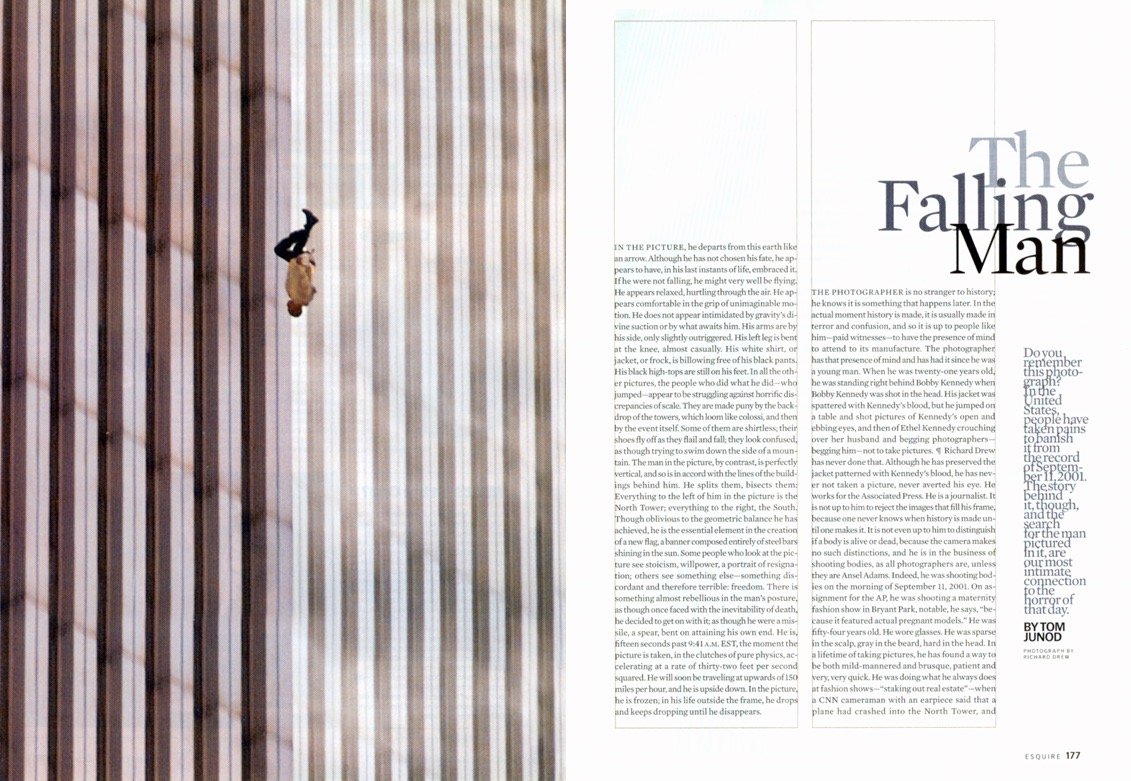



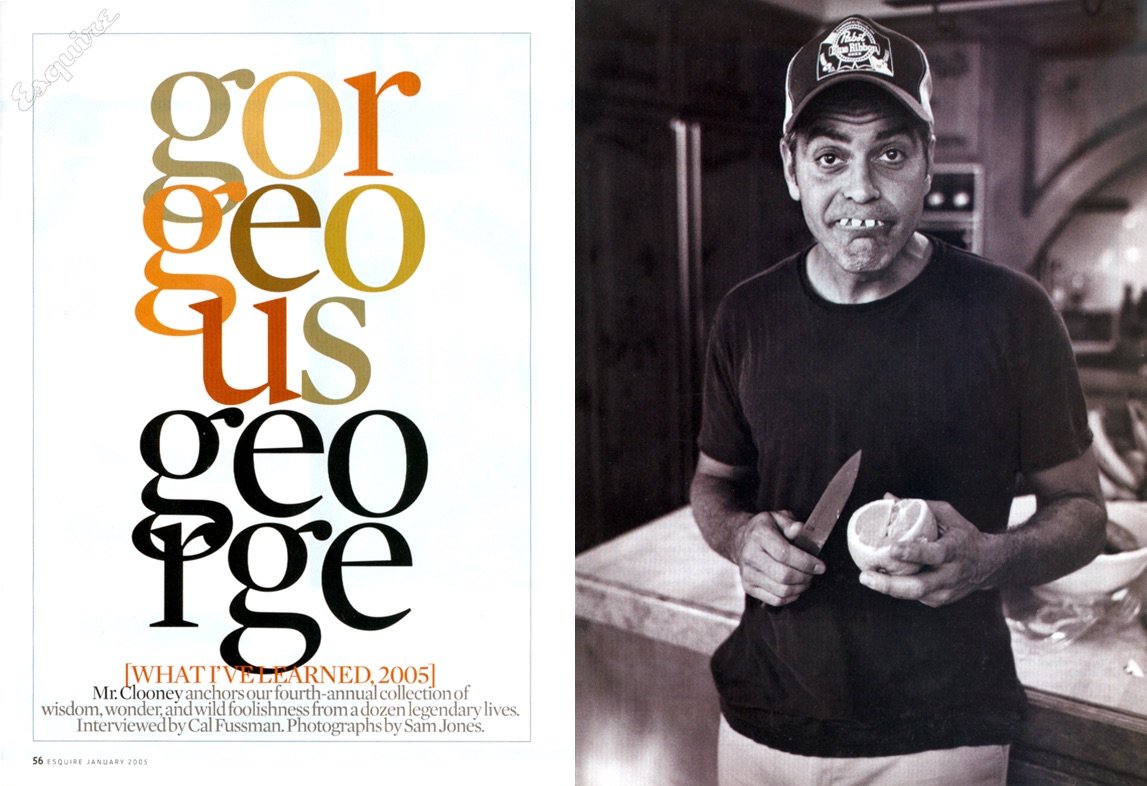
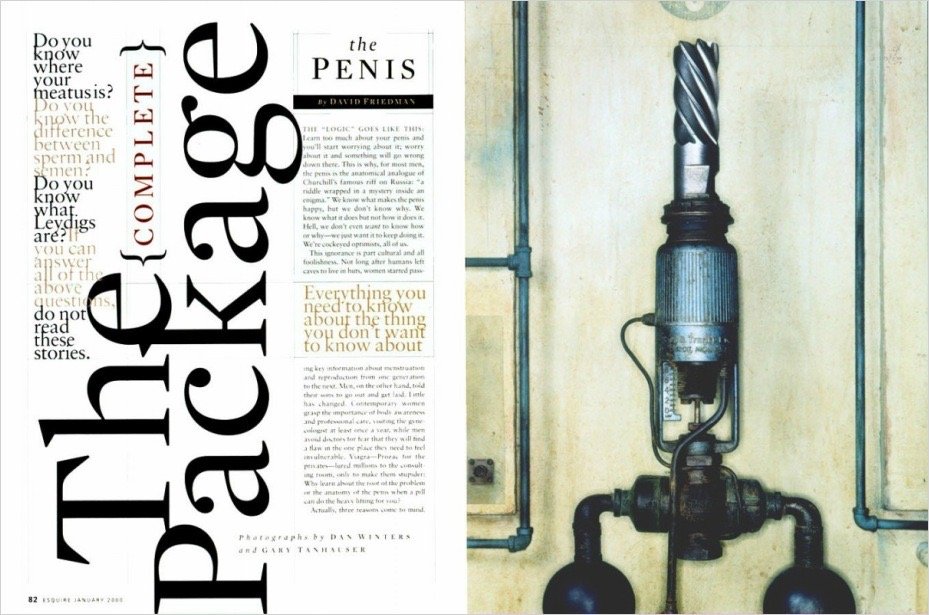
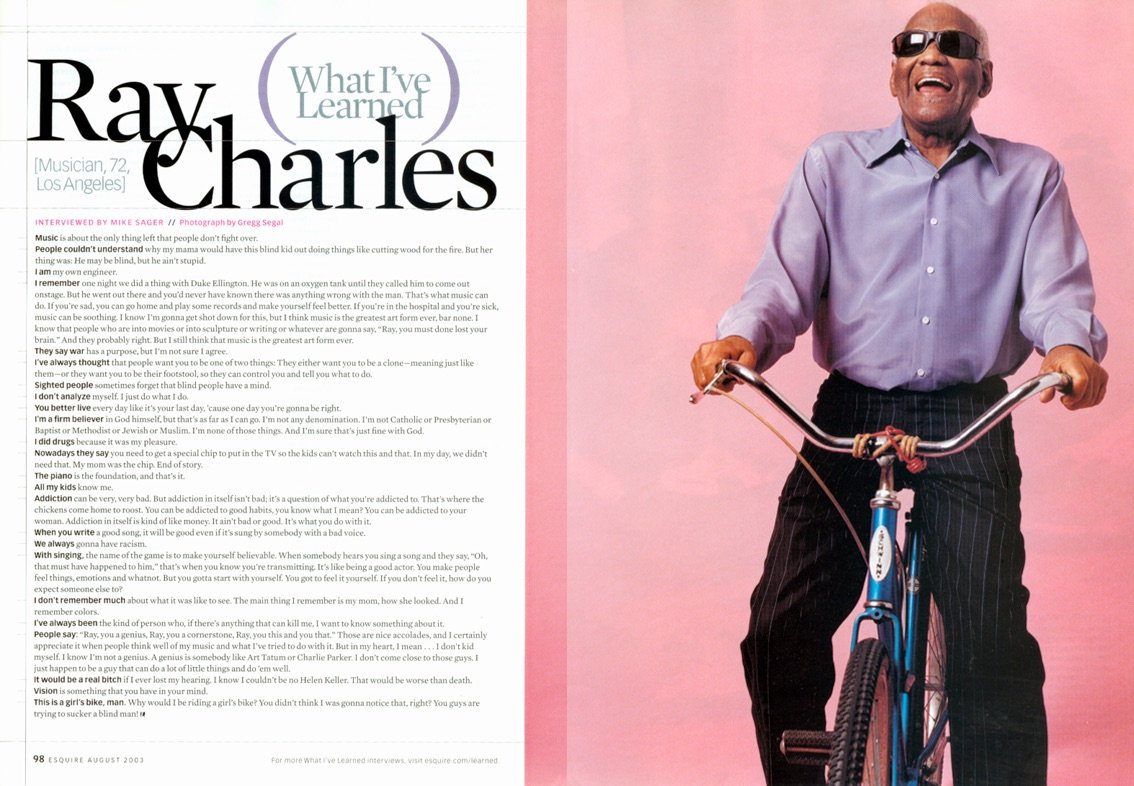
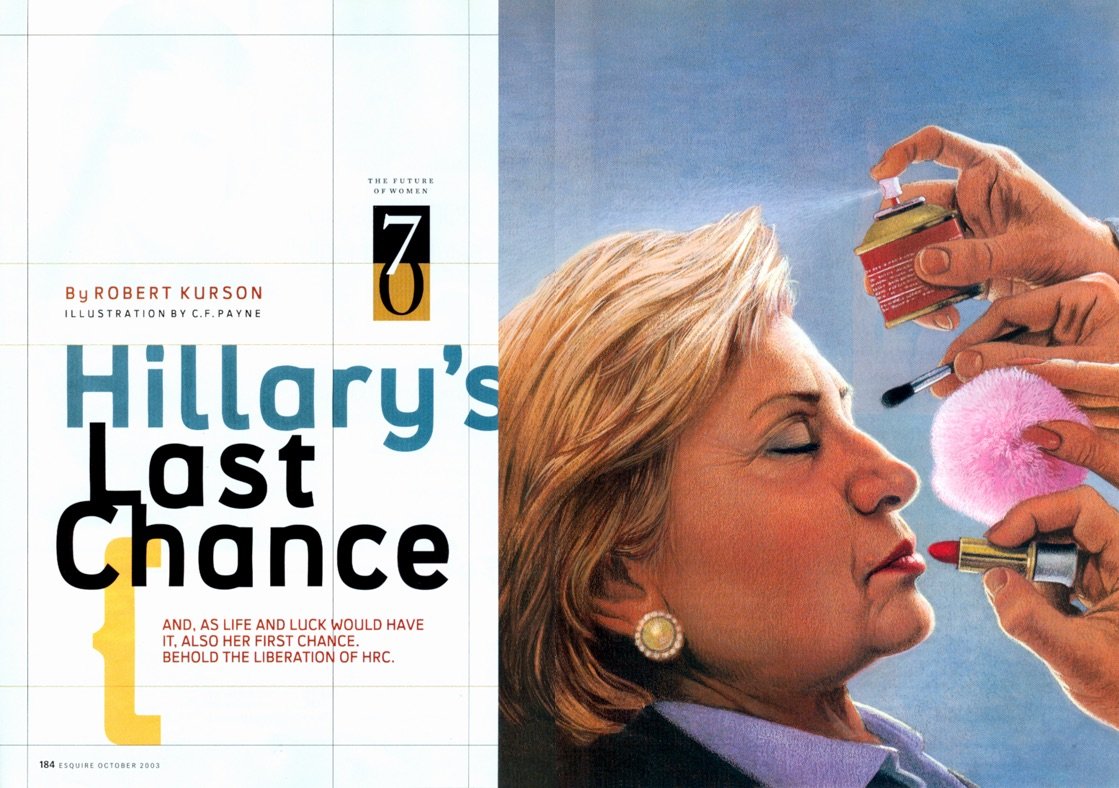
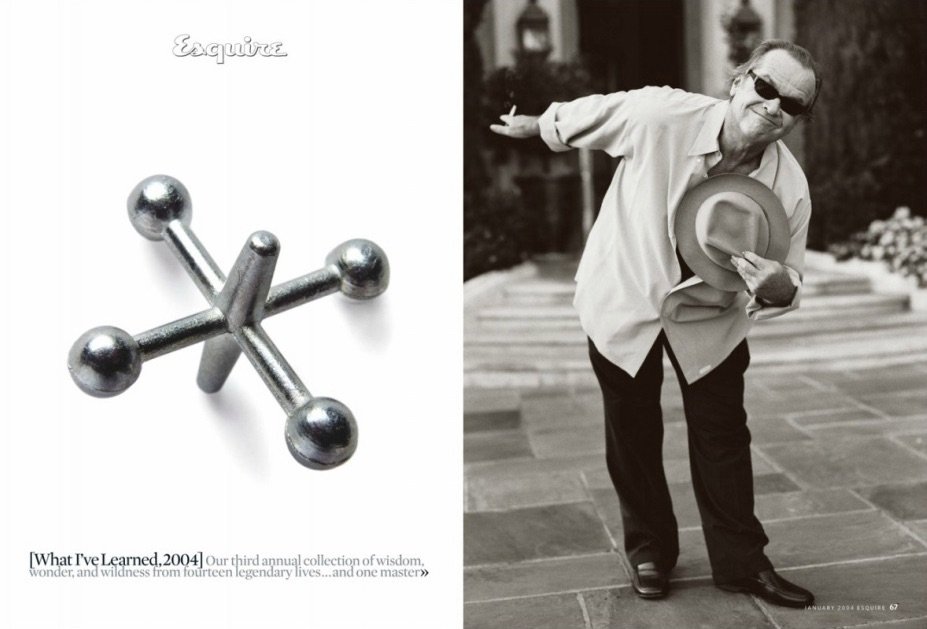

Granger’s early Esquire work
Sean Plottner: Okay, so then let’s get to Esquire. You apparently wrote a letter to Cathie Black.
David Granger: Yeah, I’d been at GQ for five-plus years. I mean, a great opportunity. I got to work with all these amazing writers that I brought into the magazine, but I was eager to try to run my own show and I kept auditioning for editor-in-chief jobs.
Internally I was considered for the Details job, which went to Michael Caruso. I auditioned for a couple of those, including the top job at Civilization, the magazine of the Library of Congress. And my advice to them was they should stop using both the words “library” and “congress” if they were going to have a successful magazine. I don’t think I was offered that job.
But all this time I’d been thinking about Esquire, longing for Esquire. It’d been my first magazine as a man, and I’d kept a very close eye on it. And it was dying when I was at GQ. I mean, GQ was kicking its ass, especially in terms of fashion advertising.
Men’s Health had come on the scene and was kicking its ass in terms of a lot of the lifestyle stuff and active living stuff. It was dying. And it was also badly run. It was not a good magazine. It was very New York-centric. It looked down its nose at its readers. And I read this story on the front page of the business section of The New York Times, about the then-editor of Esquire, and the first sentence was, “Ed Kosner is going to miss this office.”
And it was basically prophesying the departure of Ed and maybe the demise of Esquire. And I’d been watching and longing for Esquire, but that kind of kickstarted me. And I started writing this letter to Cathie Black, who’d just recently become the new president of Hearst Magazines, explaining that I knew three things that none of the previous three editors of Esquire had been aware of. And that those three things were a formula for Esquire’s success.
And so I wrote this letter and just agonized over it. And I was so freaked out about how to get it to her. I didn’t want to give it to the messenger service at Condé Nast, because you know, who knows what happens to it. So I walked it over to the address on the masthead of Esquire. And I just assumed that’s where Hearst was. Of course, they were in a separate building, so I left it with the guys at the desk down there, and only later realized it was the wrong building. Went back and grabbed it from them and took it over to the main tower and left it with someone who eventually got her to Cathie.
And then a couple days later, I started calling her. I just started calling her number and her secretary would say that she’d get back to me. She never did. I’d call again, I’d call again, I’d call again. Finally, at some point she picked up and I said, “Oh, hey, it’s uh, David Granger, I’m an editor at GQ. I wrote you a letter about Esquire. I was just wondering if you’d be interested in talking with me?”
And there was this pause, this long pause. And then she said, “Not really.”
“Nobody who makes $11,000 is buying me a drink.”
Sean Plottner: Oh! Roasted!
David Granger: And then she went on to say that she was very supportive of all their editors and there are no plans for any changes and blah, blah, blah. So I was devastated because I was on the verge of turning 40 and I figured either the magazine was going to go out of business or somebody else would get it. And by the time that person failed, I’d be too old to get the magazine. I had all those thoughts.
But there was no way for me to make another approach. And, like, a year later, this guy started calling my office. Ed Kosner got fired and some guy named Michael Wolf kept calling my office. He wasn’t the media guy. He was a consultant who worked for Booz Allen Hamilton, and I didn’t know who he was, so I kept telling my assistant to take a message.
He called like five times. Then it was 5:30. My assistant was gone, and the phone rings. I pick it up and he says, “Oh, it’s Michael Wolf.”
And I said, “Oh, I’m so sorry I didn’t get back to you. How can I help you?”
He said, “I was just wondering if you wanted to have lunch with Cathie Black tomorrow.”
I was like, “I’m really sorry I didn’t get back to you!”
And the next day I had lunch with Cathie. And it was one of the most intimidating lunches I’ve ever had. It was in the corporate dining room at Hearst, and there was a guy with a thing in his ear and I thought he was, like, security or something. Turns out he was just the guy who ran the dining room. I was intimidated! And we go in and we sit at William Randolph Hearst’s boardroom table on the corner, with waiters and all this kind of stuff. And it was fantastic conversation, like an hour and a half. Really intense.
But at the end of it she said, “Well, do you have any thoughts?”
And I said, “Yeah, I’m just glad I wrote you that letter.”
And it was clear to me she had no idea what I was talking about.
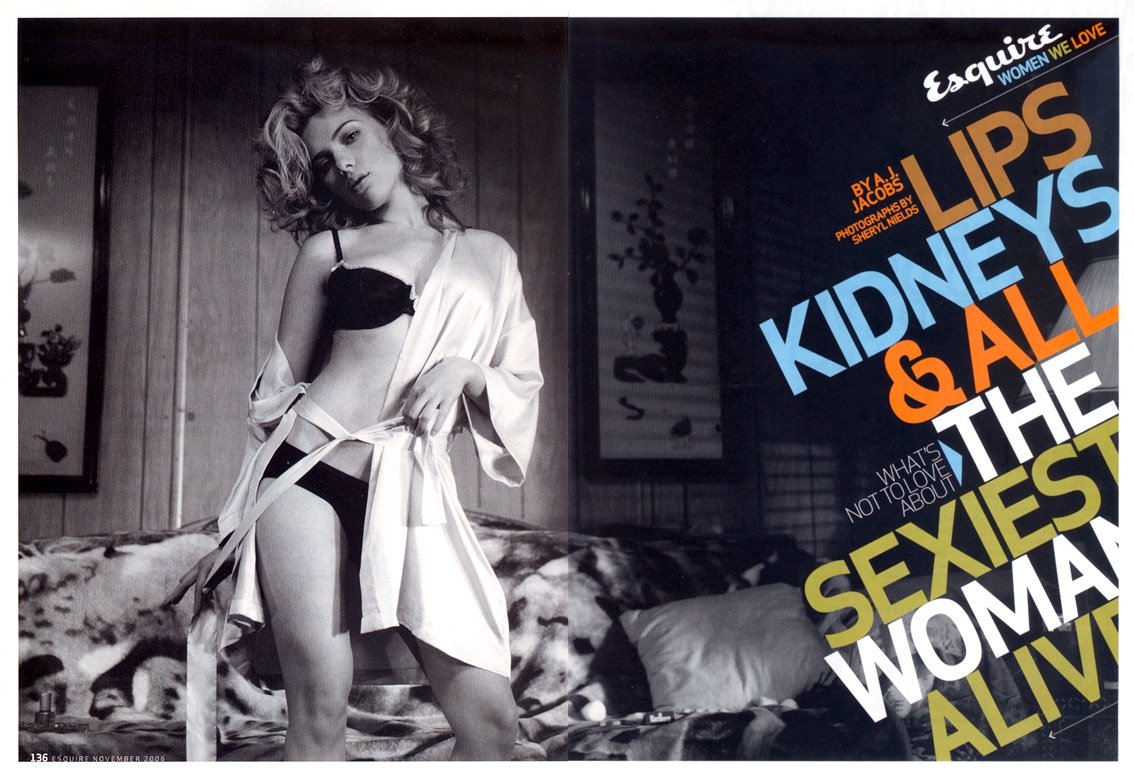
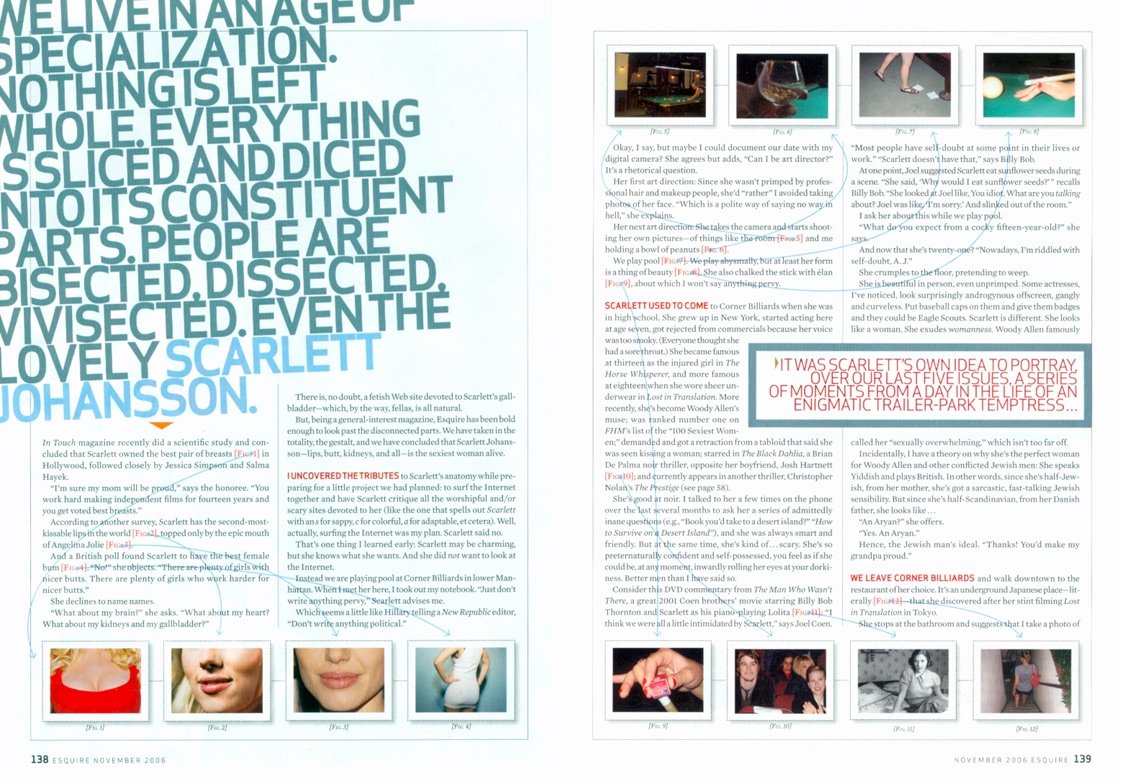
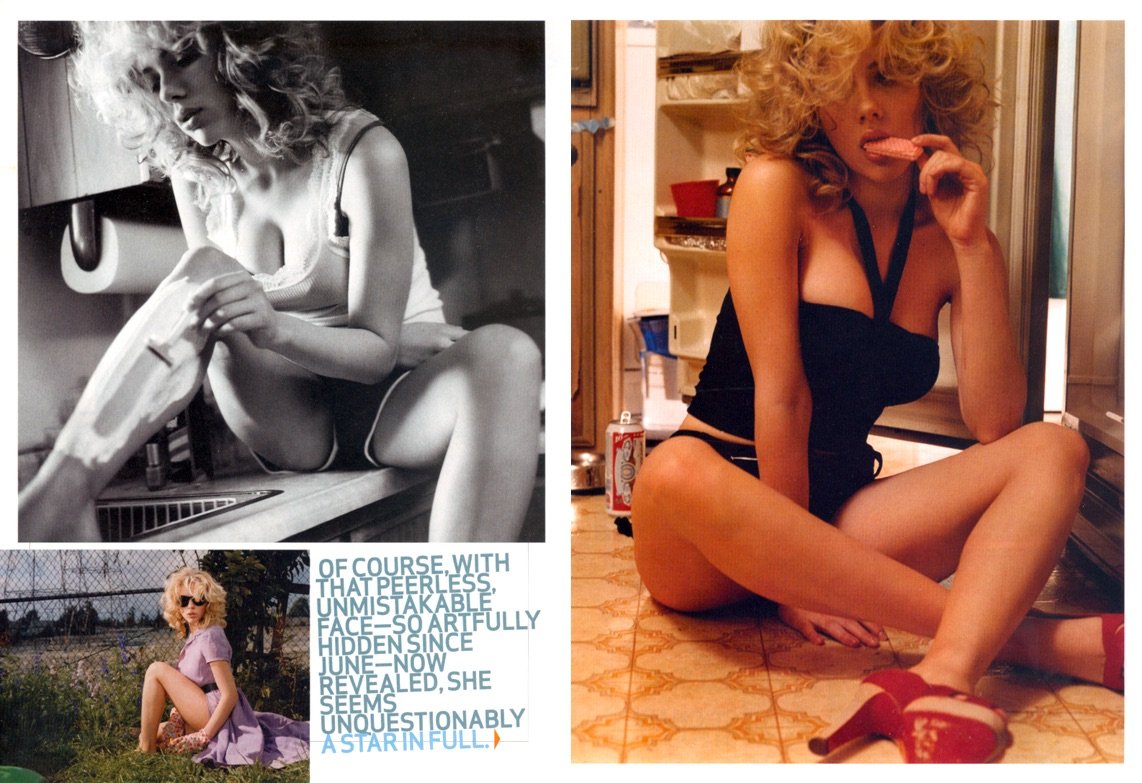
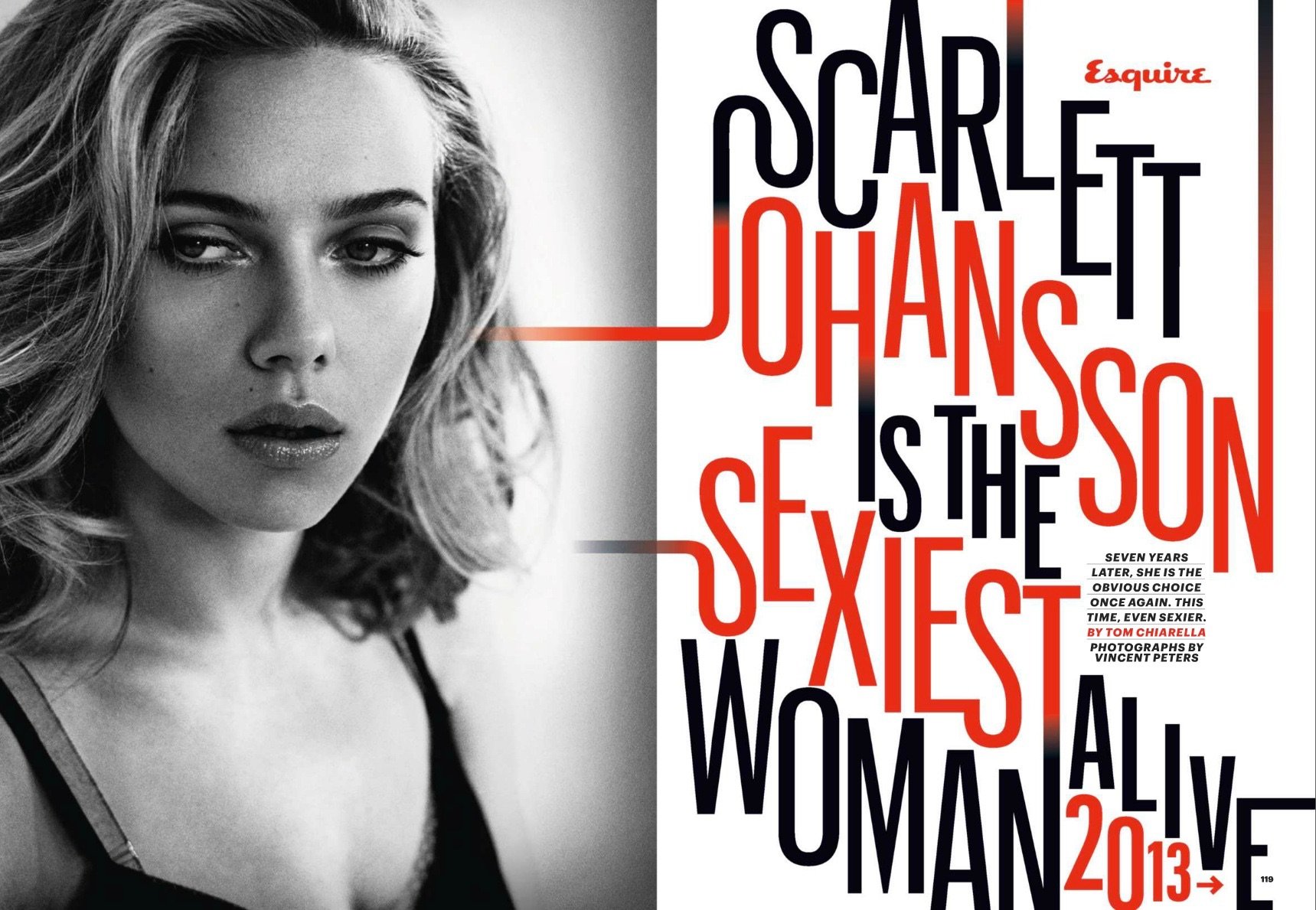


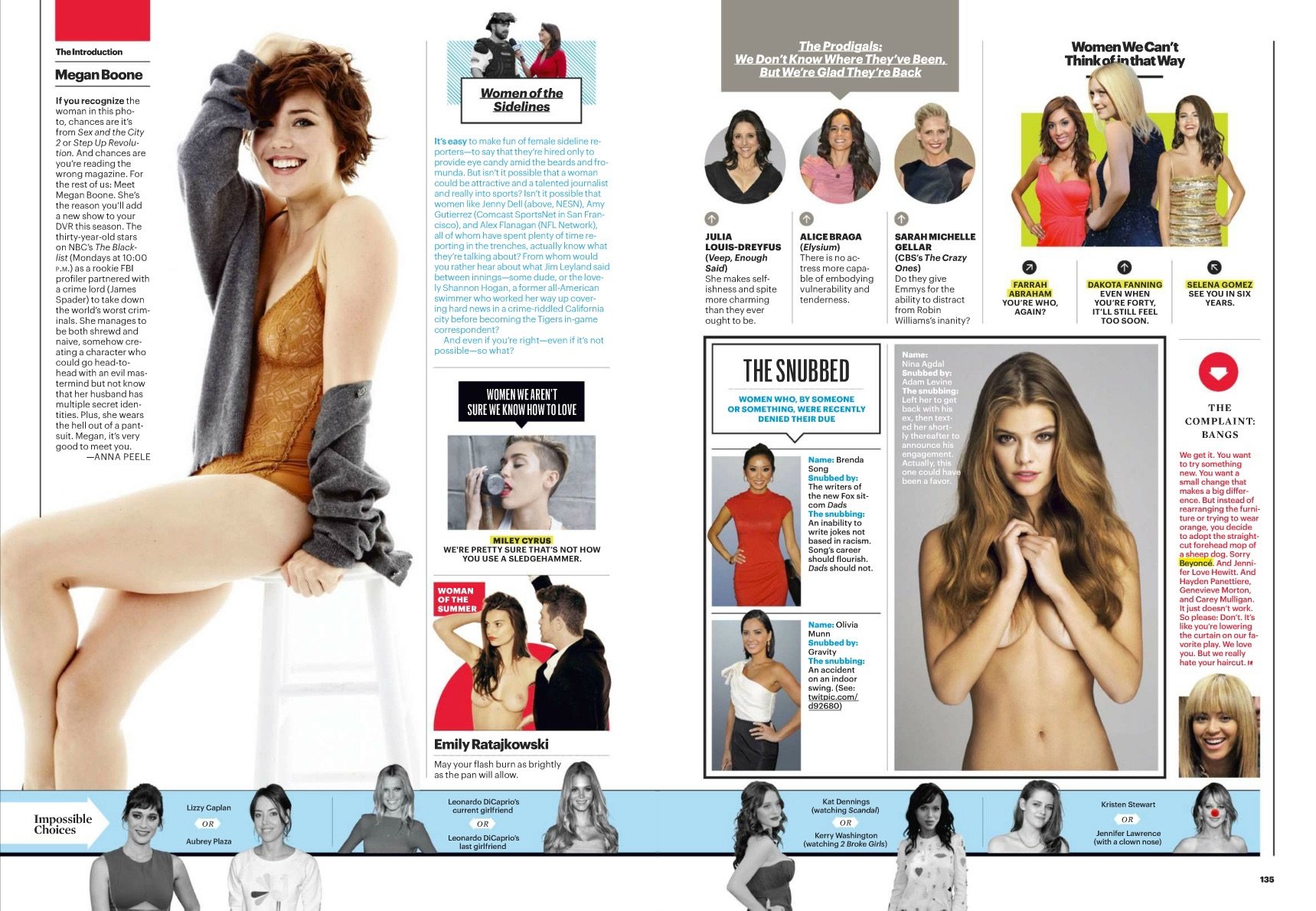
Sean Plottner: Wow. Those three things didn’t matter. Whatever they were.
David Granger: I don’t remember what they were, but they found the letter later and it became part of their PR that I had had the gumption to write this letter.
Sean Plottner: Yep. Yep. It’s a rags-to-riches story. So you get to Esquire, you’ve got the job. Pretty exciting I would imagine.
David Granger: Yeah, it was my life, man. I was 40 years old.
Sean Plottner: Well, and you saw a magazine that was broken and needed to be fixed. You had a plan, you fixed it. What did you learn quickly that maybe you hadn’t been told about that job? What were the big surprises, if any?
David Granger: Before I got into that job, I knew exactly what I needed to do. Cathie had asked me to write up a plan and part of that plan was I had to write and annotate my first three tables of contents. I had to explain my cover strategy and what my first three covers would be.
All this kind of stuff I knew exactly what to do. But you get in there and you start having meetings with circulation people and ad salespeople, and they all know exactly what you’re supposed to do. And it’s not anything like what your idea was. You know? It’s like they know because all these things have been tried over and over again for 60, 70, a hundred years.
They know exactly what doesn’t work. They just have no freaking idea what does work. But the thing that any young editor is going to be faced with is that everybody second guesses you. You have two issues when they go, “Oh, that’s interesting. And that’s interesting.” And then on the third issue, it’s pure second guessing. Every meeting is called to tell you what you’re doing wrong.
And that’s the thing you don’t understand. You think you’re going to get a long runway. And you get to execute. And really for the first couple issues, the cupboards were bare, man. There was not a single story! We were supposed to be putting out the fashion issue. There hadn’t been a single fashion portfolio shot. There was not a cover planned. And we had, like, four weeks to get that issue closed. We had to beg, borrow, and steal.
So any thought you have that you’re going to plan anything is—and then of course, I fired everybody the first day I got there. And so I had like four people helping me try to put out a magazine in four weeks.
And so it’s just pure panic. And then you’re getting second-guessed every day of your life. So it takes a while and you have to be under the threat of being fired, before you just decide, “I’m going to do what I’m proud of because I’m going to get fired anyway.”
But, luckily, I made a couple of good hires. I hired Peter Griffin, who is the smartest man alive, the best editor I’ve ever worked with, and he agreed to come on on a temporary basis. And then I hired writers, basically all of whom moved over from GQ to Esquire. So I had a core group of people that I could bounce stuff off of. And then Lisa Hintelmann came over from GQ and I finally got Helene Rubinstein, who was at another Condé Nast magazine, to come over.
And we assembled a little core of a support group and things started to happen. But it was like three years before anything good really happened. And I’ve got to tell you, I guess there was a little bit of patience, but that patience ran out by the time of my second budget meeting. My first budget meeting—I got the job in June and the budget season always starts in September. So a year from that first September, I’d done 15 issues and we’d done a couple questionable covers. But the cover that was on the budget book was my Mr. Rogers cover. It was like Fred Rogers. This was a long time ago. And it was shot by Dan Winters. So it was an eccentric photo. And it was Mr. Rogers. I mean, it was Mr. Rogers.
It was the Heroes Issue. And it was a really good issue. But we got into that budget meeting, and we go through it, and everything’s fine. And Cathie says to my publisher and everybody else, “Valerie, you guys can go. David, would you stay for a minute?” And she and her number two, Mark Miller, are sitting there and they pick up the Fred Rogers cover and they go, “What the fuck are you doing?”
Sean Plottner: Wow. Welcome to the neighborhood.
David Granger: Yeah. And that was when I realized that I was not long for Esquire magazine, but I managed at that point to kind of nut up and do the things that I really wanted to, and the things that I thought Esquire should be doing. And I got a little more time and things really started to turn around. It took two years, but things started to turn around.

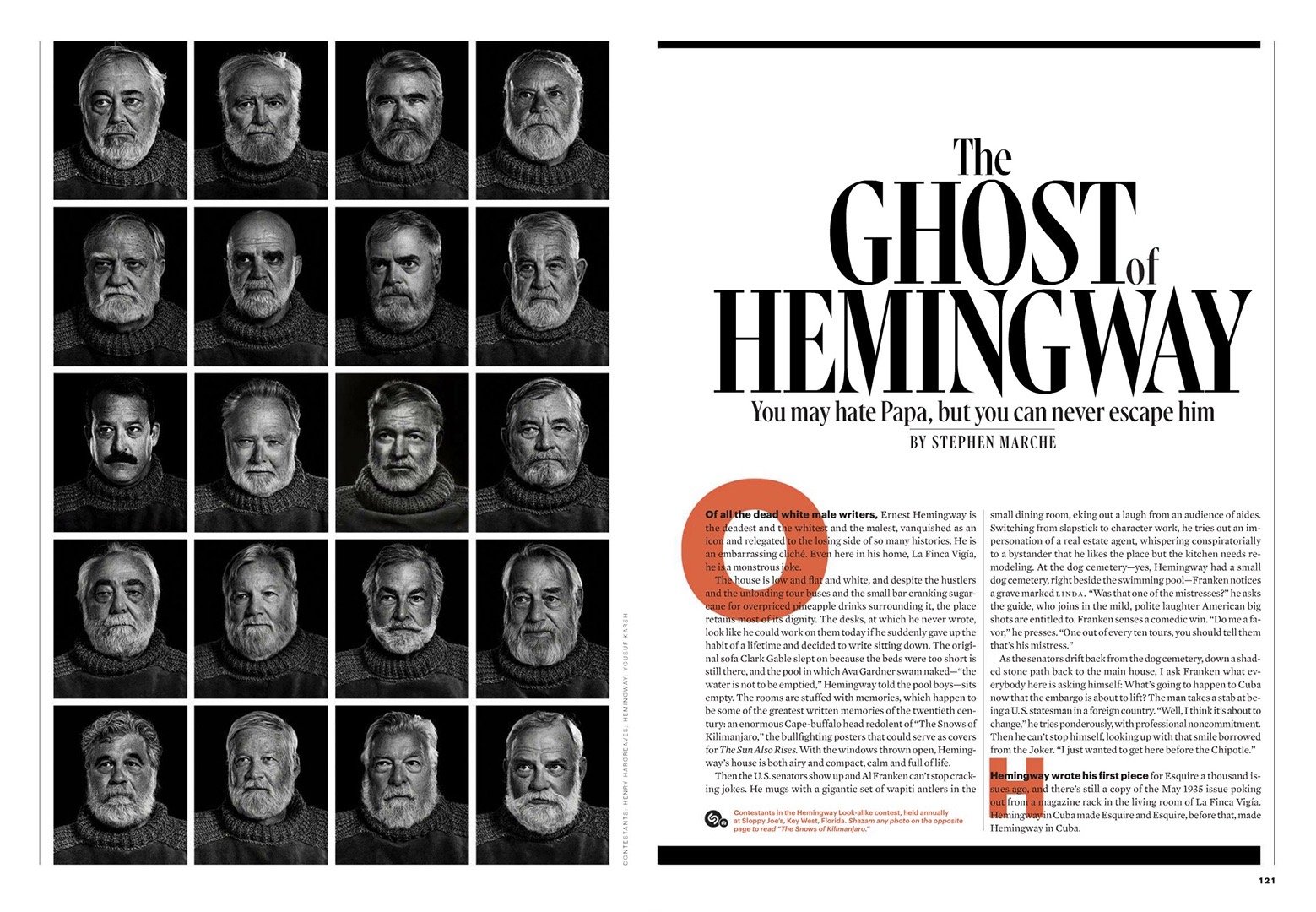

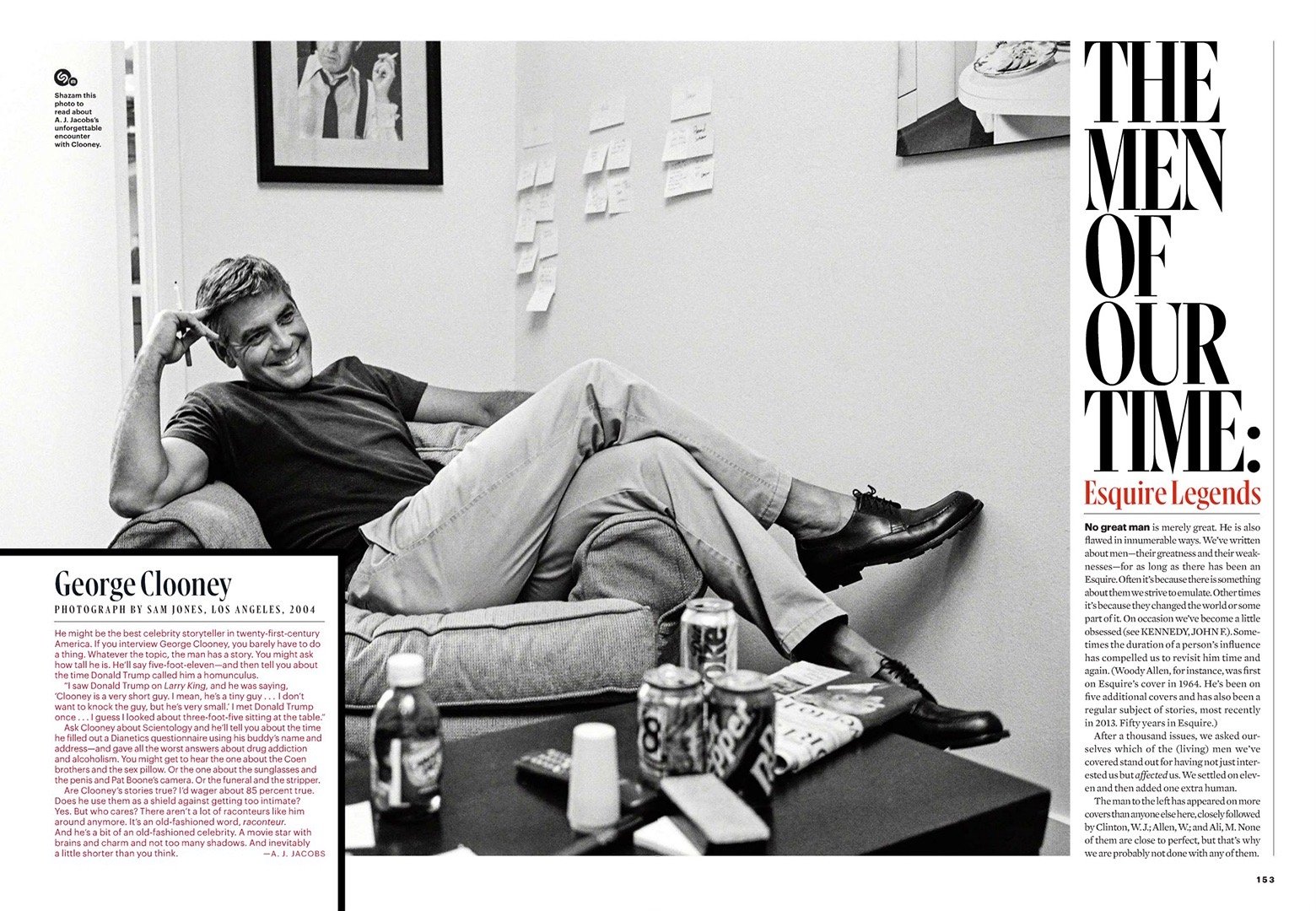
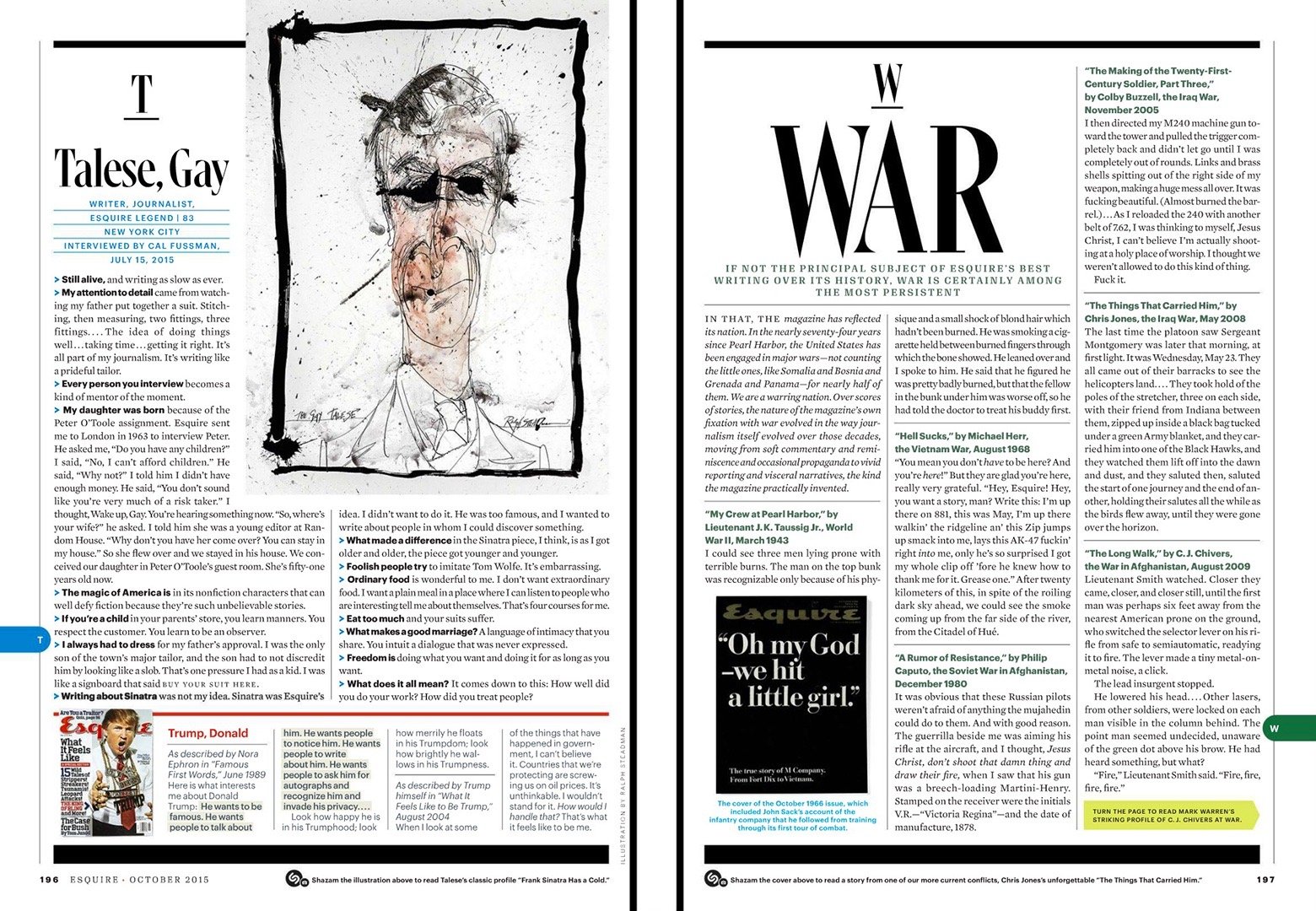
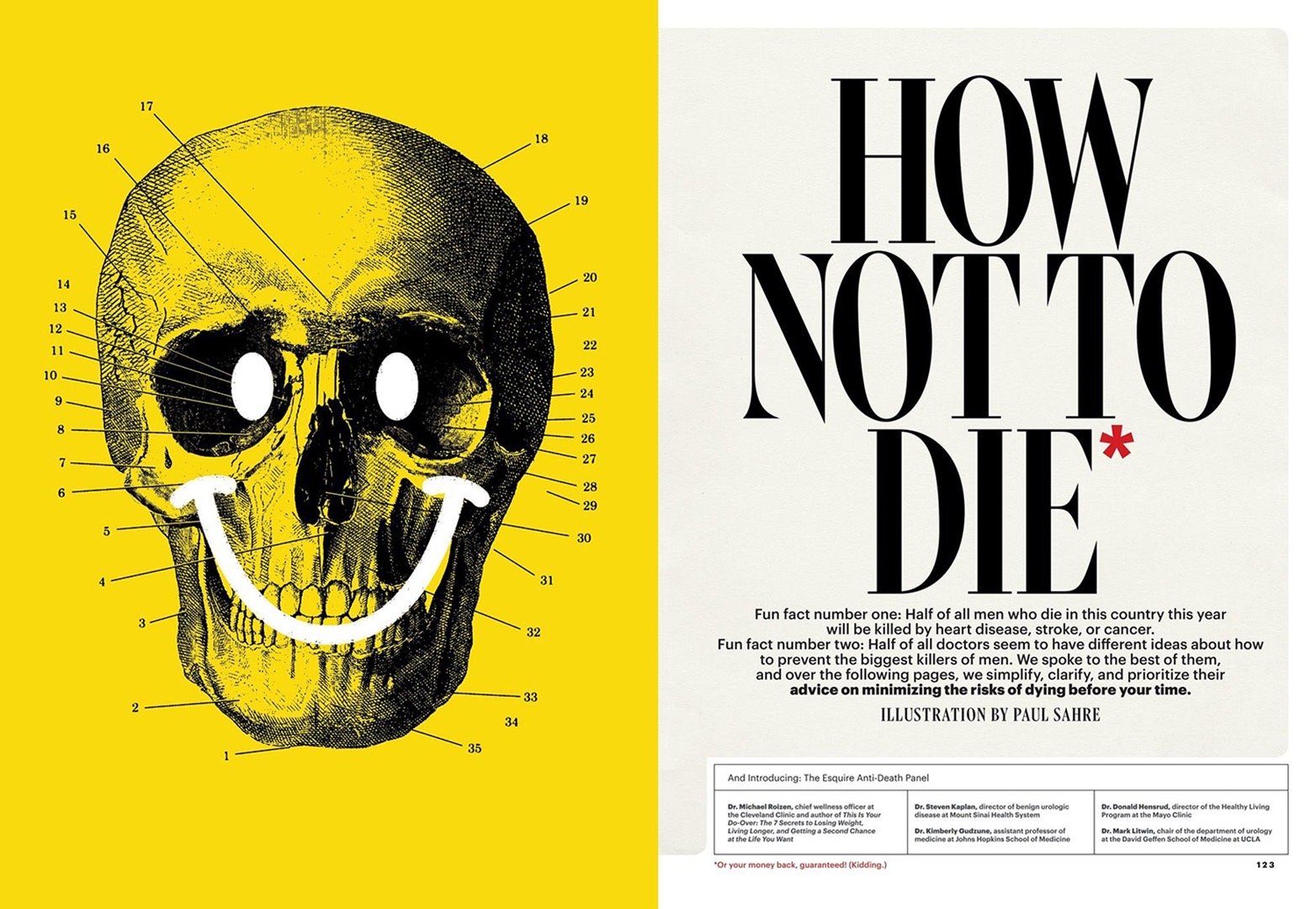
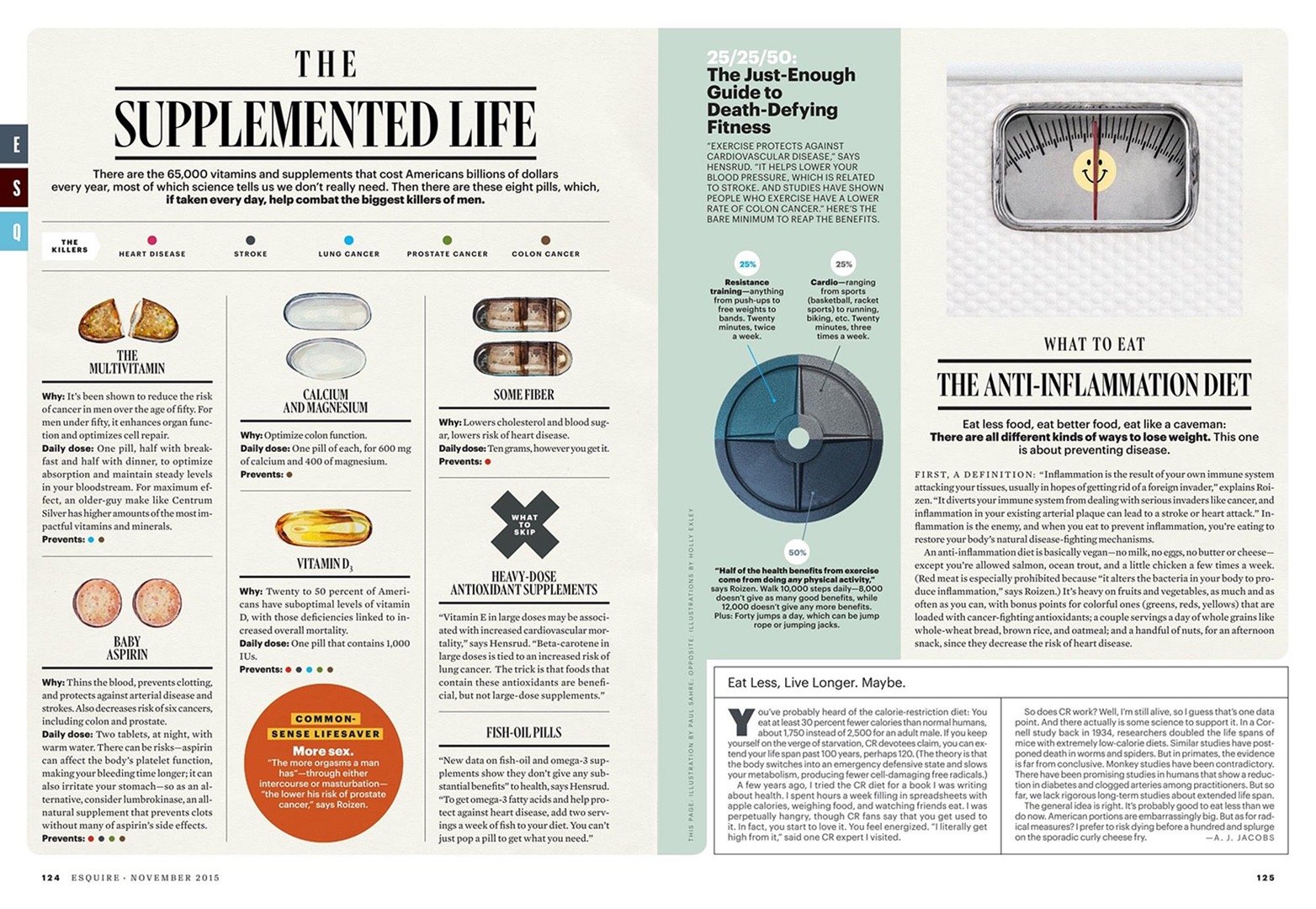
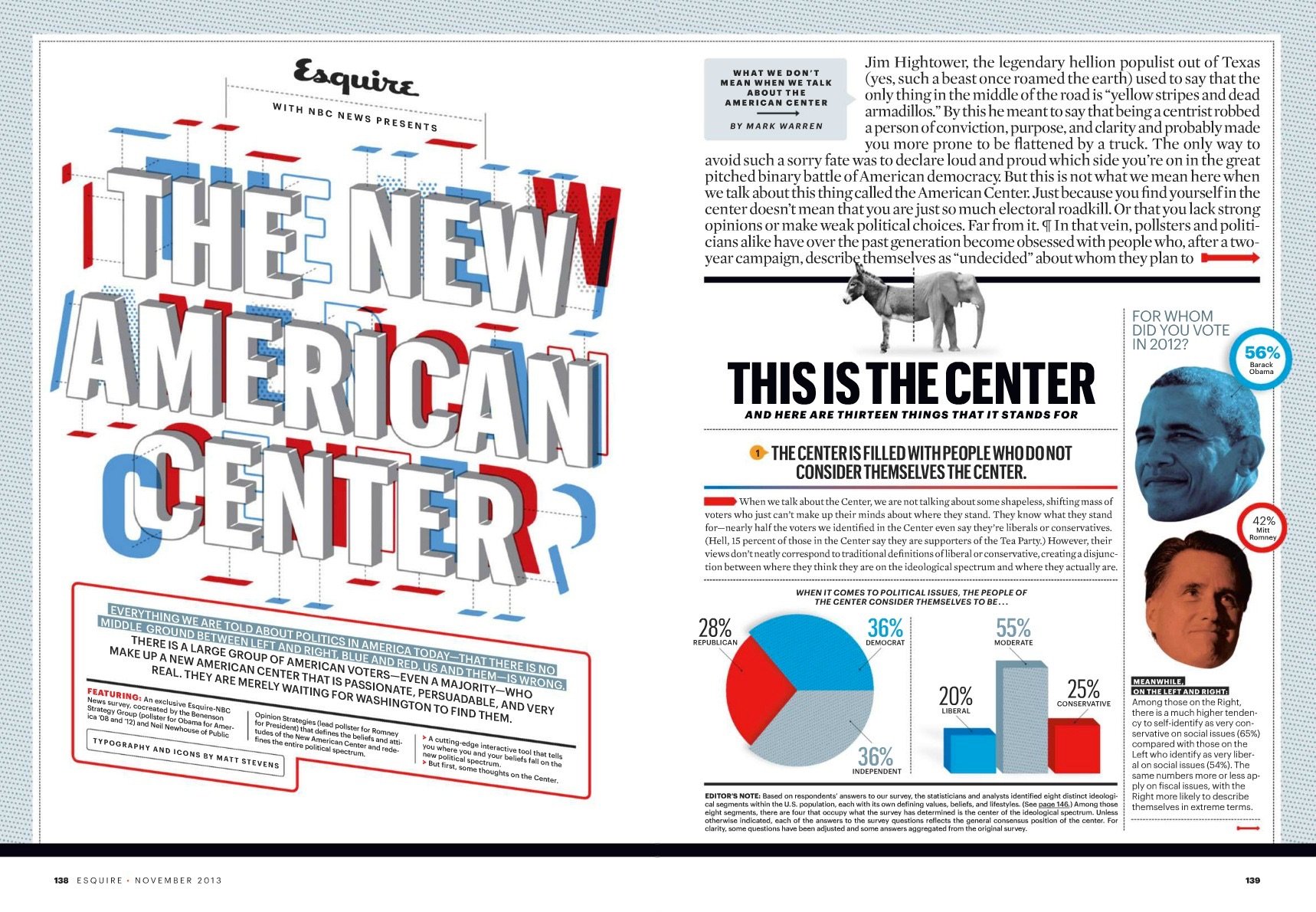

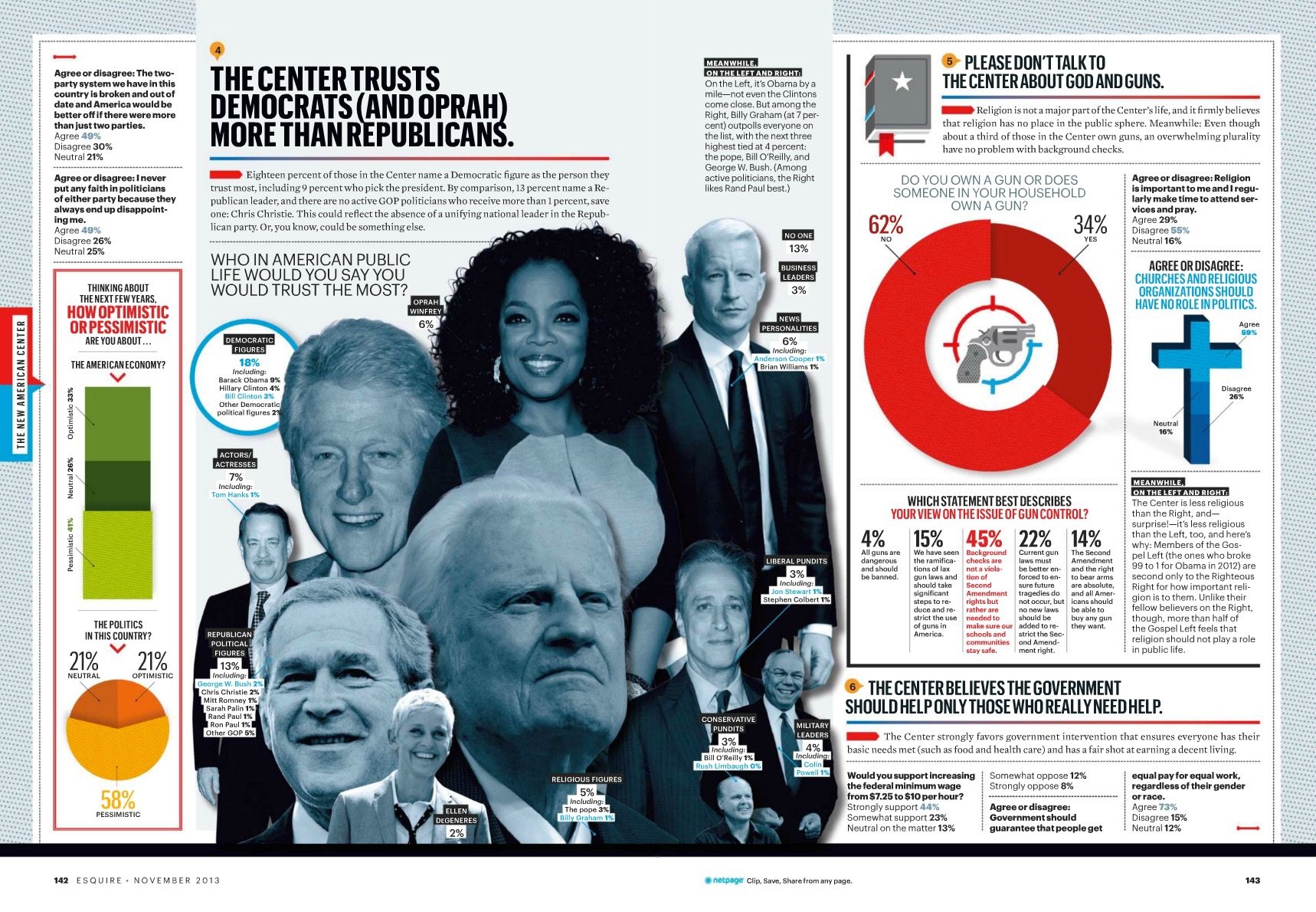

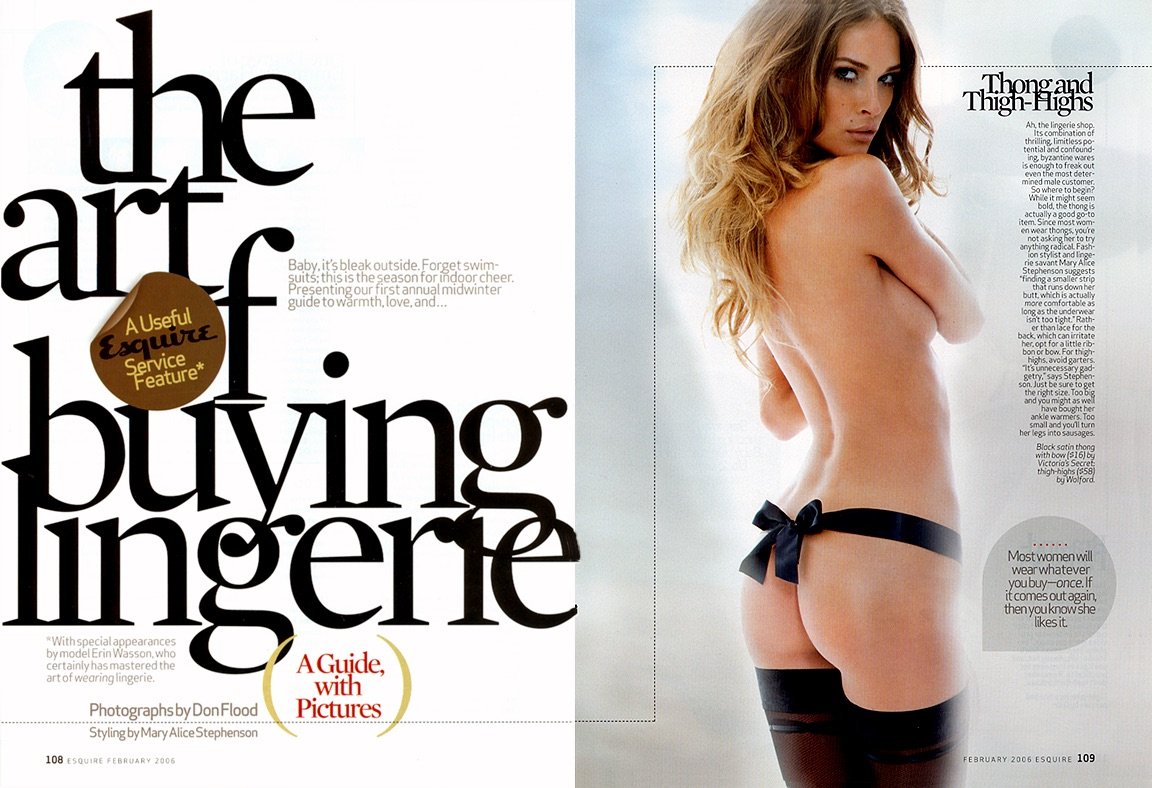
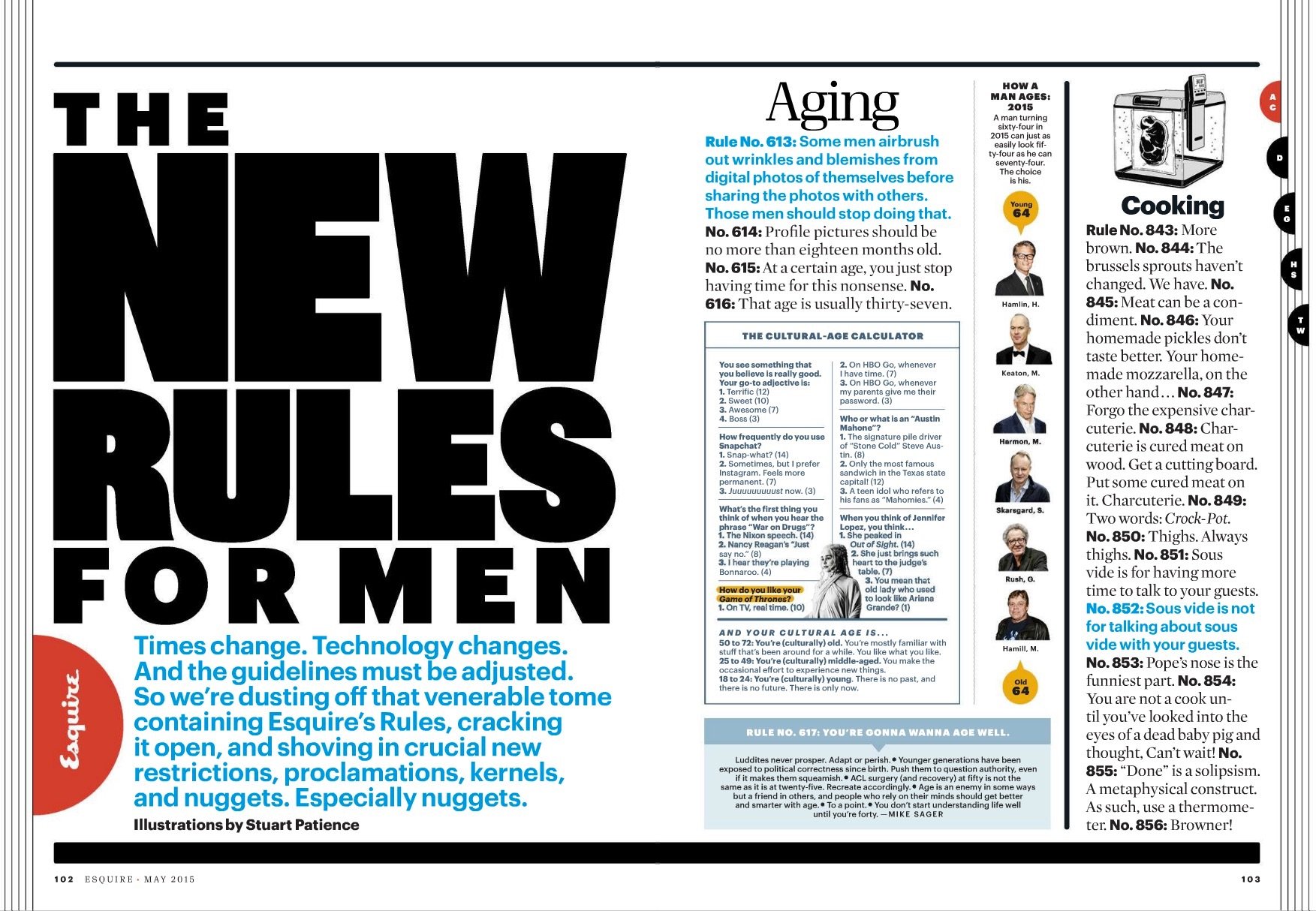


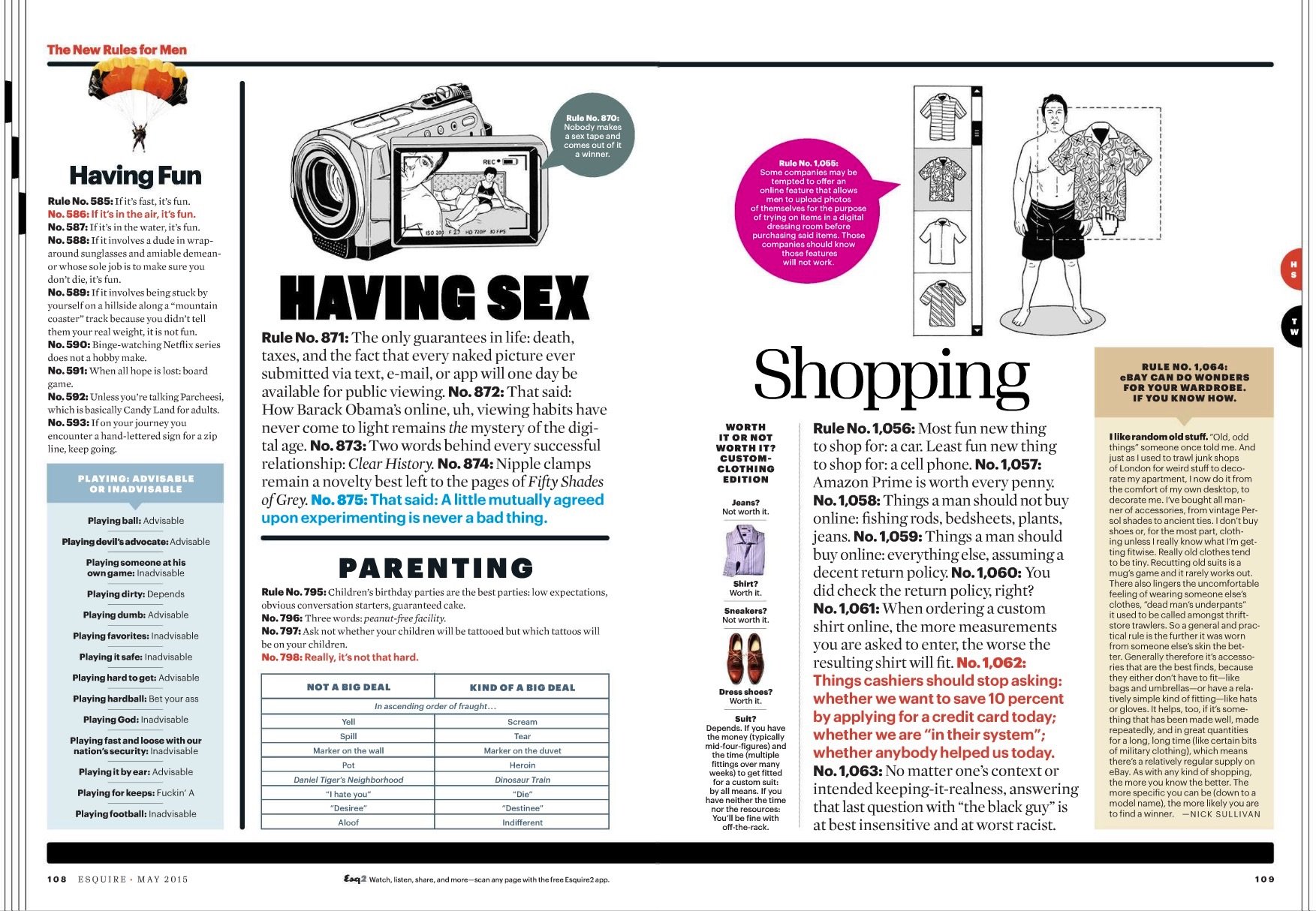
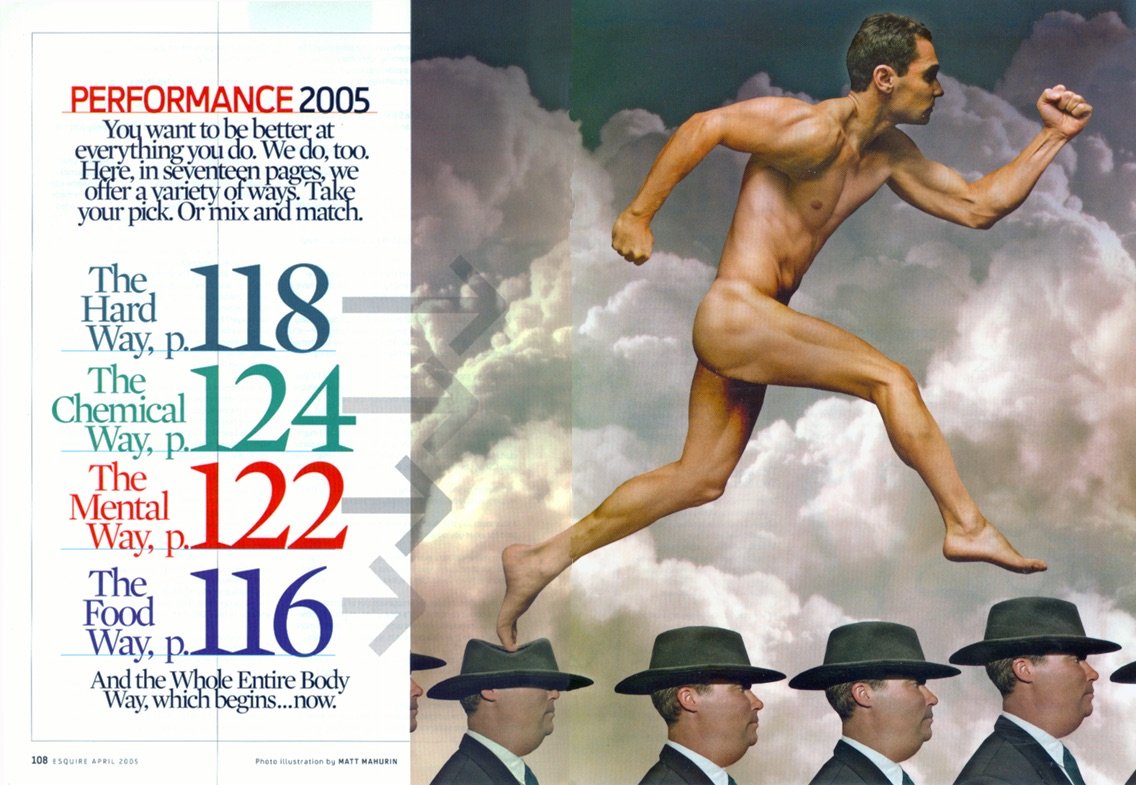


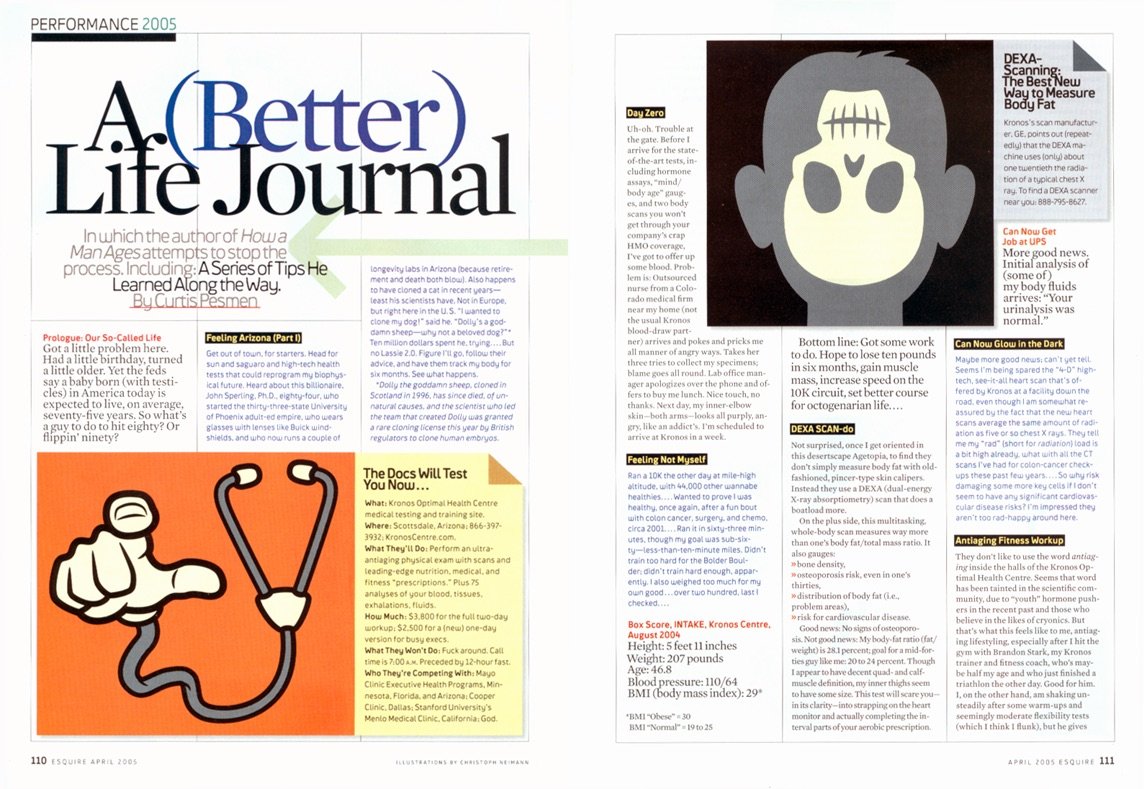
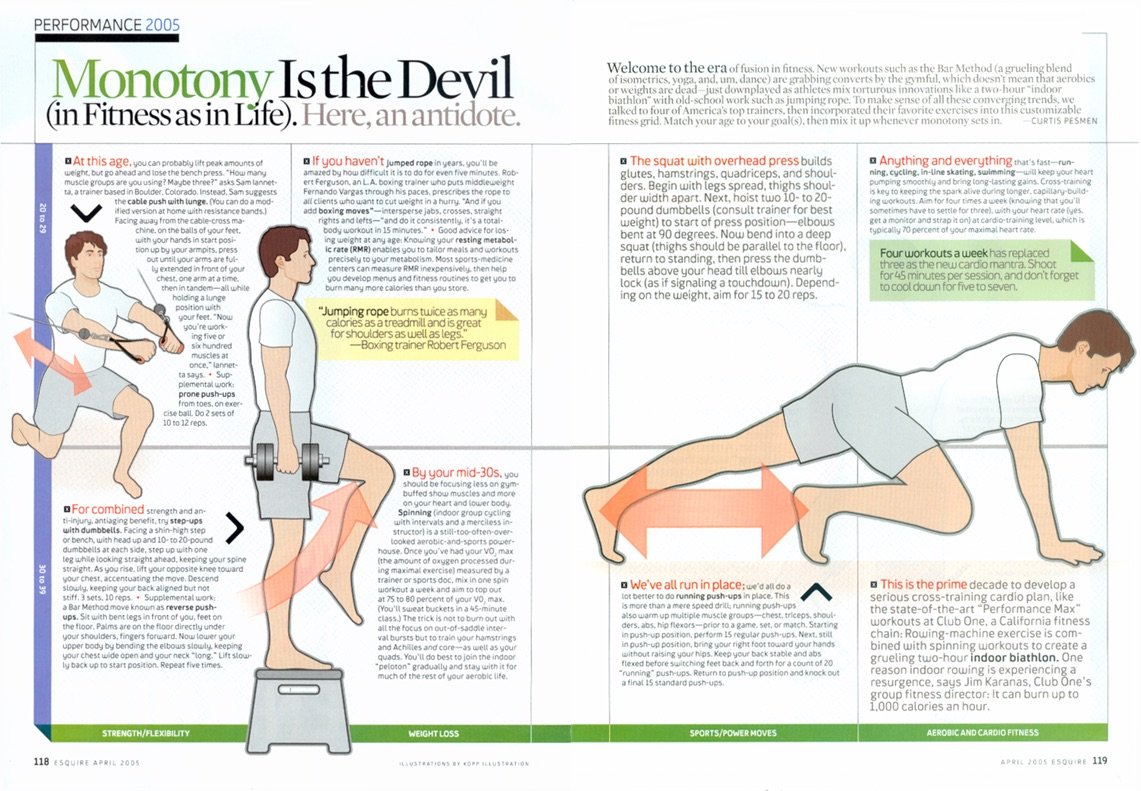
“We decided to make Esquire the laboratory for trying to figure out what a magazine was capable of beyond what magazines had traditionally been capable of.”
Sean Plottner: That’s interesting about having such a detailed plan, knowing what you wanted to do. It reminds me of the old [Mike Tyson quote], “Everybody has a plan until they get punched in the face.”
David Granger: That’s exactly right.
Sean Plottner: Yeah. And that’s very interesting that you had to create your own table of contents. That’s an intriguing exercise.
David Granger: That was an amazing weekend. She gave me that assignment on the Friday of Memorial Day and told me that she wanted it on Tuesday. And it wasn’t just like the TOC, it was, like, marketing plans for Esquire. It was staffing plans. It was an intense weekend. But luckily I’d been up for the Details job, I’d been up for the Civilization job, a couple others, and I had all these plans I’d written up for those people.
So I scavenged those and then I called all my writers, took them into my confidence and begged them for ideas. It was an intense weekend. But it’s helpful to have a plan, even though pretty soon that plan’s no longer of any use.
Sean Plottner: Yeah. The punch in the face. You mentioned Helene Rubinstein—I haven’t been shadowing you your entire career, but Helene hired me when I made my big move from Knoxville to New York. She hired me in 1989 at US Magazine.
David Granger: Wow.
Sean Plottner: I became a music editor and worked there for a year or so before I went over to The National. So, interesting how different paths have crossed. What was your favorite part of the job as editor of Esquire?
David Granger: There are a lot of things to love. I loved having access to most people that I wanted to talk to. I loved working with writers. I loved having a full-time staff of, like, 40 people, and then another 10 or 15 people who were regular contract people who came to me every day with stuff I should be reading, or stuff I should listen to, or ideas for what we should do in the magazine.
People were incredibly passionate about working in Esquire, but ultimately, I think starting in 2006, I love the fact that we just decided to make Esquire the laboratory for trying to figure out what a magazine was capable of beyond what magazines had traditionally been capable of.
And that was 2006. And that was just as everybody was saying that the internet was going to destroy all forms of print. And we just had to prove that that wasn’t true. And so we used things like the internet to drive more people to the magazine. We played with all sorts of insane technical innovations like the first magazine cover on which words and images moved.
Esquire’s 75th anniversary issue featured a groundbreaking “e-Ink” cover
“We just started playing with the physical properties of the magazine—paper and ink and words and images—and just seeing what we could do.”
And that was in 2008. We did the first augmented reality issue of a magazine. But even more than that, we just played with what a magazine was capable of inside. We used every bit of the magazine, like nobody since Mad magazine used the margins. So we started using the margins. We published an entire short story in the bottom margin of the magazine one time.
We just started playing with the physical properties of the magazine—paper and ink and words and images—and just seeing what we could do. We once did three covers on this issue about the State of the American man, and we had images, up close facial images, of Justin Timberlake, George Clooney, and Barack Obama, all shot by Martin Schoeller. And we perforated the three of them so you could just tear them apart and create 27 different faces of what the American man looked like. I mean, it was simple stuff, but nobody did it.
And we just had a billion freaking ideas. We created our own apps to turn magazine content, not web content, into something that could be shared on Twitter or emailed or texted or whatever. It was amazing the amount of video we did, especially when we had the iPad app and the iPad was going to be the “salvation of magazines.”
We did movie trailers for every issue—of a print magazine! We just had so much fun. And I think the ability to just play with possibility was the best thing about my job—and the people who helped me with it: Peter Griffin, David Curcurito, my design director, Rich Dorment, and all the young editors, Ryan [D’Agostino] and Ross [McCammon] and Tyler Cabot, and everybody.
It was just a laboratory man. It was fun.
This 2009 cover was the world’s first “augmented reality” issue. Below, an introduction to Esquire’s new iPad app.
Sean Plottner: Yeah, that’s a wonderful way of putting it: Playing with possibilities. You certainly did, it was fun, innovative. I remember your iPad app—if it was even called that when it first came out—was extremely innovative for its time. The digital cover. Very interesting and fun stuff.
How hands-on were you with copy? Writing headlines? Captions? Did you have people doing all that and you’re signing off on it? What was your role with that?
David Granger: It depends on what kind of copy. I was very hands-on with the little stuff because the little stuff is the most important stuff.
Of course, headlines and subheads are incredibly important because that determines, in a lot of cases, whether people are going to read anything. But, like, captions, and all the little tiny items that are in the front of the book, and all the marginalia we started doing. That’s the stuff that everybody’s going to read because it’s short, it’s easy.
And there was a guy who ran Entertainment Weekly named Jim Seymore—back in the nineties, I guess—and it was one of the great magazines because he demanded such excellence from all the little stuff. I remember admiring that so much. The big stuff, it’s hard in its own way, but it’s the little things that people are going to remember or they’re going to enjoy and it establishes not just a voice, but a whole environment of entertainment. You want a magazine to be an enjoyable entertainment experience and it’s those little things that do that.
When it came to feature stories, Peter Griffin and I—Peter had worked at Time Inc., and you know that was editing by committee at Time Inc. A story would go through three layers, at least, of editors before it hit the page.
And Peter and I wanted our editors to be responsible for their own stories. Their writers had to see them as the ultimate arbiters of it. That’s what we wanted. We backstopped them. Peter did an amazing job helping people with their edits on things. And I read and approved everything. And sometimes I was hands on.
By the end I was only editing one or two writers full-time. But I read everything and, if necessary, I would try to help. But yeah, I was pretty hands-on on everything. Especially anything that was display. Like working on covers? Best day of the month. Me and Curcurito and Griffin would sit in Curc’s office, order lunch, and sometimes that day would stretch into three or four days.
But those were the funnest days ever. Especially because covers always suck. They suck and they suck and they suck, until they don’t. You know? At some point they stop sucking.
“We just loaded it up. The type became the point of the cover. It was like, ‘This is a magazine of ideas and words. Let’s show that on the cover.’”
Sean Plottner: Tell us about how you guys came up with those crazy type covers. I think that was starting around 2006. The wall of type.
David Granger: Yeah, that was right around that time. It was like 2006. So we had this guy, Daniel Craig, who was going to be on our September cover. And it was a big chance—that was before he’d become Bond. The reason we’re putting him on the cover was because he was going to be in his first Bond movie. And the word out of England was: “This guy sucks.”
So we do a photo shoot with him and the photos are miserable. The guy has one facial expression: these pursed lips. And I’m thinking, “This is a failure!” But on the other hand, I looked back at the cover before it, and it was just one of those “magazine” covers. John McCain was on the cover, and it had a number on it, and it had some traditional magazine cover lines.
And I was so sick of that. And I knew Daniel Craig was going to fail because he was going to be the worst Bond ever, and he had this pursed-lip look on his face, right? And so I went into Curcurito’s office and I was like, “You’re going to have to save this.”
And he goes, “What do I do?”
And I go, “Look, I want you to create something that looks like the Vietnam War Memorial behind Daniel Craig. I’ll give you all the words. You just create this wall type and I want it to look like the Vietnam War memorial.”
And he goes, “Okay, okay. Give me the lines.”
And I wrote all these sentences. They weren’t sentence fragments, like most cover lines are. They were full, complete sentences like, It’s been five years since 9/11 and nothing’s happened. And we’re still pissed off. Lines like that. You know, like full sentences. And I gave all these lines to Curc. And it’s a lot of words. And about an hour later comes into my office and he goes, “I don’t understand.”
And I go, “Come on man, like the Vietnam War Memorial.” And I stand up in front of the wall. And I’m like, “Just words all over.”
He goes, “I’ve never seen the Vietnam War Memorial.”
And so we started calling up pictures of Maya Lin’s masterpiece. And he was like, “Oh.”
And so he started doing that. And then he varied the sizes of the types and the emphasis. And we created this wall of type behind Daniel Craig, and it did amazingly well.
And for the rest of the time we were there, with certain exceptions, we just loaded it up. The type became the point of the cover. It was like, This is a magazine of ideas and words. Let’s show that on the cover! We have this famous person, but let’s show what we’re about in the words that are adorning and overwhelming the cover.
And then we did stuff like, we blew out the Esquire logo so that it couldn’t be contained by the cover, because Esquire’s a bigger idea than can be contained in any magazine cover—or magazine! It was like, you just start messing with it.
You were asking about—or maybe I was just blathering on about—little stuff and attention to details and stuff like that. I hated when a page only did one thing. I mean in feature stories it’s okay, but like a front of the book page? I hated when it only did one thing. It’s like an essay or something. A column. And I always wanted there to be like three or four things that were interesting on that page.
And so there was this guy, a young editor, and when I’d get particularly frustrated with a page, because it was interesting enough, I’d take it over to Nate [Hopper]. And I’d go, “Nate, would you just fuck this page up for me?” And he would. And they got really interesting.
Sean Plottner: Those covers were so memorable. I personally love them and thought they really stood out. And it’s interesting to go on the Esquire archive and look at how they’ve evolved with the different fonts and the hand drawn…
David Granger: It was like trial and error. It was experimentation. And some of them weren’t very good, but we were trying to be loud. We had this consultant guy, Steve Blacker, and the only thing any circulation consultant never said to me that stuck was Steve going, “Look, don’t just think about the newsstand…” You know, because I was saying, “Well, you know, maybe we should do newsstand covers and then do subscriber covers, so we don’t have as many cover lines.”
And he’d go, “No, no, no, no, no. It’s not just about the newsstand. It’s about the ‘homestand.’ Think about when a magazine comes into your house. It’s competing with everything that’s on TV. It’s competing with games, and every other diversion. You’ve got to draw their attention.”
And I, that made sense to me. And so we made our covers as loud as they could be.
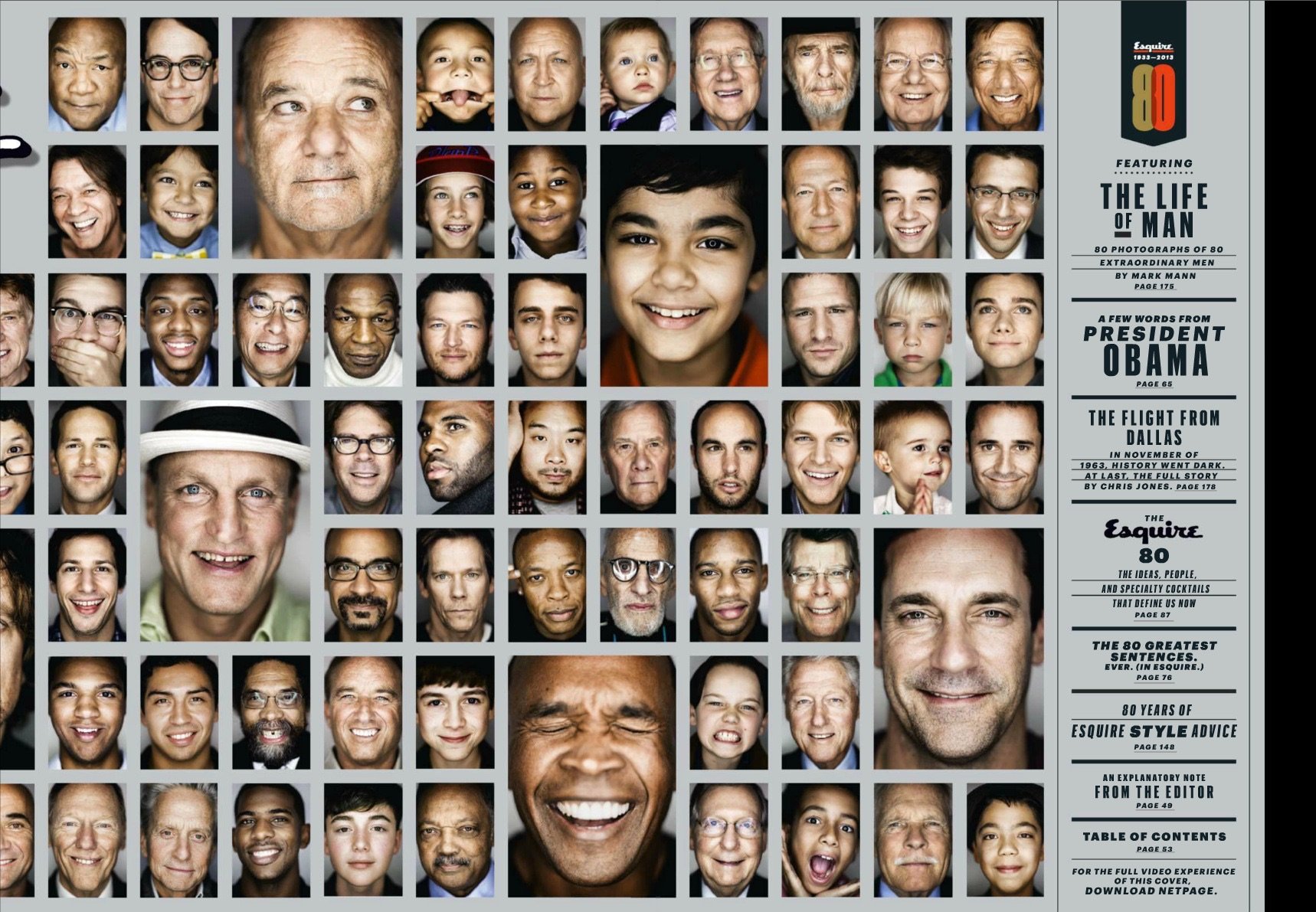
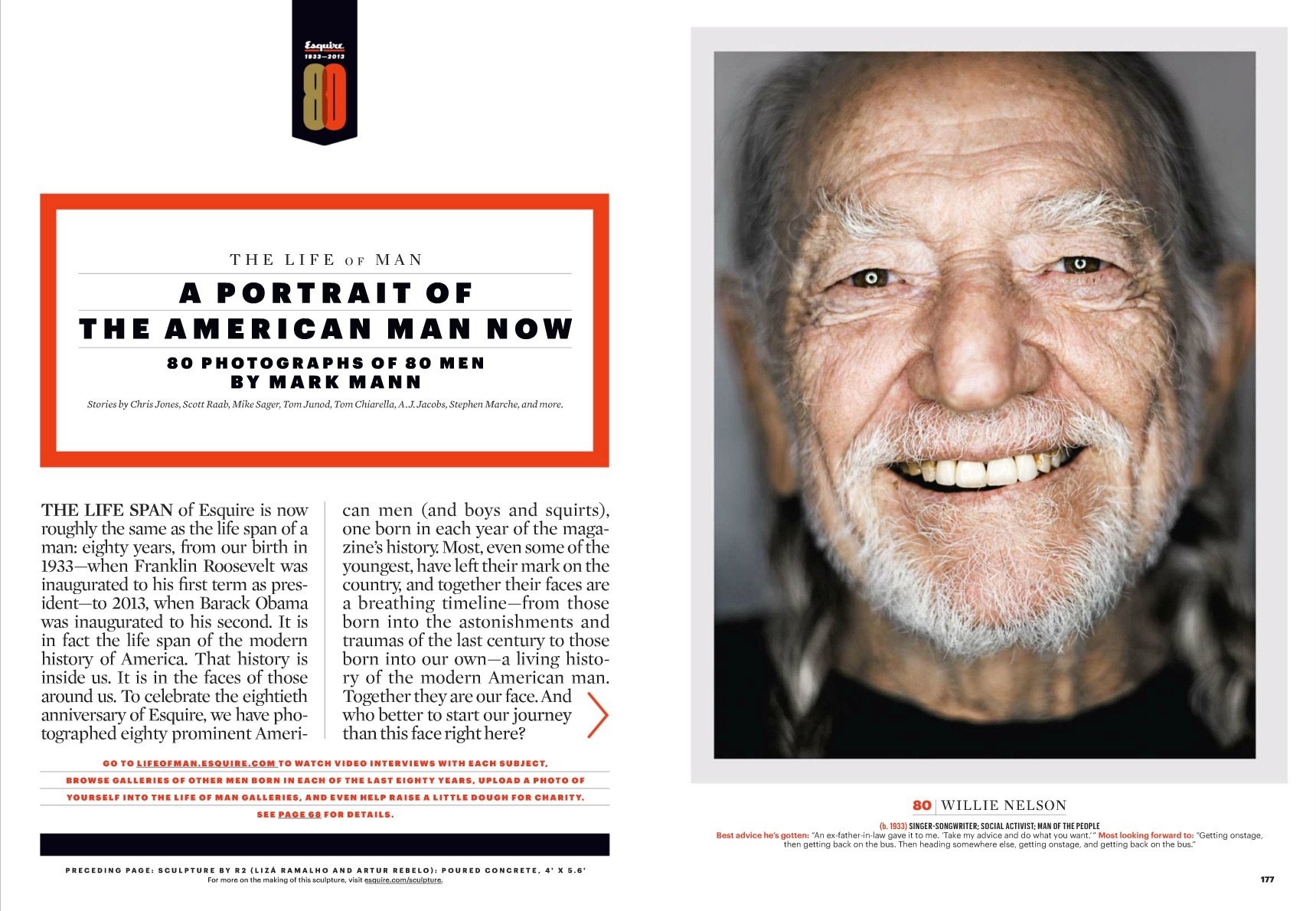


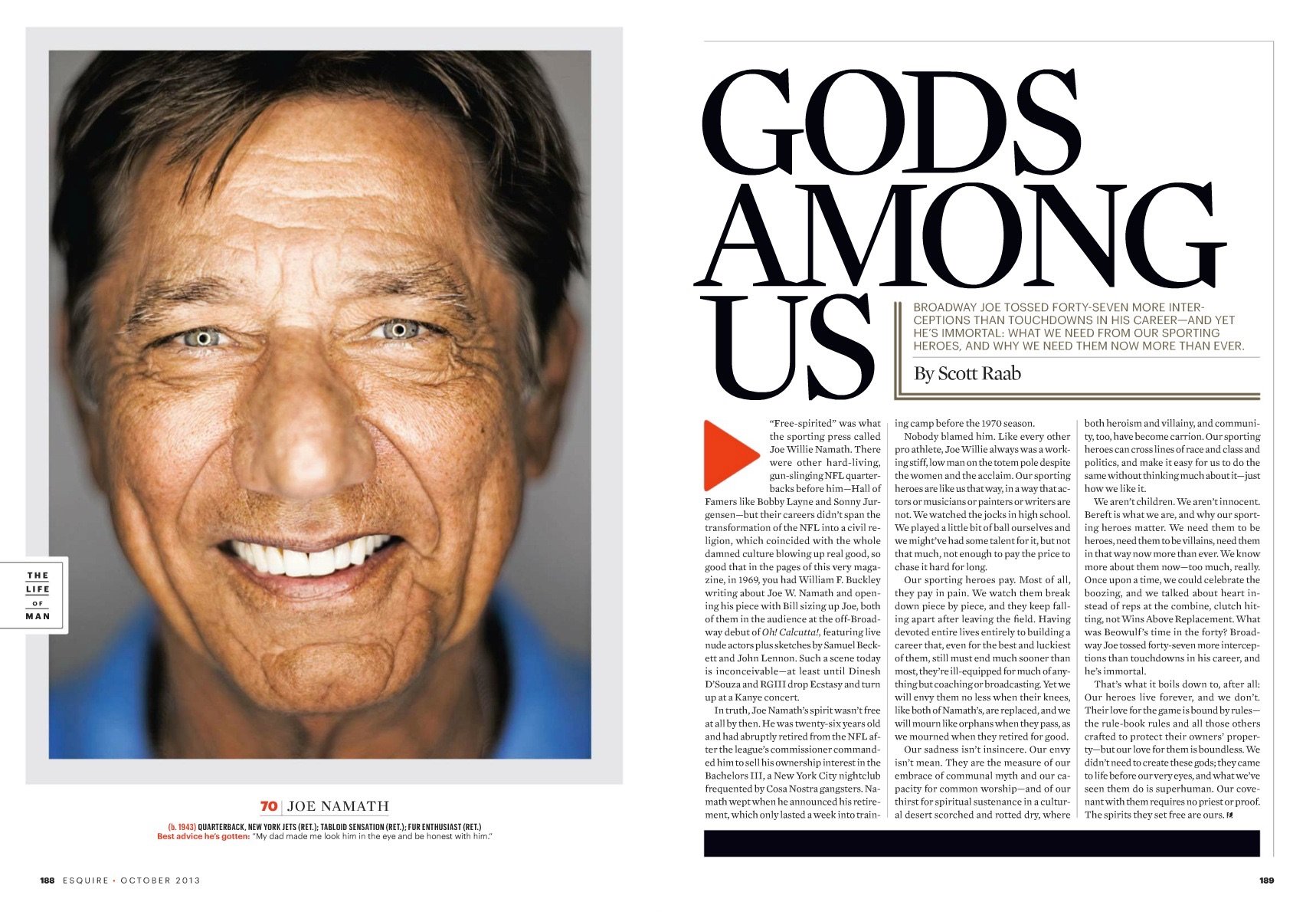
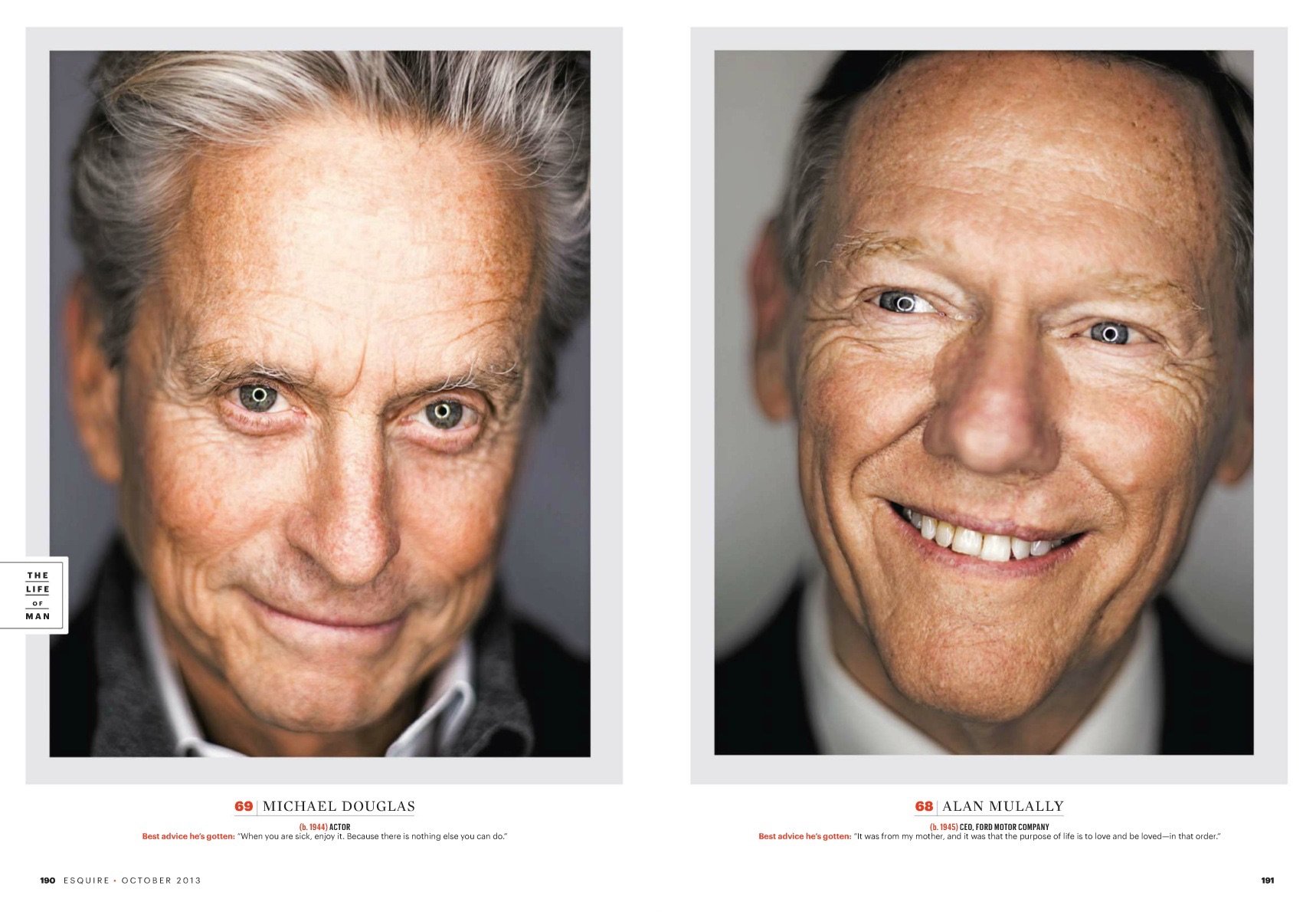
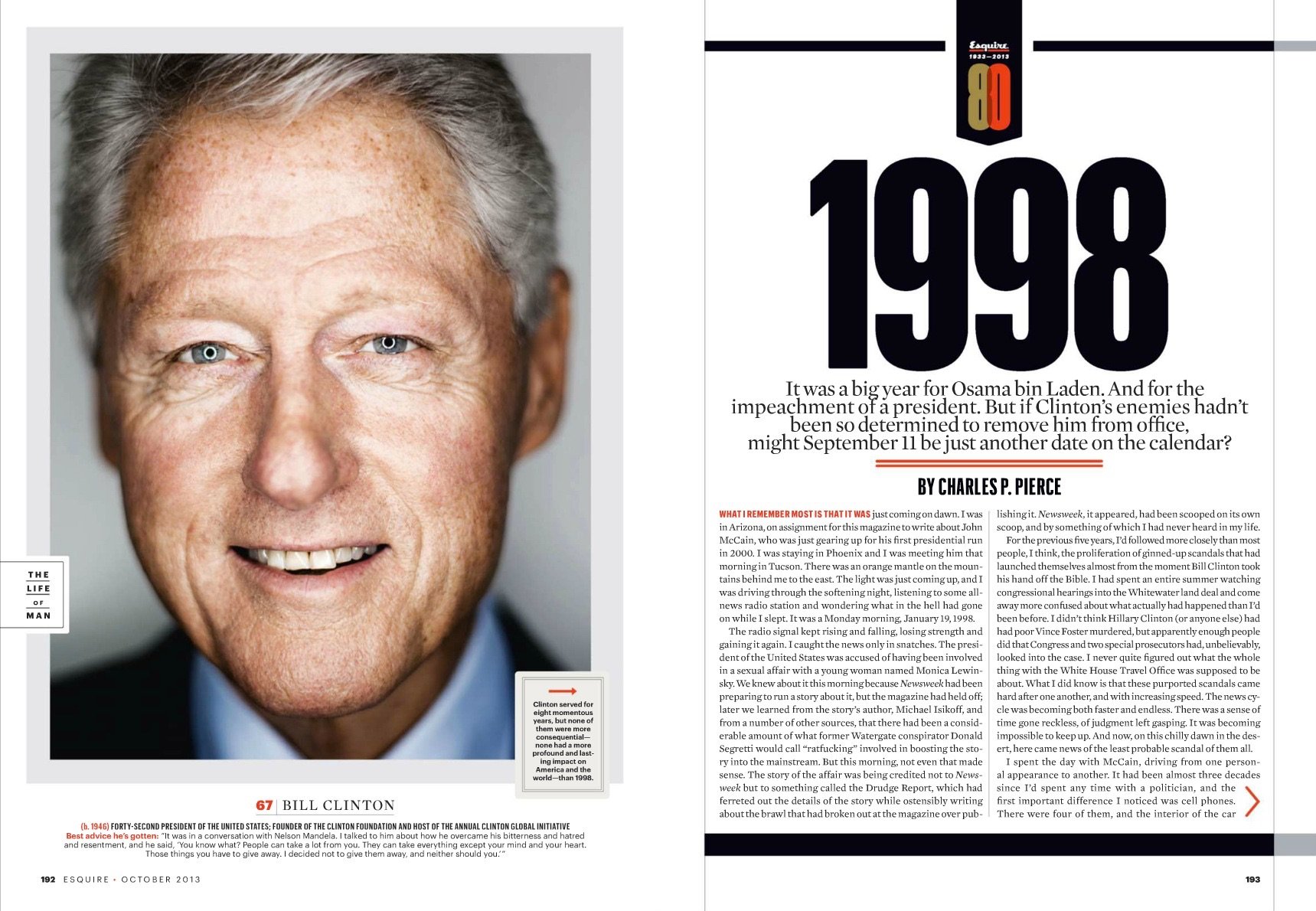
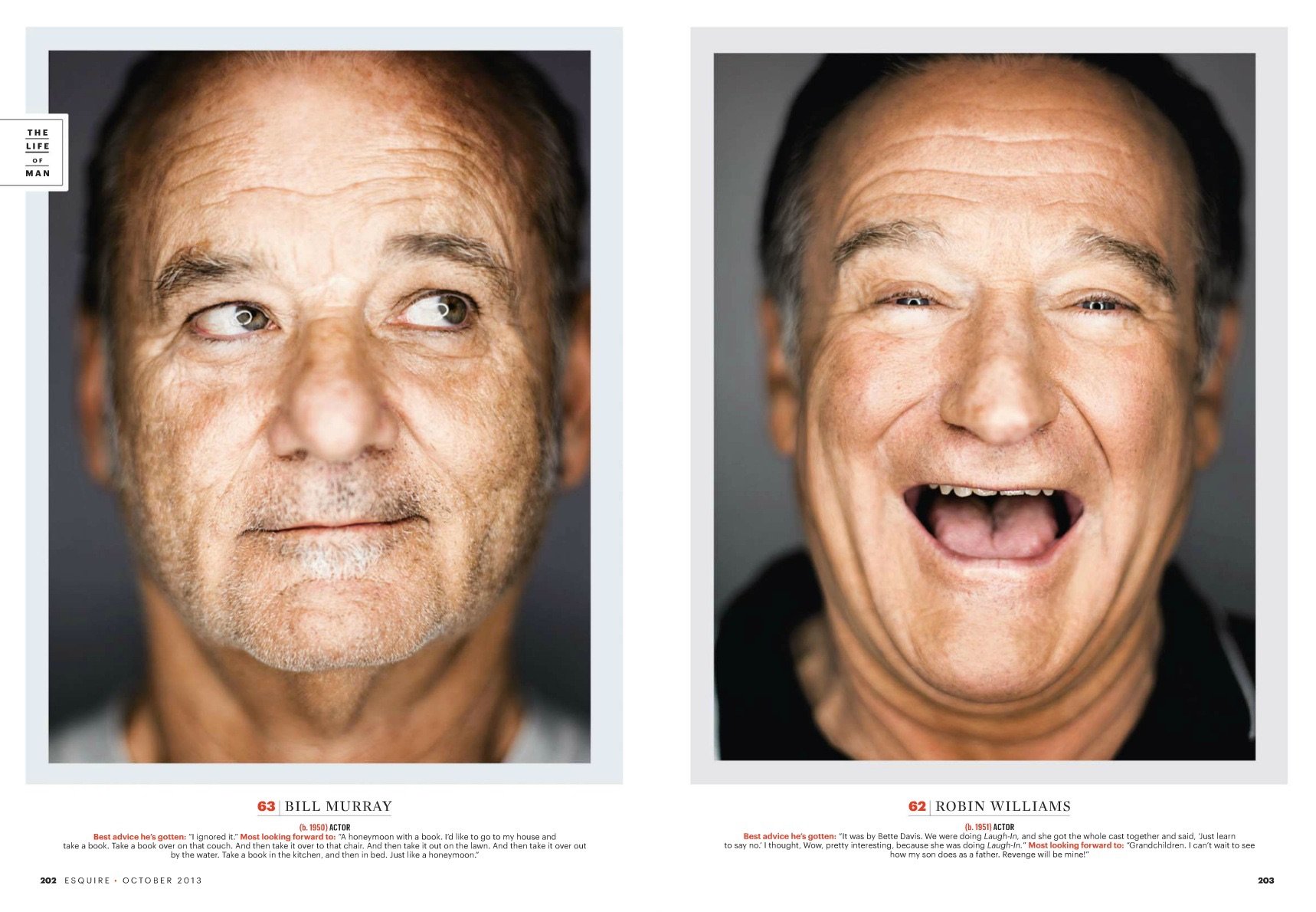
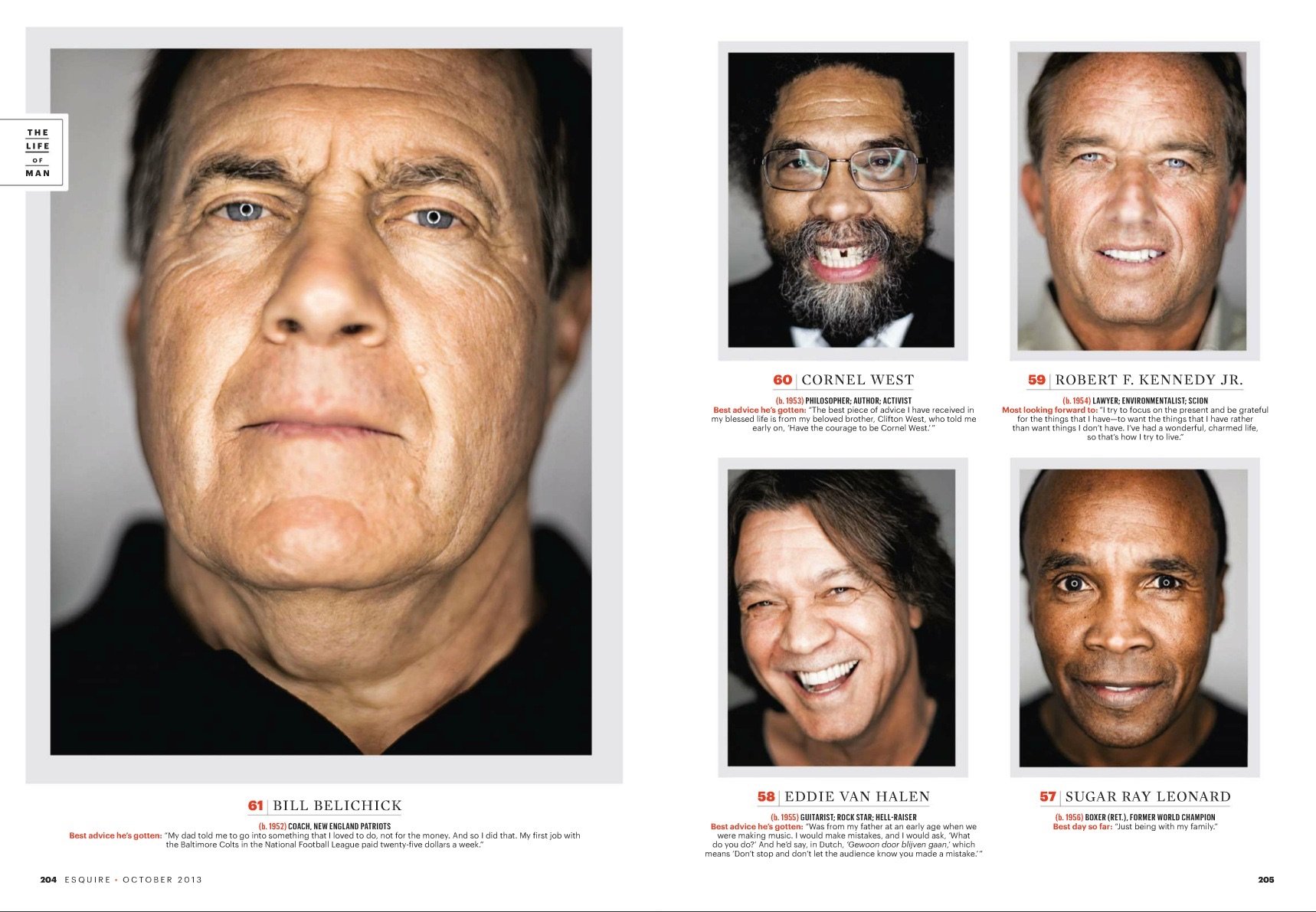
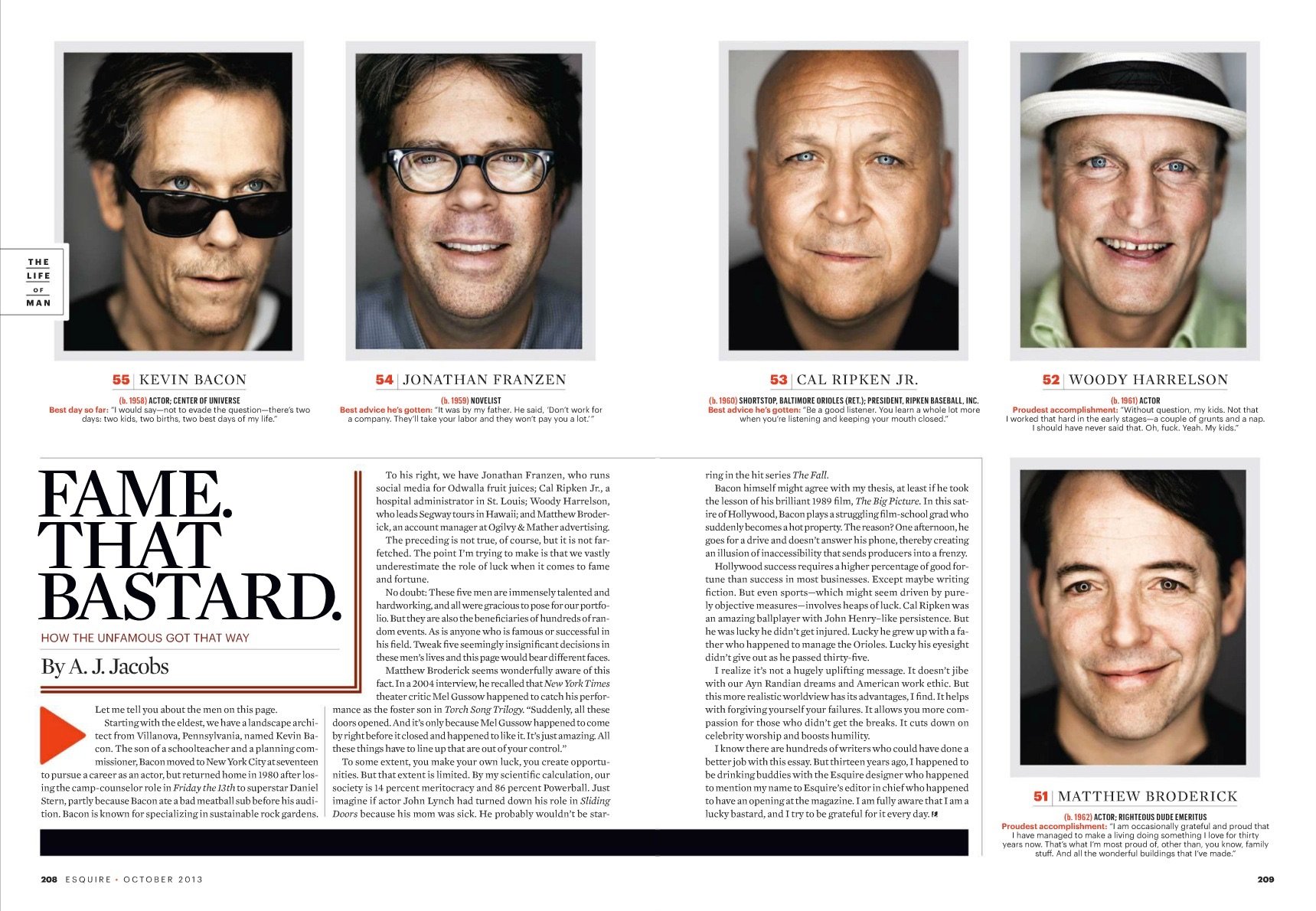
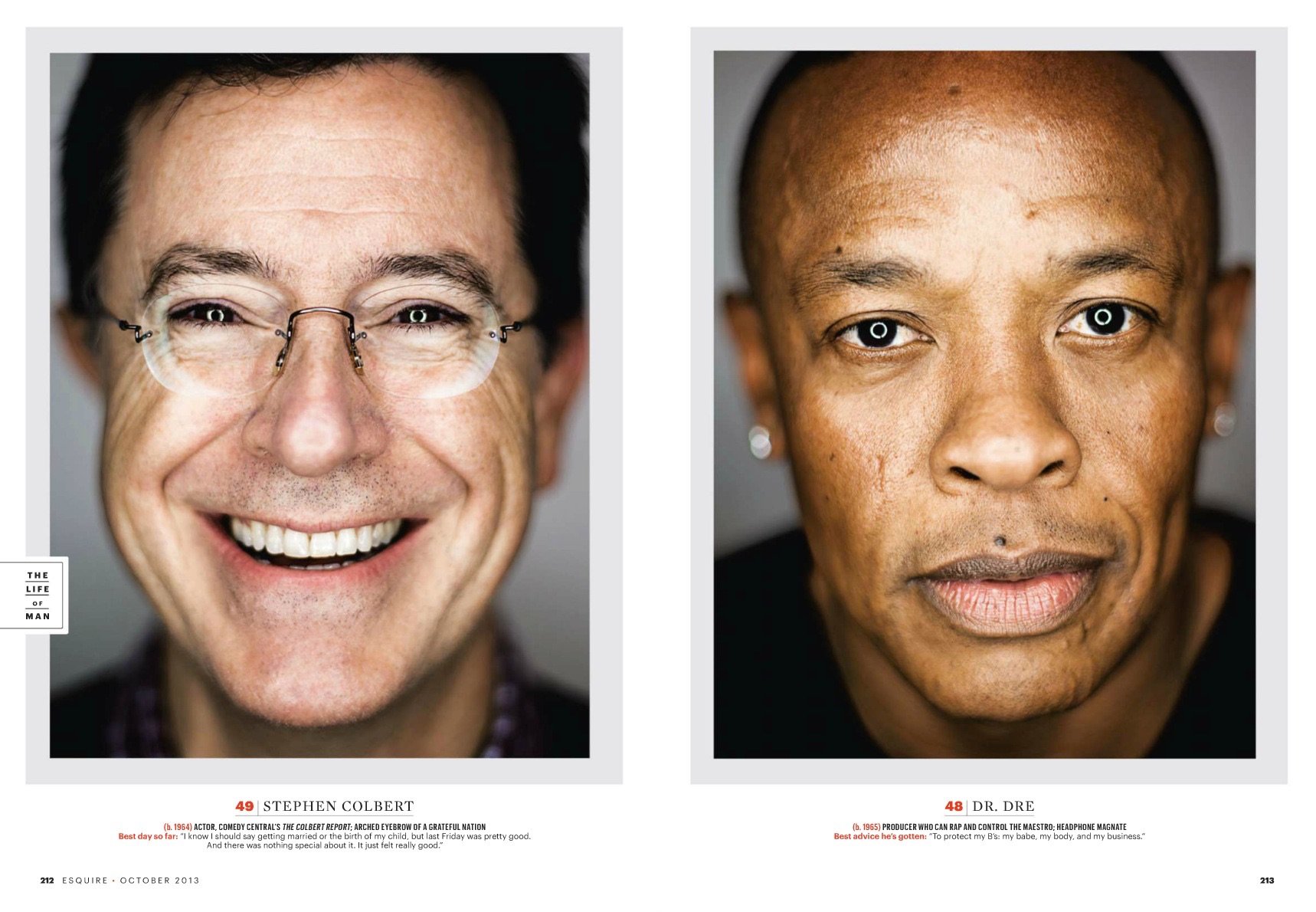
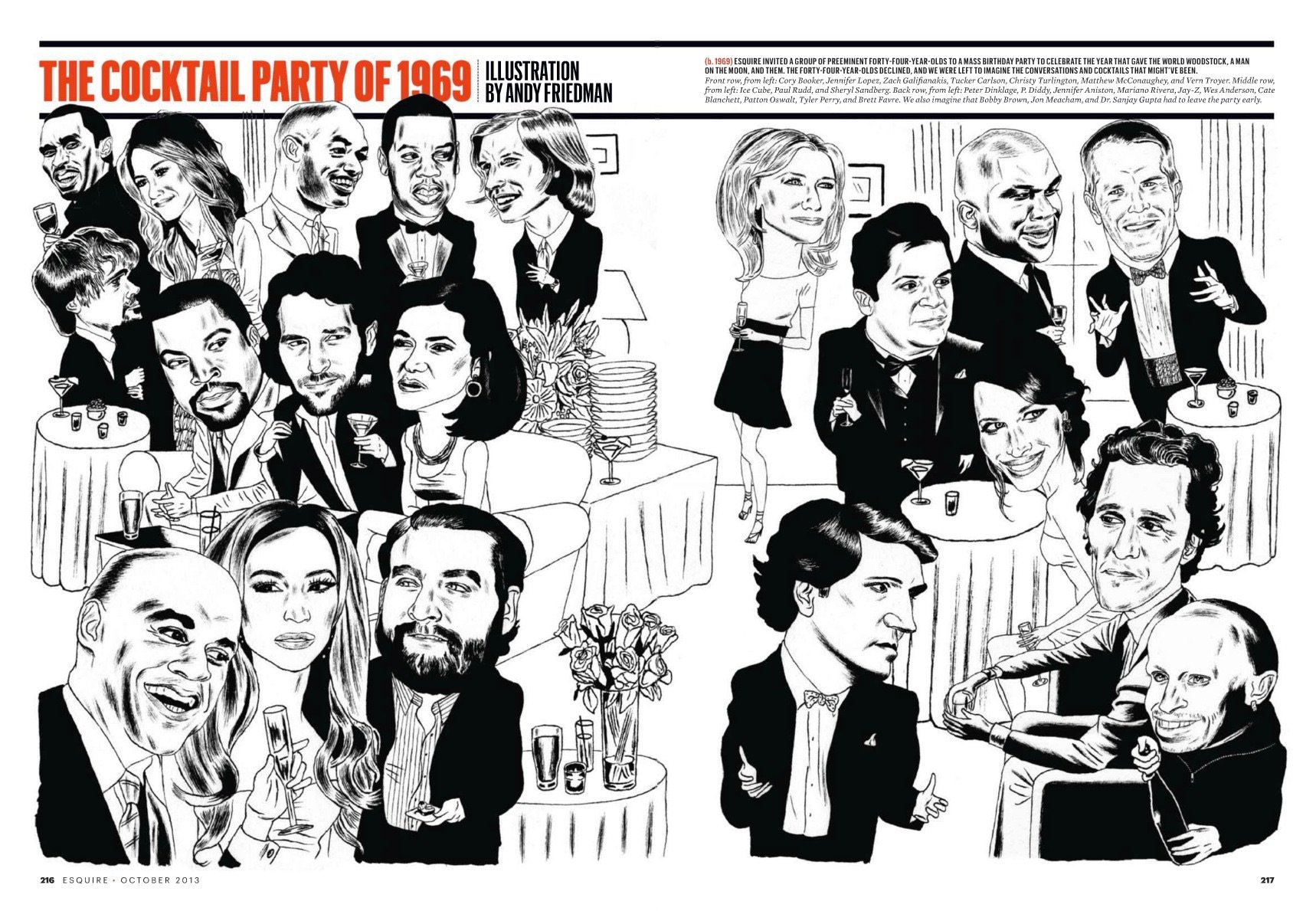
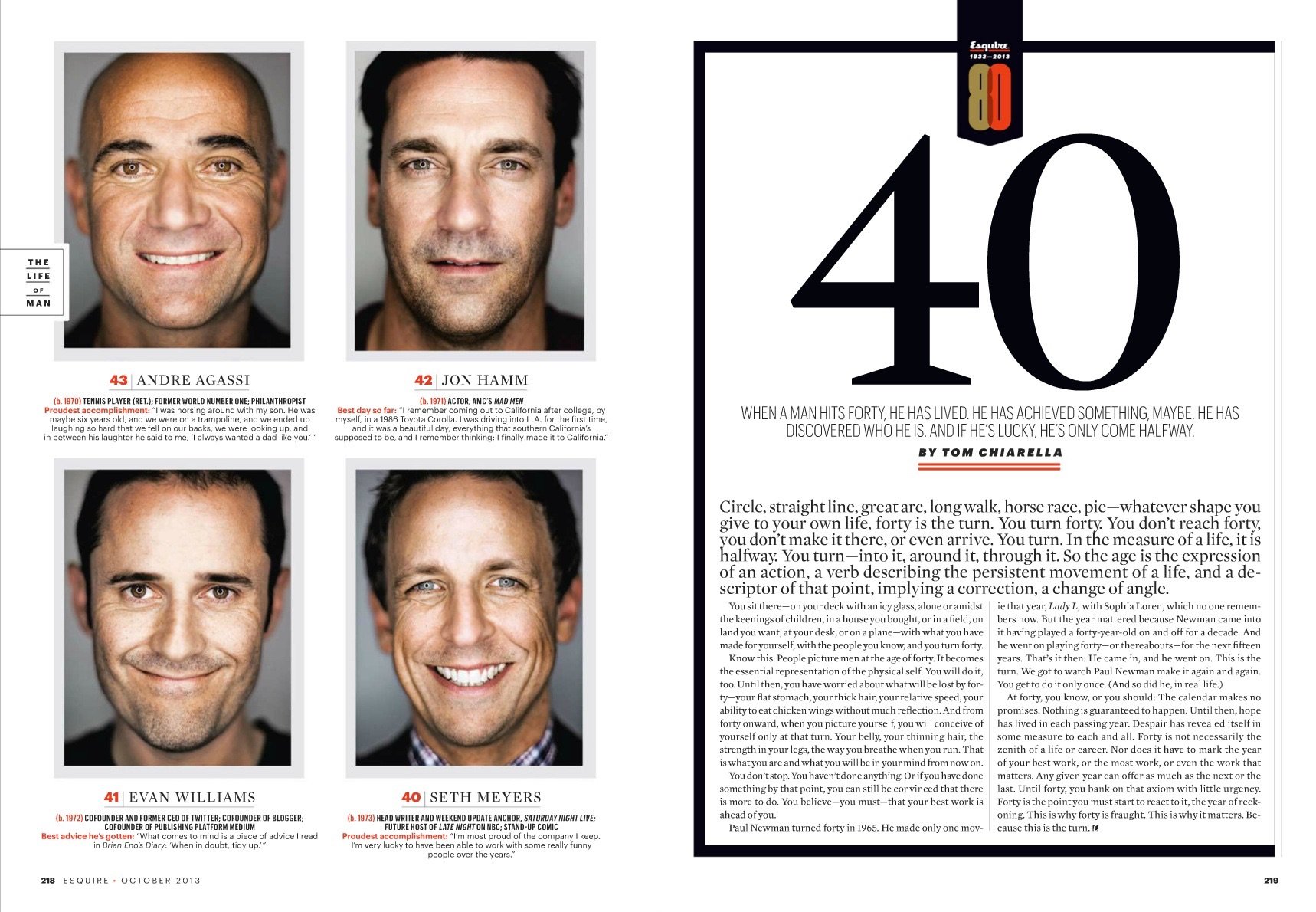
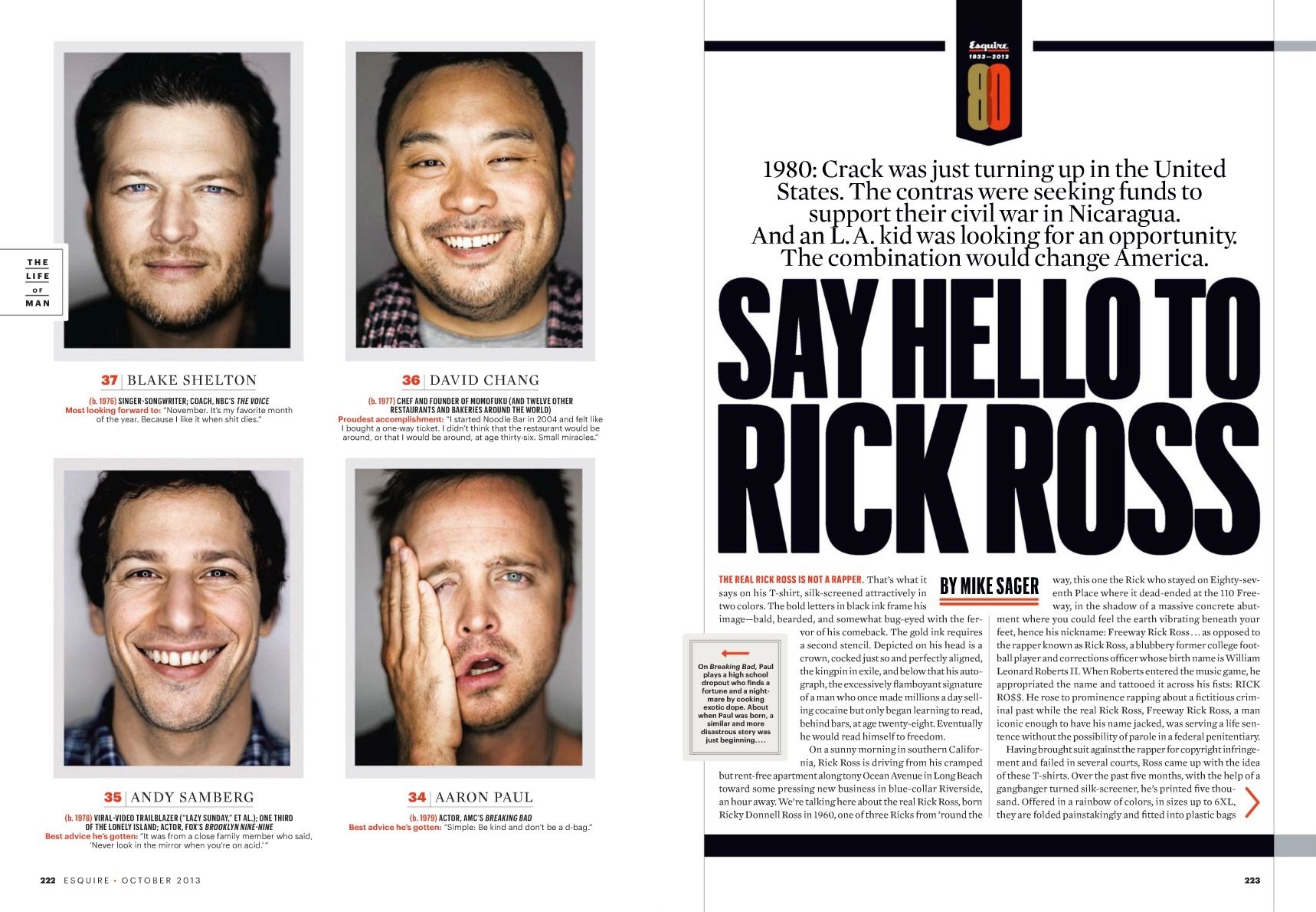
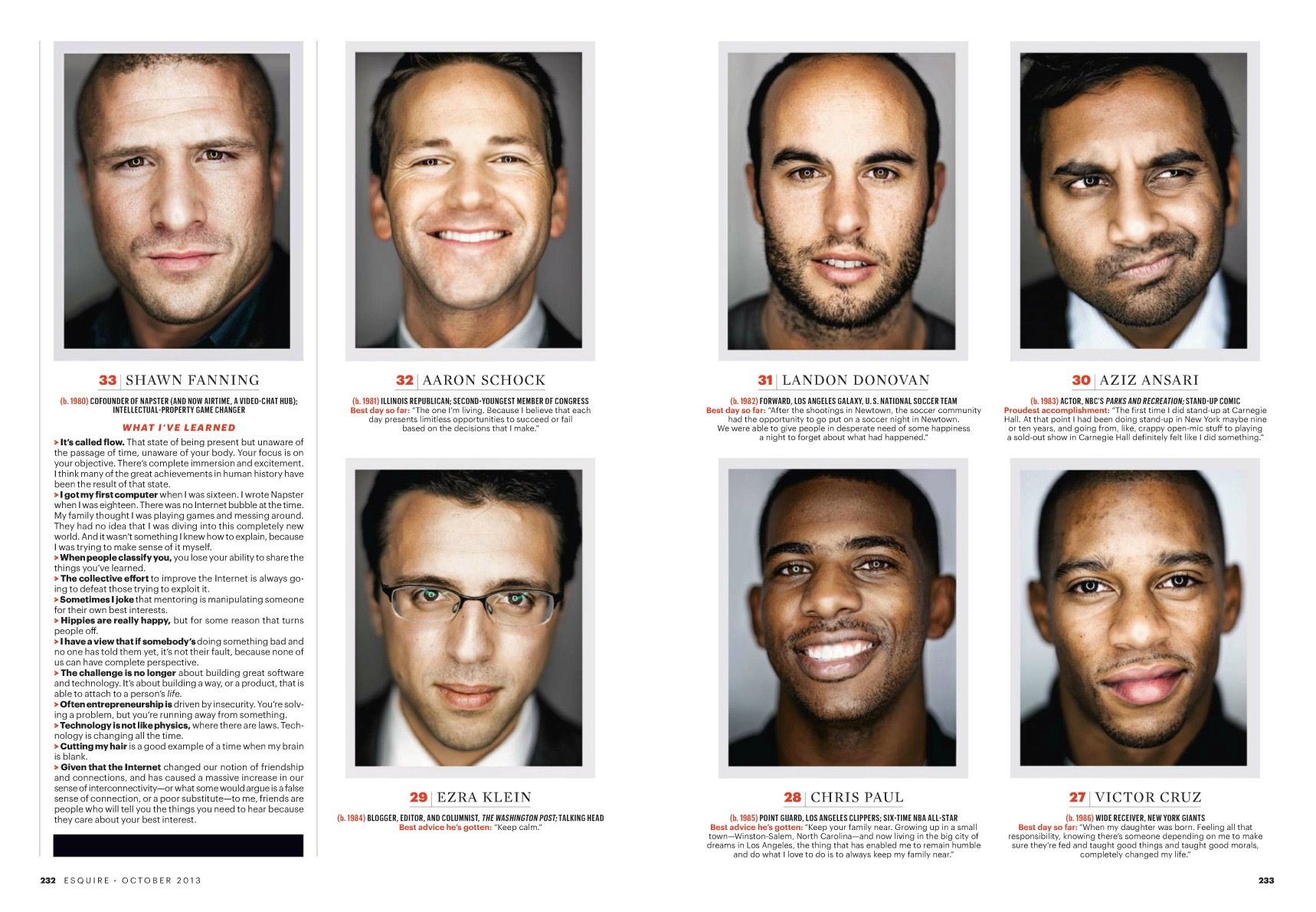
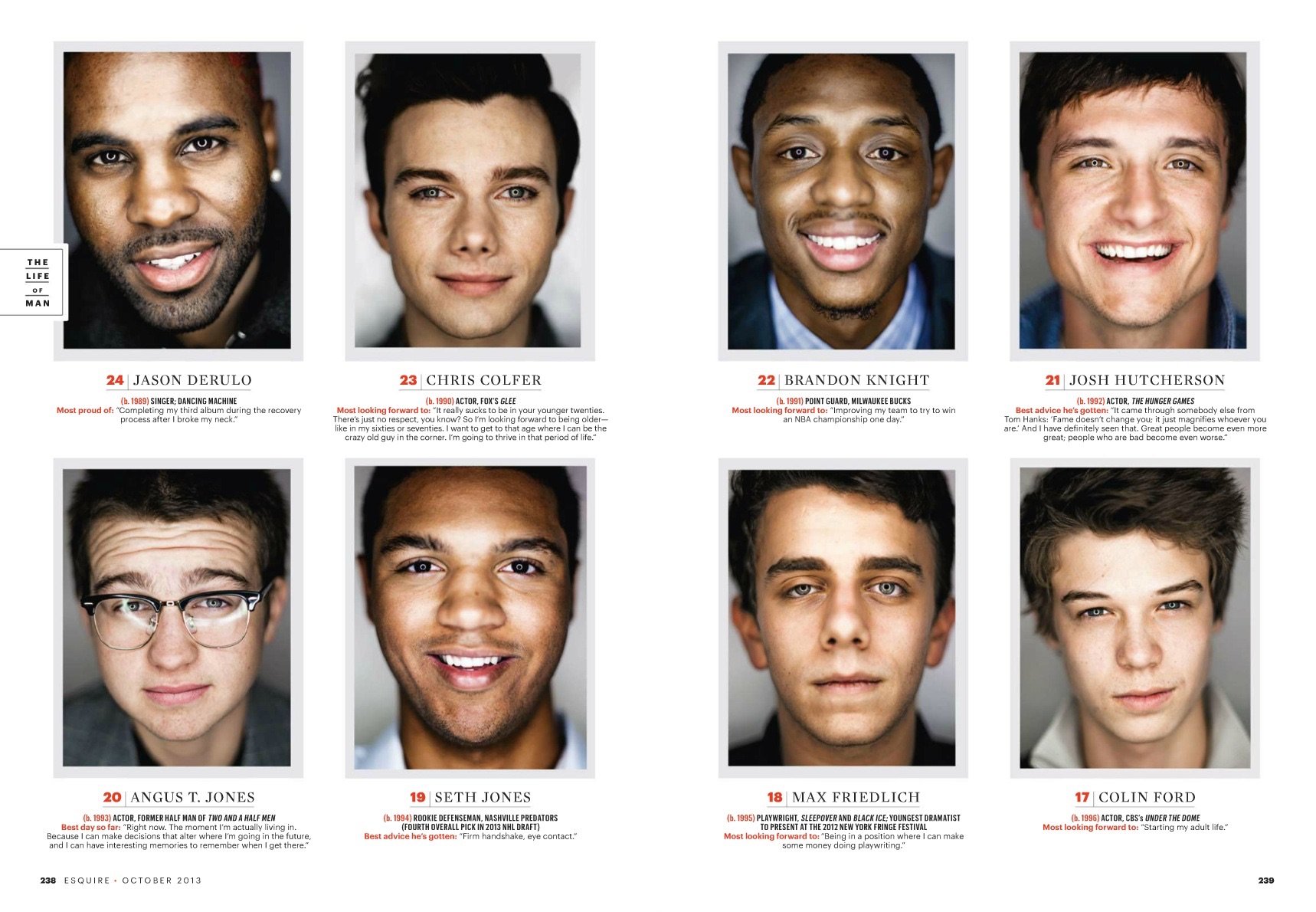
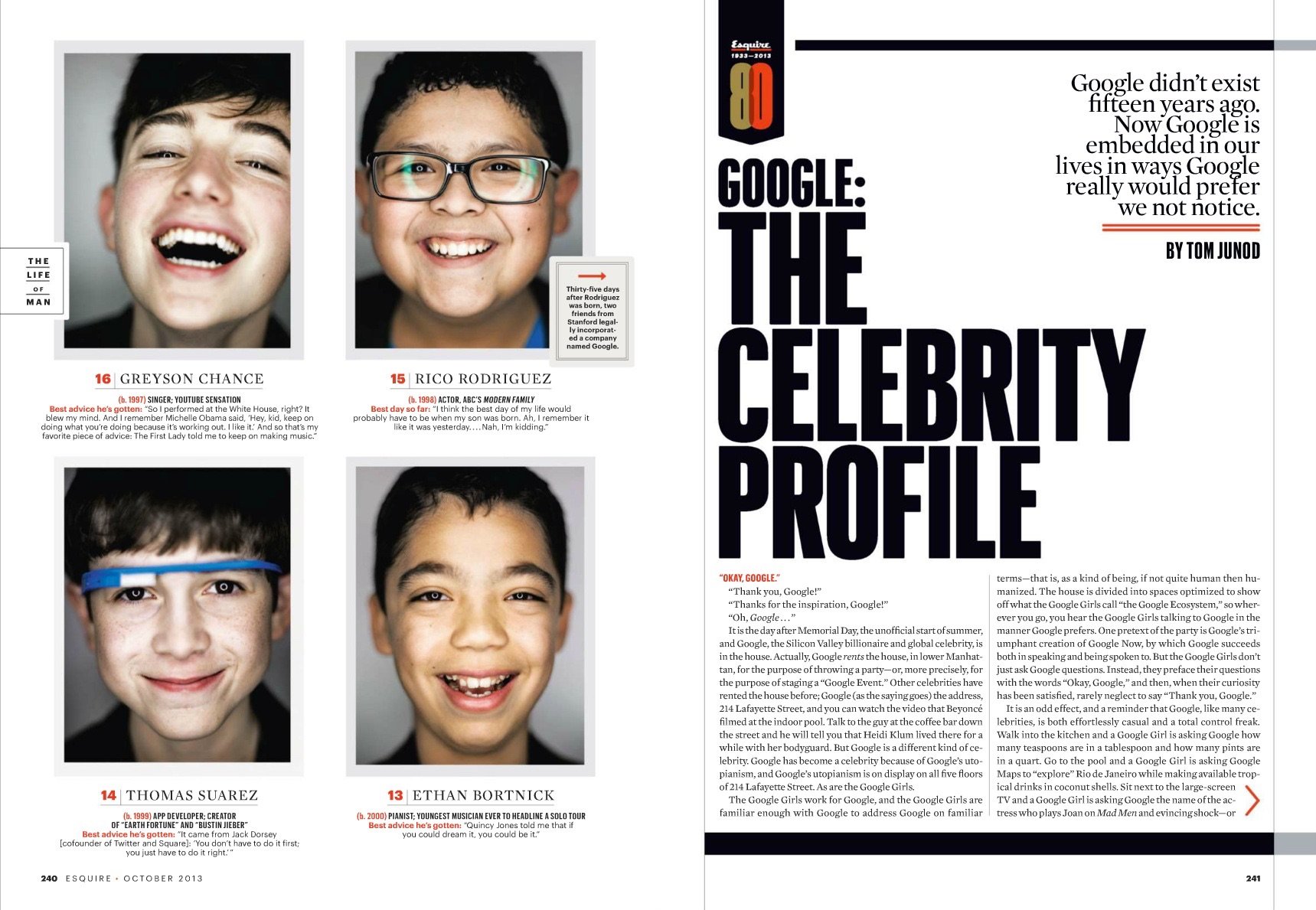
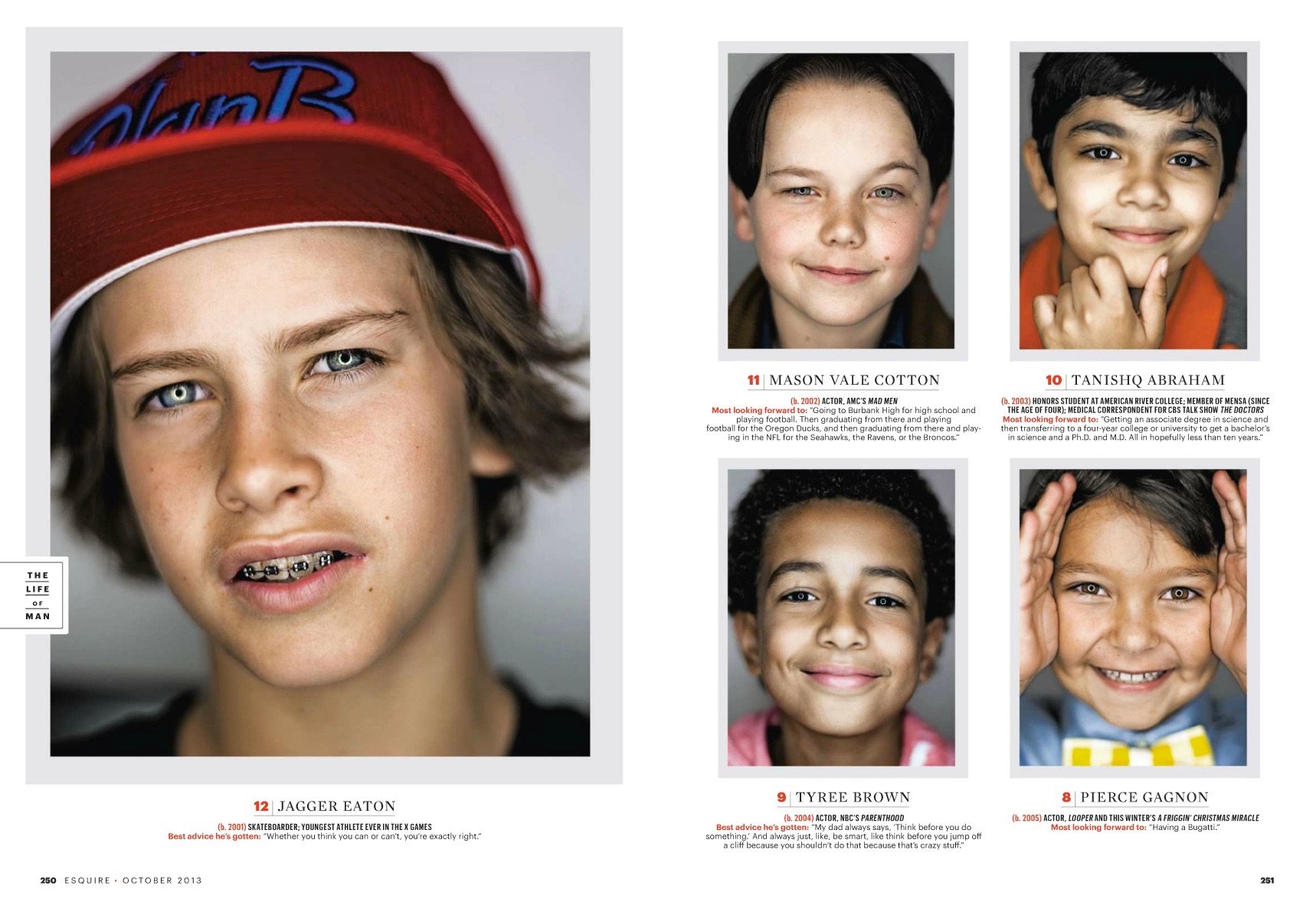
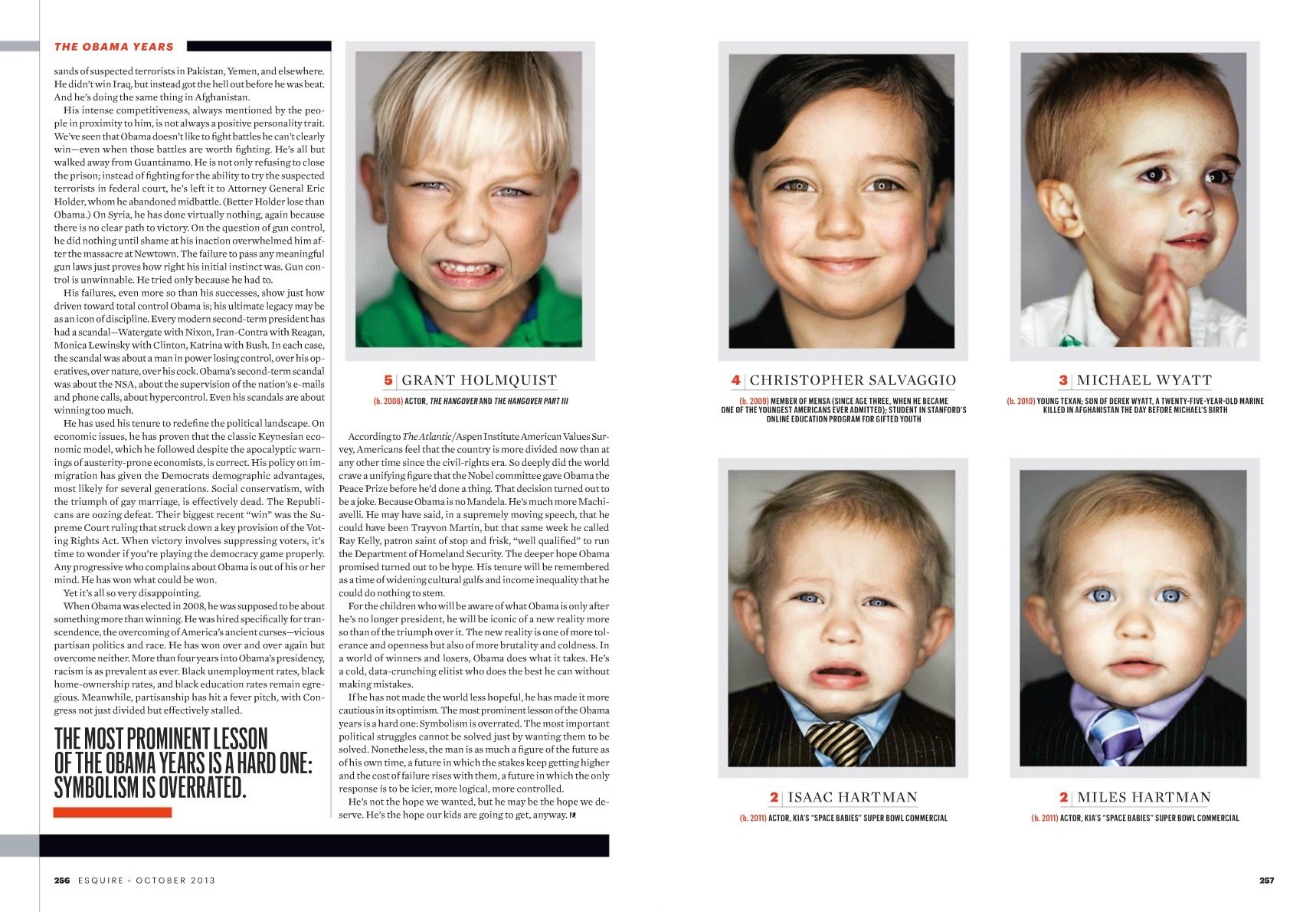

A 2013 special 80th anniversary issue themed “The State of the American Man,” featured a man (or boy) at every age between newborn and 80 (Willie Nelson).
Sean Plottner: Let’s just change the pace a little bit, and I’m going to …
David Granger: … We’re going to play a slow song?
Sean Plottner: Yeah. We’re going to slow dance to a little Bread. Actually, we’re going to pick it up a little bit. I’ll say something and then you just tell us the first thing that comes to mind and you can elaborate.
David Granger: That was fraught baby. That was fraught. It was one of those things that people associated with Esquire. They hadn’t read it since, like, 1968, and we tried to revive it and make it relevant, but this was like when John Stewart was coming on the air and there was political satire every night. And so Esquire had done this annual issue where they did fake headlines and then the stories that went with it, and the real news stories that occasioned those fake headlines.
And it was funny in its day. And we tried so hard to make it relevant and failed every time, including, like, Dave Eggers edited it in the one year that he worked at Esquire. We hired Jay Lovinger, who’s a legend from Time Inc.—but mostly from John A. Walsh—to come in one year. And we tried everything. It just didn’t work. So we killed it. And we killed it right after 9/11. It just just didn’t seem like it was in sync with the times anymore. And I got a bunch of nasty letters from people who, as I said, hadn’t read it since 1968.
Sean Plottner: Eggers had done it once. I’m going to have to look that one up. “Sexiest Woman Alive.”
David Granger: Scarlett Johansson.
When we put women on the cover, we always wanted to give the impression that the women enjoyed the experience, and give our readers that, rather than doing the thing that men’s magazines—that it’s hard not to do, which is objectify. And so one year we did, over six months, we gave visual clues to who the Sexiest Woman Alive that year was.
You couldn’t see who it was, but it was like in one, she was in her trailer home and on the floor in front of the open refrigerator, and the place was just a mess. All of them were shot in this trailer home in Appalachia somewhere. And in one, she was, like, shaving her legs in the sink. And it just looked like the most down-on-her-luck human being in the world. And it was Scarlett, who played all these roles for us and spent, like, three days shooting this thing just to do this long, slow reveal of who the Sexiest Woman Alive was. It was tons of fun.
Sean Plottner: “Lad mags.”
David Granger: Yeah. When I got to Esquire, that was when the “Lad Mag” thing was happening. I can’t even remember the names of them anymore. Ugh. God.
Sean Plottner: FHM. Maxim.
David Granger: Maxim. Maxim. Maxim. Maxim. Maxim. And that was one of the things that, when I talked about second-guessing earlier—all the circulation people, all the ad sales people—that was the thing that they most second-guessed me about. It was like, “Maxim’s successful. FHM’s successful. Why aren’t you guys more like Maxim?” You know?
Sean Plottner: Yeah. They’re putting Mr. Rogers on the cover. Sure.
David Granger: Yeah. I was at a cocktail party, speaking of Mr. Rogers, with Jann Wenner once, and I was complaining to him about newsstand sales and he was commiserating with me until he looked at me and he said, “Wait a second. You’re the guy who put Mr. Rogers on the cover, aren’t you?” He stopped commiserating with me right then.
Sean Plottner: Were the Lad mags competition for Esquire?
David Granger: Yes. They were competition for readers and competition for advertisers. And I think one of the reasons that Maxim succeeded was because men’s magazines had stopped giving men advice. And even though the advice in Maxim was mostly bad advice, it was advice.
And so I think men’s magazines had abdicated their role of offering guidance and that was one of the things that I worked really hard with my staff to try to do. We had this “Martha Stewart Moment” once when I was driving to tennis with a friend of mine and it was in my first couple years at Esquire and he goes, “How come there’s not a Martha Stewart for men?”
And that day I went to the library and I found the last three years of Martha, and I read it. The next morning I had an emergency meeting, I had the staff come in and I was like, “You guys need to read Martha Stewart.”
And they’re like, “What?”
And I was like, “No, no, you’ve got to read it. This magazine’s amazing because this is what Martha’s message is to her readers: I love you. I love your life. And if you follow my advice, your life is going to be better.”
And I was like, “We’ve got to do some of that!”
It was one of those moments where I was like, “Okay, it’s getting a little clearer what I’m supposed to be doing here.”
Sean Plottner: Frank DeFord. The editor at The National.
David Granger: Okay, two things. First, one of the three greatest sports writers of all time. And one of the great writers of all time. Second, way too nice a guy to be the editor-in-chief of a daily national newspaper. Frank was such a nice man.
You know, you got the nice letters from him, in purple ink, and all that kind stuff. He was just a great man. But that led him to say ‘yes’ to everybody. Even when there were pitch battles at The National—especially the ones I saw between the news side and the magazine side—Frank just said ‘yes’ to everybody. So, I love the guy. Just too nice a guy to be an effective editor-in-chief.
“The big stuff is hard in its own way, but it’s the little things that people are going to remember—or they’re going to enjoy—and it establishes not just a voice, but a whole environment of entertainment.”
Sean Plottner: Art Cooper, editor at GQ.
David Granger: Okay, here’s how lunch was with Art: Every once in a while, like two times a year, I’d get invited to lunch with Art. You had to be at the Four Seasons at 12:30 sharp. The second you sat down, vodka martinis, ice cold, are on the table. Art’s got an agenda for every lunch. He had an agenda. He’d usually write it out. He planned his day around lunch. He’d sit there in the morning planning what he was going to be talking about at lunch.
So vodka martinis with the first course, a bottle of Chalone chardonnay with the second course, a bottle of some red that was “Julian [Niccolini]’s choice.” As soon as you finish, Art’s like, “We’re heading to the bar,” because, after a while, they wouldn’t let him smoke at the tables anymore. You could still smoke at the bar. Light up a cigarette, have a sambuca.
And, at, like, three o’clock you’d get back to the office and just hammered. No choice but to put your head down and go to sleep for an hour.
Sean Plottner: Okay. How about art directors, in general?
David Granger: It’s difficult to generalize about art directors. I think it’s rare when there’s a perfect meshing of editor-in-chief and art director, and they’re equally important to the success of the magazine.
Many art directors have their own ideas about, especially magazine design, that may or may not be the best thing for the success of that magazine. But when an editor and an art director work beautifully together, as I did last 11 years at Esquire with David Curcurito, it’s freaking magic.
You’re just like dependent on each other. You make each other so much better. [That was] the greatest creative collaboration of my life. And that’s the potential of the editor/design director relationship.
Sean Plottner: Great. A couple more. A quote of yours: “The spread is one of the great, maybe lost, art forms of all time.” The spread. The magazine spread.
David Granger: Yeah. I believe that there are many things that the internet just can’t do—like almost everything. But the design possibilities and the expressive possibilities of a two-page spread in a magazine are just limitless. You can do anything on two pages of a magazine.
I mean, you just, you take all the things that a magazine is made of, paper, ink, photos, words, ideas, design, and you just let them go crazy on two pages of a magazine and almost anything is possible. And there’s never been anything like that in any other medium.
Books don’t do it. There’s nothing like it on the internet, no matter how much they try to be interesting design-wise. Everything scrolls, but there’s never that work of art that’s also part of a living medium. There’s an urgency to magazines. They’re timely. And you create a timely work of art on two pages. Nothing else can do that.
Sean Plottner: There isn’t. Viewing a spread, the gaze of the eye is so different than looking at something online. The creation of a spread is so different than anything you would create online. The anticipation, or expectation, of turning a page—you don’t get that online. And I think there’s a real psychology that makes it interesting. And your notion of, like, front of the book stuff, making sure a page does more than one thing. Jeez, a spread, like you said, can do so many things.
Okay. The phrase “content creation.”
David Granger: Well, “content” is a word that I try not to use. I think it’s the dirtiest word in the English language, especially starting in the mid-aughts of this century.
It’s just like, “Content.” It’s like the great leveler. It’s like anything that fills up the space is of equal value. That’s what the word “content” means. It’s like, “We’re going to get some content and put it on this website.” What the fuck? You have, like, you have articles. You have photos. You have great pieces of writing. It’s not “content.” It’s something that somebody slaves over.
But that’s the mindset. It turns out that the medium is the message, right? If you create something that’s designed to be read quickly, whether it’s on a webpage, or social media, or whatever, it’s going to suck more than something that is designed to move somebody and make them rethink the foundations of their life.
And a magazine has the potential to create a work of art, a timely work of art, that’ll have a profound effect on somebody.
Sean Plottner: Okay. Awards. You’ve got a few.
David Granger: Yeah. They’re nice. They make you feel good. I have this Polaroid of myself sitting in an abandoned folding chair on Eighth Avenue holding one of those National Magazine Award statues.
That’s one of my favorite photos. We had 17. They were on display in the Esquire offices, and on my last day there I stole one just so I could have one. So I guess they mean something to me.
Sean Plottner: How many of those Ellies can you fit into one briefcase?
David Granger: I just took one. I don’t know. I don’t even remember what I took it out in. But you can’t plan to win awards. You just try to do really good things and then every once in a while it happens.
Sean Plottner: Okay. The slogan “Man at His Best.”
David Granger: Yeah. So for a long time, Esquire, its slogan was “The Magazine for Men” for most of its life, like, up into the late seventies. And then when your boys, Whittle and Moffitt, took it over, they changed it to Man at His Best. And there was a reason for that.
As I said before, Phil Moffitt, he had a mission in Esquire and he was well ahead of his time in that he was really into yoga back in the seventies and eighties, and he believed in the possibility of personal improvement and that was one of his main goals for the magazine.
Kind of like my Martha Stewart moment, he wanted to help people improve their lives and he changed the slogan of the magazine to Man at His Best. And when I got to Esquire, I think they’d gone back to The Magazine for Men, and I know that they’d scrapped Man at His Best. And as soon as I could, I changed it back to Man at His Best in homage to Moffitt, but also because I wanted it to express part of our intention for the magazine.
Sean Plottner: I guess I’d be remiss if I didn’t ask at least one fashion question, and I’m not one to delve into fashion, but you know, I think you’ve got some experience with it. What’s the best men’s fashion tip you learned while you were at Esquire?
David Granger: That’s a hard one because, when I was at GQ, Tom Junod wrote this piece called “My Father’s Fashion Tips.” His father thought he was Sinatra and he had very strict rules about fashion. And the piece was built around five of his father’s fashion tips. And the one that stands out to me the most is Always wear white to the face. It just shows off your face. Your face is your greatest asset.
Always wear white to the face. It’s like, “Put a spotlight on your face.” But almost equally relevant and true is another of Lou Junod’s fashion tips is, The turtleneck is the most flattering thing a man can wear. This is true.
I mean, in Esquire I learned a lot of the details, I learned a lot of the history, but I started being aware of what I wore when I was working at Sport magazine, I saw a picture of myself sitting in the dugout with Dave Parker, the great Reds slugger, and I was wearing, like, some shitty blue pants and a shitty checked short sleeve. And I realized, “Man, no wonder athletes hate sports writers!” You know? And from that moment on, I decided that I was going to dress at least as well as the people I planned to meet that day.
Clooney on the cover? That doesn’t suck. The superstar actor appeared on eight of Granger’s issues.
“Covers always suck. They suck and they suck and they suck until they don’t. At some point they stop sucking.”
Sean Plottner: Well, I’ve got to tell you, I’m very glad you didn’t show up today with a tie and a jacket on. Okay, thank you. Let’s move into really my final section here, the section of Today and the Future. What’s wrong with the magazine business today?
David Granger: What’s wrong is that everybody lost faith in the vitality and vibrancy and validity of the medium. And that started with the magazine companies. You know, when everybody went running toward the inevitable payday that was the aggregation of content and gathering a huge audience and believing that advertising would flow if you just presented a large audience to the world. Everybody ran in that direction.
Hearst, Condé Nast, Time, Inc. They all abandoned their print products and started investing in digital because, of course, digital was the future. Even though there were already players who were going to kick their asses, who were dominating that space. It’s like, if you can’t win the game, play another game. And they abandoned the game that they were good at.
And so that filters down to everybody. When the business side is shaky, editors and writers are less likely to take chances, editorially, right? Because you do something that gives a fence to an advertiser or to readers, and you’re putting the viability of the business at risk. So that’s a big thing.
But then the rise of social media and the fact that everybody has a platform that has the potential to spread worldwide in an instant also makes editors and writers a little scared. It takes a lot to stand up to the mob when somebody decides that something one of your writers has written is offensive in one way or another, or racist, or sexist, or whatever.
And the ability to stand up to that sort of invisible mob is hard. And it causes a lot of people to play really safe. There are a lot of pressures on magazine editors and writers to play safe. It’s the same in most media. It takes a lot more courage to stand up for what you believe in, in the highest forms of expression now than it did when I was an editor-in-chief.
Sean Plottner: Well, you know, we’re on a podcast called Print is Dead. (Long Live Print!), and sometimes my thinking is, you know, “Geez, the magazine business is long gone.” But there are still some great magazines out there that are, first-and-foremost, print magazines. New York magazine is still excellent. The New Yorker. I think the new Sports Illustrated works. The Atlantic. On and on. They’re still there. They still come in my mailbox. Is there ever a chance we’re going to see more magazines? Or a revitalization of the industry?
David Granger: It’s hard for print to be as vital as it was because there’s not a robust advertising base. And for better or worse, mostly better a long time ago, and worse more recently, advertising was 85-90% of magazine’s revenues.
So advertising goes away and you don’t have the pages, you just don’t have the resources to do what could be done in the nineties and the early two thousands into the 20-teens. And, it’s just, it’s hard.
I love it when I see little magazines popping up. I got to help this magazine—Racquet, which is this high quality tennis magazine—I got to help them get started, and I’m amazed that they’ve been able to sustain it. But they sustain it not through the traditional magazine metrics of advertising and circulation. They mostly sustain it through doing events for advertising partners or for folks with a lot of dough.
And so that’s a little different. And it’s also a reason not to give offense. When you’re being sustained by your sponsors, it’s a little harder to do anything that’s really risky. There’s always going to be great magazines.
Every year I judge the City and Regional Magazine (CRMA) contest and there’s always really good, really surprising stuff. And a few years ago I went to one of their conventions, and there are just as many city regional magazines, I think, as there were 15 years ago!
I know a surprising number of writers, surprising to me because I’m ignorant, that the authors I’m working with, like, at least two or three of them right now are doing pieces for alumni magazines. And there’s a vibrancy there. And you guys actually pay enough money that writers want to spend some time doing that. Which is often hard to do with commercial magazines to make a living.
So yeah, there’s always going to be room for magazines to thrive. They’re just not as big a force as they once were. And it’ll be very hard to make them that.
Legendary comic artist Chris Ware’s version of “What I’ve Learned”
“The design possibilities and the expressive possibilities of a two-page spread in a magazine are just limitless. You can do anything on two pages of a magazine.”
Sean Plottner: That’s very interesting what you say about alumni magazines. As a longtime alumni magazine editor, it is a different animal than the consumer magazine world. And I think that the talent that’s available to those of us running alumni magazines is greater now because there’s less consumer magazines for these people to go and work at. And we do have some money. And I think things have gotten better.
What is really great in the research that we put out to our readers is they’re not saying, “We don’t want print. We want to read it online.” They want their print magazine. And it’s almost a luxury these days. And again, that’s conflated with a lot of emotions about their school and blah, blah, blah, blah, blah. But the love of the print magazine—it’s there. And it’s cool to see.
David Granger: Yeah, it is there. But I remember doing focus groups and it’s there to a level. And I remember watching readers go, “Man, I love Esquire.” And they would know particular writers, and they would remember specific pieces, and they would talk about the things they love in every issue. And then at the end of the thing, the guy would say, “So are you going to resubscribe?”
And he’d go, “Uh, I don’t know.”
When it comes to going into your pocket for $15 or whatever it is, that’s not that much money, but there’s some weird disconnect there.
But you’re right about people’s love for print. I see that in the book business. All the growth in books over the last 10 years—it’s exploded in the last two and a half—is in hardcover sales! Audio books are growing slowly, eBooks have completely flattened out. Together they’re only like 12% of the book market. And hard covers are where all the growth is. And there’s something that people like about that.
Sean Plottner: Yeah. Well, I understand that. I love having a book in my hands, and eBooks aren’t the same. Tell us what you are doing now, speaking of “long live print.”
David Granger: Yeah. I work in the book biz. I’m a literary agent. I’ve been doing that for six years, and it’s been good. It’s been good. The thing that struck me after getting tossed out of the magazine business, was when I started having meetings with book people, there was, especially at the executive levels, there was, like, a genuine optimism and I hadn’t felt that in the executive levels of the Hearst Corporation for a long time, with regard to magazines.
And so it was refreshing that top editors and top executives could see that they were in a growing business. It’s not a huge business, but it was a big business. And growing. And so there’s optimism and there’s willingness to make investments. They’re running scared in certain ways too, but it’s a business where its leaders know there’s an upside and that was refreshing for me as somebody who wants to catalyze creativity.
Granger’s last few issues at Esquire
Sean Plottner: Can you share a project you worked on or are working on now?
David Granger: Yeah. I could bore you to tears for, like, several minutes.
Sean Plottner: What’s the most exciting project you’ve worked on since you left magazines?
David Granger: Can I give you two? Okay. The first one, that was probably the most fun, and it made me feel like I was part of the cultural conversation, was we got chosen to represent this guy, Andrew McCabe, who was the deputy director of the FBI.
And then Trump savaged him and his wife and fired him. And I got chosen to help represent him. And as soon as we got the gig and won the beauty contest, I flew to DC and spent two days with Andy in his living room and just interviewed him and started writing the proposal, and then we ended up turning it over to a writing team.
But we did the book fast, we got it out in a timely manner, and it hit number one on The New York Times bestseller list, which is tons of fun.
The thing that I’m most excited about right now is that three of my writers have written a novel that is the funniest, most intentionally offense-giving piece of writing I’ve read in a very long time.
It comes out November 8th. I don’t know what else is happening on November 8th. There may be, like, some election going on or something. But I think the event of the day is that The Lemon—it’s called The Lemon by S.E. Boyd—is publishing on November 8th. And it takes shots at everybody who deserves to have shots taken at it.
It’s set in the world of high-end cuisine, but goes quickly into the cynical world of big-time media and the fame industry, the celebrity industry, and it’s just, it’s hilarious. You zip right through it and it’s fantastic and it’s made, like, “Fifteen Books You Have to Read This Fall” lists, and gotten amazing advanced reviews.
I just hope when it comes out, the reviews are as fantastic as they’ve been so far. But anyway, it was great working with three authors and creating a pseudonymous new author, and creating a book that I think is going to be very successful: The Lemon by S.E. Boyd.
Two of Granger’s latest book projects
Sean Plottner: Got it. You sound very engaged and into what you’re still doing.
David Granger: It’s fun, man.
Sean Plottner: Okay, we at Print is Dead. (Long Live Print!) have learned that when Steve Jobs died, he left a gazillion dollars that he wanted David Granger to use to create a magazine. Apparently you were on his radar screen, we have no idea. Maybe it was that digital cover you did. Anyways…
David Granger: No. He blackballed us from ever getting advertising. We were blackballed for 12 years, during Apple’s biggest growth spurt, from ever getting a page of Apple advertising.
Sean Plottner: He never gave Esquire credit for the fact that he knew turtleneck was the best way to go every day? Okay, so you got oodles of money to do a print magazine. What would you do?
David Granger: That's such a hard question. There was a time that I really wanted to do a magazine called Magasin.
Sean Plottner: Terrific title.
David Granger: It harkens back to the French word for department store, which I believe is magasin. And it’s just, like, it’s got a little bit of everything. But, kind of the best of everything.
And if it was stipulated that this money was to go to creating a magazine, I think I would create Magasin. And I know who I’d want to be my business partner in it, but I would need so much help at the digital and social aspects of making a print magazine successful that I’d be a little daunted. I have to find just the right person.
But yeah, I think I would create Magasin.
For more on David Granger, visit his website.
Back to the Interviews
Last Call
In 1999, Dan Okrent saw the future of the magazine business and raised the alarm. Very few paid attention. And now you’re listening to a podcast called Print Is Dead.
—
THIS EPISODE IS MADE POSSIBLE WITH THE SUPPORT OF THE SOCIETY OF PUBLICATION DESIGNERS
Back in April, 1966, Time magazine famously asked America the big question: “Is God Dead?”
Thirty years later, as Time Inc.’s Corporate Editor at Large, Dan Okrent posed an equally existential question: Is print dead? His answer: An unequivocal “yes.”
“Finished. Over. Full stop,” he declared in a 1999 lecture at the Columbia School of Journalism.
Despite that, it’d be unfair to call Okrent the Grim Reaper. (Just don’t ask what he said about Detroit in the early 2000s). A lifelong realist, Okrent simply viewed digital delivery as the most sustainable path forward for magazines, thanks to the skyrocketing cost of paper, printing, and postage. Publishers, however, ignored Okrent’s prophecy, and continued to feast on their circulation revenues while treating their digital efforts purely as supplemental to print.
“How do you say goodbye to that cash? You don’t. And then you end up seeing what happened in the slaughter of the next 10, 15 years. And this was before the smartphone!”
Okrent made his name as the cofounder of the highly-acclaimed regional, New England Monthly, in 1984—his first job as a magazine editor. He went on to work at Time Inc., Life magazine, and The New York Times, where he served as ombudsman in the wake of the Jayson Blair plagiarism scandal.
He’s the author of numerous books, including Great Fortune, a 2003 history of Rockefeller Center that was shortlisted for a Pulitzer Prize.
In this episode, Okrent talks about his personal board of advisors and the roles they’ve played in his life, about his career highs and low—including a “humiliating” bake-off he was part of when Sports Illustrated was looking for a new editor, about how he introduced the world to fantasy sports, but didn’t make a dime, and how he later pivoted to fame and fortune “off” Broadway.
“If management had said, ‘Okay, I’m prepared to lose a couple billion in the next five years, but I’m going to convert.’ The business would be better off today. That didn’t happen.”
George Gendron: The first time I heard anybody publicly use the expression “print is dead” was 1999, when friends of mine, colleagues of mine, started talking about a speech that you had given, I think it was at Columbia journalism school.
Dan Okrent: Right. It was the Hearst Fellowship speech at Columbia.
George Gendron: Yeah. So that’s ’99. And you had done something that we journalists have been known to do in our packaging, which is you had very cleverly put a question mark at the end of the title “Print Is Dead.” But it shook up a lot of people, because we were in the early stages of preparing Inc. for a sale. And we had Goldman Sachs representing us, and they were telling us that we should expect somewhere between $175 and $250 million.
Dan Okrent: I was on the other side of that, because I was part of the conversations with Time Inc. at the time.
George Gendron: Yeah. So you guys actually, technically, AOL, was the number-two bidder for Inc. We ended up selling to Bertlesman, the German publisher, and that ended up being very, very lucky for us. And nothing more than luck because they were private. And so it was an all cash deal.
But that still gives you an idea, you know, you’re up there at the podium at Columbia saying “print is dead.” And we’re down here preparing with Goldman for an auction where people are telling us you can expect a quarter of a billion dollars for the magazine.
And so when you were organizing your thoughts for this presentation, what was the catalyst? What were you seeing that other people in the industry simply weren’t seeing at that time?
Dan Okrent: What I was seeing was paper, printing, binding, and mailing. And knowing how much money—Time Inc., spent something like $400 million a year on the physical product—for all the Time Inc. magazines to get them into the mail. Well, first, off the printing press and then into the mail or into newsstands.
And, somebody came to me and said, “I can save you $400 million every year by sending this thing out digitally.” I said, “Well, shit, of course.” Excuse me. “Well,” I said, “Of course I would do that.” It just seemed that we were in the business of words, images, ideas.
We weren’t in the business of cutting down trees, or formulating ink, or running a post office. So, you know, if there had been no other talk about the digital world, and it was just something that came in overnight and you were able to walk into your publisher’s office and say, “How would you like to save this?” And you said, “Sure, that sounds like a great business to me.” But the problem is that too many of the print companies followed the path of the record companies who were destroyed by digital distribution because they said, “Oh, this isn’t going to happen.”
The CEO of Time Inc. when I was there in the ’90s, was the smartest man I’ve ever met in the publishing business.
George Gendron: Who was that?
Dan Okrent: Don Logan. From Alabama. He grew up in a house that had a dirt floor. He did not think conventionally. He did not buy into all the, you know, the holy writ of the publishing business. Very, very practical, brilliant businessman. And he was the one who famously said that his company was, you know, pouring money into a black hole and trying to develop stuff for the web. If, at the time, you walked in or I walked in and said, “I could save you $400 million—if management of those companies had said, “Okay, I’m prepared to lose a couple billion in the next five years, making the conversion, but I’m going to convert.” The business would be better off today. That didn’t happen.
George Gendron: No. We thought we were smarter than the rest because we had been an early mover digitally with Inc.com, and we had a very vibrant site thanks to two technology editors that we had that were really quite brilliant and prescient. But we still clung to the belief that the cornerstone, if you will, of the brand was going to be print and that digital would somehow play an ancillary supplementary—important—but supplementary role.
Dan Okrent: That’s exactly my point. That’s what all publishers did. And the reason why they did it—there was a certain logic to it—was it was protecting this incredible cash flow. The cash flow was coming in. And there’s nothing like cash flow in the magazine or newspaper business.
If you’re, I don’t know whether listeners are aware of this but the circulation money comes in before you print the magazines, before you pay your salaries. That is just fantastic cash. So how do you say goodbye to that cash? You don’t. And then you end up seeing what happened in the slaughter of the next 10, 15 years.
George Gendron: That’s right. In fact, it resembles what people to this day still pursue in terms of a business model, which is a membership model, right? Pay upfront, and then use or consume the product later. And on top of that, think of a magazine like Inc. When we wrote 650 ad pages in a year, we had all of our overhead covered. So every ad page, every incremental ad page after that, all we were doing was paying two things: we were paying the commission to the sales guys and we were paying the cost of the paper.
You talk about margins. This was just incredible! And it was inconceivable to us that this wouldn’t continue.
Dan Okrent: Right. And Time Inc. was an odd man out in the publishing business. Condé Nast was the same way. A certain number of ad pages were done. Condé Nast was charging a dollar an issue for big, fat magazines. Time Inc got 50% of its income from circulation. It was much more reader dependent than advertising-dependent than most. So multiply however you felt about all that cash pouring in after you’ve covered your costs. And that was Time Inc., which was a $2 billion a year business at the time.
New England Monthly (1984-1989)
George Gendron: We heard rumors, from well-placed sources, that there was a business weekly that was paying $150 to acquire a subscriber. When, I think, the subscriber was paying, I don’t know, $35 for 52 issues a year. And then of course the equation was, “Well, how much can we resell that subscriber to the advertiser, period?” And that’s where the multiples were.
I reread your speech last night. And the first thing I have to do is fact check you. You said at the time, and I’m sure you were more accurate then than you are now, Time Inc was spending a billion dollars on paper printing and distribution. A billion dollars a year.
Dan Okrent: Okay. So I was accurate then. But, Jesus yeah! A billion dollars a year! Let’s save that money and just do things in digits.
George Gendron: Yeah. So what was the response of the audience? And what was the response of your colleagues back at Time, Inc?
Dan Okrent: The audience was, I say somewhere in the speech that, you know, this is not going to happen in my professional lifetime, but it will for a lot of the people in the room, because there were a lot of 23 year old graduates in the room. And they were nodding their heads. I mean, I can’t characterize all of them, but it was a pleasant reception.
At Time Inc., Don Logan and Norm Pearlstine, who was the head of the editorial operation, they thought I was nuts. I had this conversation with Don. He bought the logic. He understood. “You can save me a billion dollars a year, but,” he said, “Will people want to read this way?” And as I say in the speech, you can’t make predictions based on today’s technology. And today’s technology is... who’s going to schlep around a computer to read on a flat screen? And this was before the smartphone. So that changed everything. And none of us was anticipating that to happen soon. It did happen.
George Gendron: Looking back, as you recall the speech, what’d you get wrong?
Dan Okrent: Well, I had this notion that all these signals were going to come from satellites, you know, there’s Telstar—Sputnik!—up in the sky that is beaming my issue of Time magazine, or whatever else I’d be reading or watching, down directly to my laptop. That was very wrong.
George Gendron: It made sense at the time.
Dan Okrent: Well, who had ever heard of “the cloud?” I mean, the people who invented the cloud hadn’t heard of the cloud at that time. So that’s one thing that I definitely got wrong. I also predicted that it would be a flexible screen that you could roll up and put in your pocket like a magazine. That, to my knowledge, has not happened. Or, if it happened, it disappeared quickly. So that it would have the same feel as holding a magazine in your hands. I’m sure you noticed many other things I got wrong. I’m not recalling them now.
George Gendron: No. I think one of the things that struck me was something that, again, made perfect sense at the time because there were already trends in this context, and that was publishers would give the hardware away. You know, like a razor blade, basically.
Dan Okrent: Yeah. That didn’t happen. It didn’t quite happen. There are some versions of that. Not exactly publishers, but, for a time AT&T did own AOL, and they were giving away phones.
The thing that I got right, if I may pat myself on the back, was that you would have a choice. Do you want to pay for it or do you want advertisers to pay for it? If you’re tired of the advertising you’re seeing, send a check—digitally, of course—and you can get it without advertising.
And, of course, that is ubiquitous on the web. You want the premium version? You don’t have to look at ads. In other words, asking the reader to pay for the product, not asking the advertiser to pay for a reader.
George Gendron: Yep. And of course, that dynamic’s still playing itself out, right?
Dan Okrent: Absolutely.
George Gendron: One of the things that really interests me is that those of us in the media have tended to pay an enormous amount of attention, obviously, to the shift from one medium to another. But that’s only part of the story.
Meanwhile, something else that’s been far less explored is the whole issue of what people, when they buy a book, whether they’re going to read it in print or whether they’re going to read it on Kindle, how their expectations have changed and how younger people are using media in a way that’s completely different.
So this isn’t any longer about print is dead, analog versus digital. This is something else. And I know you have thoughts about this.
Dan Okrent: Well, as you say, it’s generational. People of our generation, we have always approached—and I don’t want to use the word print—media that isn’t broadcast, that isn’t video, words on paper. We are still, many of us today, approaching it the same way we did when we learned how to read at four or five or six.
You pick up a book and you go page by page through it, and then you complete the book. Or you get a magazine. You may not go every page through it, and you got The New Yorker when you’re 14 for the first time, you go look at the cartoons and then maybe go back. These moves, these modes of connection with the reading material do not exist for the rising generations. They did not begin that way. They began, or are beginning, with a smartphone in their hands.
And thus the things that one might read, as opposed to those things that one might watch like TikTok—the things that one reads one is reading it in a very different way. It’s small bites, obviously. It’s instant gratification. You look at something like time.com, which is a fairly healthy website with several hundred thousand paying customers, they’re updating, not just on a daily basis, they’re doing things during the day.
This was a publication that came out once a week. You edited a publication that came out once a month. But for the audience who we have today, you give them just something once a month, you don’t have an audience anymore.
So you look at The Atlantic. Now, obviously, The Atlantic benefits from having a billionaire behind it. But The Atlantic was once this staid thing in print that came once a month. Now it comes—every half hour there’s something new in the atlantic.com. And that’s the way that young people, I believe, are learning how to read and learning how to deal with what we called print media.
George Gendron: And, as we discussed, I think you could just say this is how young people are learning, period.
Dan Okrent: Yeah. Well that, that, that’s it. It used to be, in my case, if I wanted to learn something, I’d say, “Well, jeez, I’ve got to go to the library and get a book about this? Look on my shelves?” Now I just go to Wikipedia! It’s again this instant gratification. It’s so possible to do that. The book I’m writing right now—I go back to my first books and everything was, you had to go to a library, you had to go interview somebody. I’m doing it all in digits now. I can do all of my research in digits.
George Gendron: Can you share what the book is?
Dan Okrent: This is a short biography about Stephen Sondheim for a Yale University Press series. And I needed to do work in the Leonard Bernstein archives because Bernstein and Sondheim were very close for many years.
Previous books, I would go to the Library of Congress. I’d travel to Washington. I’d get a hotel room and do it there. Now it’s all online. I don’t have to go anywhere. It’s fantastic.
It’s bad for hotel business, but it’s certainly good for me. The ability to grasp information when you want it, in the form you want it, is something that is utterly revolutionary.
Life Magazine (1990-1997)
George Gendron: I want to come back to this in a different context later on in the conversation when we talk about one of your books that is my favorite of your books. But right now I want to shift gears a little bit and talk about naïvete, which is something that I think is not widely shared. And yet almost everybody I know has at least one major episode. I have several. I think you have—I’ll call them “multi-industry” examples of how naïvete helped shape the arc of your career. So I’d love you to start with how you got into the book industry and became a book editor in the first place.
Dan Okrent: I read an article in The New York Times. I was an undergraduate in the University of Michigan. I was the book review editor, among other things, of the student newspaper. I read an article on the front page of The New York Times Book Review one Sunday about Joseph Heller and how Catch-22 had made him into a major American novelist, his agent, Candida Donadio, the leading fiction agent in New York, and his editor Robert Gottlieb, the fiction power who had just moved from Simon & Schuster to Knopf, at the age of 37, I believe.
I said, “Book editor?” I’m from Detroit. I didn’t know that books had editors. What does that mean? I thought, you write a book and then it comes out. I just had no idea at all. So my first naïve step was to write a letter to Gottlieb. He got many letters. But the rest of them, most of them, were, “I’ve just gotten my master’s degree at Oxford and I’ve read everything in English literature since the 15th century.”
Mine was absolutely nutty and naïve and off the wall. And he said, “Well, I don’t have any jobs here, but if you’re ever in New York, let me know and I’ll be happy to talk to you.” This was the days of student standby airfares. So the next day, I took a bus to Metropolitan Airport, outside of Detroit, flew to New York, where I had been once, on my high school senior trip. That was the only time I had been.
I got off at LaGuardia and called Gottlieb’s office. And his assistant said, “Who are you?”
I said, “Well, I’m, I’m Danny Okrent from University of Michigan.”
“Do you have an appointment with Mr. Gottlieb?”
“No, but he told me to call him if I was in ...”
She put me on hold. He said, “Tell him to come in.”
She gave me directions, and I got there around four in the afternoon. We were still talking at seven when he said, “When do you graduate? Would you like to come to work here?”
It was really preposterous. But you make your own luck, I guess.
George Gendron: You know, some people who might have had a little bit more sophistication would’ve recognized Gottlieb’s line as a brush-off line: “If you’re ever in New York...”
Dan Okrent: Right, right. You, who live a thousand miles away. Right. That’s exactly right. 600 miles away. Yeah.
George Gendron: So you went on to have a very prosperous career as a book editor.
Dan Okrent: Hmm. I had a decent career.
George Gendron: Okay. Decent career. And a book author. And so, while we’re on this subject, I have to ask you from both a book editor’s perspective and a book author’s perspective, we’re back to this question of changing business models. How has the business changed?
Dan Okrent: The book business has changed in so many ways we would need hours to talk about it.
George Gendron: For you in particular. From, let’s say, from the writer’s point of view.
Dan Okrent: For me, I’ve been fortunate enough it hasn’t changed that much. I can get a contract. I can’t live off of it entirely. But so far I’ve been able to get decent money, and I turn in my books and they get published.
It’s a lot harder for people who hadn’t already established careers in the pre-Amazon days. But since Amazon, where, it’s a monopsony, where there’s one buyer. It’s not a monopoly, it’s a monopsony. There are many suppliers, but only one customer. And that has radically changed the business.
Publishers do not take chances—they take chances on extremely expensive books written by very well known people—but they don’t want to take a chance on the 32-year-old version of me. They can’t afford to. Their margins have been cut so sharply by Amazon’s power that they would only lose money on me. Even writing the same books that I’ve been writing.
“The freelancer’s life has always been pretty rotten. The very idea of ‘you write the piece today and I put the money in my bank for three months.’ That’s kind of disgusting.”
George Gendron: Yeah. I mean, from someone like myself, given the span of my career, I remember when I was running Inc. Magazine, I would have lunches with either agents or publishers who would start to talk about sums of money as an advance before we had ever talked about any concept. And it was because you’ve got a platform. And now it’s kind of, “Well, what’s your platform?”
Dan Okrent: Speaking of platforms, my first three books, I was fortunate enough to land, for publicity, on the best platform that existed, which was The Today Show. Boy, when the publisher sends out word that Okrent’s going to be on The Today Show in two weeks, the orders from the bookstores just pour in because it really sold books.
My last book, they didn’t even bother to pitch me to The Today Show. It was all about various web influencers—people I had never heard of—that if one of these people adopts your book and touts it, that’s the path to great success. So even there, the presence of books as they move through our culture is in digits. It’s not any longer coming across the way that it used to.
George Gendron: That’s very true. Now, one thing that your life as a book editor did was it took you down to Texas Monthly. You were working with them on helping them build out a Texas Monthly book line, if I’m right. And that connection ended up with you eventually launching a brilliant magazine, New England Monthly, which doesn’t exist any longer unfortunately. Tell us that story. You’re down there [in Texas]. Where the heck does the idea for New England Monthly come from when you’re down in Austin, Texas?
Dan Okrent: Well, you just remove the five letters of TEXAS and you put in the 10 letters of NEW ENGLAND and, BOOM, it’s done! My business partner [Bob Nylen], with whom I started New England Monthly—and we ran it jointly for five-and-a-half of its seven years—had been the advertising director and associate publisher of Texas Monthly. He had a fight with the boss. He quit.
He and I always got along together. He said, I said, somebody said, “Let’s put on a show. Let’s start a business together.” And we had a bunch of flaky ideas. And then Bob Nylen finally said, “Look, the business I know is magazine publishing. You know enough as an editor and as a writer for magazines, I’m sure you can learn the editorial side of it. Let’s start a magazine.”
And, basically, on the same principle, if not formula, as Texas Monthly. Intense, focused coverage on one small area. We were not interested if it was happening somewhere else. And in fact, what Texas Monthly did in its early days, and that we did as well, if you lived outside of New England and you wanted to subscribe, you had to pay twice as much as somebody who lived in New England.
George Gendron: I didn’t know that. Is that right?
Dan Okrent: Yes. And there were two reasons for it. Three. One was sheer exclusivity, you know, “join the club.” The second one is that we have this one subject and we want to deal with it in a way that connects to the lives that people in New England live. And third, it was a great advertising pitch. Because the advertisers who were buying regionally in the national magazines already could now have something that was specific to New England that they could put money in and they weren’t wasting dollars and overlapping with the Chicago market, or wherever else it might be.
So for local advertisers it worked quite well. And for national advertisers it was great because, for instance, taking the auto companies, Ford was always a loser in New England and Chrysler was especially strong in the northeast, generally, Northeast and New England. Chrysler became our biggest advertiser in the automobile industry. They had this presence in New England and they wanted to keep on pushing on it. Anyway, it worked until the New England economy crashed and then it didn’t work.
George Gendron: So, I love the expression you use. You and Nylen sit down and you don’t say, “Well, how about if we start a magazine?” You say, “Let’s put on a show.”
Dan Okrent: Well, it’s sort of like those publishers you talked about who talked about money before talking about the concept, not “what are we doing here?”
George Gendron: Yeah. But I want to go back and just make sure I got this straight. You just said that Bob says to you, “You have no magazine experience whatsoever. You’ve never worked in a magazine, but that’s okay. You can learn that on your job,” basically.
Dan Okrent: Well, yes, but—Texas Monthly had one stockholder, the publisher, Mike Levy—but there was an executive committee that was like a board of directors. And I was on that. So I would go to these meetings once a month when I was in Austin. And you learn a lot sitting there listening to the circulation director argue with the advertising director and the production manager saying why we can’t do it.
And then the editorial side, as I said, I had written for magazines. I was pretty well established. I was writing for Sports Illustrated and Esquire primarily. I had all the assignments I needed. I did some other stuff. I did a piece for Inc., for Inc. Life. There’s a great story in that one. So I wasn’t a total blank slate.
So when he said, “You can learn,” you know, I had already made it past the fourth grade. So I didn’t have to start all over in primary school.
George Gendron: You said, at one point to me, you thought maybe your biggest strength was as a fundraiser.
Dan Okrent: It was amazing that we were able to raise $3.5 million in 1983. That would be, in today’s money, something like $20 million. This startup magazine that had an outside circulation goal of 350,000, and was only going to circulate in six states. So I must have been really good at it.
The first investors were people who had had the chance to invest in Texas Monthly and had passed on it. Now they say, “Oh, here are these two guys coming out of Texas Monthly and they know the formula. They’ll do it in New England.” Well, they were wrong and so were we.
George Gendron: But anybody wanting to raise money might want to tuck that away in the back of their minds about how do you search for investors?
Dan Okrent: Well, there’s another way to search for investors, and I learned this in my theater career, as brief as it was, tell people you don’t need investors and they come pounding on your door. “Please let me in! Let me in!” And that happened with New England Monthly to a degree, too.
“There’s another lesson there that I never took advantage of which is: if the boss has a title that doesn’t sound like a boss, nobody bothers him.”
George Gendron: Yeah. If you listen to CEOs at a conference, at the bar at six o’clock at night, they’ll all talk about how the best way to get a banker is just mention, casually, you really don’t need a loan. So you’re running New England Monthly. You launch it, it’s a big deal. It becomes a really, really big deal. Who did you turn to for advice?
Dan Okrent: There are three good friends that I turned to for advice, not just in the very early days. One was Jim Gaines, who had just been made the editor of People magazine. A college friend. We’ve known each other forever. His daughter is my goddaughter. Another was Greg Curtis, who had become the editor of Texas Monthly, and with whom I had a very, very good close friendship from the beginning of my time down there. And third was Lee Eisenberg, who’s my son’s godfather, who was the editor of Esquire at the time.
And they would read it and let me have it about, you know, “Why’d you do this? Why’d you do that? What a stupid thing.” And I I loved that. That was great. It was a trial by fire. I mean, I look at my first six issues. “What? This guy was editing a magazine?” I didn’t know. It’s kind of ridiculous.
George Gendron: Yeah. But, you know, on the plus side, I think what’s really important in the first issue or the first several issues is you really nail the mission, tone, sensibility of the magazine. I think you guys did that. There might have been things you could have improved with regard to execution. But you converted a lot of people very early on, and I’m talking about industry people who were very skeptical in the first place. Especially when they heard New England Monthly, they started to think about Yankee magazine.
Dan Okrent: Exactly. We said, “Well, you know, Yankee magazine’s great.” Two-thirds of the subscribers don’t even live in New England. They have this imagined, quaint view. And it’s a quaint magazine. And remember Jud Hale, who was the editor, got really angry about it. He said, “We ain’t quaint!”
That was his speech whenever anybody brought up New England Monthly. “We ain’t quaint!” Sounded like it was from Texas, actually. And there was also that we were dismissed as two guys from Texas. “What do they know about New England?” “Well, I had been living in New England for, at that point, six years. Bob was born and raised in New England. It was hardly foreign territory. But in terms of sensibility, and thank you very much for those kind words about it, there were a few things that we did from the beginning that were right.
Part of this thing about not having subscribers outside of the area is we had an intimate language with our readers. You know, when you said Narragansett Bay, you didn’t have to explain where Narragansett Bay was. Or when you’re talking about, uh, First Boston. Or Shawmut was your bank. Or you’re writing an article about Shawmut. Okay, I know who Shawmut is. They’re the biggest bank in two of the three lower [New England] states.
So there was that. Secondarily, and this was something that I think I learned from Lee more than anybody, and this is one that you knew very clearly in your career: don’t publish anything that isn’t interesting to you.
And that was certainly evident in your work, George. And I’d like to think it was evident in ours. And we did not write down to anybody. We assumed that the readers were around the same dinner table that we were, and we were having a great conversation.
George Gendron: That last characteristic is the one that I associate with my impressions of the first issues of your magazine, and that’s captivating.
Dan Okrent: Yeah. It’s not all that common.
Scenes from a magazine: New England Monthly
George Gendron: Yeah. Hard to achieve.
Dan Okrent: It’s not hard to achieve if you don’t know what you’re doing.
George Gendron: Actually, you know what? That’s true. Well, for me, I picked up this habit of never publishing anything I wasn’t genuinely curious about in the first place. And wasn’t avid to read once it was actually handed to me in manuscript form at New York magazine and then at Boston magazine where, you know, you are your own best market.
At Inc it was a little bit different because we were writing for people who owned businesses and entrepreneurs. And none of us were business people. And so there was a little bit more there, trying to cultivate a sense of audience. But even then, we thought of it less as a magazine about business or management and much more as a magazine about creation. About taking an idea and turning it into something tangible, which was something we were all passionate about.
Dan Okrent: Right. Of course. And it worked really well.
George Gendron: It did work. And people responded to it. So I want to talk about talent now. So you’re up in New England, the magazine is out in western Massachusetts, right? There’s not a big pool of talent out there. Now I know you were using writers from around the region who didn’t necessarily live in Western Mass., but you assembled a really talented crew. People like Hans Teensma will tell you that they still are benefiting from some of the talent that you attracted.
Dan Okrent: When I was developing New England Monthly, I was down there and this guy came in. He had been art director of Rocky Mountain Magazine, which I admired, which had folded. And he was one of three finalists to be the art director of Texas Monthly. And Greg, who was the editor, had everybody in the management committee interview him. And I just think, I remember saying, “I hope Greg doesn’t hire him. I hope Greg doesn’t hire him.” And Greg did not hire him. And I did. It was really perfect. But, in terms of talent, I think that people liked the idea of working for a magazine that didn’t talk down to its readers.
I wouldn’t begin to compare New England Monthly to The New Yorker. But in that sense our writers were as sophisticated, as literate, as ironic. And writers kind of hunger for the chance to do that kind of work. And we didn’t have a lot of staff writers. I think we had three at the most. Among them were people who came to the door and said, “I want to work here.” Jonathan Harr, Darcy Frey, a variety of others.
George Gendron: Big talent.
Dan Okrent: Yeah. But this is when they weren’t yet big talent. But at the same time, we were commissioning pieces from Ward Just, and from Donald Hall, and—this was another secret tip that I have for people who are starting publications who can’t afford to pay what the competition is paying: pay them immediately.
And as a freelance writer, I learned that one. Here’s a nice assignment from Esquire. My check comes three months later? Well, here’s a nice assignment from New England Monthly, and it’s only half of what I’d be getting from Esquire, but I got the check the next day.
George Gendron: That’s only the second time in my entire career I’ve ever heard an organization treating freelancers that way. The other is a magnificent branding boutique called Mechanica, and it’s just phenomenal. It’s a small group, maybe 20 people, that does the work of an organization three or four times as large because they have a very carefully-curated network of contributors that they treat as well as, or better than, staff. And they pay them the day the work is accepted. Period. End of story. And boy, people don’t understand the loyalty that creates.
Dan Okrent: Yeah. And the freelancer’s life has always been pretty rotten. I have a feeling it’s a lot more rotten now than it’s ever been. And the very idea of living on a float from your contributors—“You write the piece today and I put the money in my bank for three months, collect a little interest or whatever”—that’s kind of disgusting.
Time Inc. (1997-2001)
“Detroit’s disaster has long been a slow unwinding that seemed to remove it from the rest of the country. Even the death rattle that in the past year emanated from its signature industry brought more attention to the auto executives than to the people of the city, who had for so long been victimized by their dreadful decision-making.”
In 2009, Time Inc. bought a house in Detroit—once the most prosperous manufacturing city in the nation that had been brought to its knees by a combination of crime, economic downturn, and corrupt leadership—to create “Project Detroit,” a year-long effort that sent some of the world’s top journalists to the beleaguered city. Okrent’s piece for Time kicked off the series. He was chosen to write it because he had grown up there.
George Gendron: It really is. And it’s unfortunate that some really reputable places still do that. I’m not going to name them, but a major newspaper—I have a former student who’s a brilliant and very well-known photographer who did a project for this newspaper and it took her 12 months to get paid.
Dan Okrent: Well, I had a front page review, in the book review of a newspaper I will not name, in August and I still haven’t gotten paid.
George Gendron: So that practice is alive and well.
Dan Okrent: Yep. Yep.
George Gendron: Man! So anybody out there listening, you want to talk about how, as we increasingly work with this unbelievably rich pool of soloists and freelancers, pay them. Pay them on time. Pay them before they ever even have to ask for the check.
Dan Okrent: Right. And for those freelancers in the talent pool, I would say when they offer you $10,000 for the job, say, “I’ll do it for eight if you pay me the day that it’s complete.”
George Gendron: That’s great advice, man. That’s great advice. Going back to the writers that you had, I have to confess my favorite regular contributor was your “gardening columnist,” the novelist, Annie Proulx.
The New England Monthly staff at one of Okrent’s legendary “Whale Meetings.”
Dan Okrent: Oh, that’s so great that you remember that. I take great pride in that. Annie Proulx was living in Vermont. She had written here and there for small magazines. She was trying to write fiction. She became our gardening columnist, and this was years before she became a Pulitzer Prize-winning novelist. And we had, you know, Michael Kimmelman, who is the architecture critic of the Times now and had been the art critic for many, many years. He was the architecture critic of New England Monthly. That was one of his very first gigs. And there are many, many more people who started their careers there. And I’m very proud of that.
George Gendron: What’s equally extraordinary about what you just said is the fact that New England Monthly, back in the ’80s had an architecture critic!
Dan Okrent: Well, he wasn’t full-time.
George Gendron: I know what you mean, but still.
Dan Okrent: Yeah, yeah, yeah, yeah. It’s always a subject I’m interested in.
George Gendron: So everybody who has ever worked intensely with you on the Monthly says, “Oh, you know, when you have a conversation with Dan, you got to ask him about the “whale meetings.”
Dan Okrent: Well, the Whale Inn in Cummington, Massachusetts, was kind of a—I hope they’re not listening—kind of a collapsing country inn with a liquor license. So, uh, the editorial staff—at times had been just the senior editorial staff, but eventually the whole editorial staff—once a month we would go have the “whale meeting,” which was to talk about, you know, “What should we be doing?” “What are we doing right?” “Who are some writers we haven’t found?”
It was just an opportunity, away from the office, to brainstorm for three hours. And to get a little smashed. Those of us who were of that ilk. And I think good things came out of it. But the lesson, if there is a lesson, was talking to your whole staff. That’s really, really important. Not just talking to lieutenants.
“Whatever nice things that people might have said about working there with me, I was pretty impossible. And I got more and more impossible, more authoritarian, probably grumpier. So it was time for me to get out.”
George Gendron: That’s what everybody mentions. Just the idea that this was not hierarchical. It was not about authority, it was about influence. And alcohol.
Dan Okrent: Yeah. But it was hierarchical. I mean, you know this well, and I think that any editor of a magazine or newspaper, top editor, knows this. It’s “Everybody’s got their say and only one person has a decision.” And I’ve said this to writers who’ve had pieces killed, turned down by magazines. “Well, he’s totally wrong about this.” I said, “No, you don’t understand. The editor in chief is right even when he’s wrong.”
George Gendron: Yeah, yeah, of course. Any questions? No, I’m just getting at the idea that I remember I was interviewing somebody from Forbes, at one point, for a job. And they were telling me—the story might be apocryphal, but it’s a good story, and I think the spirit of it is accurate—that they went in and they were being reviewed and they were offered a promotion and a raise, or an opportunity to be permitted to participate in story meetings.
Dan Okrent: Right, exactly. The other way to do that, the devious way to do that, is titles. You want to raise or you want to be called senior editor?
George Gendron: I got that at New York magazine. I always ended up taking the money. So I ended up with a really great job there. And recently somebody said to me, “But your title was, like, editorial assistant.” I know, but I needed to live, man. I needed to pay my rent in New York.
Dan Okrent: There’s another lesson there that I never took advantage of which is: if the boss has a title that doesn’t sound like a boss, nobody bothers him. And I learned this from a company that I think you wrote about Vermont Castings, in Randolph, Vermont, which made wood stoves during a time when wood stoves were very hot, obviously, in the market. And the guy who ran it was a man named Duncan Syme.
And I went to have a meeting with him once because we were going to be publishing something about it. And I get to their building and there’s the office directory. And near the bottom, the title was something like “Marketing Assistant Duncan Syme.” Nobody bothered him. He did not have people coming to ask for jobs, or asking for contributions to the local PTA, or anything you want. He just did his job under the guise of a non-title.
George Gendron: Man, that tells you something about that man’s ego, right?
Dan Okrent: Yeah, it does.
George Gendron: And about how he valued this time. So here you are, you’re running, you and Nylen are running this very hot magazine, and, I don’t know, five-and-a-half years into it or something, you quit. You quit the magazine you yourself launched. Why’d you leave?
Dan Okrent: Well, we fell on economic hard times. We never got to pure profitability, but we were trending in the right direction. And then there was a big bump in the New England economy. And we had, by the time we were done, we had milked our investors for $7 million. People who put money back then into magazines never expected that the initial check was the only check. Only my really tight, skinflint brother-in-law was upset by it. He didn’t want to put any more money, “I put my money in!”
Anyway, we sold the magazine to a Canadian company called Telemedia. And I just, I had done five-and-a-half years of working really, really, really hard. The reward that I was hoping for was not going to come, because we sold it for a dollar, basically, and we sold it for the debt. I had never had a boss and now I had a boss and it just felt like it was time to go, for me. That’s all.
And I had some other things I was interested in doing. And it was absolutely the right decision. Absolutely, for me. And I think for the magazine as well. People, whatever nice things that people might have said about working there with me, I was pretty impossible. And I got more and more impossible, more authoritarian, probably grumpier. So it was time for me to get out.
George Gendron: I understand that. I’m not sure I’ve ever told this story publicly, but so we sell Inc. to Bertelsmann, the German media company—people might be more familiar here in the magazine industry with Grüner + Jahr, which was their North American magazine publishing arm. And I get on the plane to fly to Germany for, I guess, what was the tradition, which is you get up in front of the annual management meeting of all the top people and you explain to them what it is that they’ve acquired.
So I’m sitting on the plane and there’s this German executive sitting next to me, and we start talking and he says, “What are you doing over there?” And I explained it. And I say to him, “Well, I run the creative team at Inc. Magazine, and we sold it to Bertlesman. And I’m heading over to meet with their management team. And he said, “Oh, I’m so sorry.”
I said, “Why are you sorry?” He said, “Because you’re going to spend the future years of your life measuring the irrelevant with absolute precision.”
Dan Okrent: That is so great. I’m stealing that.
George Gendron: That was the quote of the year. Six months later, boy, was that true? Oh my God.
Dan Okrent: How long did you stay with the magazine after the Bertlesman deal?
George Gendron: I don’t know. Maybe a year?
Dan Okrent: Well, so, you were feeling a little bit of the same thing that I felt after we sold to Telemedia, except you had more money in your pocket. That’s all.
The New York Times (2003–2005)
George Gendron: Yeah. That’s true. So you told me that you didn’t really realize how little, from one perspective, how little you knew about magazine publishing operations until years later when you’re back with Gaines again at Life magazine.
Dan Okrent: Oh yeah. Just the way that they did things. I said, “Oh! Before you do a cover, you do 10 covers, and you put ’em on the wall, and you see how people react. And you have a layout room where every spread is looked at and should this be moved here and should that be moved there!”
And just ...and the process and the speed! Even though Life was a monthly then. They would go up to the day before—they would assign articles halfway around the globe two days before closing because the company was built on that weekly magazine metabolism. And it was all really surprising.
And then also I learned, because this is what everybody who worked at Time Inc. in the glory years learned. You can spend all the money you want to put out a magazine! I had been pinching pennies for six years, and when I took over as the editor of Life, two years after I began with Gaines on a part-time basis.
I couldn’t believe how, “Oh, you know, you need an aircraft carrier in the Arabian Sea? Oh, sure, we’ll get you one.” It was almost that. The company’s resources were deep and vast. And that was kind of exciting to be able to have. I never really learned how to use it because my old moves of pinching pennies—they were embedded in me. I didn’t know how to spend as much as I should have spent.
George Gendron: I was talking to a friend of mine, who was one of the first female National Geographic photographers ages ago, and she confirmed a story that I had heard before, but I had never believed. And that was, she was shooting, I think it was in the Congo at one point, and she had to get from point A to point B, and there were no flights. And she went to rent a Jeep and there were no Jeeps available.
And so she was talking to New York and they said, “Well, go buy one. Go buy whatever you can find, four wheel drive, go buy it, travel there, and when you’re finished sell it.”
Dan Okrent: The great Time art critic, Robert Hughes—the greatest art critic of the last quarter of the 20th century—he once was doing a story in France. It started in Paris, and he rented a motorcycle. And he took the motorcycle down to Provence where much of the work was being done. Gets back to the office a couple weeks later and the cost-control people come to him and say, “We have this bill that says you didn’t return your motorcycle. And they say that we’re liable for the cost of the motorcycle.” And he said, “Yeah, I didn’t return the motorcycle. I didn’t need it anymore.”
George Gendron: Well, this photographer bought a brand new Range Rover Defender. But she sold it back to the dealer.
So I have to ask you this question, as we come to the conclusion of the New England Monthly saga. You’ve written a bunch of books, and I want to talk about one in particular in a second that’s my favorite, Last Call. And I’m really curious. What was more thrilling for you: the day when you got the first hard copy of Last Call in your hands from the publisher or the day when you got the first issue of New England Monthly in your hands from the printer?
Dan Okrent: I’d have to say it was New England Monthly. Partly because Last Call was my fourth book. It wasn’t totally new to me. But, but, but, but, oh, yeah. I remember where I was. And I remember it came by messenger—remember messengers?—and I hefted it, and I smelled it, and I made sure my name was spelled right. Which is not as ridiculous as you might think!
My friend Steve Harrigan, writing under the name Stephen Harrigan, is a very accomplished novelist. His first novel was published by Knopf in the ’80s. And Avon bought the paperback rights and he got the box of the first 20 copies of the paperback at his home in Austin. Opened it up, it looked great. The title page said Stephen “Harrington.” Not “Harrigan.” They got the fucking author’s name wrong! They got the author’s name wrong. Yeah, it just, it’s really incredible.
George Gendron: Okay, so I’m going to ask you a couple of relatively quick questions. Were there any dream jobs in publishing that you really, really wanted that you never got?
Dan Okrent: Yes. I think that one was the editor of Sports Illustrated. And I was put through a public trial. Norm Pearlstine, the editor-in-chief, had this ridiculous idea that he would have three people compete publicly and each one would edit the magazine for six weeks.
Well, the third candidate dropped out immediately because she knew this was ridiculous. But I had been at Life for four years. I was getting the itch. I had read Sports Illustrated since my early boyhood. And so I was put in a competition against Bill Colson, who had been selected by the retiring editor-in-chief. He was the inside guy who was going to get it.
And so he put out a magazine for 12 weeks, and then I put out a magazine for 12 weeks. And Norm picked Bill. I could give you all sorts of good reasons for why he made that pick. But the whole process was kind of humiliating. Losing in public is not pleasant.
But, I rebounded soon enough. And, actually, that was around the time I said, “I never want another job.” And I never did have another job. I spent my last three years at Time Inc. as an editor-at-large, which is the best non-job in the world. I worked for all the magazines only when they needed me. And I got paid like management. And I took early retirement to go write books and that’s mostly what I’ve done ever since.
George Gendron: Okay. I’m going to completely shift gears now. These are going to be non sequiturs. I said a minute ago, my favorite book of yours by far—and I know a lot of them have been very, very well received—was Last Call: The Rise and Fall of Prohibition. And I’m not going to spend a lot of time flattering you about the book. Others have done that. But, one thing that I find remarkable...
Dan Okrent: No! Don’t, don’t stop, don’t stop! Sorry.
George Gendron: ...one thing I find remarkable about it is that it’s such a vivid reminder of the poverty of the way in which we, here in the US, are taught history. Where we memorize dates, and we are fundamentally historical illiterates in this country about our own history. And what that book does so magnificently is it uses narrative to bring to life how events came to pass, how complicated things really are, that we always had been taught, or at least suggested, were unbelievably simple and one dimensional.
Dan Okrent: Right, right. Yeah. History is complex. It works in strange ways. But the point you make about narrative—this is a very conscious choice that I learned as a magazine writer and editor. Tell a story. And if you don’t have a story to tell, you’re writing about a topic, not a story. Somebody comes to me and said, “I want to write an article about the timber industry in Northern Maine falling apart.” And I said, “Well, that’s the topic. What’s the story?” And my dear, late friend Dick Todd, who succeeded me as editor of New England Monthly, he put in my skull words that are forever there: chronology is your friend. If you tell the story the way it unreels, you’re in great shape.
George Gendron: Well, I love that book.
Dan Okrent: Thank you.
George Gendron: So thank you. Very quickly, as if you haven’t already had a varied career that we’ve been chronicling here, you also launched a Broadway play at the West Side Theater called Old Jews Tell Jokes?
Dan Okrent: Old Jews Telling Jokes. I have to say, it was Off Broadway. But it was at the Westside Theater. Which is very close to Broadway. But it’s a much smaller house. Yeah. That was just a hoot. That began with a website called Old Jews Telling Jokes, which I discovered because I tell jokes. And people, whoever just thought, “Oh, Dan’ll like this.” And what it was was old Jews, one at a time, telling jokes. And I volunteered. And I wasn’t quite old enough. I had to wait six months, because they didn’t want me until I was 60.
I told a joke. I told three jokes. It was a blast. And my buddy, Peter Gethers, said, “Maybe this would be a nightclub act or something.” That was in 2009. And then we went through such extraordinary—and neither of us had any experience in the theater. None. Zero. We went to the theater a lot, but we didn’t have any experience.
The Story of Old Jews Telling Jokes
George Gendron: Here we go again. A little bit of naïvete.
Dan Okrent: Yeah, absolutely. And then there we were in 2012. We opened, we ran from 521 performances. We raised $1.2 million and we had a show. And that was one where I did say to people who said, “How can I invest?” I said, “You can’t.” “Please, please!” And then the more they said, the more they said, “Please!”, the better our terms got, and the worse theirs got.
George Gendron: So you and Bob Nylen have this seminal conversation about New England Monthly and say, “Let’s put on a show.” And in this case you sit down and you actually put on a show.
Dan Okrent: That’s true. We actually put on a show. We were a success. There’s a road company that’s still bopping around here and there. And Peter and I then had a couple of other ideas we tried to develop. We thought we were becoming theater producers. And we realized—we woke up one morning, said, “We really got lucky. Let’s not mess it up.”
And I should mention that Peter is an editor at Random House, was head of Random House’s television and film production studio, has written eight thrillers and four non-fiction books, wrote many episodes of Kate & Allie. He’s done everything. A much more varied career than I, but we were a perfect match because we were both willing to try something new.
George Gendron: Well, in addition to being in books, launching a magazine, launching an Off-Broadway show, and among many other accomplishments, according to people who are really, really knowledgeable about fantasy sports, you really are the godfather of fantasy sports. And so how rich did it make you?
Dan Okrent: Oh, fabulously wealthy. That’s why I’m not working now. It has nothing to do with the fact that I’m 75 and nobody will hire me. No. It, it, you know, we did try early on to make some money marketing the name Rotisserie League, which was the original fantasy league that we started in 1980, baseball Fantasy League.
But the rules were so simple, and somebody came up with the term “fantasy baseball" instead of rotisserie baseball. We had protected the trademark of rotisserie, but who needed it any longer. And this was all, I should say, that in our not making any meaningful money from it, this was all way before the internet. We started in 1980.
By the time the internet was picking up in the early ’90s, the big boys—ESPN, Sports Illustrated, CBS—were all moving into doing fantasy sports online. And that’s where it really exploded. But, I’ll, I’ll take credit, if not a Ferrari, for having started it.
George Gendron: Which would you rather credit or a Ferrari?
Dan Okrent: Oh, God. I’ve gotten the credit. Don’t tempt me.
Ken Burns’ Baseball
Dan Okrent’s latest book, The Guarded Gate: Bigotry, Eugenics, and the Law That Kept Two Generations of Jews, Italians, and Other European Immigrants Out of America, tells the chilling story of how anti-immigration activists of the early twentieth century—most of them well-born, many of them progressives—used the bogus science of eugenics to justify closing the immigration door in 1924. Buy it wherever books are sold. Follow Okrent on Twitter, Instagram, or visit his website.
Back to the Interviews
A Little Romance
A conversation with photo editor and author Kathy Ryan (The New York Times Magazine, Office Romance).
A conversation with photo editor and author Kathy Ryan (The New York Times Magazine, Office Romance).
—
THIS EPISODE IS MADE POSSIBLE WITH THE SUPPORT OF ISSUES MAGAZINE SHOP
Photograph by Philip Montgomery
Kathy Ryan’s career journey began in Bound Brook, New Jersey, at St Joseph’s Catholic School. Her third grade teacher, Sister Mary William, had a thing for great works of art. And, as it turns out, so did Ryan.
“I got it. I so got it. Looking at the pictures and just understanding. It was like, ‘Wow, I get it.’”
That understanding of the power of the visual led Ryan to a focus on art in college—on lithography and printmaking. But the solemn life of an artist wasn’t for her. She hated being alone all day. She loved working with people. She wanted to be part of a team.
Kathy Ryan was made for magazines.
After starting her career at Sygma, the renowned French photo agency, Ryan was hired away by The New York Times Magazine in 1985. She had found her team.
In her tenure at the Times, she has collaborated with all the bold-face names: Jake Silverstein and Gail Bichler (the current editor-in-chief and creative director) as well as Adam Moss, Rem Duplessis, Janet Froelich, Peter Howe, Diana Laguardia, Gerald Marzorati, Ken Kendrick, and Jack Rosenthal. And between and among them they’ve won all the awards—and created one of the world’s truly great magazines.
Recently, Ryan’s work at the Times took a new turn. Inspired by her collaborations with the most gifted photographers in the business, Ryan started making a few pictures of her own.
She had always been mesmerized by the way the light hit the Renzo Piano-designed Times headquarters. But on this particularly sunny morning, Ryan pulled out her phone and snapped a picture. Then she took another. And another. She started seeing pictures everywhere. Portraits, abstracts—whatever caught her eye. Encouraged by friends and colleagues, she posted them on Instagram with the hashtag #officeromance.
After a career of looking at pictures, she is now making them. And that led to her glorious book, Office Romance, published by Aperture in 2014.
We talked to Ryan about her passion for the art of work, about the thrill of discovering incredible talent in unexpected places, and about the responsibility that comes with sending photojournalists into harm’s way.
A collection of Ryan’s favorite covers spanning her 38-year career at The New York Times Magazine.
“When I started out, you turned to magazines and papers and books for the photos. That was it. And now it’s just completely different. People see hundreds and hundreds of pictures every day. So where is our place in that?”
The New York Times Magazine braintrust (from left): editor Jake Silverstein, creative director Gail Bichler, and Ryan. (Photograph by David La Spina/Esto)
George Gendron: I’m going to dive right in here with a question that I shared with you before, and that is that the vast majority of people involved in, certainly in print media, never really understand or understood what a photo editor really does. And I think people really don’t understand, especially in this day and age, what the job really entails. And so I’m wondering if you were standing up in front of, let’s say, a class of young, would-be photojournalists and videographers, how would you answer the question, What does the director of photography for The New York Times Magazine—what do you do?
Kathy Ryan: Well, I work with a team of photo editors. We’re a small team and the job is basically to conceptualize and figure out the photographic approach for each of the stories coming up. So we do, you know, coming up with ideas and assigning photography to accompany text-driven pieces. And that’s the majority of what we do at The New York Times Magazine.
But we also initiate ideas for photo essays, where it comes from either a photo editor or a photographer, and we pitch those ideas in the same way a story editor would. So the photo editor’s job is basically—the director of photography, my job—is to work with a team, look at the stories that are coming up, and as fast as they’re going onto the schedule or being assigned to writers or being assigned to photographers, we make it happen. So in some cases that might mean, it’s a writer driven piece, and the main thing I do is with the team, figure out what’s the best approach.
Do we want to approach it in a documentary fashion? Send a photojournalist? Do we want to approach it as studio portraiture? Is this a story that calls for conceptual photography where we come up with an idea and create it in-studio, whether that’s still life or something where we build sets? There’s all different ways to commission the photography.
So first thing is meeting with Gail Bichler, the creative director, Jake Silverstein, the editor-in-chief, and some of the other top editors, depending on the story. And we have a weekly art direction meeting with the team, where we’ll meet and talk about what’s coming up. Jake will give us an idea and what this photography or art—sometimes it’s illustration—needs to accomplish.
Most of the time we are making the photography happen at the same time the piece is being written. Sometimes we have the manuscript first, but we’re often simultaneously figuring out what we’ll do for the photography.
Voices from Pavlika Photographs by Antoine d’Agata/Magnum & Citizens of Kyiv Photographs by Alexander Chekmenev
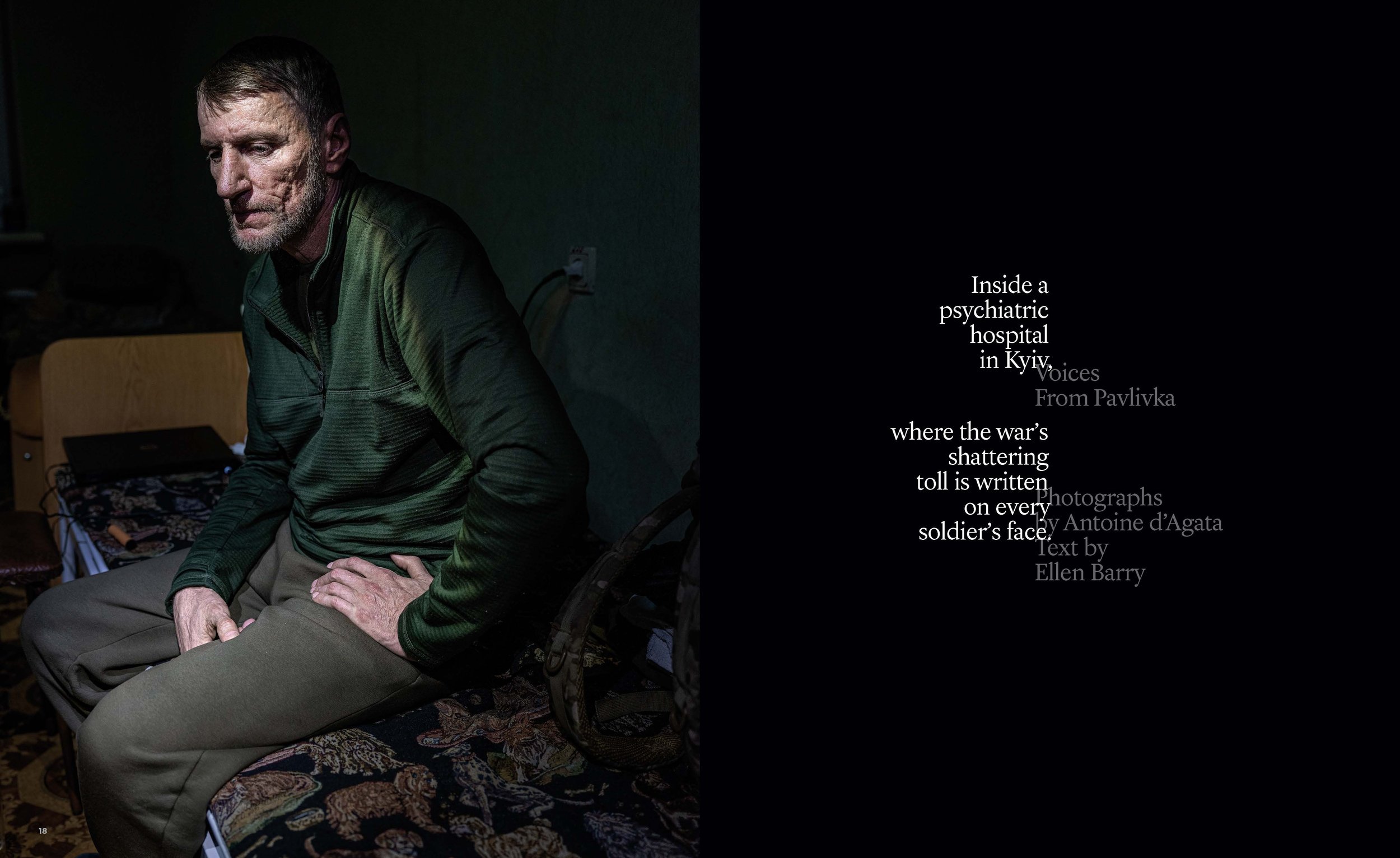
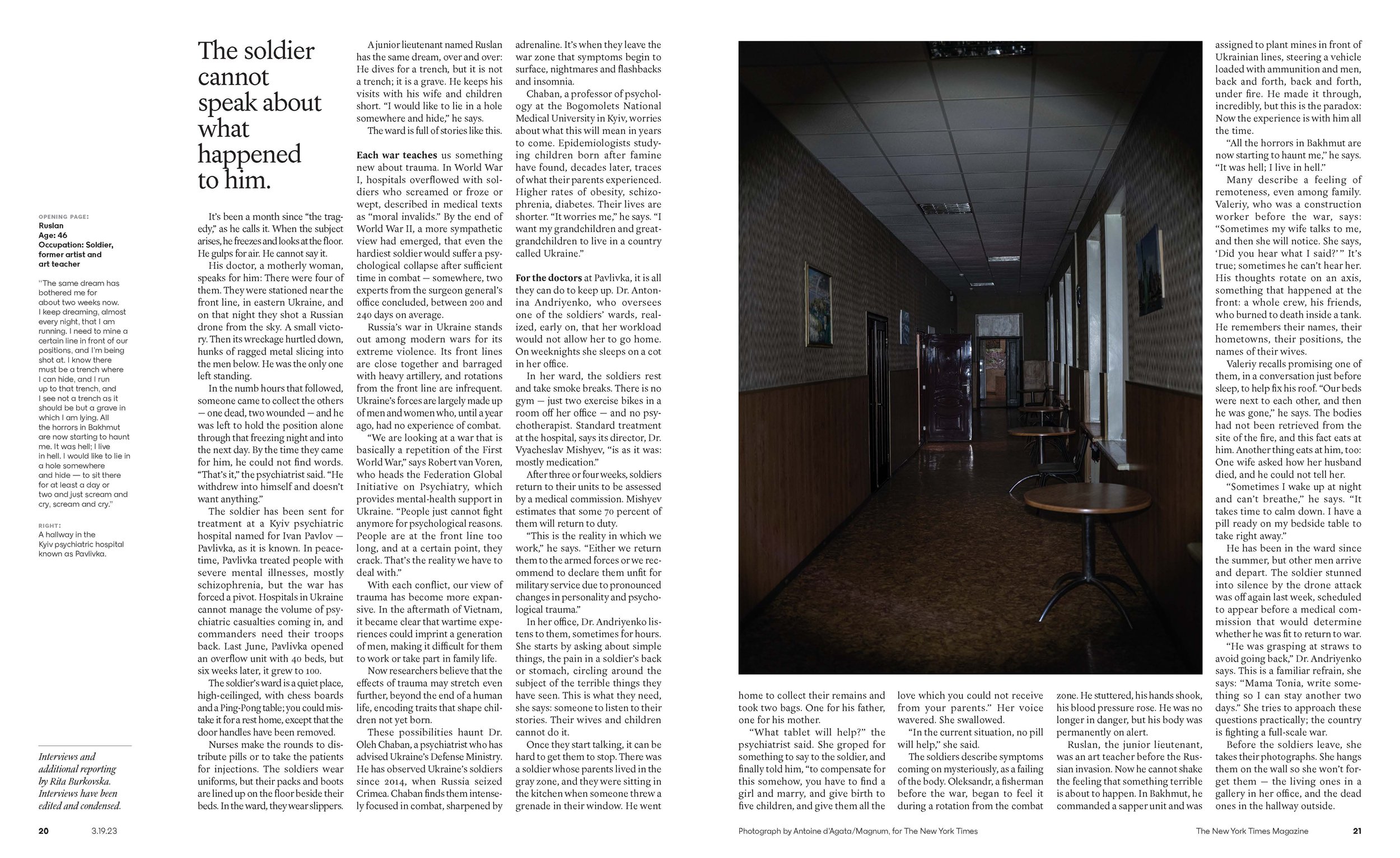

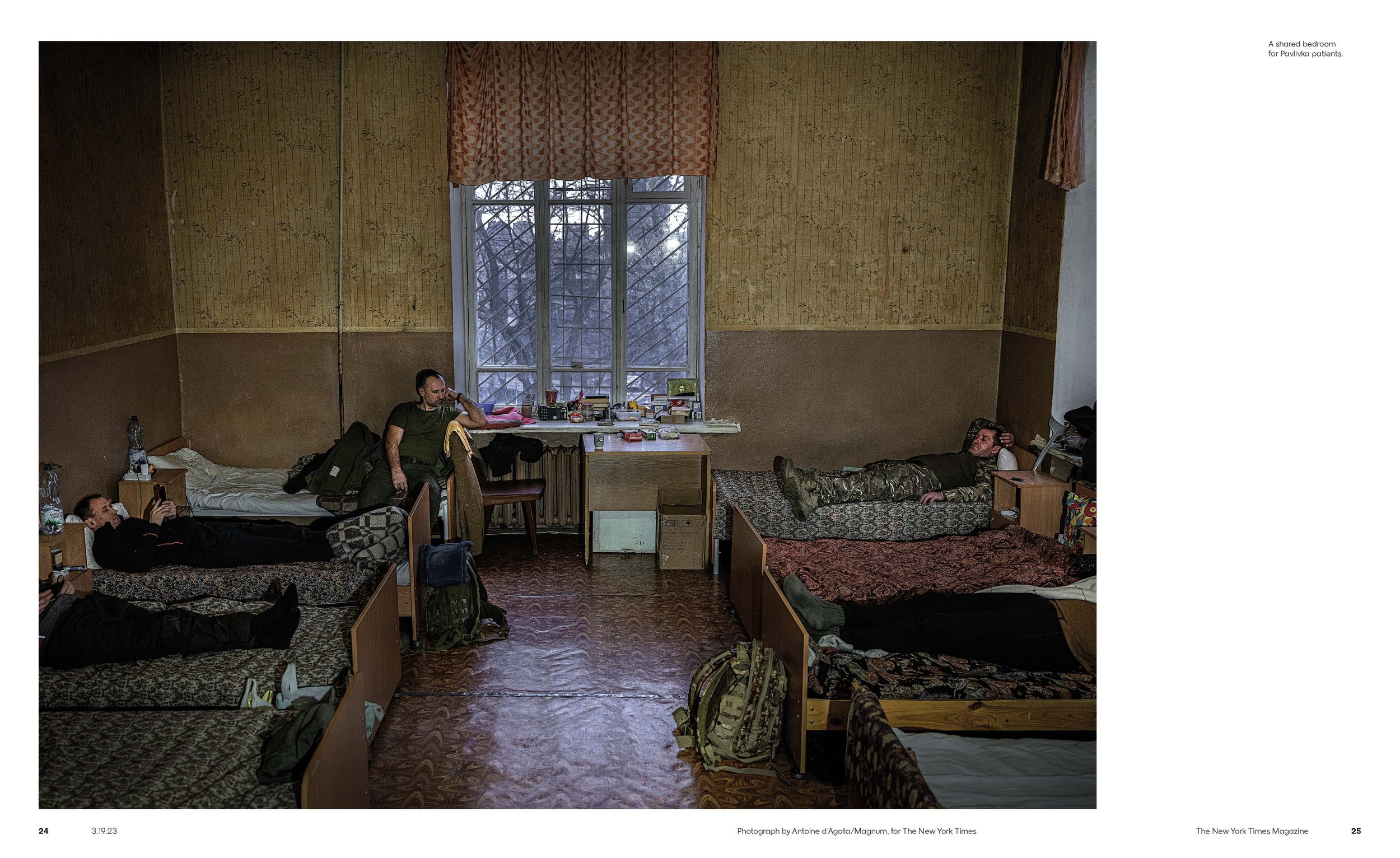
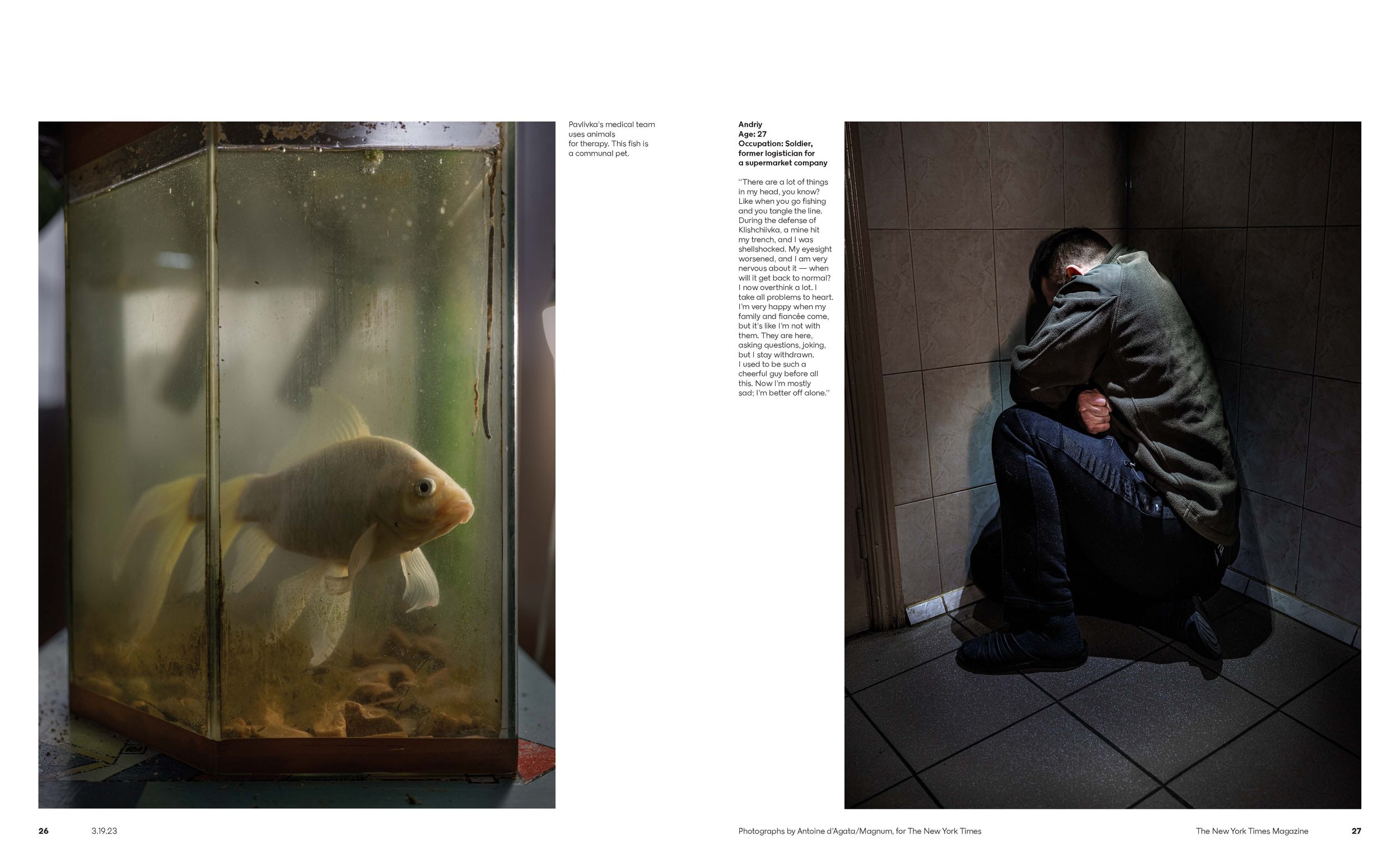

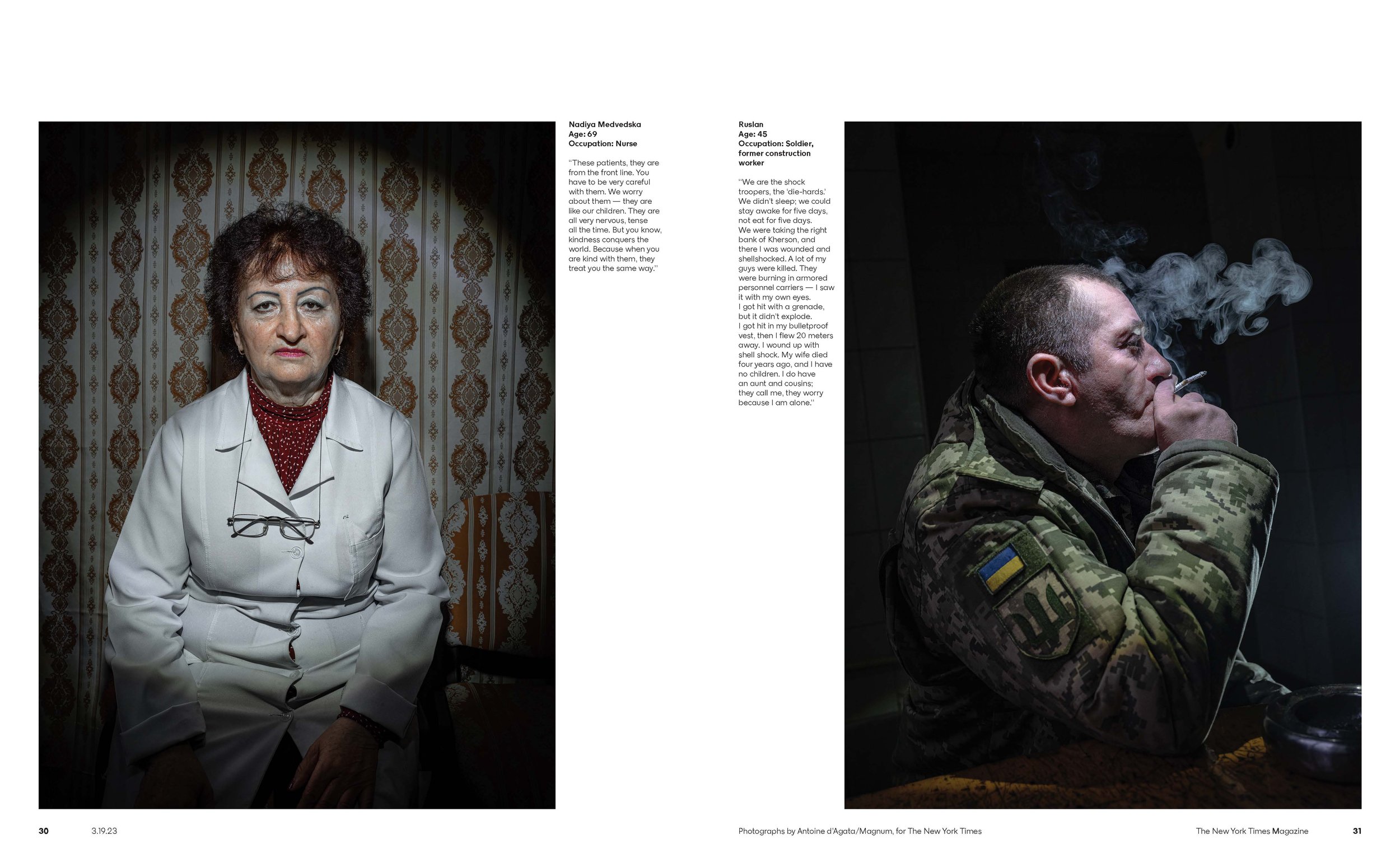
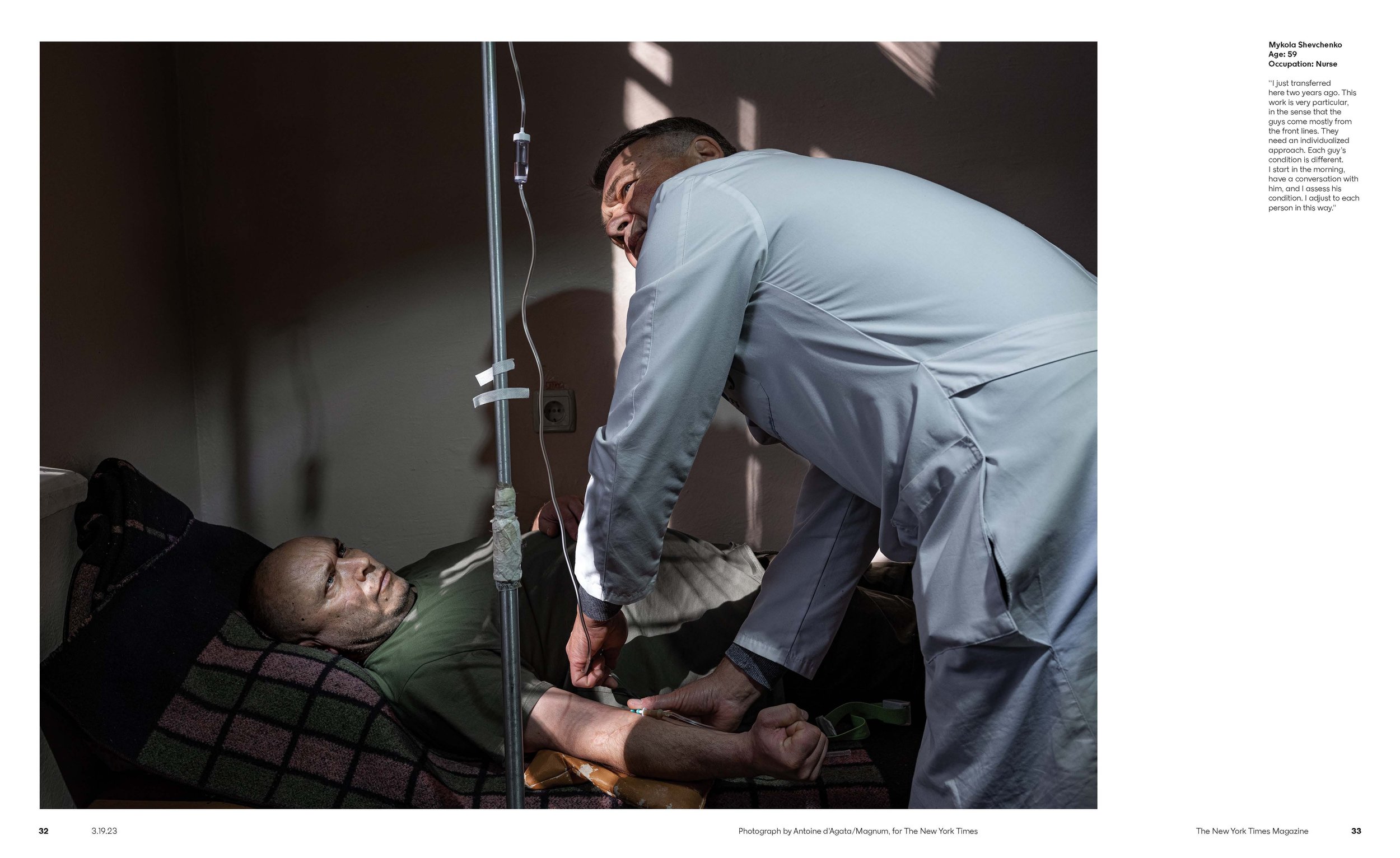
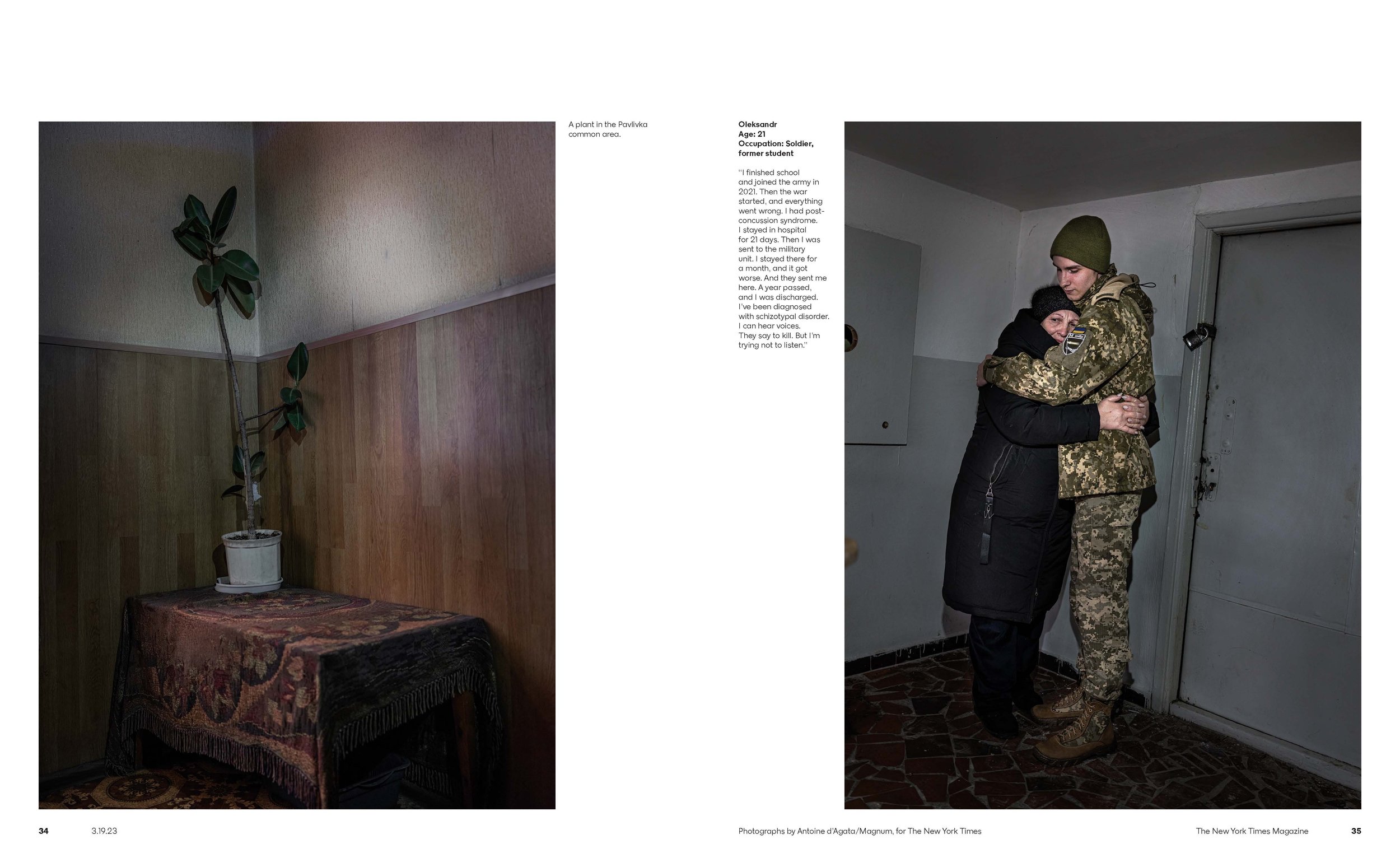
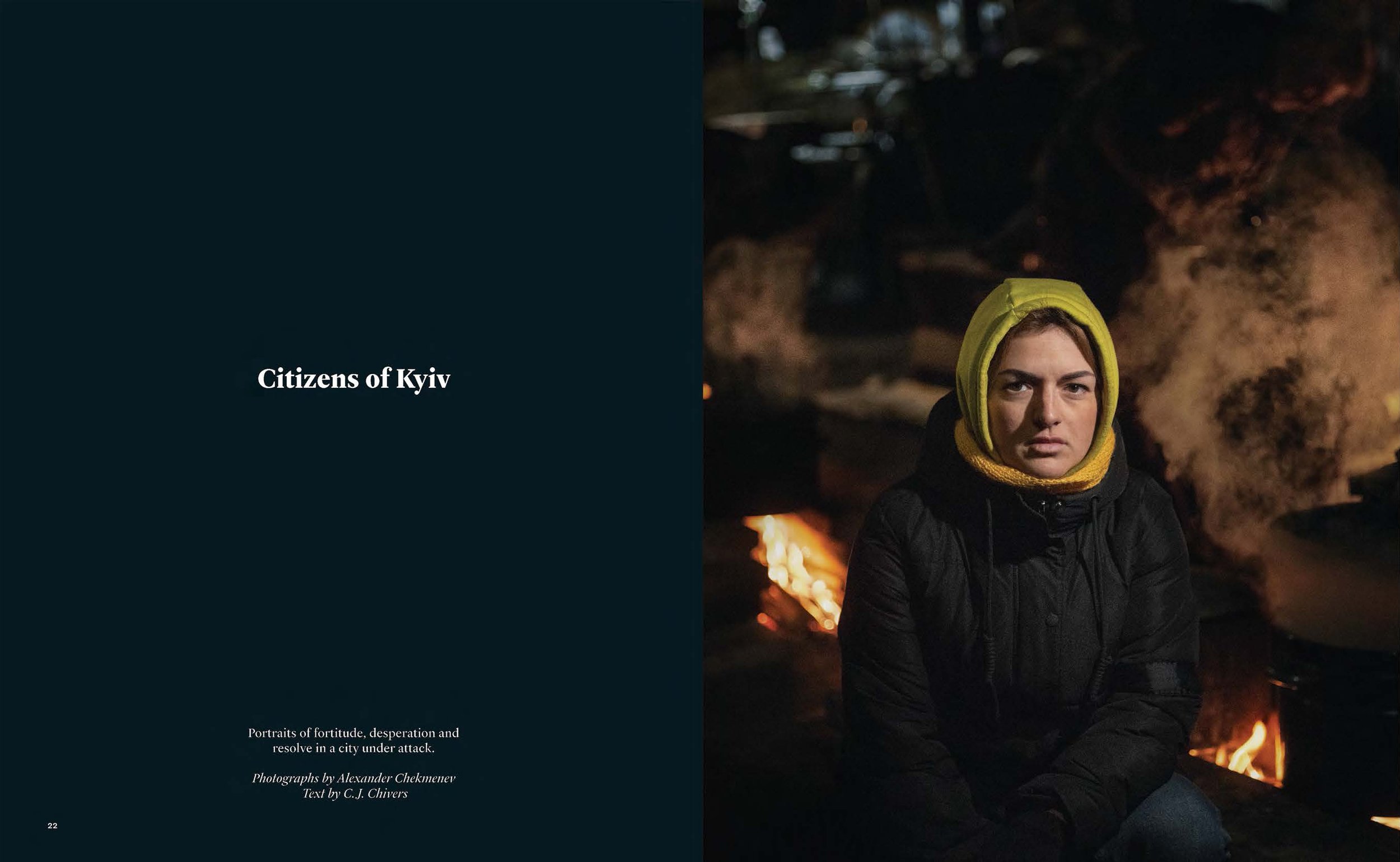
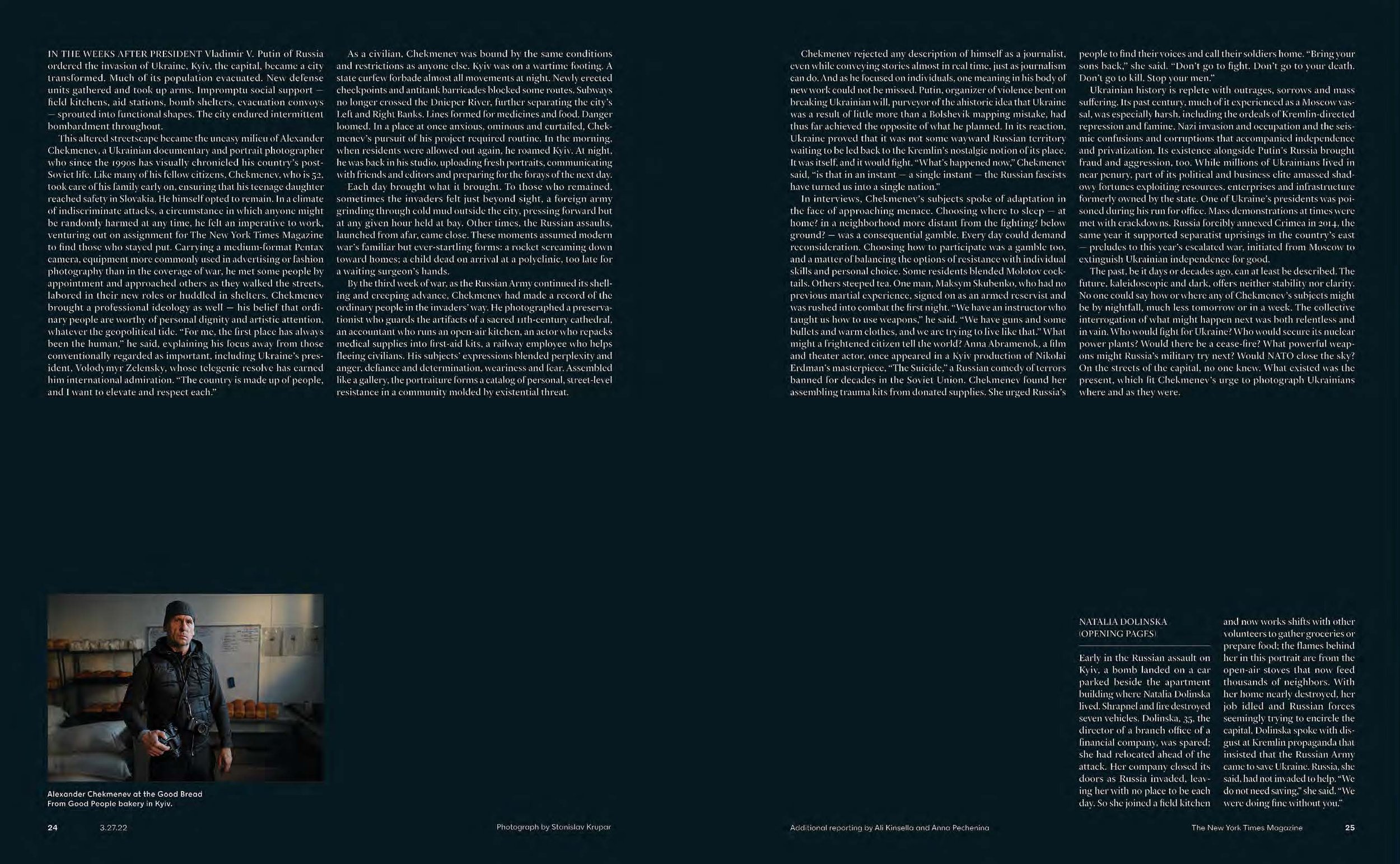

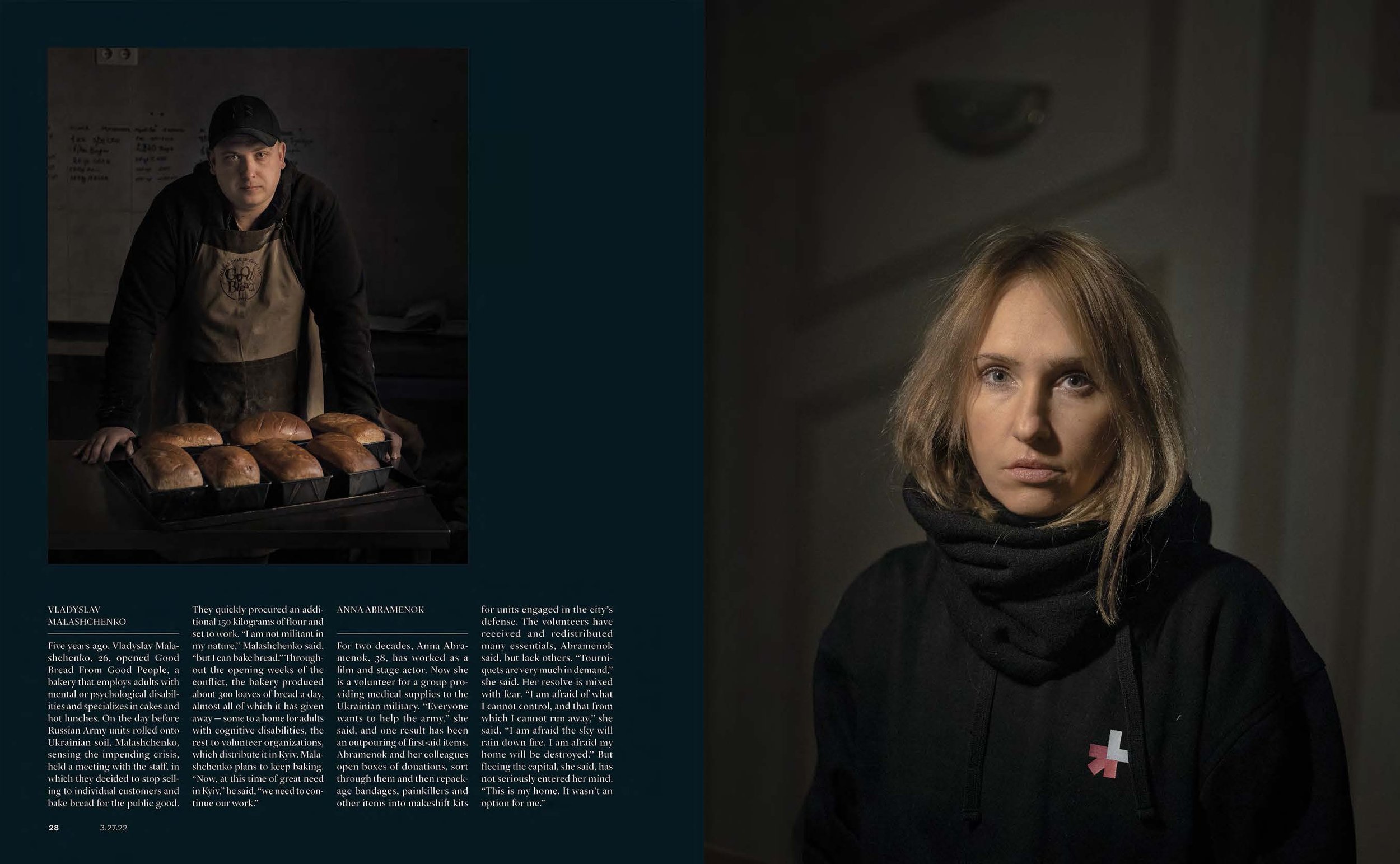
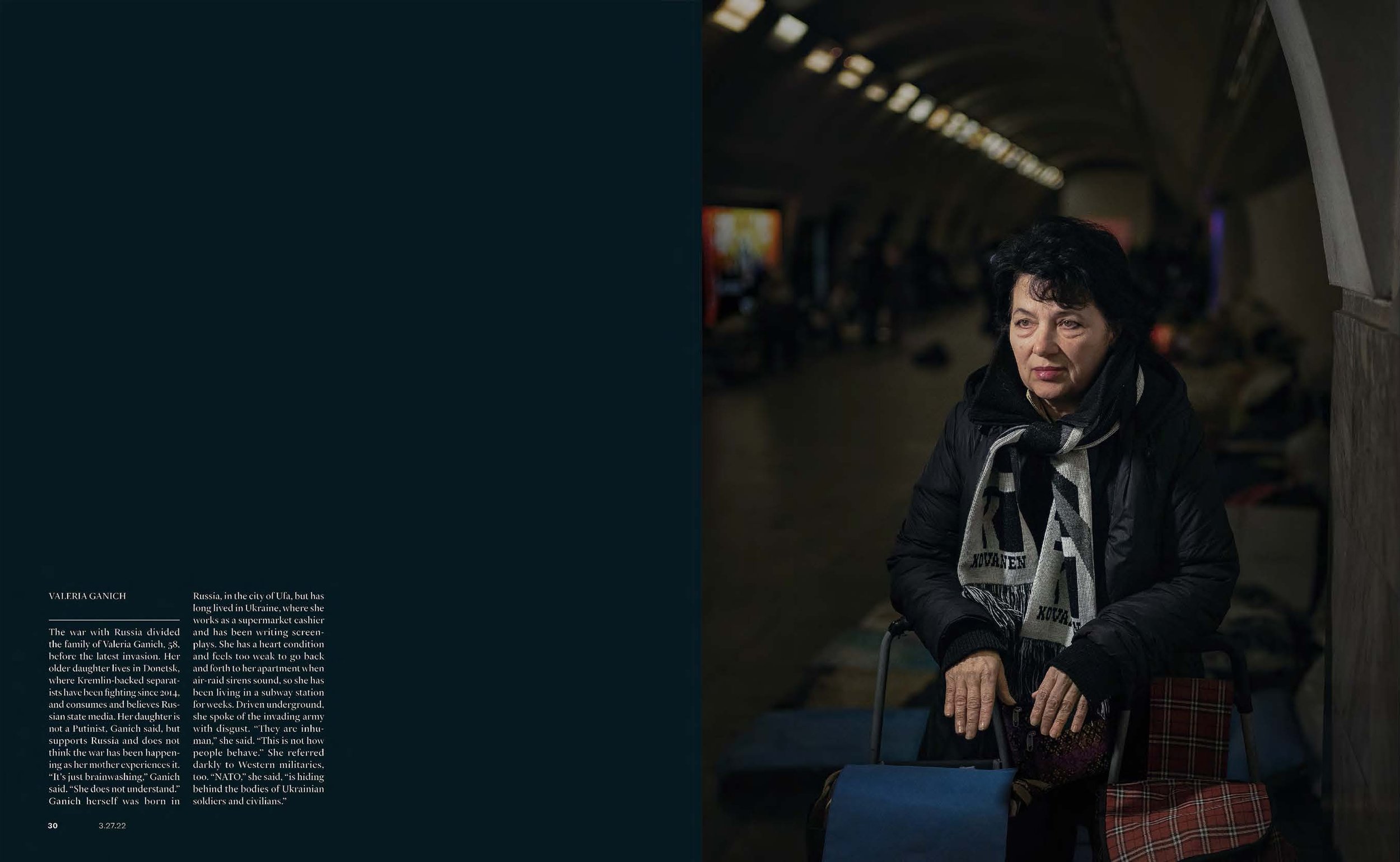
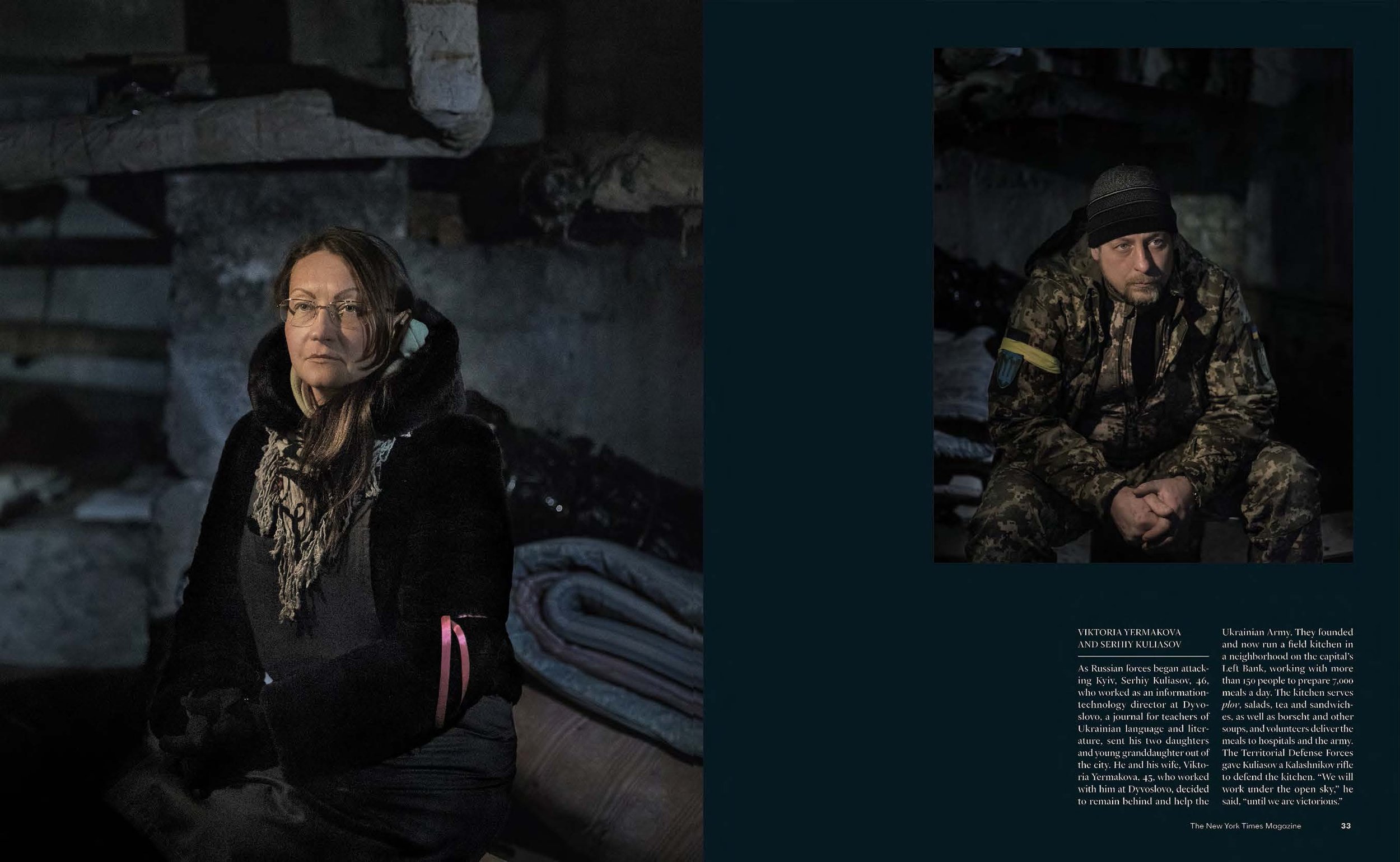
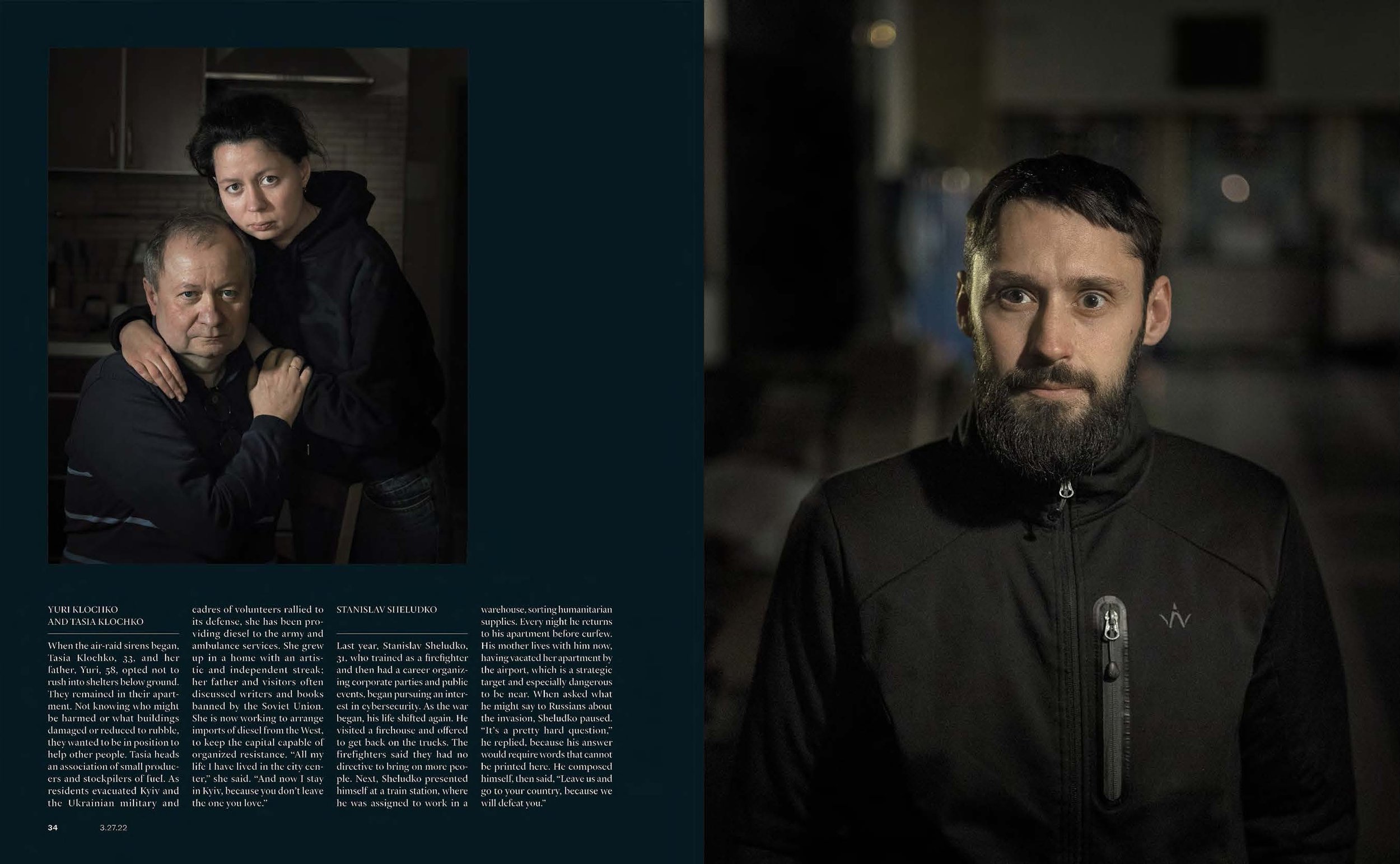


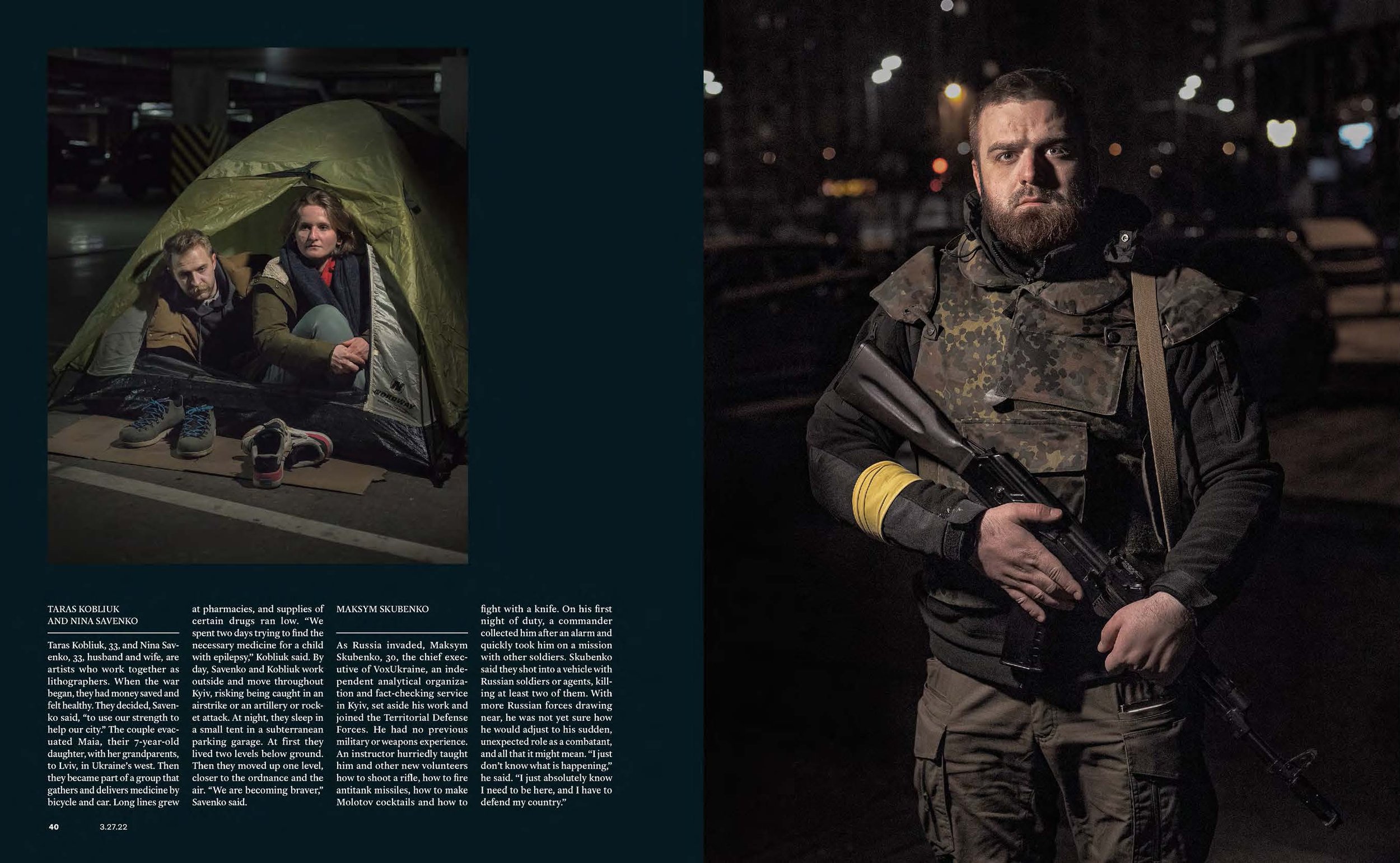



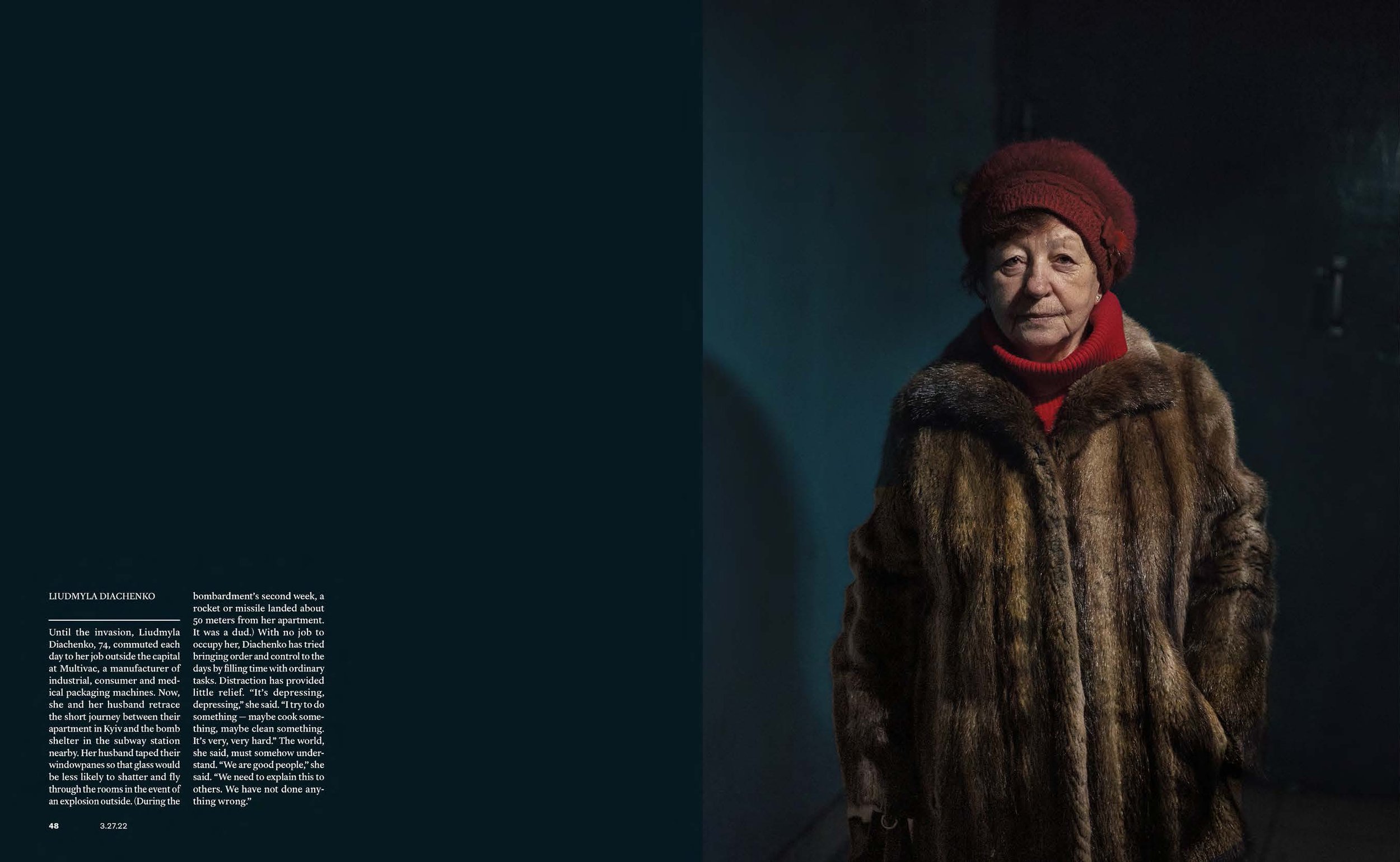
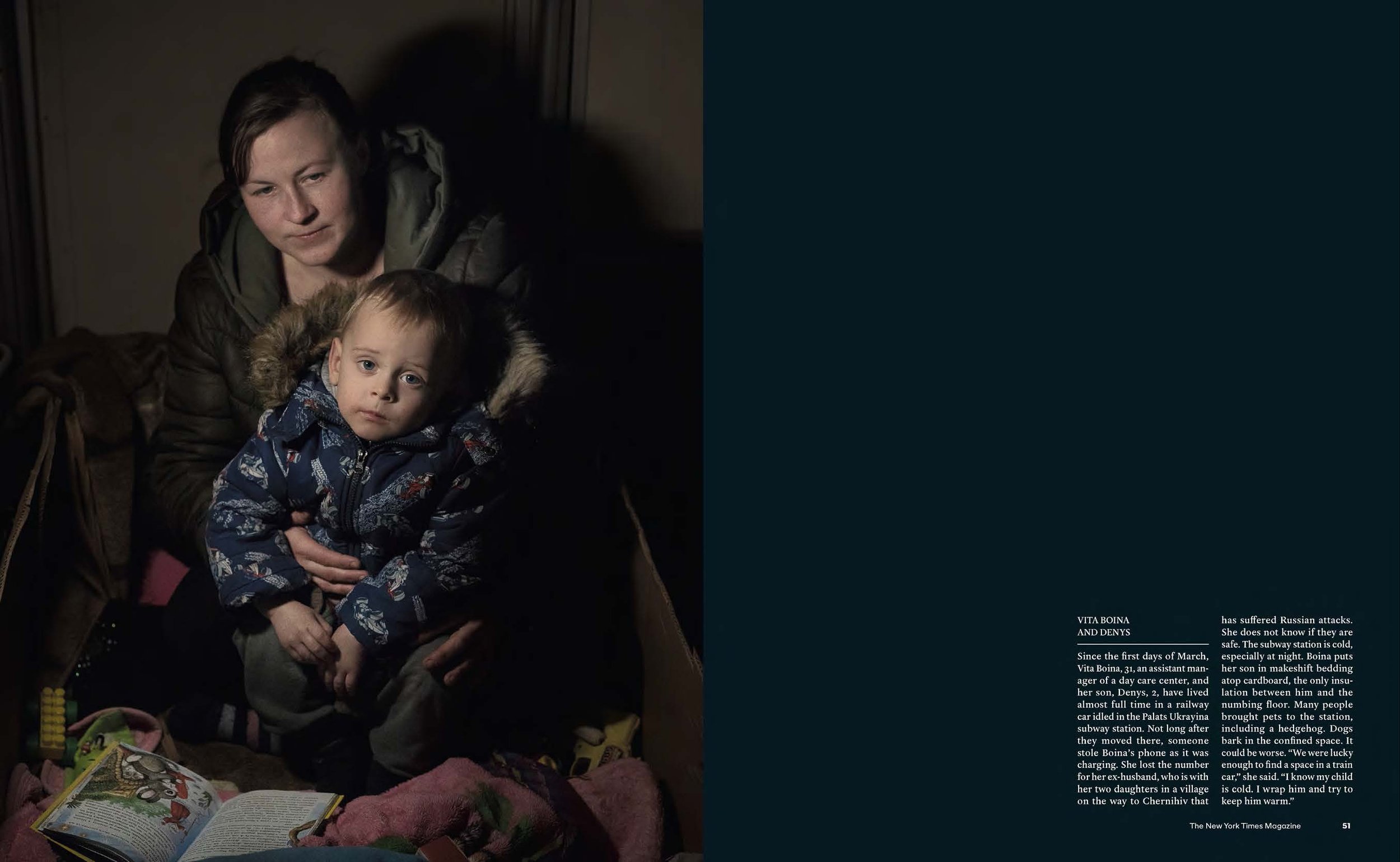
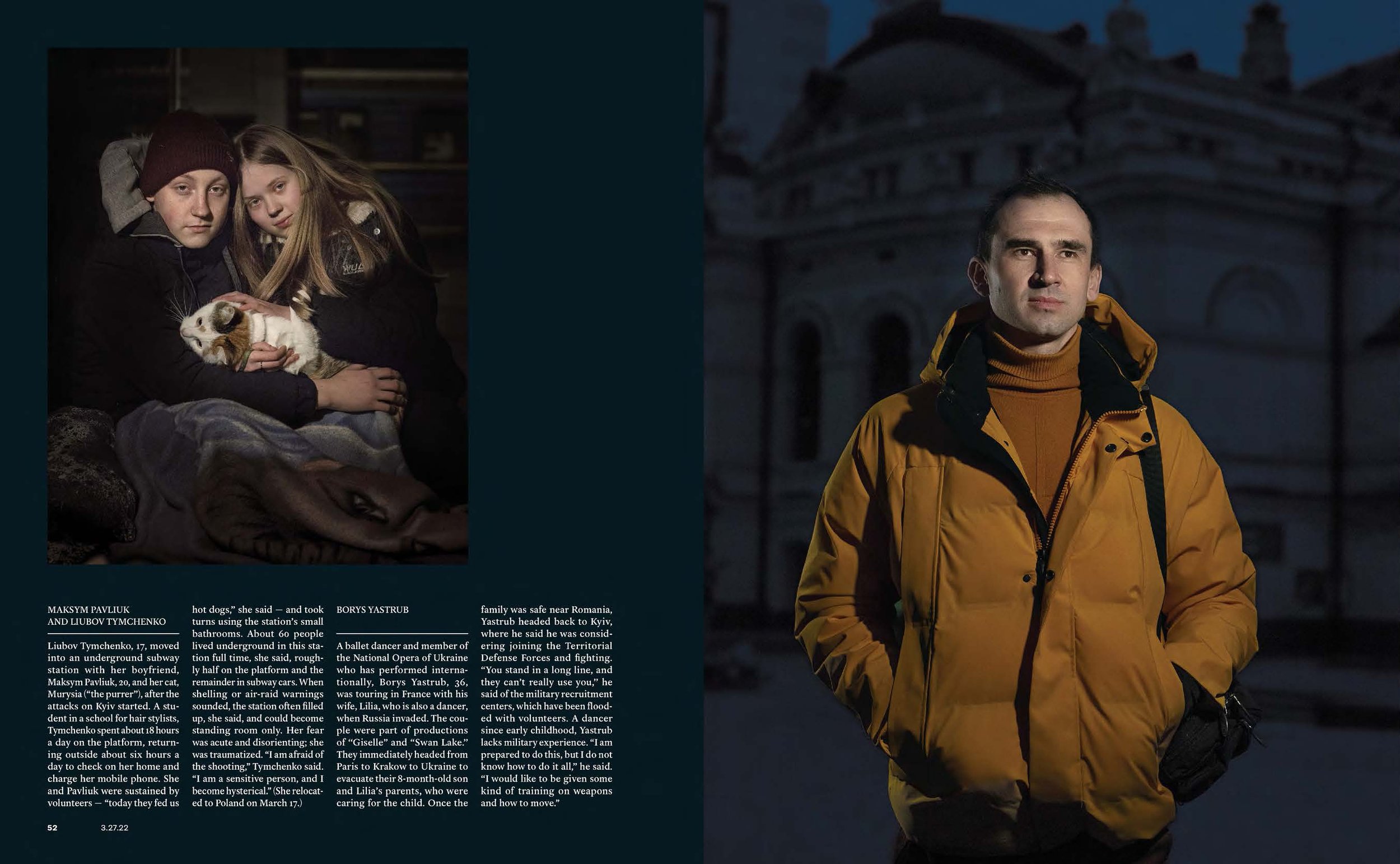
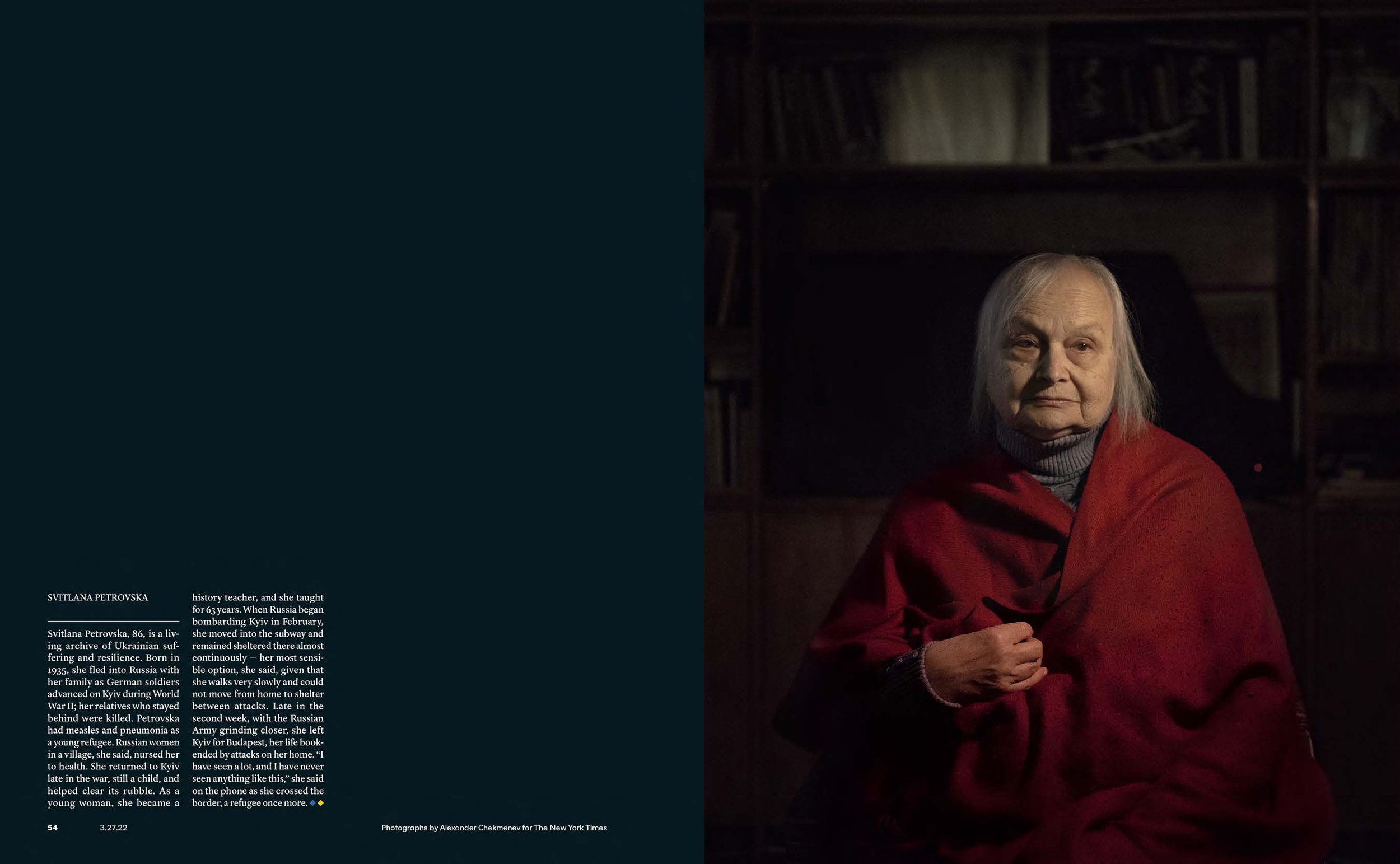
We cover all sorts of subjects. More so than almost any magazine. Our range is very broad—from the big, internationally reported pieces to The Way We Live Now features to the cultural stories. So we kind of cover it all, which, of course, makes it the most exciting job on the planet. Because one minute we’re producing a big shindig in Hollywood, and the next minute we’re doing something far more serious—figuring out how to cover the invasion in Ukraine. But then, of course, the most important decision you make is who’s the best photographer for the assignment.
And then figuring out the cover is its own thing. So a lot of my time, and Gail’s, and Jake’s, and our team’s, is spent figuring out what we should try to do for the cover. And right away: Is it photography? Is it illustration? Is it a photo illustration? Do we think this is a story that we want to go documentary? So that gives you some idea.
The other day I was talking with Jake and he said something I thought really made sense. He said, “Basically we do three things. One is artistic, obviously. One is the expression of ideas. And then the third is deadlines.” You know, it’s a weekly and I cannot stress enough that it’s always at an accelerated pace.
Just about everything we do is full throttle, meaning as fast as we’re assigning one thing, we’re thinking about the next one. We’re trying to get it lined up.
George Gendron: I’m curious, you talked about the cover. You have one luxury that the rest of us in the mainstream magazine industry have never had, which is you don’t have to worry about newsstand sales. And I think that’s really liberating. And I’m curious about your response to that. So how do you think about the cover? What’s the role of the cover within the Sunday paper?
Kathy Ryan: I think the role of the cover is to stand out. So when somebody opens up their Sunday paper, their bundle, you want the cover to call attention to the stories inside. So I think of it, first and foremost, to get people into the magazine. We’re very aware of how fortunate we are that we don’t have to compete on the newsstand. That has always been a gift because it just means there’s a freedom—the decisions can be made in terms of what’s the best artistic approach.
And Jake is a big believer in that. What does that mean? Maybe it means we can do something a little bit more obscure, less direct. Sometimes we have a chance to play around with more poetic imagery that wouldn’t stand out on a newsstand, but it’s a really thoughtful, beautiful picture.
Many of the conversations that we have, between me and Gail and our design and photo teams, have a lot to do with that. What works as a cover image is often different. But then again, our covers vary widely. There’s not a look to them because one week it’s our Great Performers portfolio that we do once a year, pegged to the Oscars. And then another week it might be pure documentary photojournalism. So we have a tremendous variety and we try to shift according to the needs of a particular story.
The Joys and Challenges of Sex After 70 Photographs by Marilyn Minter
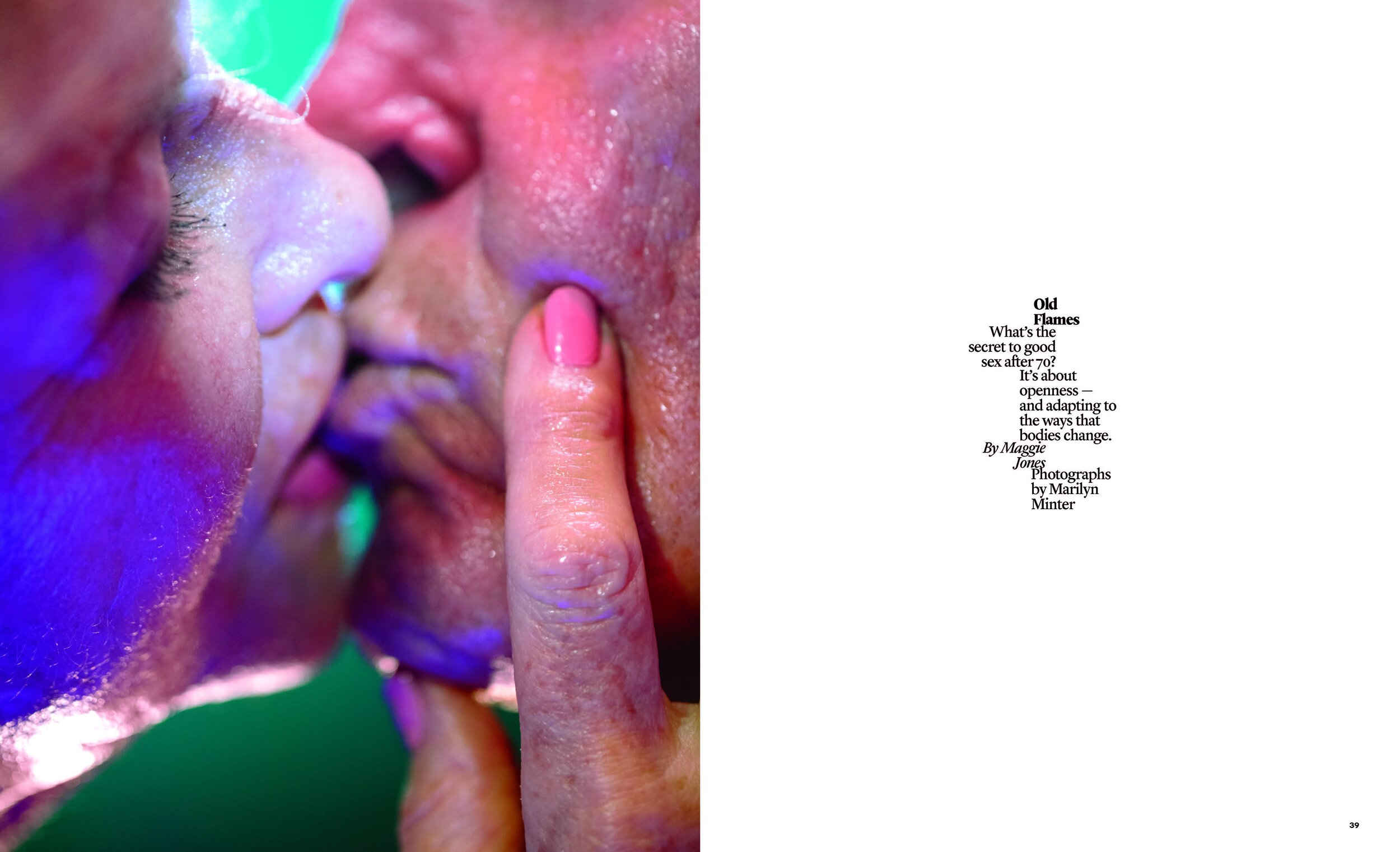
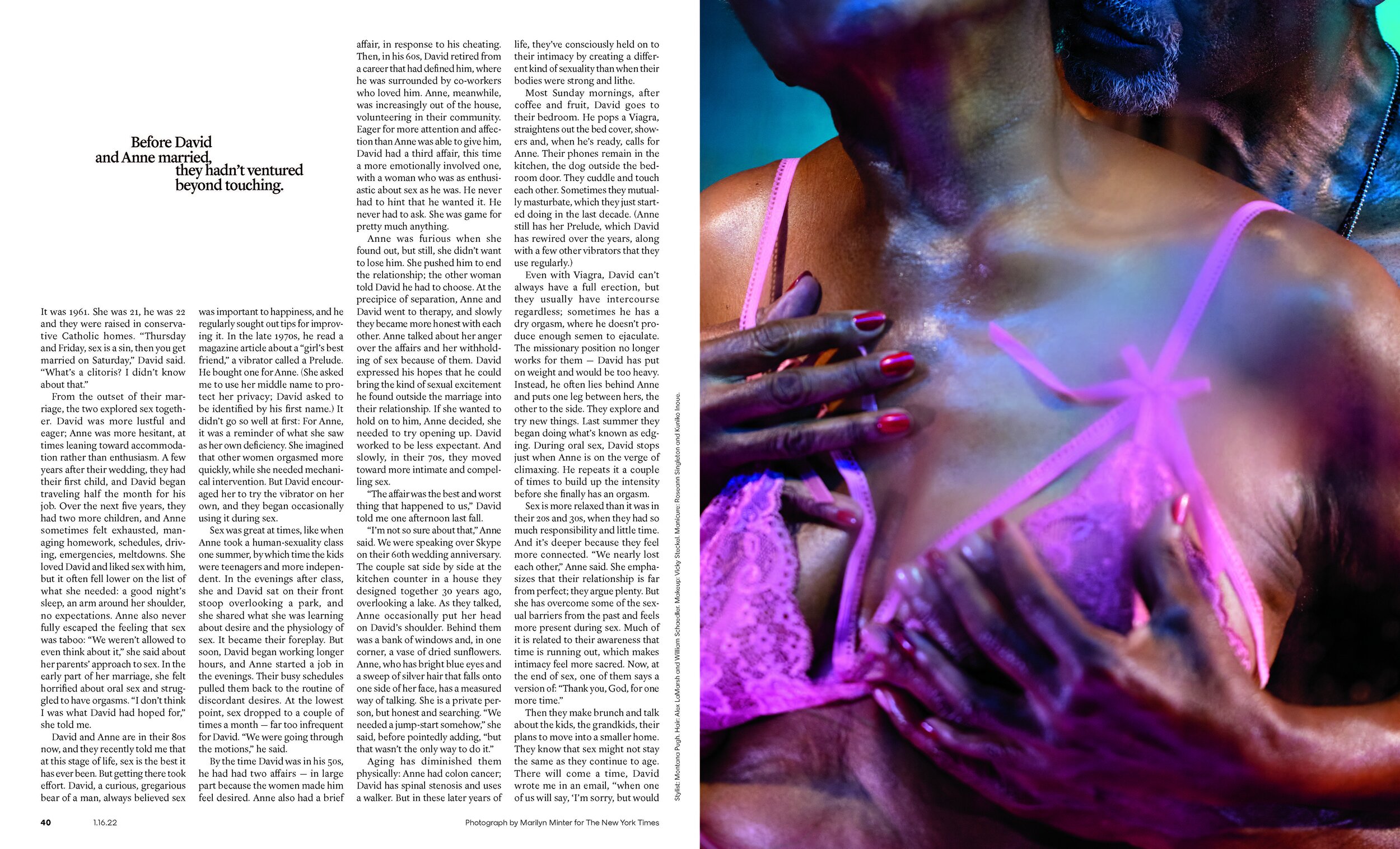
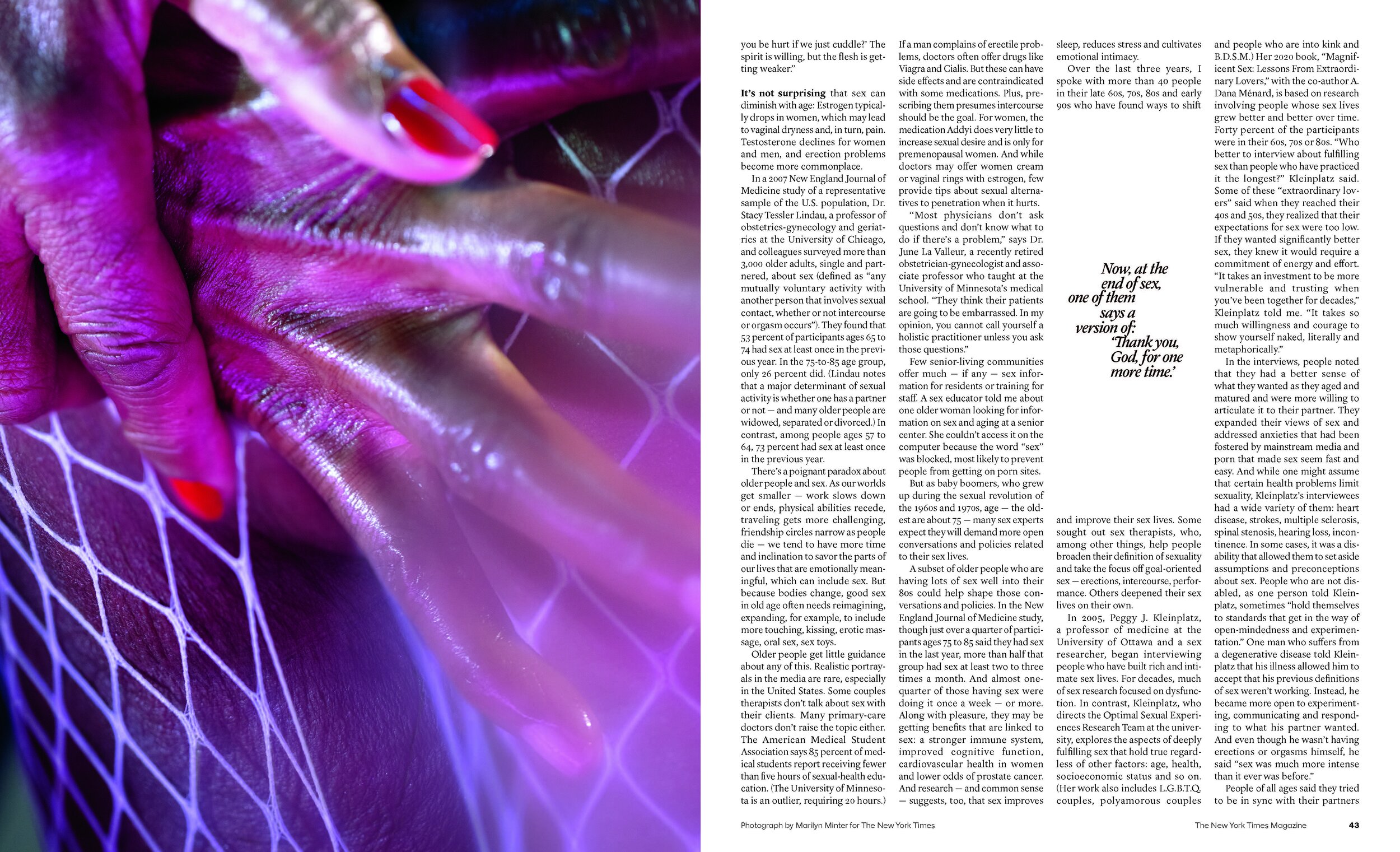
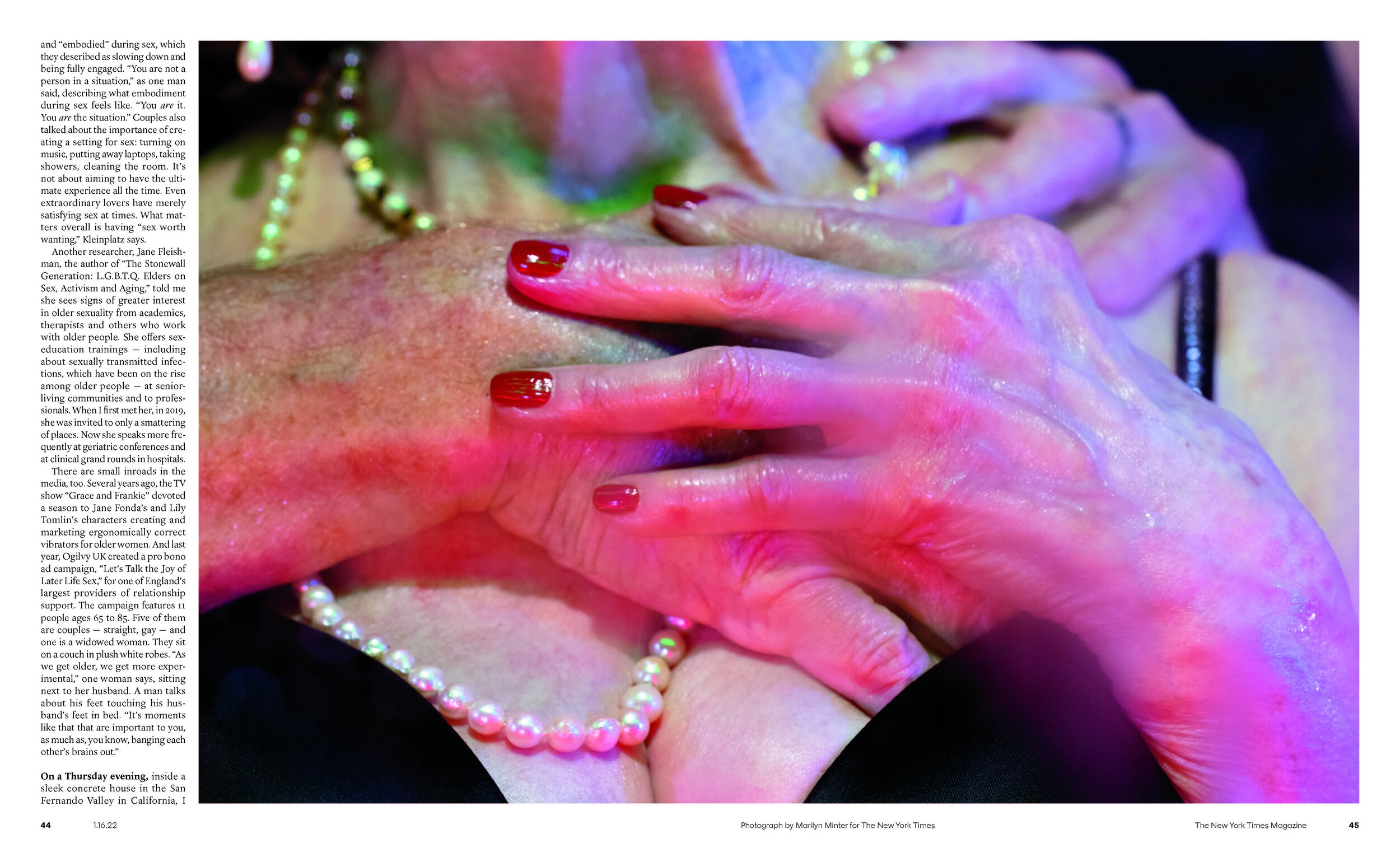
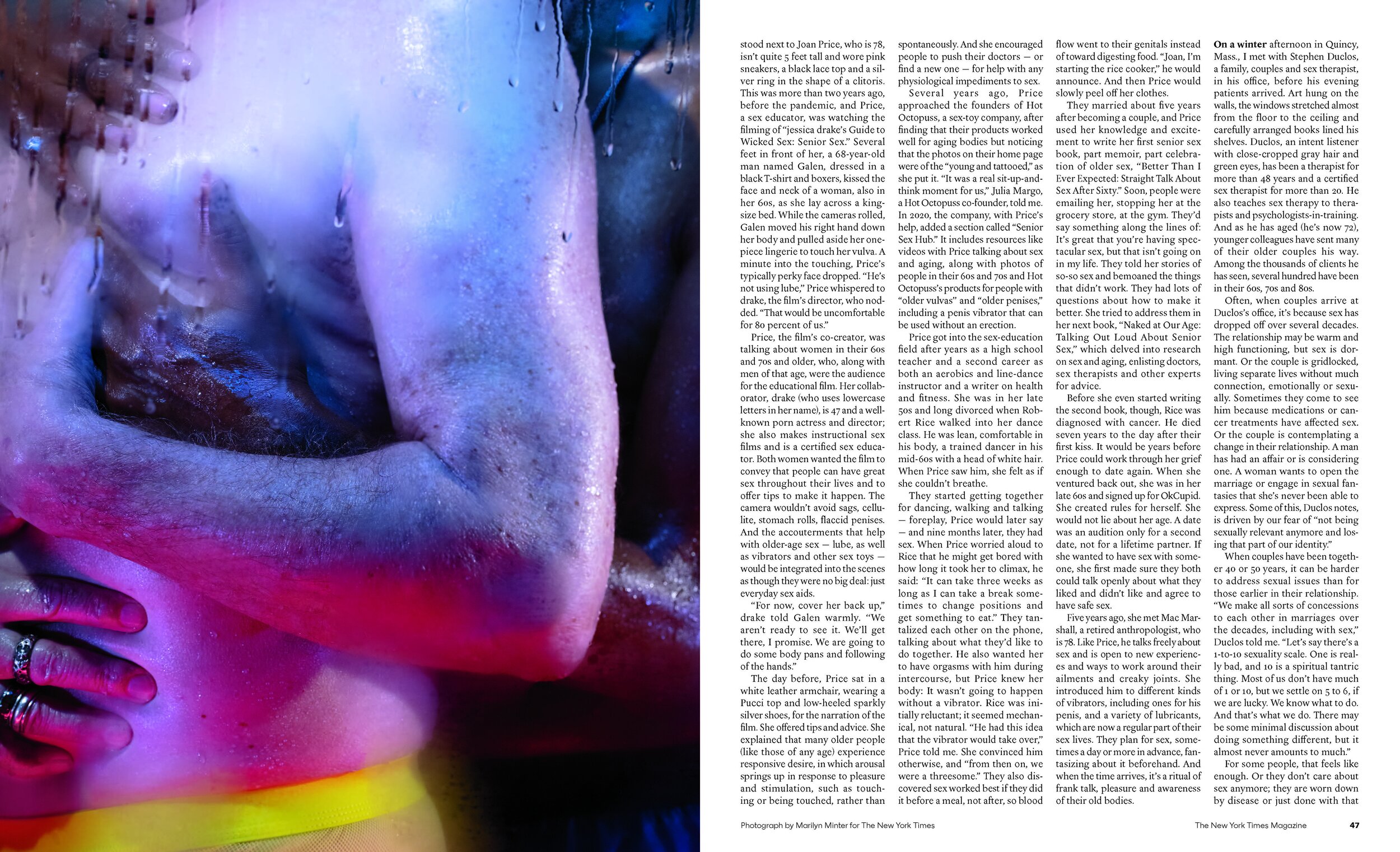
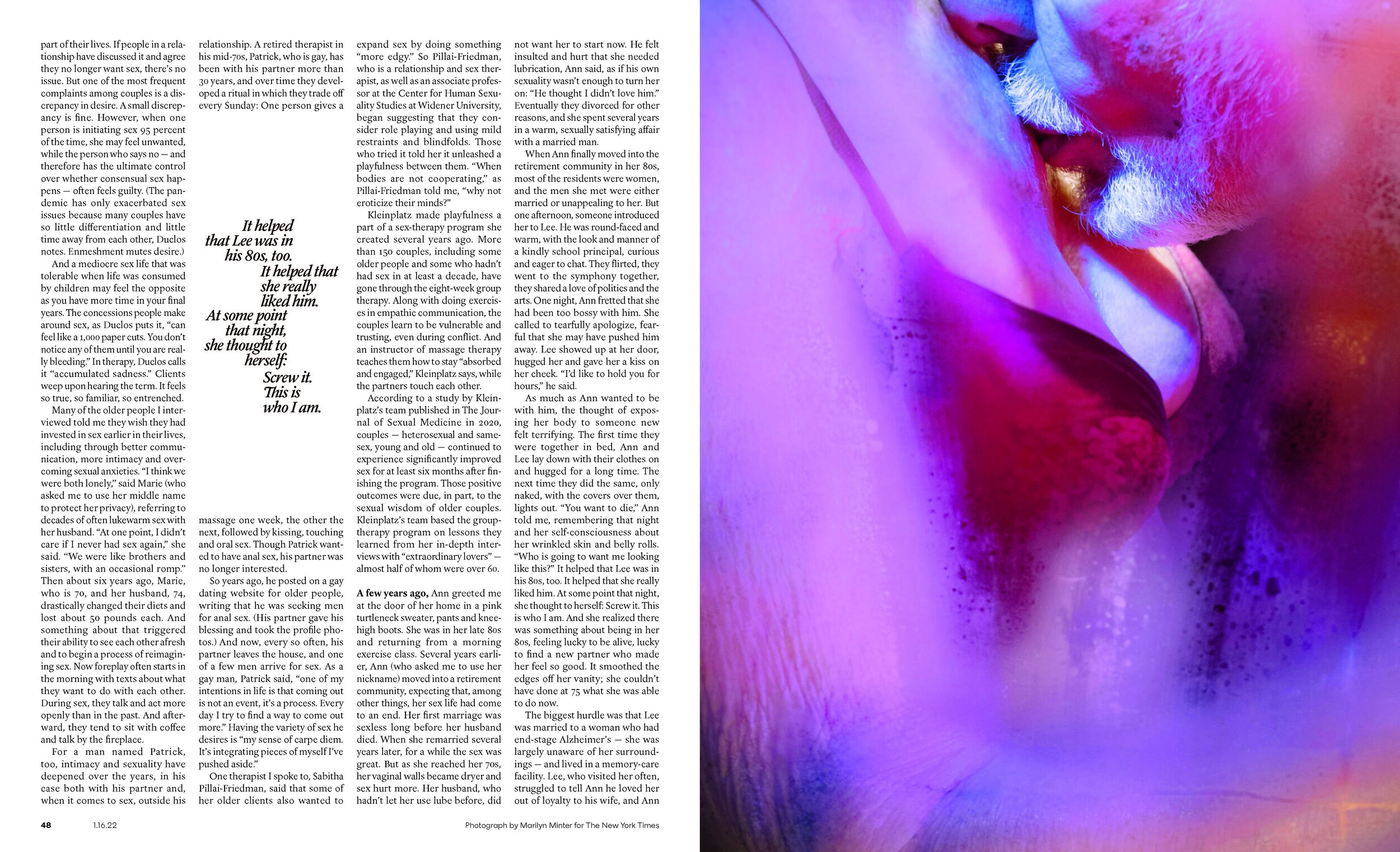
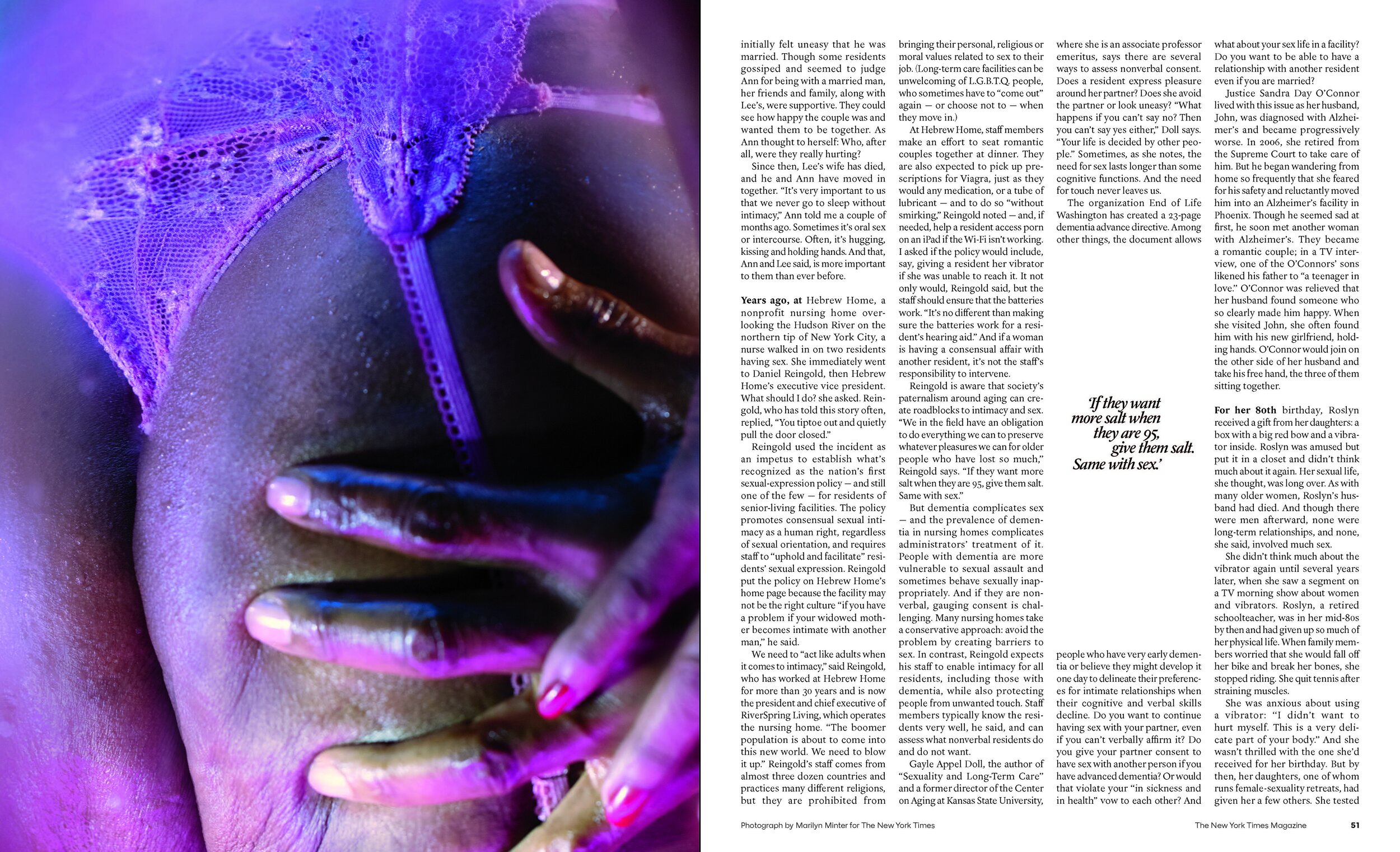
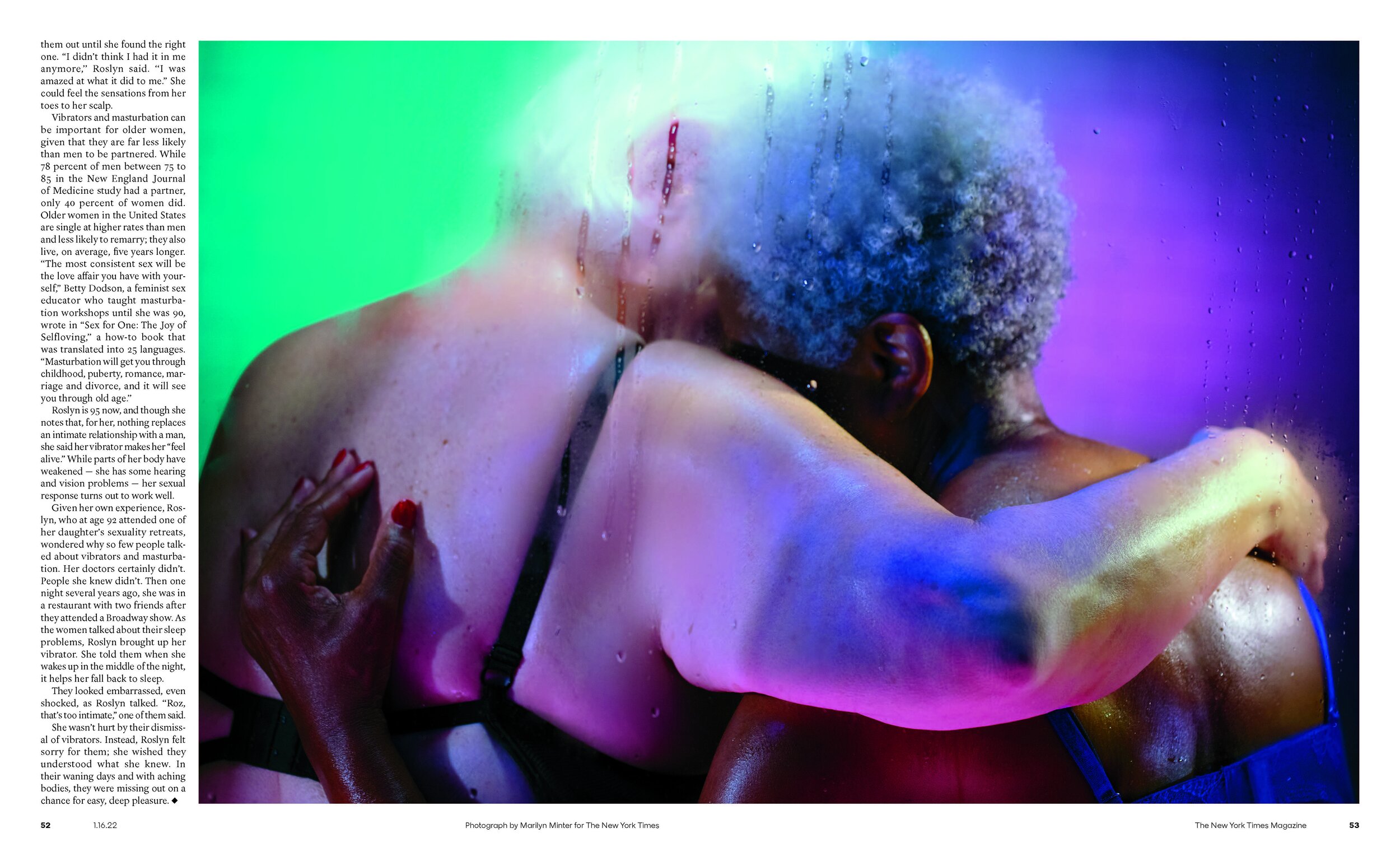
George Gendron: I’m assuming that you must be willing to take certain kinds of risks with your cover. Can you think of a recent one where you and your team felt, “Okay, this is a risk, but this is a risk worth taking”?
Kathy Ryan: Yes. And you have to take risks, otherwise you won’t do something memorable, right? So often it’s when you take a risk that you make something that’s memorable.
I would say this year when we commissioned Marilyn Minter to do our cover story on sex after 70, there was a risk in that. And it was exciting. It was thrilling. Who knows what’s going to happen? Anytime you assign an artist—somebody like Marilyn Minter, who spends her time making her own artwork, marching to her own beat, coming up with her own thing she wants to do—it’s a little bit of a different thing than when you’re working with a magazine photographer who completely understands the rhythms.
But it was such a risk worth taking. Why? The subject itself is interesting. I think the headline was “The Joys and Challenges of Sex After 70.” And she’s a terrific artist who—it’s her territory. For years she’s been making work—early on feminists thought it was pornographic—but she always believed in a very liberated, free-spirited approach to sexuality and her artwork.
And I knew already from having worked with her before that she could rise to the occasion. She totally would. She’s just, she’s both the free-spirited, no-holds-barred, do-her-own-thing, artist. The rebel, as it were. And she also understands The New York Times. Like, going into it, that was the feeling.
And we had a lot of fun. David Carthas was the photo editor on the project and he produced the whole thing, which basically meant casting. We worked doing the casting of the people of a certain age, which was its own challenge. And then it was a couple days in the studio in New York with Marilyn and there was a risk. Who knows? Not only are we working with this artist, we’re working with people who are semi-nude. They’re in lingerie and, on the other hand, it was a high-impact cover. And I got a kick out of it because, when you look at the comments, there were people who loved it, loved it, and people who hated it.
And that’s an interesting place to be. How often do you do that with a magazine cover? It got a strong response. That’s the best. That’s the best, right? You know that from what you were just talking about—if you can take a risk like that, but of course you have to, especially at The New York Times, you have to do it in an intelligent way.
With this subject, it seemed like we could take that kind of risk. If we’re covering an extremely important, of-the-moment political story, that’s not a moment when you’re going to go and do something artsy, highly creative, risky, right? Because there’s certain other criteria we have to meet. That the cover needs to accomplish. And journalistically it goes into a different zone. But, we’re lucky enough that sometimes, after years of doing this, I have a sense of where there’s some latitude. And obviously, working with Jake and Gail and the team, Is this one where we can do something fun?
Every year we do a voyages photo issue, usually in the fall. And this year the theme for it was animals. And it was an idea that Amy Kellner, one of our picture editors had. She had been pitching doing animals for years.
And this was the year it got the green light. And this is always, for us, particularly exciting because the photo team gets to drive it to a large extent. And we started figuring out ideas along with story editors.
And one of the ideas that Sam Anderson, one of the writers, pitched was the Icelandic ponies. They have these funny small horses in Iceland that people love, and so that was one of the five or six photo essays that we commissioned. And I was thinking right away, Okay, if we’re going to do animals, we have to do something different.
“It all starts with somebody having the ability to compose the chaos of the world within the frame, the ability to see light. Because photography is always about light.”
So brainstorming with Amy, she said something like, “Maybe we should show them like they’re, like, My Little Pony Rainbow Ponies.” I was like, “Yes!” And then I thought of Gareth McConnell. A brilliant Irish photographer who does these fabulous—his pictures have an “otherness.” They breathe and shimmer with something else. Like he’s often doing still lives of flowers, his own personal work. They’re magnificent and there’s a shimmer to it, and the color comes out of darkness. Anyway, I could just imagine if we took him to those horses, he would do something magical.
In other words, it’s a way of saying his vision sees the magical and transcendent in the world. And we lined it all up. Rory Walsh on our staff and Jessica Dimson found the best horses in Iceland, worked the access to that, and then we worked with them to black out the whole stable.
So anyway, Gareth did brilliant pictures and one of his photos was ultimately the cover. And it was this fabulous multi-colored horse, slightly out of focus, coming out of darkness. That’s when I think we’re at our best, where it’s unexpected because instead of just seeing the beautiful, natural horse, we had a wonderful back and forth. And I just felt like, “Hey, this is a chance we can transform it into something.” So we love to do that, if we can.
George Gendron: It’s interesting listening to you talk because one of the things that people have said about the magazine, and you in particular, is that you seem to challenge the boundary between photojournalism and fine art in a way that I’m not sure magazines have very often.
Kathy Ryan: I think that’s right. It was something I picked up on early in my career. And I got very excited by that because it allows the magazine to look different, to do something unexpected. Artists sometimes tap into something. In portraiture, it’s an undercurrent of what somebody’s psychological being is. They sometimes have what I think of as a sixth sense, as do, sometimes, photojournalists.
Like sometimes an artist has developed a universe of imagery that works for us. And that’s what’s fun about it. Just knowing that. And then sometimes you can do the reverse, where you take someone pure documentary—years ago, I had Paolo Pellegrin do the Great Performers portfolio, all documentary, behind the scenes with the actors.
And that was just great because he would not normally be doing that. So he goes in there with a whole other frame of reference. The tricky thing is there’s certain stories that it works. Like you would not do that with a major conflict story obviously, or a major issue-oriented story.
Those are the moments when we would be talking about something entirely different where you have to work with seasoned pros, who know how to navigate that kind of heart-wrenching, difficult, dangerous story and make quick decisions in the field, and obviously, have vision. It all starts with somebody having the ability to compose the chaos of the world within the frame. The ability to see light. Because photography is always about light.
The Voyages Issue: Iceland Photographs by Gareth McConnell

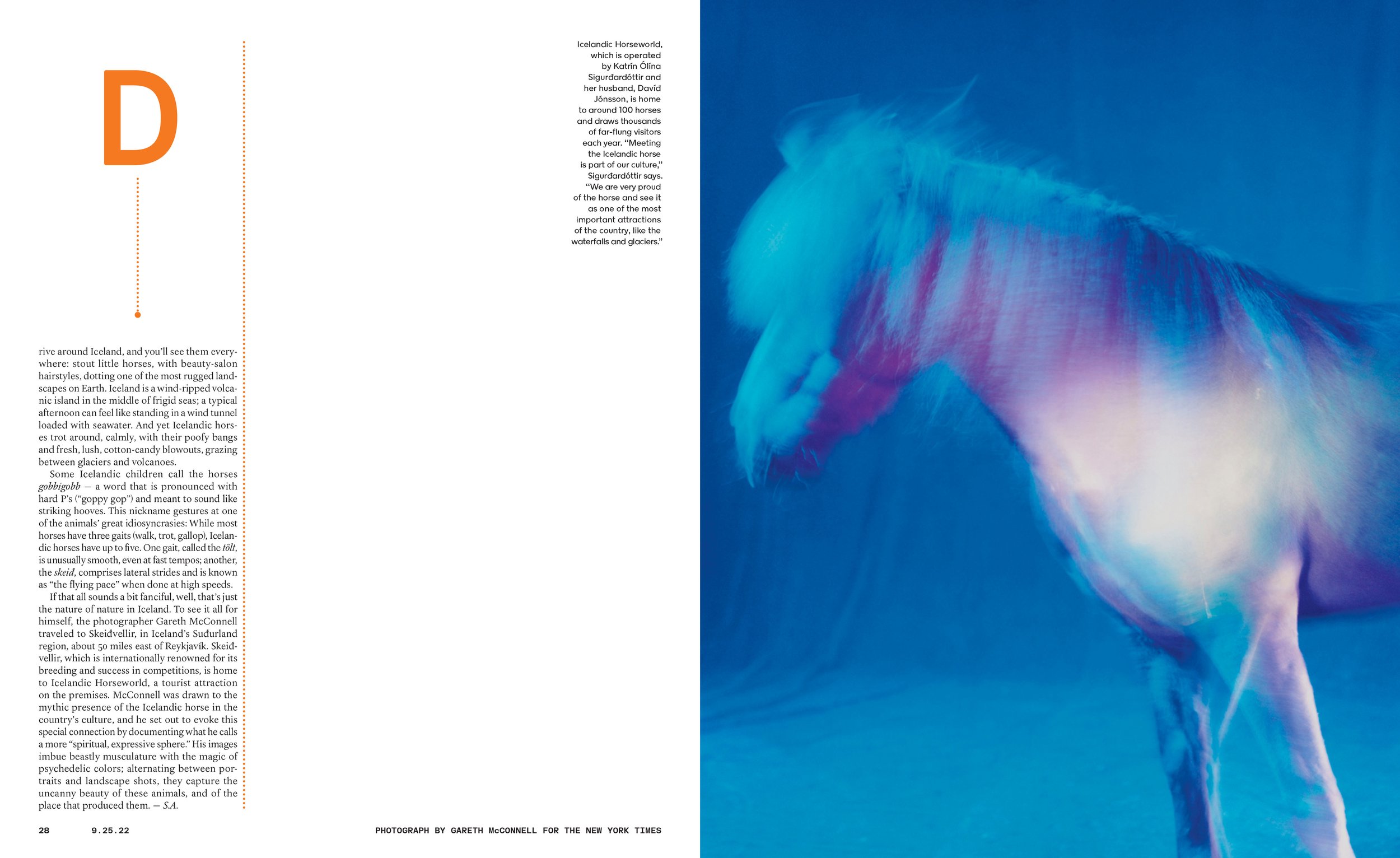
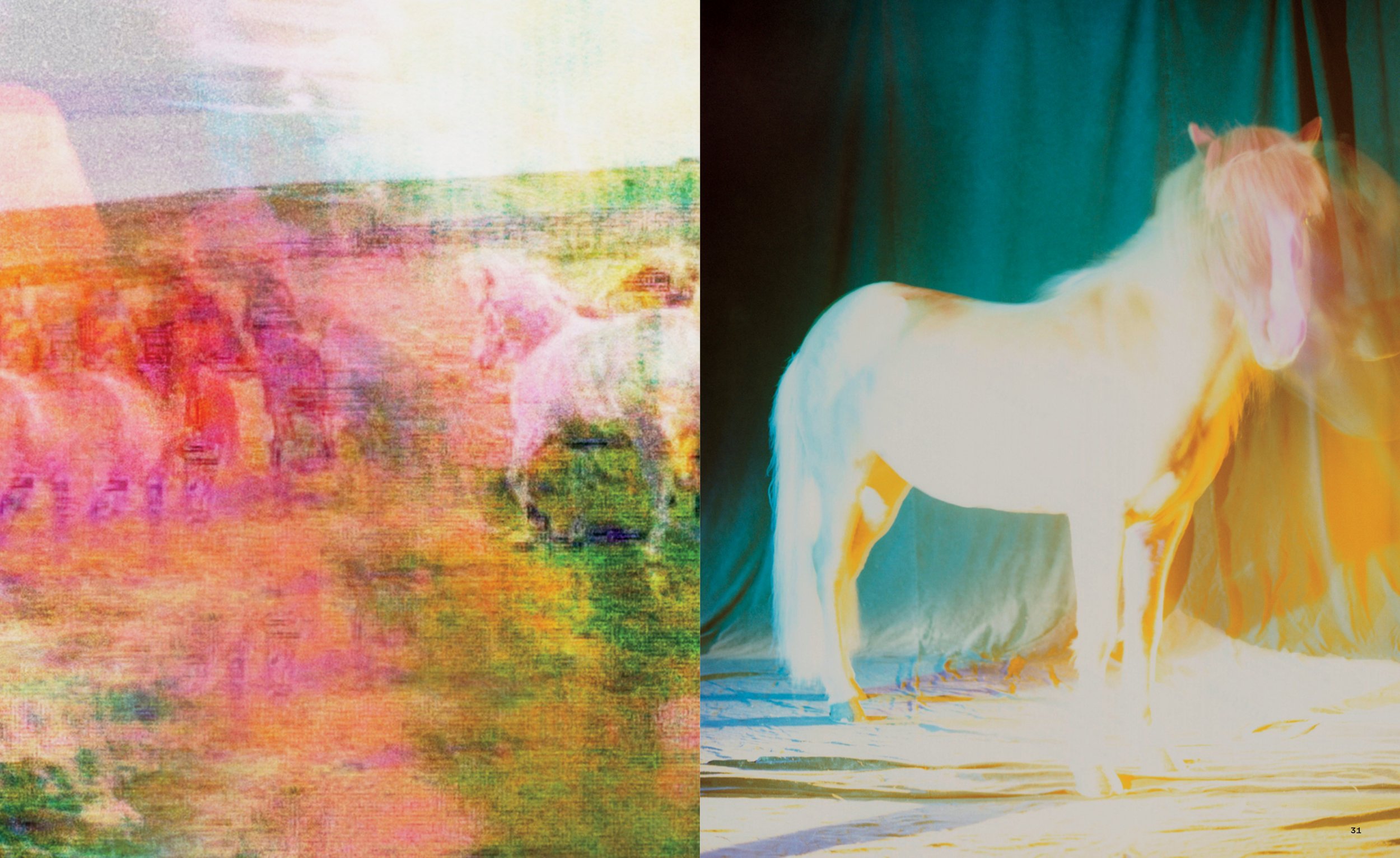
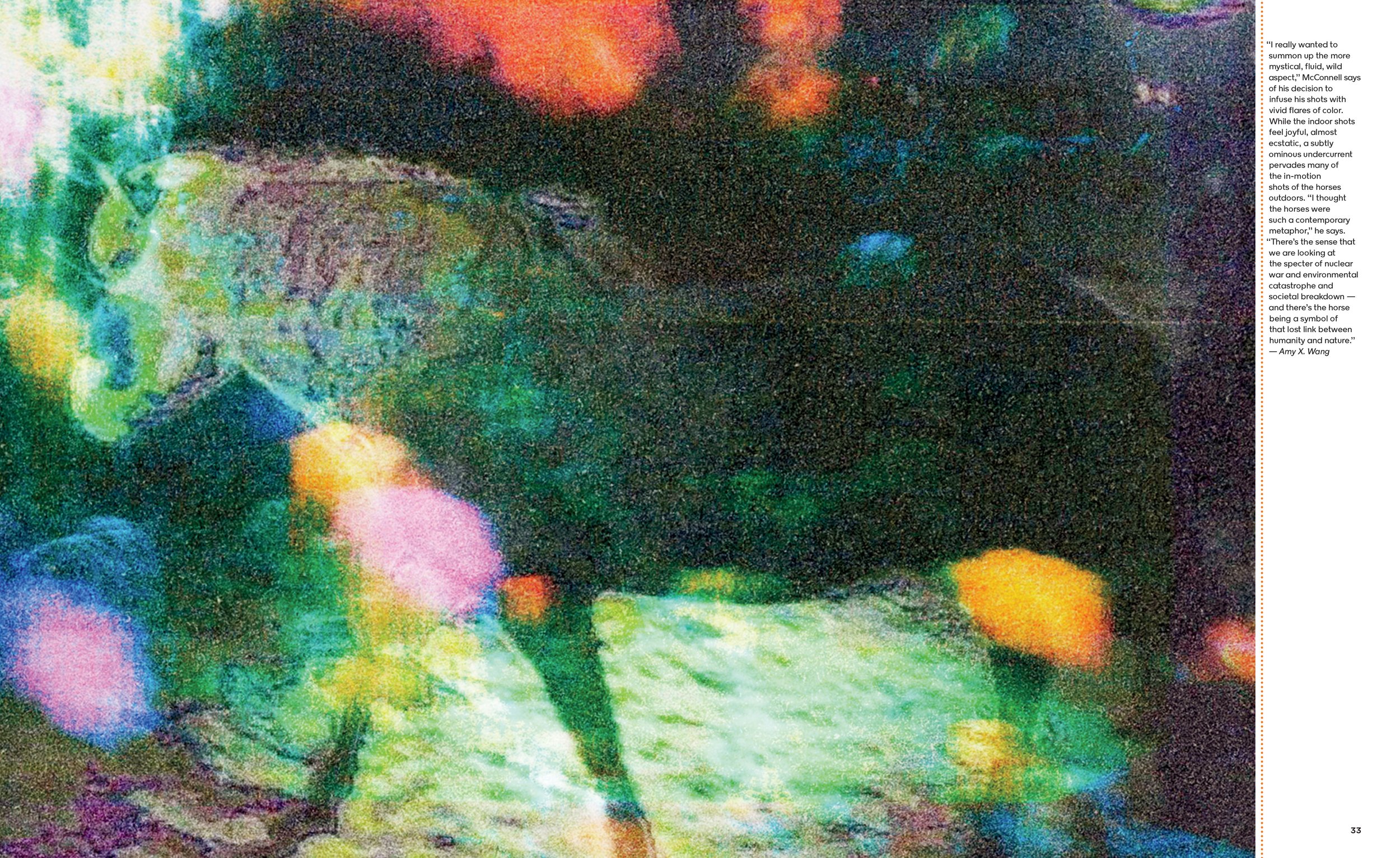
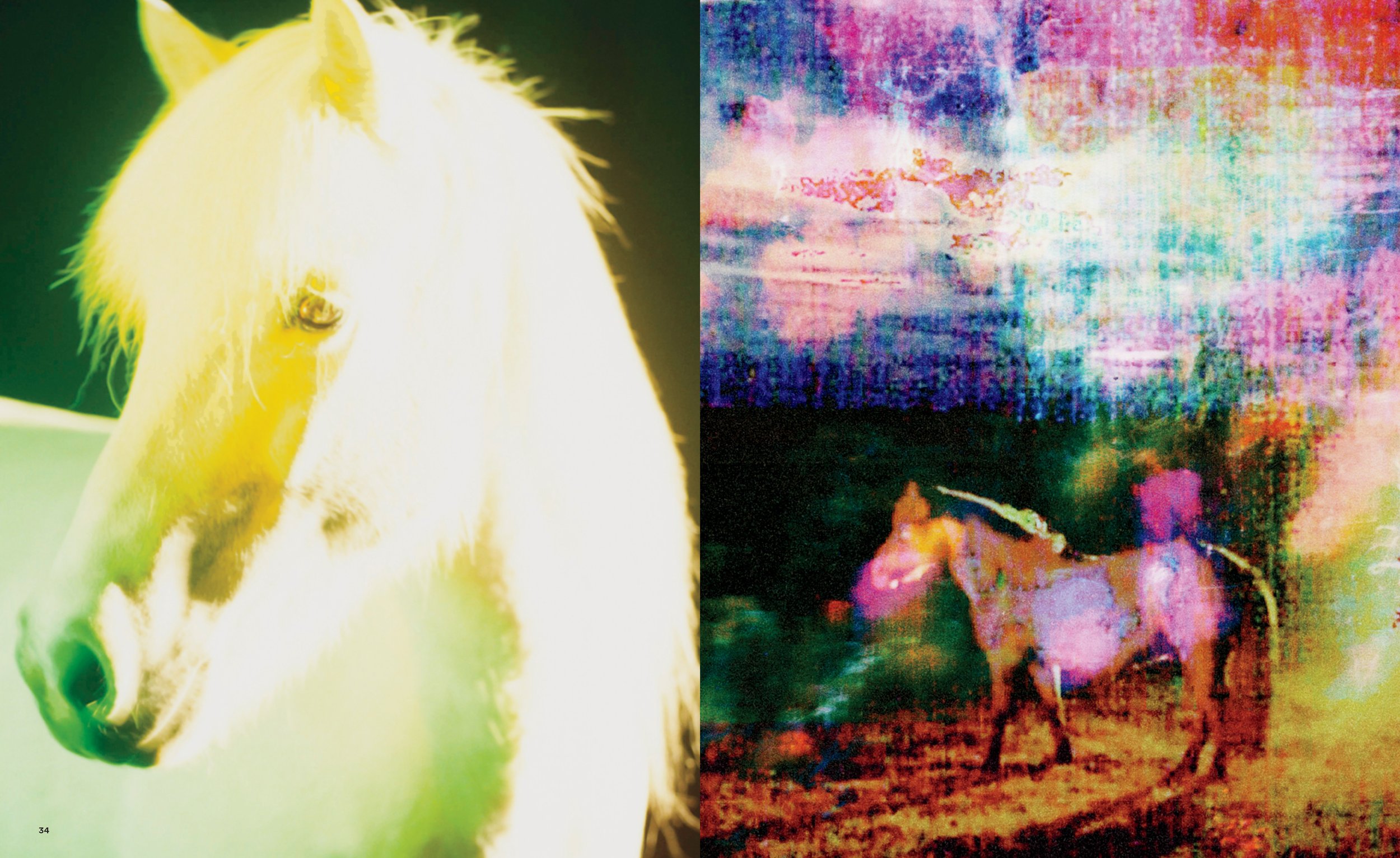
George Gendron: I do have a question that builds right off of what you were just saying, and in fact, I was going to use Paolo as one of several examples. It’s the old Susan Sontag question. There’s work that he’s done—I think in his case it was particularly about immigrants—and work Gary Knight did during the early stages of the Iraq war. And the photos, when you saw them, were beautiful. They looked “renaissance” to use an Adam Moss adverb there. And so much so that—do you know Geoff Dyer, the British writer?
Kathy Ryan: Yes. I met him, but I don’t know him. No.
George Gendron: So in his book, See/Saw, he actually has a little mini-entry about conflict photography, and, under certain circumstances, its relationship with Renaissance painting. And he uses one of Knight’s photos, that can also be very wrenching, of a marine battalion, after one of the Marines has been killed in a mortar attack, as an example of this. And composition and lighting and tone. And so I’m curious about how you personally, as a director of photography, deal with that, because you’ve got these photographers who are just absolutely brilliant, and yet they are covering the horror of war, conflict, revolution. Now of course, the Ukraine invasion.
Kathy Ryan: Yep. Yep. It’s the hardest part of the job. And honestly, it’s harder as I get older. Somehow when I was younger and sending people into the field, of course I worried. Just the risk of it. I don’t actually even after all these years of working with Paolo Pellegrin—20 years we’ve worked together on many stories.
Working with Lynsey Addario. She’s extraordinary. She’s the most courageous person imaginable. She’s just unbelievable. I still don’t quite understand that level of courage, other than they’re driven. They’re both so driven, as are many other great photographers.
So if I can have the inner dialogue with myself that they have to do it, I would never call someone who’s never gone to cover that kind of story and say, “Hey, would you go do this?” I want to know somebody’s made that decision already. So Lynsey’s going to do it anyway. Paolo’s going to do it anyway.
It’s the title of her book, It’s What I Do. I can’t quite fathom it even after all this time. And then all the visual decision making that goes on as chaos is unfolding in front of them. When you speak about “Renaissance-esque,” there’s a picture Lynsey made years ago in Afghanistan on assignment for us, where she was on a patrol with the American soldiers and they were ambushed and one of them, Sergeant Rougle, was killed.
And the picture she made of his comrades, his friends who are just grief-stricken—it’s just happened—are taking his body down the muddy slope there. And she somehow gets into position. It looks like a religious painting. And she doesn’t think like that.
Lynsey’s not someone who’s, I think I can fairly say this, looking at classical art constantly to let that inform her thinking. It just came naturally in the way, I think, a great visual person sees. She’s more of a narrative storyteller. But it’s a haunting picture that went to that next level. It became something else.
And then Paolo—I’m not trying to compare, we're just talking about different approaches—overwhelmingly shoots in black and white. That right there is an abstraction. He has chosen that because black and white emphasizes emotion, eliminating unnecessary color. It gives him more of a chance to focus on composition. Composition becomes more important. And light.
Lynsey has consciously chosen in her career to photograph in color. And in her case, she doesn’t want the abstraction. And I don’t want to make sweeping statements for either of them, but I know them well enough. She wants to see all the reality that color gives you.
George Gendron: But then there’s also the issue for the director of photography about managing a certain tension between the aesthetics of a photo and the fact that the content of the photo is, in fact, conflict. Death and casualty. That’s got to be challenging.
Kathy Ryan: And it’s uncomfortable to talk about because with that kind of coverage the content rules. But still if you want to make a memorable picture, especially today with the abundance of imagery out there, you have to make something that is so well seen, so well composed or understood or framed, that it touches some other nerve. That stops people—making a haunting image. The aesthetics do matter.
“Photojournalists have to be opinionated. They have to take a stand. There has to be something that they care deeply about. And you have to have the courage to go for it.”
George Gendron: That gets into a question that someone who has had the arc of your career—you joined The New York Times in the late ’80s—and so you’ve done your job in an analog world and now you’re doing your job in a digital world. And it must be dramatically different as you try to conceptualize the visual solution to a story. When we’re living in this age of just over abundance of images. My God, you can’t get away from them.
Kathy Ryan: Yeah. It’s unbelievable. I feel like today it’s become way more challenging. When I started out, you turned to magazines and papers and books for the photos. That was it. And it’s just completely different. You know?
People have seen hundreds and hundreds of pictures every day. So where is our place in that? And I wish I had answers to some of that. I find it more and more challenging. And then there’s also the reality that there’s all sorts of creative work being posted on Instagram by non-professionals, like doing some just nifty stuff.
It opened up creativity in a lot of people. They couldn’t necessarily do a commissioned magazine assignment, but I see all sorts of just interesting creative material. And it’s just a different medium.
And that’s the other thing—every year we do an annual, “The Lives They Lived” issue. It’s the last issue of the year. And we do a series of stories about people who’ve died that year. And it’s almost always people of renown—who are known in some way. Sometimes ultra-famous, sometimes not ultra-famous, but known in their field. And this year, a decision was made by Jake to devote the whole issue to children killed by guns. And the reason for that was there’s been a shift.
Within the past year or two—the highest number of child mortality is related to gun deaths. So we’re in a terrible—we all know that. And there’s been just horrendous school shootings. So as we set out to figure out the art for that and the photography, the photo editor working on it, Kristen Geisler started calling all the families, which was a challenge unto itself because, of course, they were deeply grieving.
In some cases, she’s talking to the mother or the aunt or different family members. And we normally, in that issue, come up with a nice idea of something to commission. The year before we did the shoes of the people who died. And it was terrific. We had Eric Carle, the children’s book illustrator’s, paint-splattered shoes. We had the boots that Halyna Hutchins was wearing the day she was shot on the movie set where she was accidentally shot.
And we’ve done the empty rooms left behind by the deceased. But I decided, talking with Gail and Kristen and Jake, everybody, that this was a moment to use vernacular photography. We just illustrate it with the images that the family members themselves had. Which would basically mean smartphone photography, TikTok videos.
So Kristen started pulling in all that material. We were looking at it closely. And it was very challenging. It was emotionally wrenching, as you can imagine. It was one of the most emotionally-wrenching things we’ve done. The subject matter was so sad and we wanted to do right by these kids.
George Gendron: It was emotionally wrenching for readers!
Kathy Ryan: Yes. And we knew that. People are going to be devastated by it. And that is another responsibility for us at the magazine that we discussed a lot.
And then we were also working with tiny digital files. So you also need to figure out, How will this work? Where is our cover image? And then we decided to go right into it. And Gail and Matt Curtis, who was designing the issue with her, decided to do these double-truck [two-page spread] images of the faces blown up. So we were looking at that very closely, trying to figure that out.
And then the image that ultimately was on the cover—as soon as we saw that and it was backlit, everything about it was so pure. A professional wouldn’t have shot the picture that way with the light flooding from behind. But what it did was it gave it just a spiritual look.
And as soon as I saw that one in the cover mat, I felt, “There it is!” And then of course we all came to that conclusion, but we were nervous. It was a very different type of image. But Kristen was getting in these clips from the TikTok videos that she was looking at closely with the digital team. And when we published, the power of the short video clips eclipsed the power of the still photos. And you’re not going to hear me say that often, because I’m a diehard. I mean, I love video, but still photography has such a special place. And this was a case where just seeing the little bit of movement of the child had so much power.
And of course, these pictures were all made for just the most personal, pure, intimate reasons. And the brief for them was to not focus on the death at all, but just focus on a day in the kids’ lives. Something in the kids’ lives that was just about them, alive and happy.
And today, with the new medium that we have, most of our readers, the majority, are seeing us on their phone. That was very powerful on the phone as well as in print.
Lives on the Line: Patients with High-Risk Pregnancies Photographs by Stephanie Sinclair
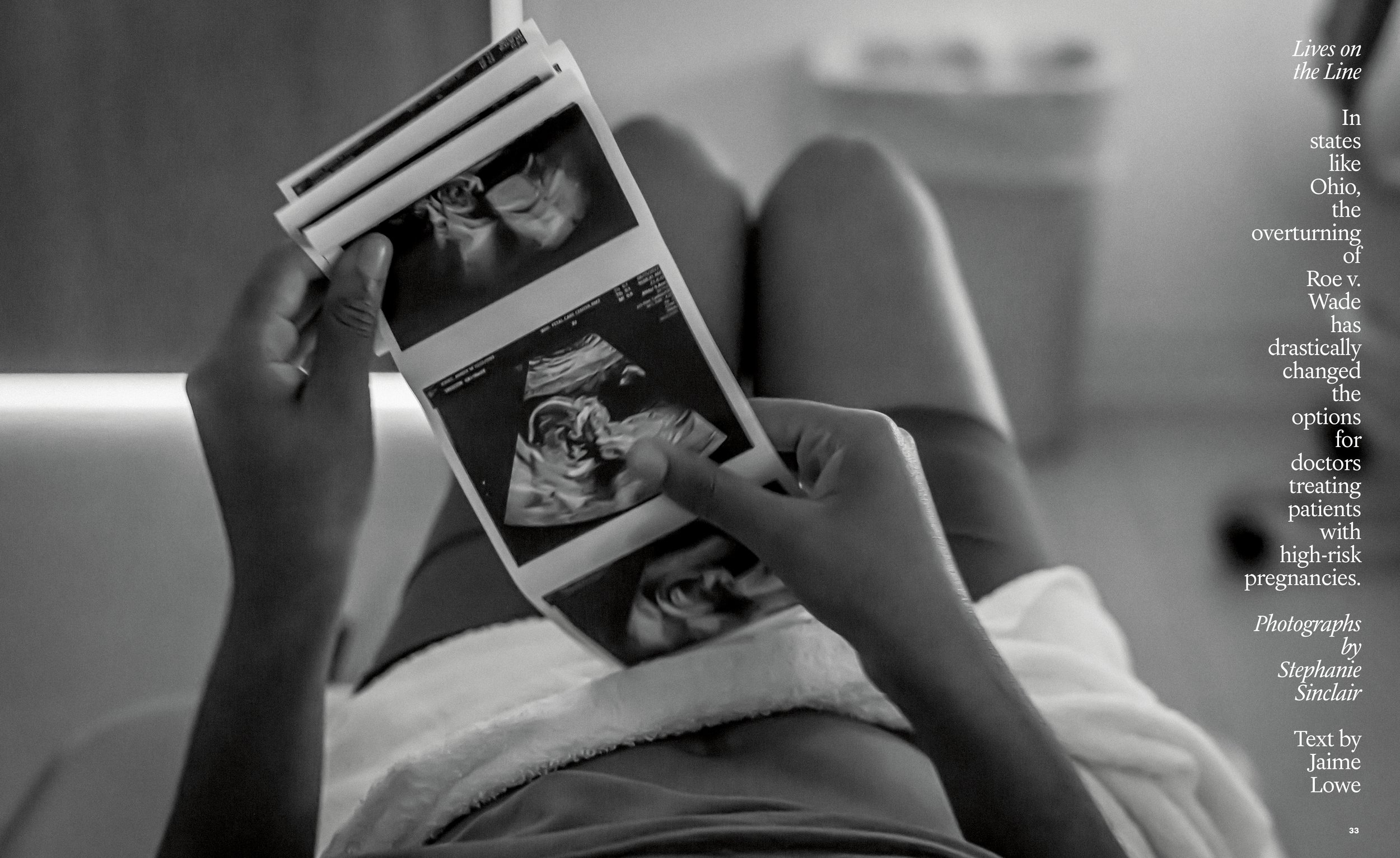
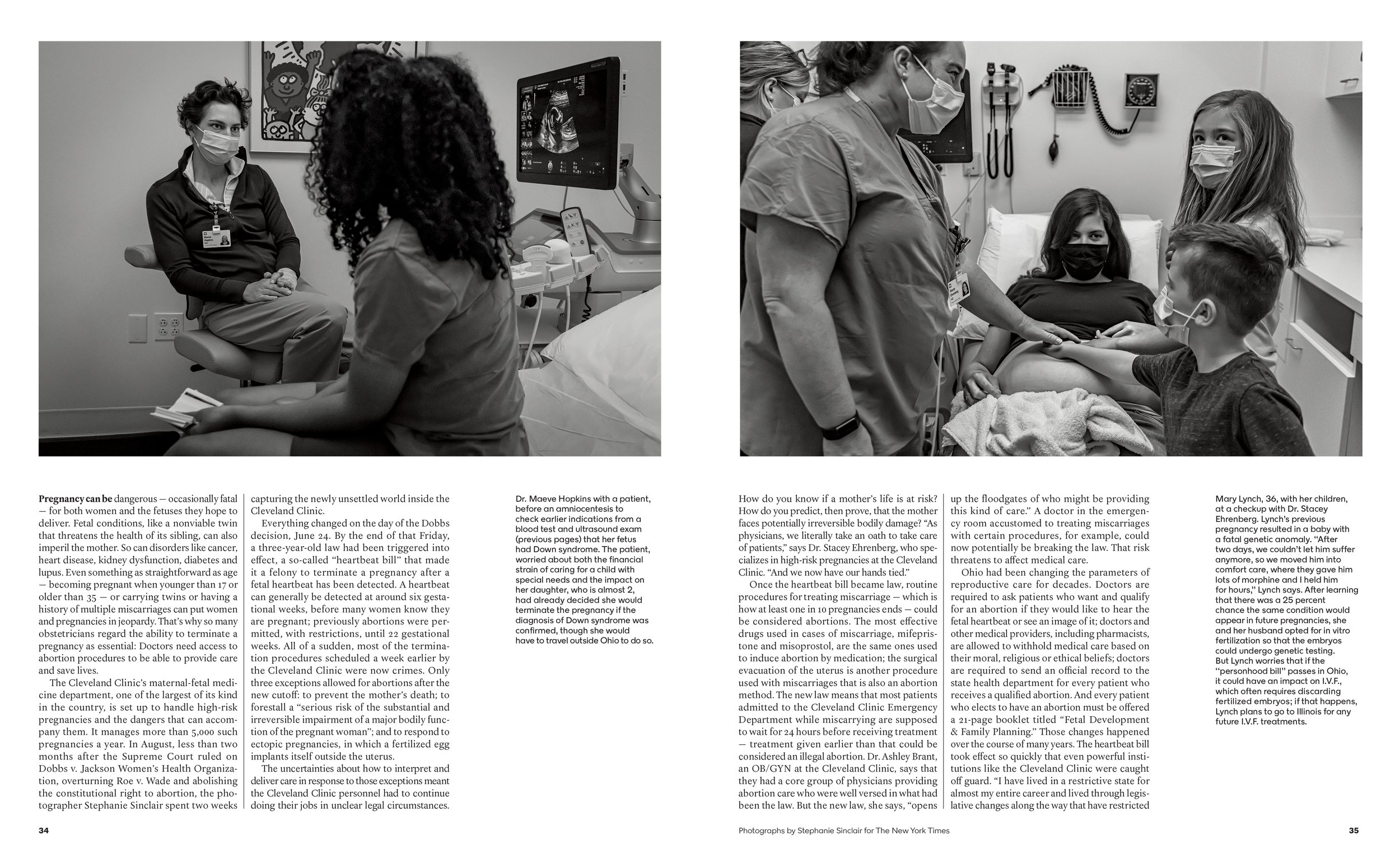
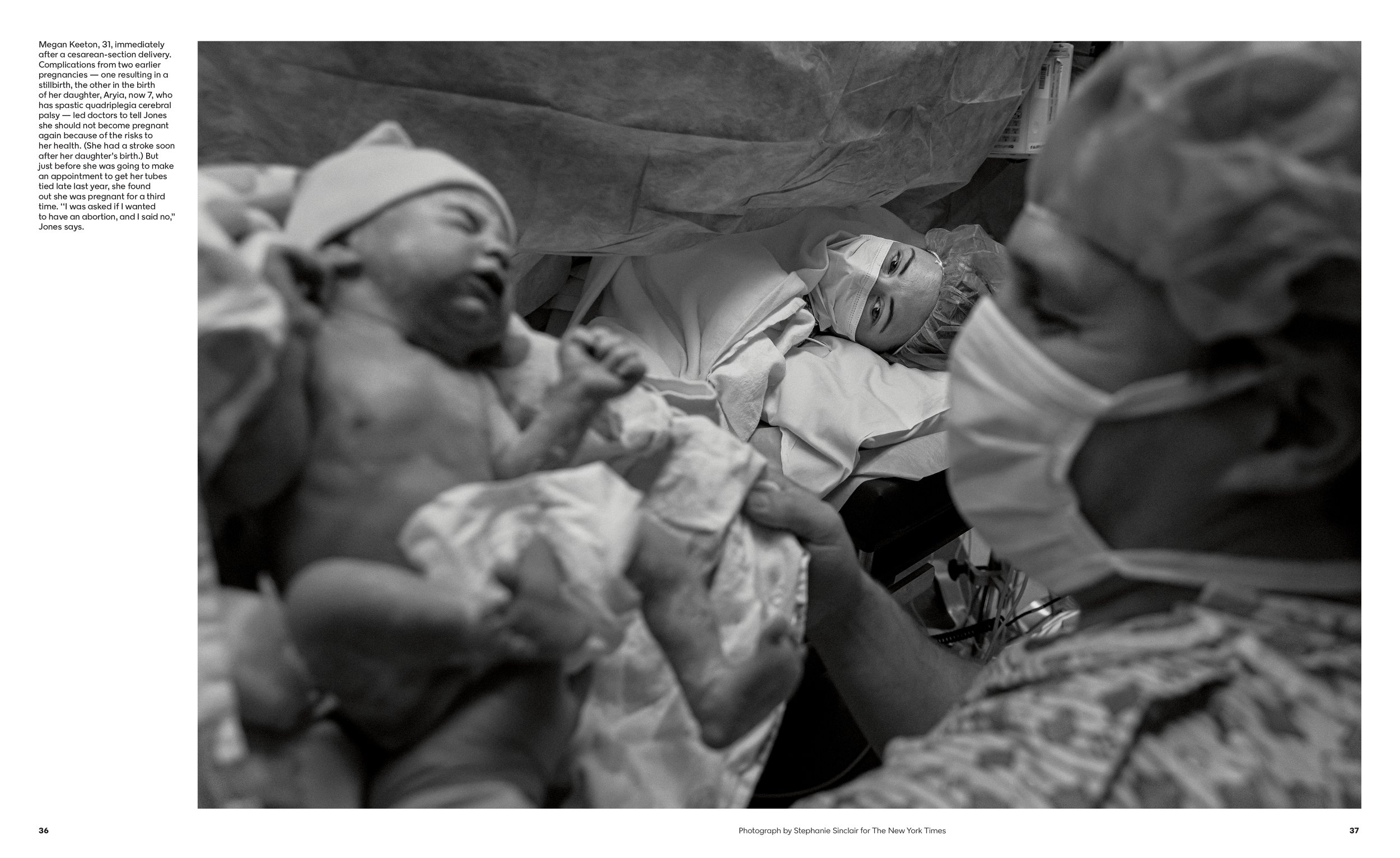
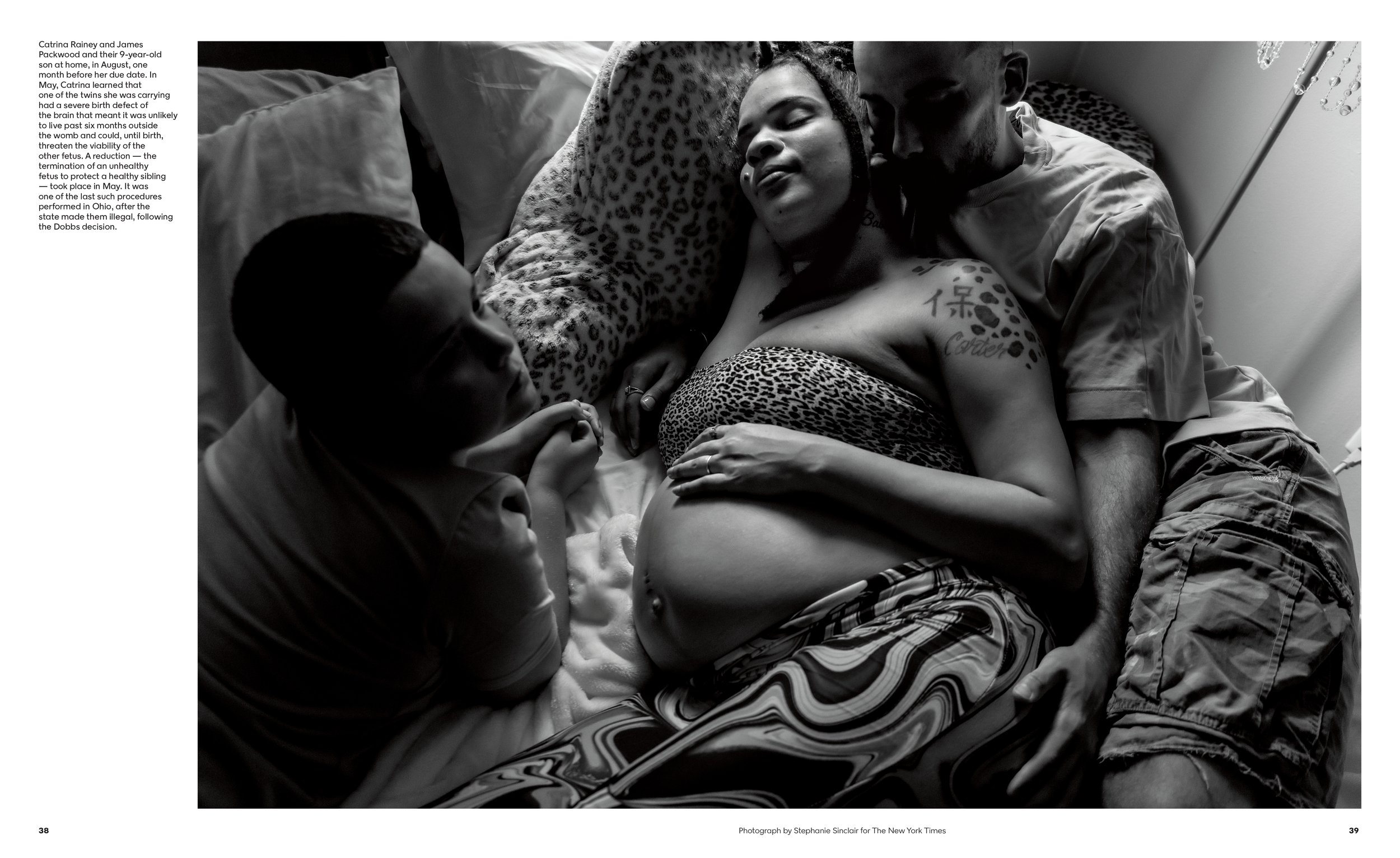

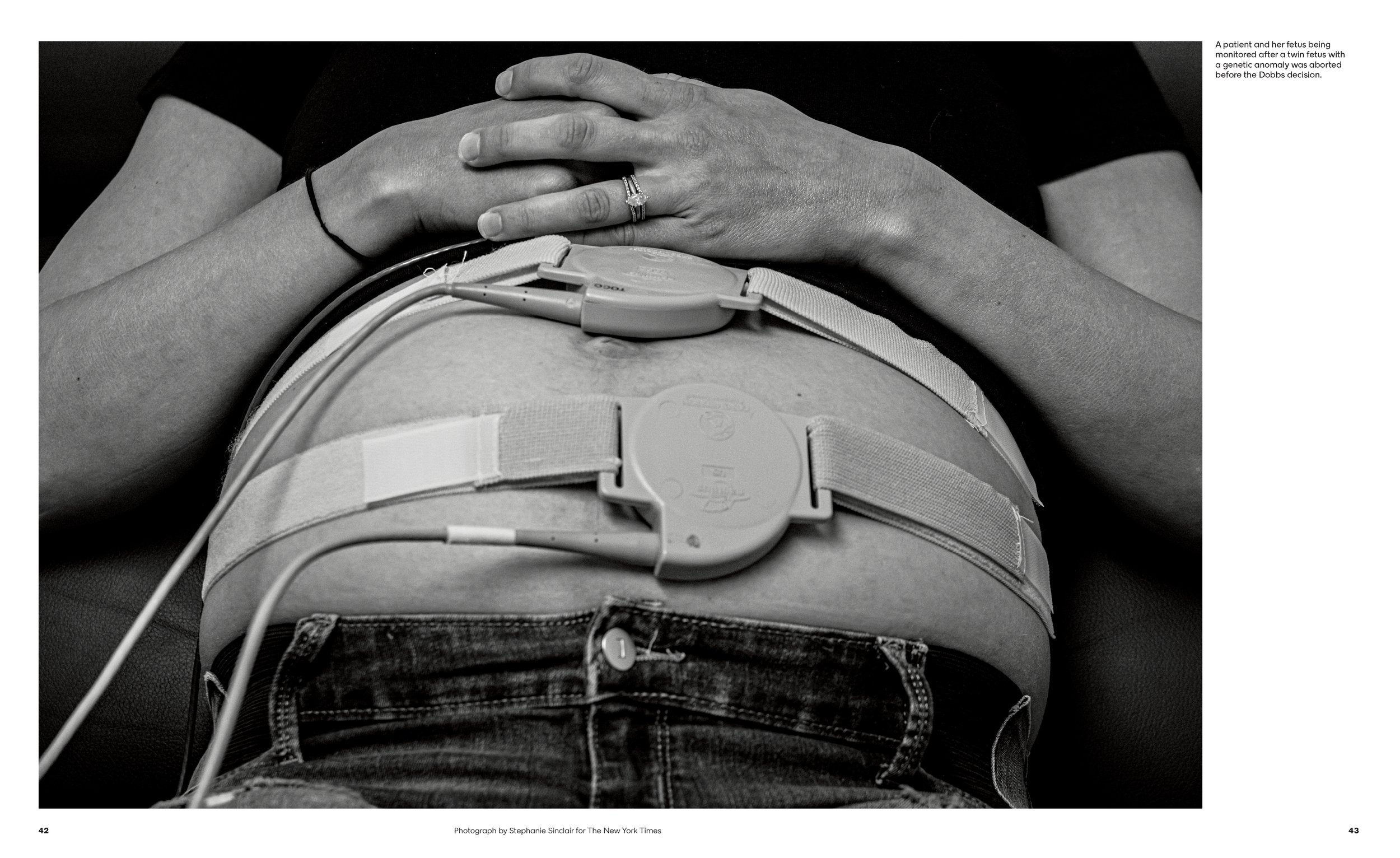
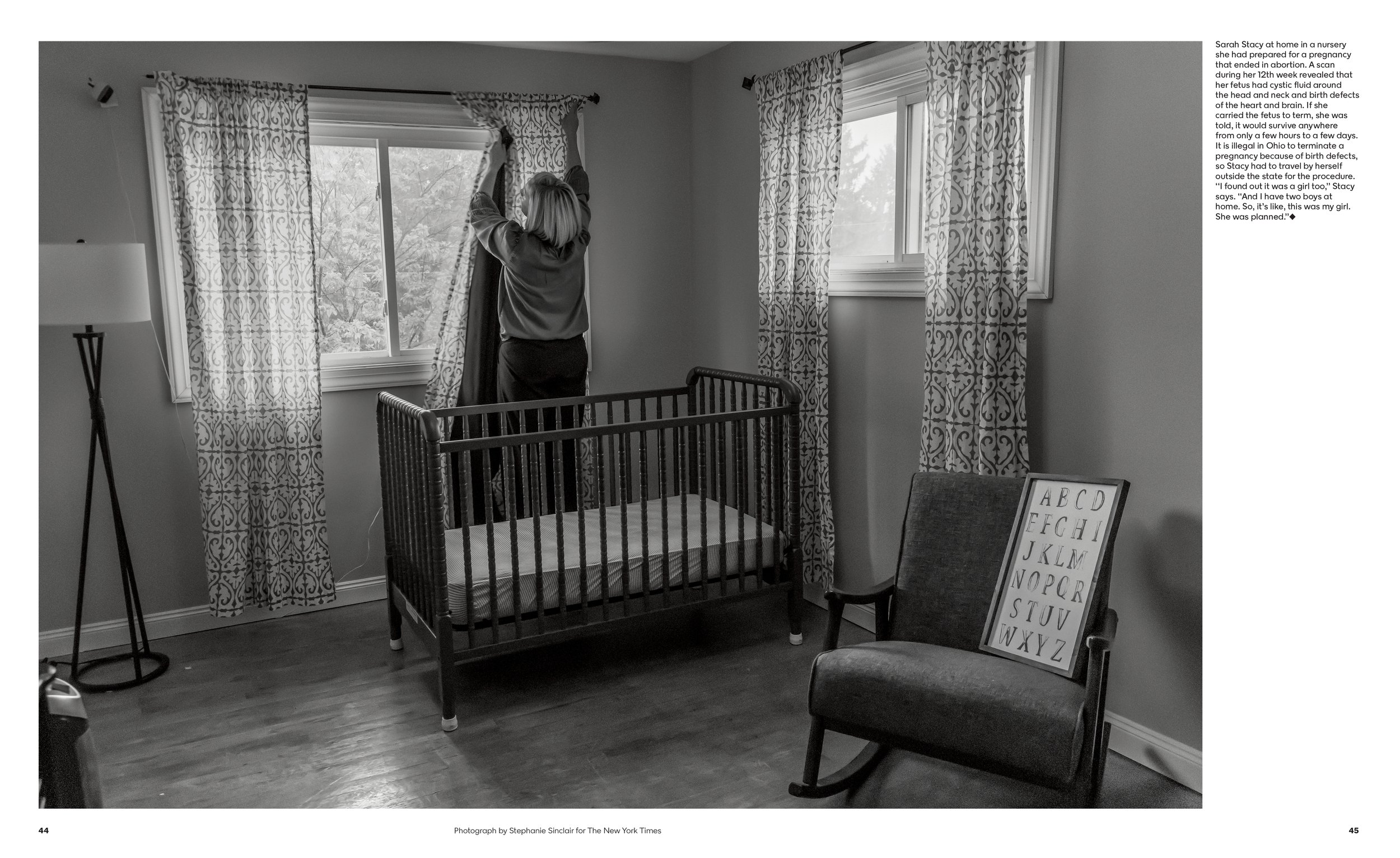
George Gendron: Let’s go back to what you just said a minute ago. It’s an interesting transition point because you were talking about your passion for the photograph. Where did that come from? What did you want to be when you were 12 years old? Did you want to be a photo editor?
Kathy Ryan: I had no idea. I always liked to draw. I was a kid that always liked doing art. And I had an older sister, a year older, and she loved to draw. And we would draw for hours on end. My parents would buy discarded rolls of wallpaper where it was a buff on the back and they’d roll it out. So we had all that blank paper to keep drawing.
Ryan in the third grade
George Gendron: Did you grow up in New Jersey? Because we did that.
Kathy Ryan: Yes!
George Gendron: Did you really?
Kathy Ryan: Yeah. Where did you grow up In New jersey?
George Gendron: Up in Bergen County. I grew up in Oradell and New Milford.
Kathy Ryan: I grew up in Bound Brook. But there’s going to be another overlap because listening to your podcast, a pivotal moment for me was third grade, which I think was the case with you, right?
George Gendron: Yes.
Kathy Ryan: And so it’s a weird coincidence. In third grade, I had a teacher—I was in Catholic school at that point—Sister Mary William, a nun, and she taught art history. This was in a very strict, classic, traditional classroom. But once a week she passed out black and white marble notebooks, and she would pass out small reproductions of paintings, famous paintings, classical artwork. And we would paste them in while she talked about what the symbolism was in the painting, what the artist might be thinking, what the expression on the person’s face and the painting was. I fell in love with it. I just felt like, “I got it.” I so got it.
George Gendron: What was the “it” that you got?
Kathy Ryan: Just understanding. Looking at the pictures. I can’t explain it. It was like, “Wow, I get it!” Whereas, I’ll be honest, in music class I just didn’t get it. I couldn’t hear the different notes. But it was like I could see it.
George Gendron: The power of the visual.
Kathy Ryan: Yeah, the visual. I could see what she was talking about when she mentioned an expression. I could see it in the face or something symbolizing something else. It just kind of clicked. So throughout early schooling I was always drawing, painting, and making art. And then at the end of high school—I had interest also in politics because the Watergate hearings were on. So I went to Rutgers, Douglass College, with an idea toward majoring in art or potentially shifting to politics.
And then very quickly I focused on art, but not photography. My college studies were painting—I did lithography, I did a lot of printmaking. But never photography. And then when I got out of school, I realized very quickly after working for hours in the studio for several months, I don’t like being alone all day. I love working with people. It’s my nature. I wanted to work with the team.
And a friend of mine told me about an opening at a photo agency. It was called Sygma. As you know, one of the big photo news agencies in that era. Sygma, Gamma, Sipa, Magnum. And they needed a librarian to file—remember this was the days of slides, negatives, prints. There were no digital images. So everything existed as a physical object. And they had photographers all over the world that would send their work to the Paris bureau where they would process it all. They had the lab there and then shipped it to us in New York.
And I got hired as a librarian. So I would just figure it out, stamp the slides, and where to file them. Then I graduated to doing photo editing for The New York Times Magazine, when they would call and say, “We’re doing a story on Iran.” And I would put together a package for them of slides and prints related to that subject.
And then ultimately, when there was an opening, I applied. They knew about working with me because in those days they used more existing photography and less commissioned. So they were often calling Sygma. And initially I was doing a lot of painting at night but the more I worked in the field, I just fell more and more in love with photography and it made sense because there’s something “realer” about photography.
Like I often love when photography, as we were saying, goes to a more abstract, playful place. But I do like real. And sometimes I laugh looking back—when I was telling you about rolling out the wallpaper and my sister Maureen and I drawing—she would always want to draw the World’s Fair. And I always wanted to draw shopping at the supermarket. Because I knew shopping at the supermarket—what it looked like when mother would take us.
I liked to draw what I saw. And I sometimes think that The New York Times is the perfect place because in documentary we’re telling real stories.
George Gendron: It all comes together right now. Everything you’ve accomplished, everything you are today, Kathy Ryan, you owe to a Catholic nun.
Kathy Ryan: No, I don’t! I know, right? It’s funny how you get influenced. I know.
George Gendron: Yeah. That’s another podcast.
Kathy Ryan: Yeah, that’s another podcast.
Talk: Celebrity interviews from David Marchese Photographs by Mamadi Doumbouya
George Gendron: You are so obviously both passionate about photography and immersed in a world of the weekly, which is just so demanding. What do you do when you’re not working? Do you go to photo shows?
Kathy Ryan: I look at a lot of art—obviously photo shows. But just in the past month or two the stuff that had a big impact on me was at the Guggenheim, where there’s an amazing double-header right now. The Alex Katz exhibition of his paintings—which is a long lifetime of paintings and you watch the trajectory—is fantastic. And so for me to go see that opens up my mind in terms of photography. And they paired it with a big show of Nick Cave’s work, which is very sculptural.
So you’ve got the minimalism of Katz, and the spareness of it. And then you’ve got the maximalism of Cave and the political underpinnings—he’s taking on a whole other world of importance in what he’s trying to say in his work. And the first show I raced to go see was the big Hopper show at the Whitney, which, of course, is a crowd pleaser.
He’s over and over and over inspiring because, what did he paint? He painted light. He painted the loneliness of humans navigating the world. And photography, again and again, even in what I do as a weekly magazine picture editor is about light. How the photographers see light and have to think about people.
And Aperture has had so many exhibitions in the past that were huge eye-openers and just deeply inspiring. The show that they did a couple years ago, Antwaun Sargent curated, and was a book, The New Black Vanguard. Brilliant, brilliant, brilliant show. And walking through that, I immediately was introduced to the work of photographers I didn’t know, and it reinforced my appreciation of others.
And one of the people in that show, Arielle Bobb-Willis, I was just blown away. Early 20s, brilliant work where she sees color like nobody else and she has the figure, the human figure moves in space in a way that is unique and different. That’s not easy to do. And even her styling of the pictures. She’s since done two different special music issues for us. So sometimes it’s directly related to my role as a photo editor at the magazine.
Six years ago, I saw a show of NYC Salt, a high school after-school photography program. And I went to their end-of-the-year exhibition and saw amazing work by a photographer named Mamadi Doumbouya—at that point, maybe barely 20 years old—and just fell in love with it. And he’s been working with us since.
When we decided to do the David Marchese Talk column, we decided let’s have one photographer, one vision. Now, sometimes, it’s illustrated because it’s geographically not possible. But we’ve had Mamadi doing it since the start. And he has a very distinctive look, uniquely his. So going to exhibits and seeing constantly there are things to be discovered and then at other times seeing the work of great legendary painters where it just reinforces the quality of your seeing
That’s what I feel like. You know how some people go to exercise? I’m not too good on the exercise count, other than walking through museums. I go to exercise my brain. So I constantly regret that I don’t work out in a different way, but I feel like I work out my eyeballs a lot.
Office Romance Photographs by Kathy Ryan


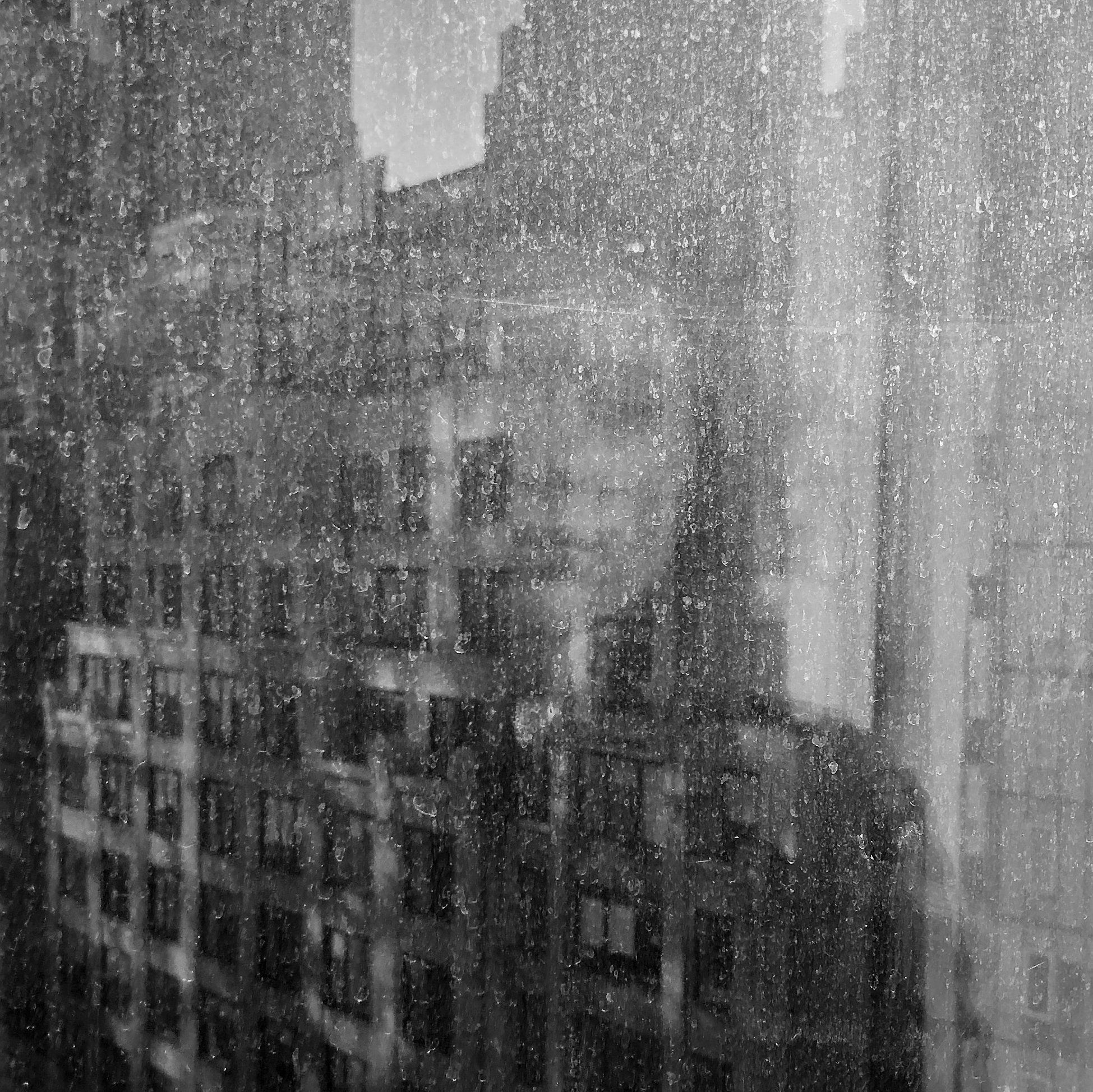
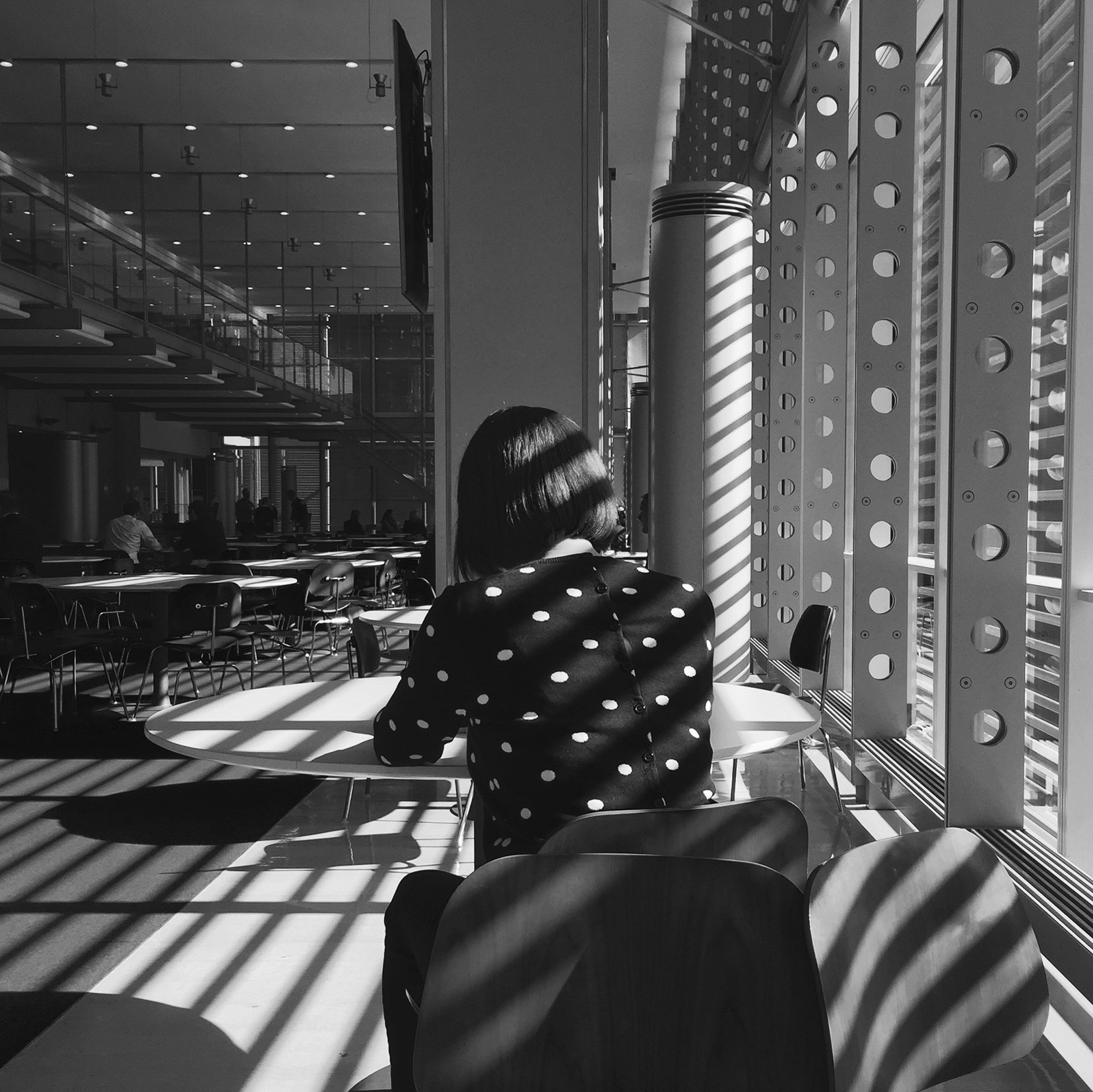



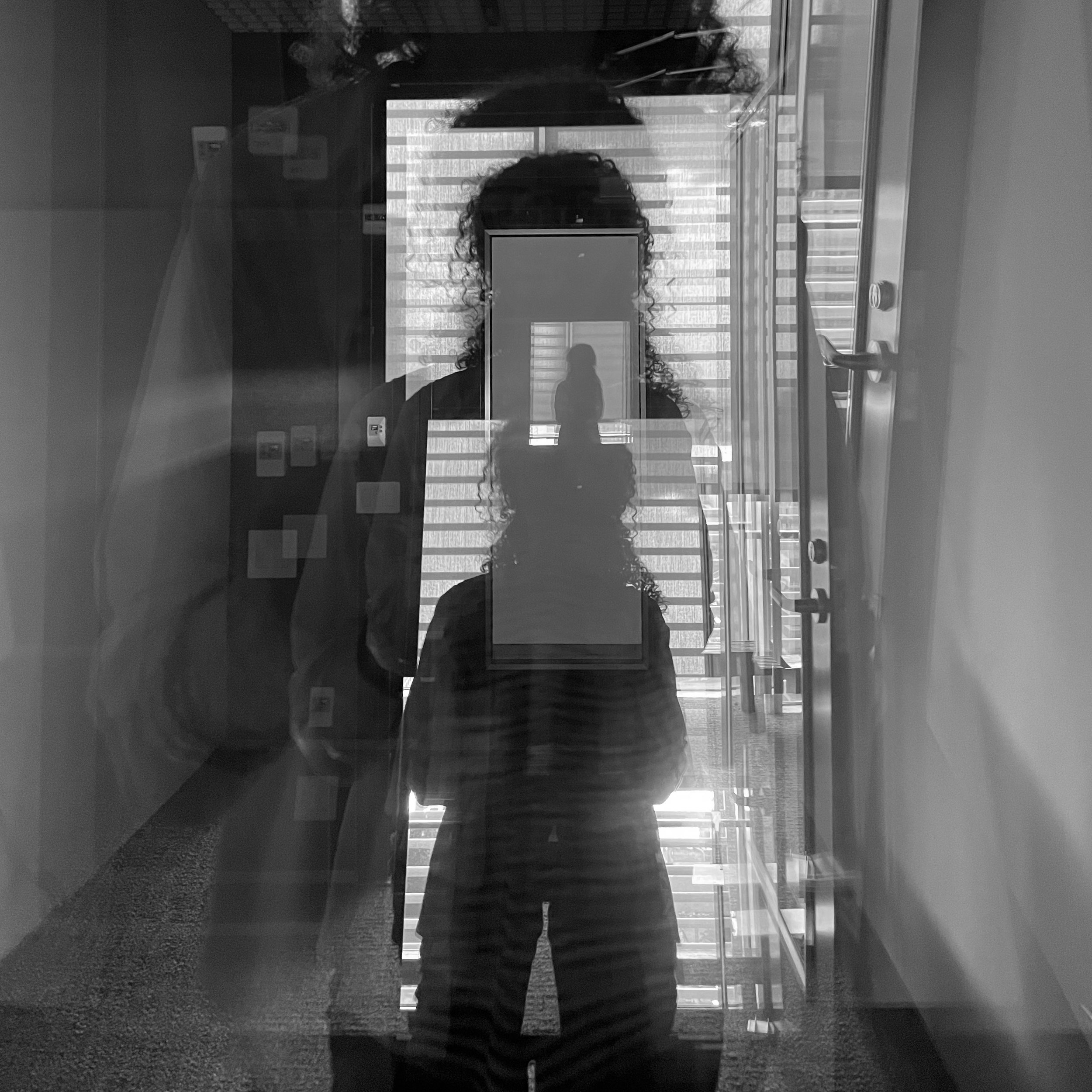



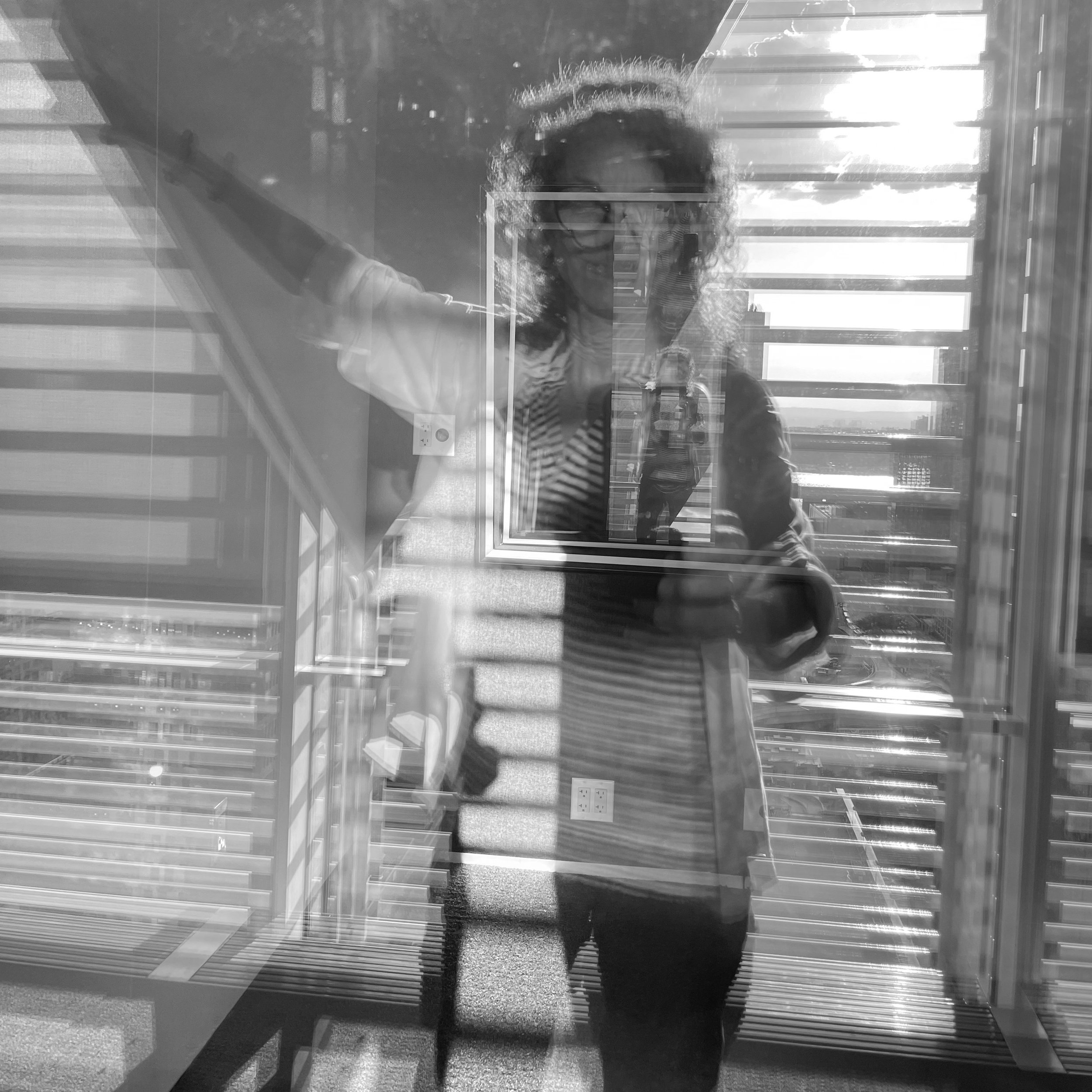

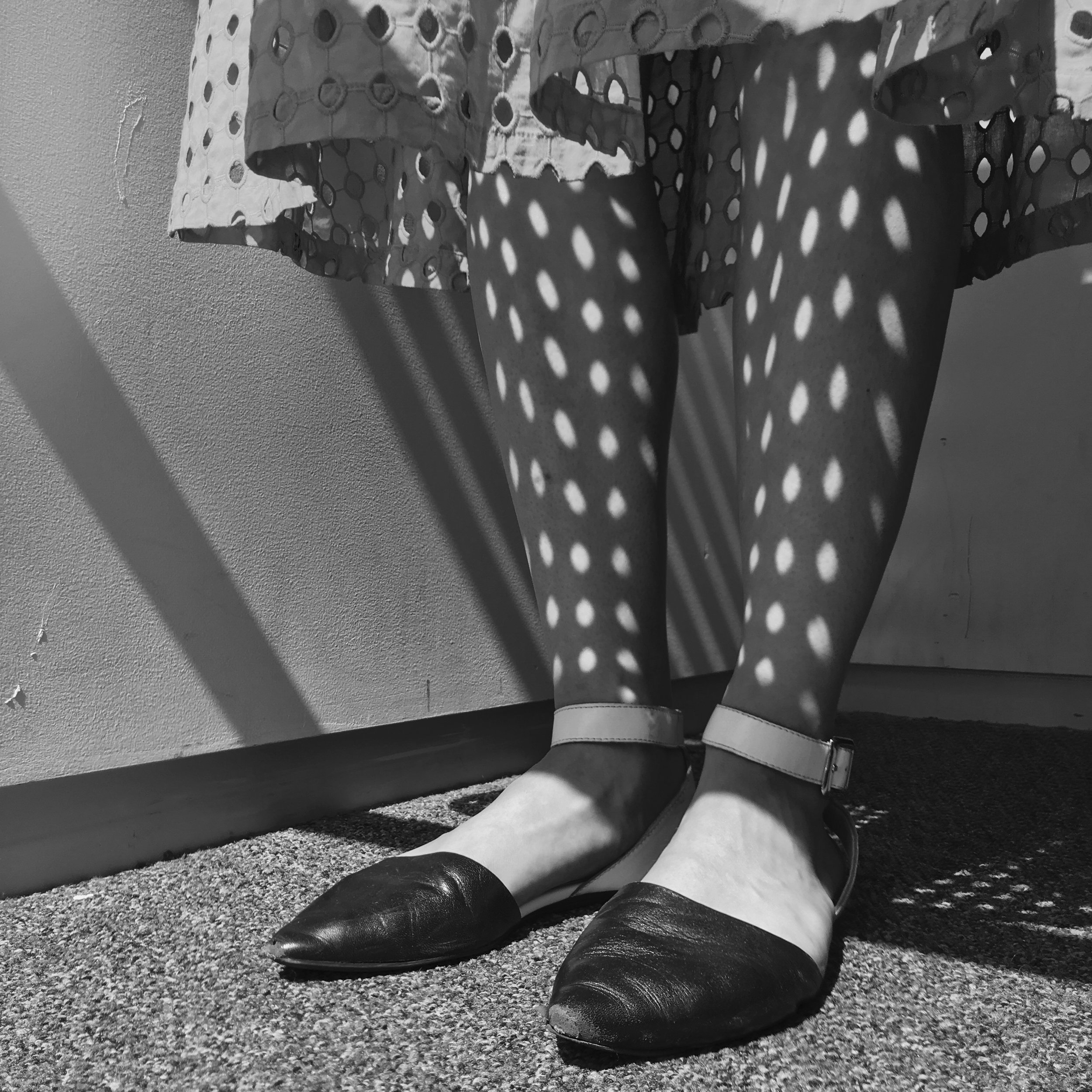


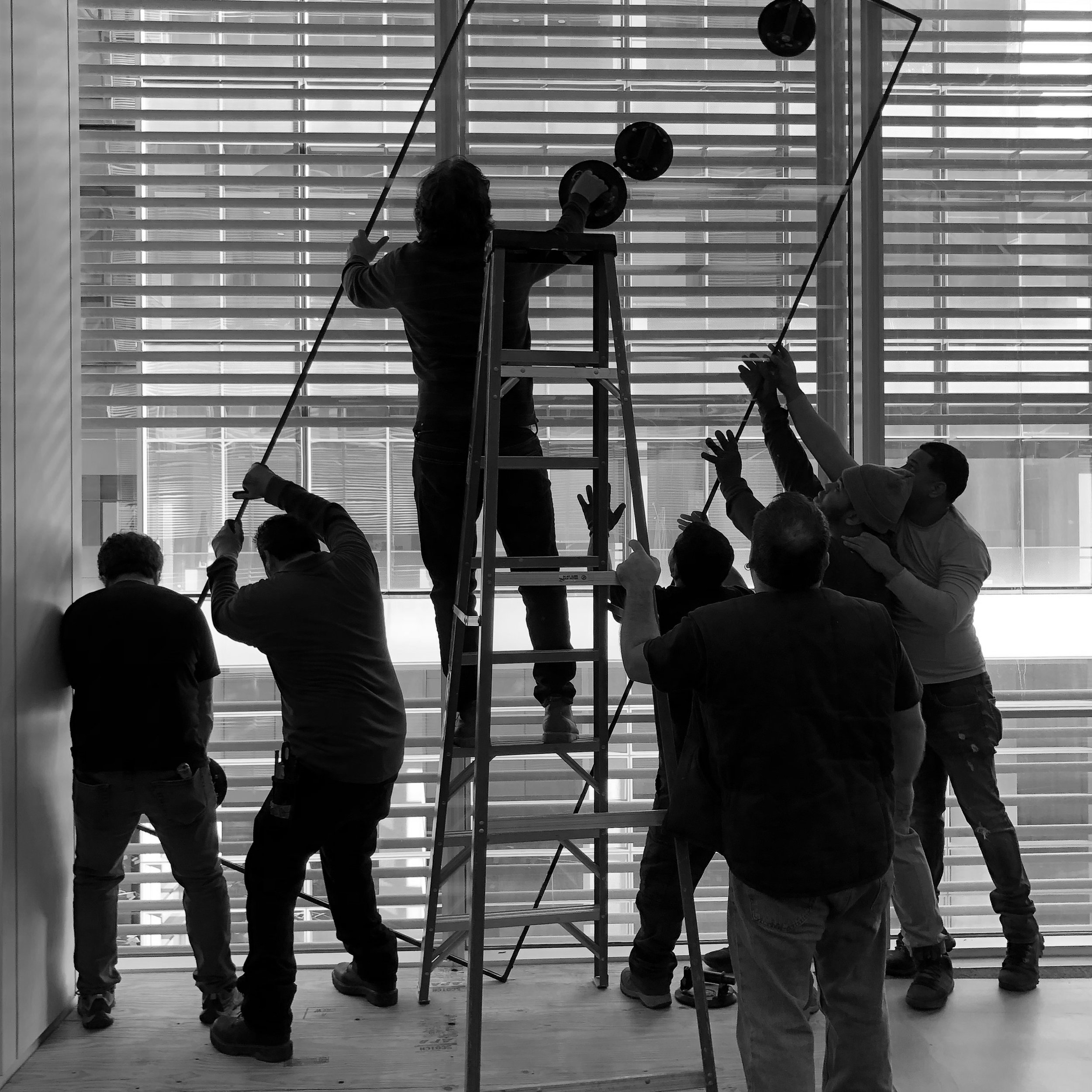
George Gendron: That’s good enough. I can identify with that. I do want to pick up on your discussion about young artists, young photographers in a minute. But before we do, selfishly, I have to get you to talk about Office Romance, your book, which I have and I love, and I know lots of other people who have it. And everybody who has it, they just love to hold it.
The form factor, first of all, is great. And it inspires people to think about looking at the world around them—their house, the light around them—in a completely different way. And I’d love to know, at what point did you stop thinking about taking pictures of the new Times offices, designed by Renzo Piano, and posting them on Instagram, and start thinking about it as a potential book. And did that change your picture taking when you started to think, “Oh, this could be a book now’?
Kathy Ryan: That’s a very good question. And yes and I’ll tell you why. I started making the pictures just for pleasure. Literally, I just, I don’t know, I saw that bolt of light on the stairs one day and—you got the phone in your pocket, right?
So it’s right there, the camera’s in your pocket. And I took it out and I made a picture and it just felt so good. And then I made another, and I made another. And I was doing them at top speed. In between, you know, magazines are a frantic, kind of frenzied place. You know, we’re constantly on deadline.
There’s something deeply—stopping for a few seconds, in the same way somebody might have gone to get a cup of coffee in a cafeteria—I would just stop, make some pictures, take one of my coworkers, colleagues with me, friends. And, I don’t know, it was like a moment of respite and almost meditative. And part of the reason why and, honestly, all the credit goes to Renzo Piano.
The building, The New York Times Building, designed by Renzo Piano, has unbelievable light. Why does it have unbelievable light? It has clear glass windows! Almost no skyscrapers that get built today have clear glass windows. They all have to meet the environmental codes. The green glass, the gray glass, you see it.
He didn’t want to put “sunglasses on the building.” He didn’t want to do that. So he came up with the idea of the horizontal white ceramic rods that sheathe the whole building. And by doing that, he managed to meet the needs in terms of heat and light. The bars cut that down so that we are within the architectural regulations. Well, it creates unbelievably cinematic light, like film-noirish light. And it just kept calling to me. It was constantly calling out to me. It was literally like a siren’s call.
I’d see the light out of the corner of my eye and it was like, “Oh my God, I’ve got to photograph that.” So it’s also often just heartbreaking because for every time I’ve been able to do it, I’ve missed a bunch just due to what I do in my job.
And then somebody introduced me to Instagram. And I just was like, “Oh my God!” So you start posting. And when we first started posting, you’d be ecstatic if you got 50 followers. “Oh my God! Do you believe this?” At first it was just our friends. Like we were in that early. The whole thing seemed magical. And then people write nice comments. And that was helpful because I don’t think I would’ve had the guts.
The New York Times Building, designed by architect Renzo Piano, opened in 2007. (Photographs by Michel Denancé)
“It was breaking my heart during the pandemic—besides all this sadness with the pandemic—that I couldn’t be up in the building for a long time. It was very hard for me.”
I know that sounds weird for me to say that, but to put them out there—but then they were getting good feedback. And then I began to realize, “Wait a minute, I’ve got a subject here.” I just thought, “I’m going to call them #officeromance.” I wasn’t planning to do it, necessarily, as a series. But then it was becoming obvious. It’s a newsworthy building. In Times Square. In New York City, the greatest city in the world. It’s The New York Times, the greatest media company in the world. I’m lucky enough to work with all these amazing people I love, who I could photograph all day long. And I can put that work out there without invading privacy. I still have issues about how many private photos people put out. I didn’t want to be doing that. Everything I’ve ever posted, the subject is happy with. And it’s not that it’s a public place.
The hardest thing—or let’s say one of the most important things—a photographer can do is find a subject that others aren’t focusing on. If you embrace a subject that’s photographed all the time, the bar gets higher. If you choose a subject that's a natural fit for photography—and photographers for eons have gone down that road—if you choose to cover the same subject, you need to do something original with it.
And I mentioned Gareth McConnell earlier. He’s doing something with flowers that feels fresh and new to me and they’re amazing. The bar gets higher. You have to come up with something different. There are certain subjects, I don't understand why they're under-covered. One of them is work.
When you think about it, most people end up retiring from their jobs, not counting people like us, magazine people, but most people, and maybe not today, now that everybody’s got a phone, but even people with phones in their pocket, they don’t have pictures of themselves at work. They don’t. And I know a lot of the Office Romance photos I do are a moment to the side of work. They’re not pure documentary. We paused for a moment. The light is hitting the person. They’re bathing in it.
It just makes me sad. My father was a carpenter and a construction worker. I have no pictures of him at work. Do you know what I’d give to see one picture of him on the job? Just to see it? And so I just liked the idea that it’s more open territory. There’s an extraordinary body of work on office life by Lars Tunbjork, the great Swedish photographer who died about five or six years ago. Extraordinary.
They’re witty, they’re funny, they’re sad, they’re poignant. They’re everything. He touches a chord. That work is incredible. But there’re not that many bodies of work in office. I don’t have to compete. There’re far better photographers out there than me. Far better. Of course, we know that.
So at least I’m just doing something fun. Like, again, it’s mostly thanks to the light. And of course Manhattan has unbelievable light because we’re between two rivers. So the light reflecting off the rivers and that gets absorbed into the Times building.
George Gendron: I think people forget that about Manhattan.
Kathy Ryan: They forget that, right? They forget just how it’s clear and it’s cold, hard, crisp, light at certain times of the year. January, February. It’s amazing. And it was breaking my heart during the pandemic, besides all this sadness with the pandemic, that I couldn’t be up in the building for a long time. It was very hard for me.
But you asked how Office Romance got to be a book. At a certain point, I started, probably like all photographers, printing them out, looking at them and thinking, “Oh, this would be a great book.” And I just wanted to do a small book.
I showed them to Chris Boot, who was the director at Aperture at the time, and I had worked with him in the past on things. And I showed it and I asked if he’d be interested, and he said, “Yes!” right then and there. And we did it quickly. It’s a small, inexpensive book and it was literally pure pleasure. There was no stress.
Now the hard part comes, as all photographers know. The more you do this, the more you are raising a bar for yourself, and now I want to do a second book. And I have enormous self-doubt. I have been working on the book—nobody's seen it except my husband and our daughter and a couple other people. But due to my magazine schedule, I only work on the book in fits and starts.
There have been certain periods where I’ve gotten foamcore boards and I put the work up, and I thought I had a book and then I backed off it. And then I’m not sure that’s the way to do it. And then I struck the boards. And for months my magazine work kept me so busy I couldn’t focus on the book even on Saturdays and Sundays—the only time I can work on it—because it’s seven days a week as a photo editor. Then I would start up again.
Anyway, I want to do Office Romance II, and I’ve got a lot of pictures. I just far more afraid of it now, and unable to—I can’t explain it—I can’t seem to decide when’s the moment that I’ve landed on the right approach.
The New York Times Magazine Photography Team Photographs by Kathy Ryan
George Gendron: I understand that. One of the things that Adam Moss and I talked about when we did our podcast, was when he announced that he was going to retire, step down from New York magazine, he said, “Look, I’ve been working full throttle.” I think that’s the phrase he used. “I need to decompress.” When I was talking to people who knew Adam, I said, “How do you think he’s decompressing?” And everybody said the same thing: “Well, he’s painting. Very badly.”
So I said that to him and he said, “Oh, that’s absolutely true. I’m a tenth-rate painter.” But he made the point that he doesn’t aspire to the same level of excellence in painting that he felt he attained in magazine work. And as a result of that he just loves the process of painting for its own sake. And I understand what you’re saying because suddenly what was—think of it as an accidental project, right? Office Romance number one: it evolves organically, you’re doing it for yourself, you’re posting it on Instagram, you have conversations back and forth, a dialogue. Suddenly it becomes a book. And now it’s a book with a capital B.
Kathy Ryan: I know. Then it’s something else.
George Gendron: And you’re a photo editor and you’re working with some of the best photographers in the world. You’d better be good.
Kathy Ryan: I hear you. But again, it was one of the joys of iPhone photography. It removed some of that burden of “it better be good.” Do I want it to be good? Of course. I work hard. You’d be amazed how many frames I’ll shoot of one thing, trying to get it exactly, precisely how I want it to look.
George Gendron: I know what you mean though. You’re not running around with a Hasselblad.
Kathy Ryan: Yeah. But then, I don’t know, it's just, there was something so informal about it. I was never afraid of putting them out there. I can’t explain it. I just posted them, and if you like them, great. If you don’t—it removes a little bit of that pressure. So I was able to organically go into it in a kind of fearless way. This is just fun, and I love this building. I love the people I work with. And I’m grateful.
At one point after I’ve been doing Office Romance for quite a while, and even after the book was published, Jake said to me—we were undergoing a bit of a redesign—he said “I want to do something different on the contributors page. I’d like to have a portrait of a contributor each week.” It’s usually a writer, sometimes a photographer, sometimes an illustrator. And he said, “I’d like you to do it in the Office Romance style.” And first I was like, “Jake, you’re crazy because that’s now an assignment!” Like I just thought, “Oh, that’s the craziest idea ever.” I was terrified of that. And I’m like, “I don’t know if I can rise to that occasion.”
But I took the challenge and it was great. I loved it. I got to meet writers I might not meet in person otherwise. It also taught me, as a photo editor, I understand the photographic process so much more now having done that. What happens between photographer and subject. The role of power. The photographer versus the subject. The importance of eye contact. Now that I do the contributor photos, it opened up my mind and really taught me a couple things that have helped in the assigning.
So I was grateful to Jake. It was a gigantic new challenge. And trying to cram that in with everything I was doing. And I’m grateful now I have those pictures. That’s the other thing in photography, if you put the energy in it, then you have the pictures.
The Culture Issue, featuring Cate Blanchett Photographs by Jack Davison
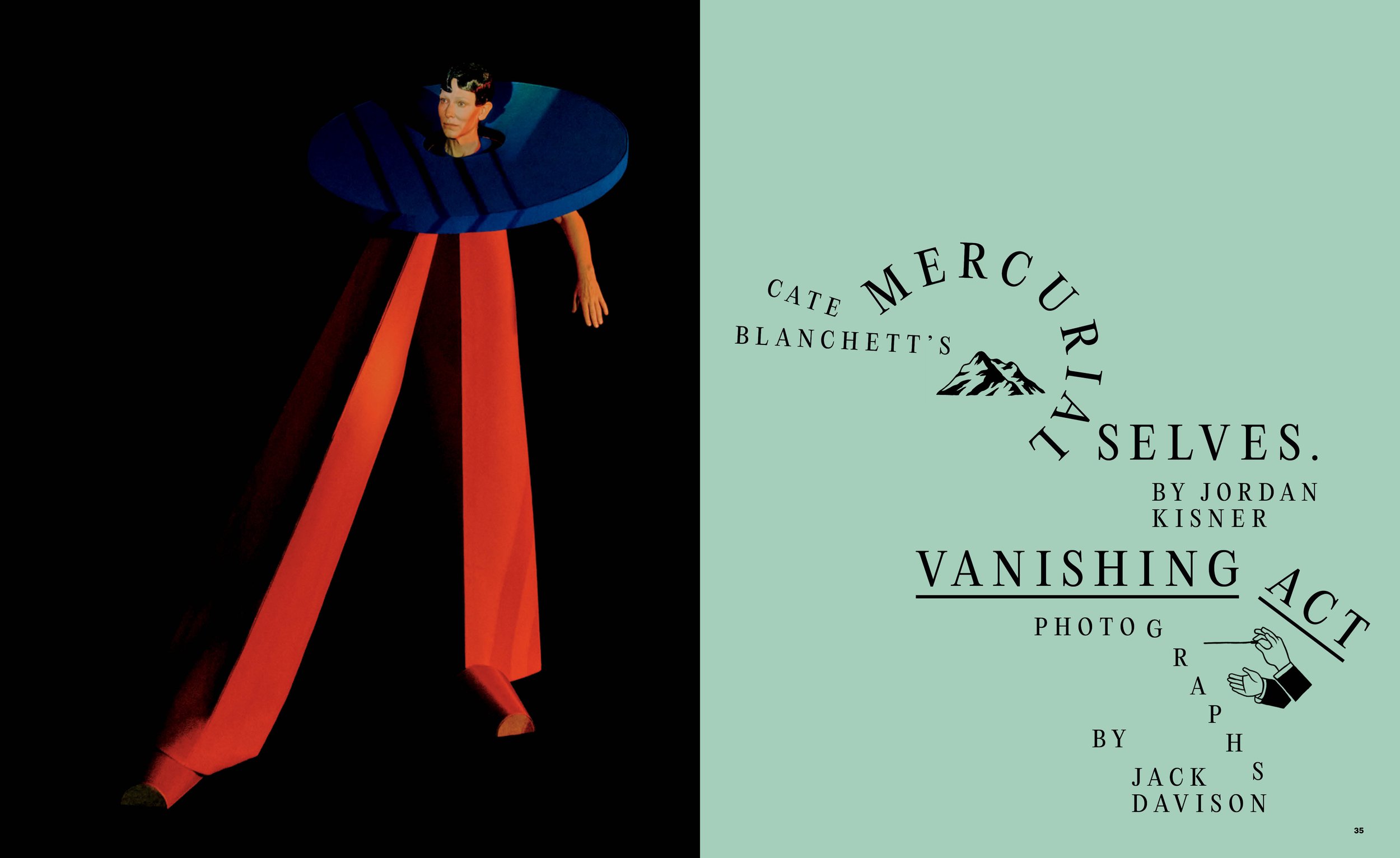
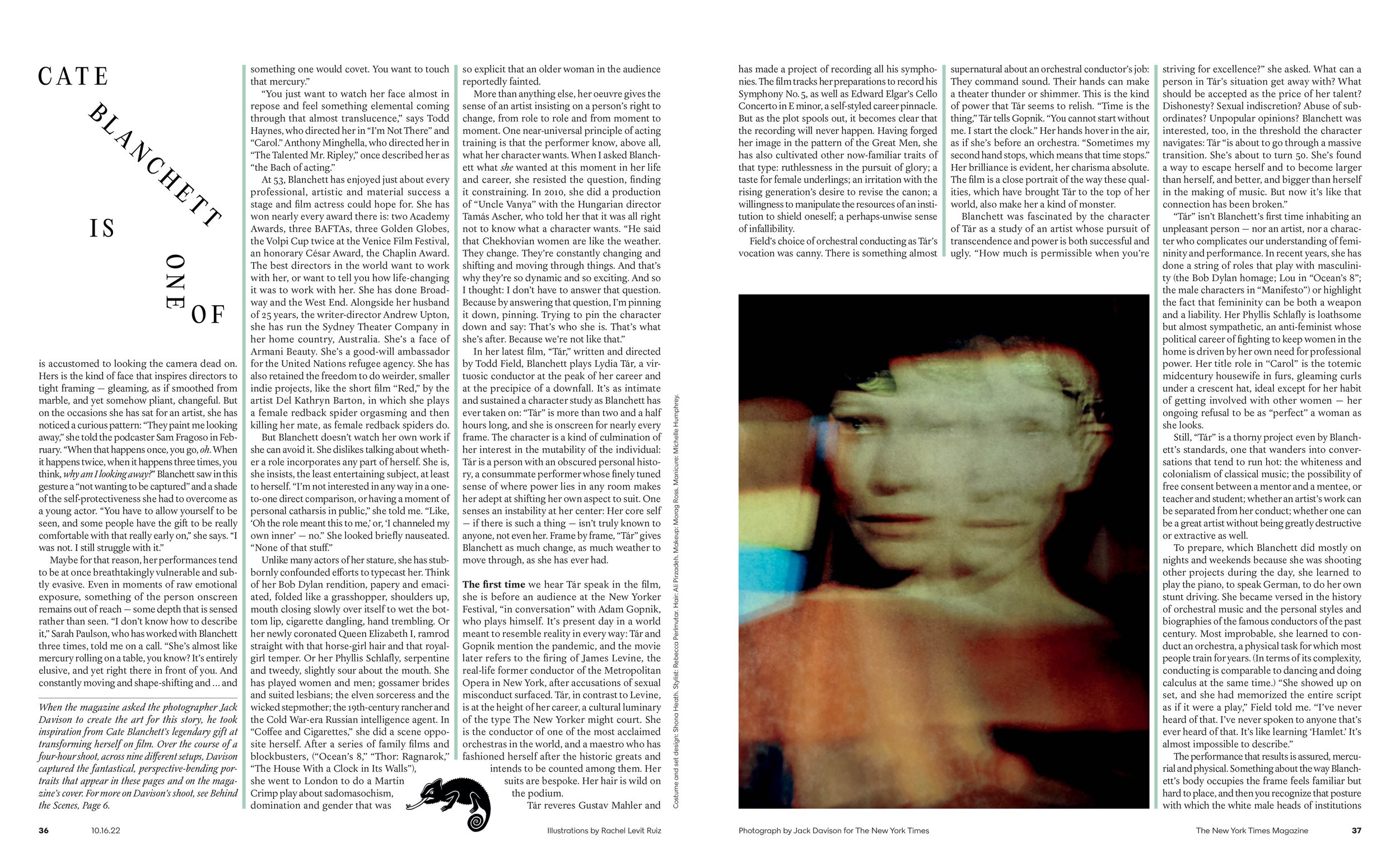
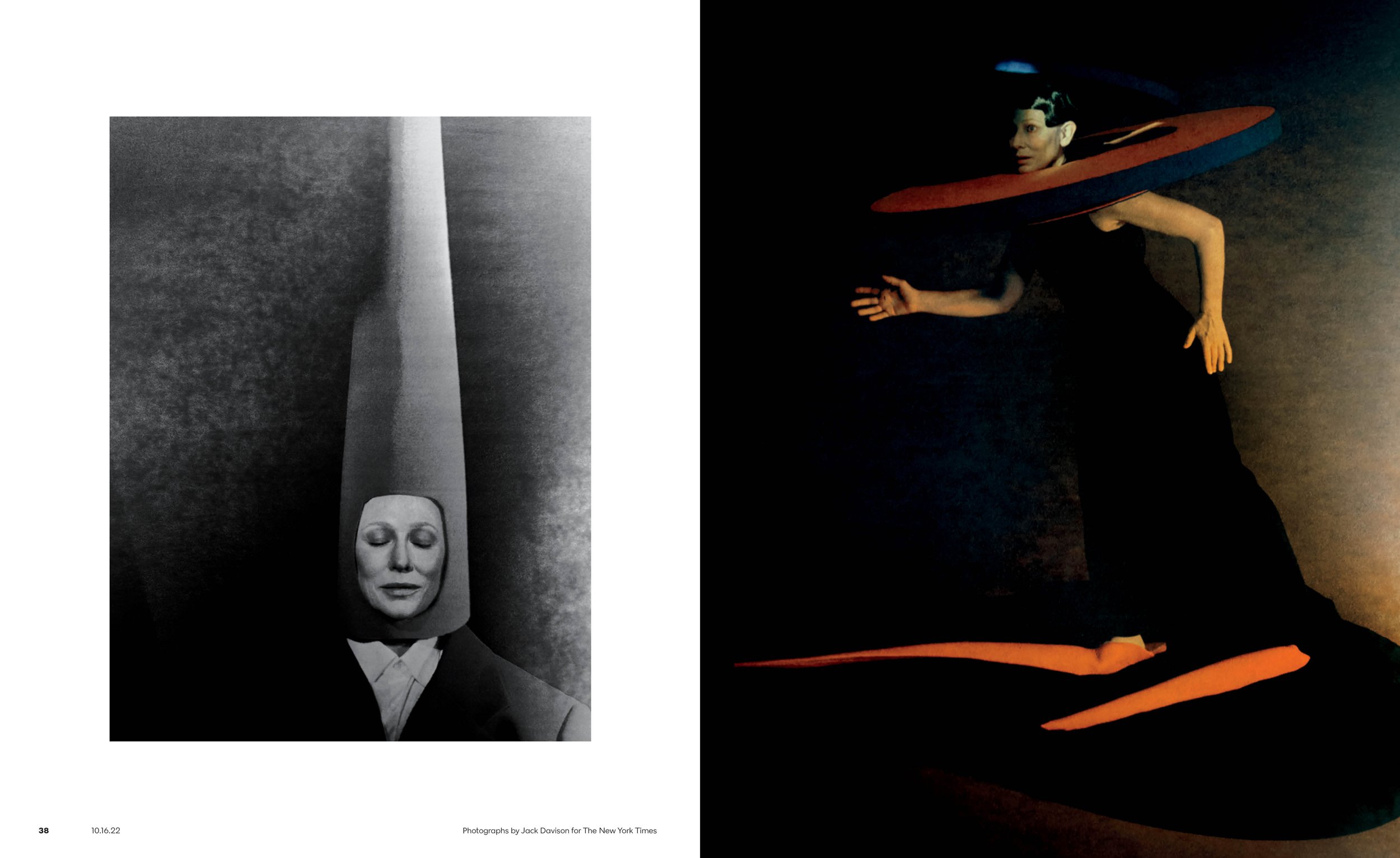
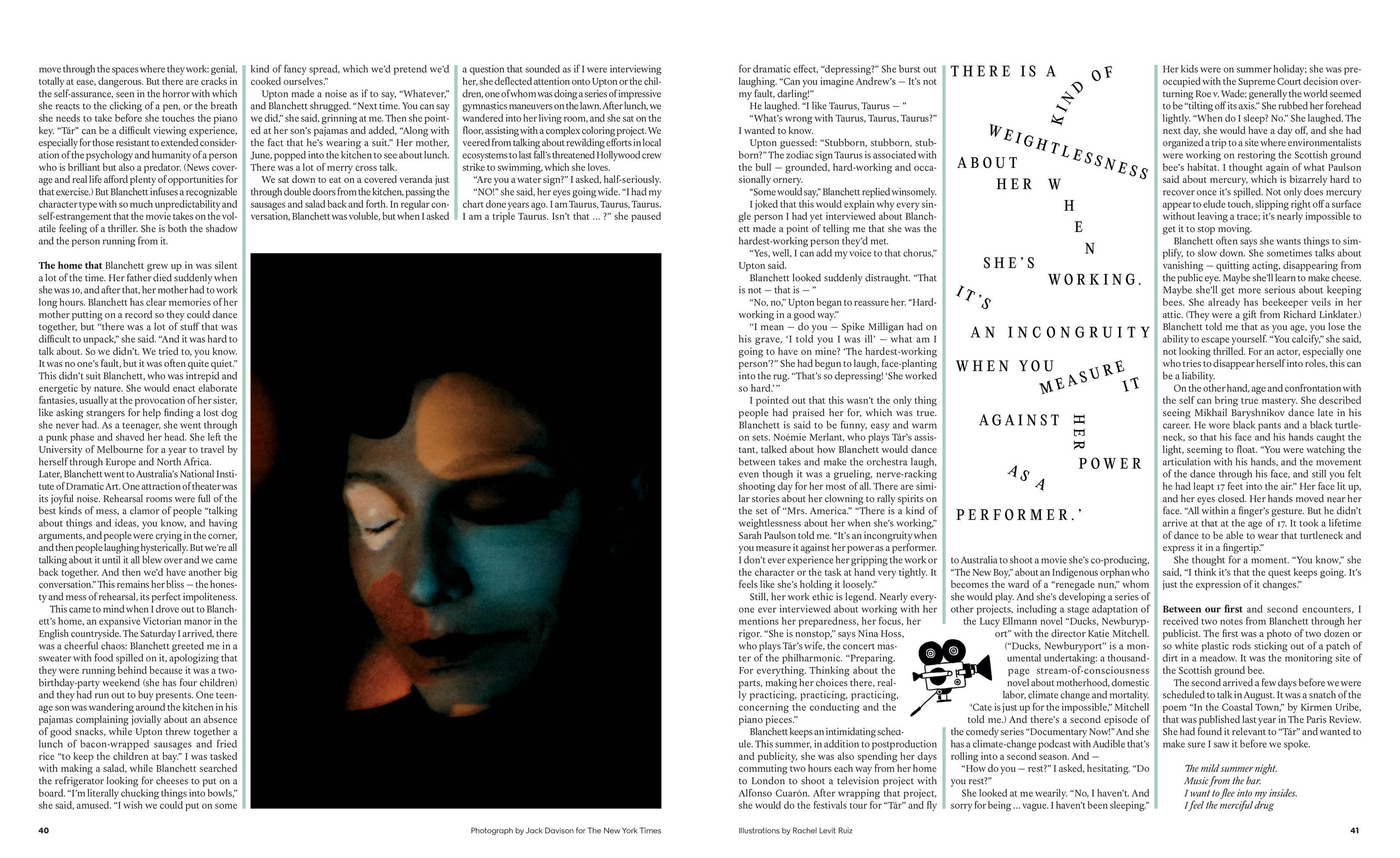
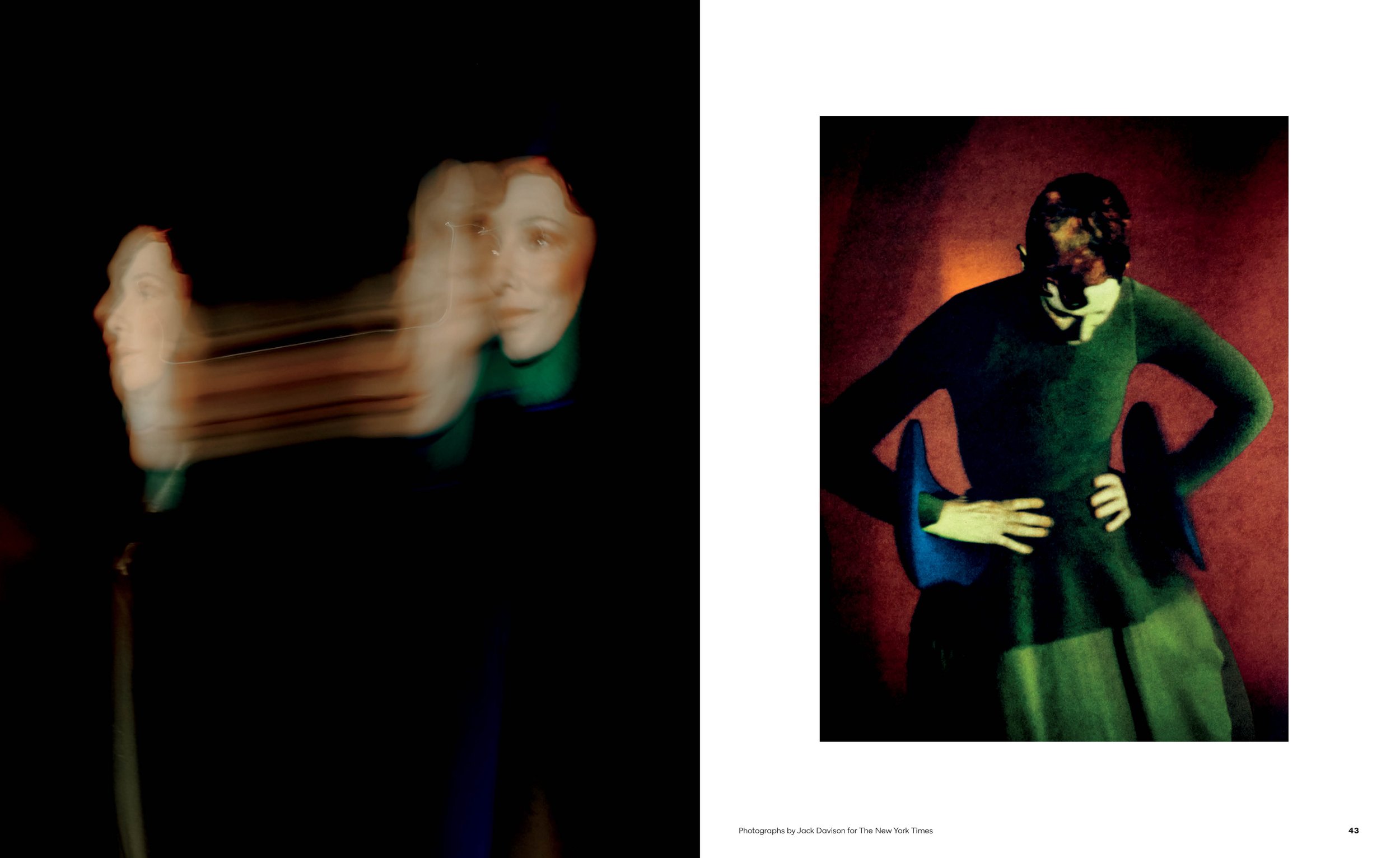
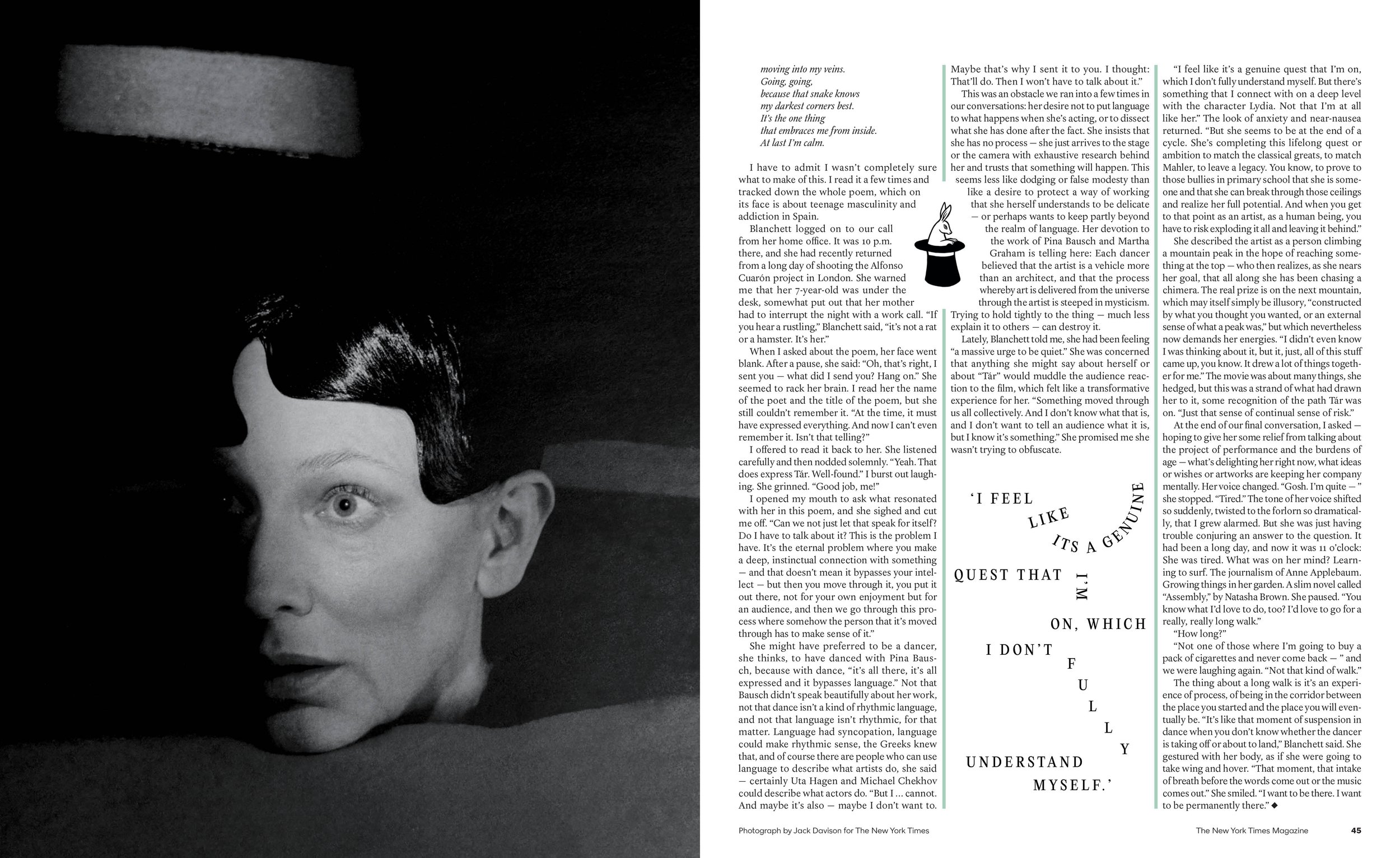
George Gendron: Have you gotten a call from Apple yet?
Kathy Ryan: What about?
George Gendron: Well, if Steve Jobs or Johnny Ive were still there, they’d be on the phone with you right now saying, “We’ve got to figure out how to collaborate here.”
Kathy Ryan: Well, you know, I’ve got my good friend, Rem Duplessis there. And Stacey Baker. Brilliant Stacey Baker, who was one of our photo editors. And Najeebah Al-Ghadban, who was one of our great designers, is there. And Marvin Orellana, who worked as a photo editor at the magazine, is there.
George Gendron: We’ve taken a lot of your time, but I have to come back to one thing, which is that you’ve been talking a lot recently about young photographers. A young photographer in particular. And yet on the one hand, we live in this age where everybody has access to all sorts of different platforms. And can be inspired to pursue creative projects. And yet it seems as if younger people coming up wanting to be journalists, writers, editors, photographers, videographers have a more daunting challenge than ever before.
And so I’m curious if you were in front of young students at an art college who are there because they want to hear what you have to say. What advice do you give to younger people who want to pursue a career in photojournalism? What do you say to them?
Kathy Ryan: The first thing I would say is follow your heart. Follow what you think is important. Photojournalists have to be opinionated. They have to take a stand. There has to be something that they care deeply about. And you have to have the courage to go for it.
George Gendron: Are you talking about subject matter or point of view or all of the above?
Kathy Ryan: Now I’m talking more about subject matter. So for example, Stephanie Sinclair, a brilliant photographer, early on started working for the magazine. She did incredible work on child marriage and she was the first photojournalist, as far as I know, to ring the alarm bell that there’s child marriage in so many places in the world, particularly Afghanistan.
We’re now going back 15 years, whatever. She cared so deeply about that subject that she committed her life to it. She obviously trained and developed her eye. She made remarkable pictures. So a young photographer needs to figure out what a photojournalist needs to figure out what do they care about. And then they have to go after it.
If you’re going to be a photojournalist, you need to actually start to develop something that’s yours. And then that leads to other things, like in the case of Stephanie. Then after that, she started talking about genital cutting. In many cultures in the world that still happens.
“It was one of the joys of iPhone photography. It removed some of that burden of ‘it better be good.’ Do I want it to be good? Of course. I work hard. You’d be amazed how many frames I’ll shoot of one thing, trying to get it exactly, precisely how I want it to look. ”
So she did an extraordinary photo essay for us on the brides in Afghanistan. And then she went on and did a photo essay on a cutting ceremony. And then she proposed doing something on underage marriage within the Fundamentalist Church of Jesus Christ of Latter-day Saints. And that will take you through your career.
So her deep empathy and concern for subjects affecting girls and women, particularly girls in the world, it’s like you have to almost be a visual activist. And she actually became an activist.
Earlier this year, when the draft of the Dobbs vs. Jackson decision was leaked in May, Jake wanted to do something related to that. And Jessica Dimson, the deputy director of photography of the magazine, had the idea to do something on the Cleveland Clinic maternal health clinic where pregnant women go who have risky pregnancies. And for years, doctors have had, as one of their things they can use in the treatment if there’s risk, the possibility of ending the pregnancy, which then suddenly, when the Supreme Court ruled, was no longer the case.
And I suggested we assign Stephanie. And knowing this lifetime of commitment, she was able to walk into the room with those women under duress, their husbands, their doctors. Maybe they’ve gotten news that’s disturbing. They’re making extremely personal decisions.
I think for young photojournalists, entering, as you’re right to ask, a very difficult field. It’s difficult to make a living, and difficult to compete with the abundance of imagery out there. But there are subjects that are under-covered. And if they can find one, if there’s something they care about, that will fuel them. That will keep them driven in a way.
Patrick Mitchell: I have sort of a cynical follow up to that question, now that we’re in 2023. And that’s, is there such a thing as a career in photojournalism, now and moving forward? And what does it look like?
Kathy Ryan: Oh, I think there's definitely a career because we're a visual society, so even though there are a lot of pictures, we still need someone to sort out what's unfolding out there to make smart, informative, focused pictures to tell you how to look at things. I think of people—Philip Montgomery, Mark Peterson—they’ve been at it for years. They’re still so impassioned that between jumping on a plane for self-driven assignments, or for us, or for the paper, or for other magazines, there are stories that actually need to be told by people who can make the complicated images they do.
LaToya Ruby Frazier, same thing. She does her own artwork, but they’re real documentary images. They’re real documentary portraits. Her approach is a little bit of a different approach.
You know, just because everybody has a pencil doesn’t mean they can write. Just because everyone’s making phone photography doesn’t mean they’re making the kind of pictures that merit a million people looking at them and then coming away with an understanding that a great photographer can bring to a subject matter.
George Gendron: One last question for you. Have you ever been bored in your job?
Kathy Ryan: No. No. I’ve never been bored. No, there’s never been a day where I’m bored. That does not happen.
Love City: 24 Hours of Romance, Lust, and Heartache in New York Photographs by Ryan McGinley
“Love City” was a special issue of The New York Times Magazine dedicated entirely to love in New York City over the course of a single day: Saturday, May 19, 2018. All the photography was shot on that date between 12 a.m. and 11:59 p.m. By choosing this theme and so tightly limiting the time frame, the magazine hoped to convey the city’s magical density of intimacies, the way it juxtaposes the private communion of one pair of lovers with the rollicking public energy of the bustling crowd—itself composed of numberless lovers communing privately amid the noise, all the center of their own universe.





